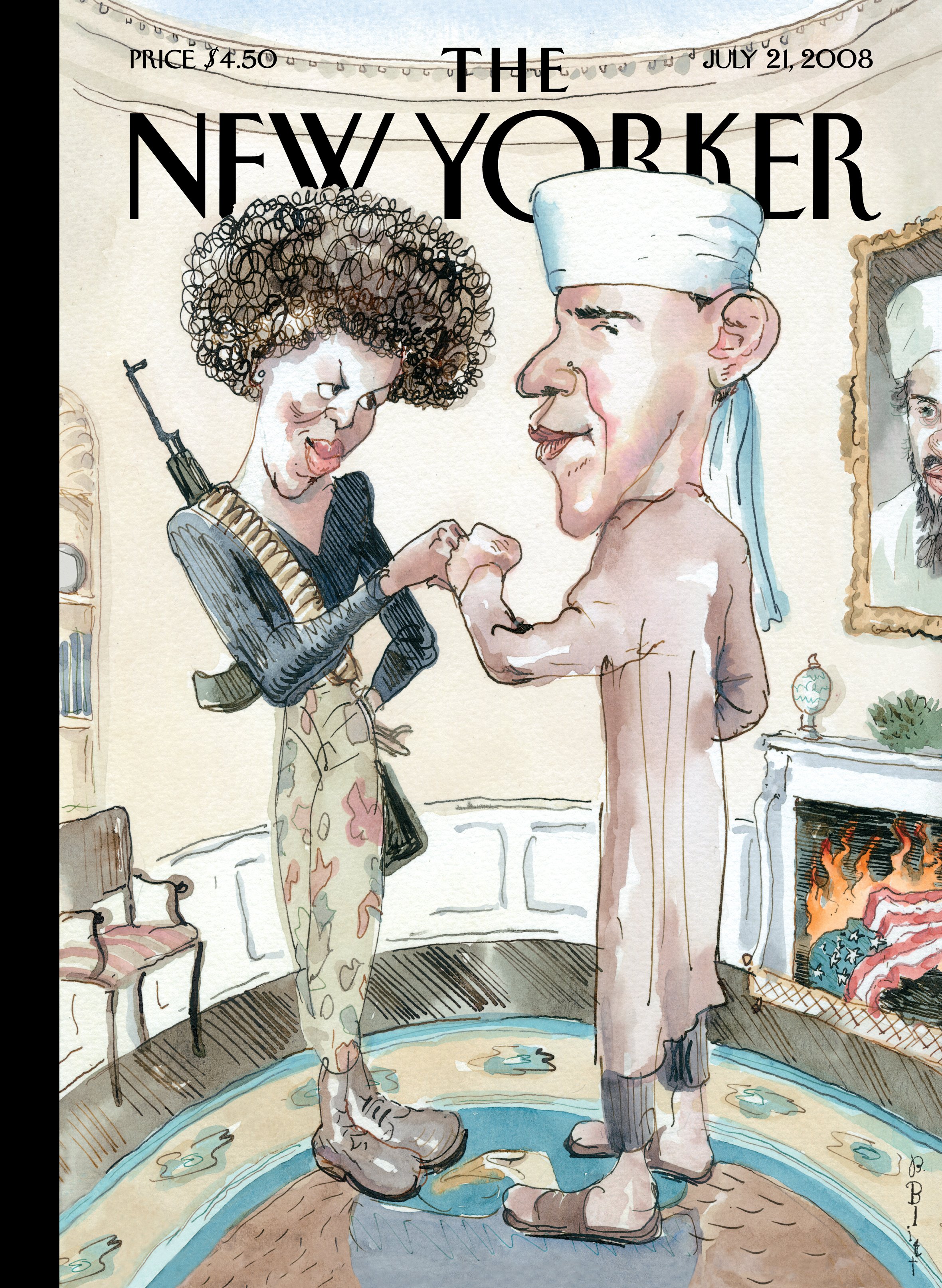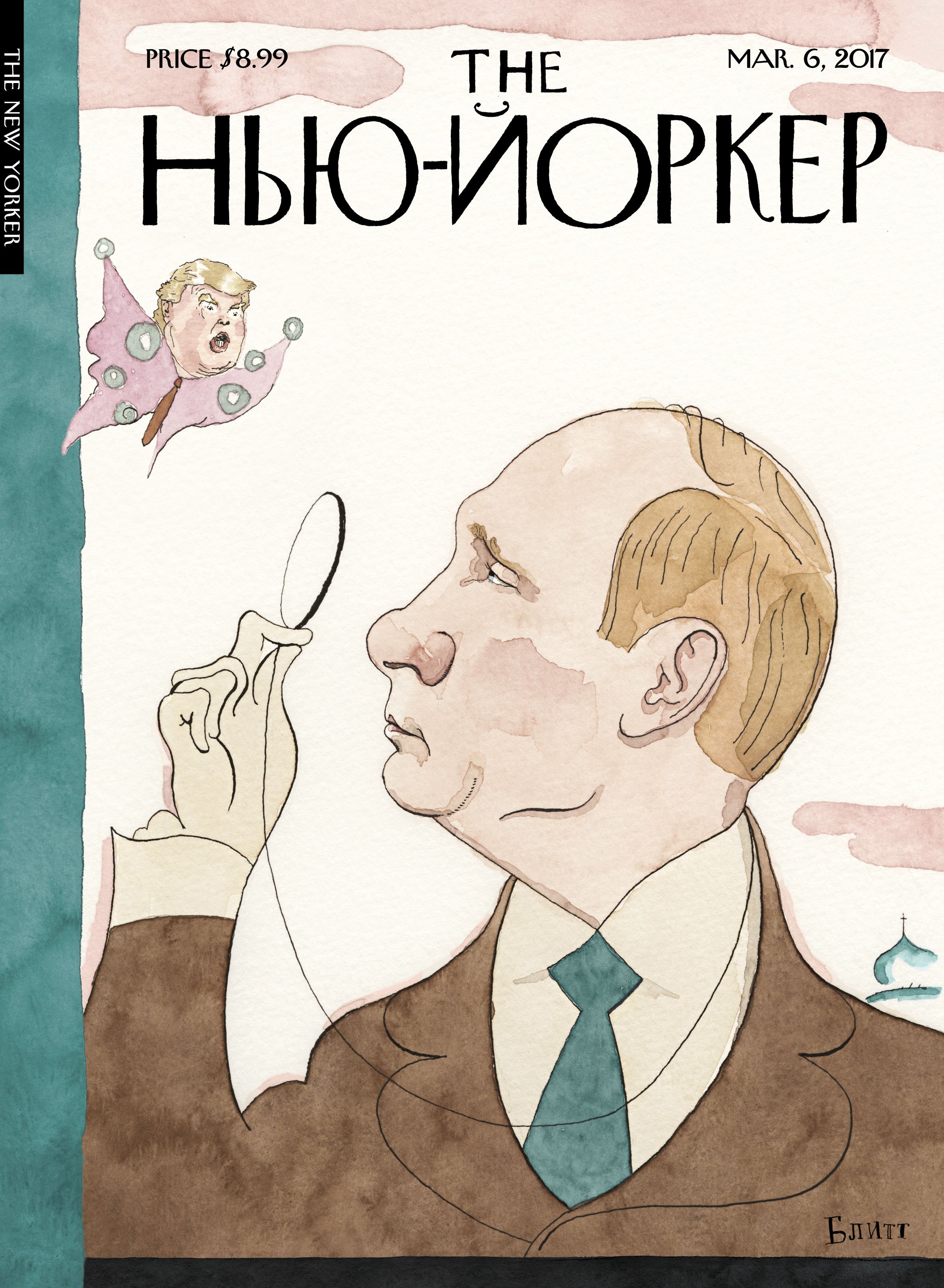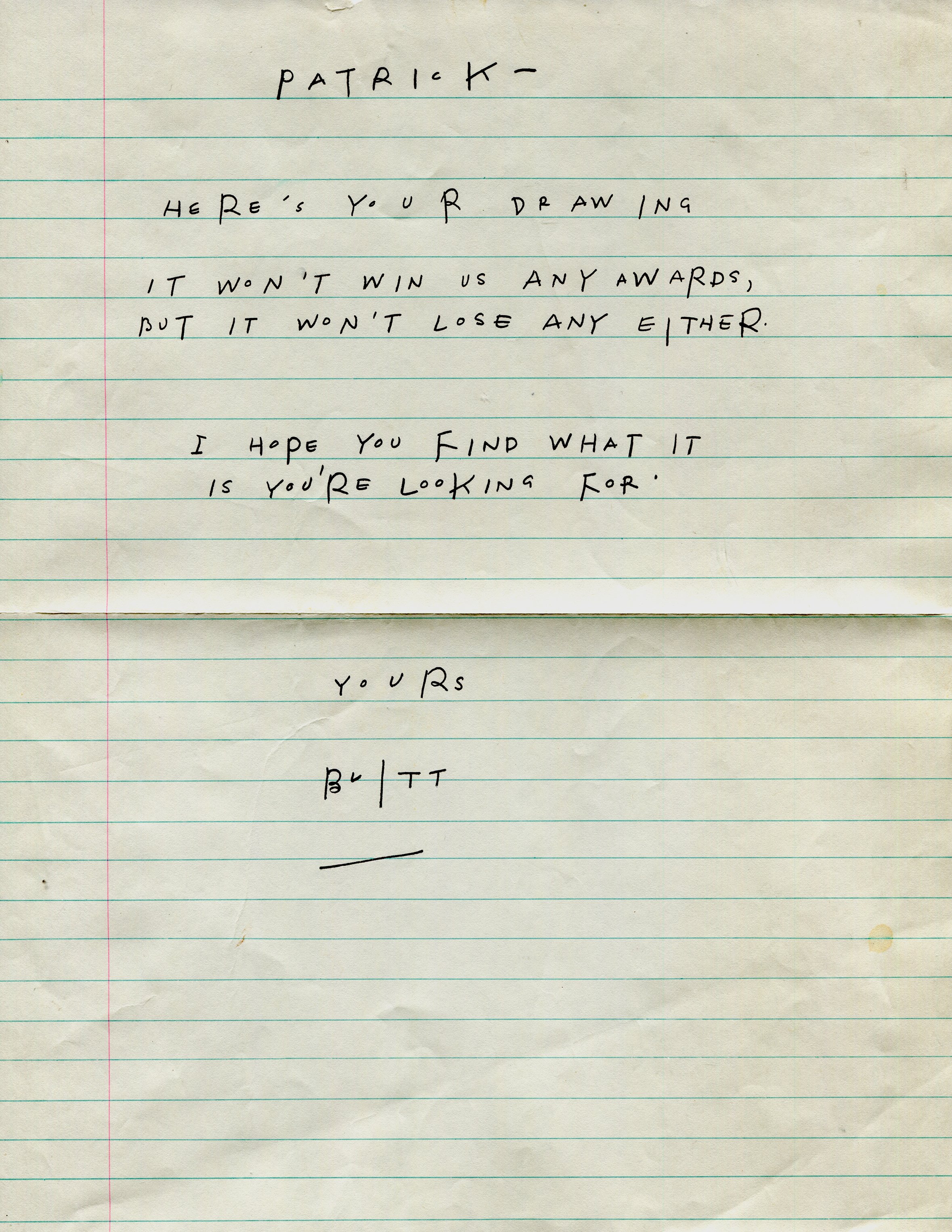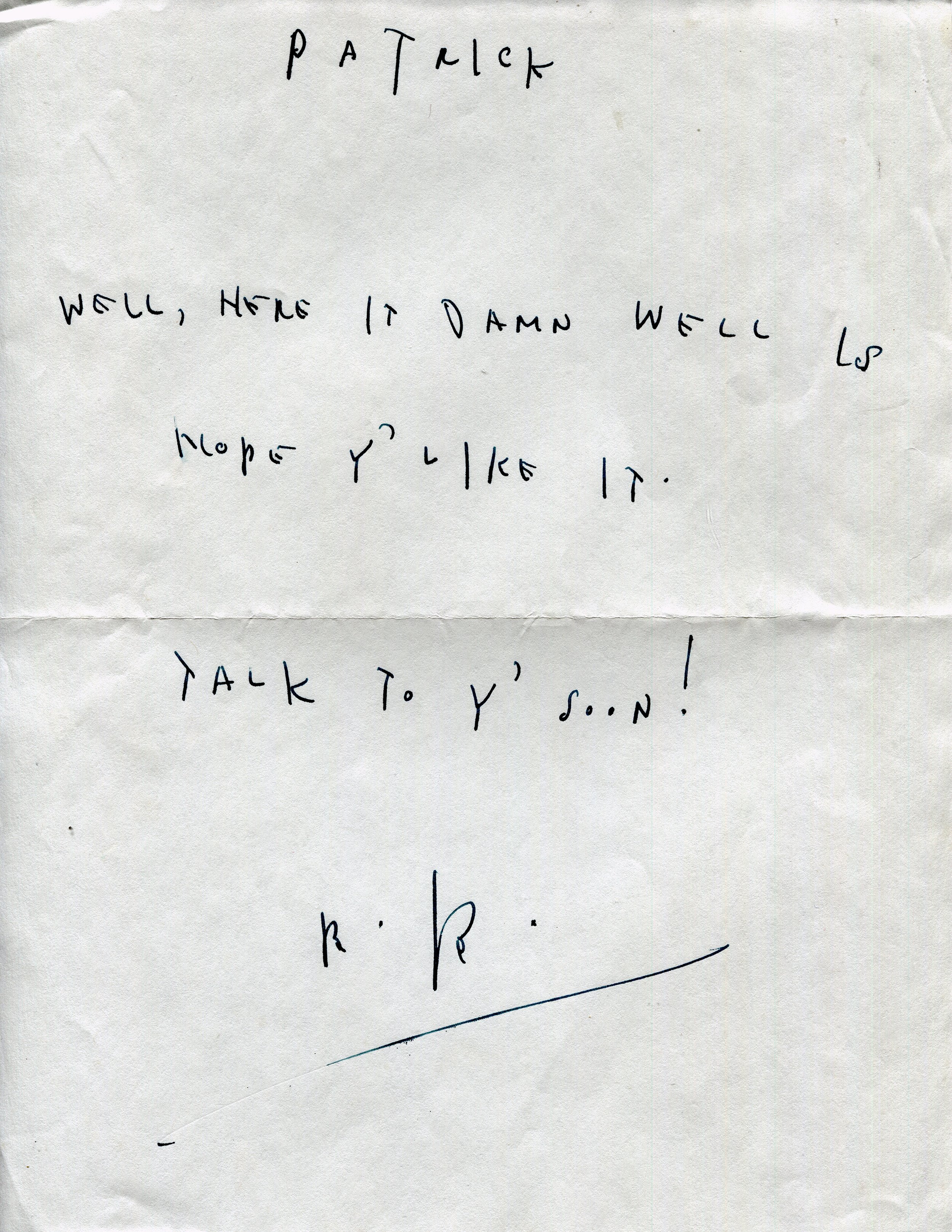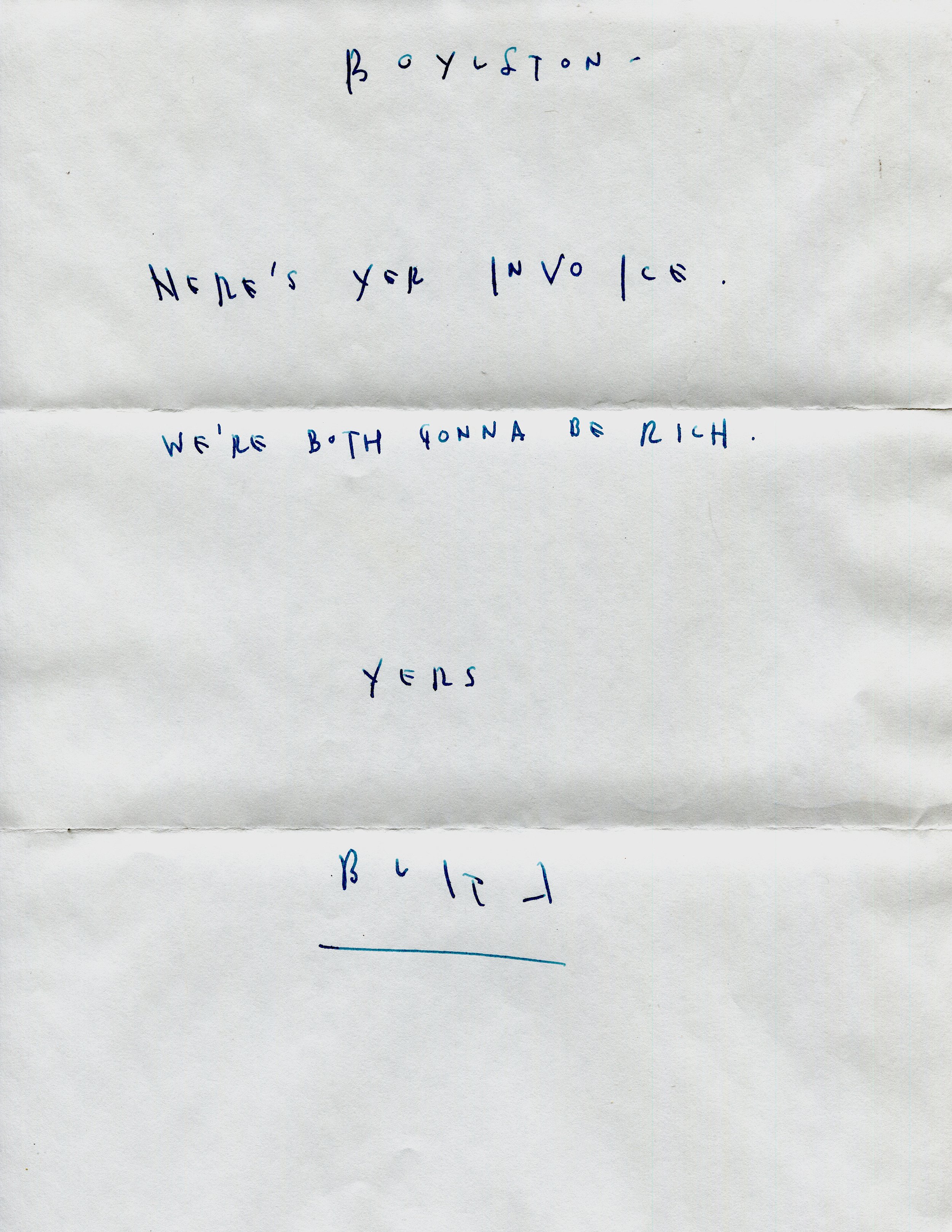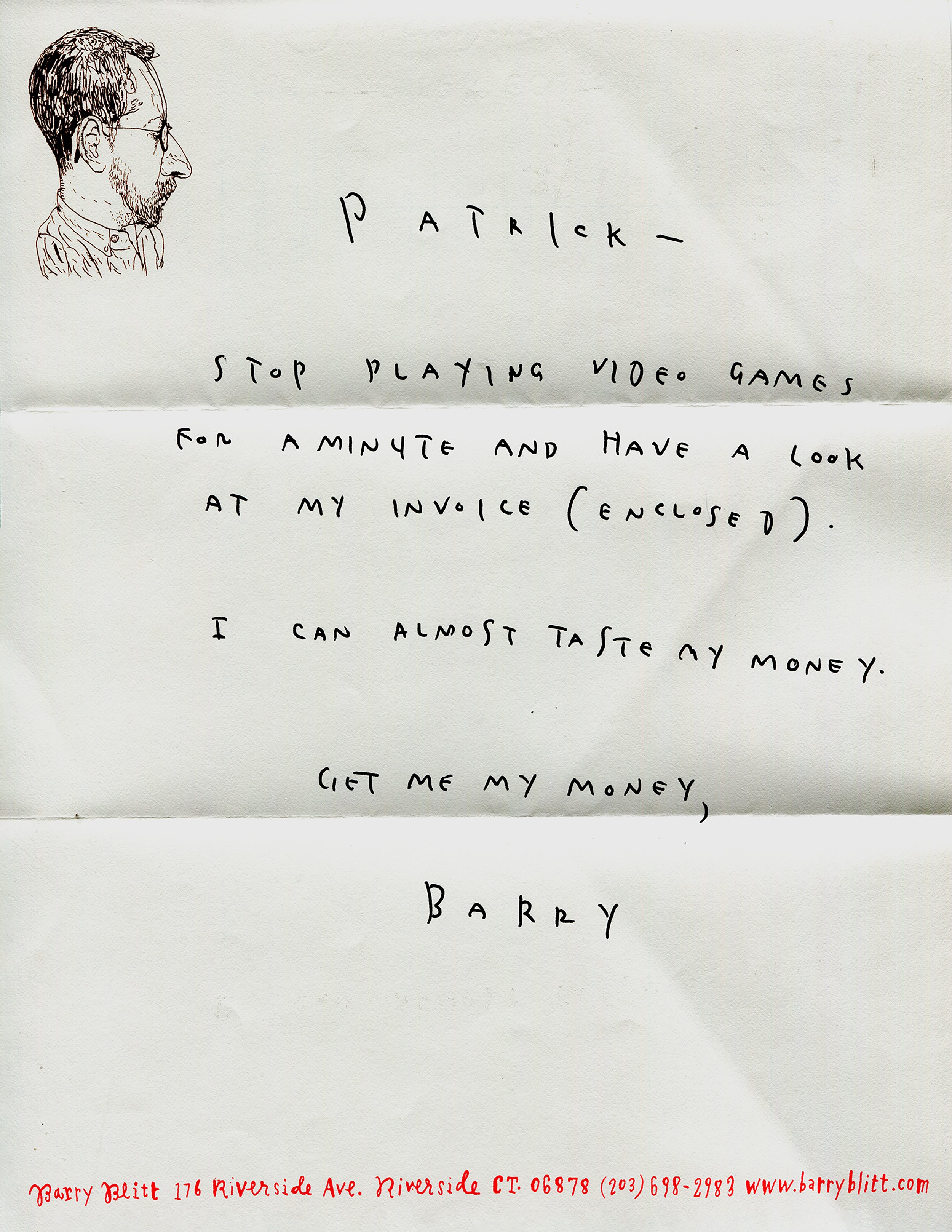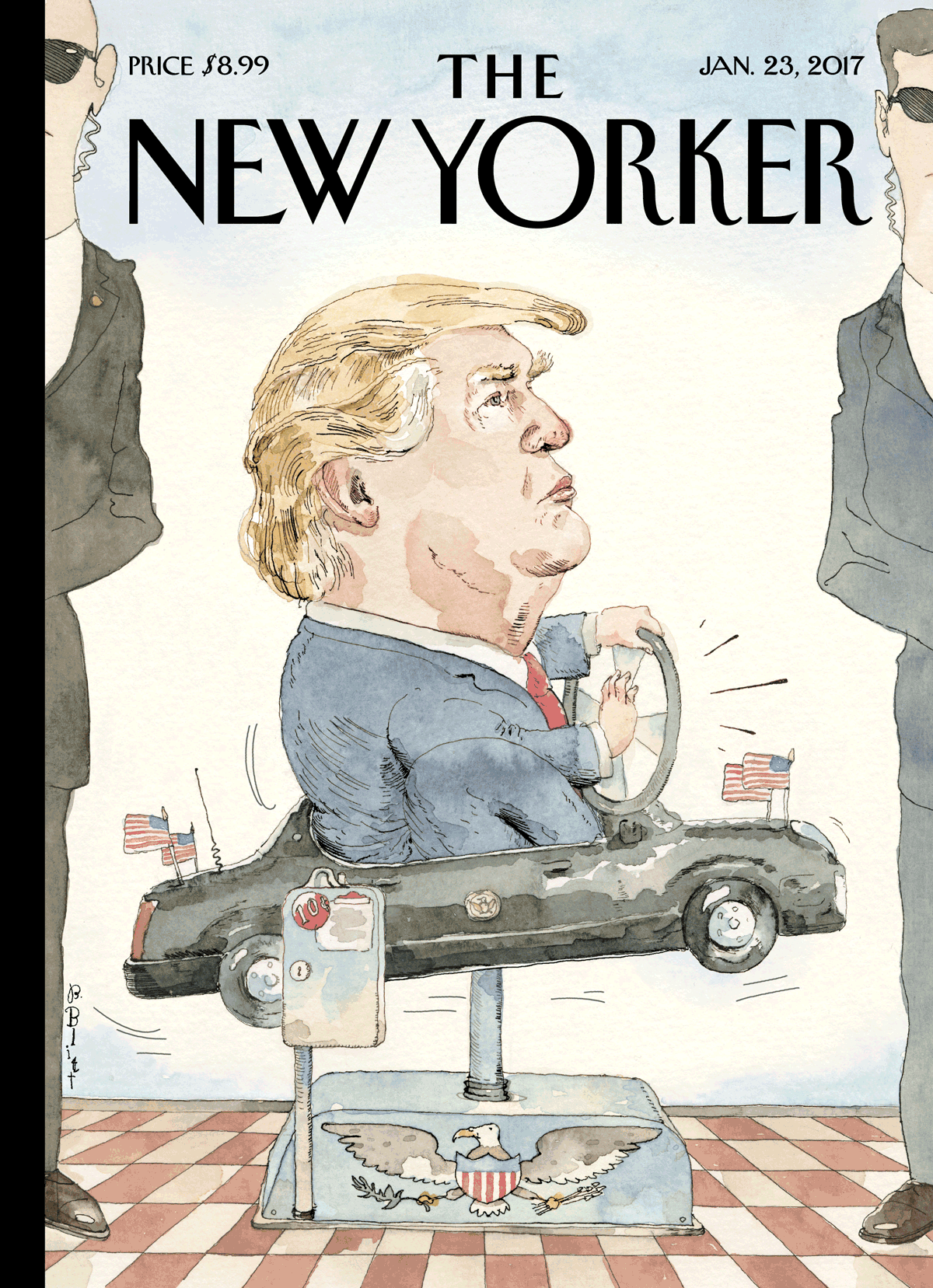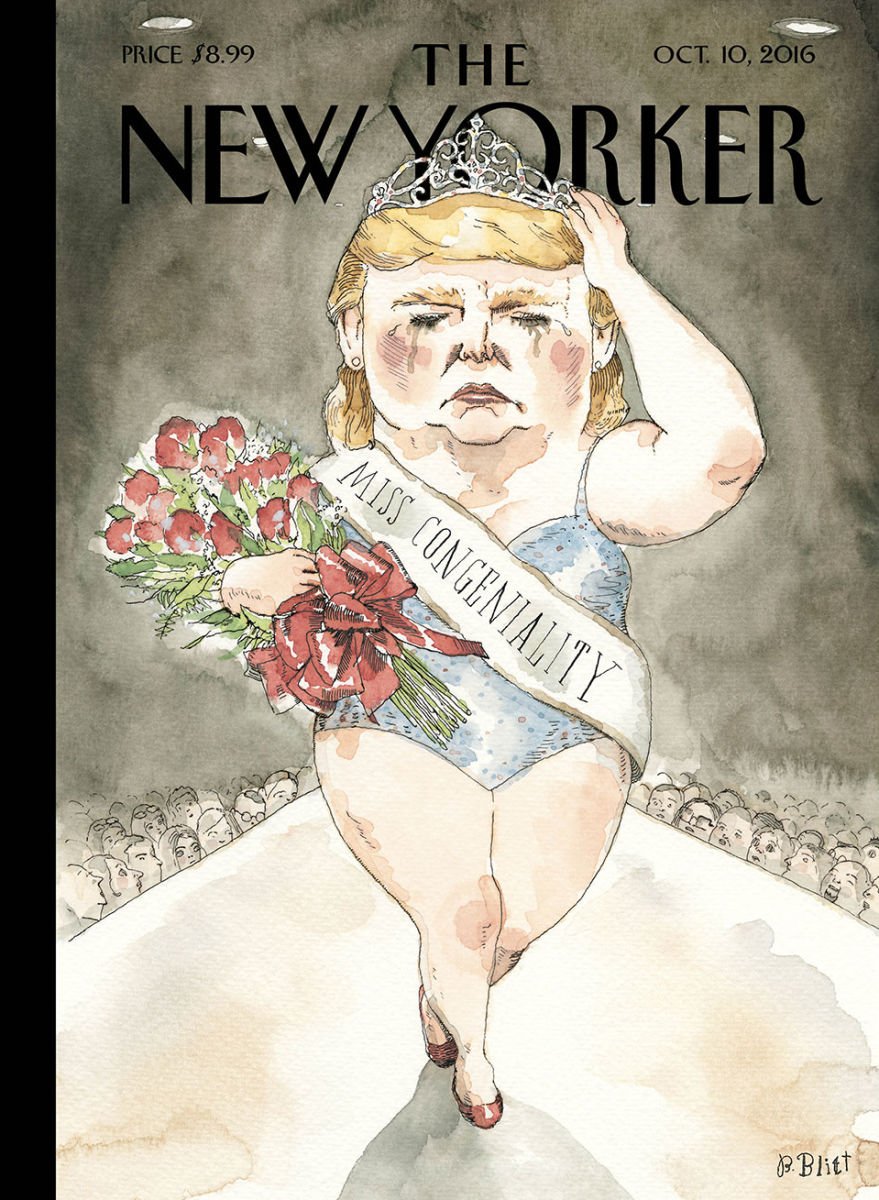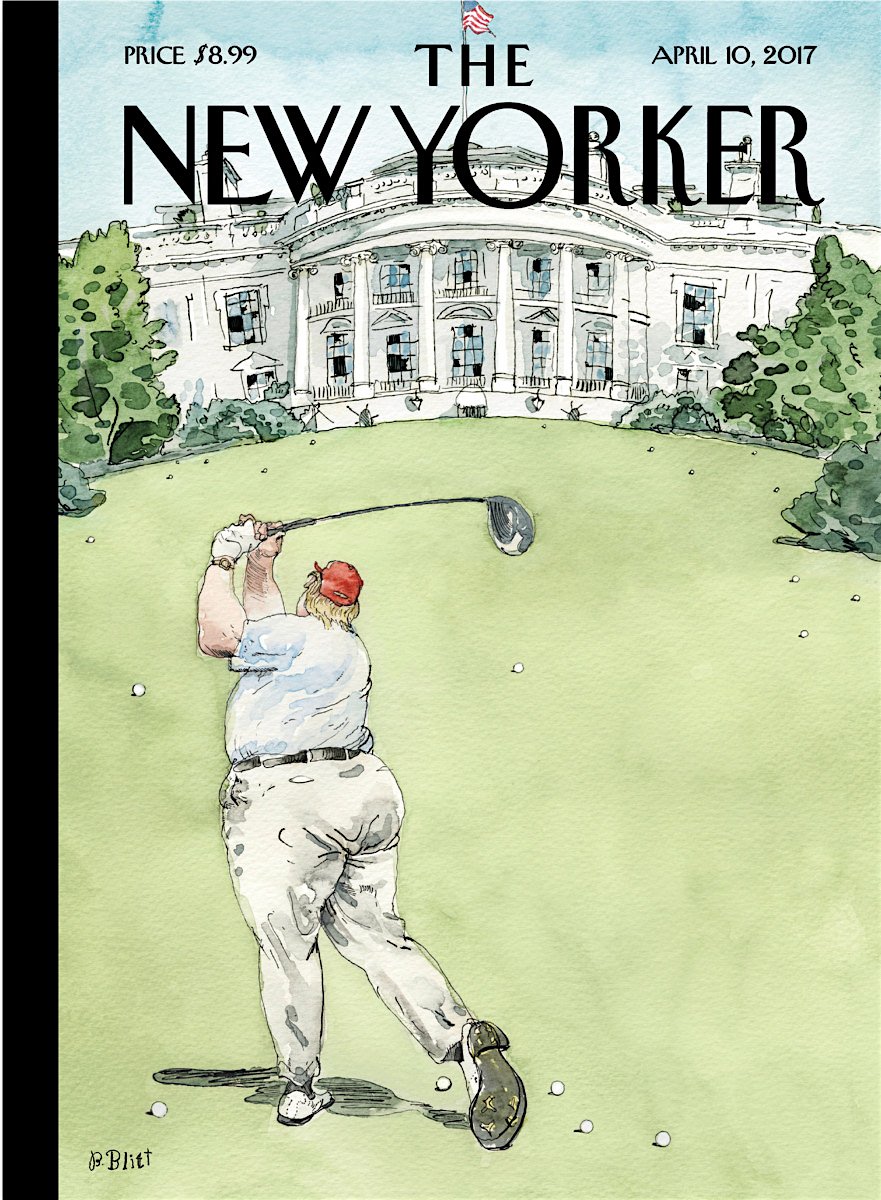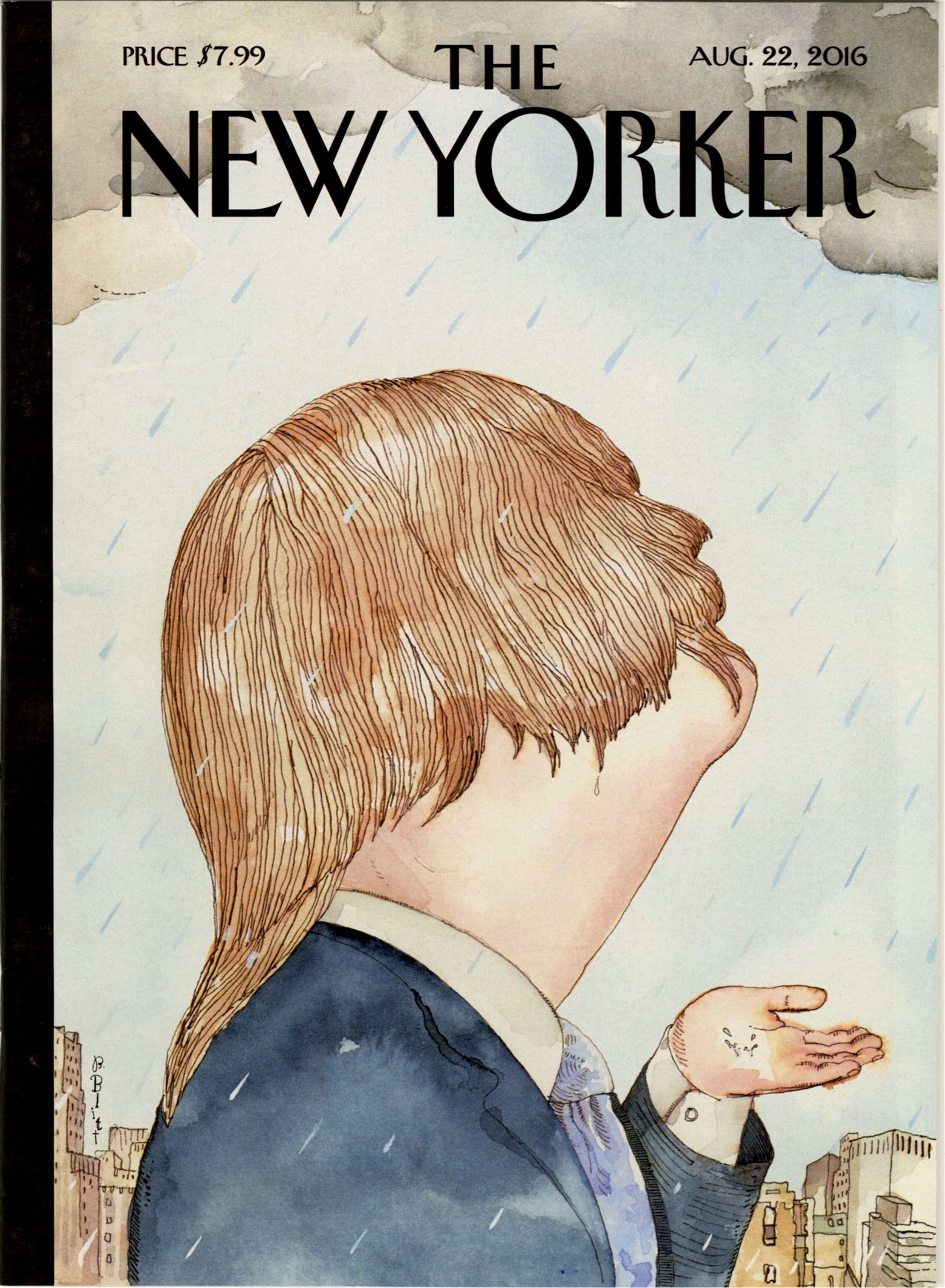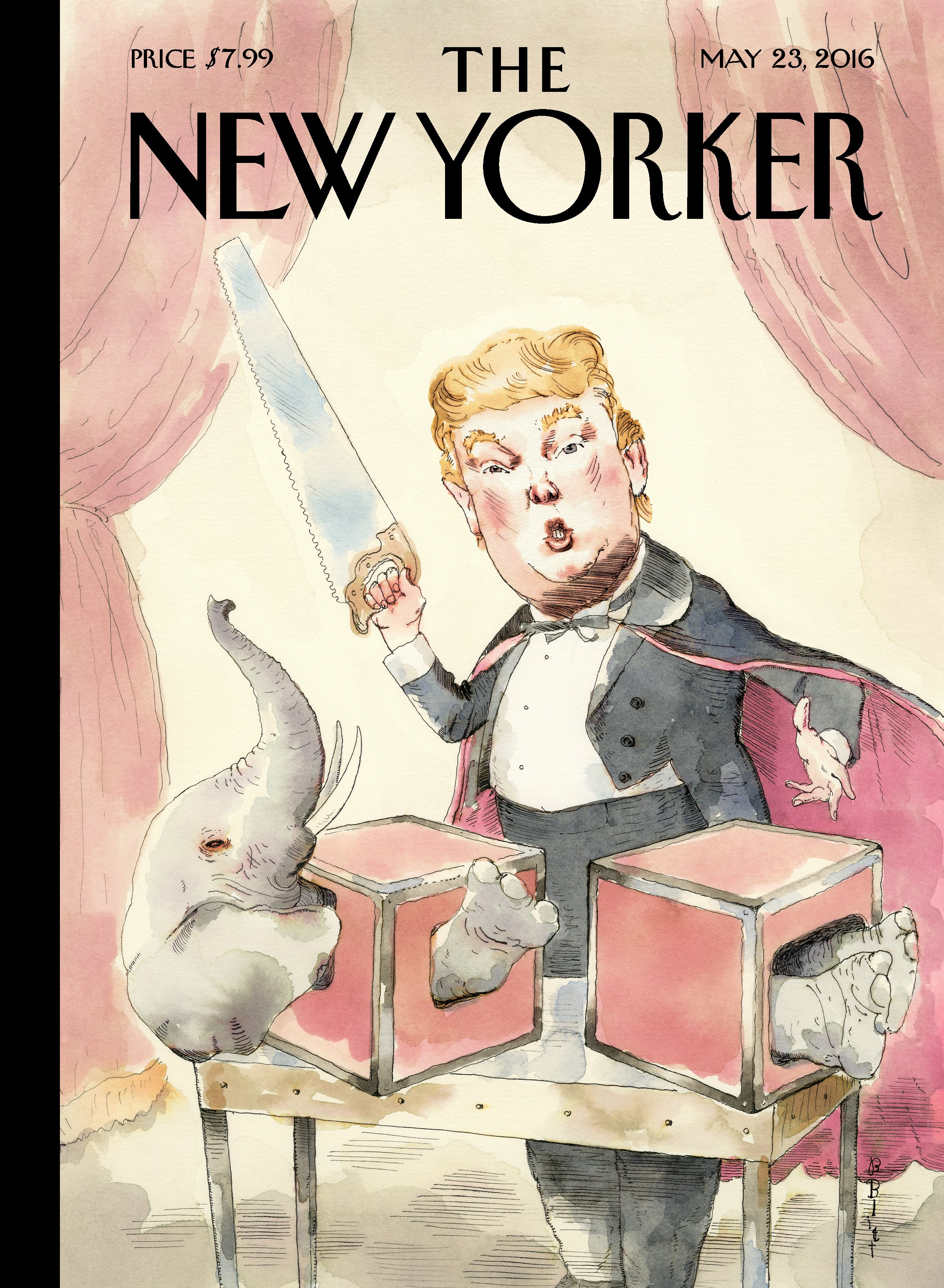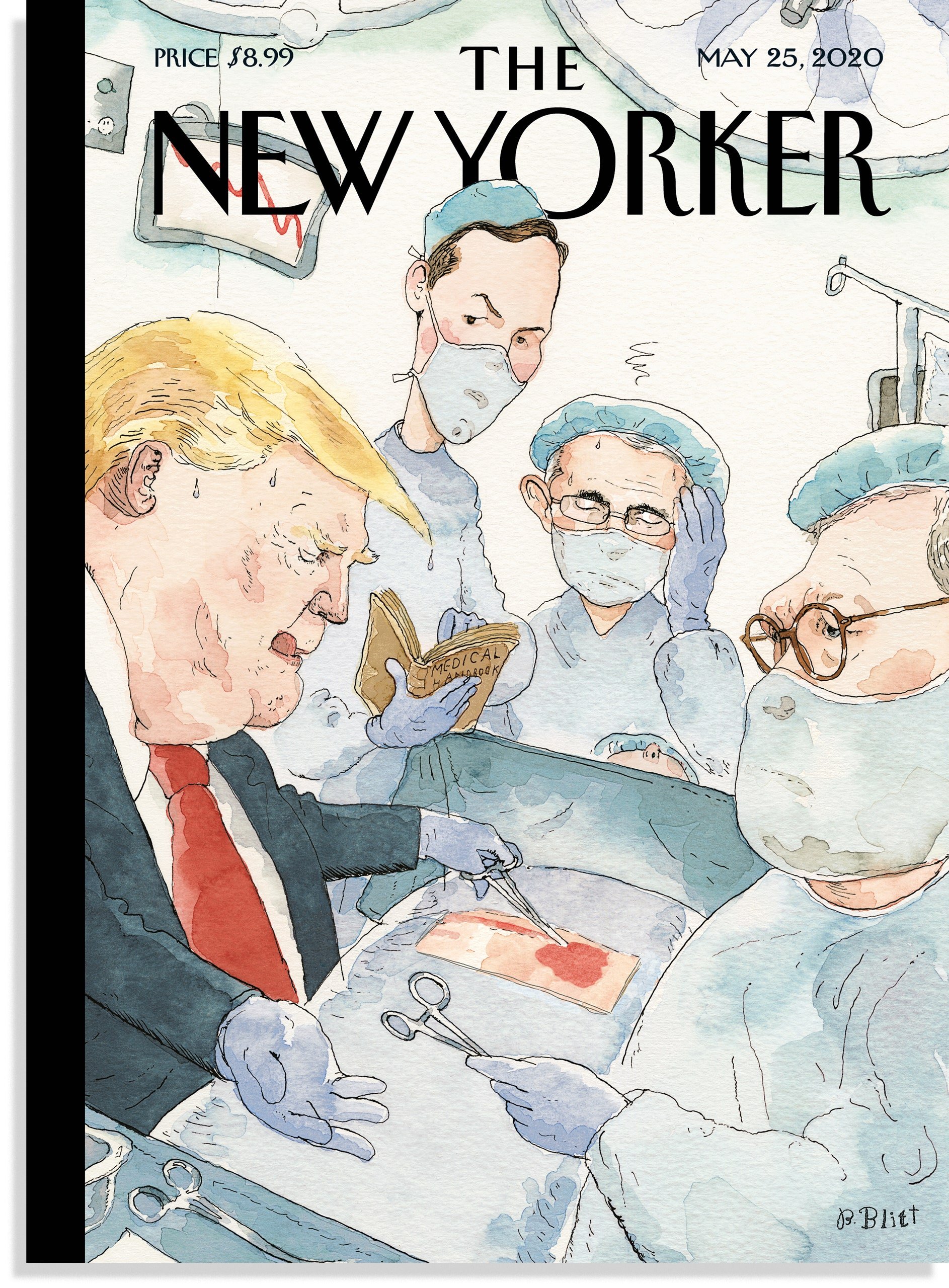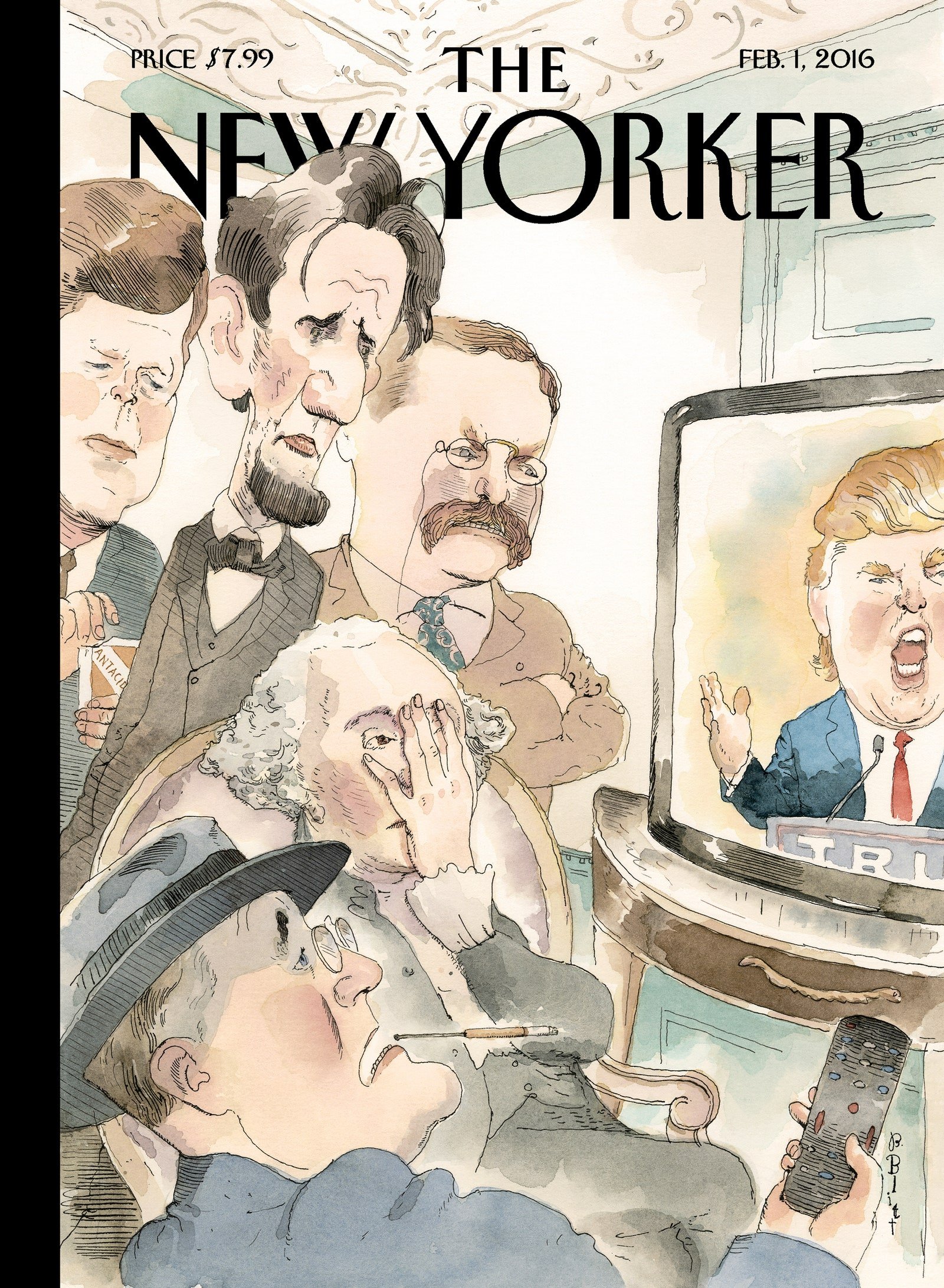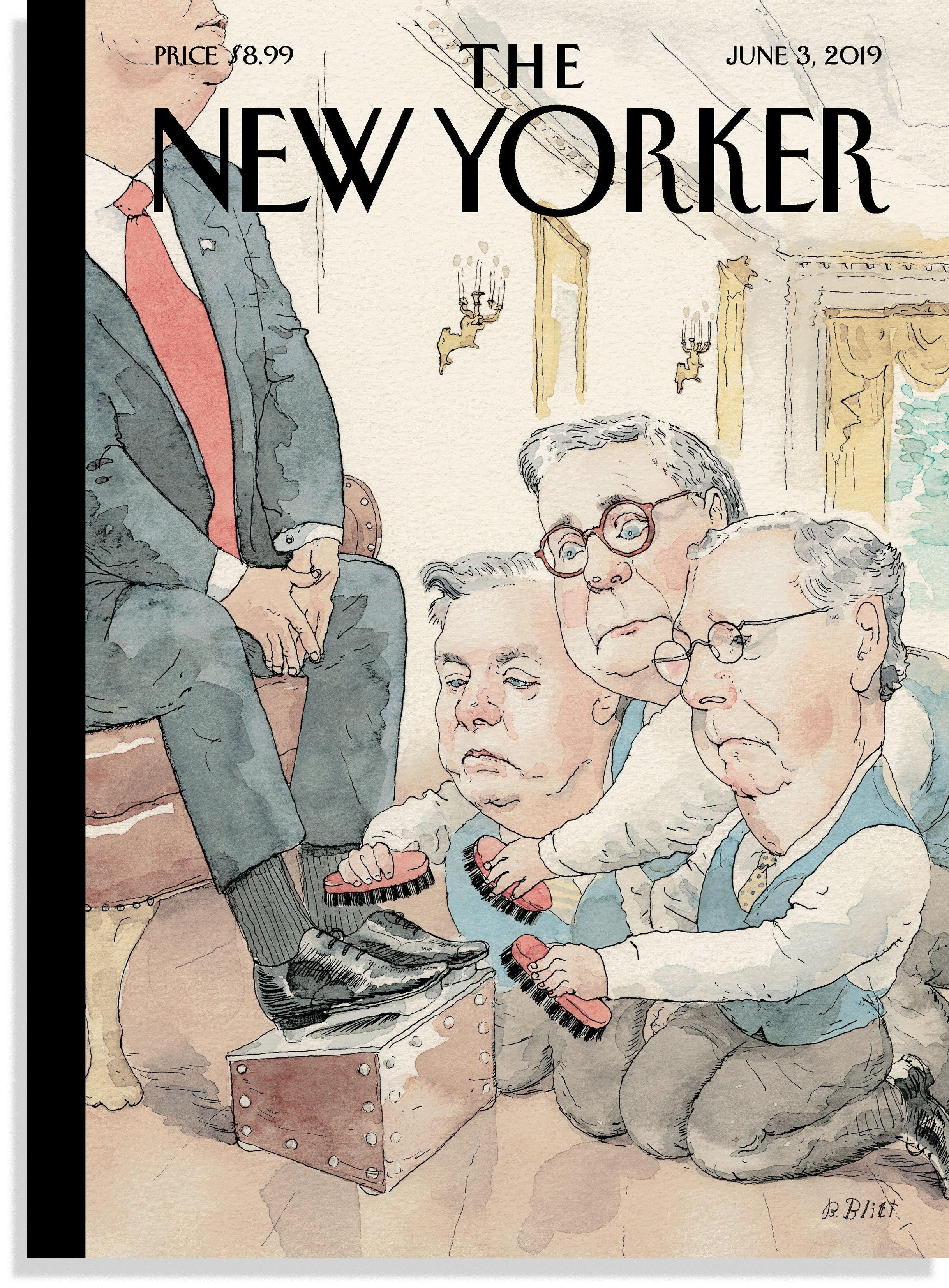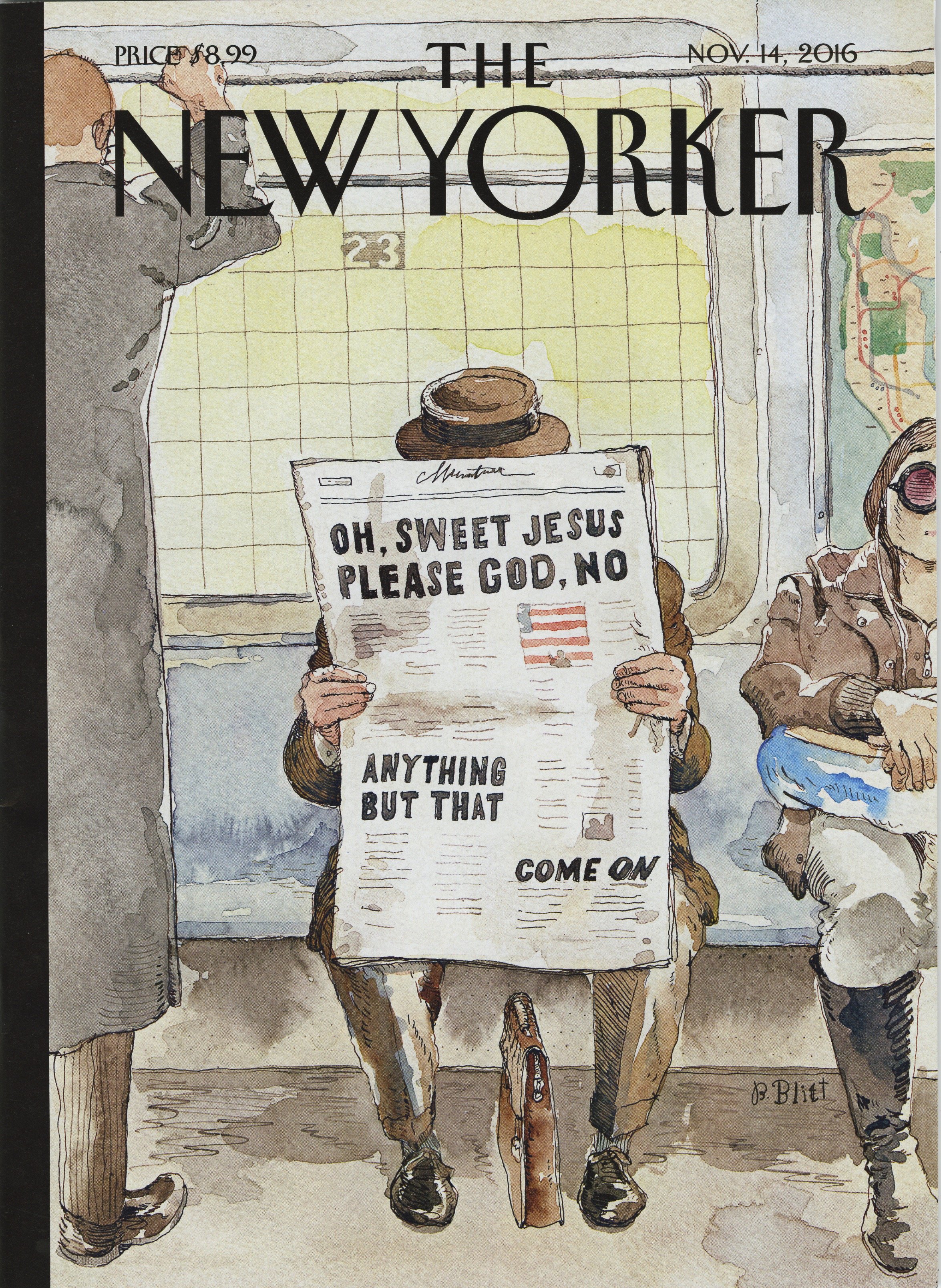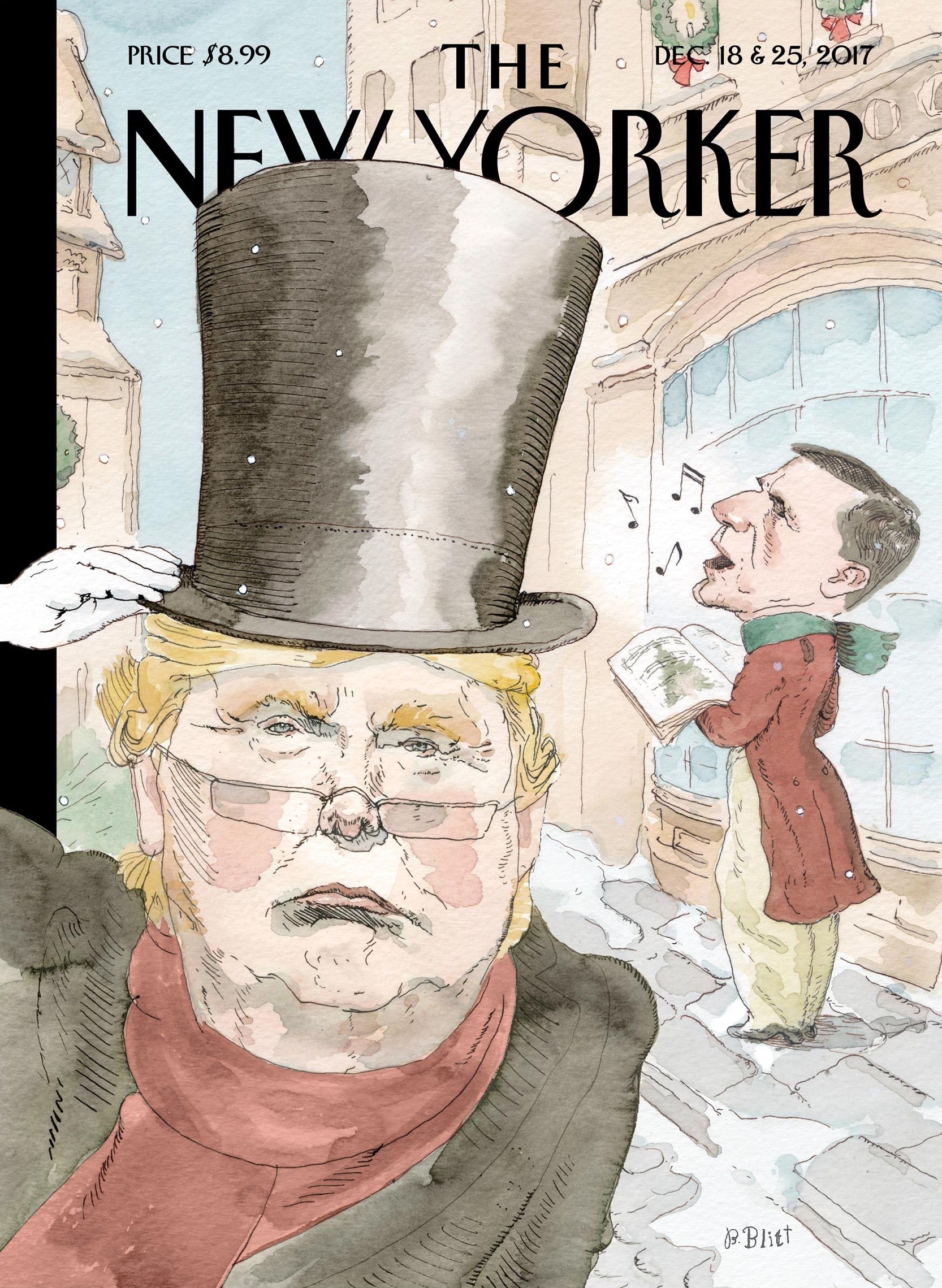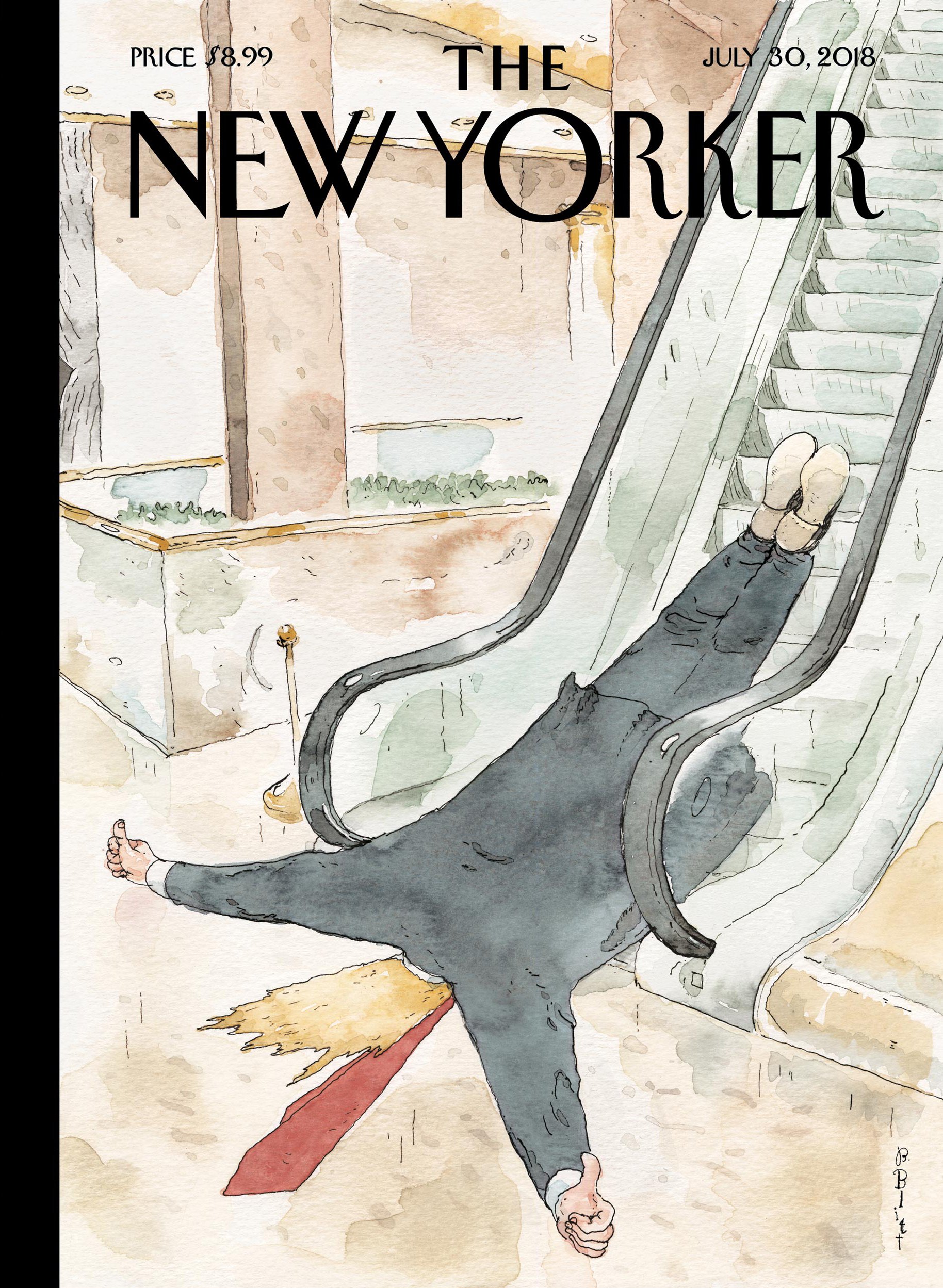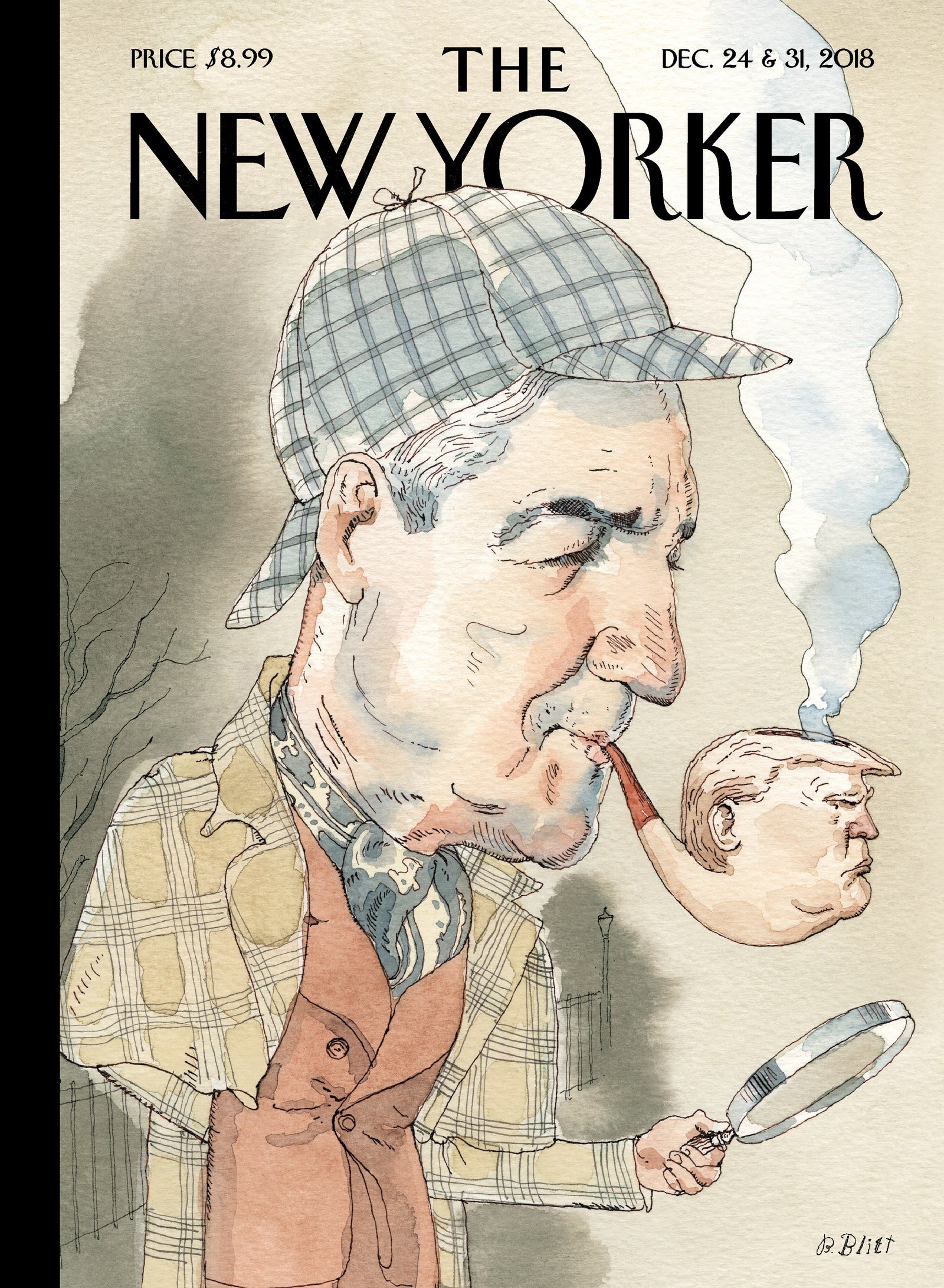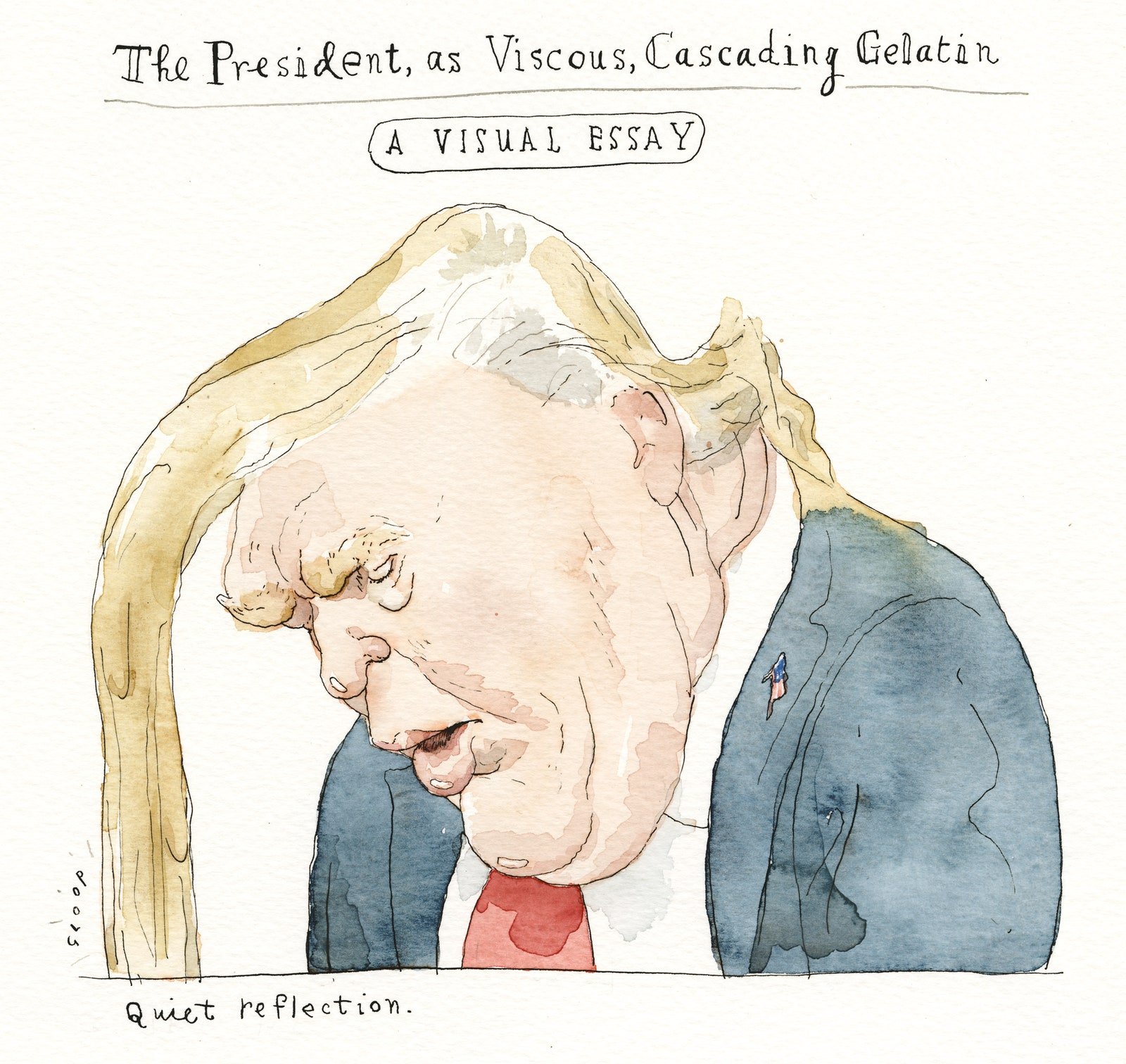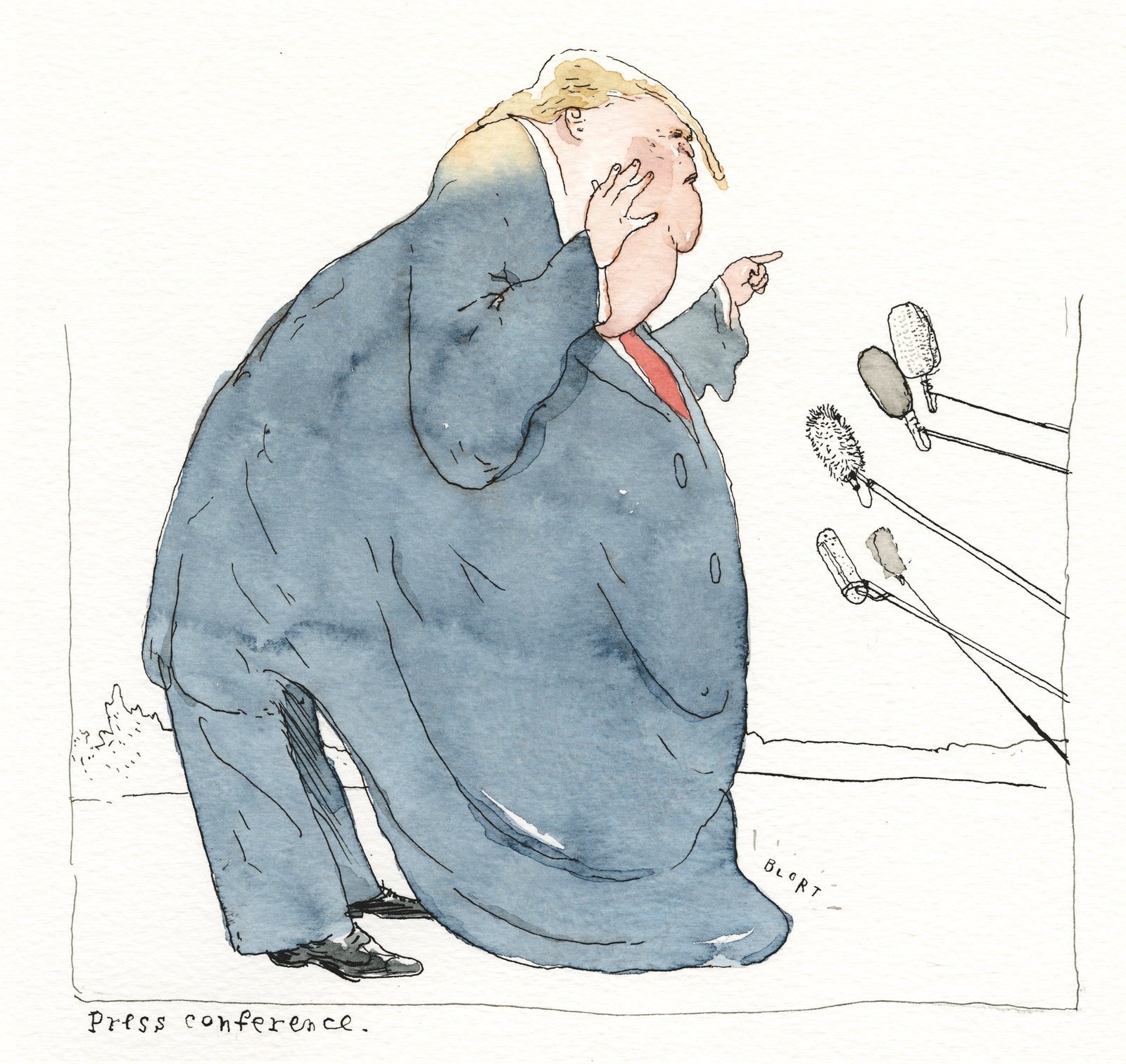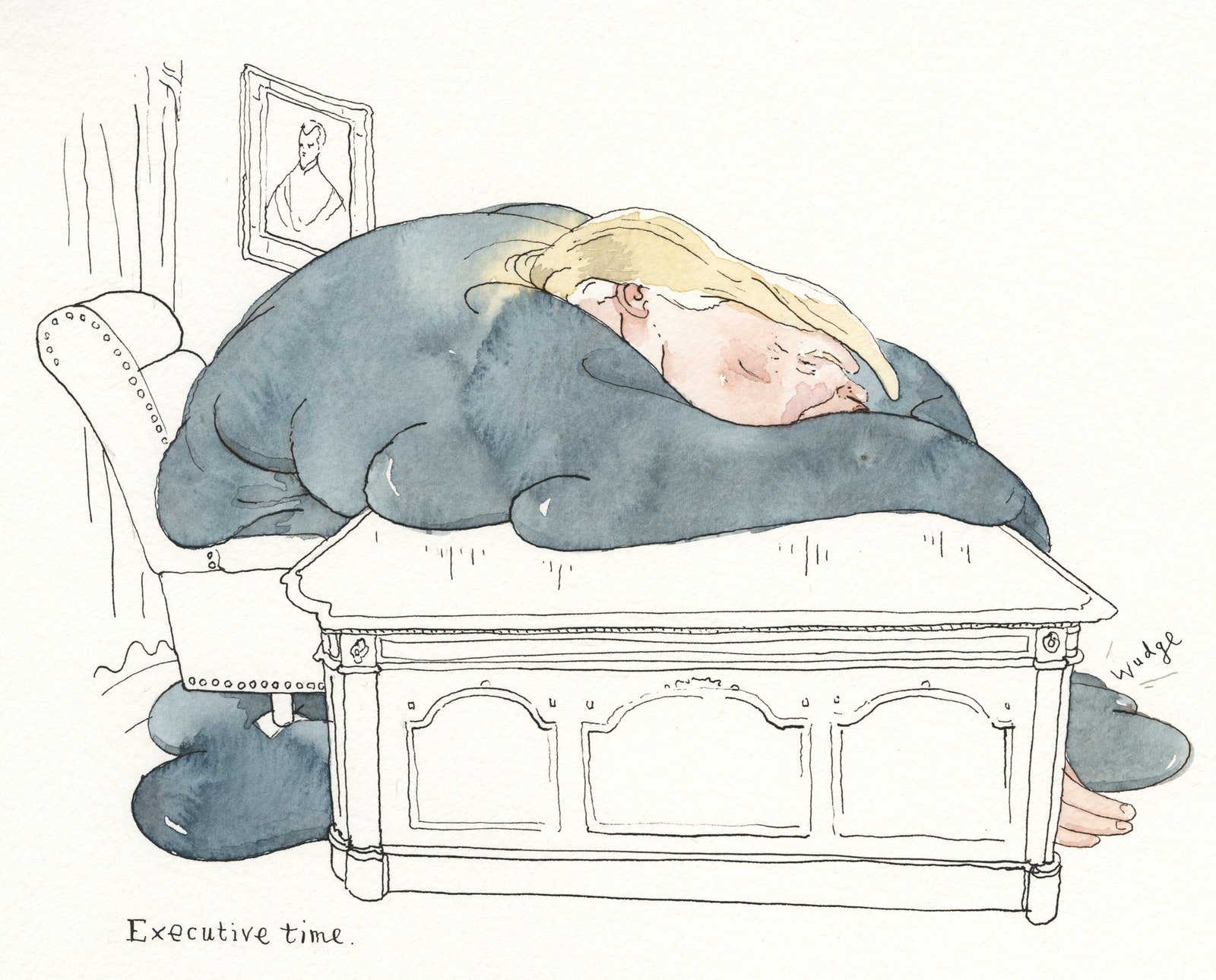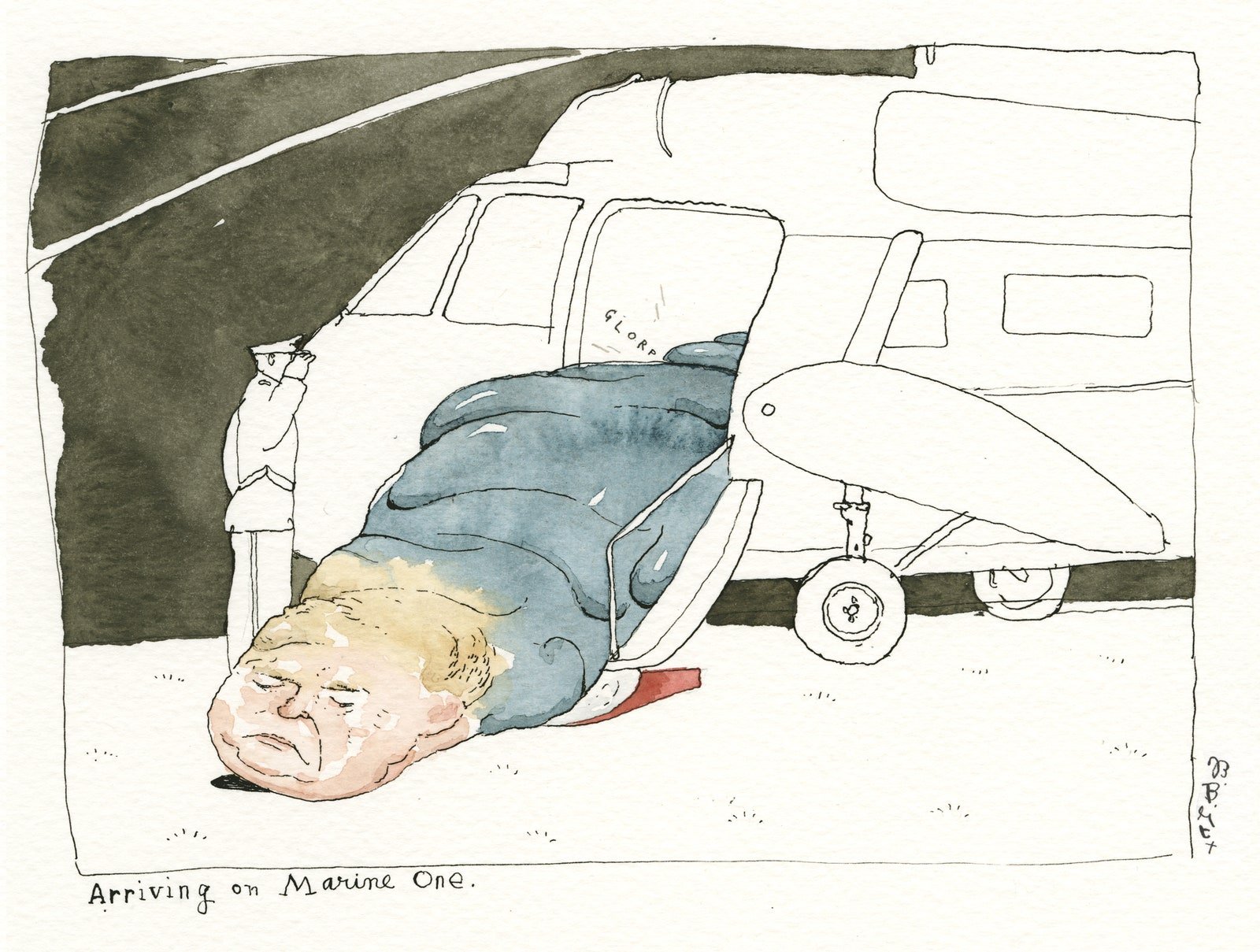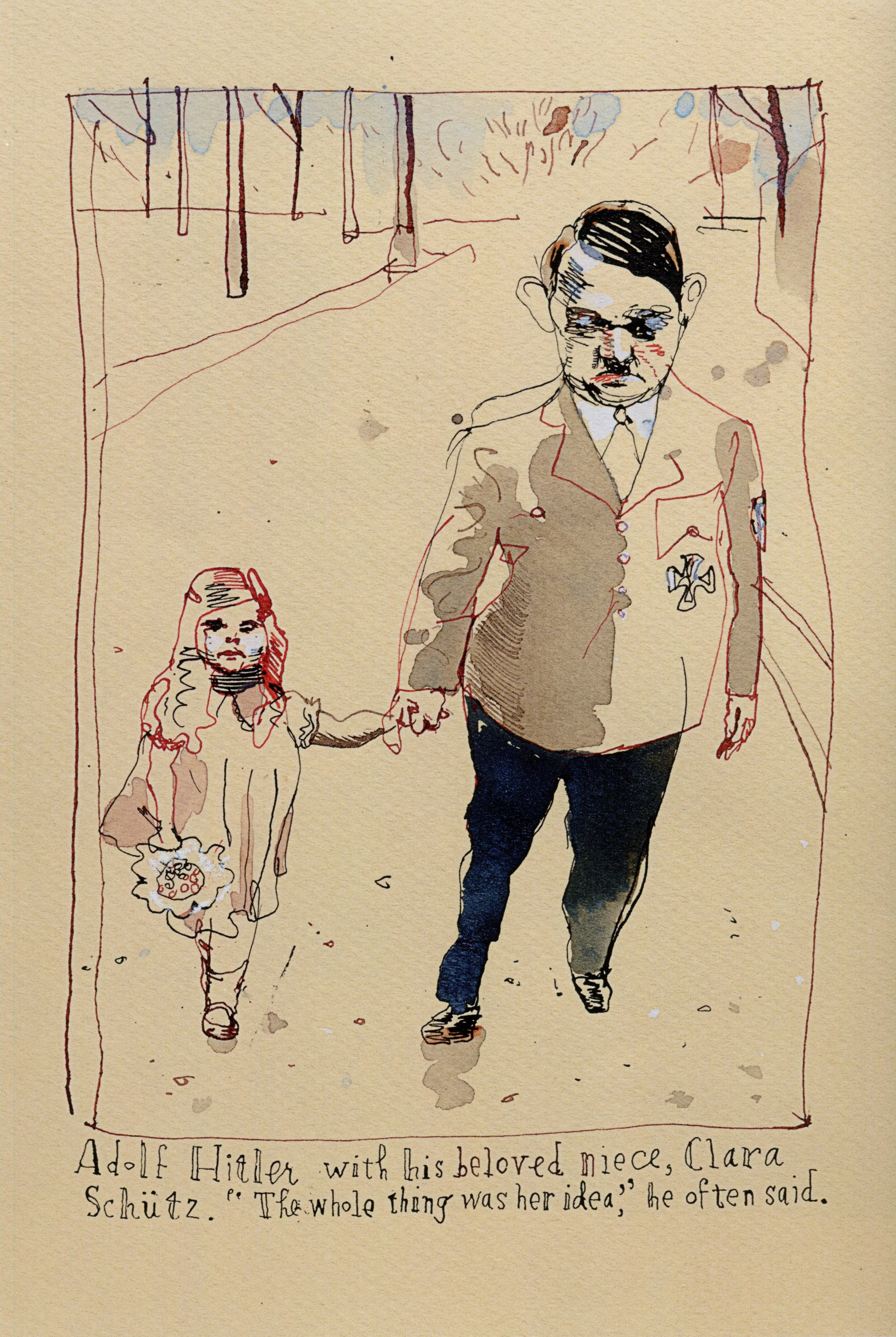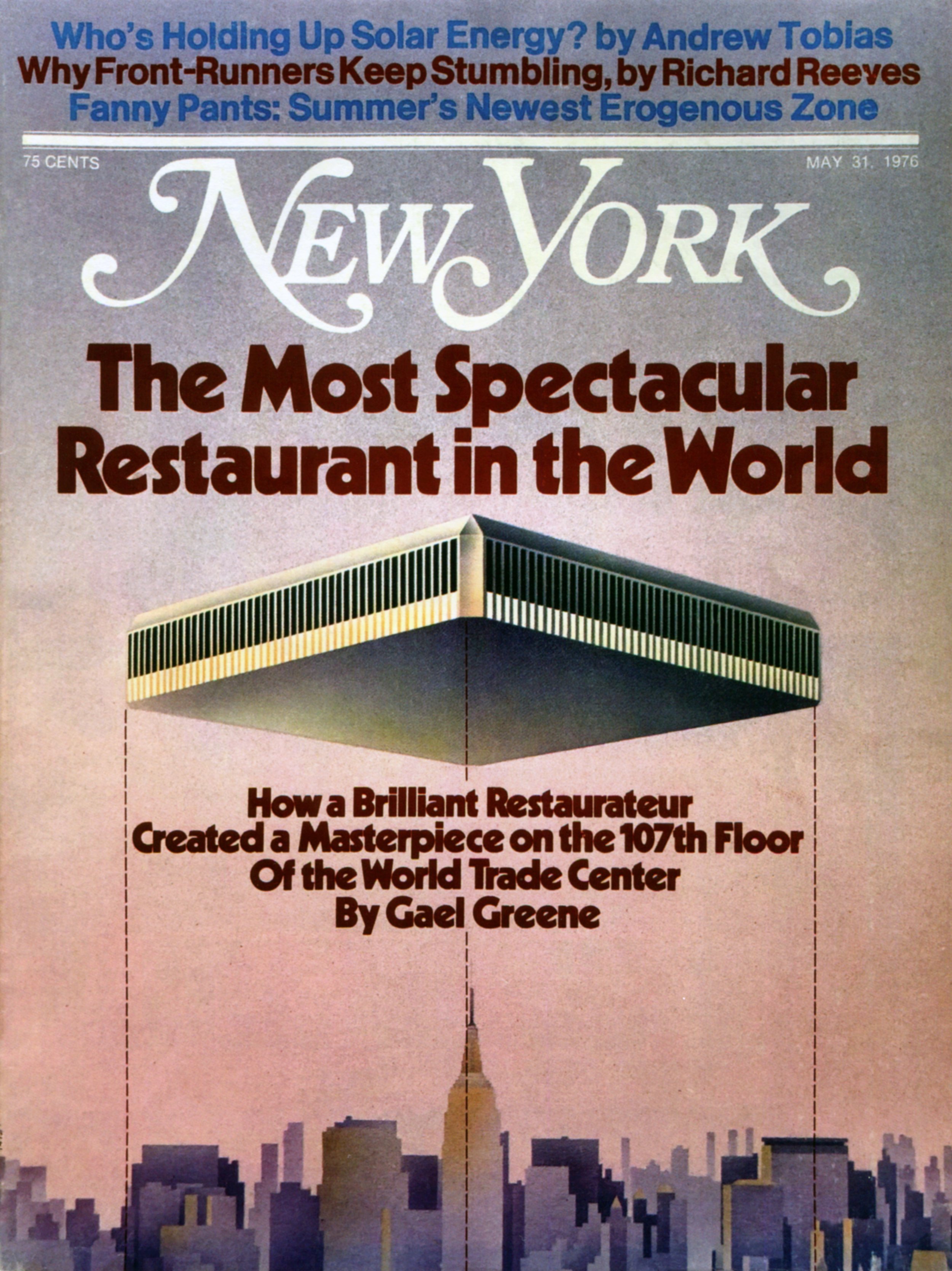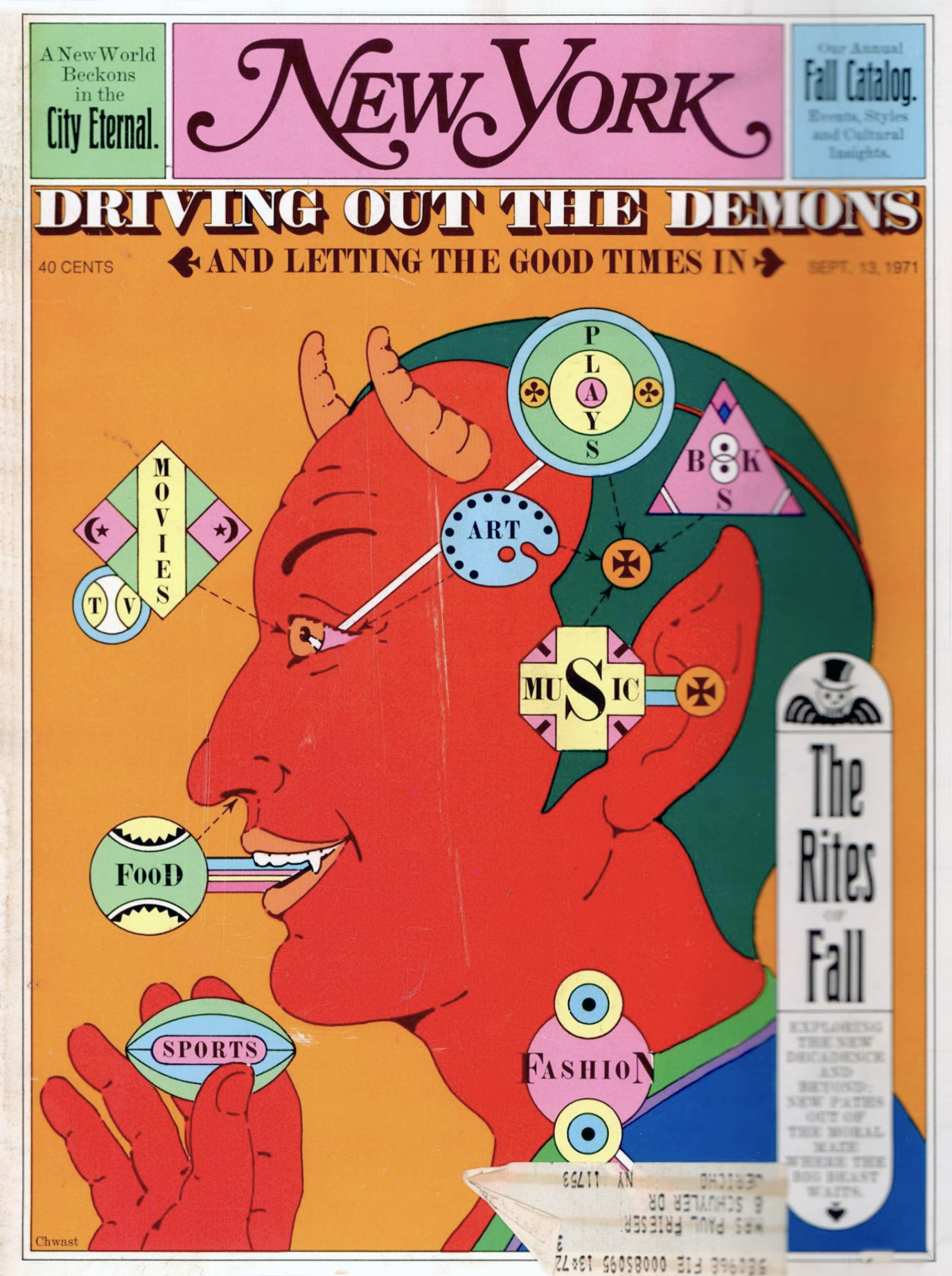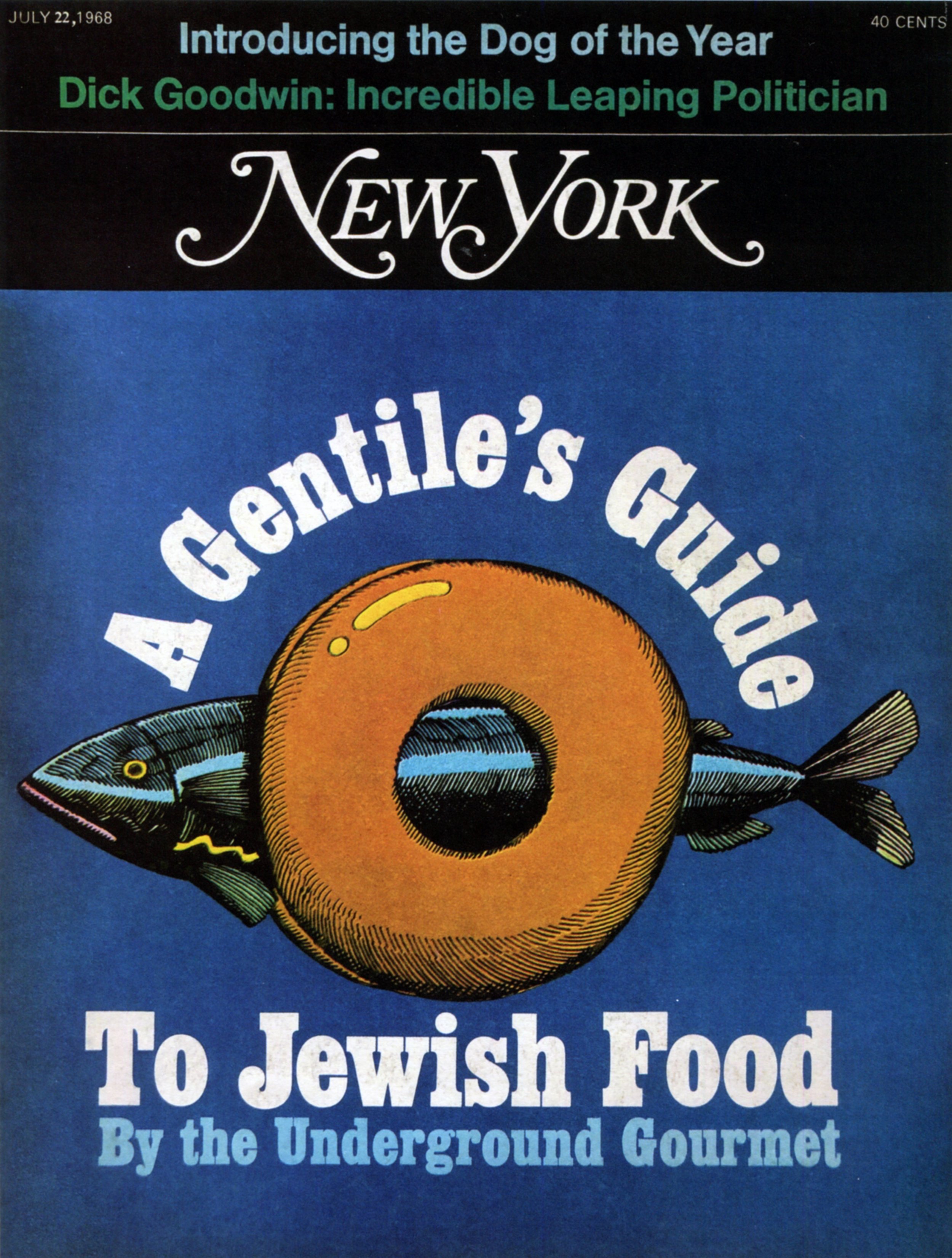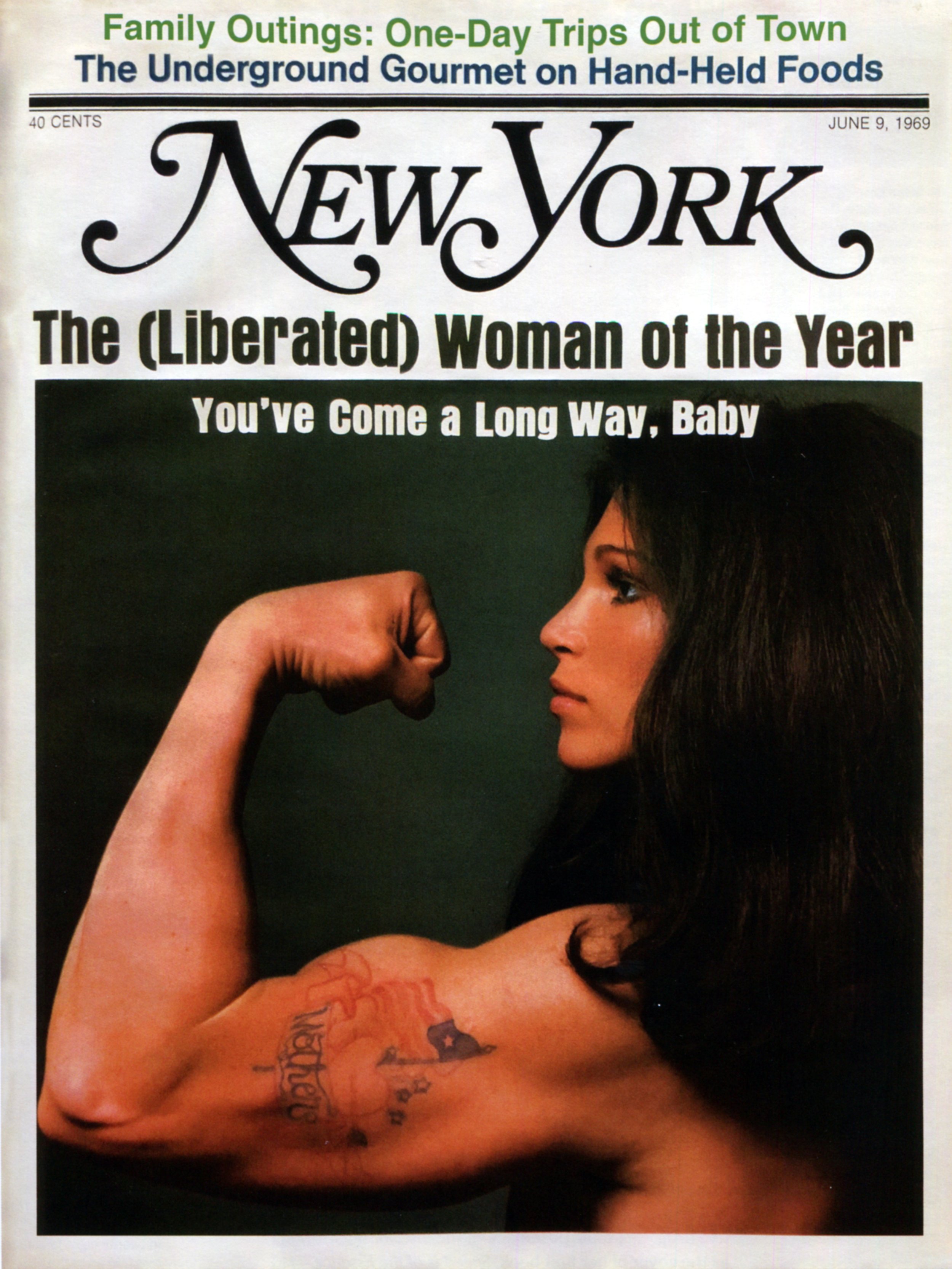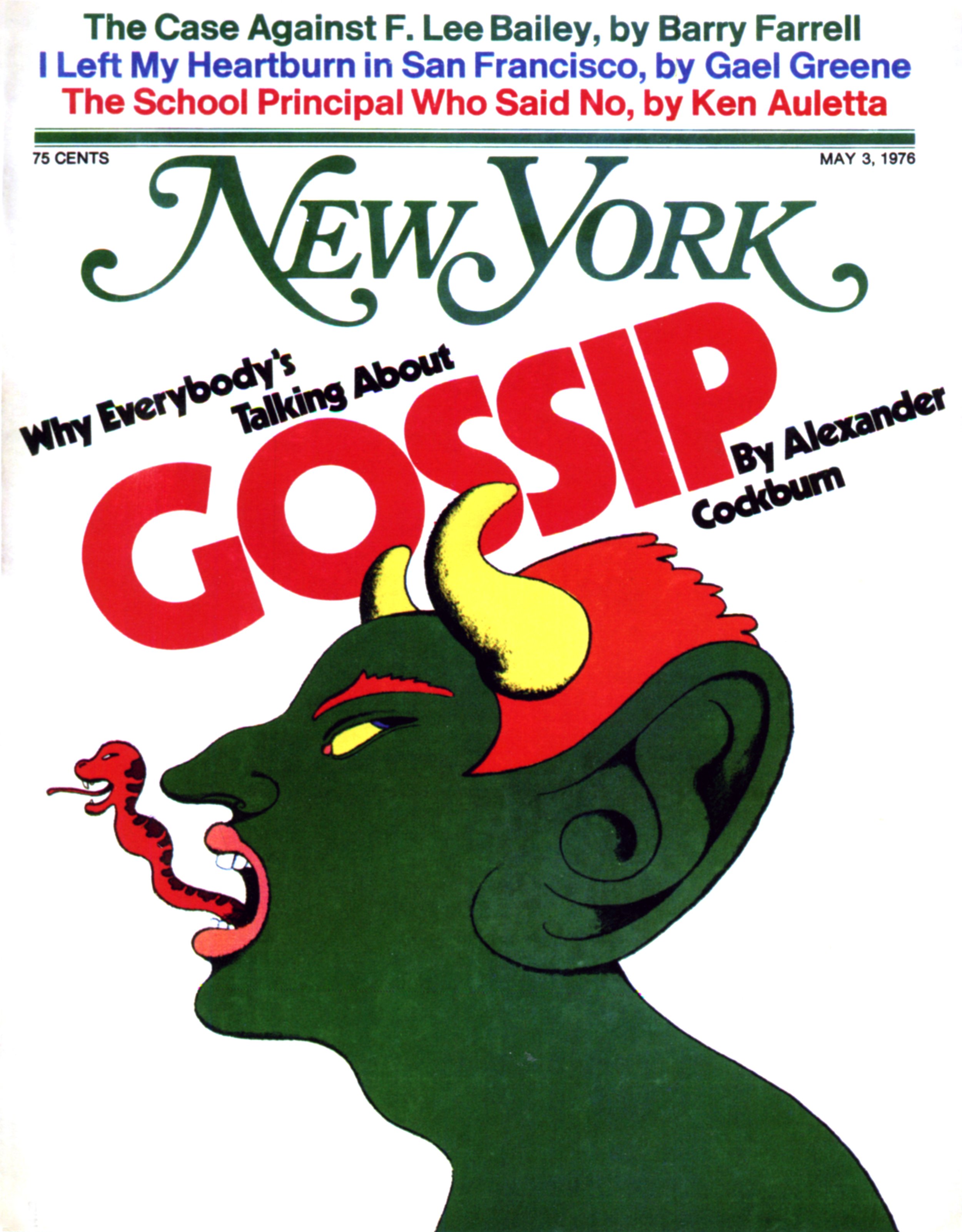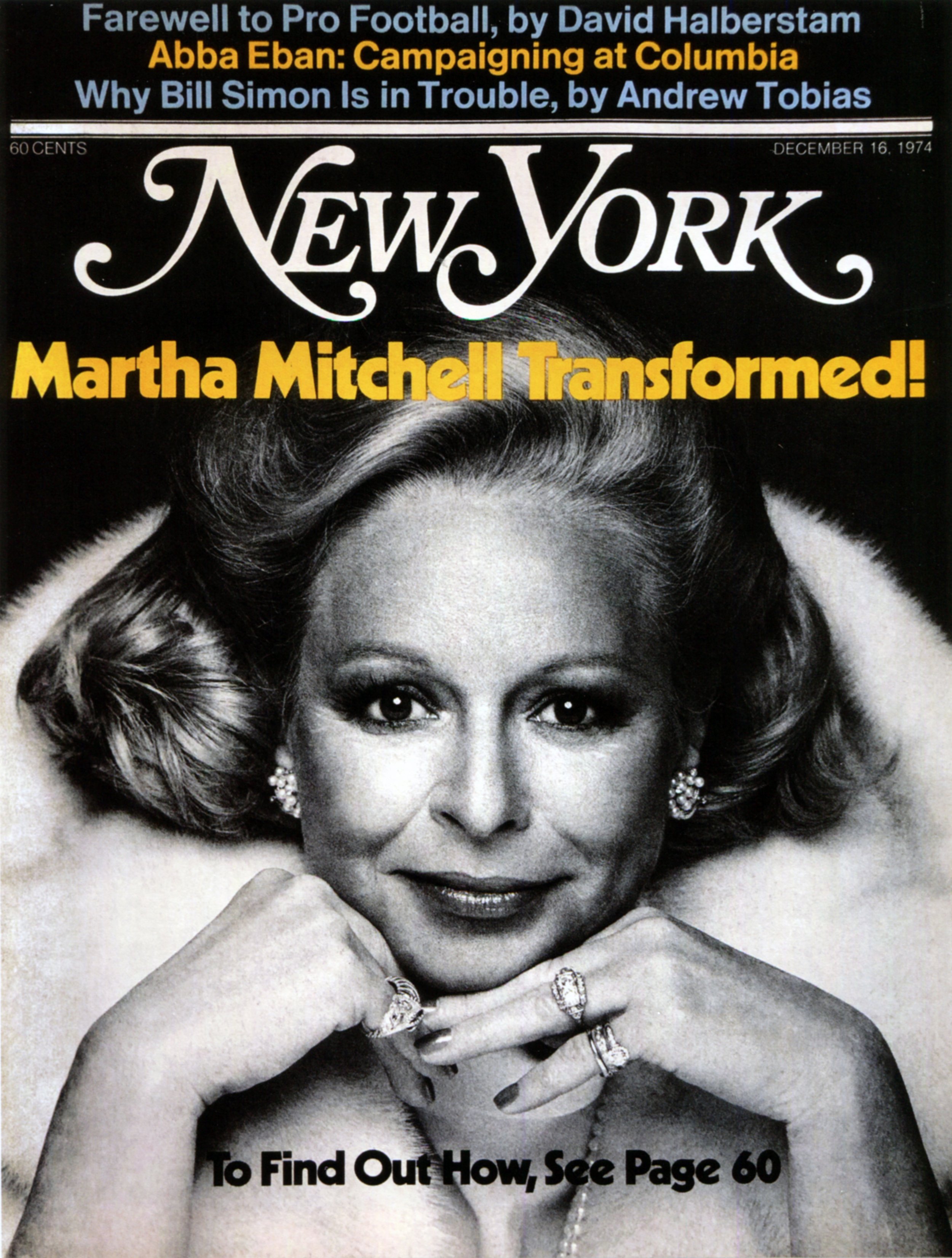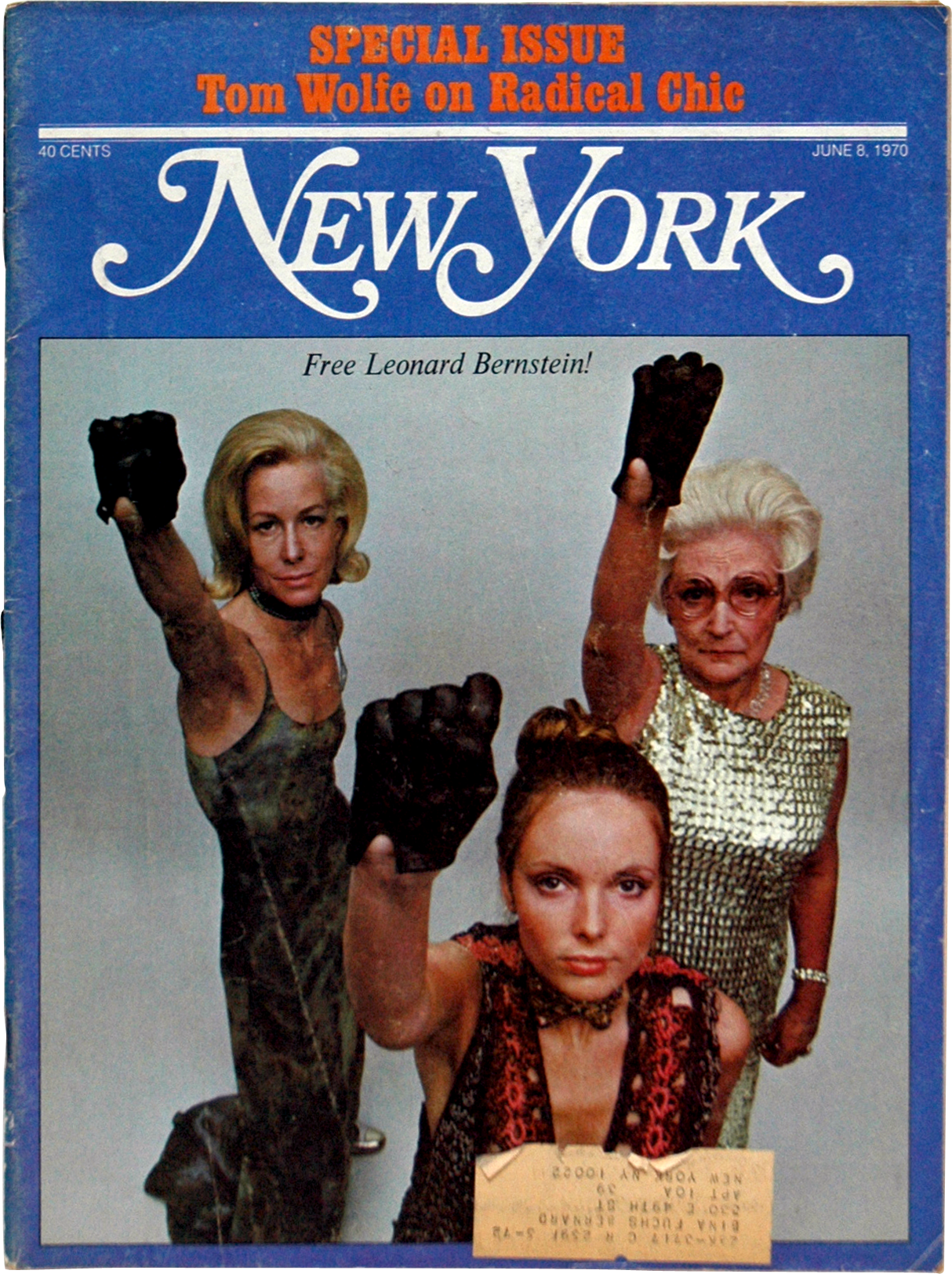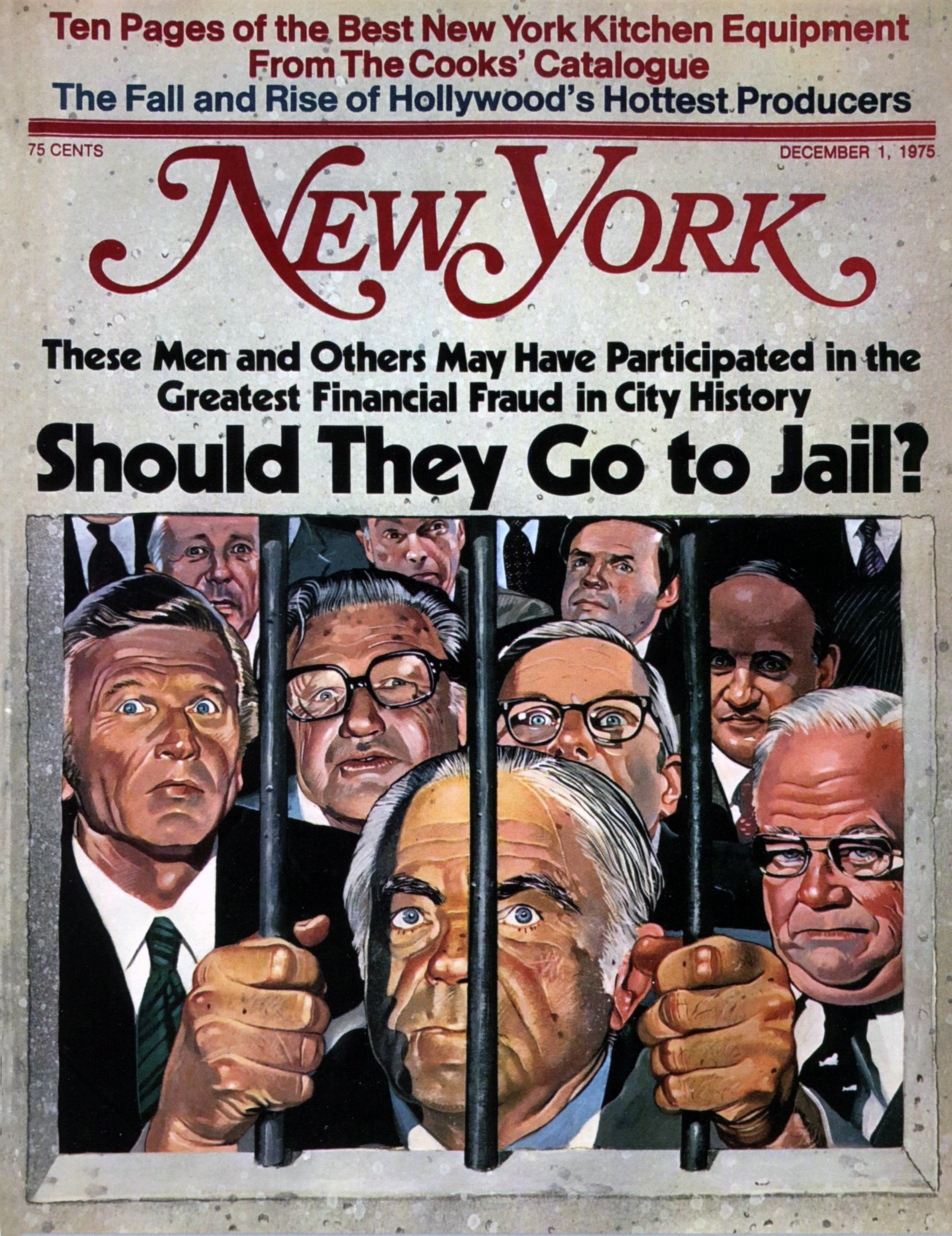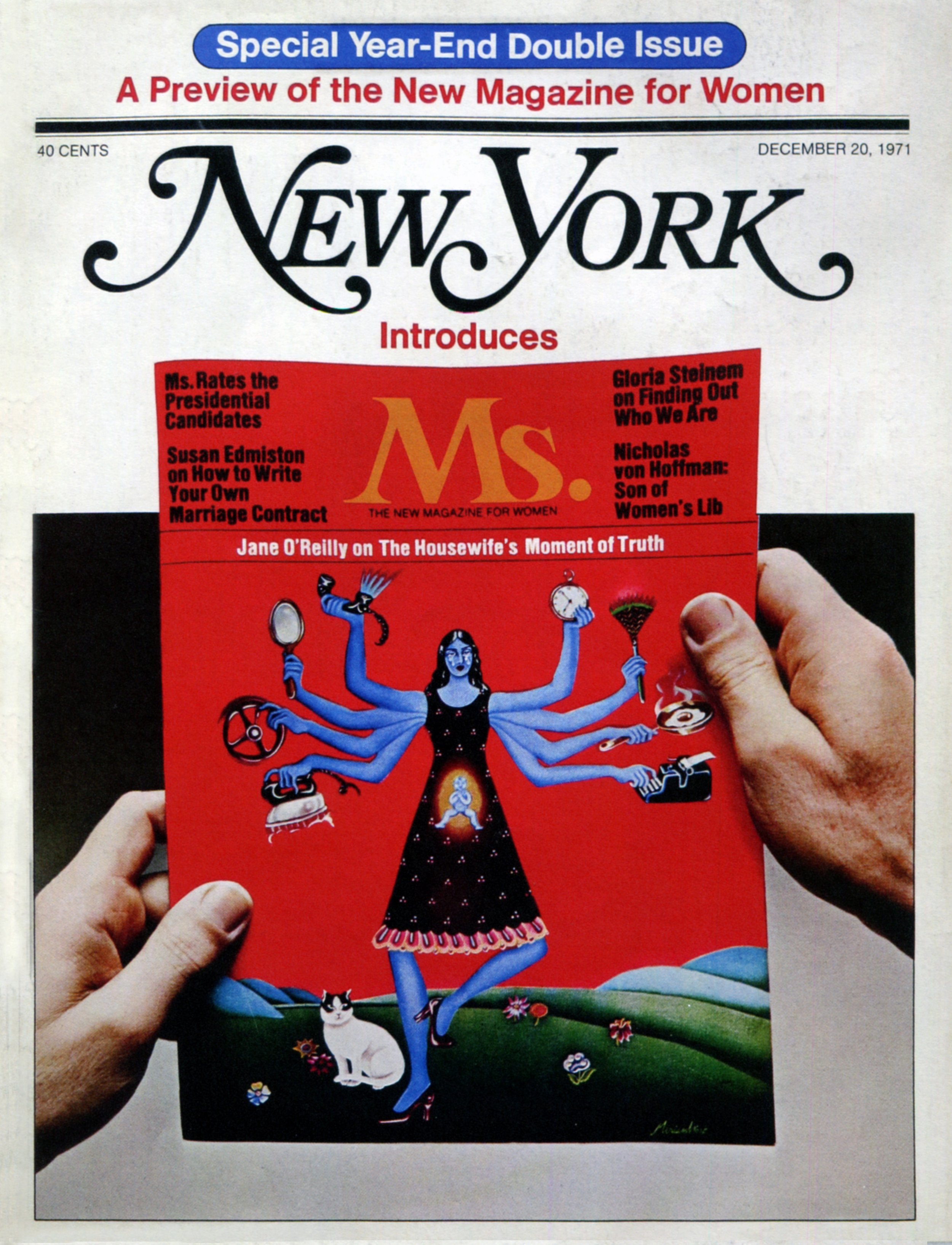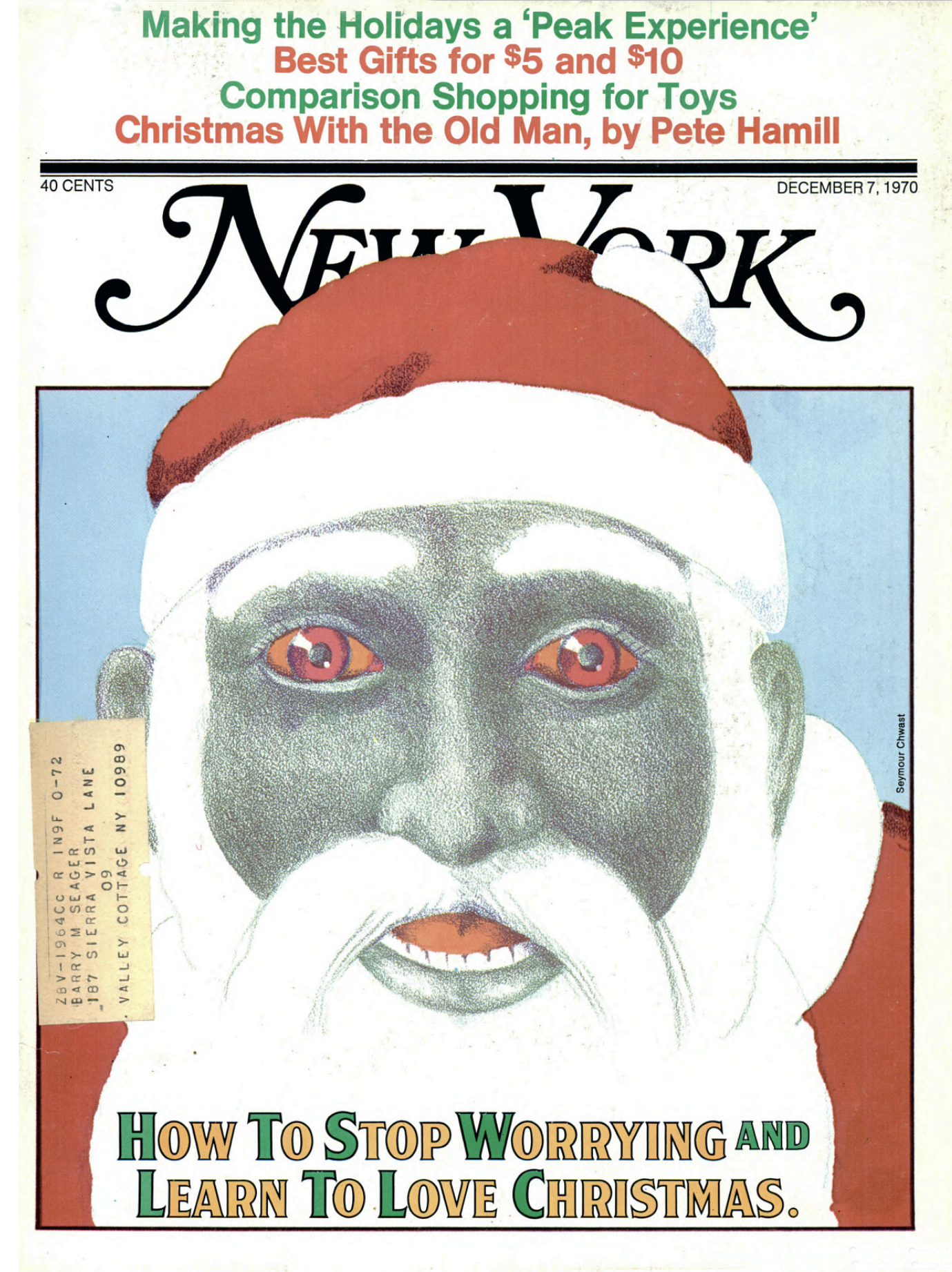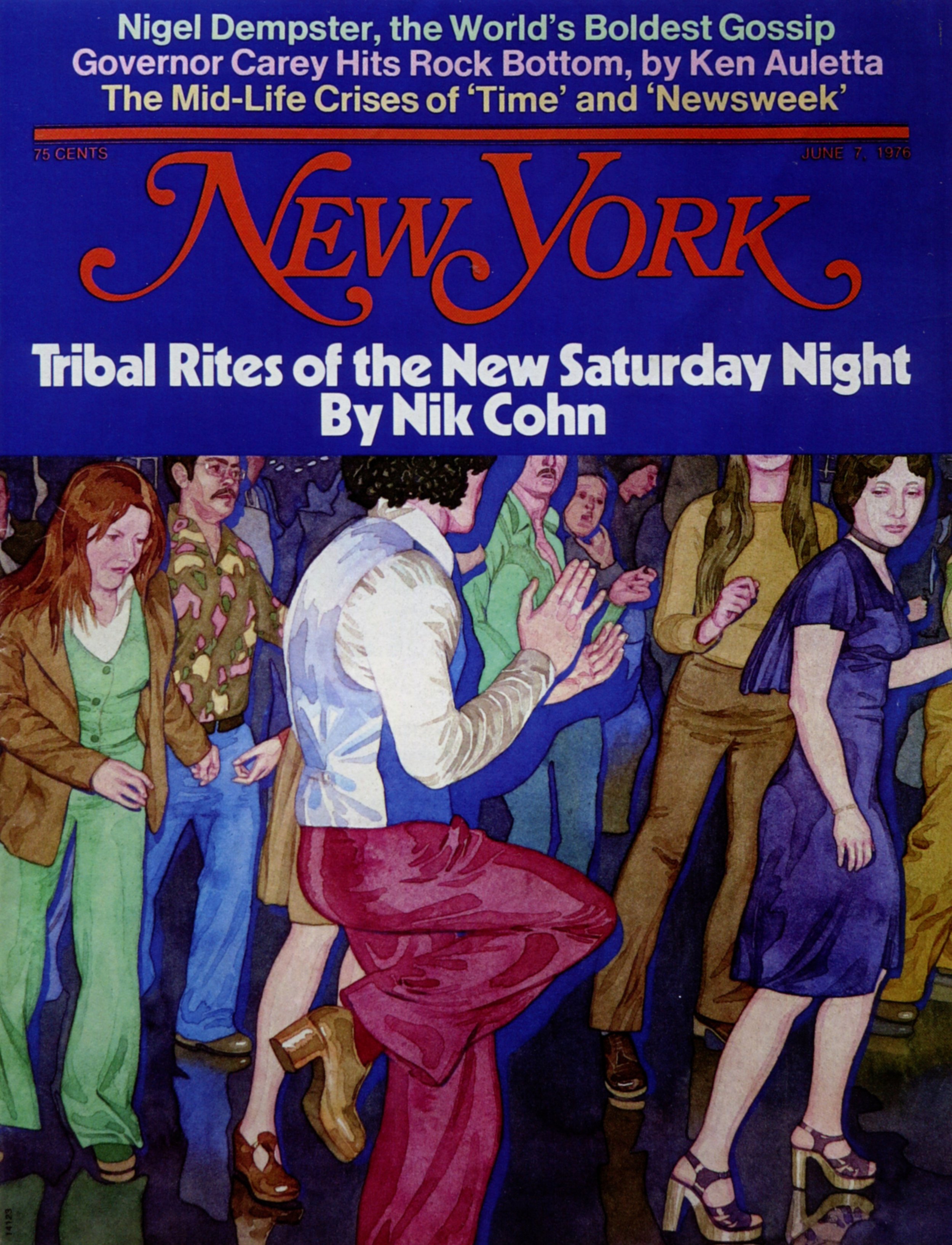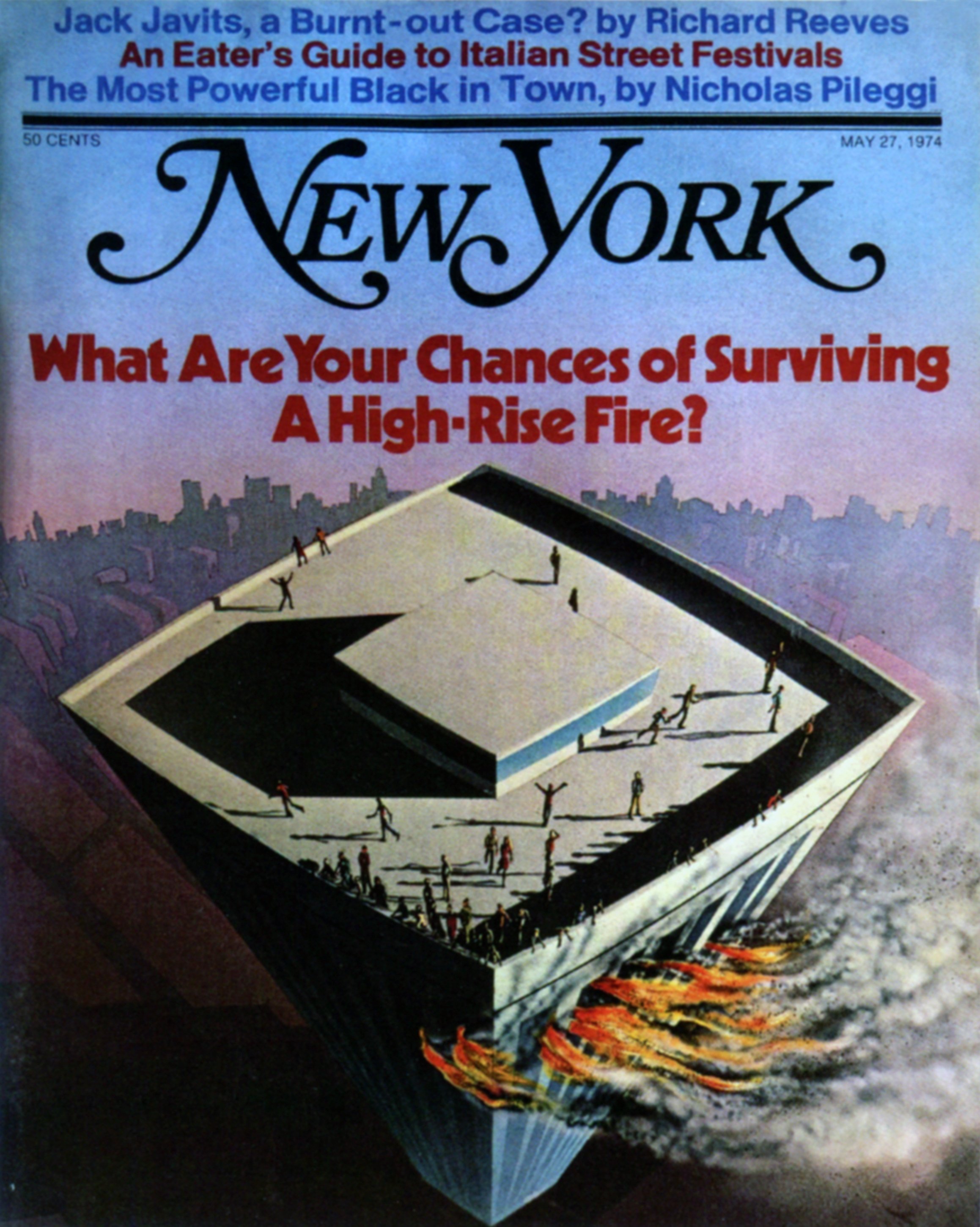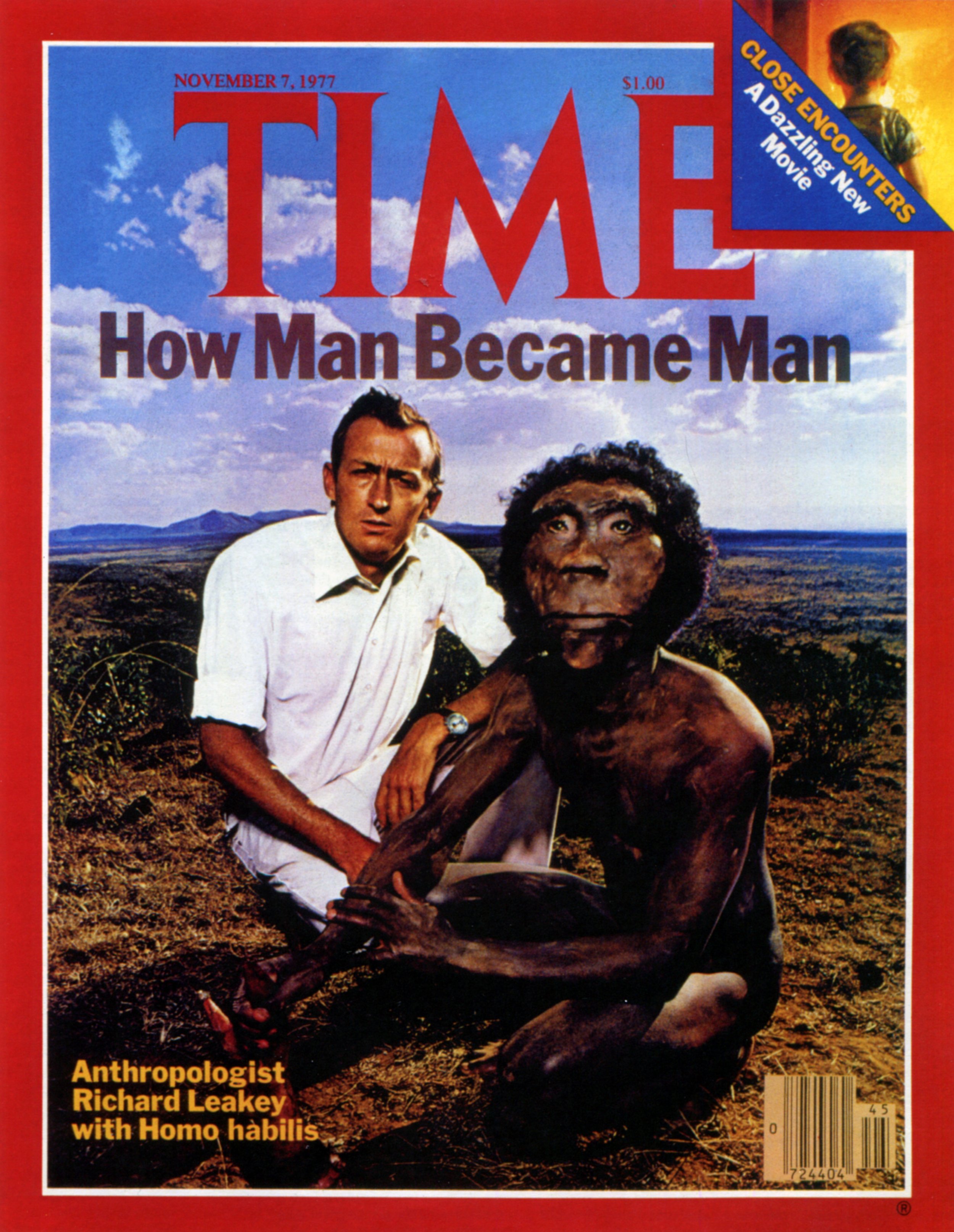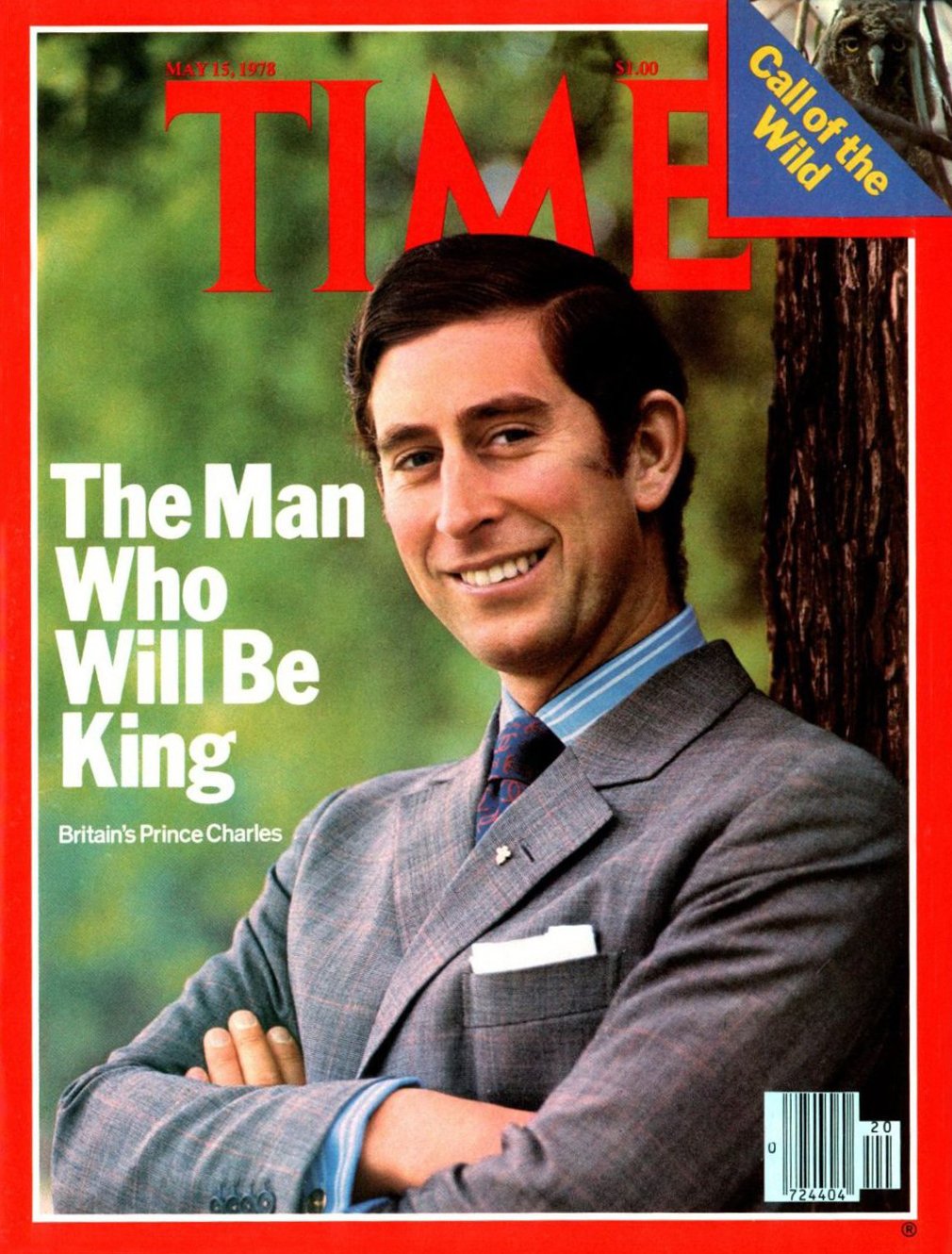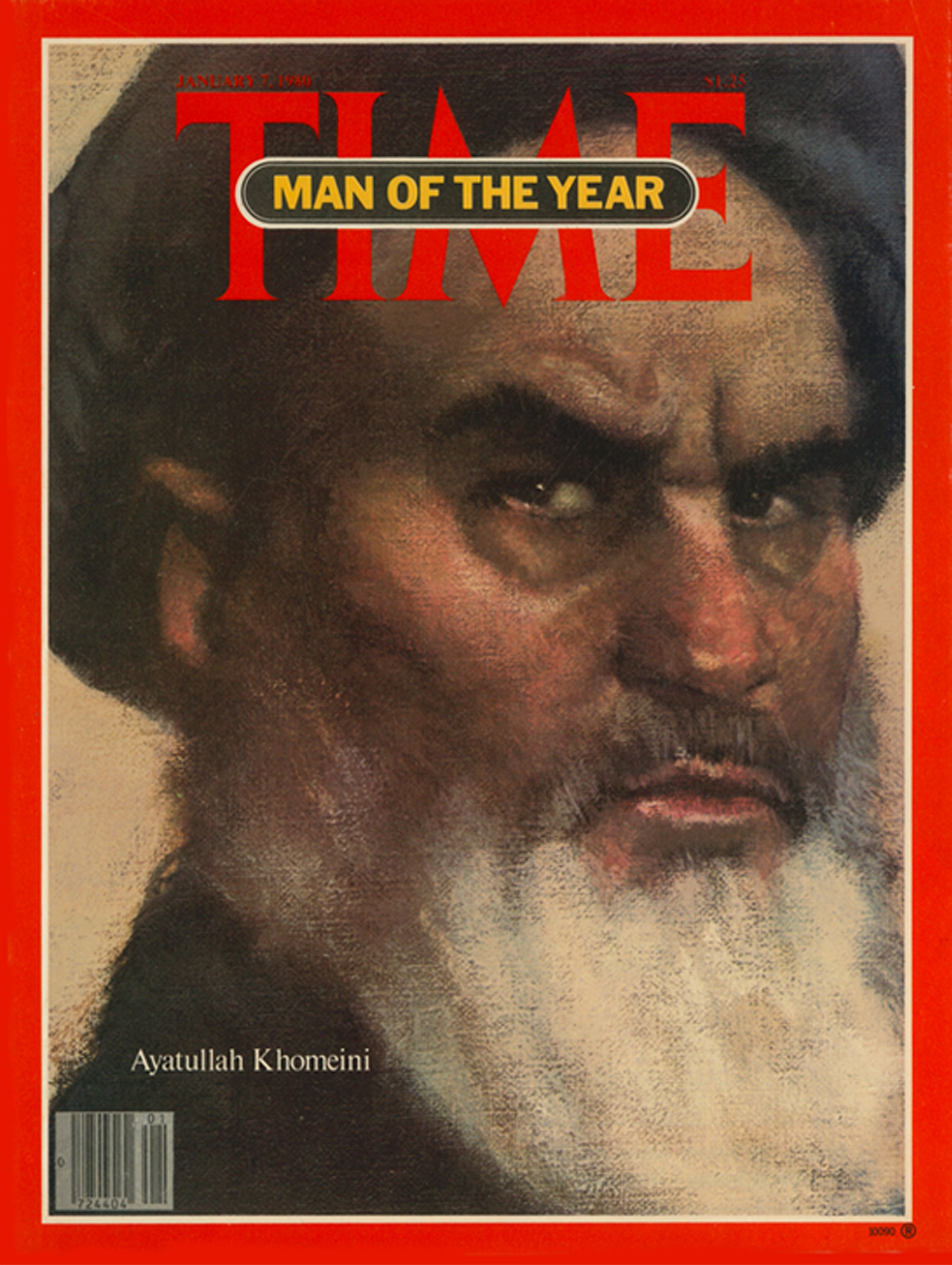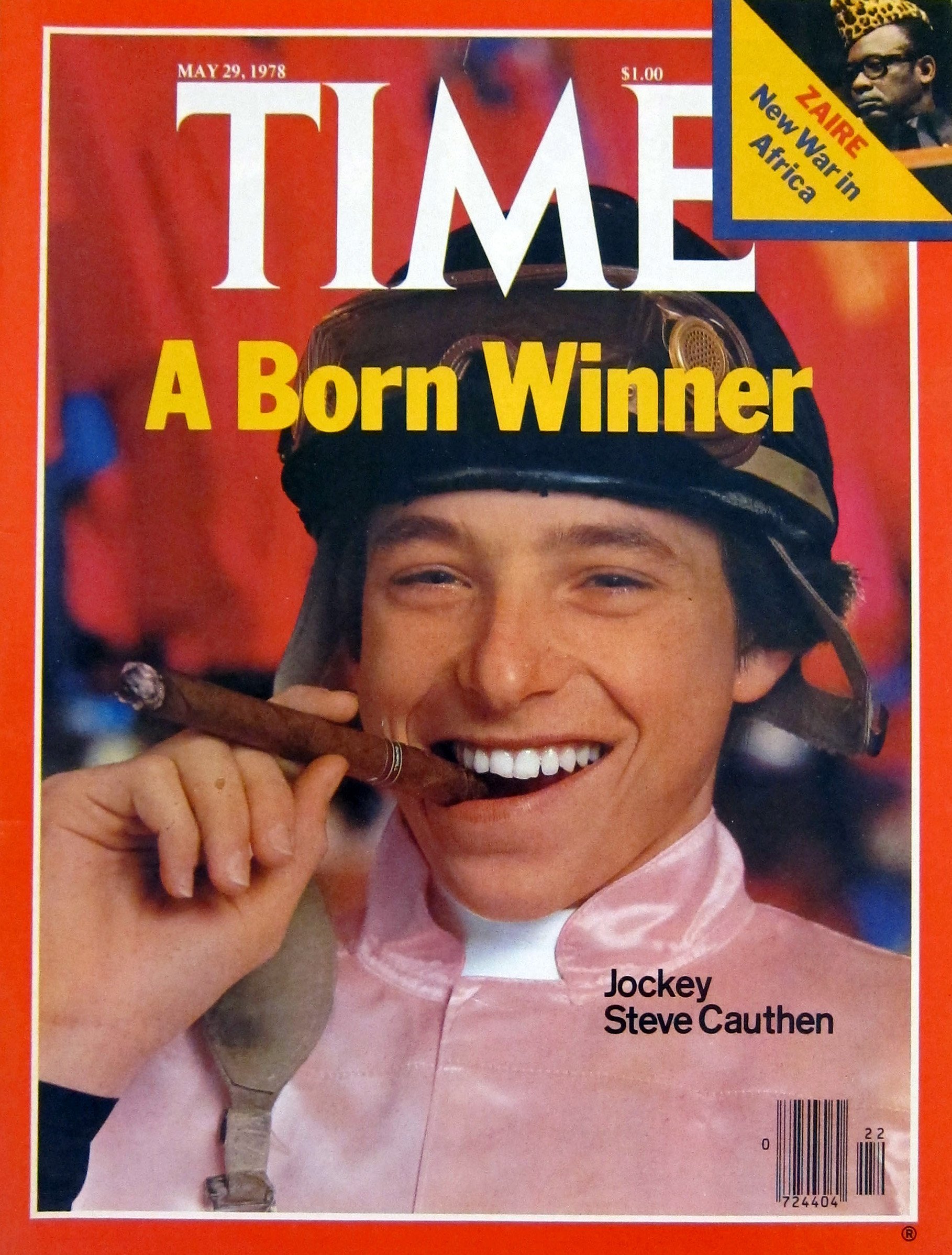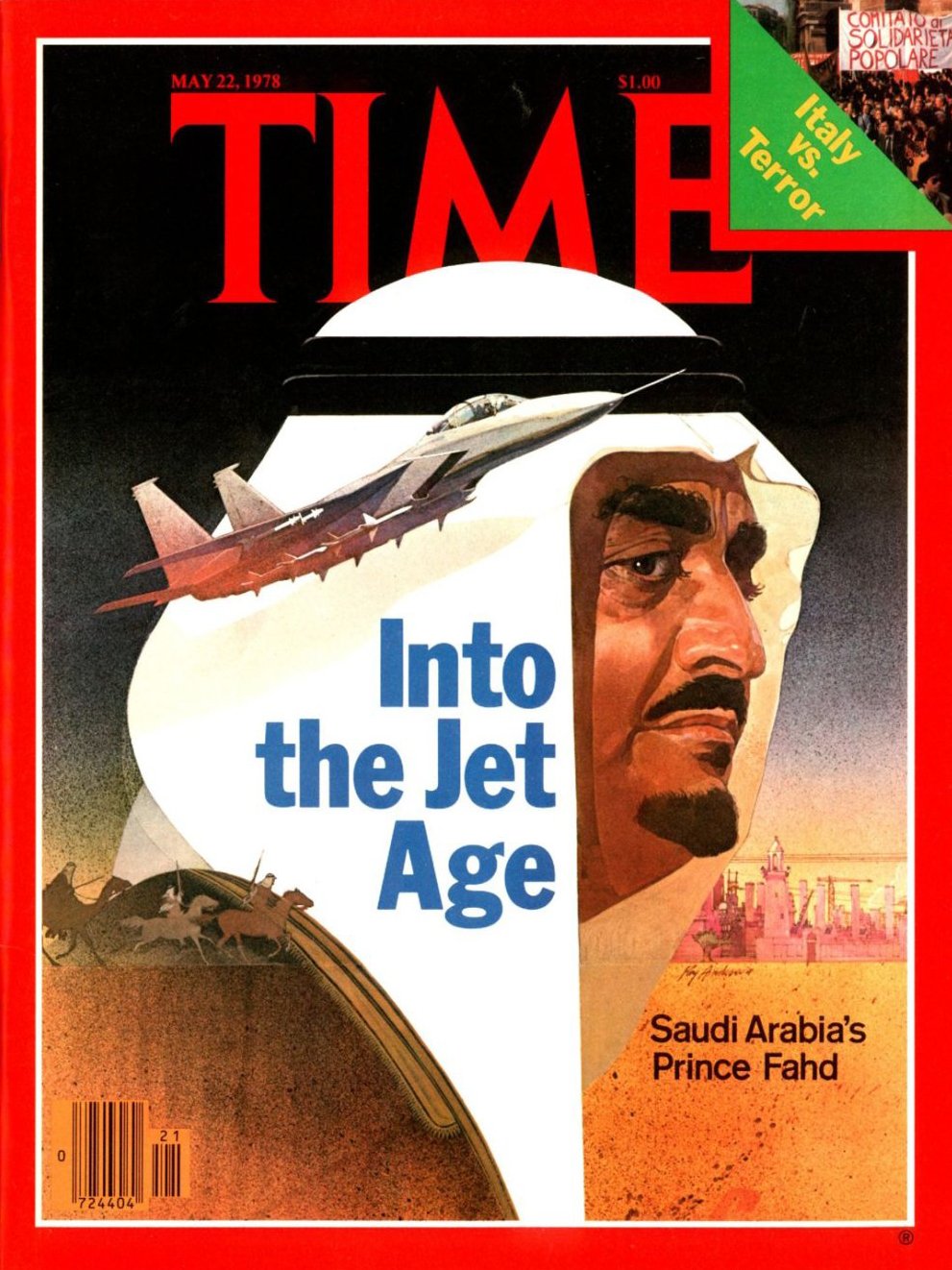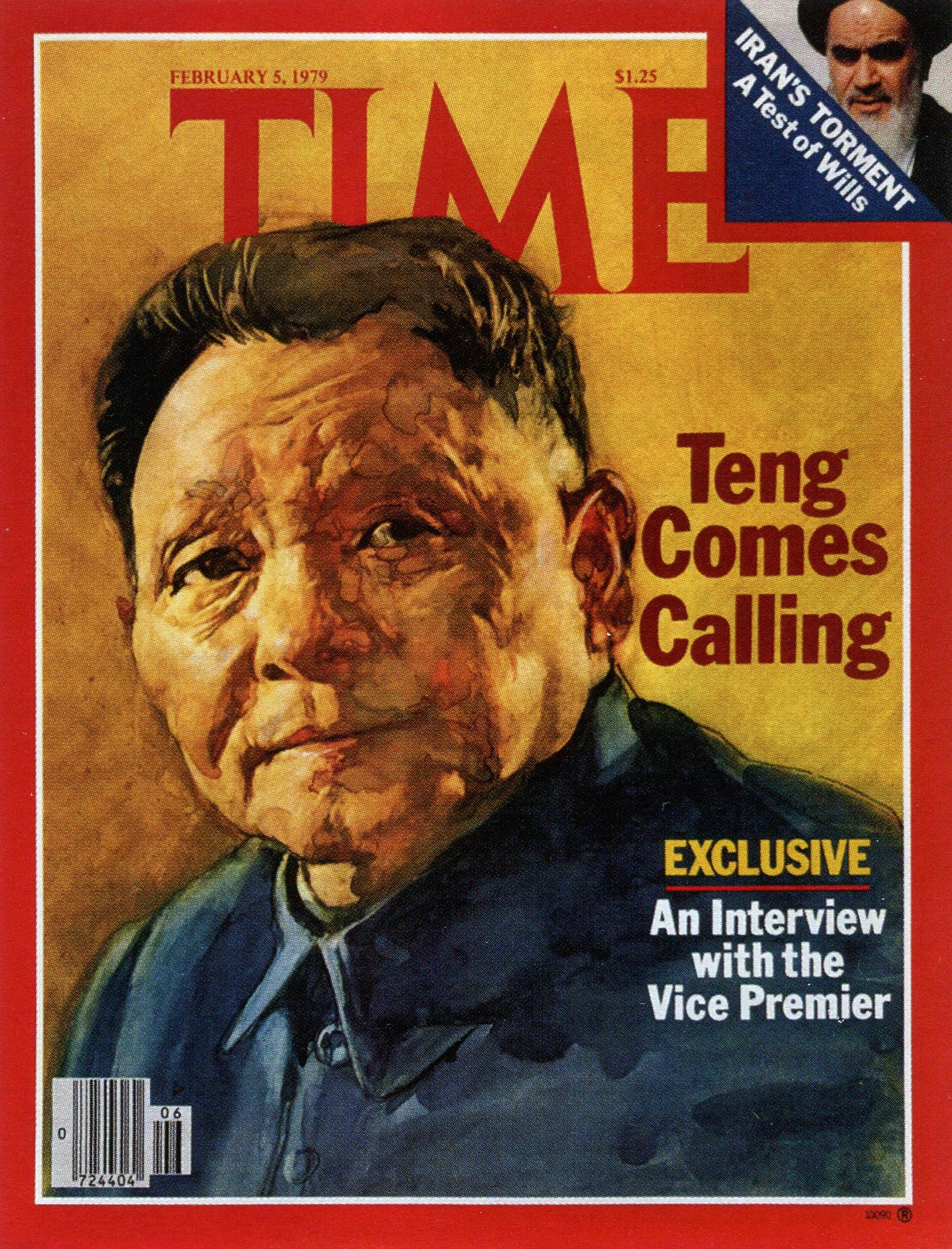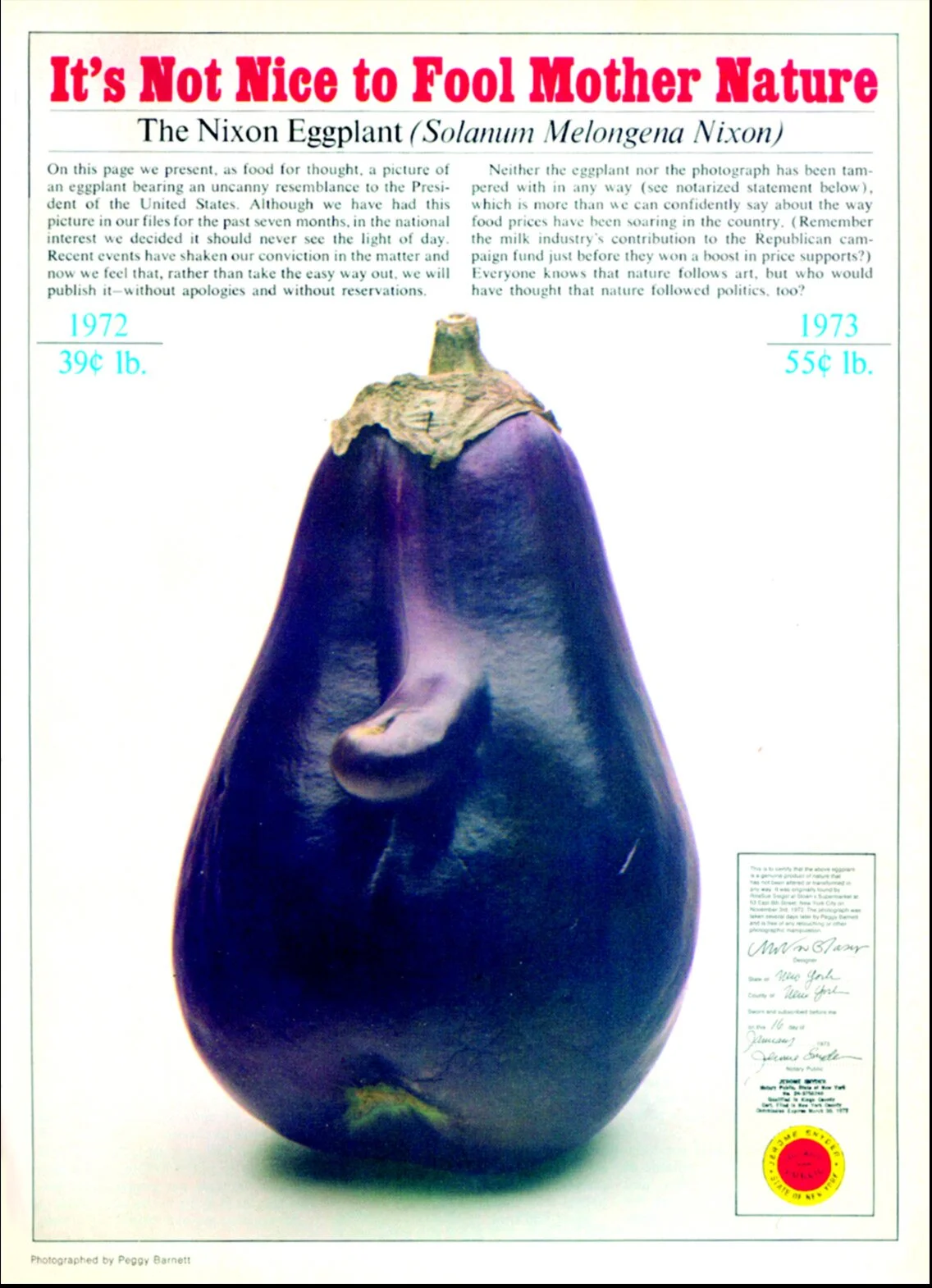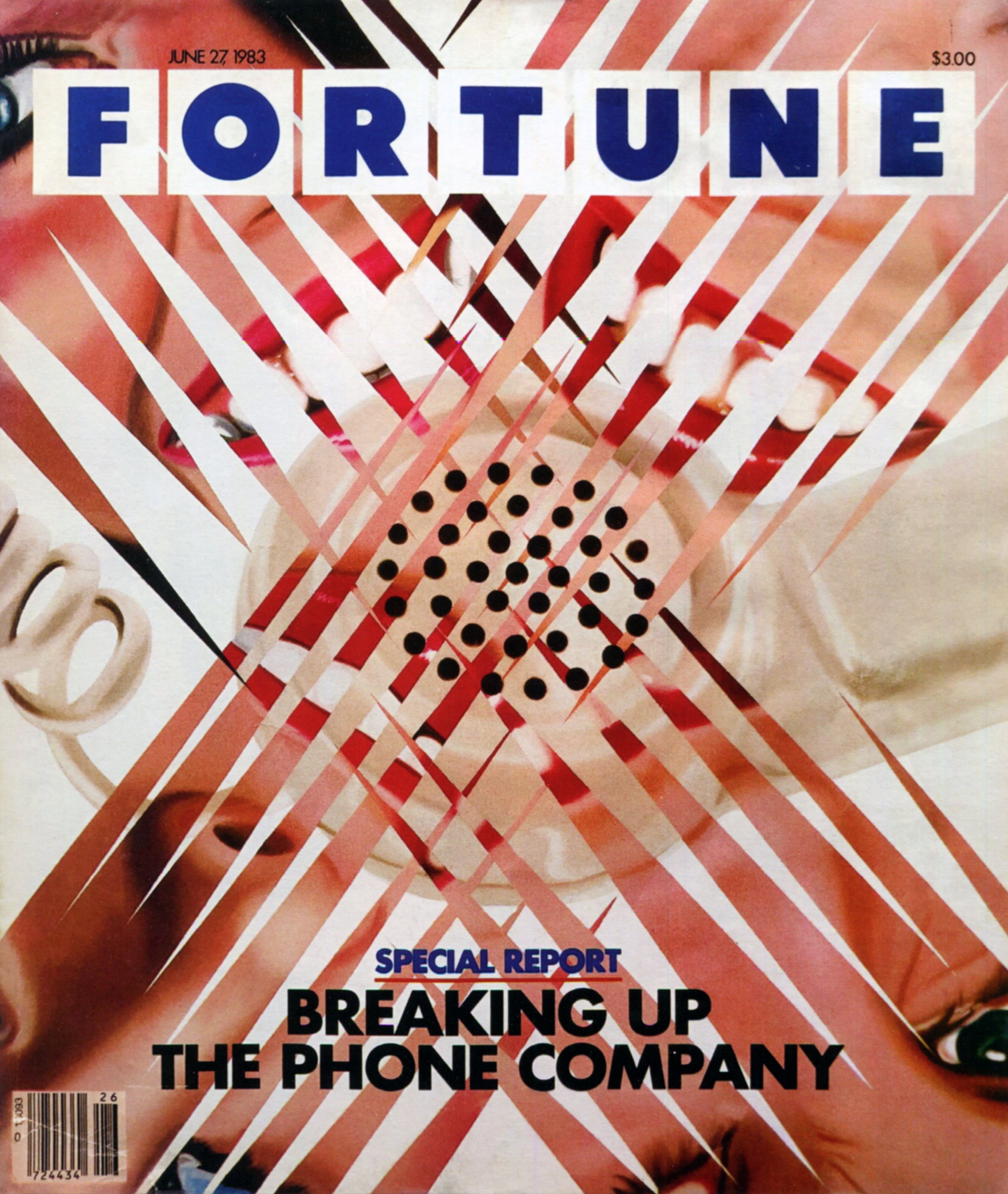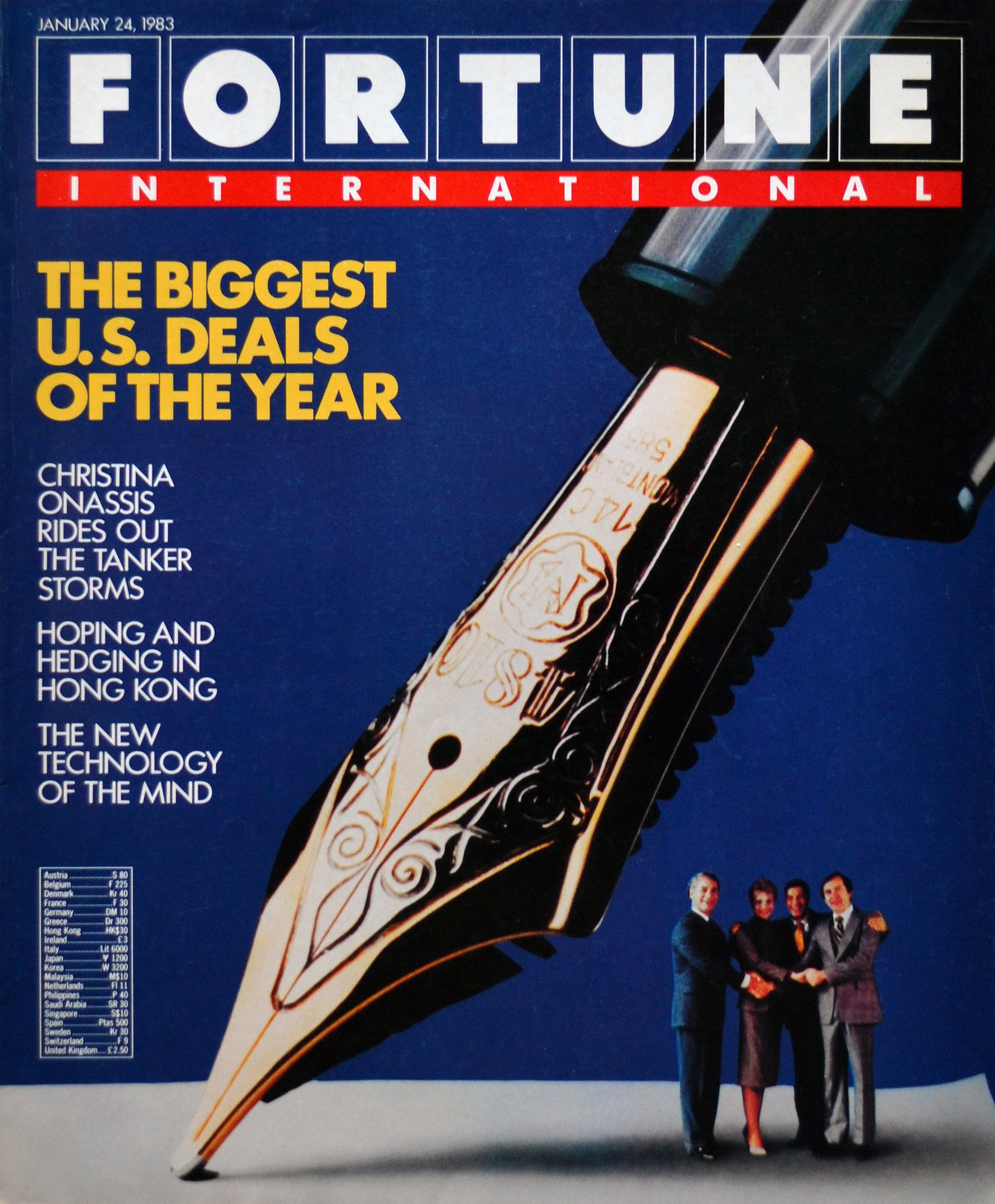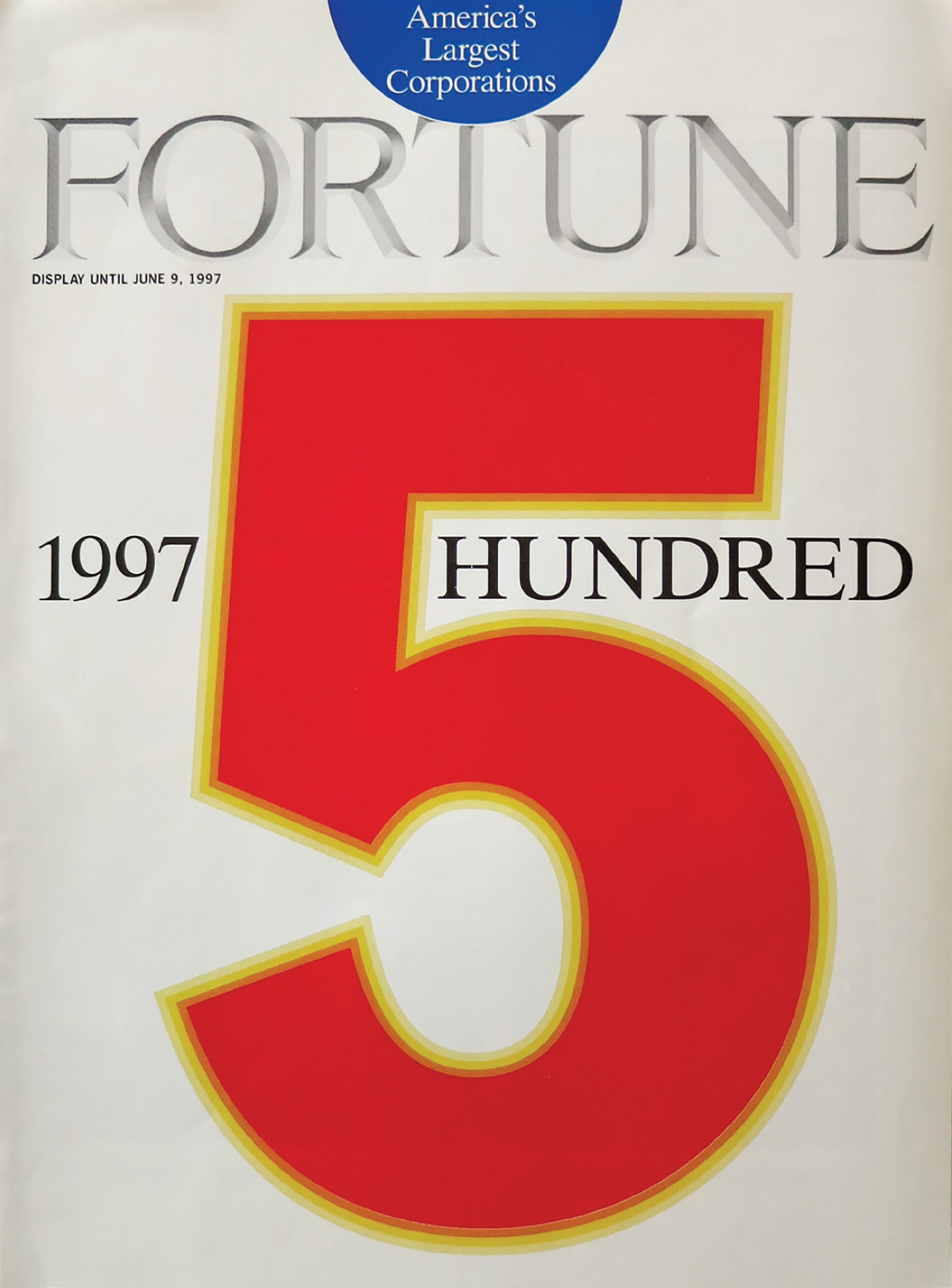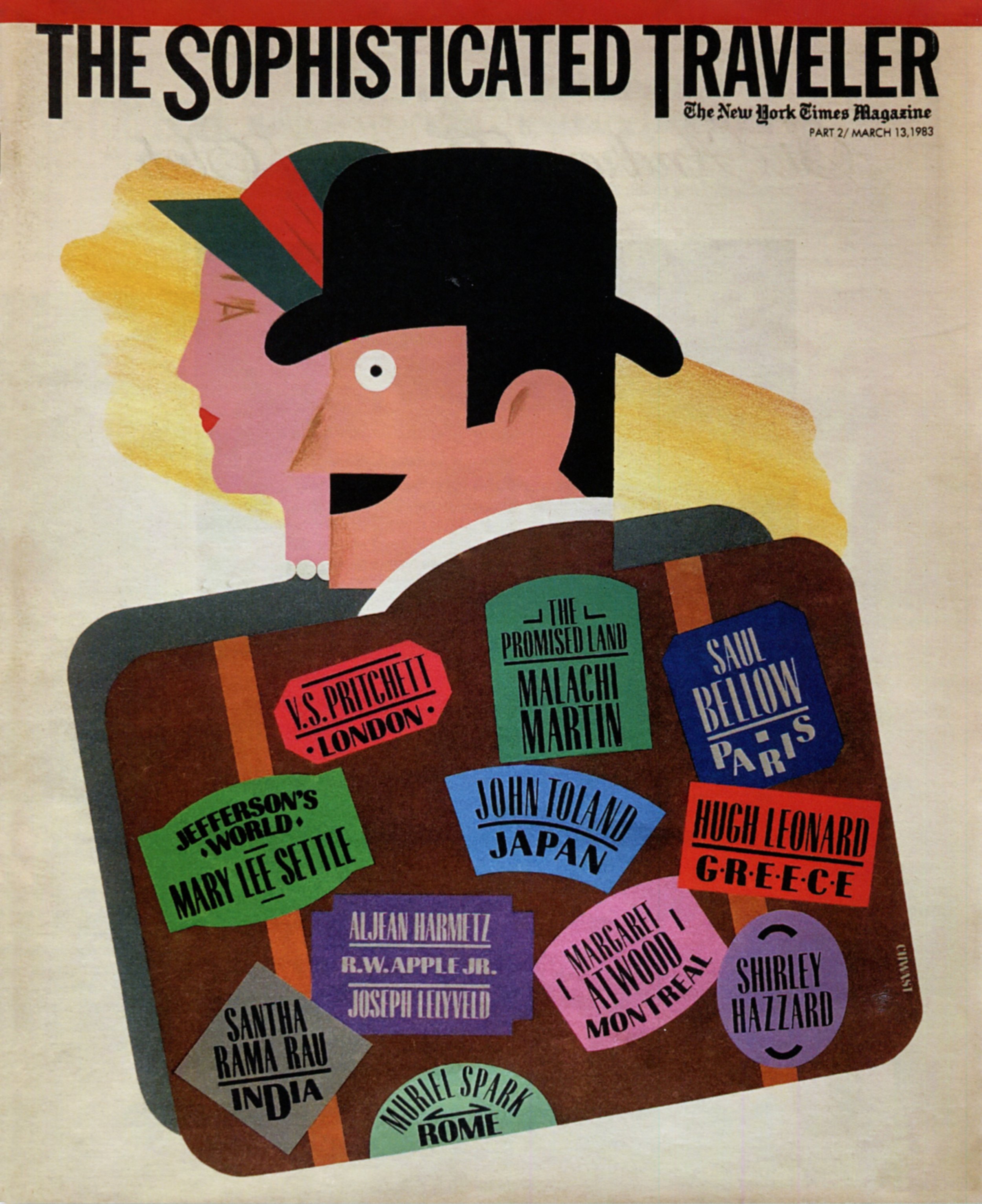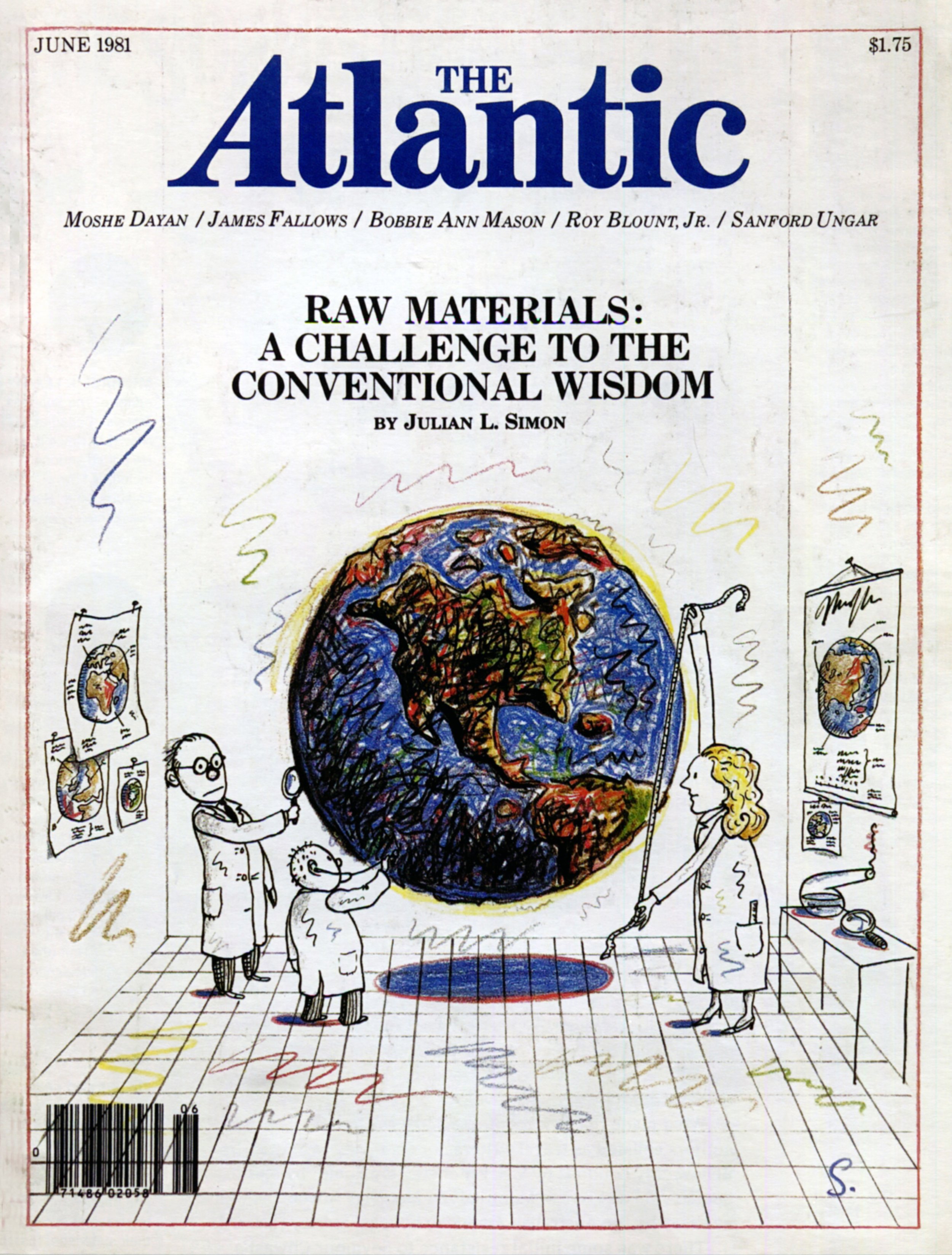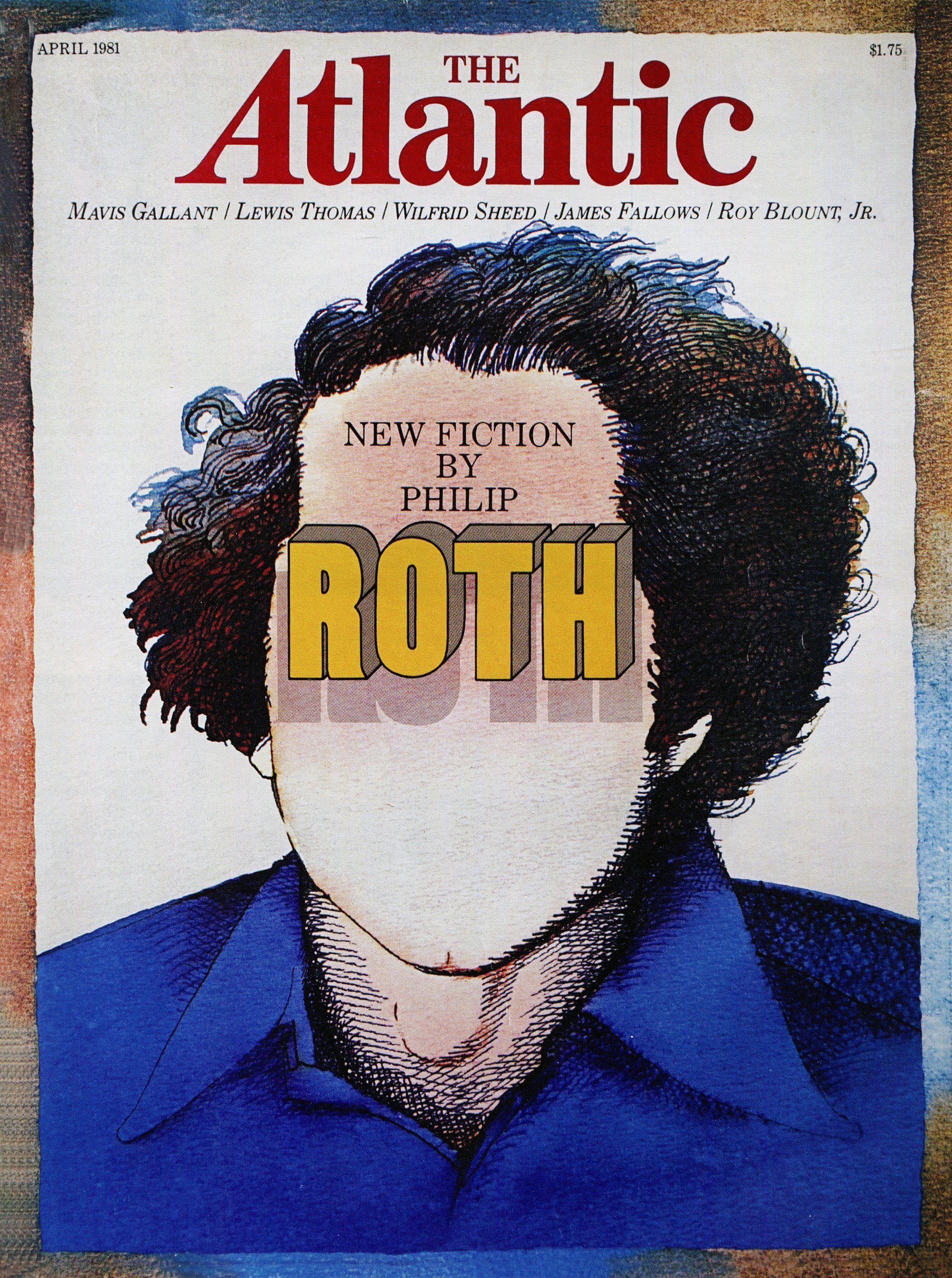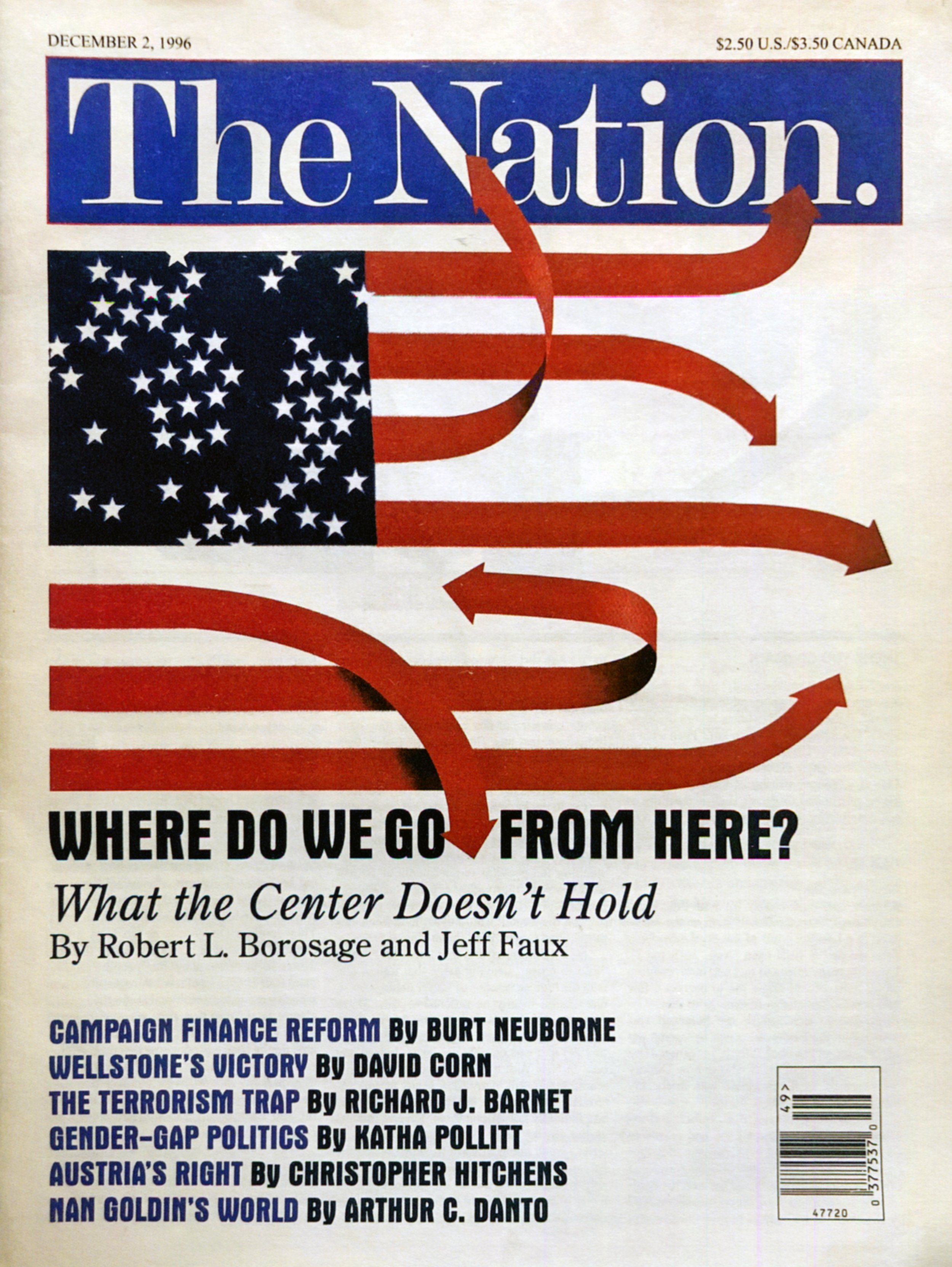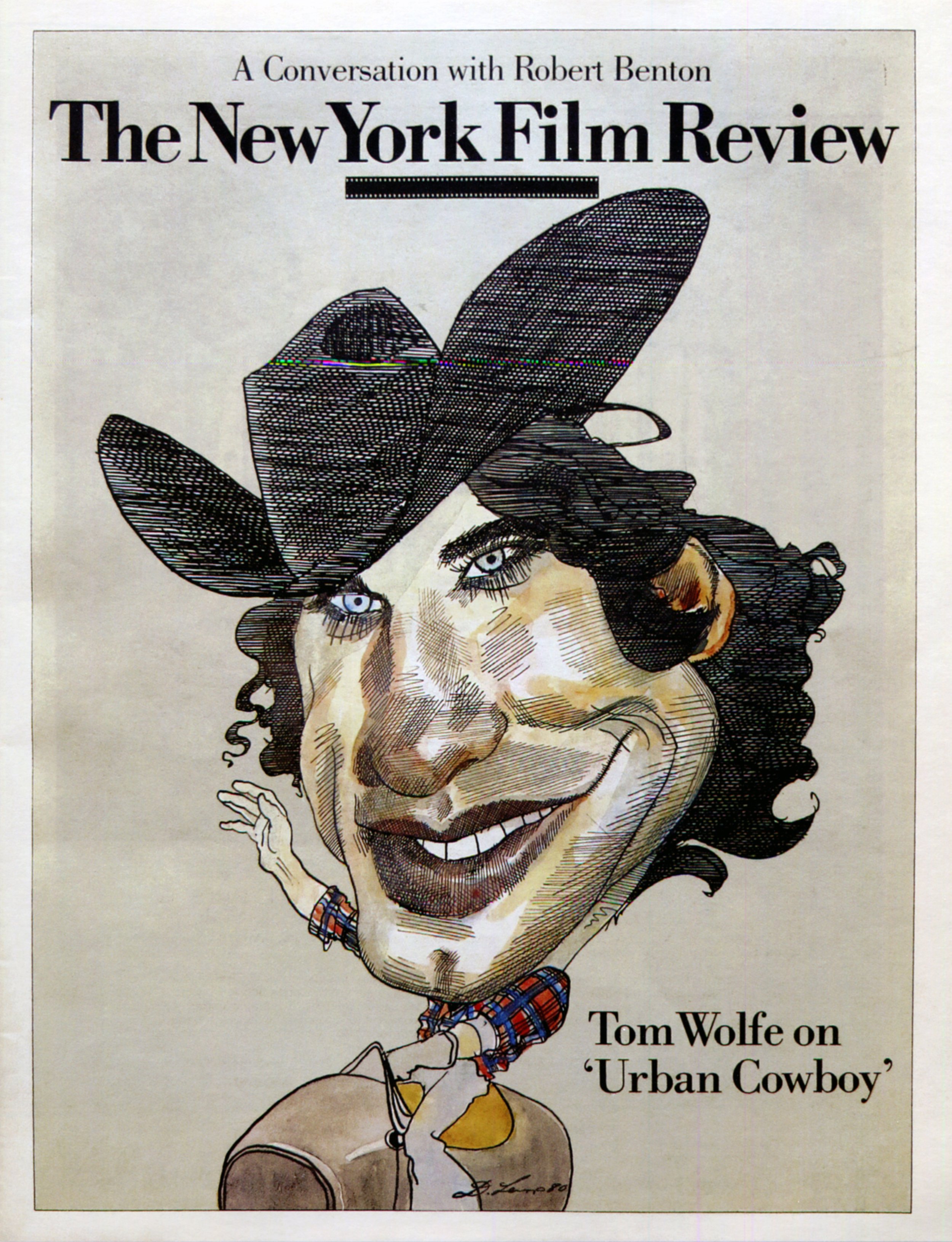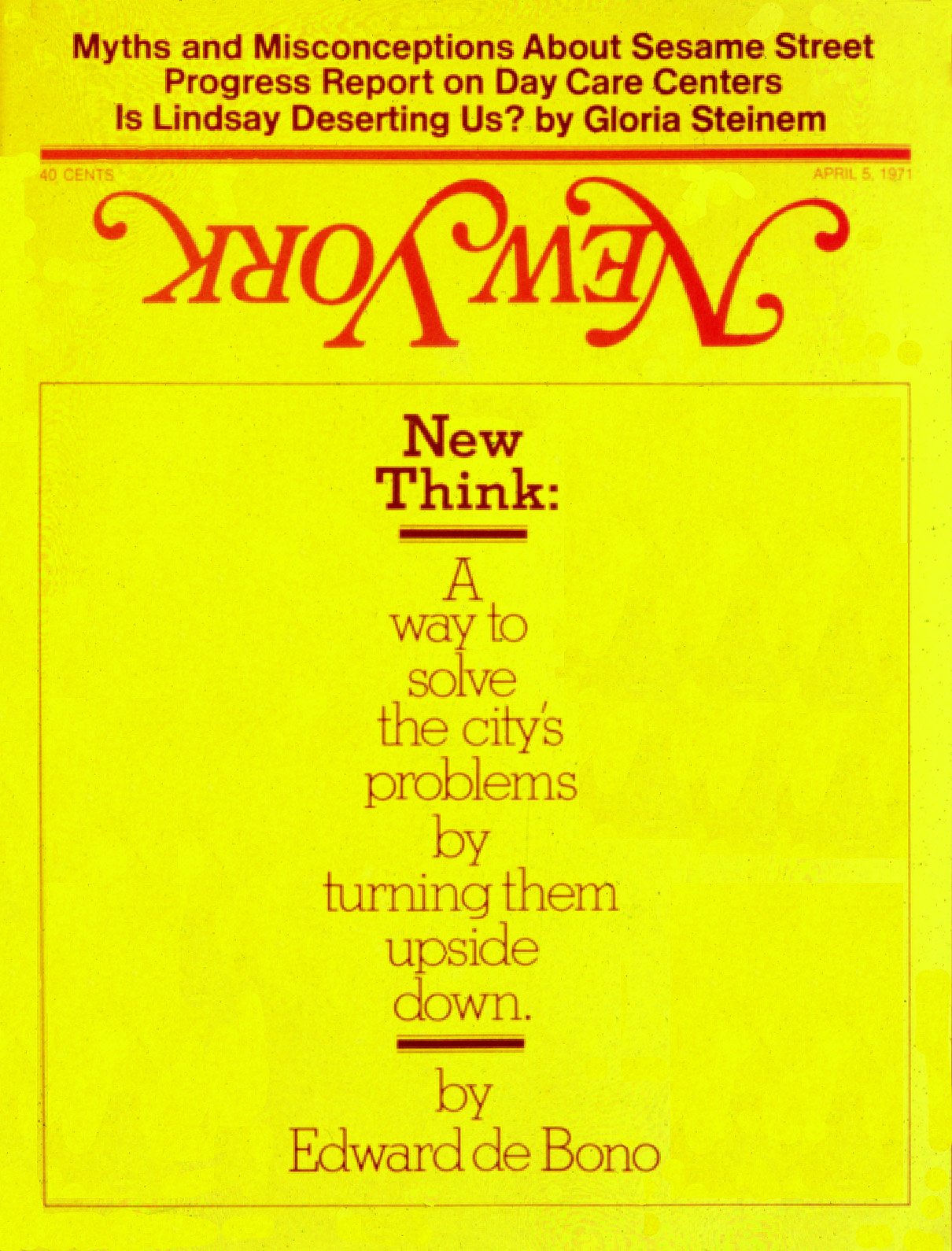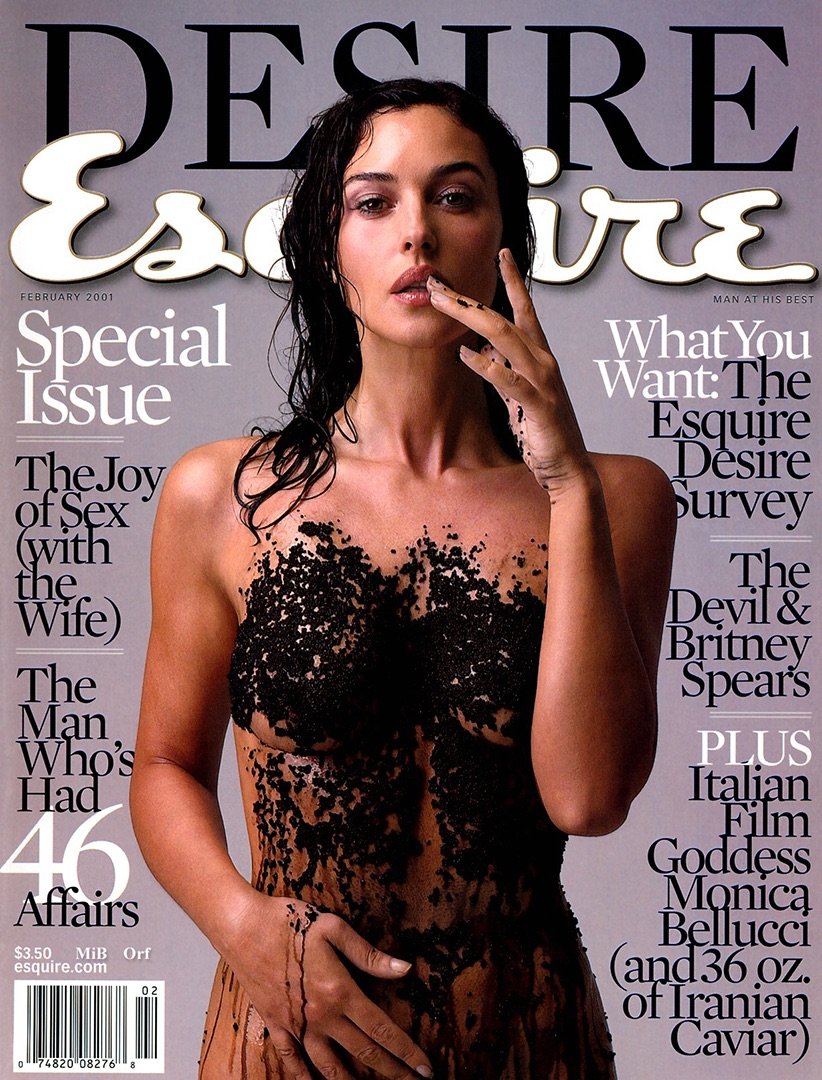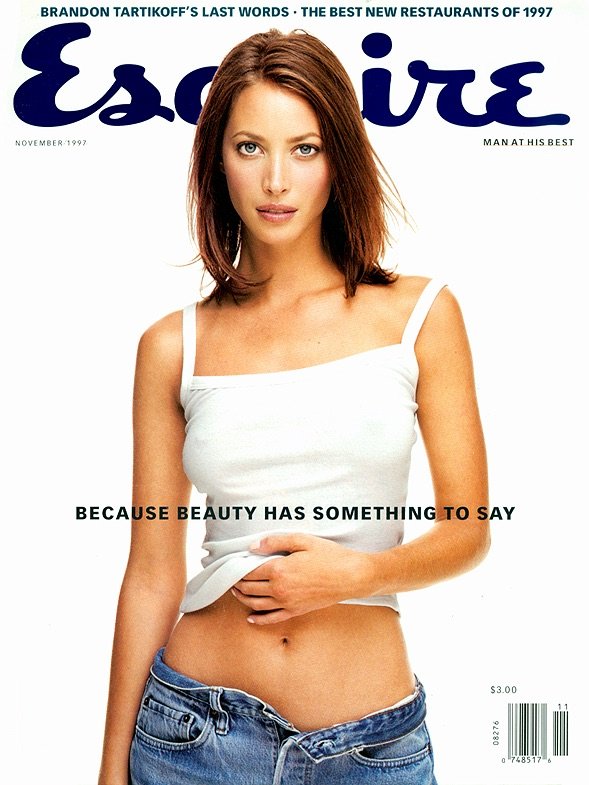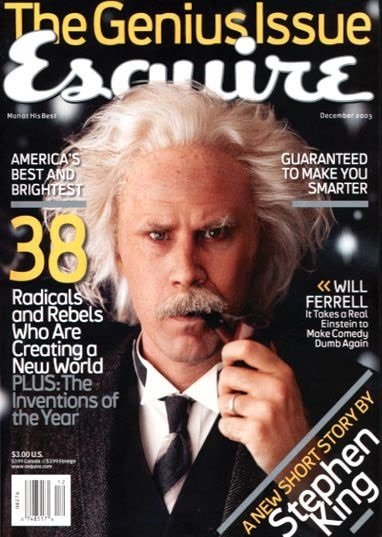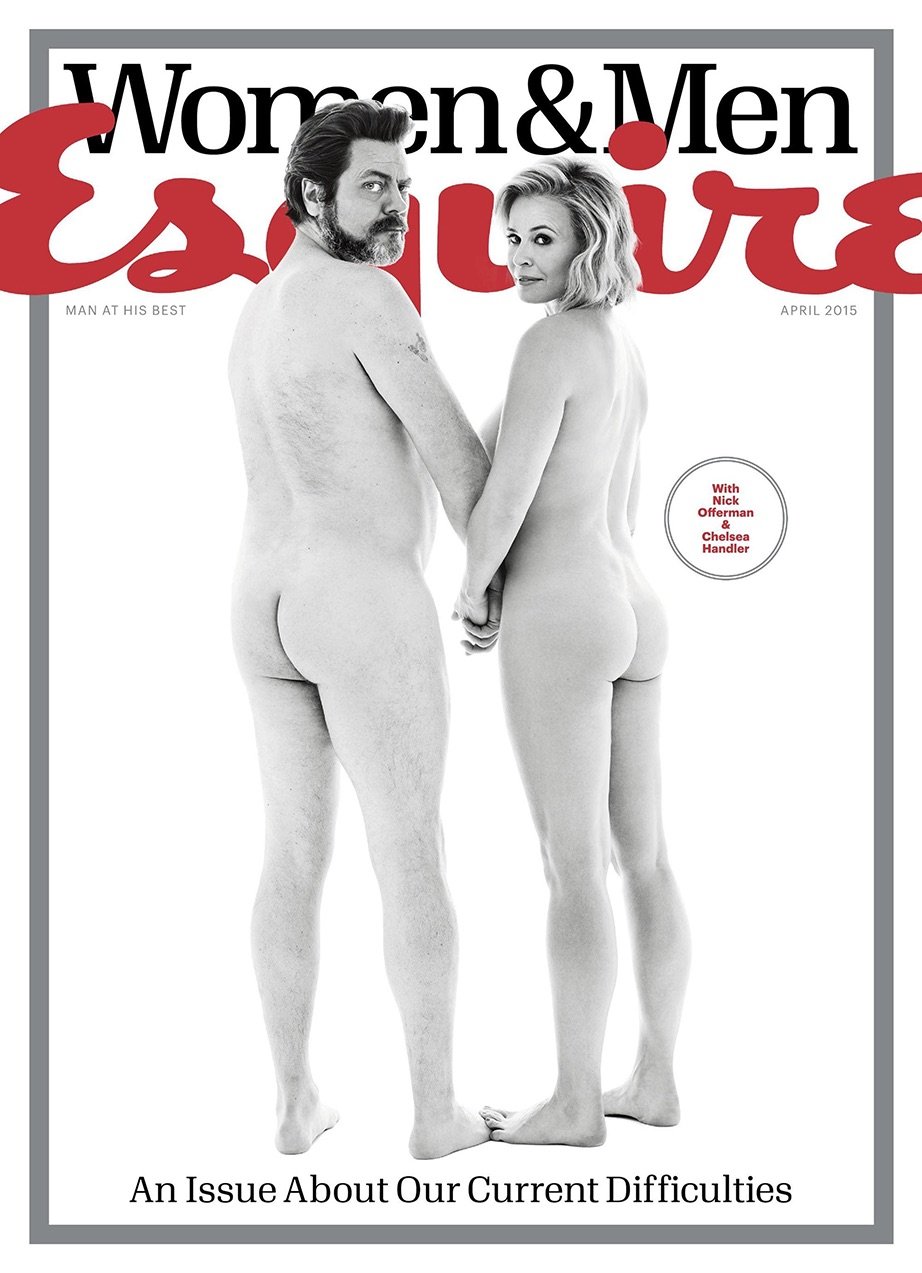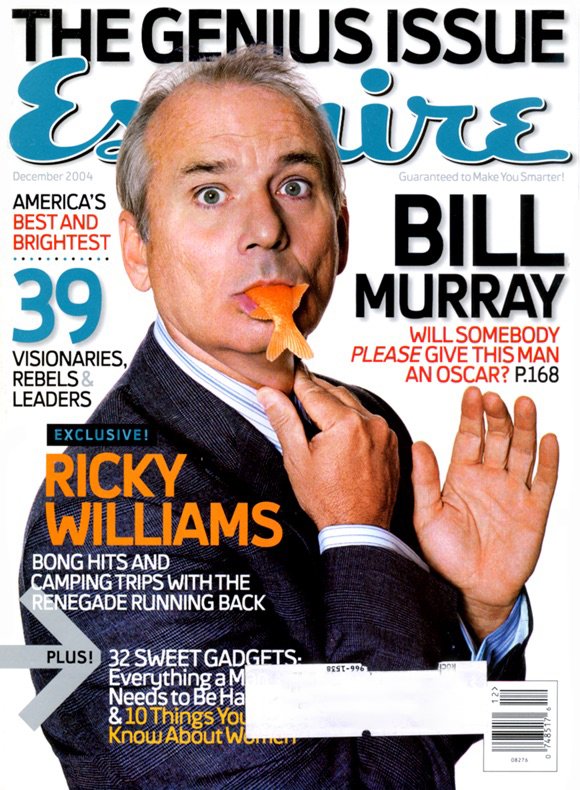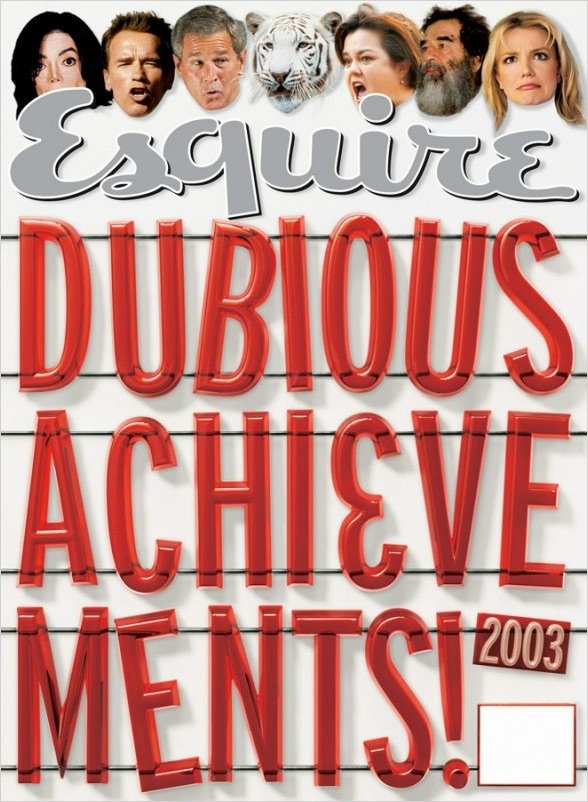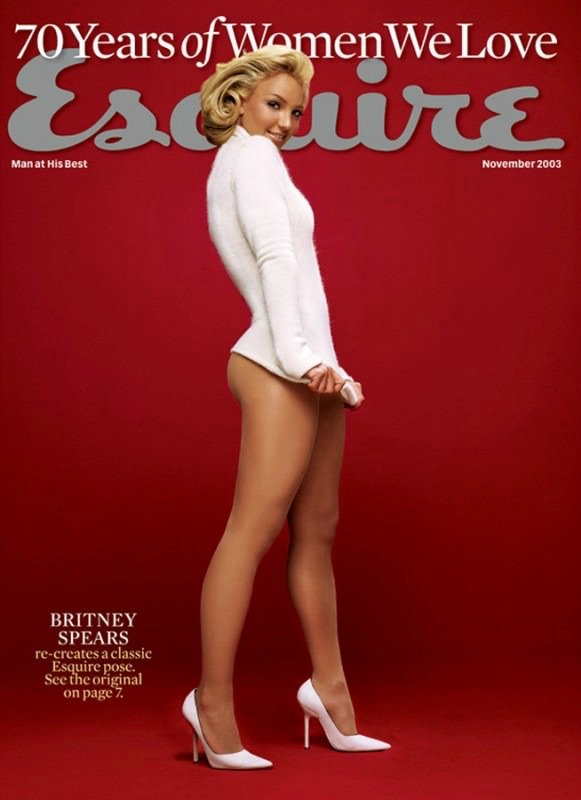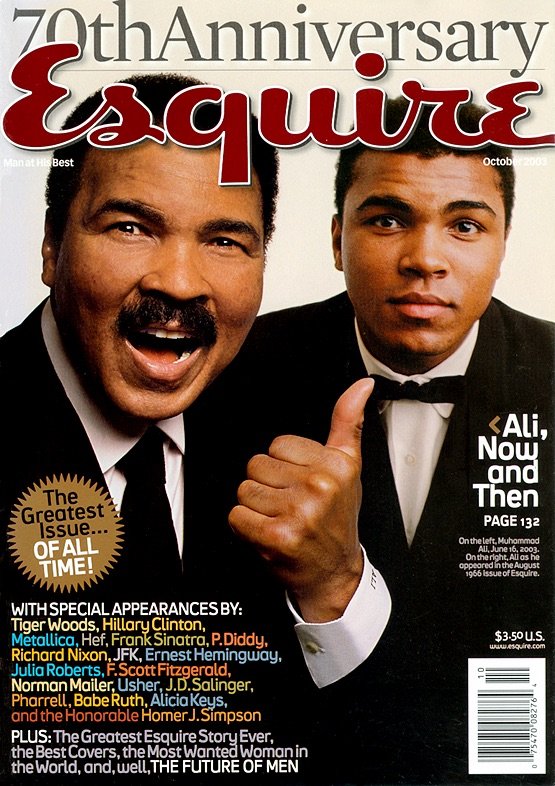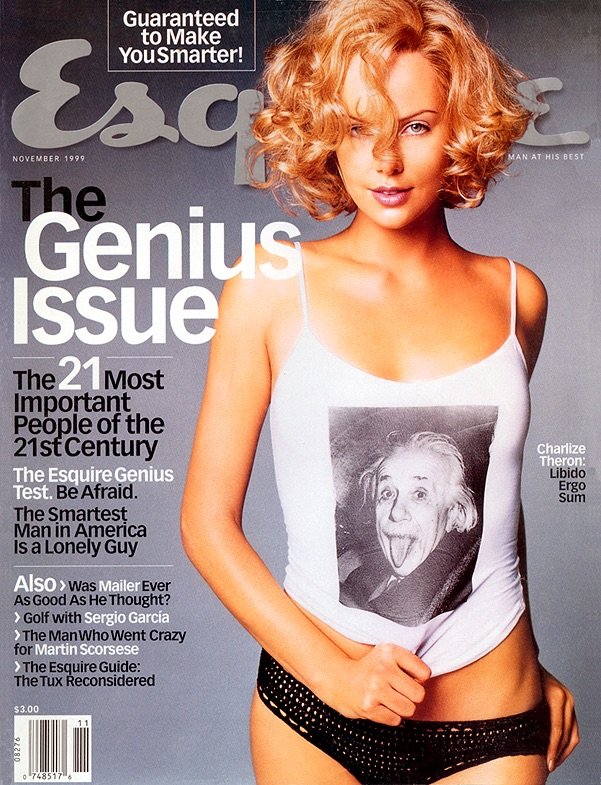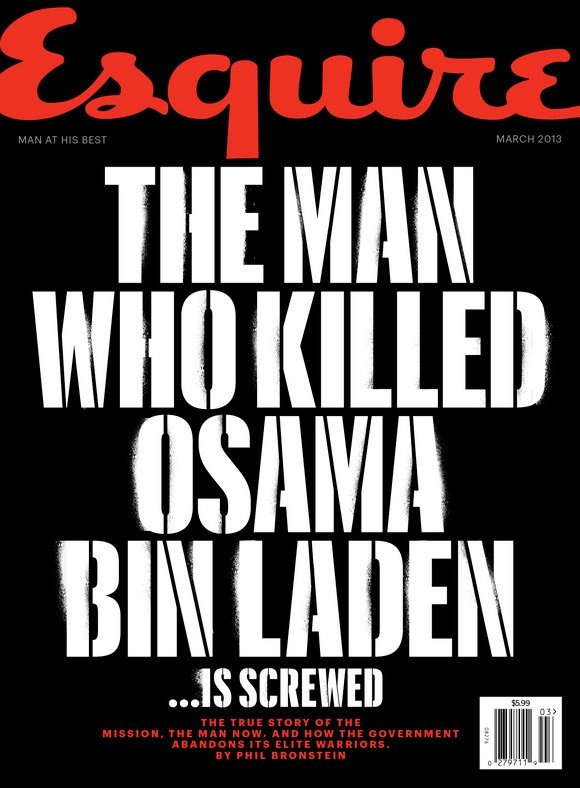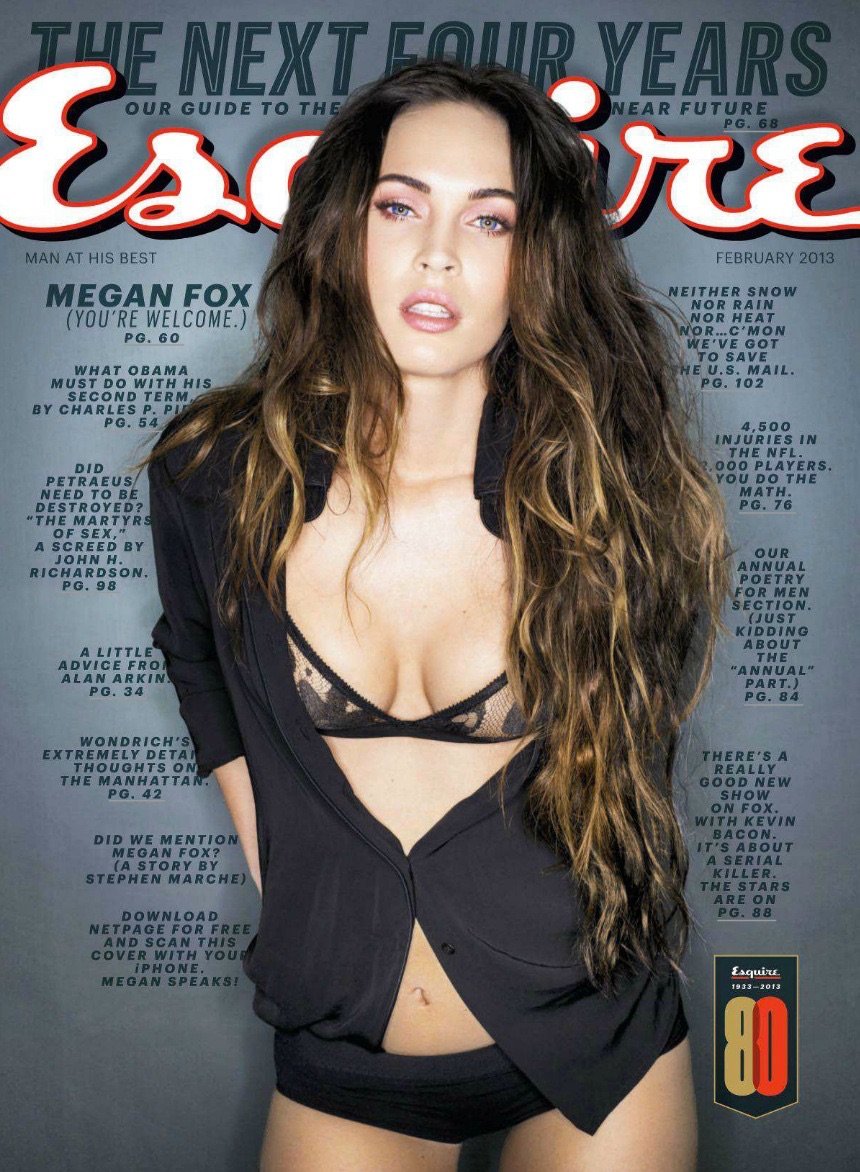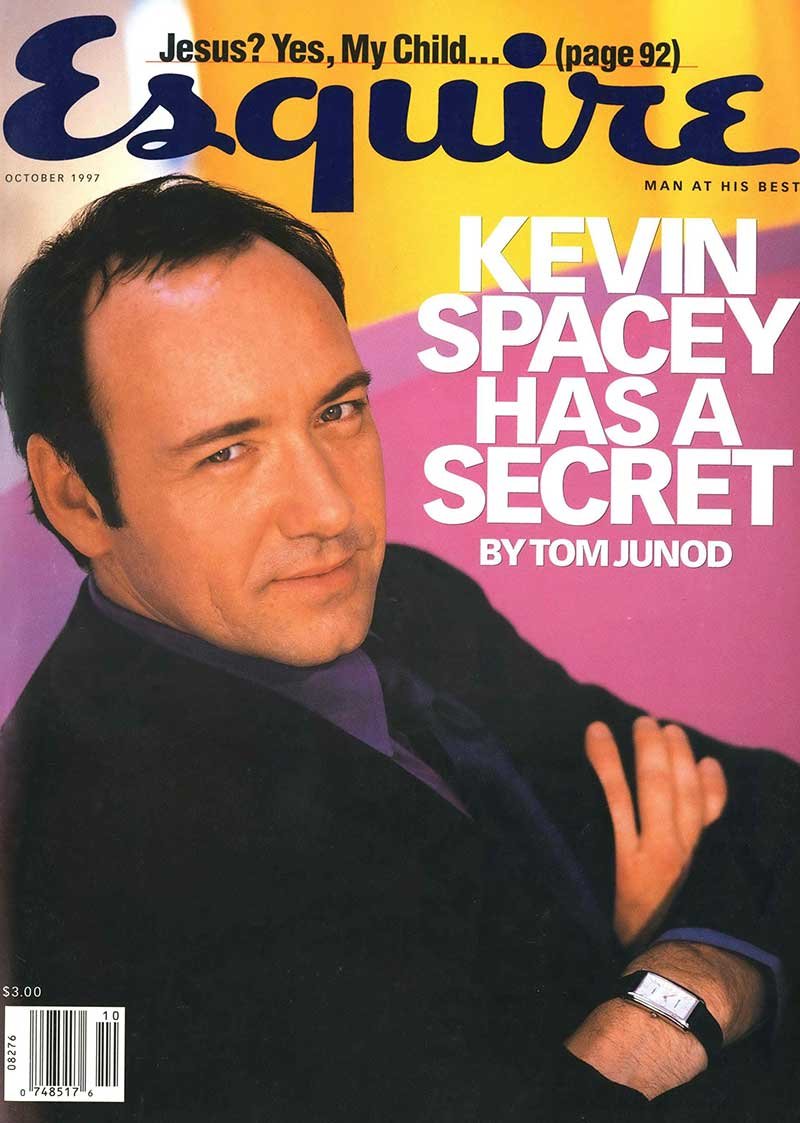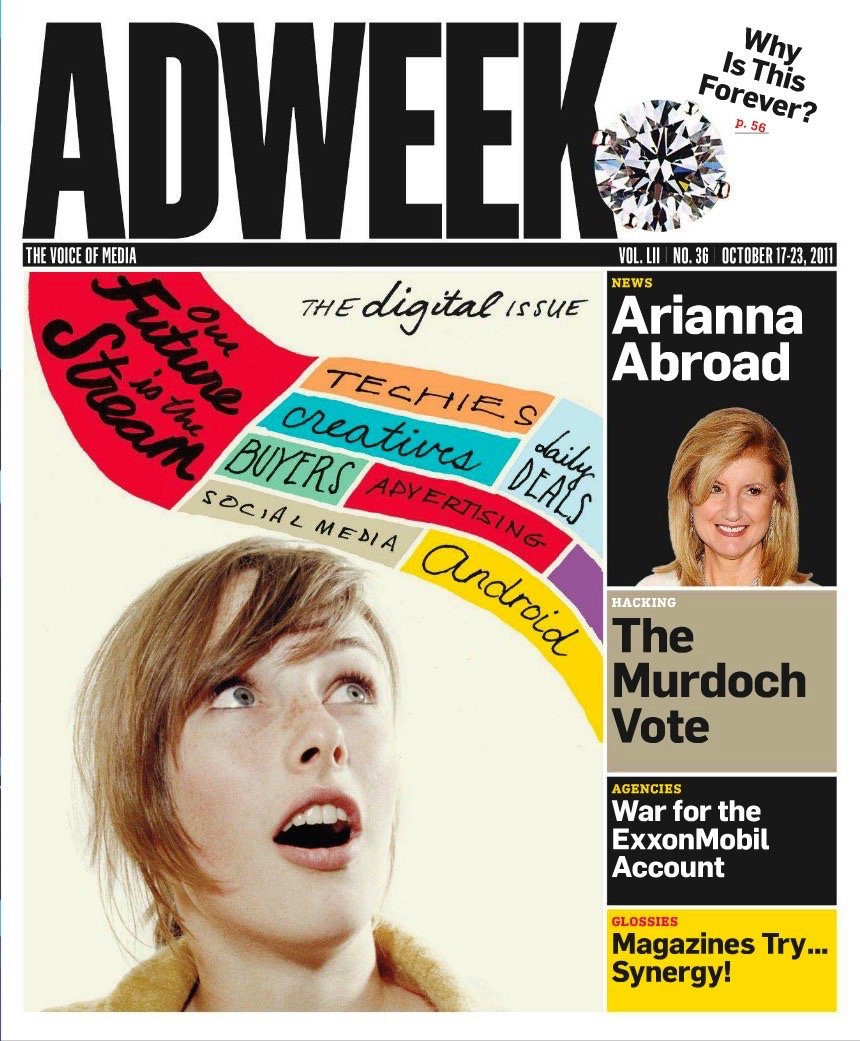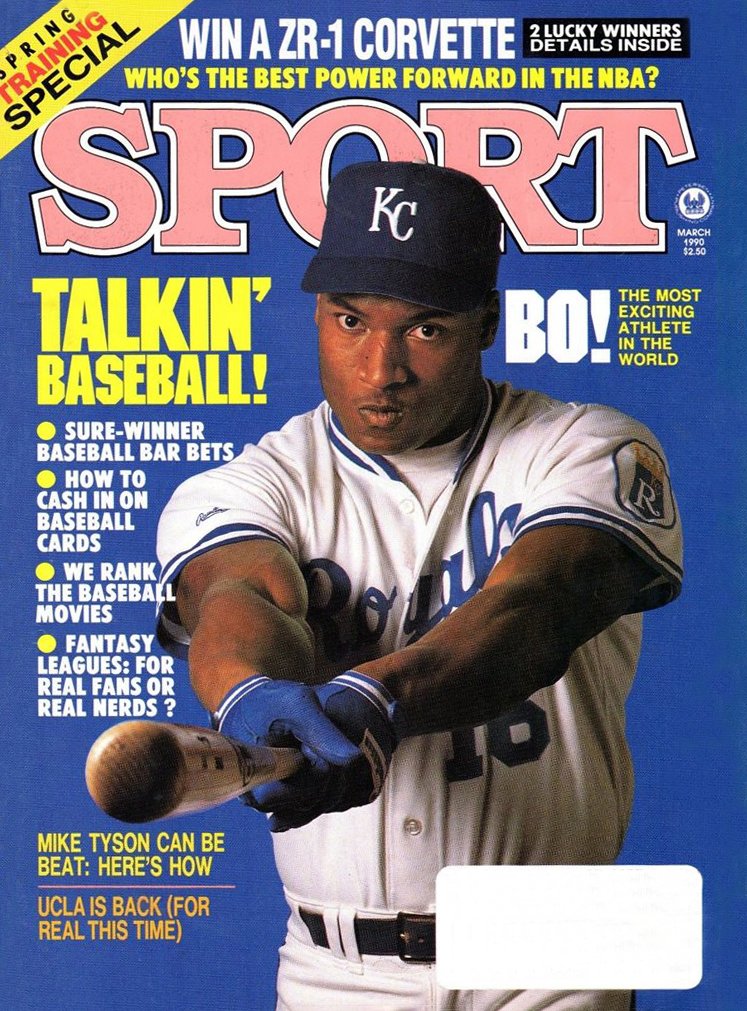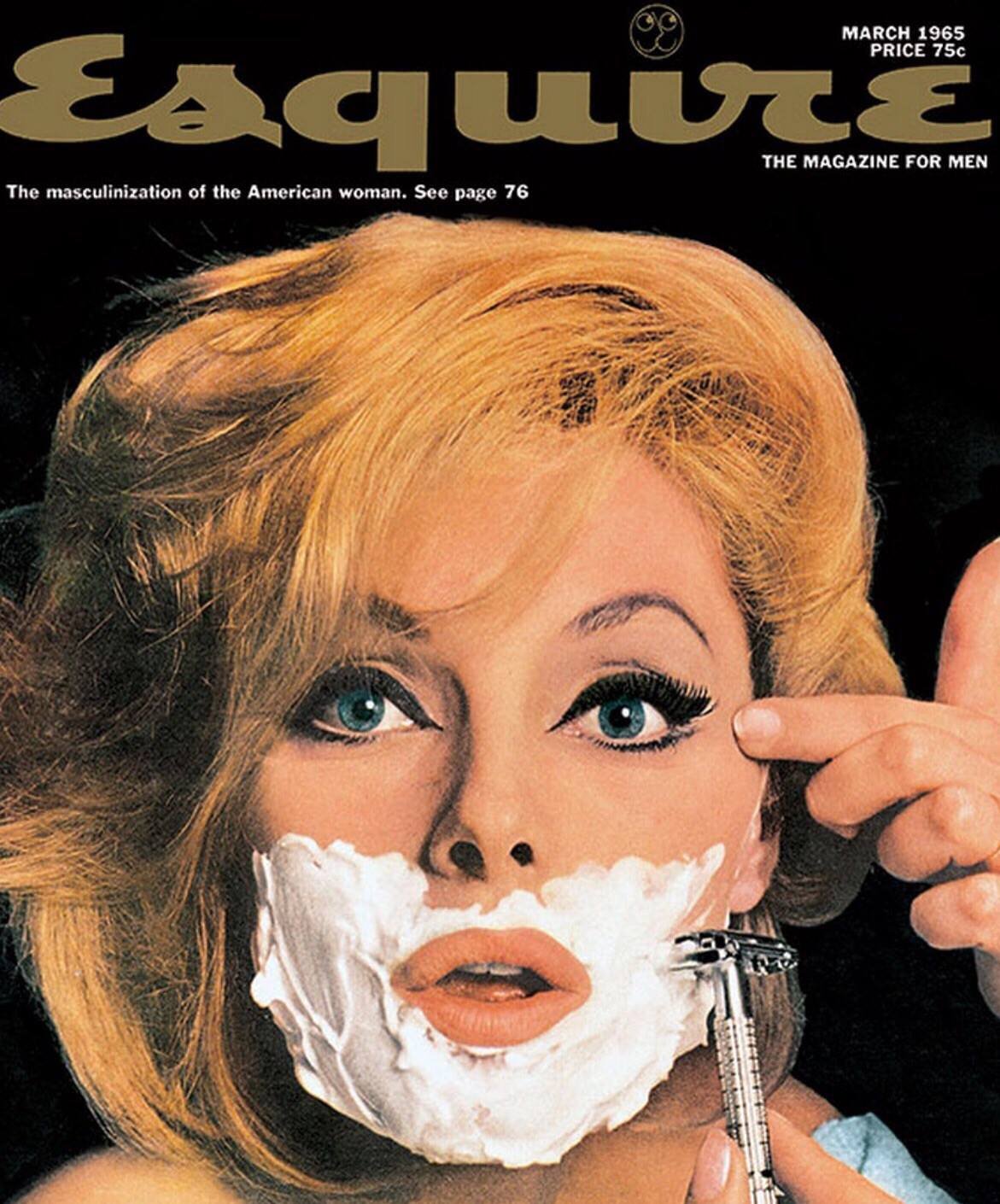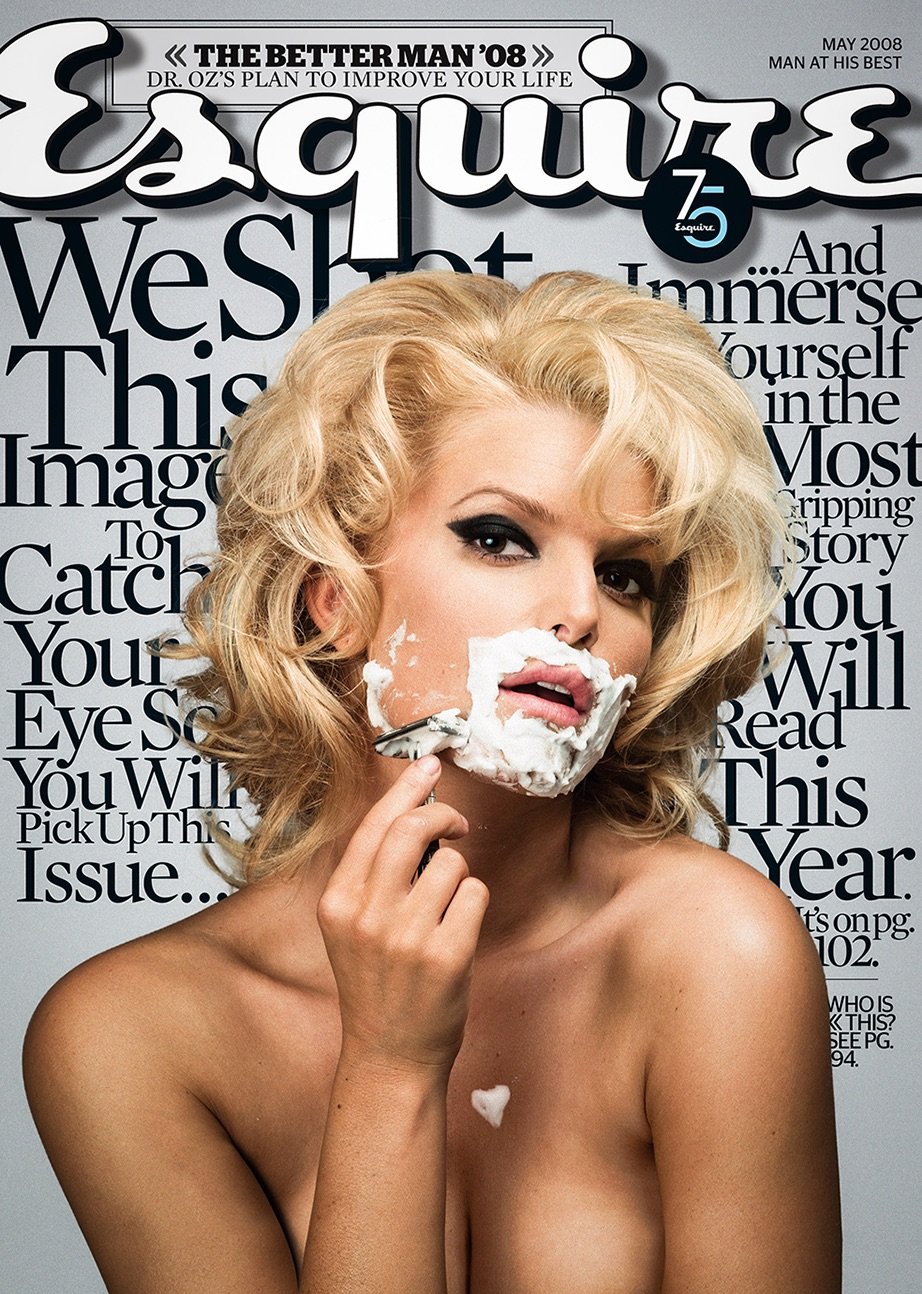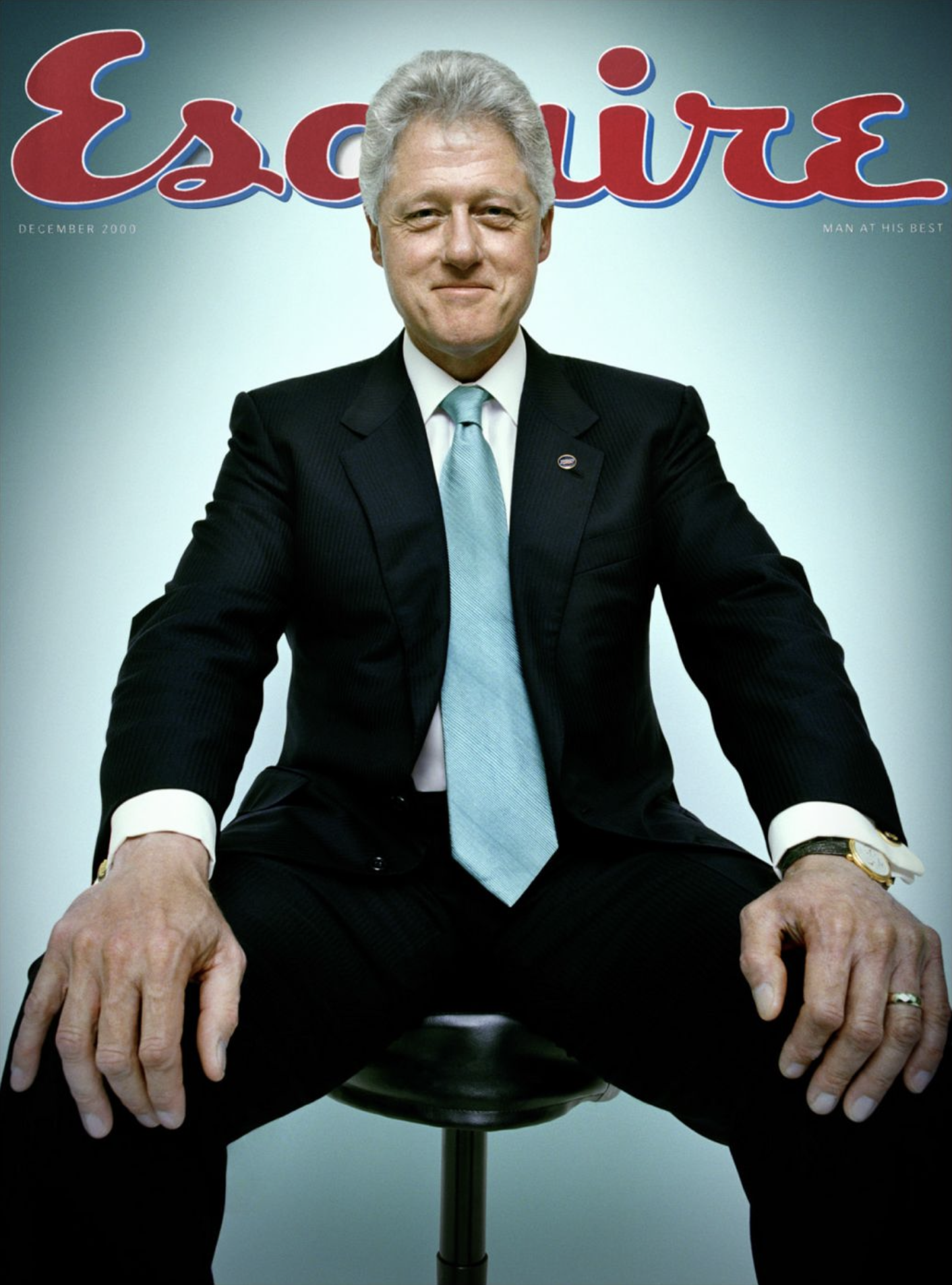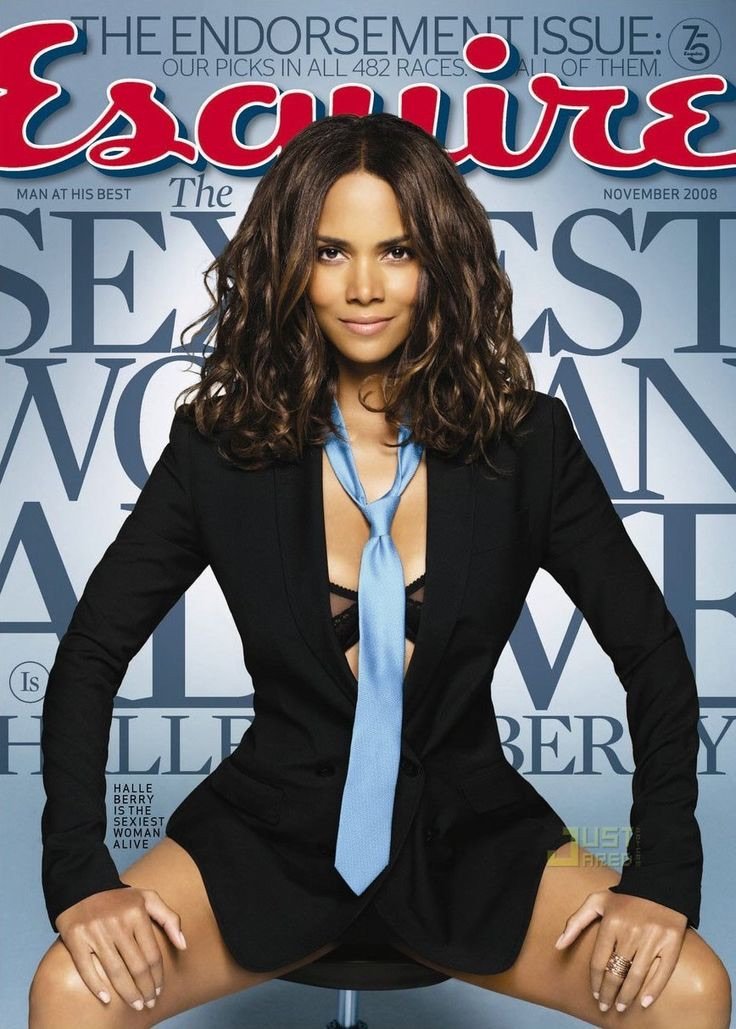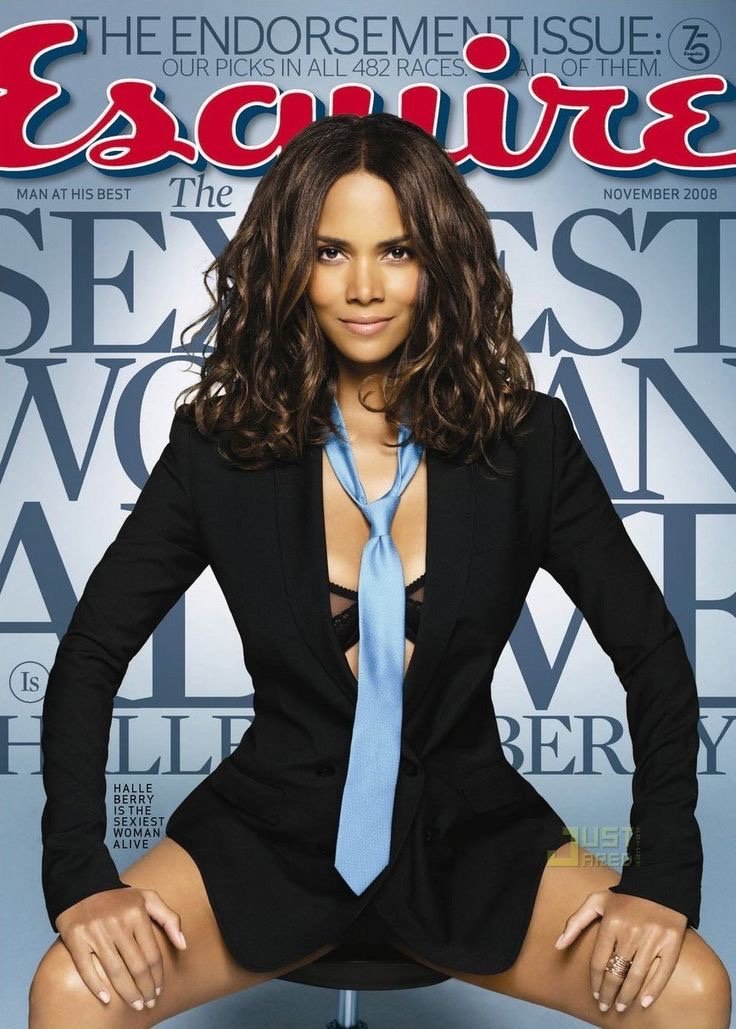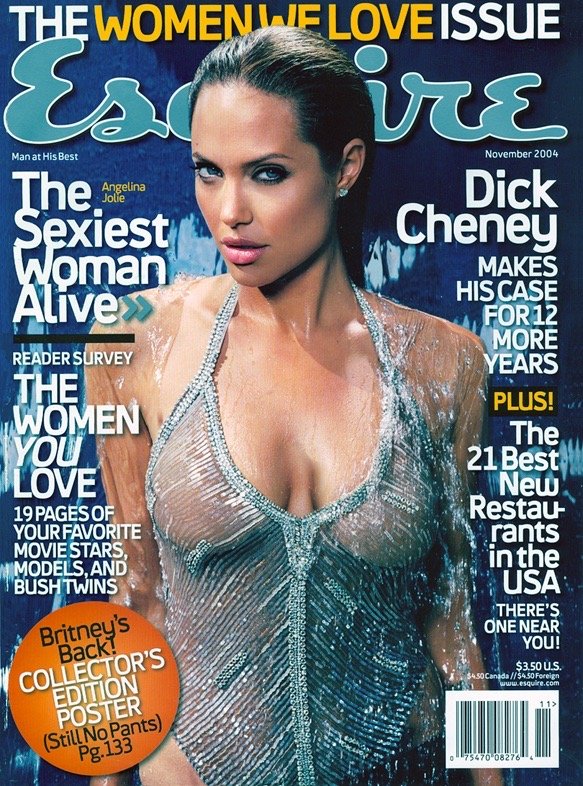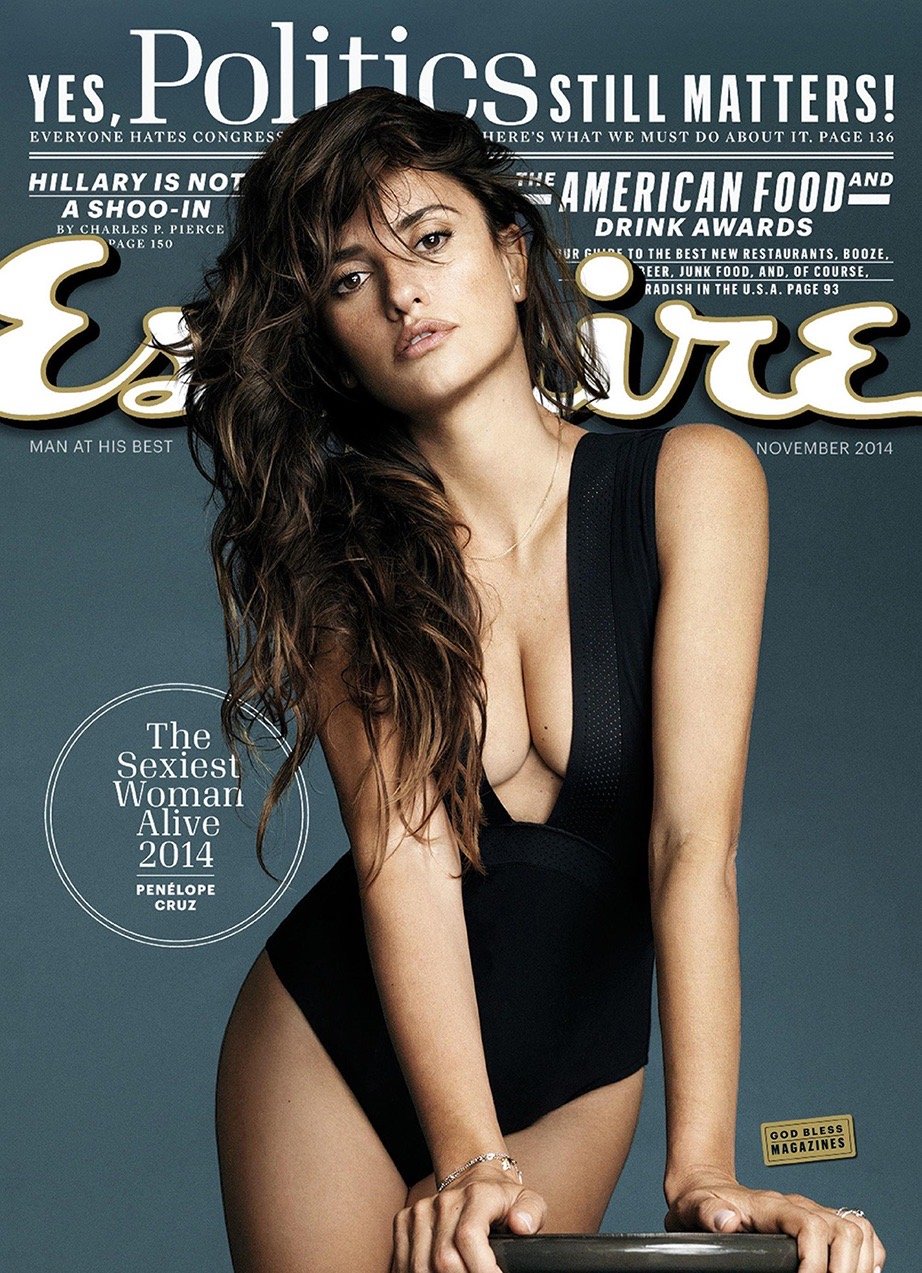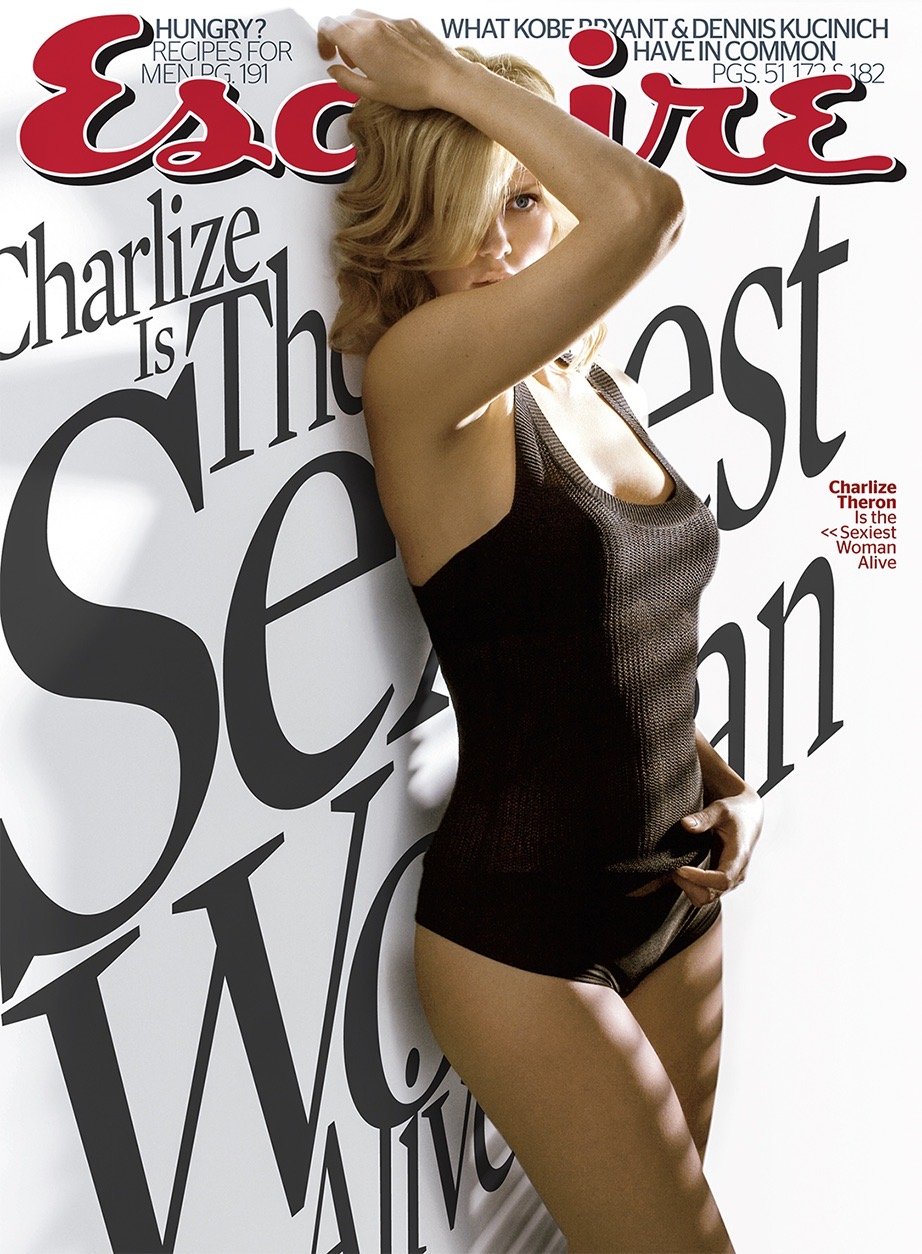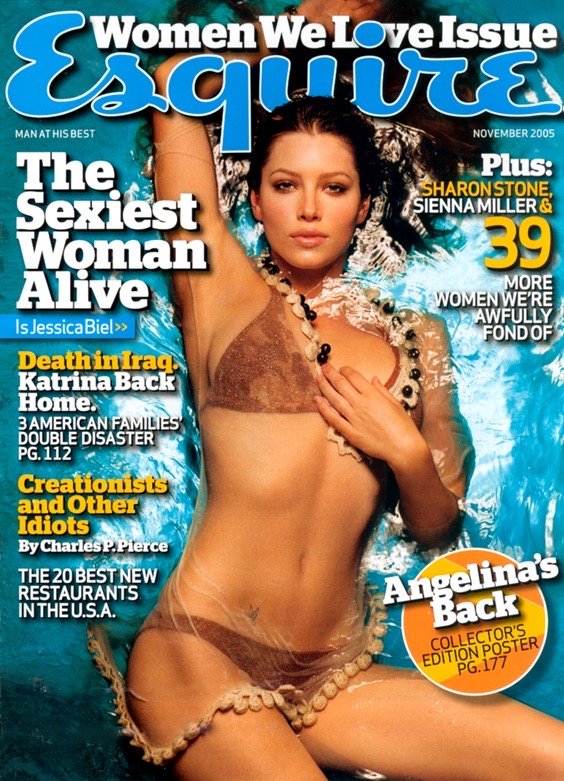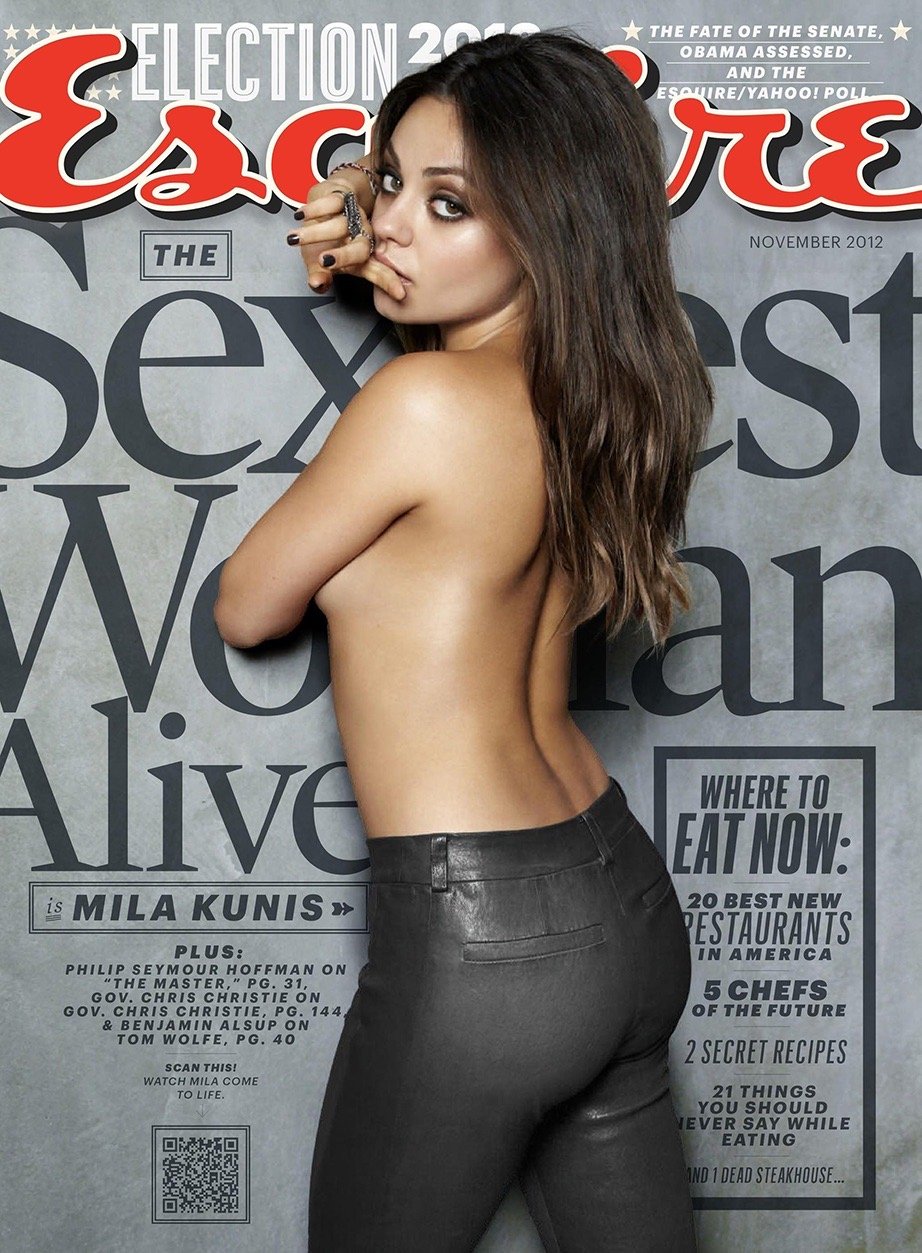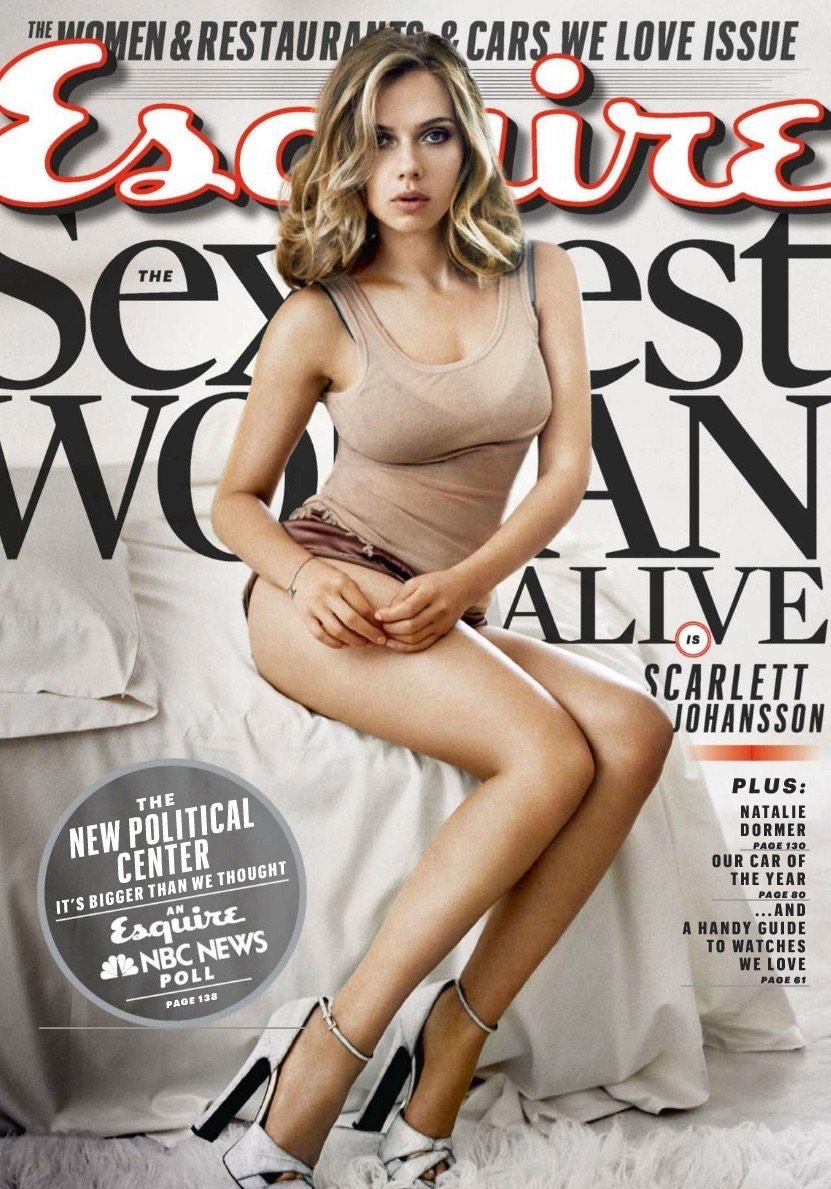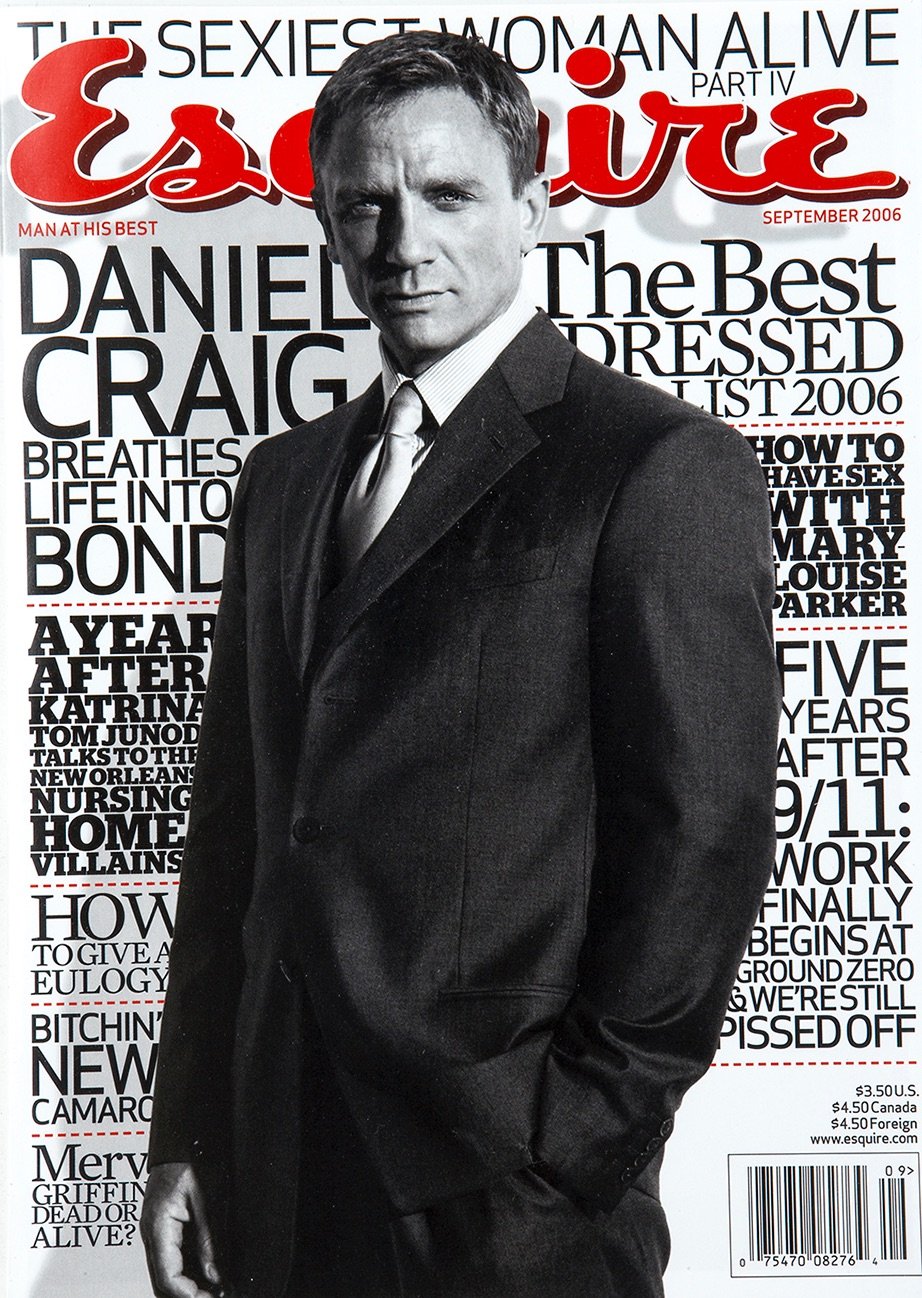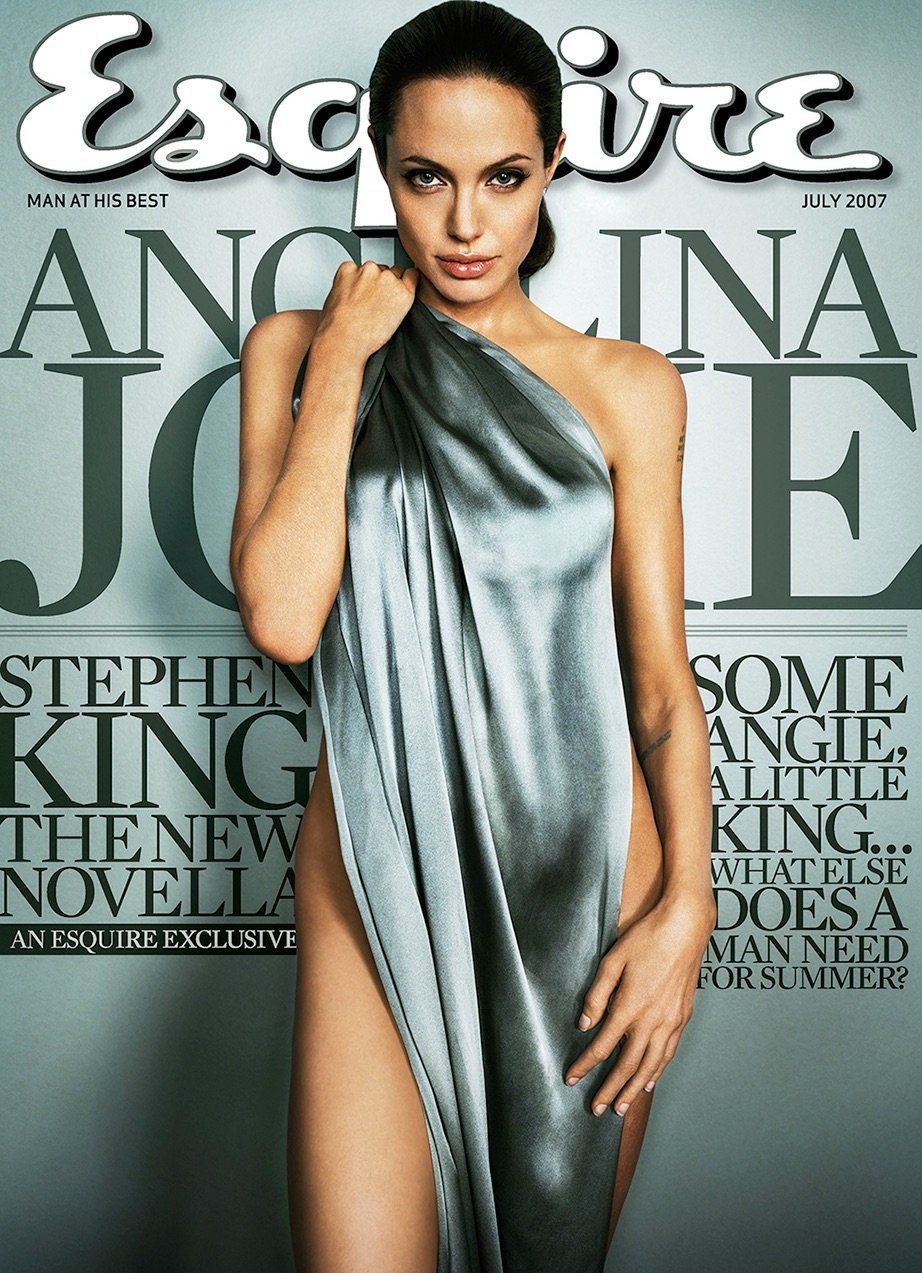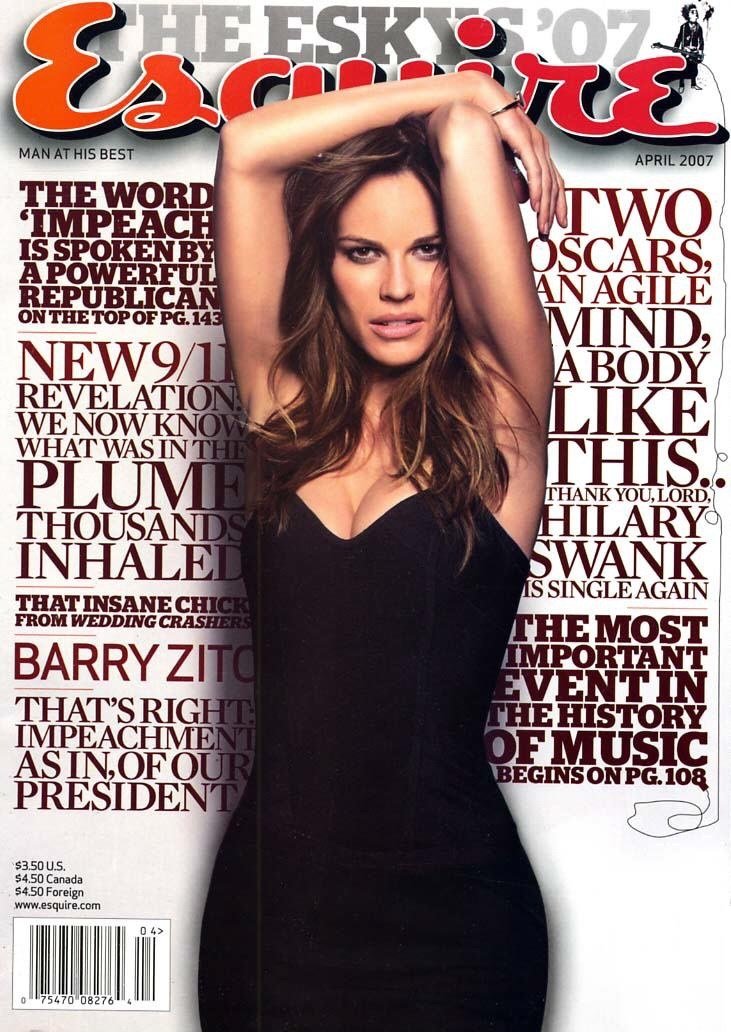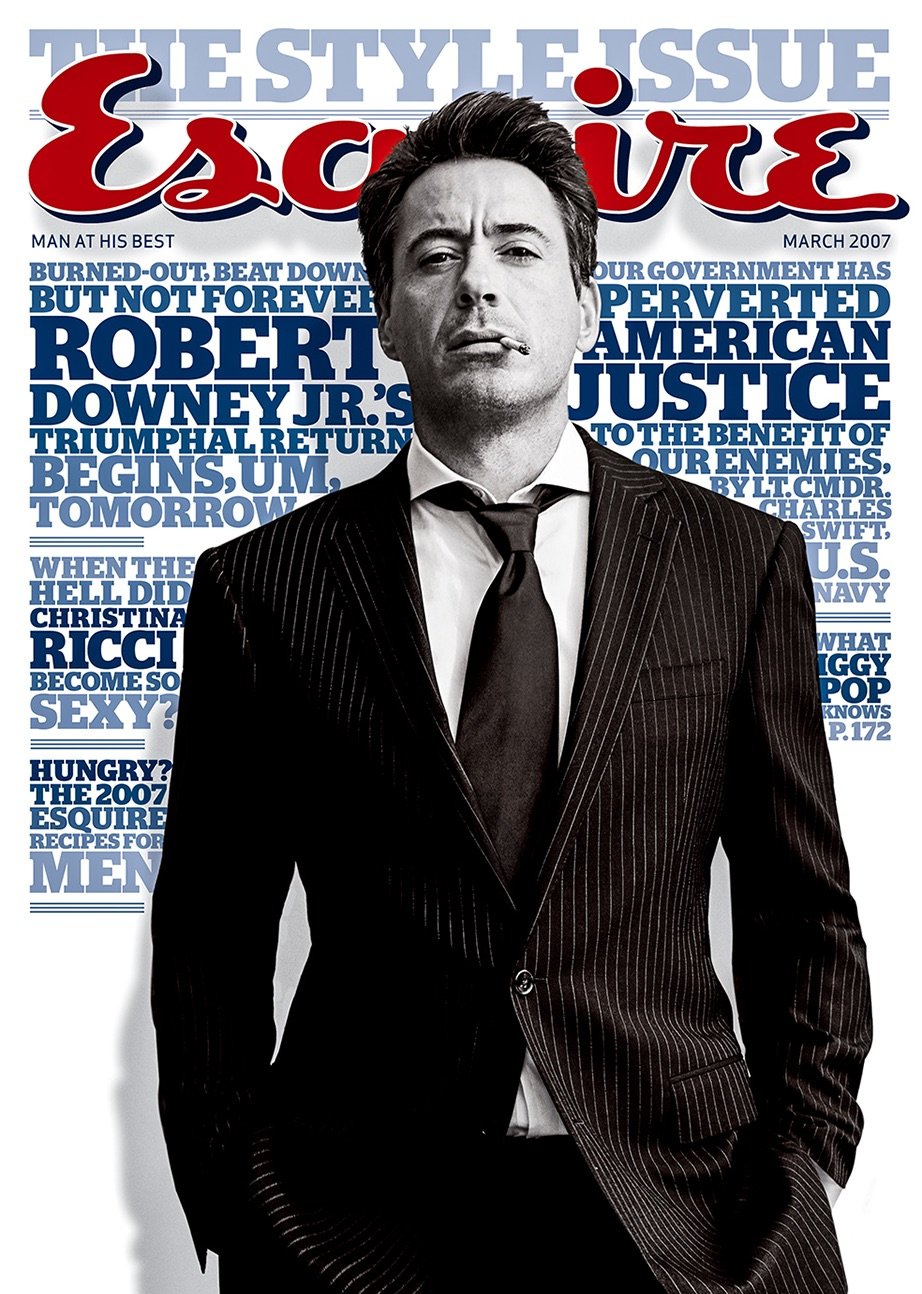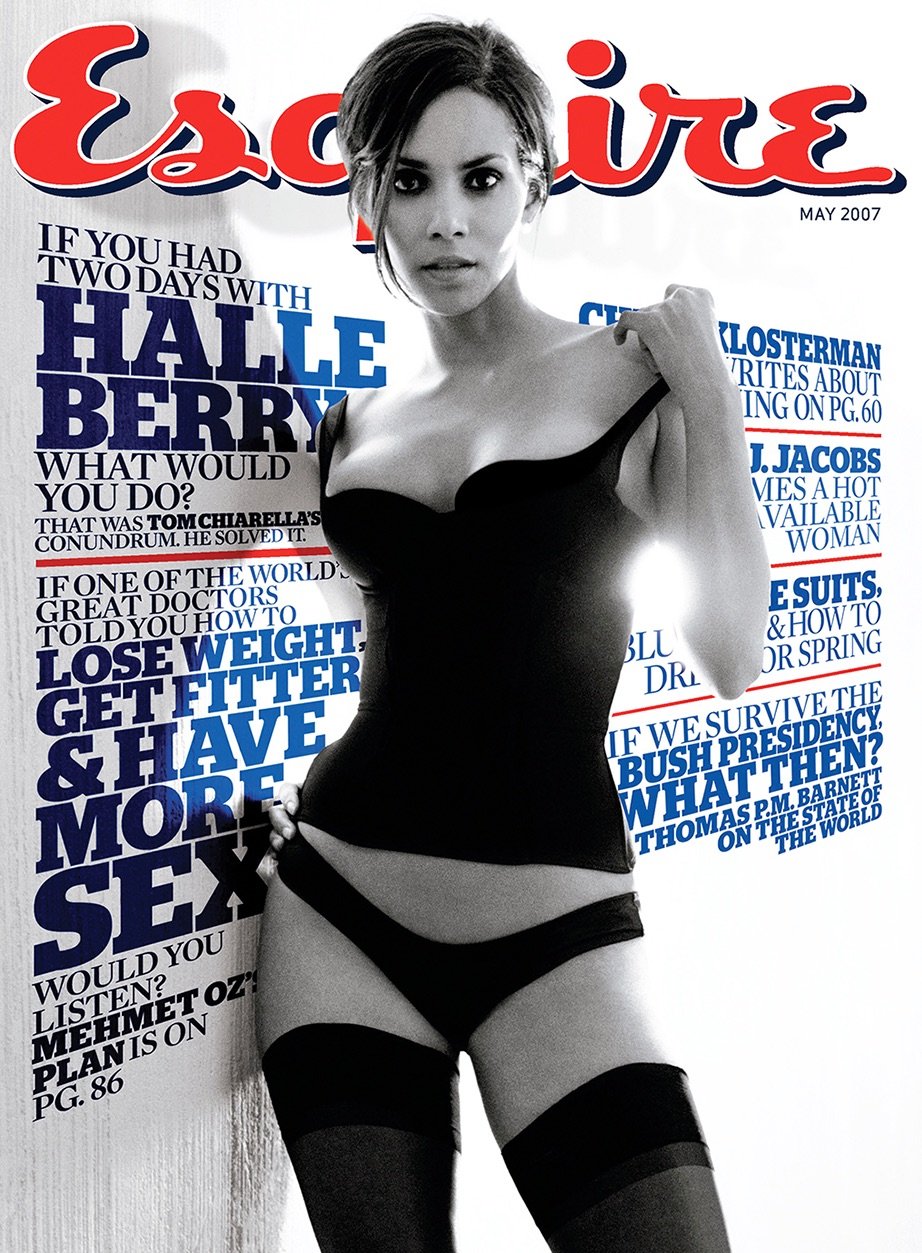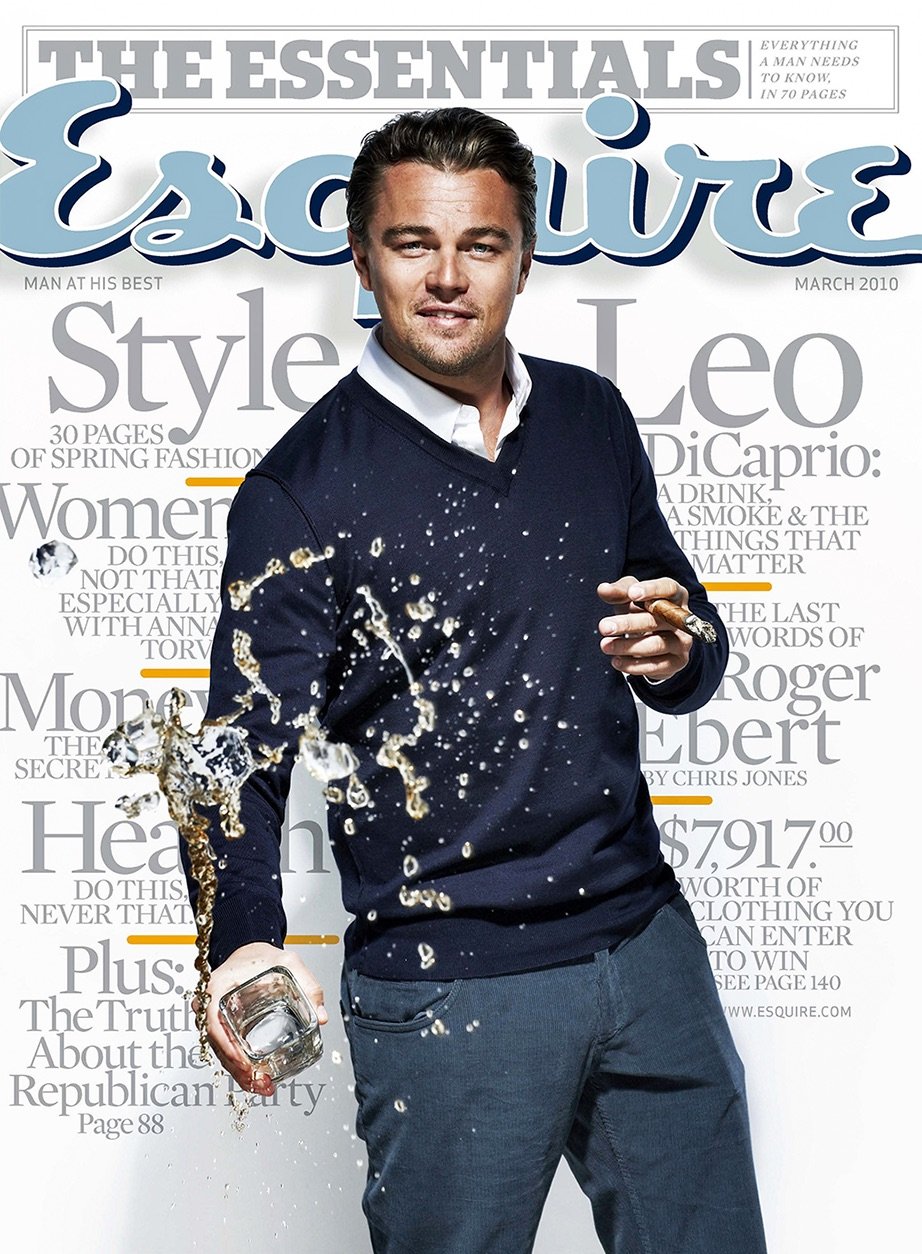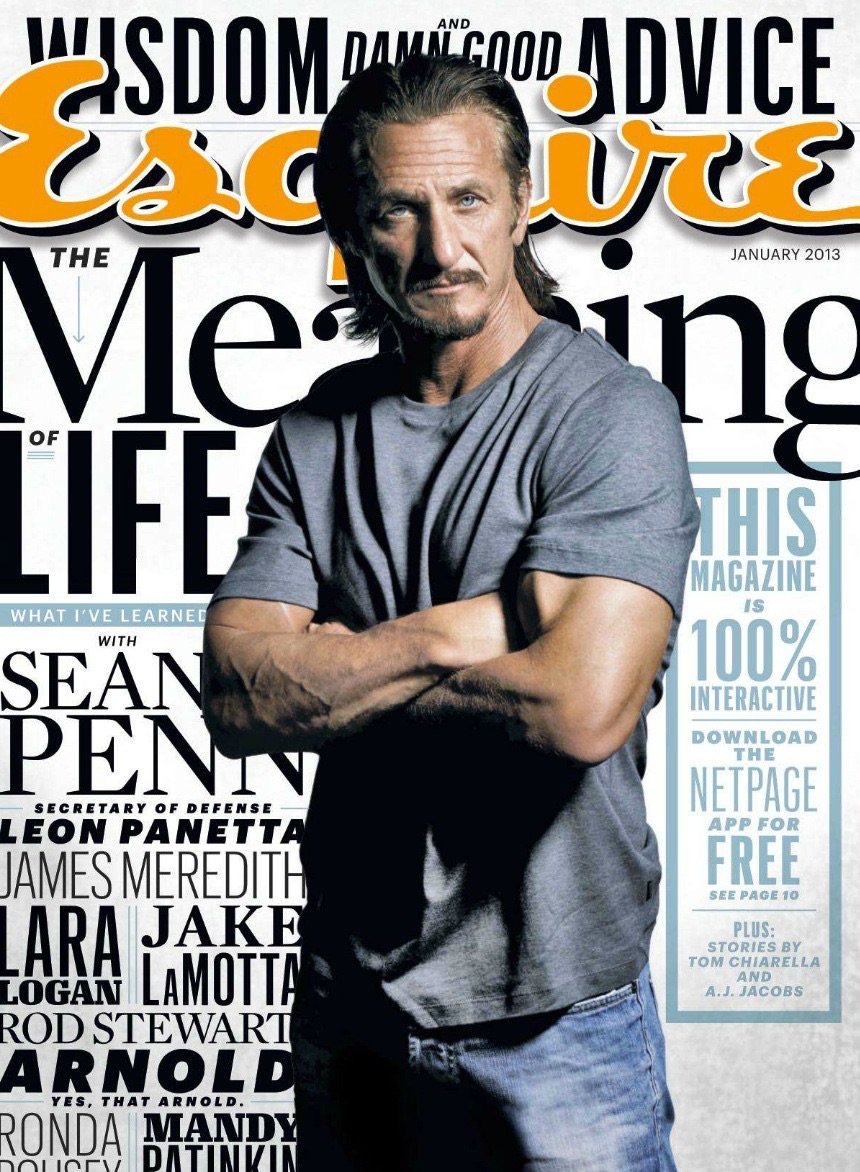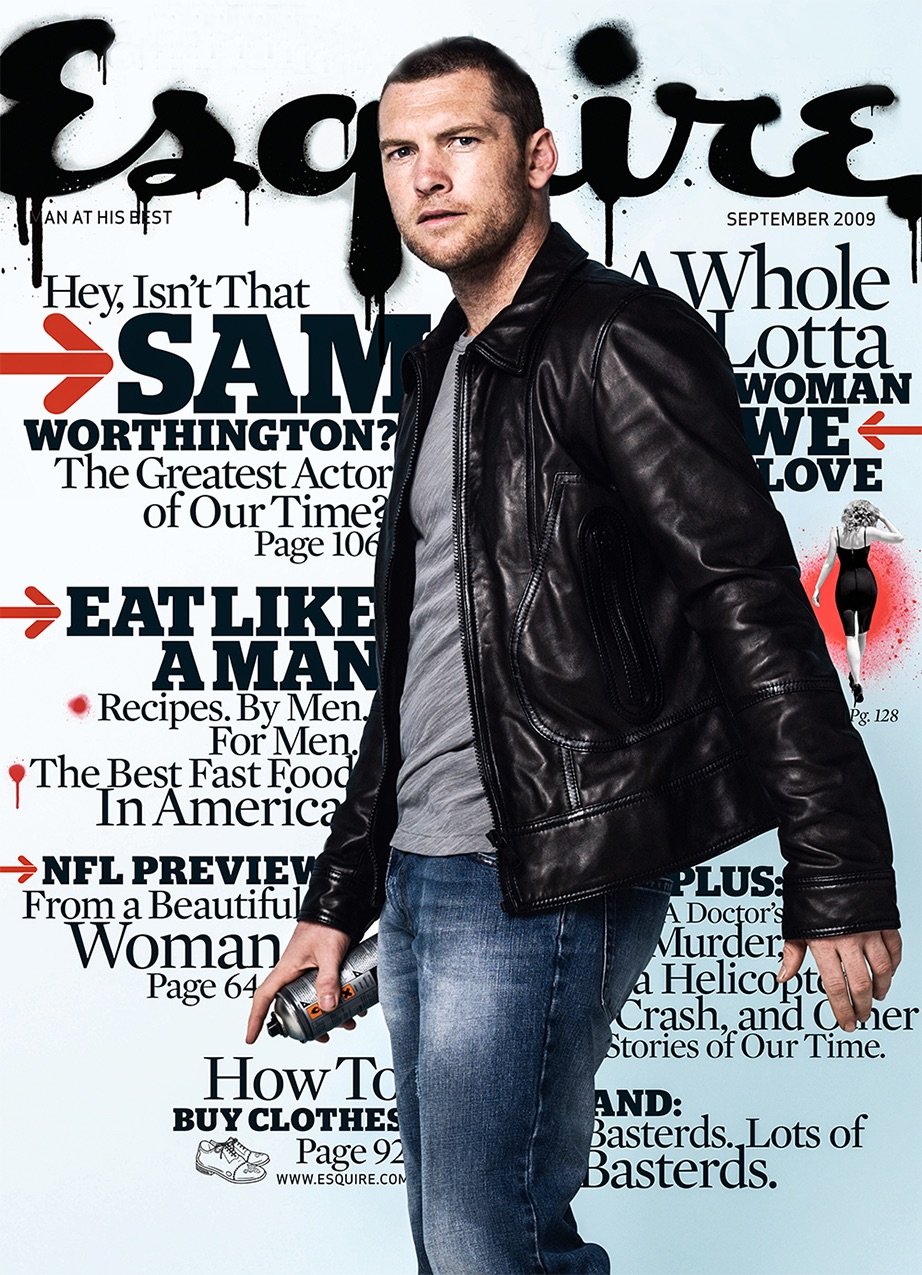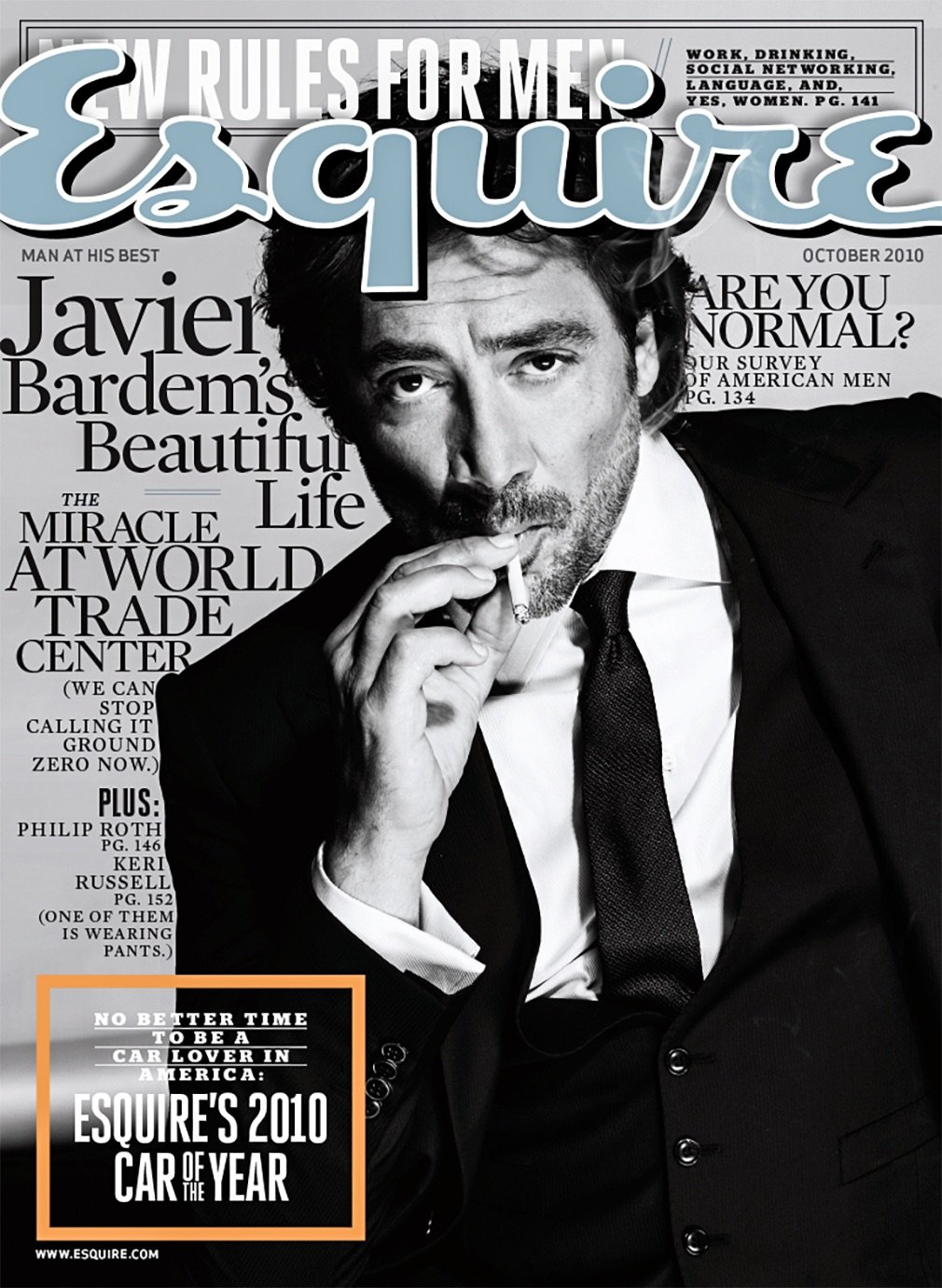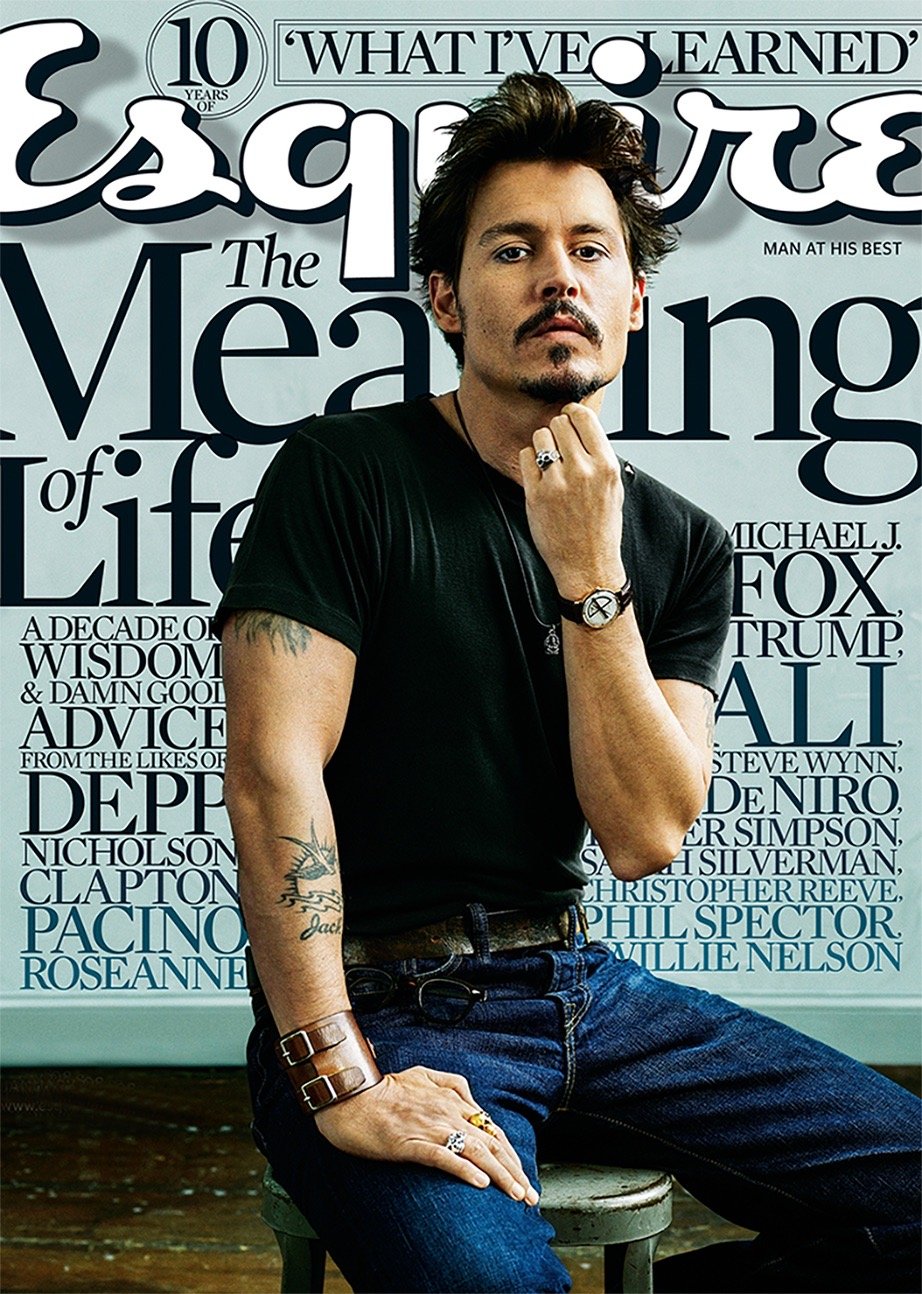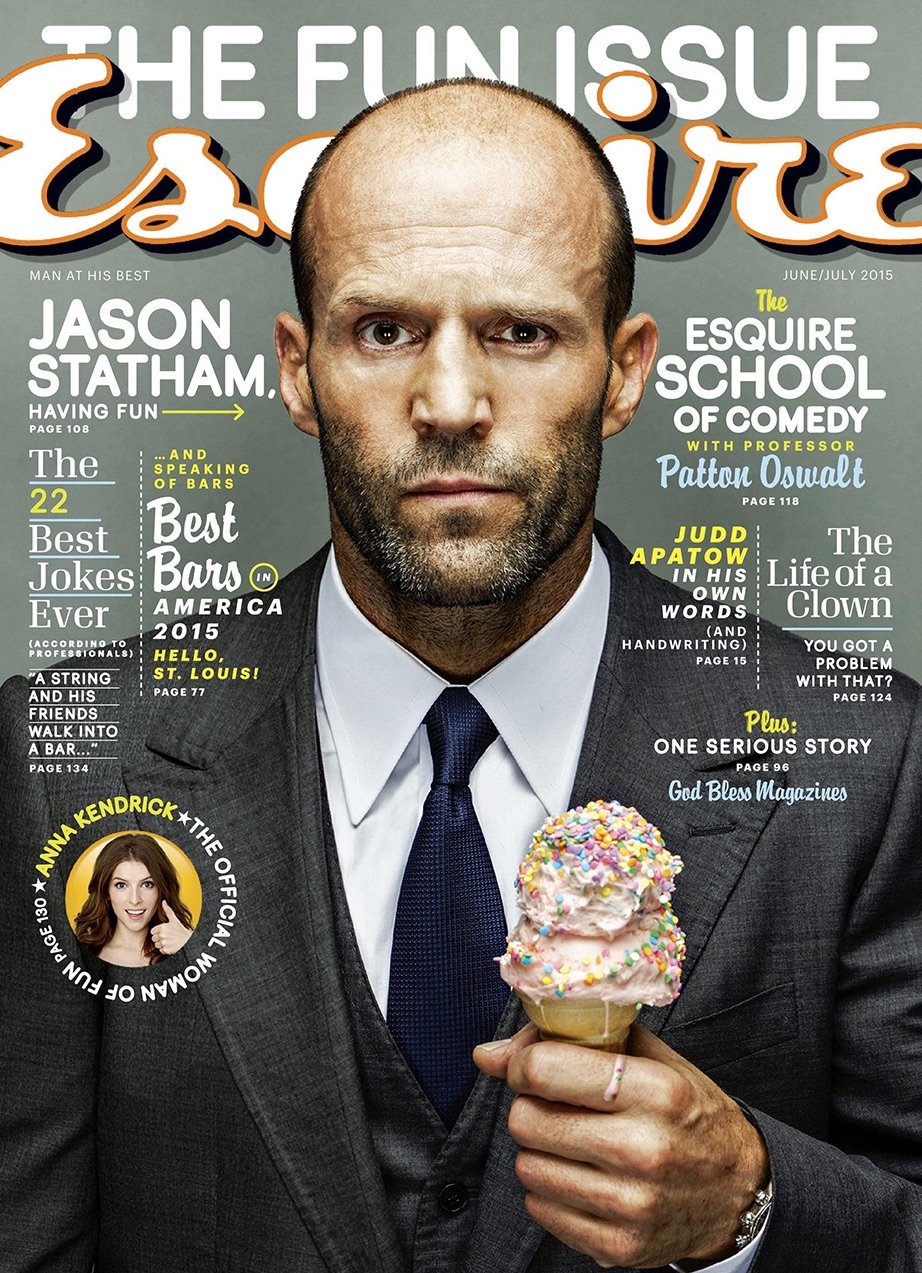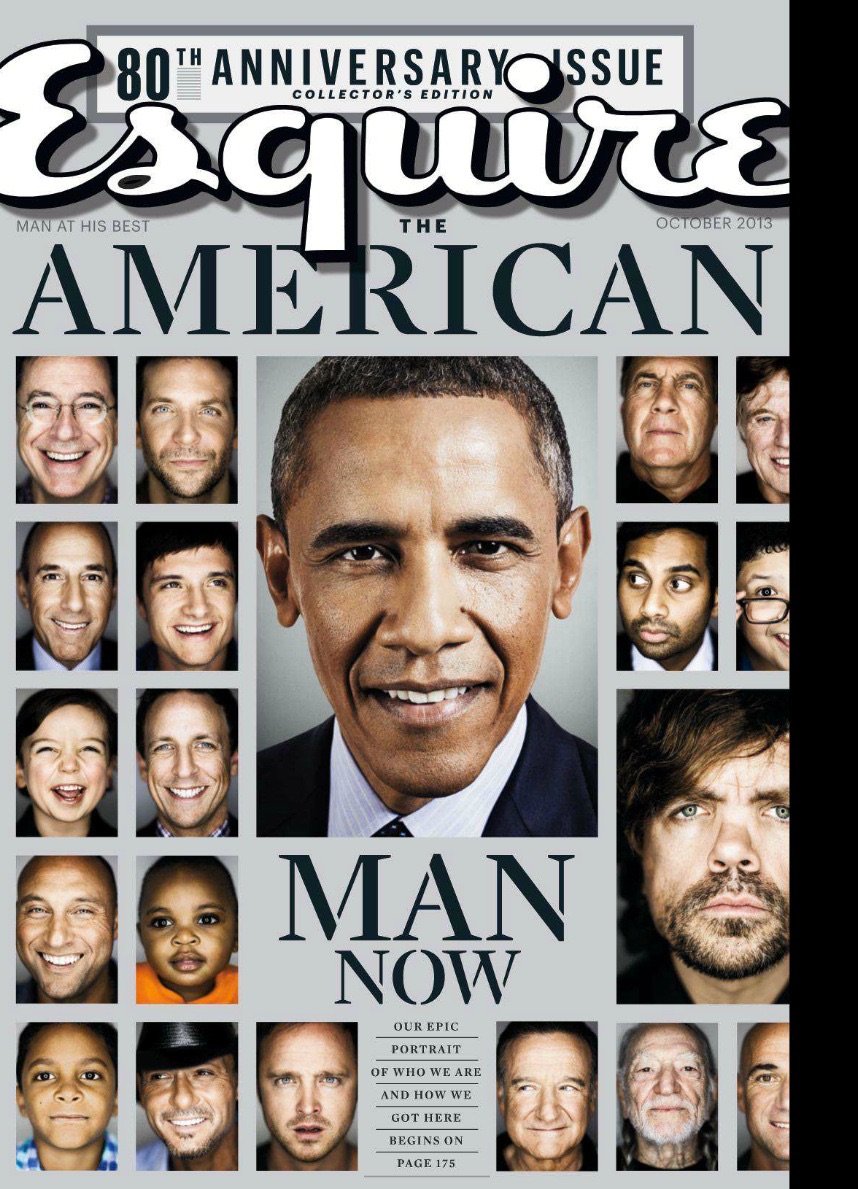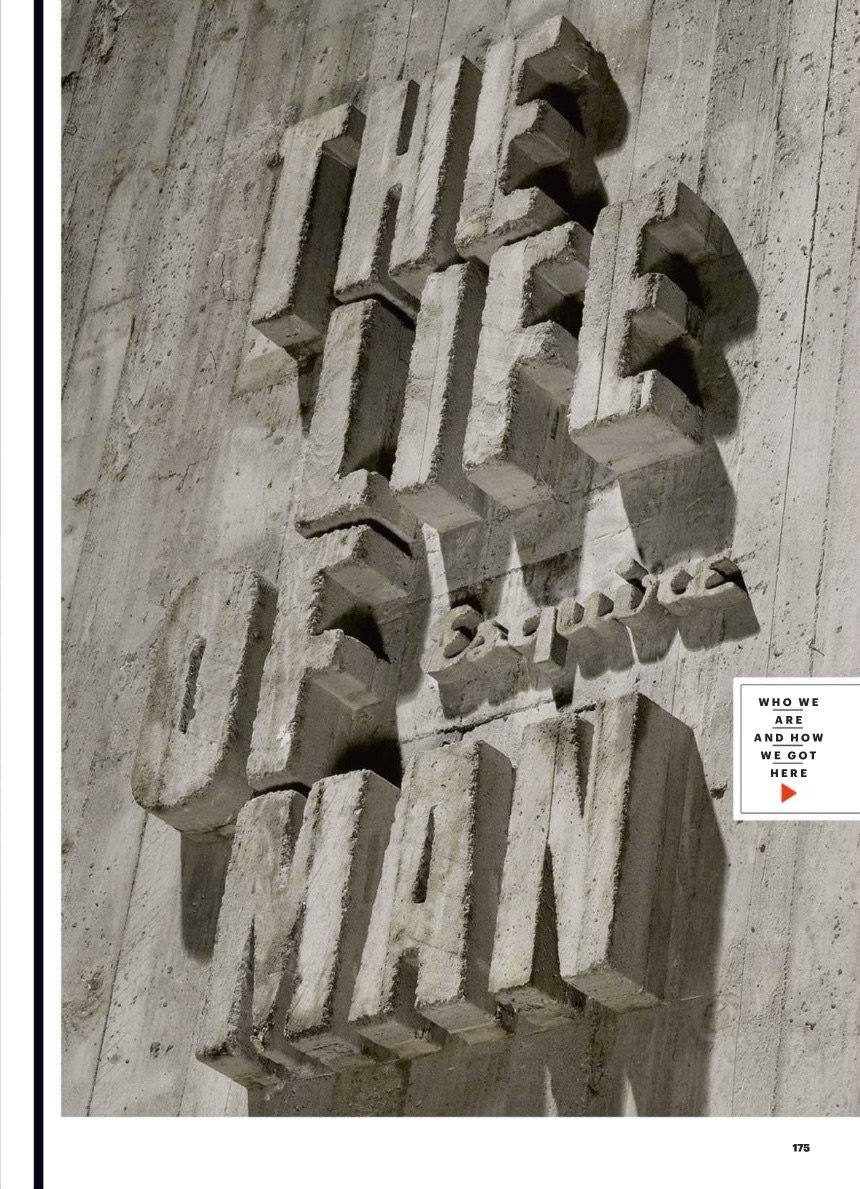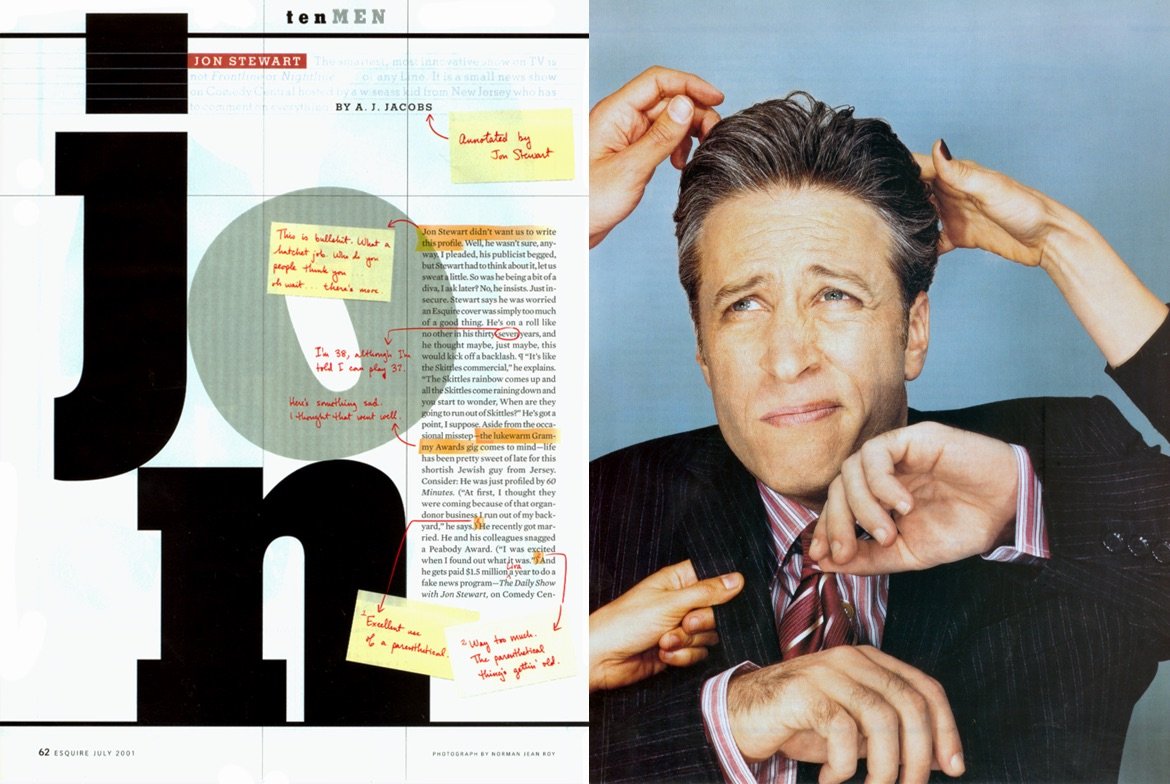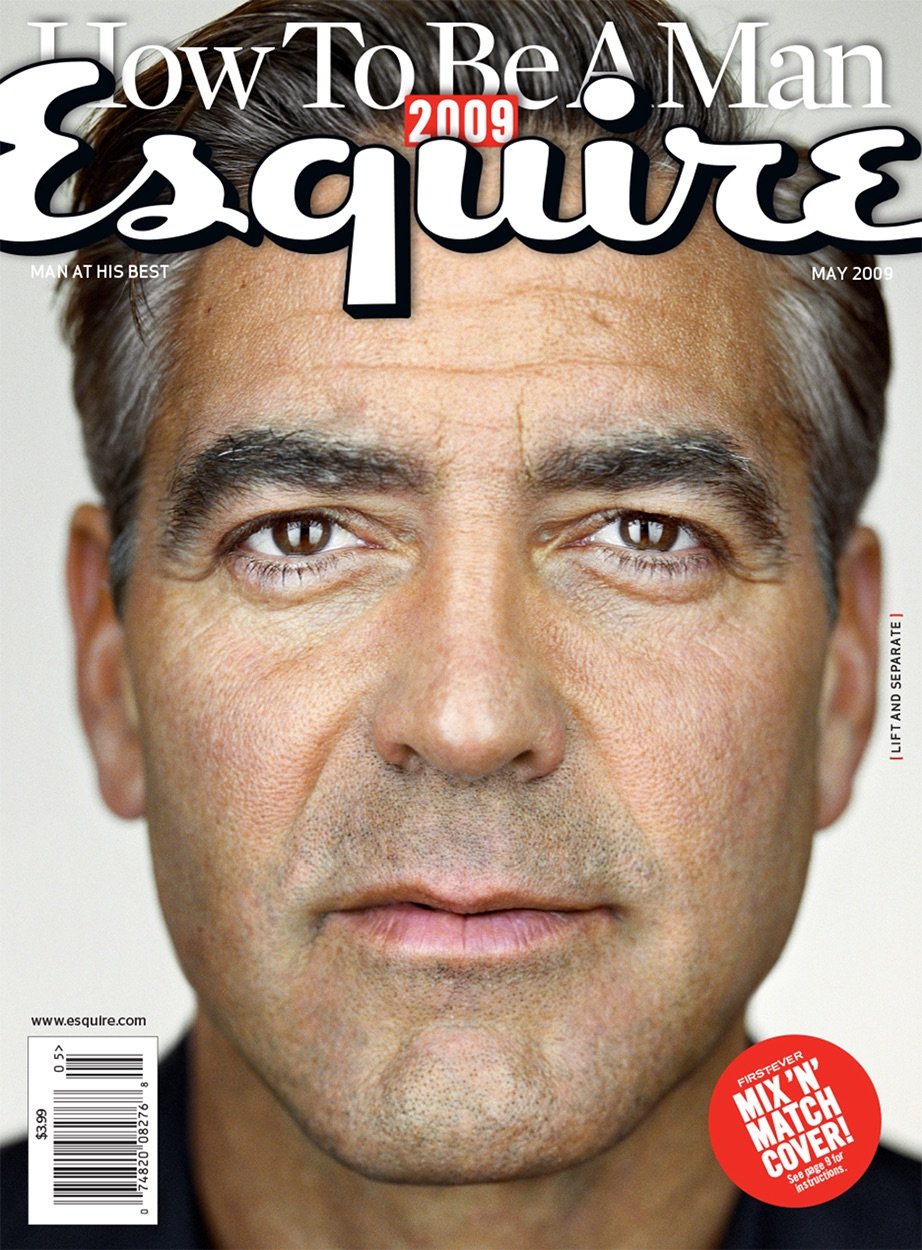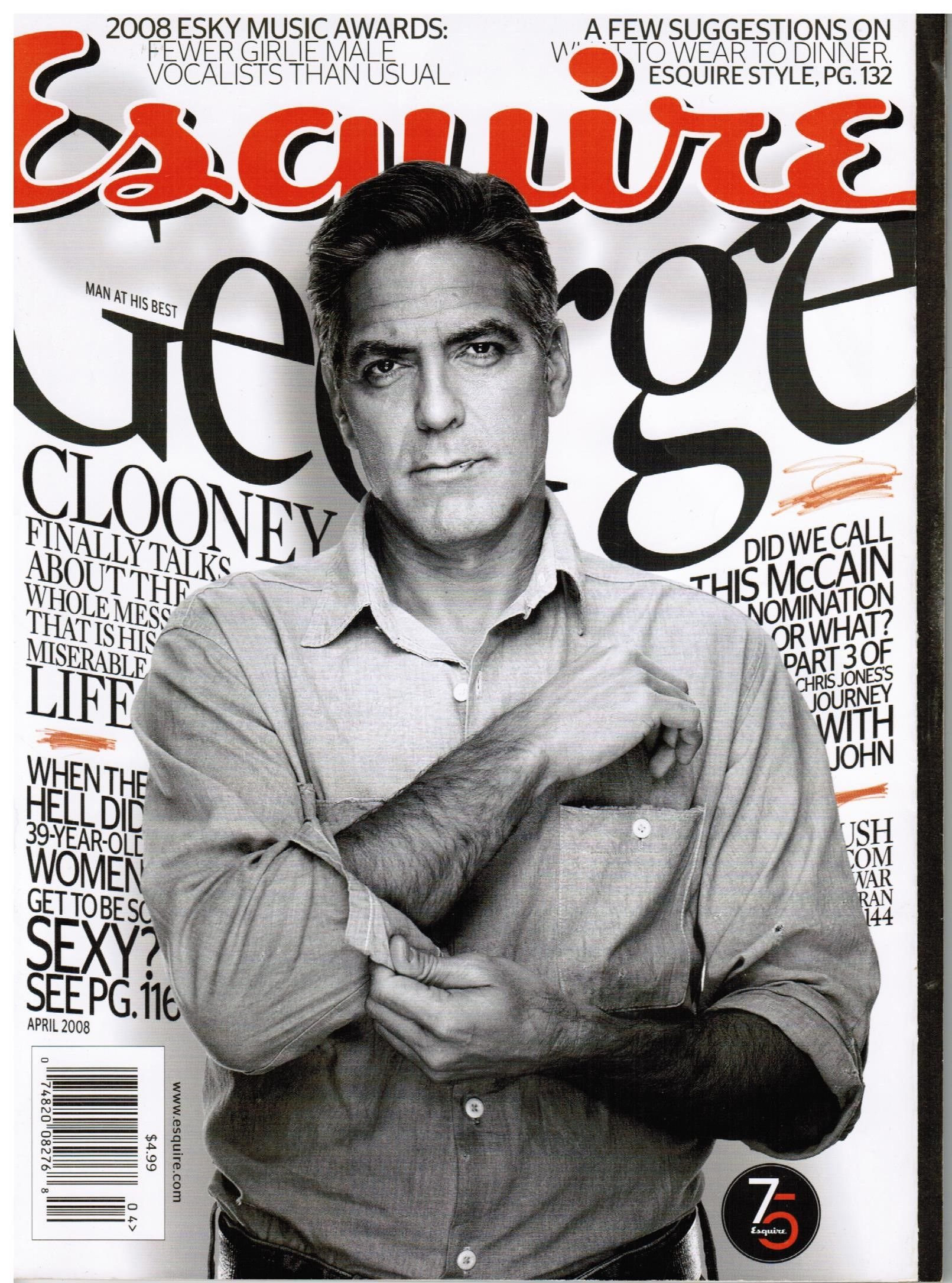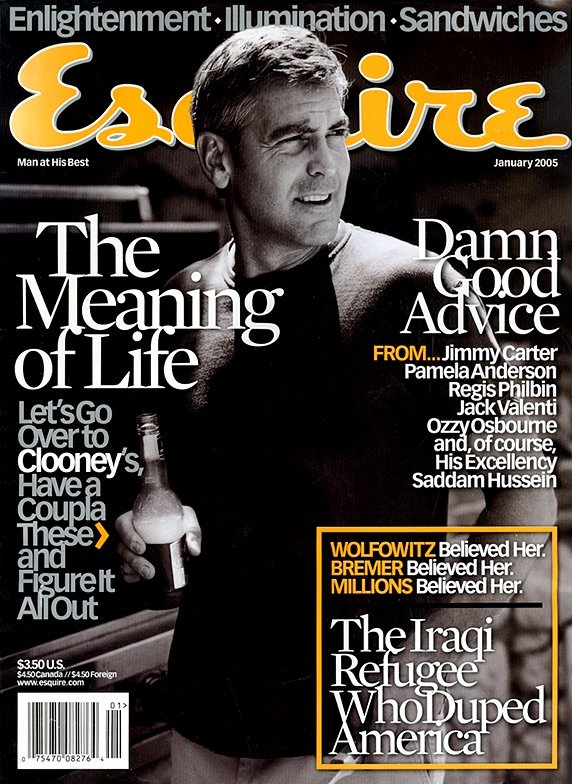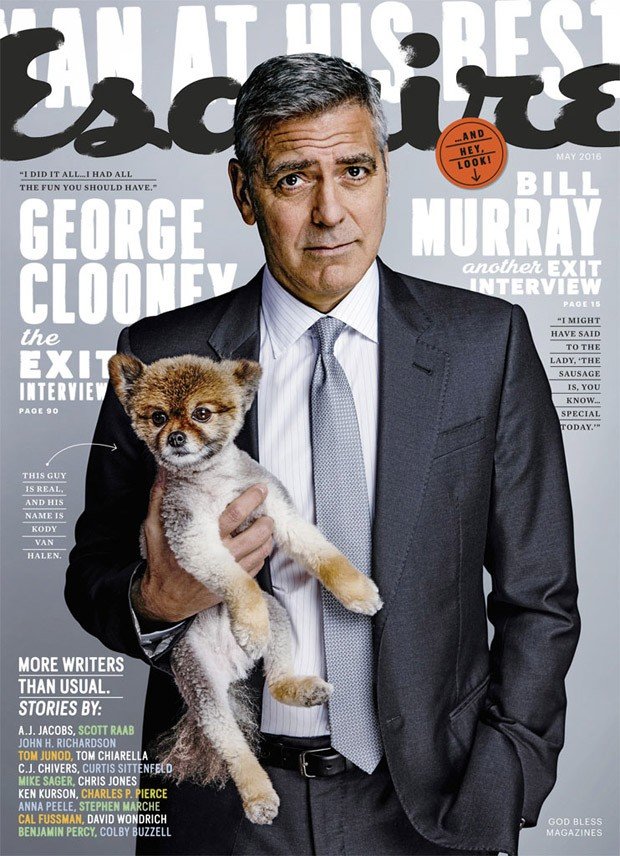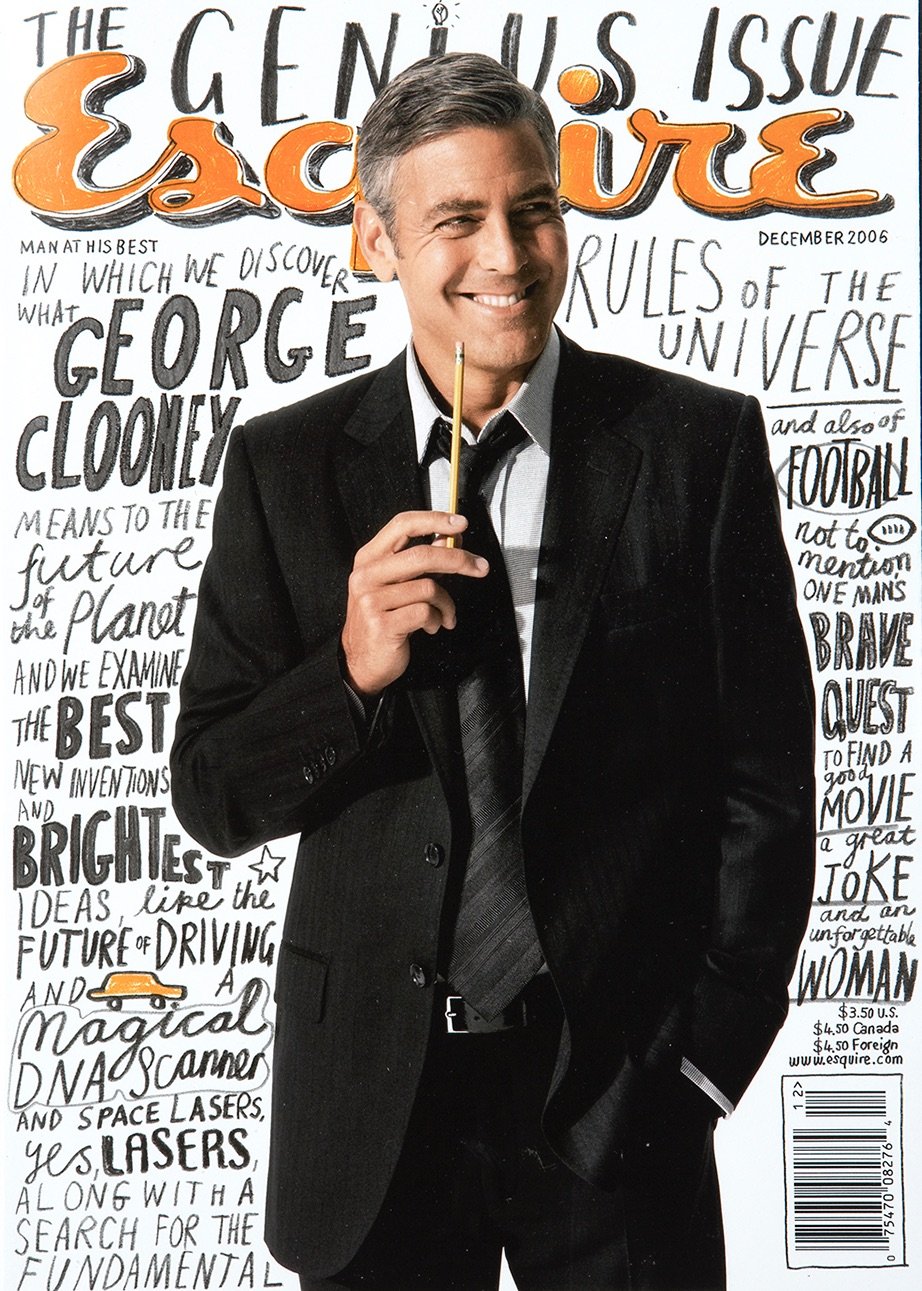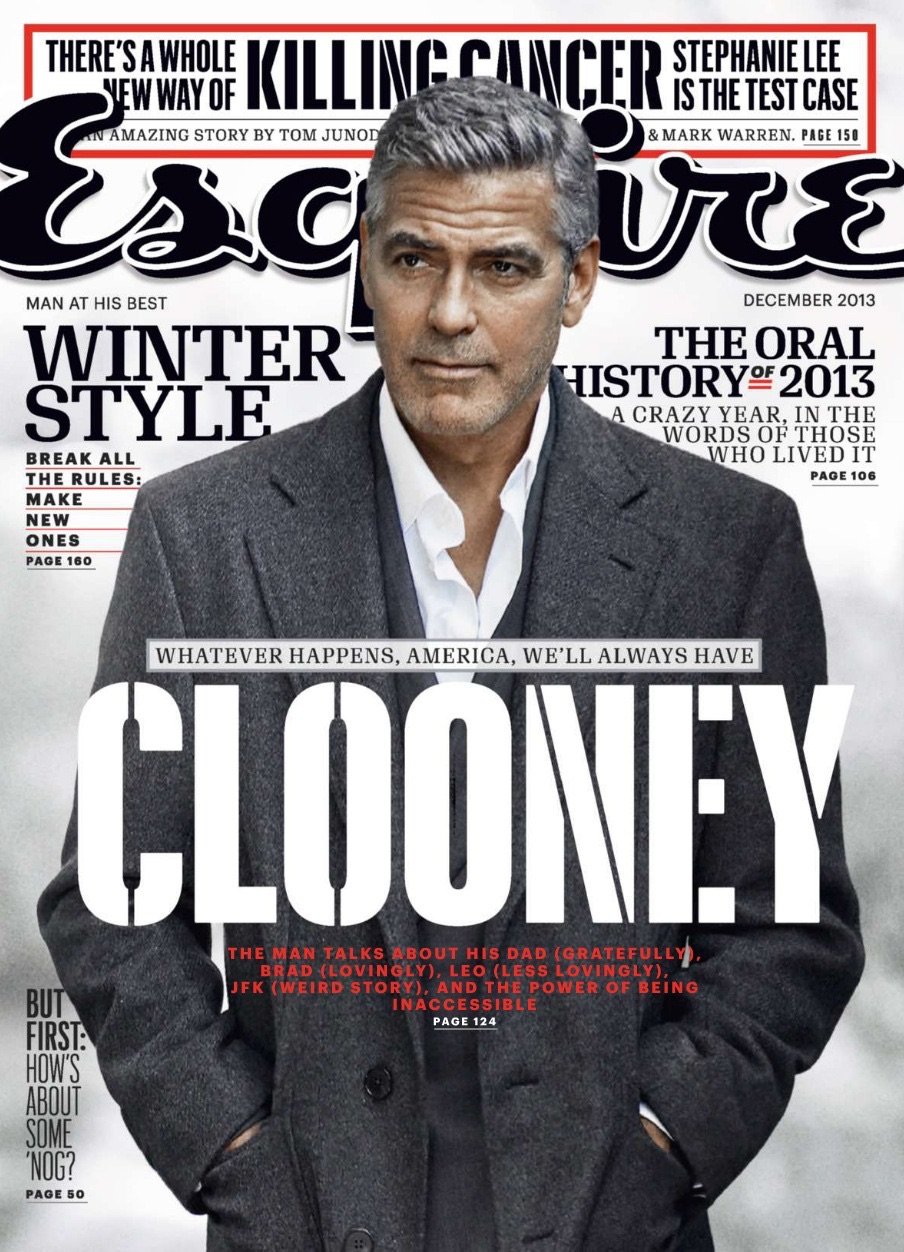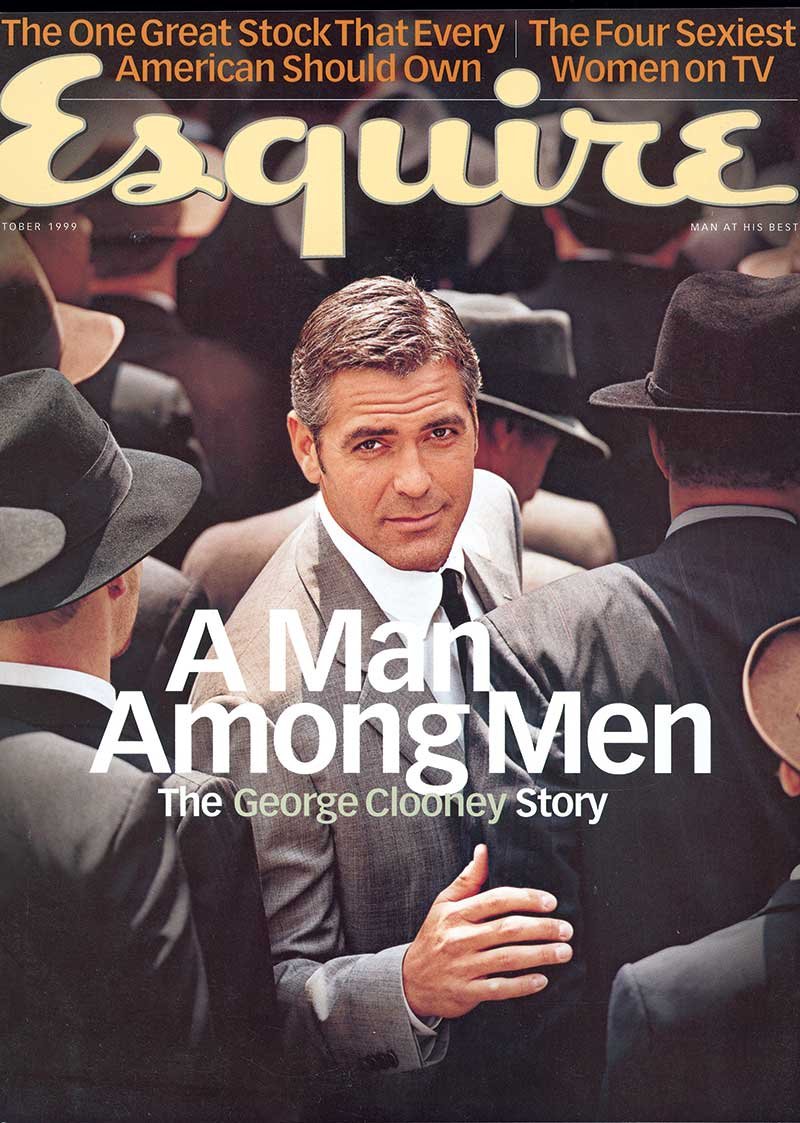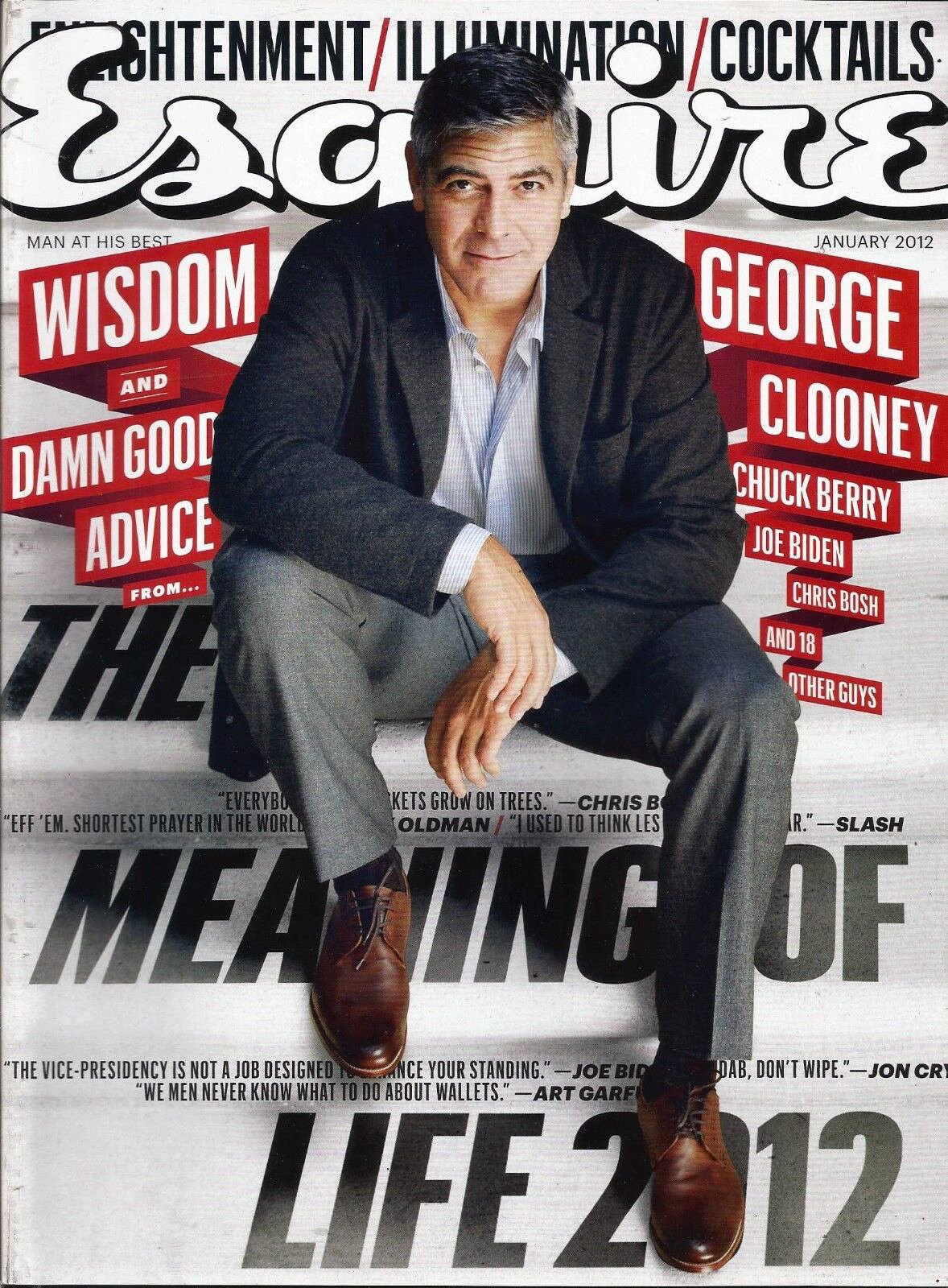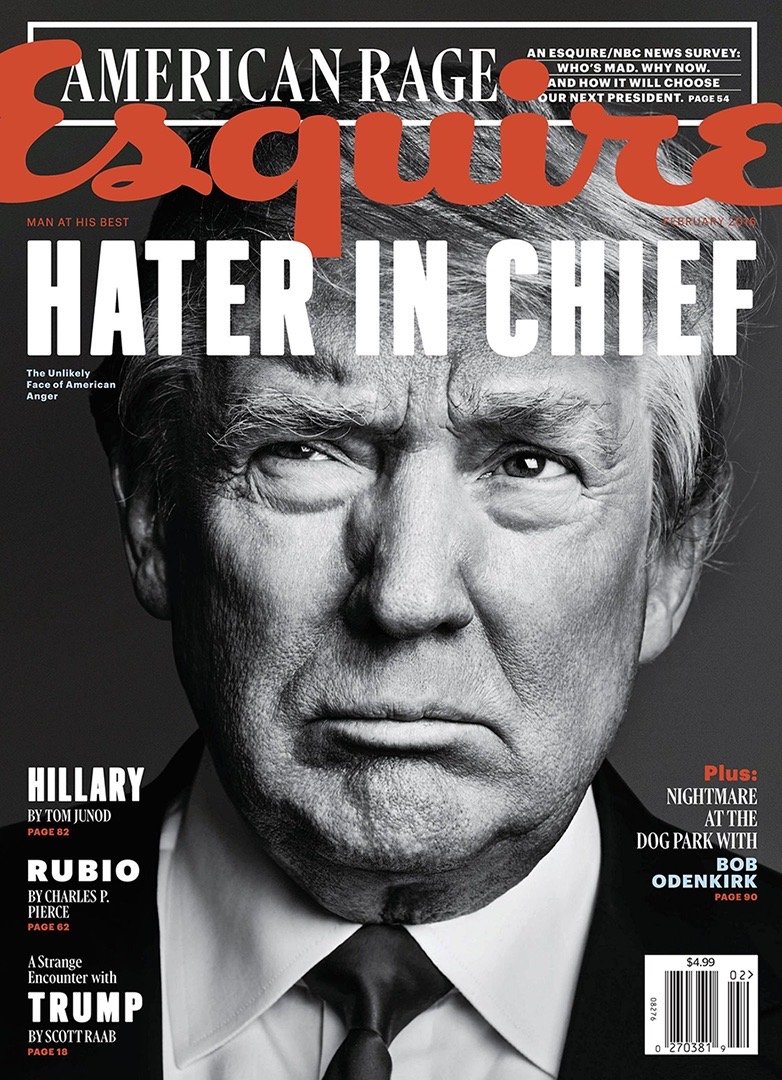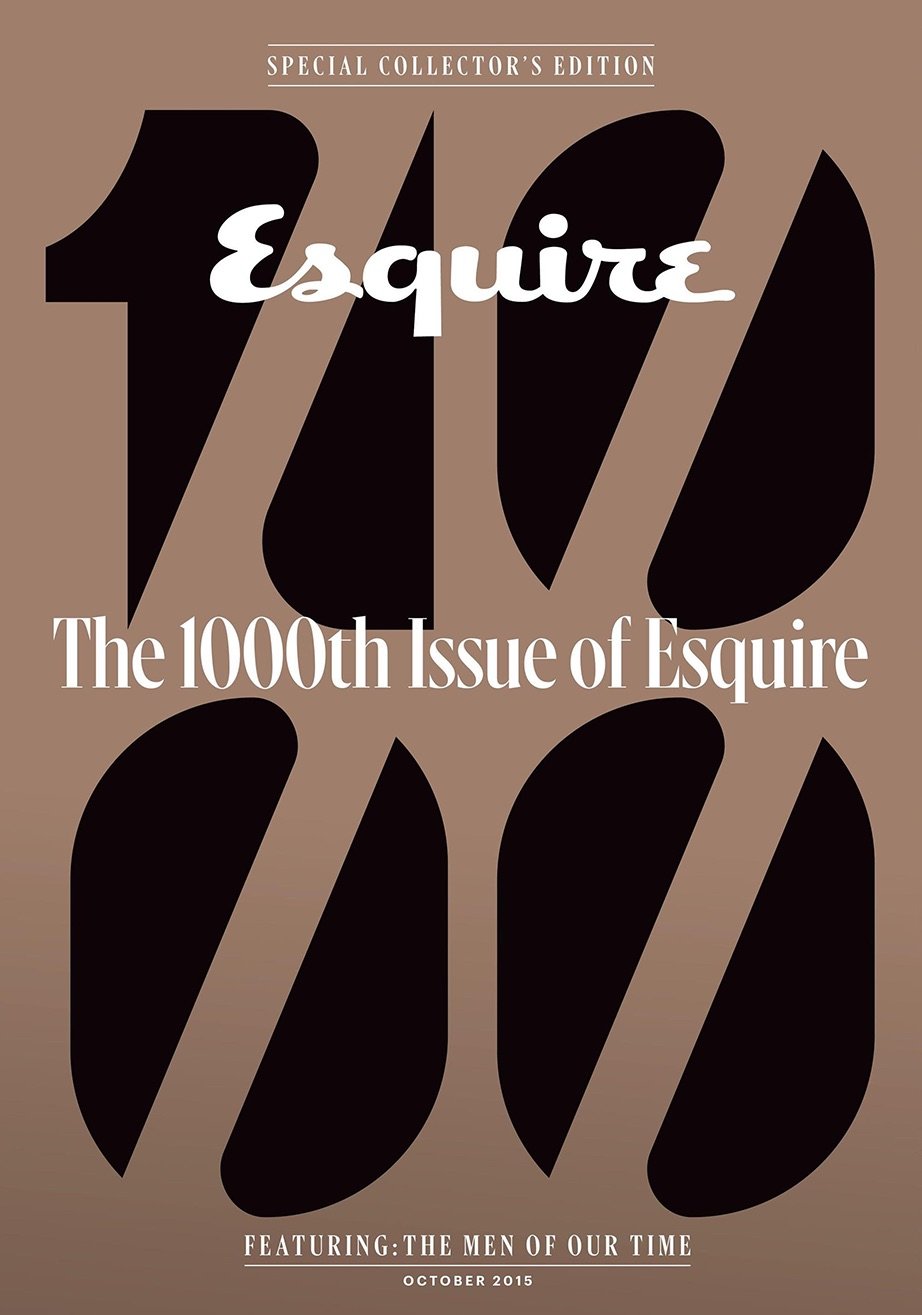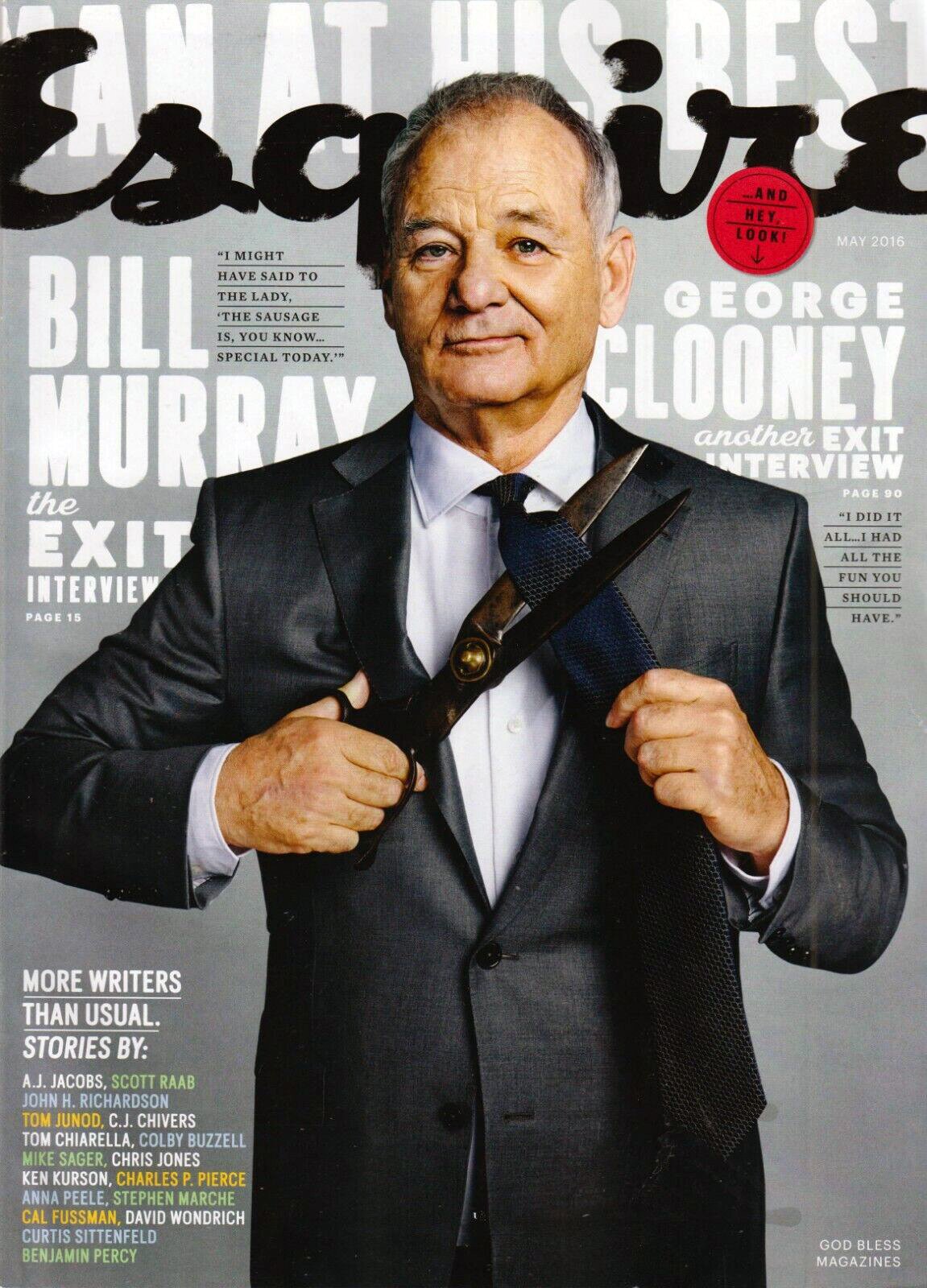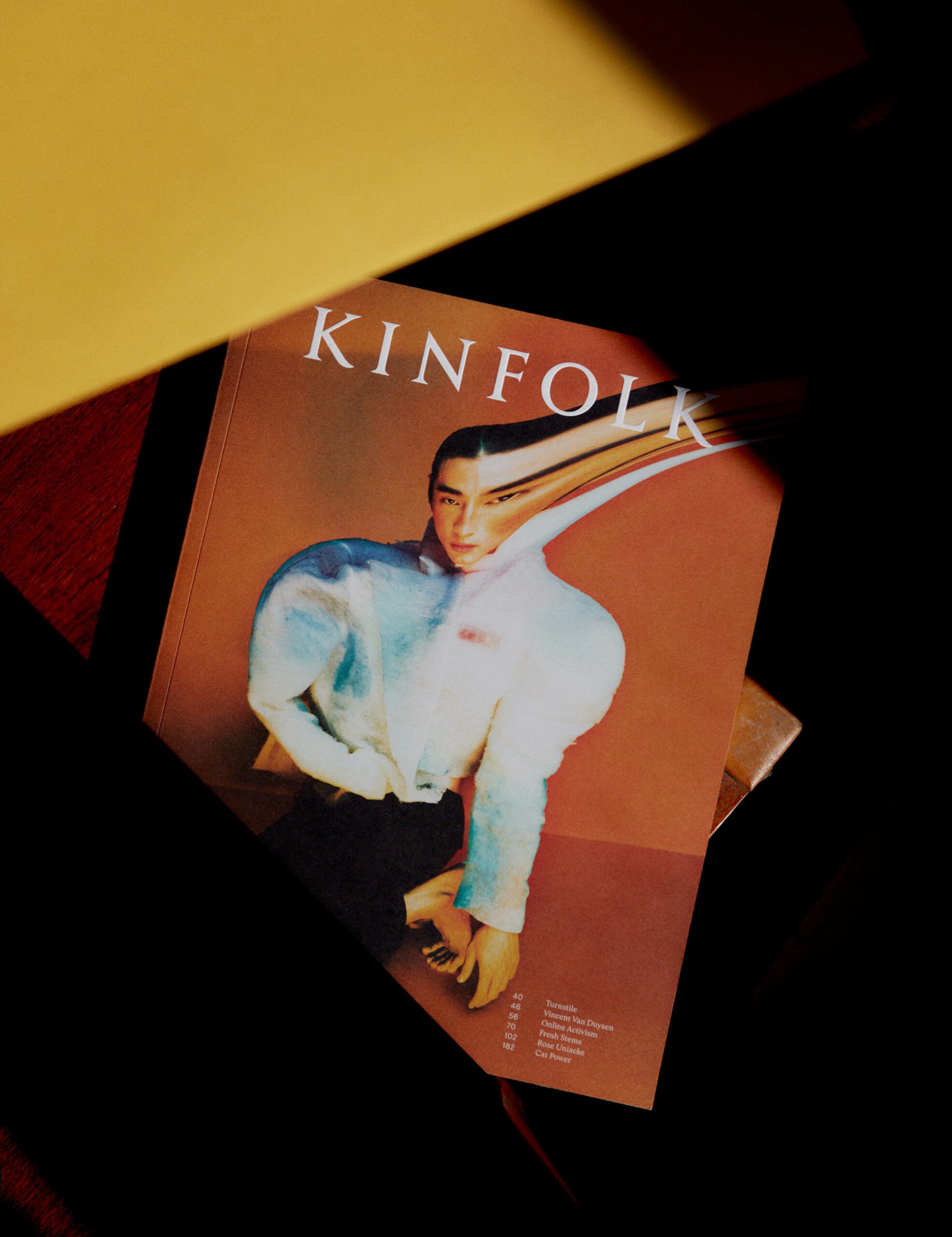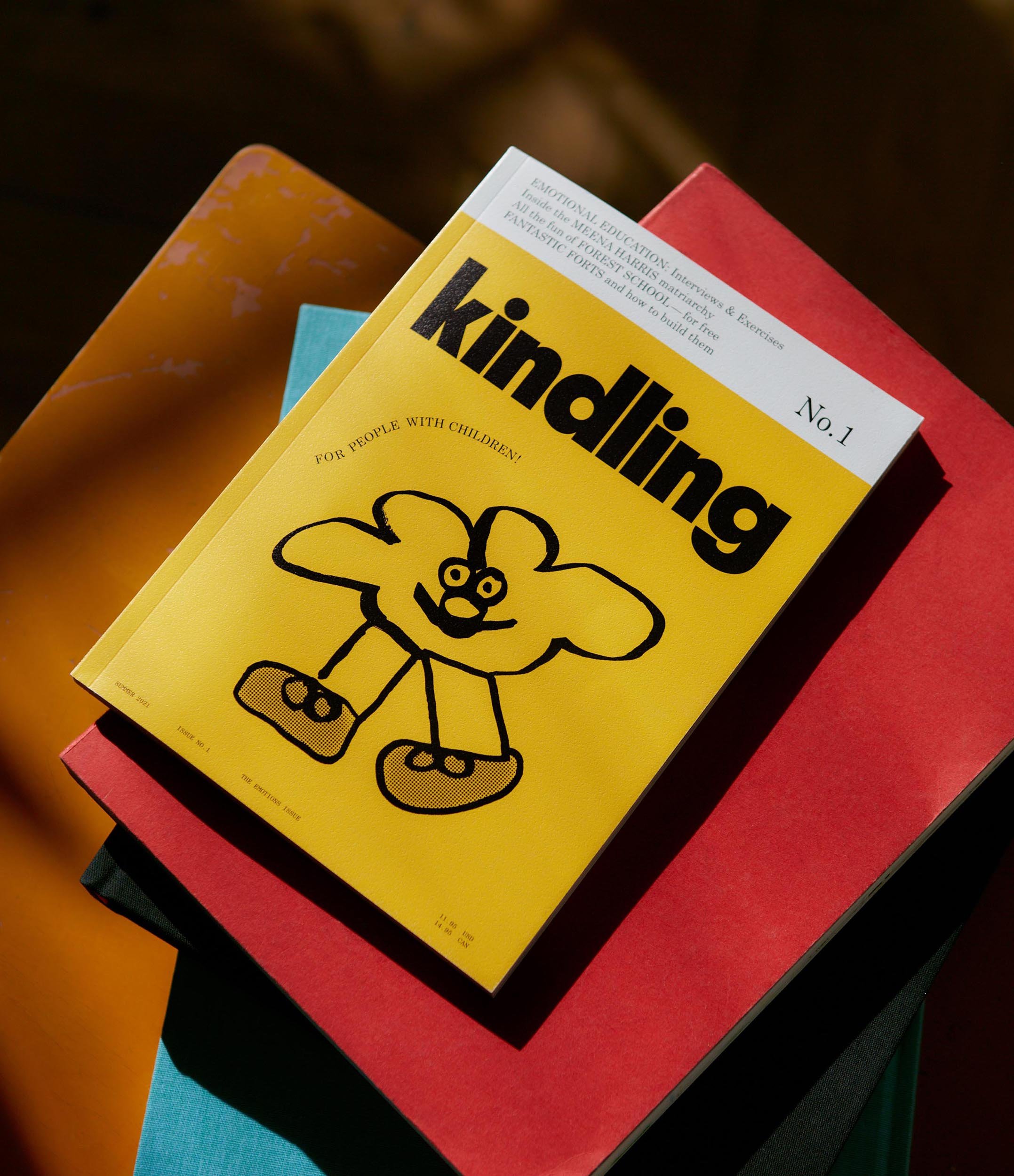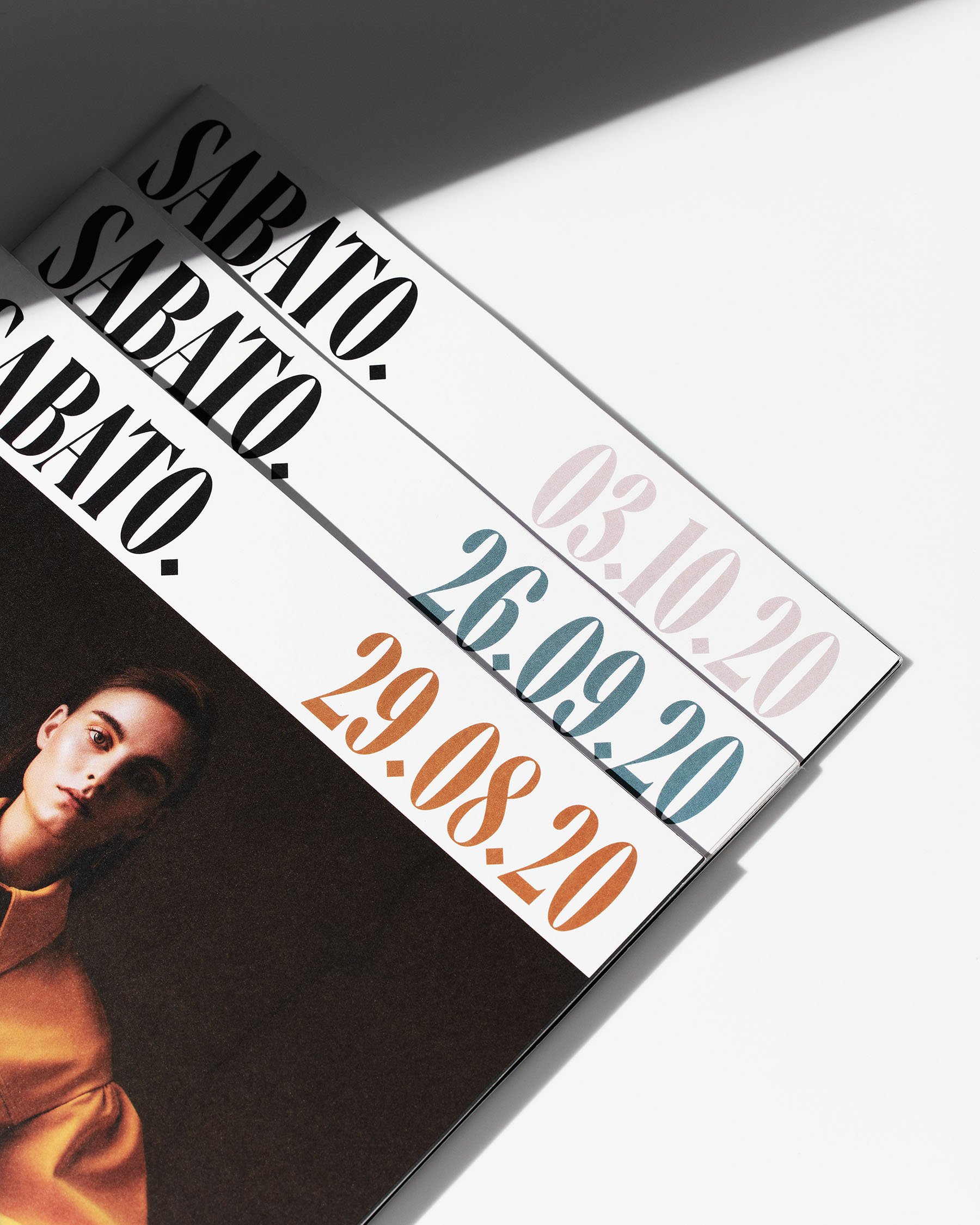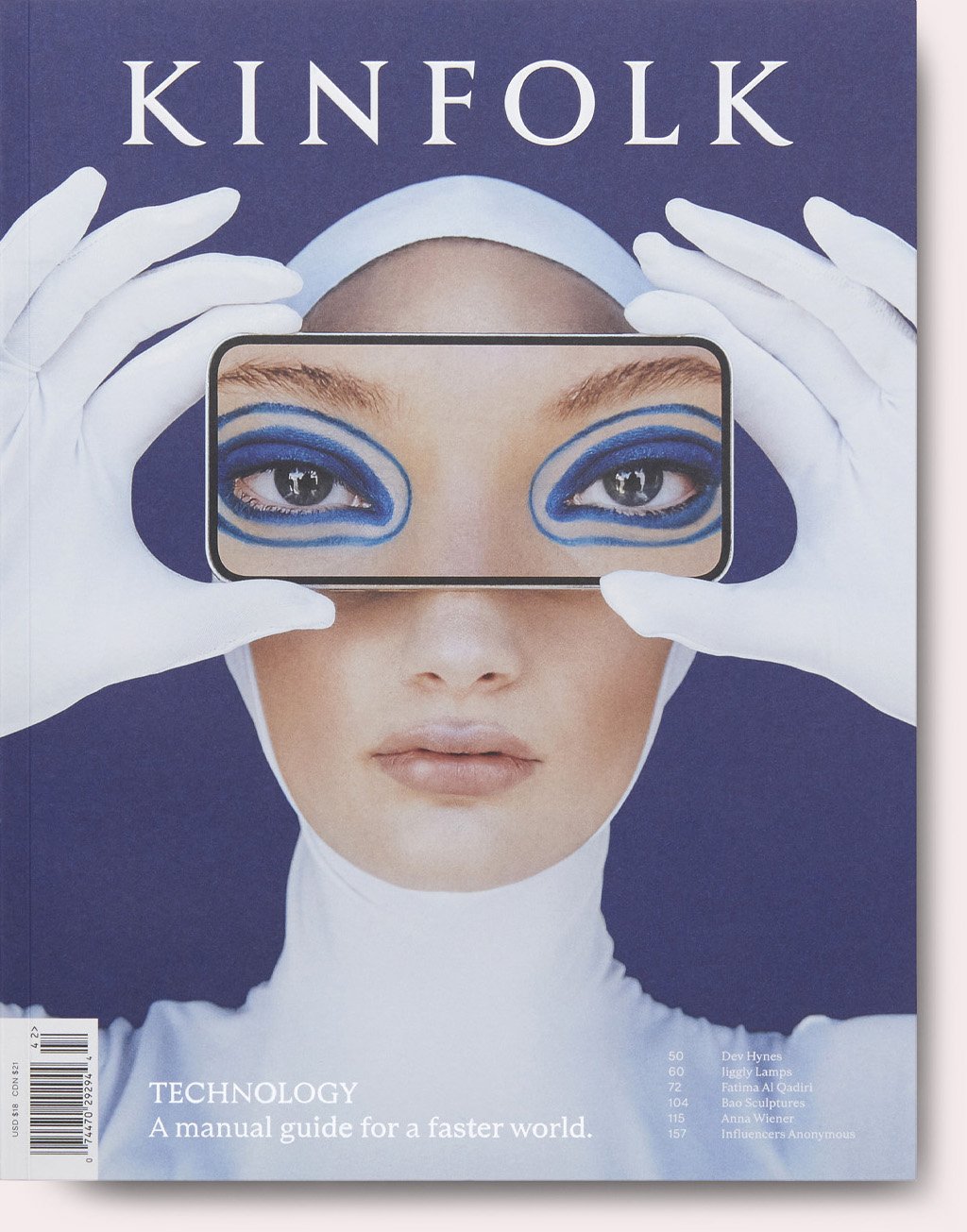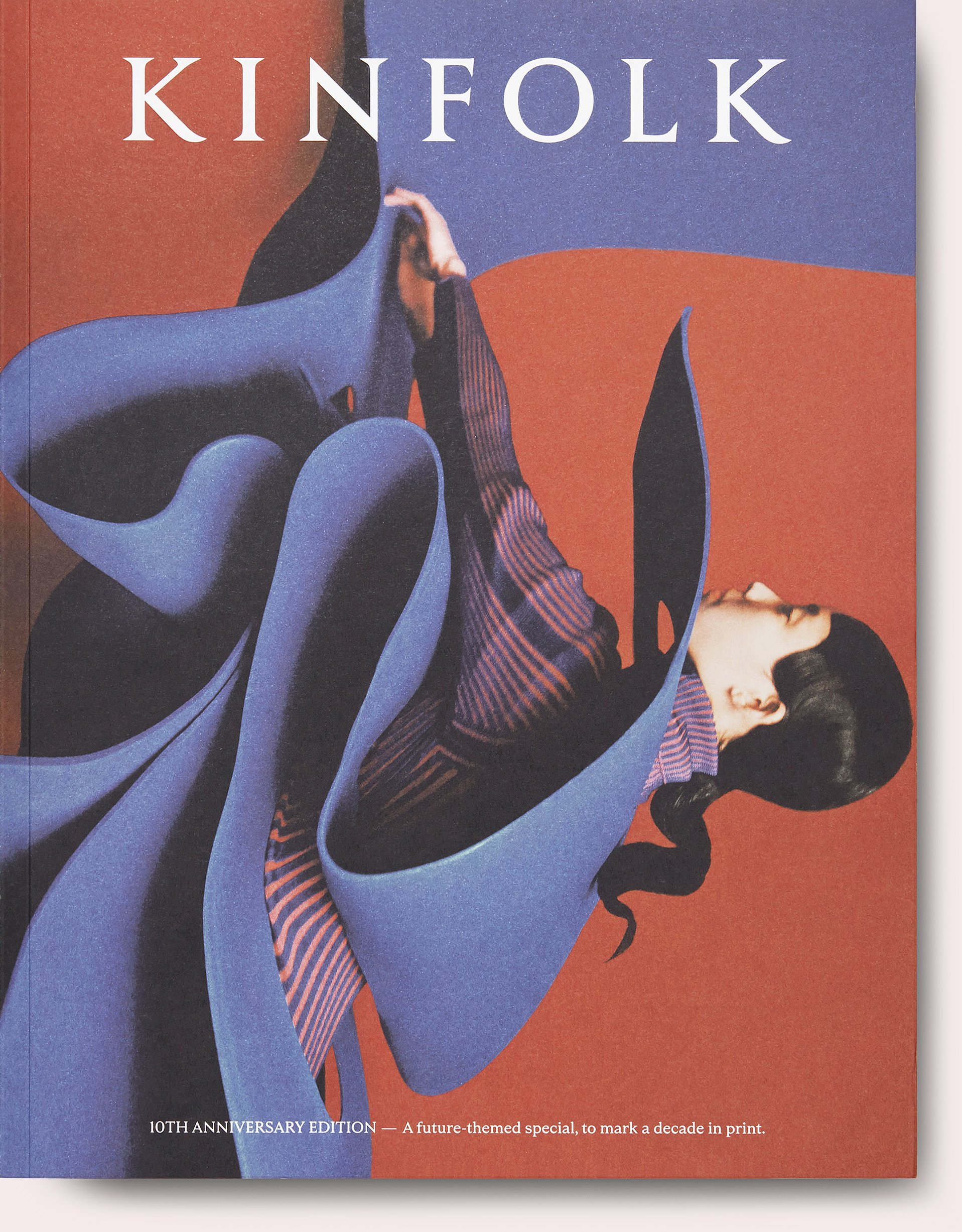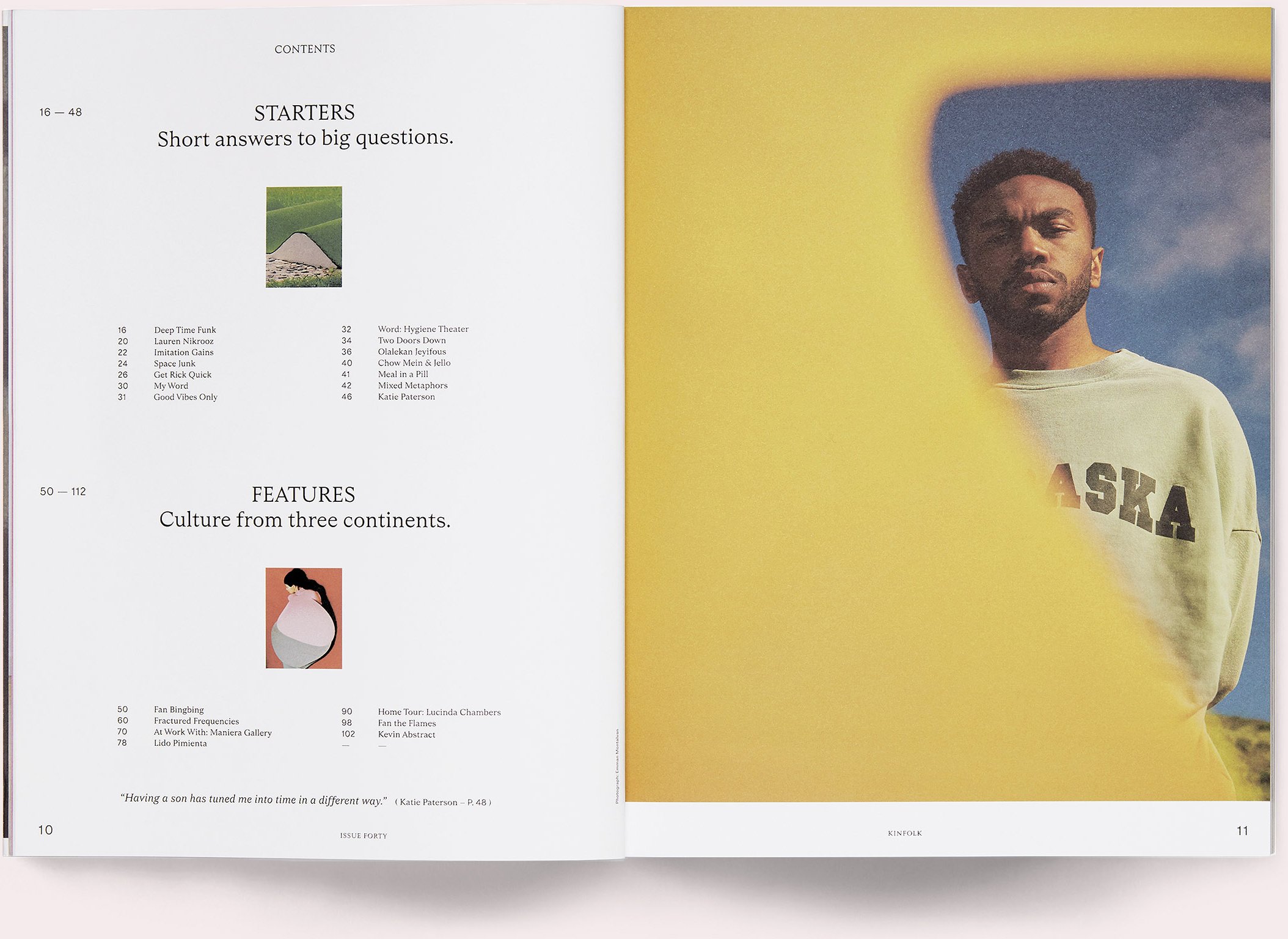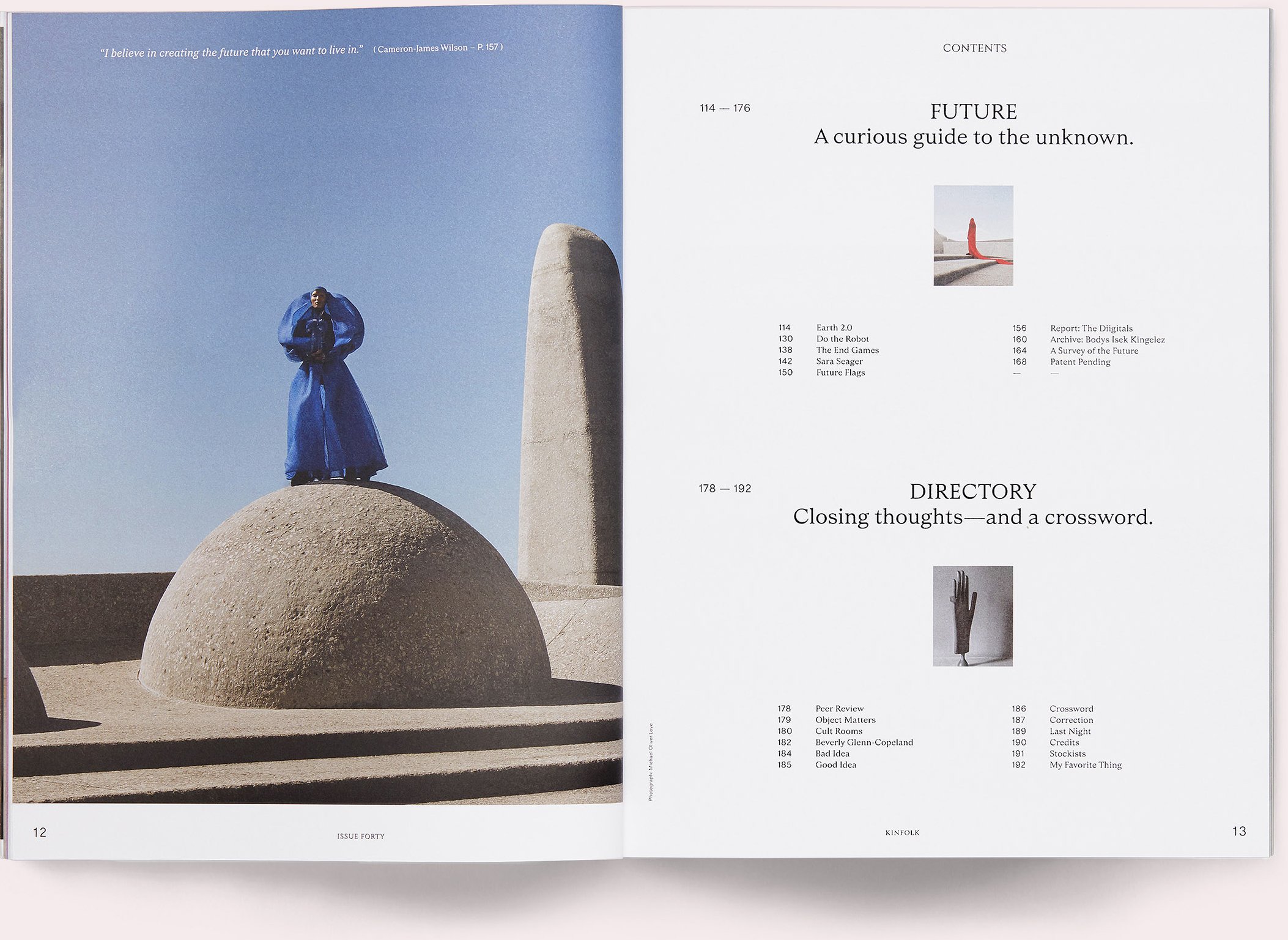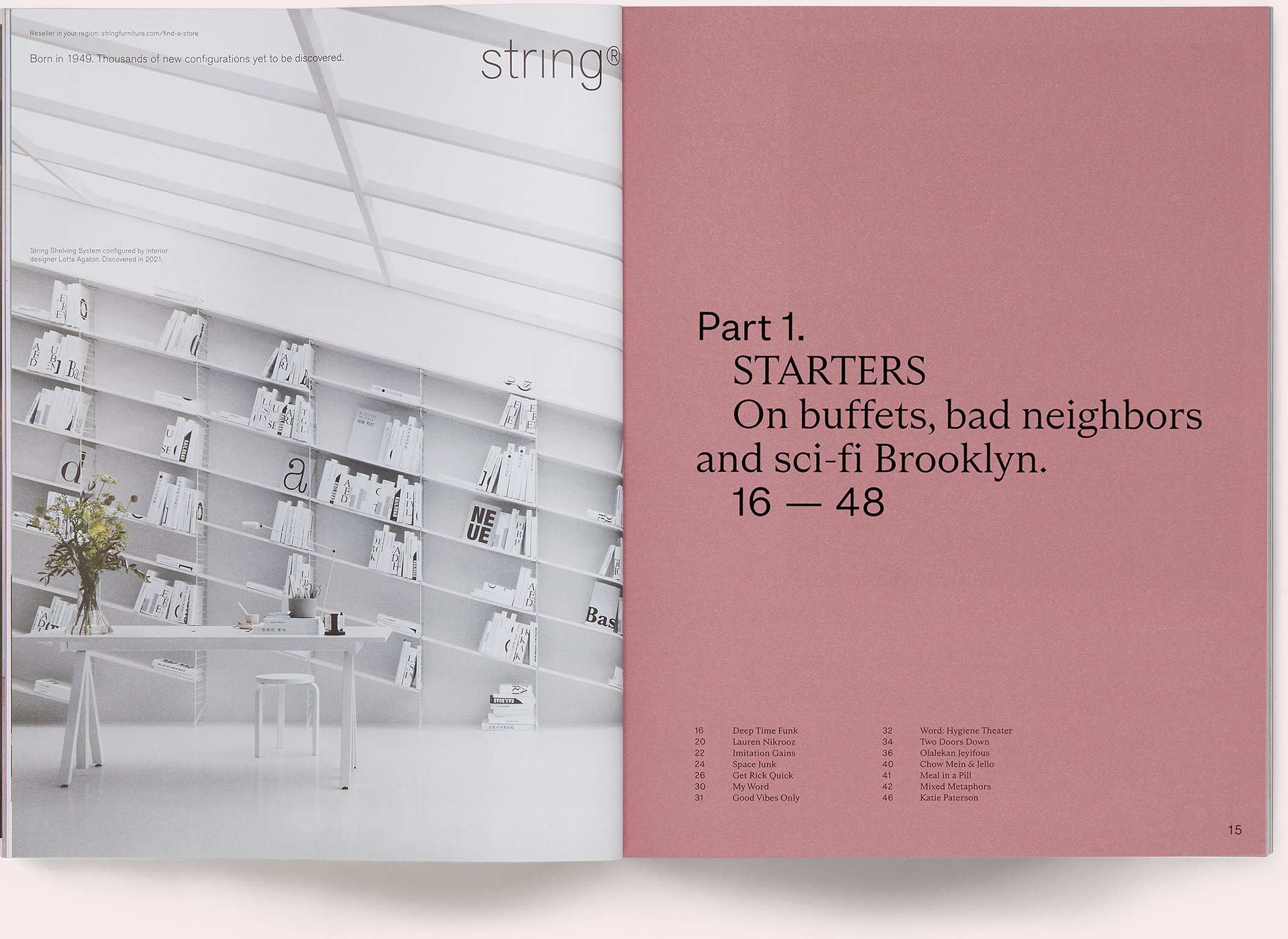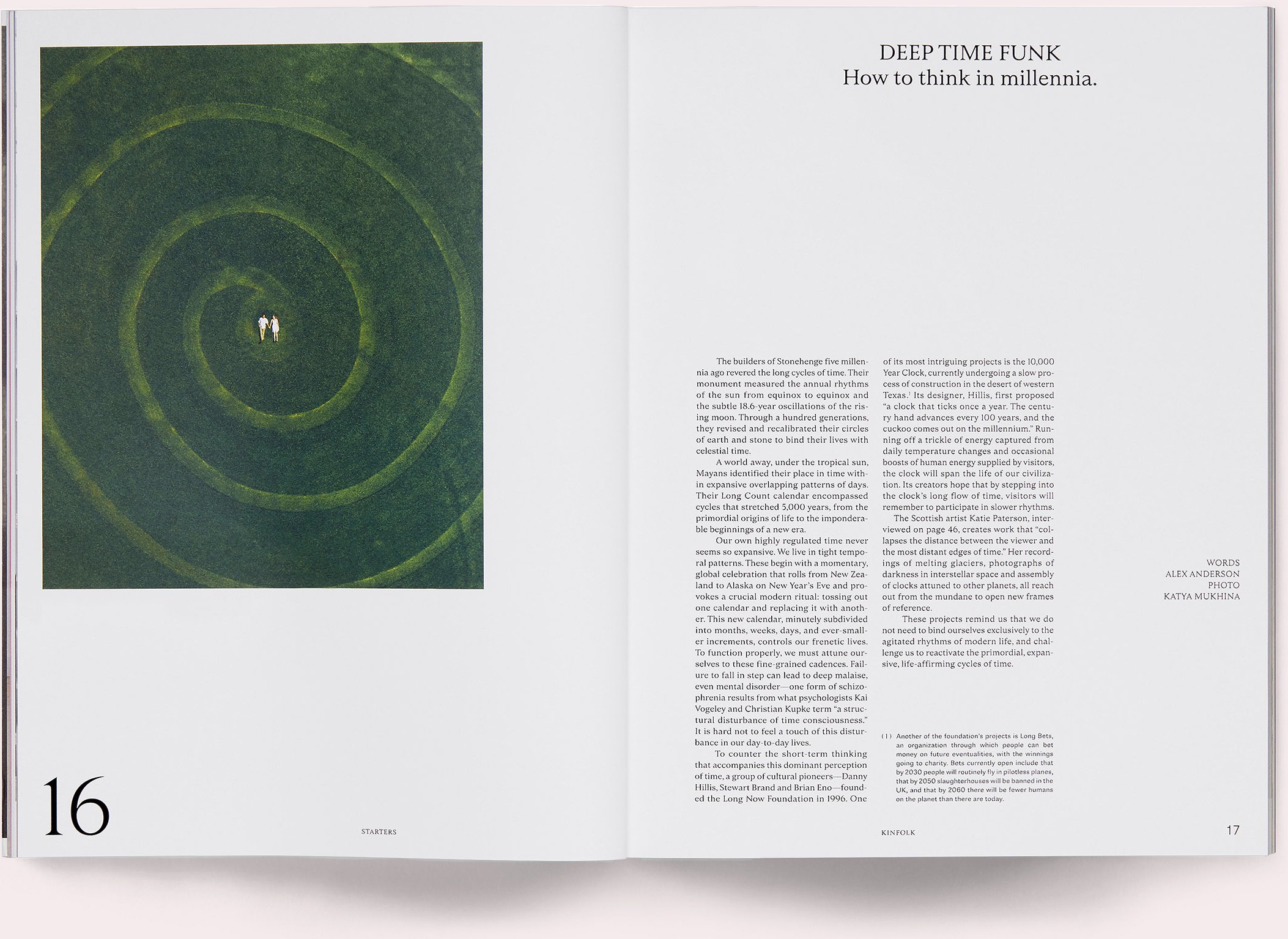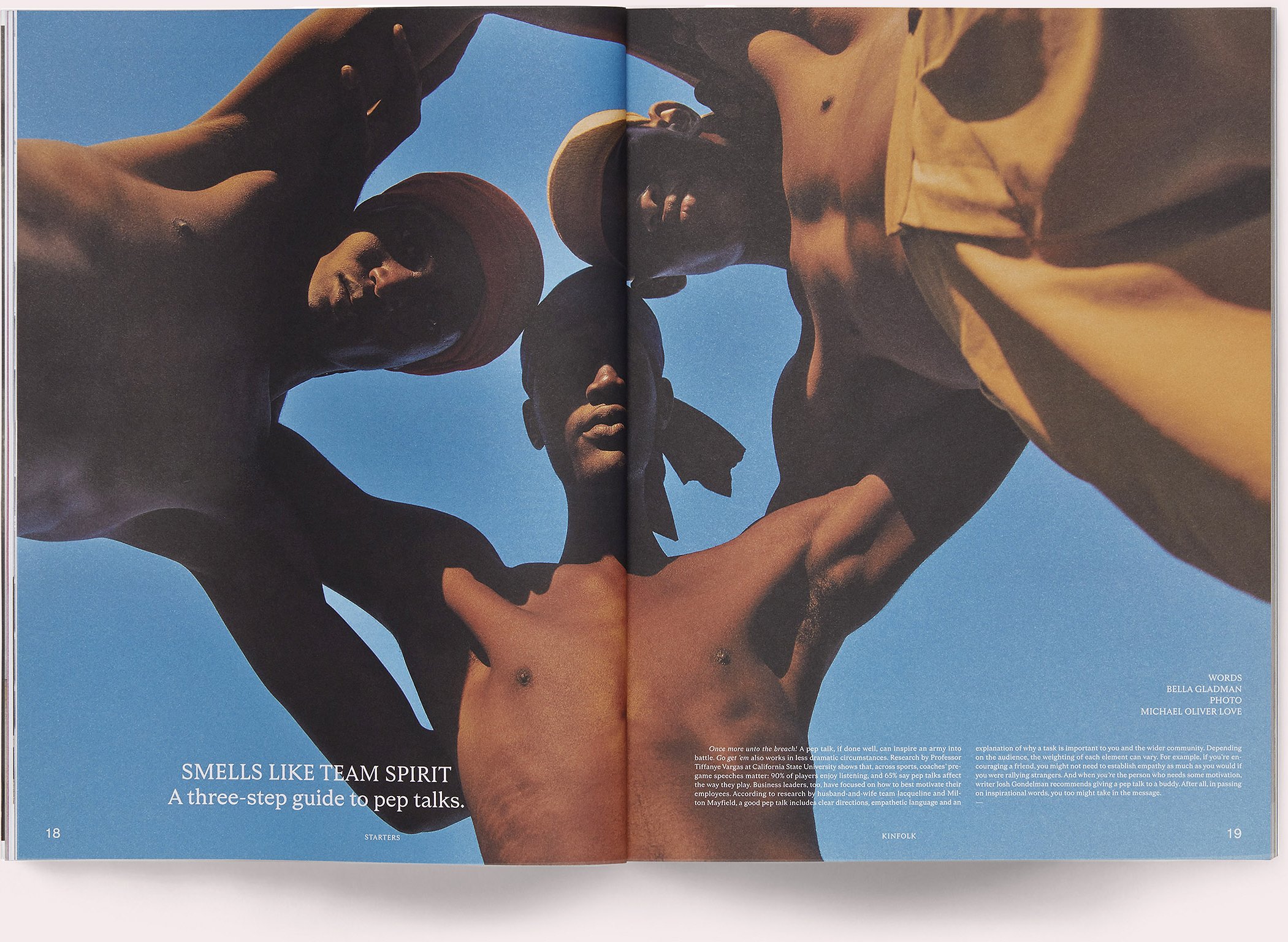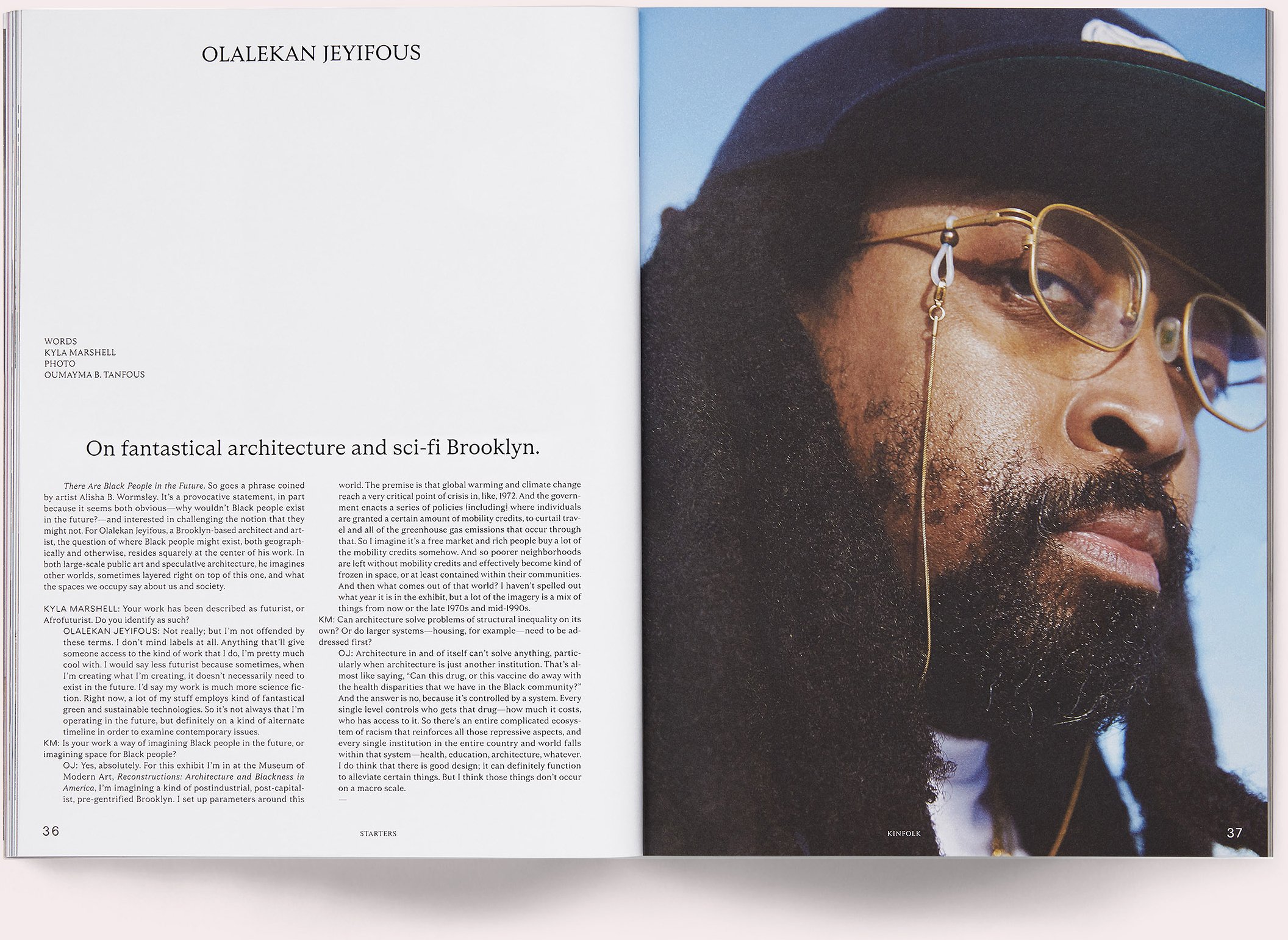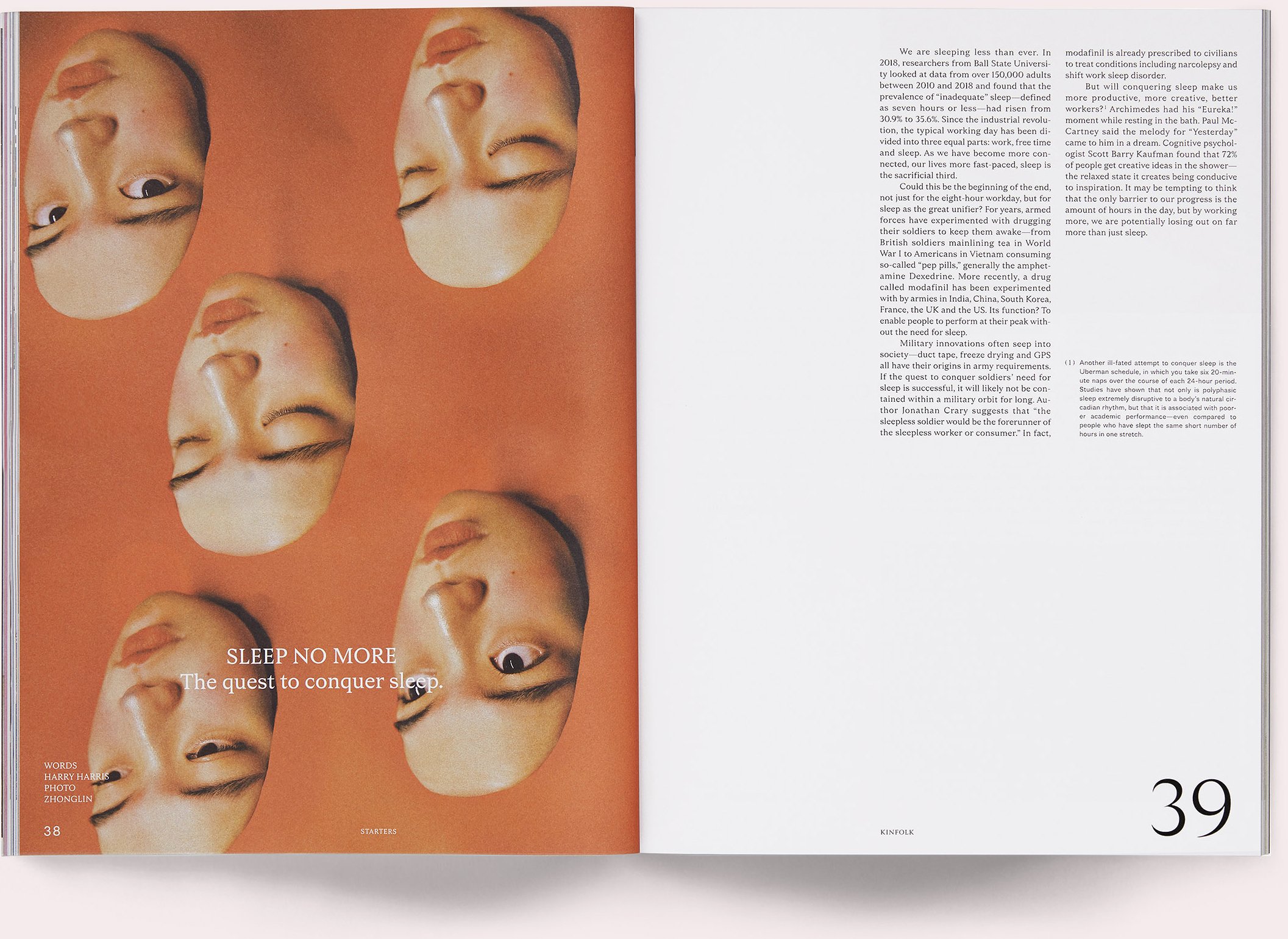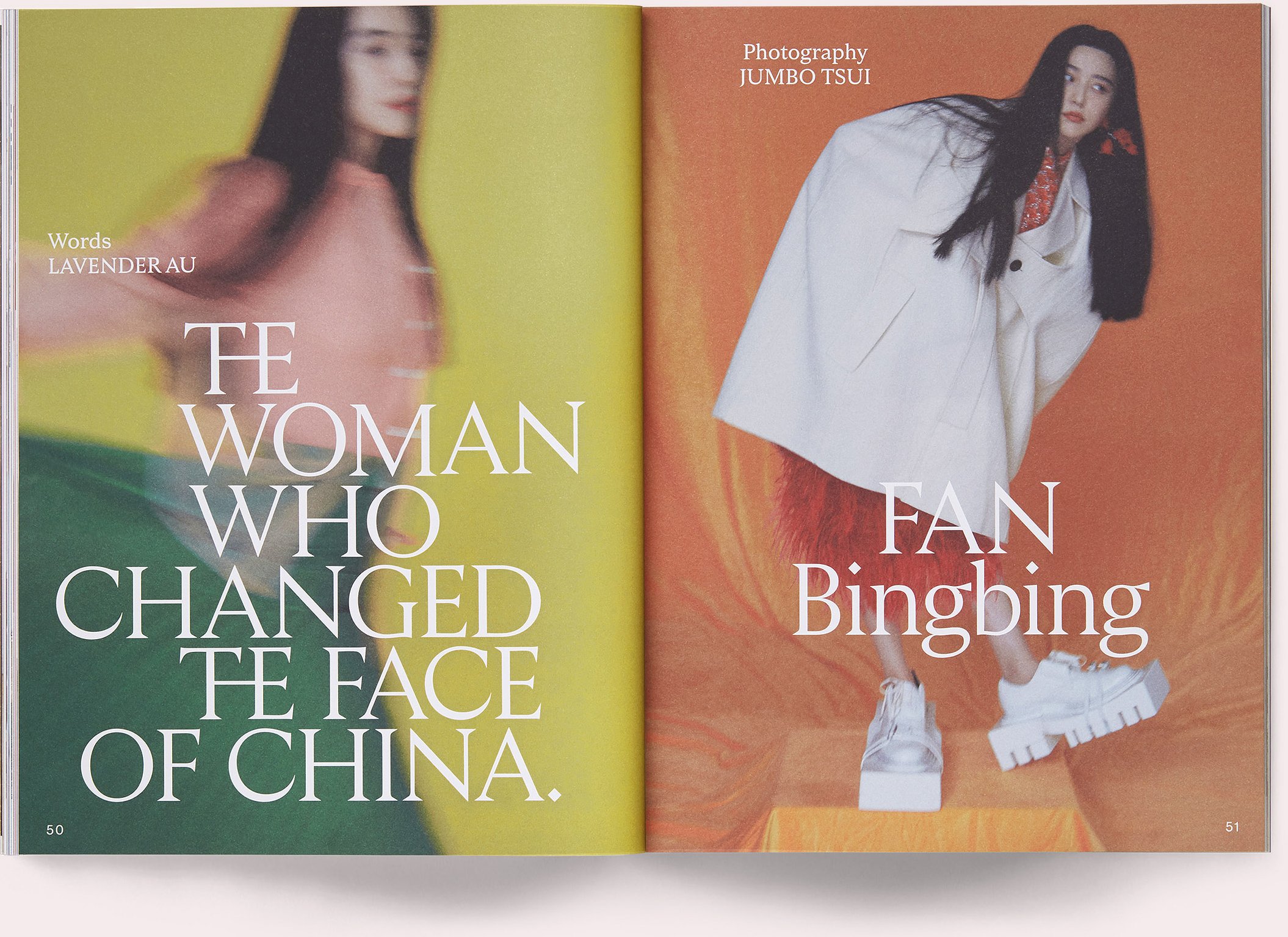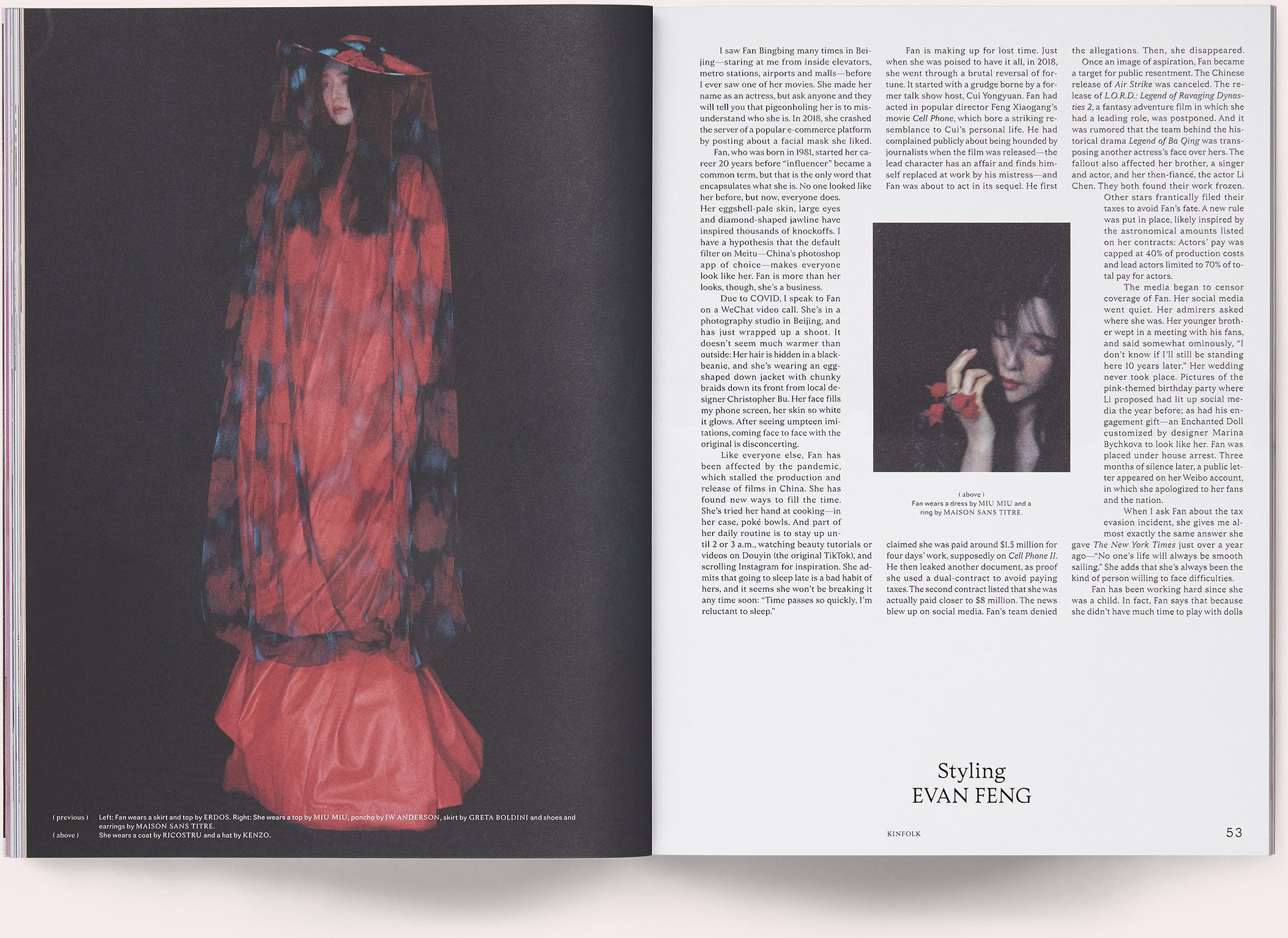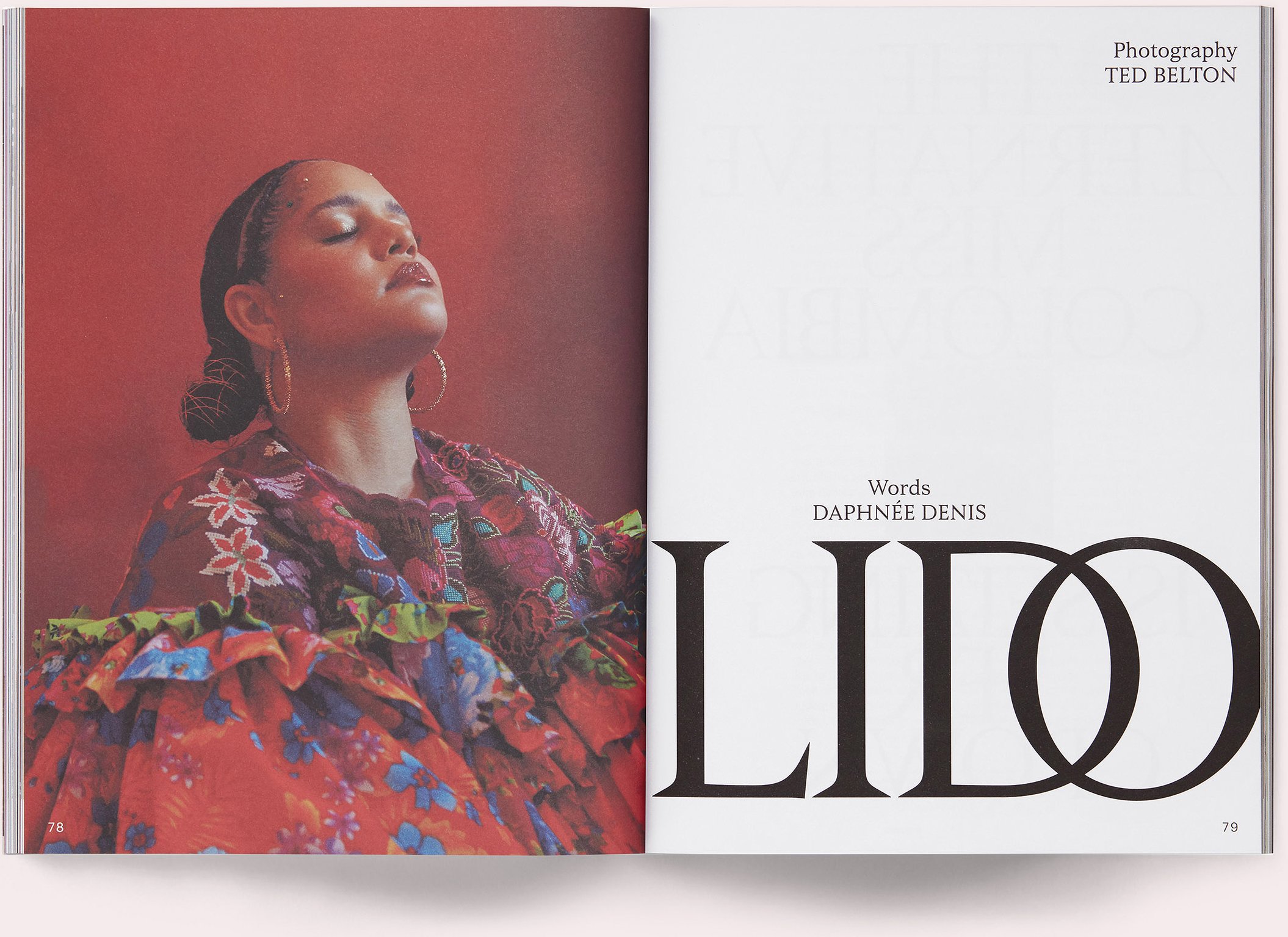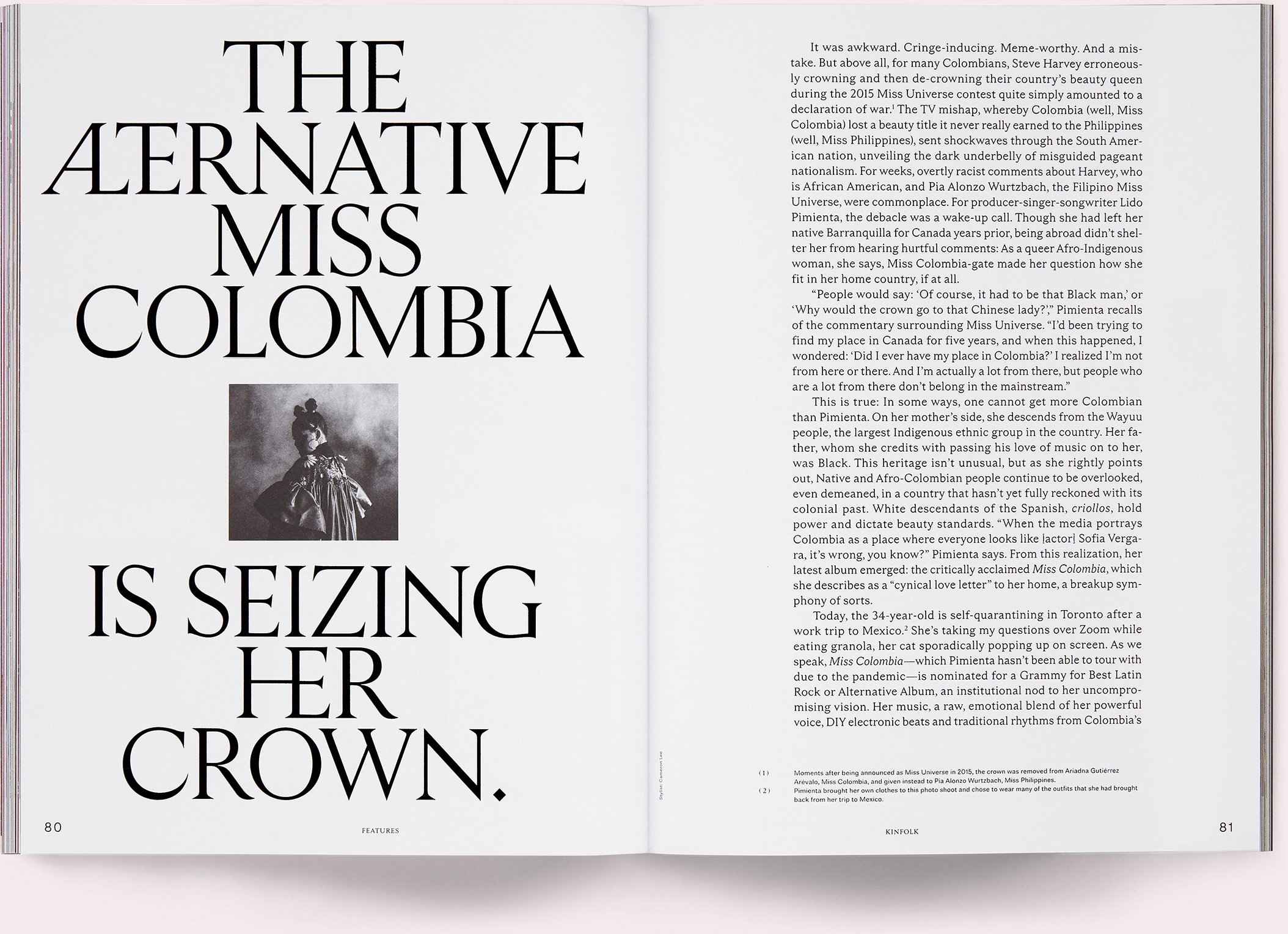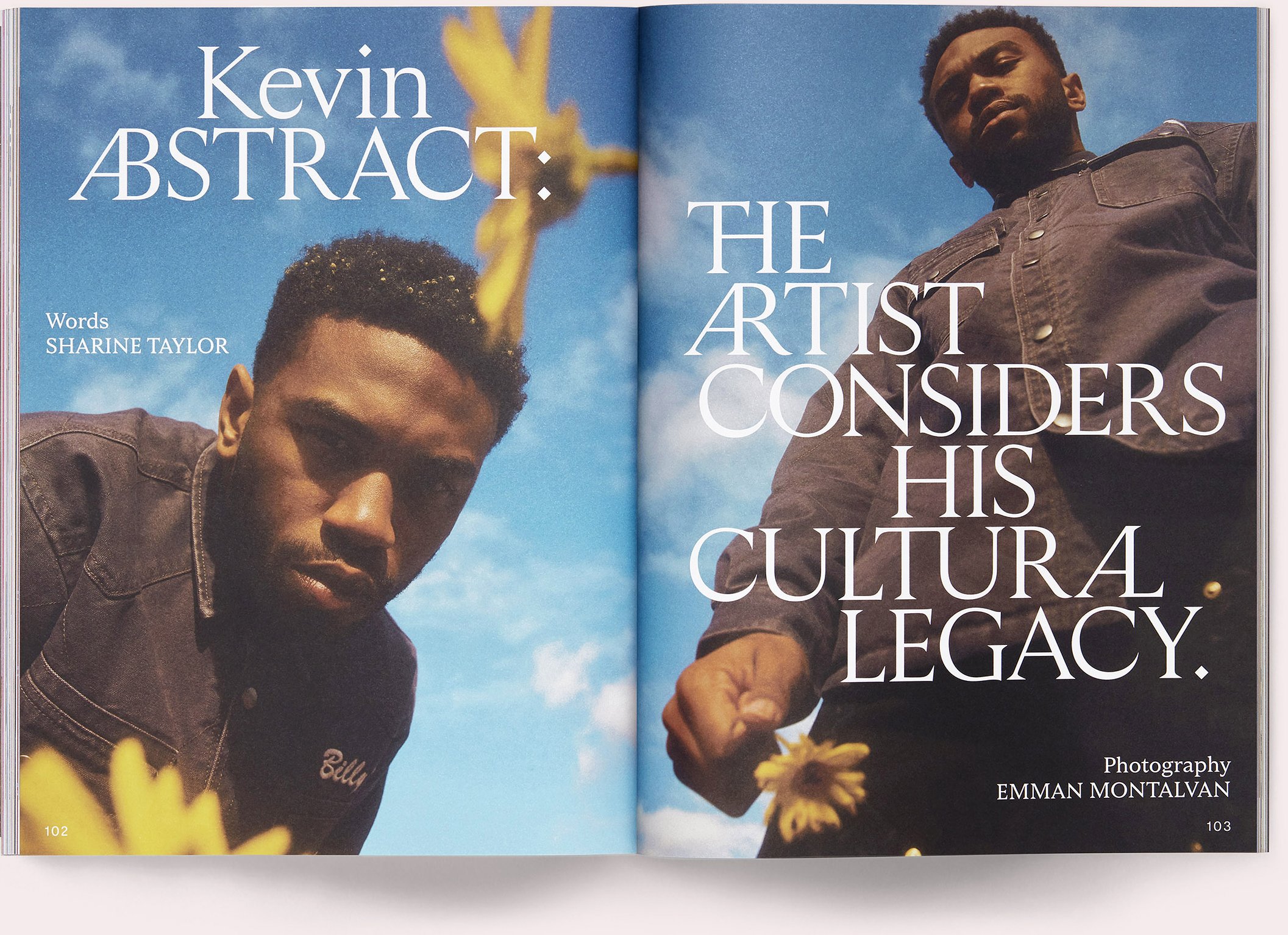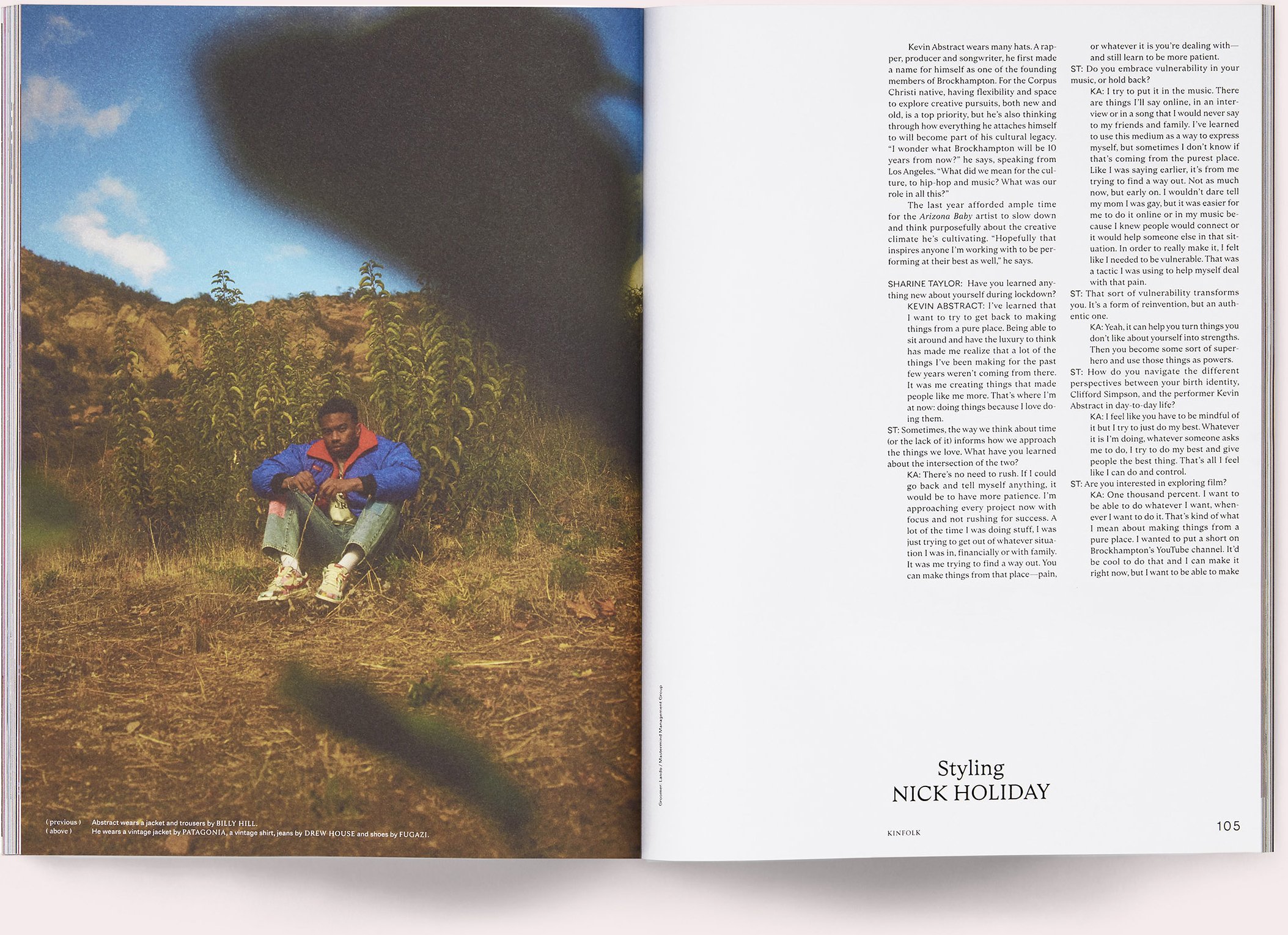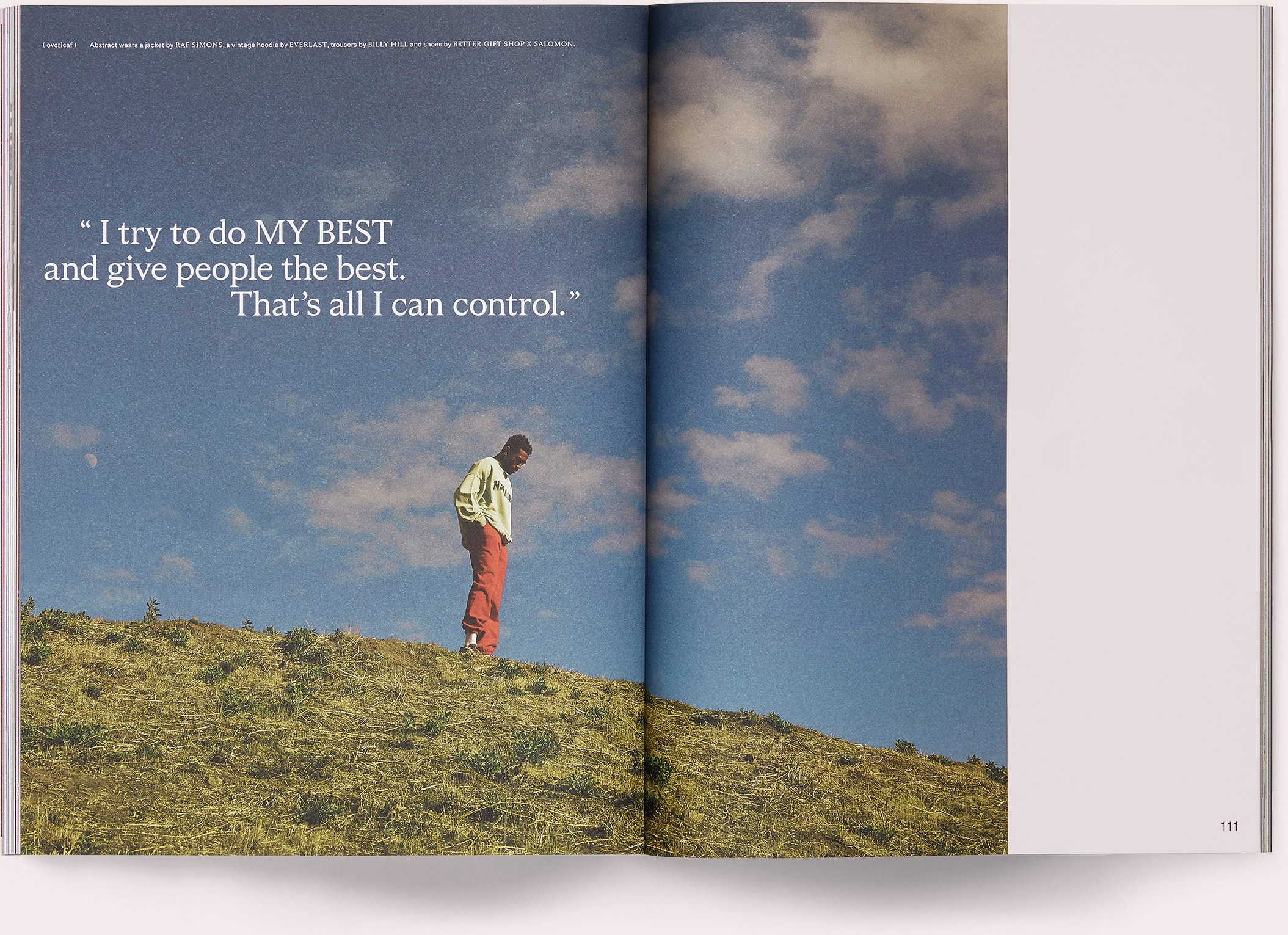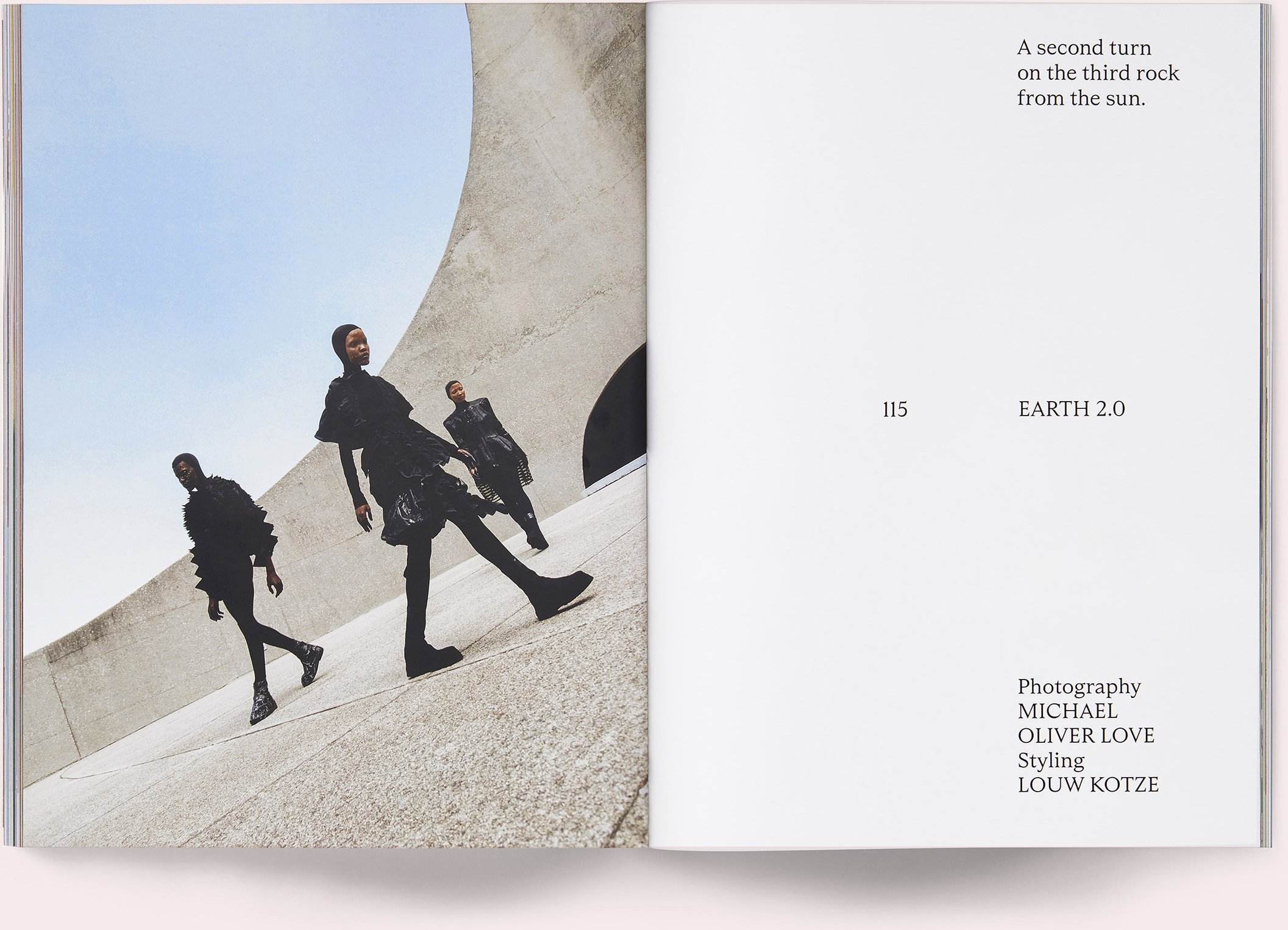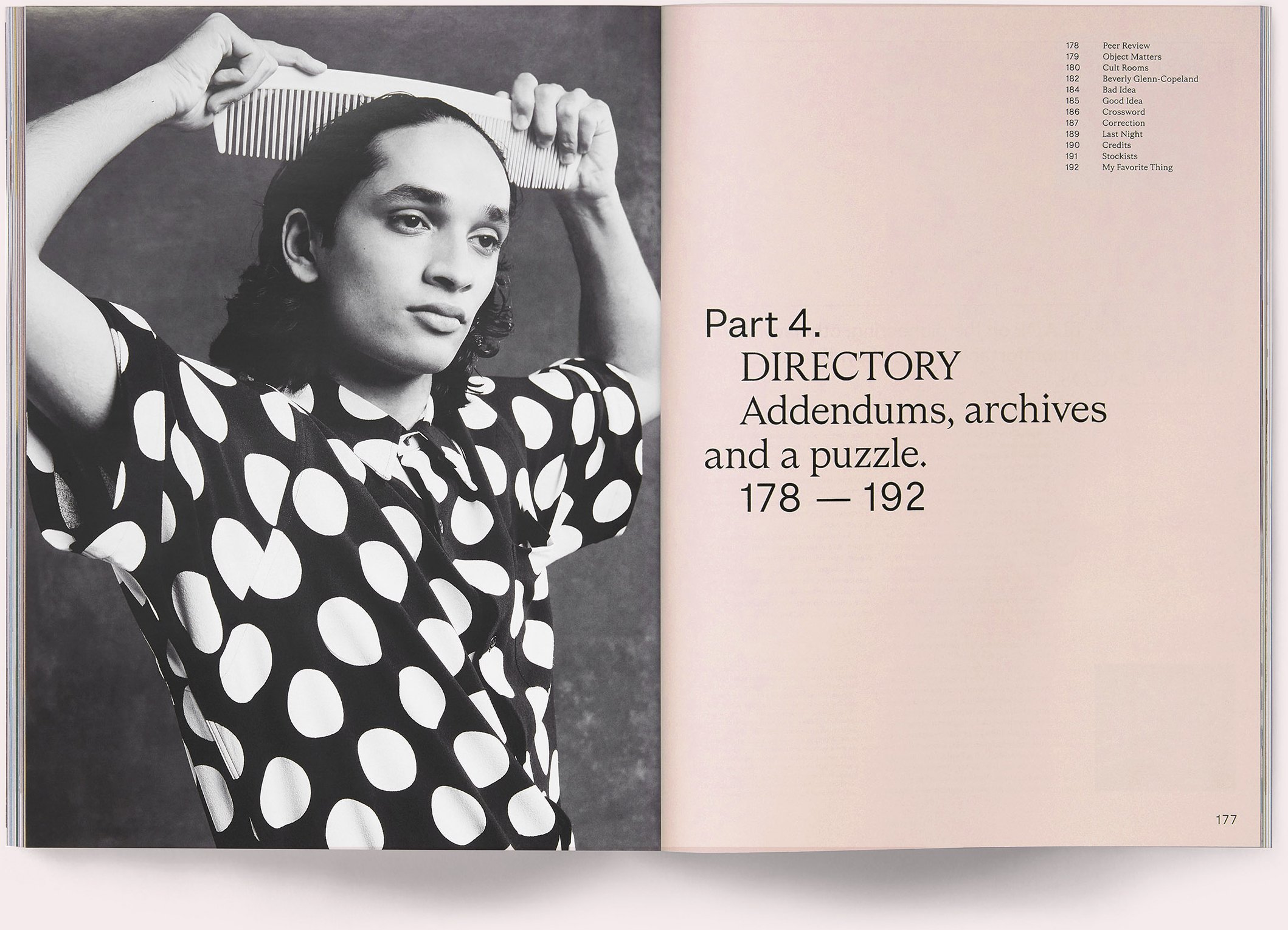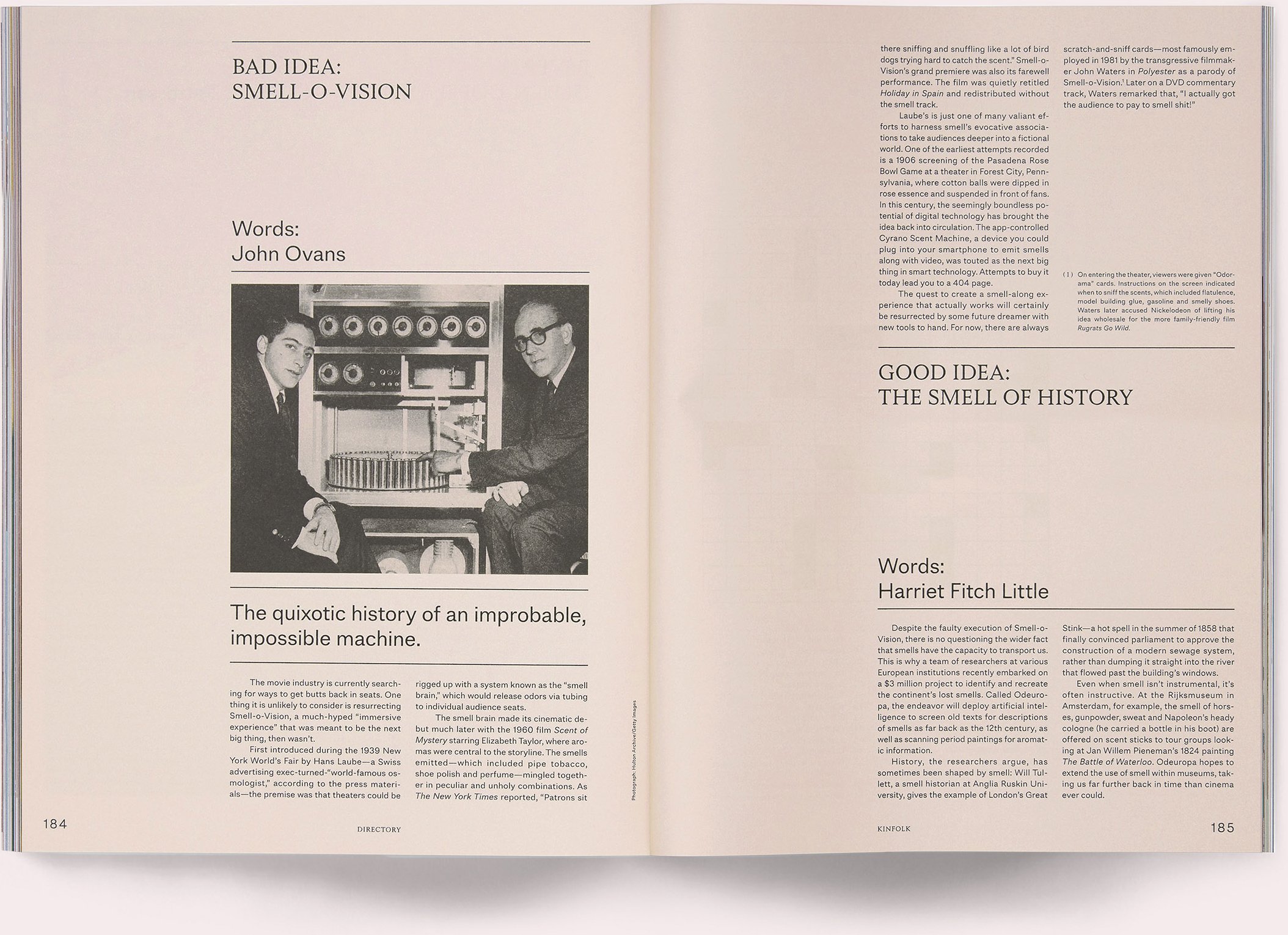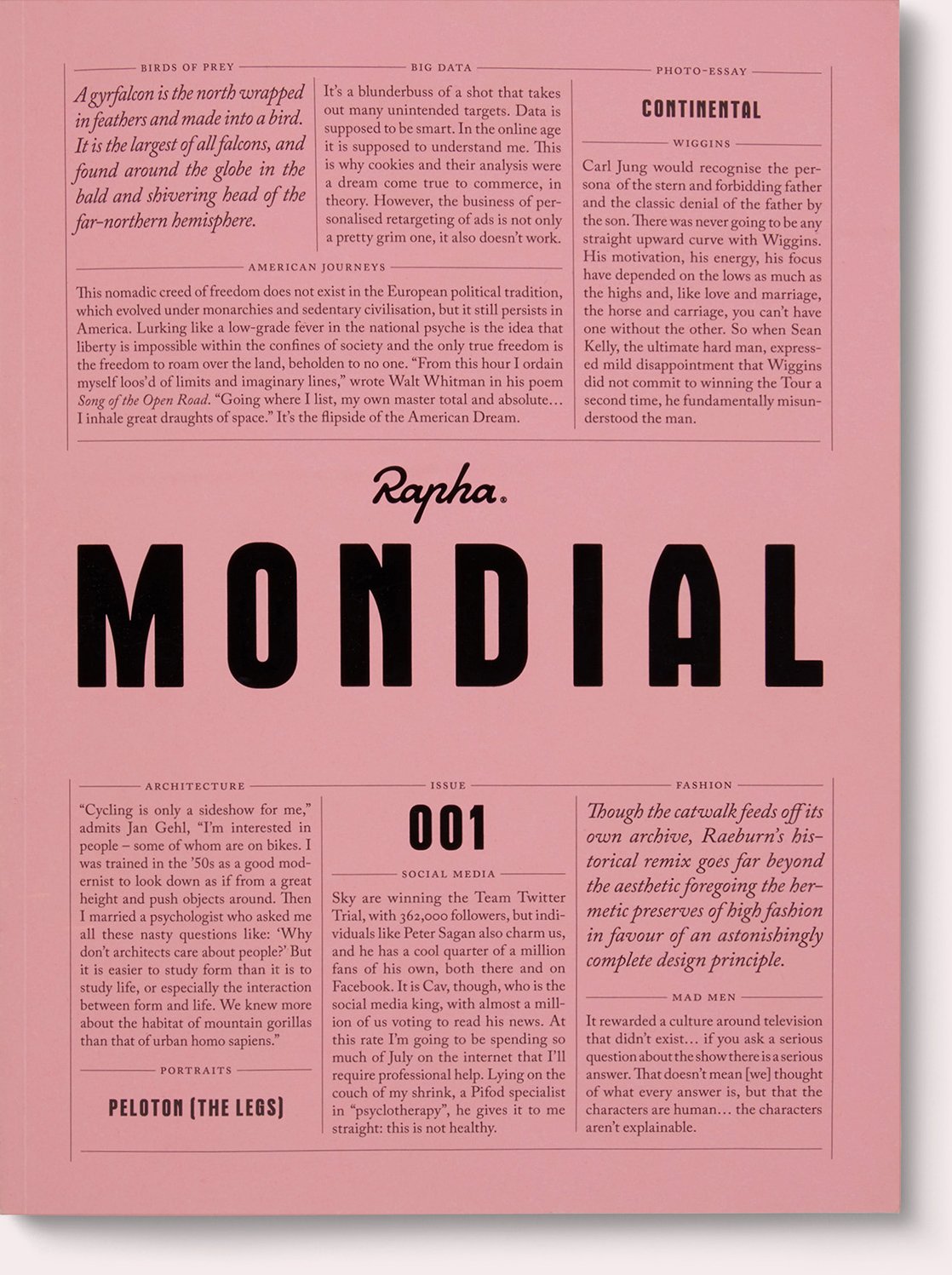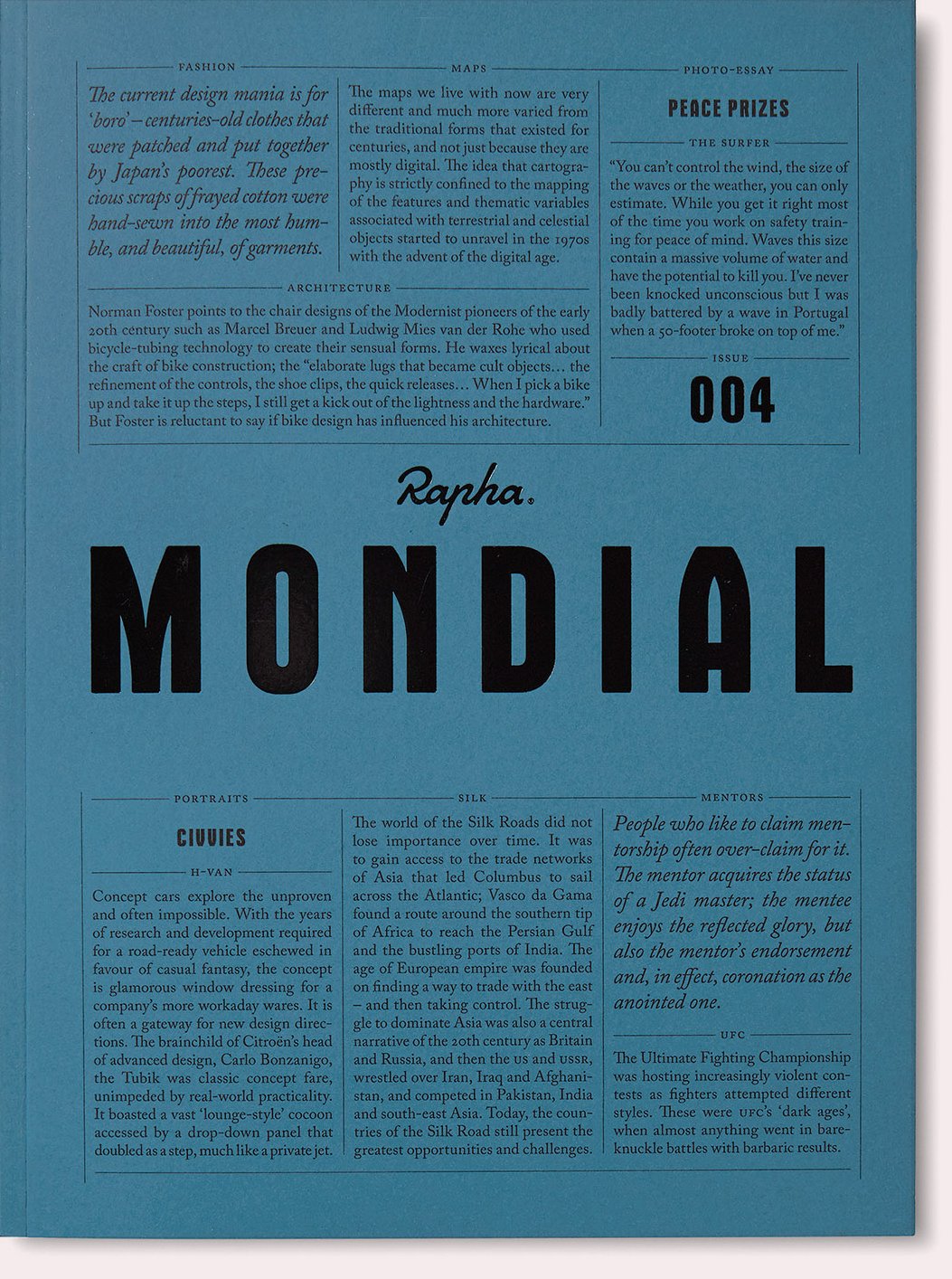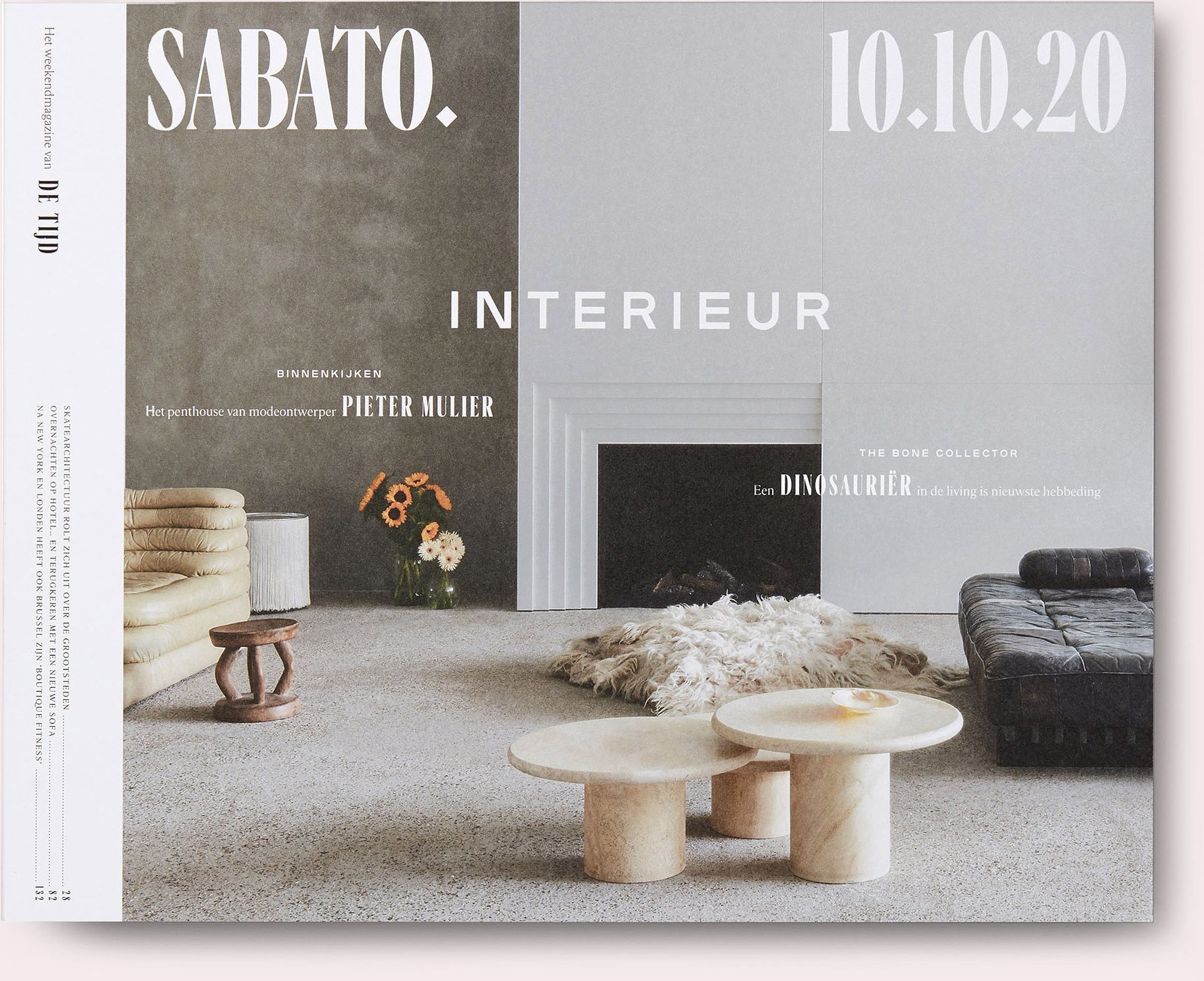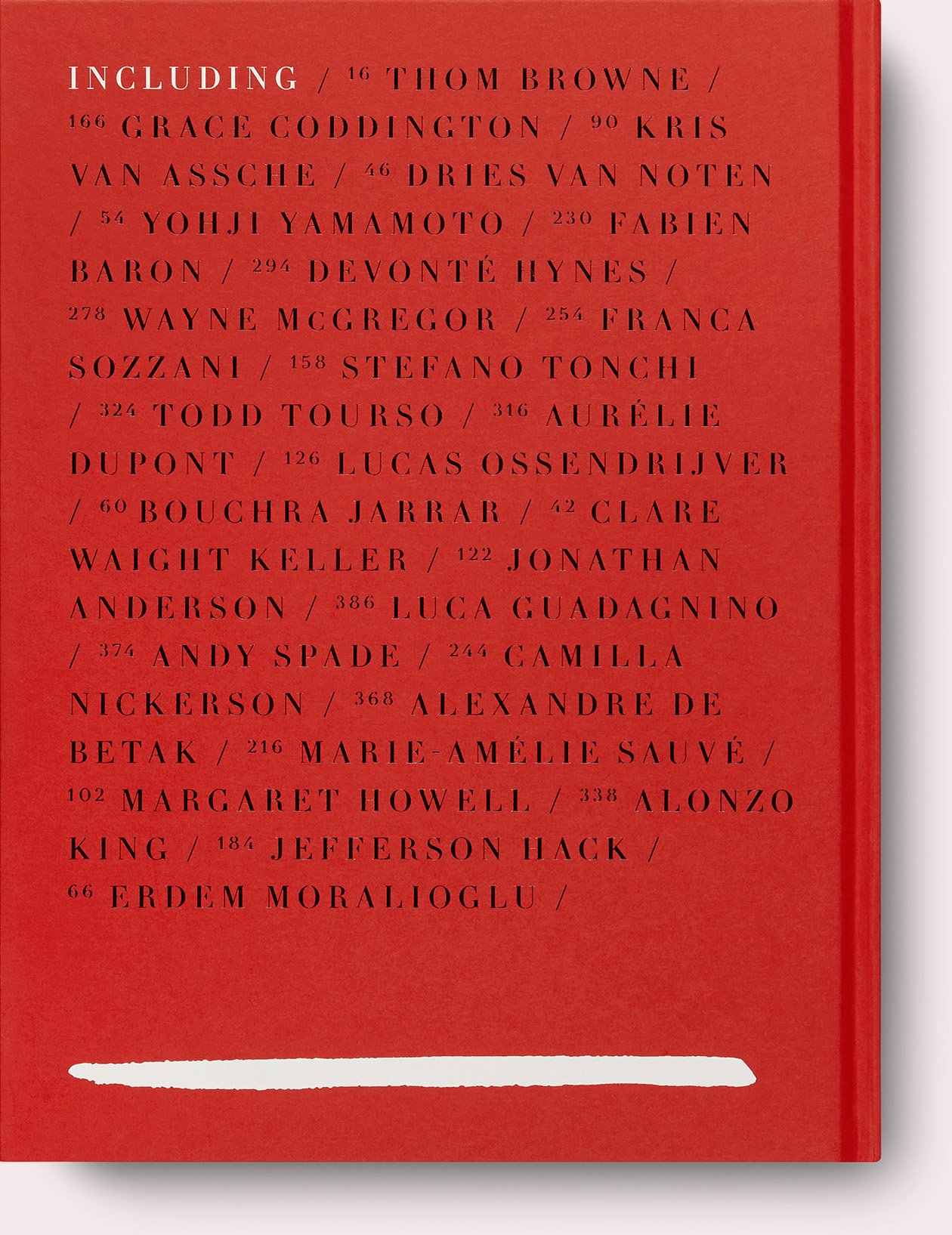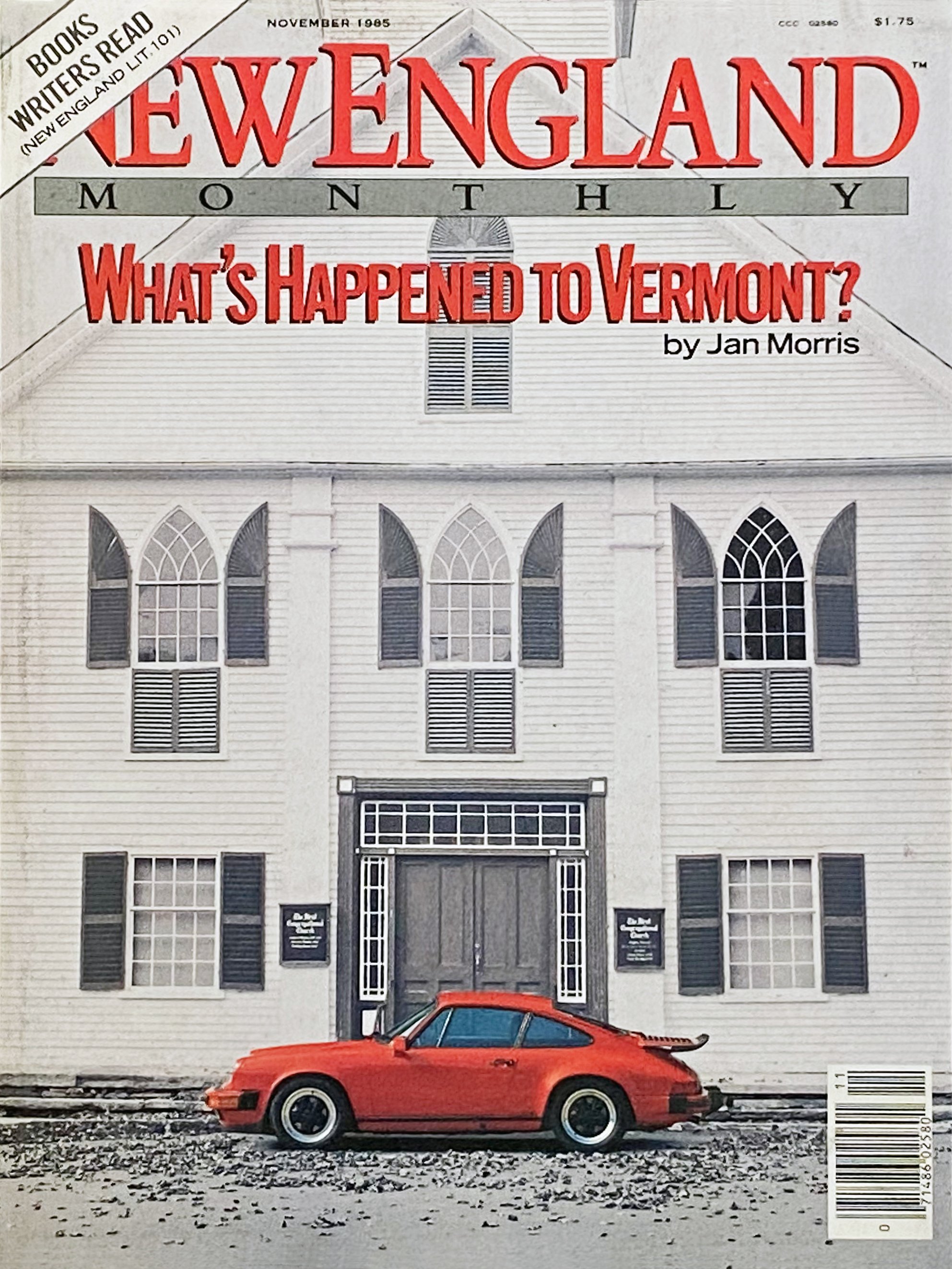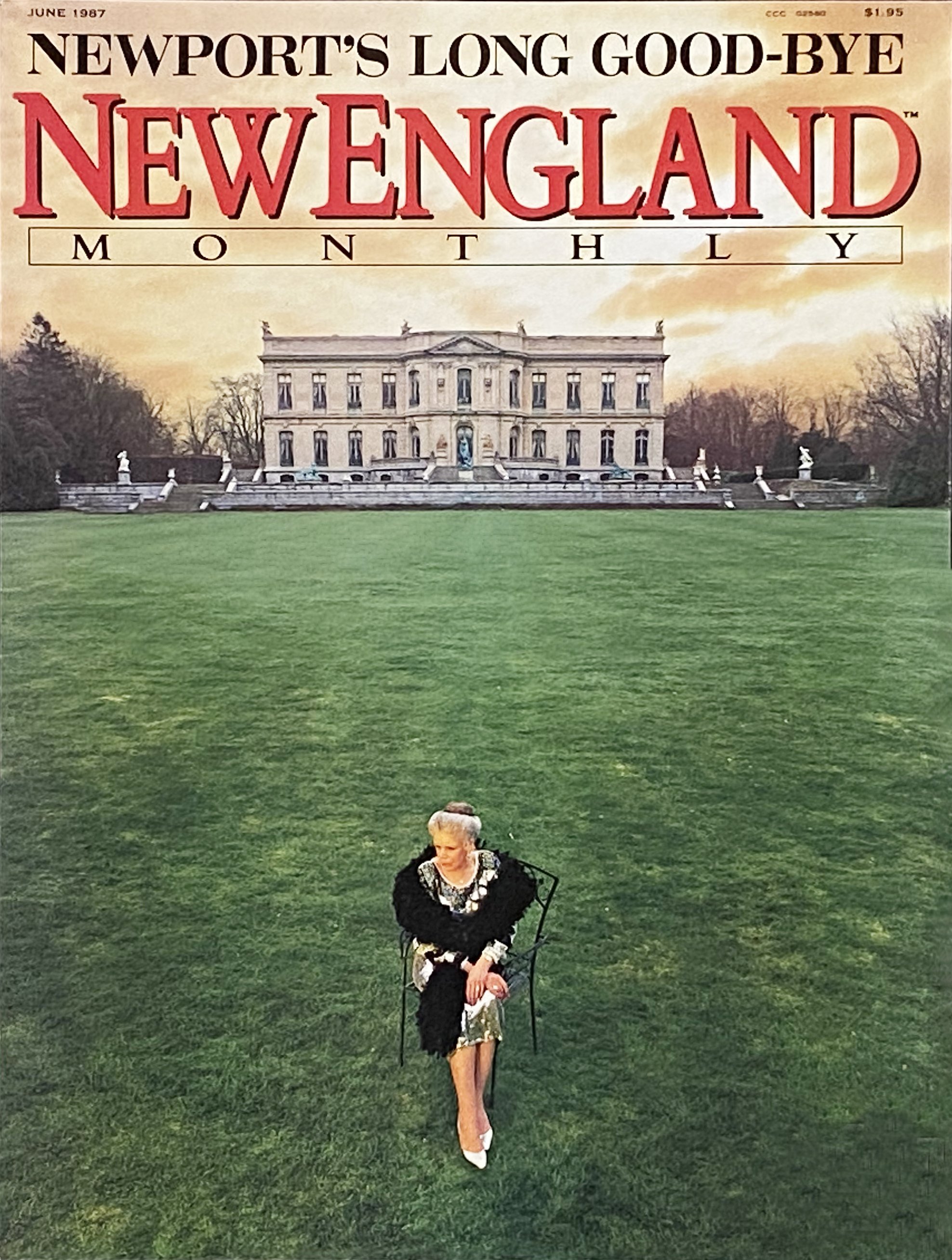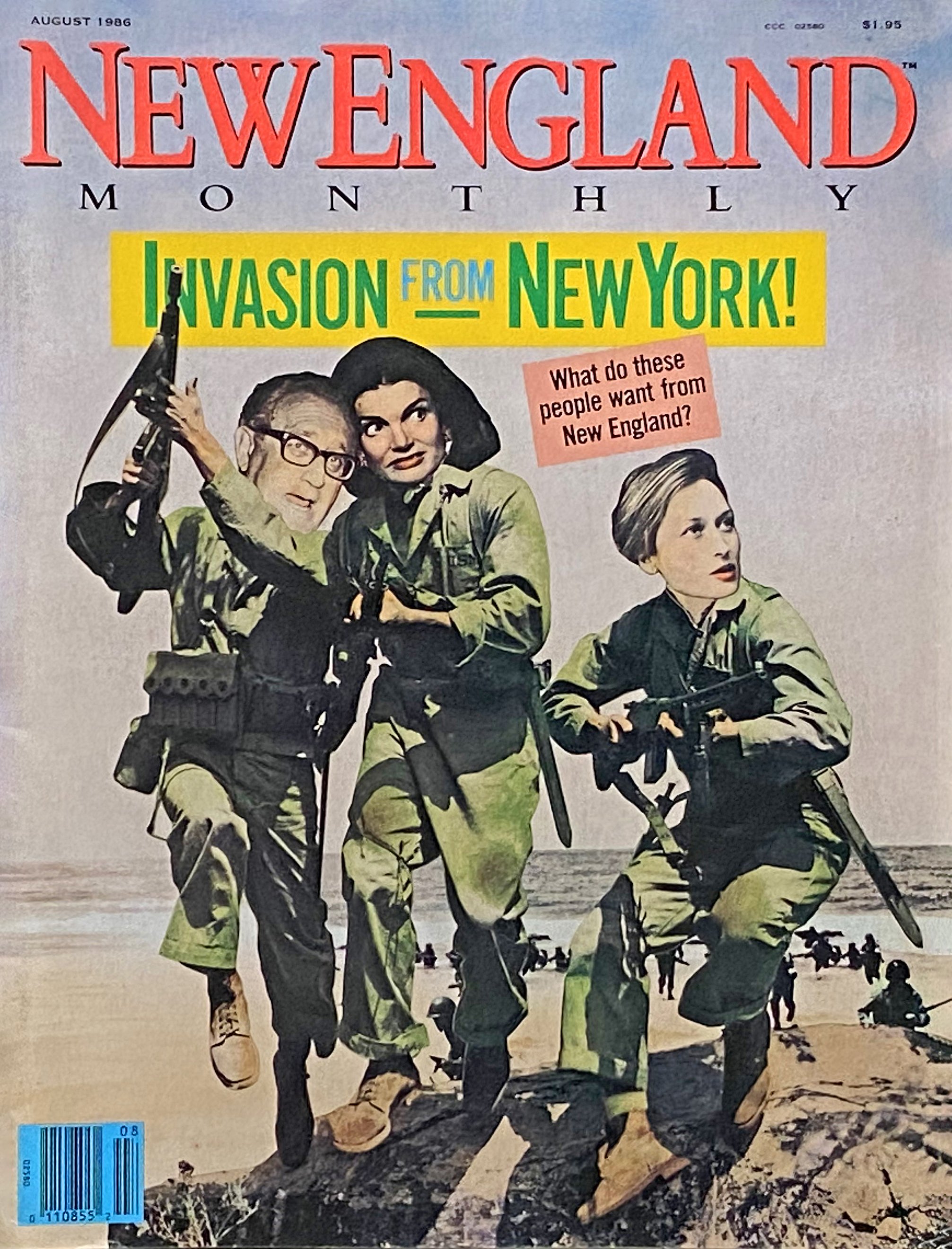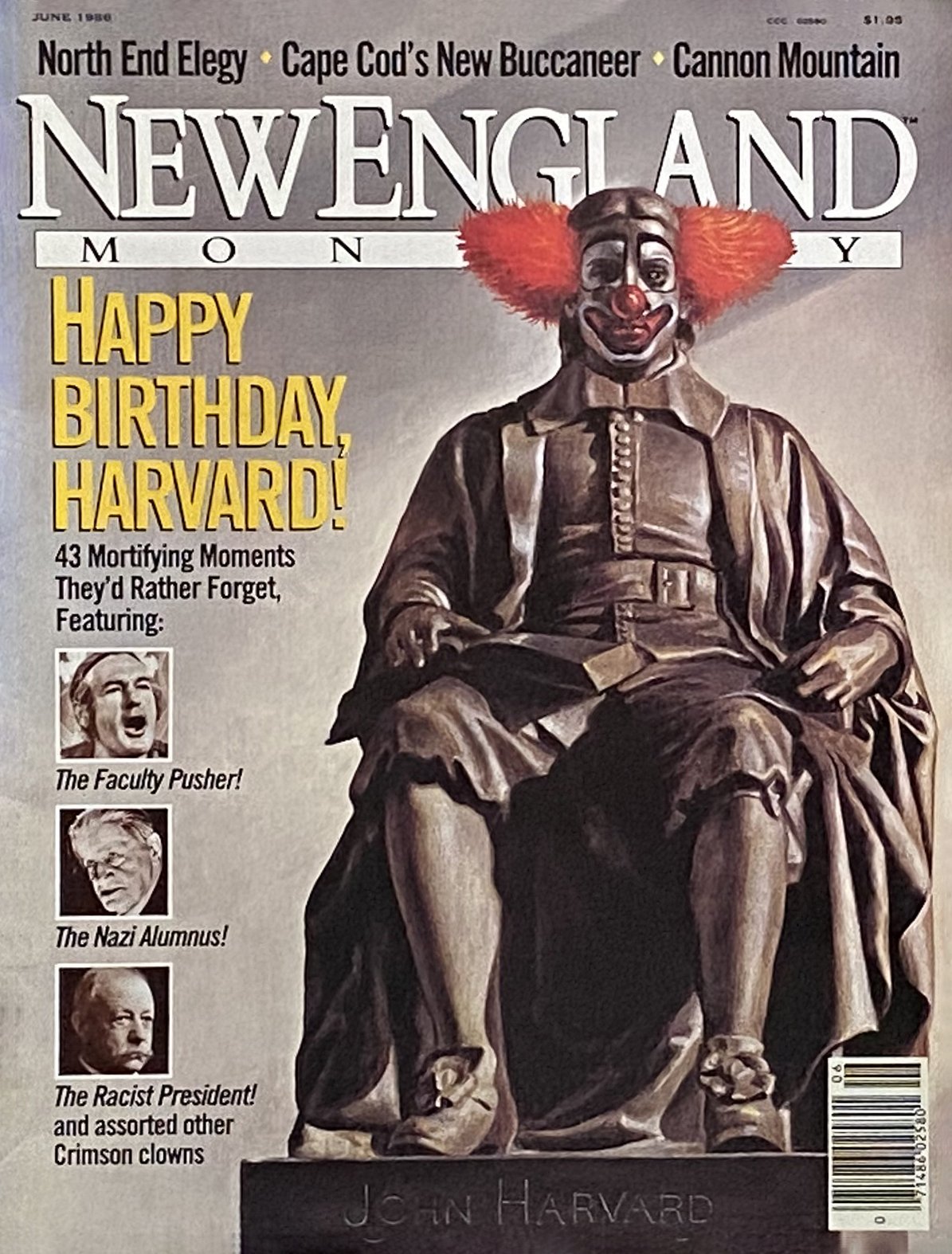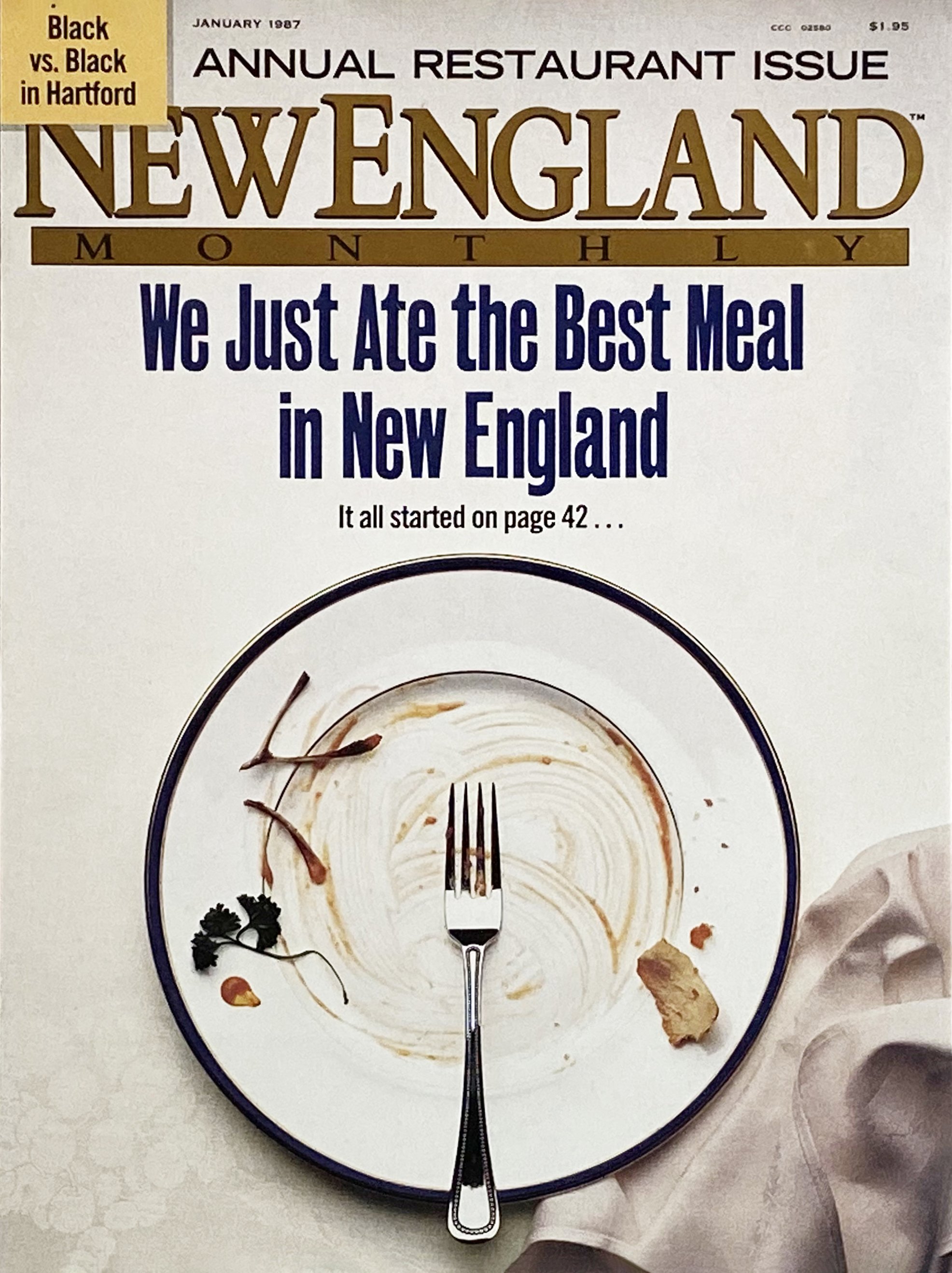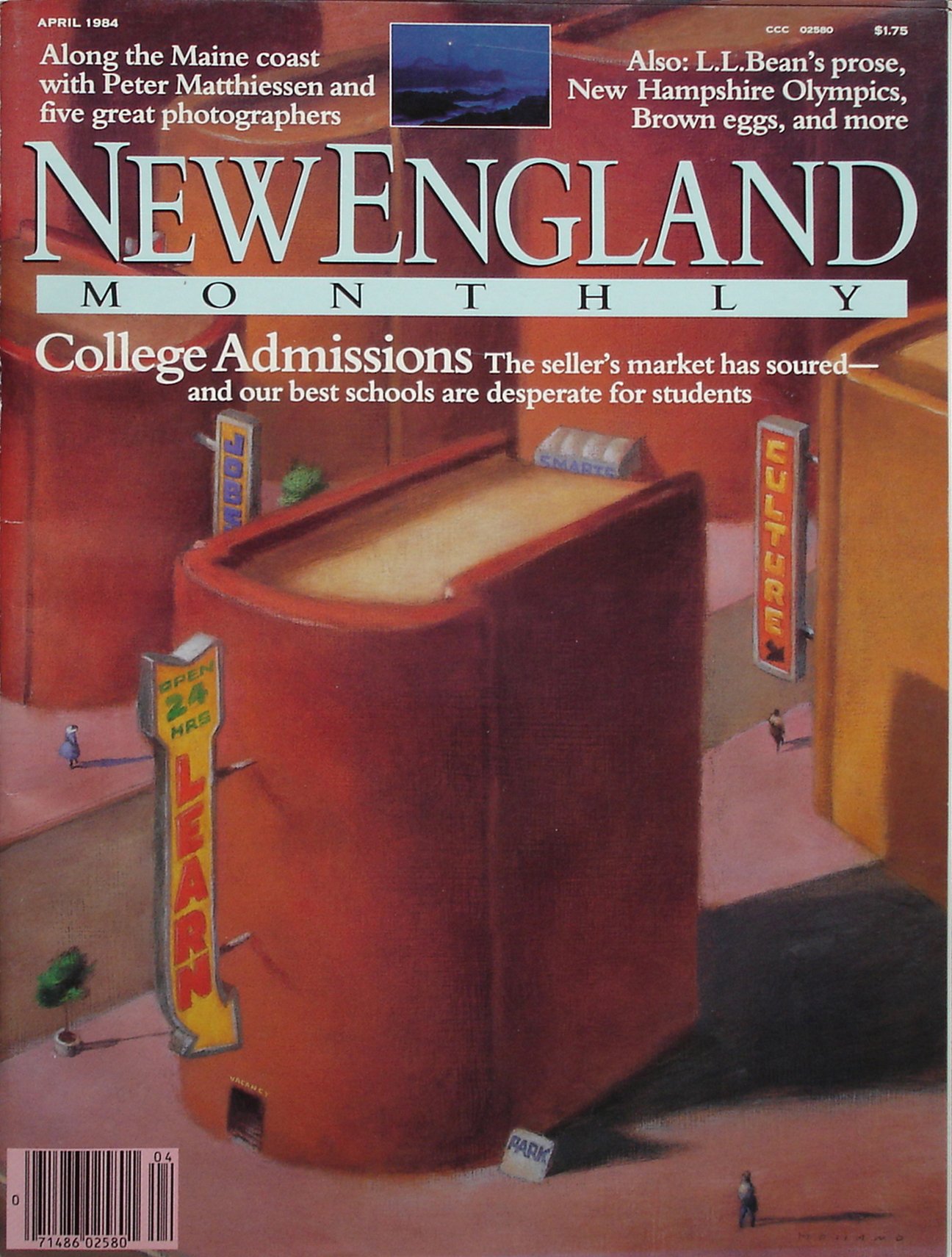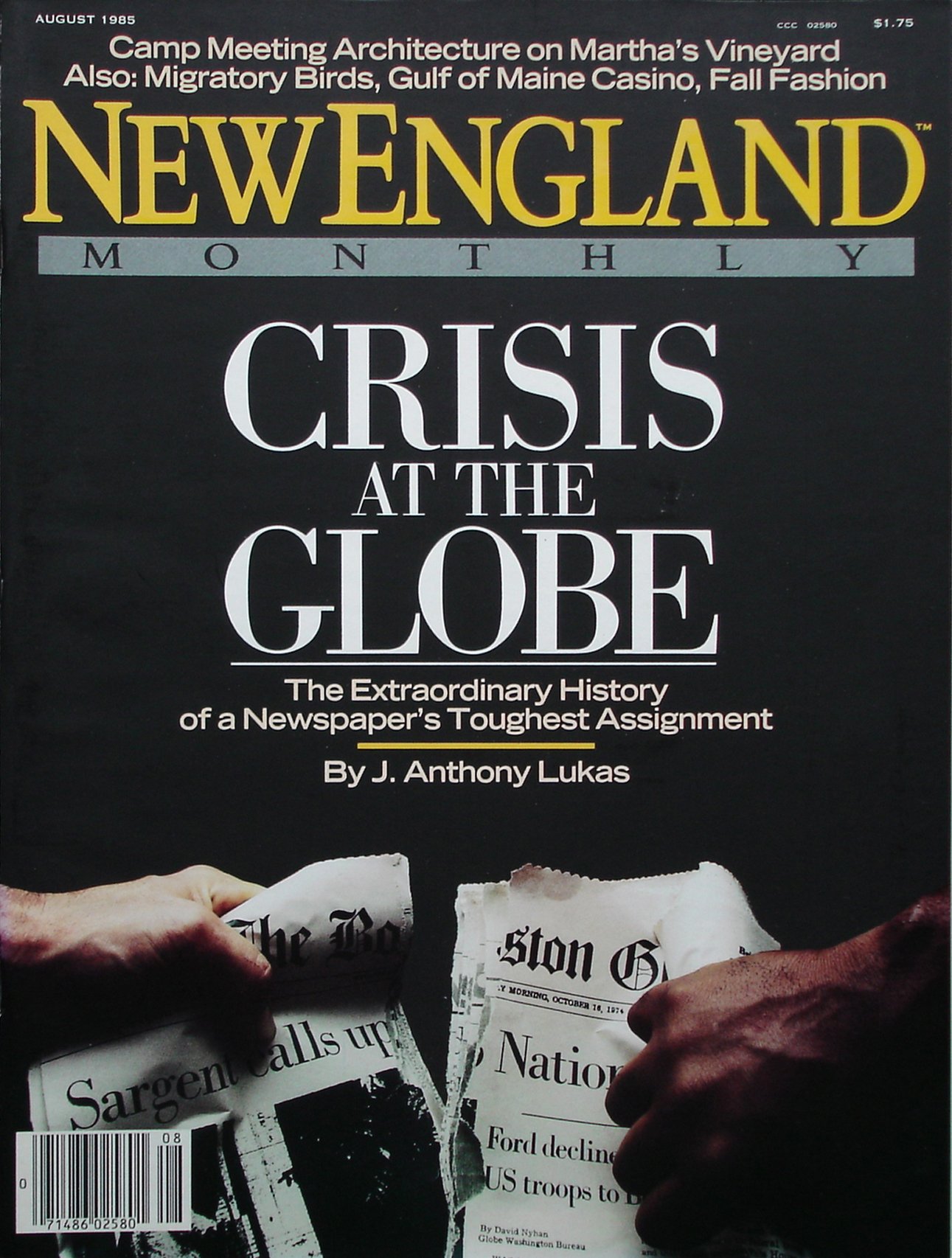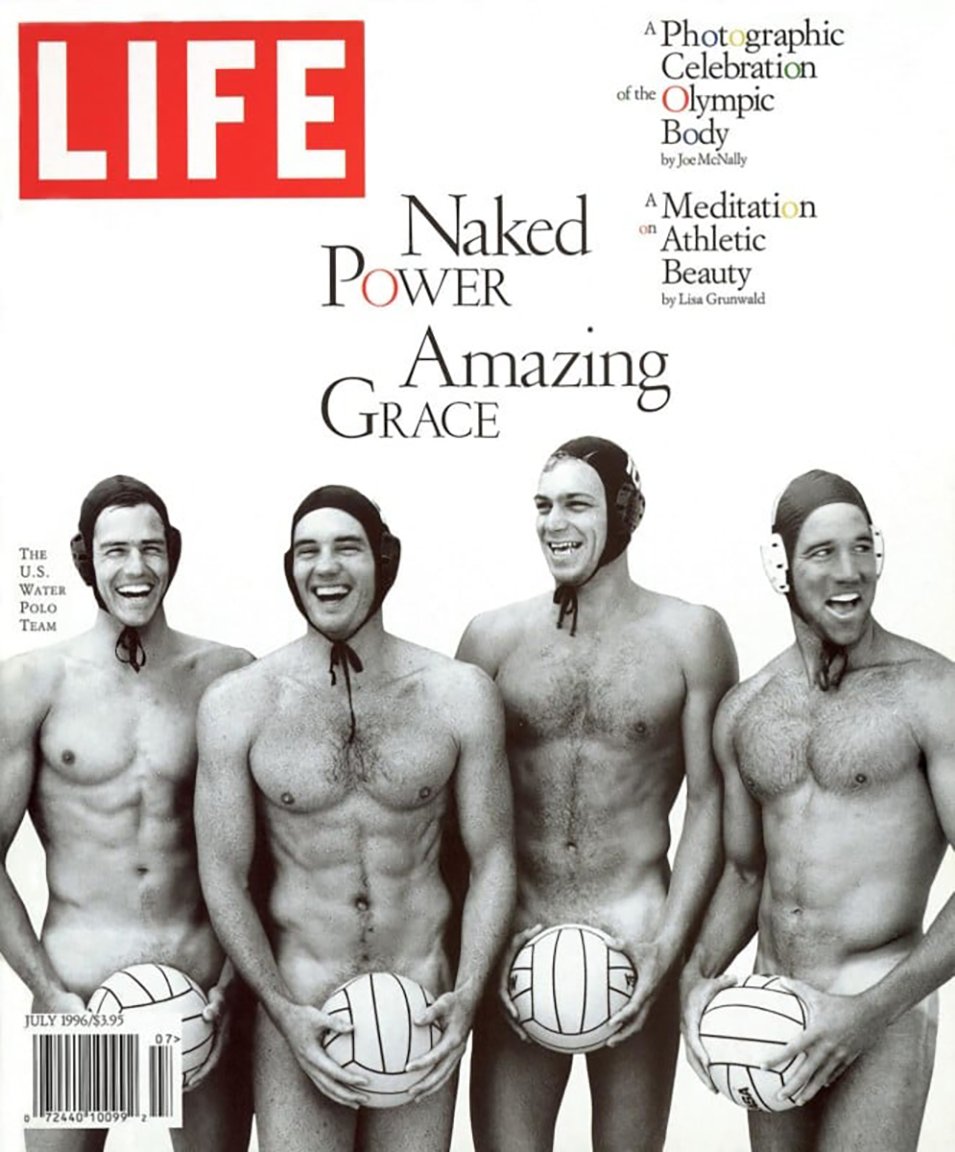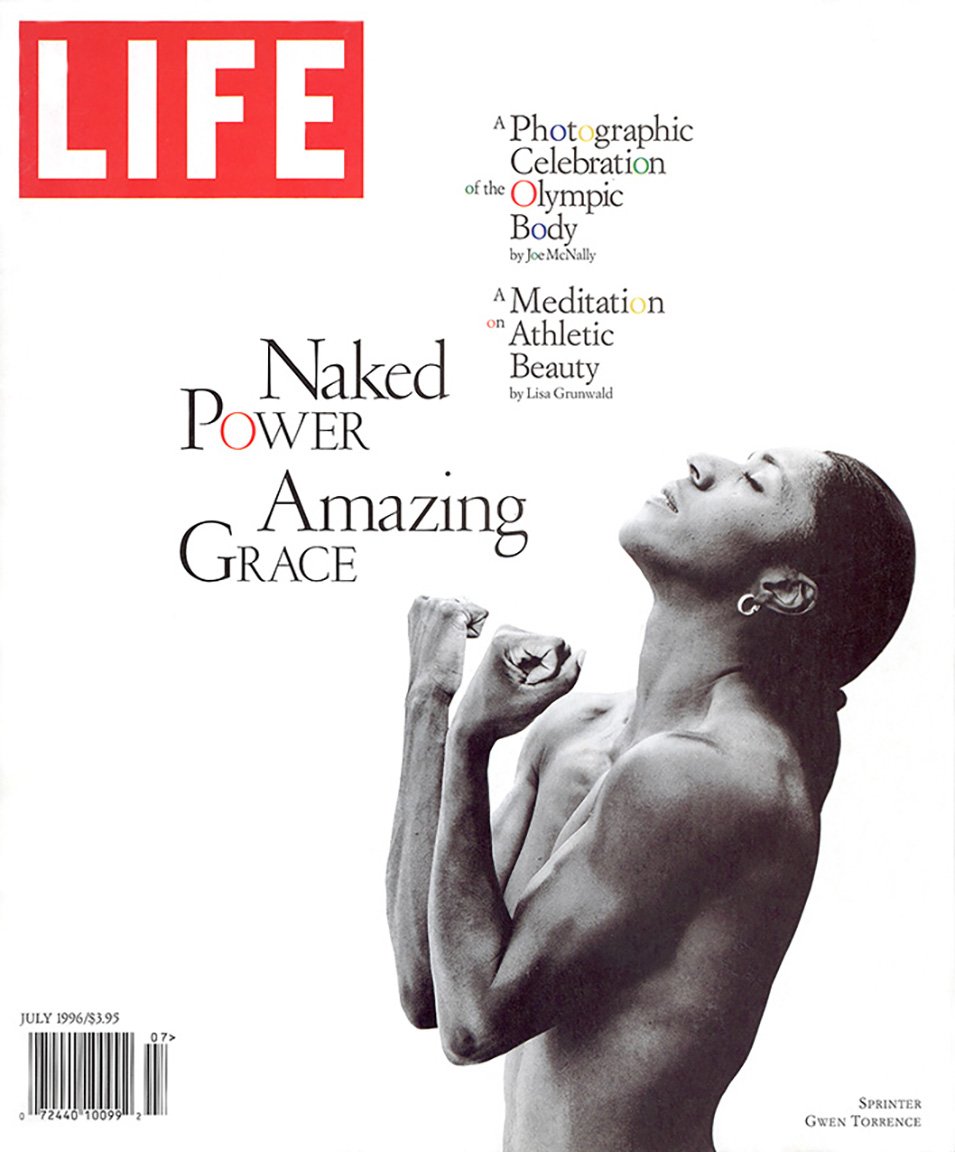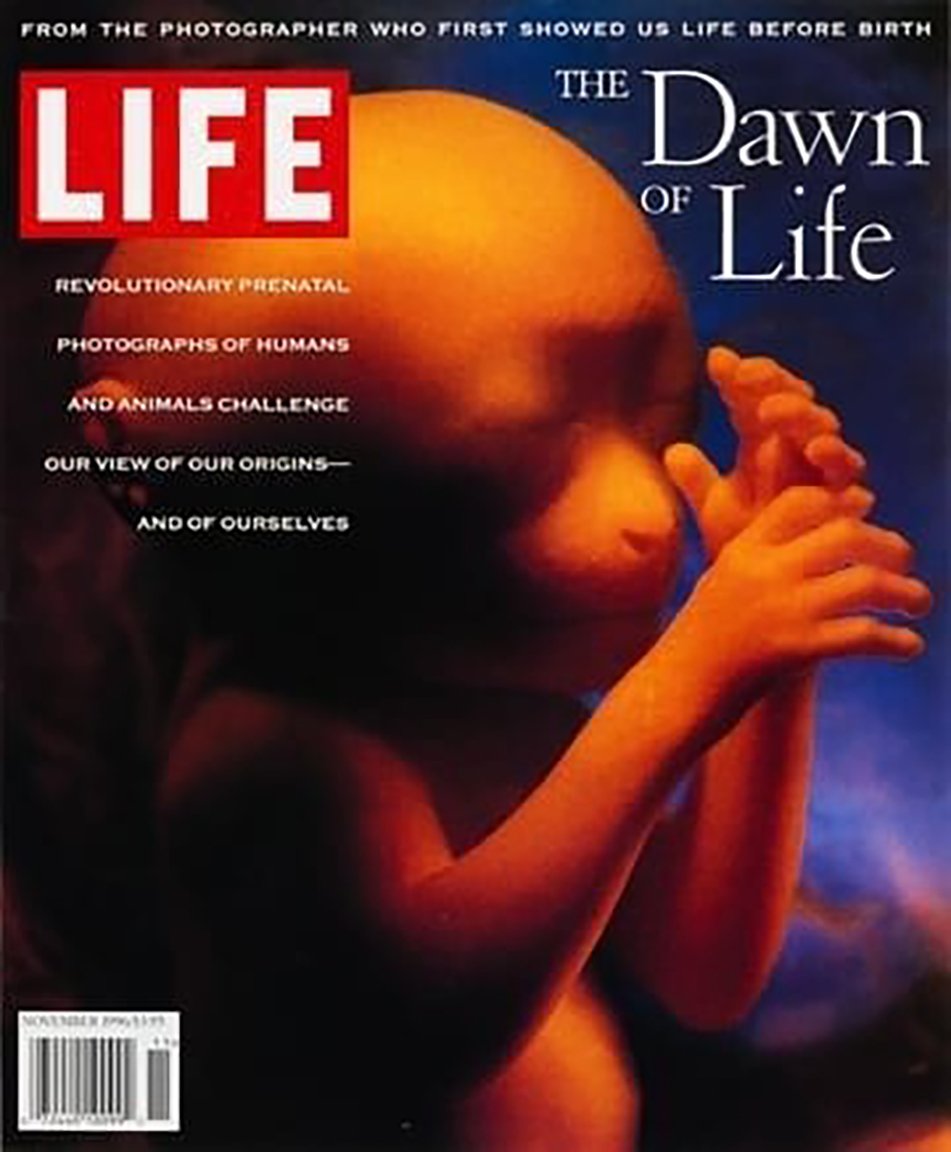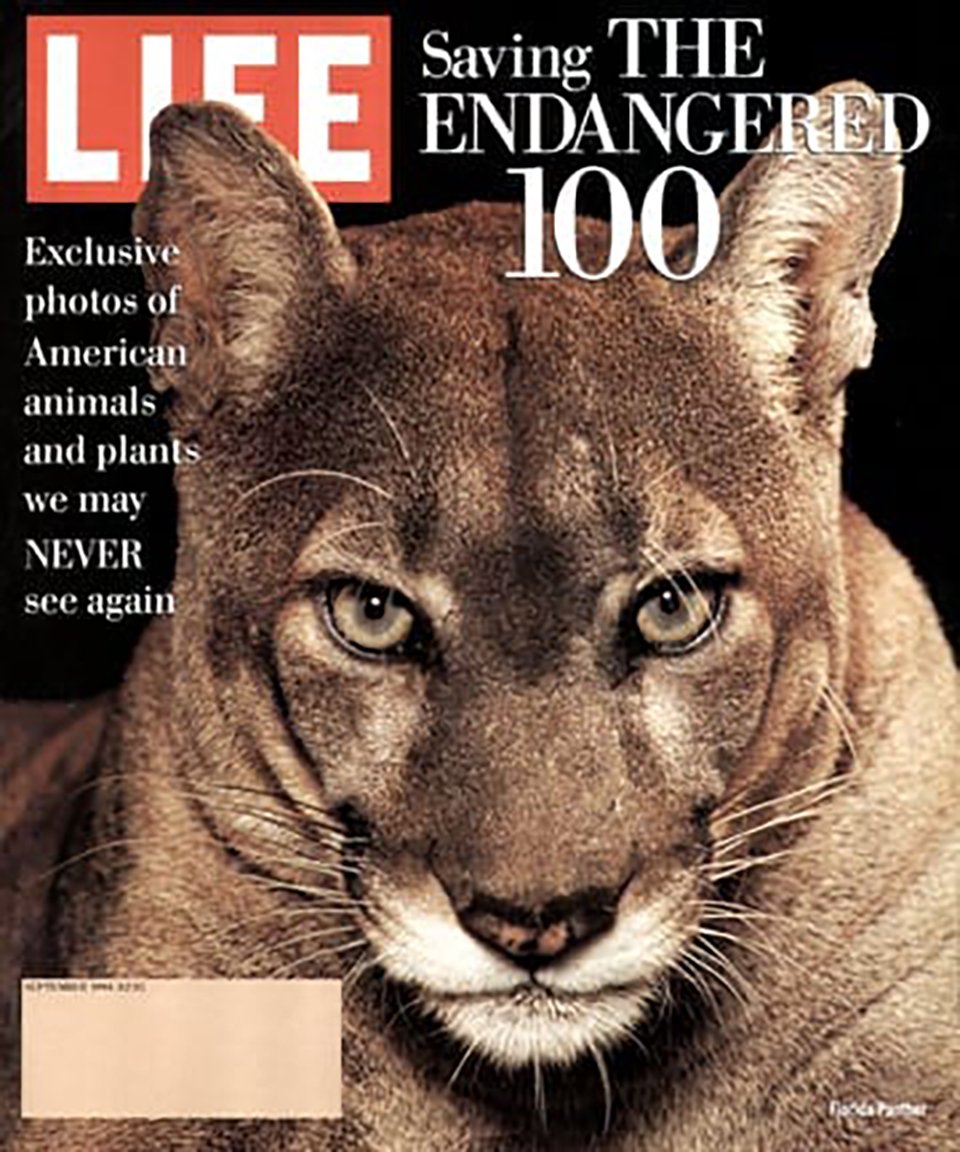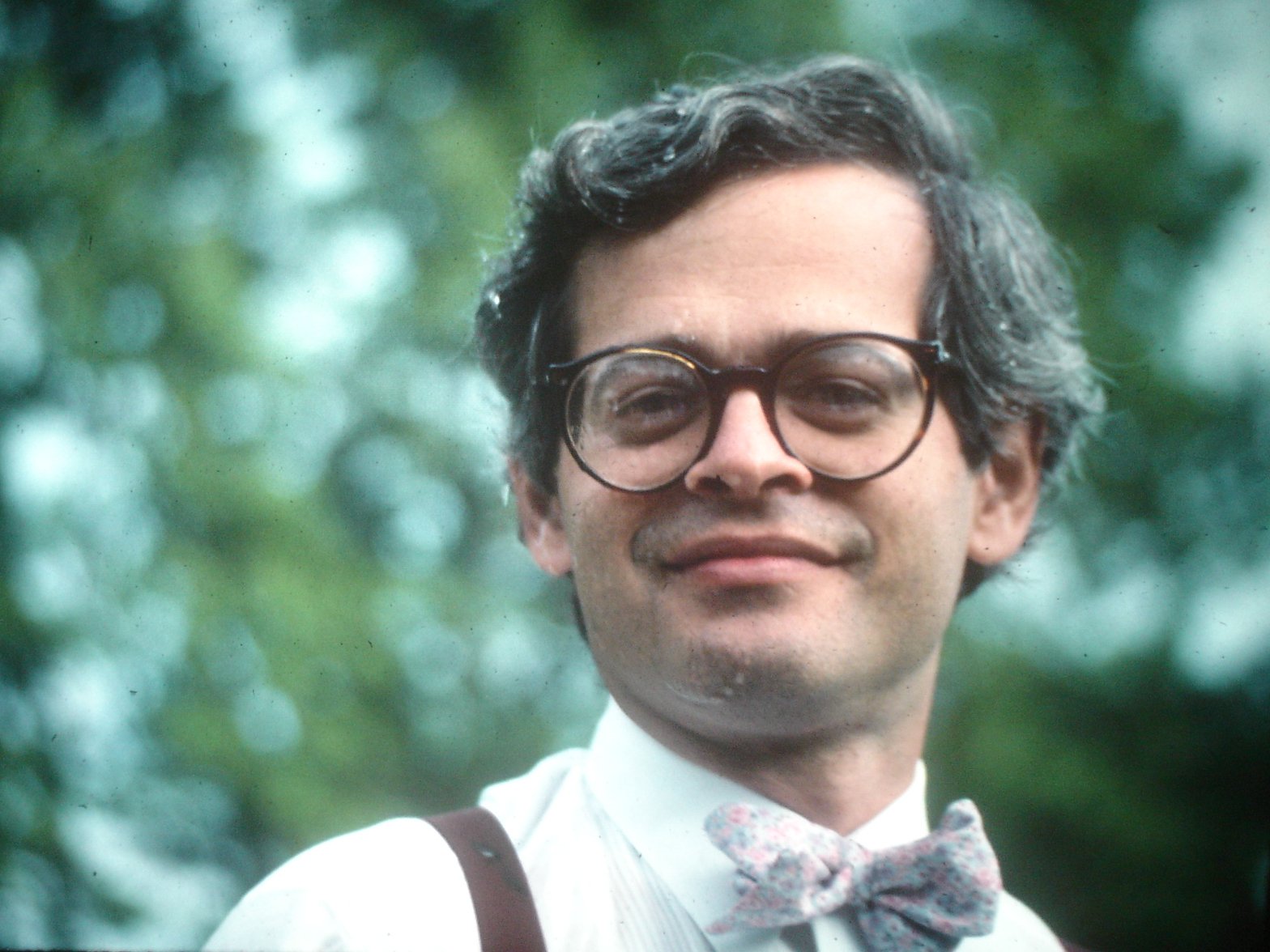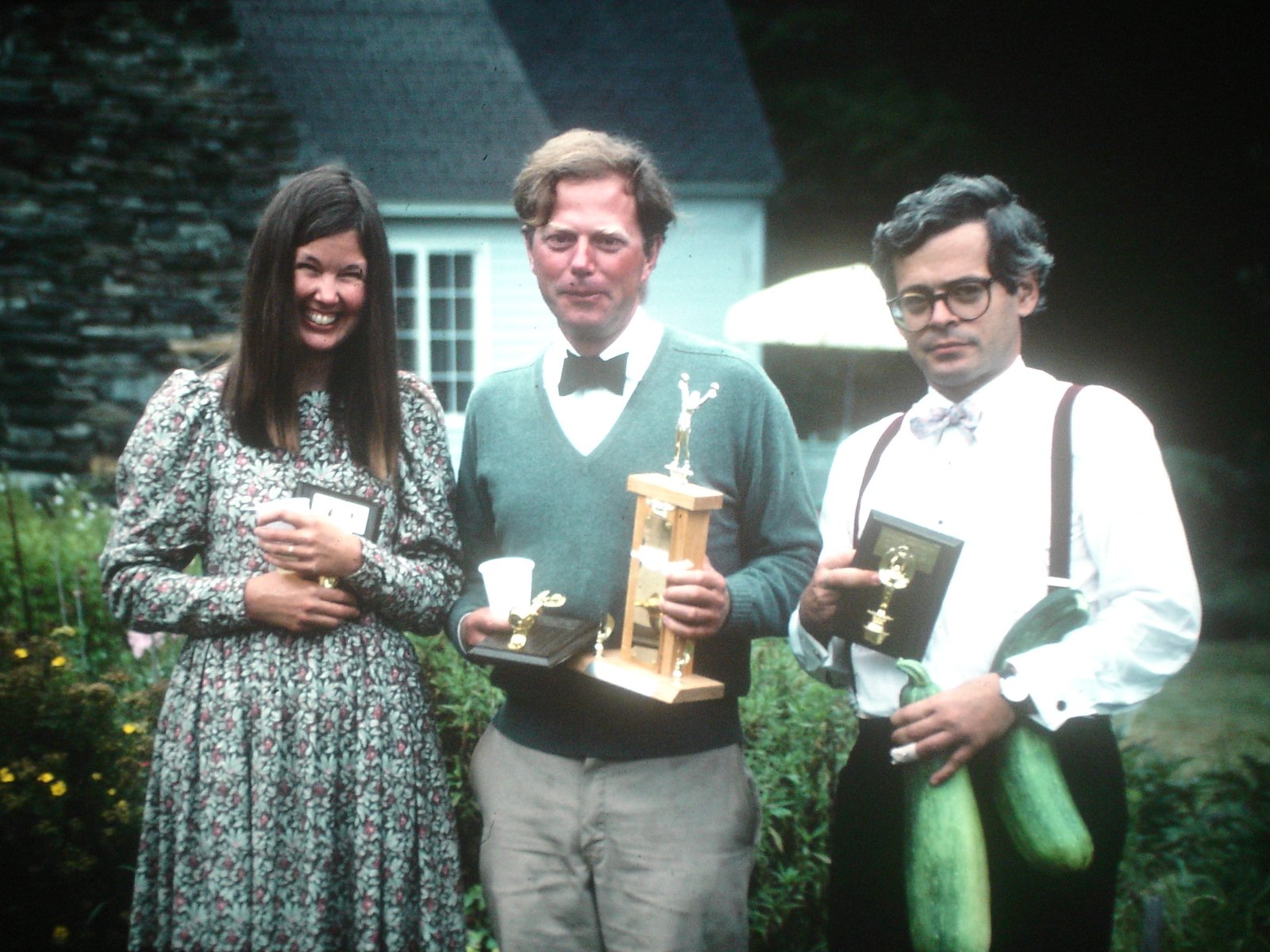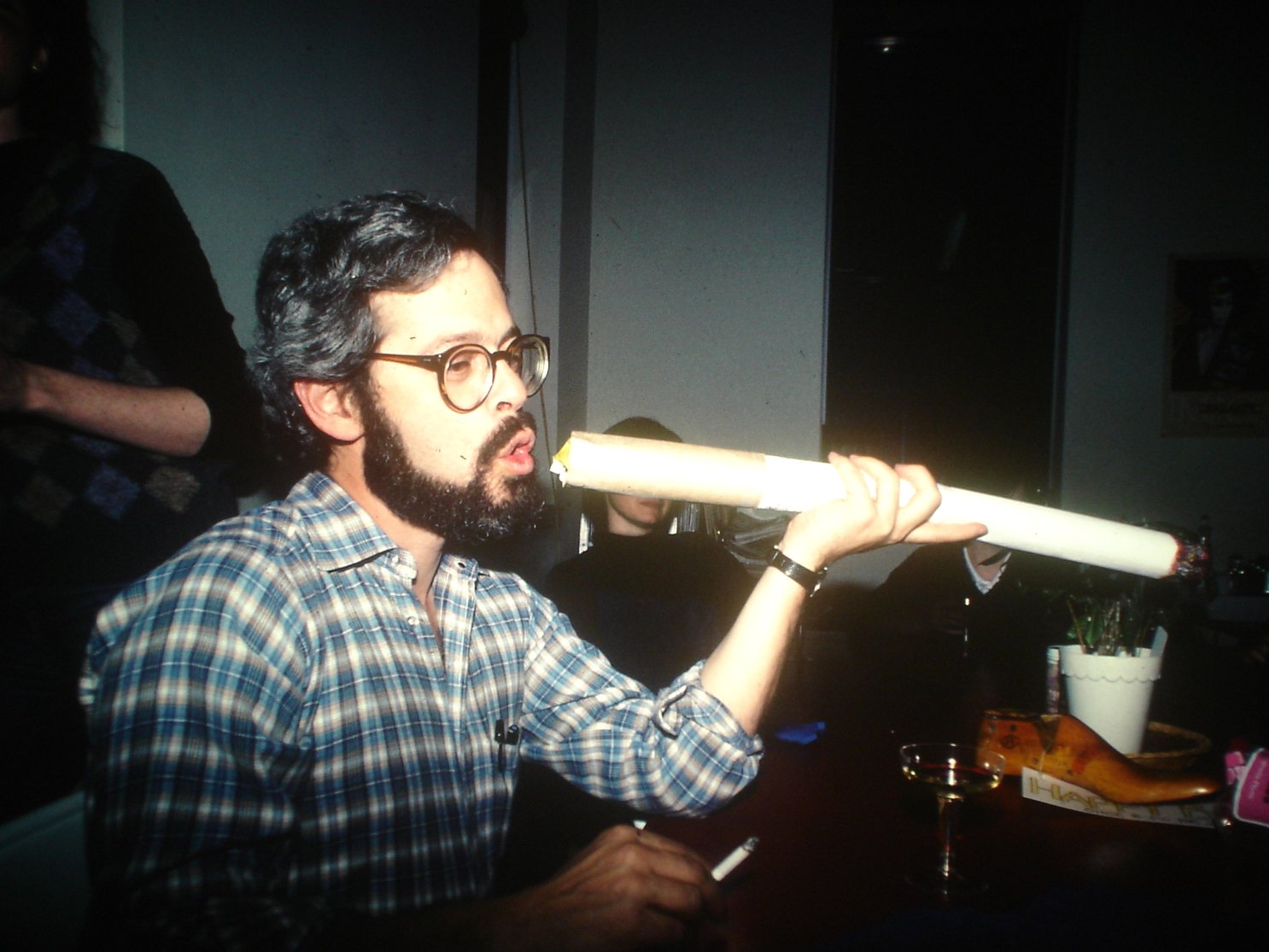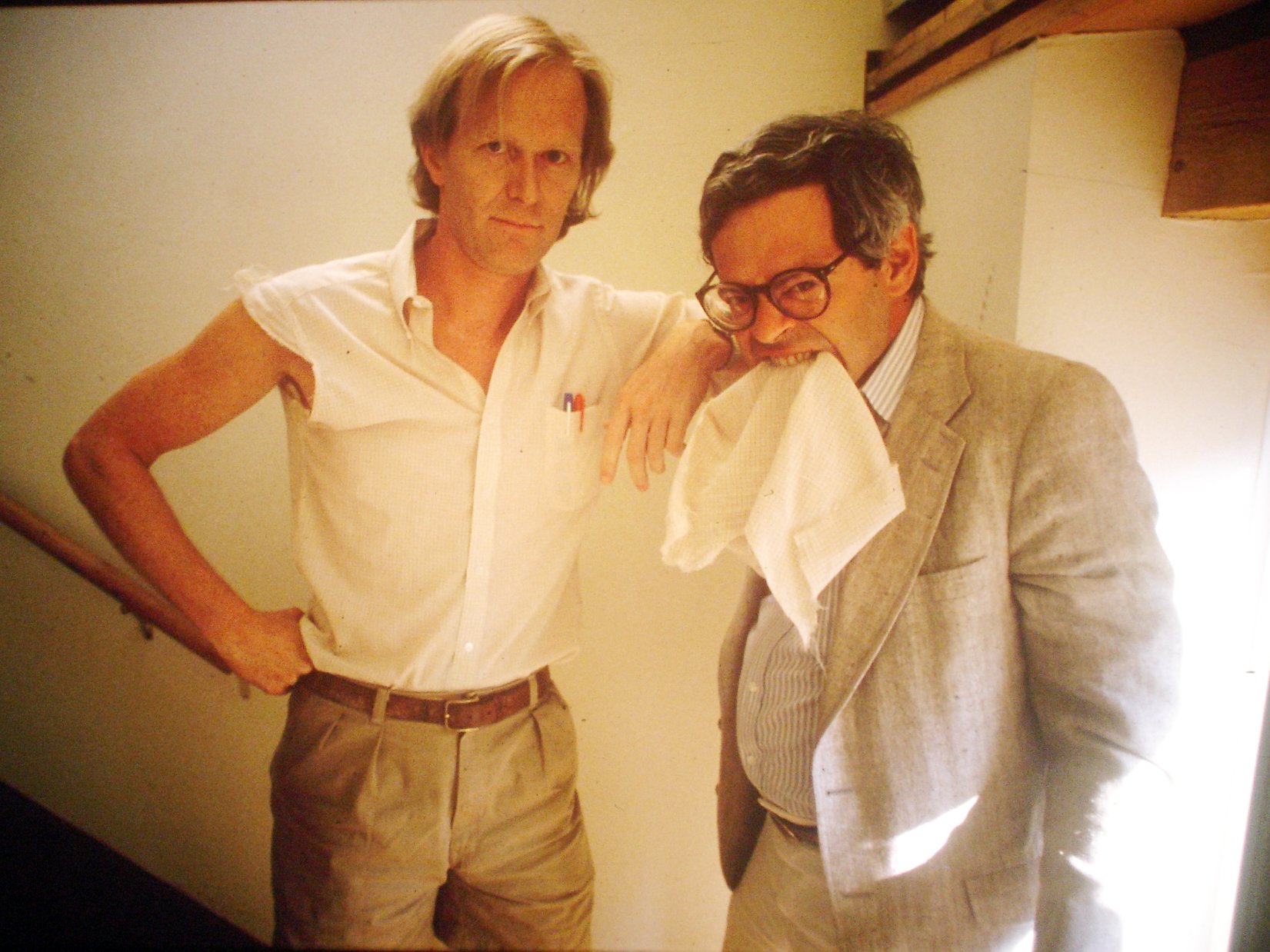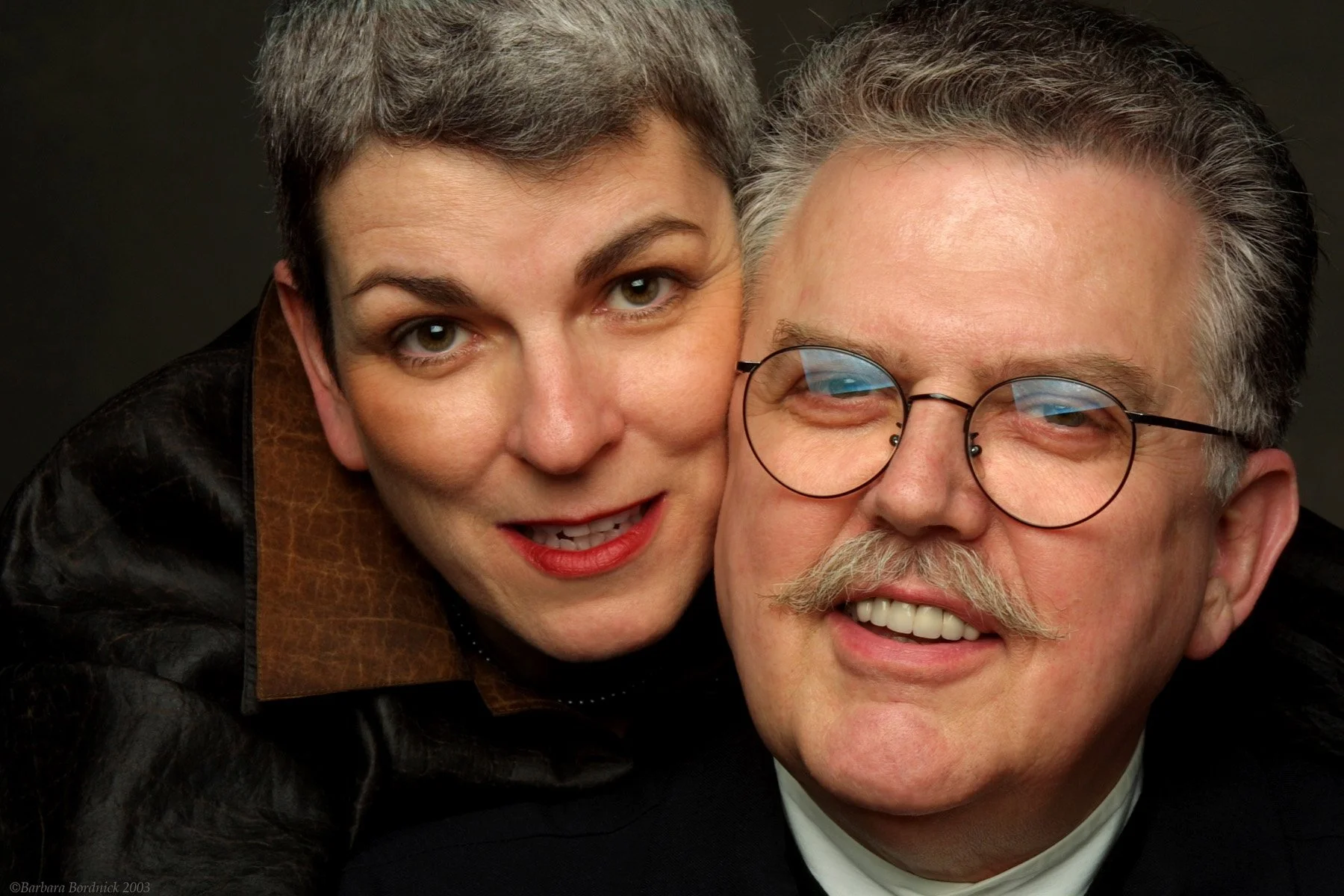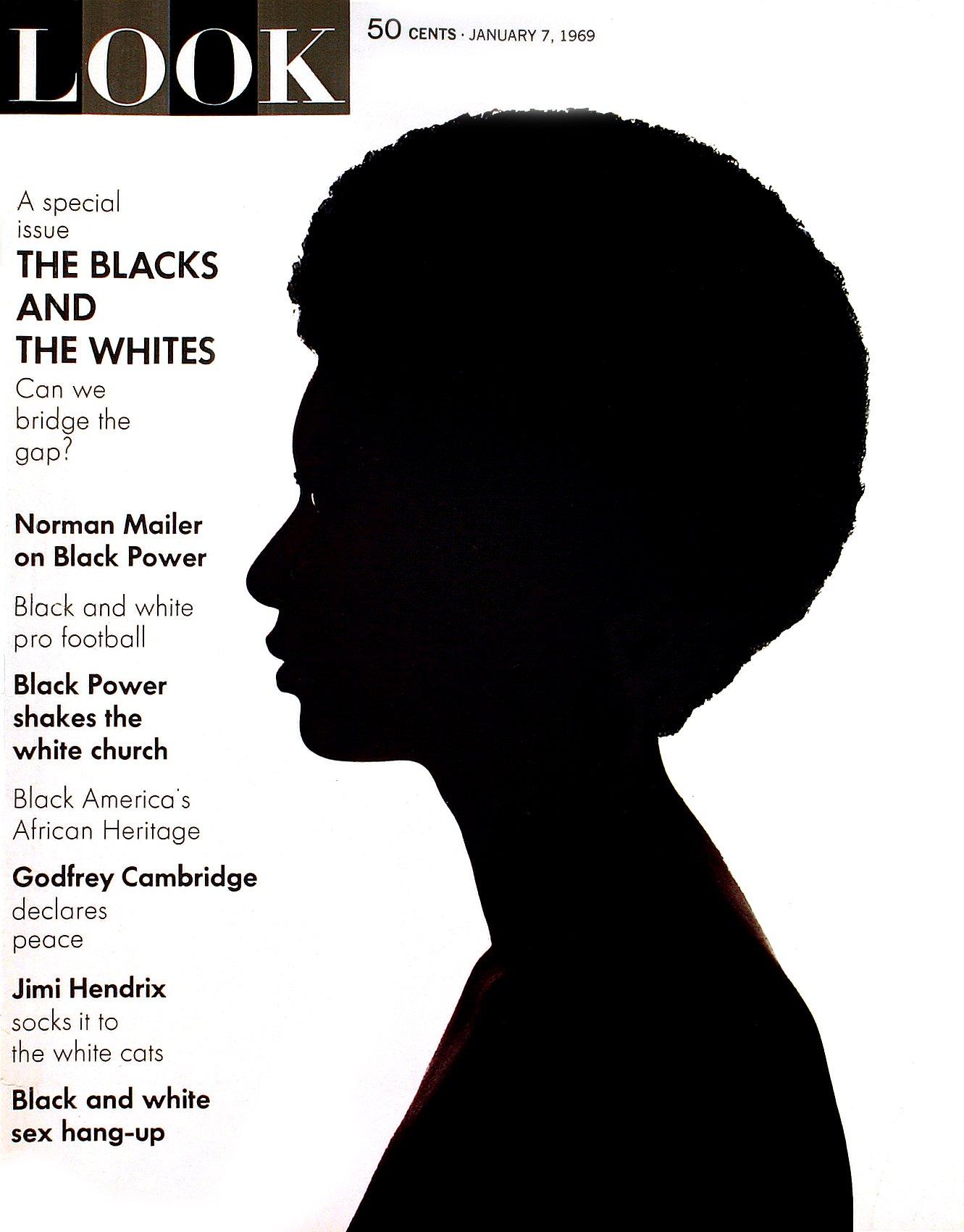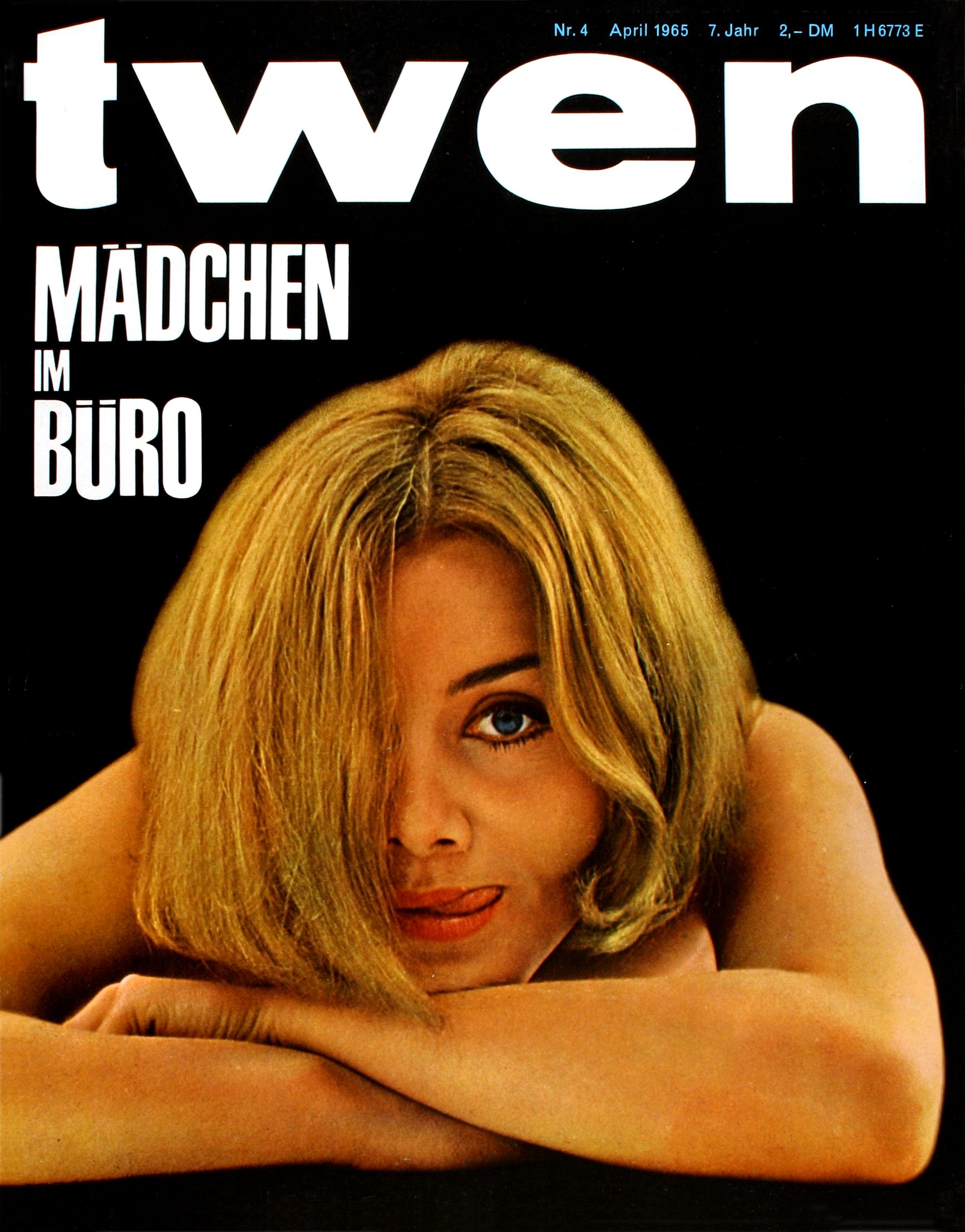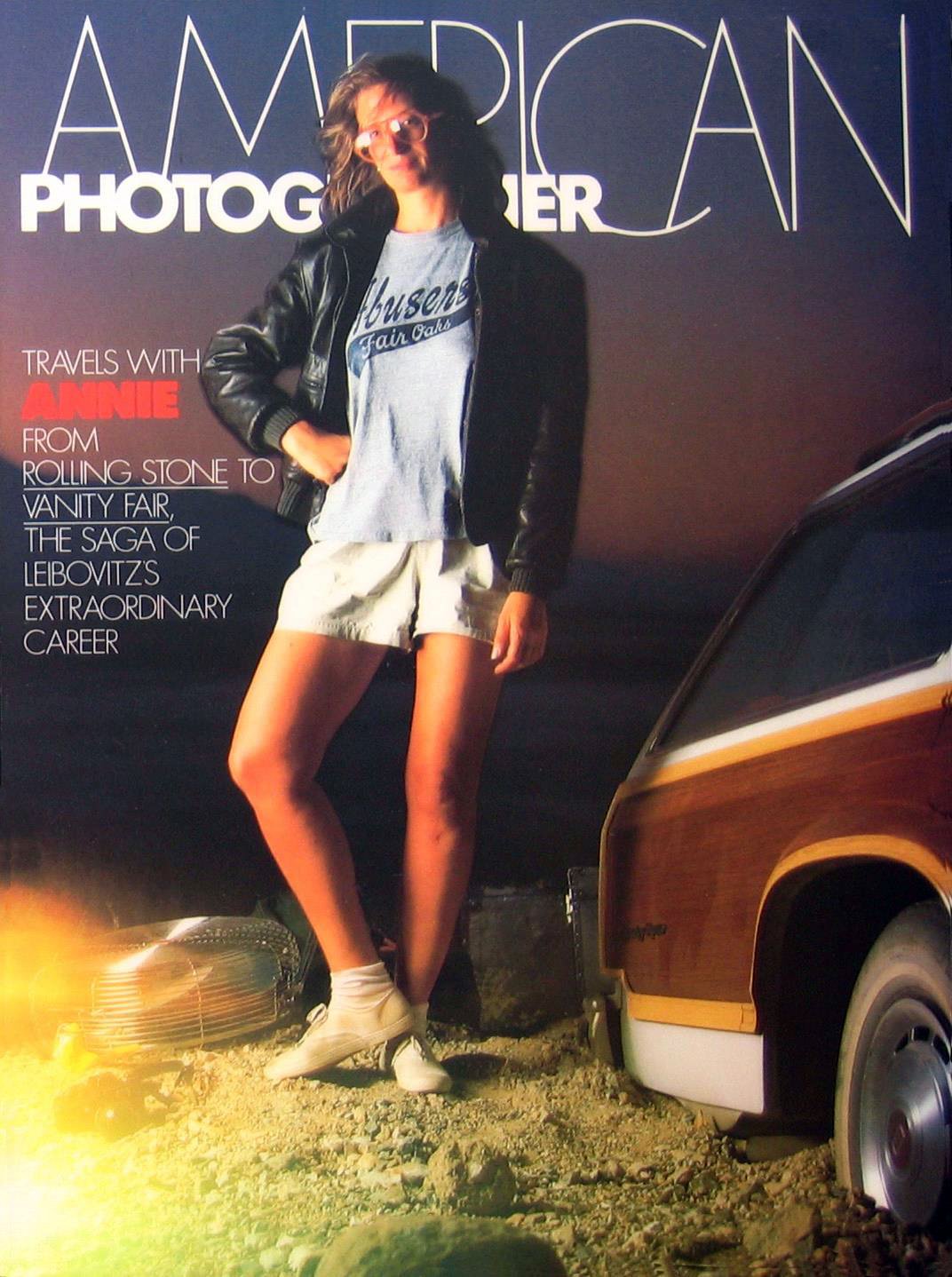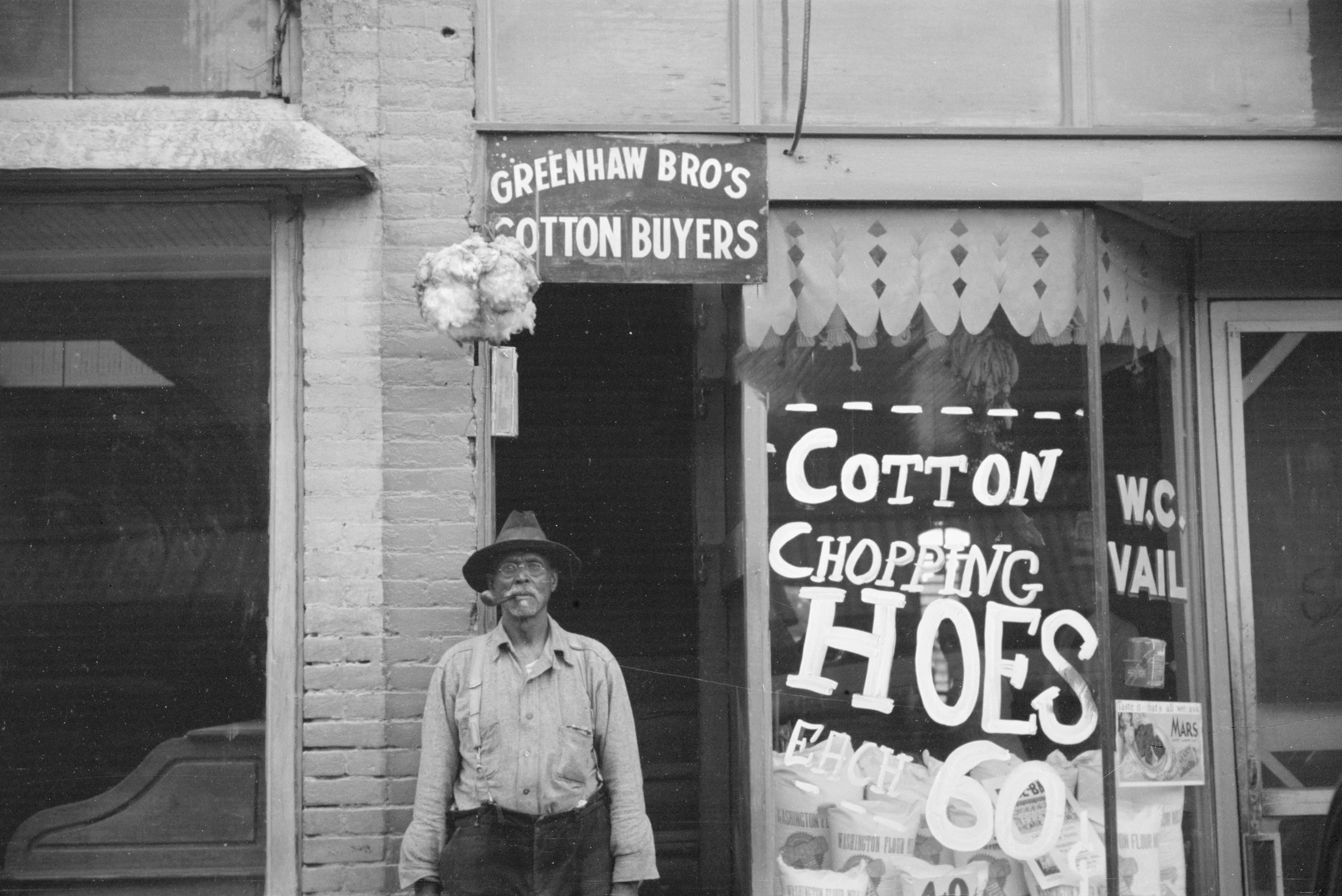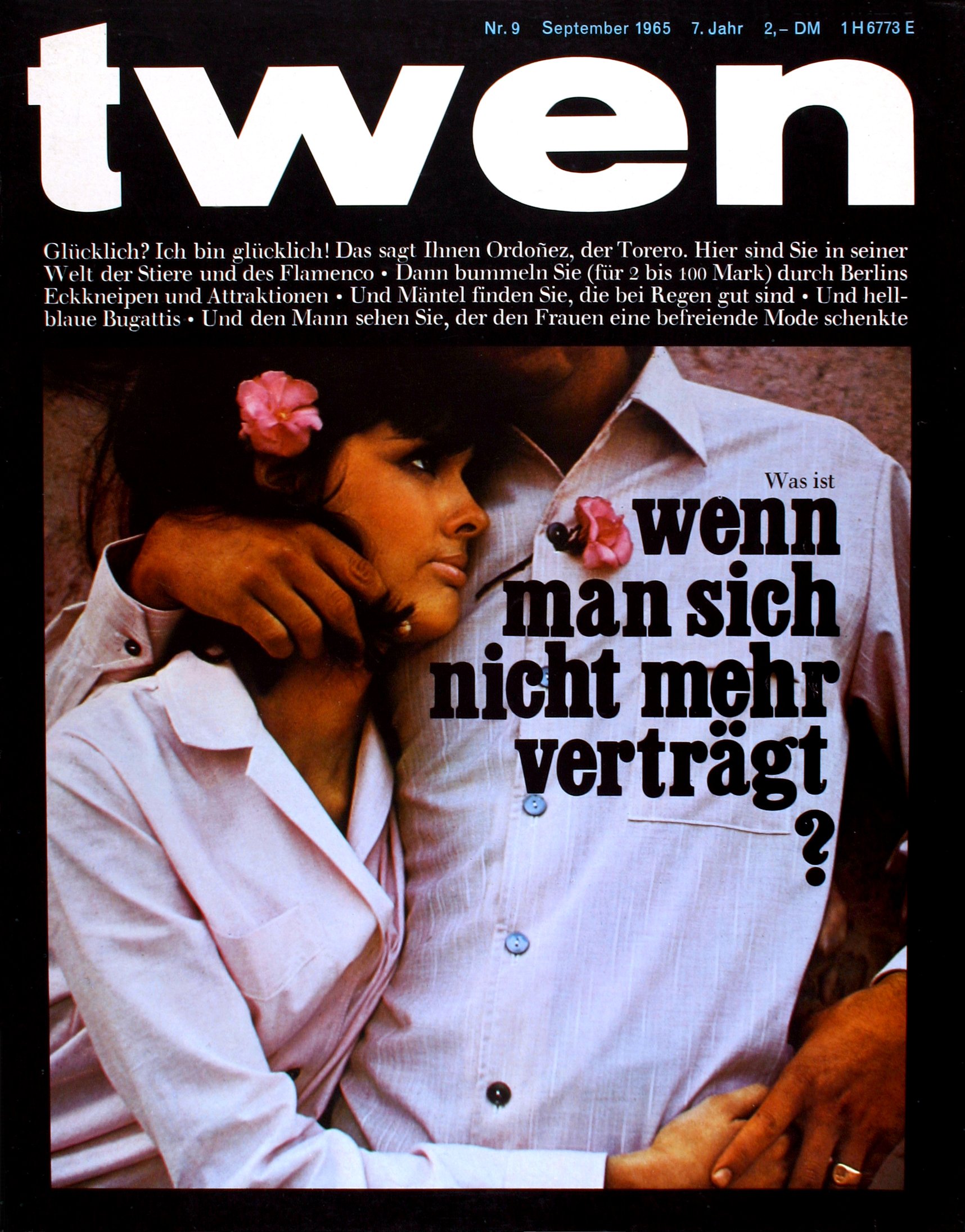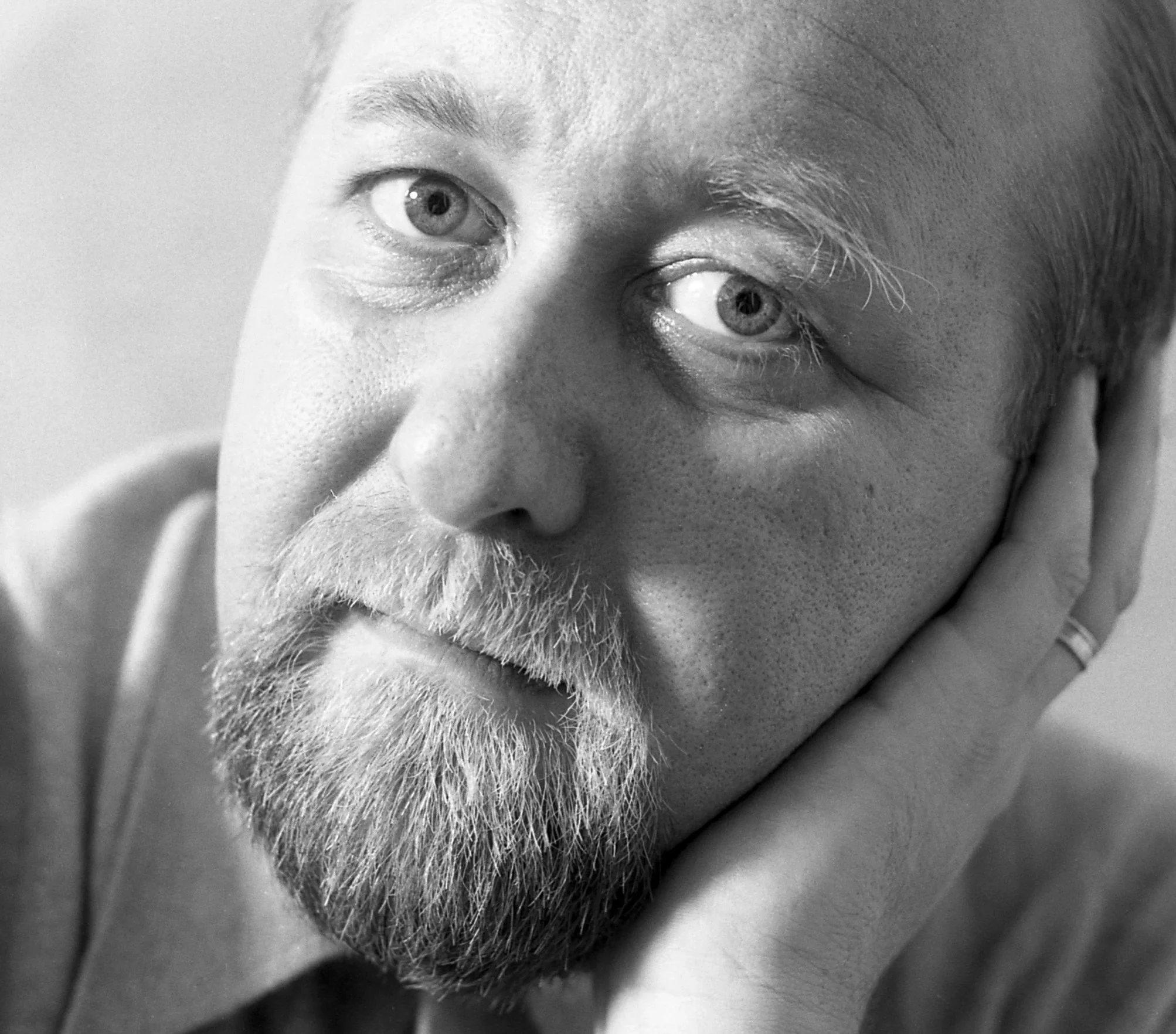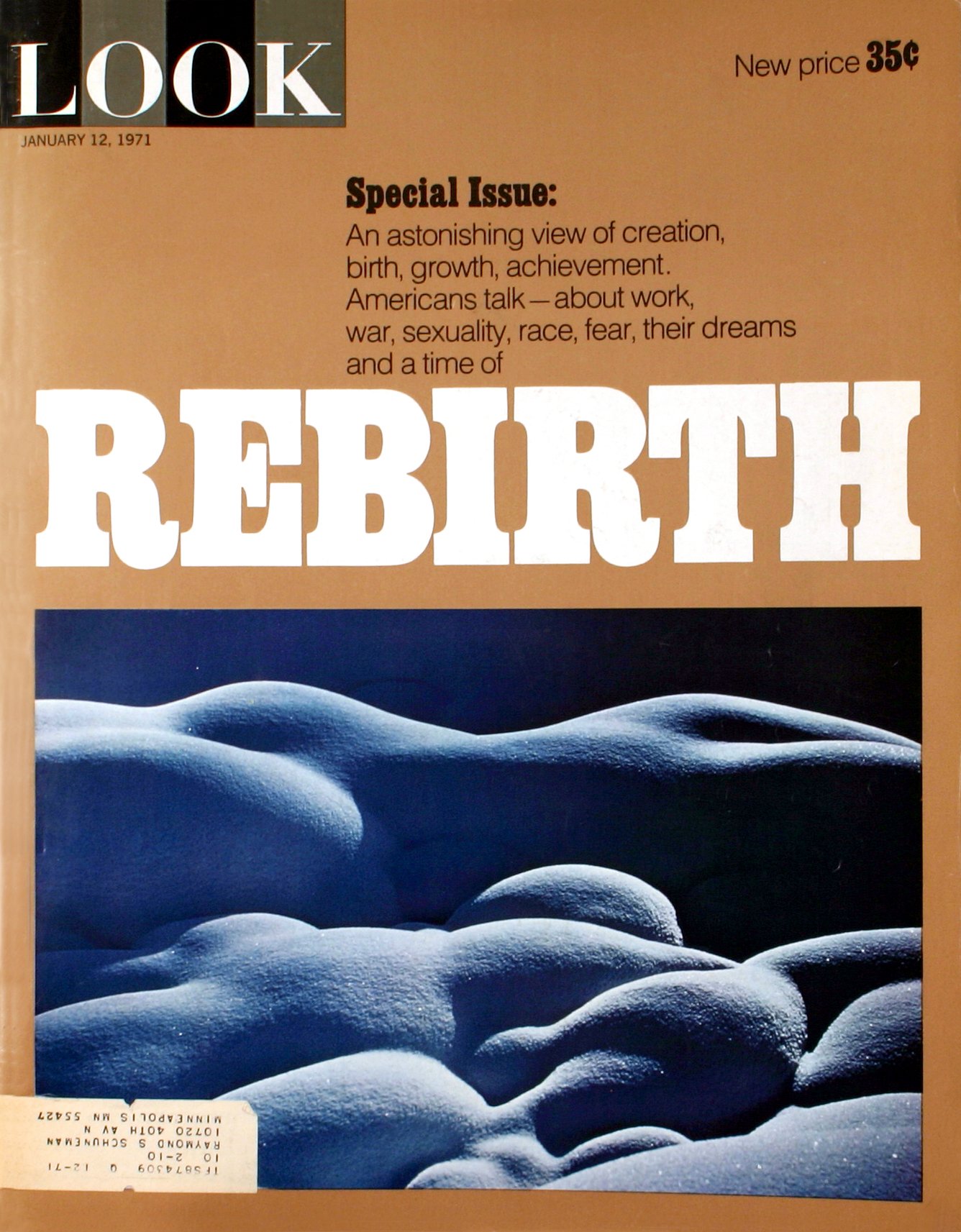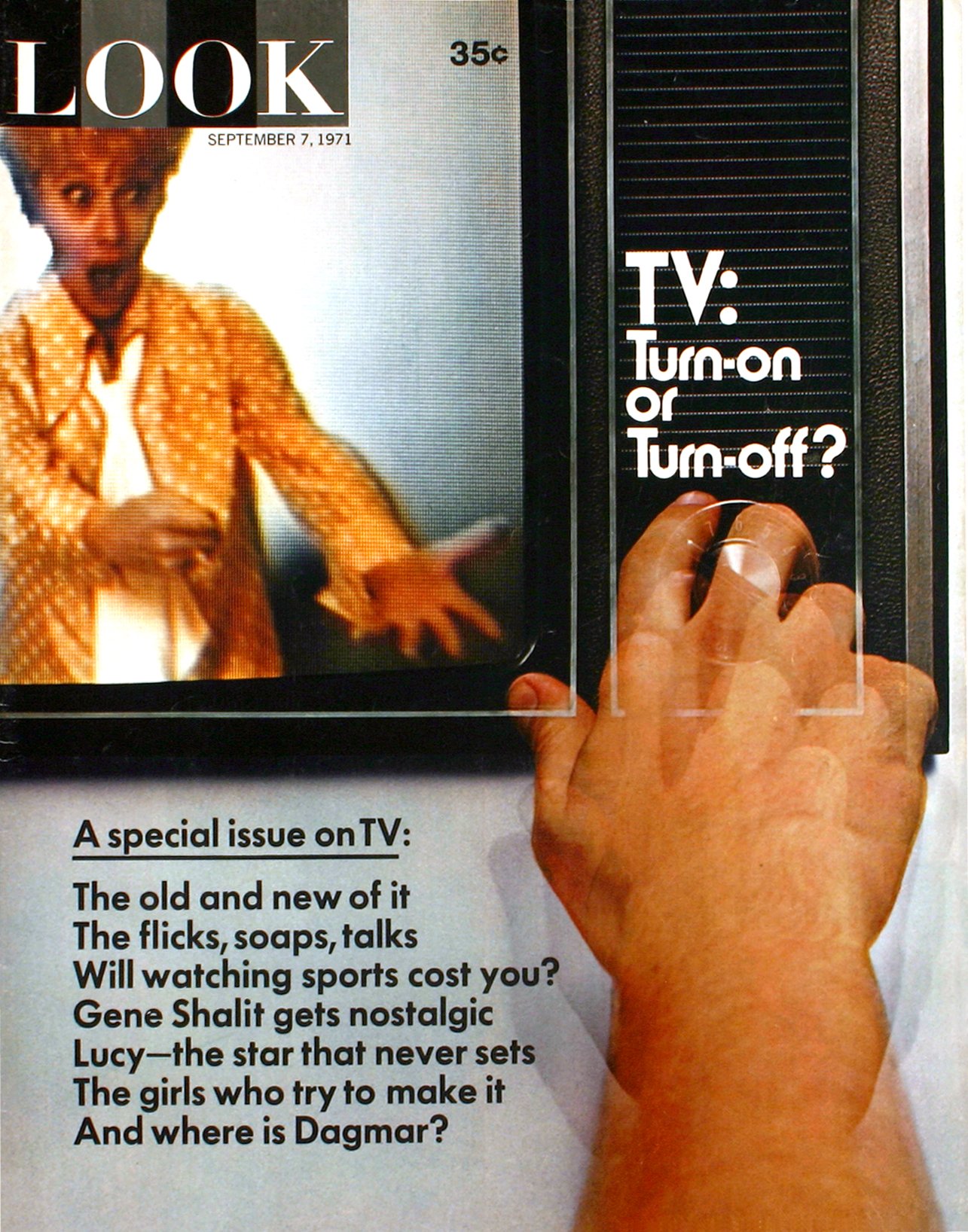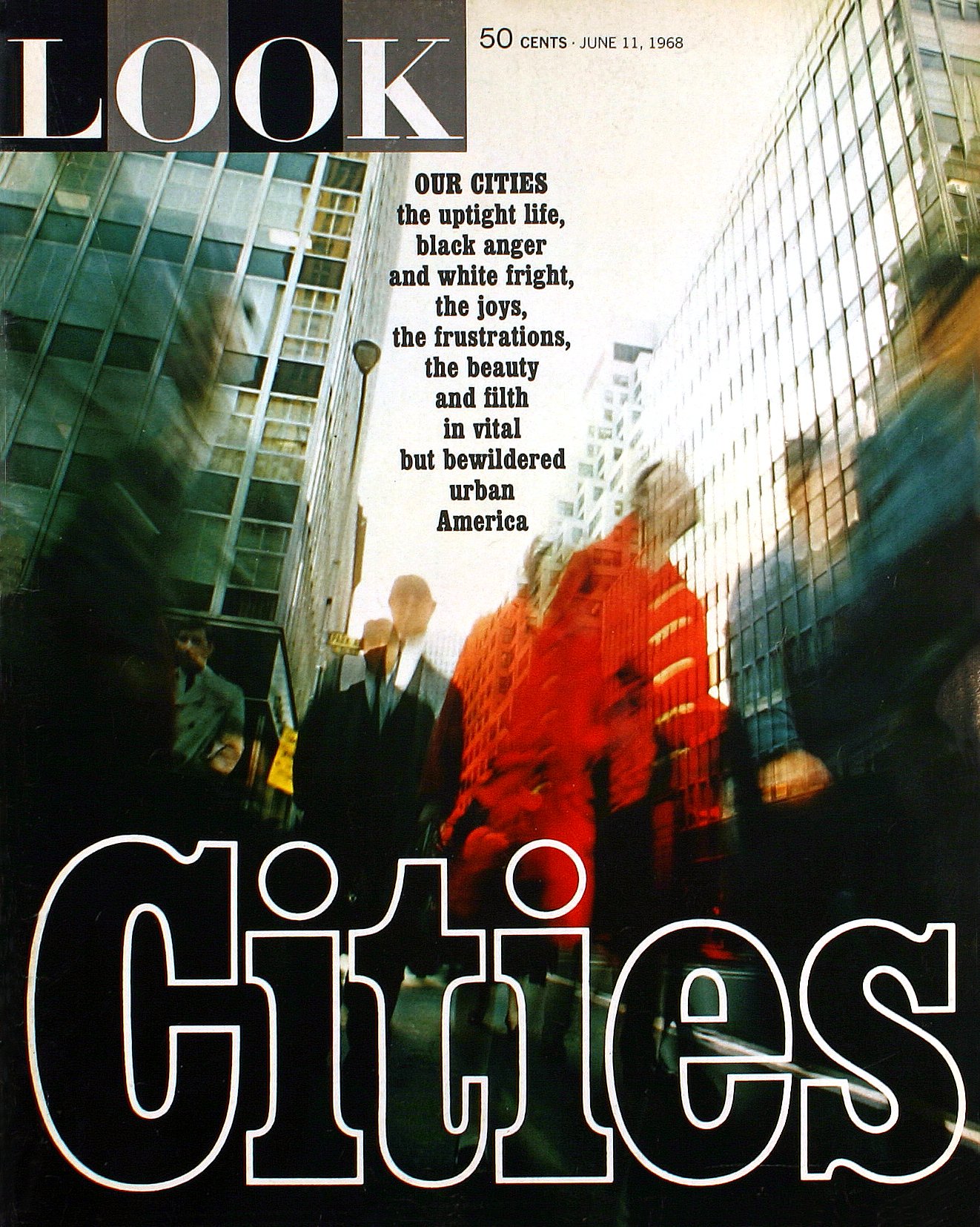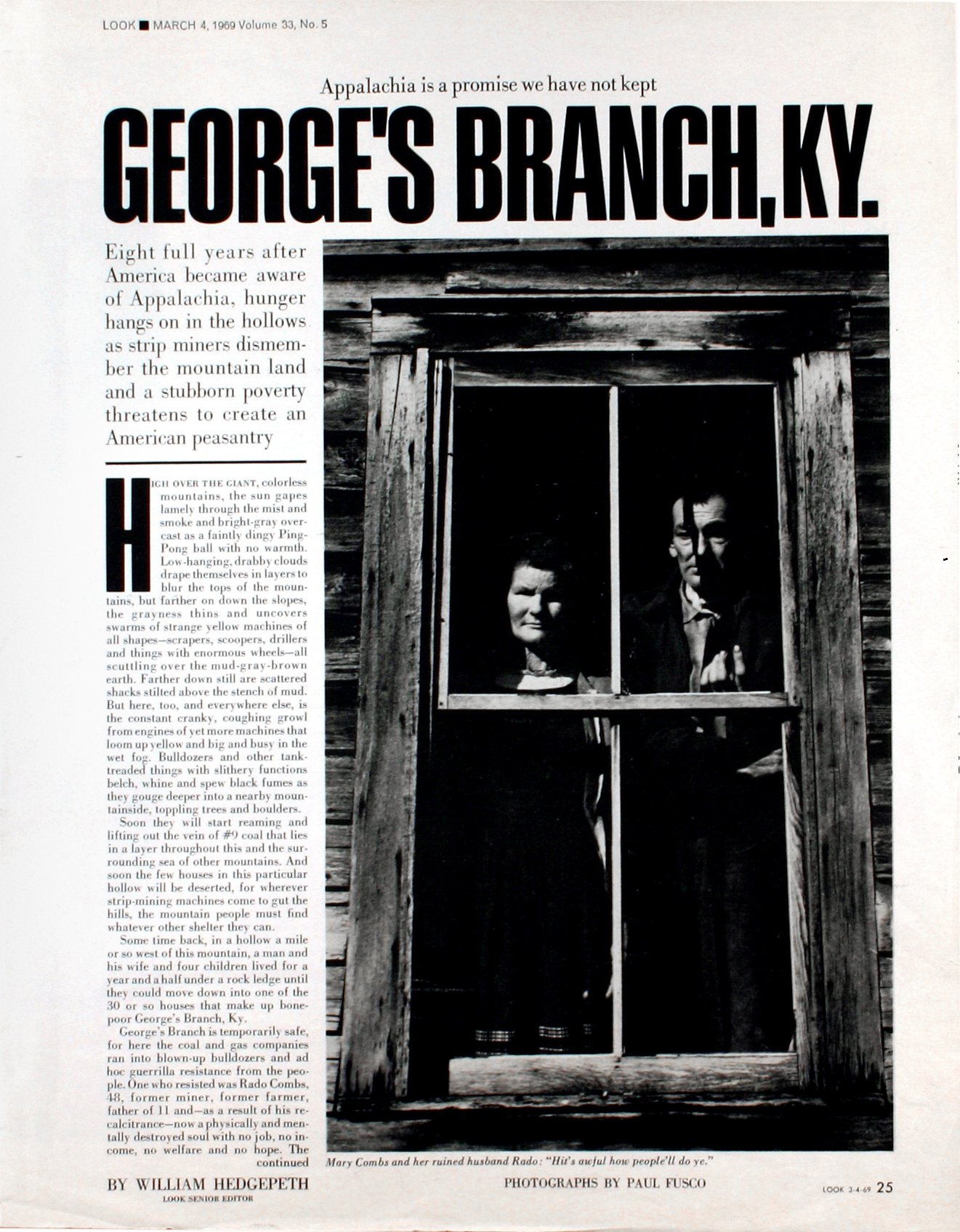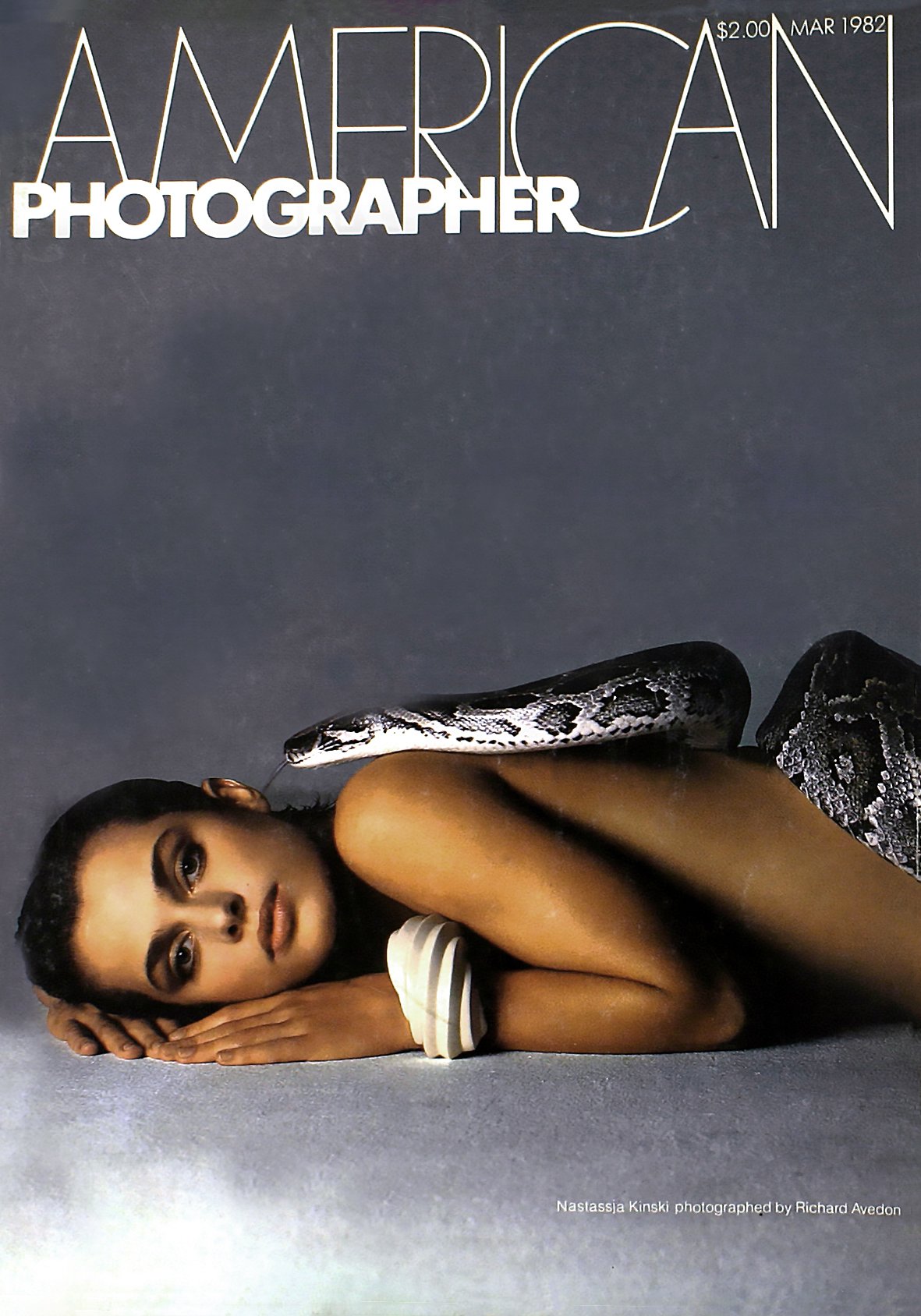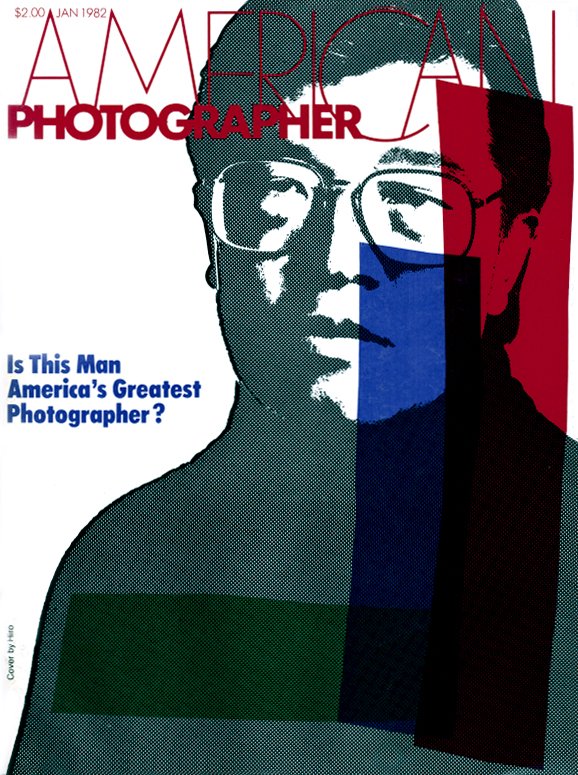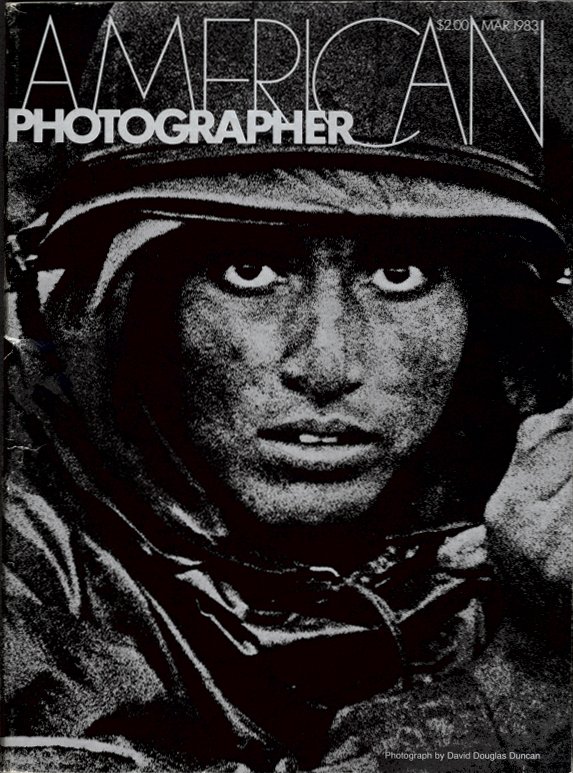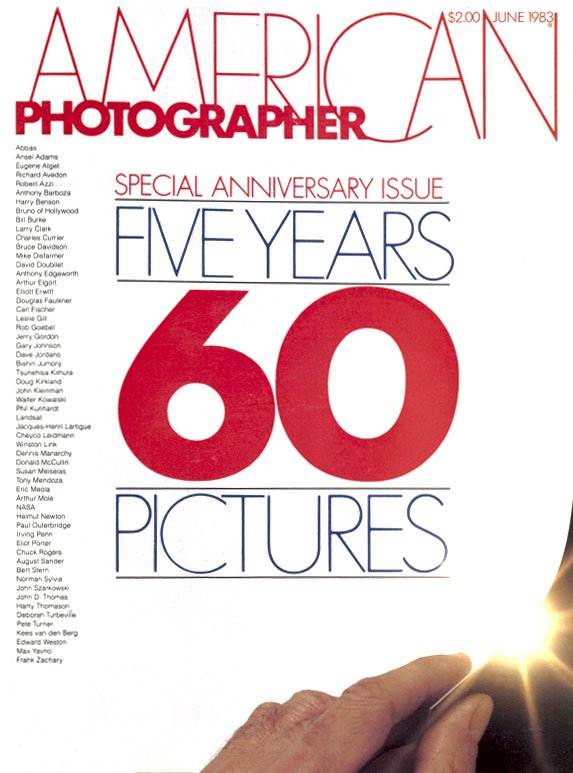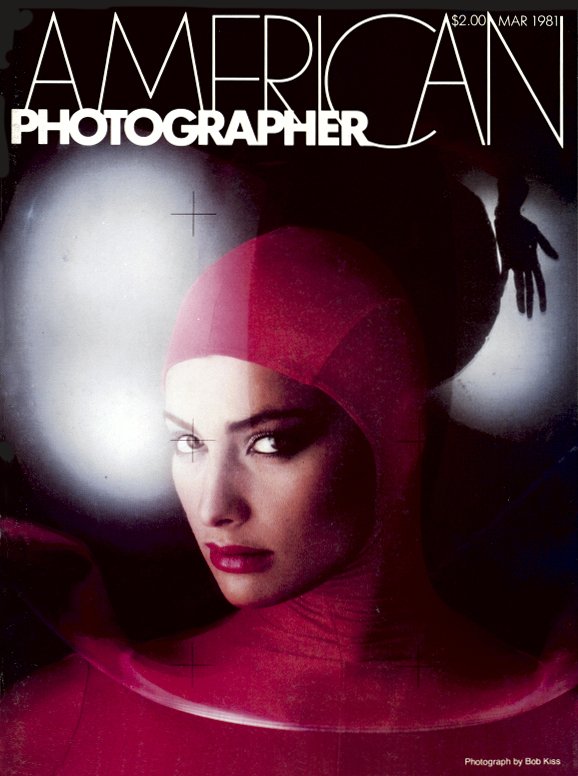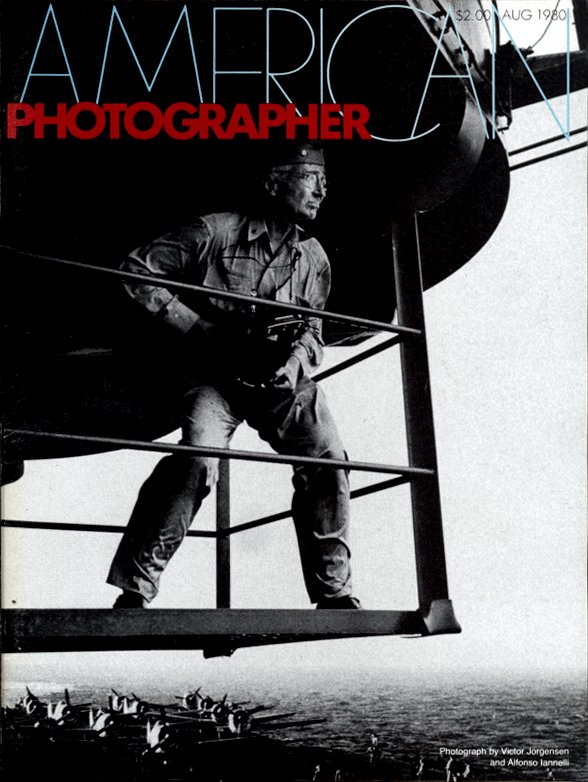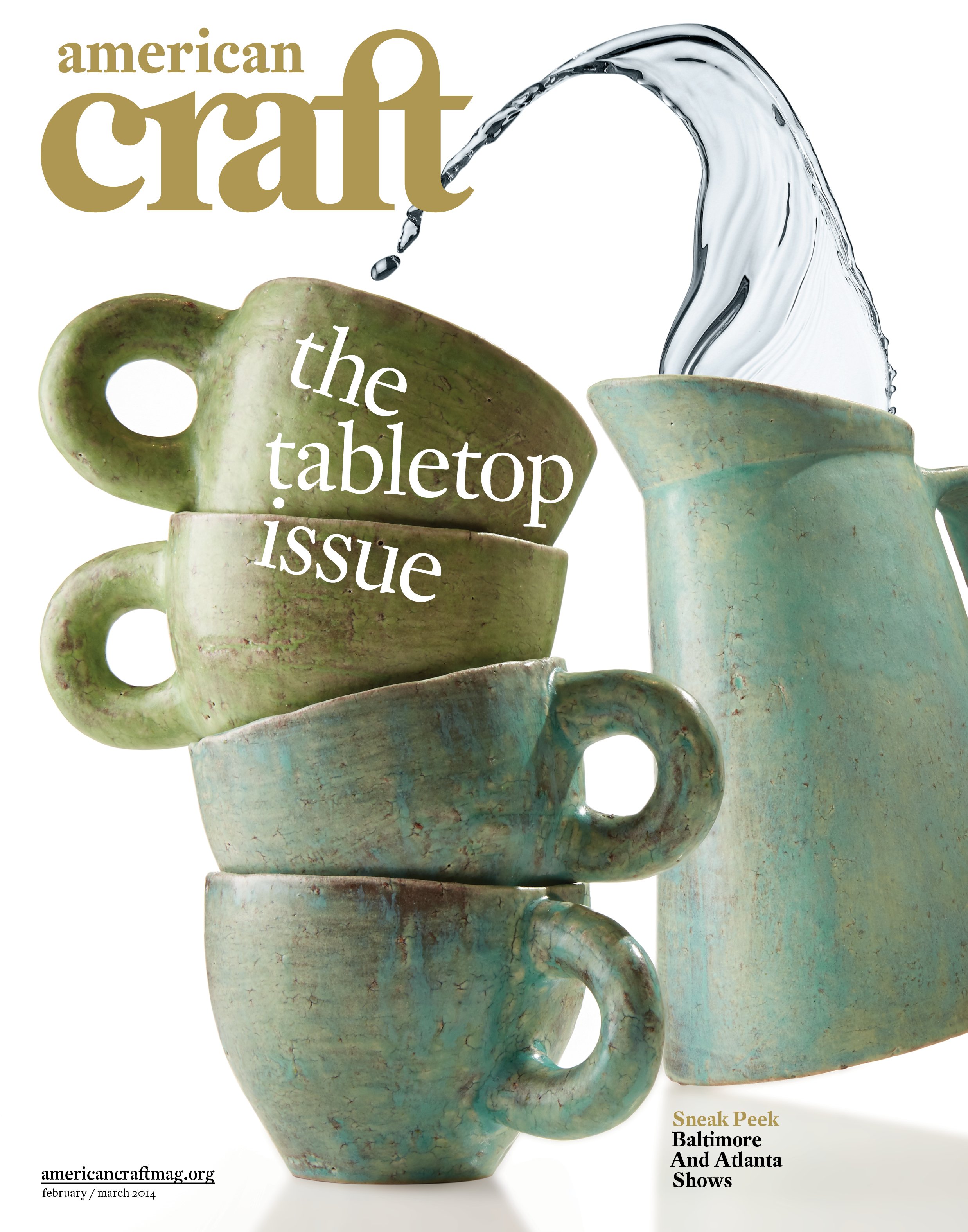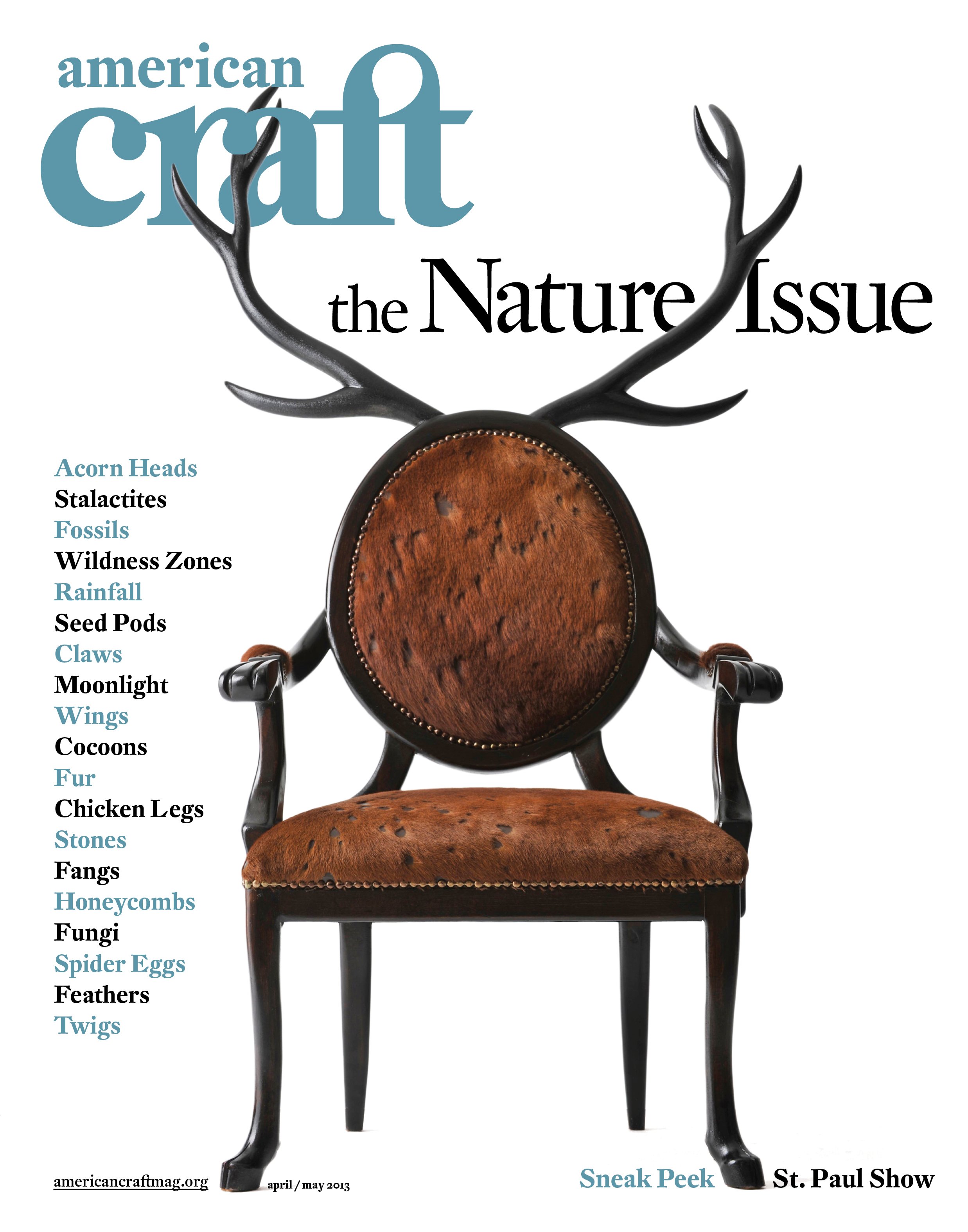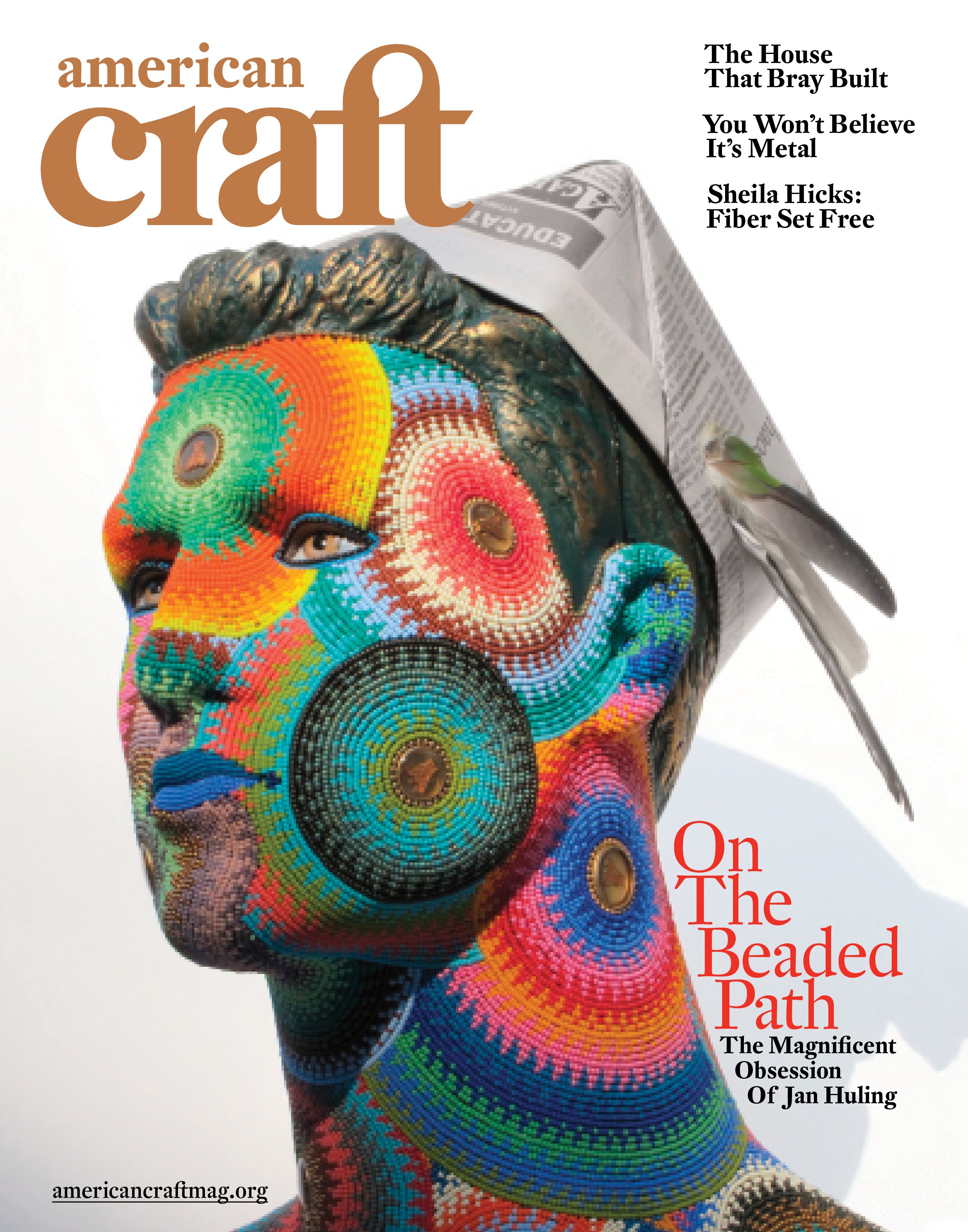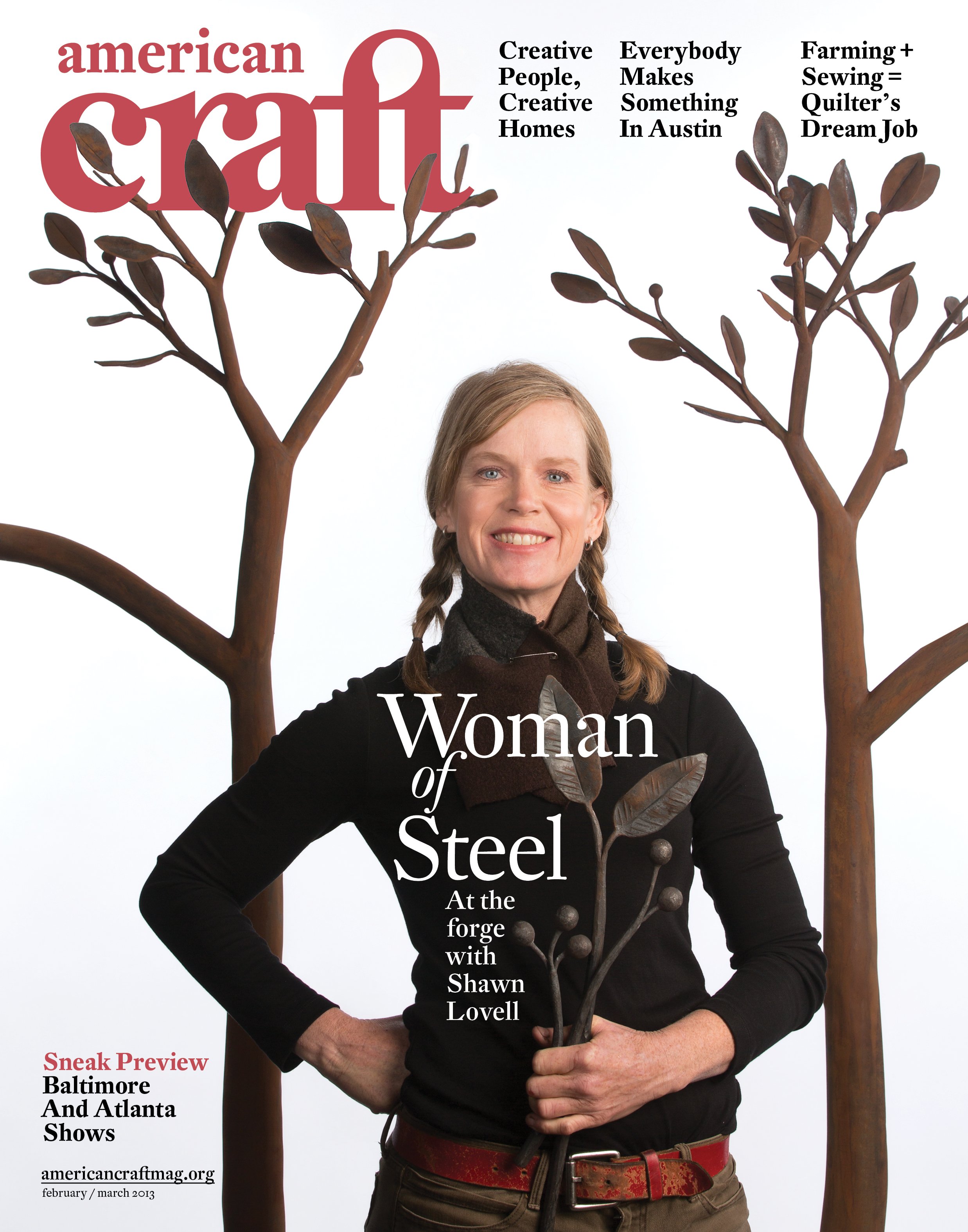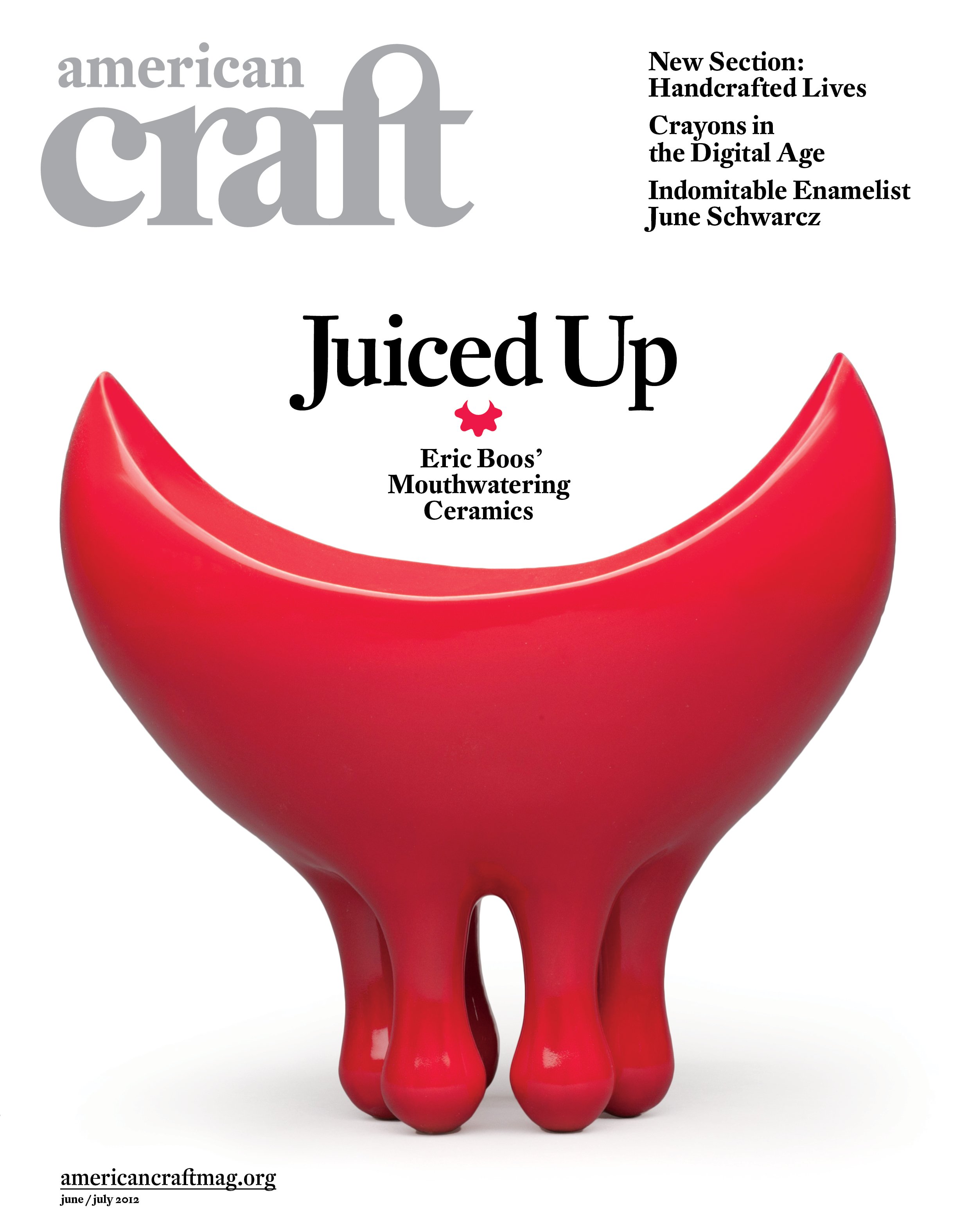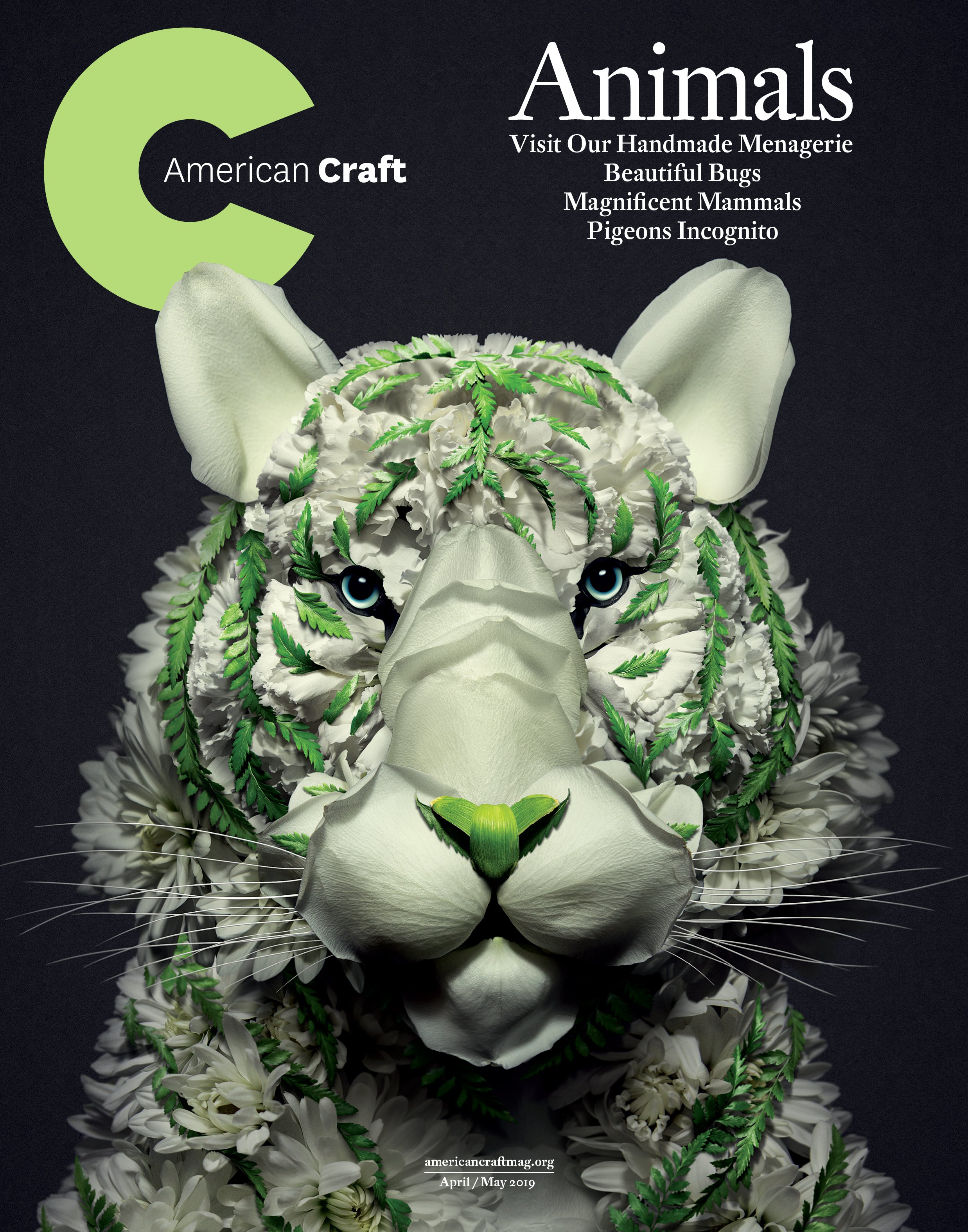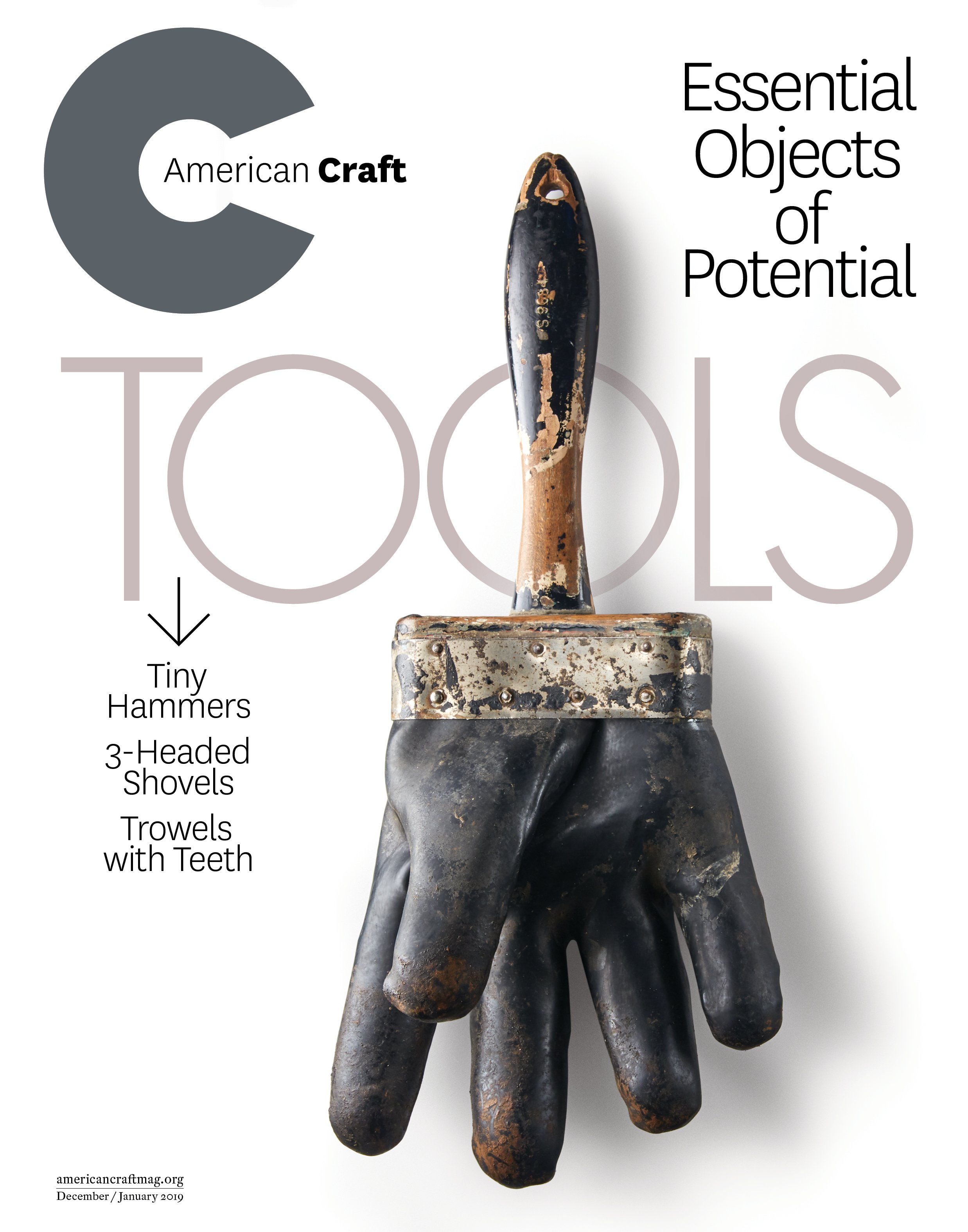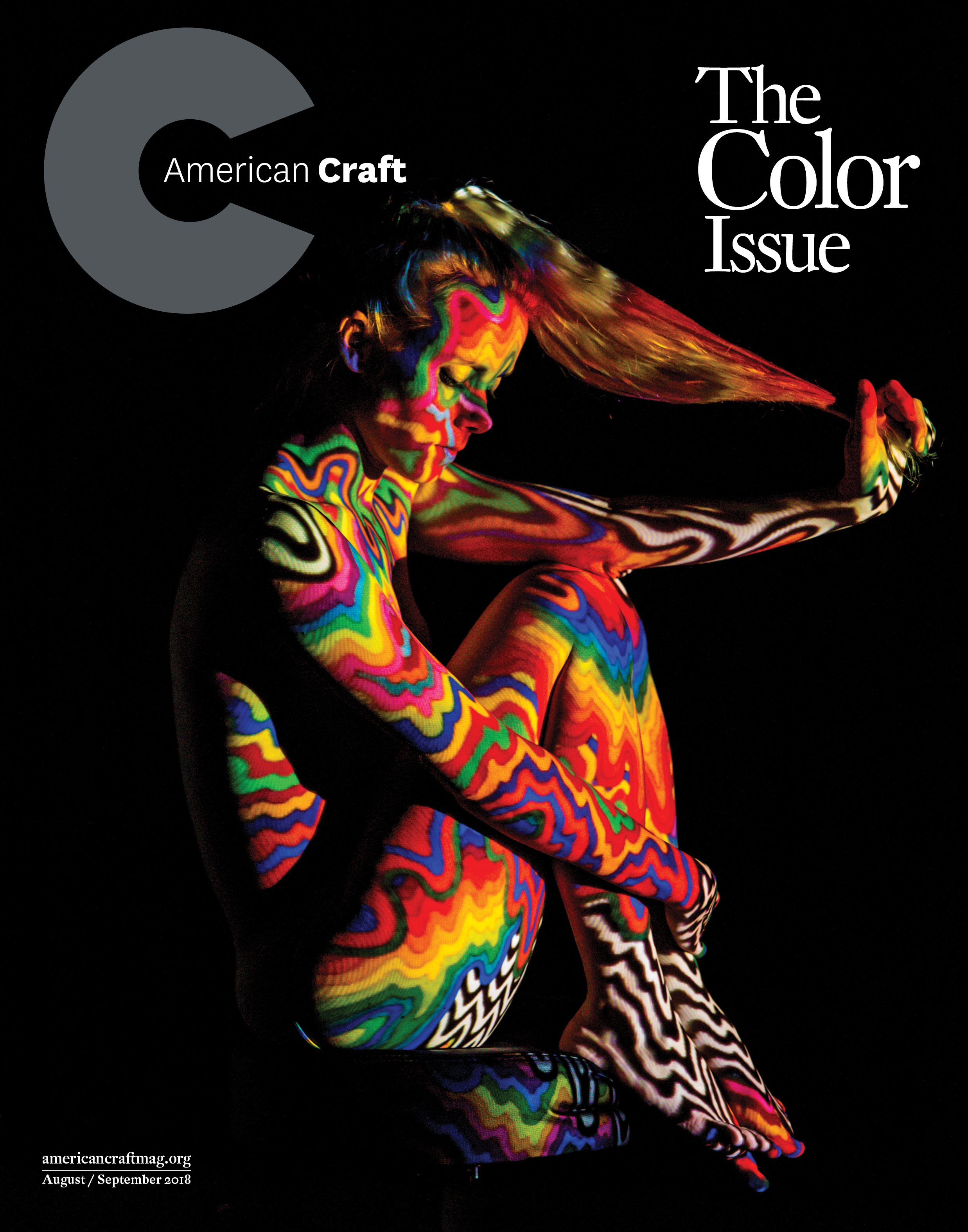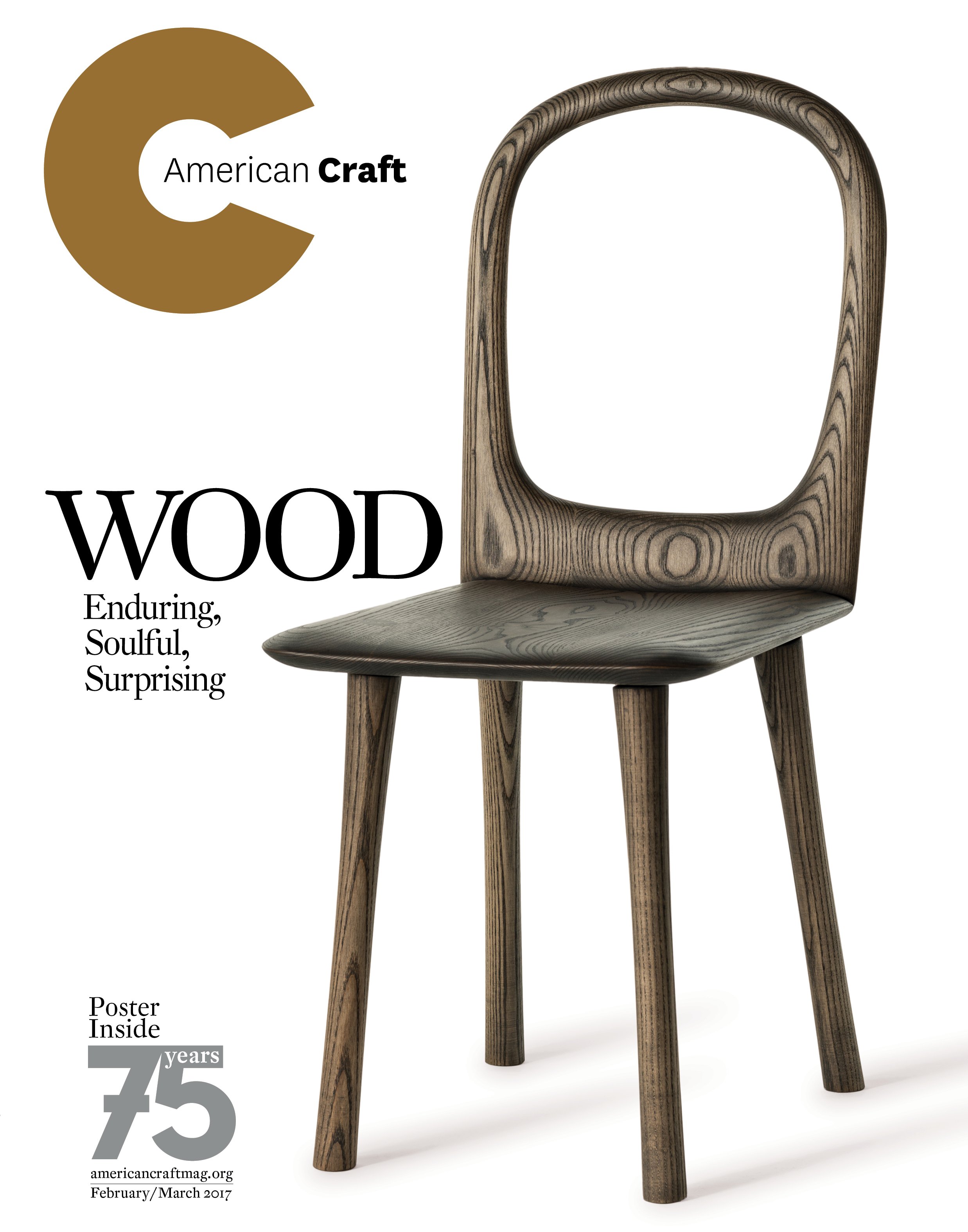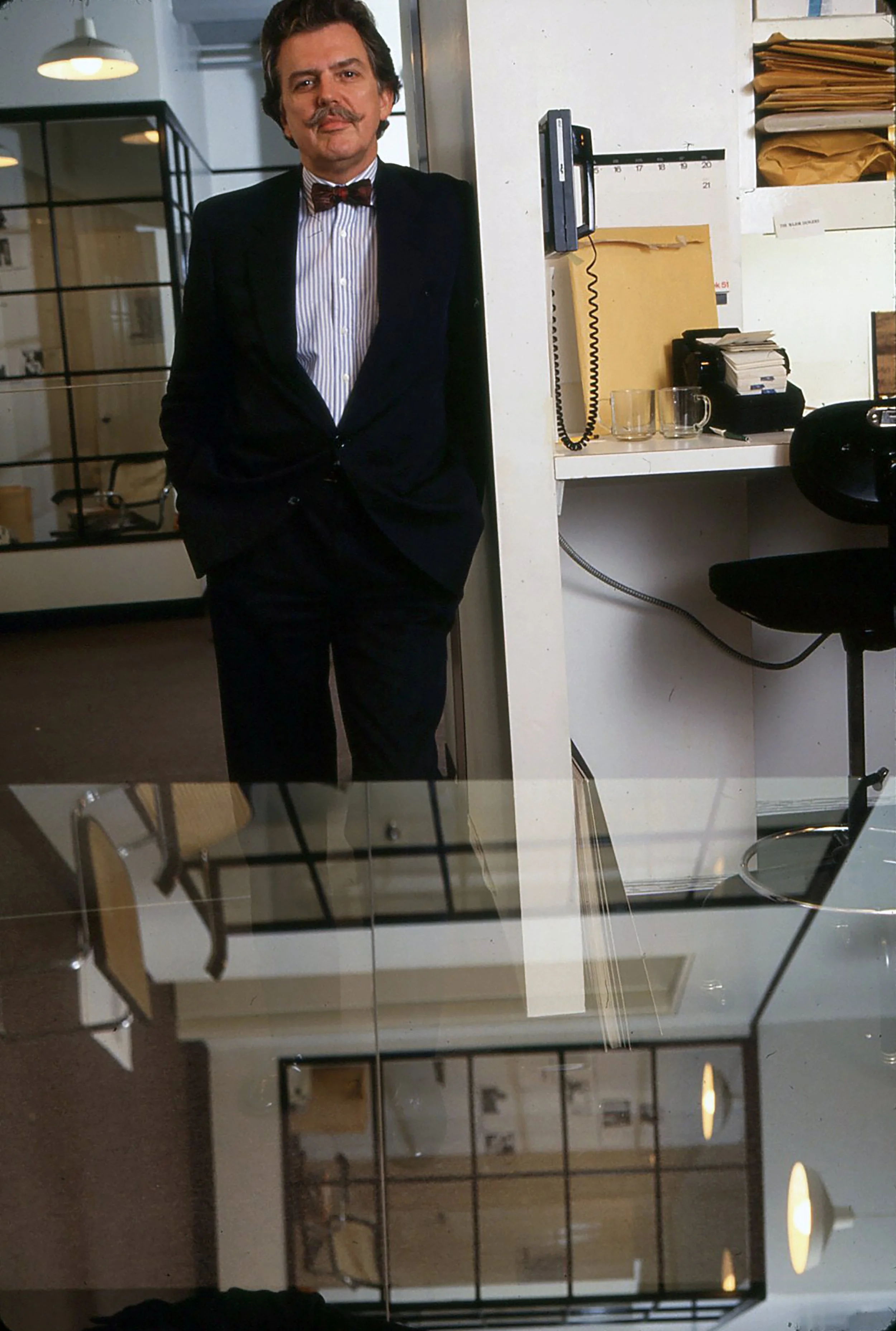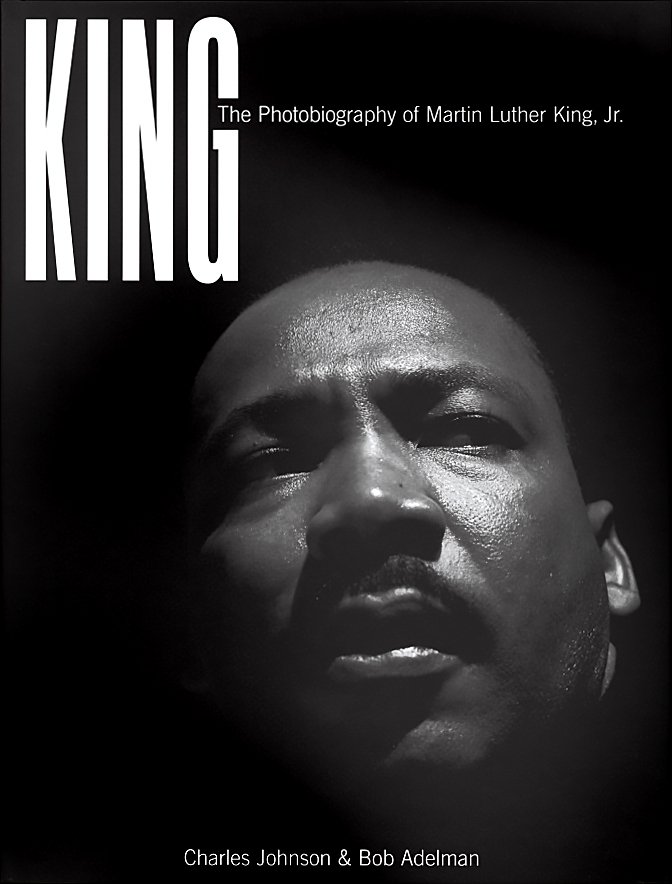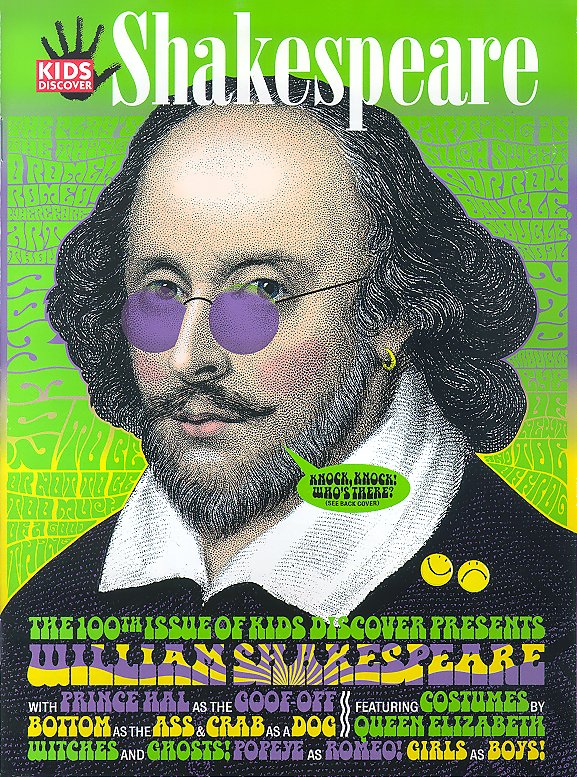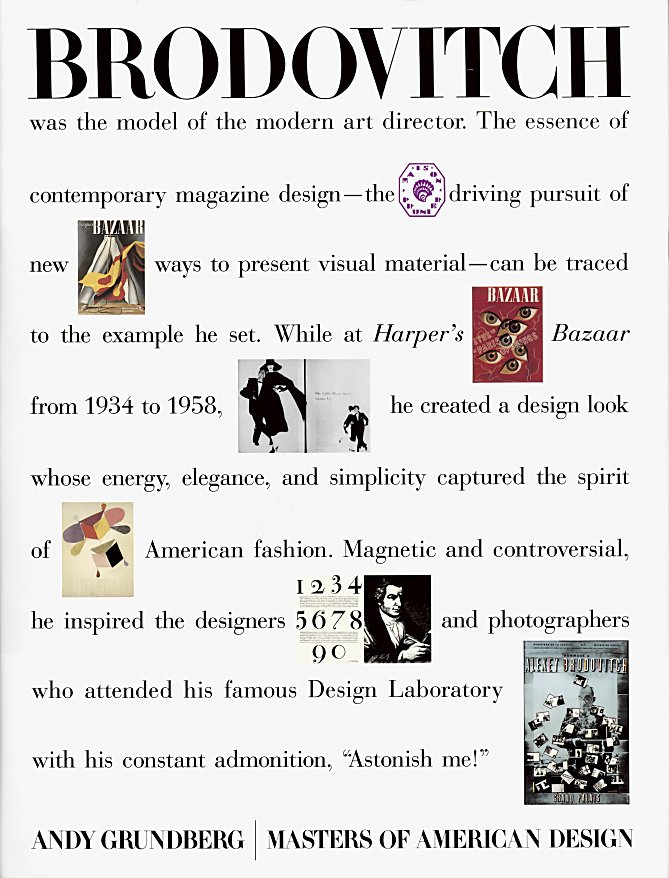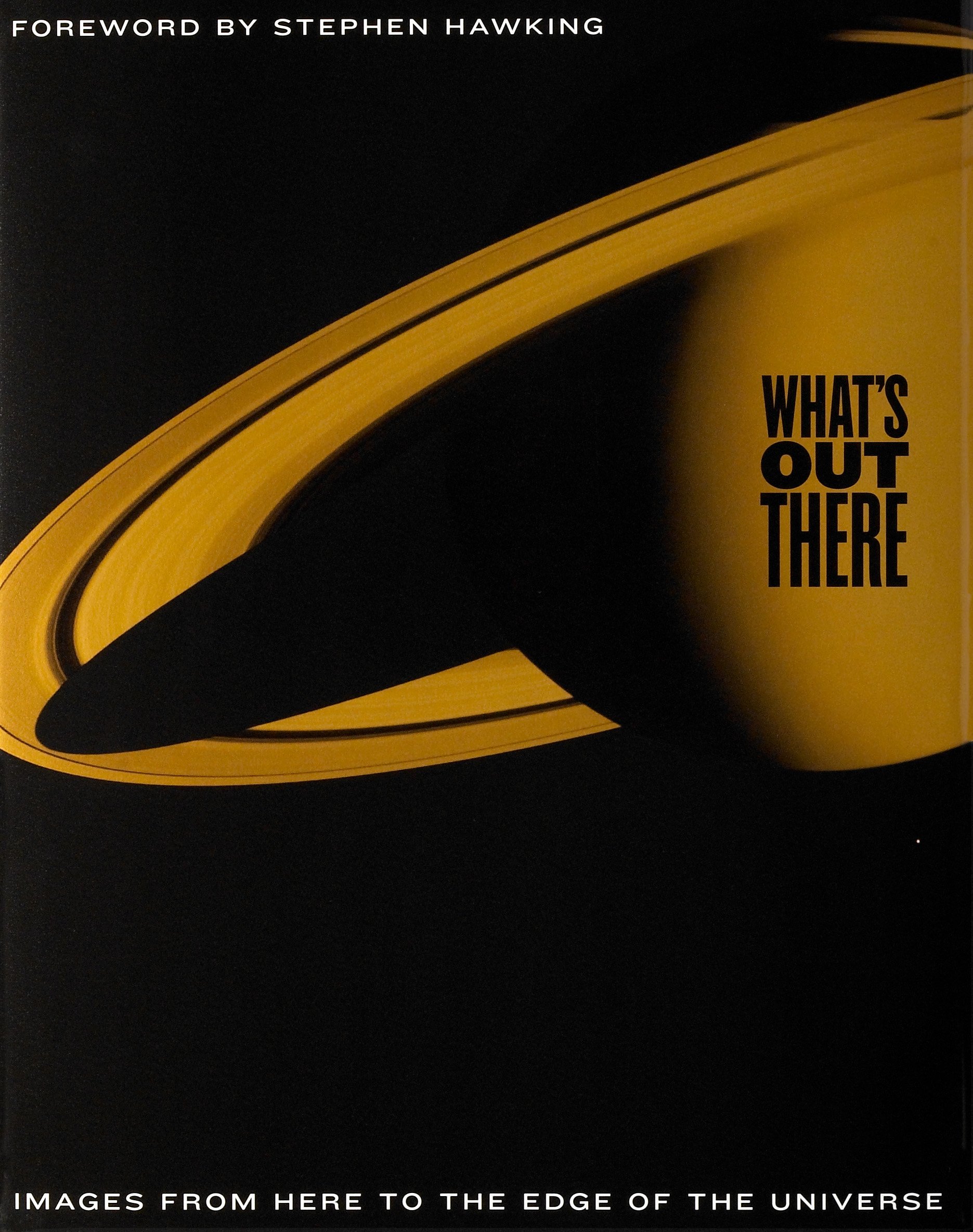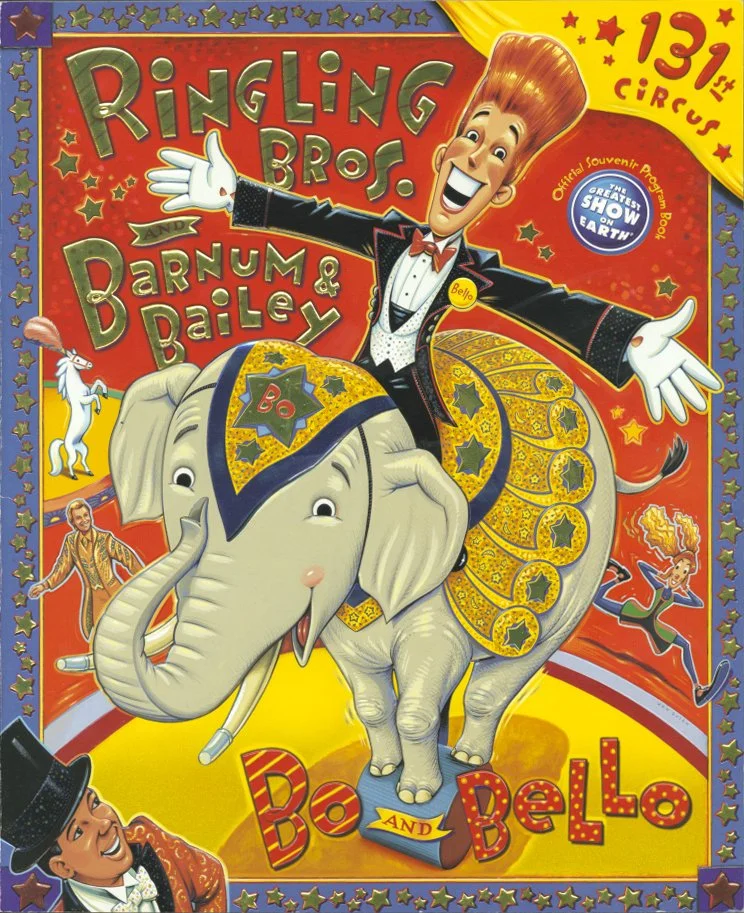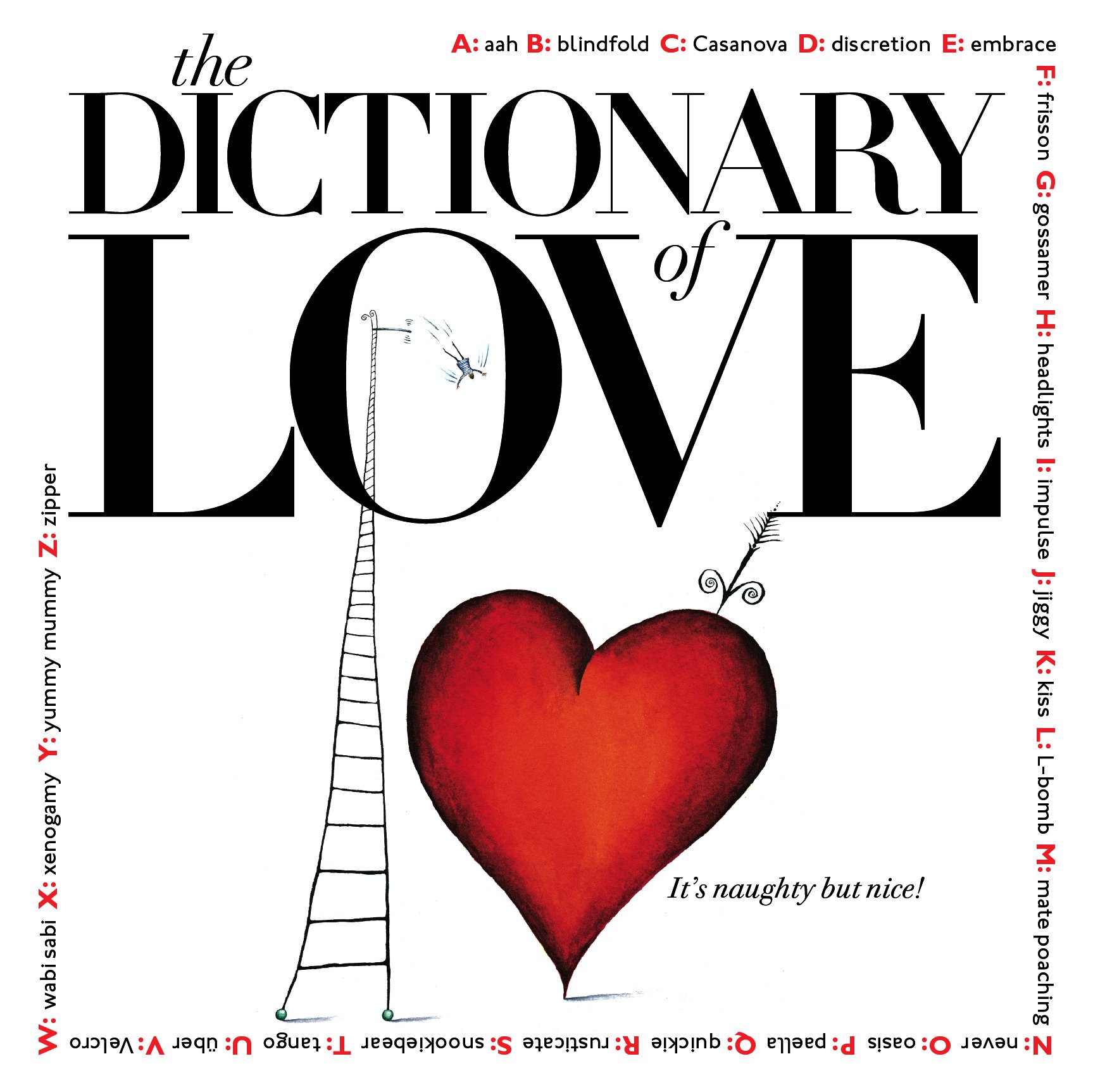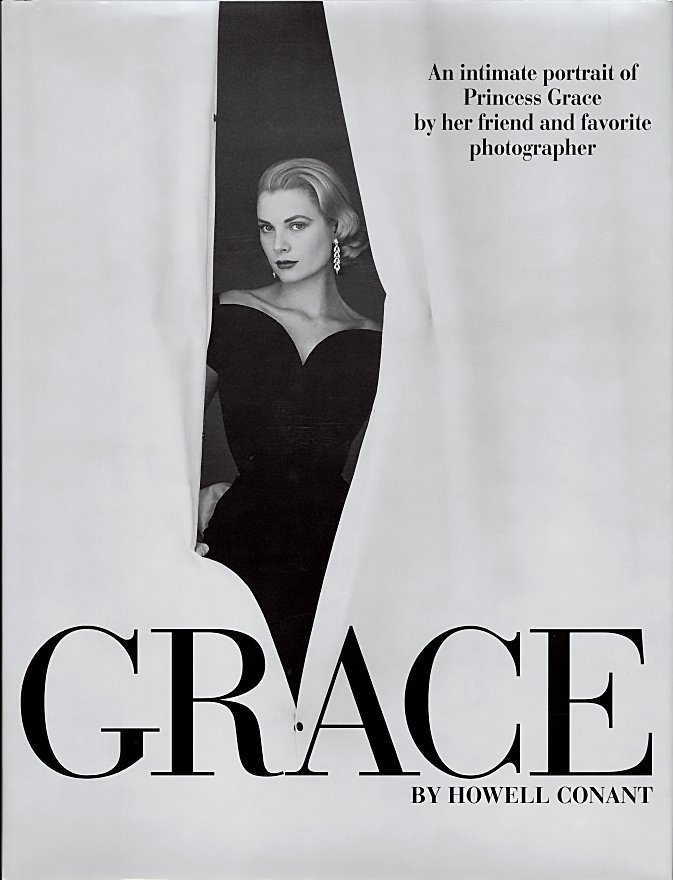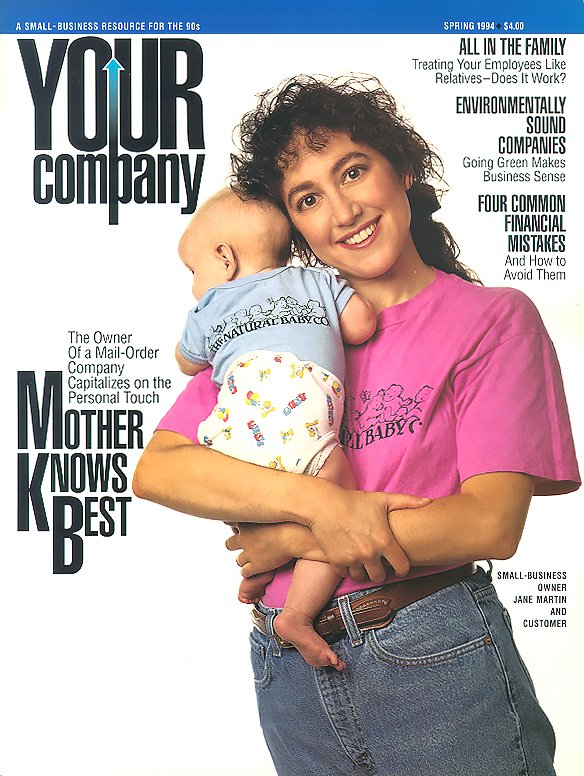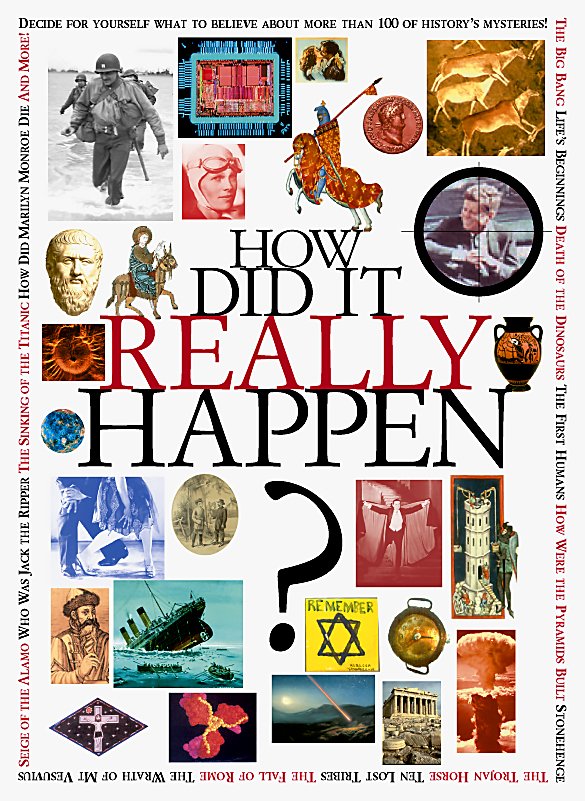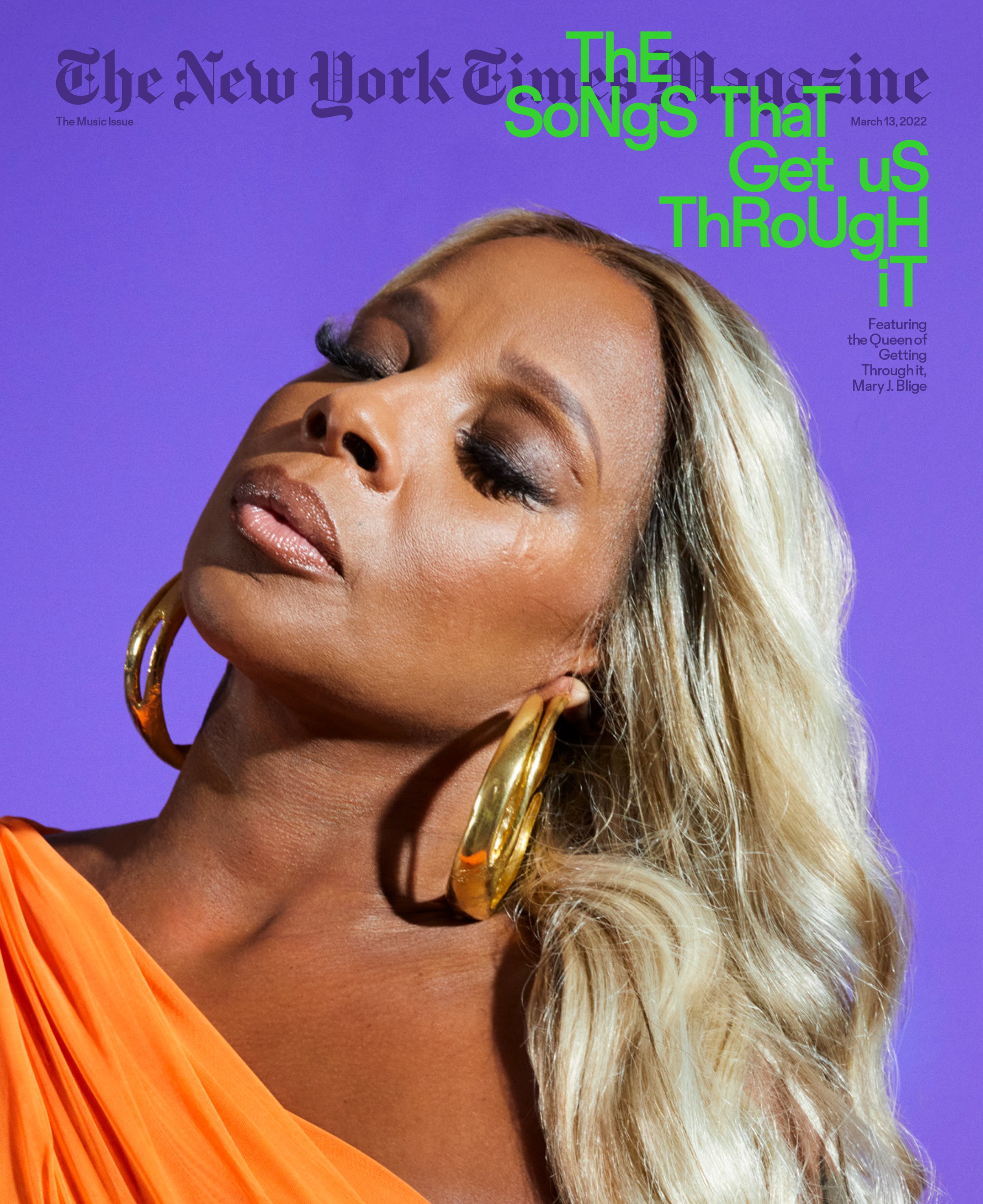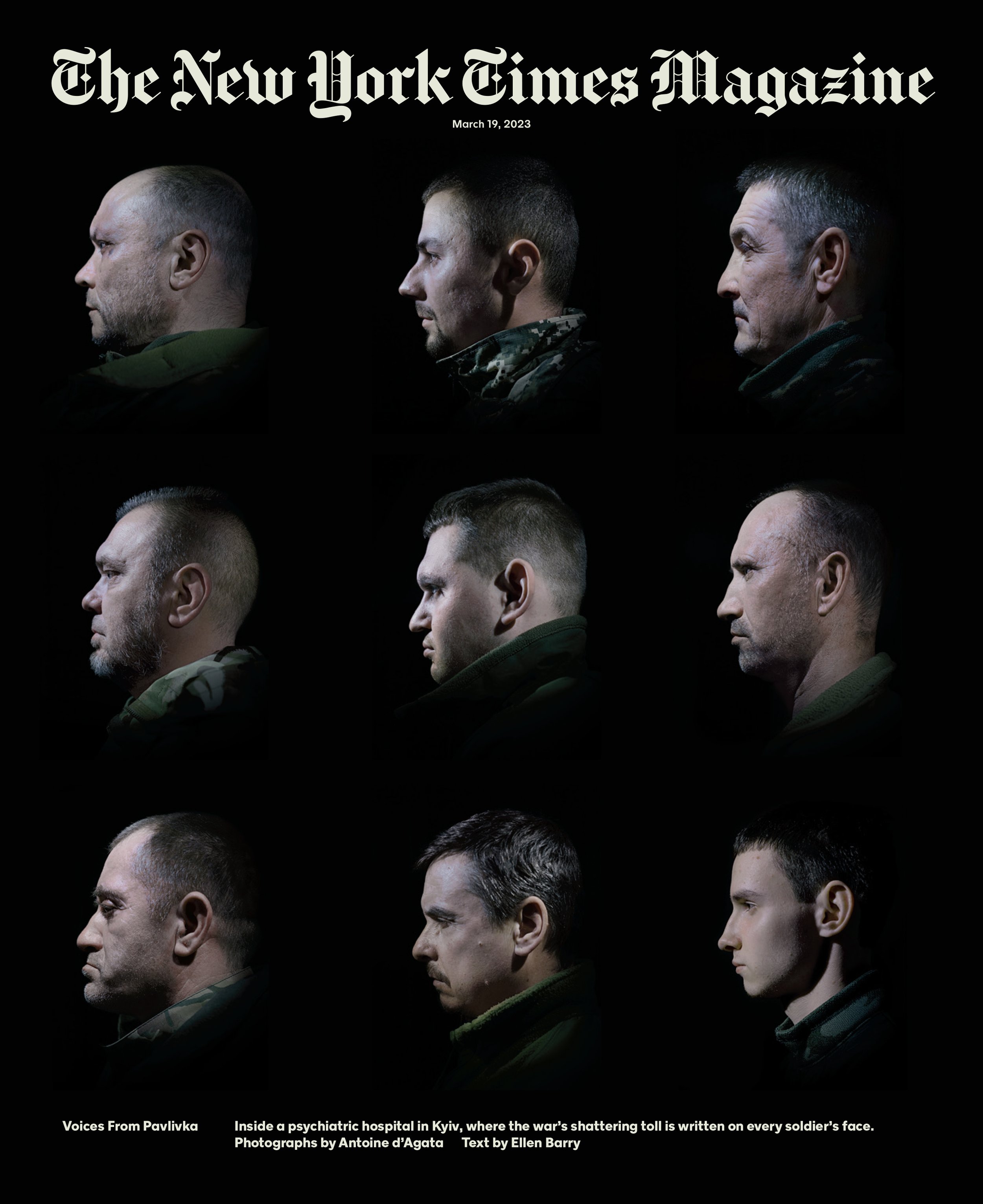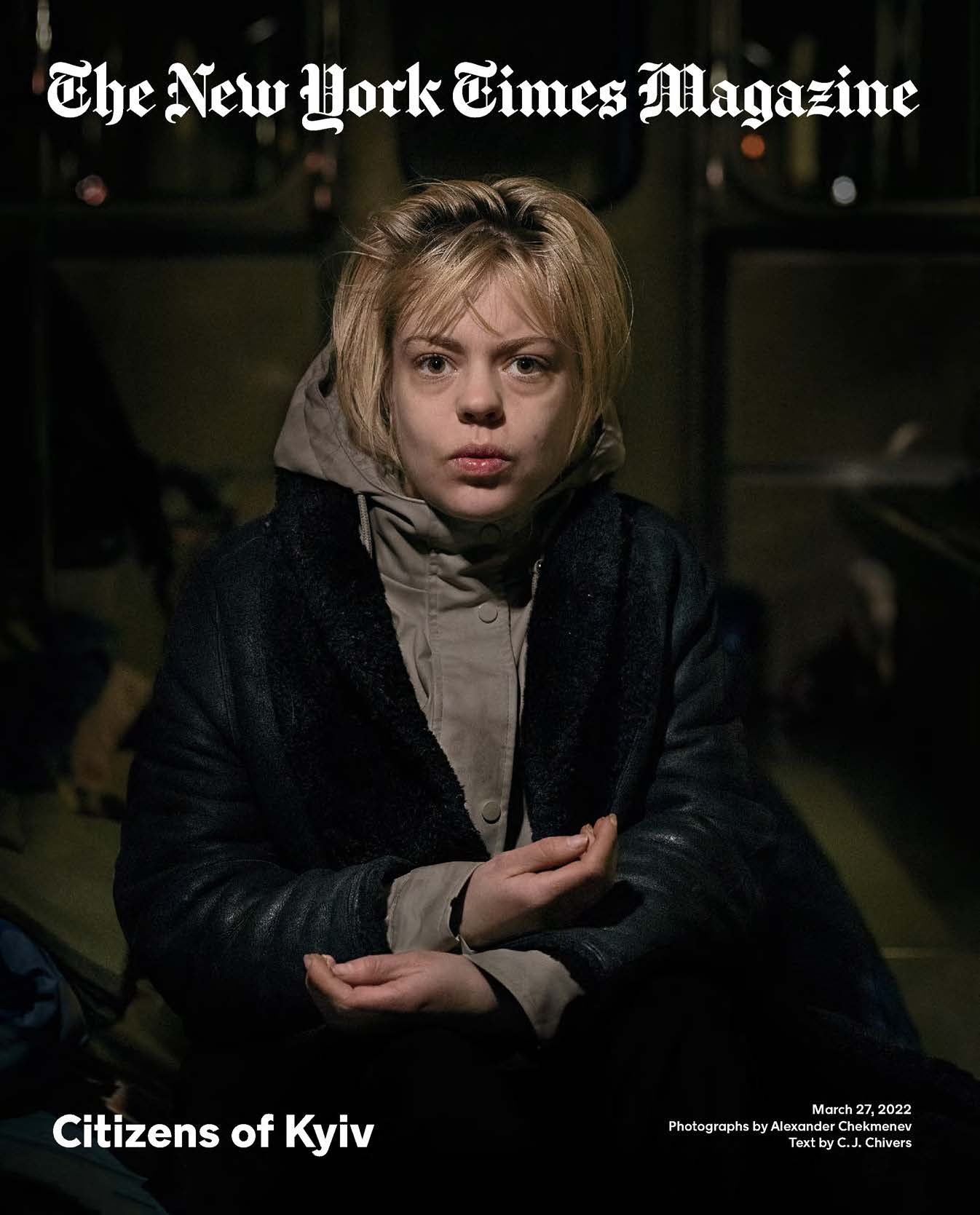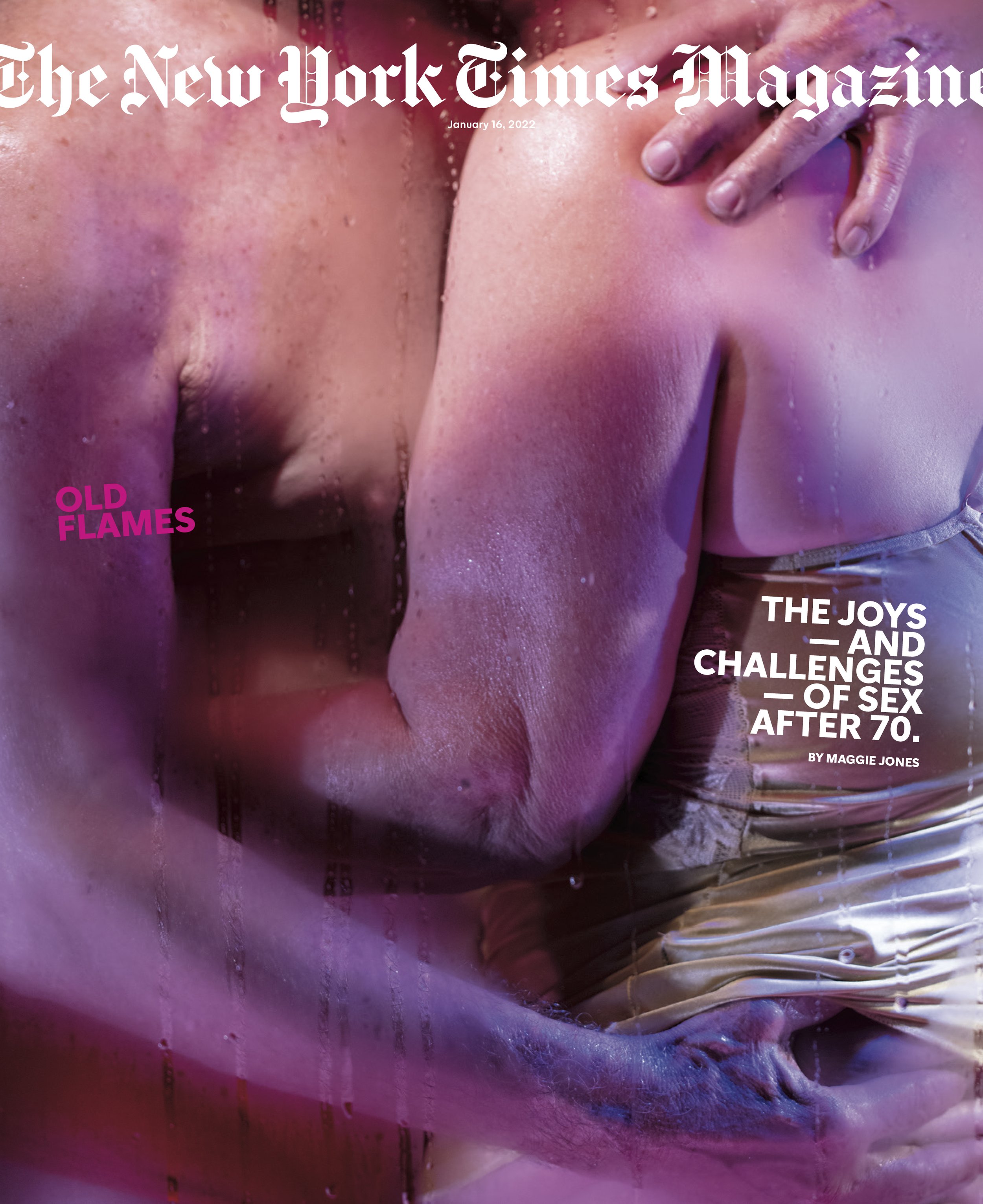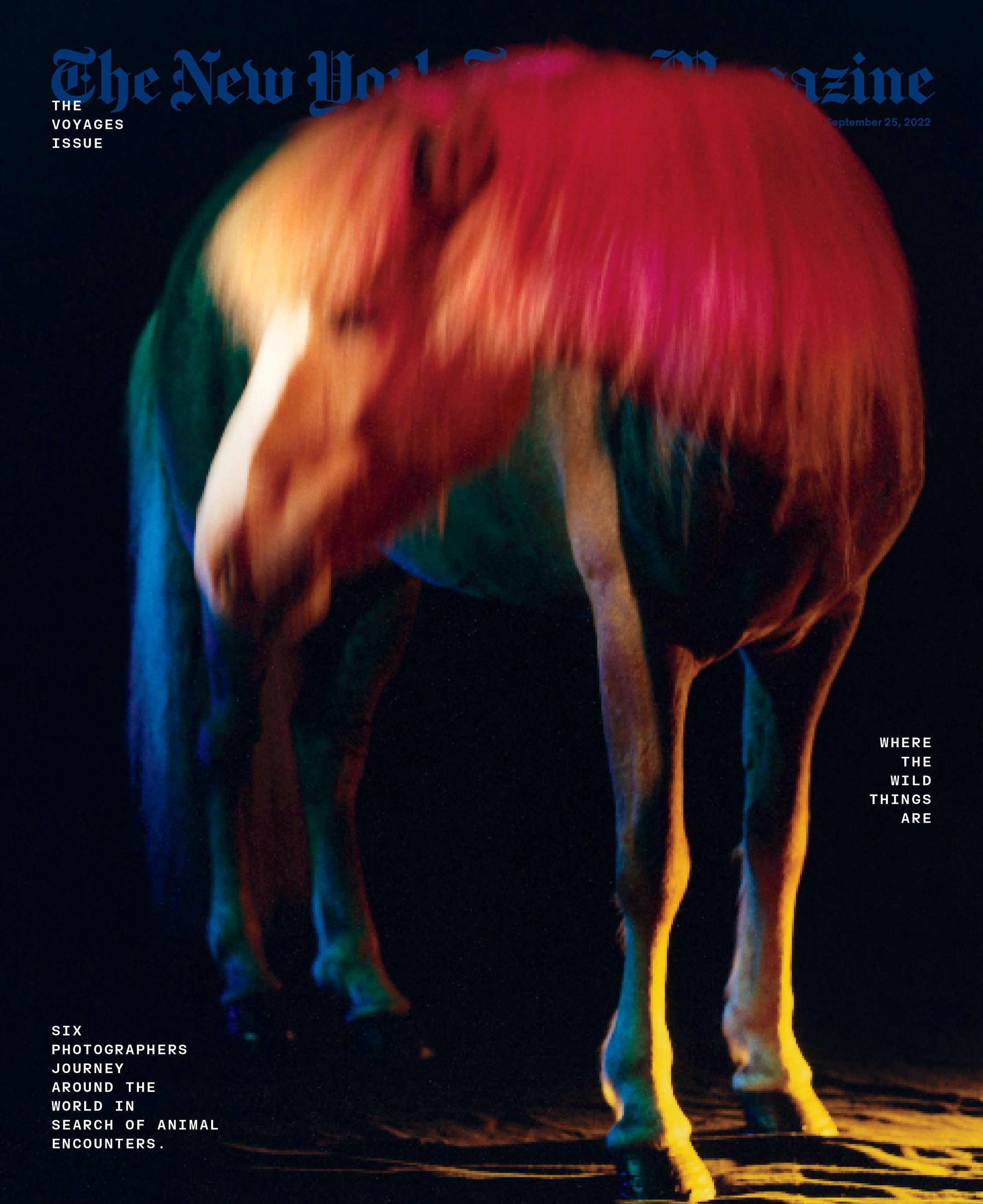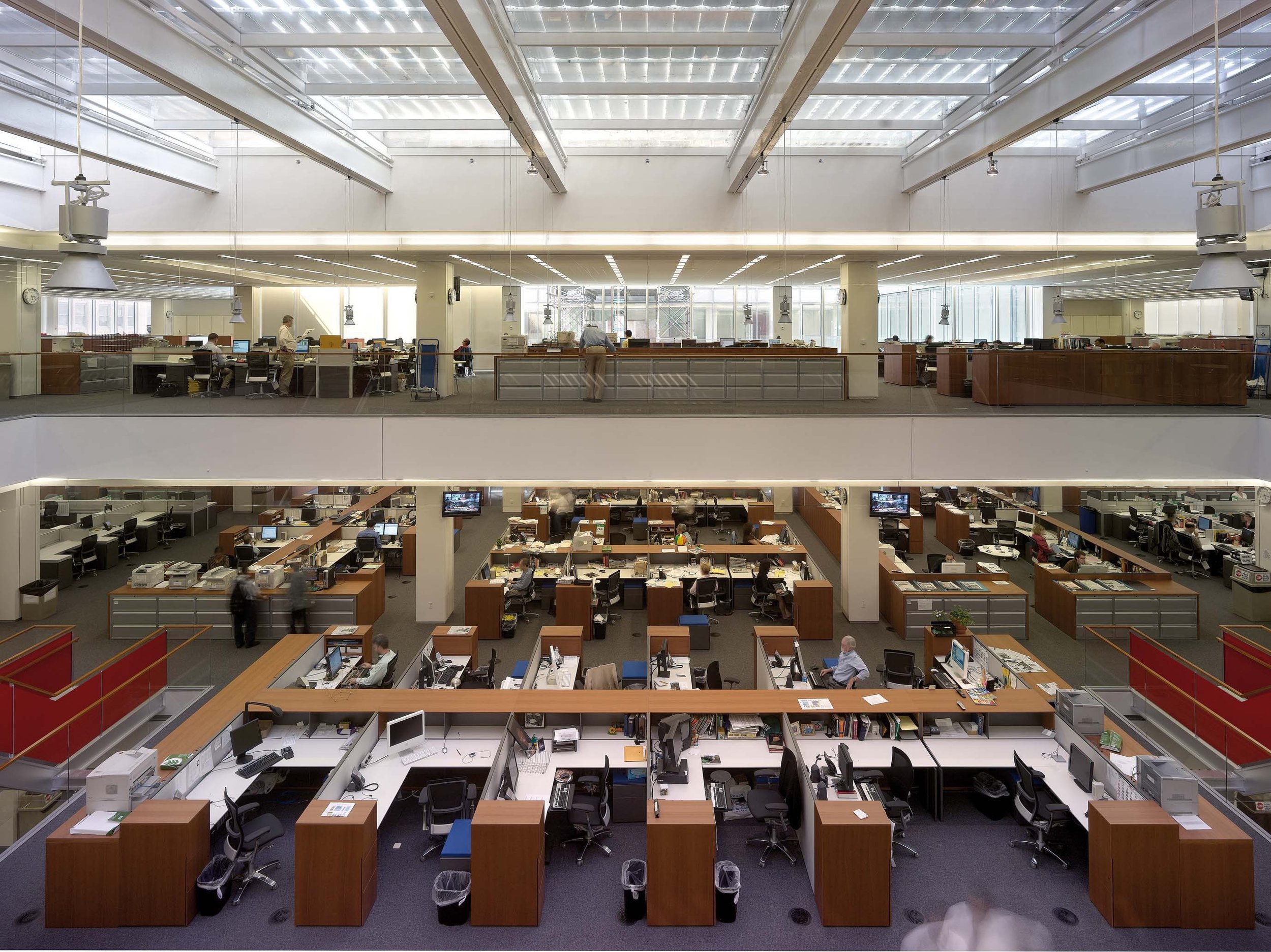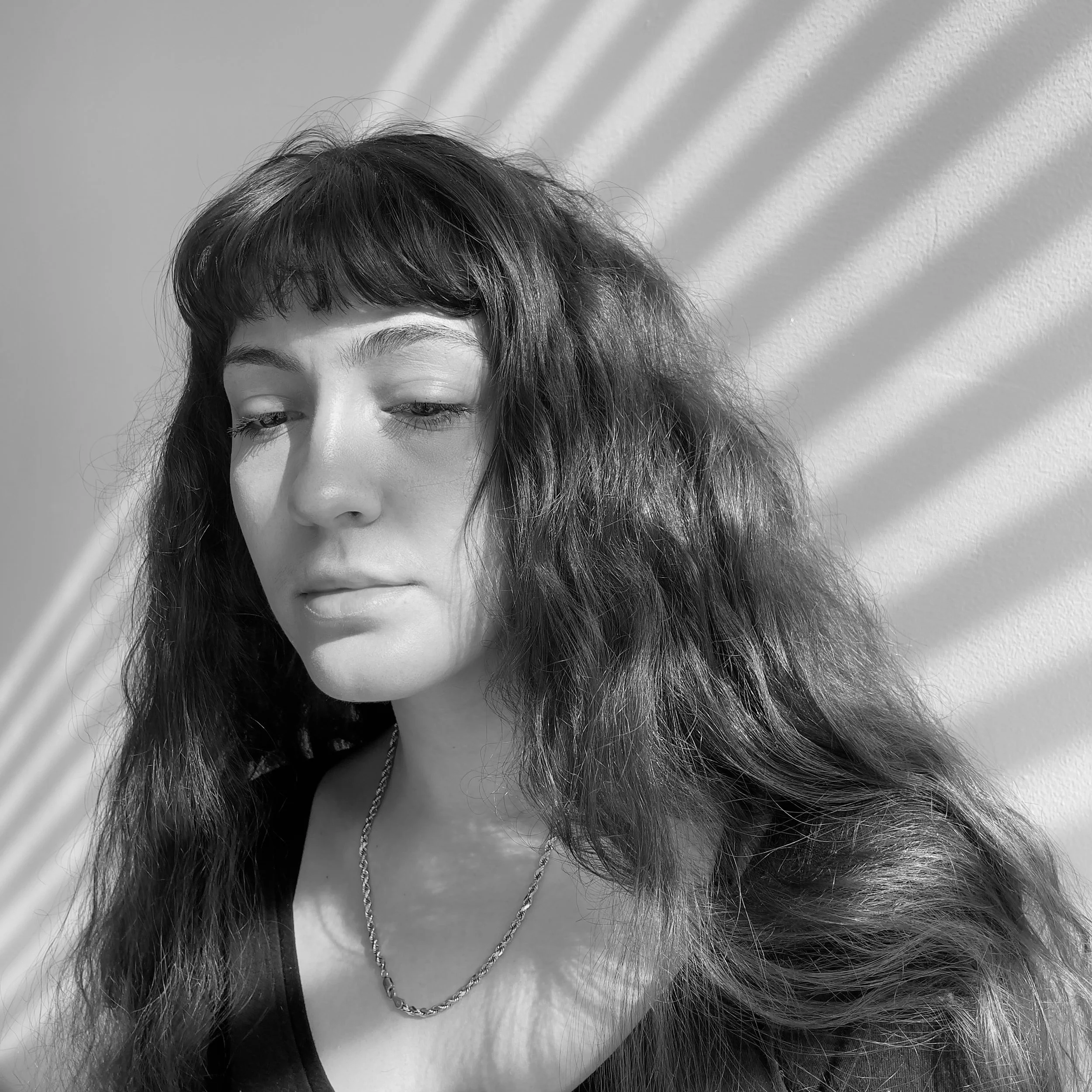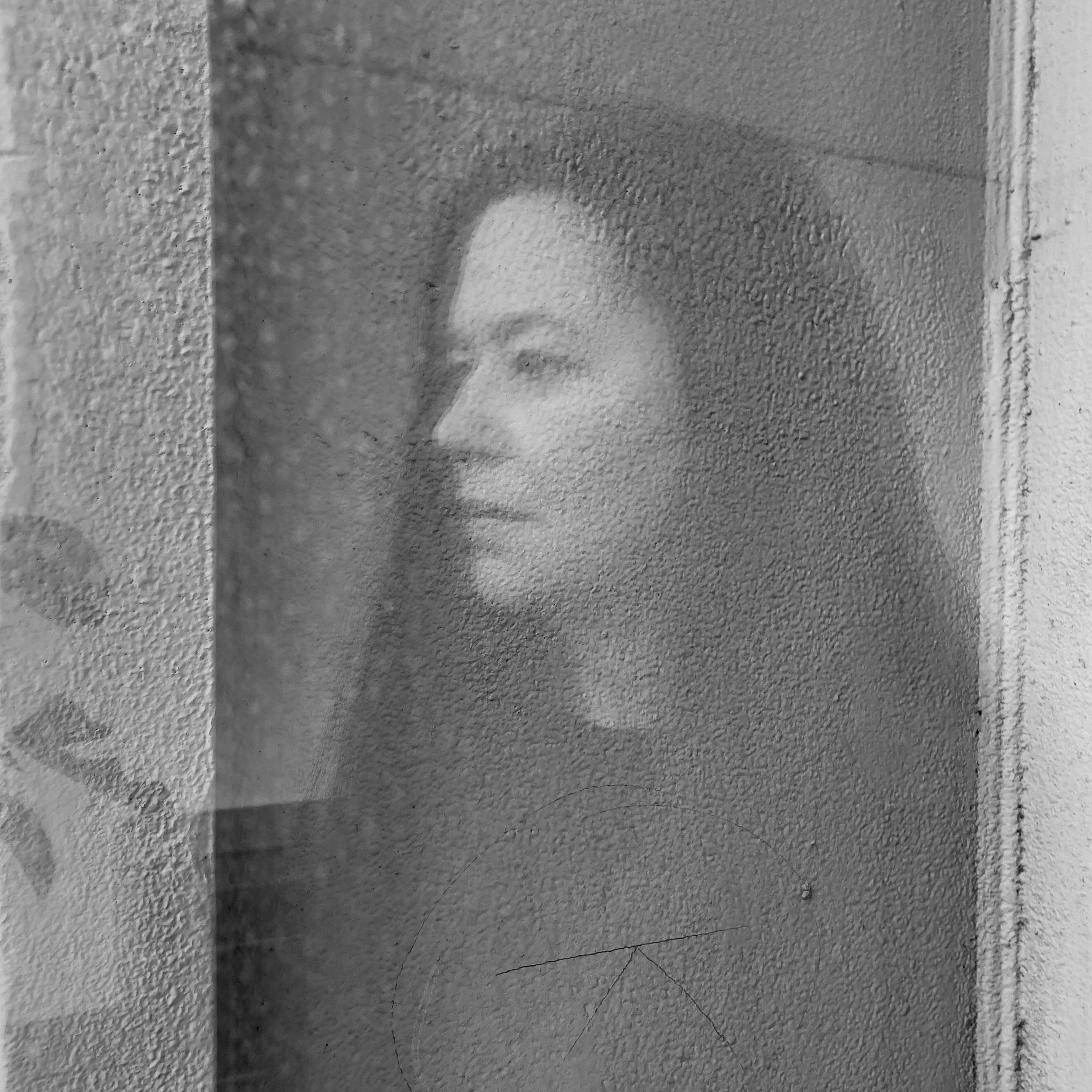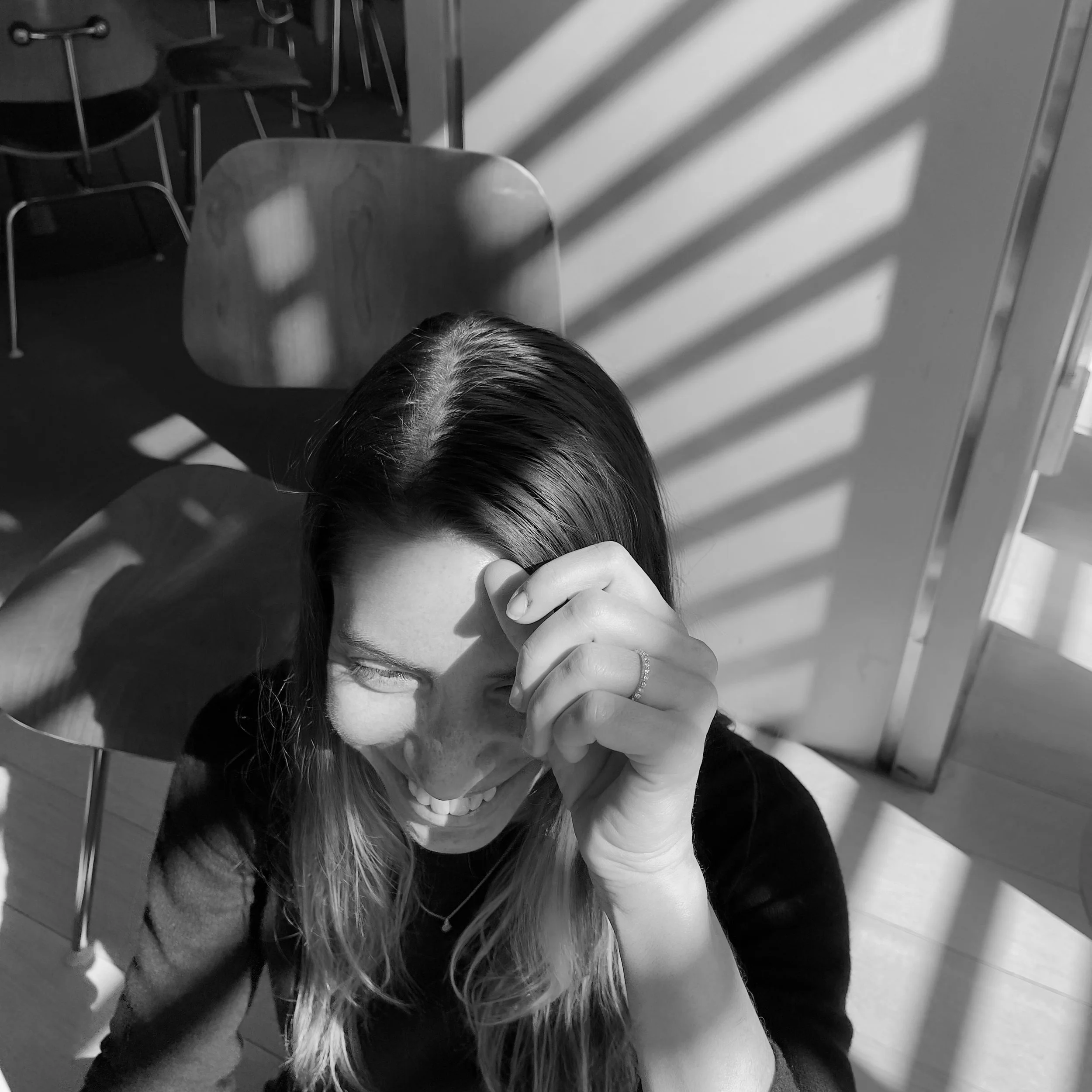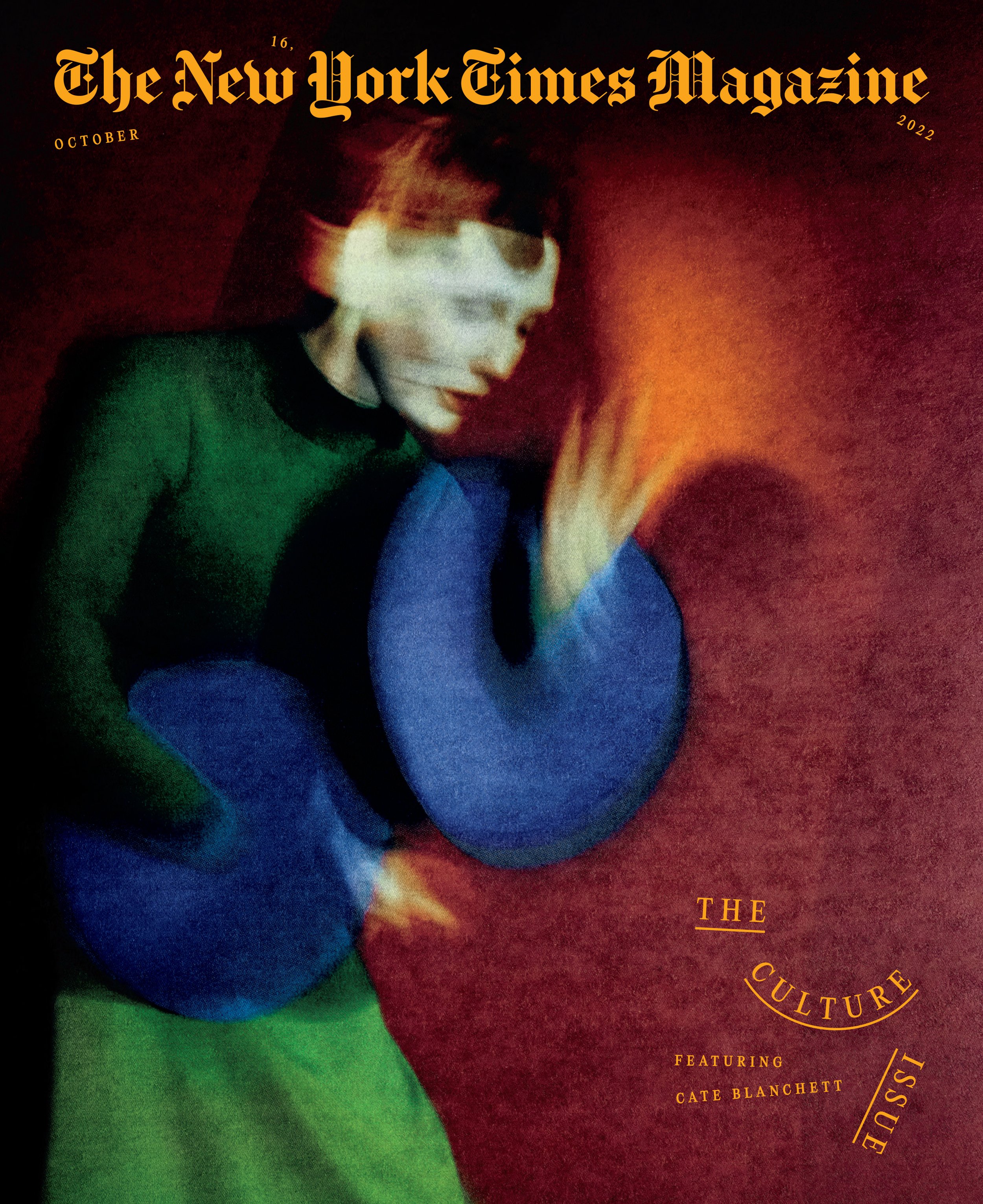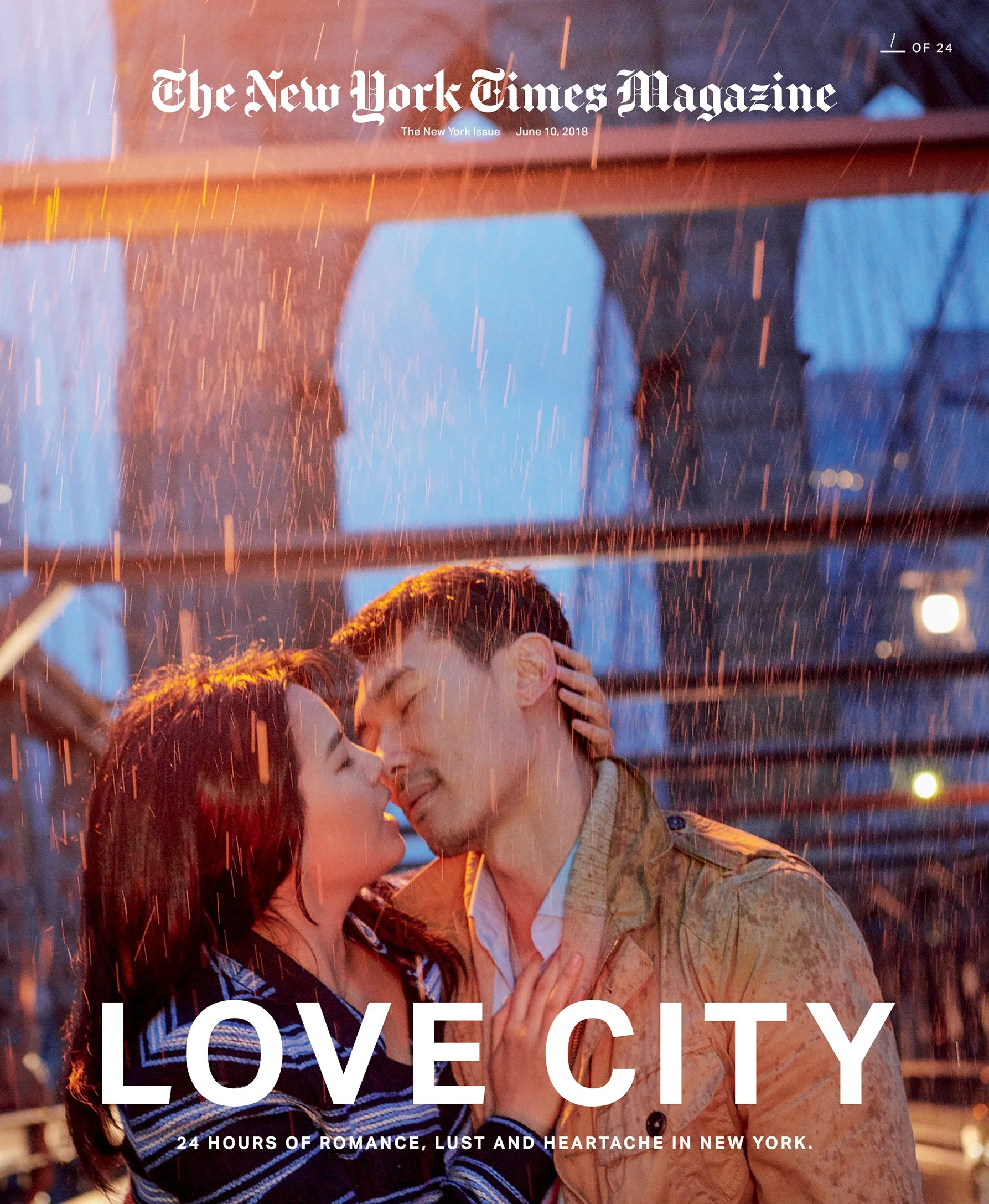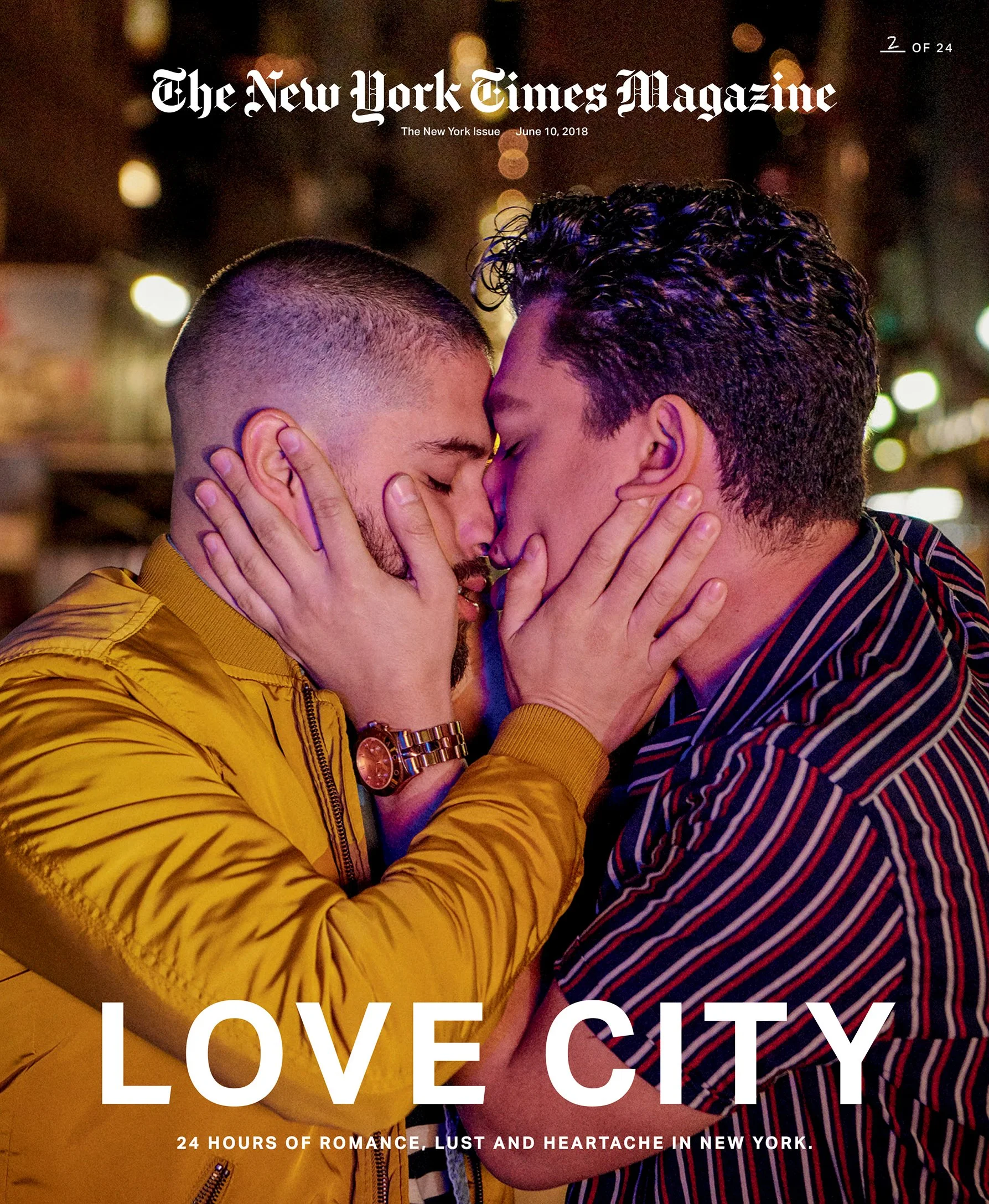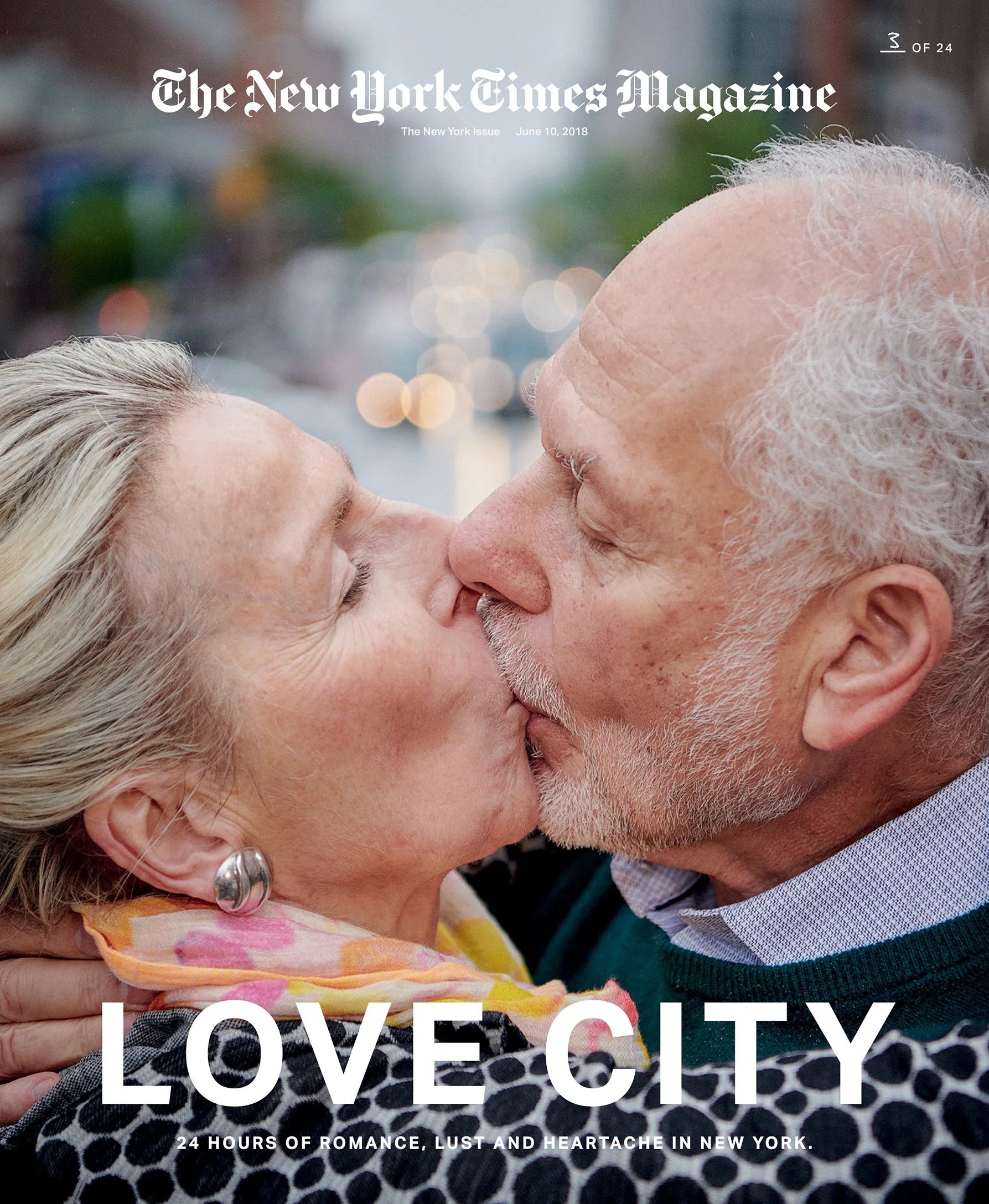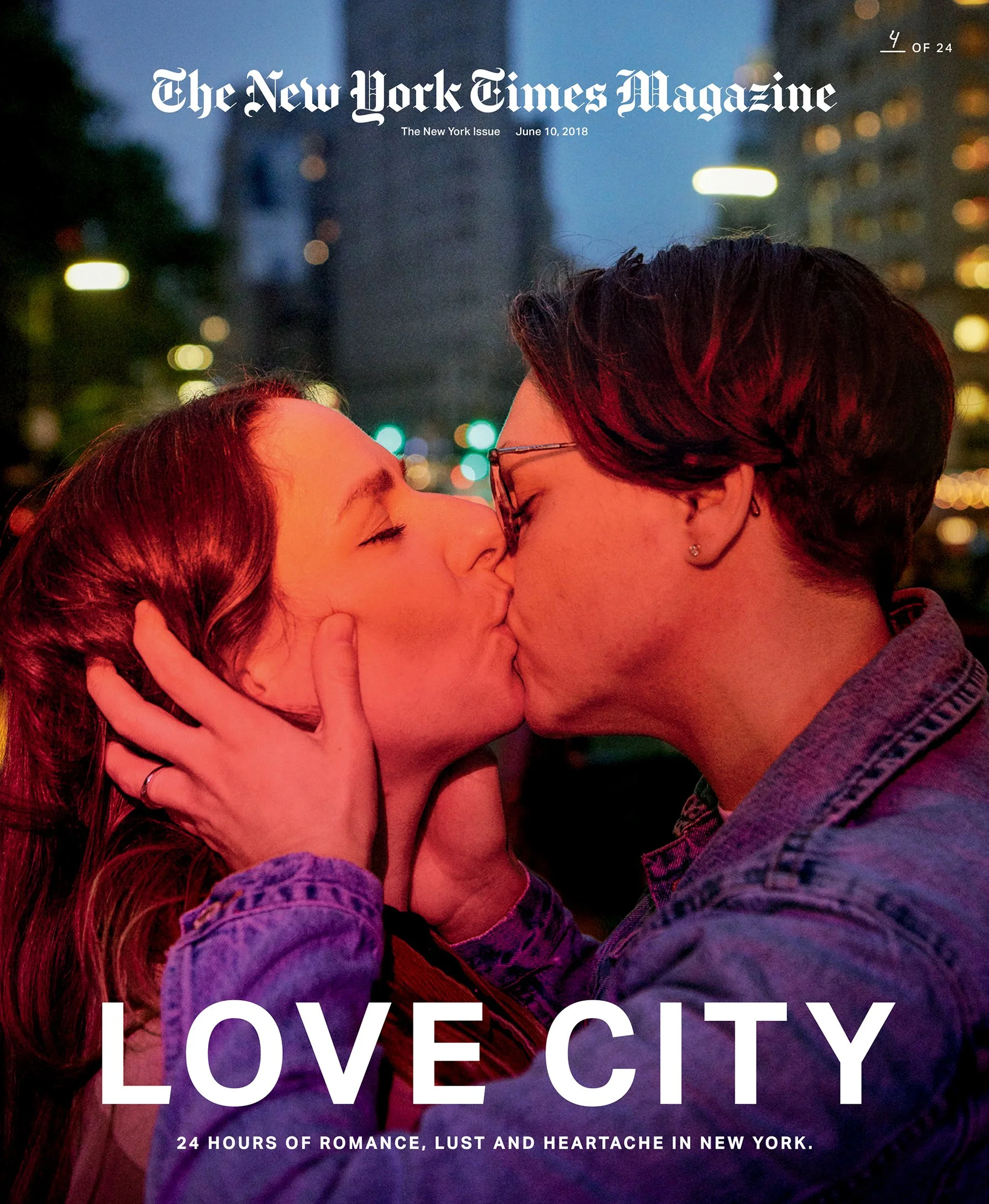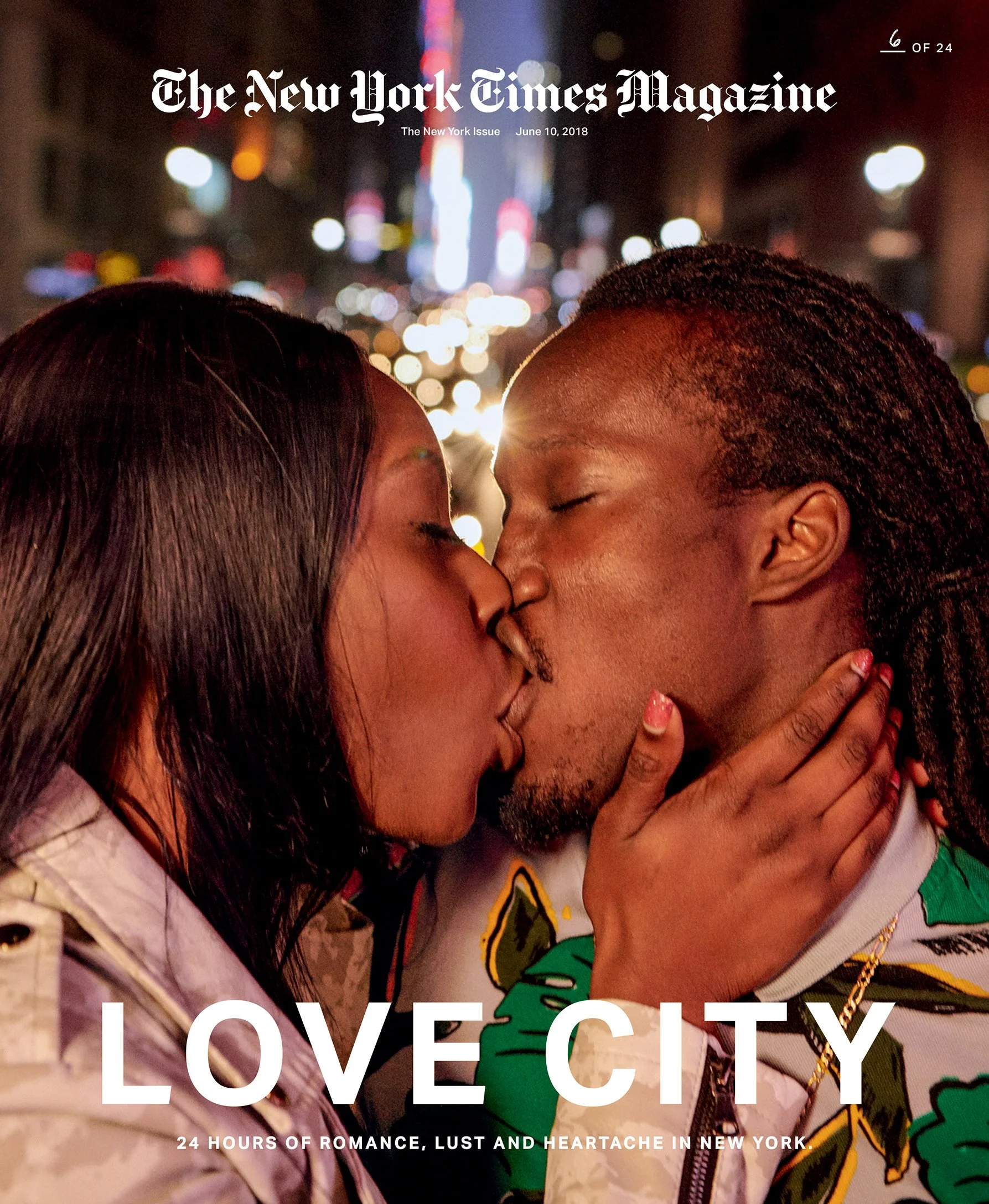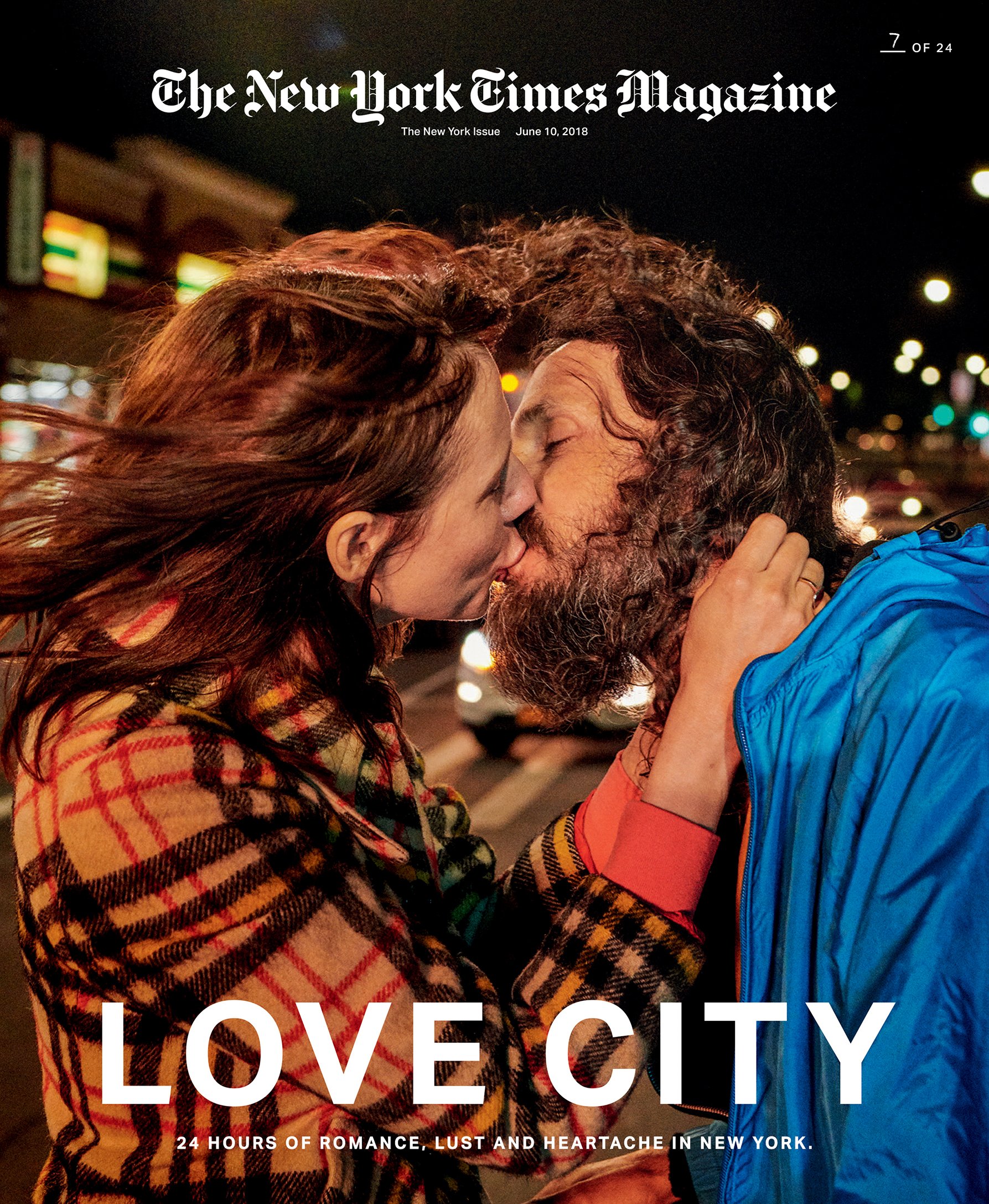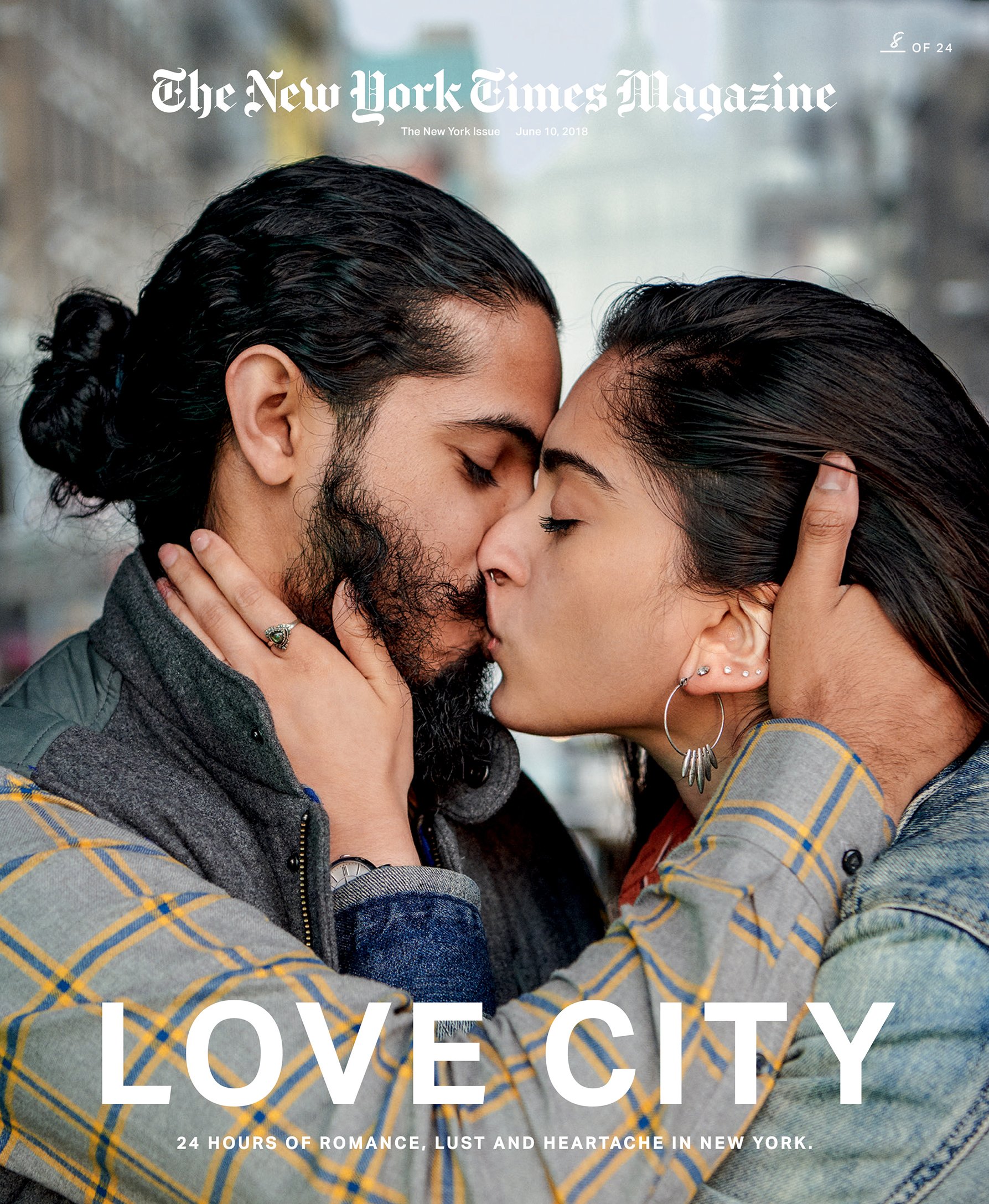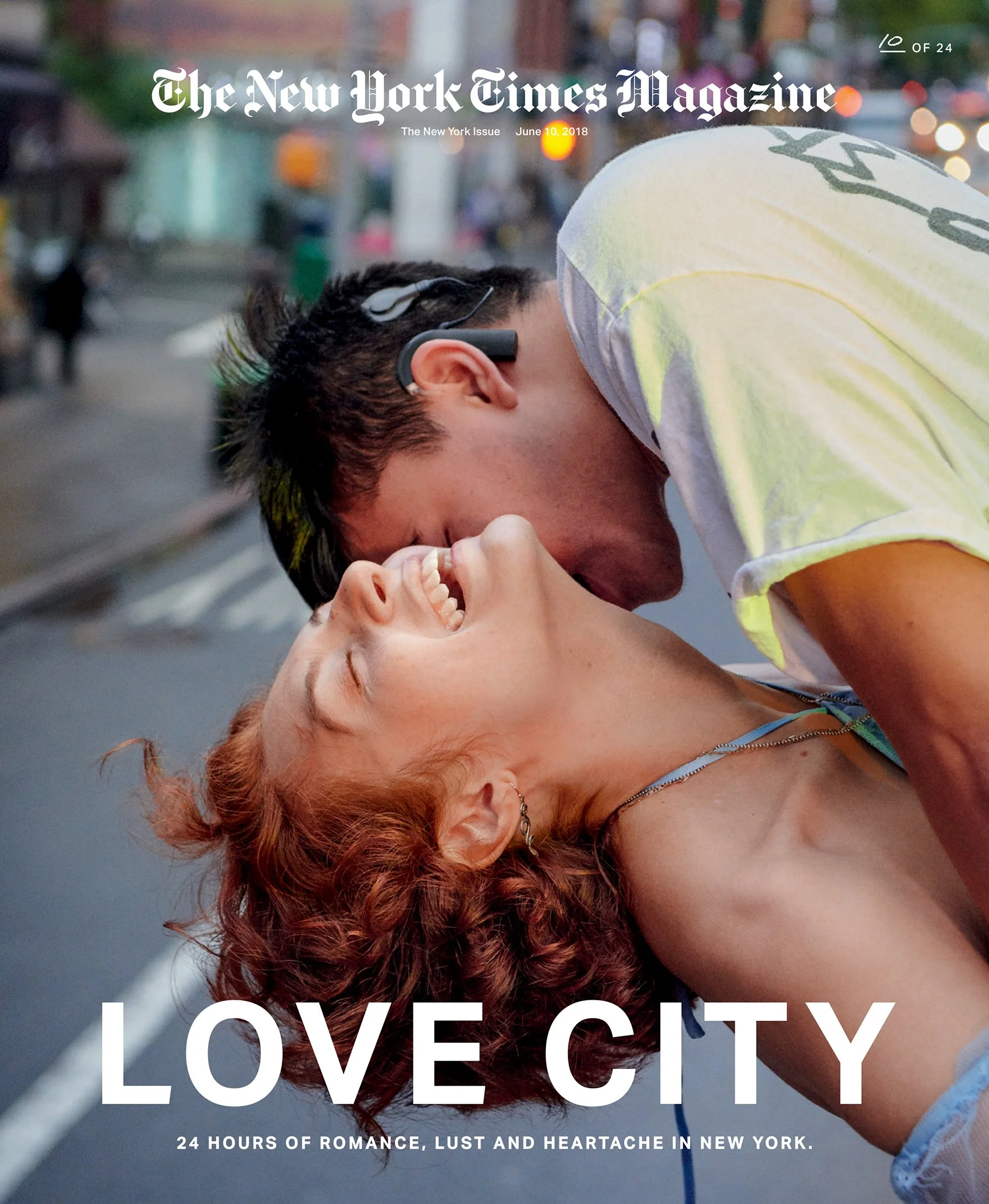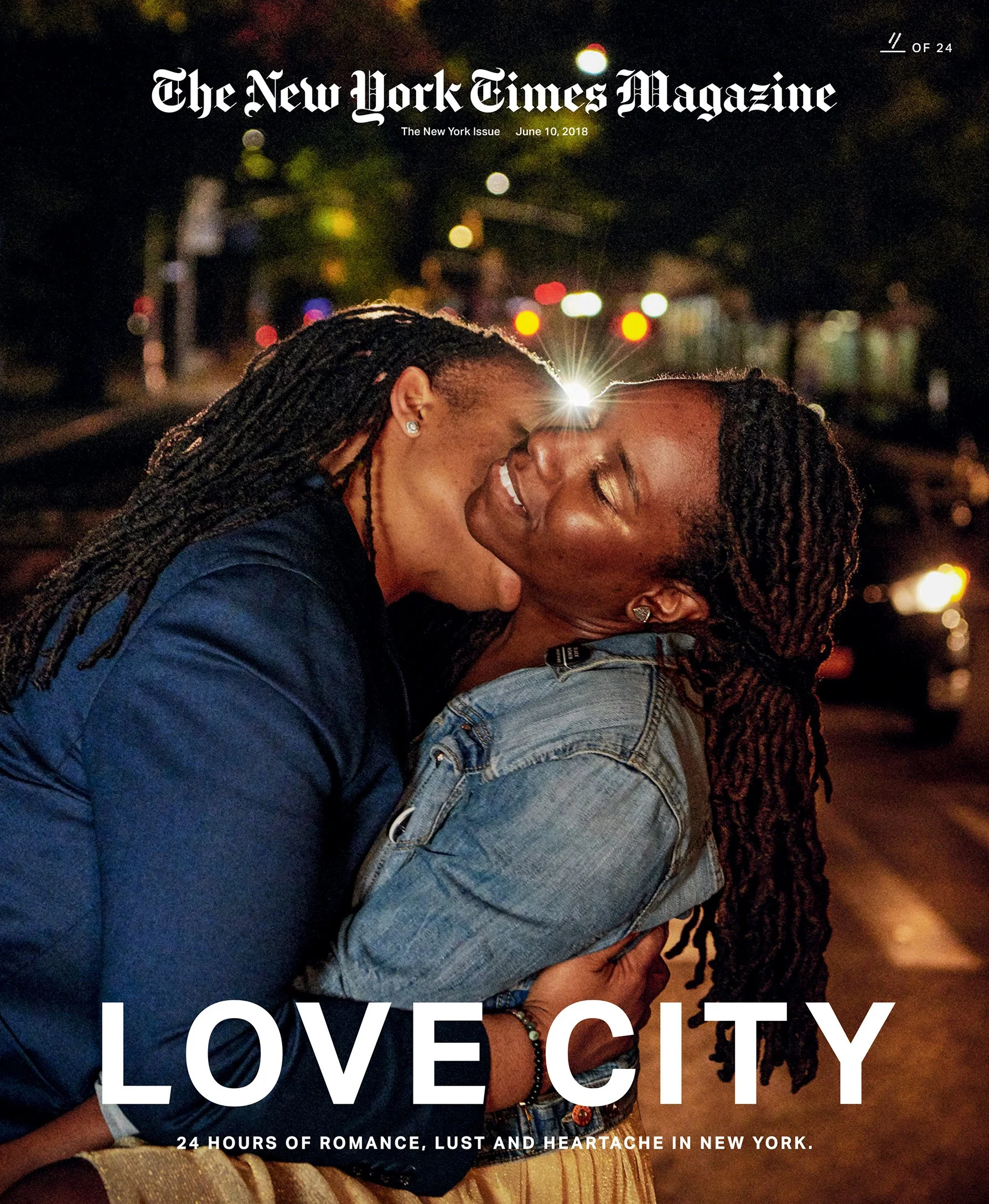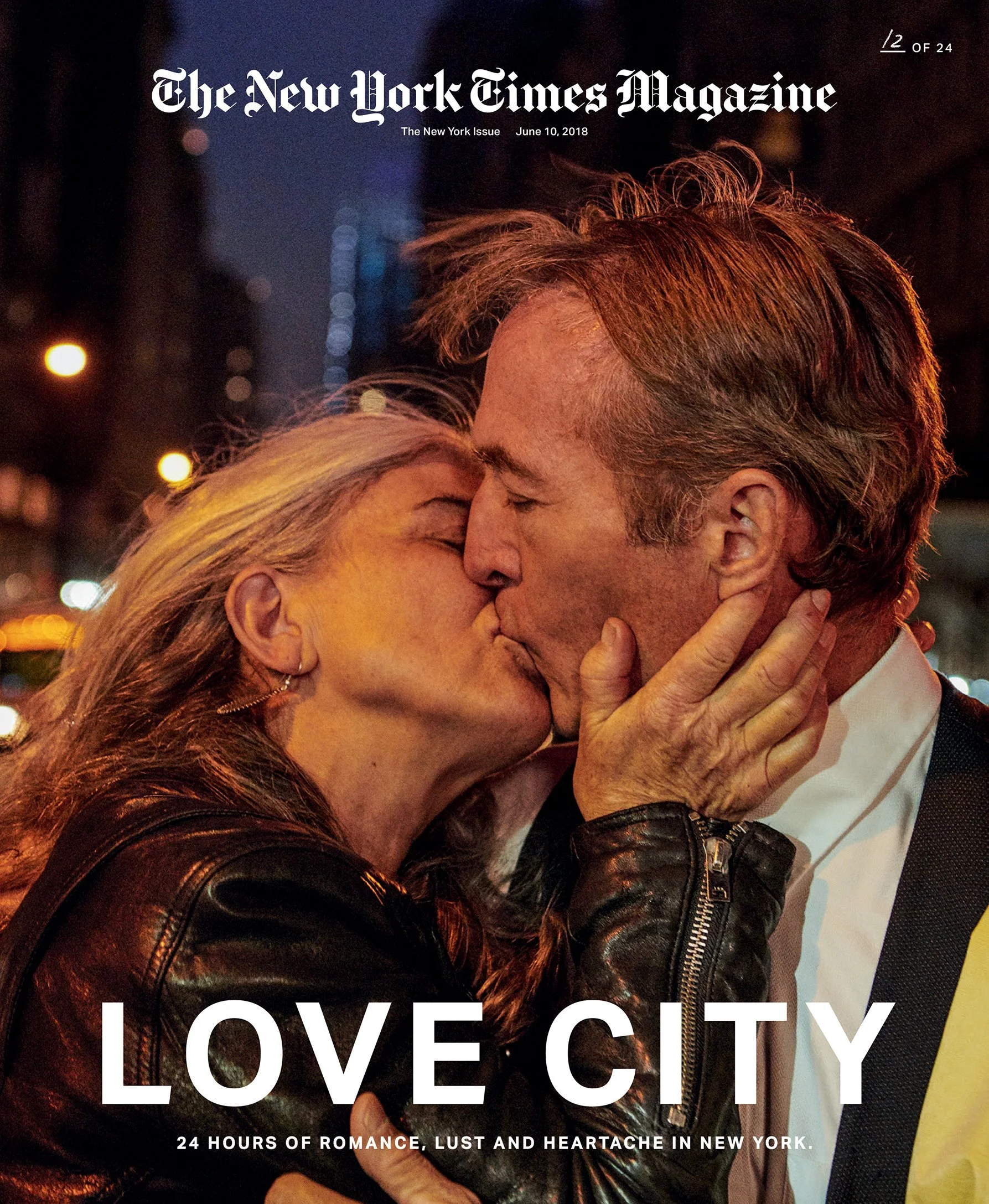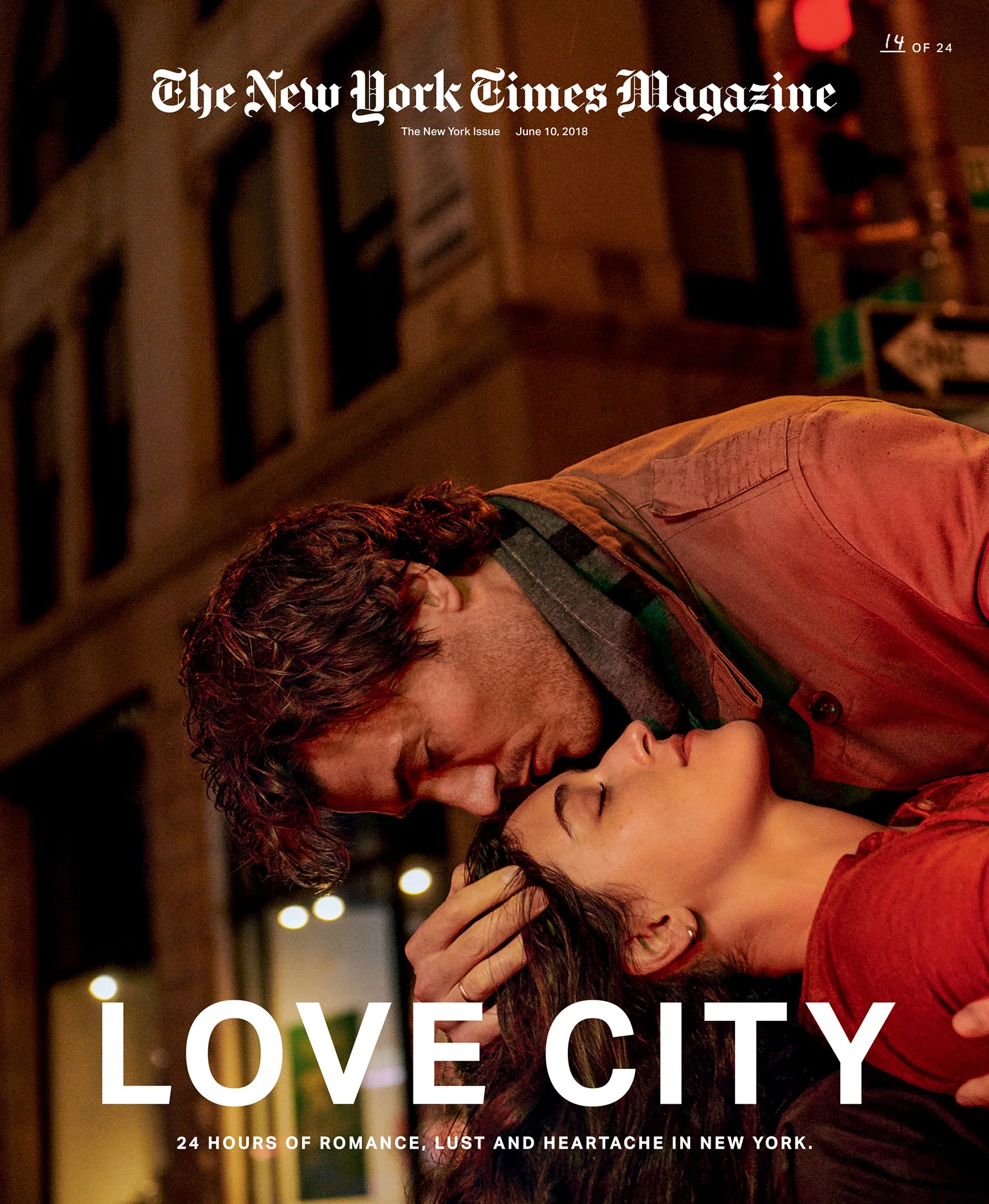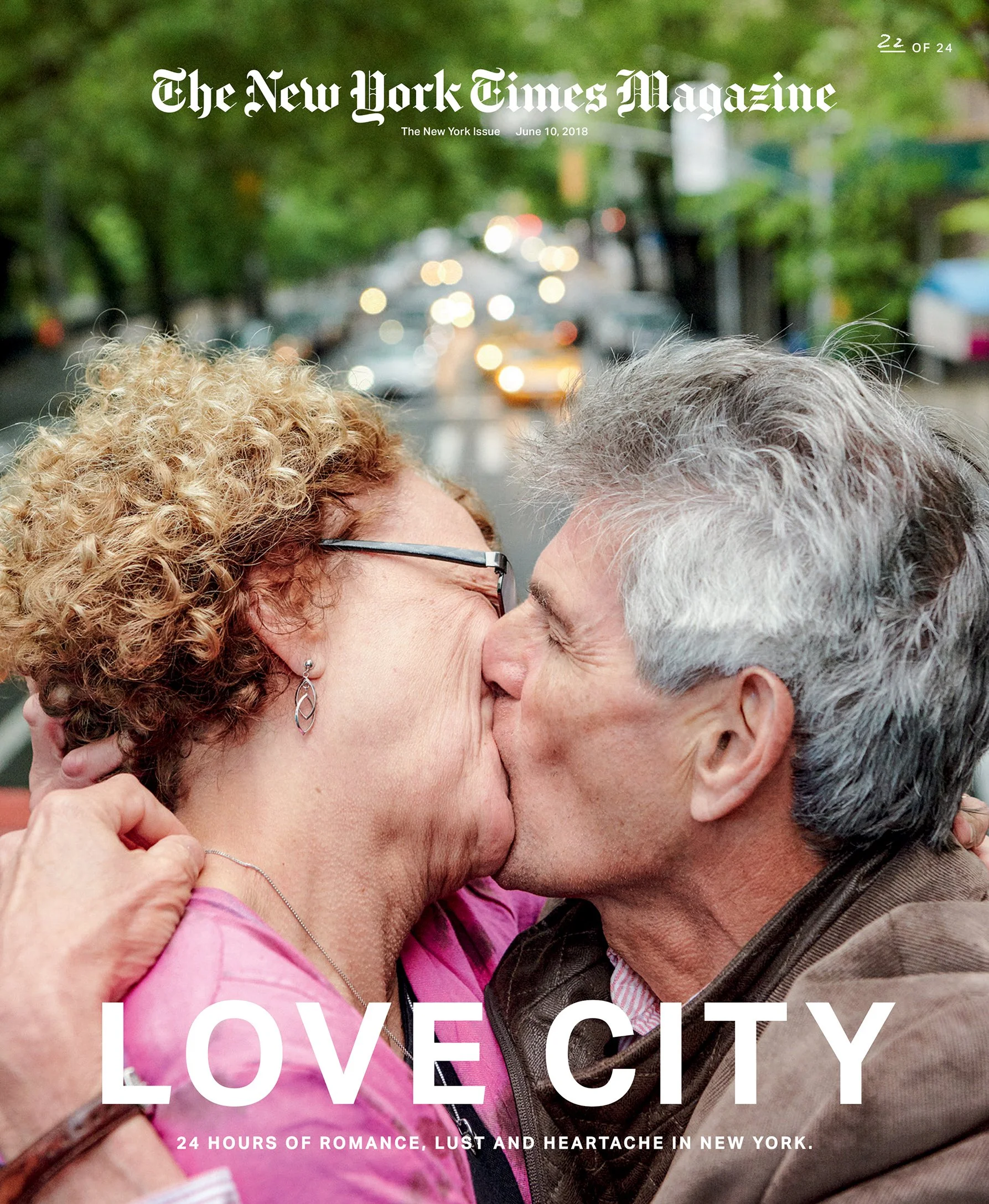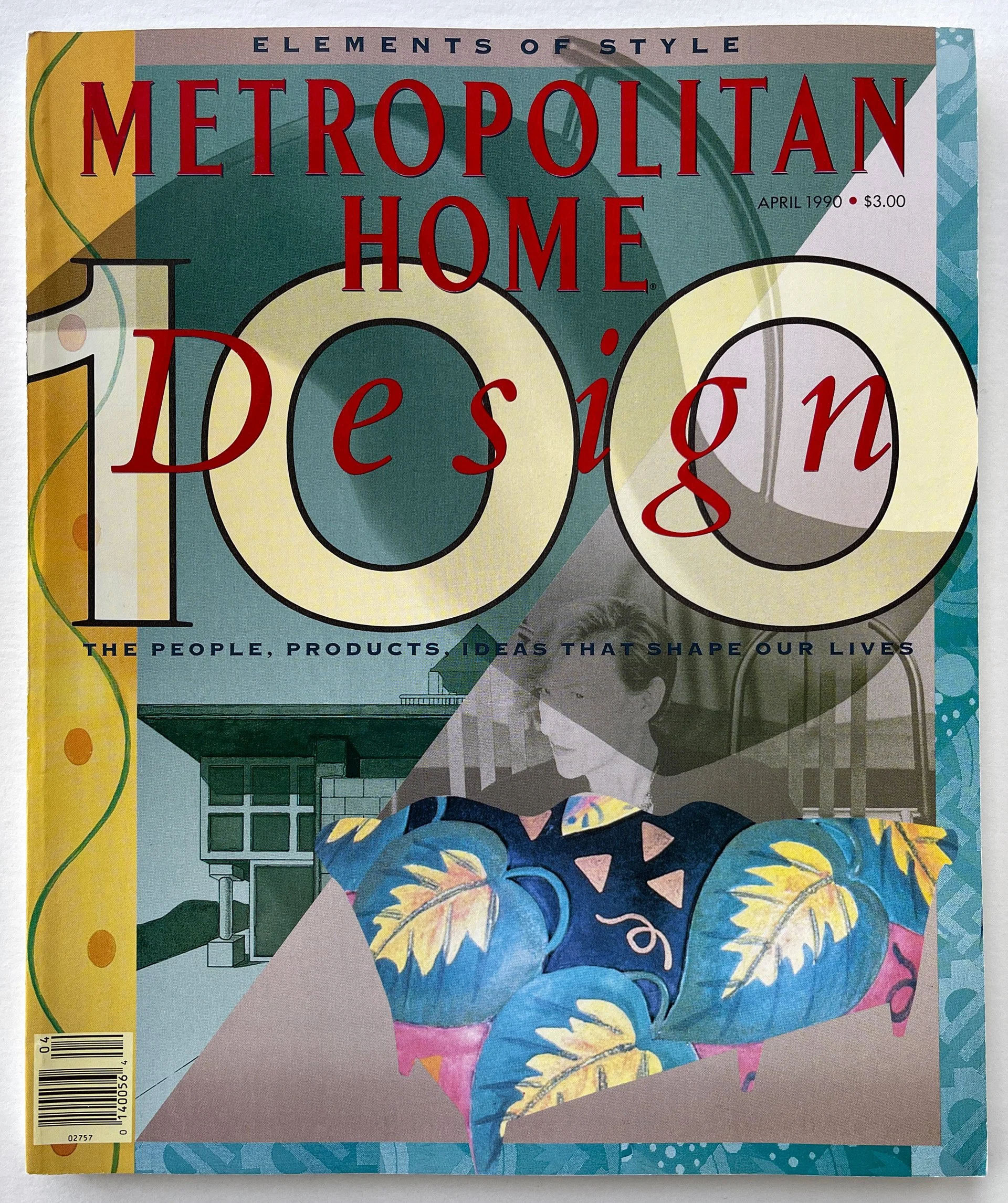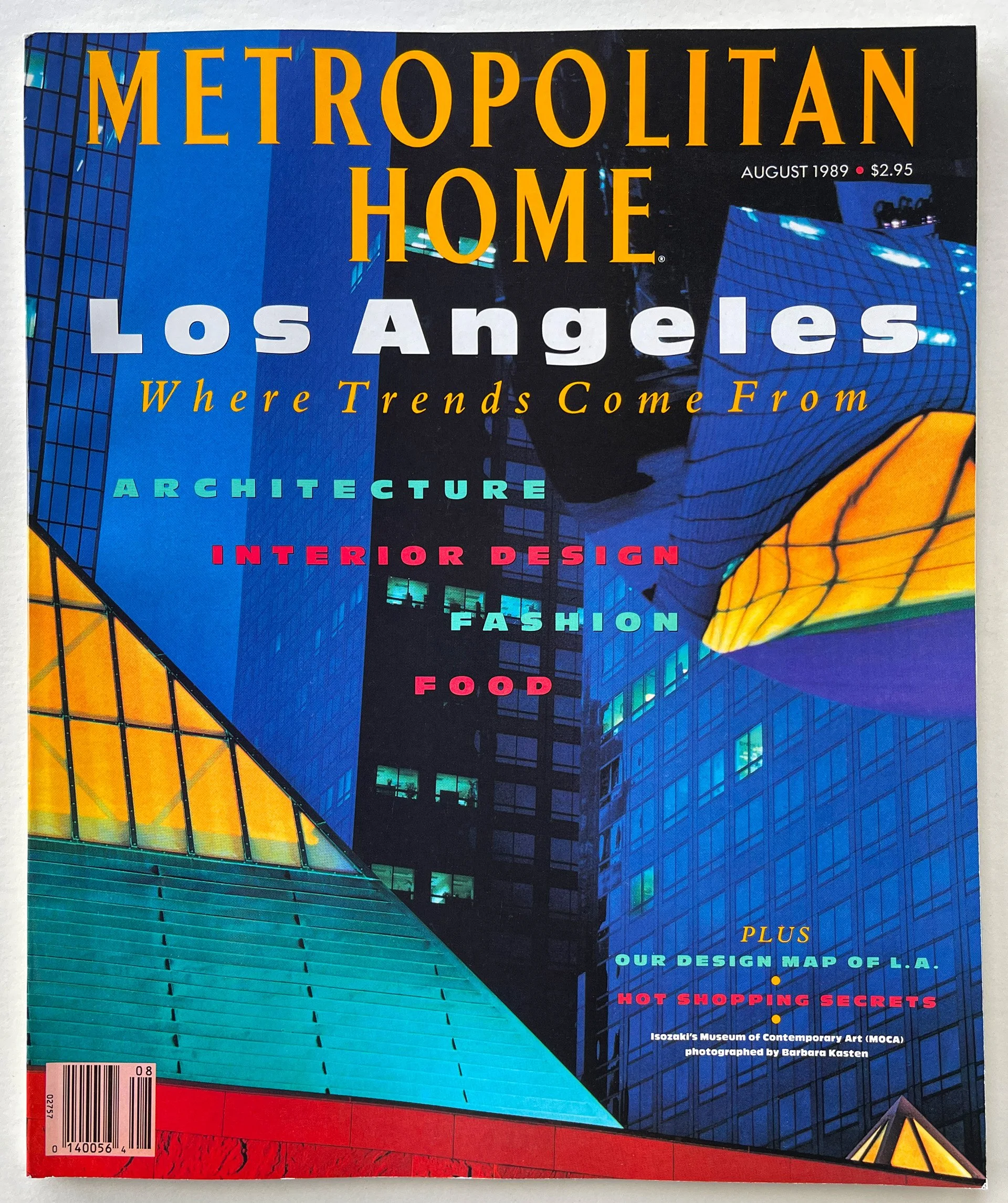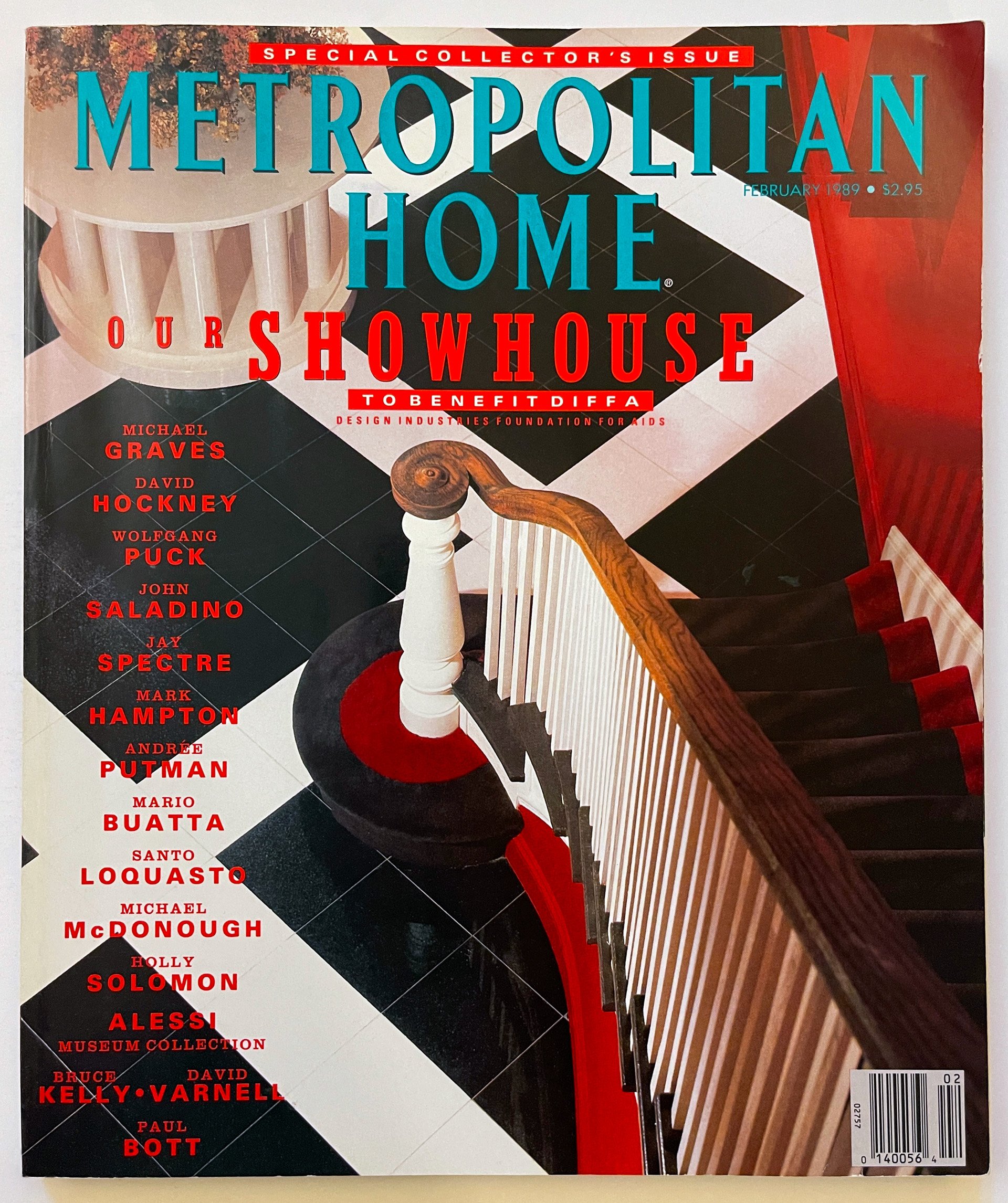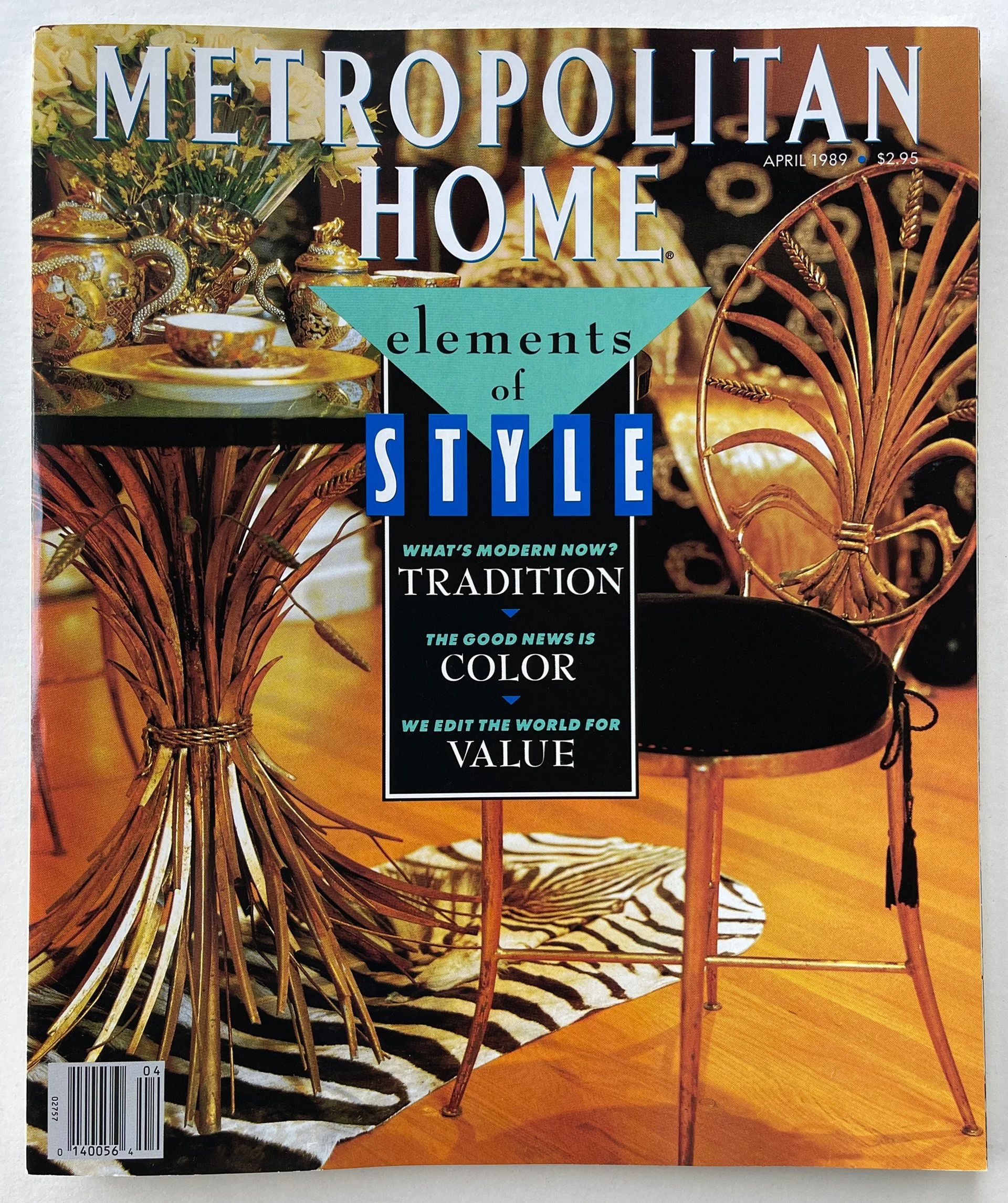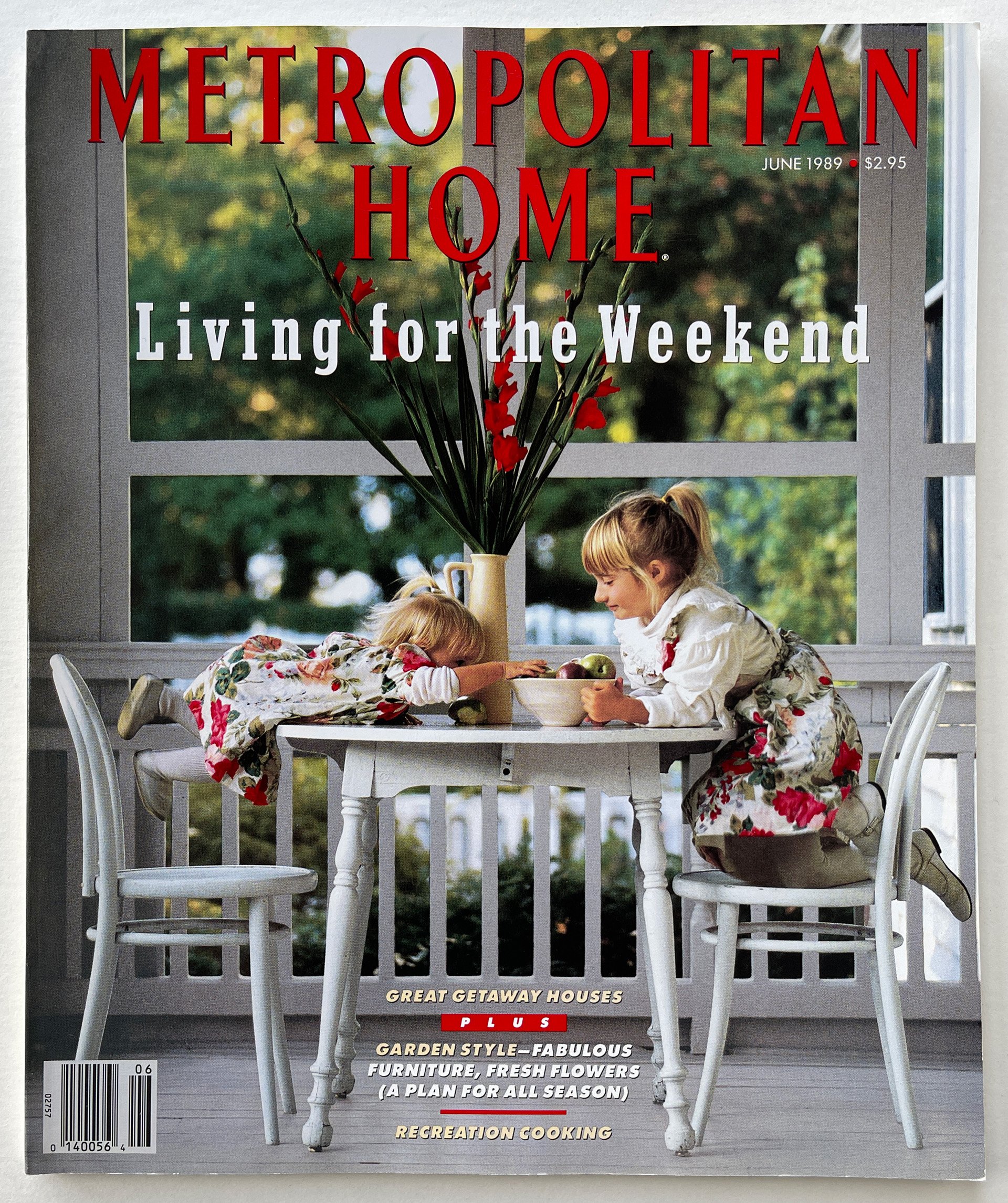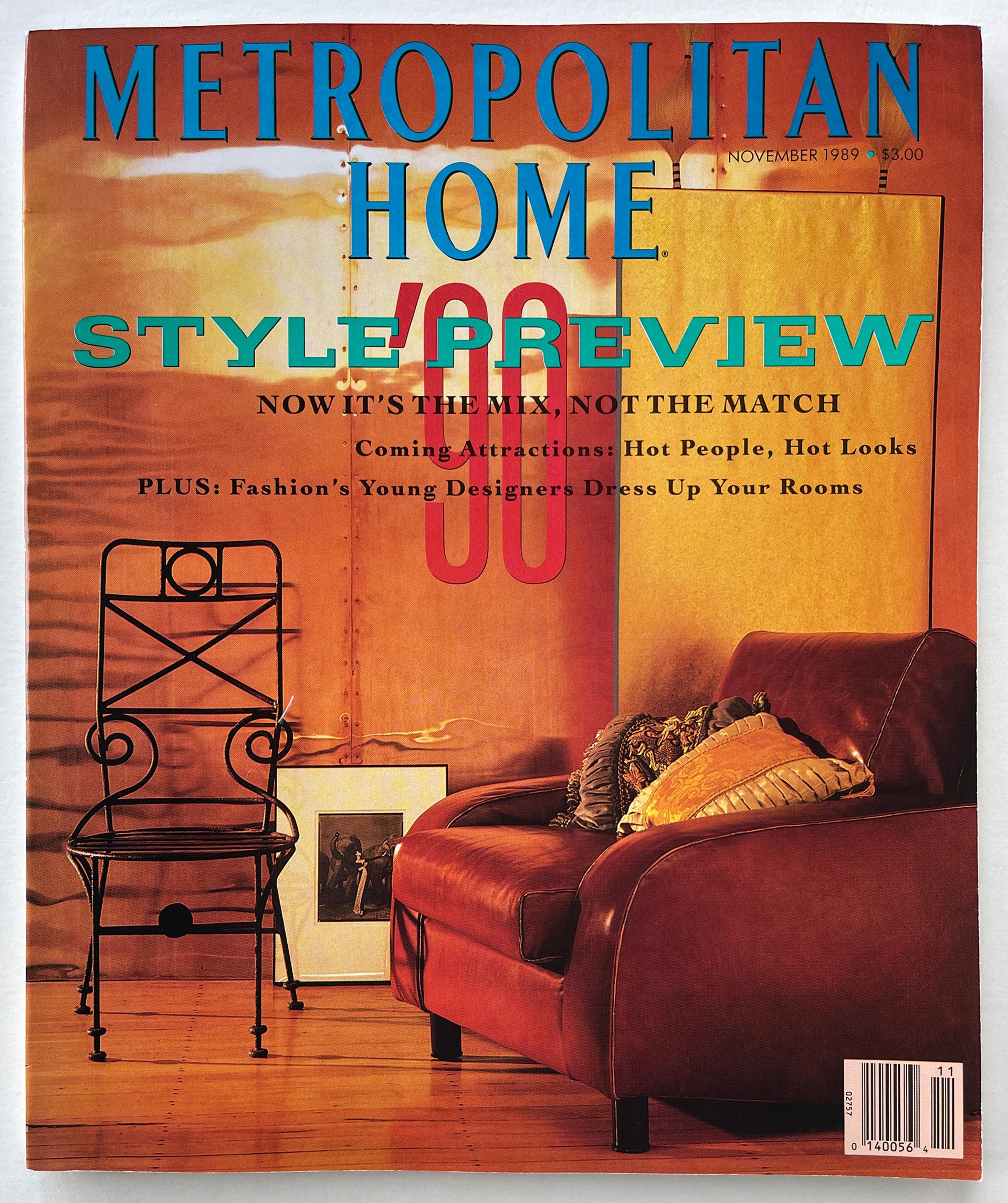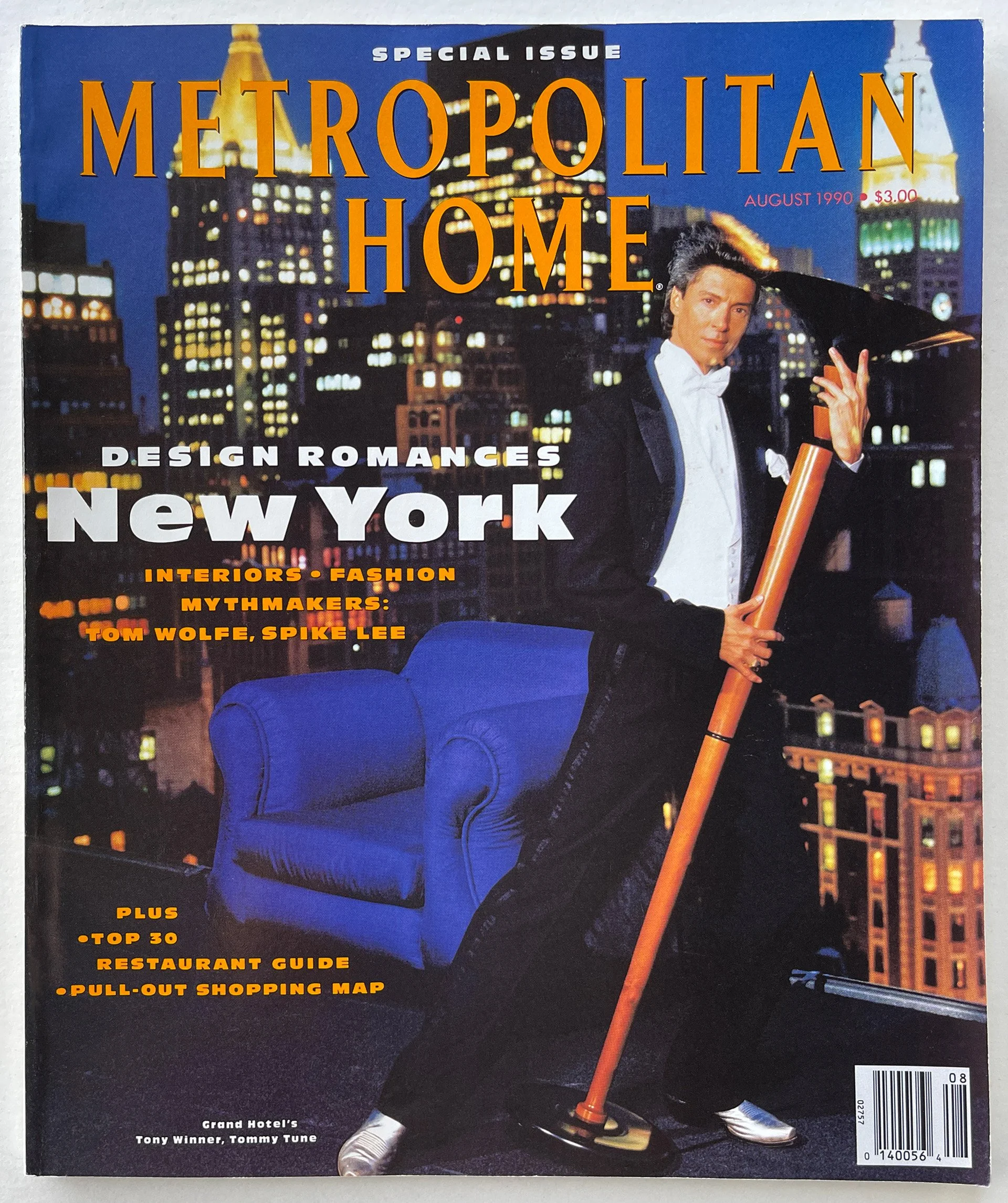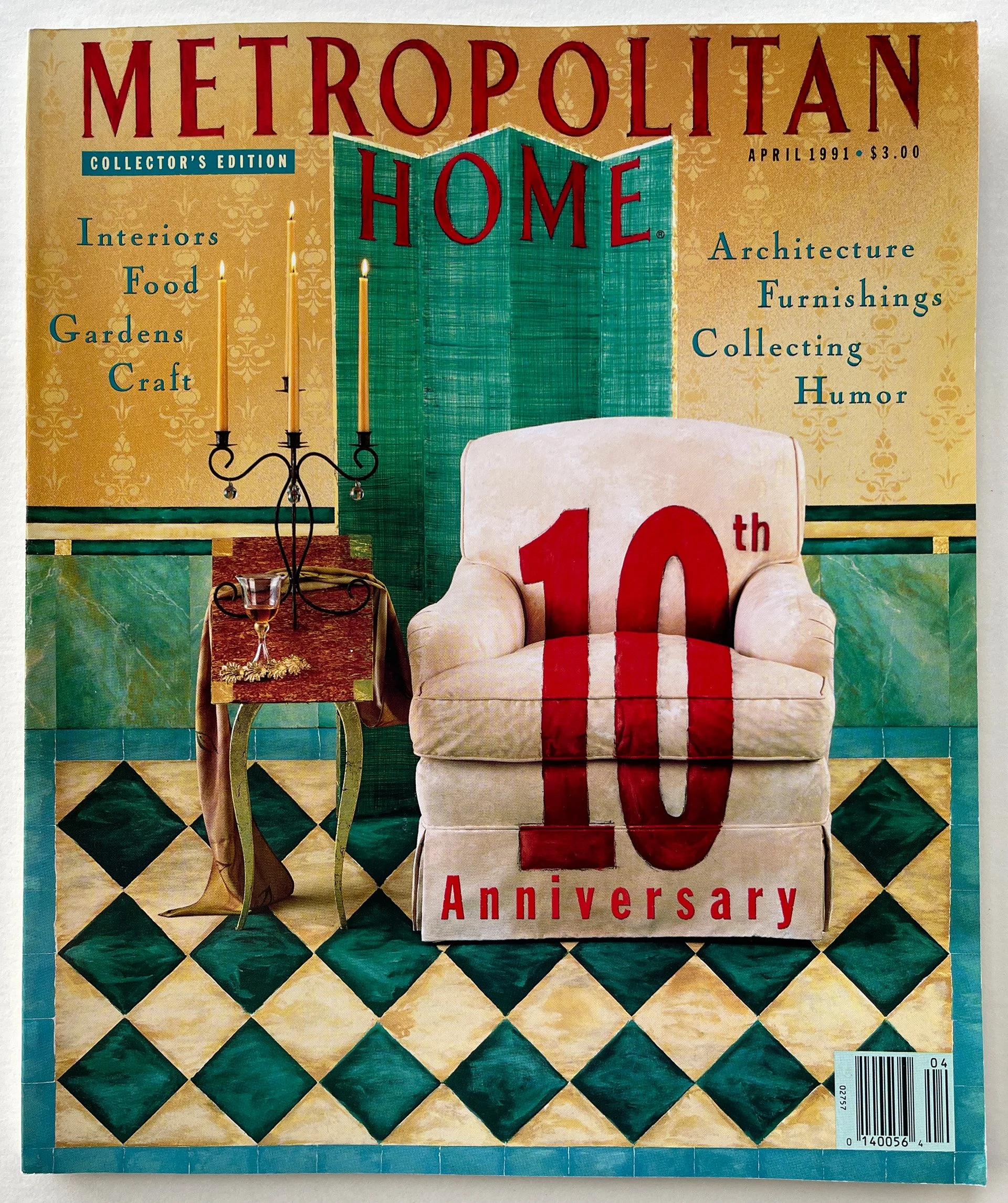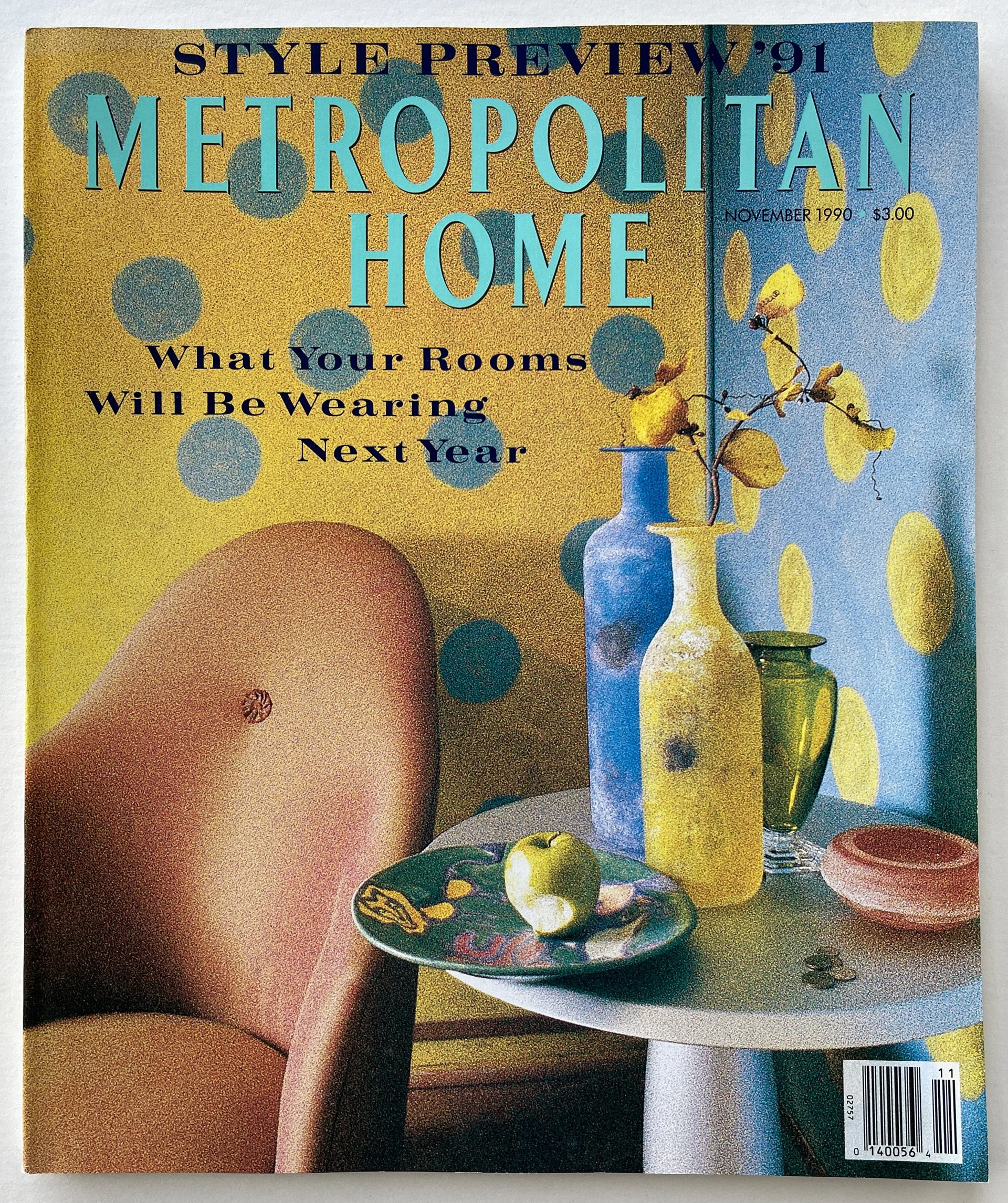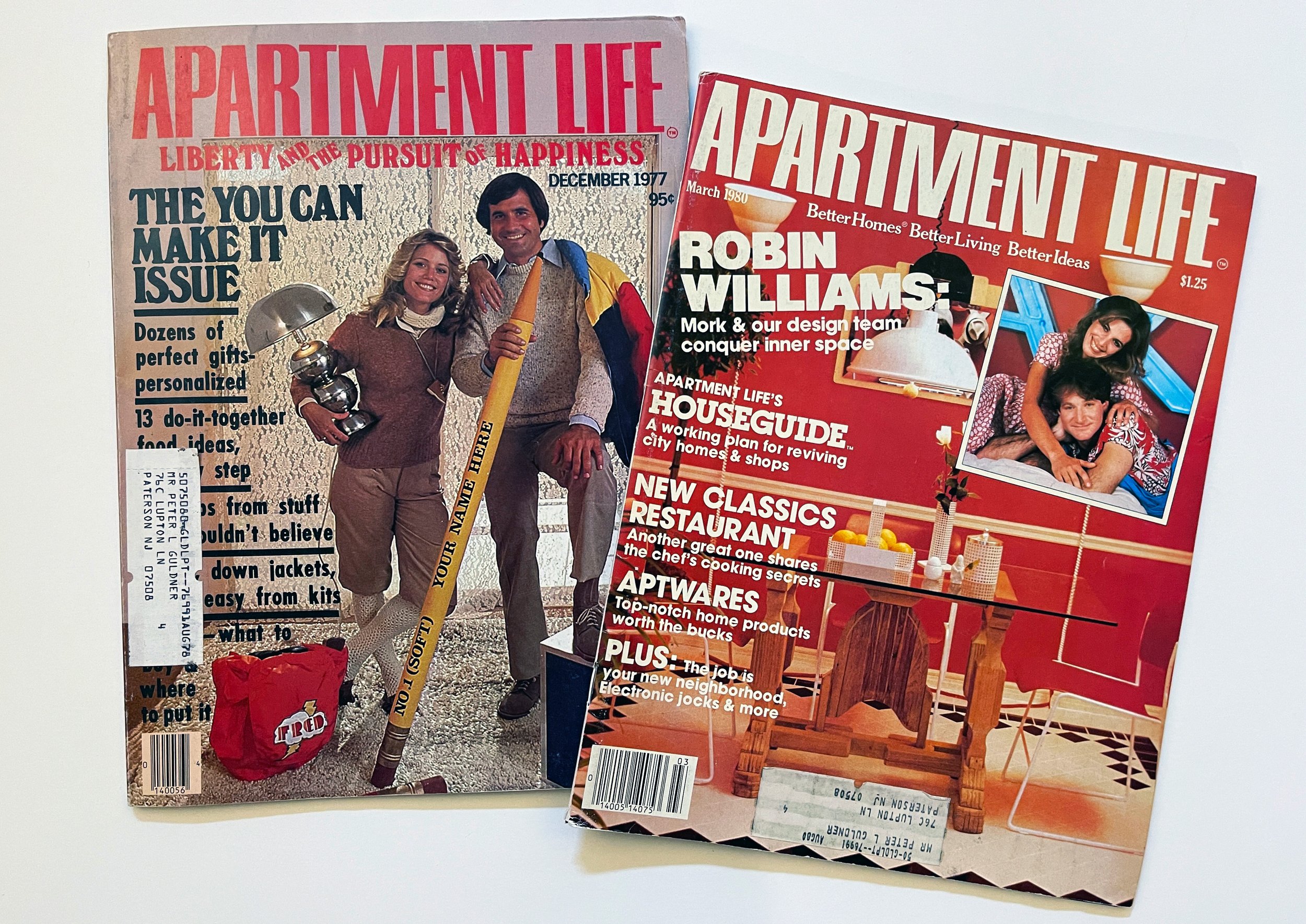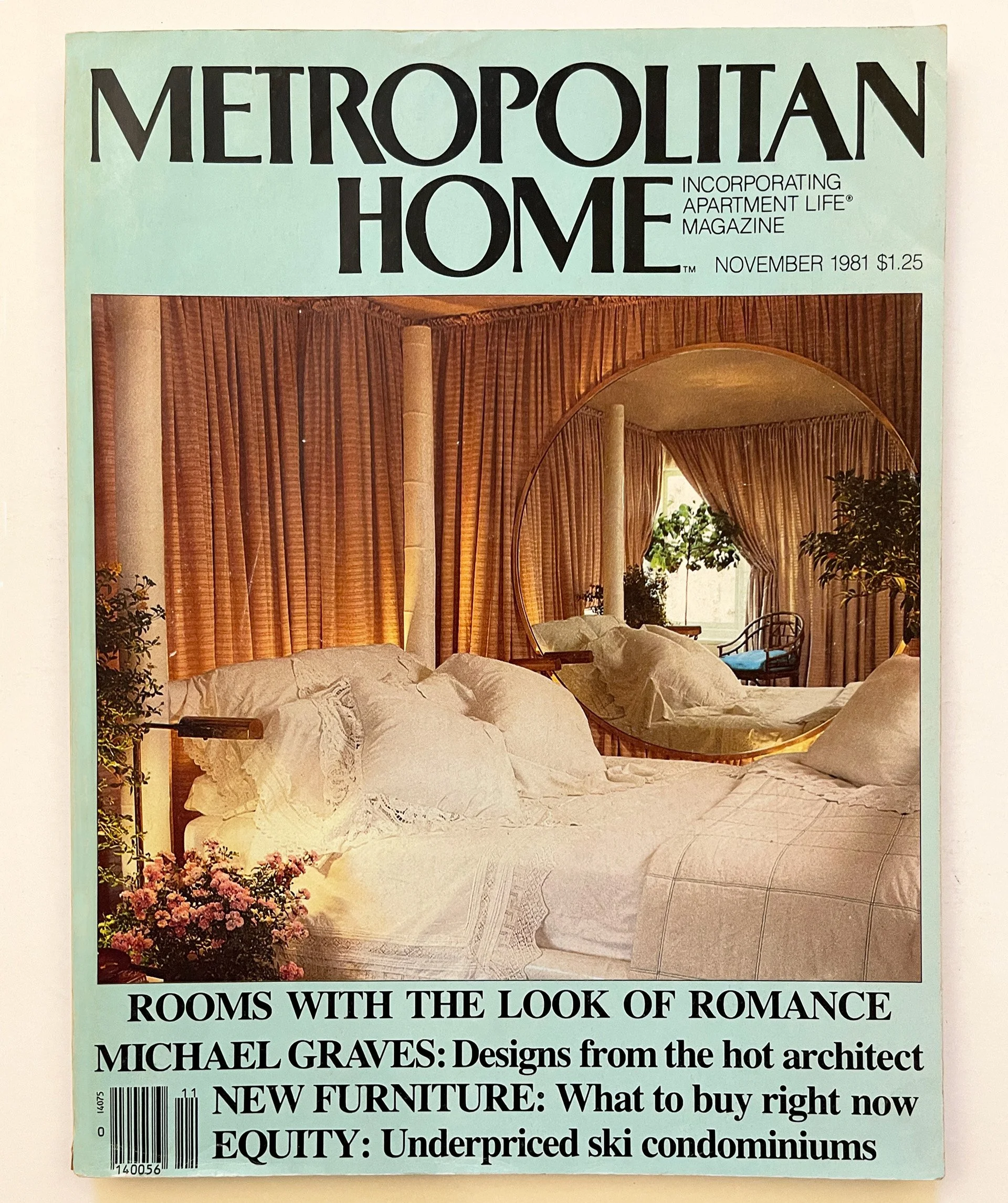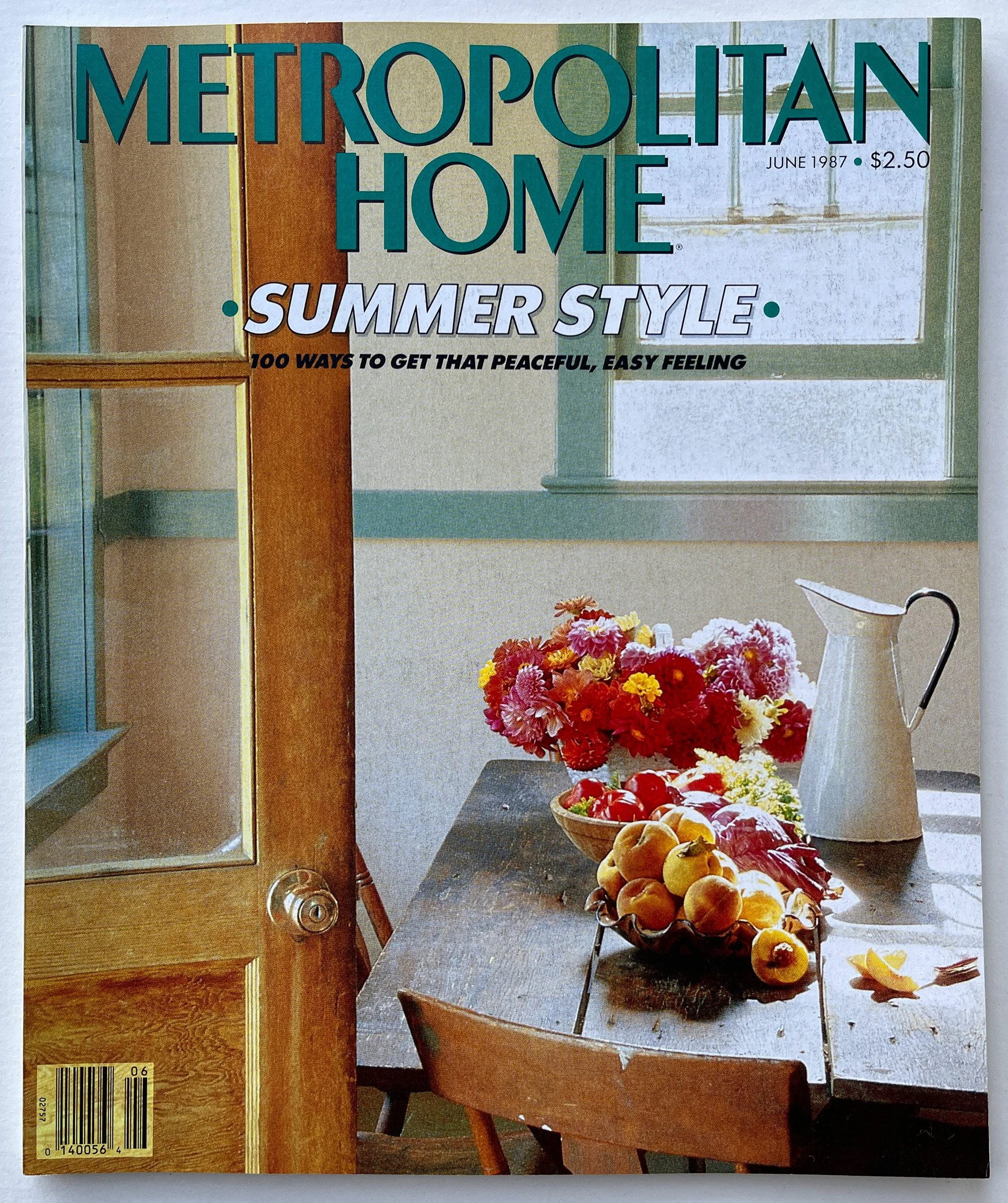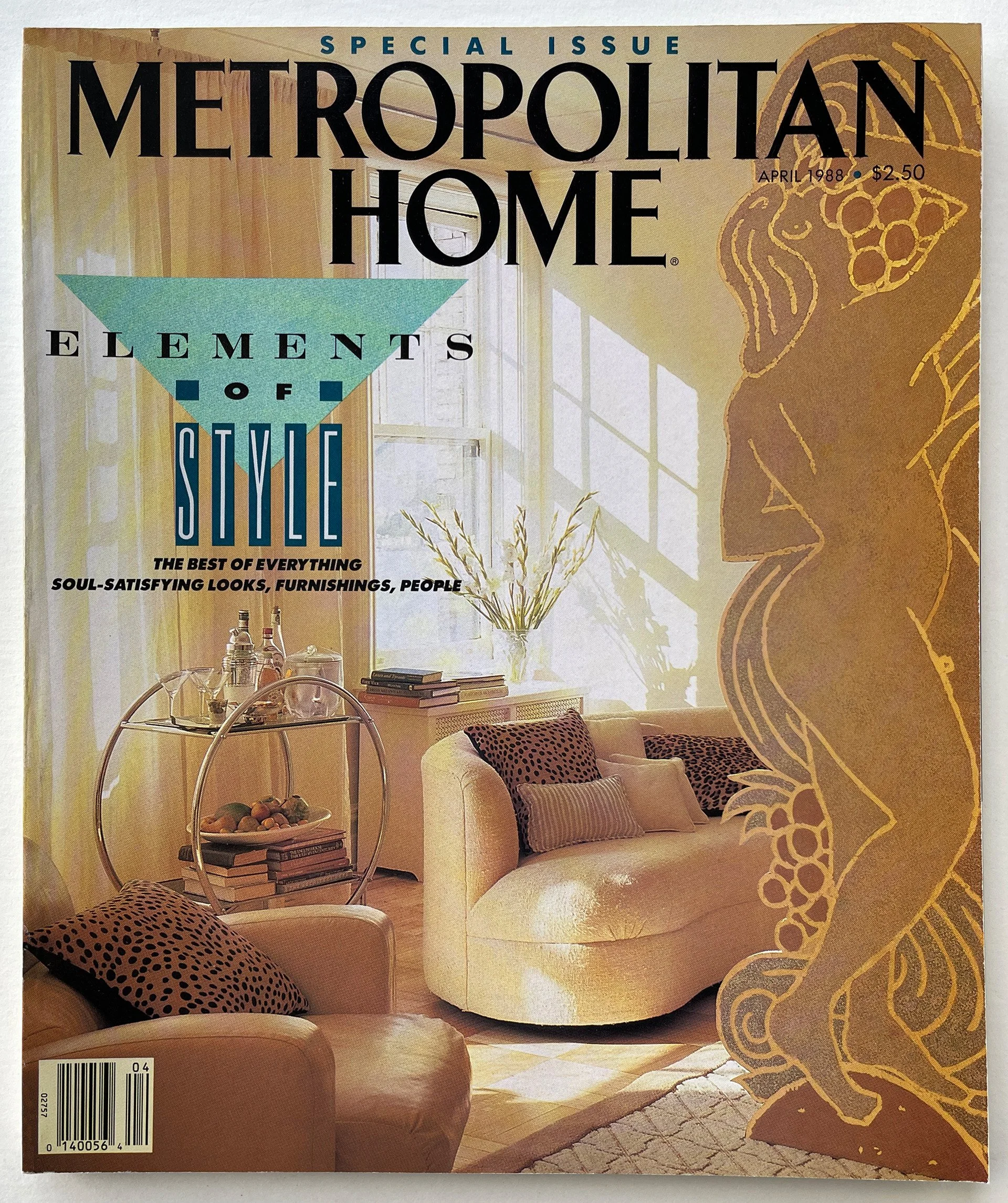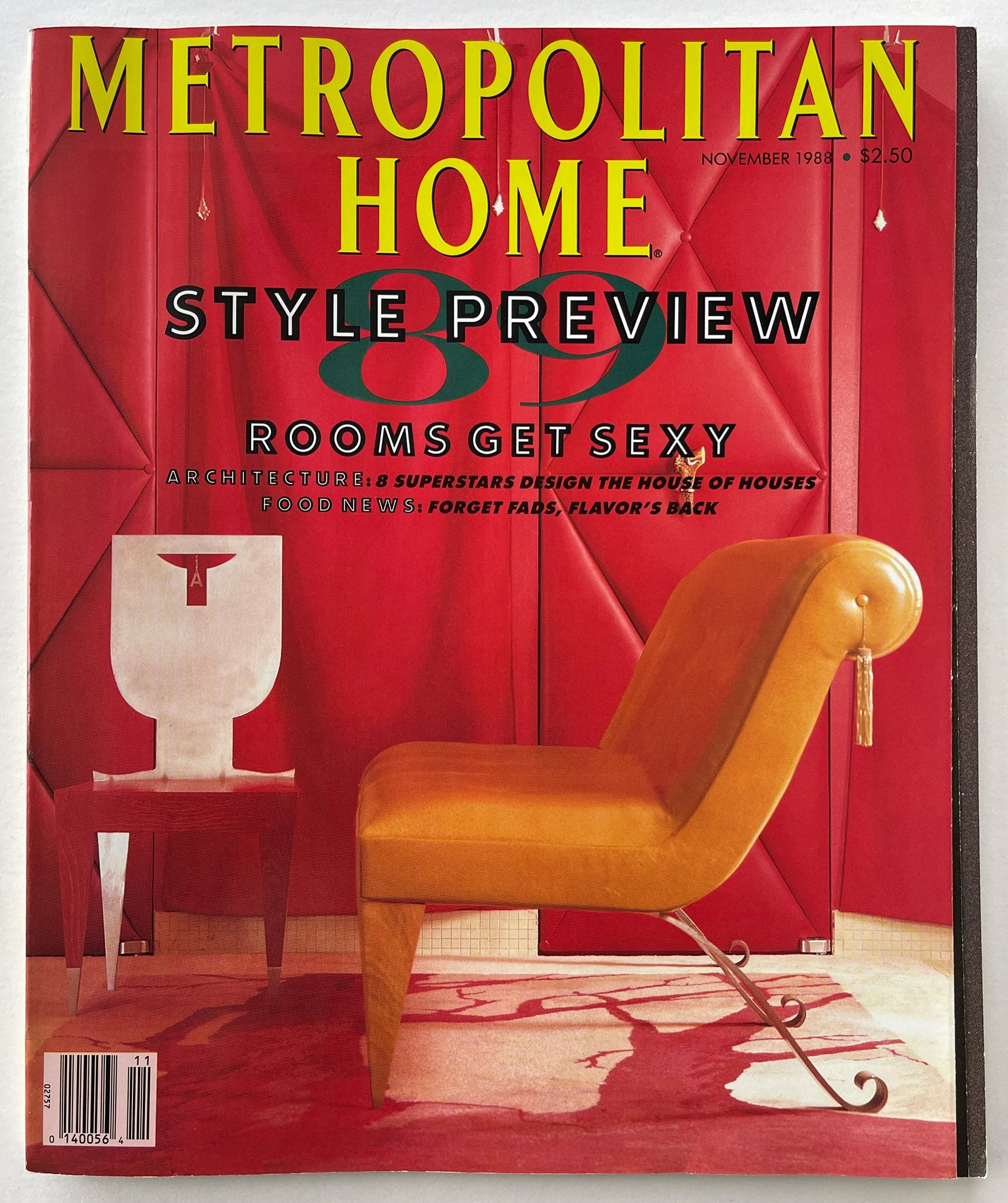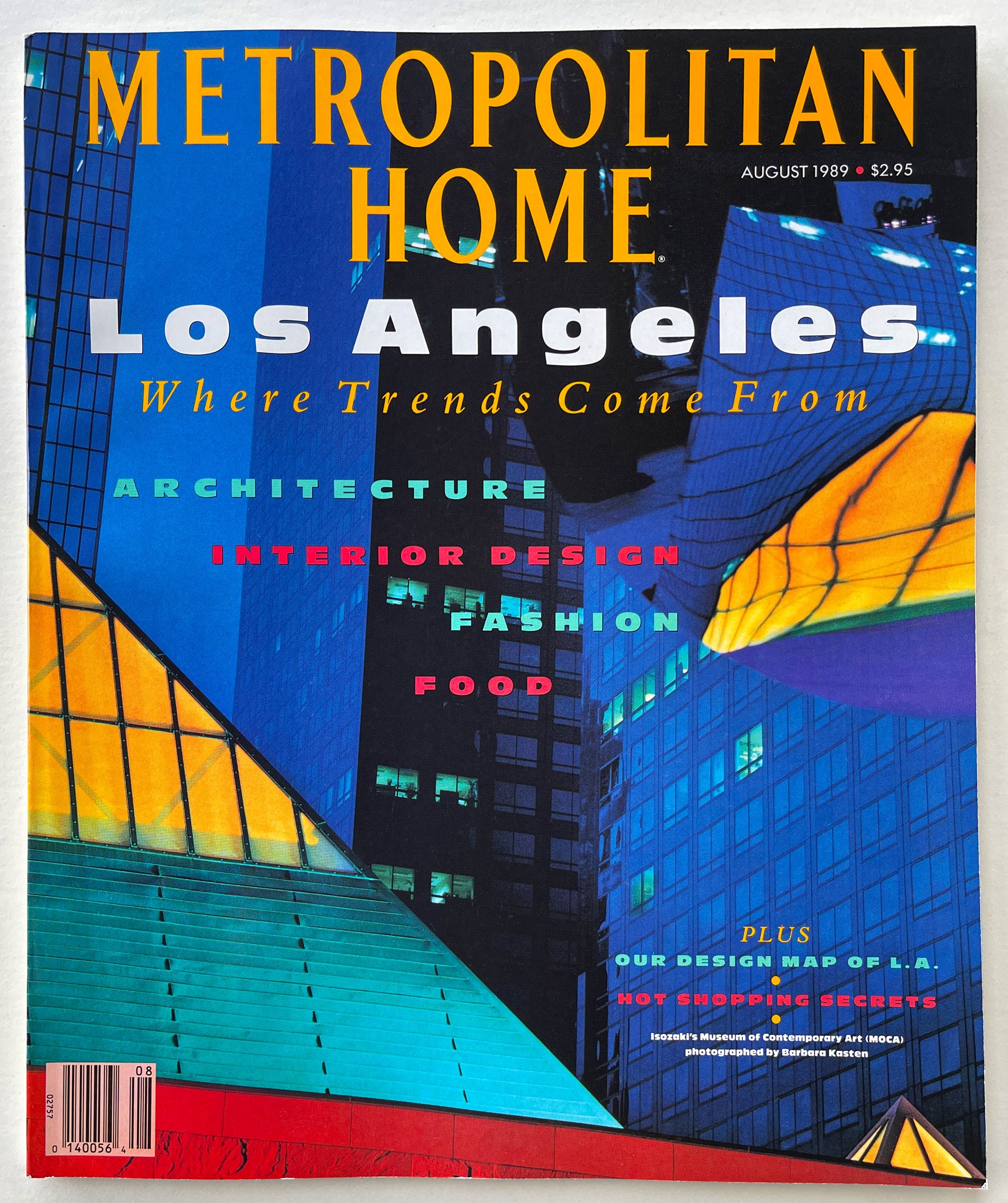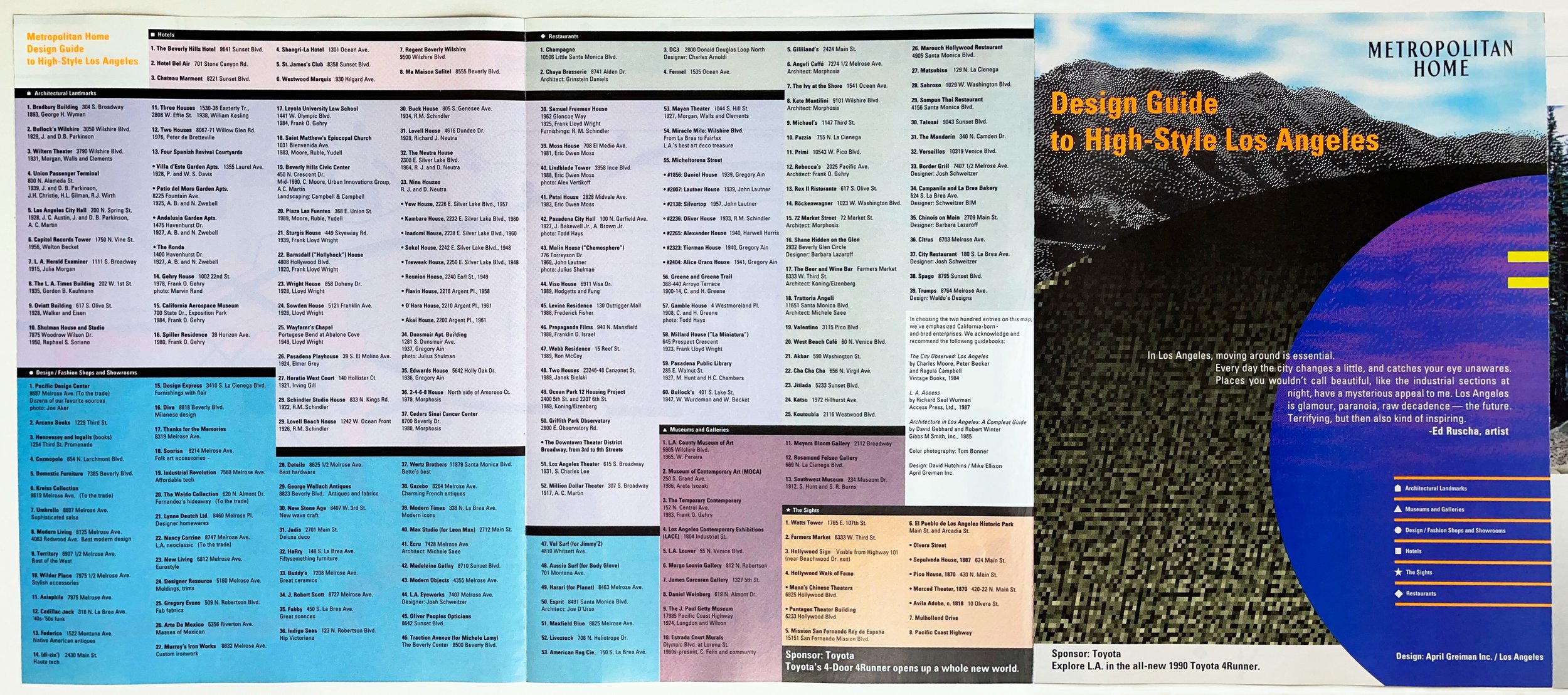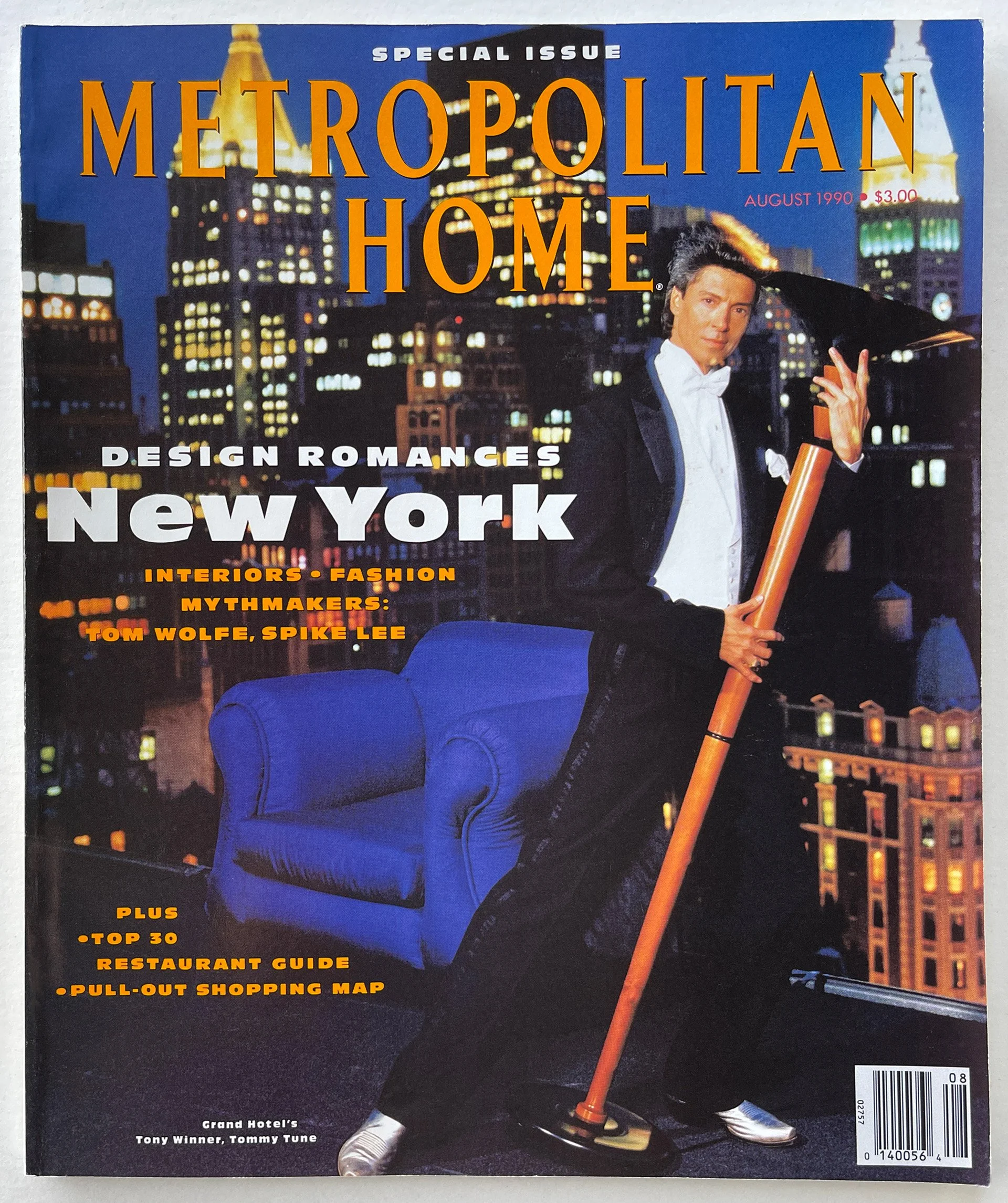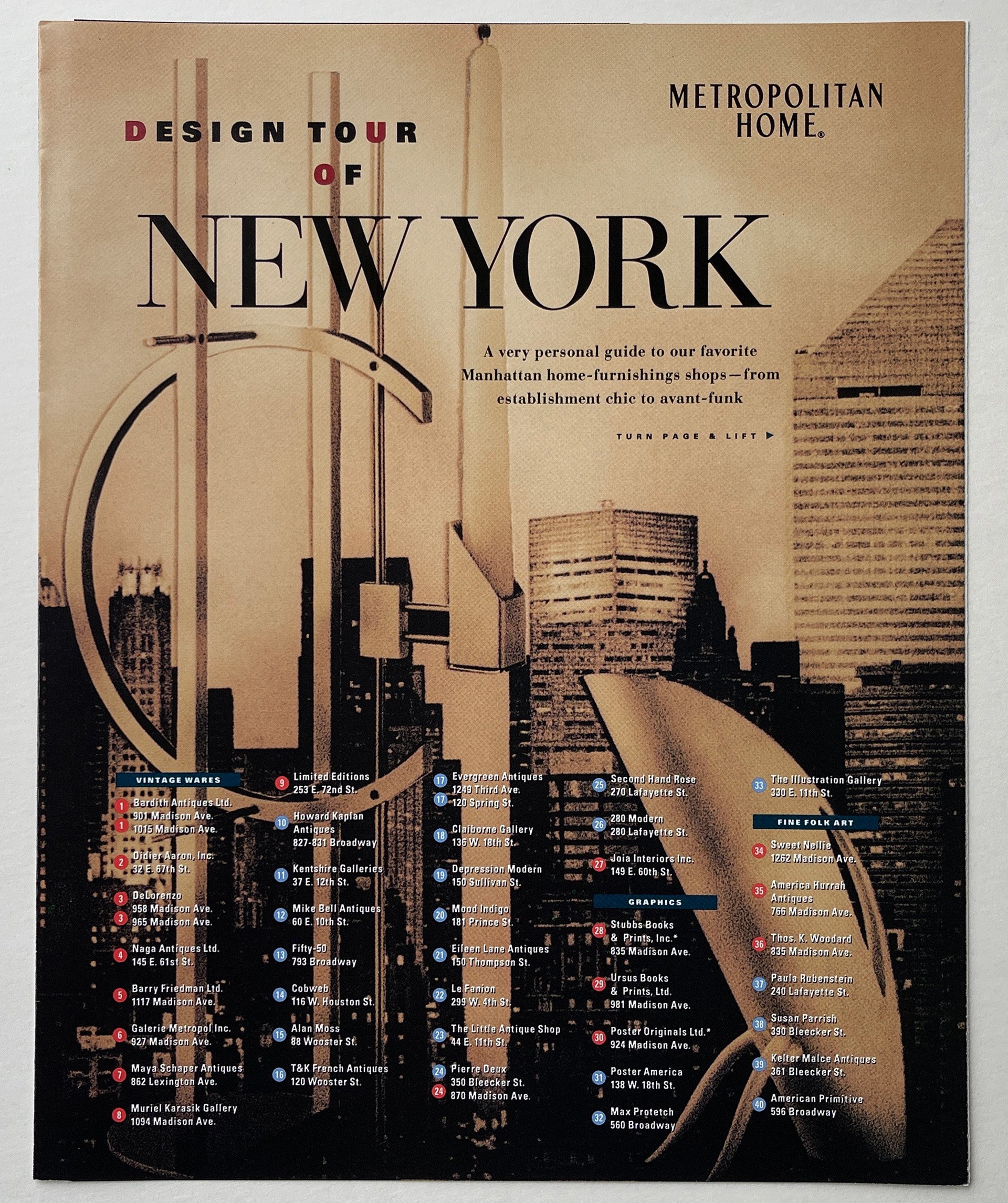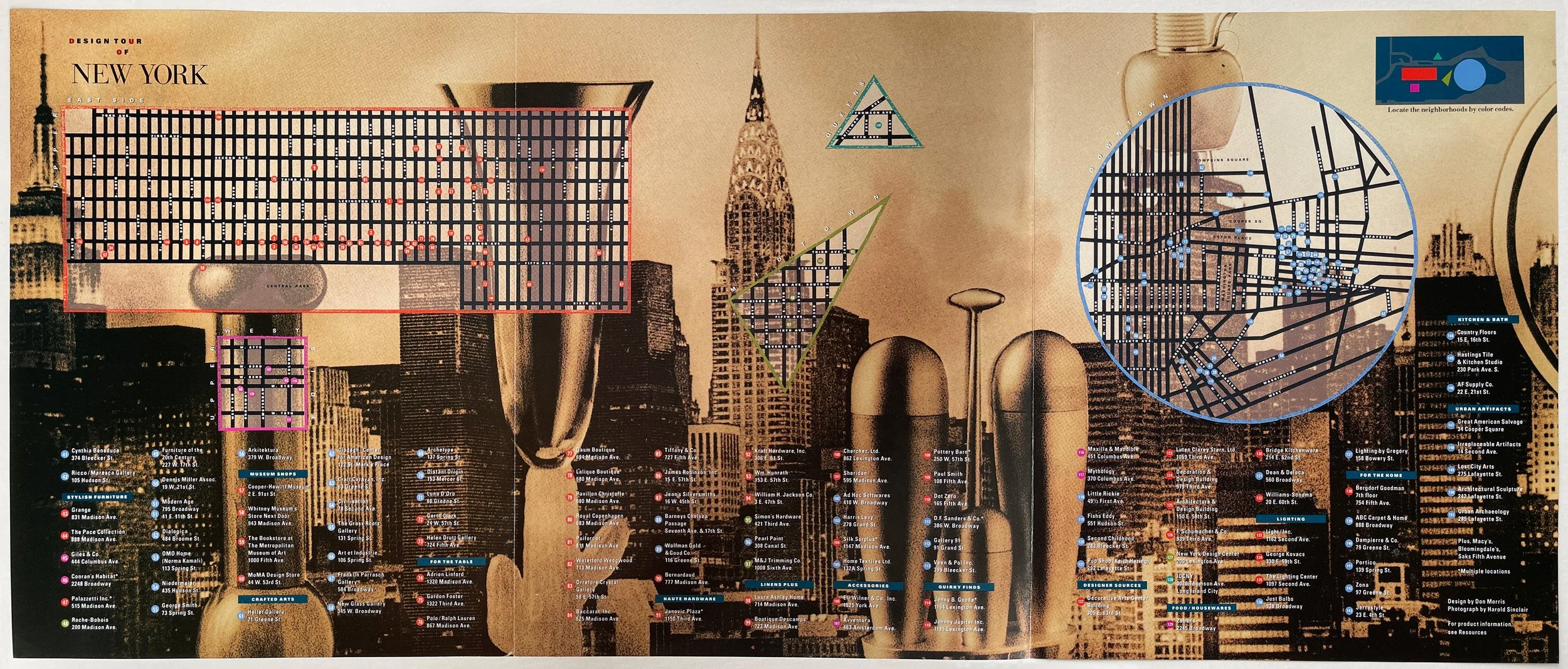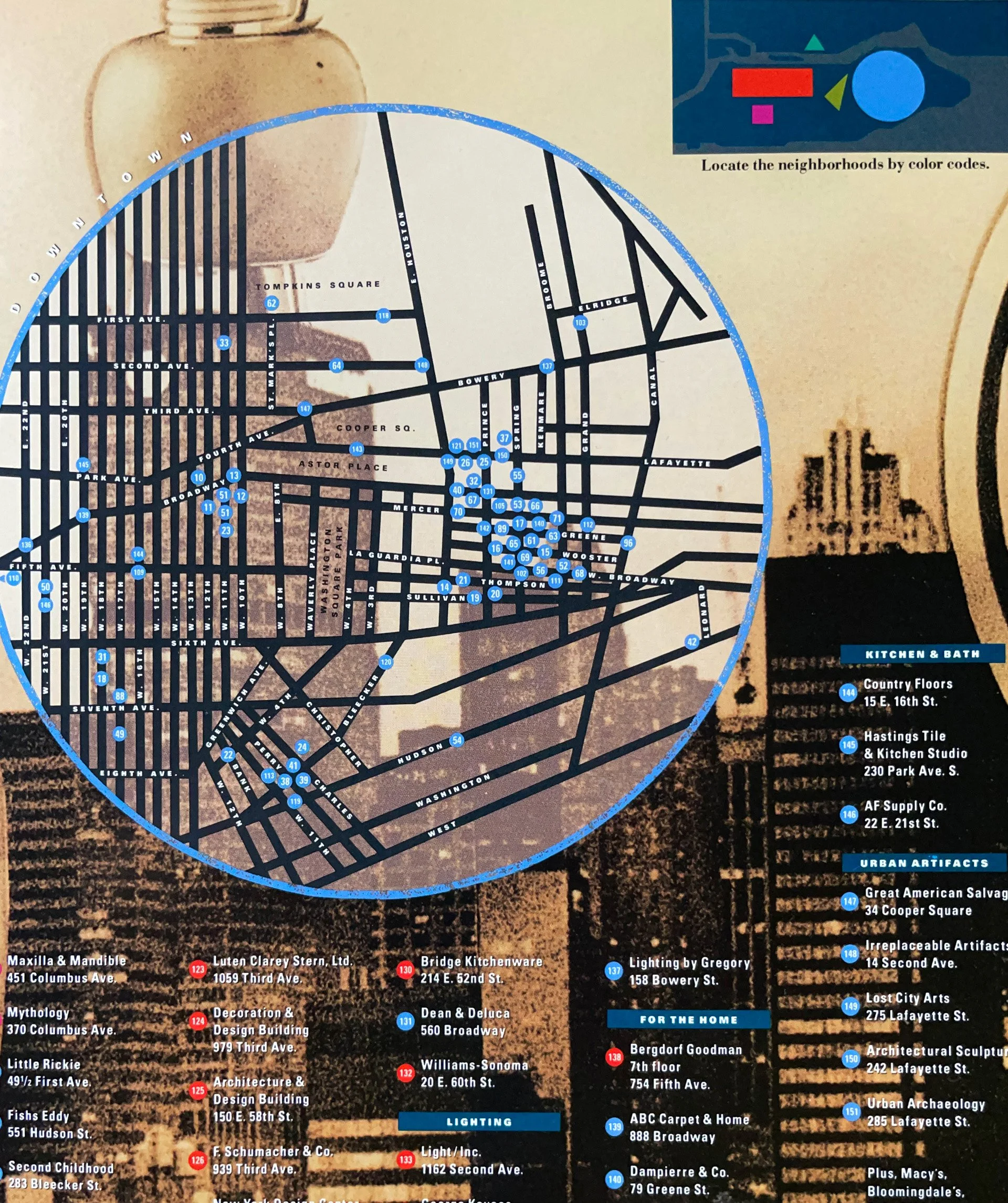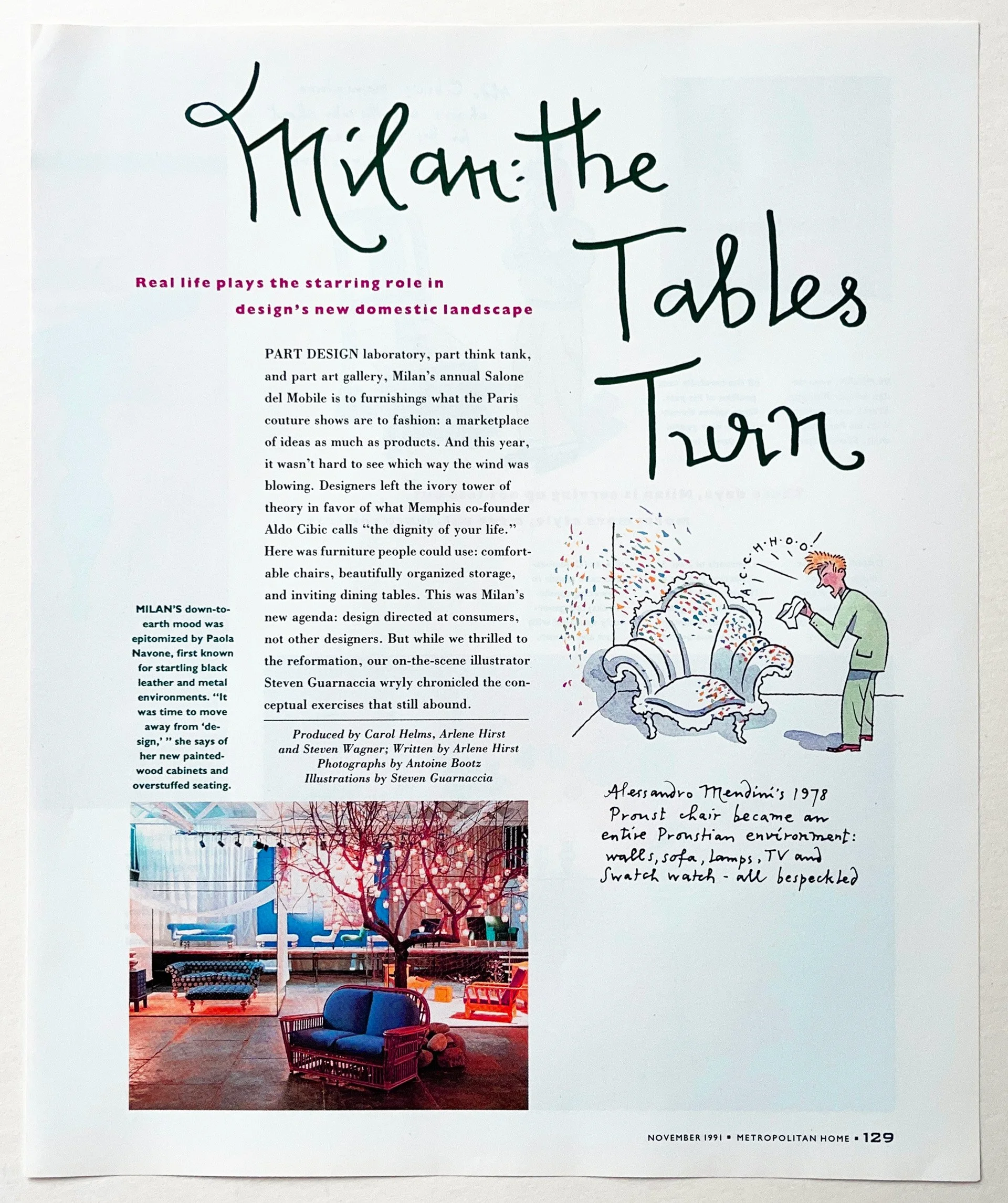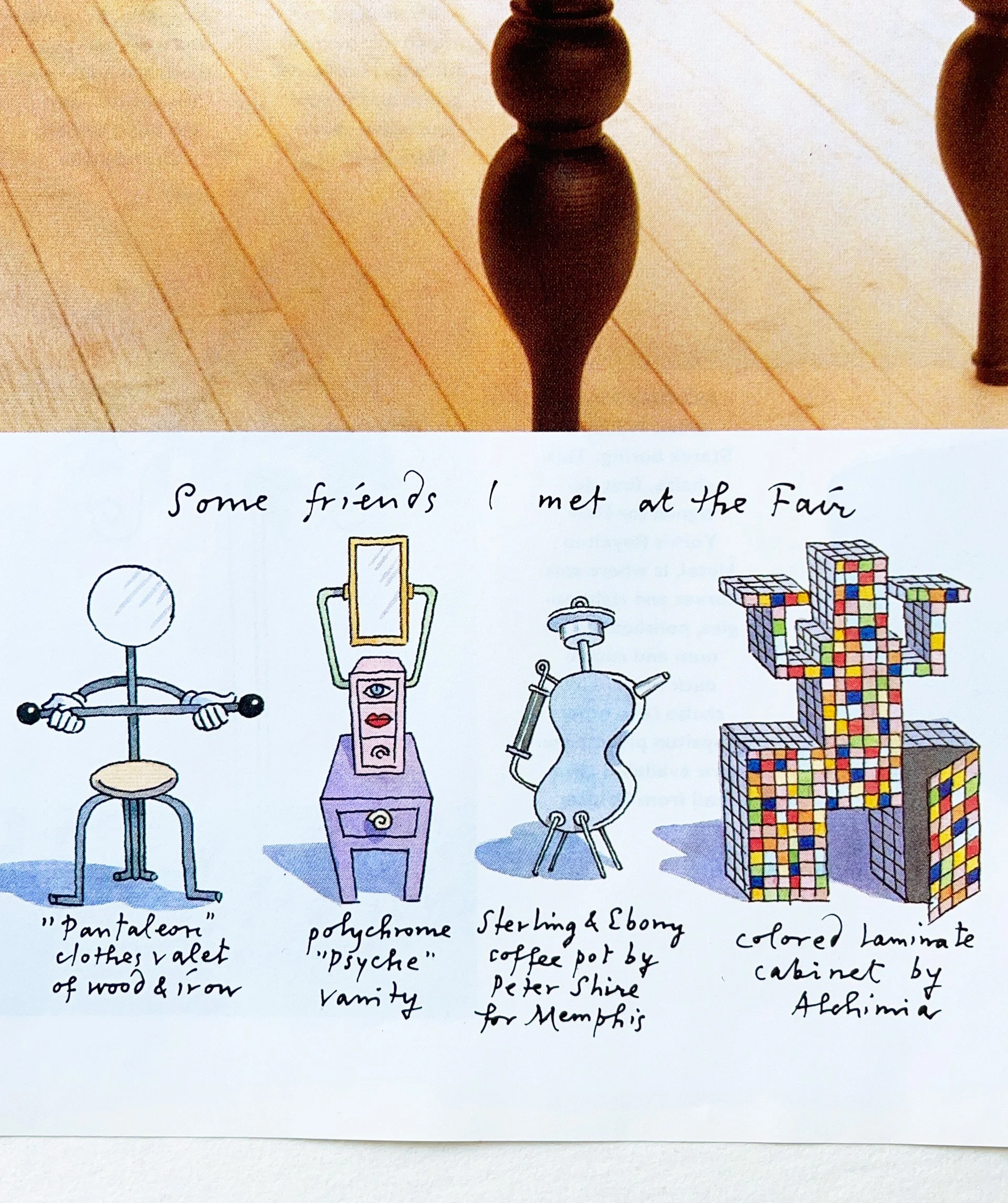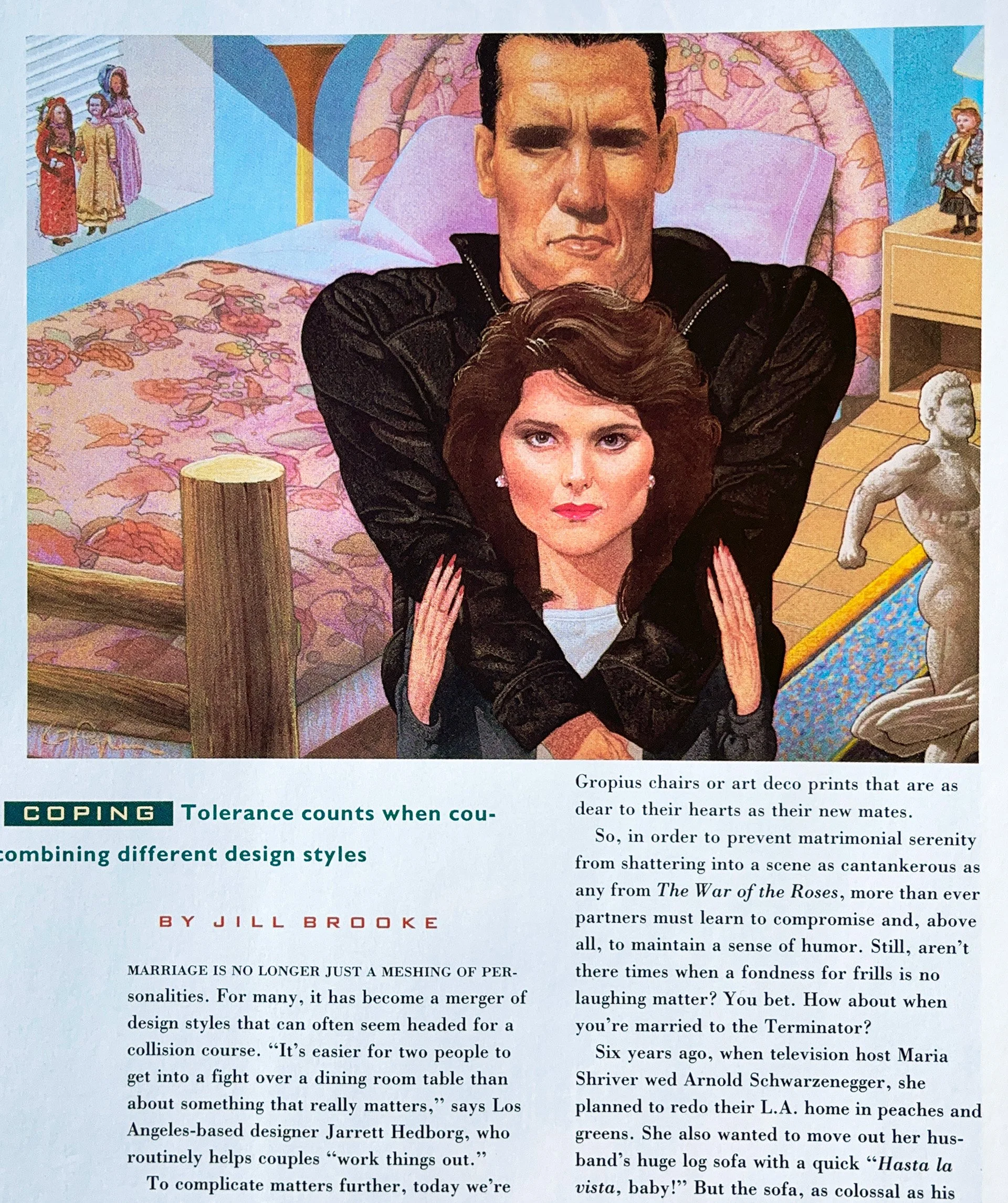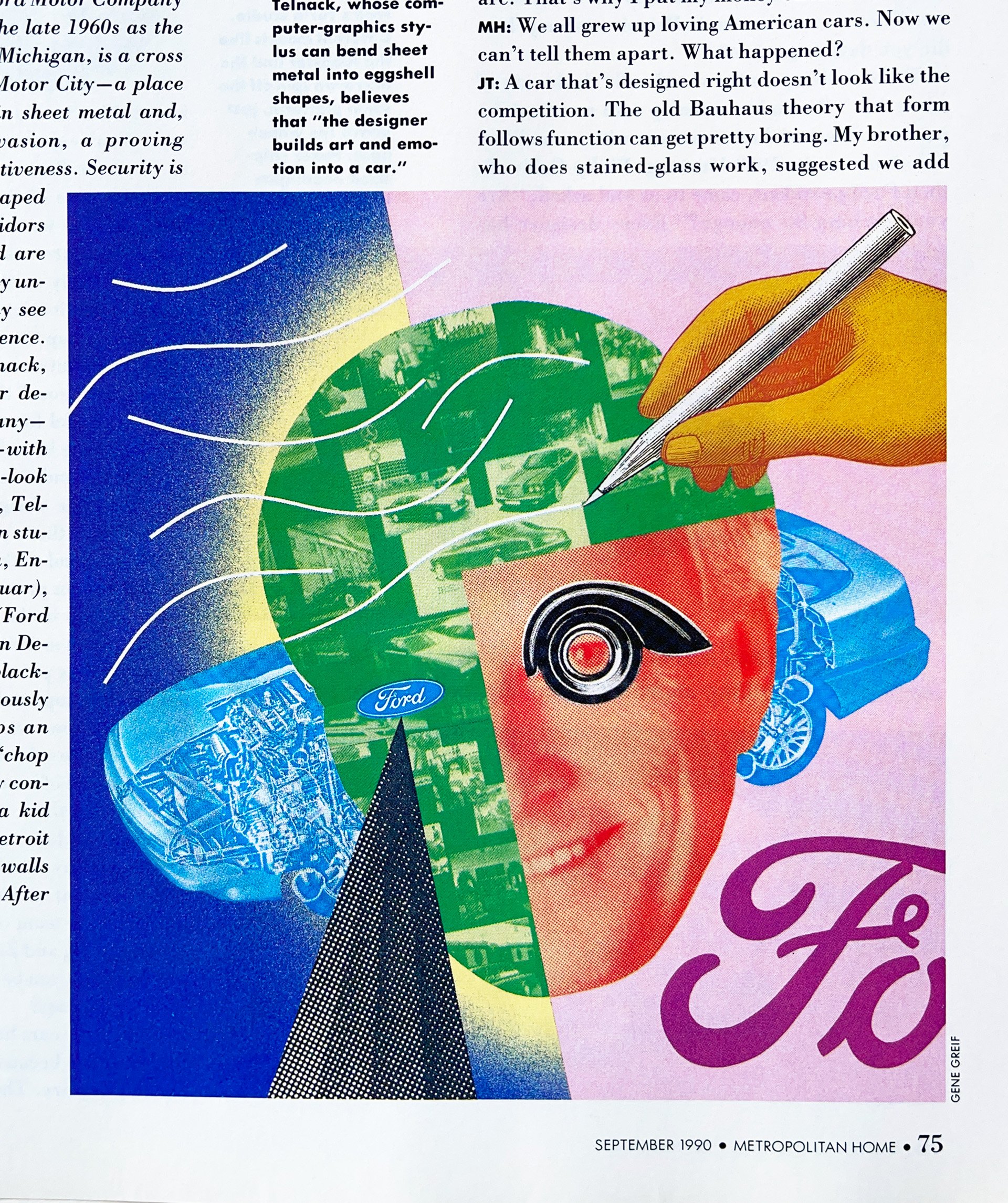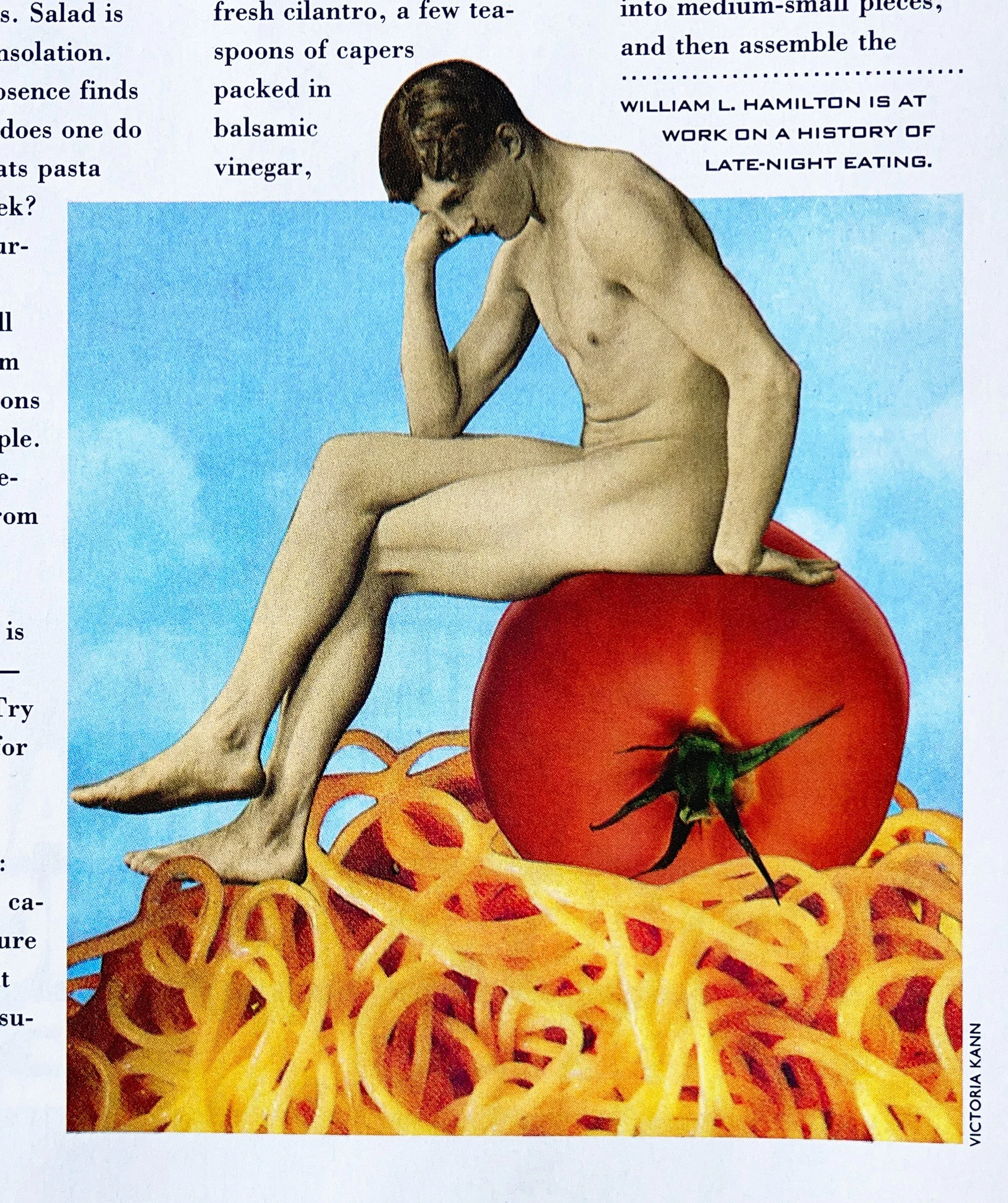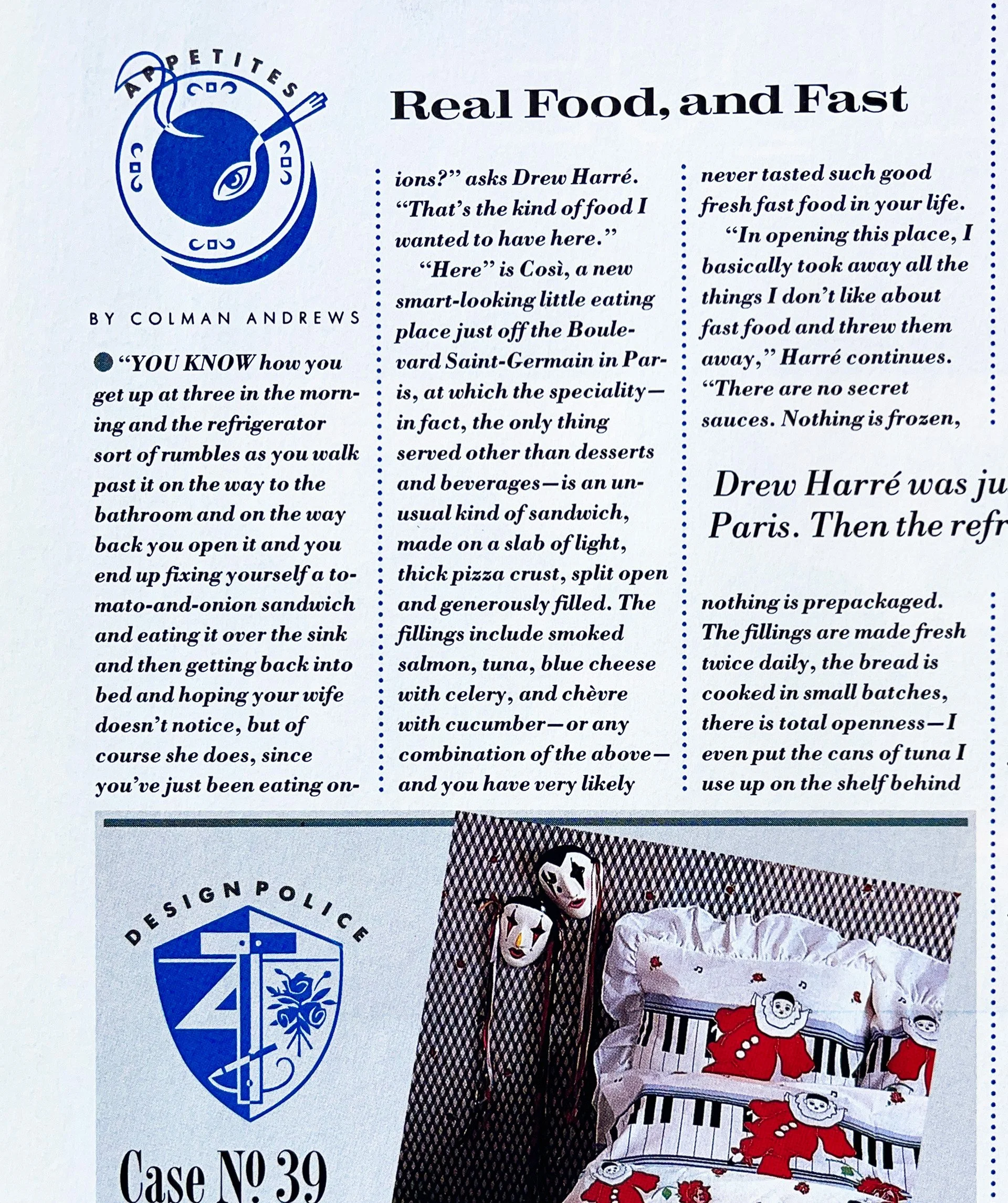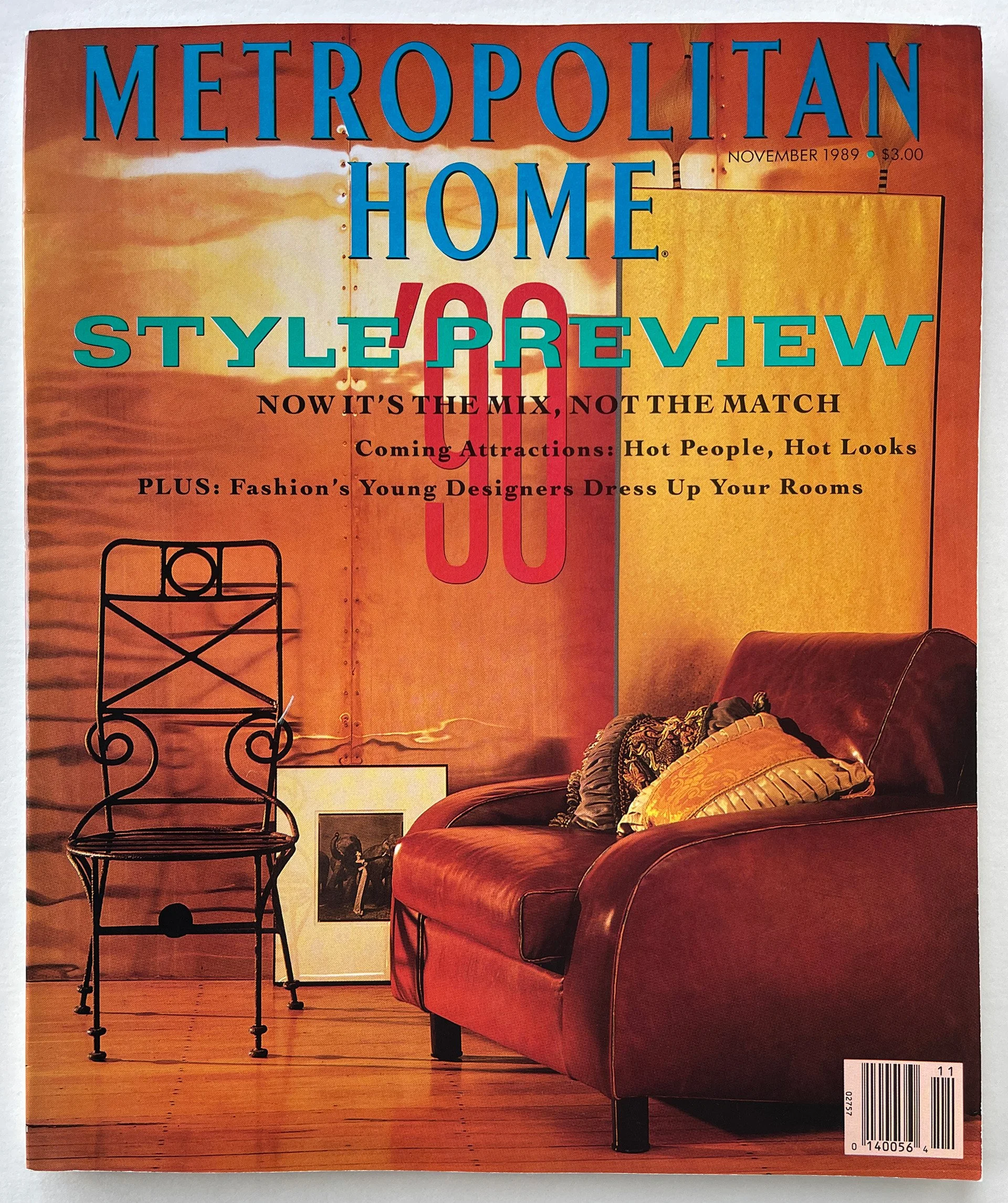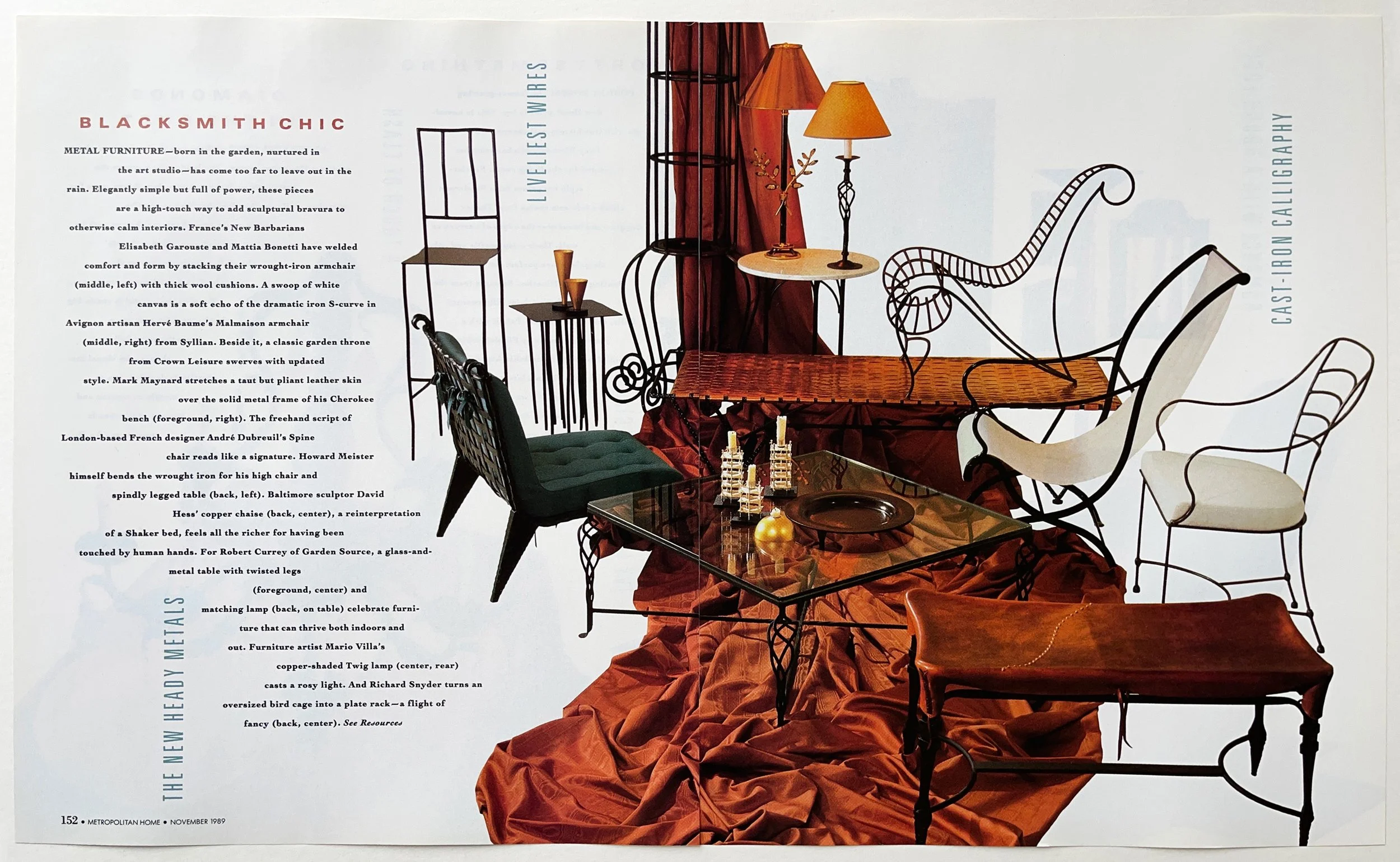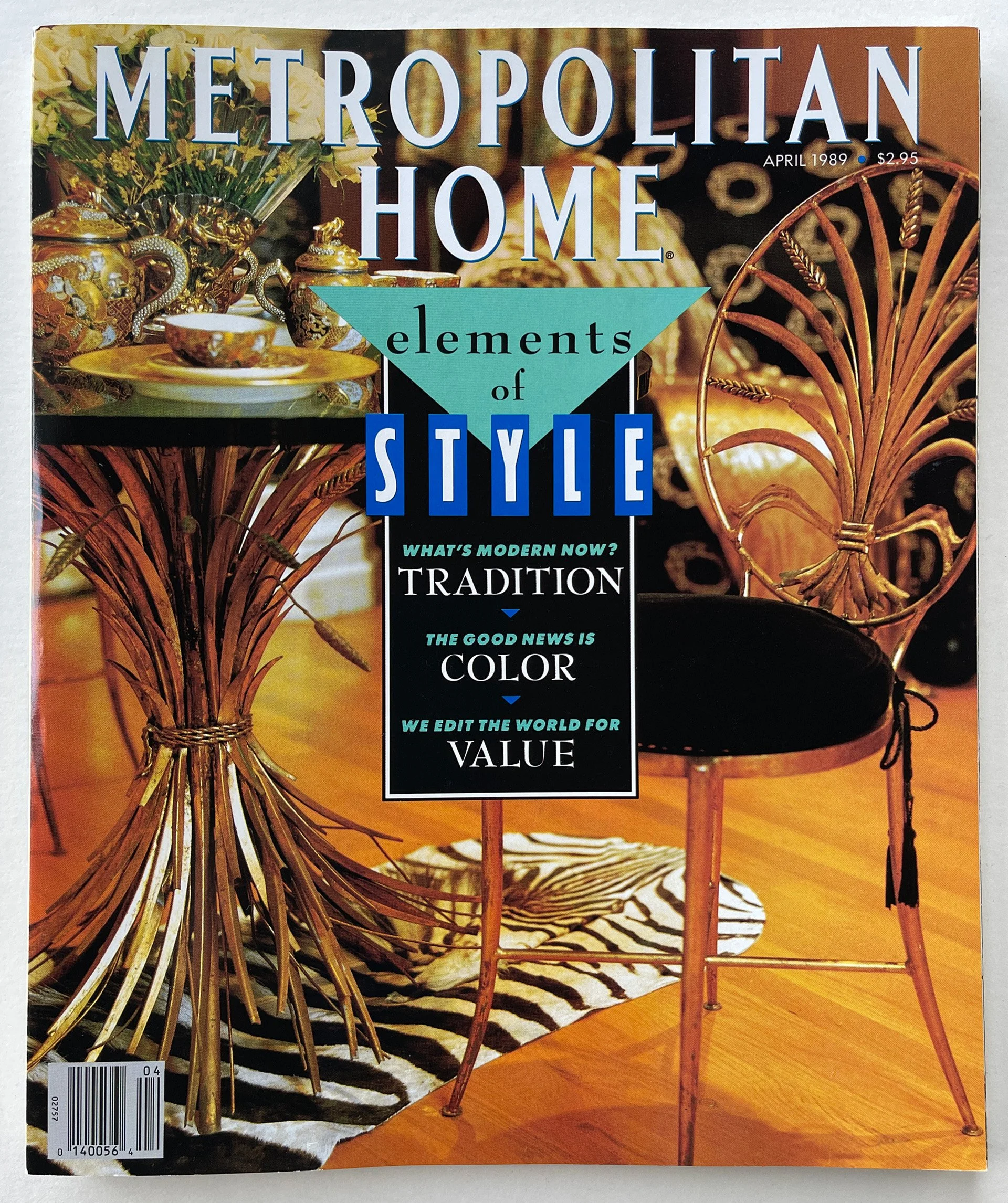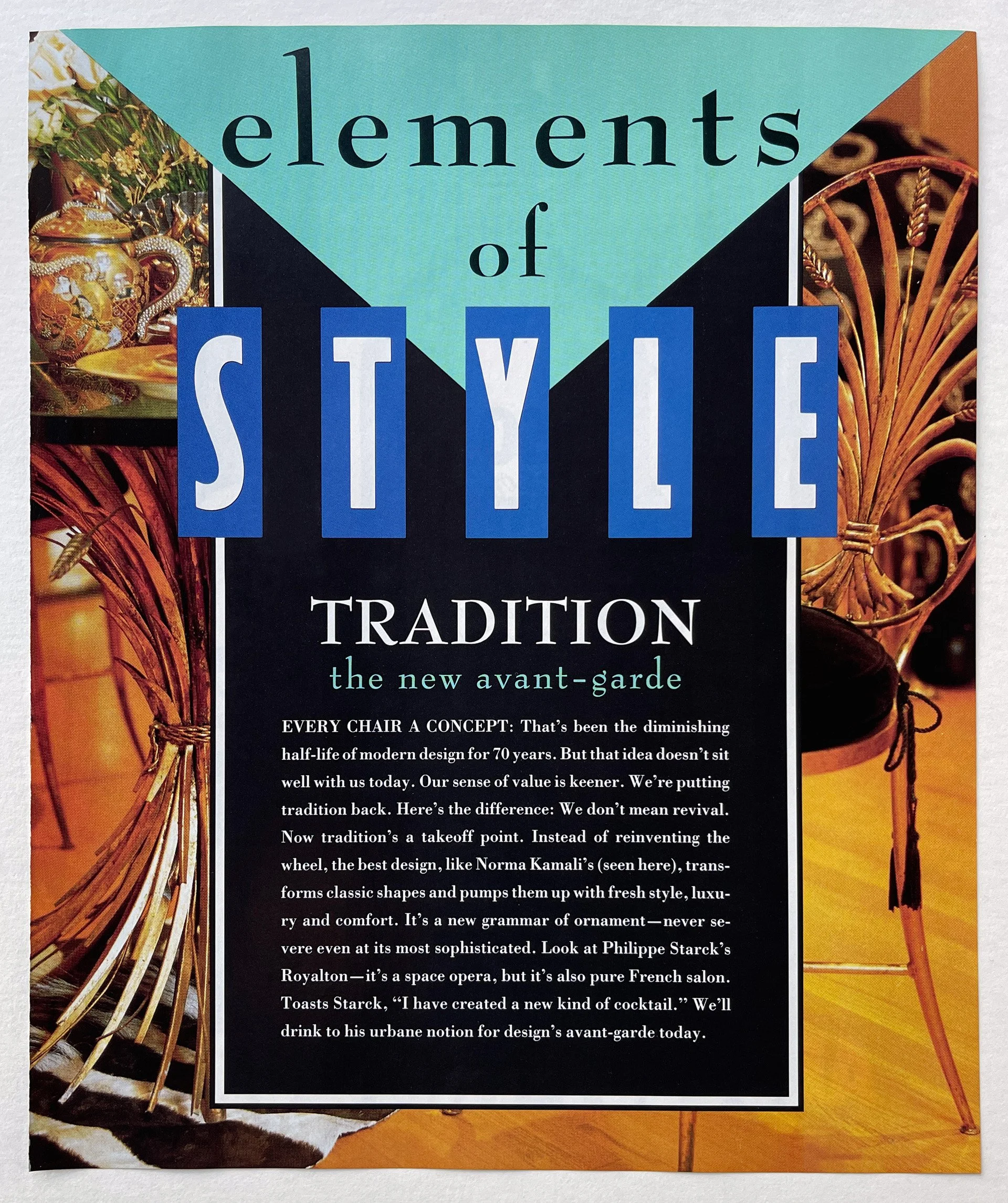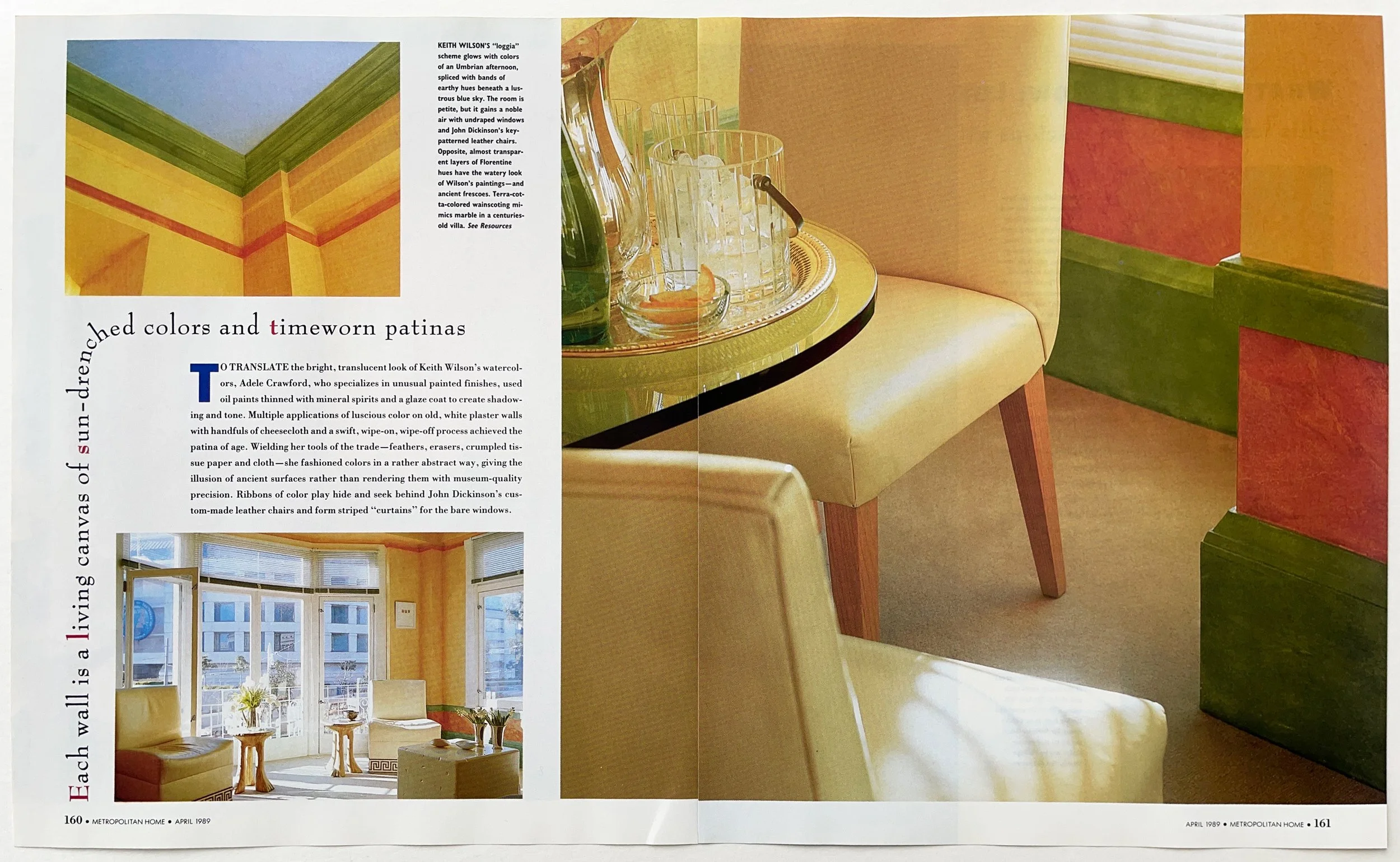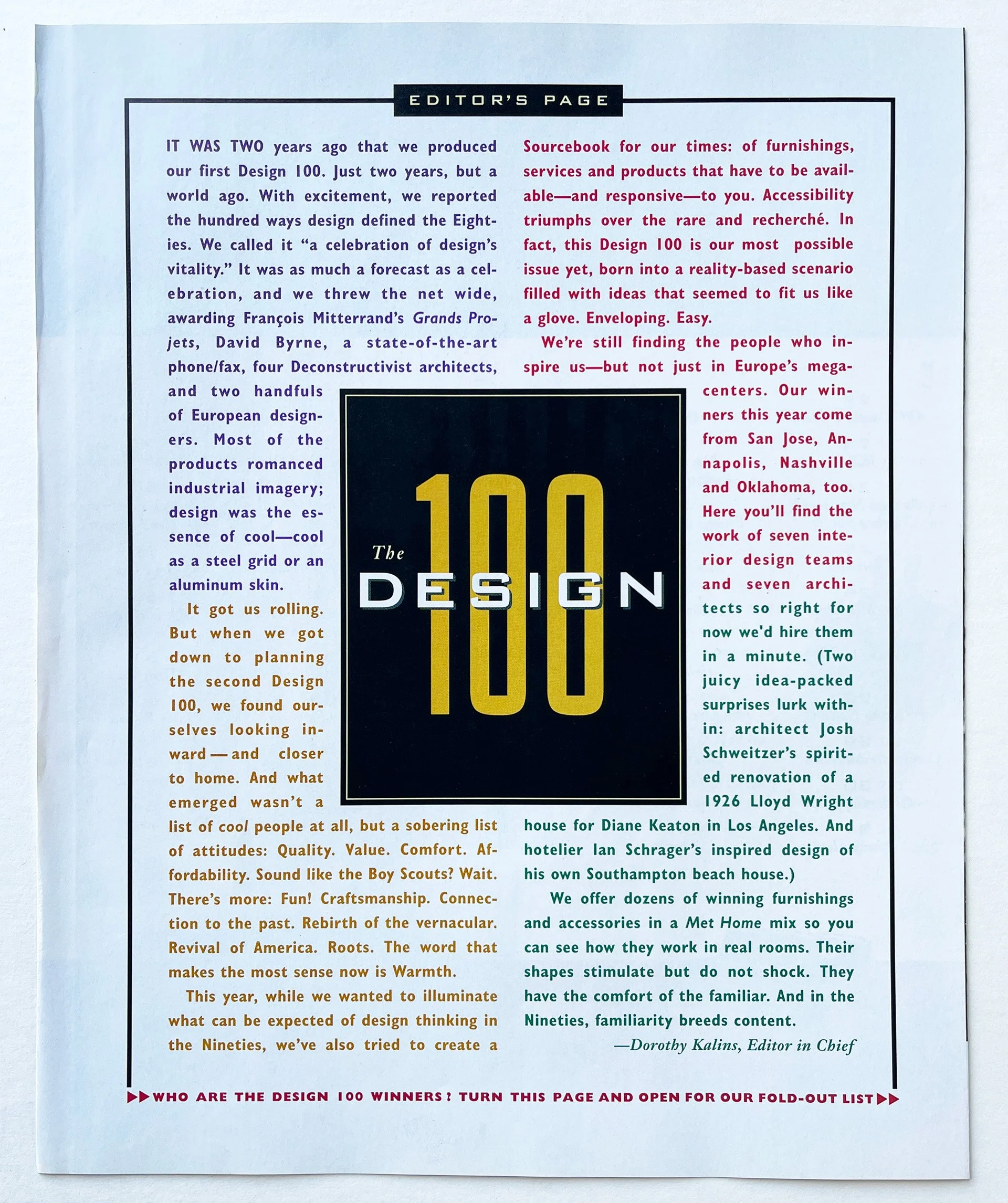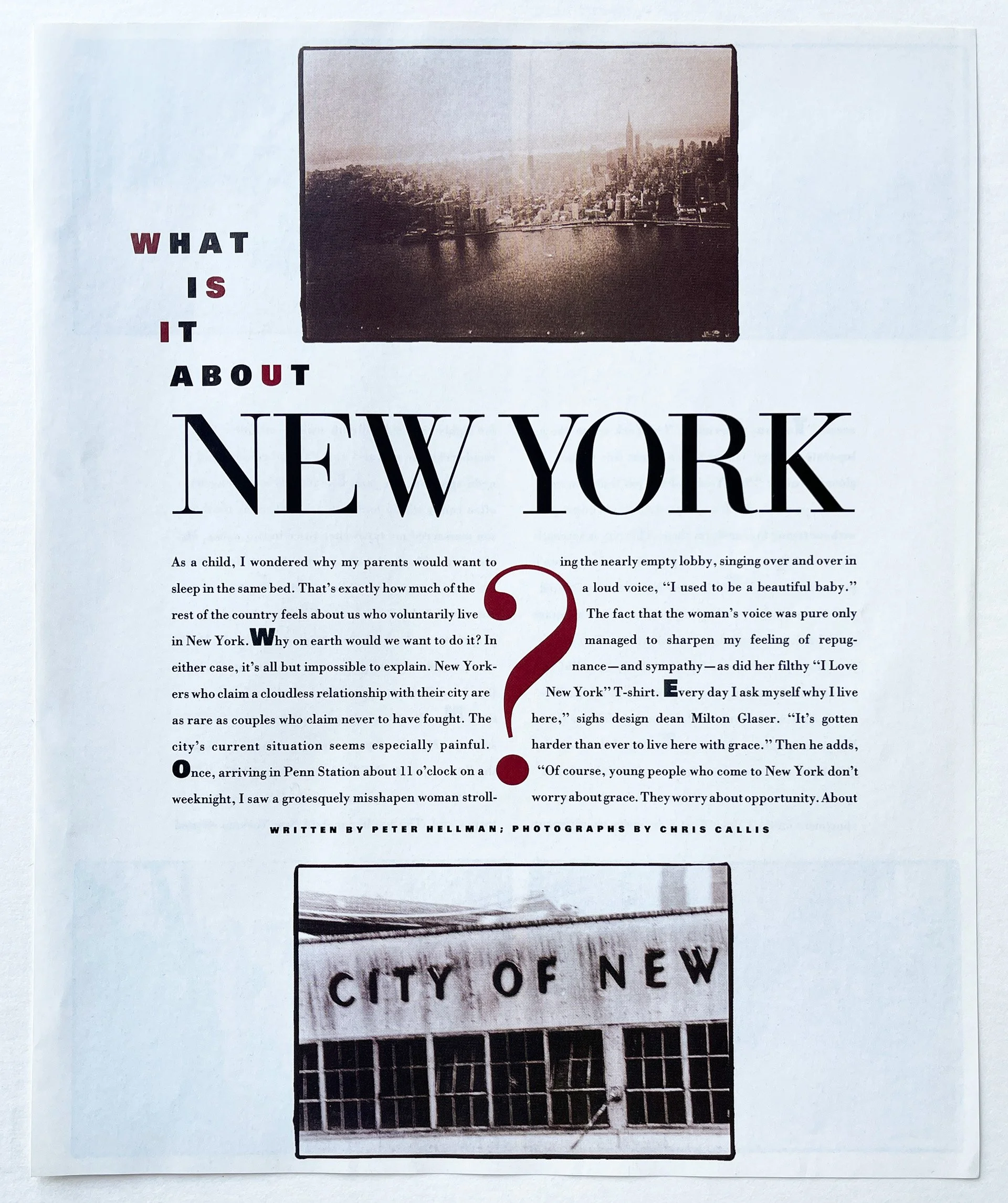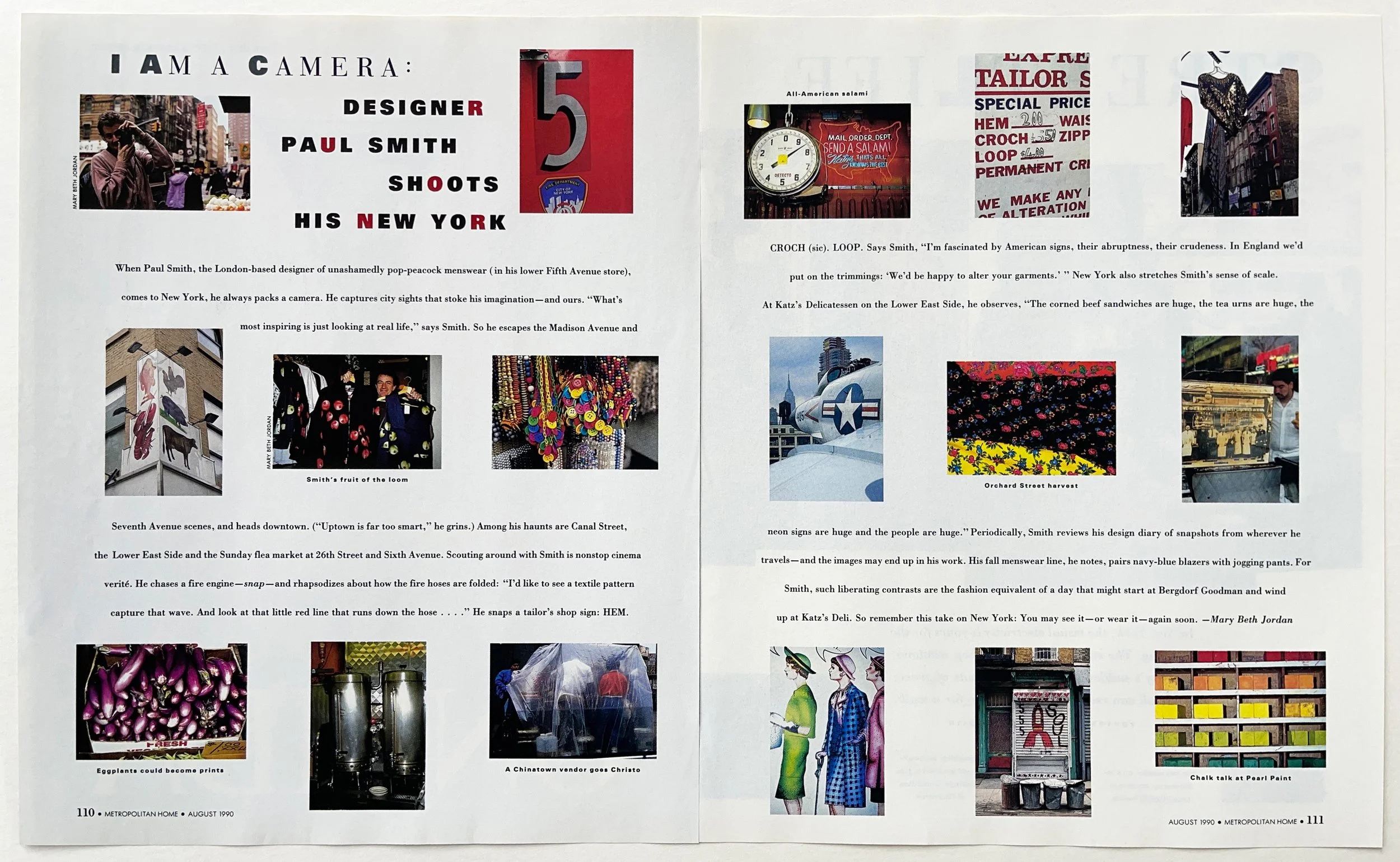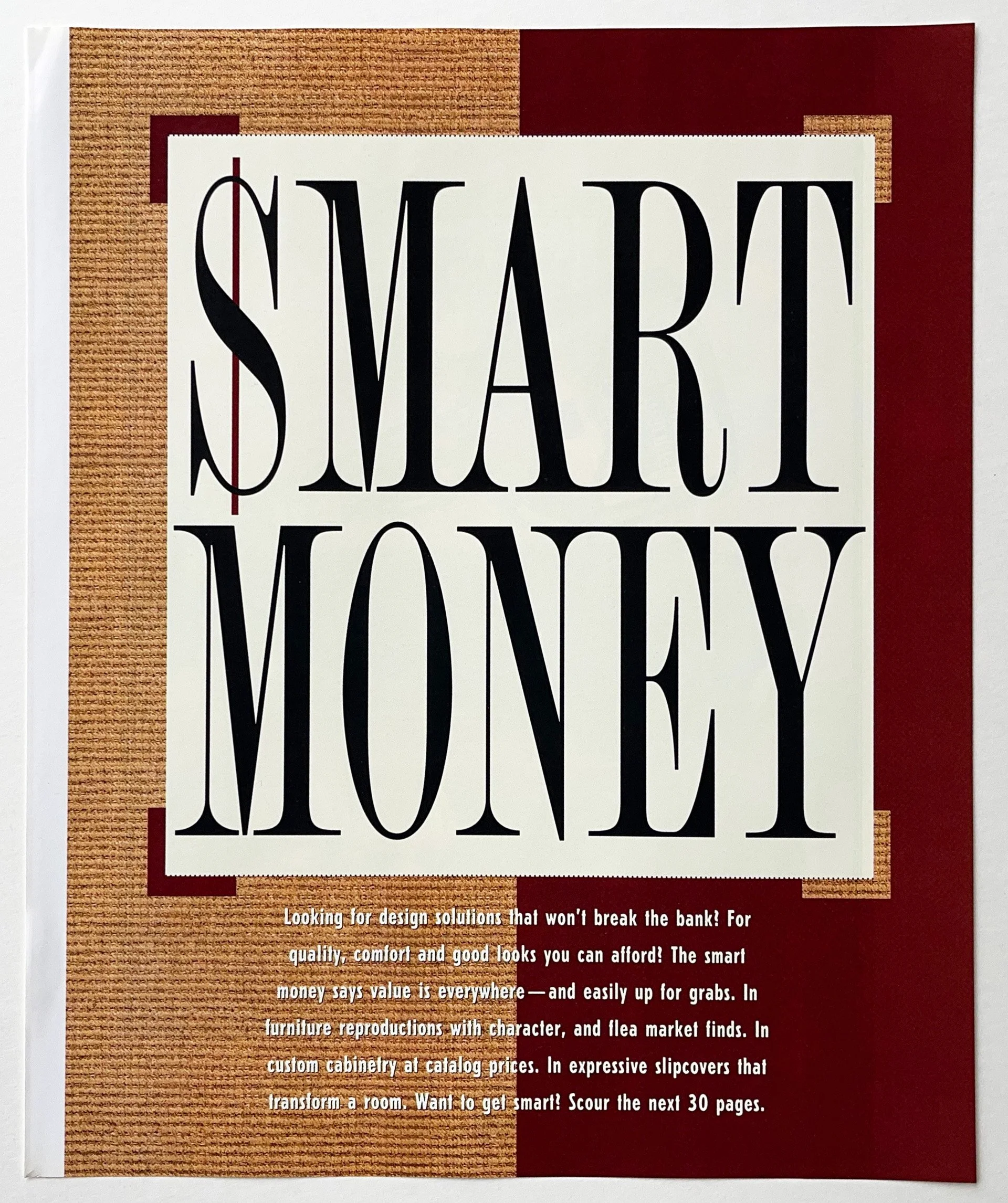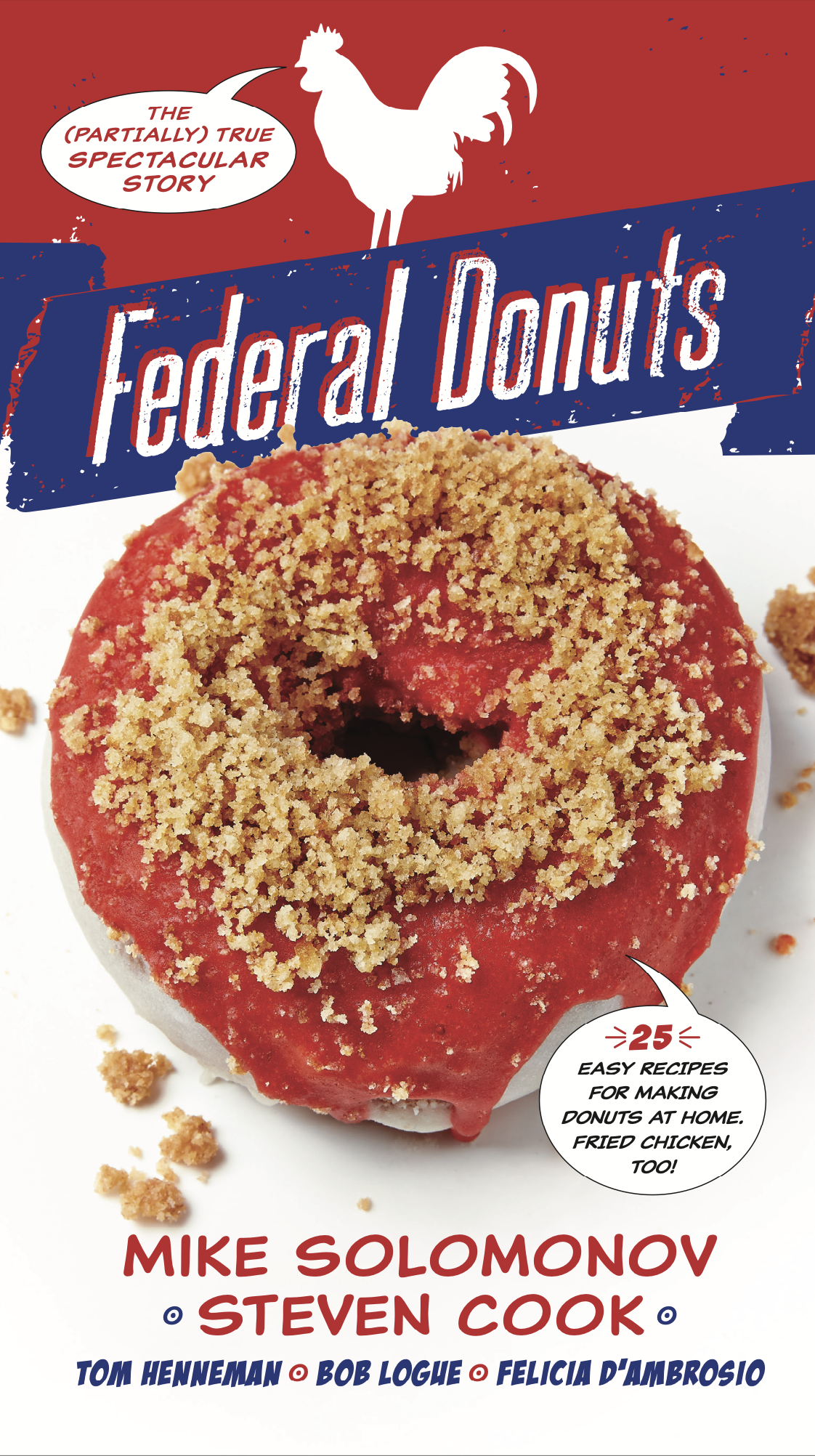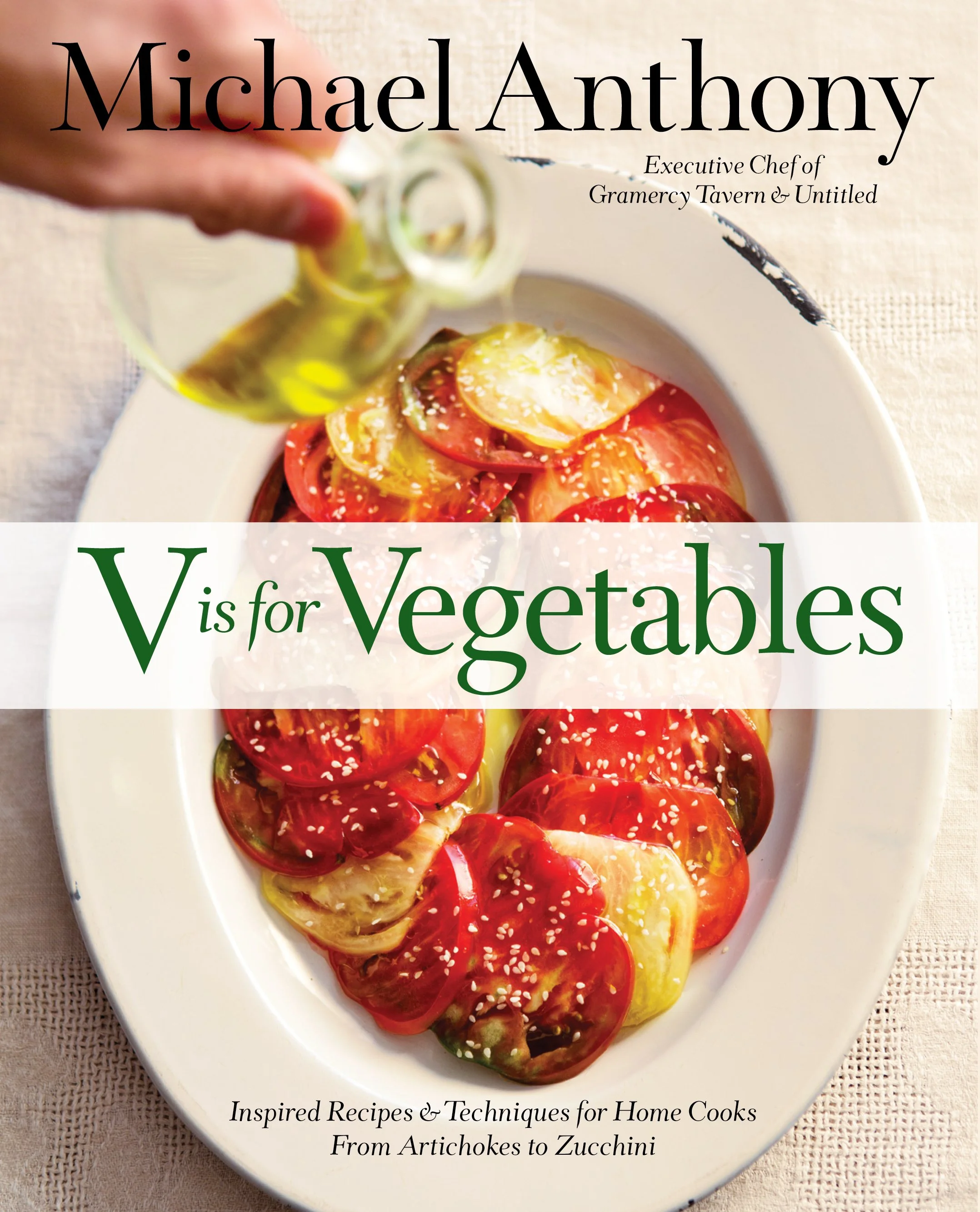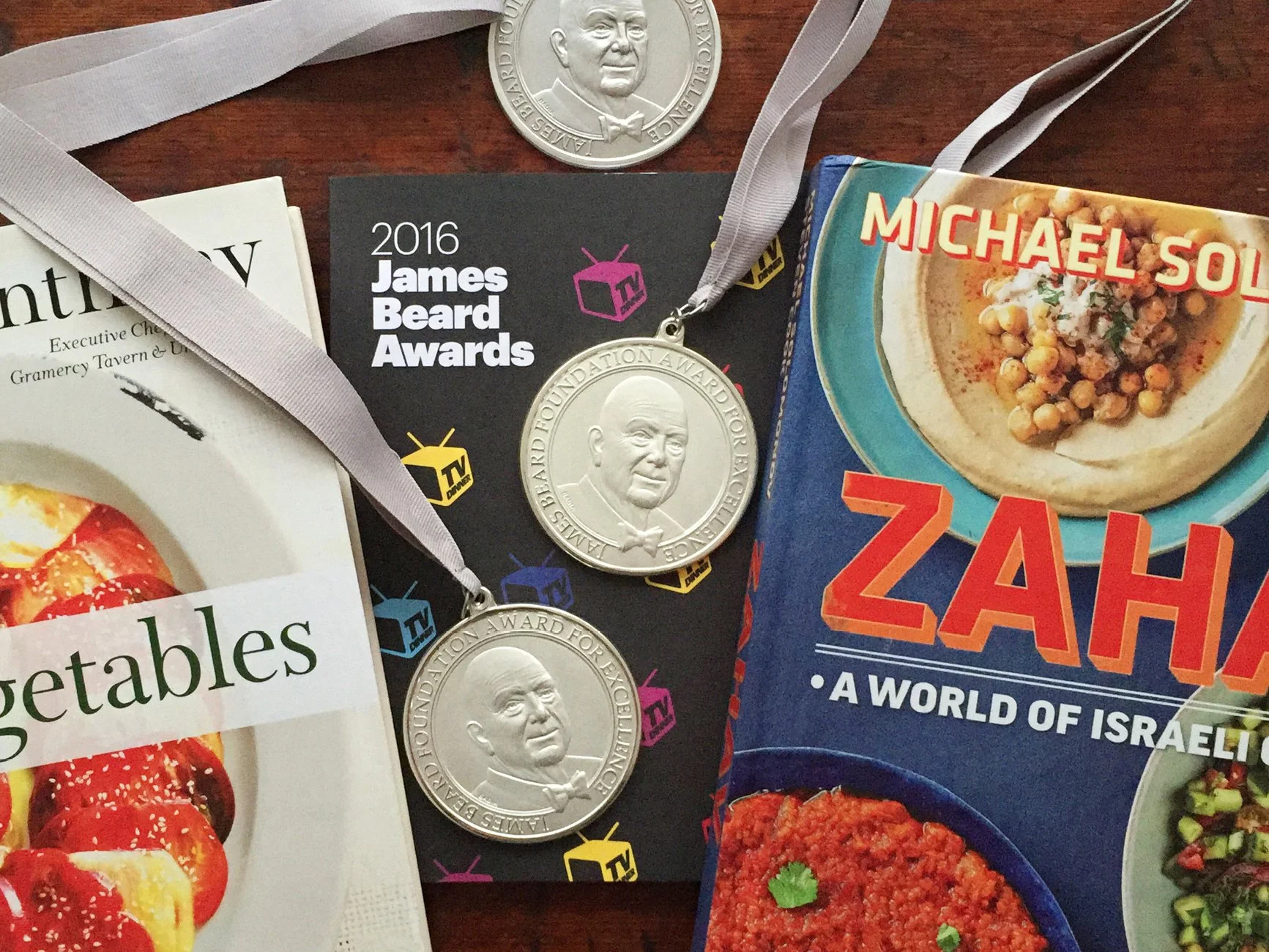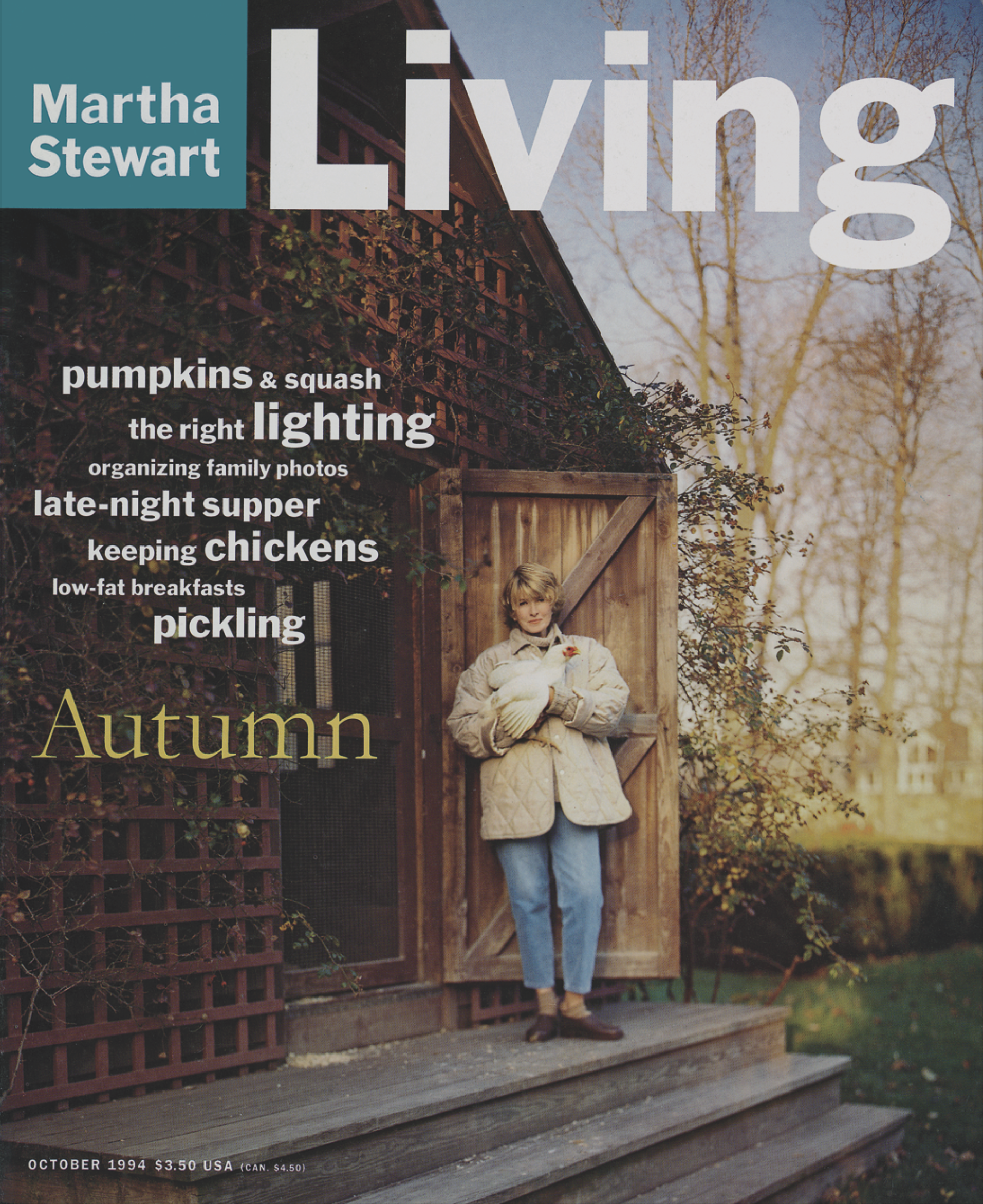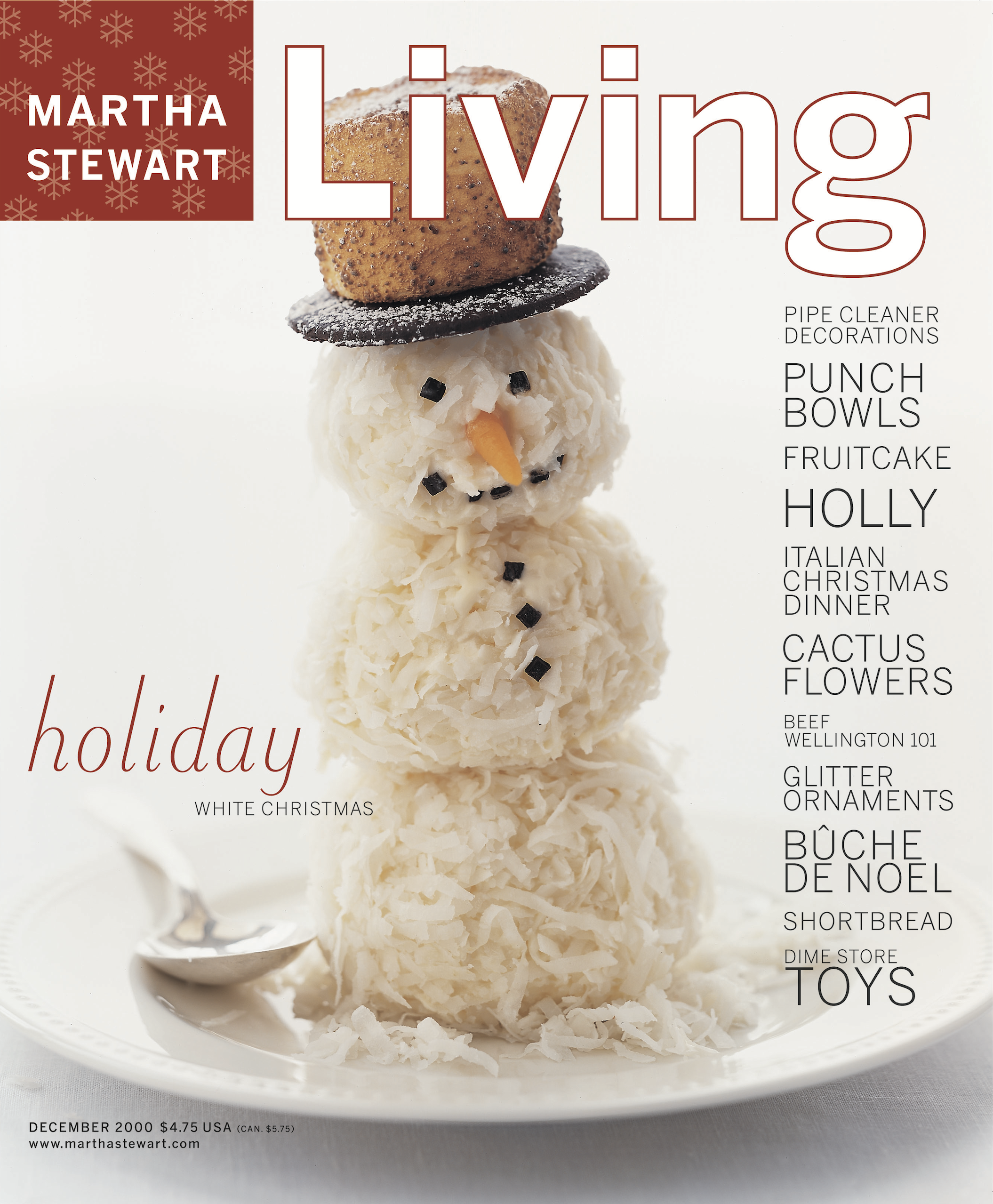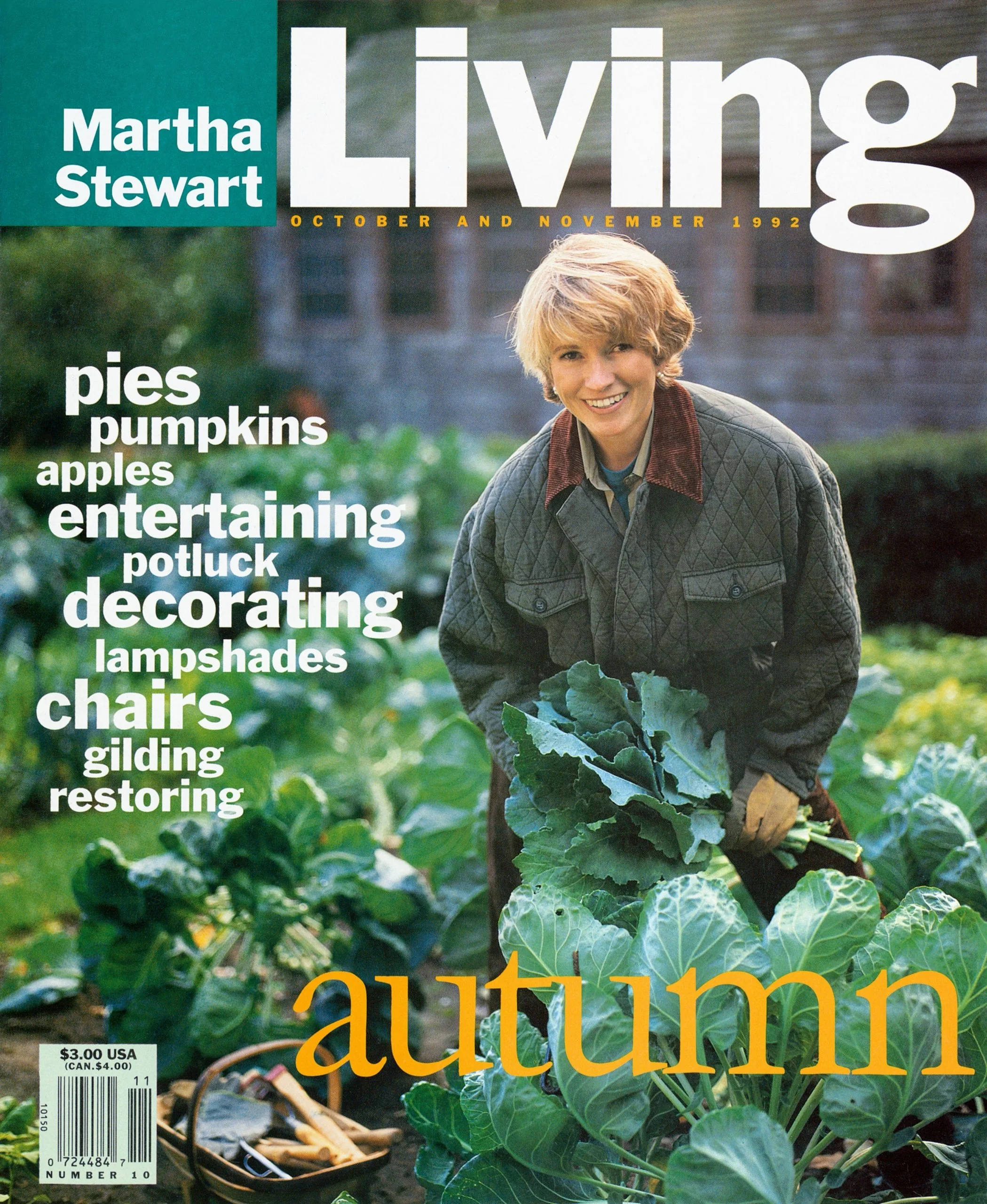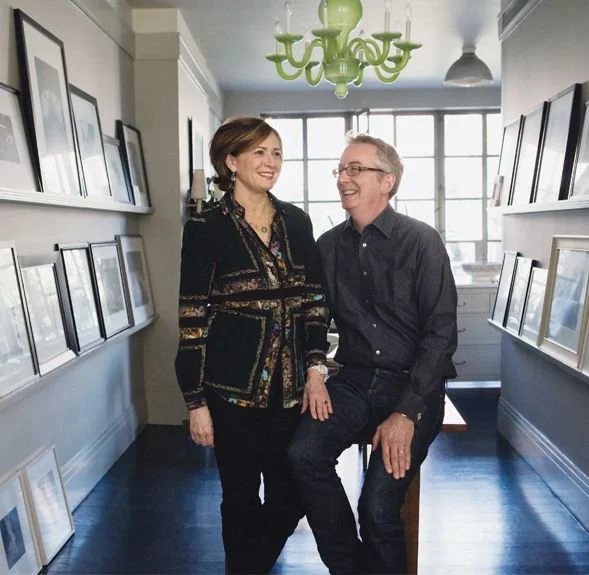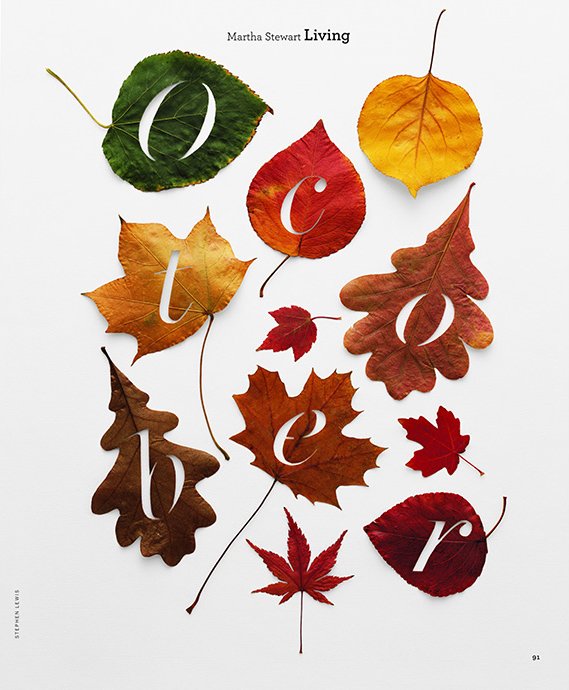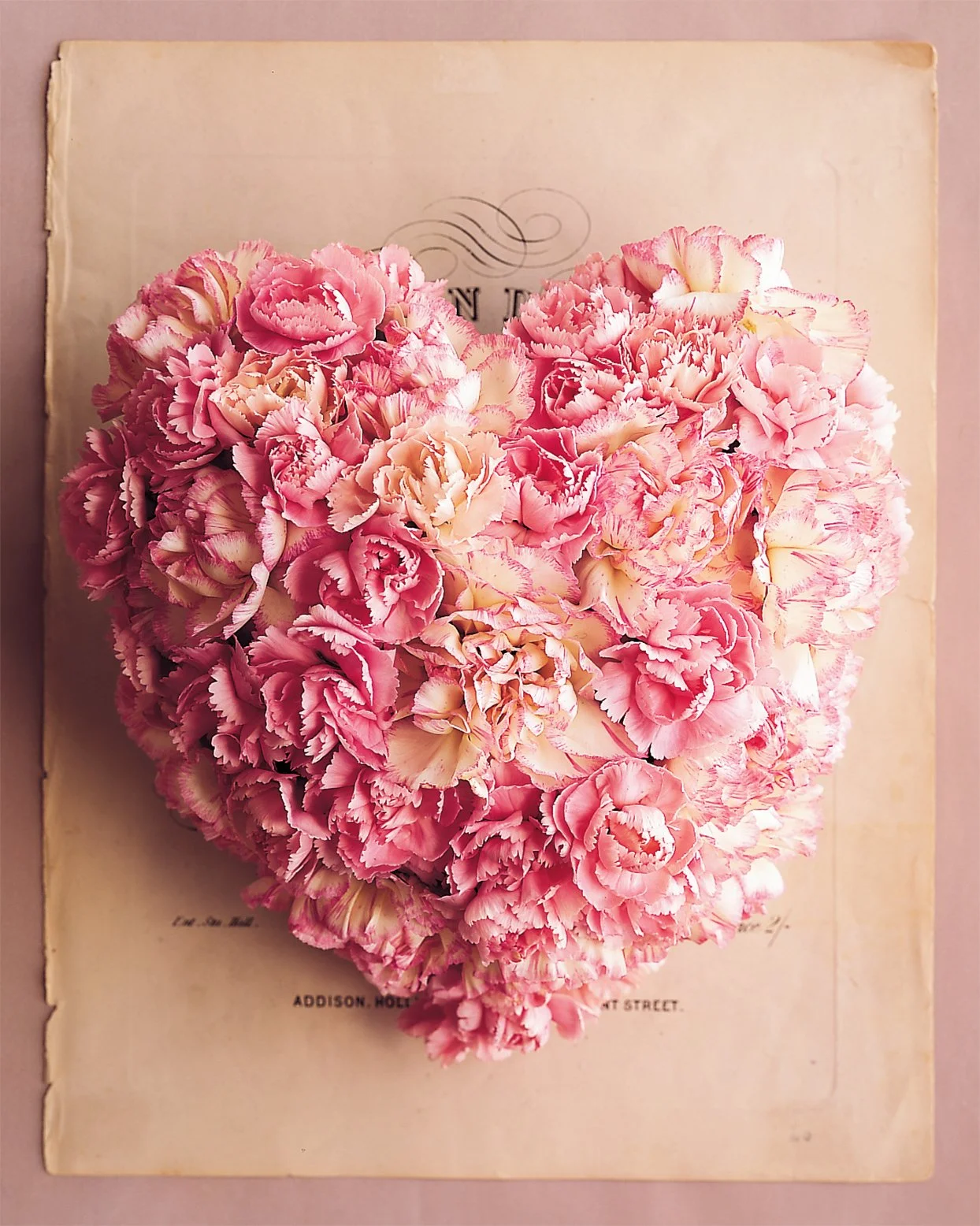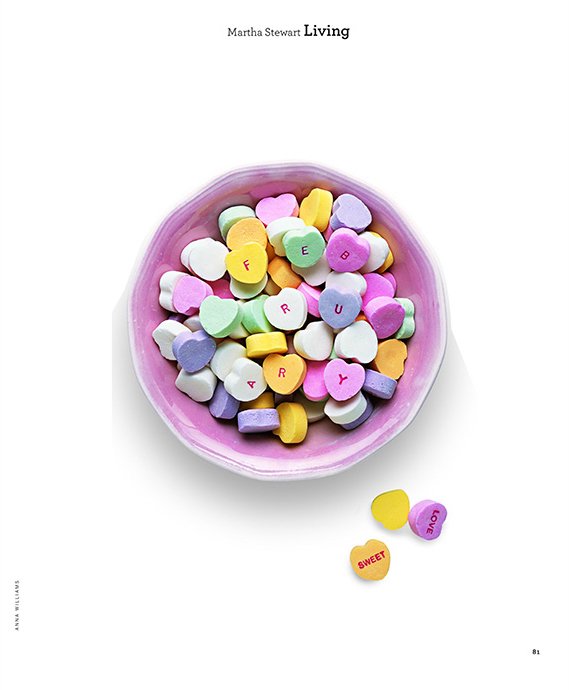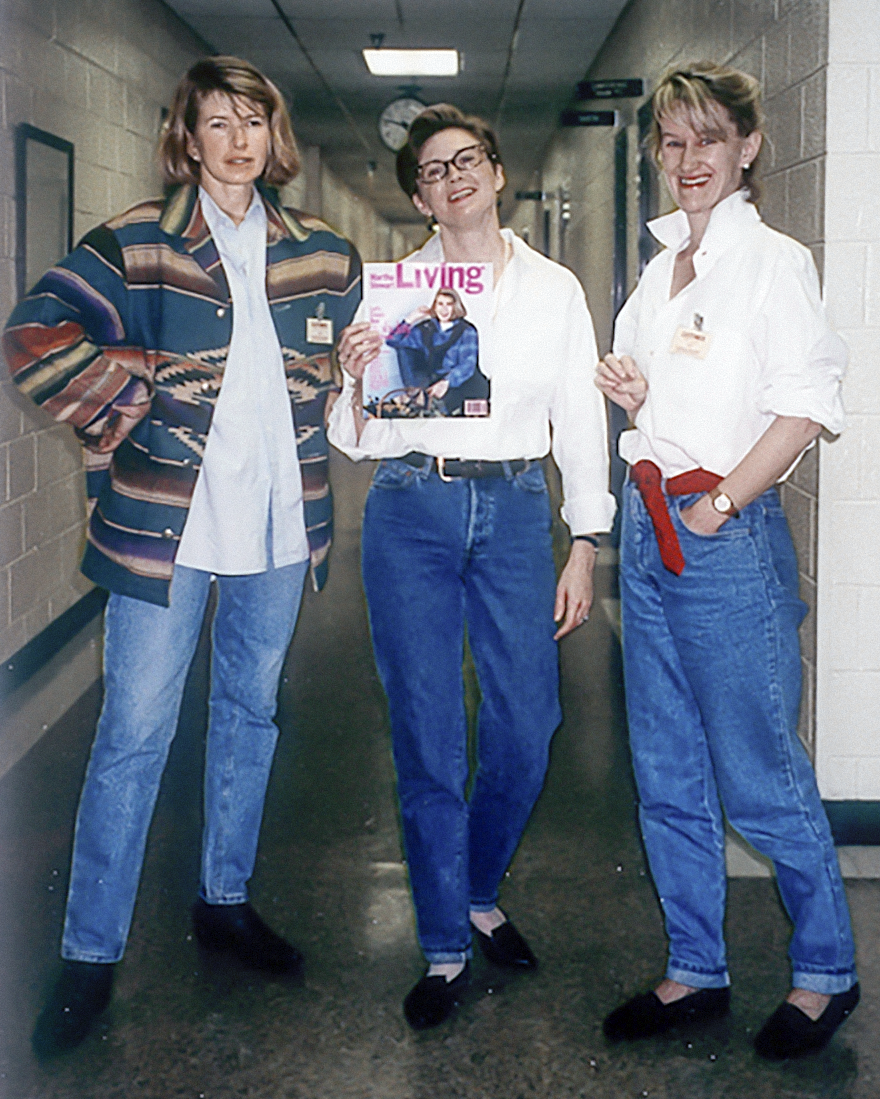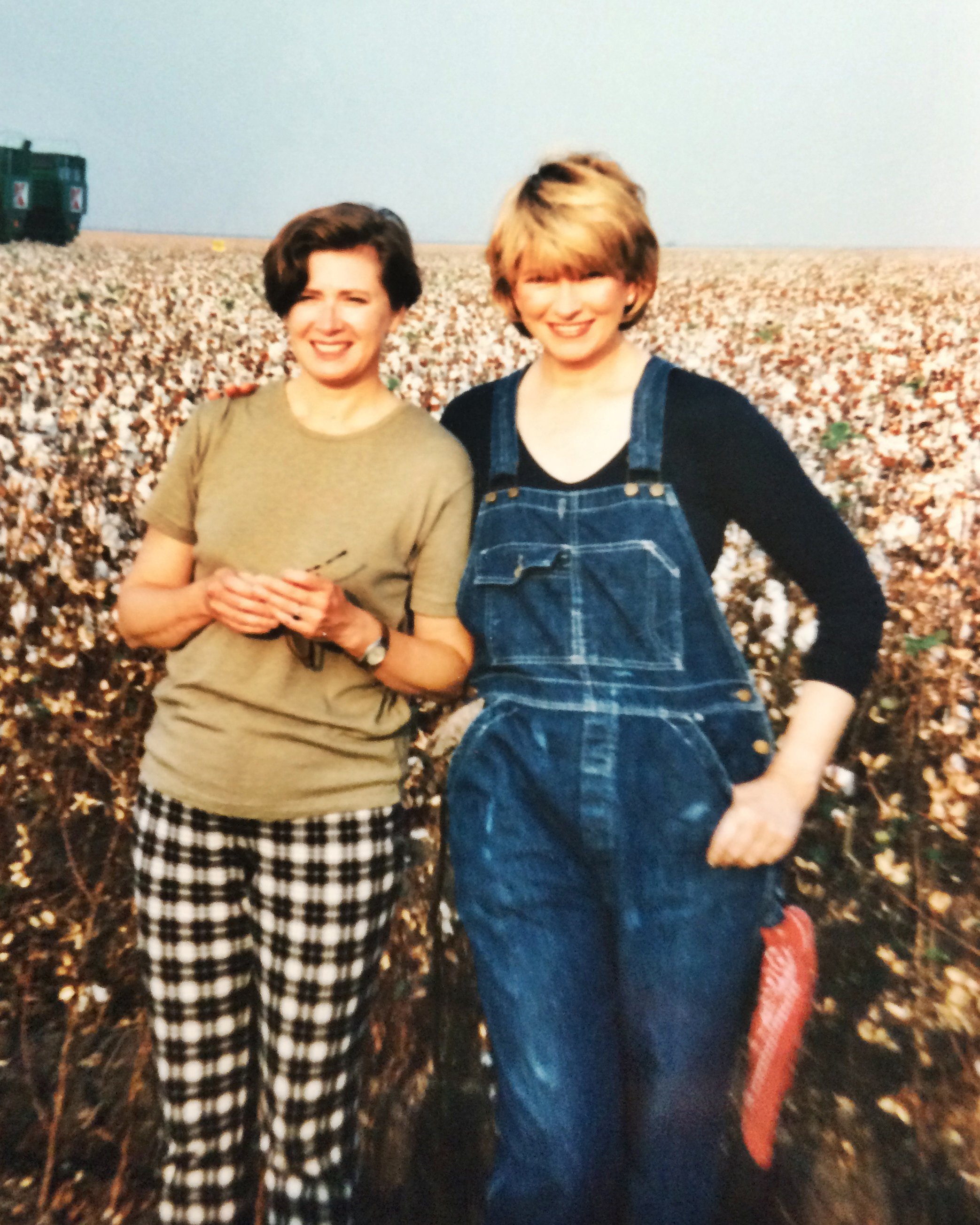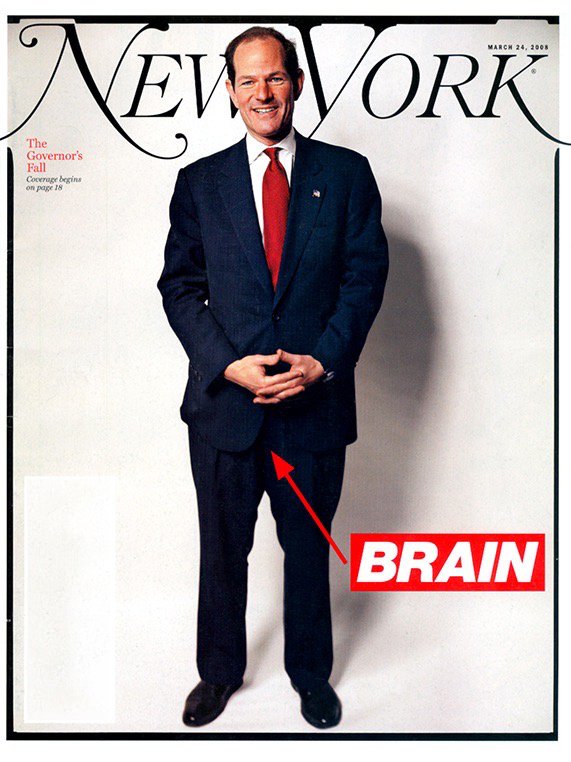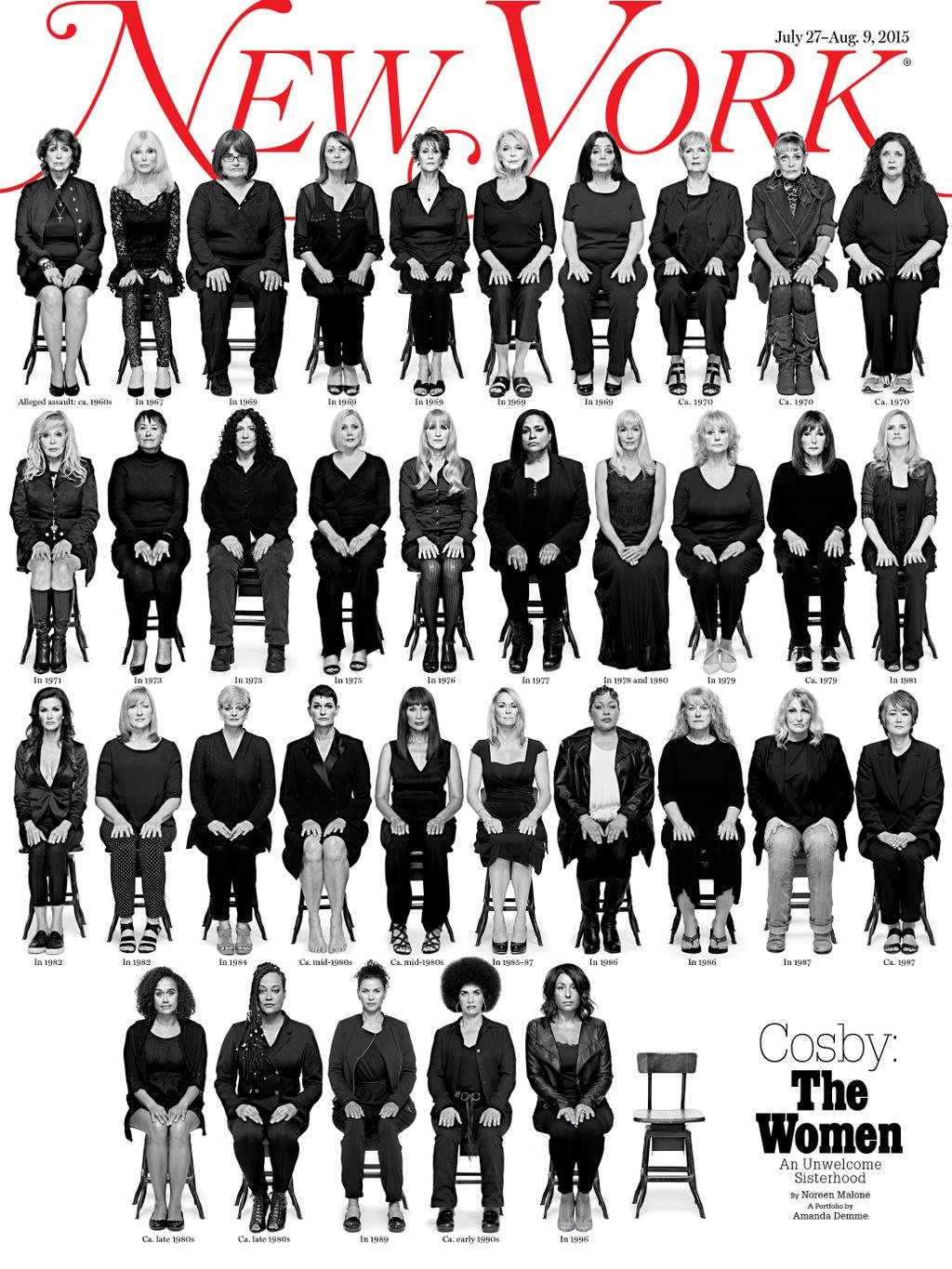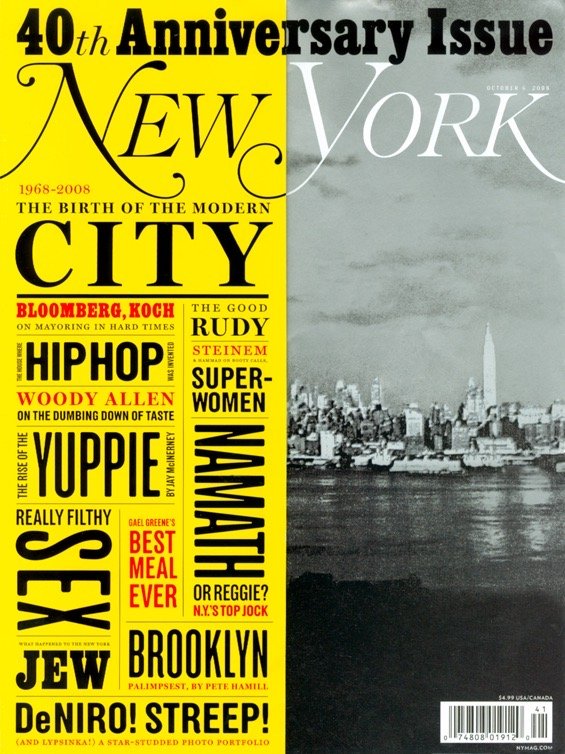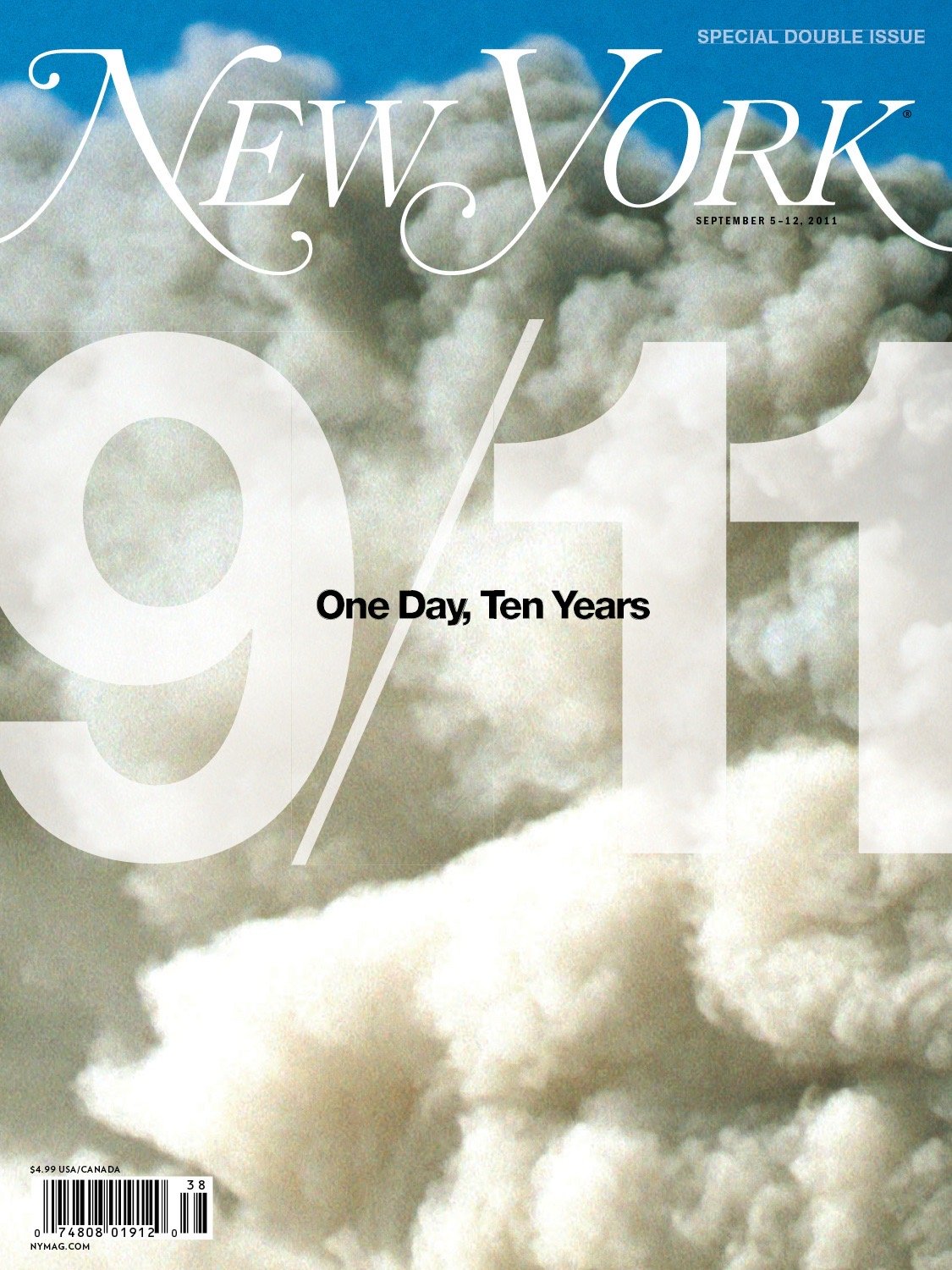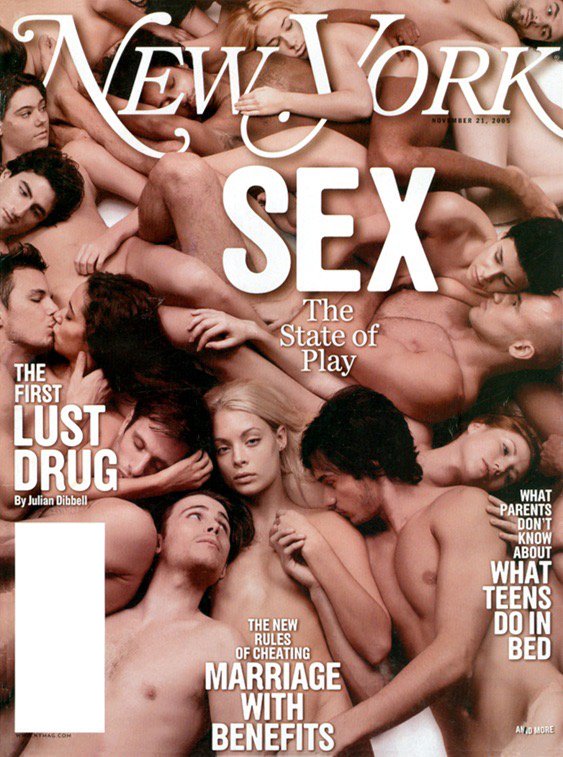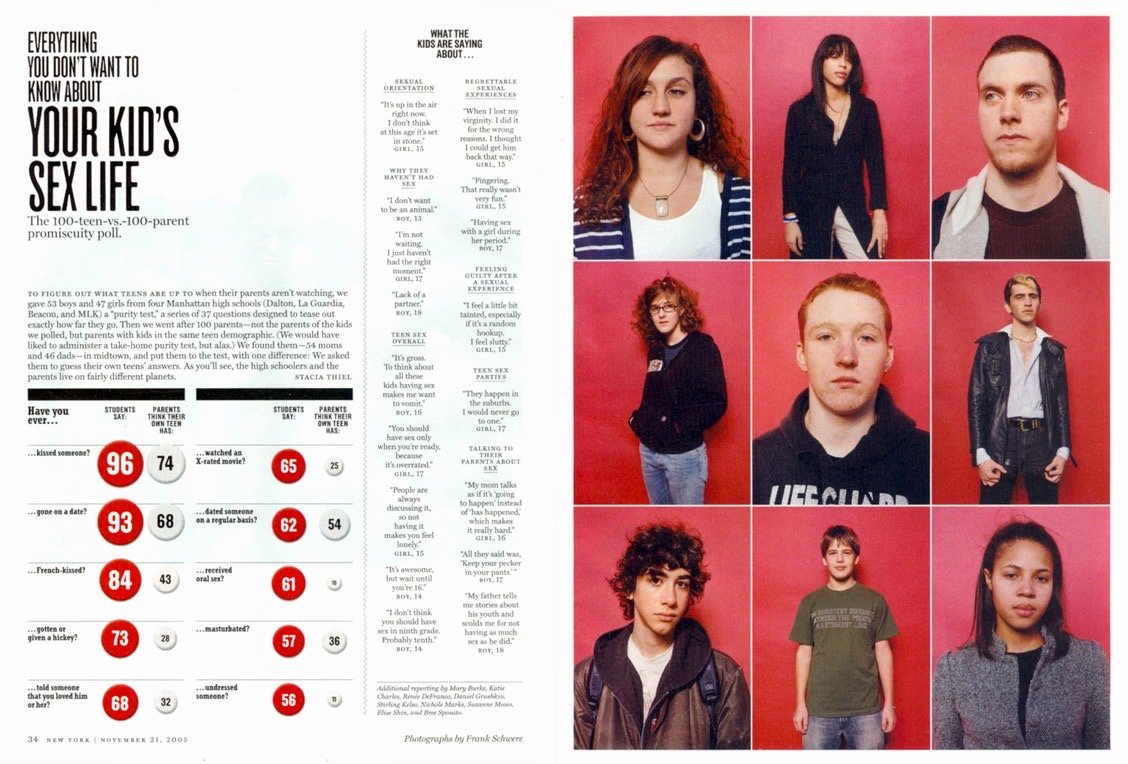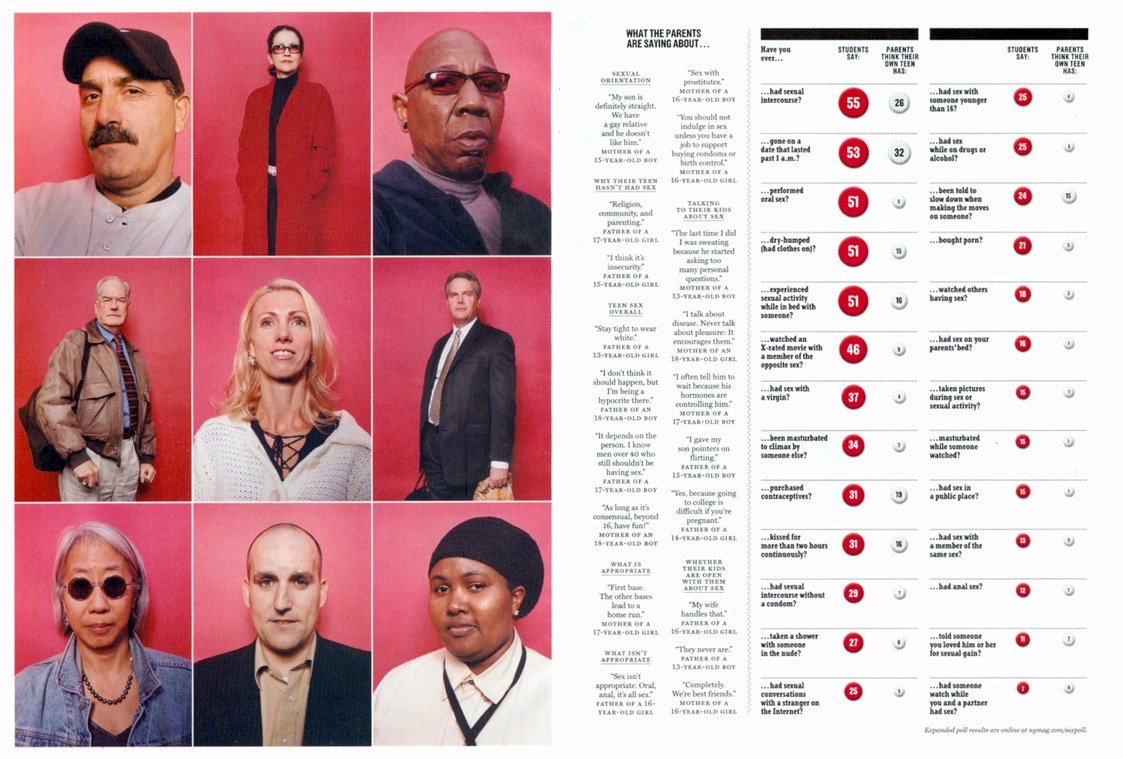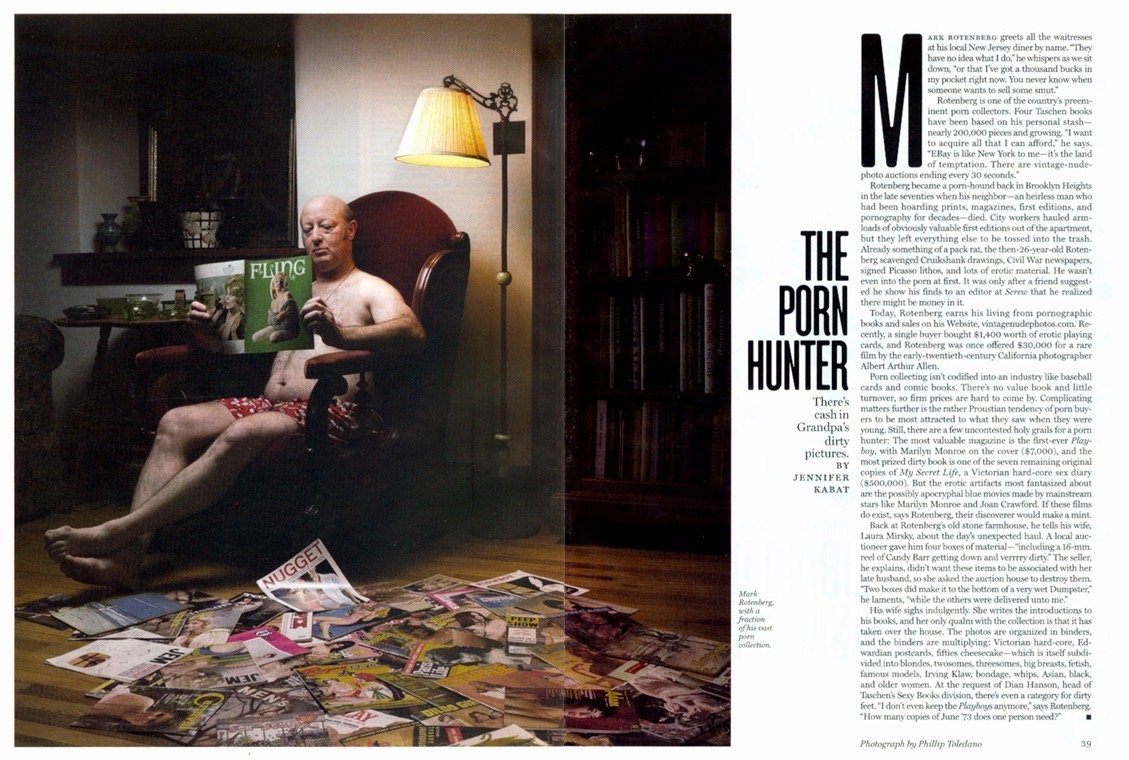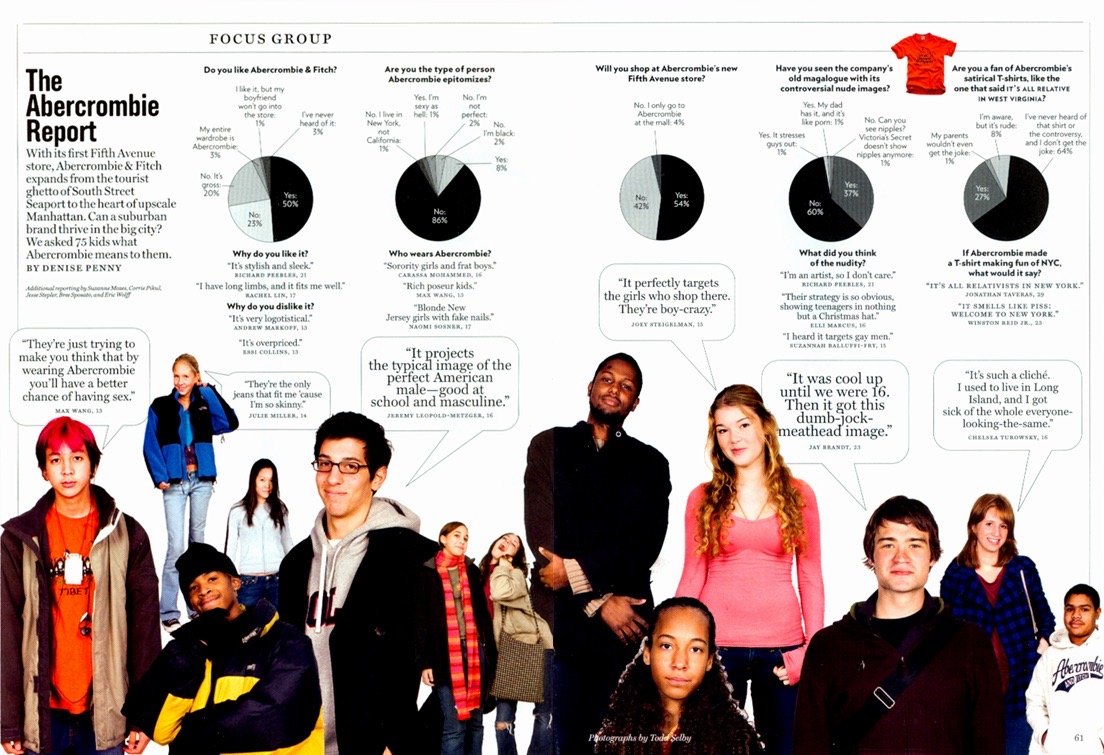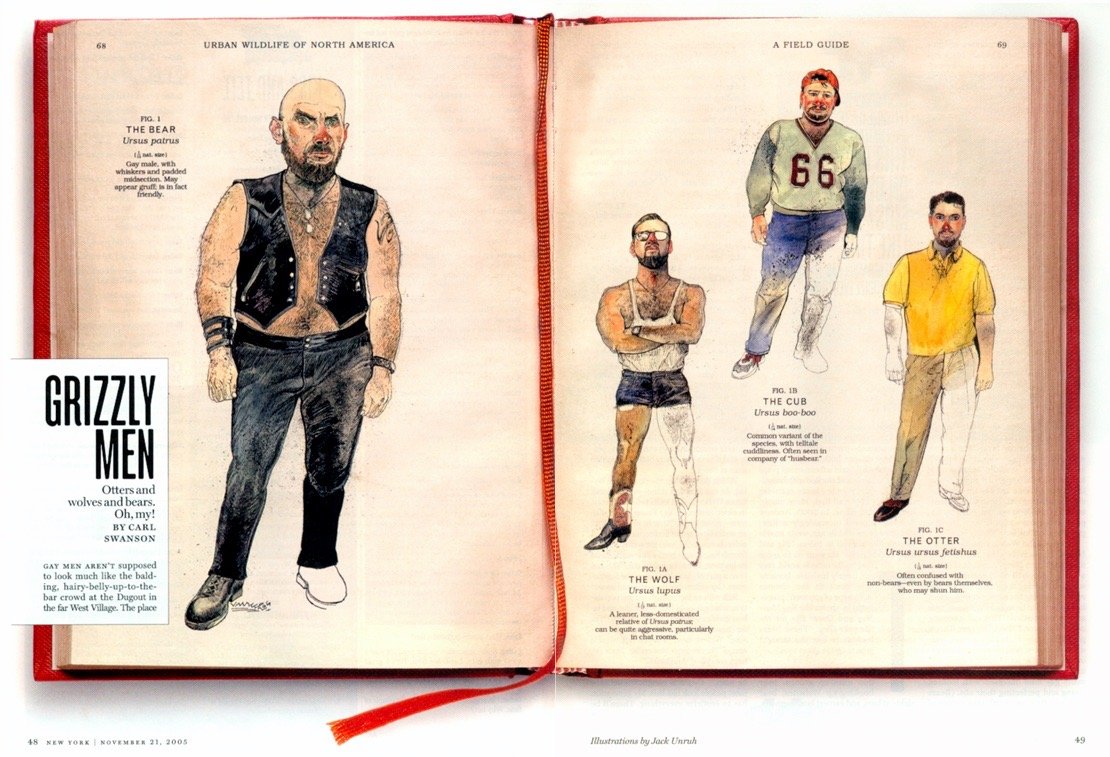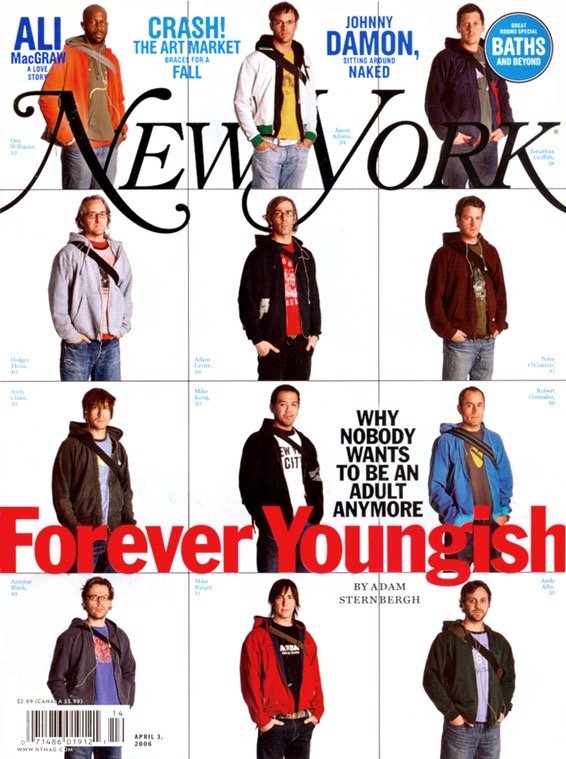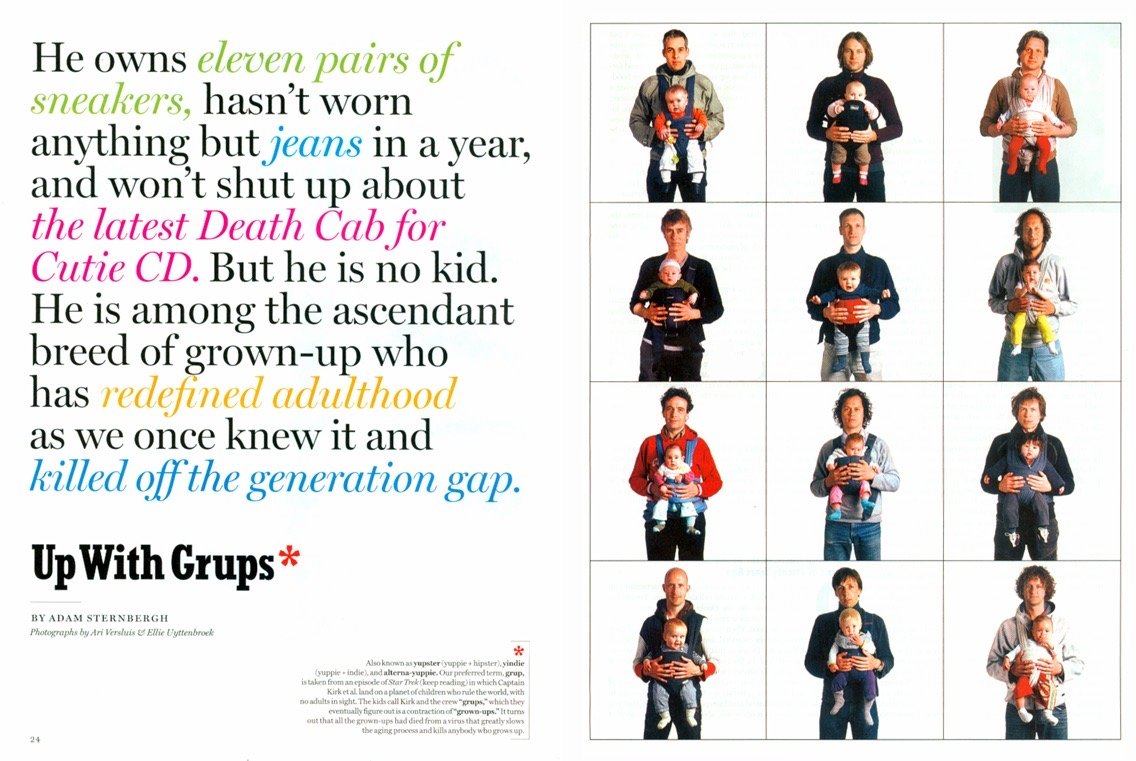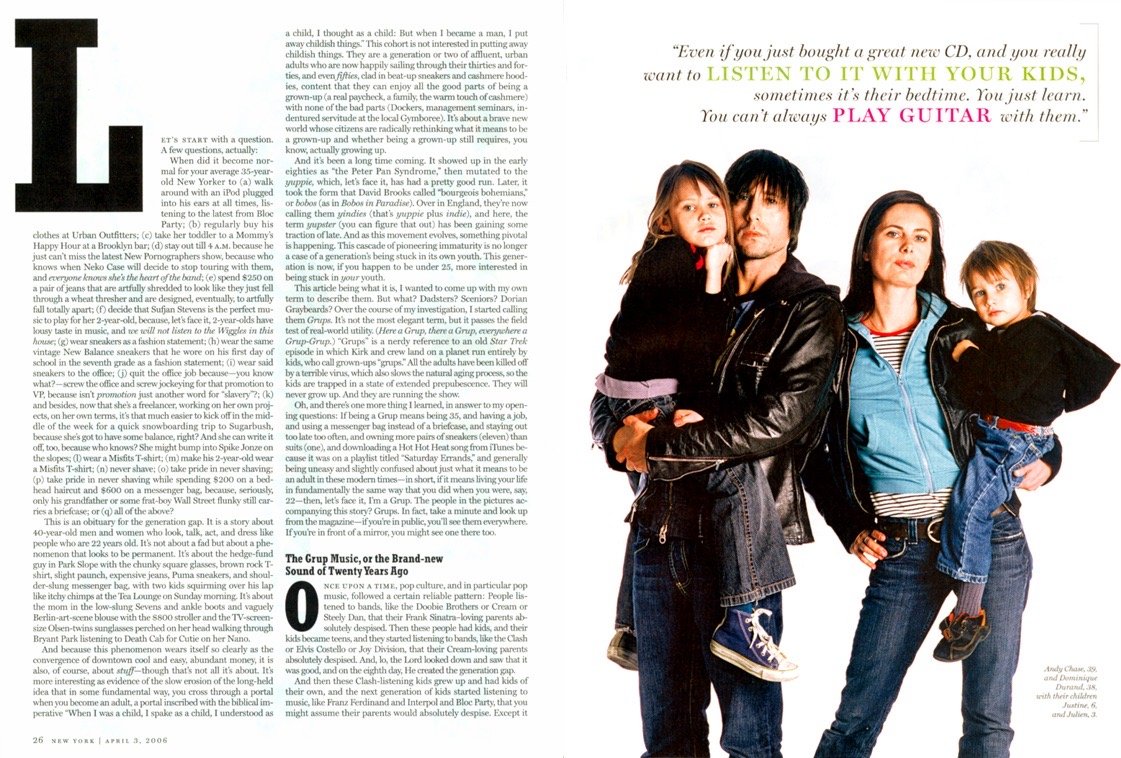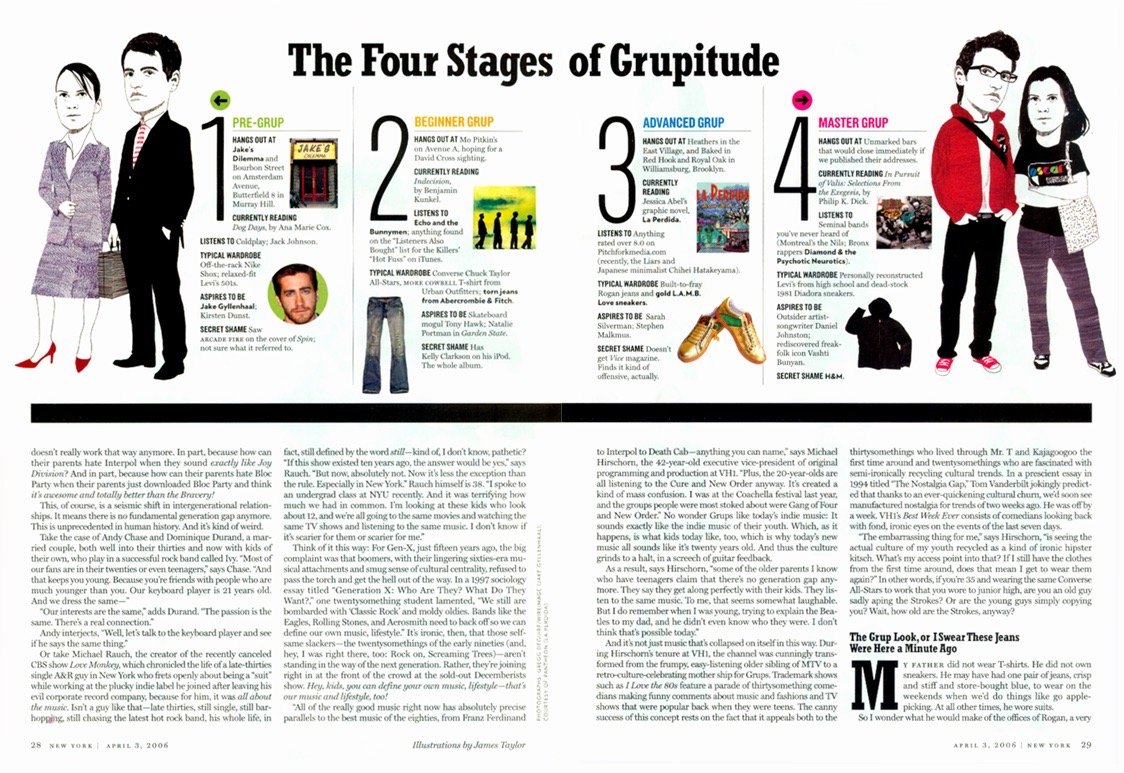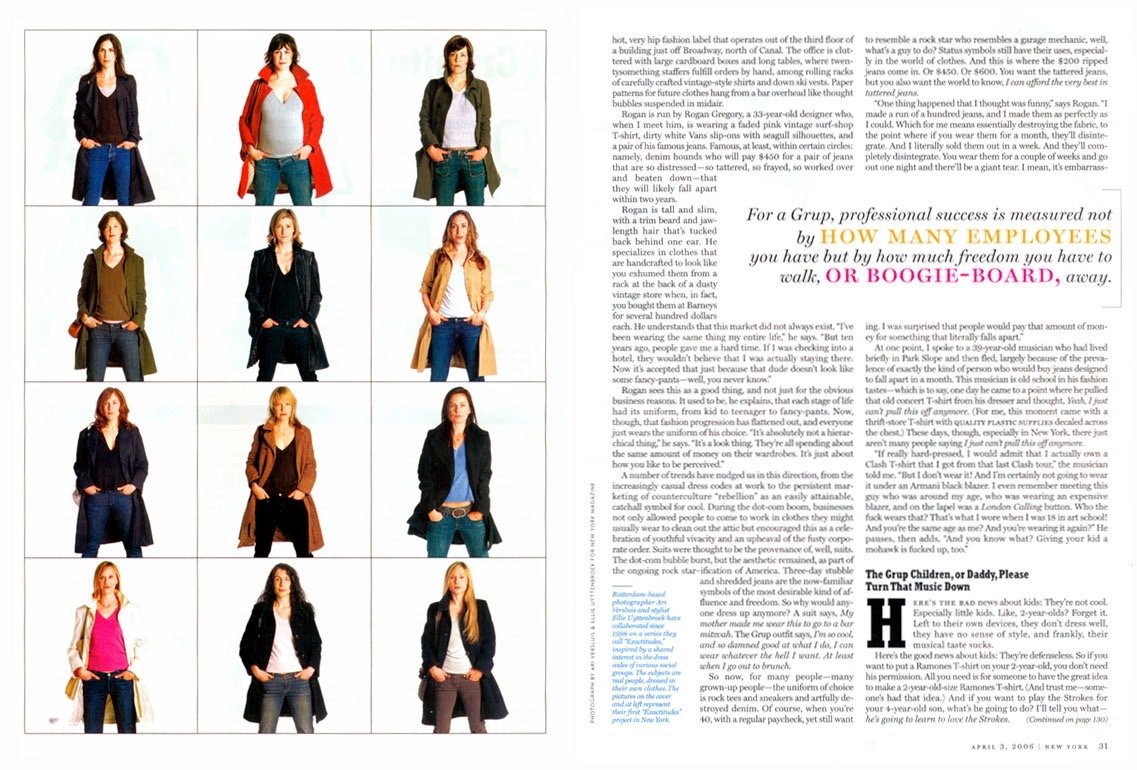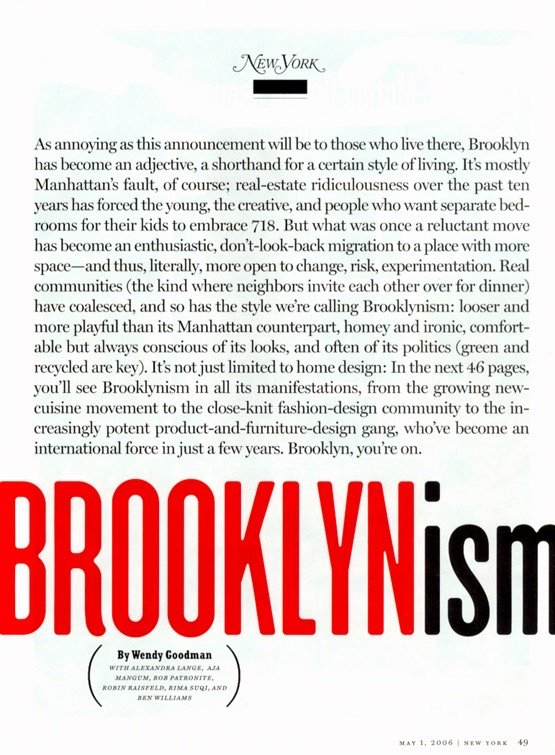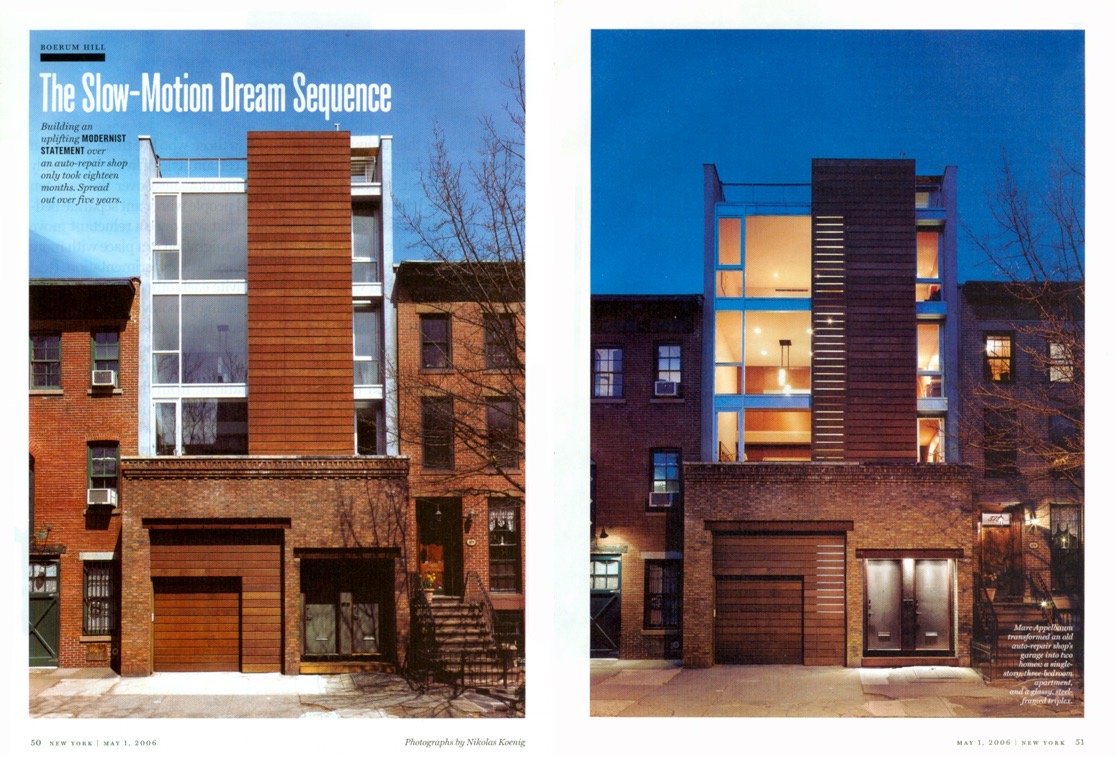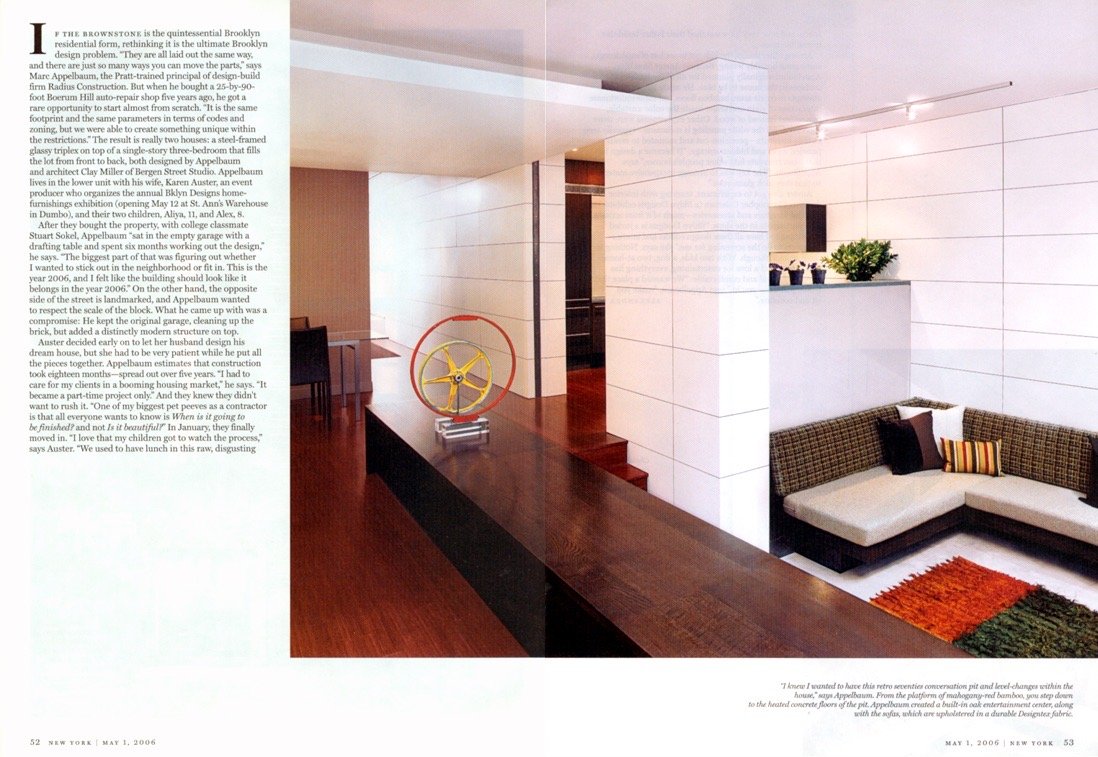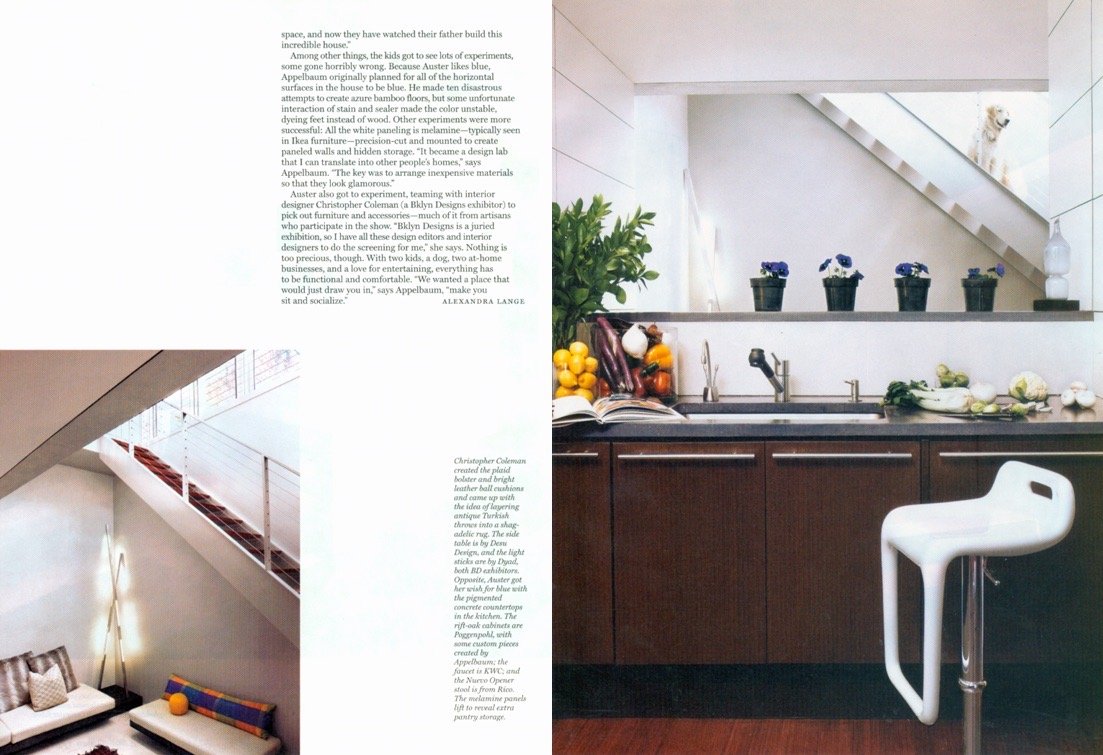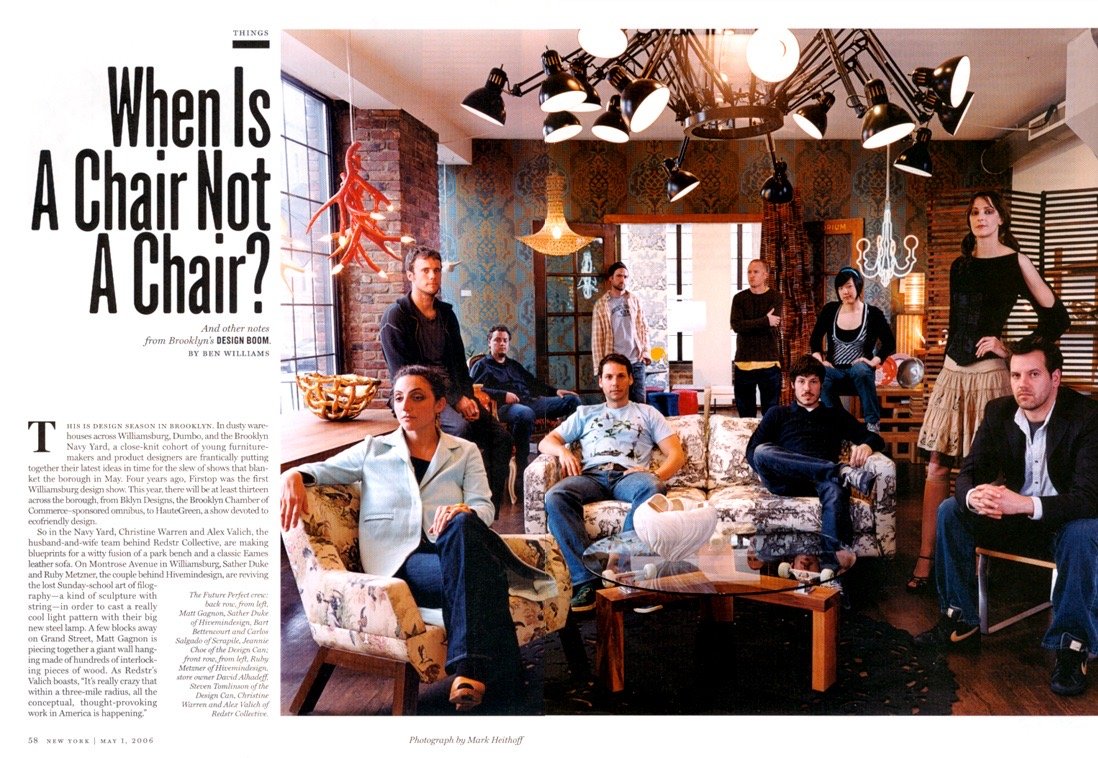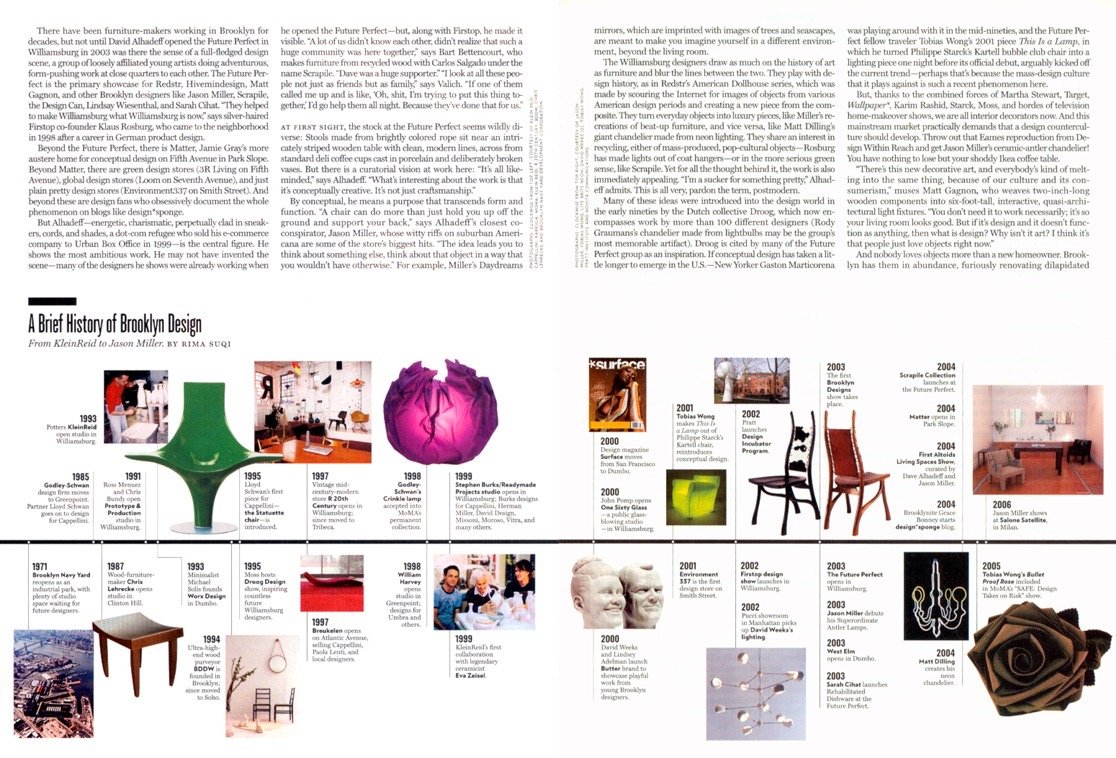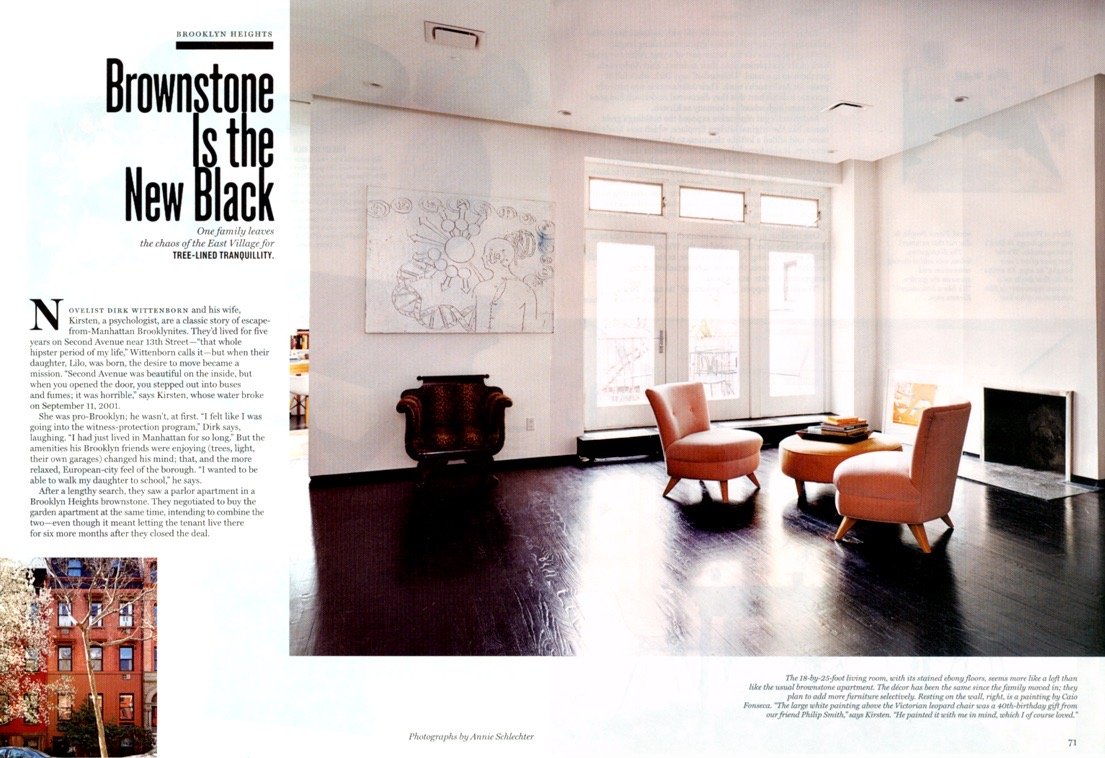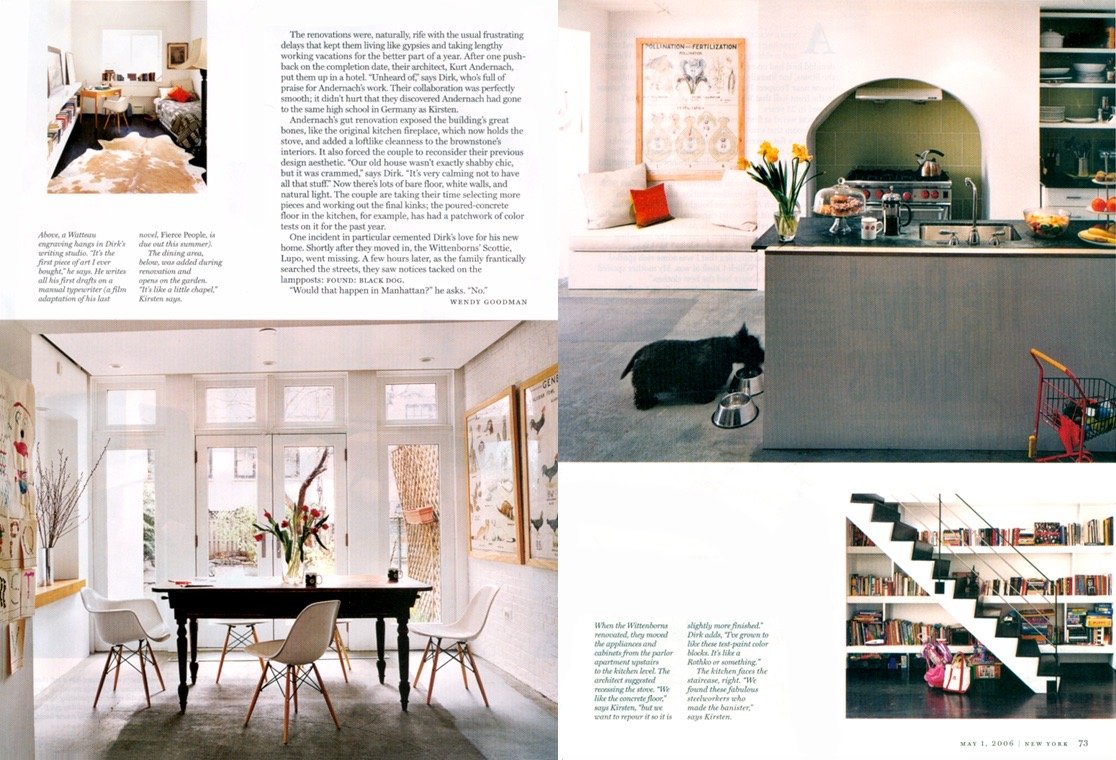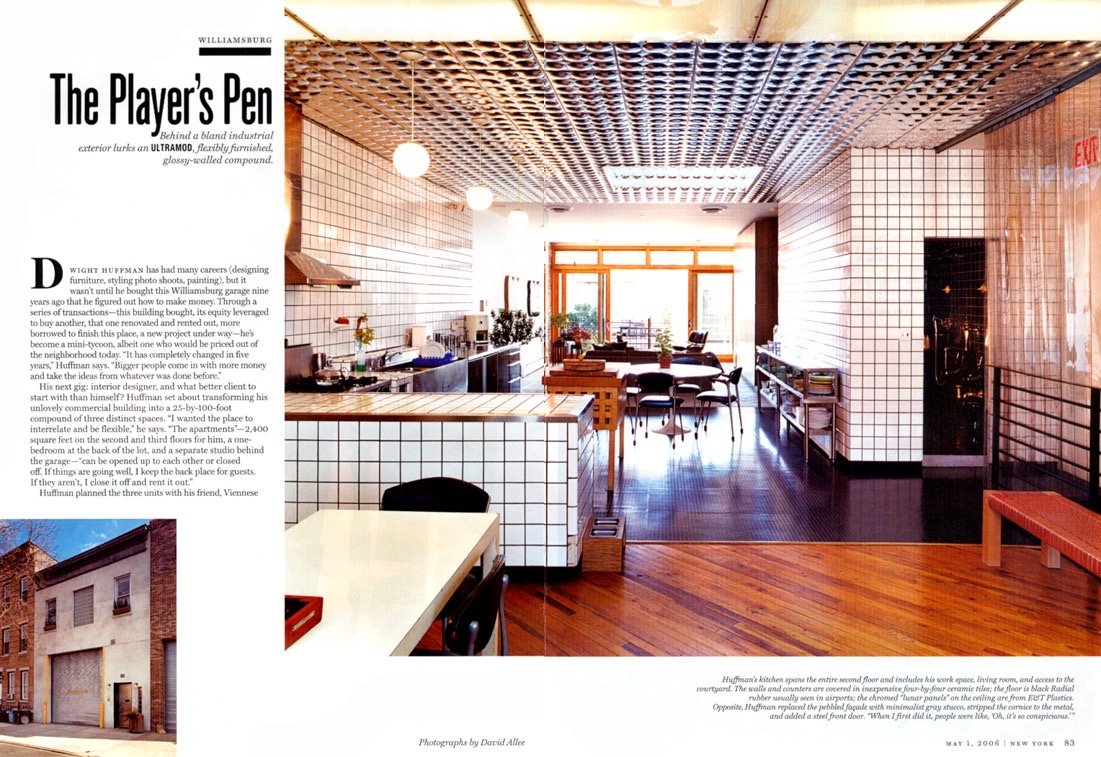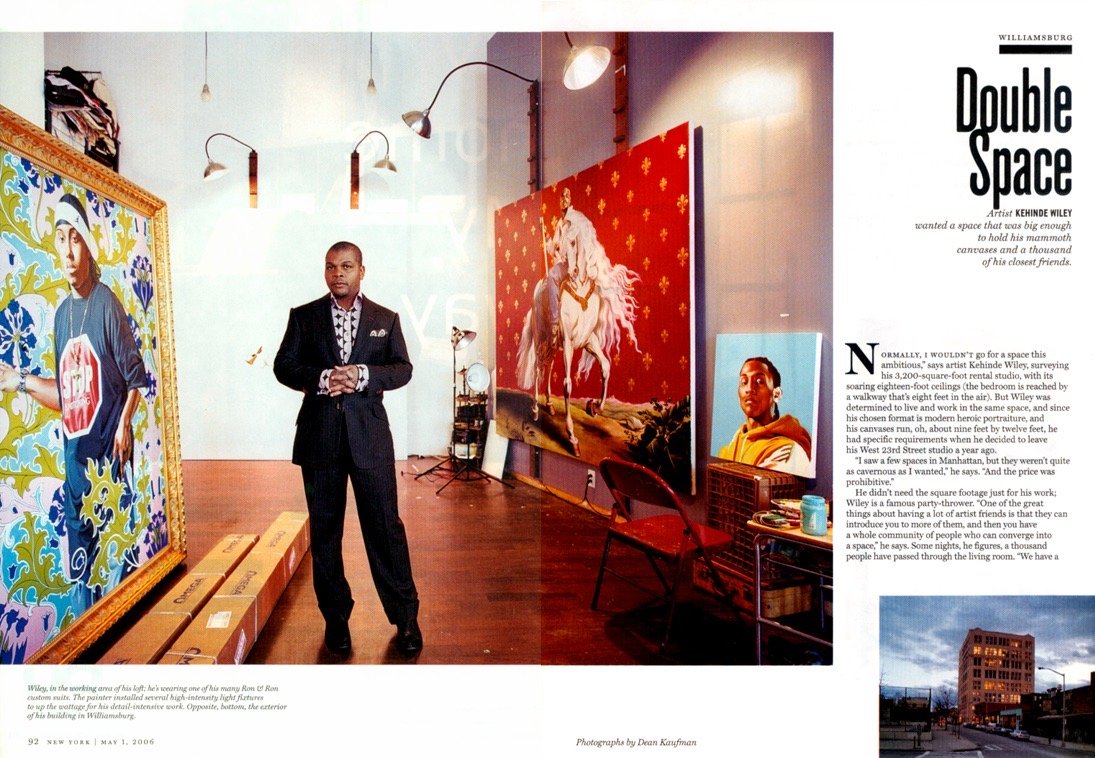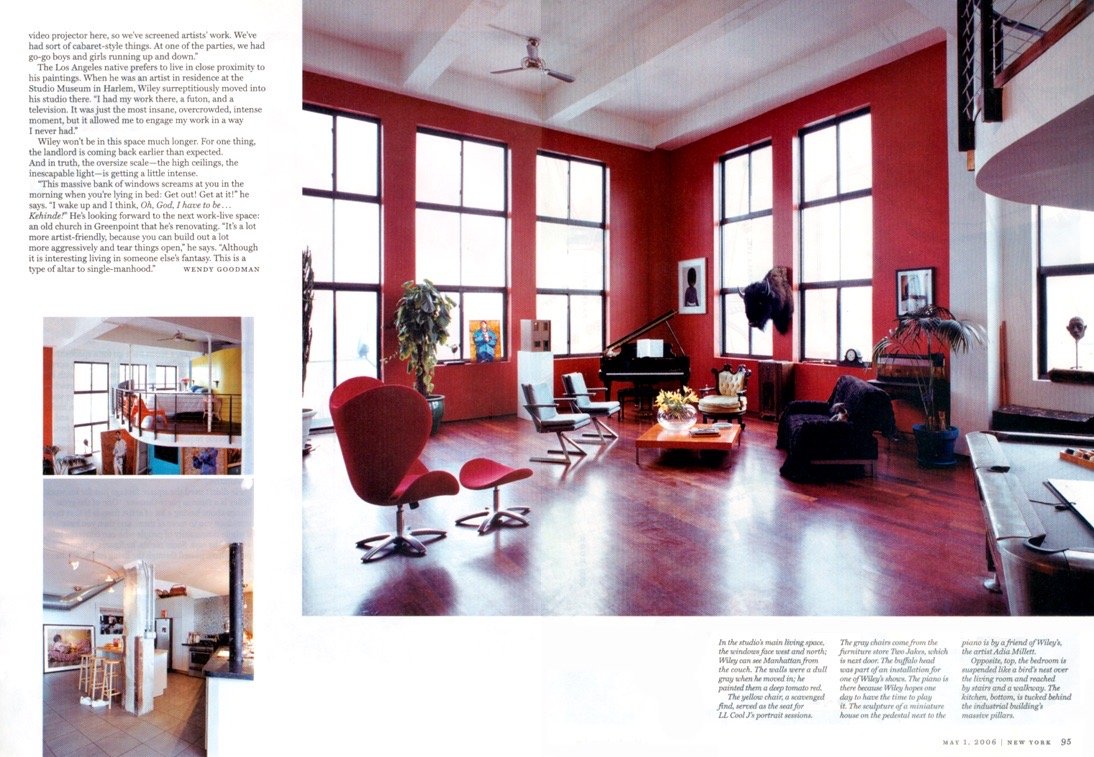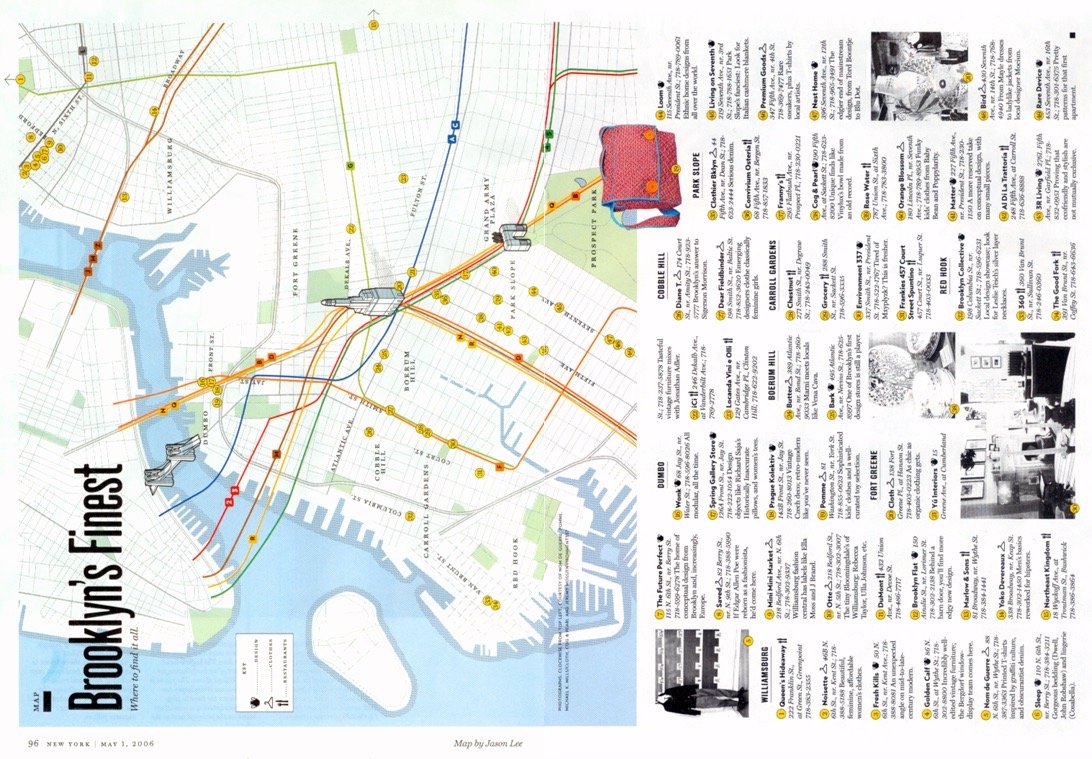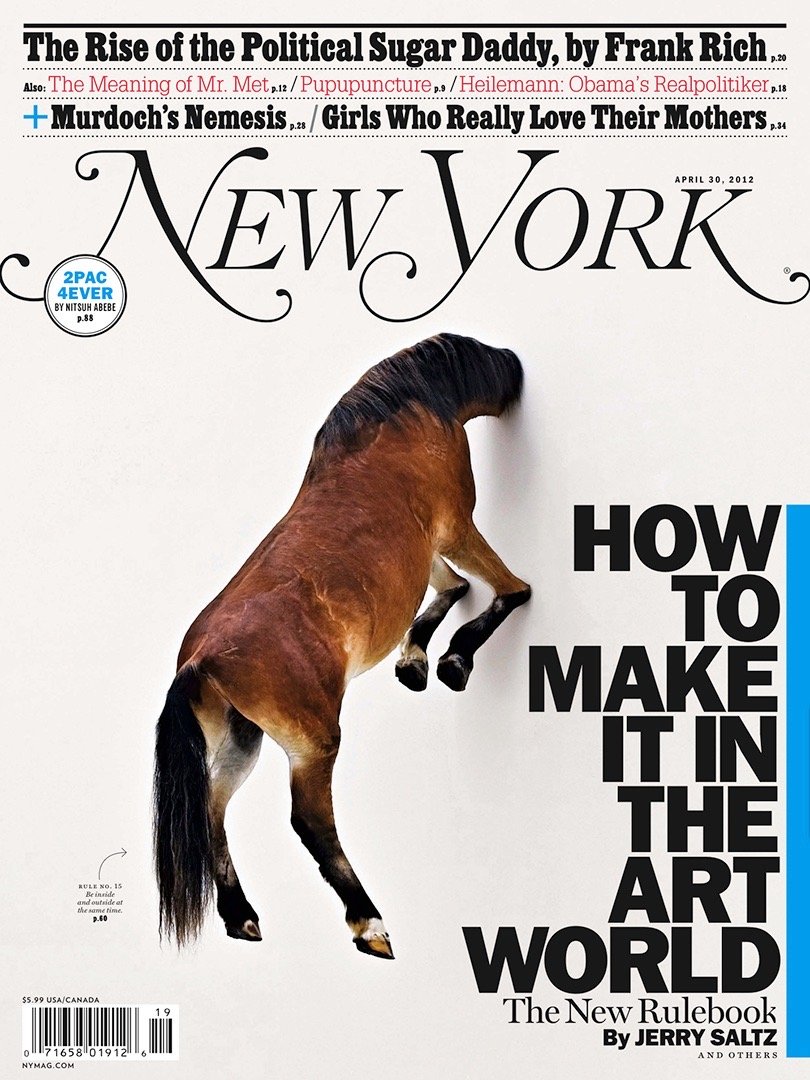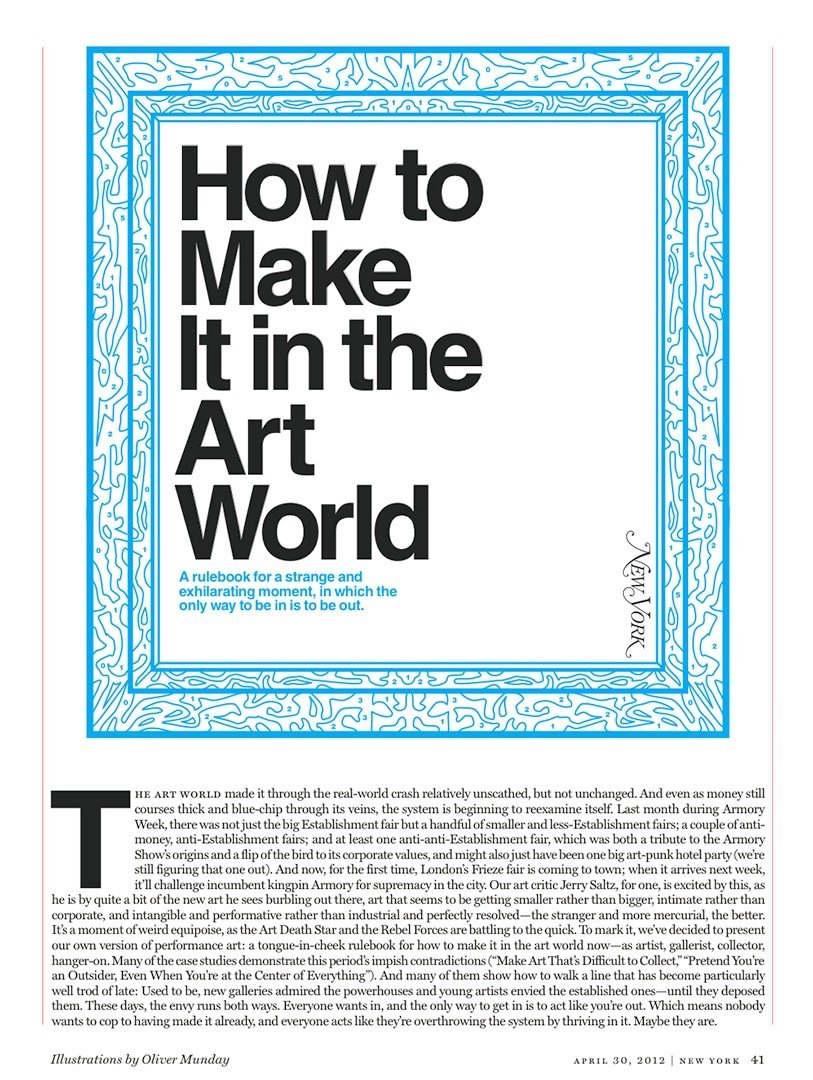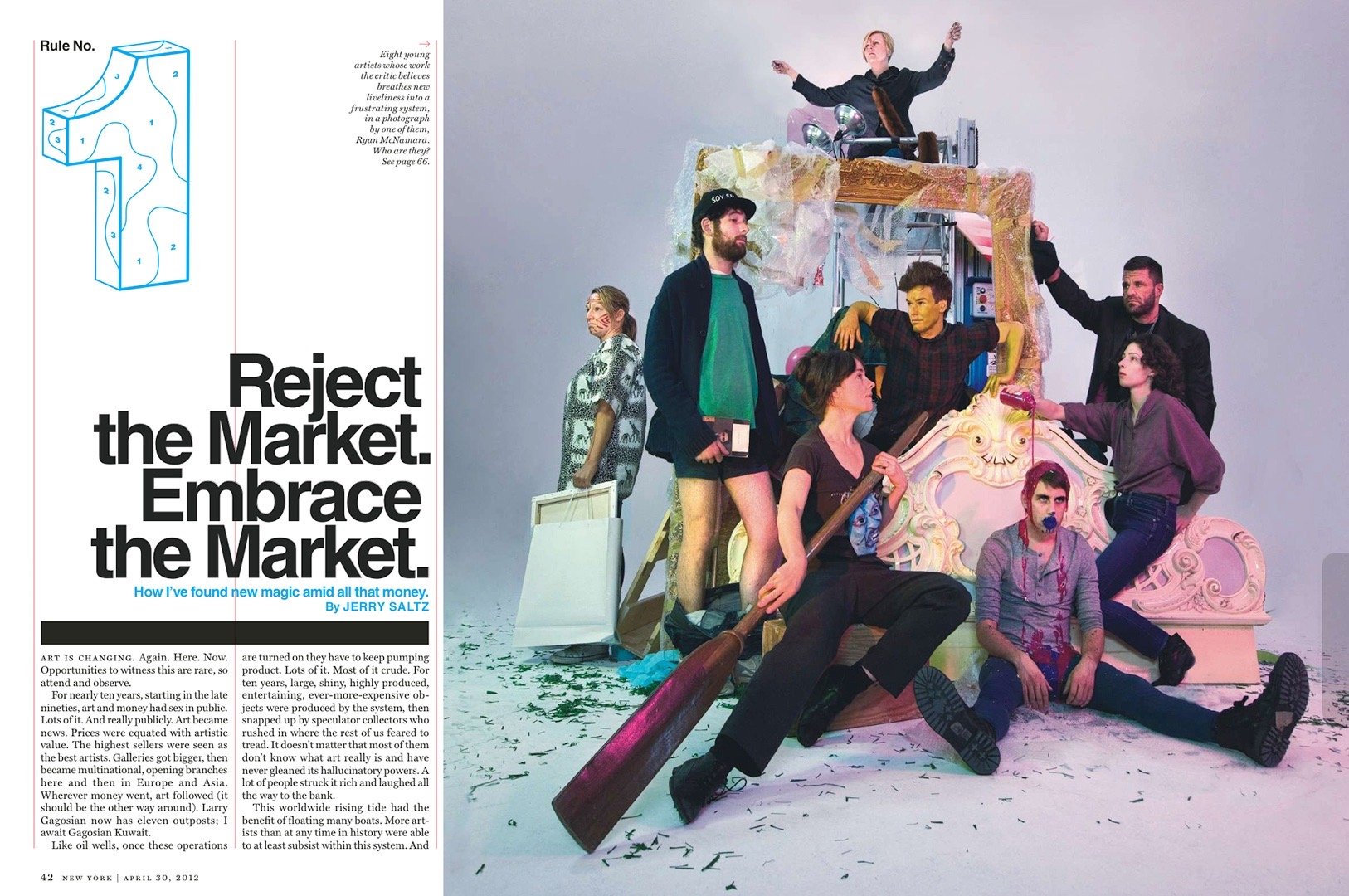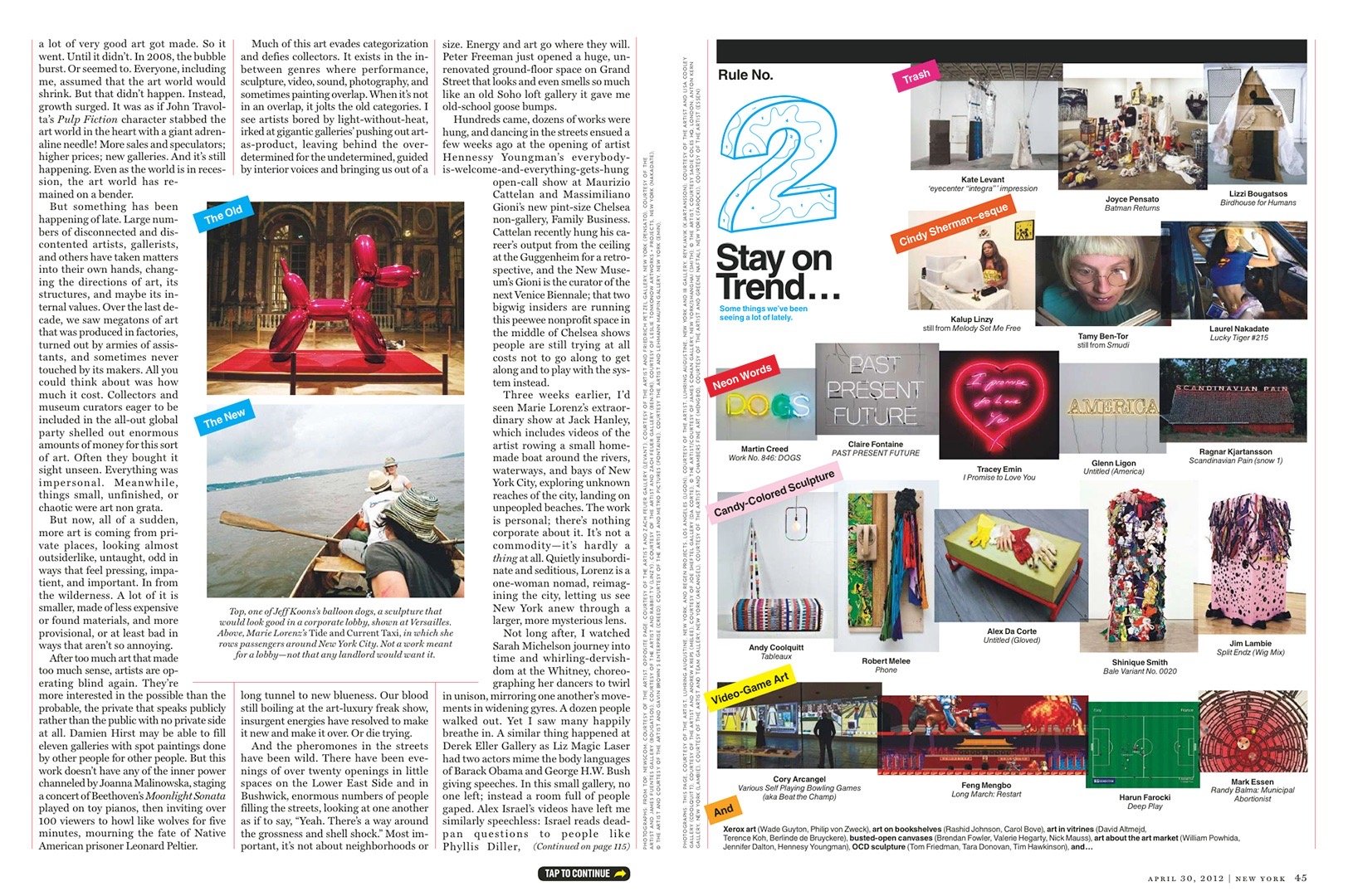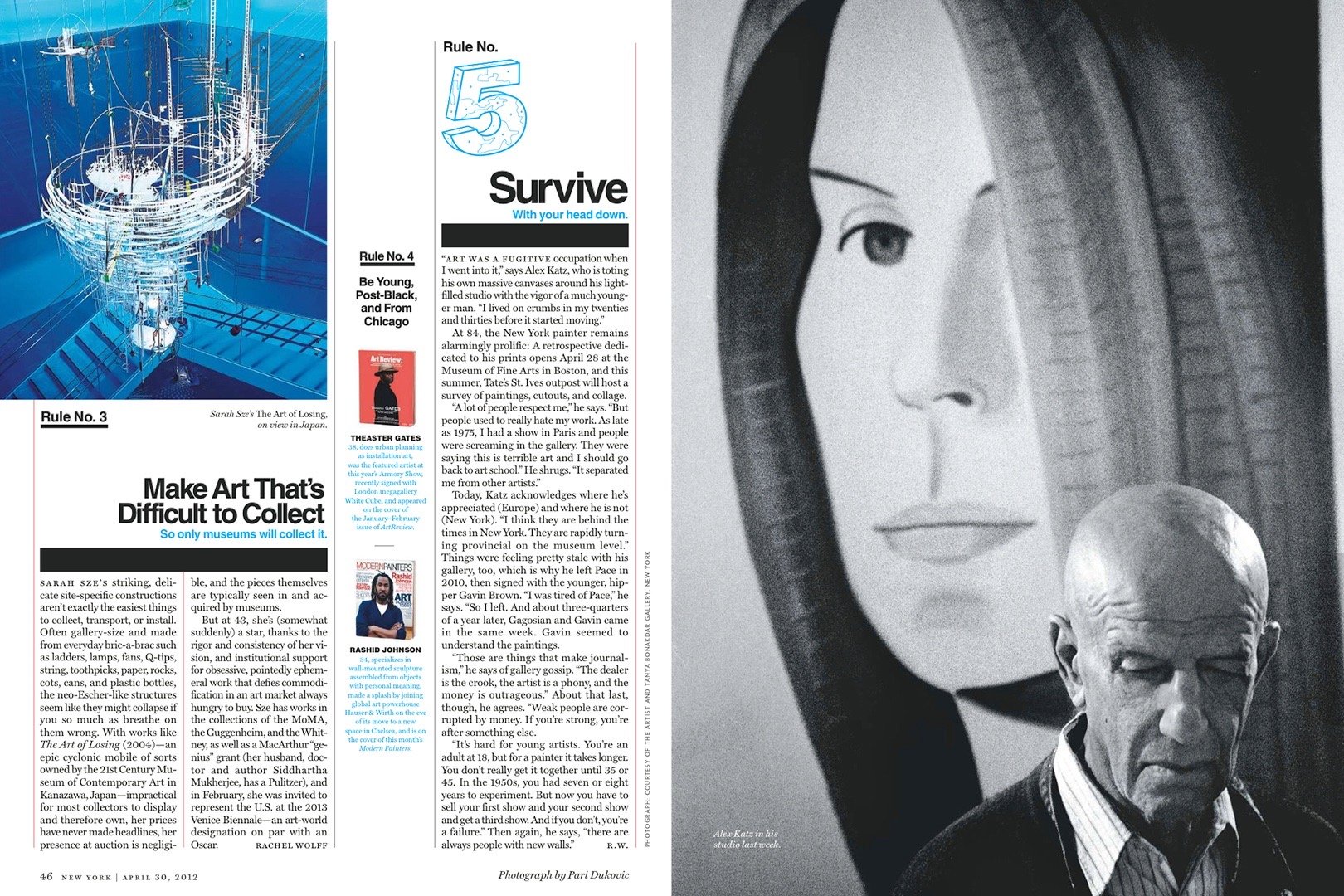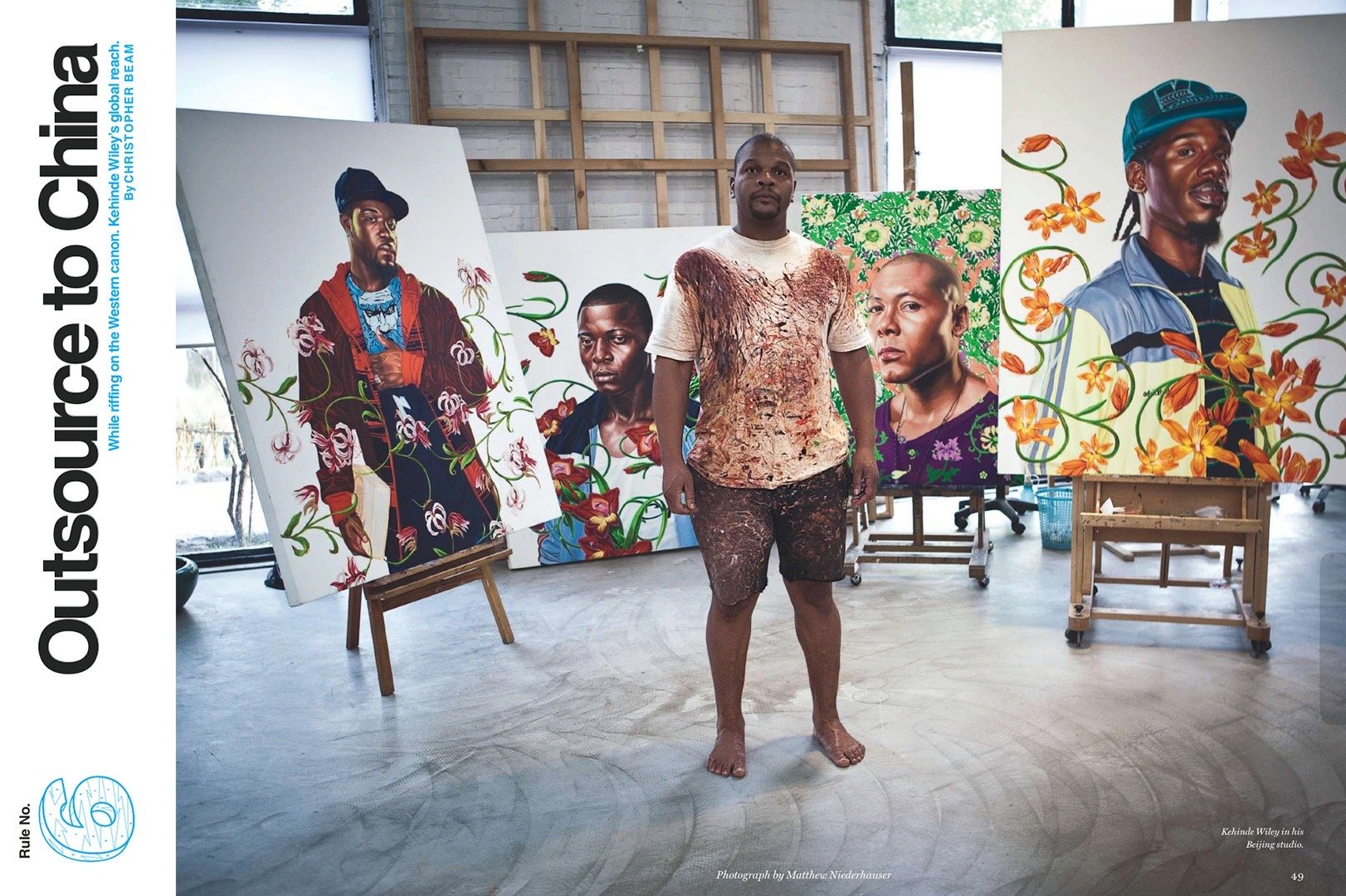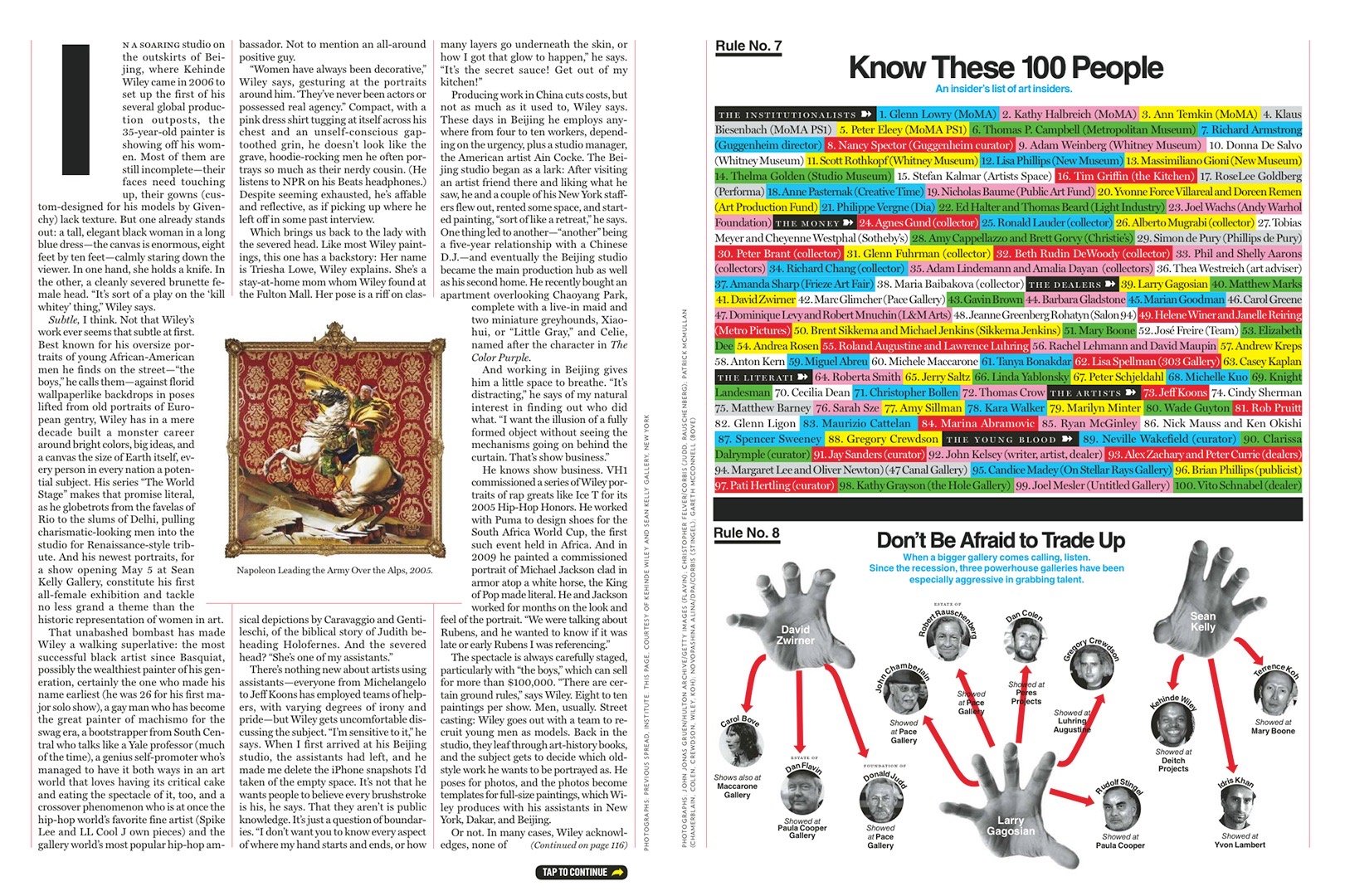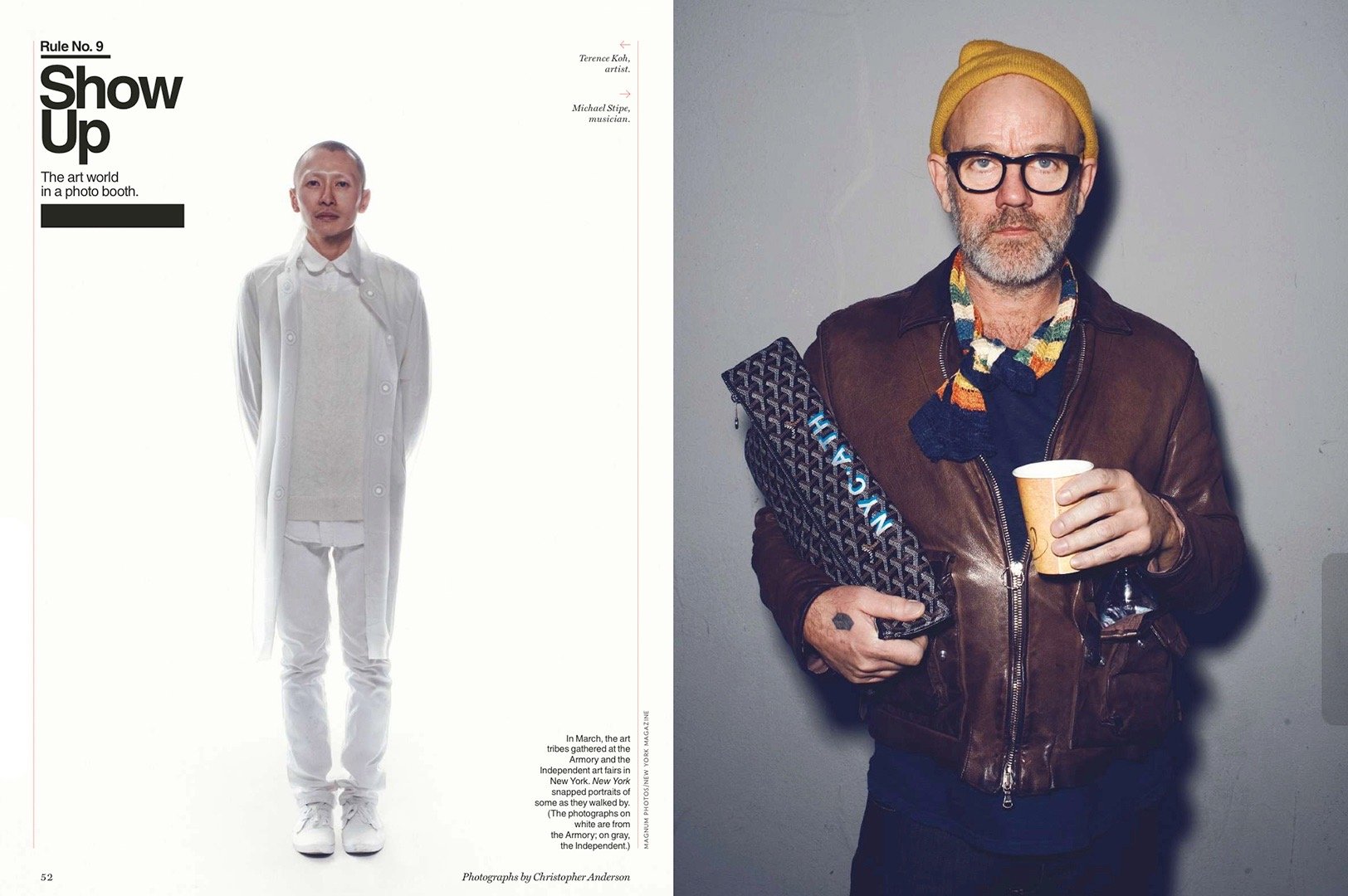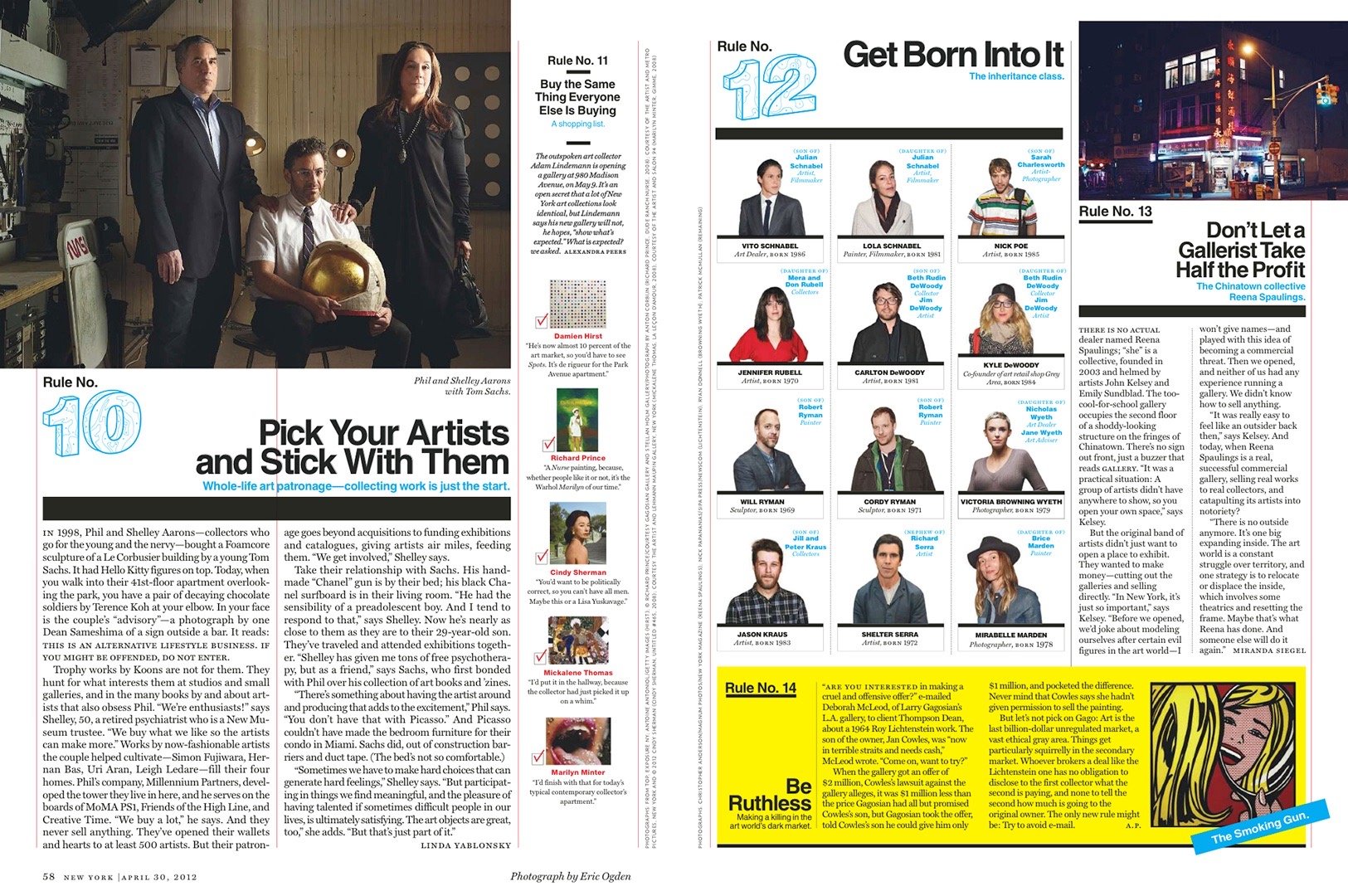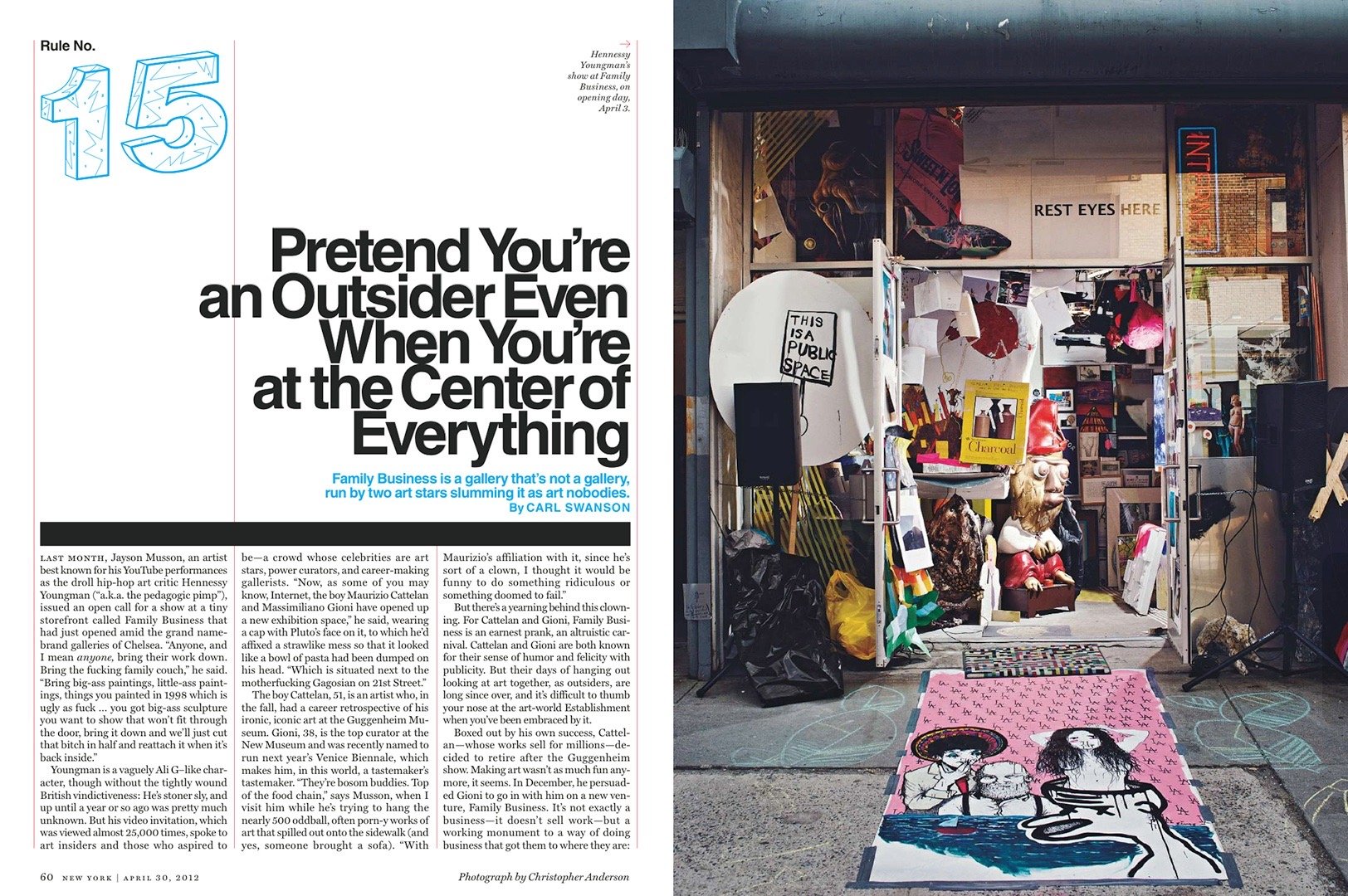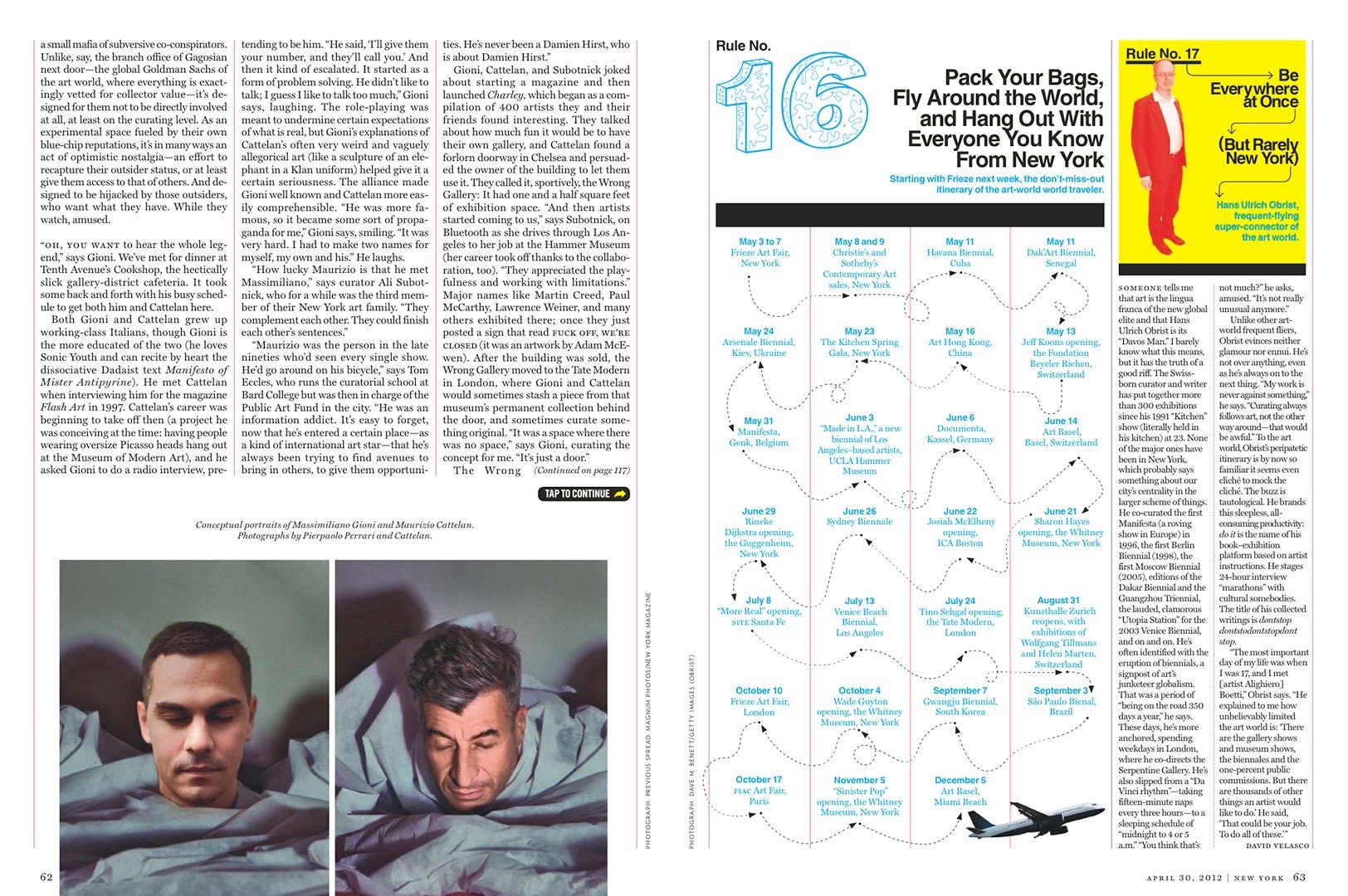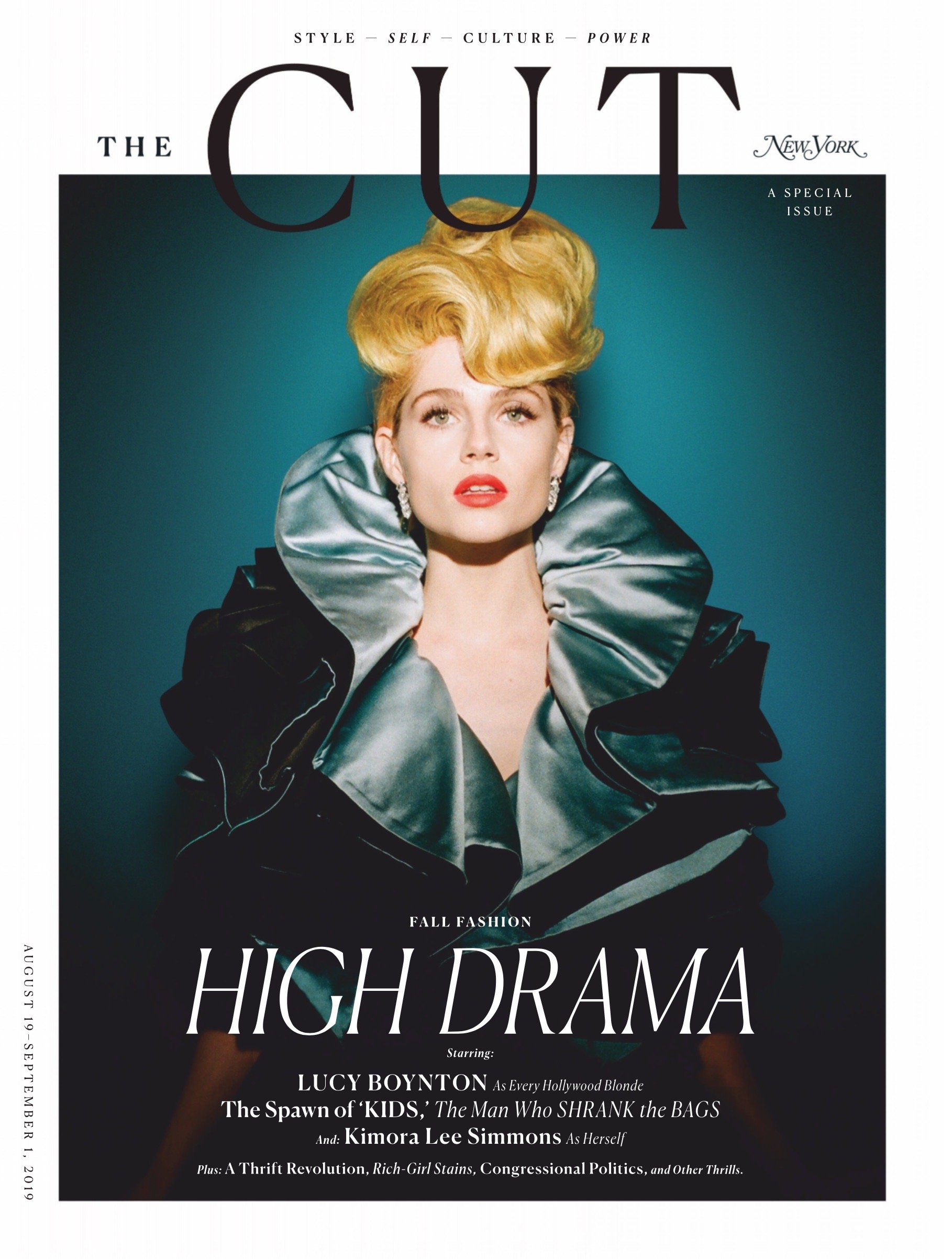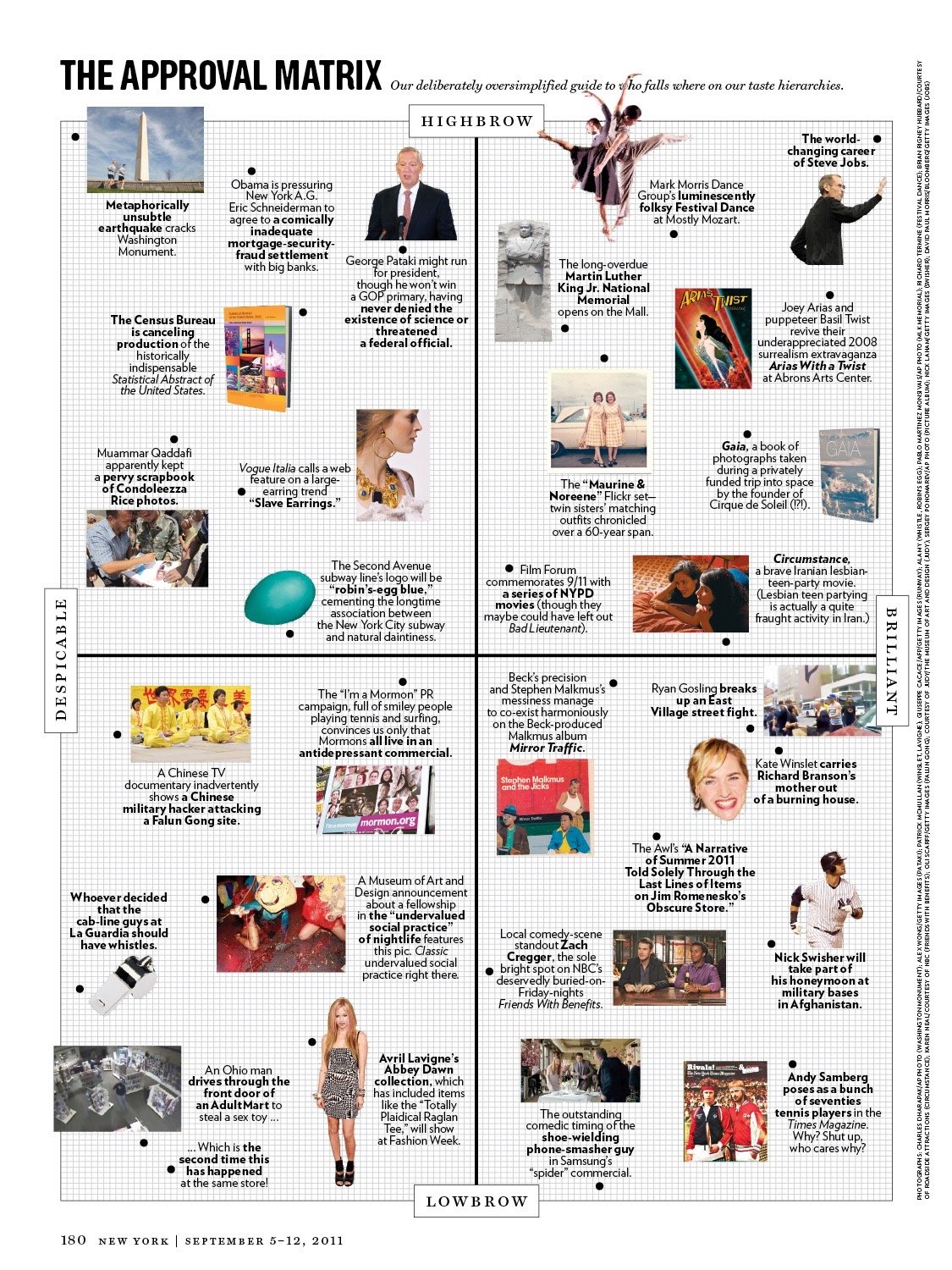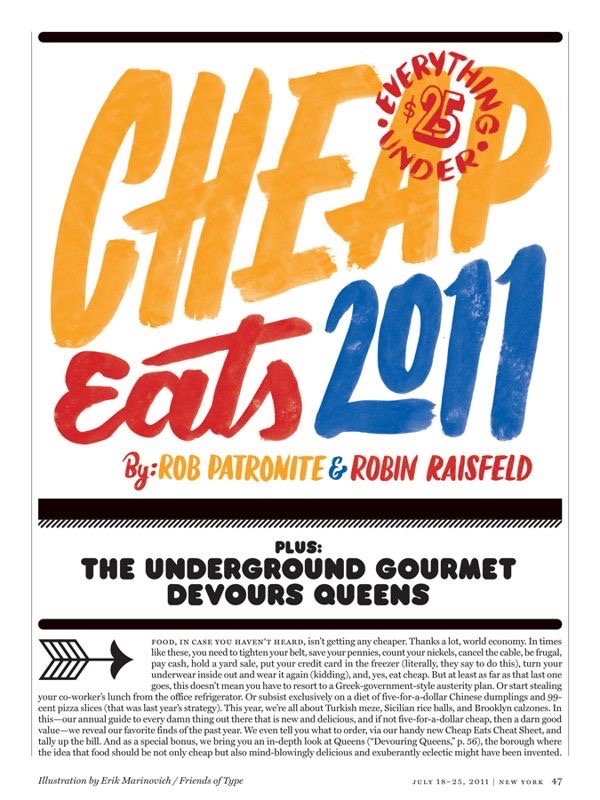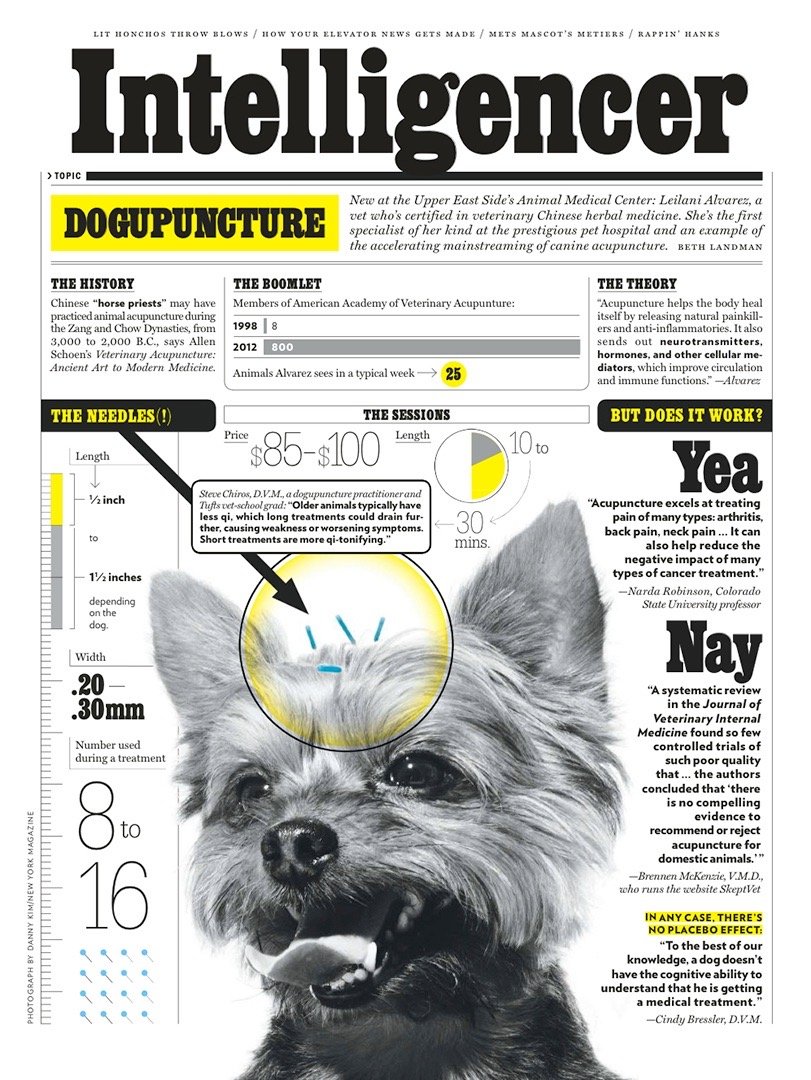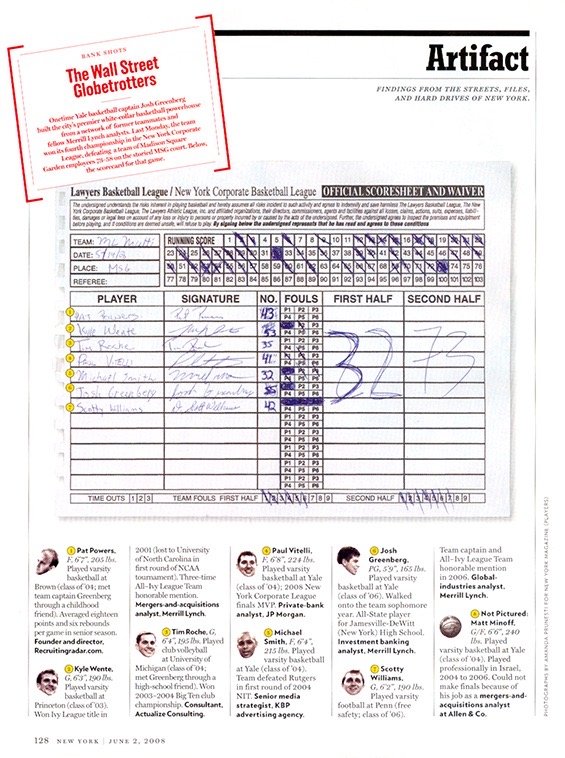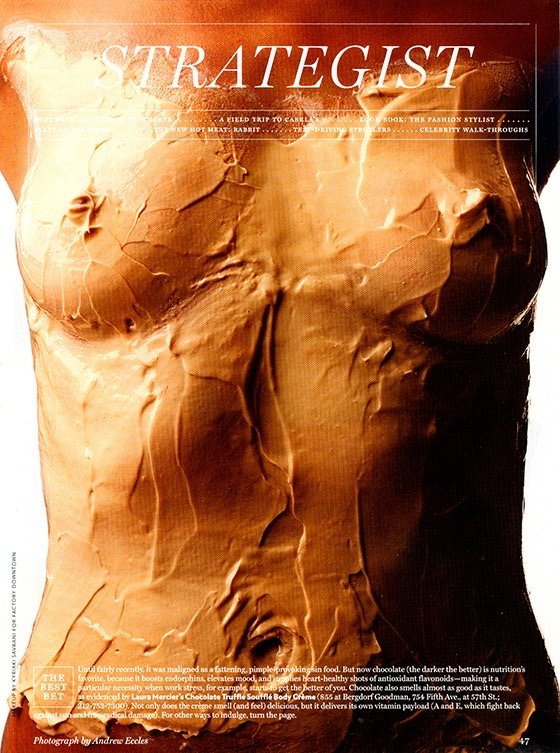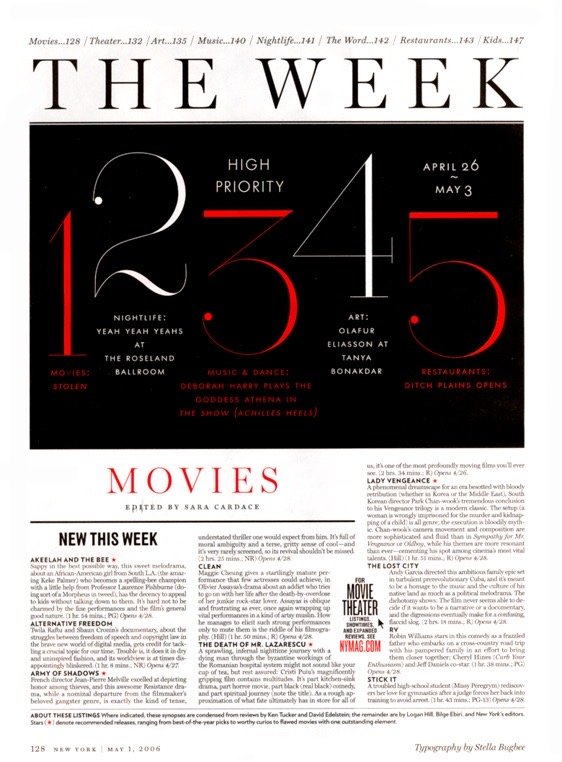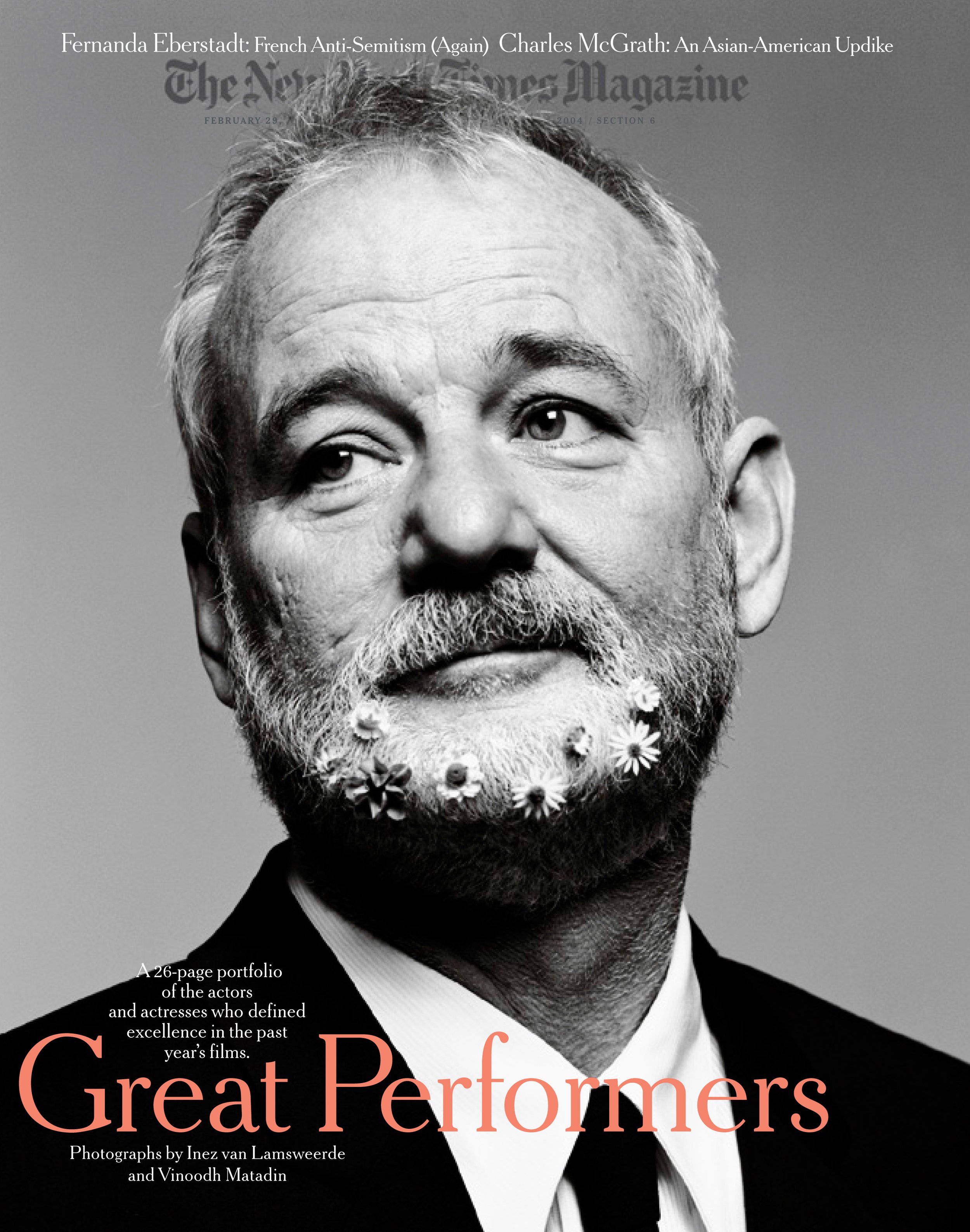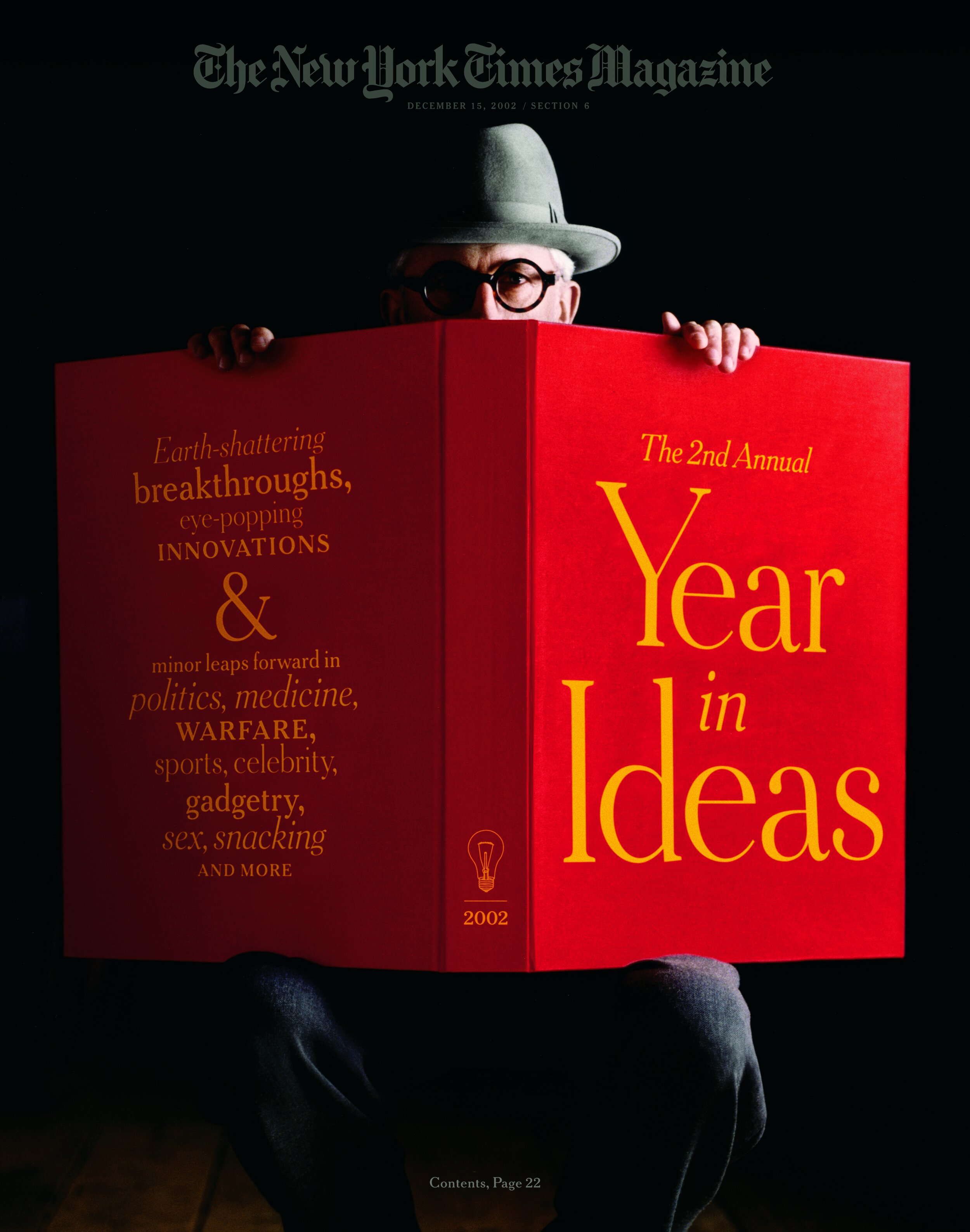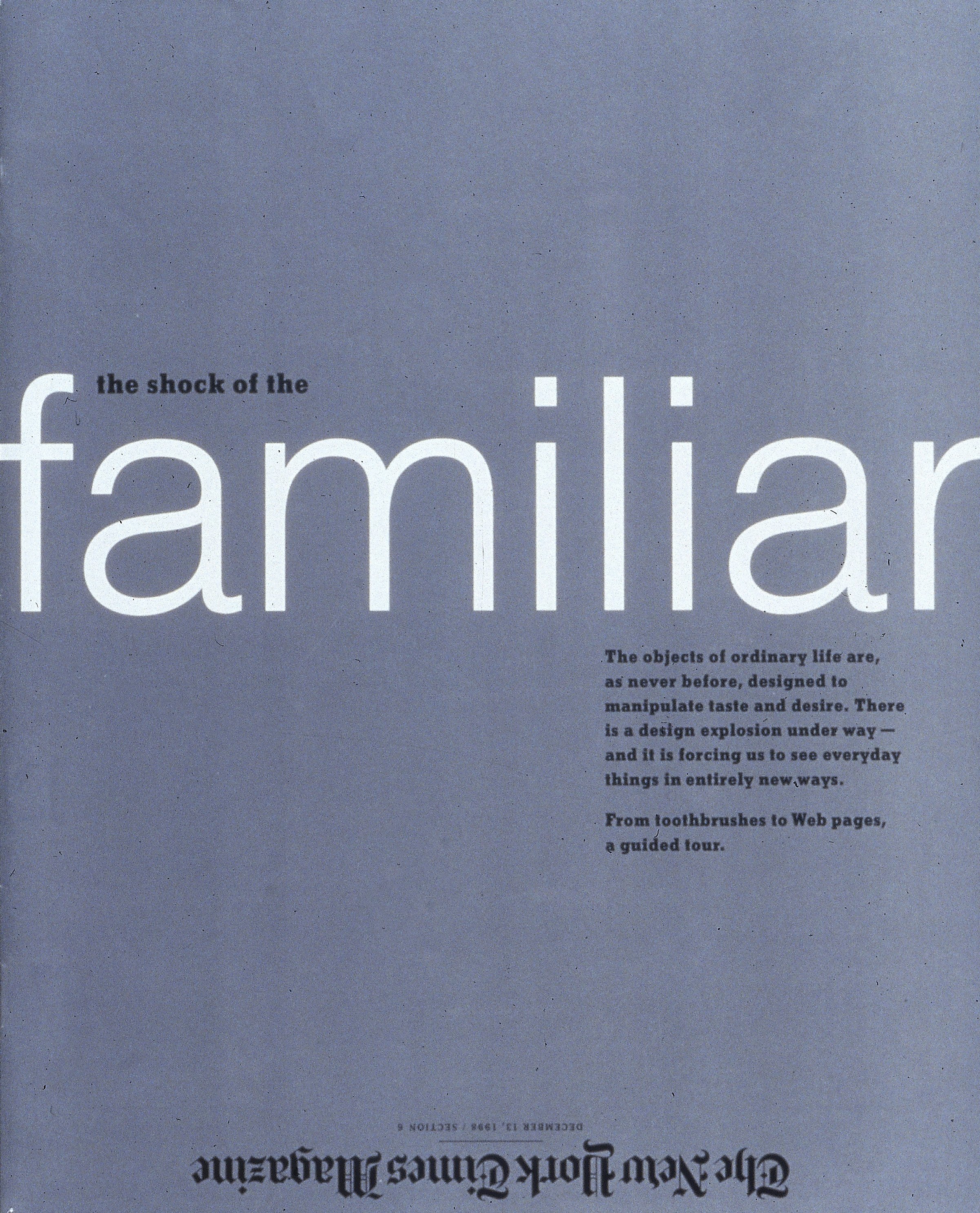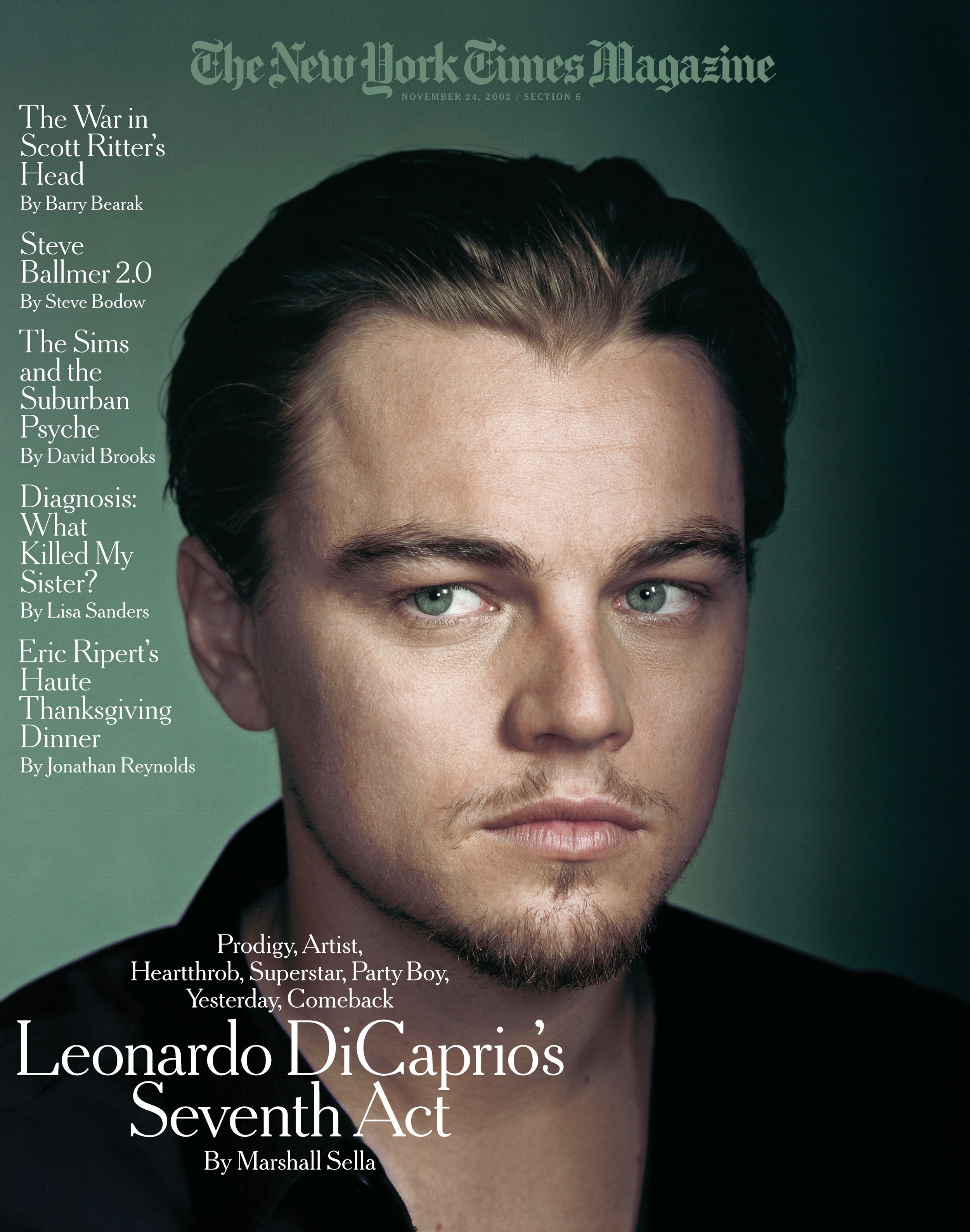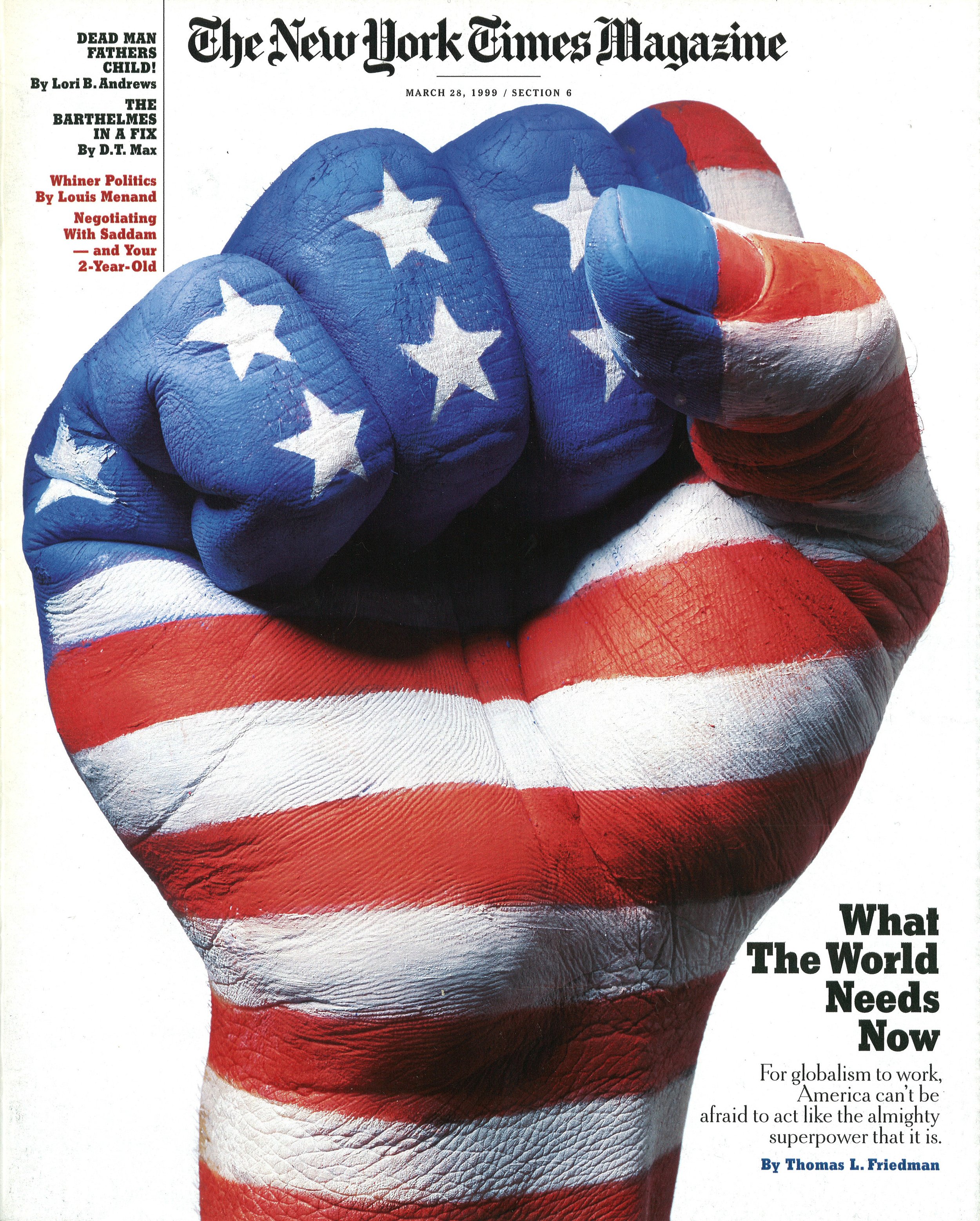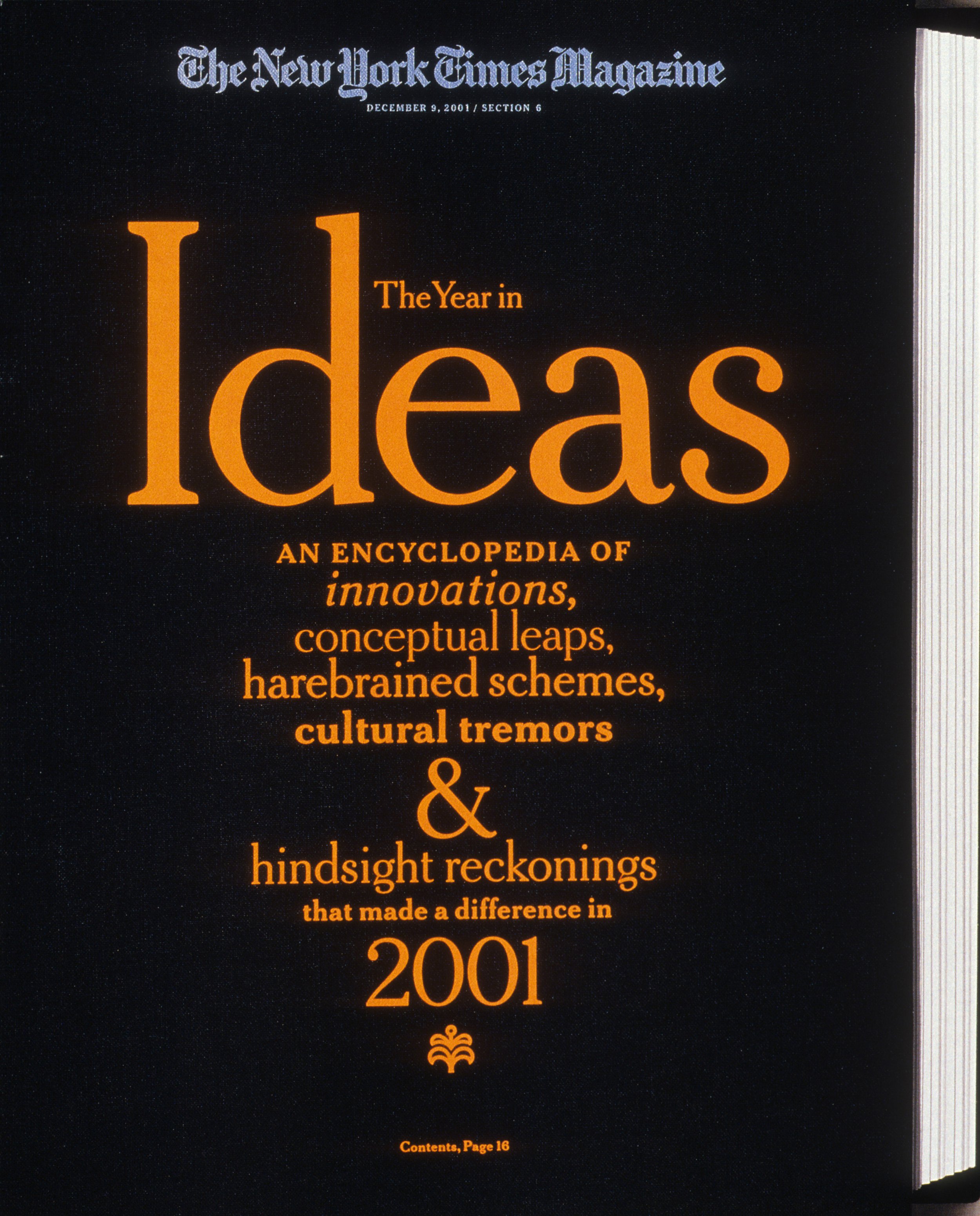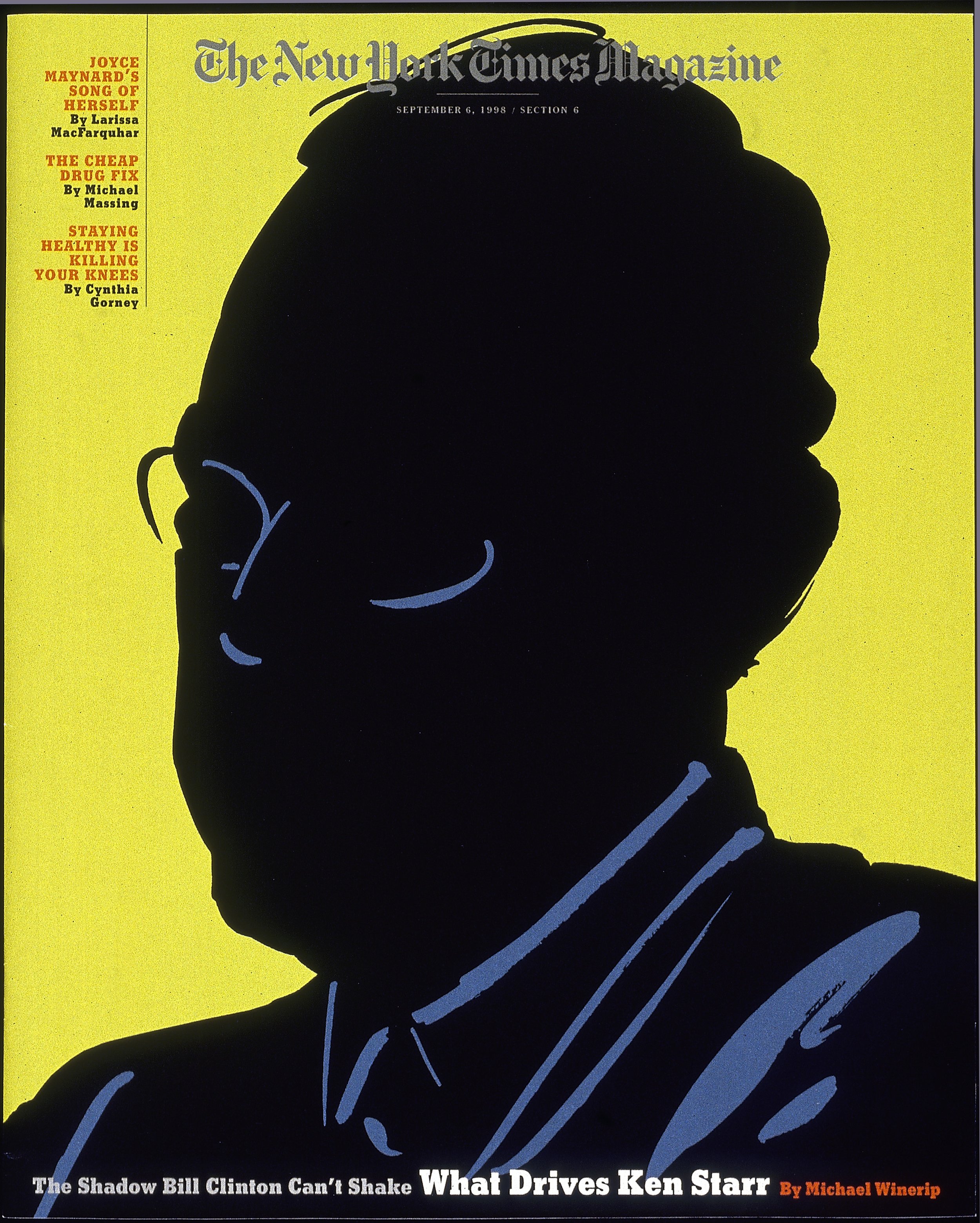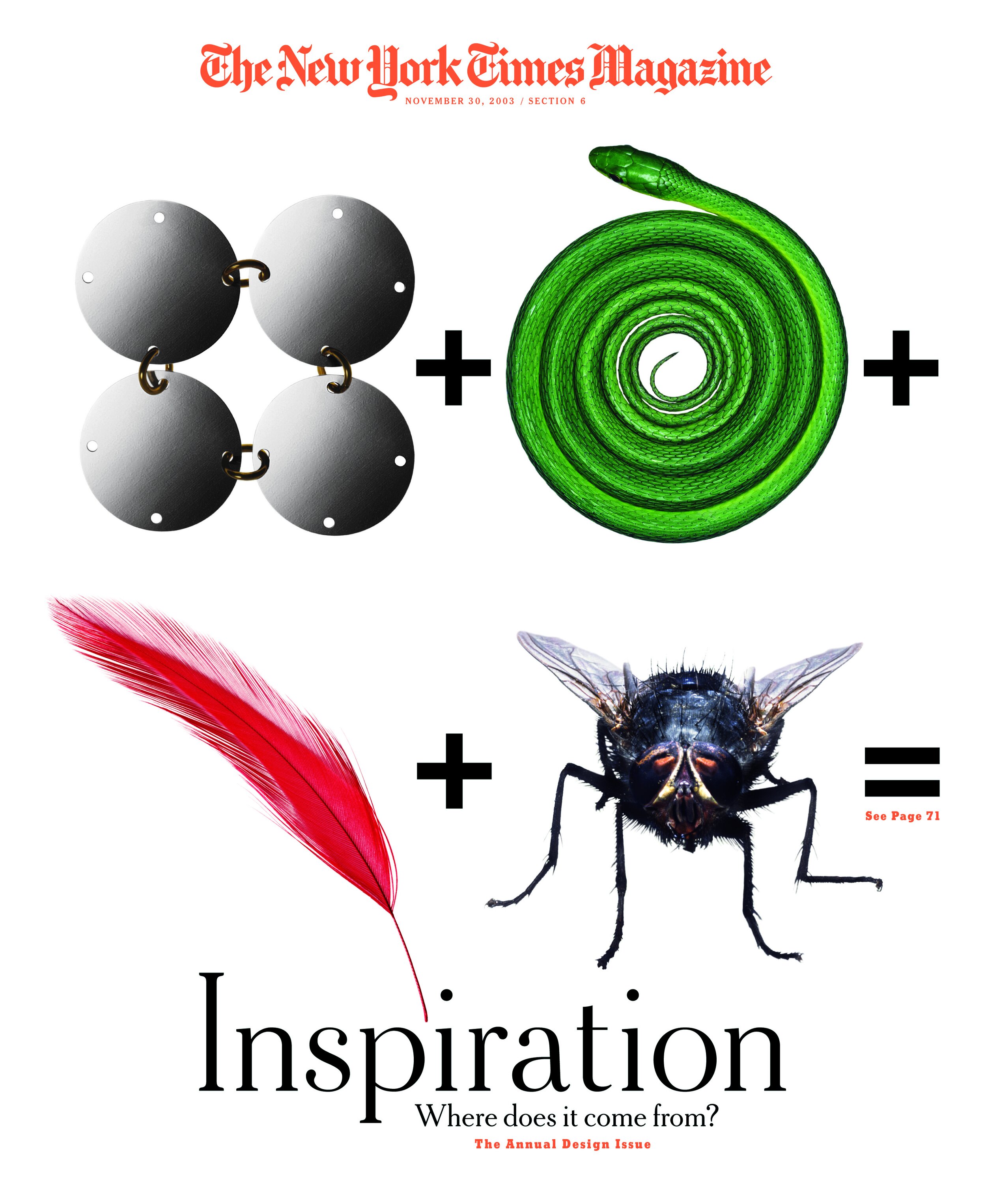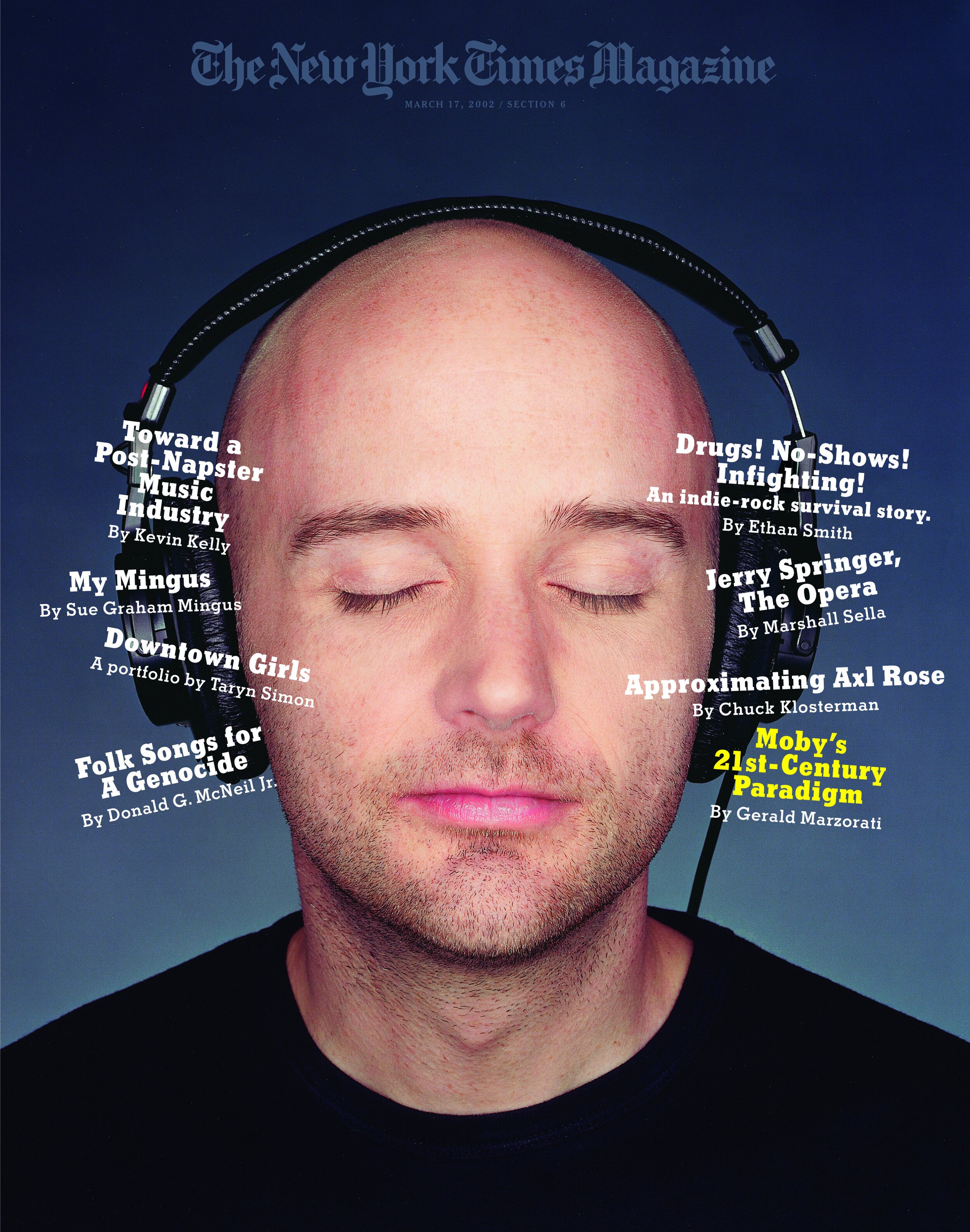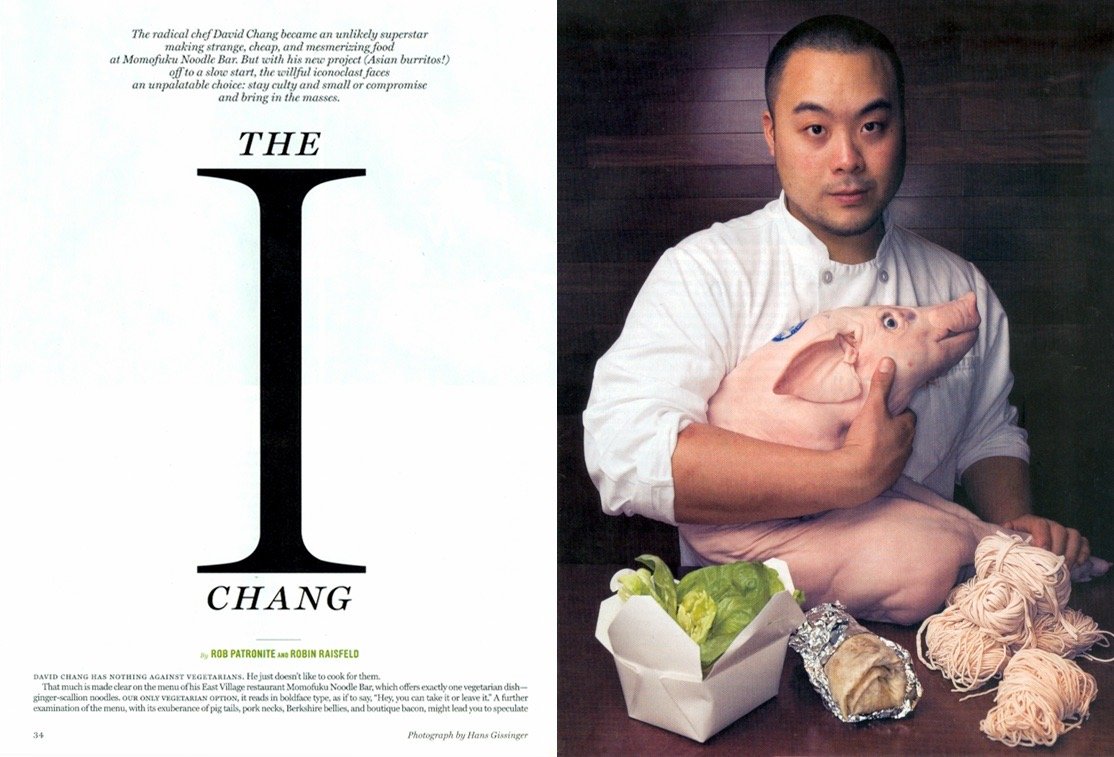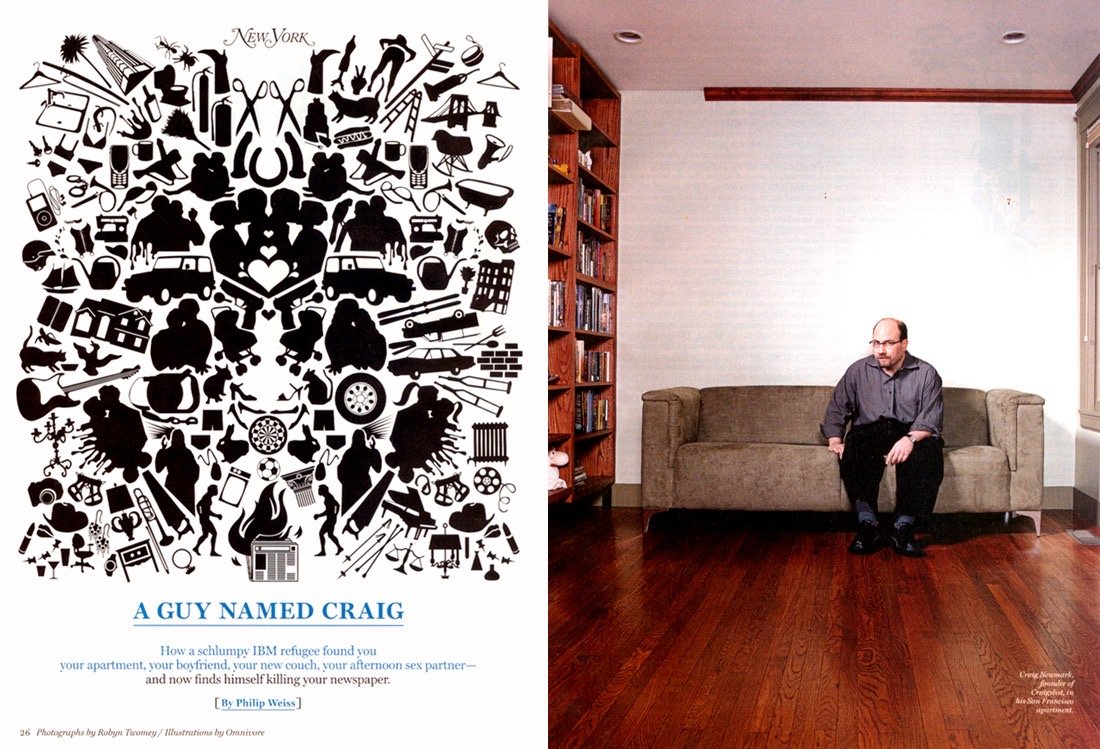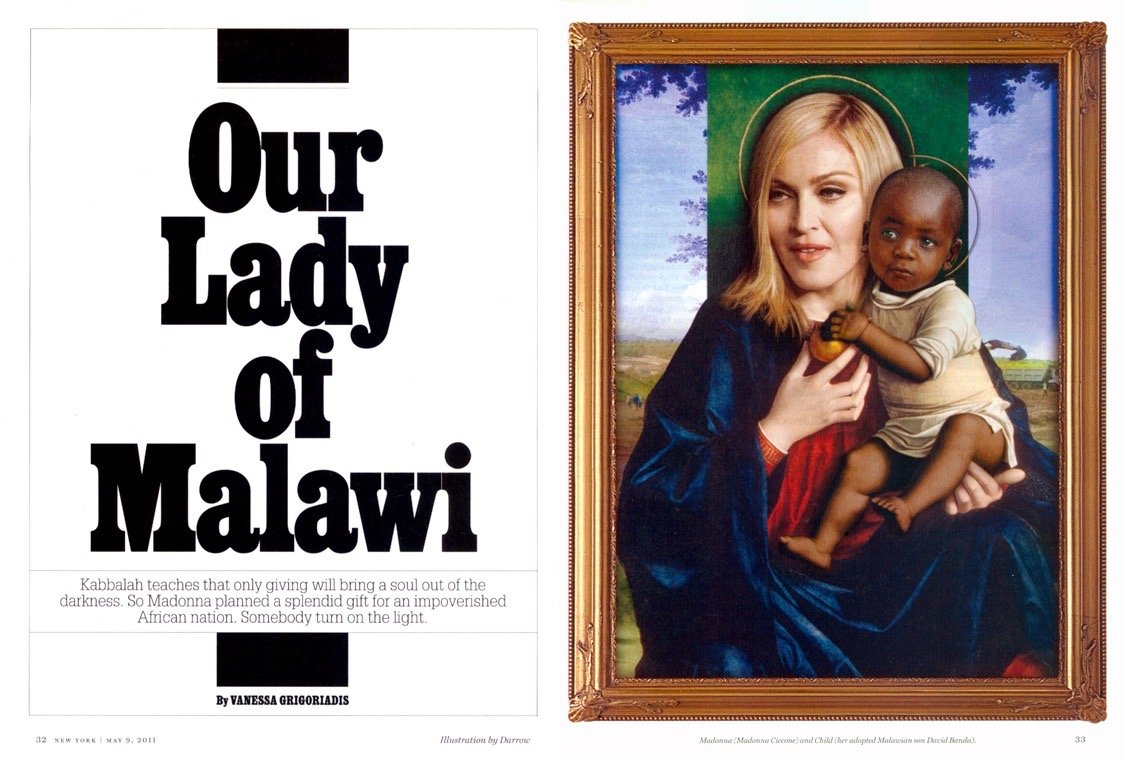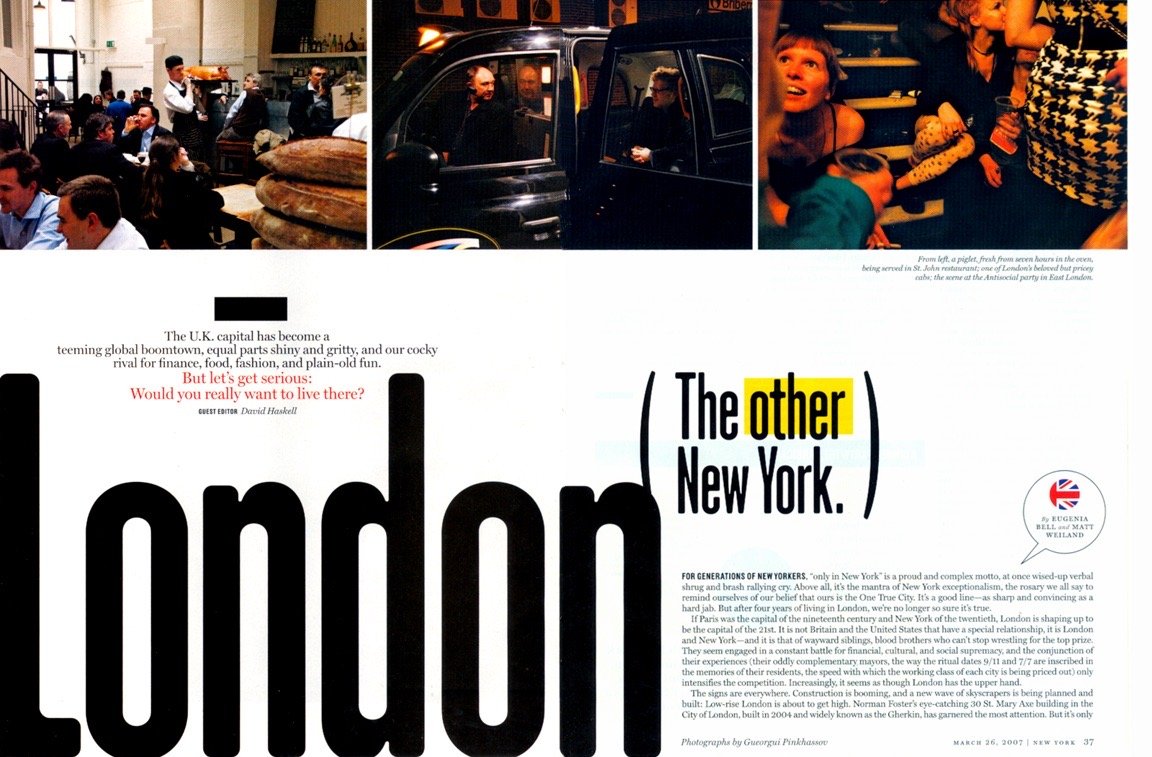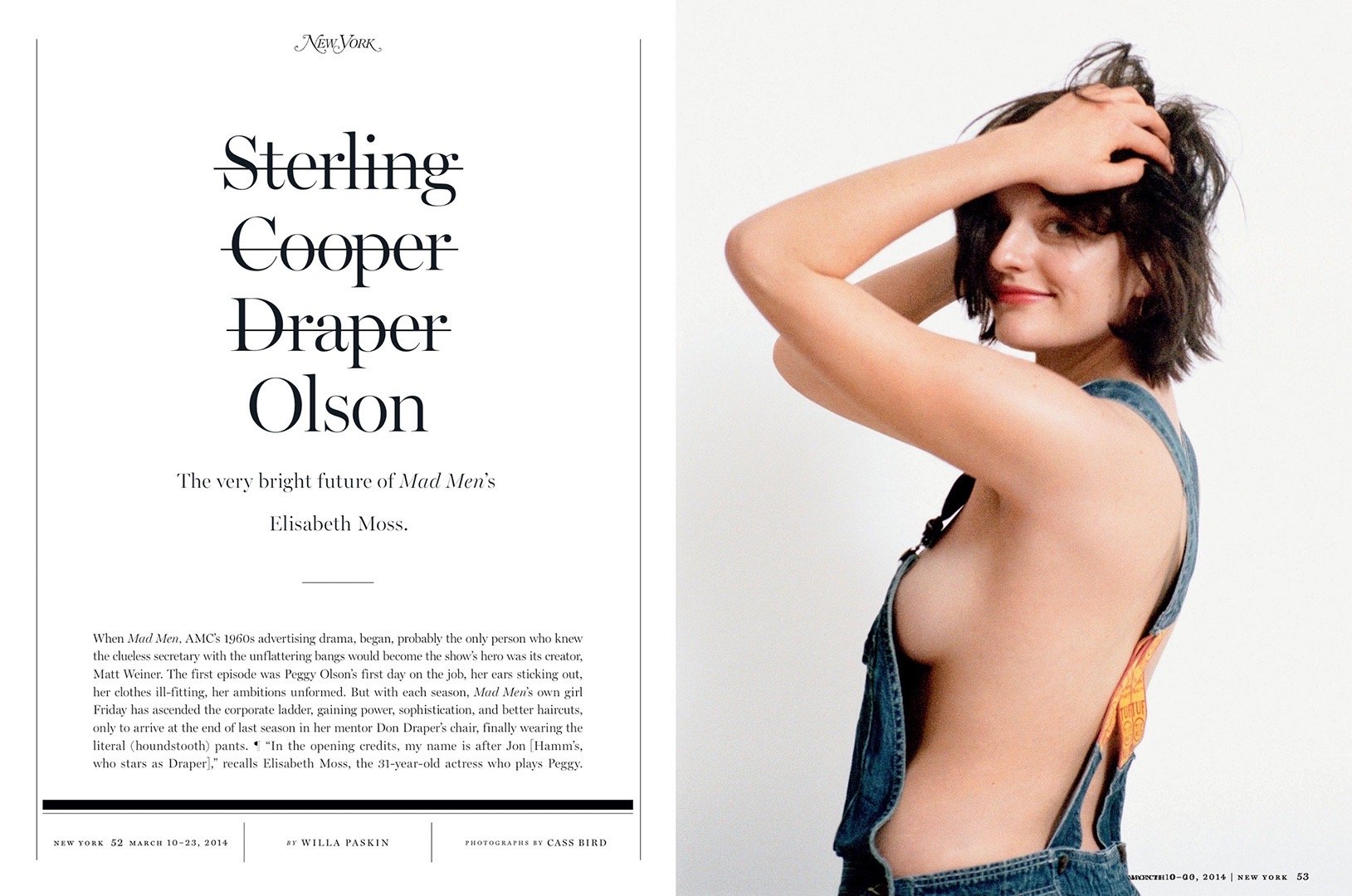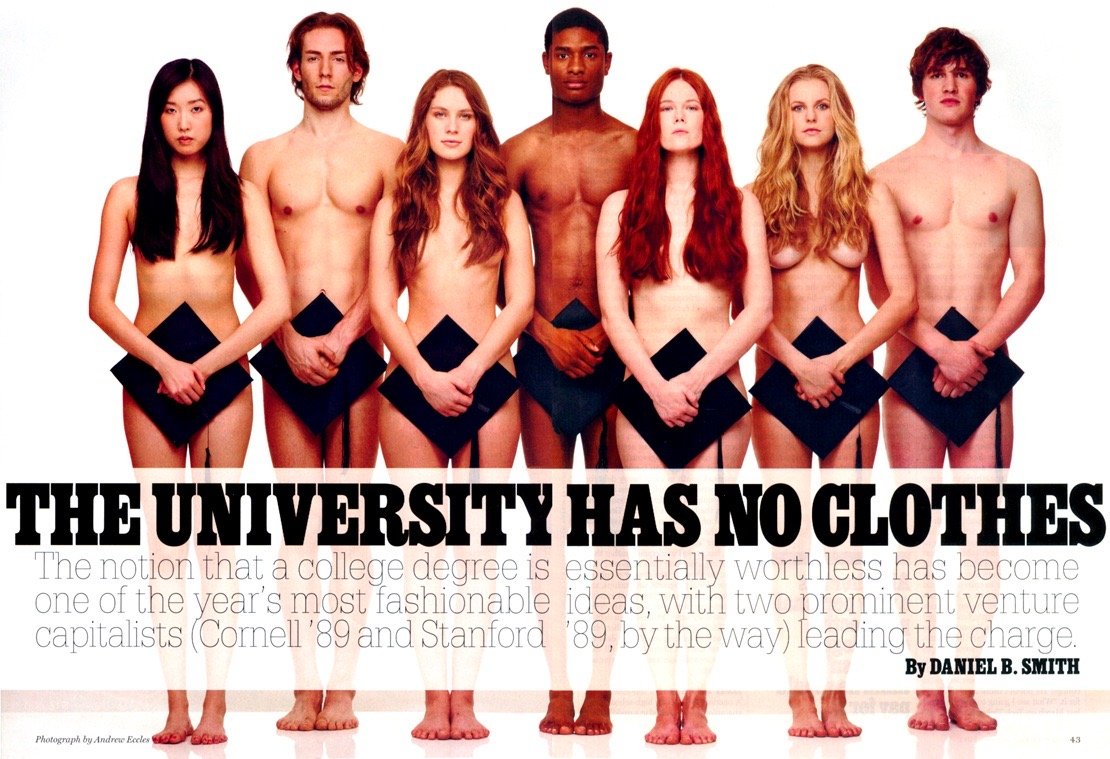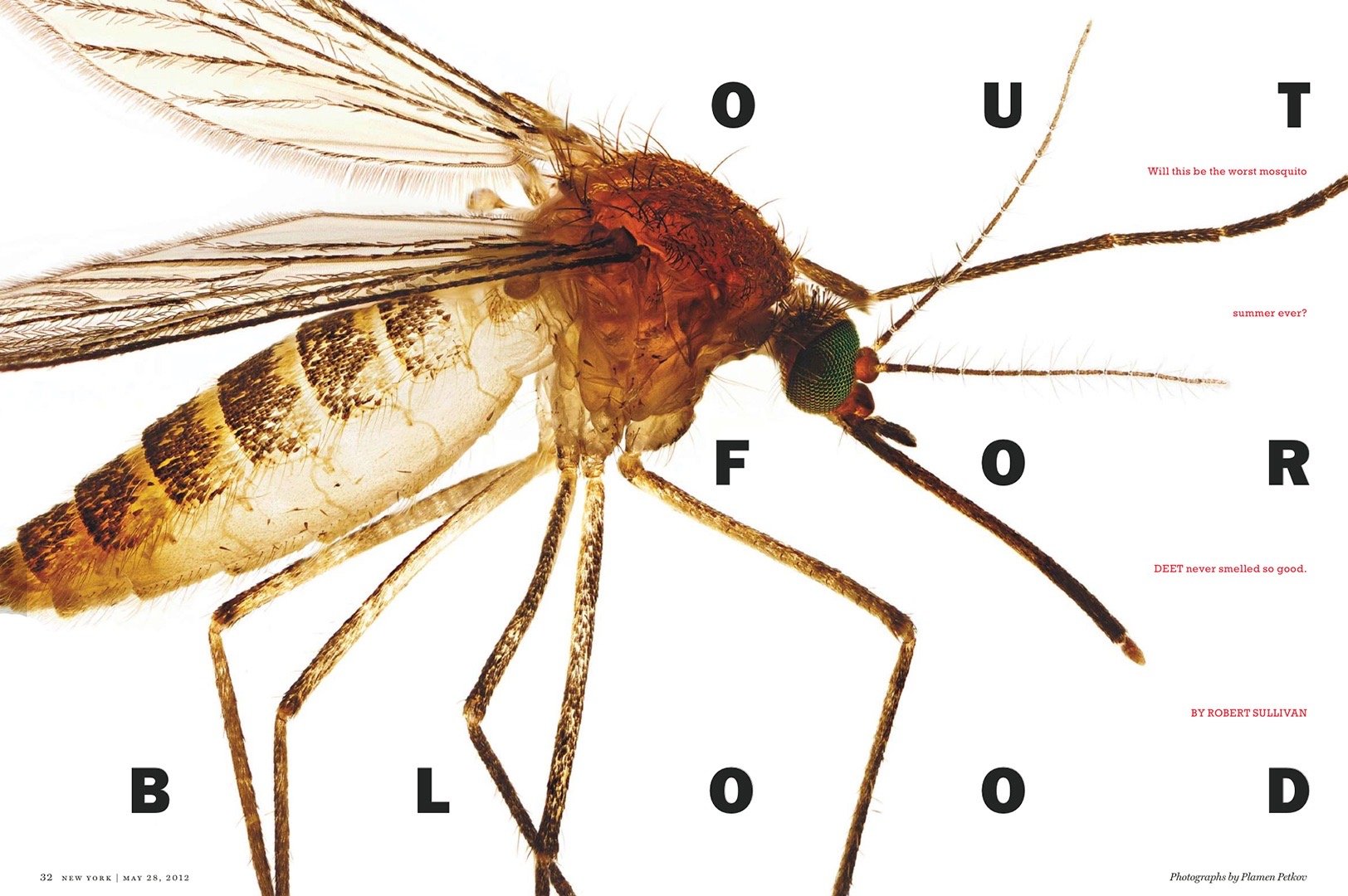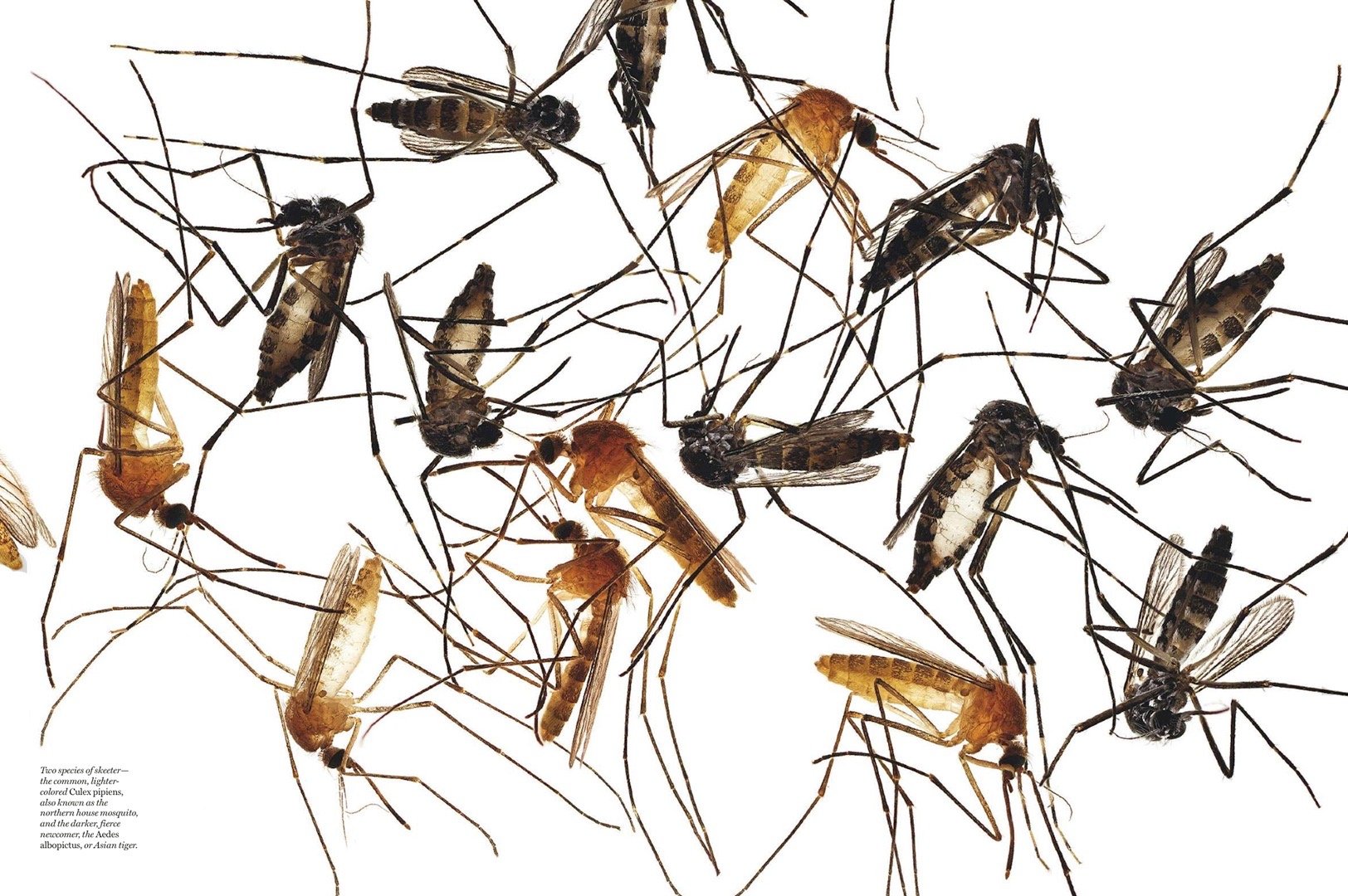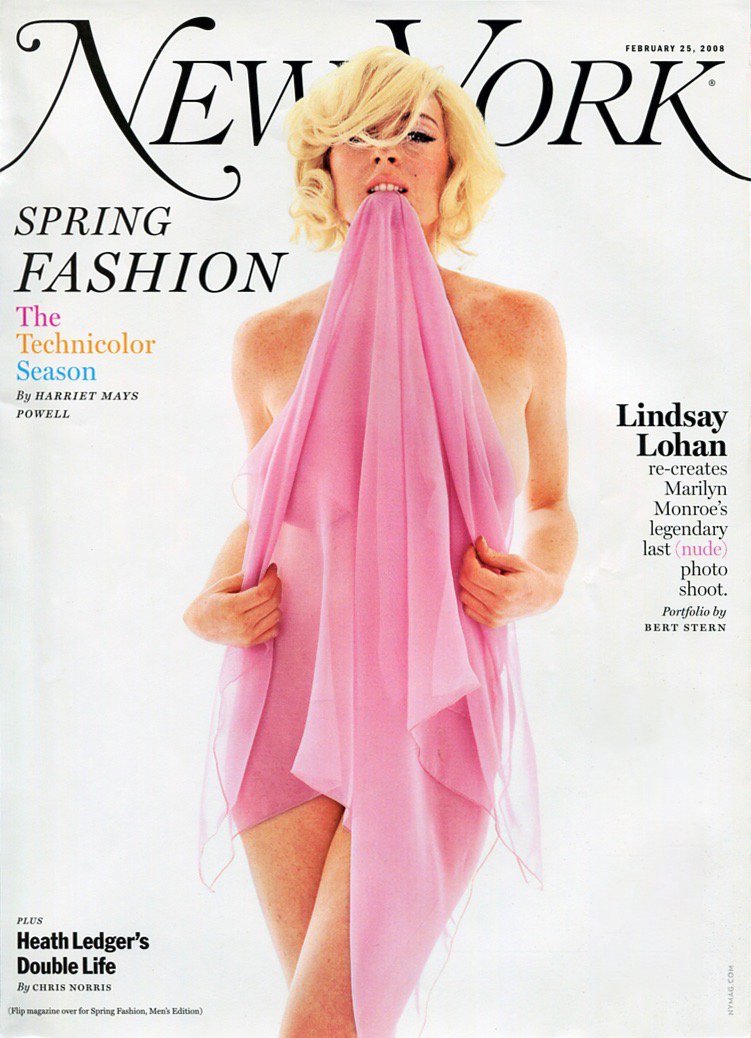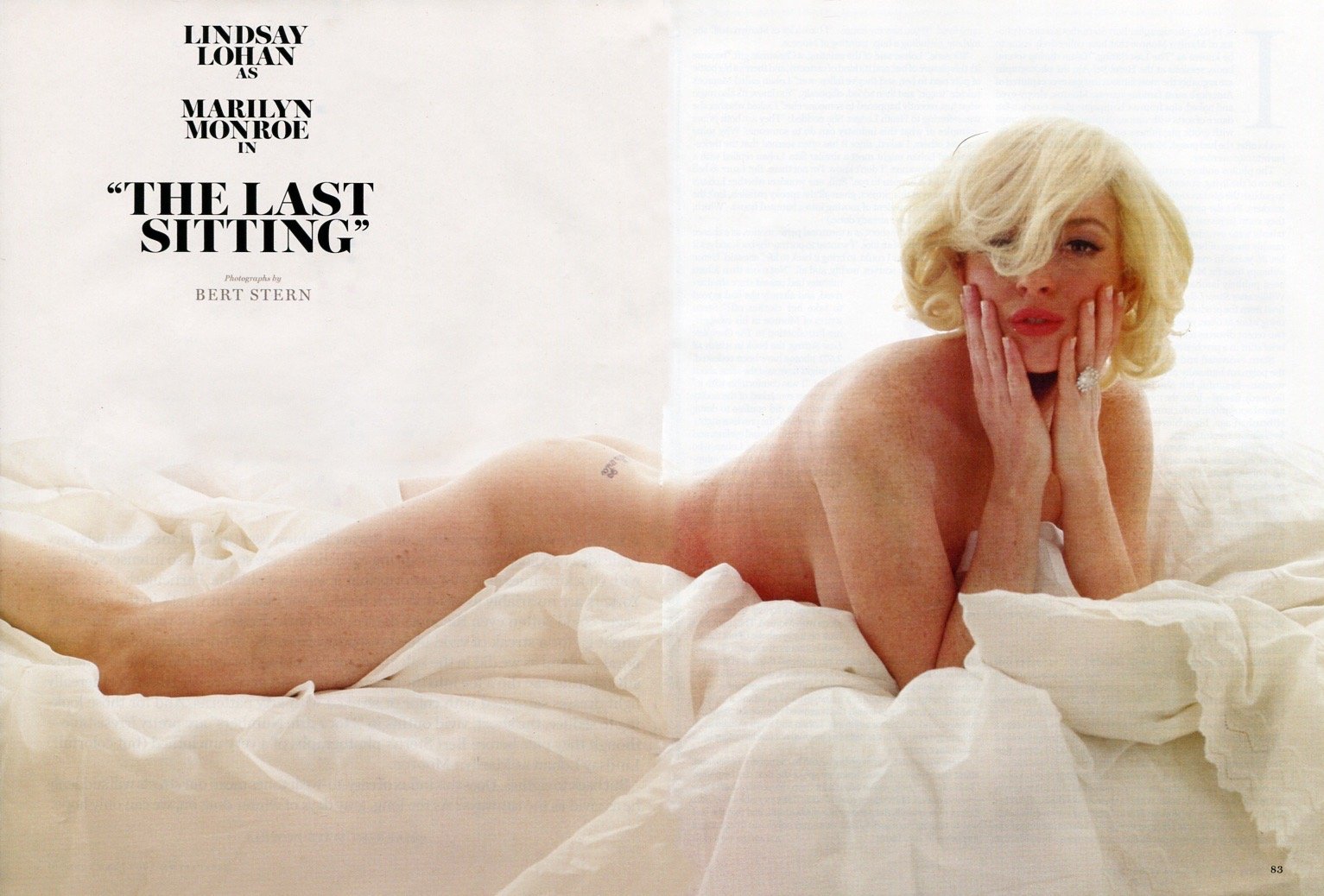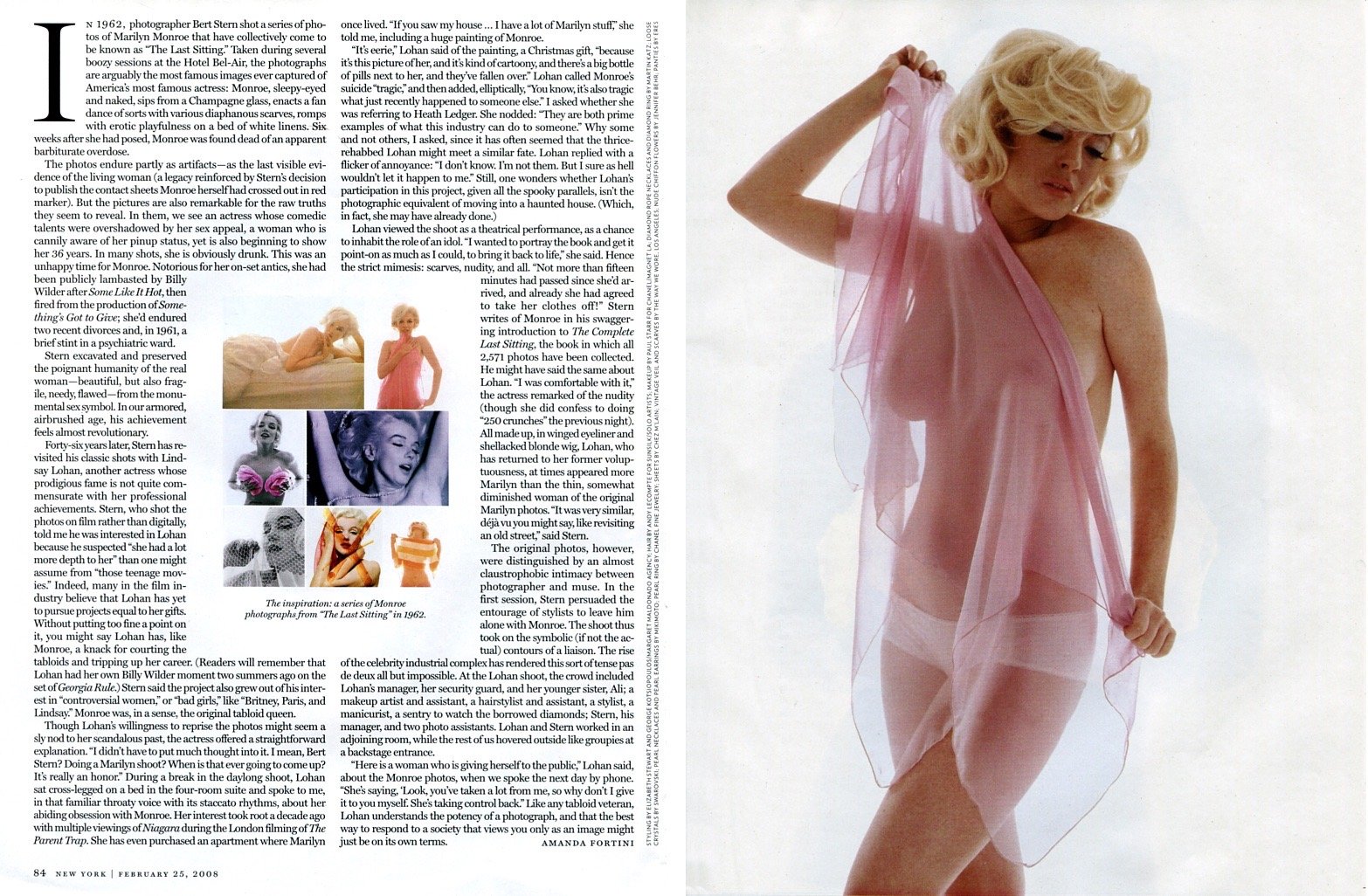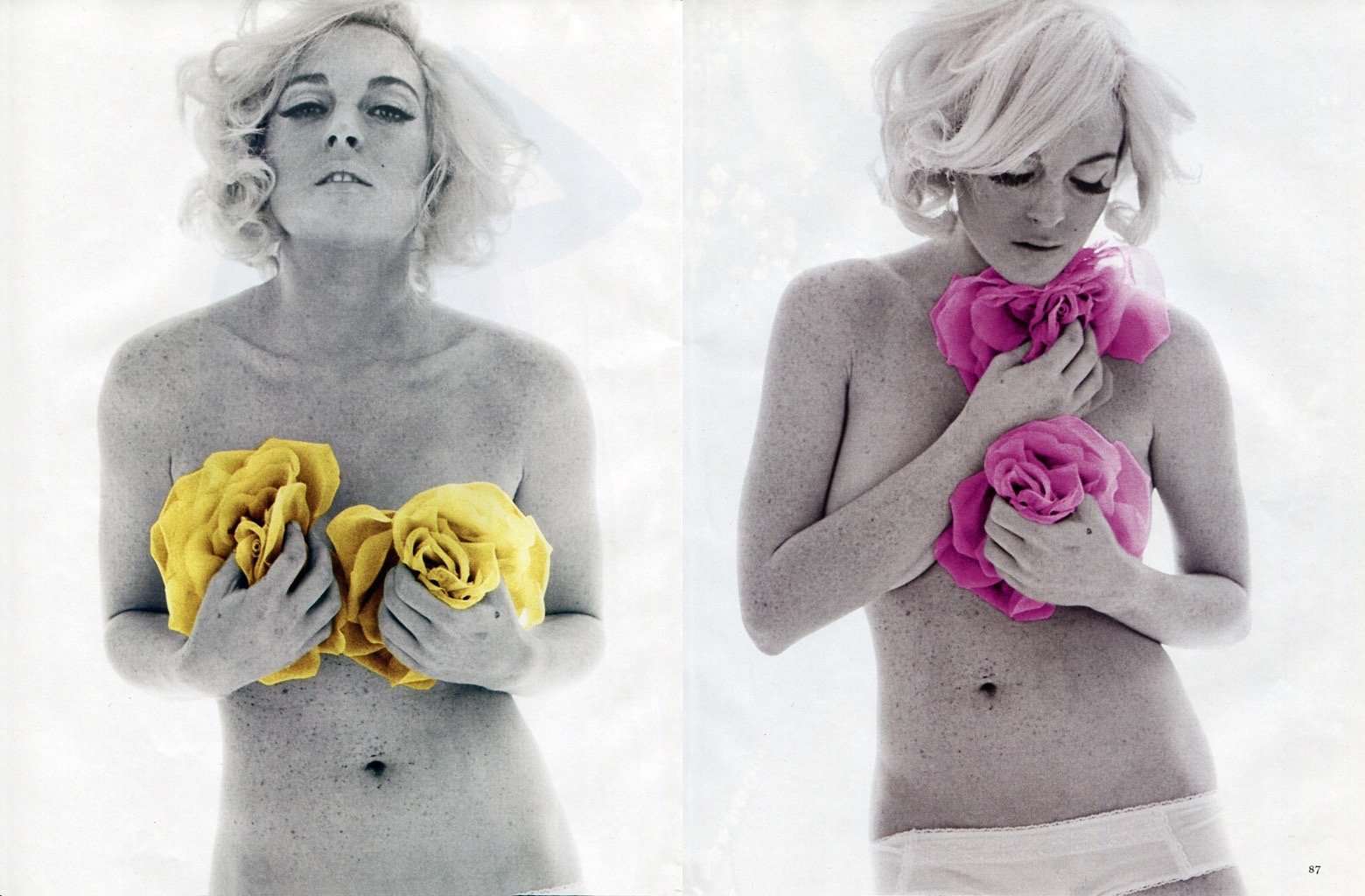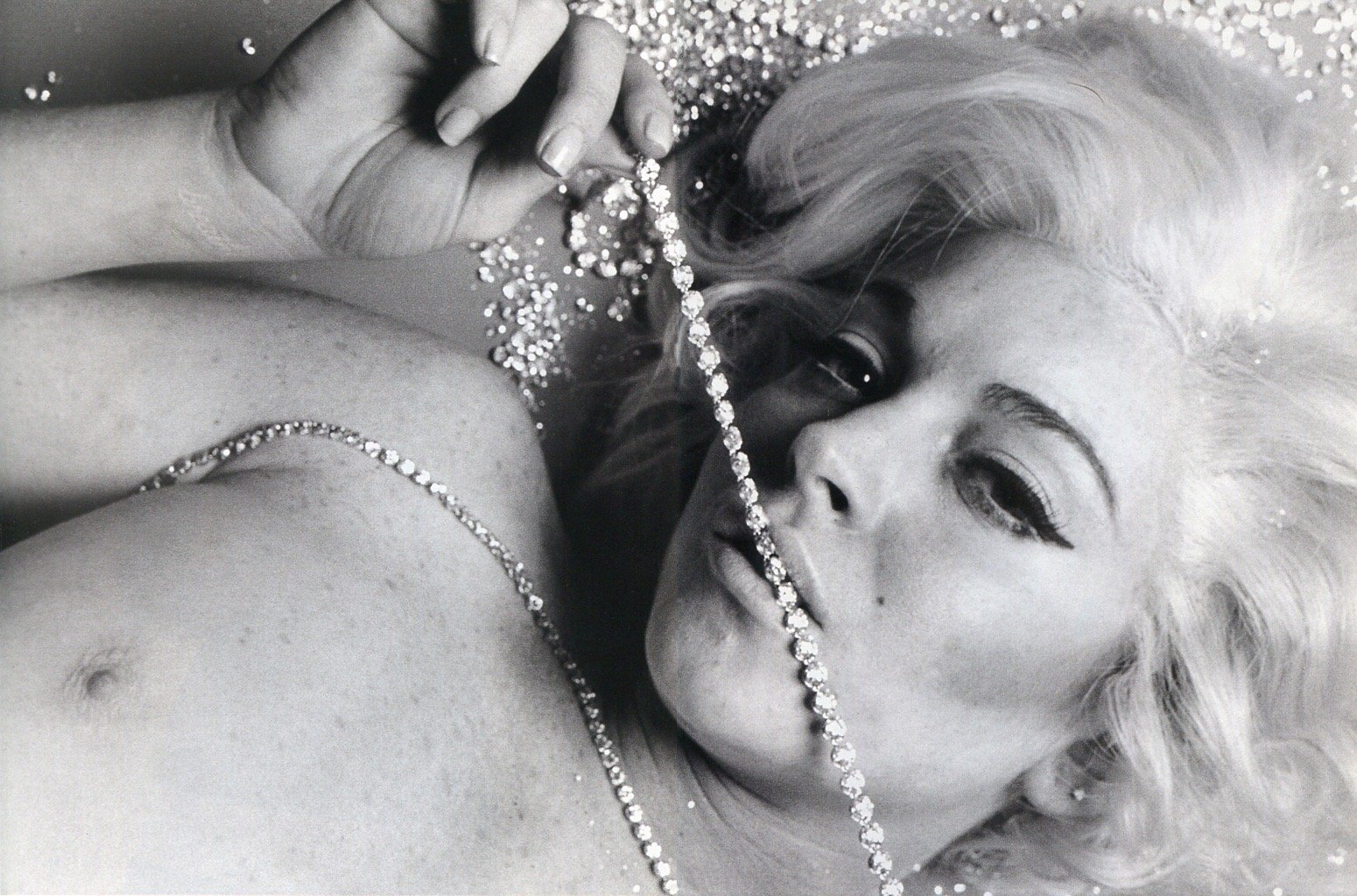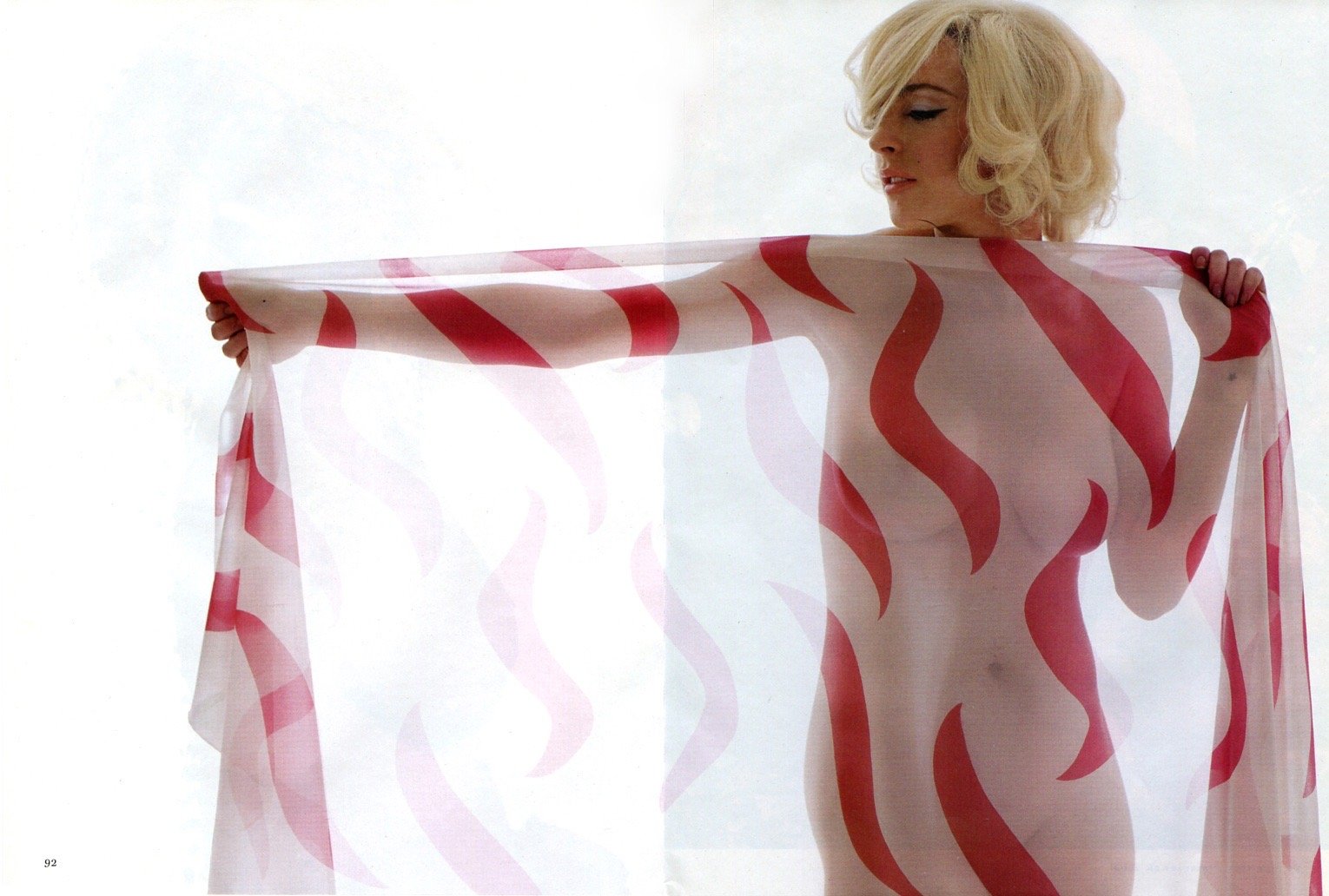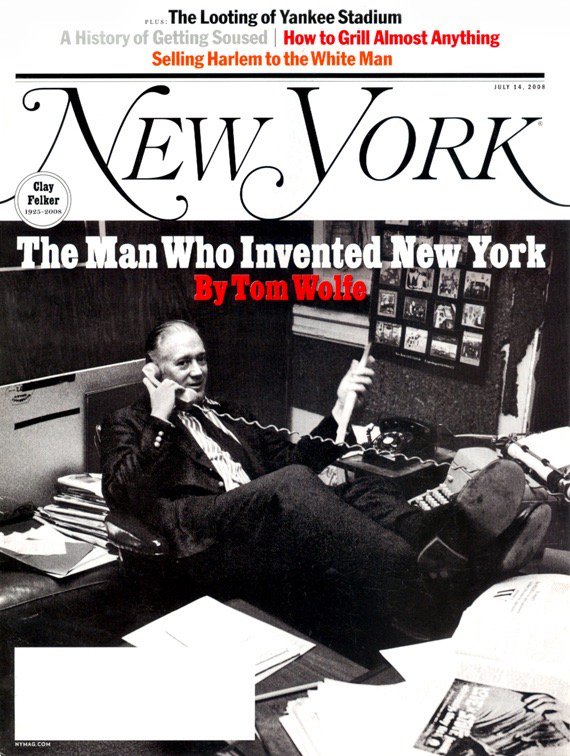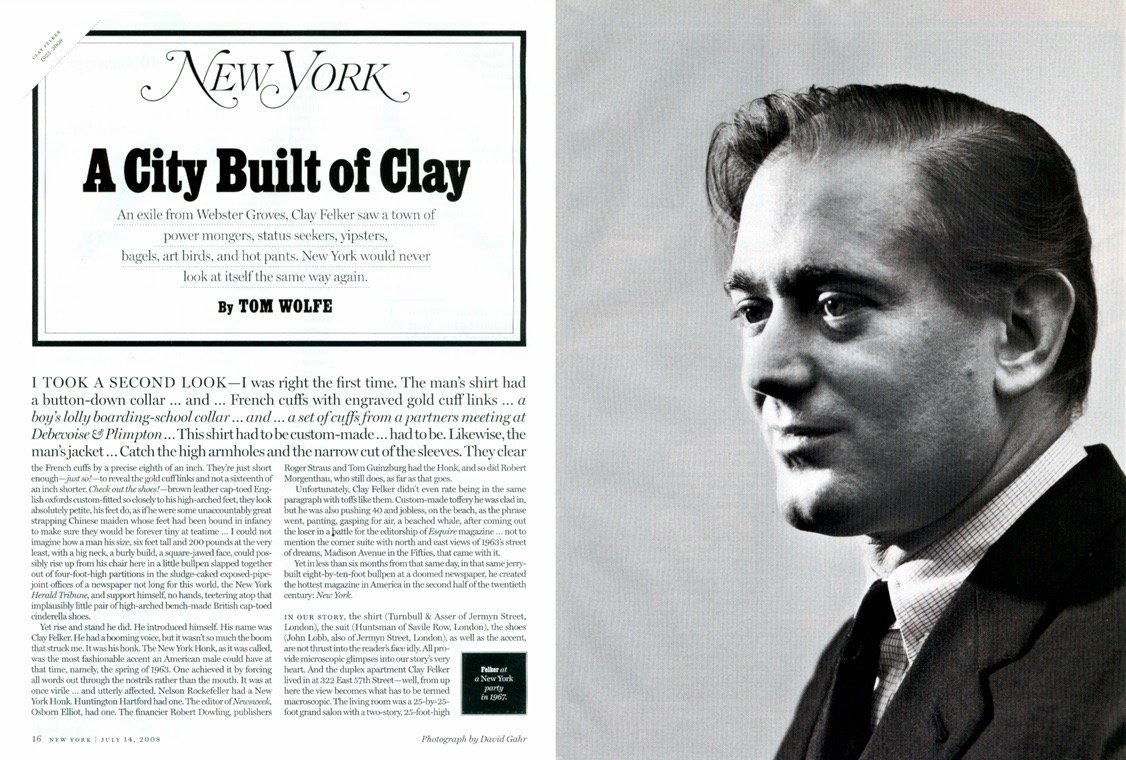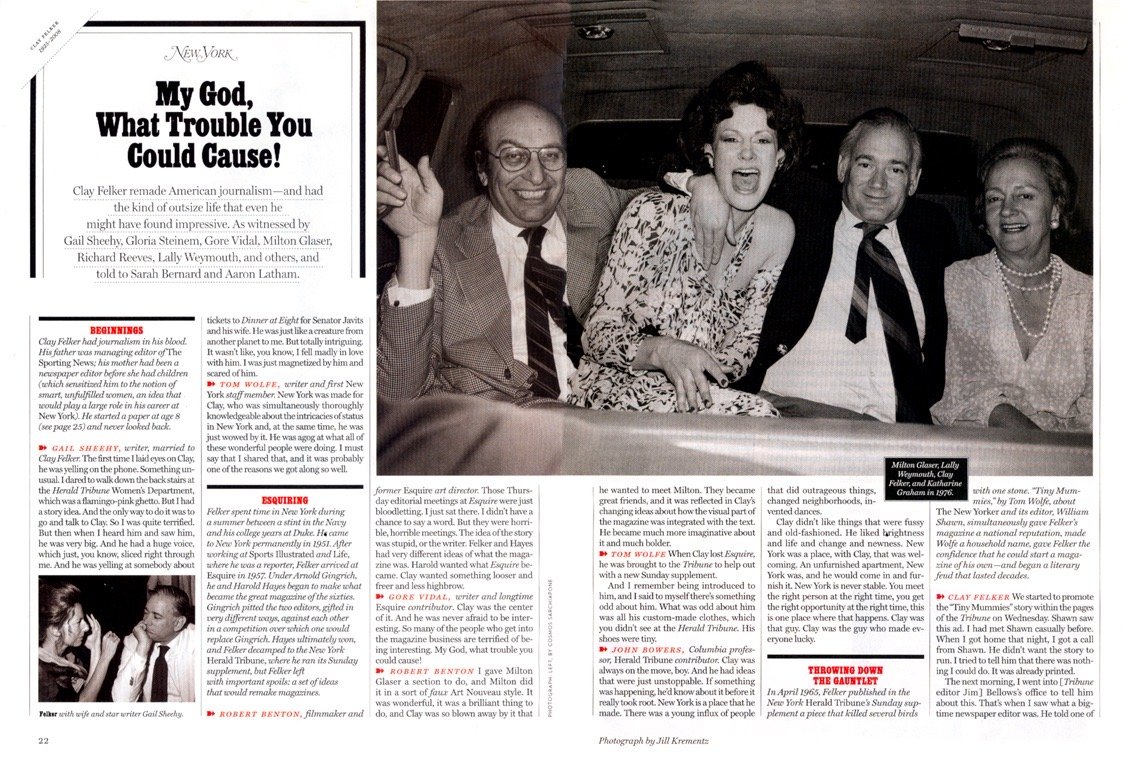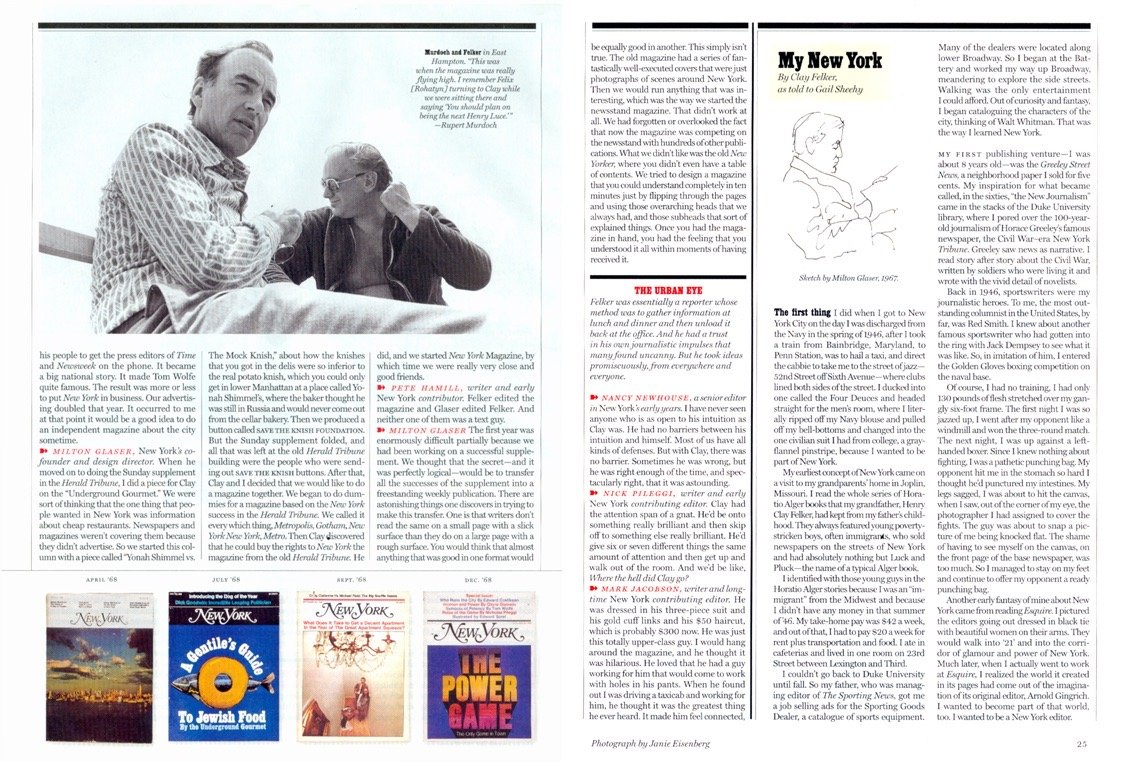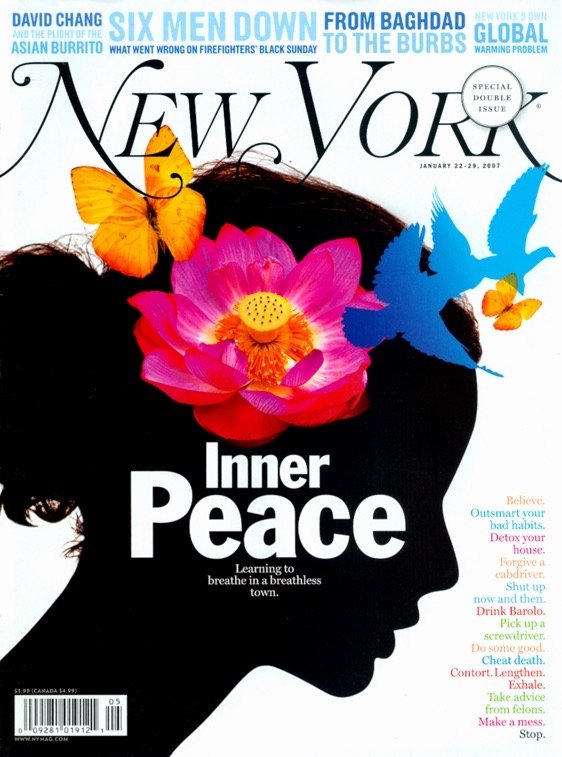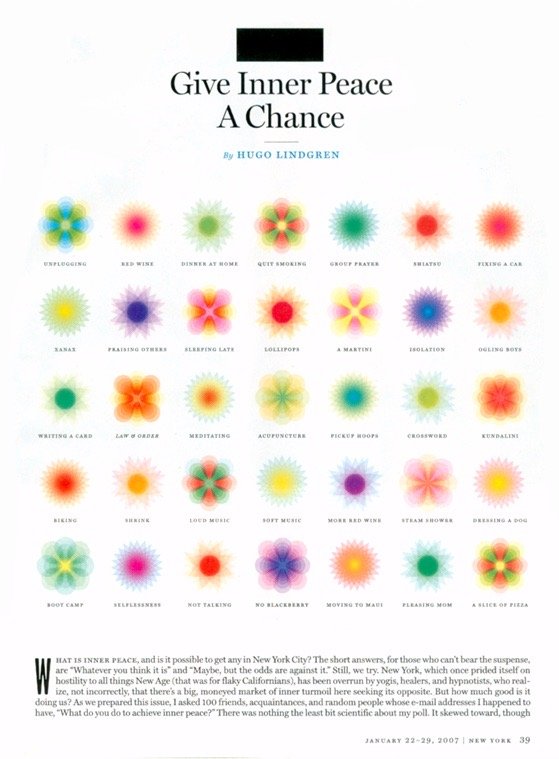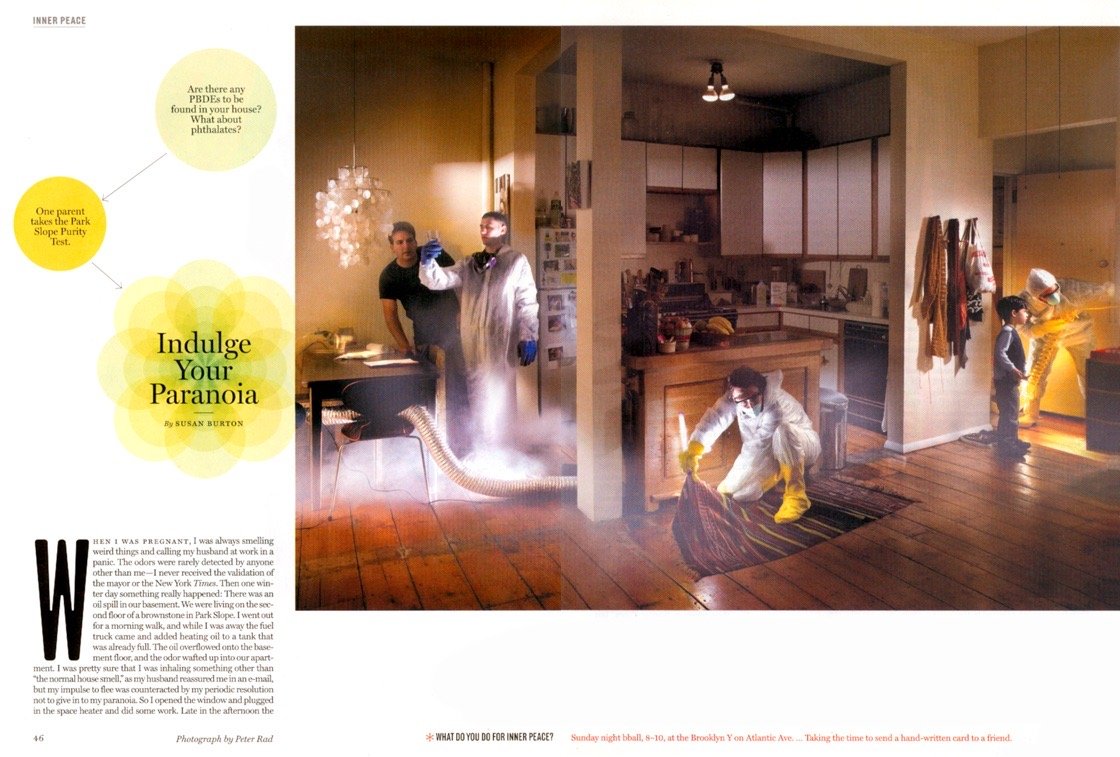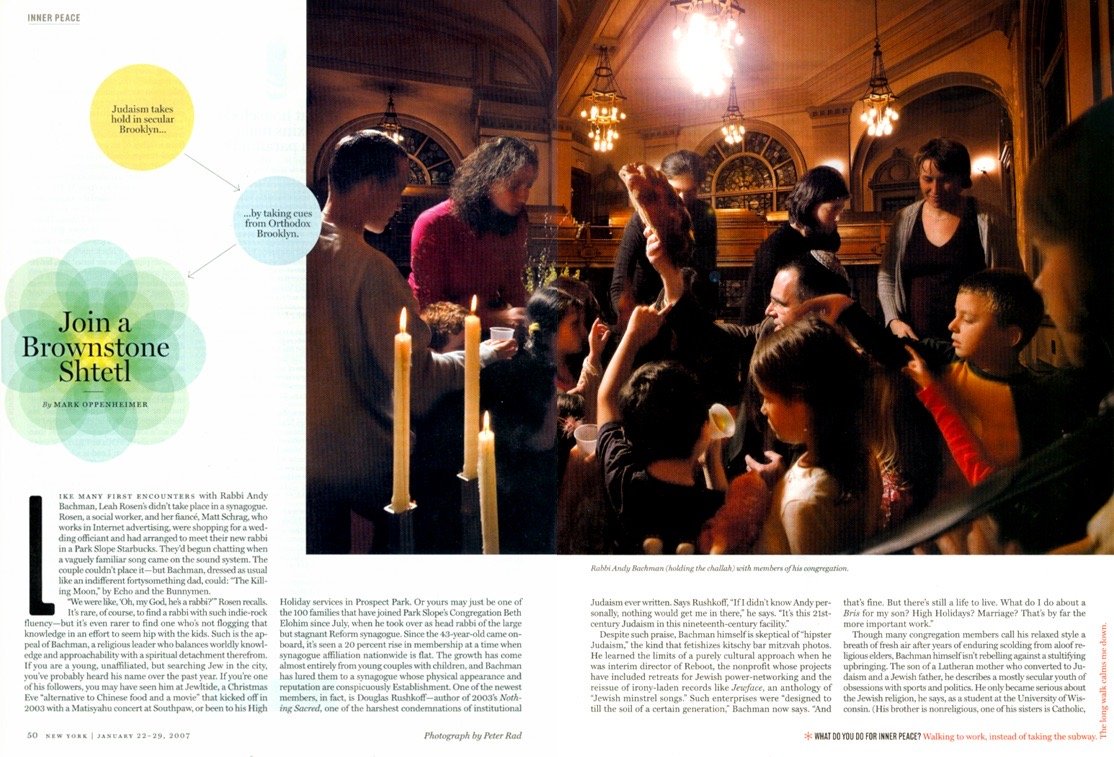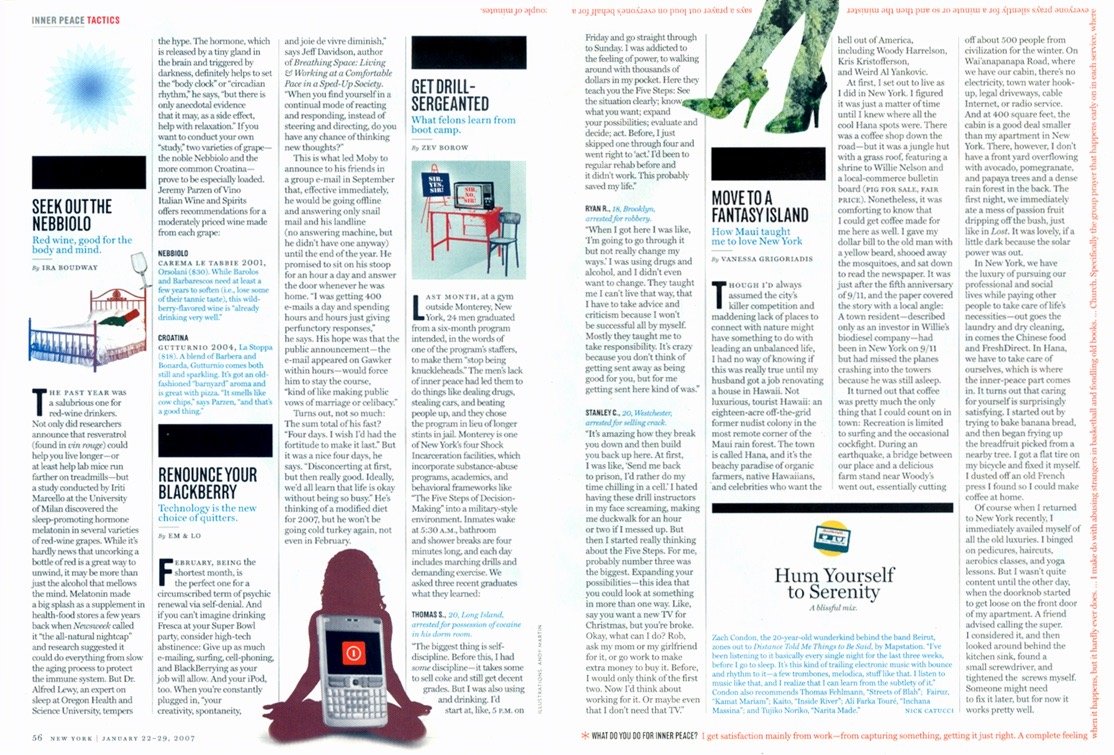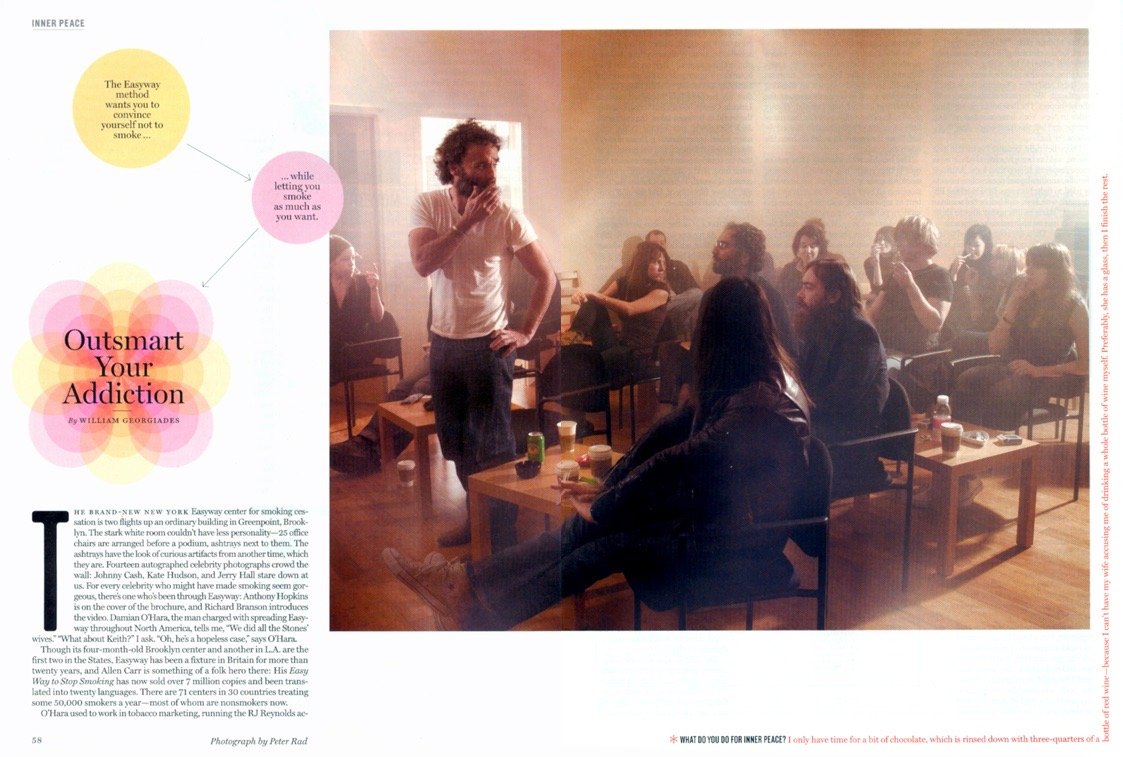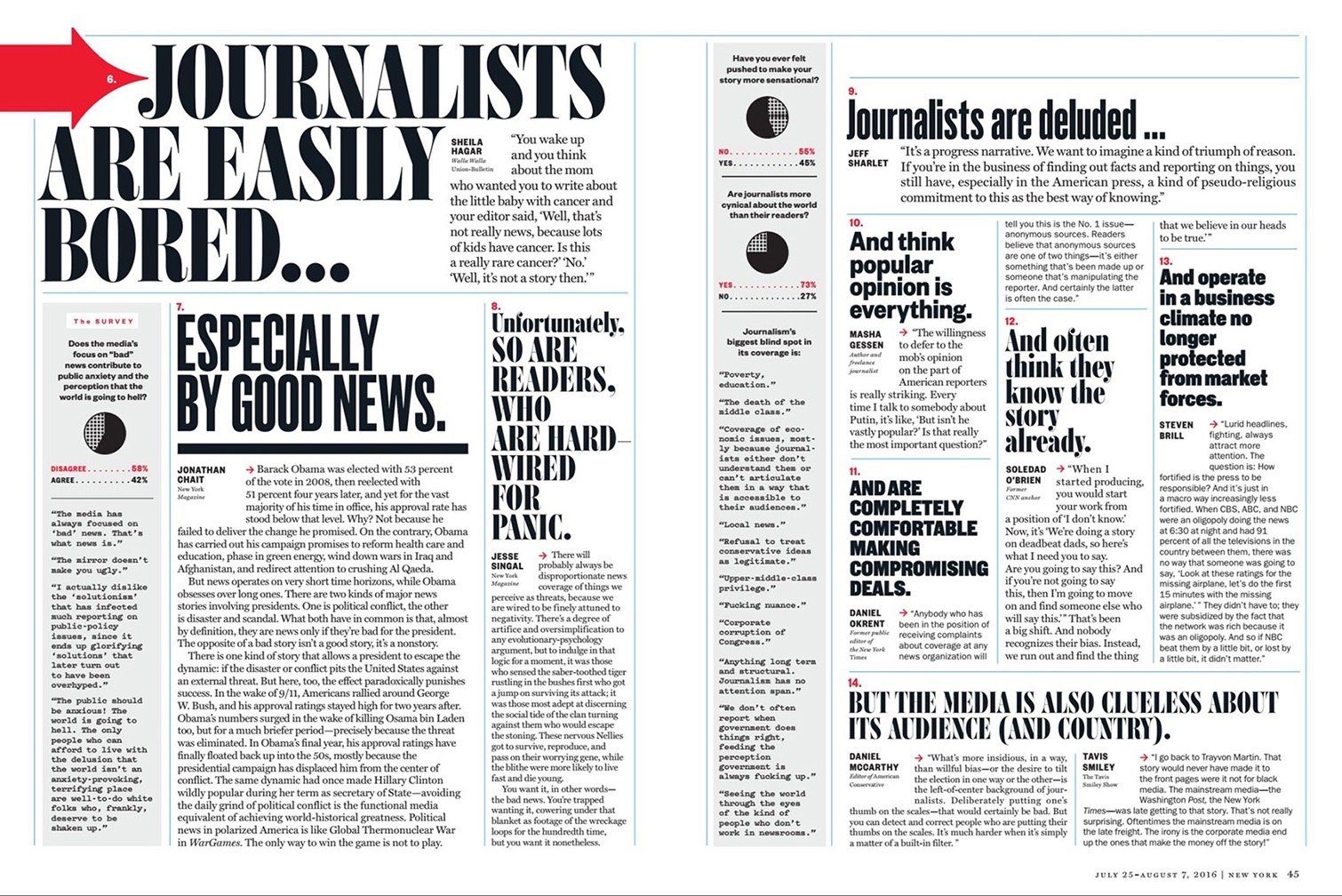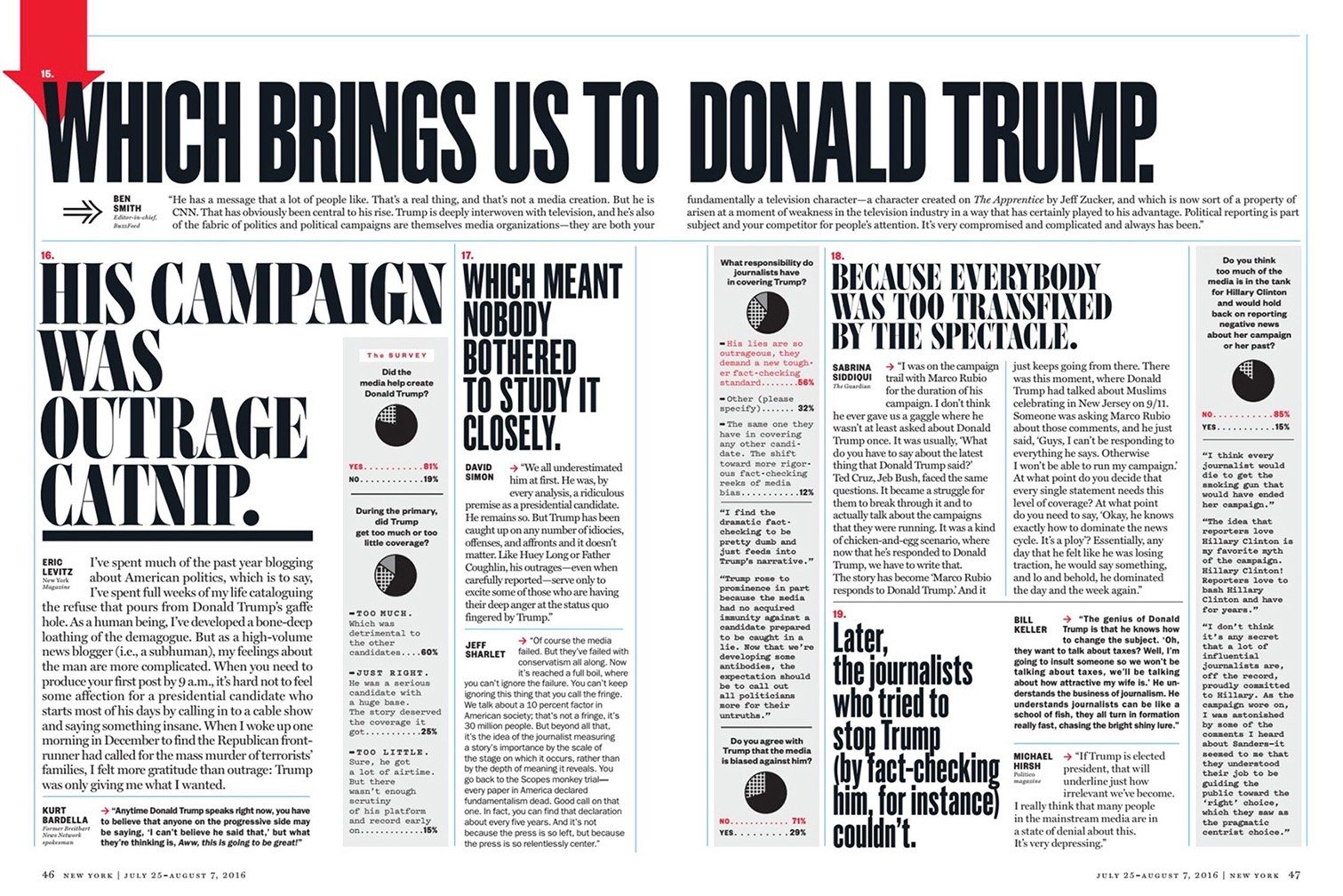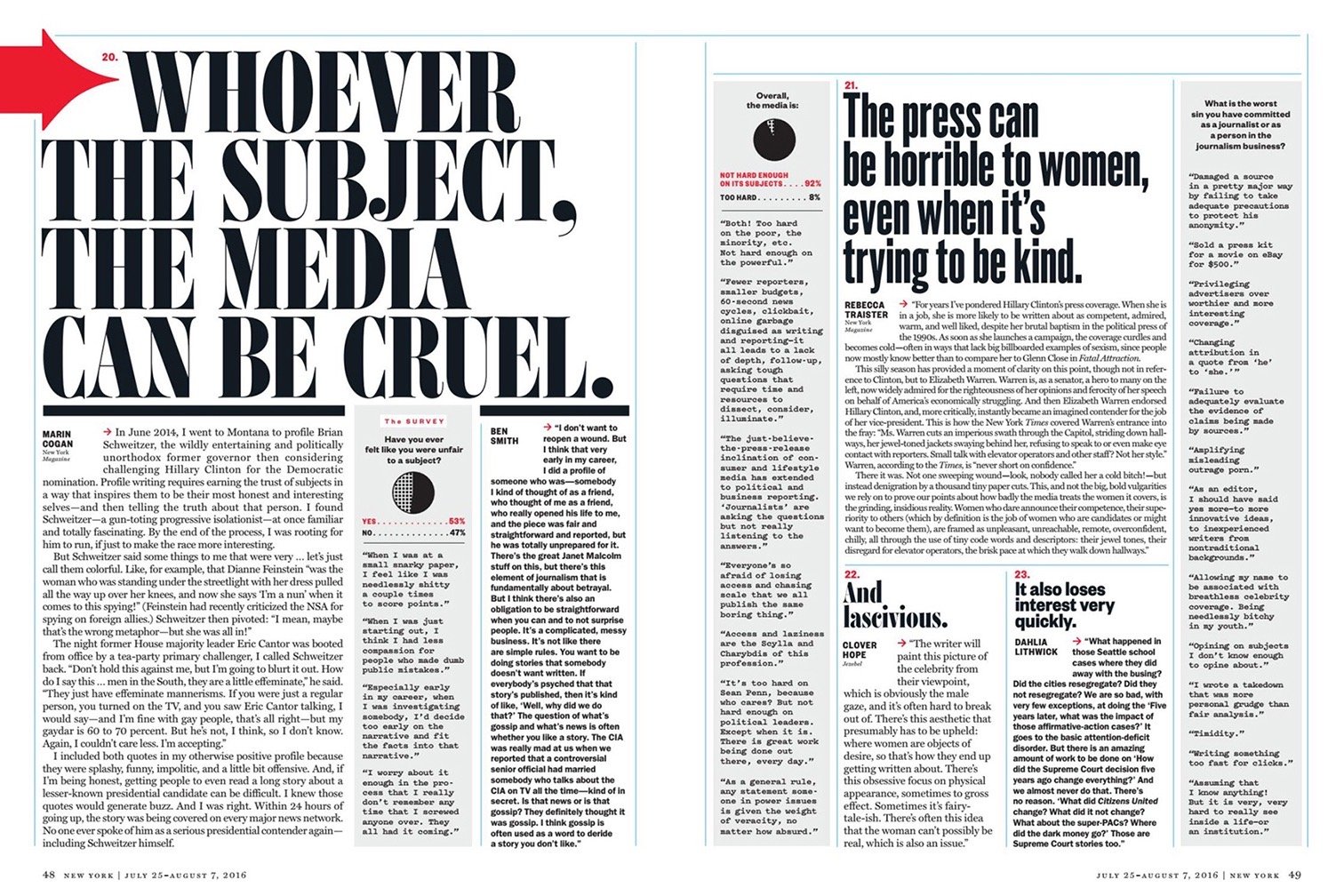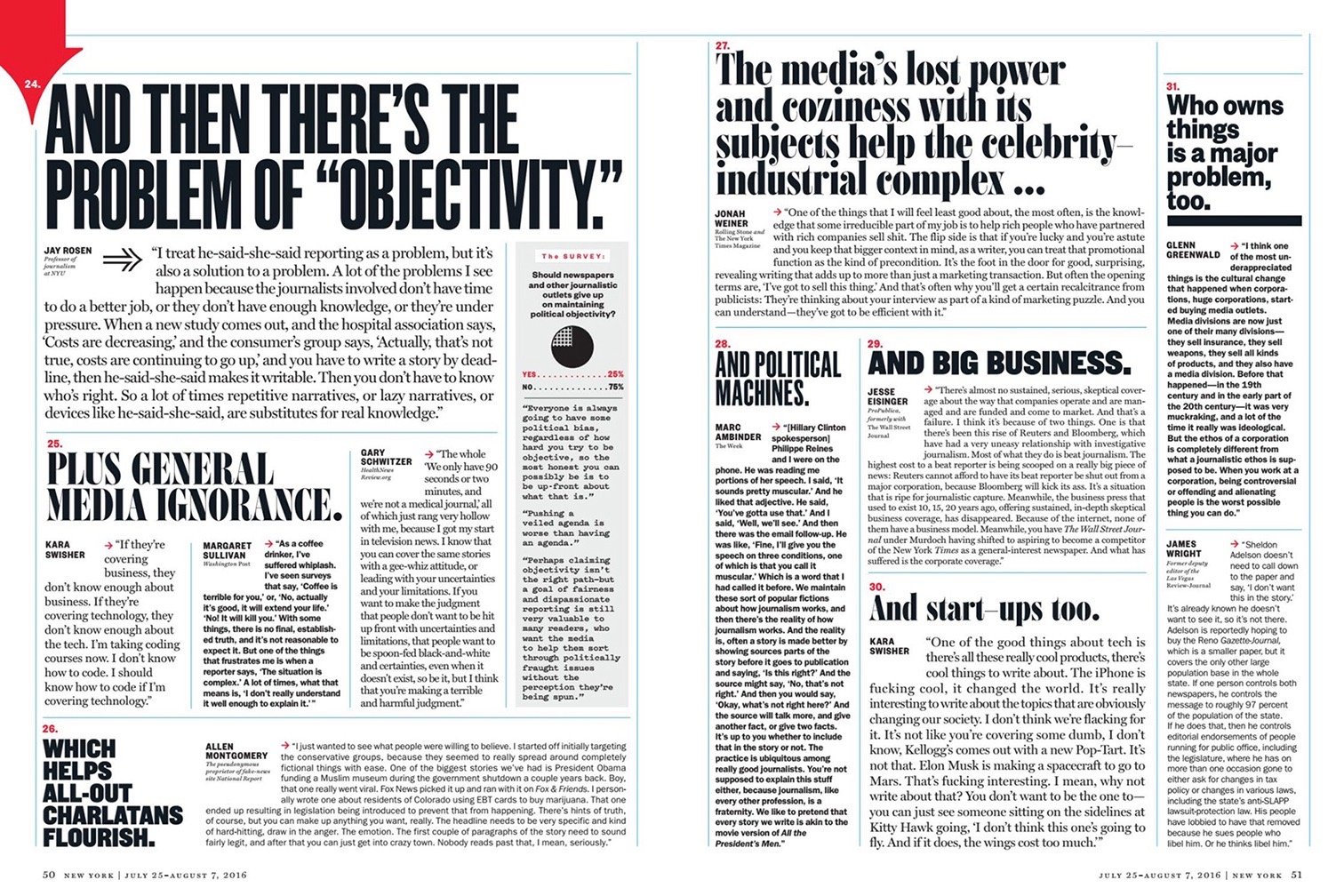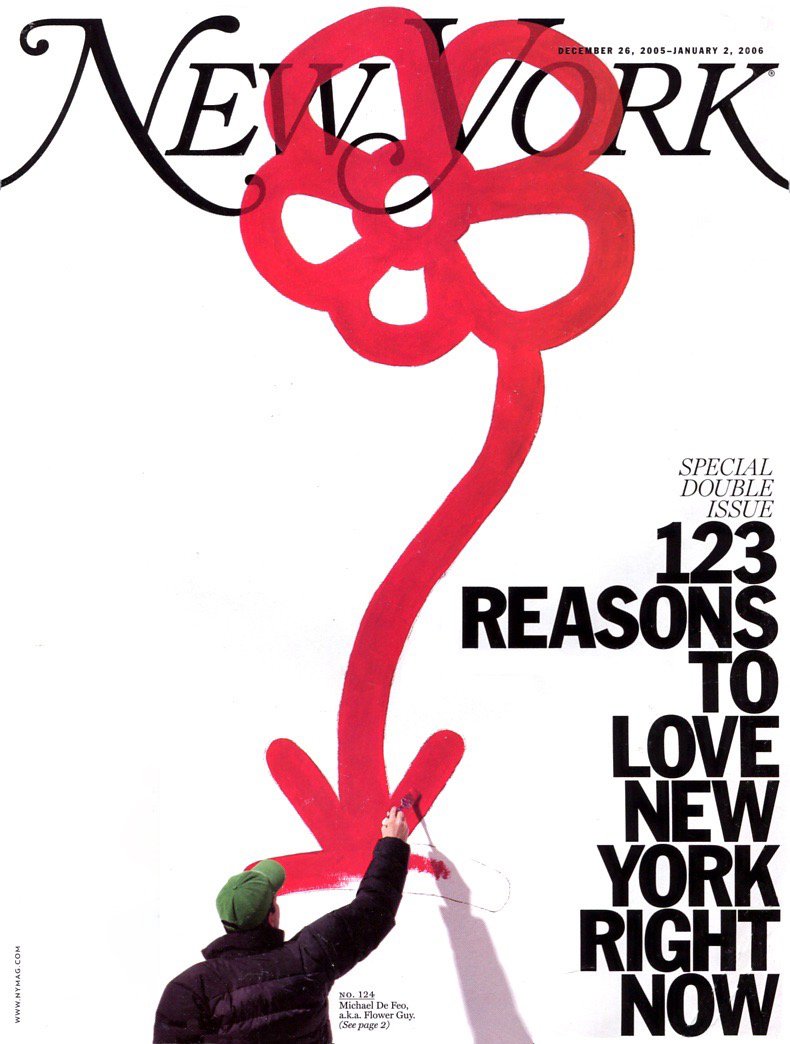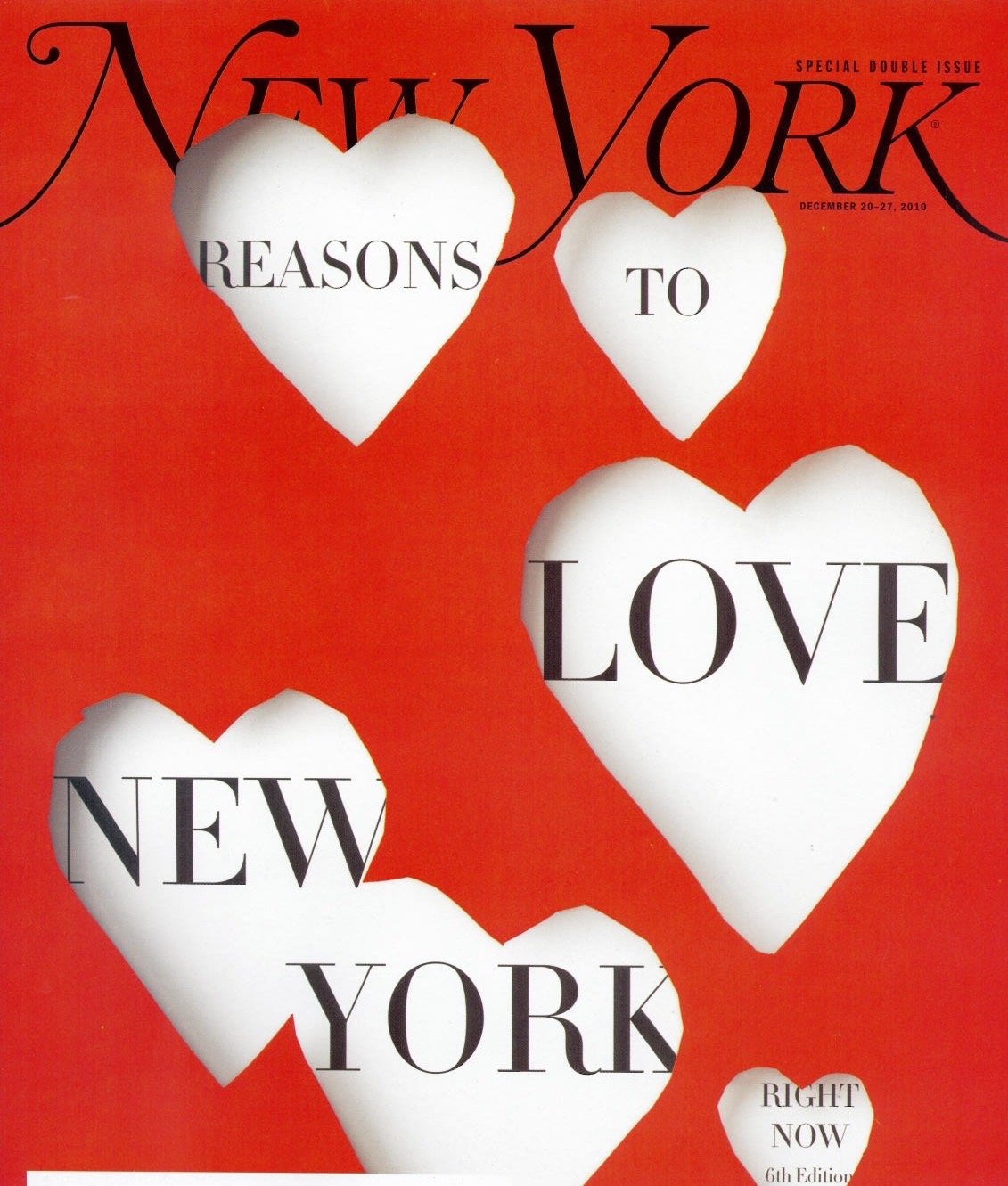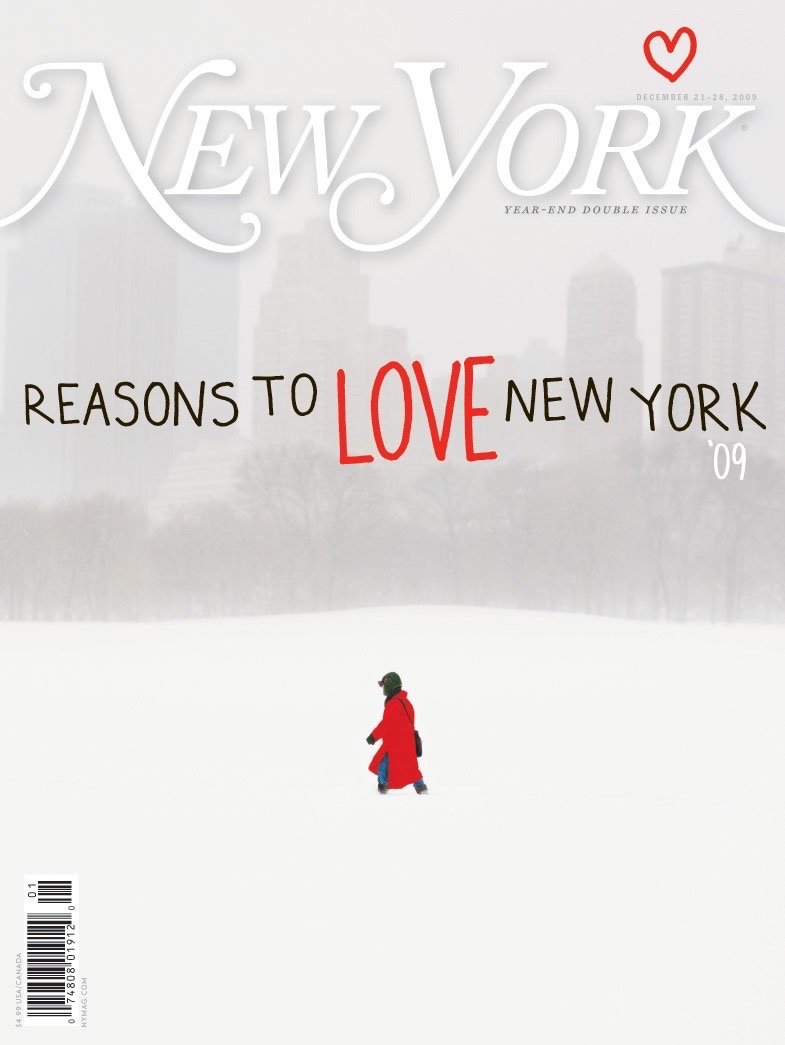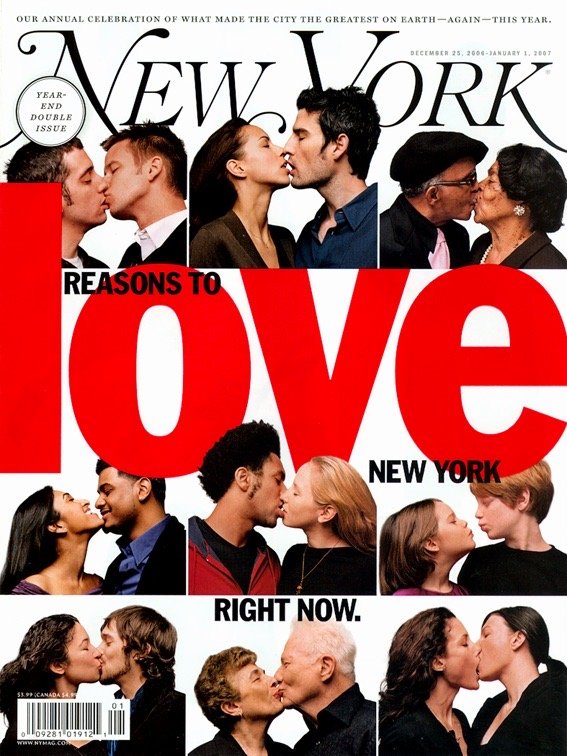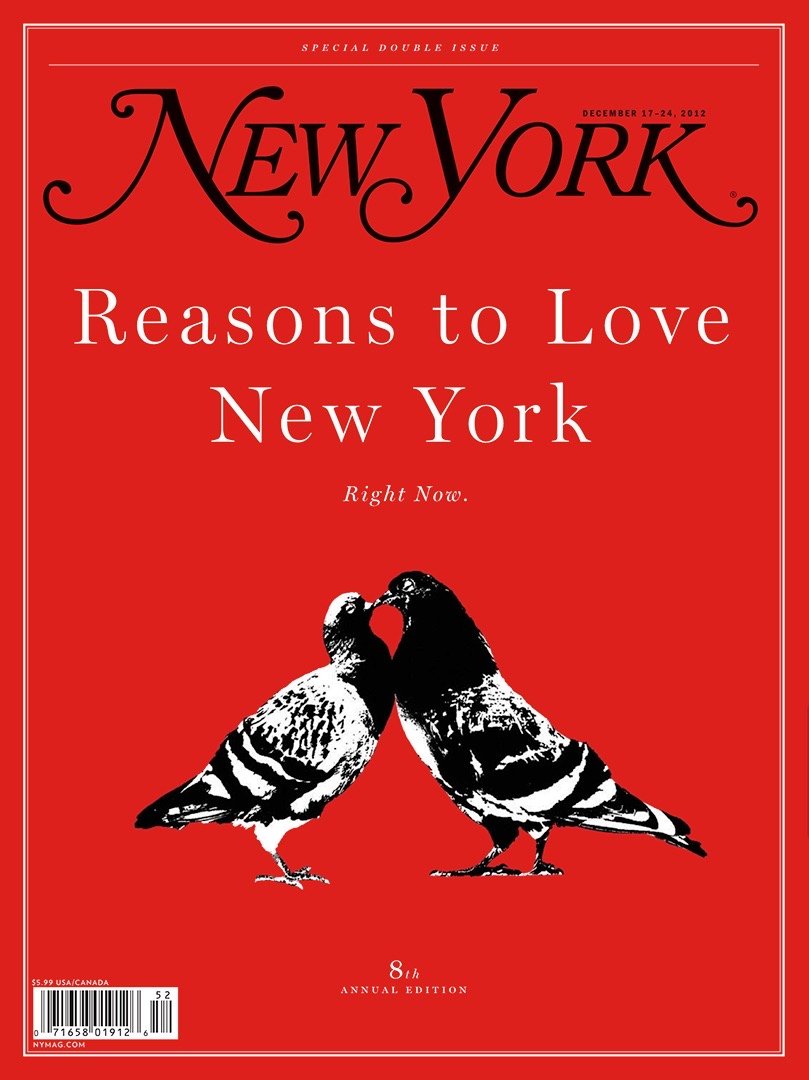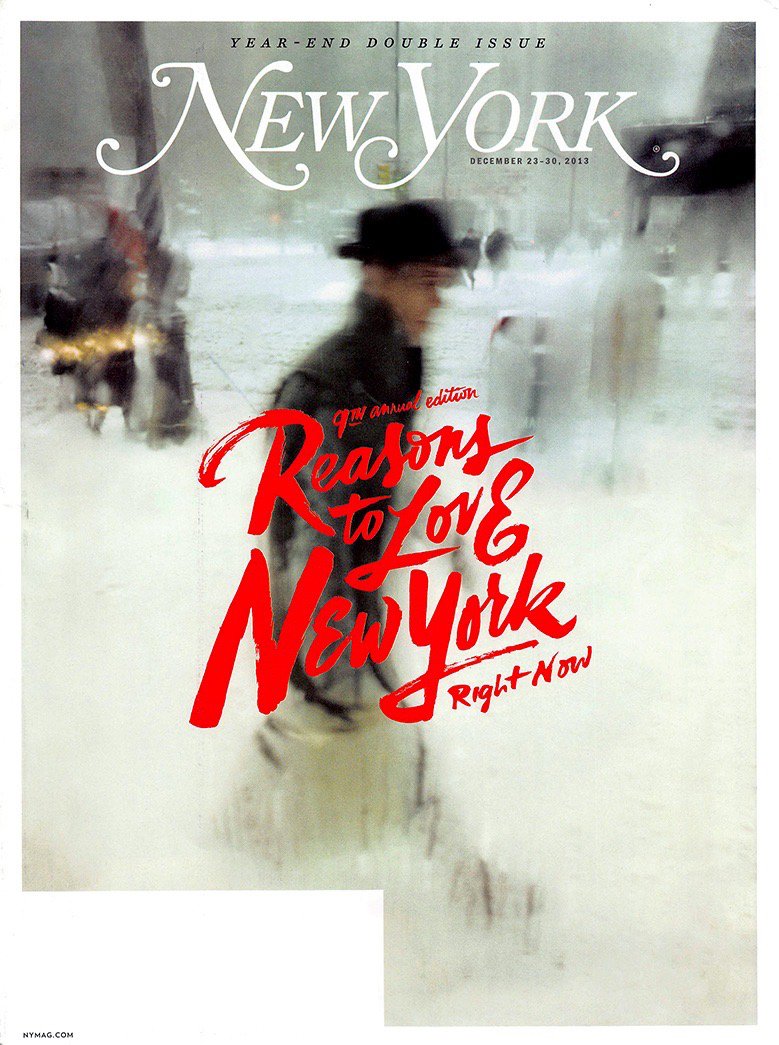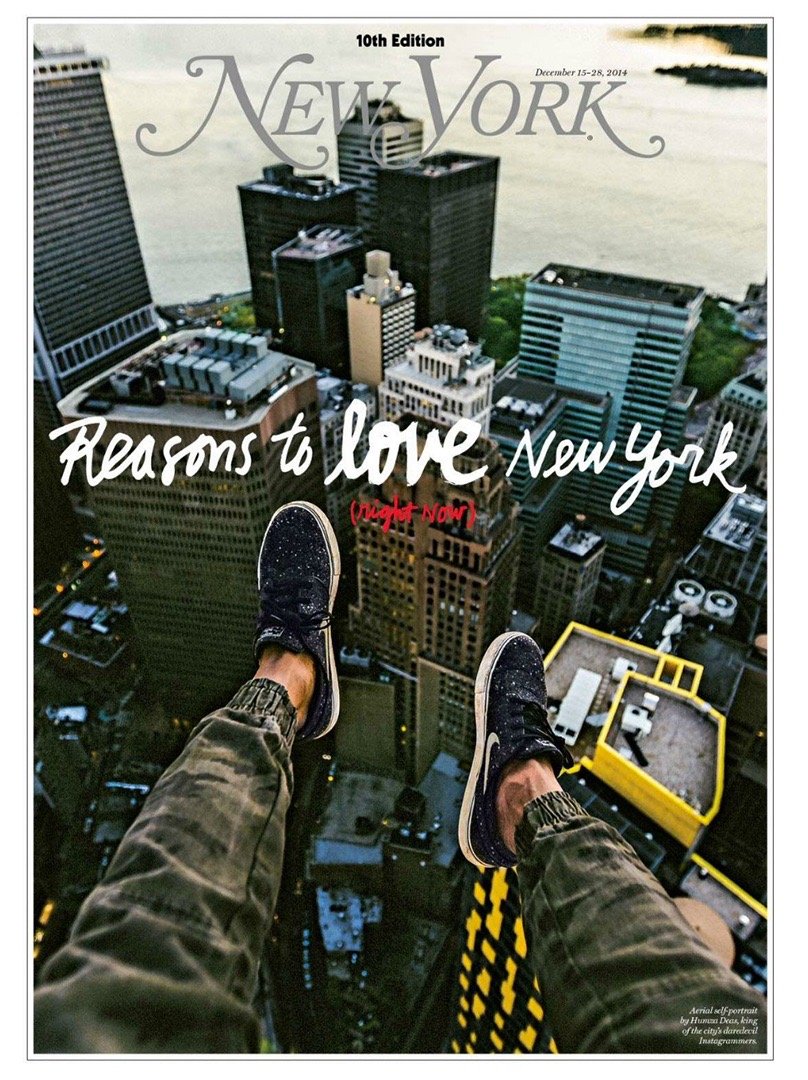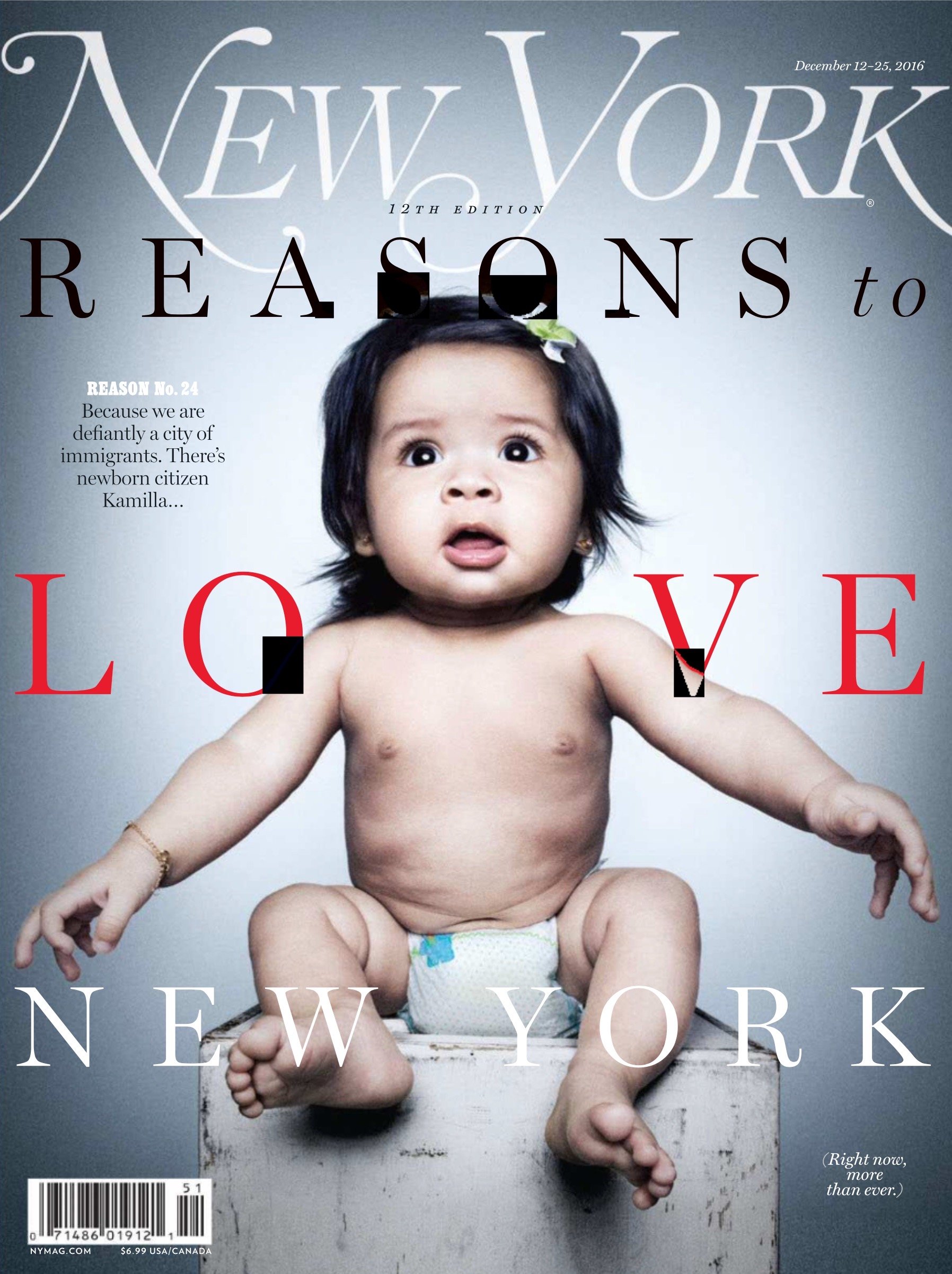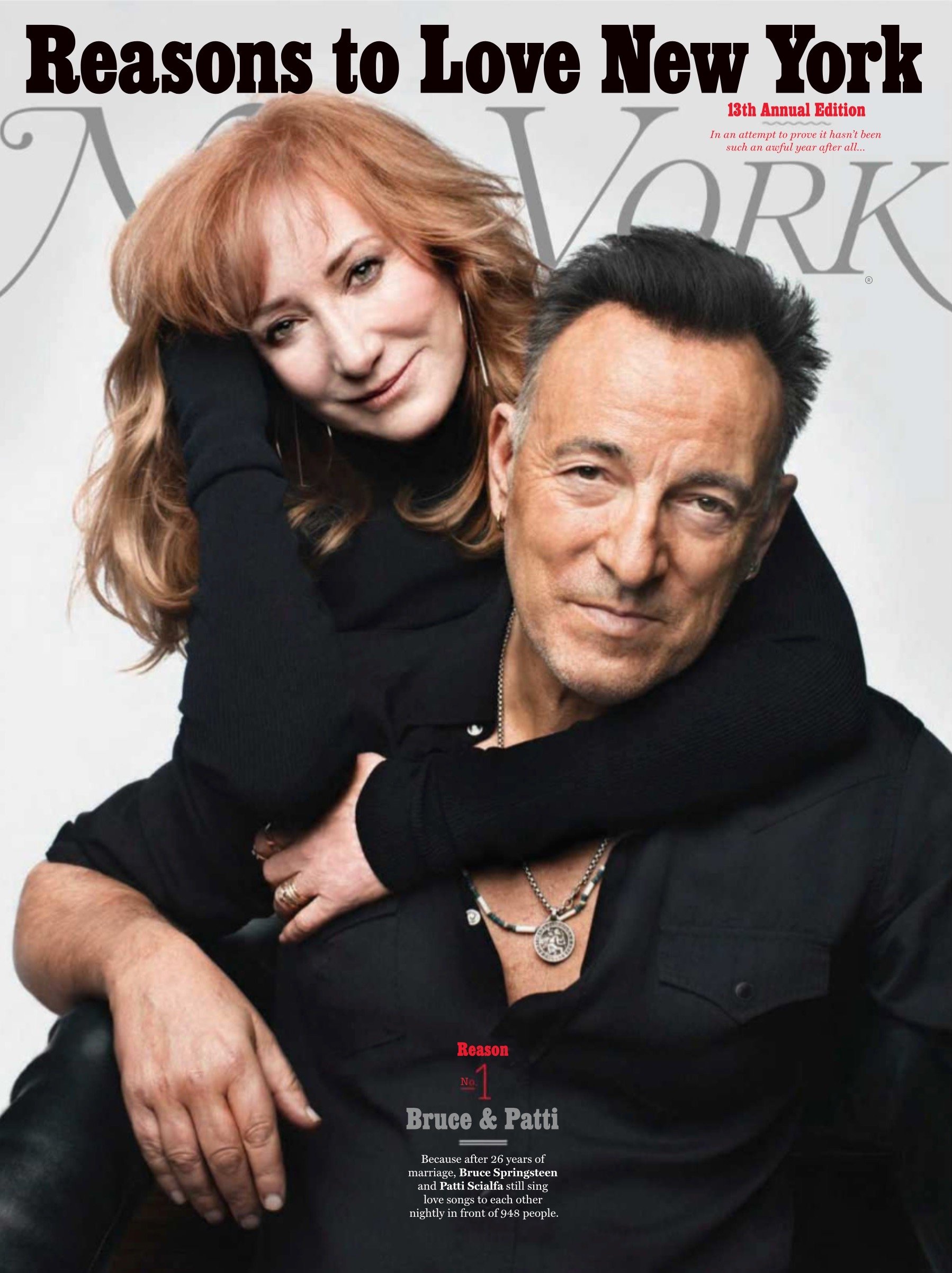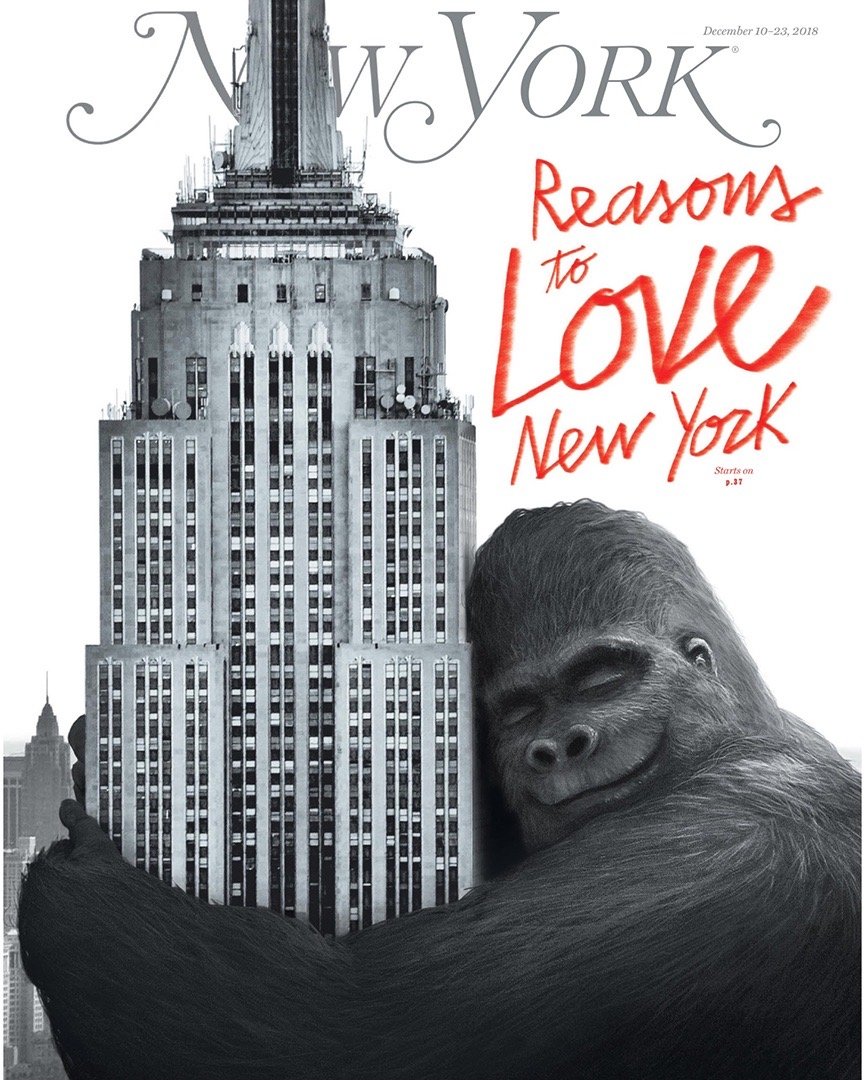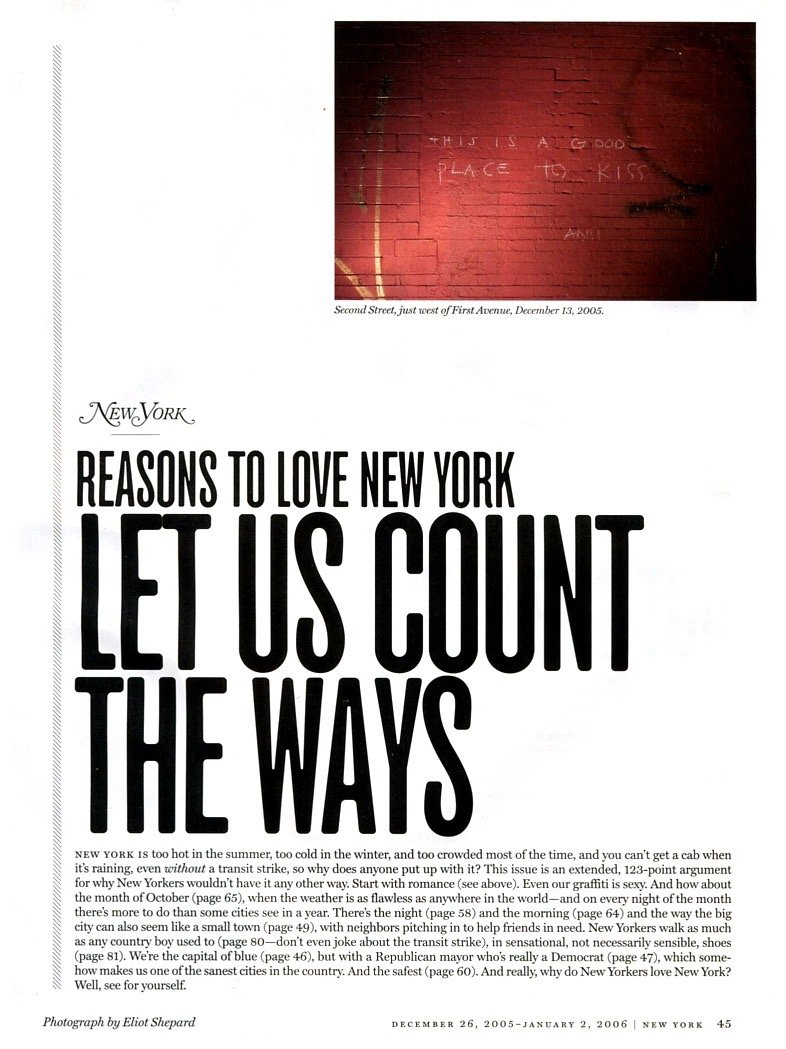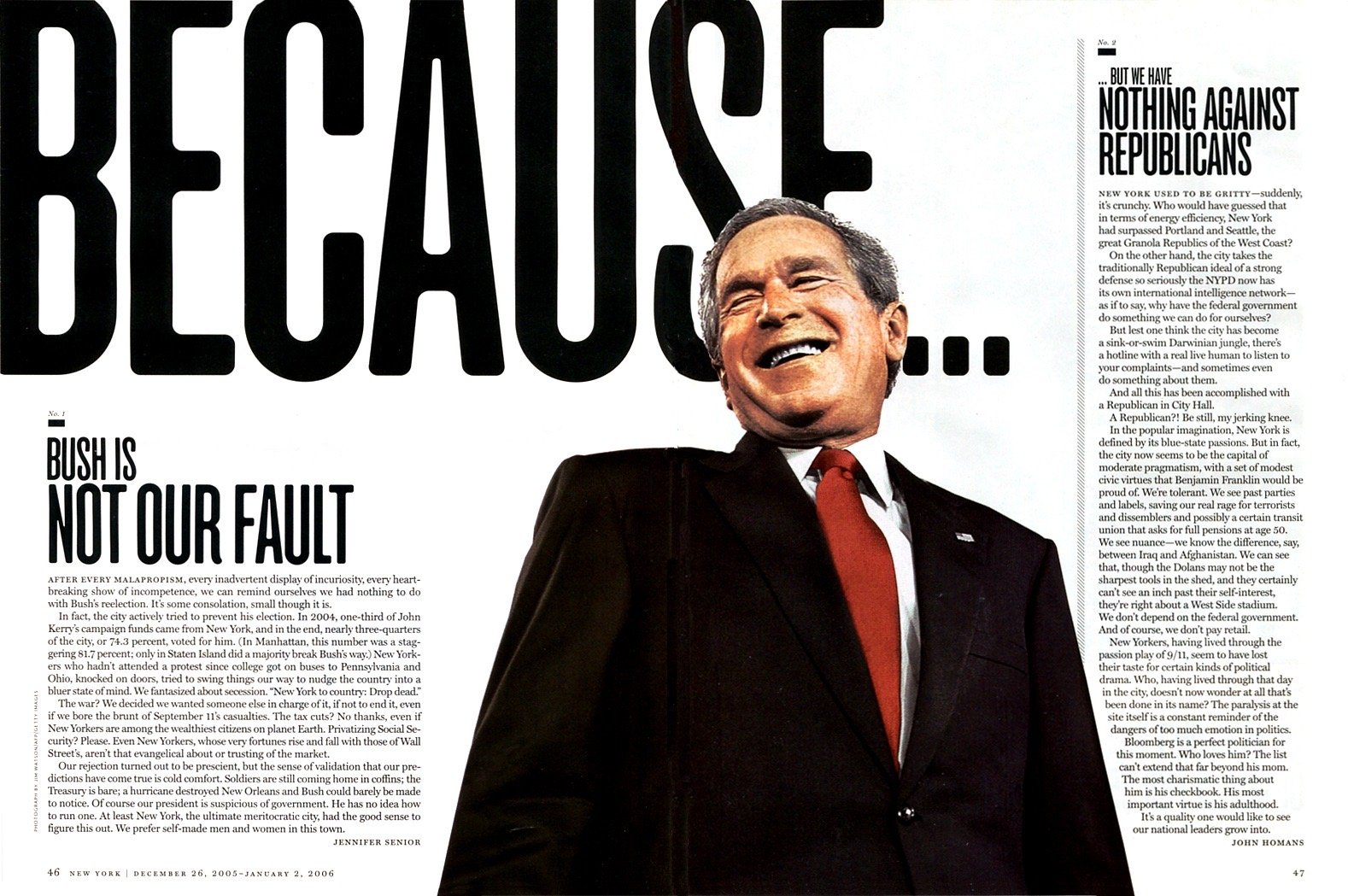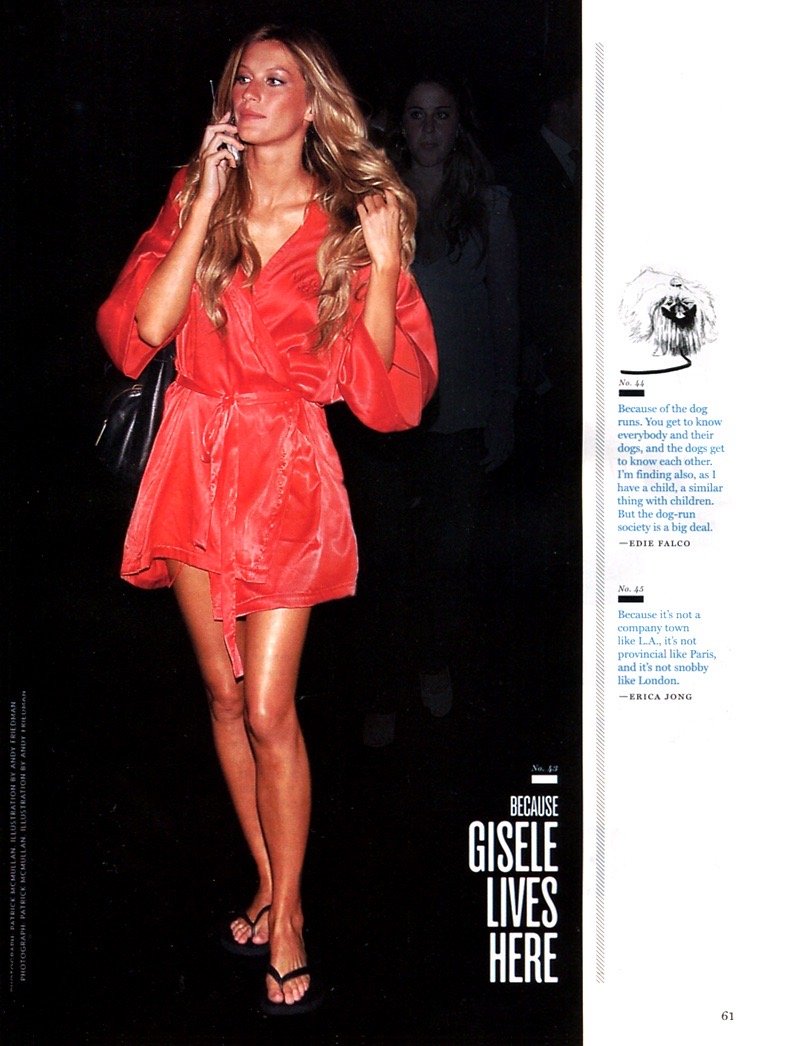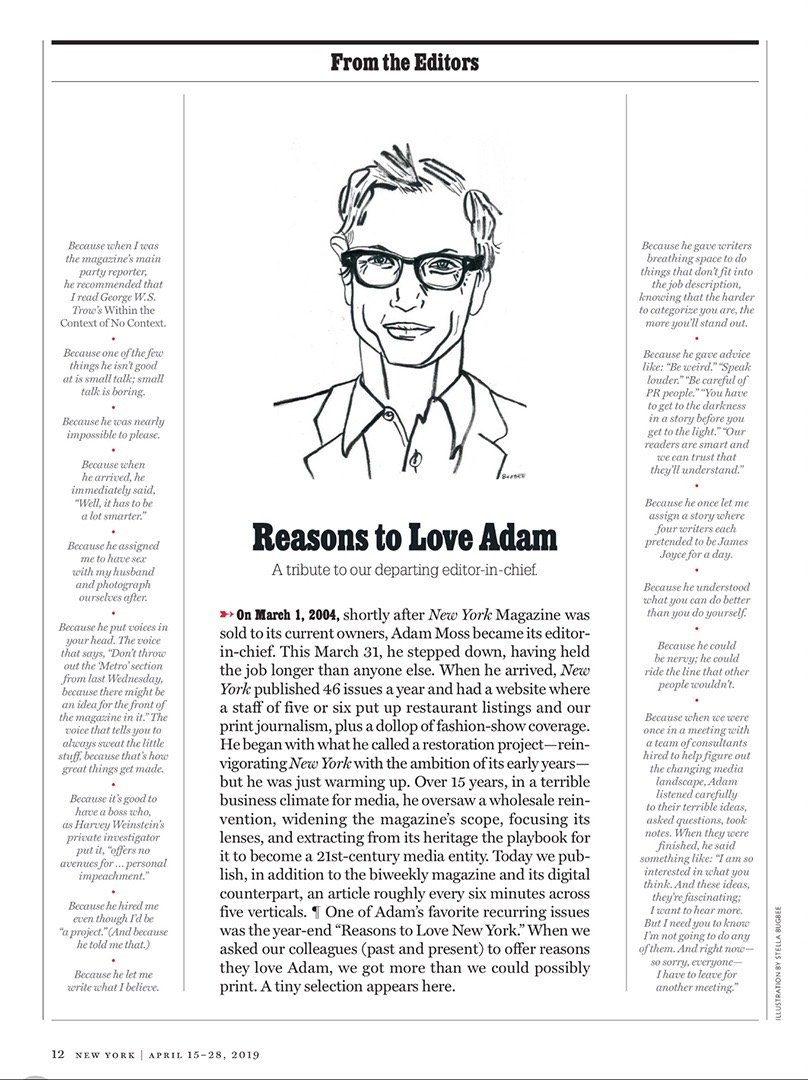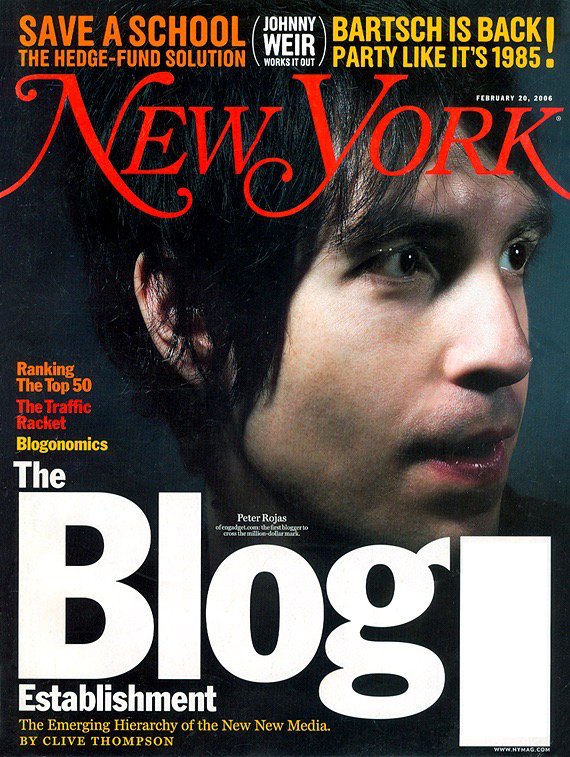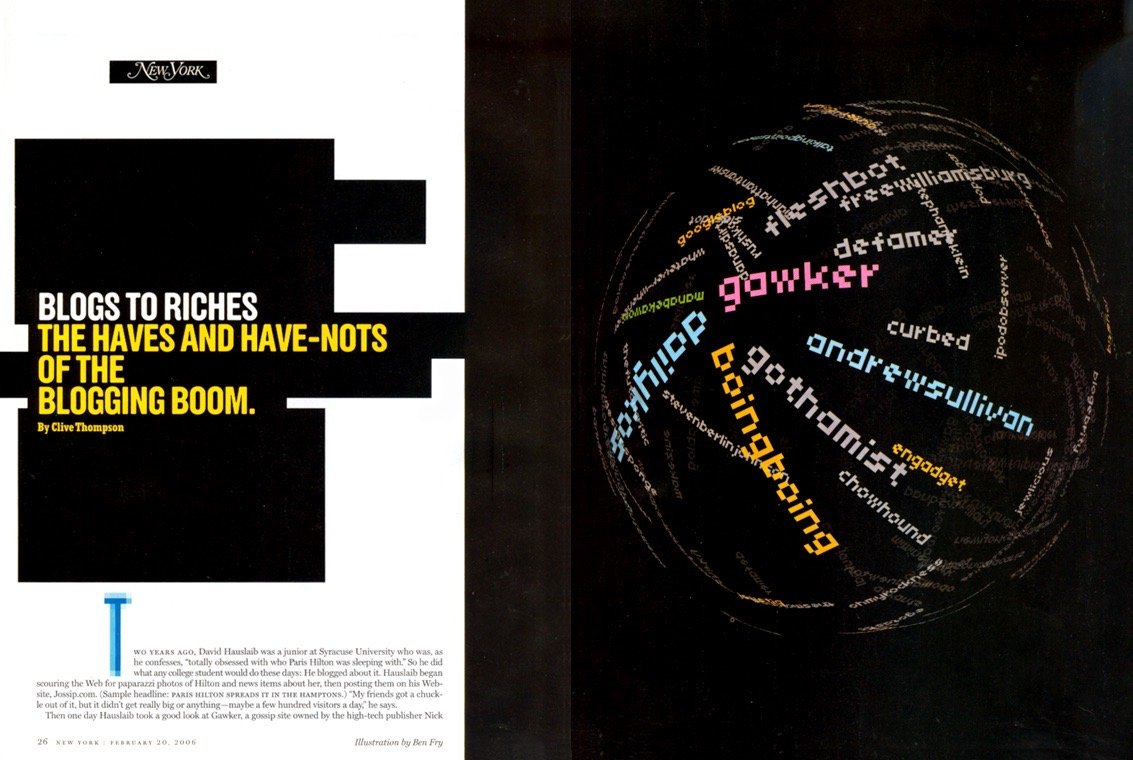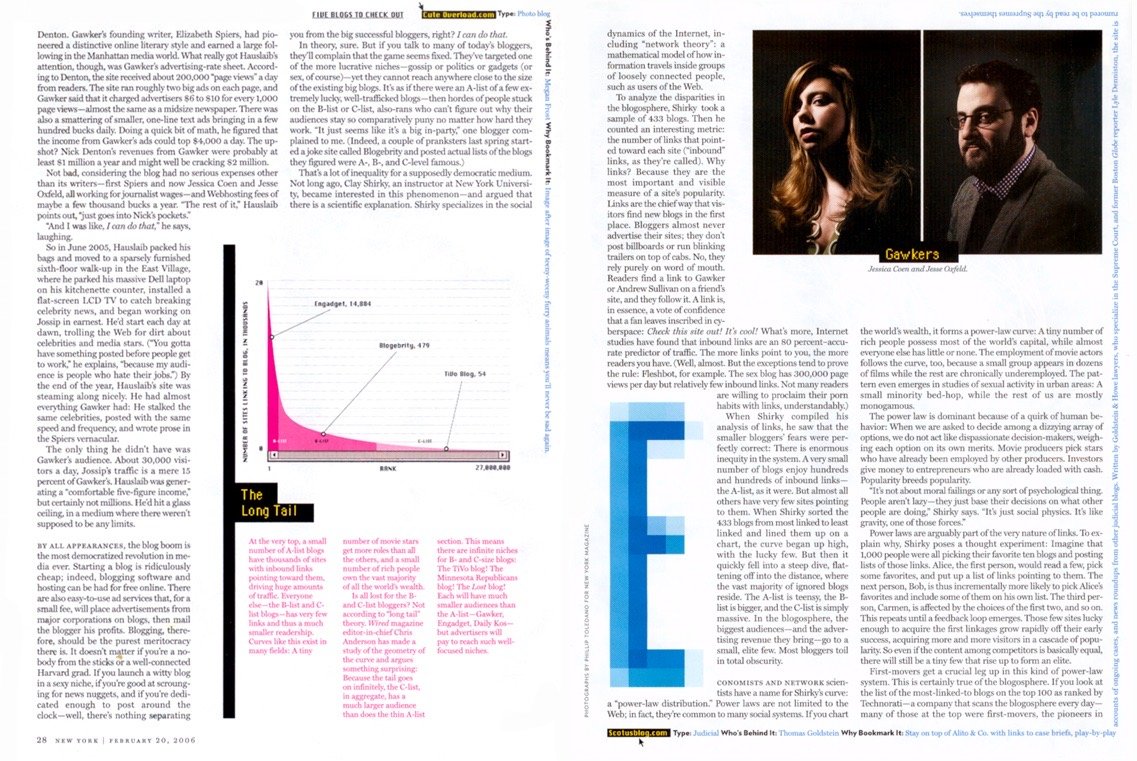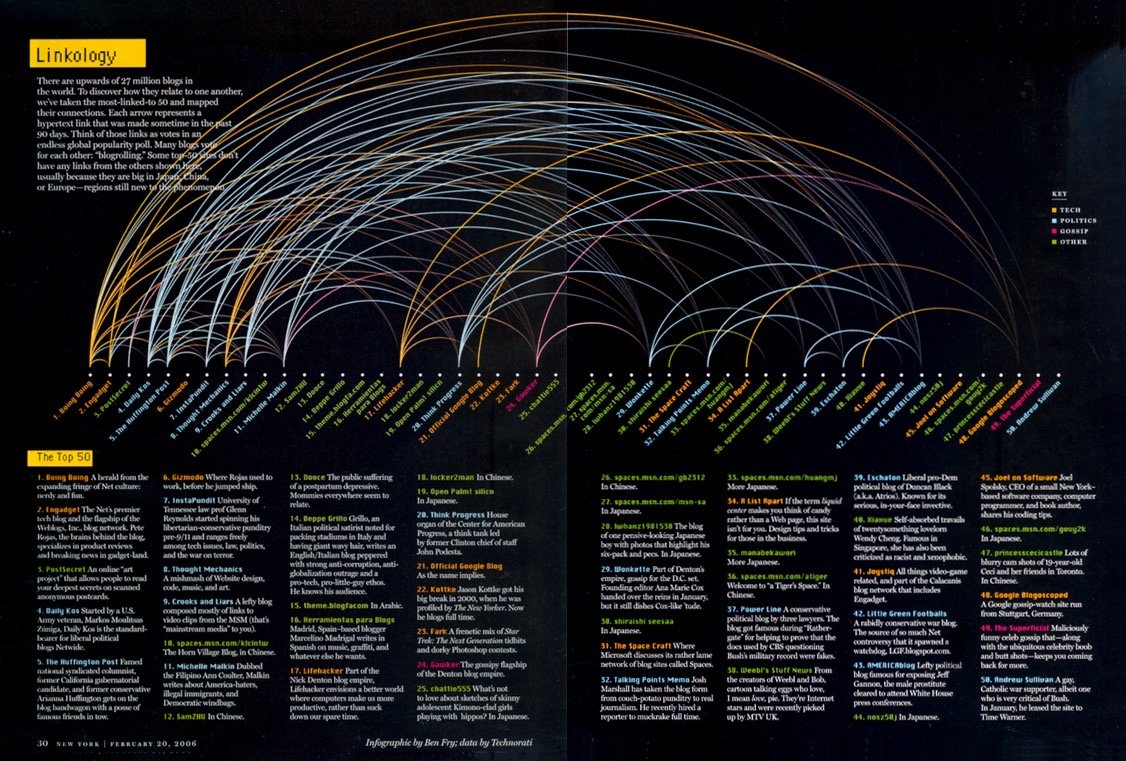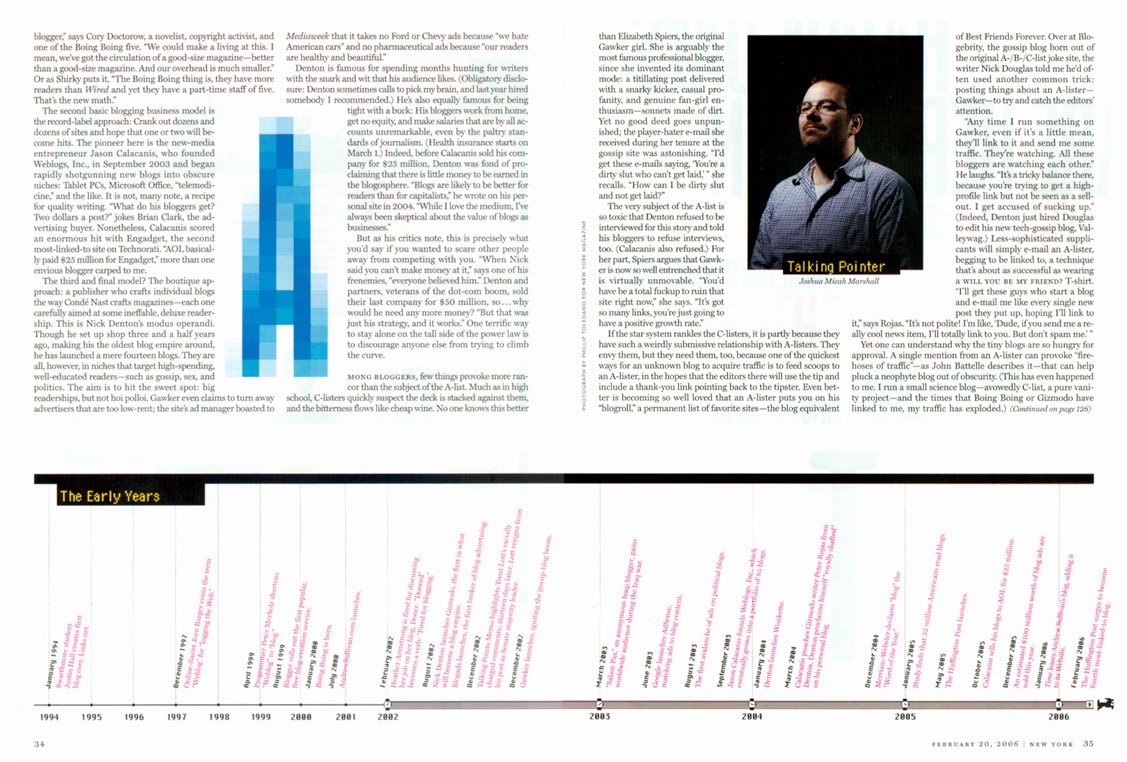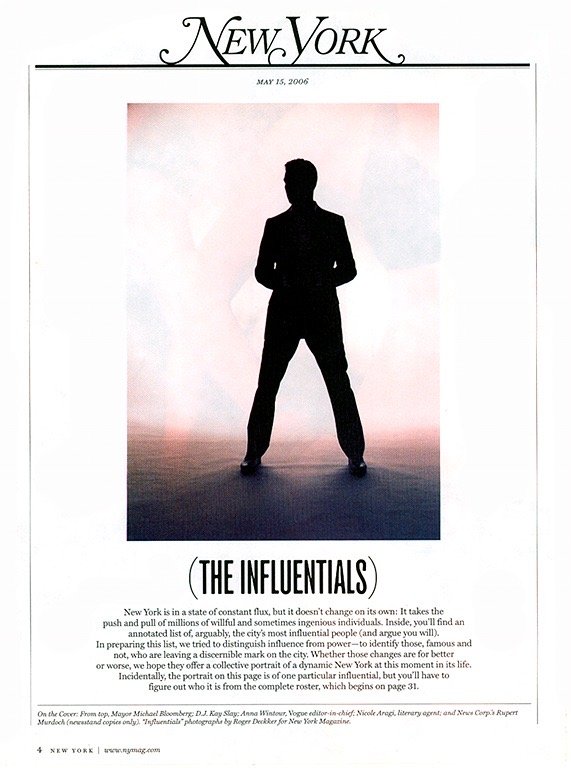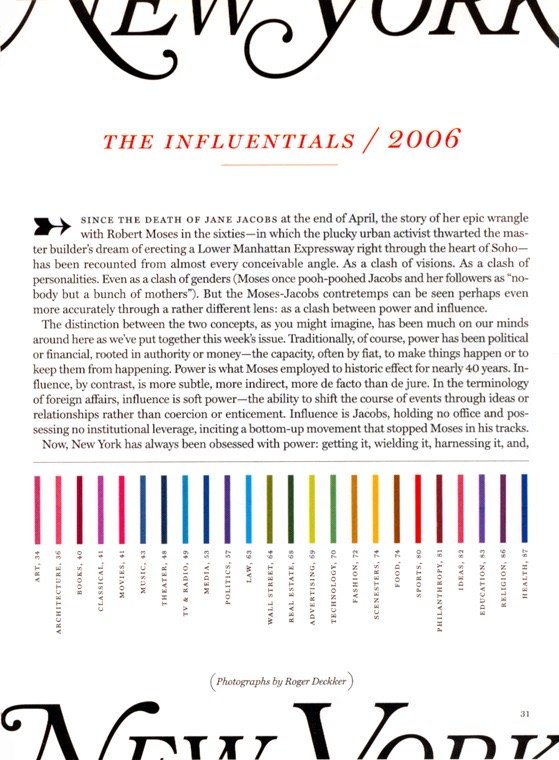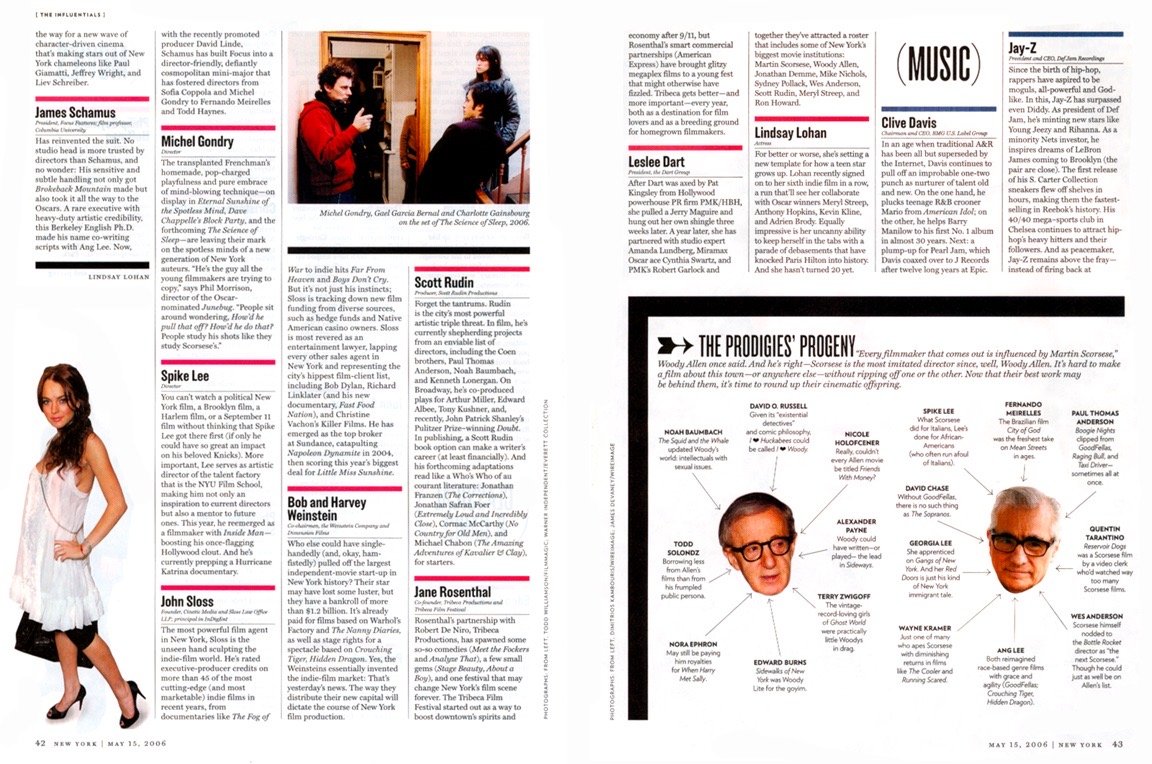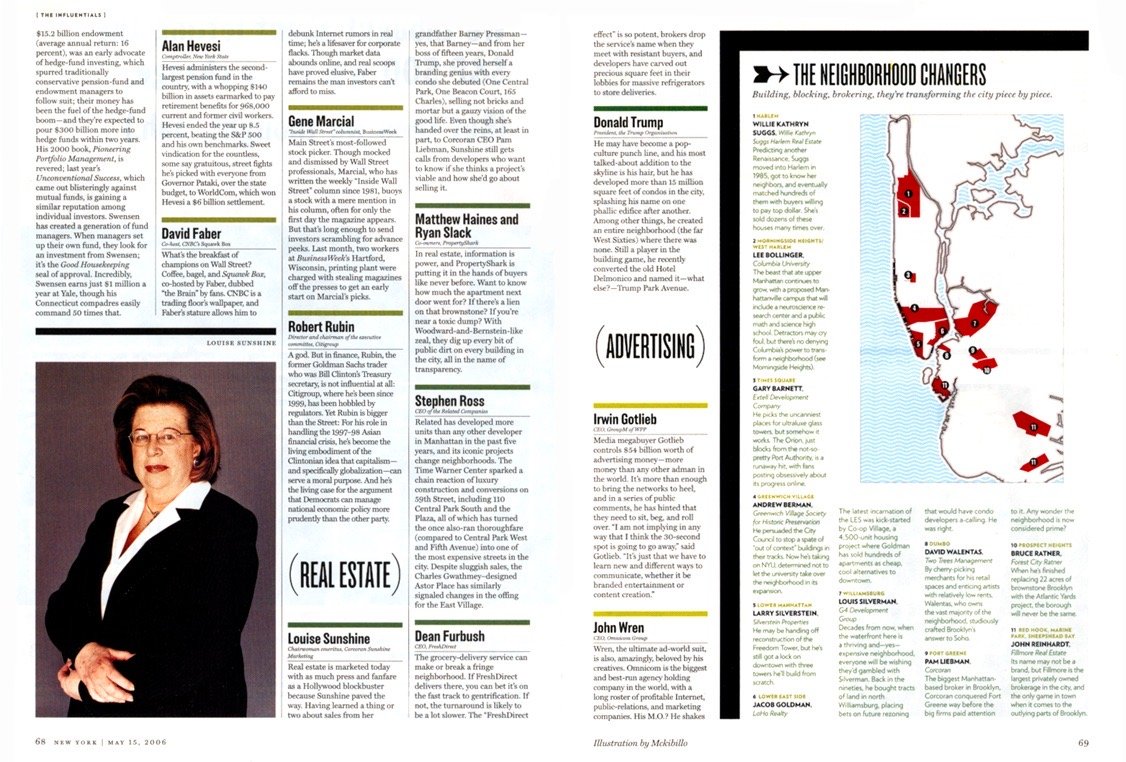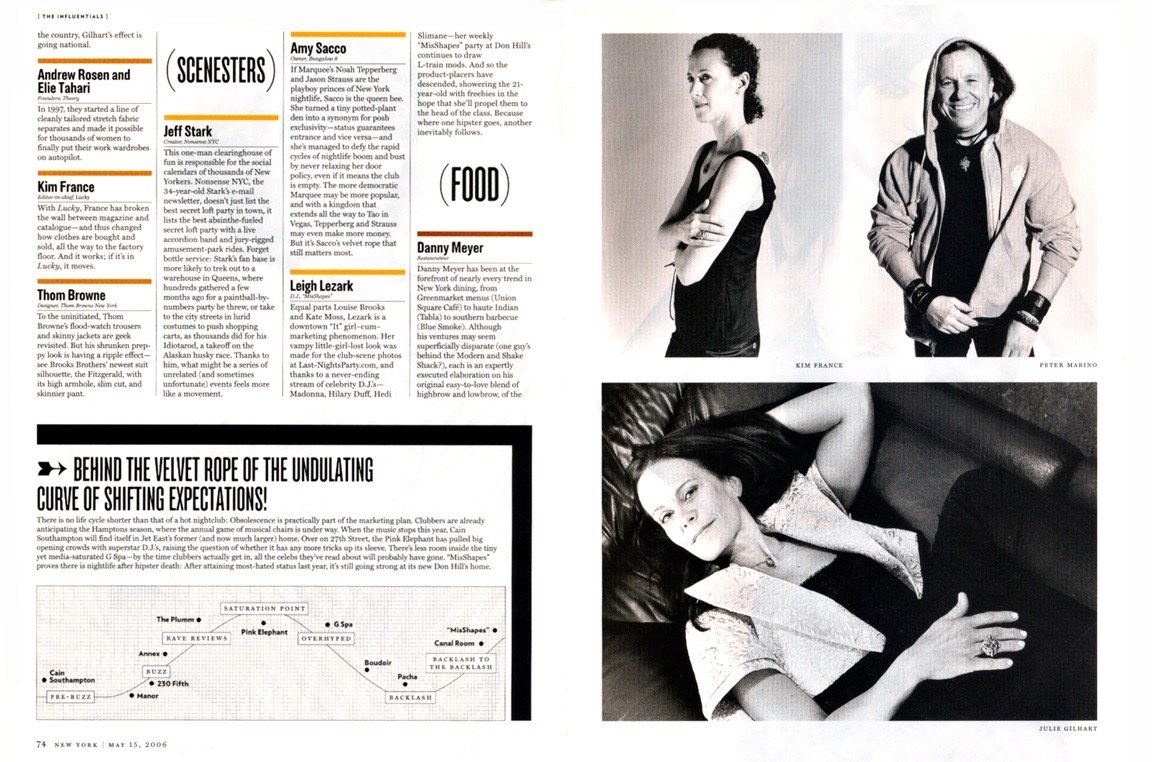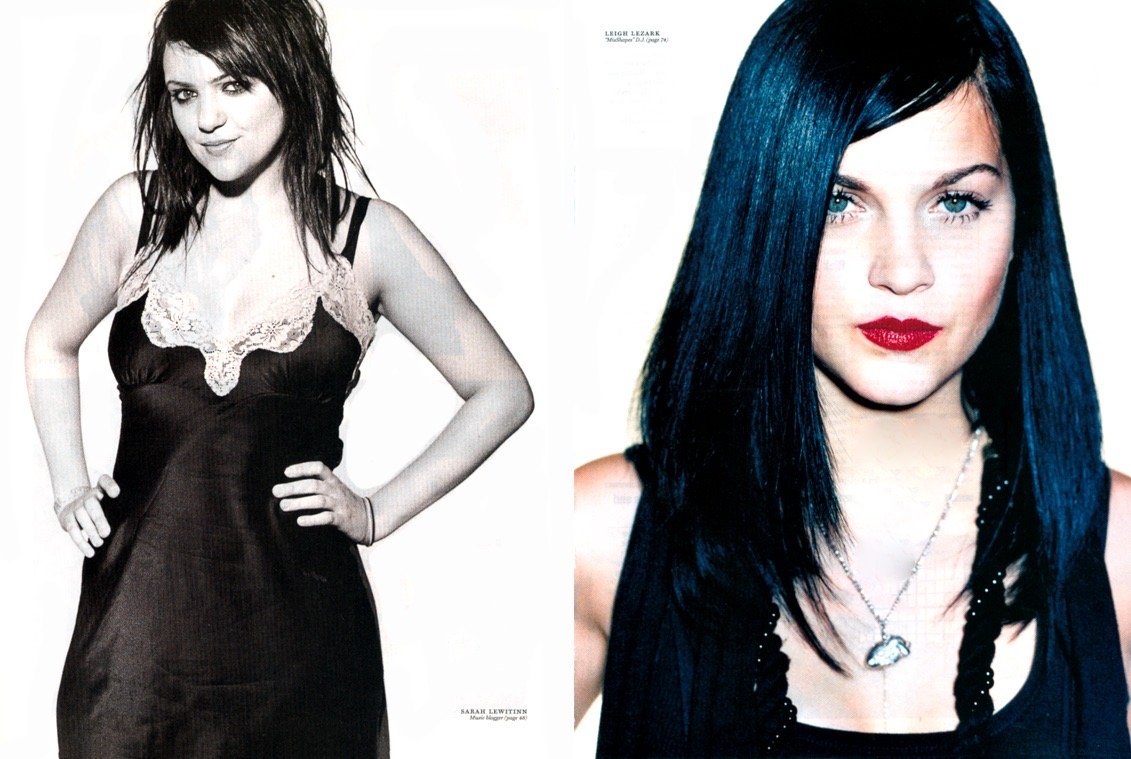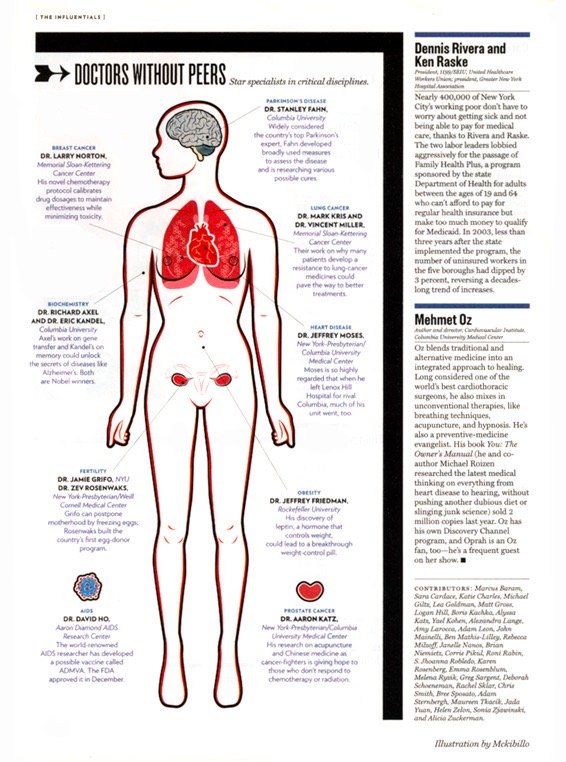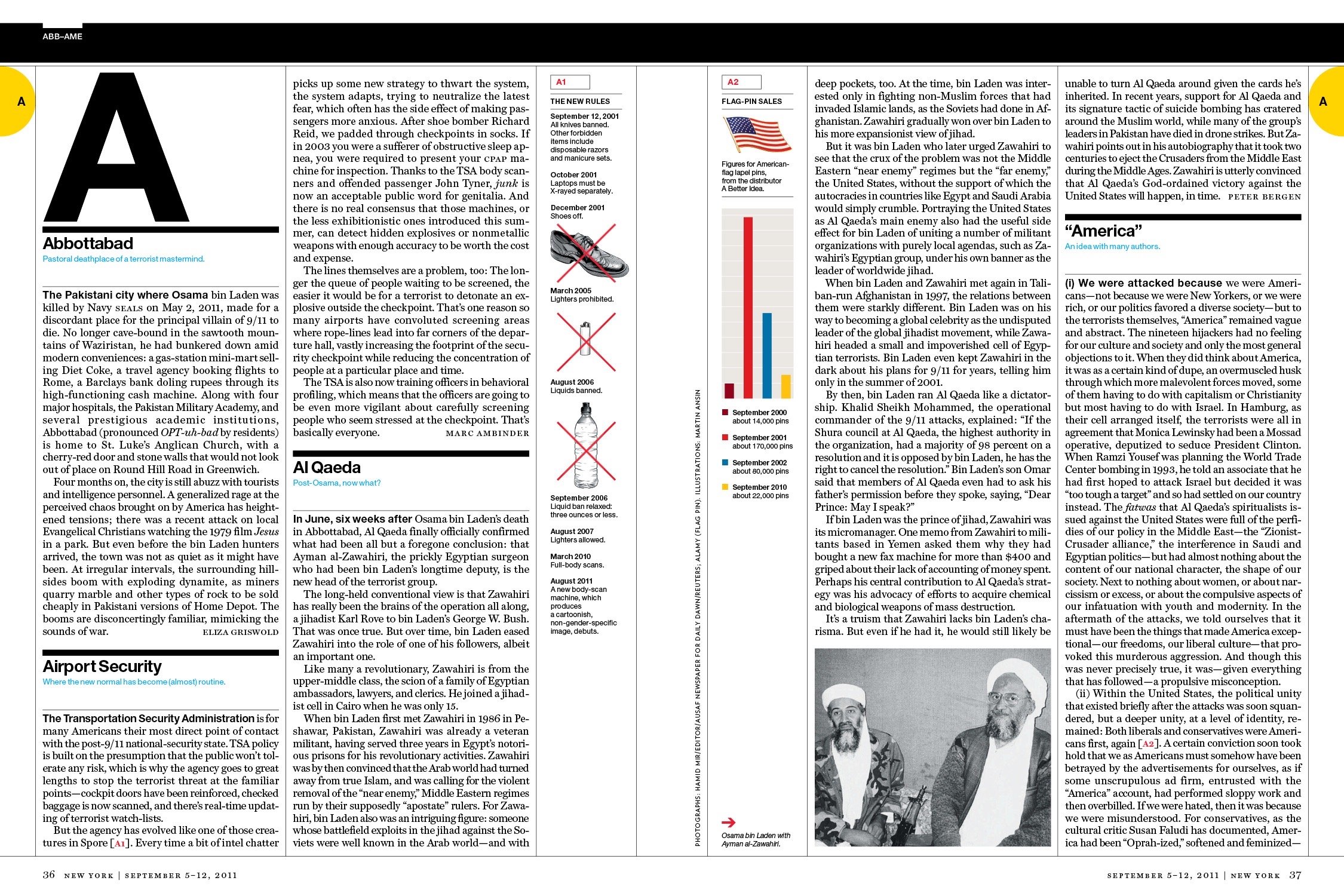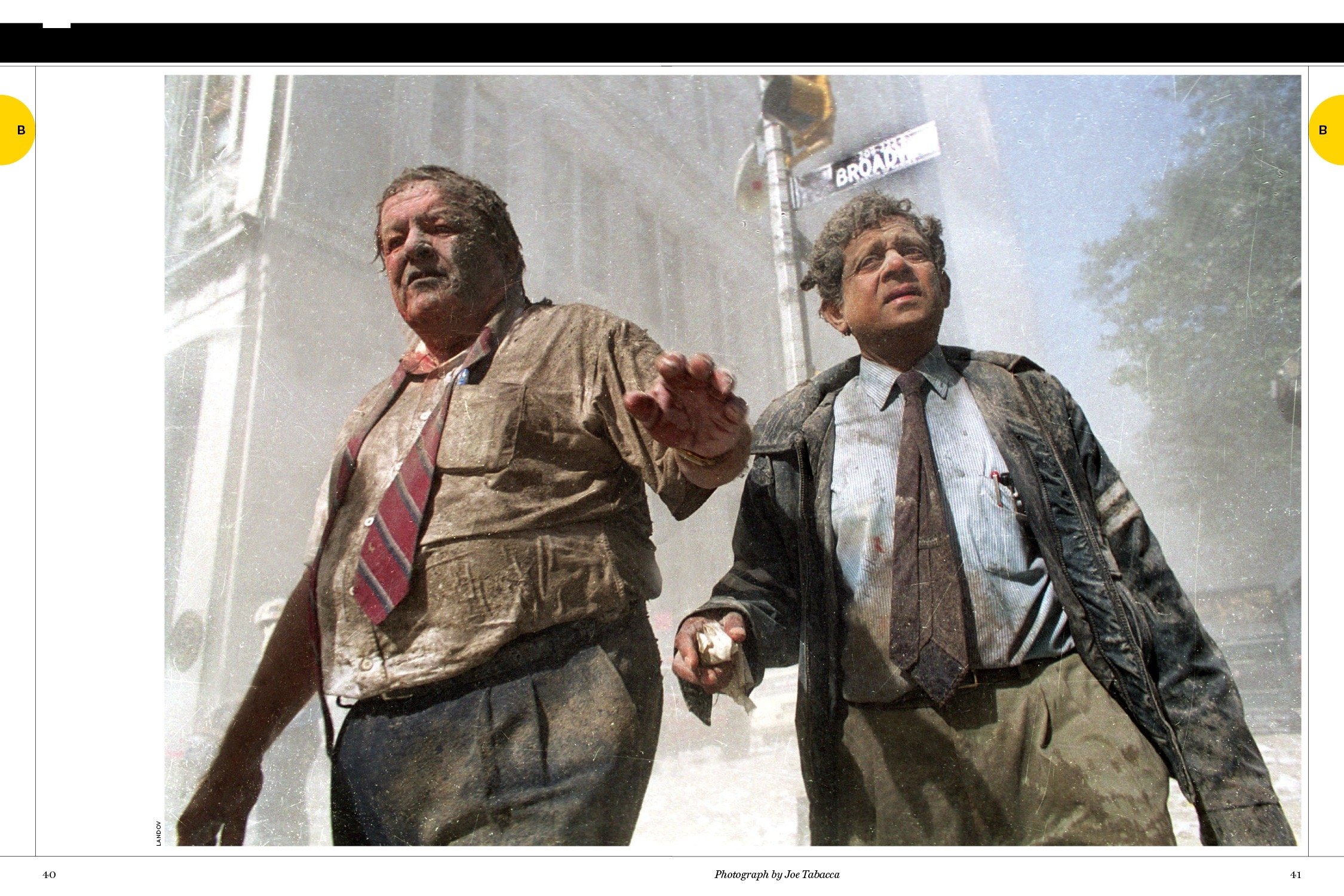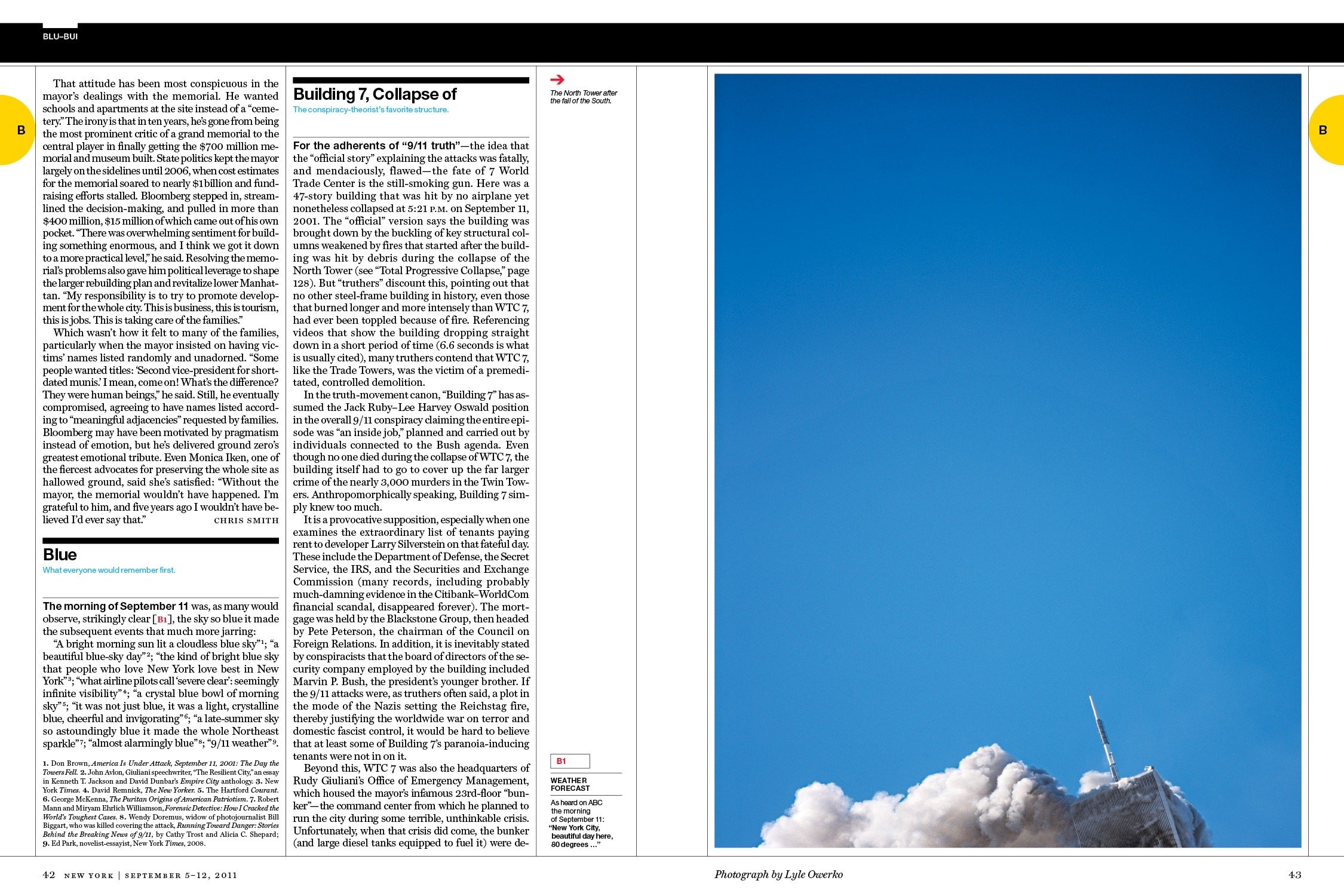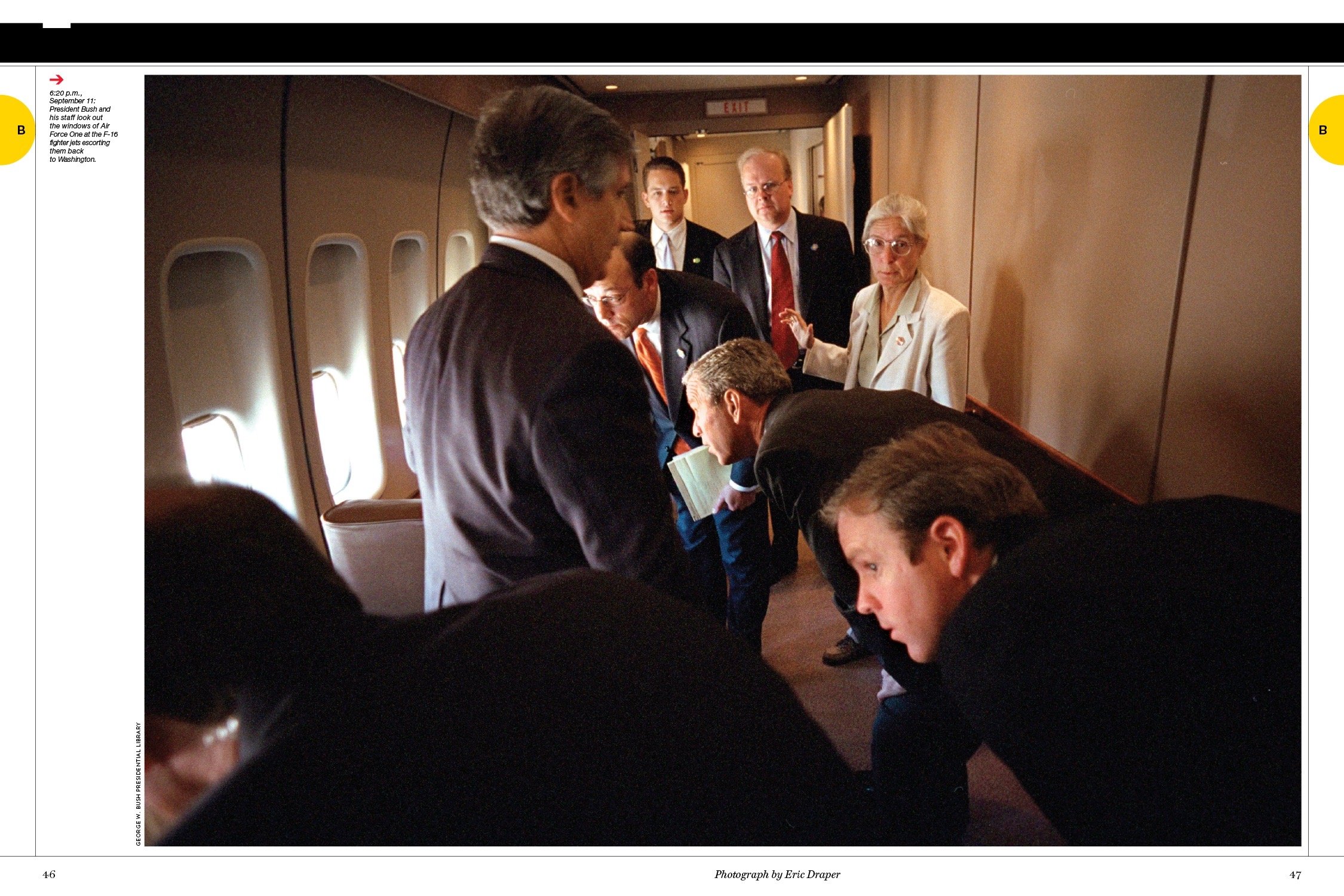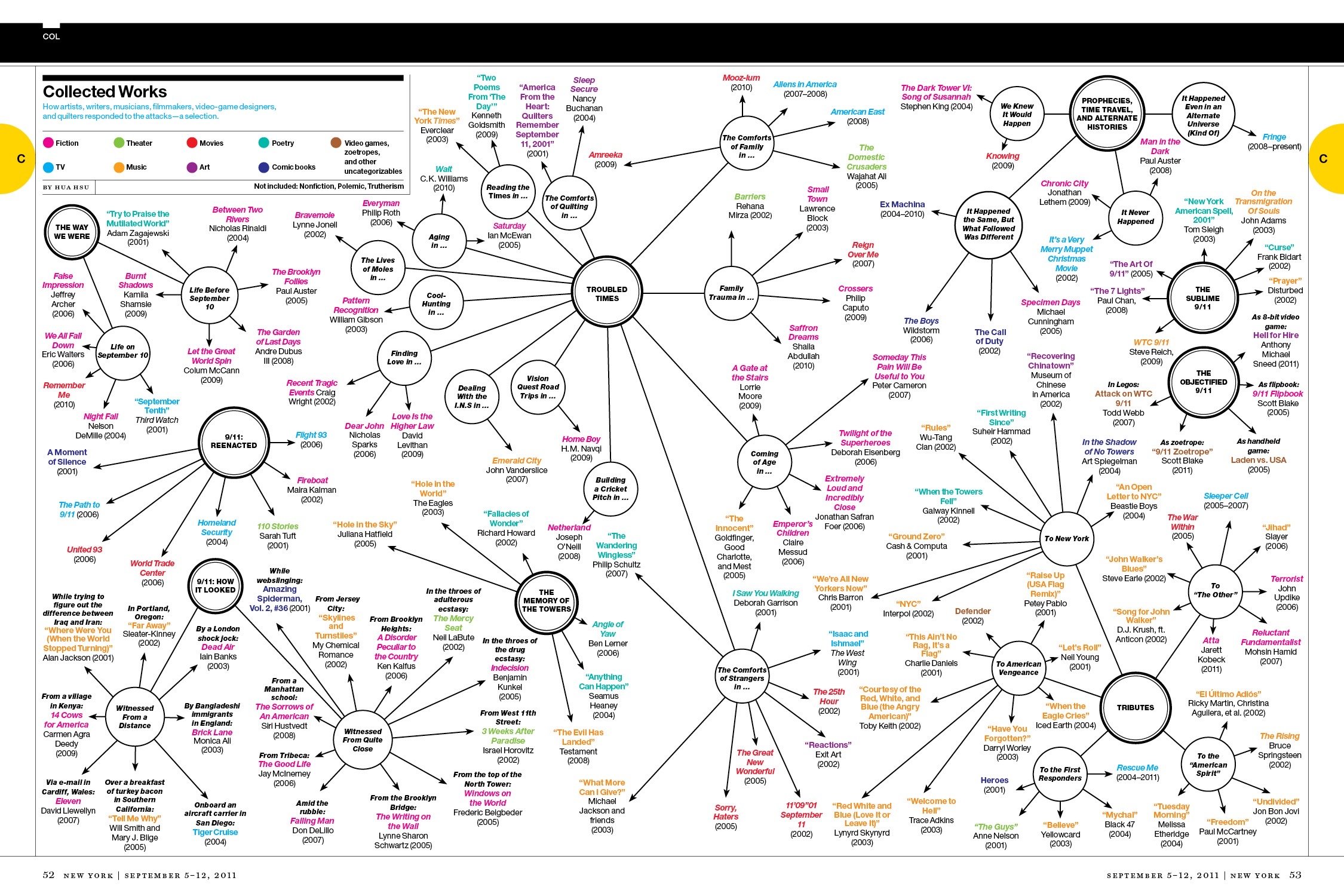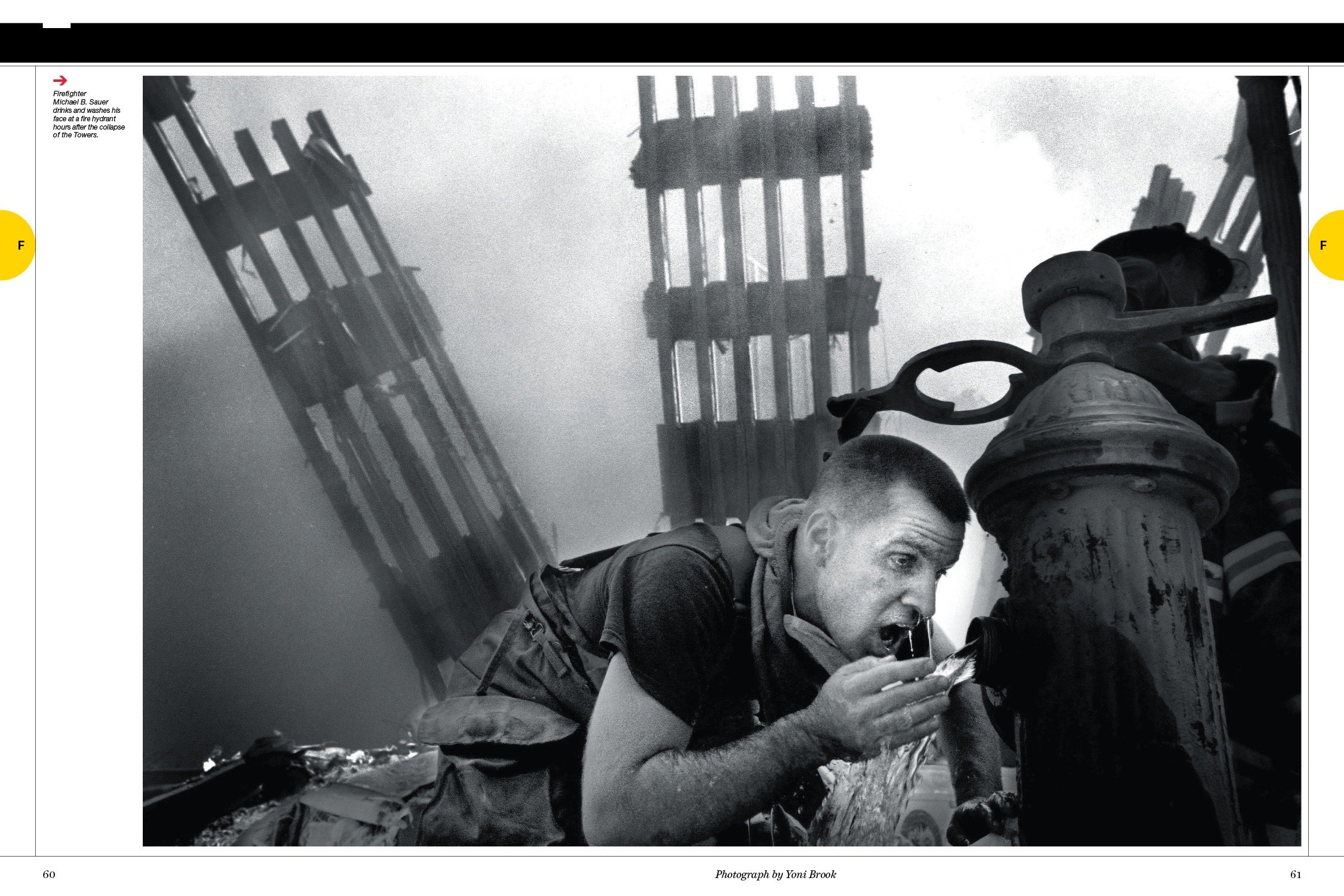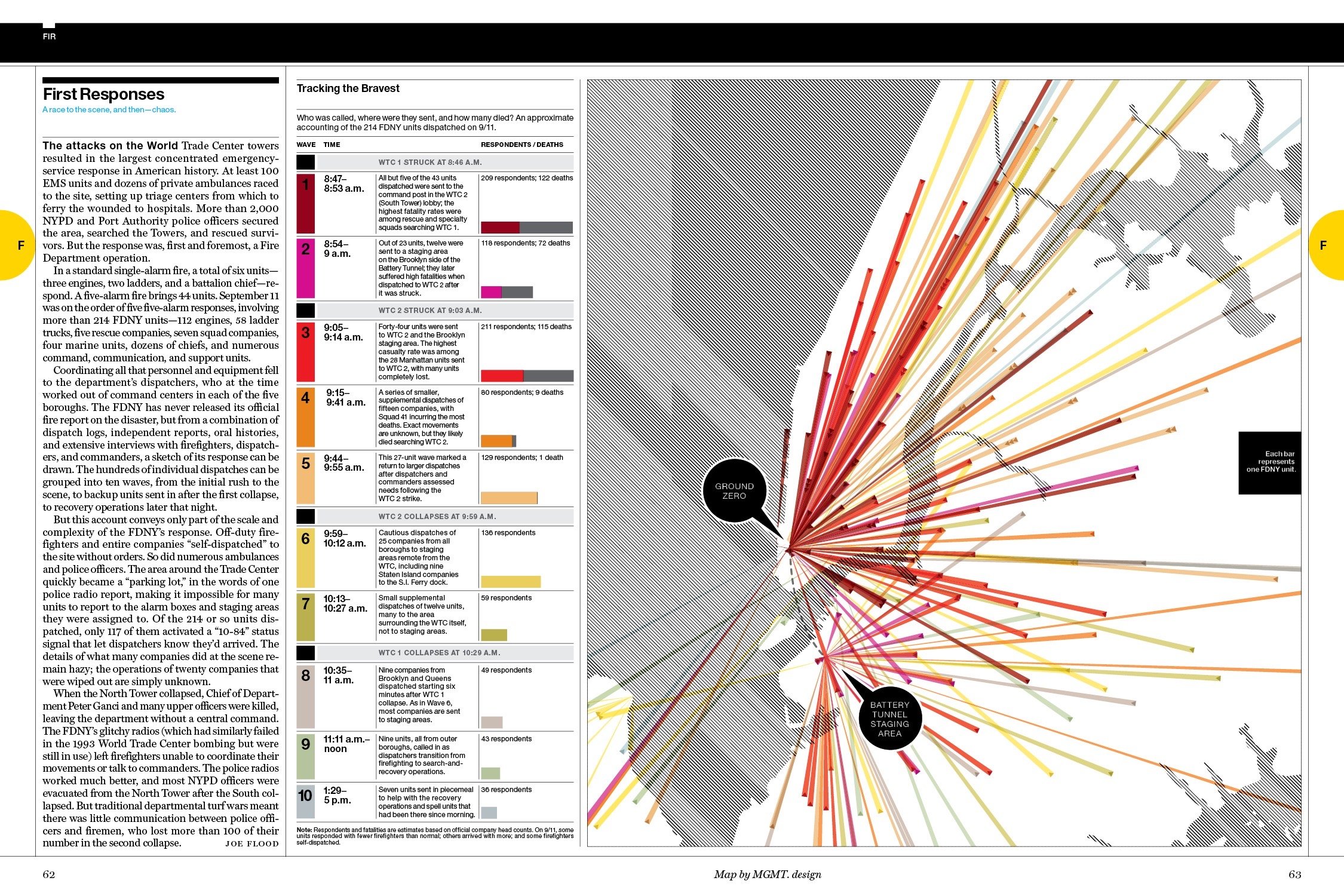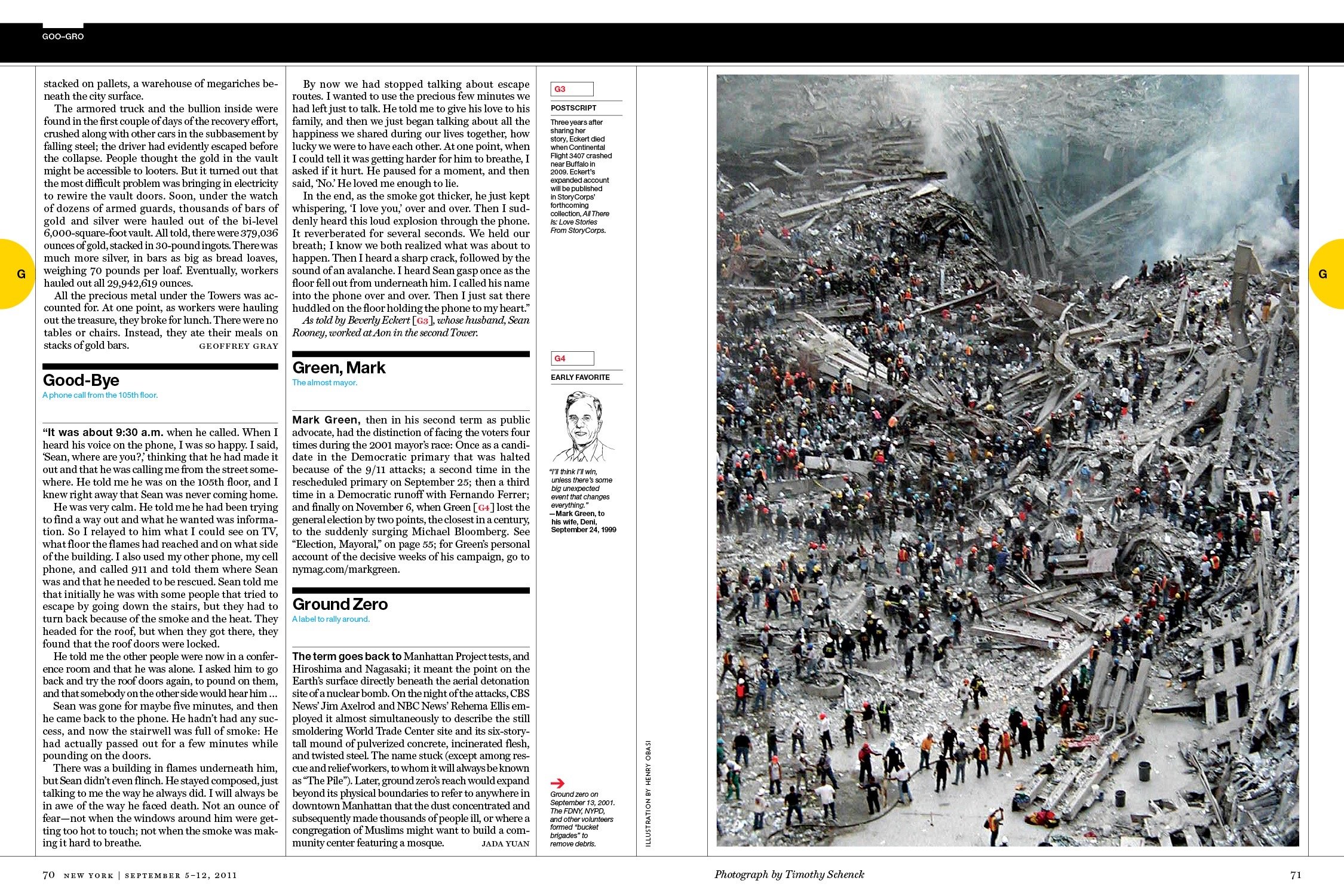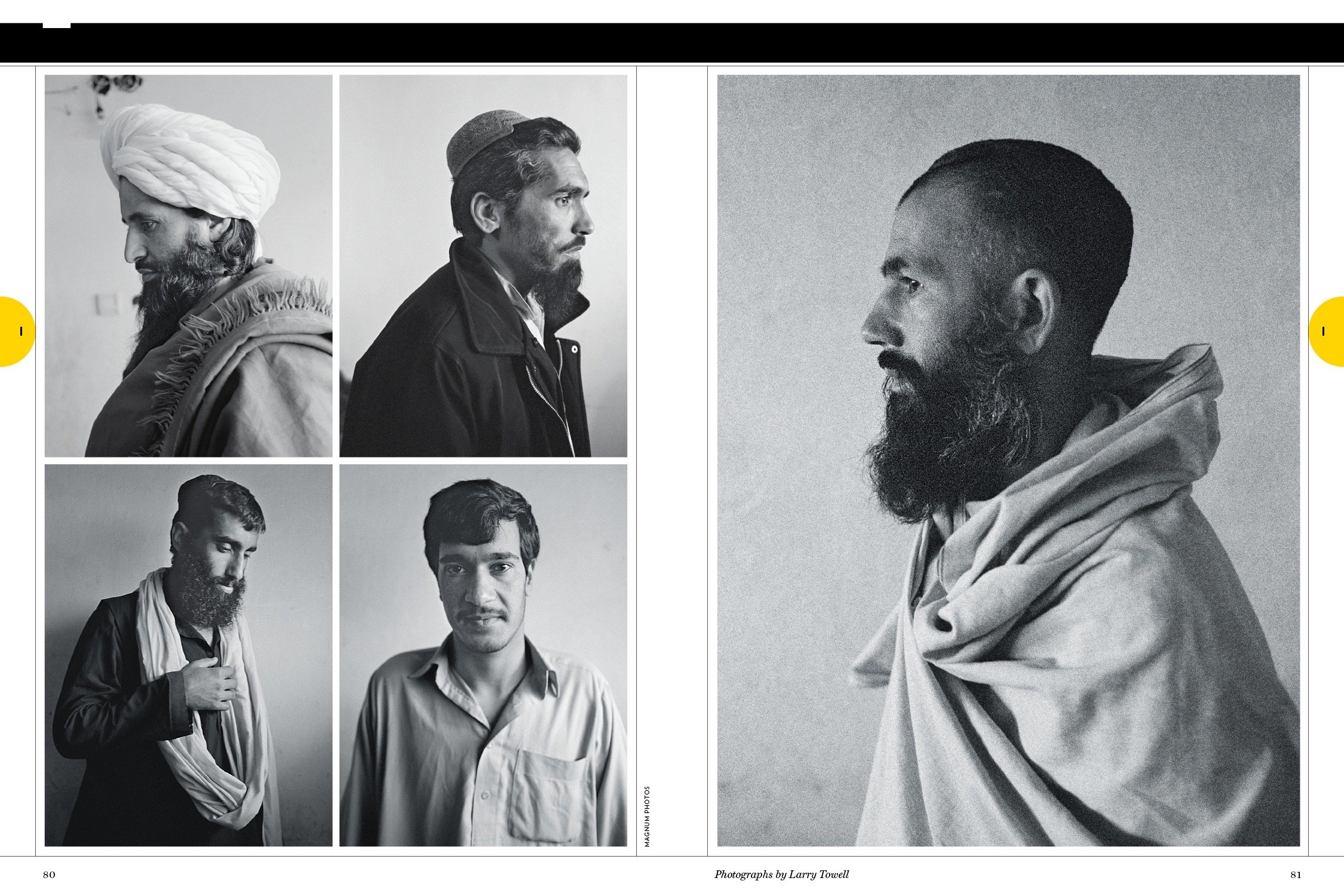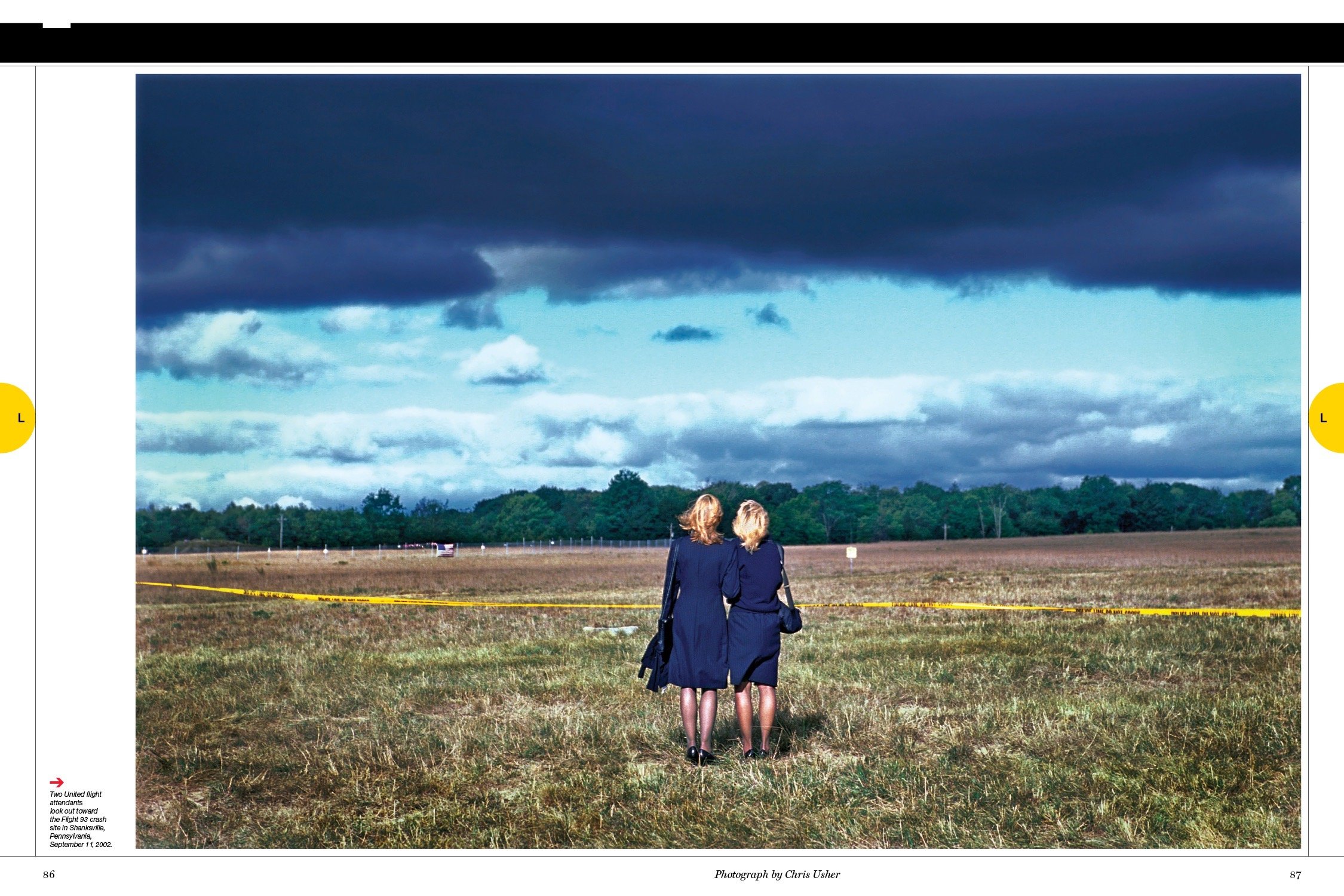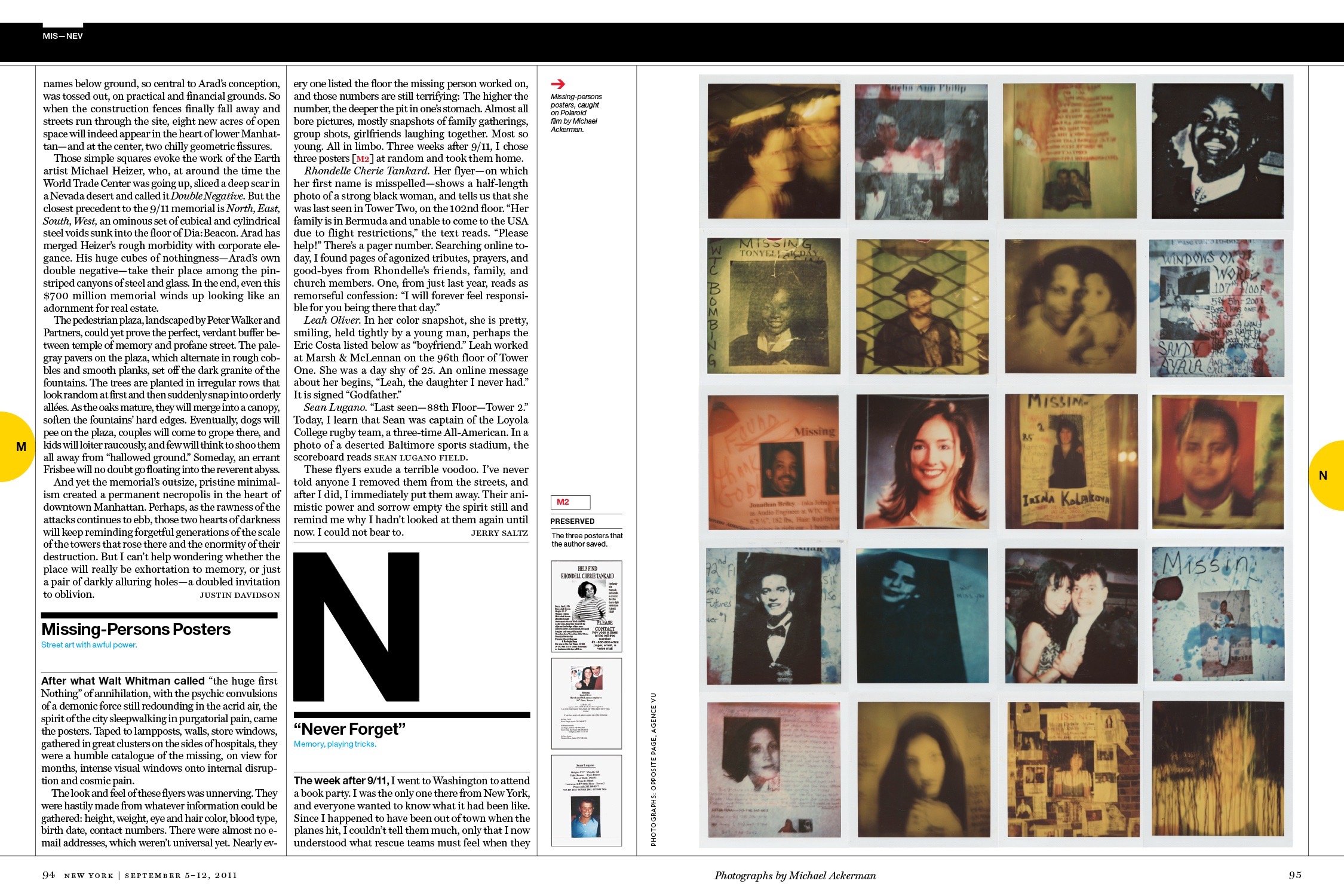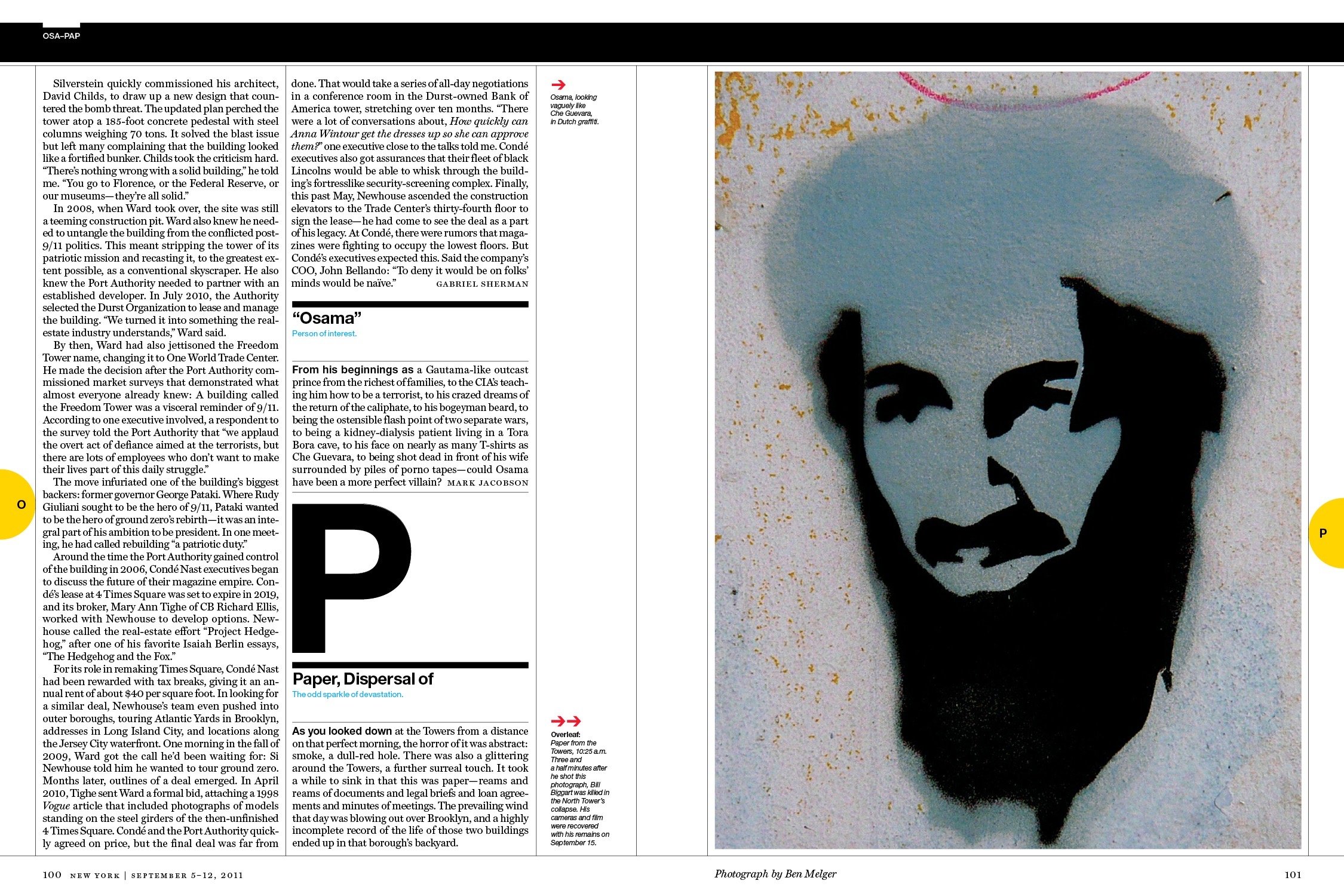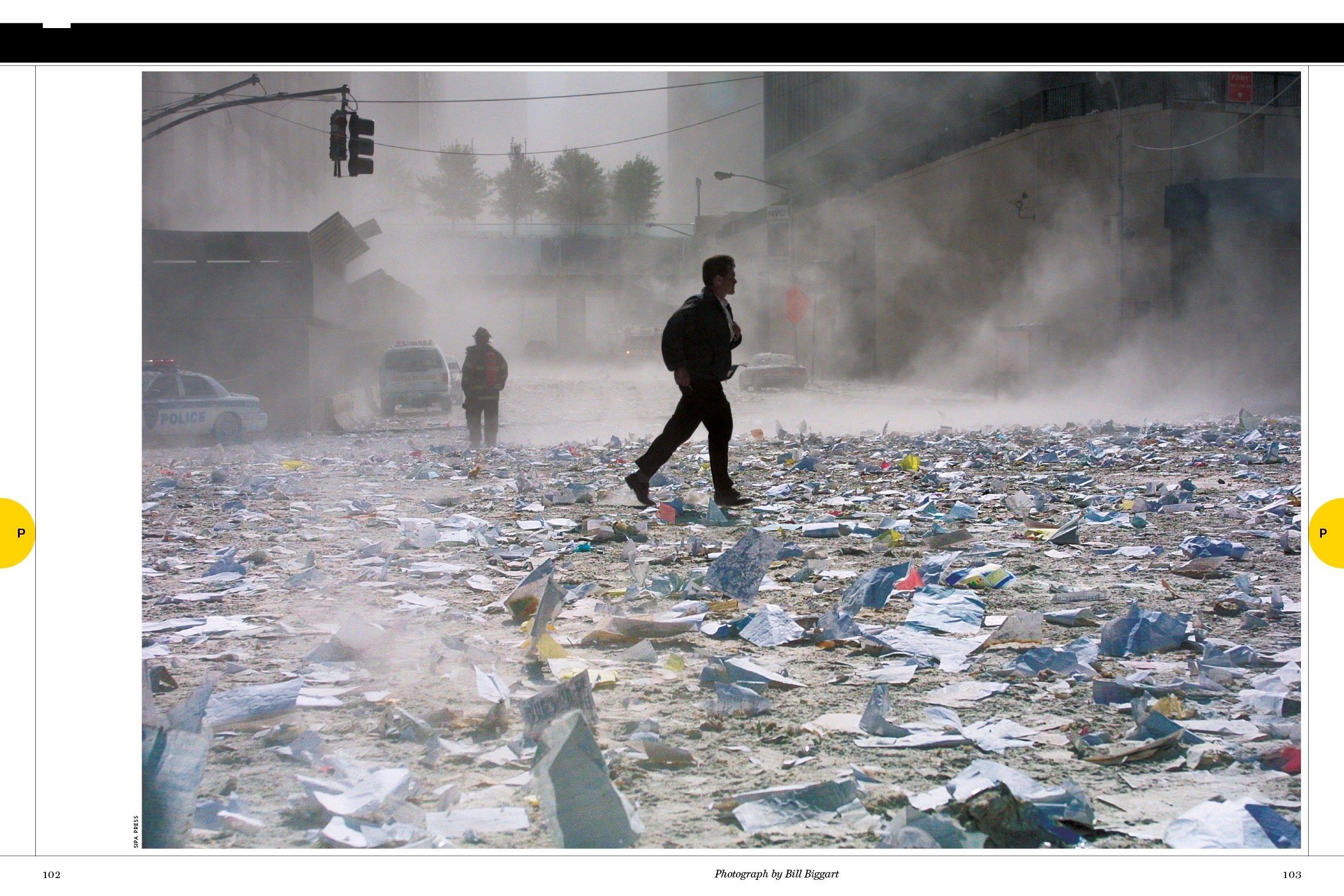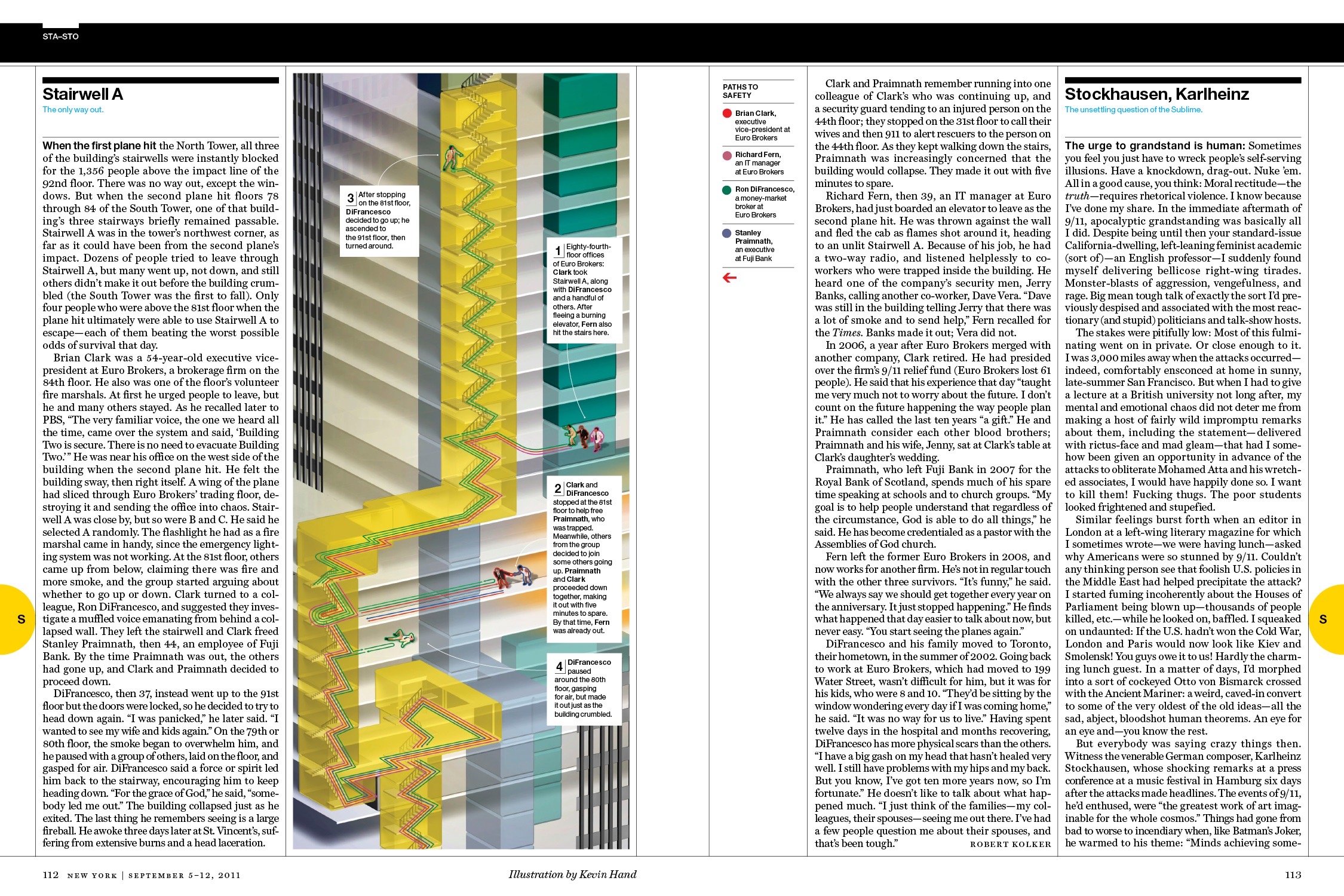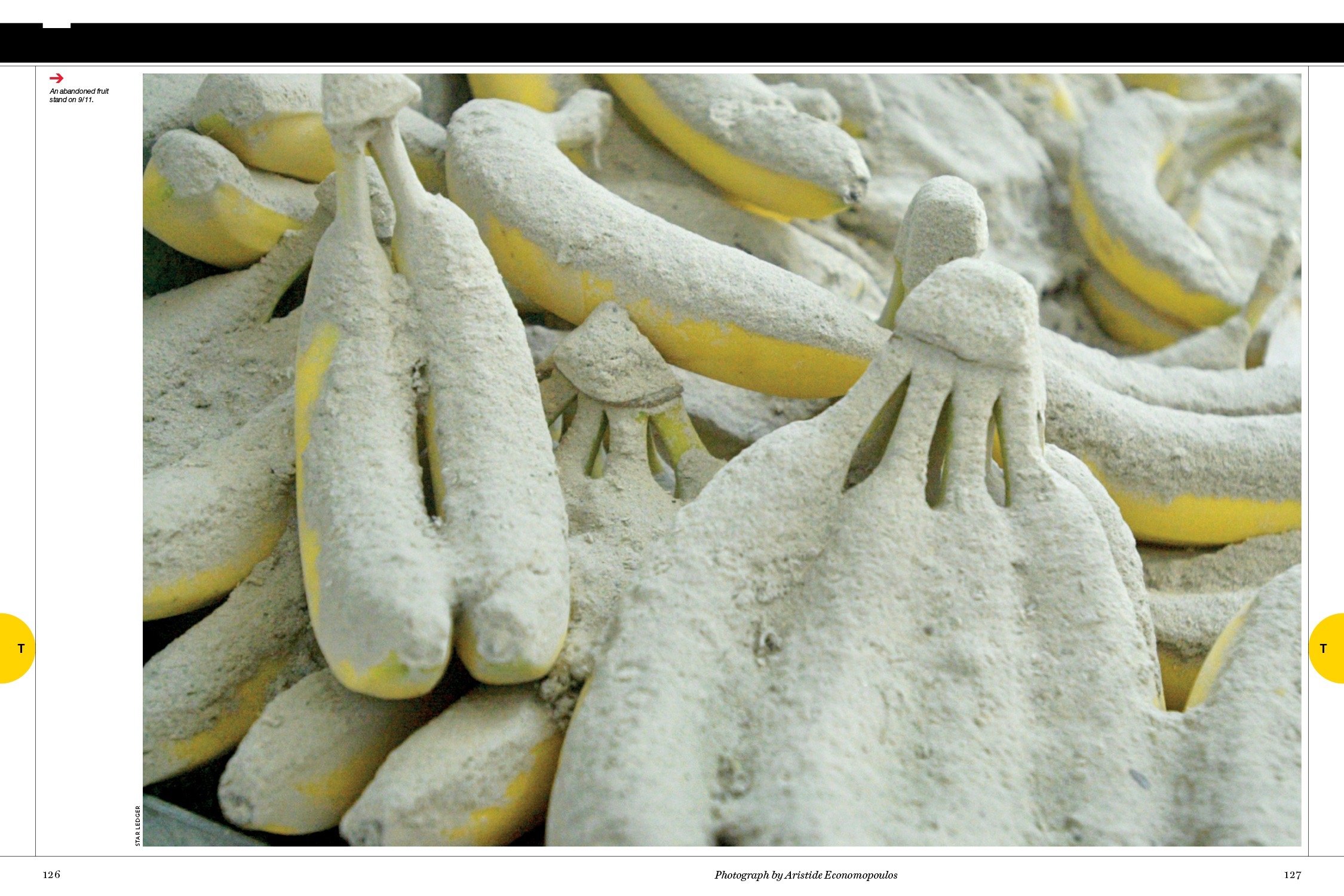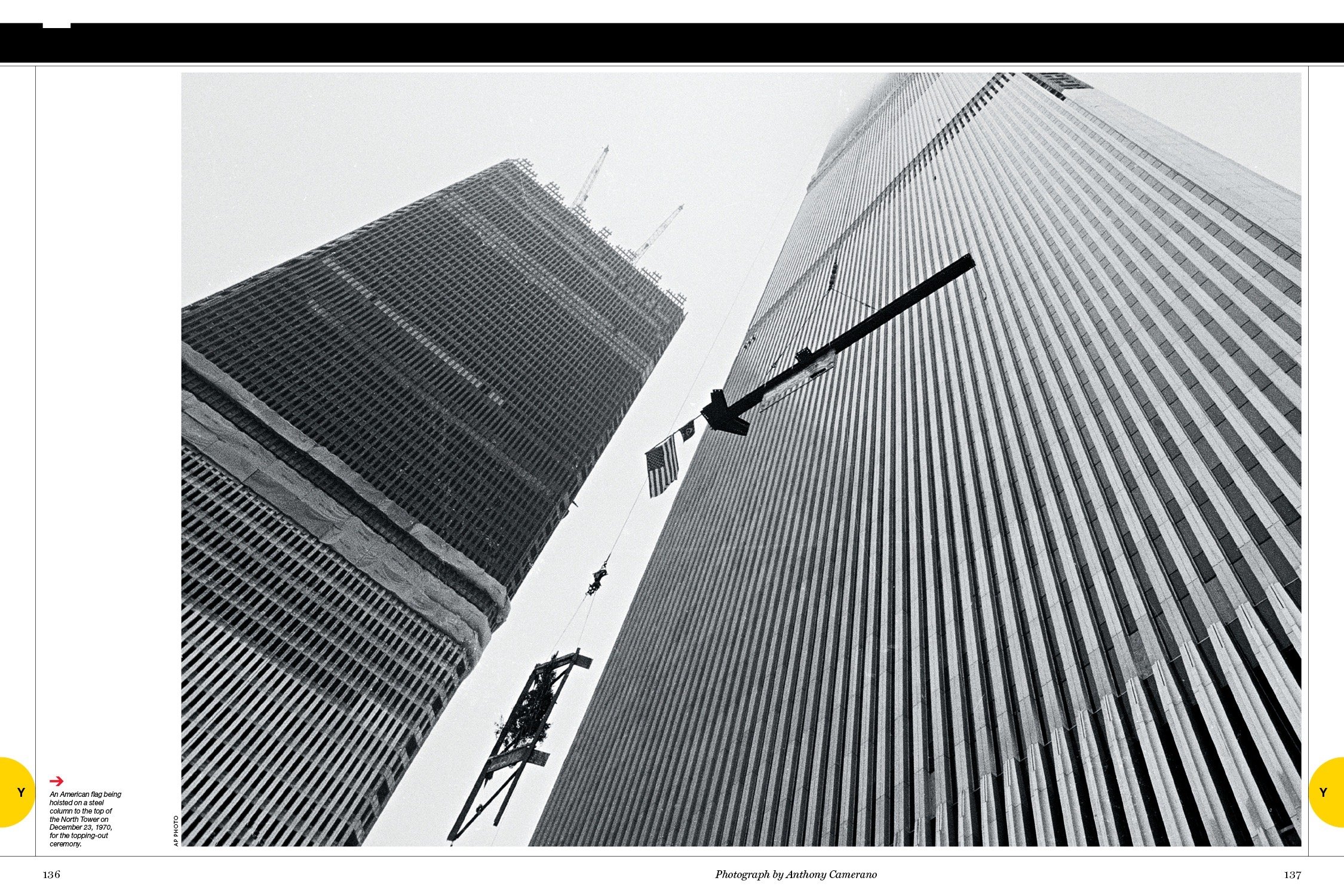The Last Celebrity Magazine Editor
It’s Joanna, b*tches.
EDITOR’S NOTE:
Welcome to a very special episode of Print Is Dead. (Long Live Print!).
For our first pod-nership we’ve teamed up with The Spread, the brainchild of two former Elle magazine editors and “work wives,” Rachel Baker and Maggie Bullock, who, in 2021 found themselves wishing for the perfect women’s magazine—at the exact moment when women’s magazines were irrevocably going down the tubes.
Each week, The Spread rounds up juicy stories, big ideas, and deeply personal examinations of women’s lives—from The New York Times and the Atlantic, to Vogue and Elle, to N+1 and The Drift. It’s no surprise that The Spread is now a cult favorite of media insiders—as well as the media-curious.
We’re excited to follow The Spread into the world of women’s magazines, starting with today’s interview with the ever-quotable former Cosmo editor, Joanna Coles, who Rachel and Maggie call “the last celebrity magazine editor.”
Maggie Bullock: It’s 2016. Rachel and I are sitting at our desks on the 24th floor of the Hearst Tower working at Elle magazine when the glass double doors blow open—or at least that’s how I remember it—and a vision of white-blonde hair, metallic pants, and checkerboard platforms, breezes into the office speaking in a commanding British accent to two or three minions in her wake.
There are no cameras in sight, but it’s as if we’re watching a grand entrance and a reality TV show. You can almost feel the wind machines in the air, which is what it’s like pretty much any time you witness a Joanna Coles appearance in the corridors of Hearst. There’s just something cinematic about her.
Rachel Baker: Joanna started her career as a reporter in London, moving to New York in the late 1990s to be The Guardian’s New York bureau chief. Next, she shifted into editing. First, as an articles editor at New York magazine, then over to More magazine.
By 2006, she grabbed hold of the editor-in-chiefship at Marie Claire, part of Hearst, and in 2012 became the editor-in-chief of the company’s largest title, Cosmopolitan.
Maggie Bullock: By the time she strode into the Elle offices in 2016, she was much more than an editor. She was also a reality TV star, a television producer, an author, a public speaker, a driving force of the “girl boss” movement, besties with Sheryl Sandberg, and a celebrity in her own right, who famously ran meetings from the helm of a treadmill walking desk.
Rachel Baker: The Jo-Co who walked into our office in 2016 had been newly-crowned as Chief Content Officer of Hearst Magazines—the first to hold the title—and tasked with consolidating the creative side of the 100-year-old publishing giant in the new digital-first era.
Maggie and I are a longtime print editors, so you can imagine how that sounded to us. But even through our fear goggles, we could also see that Joanna was ready to do the necessary surgery that other print editors didn’t have the stomach for, so that legacy magazines might live to see another day.
Maggie Bullock: Joanna was certainly the most famous women’s magazine editor at Hearst at that time. But what wasn’t clear back then, and is undeniable now, is that she was the last of her breed. There was a rich history of iconic women’s magazine editors that came before Joanna, but can you think of an iconic, larger-than-life one that came after her?
Rachel Baker: Joanna left Hearst in 2018, roughly around the same time that both Maggie and I did, and today she’s a board member for major tech companies like Sonos and Snapchat and an executive producer for major Hollywood projects, including an upcoming Amazon series starring Priyanka Chopra.
And she is, as ever, a baller.
Setting up our interview, with what lesser individuals might call a “personal assistant,” but Joanna has anointed Chief Get-It-Done Officer, when we met JC via Zoom, she was without pretense or treadmill desk. She was disarmingly down to earth.
Maggie Bullock: And yet somehow she still emanated that chutzpah or moxie—or maybe we should bring back the word “pizazz” to describe it. The X-factor that, in a 44-floor media empire brimming with big egos and considerable talent, made her one of media’s biggest stars.
Miley Cyrus on the cover of Coles’ first issue of Cosmo.
Maggie Bullock: Joanna, we’re going to go full Spread on this podcast, so we thought we would start off with a question about you and the world of men.
So, from where we sit, you seem to be preternaturally comfortable in male dominated—traditionally male dominated—spheres. You came from the world of British newspaper reporting. You’ve conquered Silicon Valley, you rose to the height of the Hearst Tower, which was traditionally run by men.
Do we have this right? Do you think that’s true of you? That you’re somebody who has, I don’t know, a special chutzpah in that realm?
Joanna Coles: I’m trying to think of an industry that isn’t dominated by men. I mean, I love the work and you go where the work is and you want to work with the best possible people you can find. That’s always been my mantra. And honestly, most of the time, when you’re working with really good colleagues, you don’t notice if they’re male or female unless they do something egregious and then their gender might become relevant.
But for the most part, I don’t think of it like that at all. I just think all industries are dominated by men. And so you have to get on with it, don’t you?
Rachel Baker: Still, it’s like you have this reverse imposter syndrome. (We mean that as a compliment). You have the ability to walk into any room and kind of claim a seat at the table. Where did that come from?
Joanna Coles: First of all, I love this version of me that you’ve created. It doesn’t feel like that. But look, the ability to ask questions, the ability to be interested. And, God knows, at this stage in my life, I’ve been in a lot of rooms. So you get pattern recognition about how people behave, who wants to be pandered to, who wants to be asked questions. And then you take it from there.
Rachel Baker: Let’s wind it back a little. You grew up in Yorkshire—home of the pudding and the Brontë—which is pretty different from Manhattan.
Joanna Coles: I’m so good at making Yorkshire puddings, by the way. My Yorkshire puddings are excellent. I use the Gordon Ramsey recipe and they’re very good.
Maggie Bullock: So glad we worked in the pudding. Right now I’m feeling very happy about the pudding.
Joanna Coles: The secret, should anybody be listening and care about this …
Rachel Baker: Yes, please!
Joanna Coles: … Is animal fat in the pan, which you heat until it’s absolutely smoking. And then you pour in the batter as fast as you can, slam the door and then just watch them. And actually, I don’t like the American version, which is a popover, which they sort of fetishized somewhat at Hearst actually, because they make them very crisp.
A real Yorkshire pudding should be soft at the bottom because it’s just so much more delicious and it should never be cold. You should eat them warm and you can eat them with gravy or my favorite: You can eat them with golden syrup.
Rachel Baker: Maggie, I know what we’re going to do at our next spread retreat.
Maggie Bullock: I feel like I should explain to the listeners that in the fancy, fancy Hearst 44th floor luncheons, you always had the Good Housekeeping popover. That was like the signature—maybe it still is—the signature accoutrement to your meal.
Joanna Coles: That’s right. You always got one on your plate instead of a bread roll. And everybody would be fascinated by them because they were huge. They were the size of a baby’s head. They may have reduced them now with inflation, but they were the most enormous things. And they were almost impossible not to eat, and not to eat the whole thing.
But actually, it always felt to me very much like a popover and not a Yorkshire pudding. Because the Yorkshire pudding would be warm. It would be soft at the bottom, not crisp. And it would be a third the size of a baby’s head. Not the whole head.
Maggie Bullock: Okay. We won’t spend the whole hour talking about popovers, but I always thought it was an interesting litmus test, which of the female editors were actually eating the popover in the Hearst 45 …
Joanna Coles: I would often not eat it only because it would make me homesick for a proper Yorkshire pudding.
Rachel Baker: What kinda childhood did you have and how did it lead you to decide to leave, to get out of there?
Joanna Coles: Well, if you grew up in Yorkshire in the 1970s, believe you me, you wanted to leave. I mean, partly there were constant brownouts at one point and blackouts with minor strikes. But the north of England at that time, and I’ve spoken to lots of people who left Yorkshire at that time, it really wasn’t what it is now, you know?
And at the time, it really felt like the UK was very much a city-state, and that city was London. And all the sort of centers of the industries that I was interested in, which was media, and politics, and the arts, were all really focused in London. There’s been a huge effort to disperse those industries now.
And you’ve got, you know, Channel 4 has now got a big—I think it’s even headquartered in Leeds, which is enormous. And the BBC has enormous facilities now in Salford and Manchester. But at the time that wasn’t the case. And you had to get to London if you wanted to do something in the industries that I did.
And I’ve got mixed feelings about it. I’m always fascinated when I hear Kevin Plank, the founder of Under Armor, talking about Baltimore and how he went back to Baltimore and really rejuvenated and worked on it. And I sometimes think, “Gosh, perhaps I should have done that.” But it’s been fun to move to America and I’m an American now. My kids are American. So there you go.
“Most of the time, when you’re working with really good colleagues, you don’t notice if they’re male or female unless they do something egregious and then their gender might become relevant.”
Maggie Bullock: You wanted to be in the newspaper business really early on. Is that true? You started writing as a child, right?
Joanna Coles: I started writing for the orchestra post when I was 10. They had a brilliant section that I used to read doggedly every Saturday and their evening Saturday Yorkshire Post, called Junior Post, which was about kids, and what other kids were doing, and things for kids. And I just thought, “Well, I could write for this.”
And so I used to send in unsolicited things, which, amazingly, they would pay me two pounds for! And I got very excited about that and thought, “This is fantastic! I can earn a living doing what I love.”
And my hobby at the time was making dolls, clothes. And I had a series of dolls and a series of trolls, and I made all sorts of clothes for them. I loved doing it. So, actually, when I ended up editing a fashion magazine, it was a weird combination of things I really had always enjoyed as a child.
And I think sometimes, and I know I felt like this, if you are looking for clues as to what you should be doing in your life, going back to your early childhood years is very helpful to find the things that you were just naturally gravitating towards before having to think about how to make a mortgage payment or whether or not you could get into the right college to get the right training.
You know what actually ‘blew your skirt up’ as they say.
Rachel Baker: Who was supporting you? Who was your champion, and helping you mail out your writing to the, you know, the section?
Joanna Coles: My parents, like most English parents, just really believed in, sort of, benign neglect. So I just had a lot of time on my own. So what do you do? You fill it. You fill it with the things you enjoy doing that bring you satisfaction.
And I had a neighbor who was my age. We were born within 21 days of each other, and she helped me. We would work on things together, which was really fun. She was called Anna and her mom was a professor at the local polytechnic.
And she would get involved or my parents would read things. But essentially, kids were left to their own devices in those days. And you got on with it. I remember Anna’s father helping us make photocopies of our first magazine and we just posted it to our neighbors. You just sort of got on with it then.
Rachel Baker: So in 1997, after being a reporter at The Telegraph and The Guardian in London, you made the leap to the US to be The Guardian’s bureau chief. What was your beat? And what did you love about being a reporter?
Joanna Coles: Well, often my beat was British people in America who were doing bad things. My beat was really anything in America that I thought British people would be interested in.
And British people, for the most part, are pretty interested in almost anything in America. So we had two big stories while I was at The Guardian. The first was Louise Woodward, the British nanny, who was an au pair, unfortunately under whose care baby Matthew Eappen died. And it was a terrible story to cover because there were absolutely no redeeming features of anything to do with the story.
The parents got hammered for both working. They were a mixed race couple, so they came in for a lot of racism. Louise Woodward herself was a relatively unsophisticated girl who’d got absorbed by this American family, but clearly wasn’t enjoying looking after two children because it’s really hard looking after two children, especially if they’re not your own.
So it was a very complicated story with a brilliant Barry Scheck from the Innocence Project who was running the defense team. And it was a very long and dramatic court case. And there are a couple of elements I’ll never forget. One, when they came in with the guilty verdict and you had 12 security guards standing between the public gallery and Louise and the lawyers, because I think they were terrified something was going to happen.
And you had Louise breaking down in court and hyperventilating and weeping and saying, “Why are they doing this to me?” And it was the most extraordinary human drama. Still one of the most amazing things I’ve actually covered.
And then you had, amazingly, about six weeks later, the judge coming back and giving her a sentence of time served, which I had never seen before. And it was very provocative and, I think, really humane sentencing. And she left and then went back to the UK.
So I covered that story. And then, of course, there was the Monica Lewinsky story that broke—to another young woman. Not much older. And so I spent a lot of time covering both those stories and thinking how vulnerable young women can be.
Coles served as the mentor for Project Runway All Stars for two seasons while running Marie Claire, a longtime partner of the fashion design competition series (the winner receives a fashion spread in the magazine and a yearlong position as contributing editor).
Maggie Bullock: In America or in general? Did you find anything about that to be specific to this country?
Joanna Coles: I think the enormity of the press coverage—this was all pre-social media, so this was ’97, ’98, the Lewinsky story. It was just the extraordinary coverage and fascination that people had in those stories. And when they happen to you in America, they’re just bigger than when they happen elsewhere because the audience is bigger. And then the international audience is bigger.
I mean, if those stories had happened in Lyon, in France, really no one would’ve been interested. Certainly no one would be interested in a French premiere having an affair with a young woman, because they all seem to do that. Although Macron might be the exception because his wife is, fascinatingly, 25 years older.
But it wouldn't have been a story in France. And an au pair in that situation in France, similarly, wouldn’t have had the media attention that the Louise Woodward story had.
Maggie Bullock: Right. So, I went to grad school in London and I interned at The Times of London and it’s such a particular culture, London newspaper culture. British newspaper culture, I should say. So can you put that into your own words? Like, what is so particular about that energy? Because I’m wondering if you brought some of that with you here when you landed stateside.
Joanna Coles: Well, there are two very distinct kinds of energy. There’s the British tabloid energy, which is really a monster if you like. And people say, you know, “they’re going to ‘monster’ him” or “we’re going to ‘monster’ them,” which means that you just throw every single resource you have at a particular story and just squeeze every last drop out of it.
And then you have the broadsheets who pretend that they are superior to the tabloids, but really suck a lot of the tabloid energy and just cover things with longer words. And I loved working for—I worked for The Guardian. I worked for The Daily Telegraph, The Guardian, then I worked for The Times.
I loved all of them. You had really smart, interesting people. And what was fun about the job was that you had this permission to challenge—to challenge the powers that be regardless of whatever they were doing. So it could be the police, it could be politicians, it could be writers, it could be people in television, it could be actors, it could be celebrities.
But the British culture is less respectful than the American culture, in many ways, to authority. And, obviously, one of the biggest differences is that when the American president walks into the media room, the media stand up. When the British Prime Minister walks into a room with the British media, the British media basically recline as if to say, “Okay, you know, what do you got for us? Because we know it’s bullshit.”
So, it’s an enormously fun environment to work in. You’re obviously under enormous pressure, deadline wise. It’s incredibly competitive because every morning, if you are a reporter in Britain, or certainly when I was working, you knew that there would be nine other versions of your story that would be out there in the world. So yours had better be the best.
So, whatever you were covering, you knew there would be nine other newspapers that would’ve covered it. And it’s not often that you get that in a job. And I often used to think, if a doctor carries out an operation and it goes wrong, the team around him might know it goes wrong. The family of the victim will know it’s gone wrong. Or the victim, the survivor, if they survive.
But if you get something wrong as a reporter or as a columnist in a newspaper, everybody knows because everybody complains. And so you have to be accurate. And it was always astonishing to me when I moved to America that writers would hand in features with “TKTK,” which means ‘to come.’ Which meant the fact checker was going to fill in the facts.
And I was always fascinated that writers wouldn’t want to take responsibility for their own facts, because that way at least you know your source and you know, you were trying to get it right. Even if it turns out to be wrong. And of course, it’s wonderful to have a fact checker run underneath you catching anything you get wrong. But the idea of letting someone else put a fact in your story always worried me.
“If you are looking for clues as to what you should be doing in your life, going back to your early childhood years is very helpful to find the things that you were just naturally gravitating towards—you know, what actually ‘blew your skirt up’ as they say.”
Rachel Baker: Thinking about swashbuckling British journalists and editors, you know, Tina Brown comes to mind. And you’ve often been compared to her. Who are your media heroes and influences? Is Tina Brown one of them?
Joanna Coles: Yeah, of course. Tina Brown would be one of them, and she’s a fantastic editor. Her versions of The New Yorker and Vanity Fair were terrific. Helen Gurley Brown—the ‘other’ Brown that doesn’t get mentioned as much as Tina—was also an extraordinary editor who really picked up Cosmo in 1963, dusted it down from this little old literary magazine that it was, and understood what was coming down the pike with the evolution of the pill, and created this extraordinary blockbuster of a magazine that really created the modern template for all magazines.
Vanity Fair couldn't have happened without what Helen did to Cosmo. And her ability to understand that the tides were shifting for women was, I think, absolutely extraordinary.
But you know, I’m thrilled to be thrown into any sentence with either of them because they’re extraordinarily powerful, successful editors who had a very strong vision and created a product that was just delicious. I mean, the fun of magazines at their height was they were just this combustible mix of ingredients that was almost as good as the Yorkshire pudding.
Maggie Bullock: Nice. Nice circle back there.
Rachel Baker: Okay, so after The Guardian, you spent a couple years as articles editor at New York magazine. We read an anecdote about how you took that job—despite it being significantly more junior, and it being a huge pay cut—in exchange for sponsorship. Can you tell us that story?
Joanna Coles: Well, I had been here for The Times of London for nearly four years, and the editor called me up and said, “Hey, we want you to come back. We have a job for you,”—what was known as ‘parliamentary speech writer,’ which meant that I would be following Tony Blair and writing every day a sort of funny sketch.
And that’s a, sort of, a specific column in every British newspaper. And it’s a prestigious thing to do, actually. And on the one hand I was excited, but on the other, I didn’t want to go back to Britain. I didn’t feel my tour of duty in New York was yet done. And I knew there was more for me to do.
And I was also pregnant with my second son, and I had an absolute premonition that he would not sleep and I would be exhausted. And I was really anxious about taking a job where I would have to write amusingly every single day. And there would be quite a lot of travel involved if you were following the Prime Minister around.
And so, I decided not to go back. We decided as a family not to go back to London and to look for a job in New York. And Michael Wolff, actually, who, at the time, had a media column in New York magazine said, “Why don’t you come and join New York magazine? You’ll really enjoy it, it will be really fun.”
And I was looking for a job. I needed sponsorship because I didn’t have a visa and I didn’t have a passport. And Caroline Miller, who was then the editor of New York magazine, thrillingly offered me a job. And I was on, at the time, a fantastic foreign correspondent package, which was reduced in half actually, to take that job.
But I did it for three years. I had my second son. I had the pleasure of working for Adam Moss when Caroline left, and so it was actually a very good investment in my American career. I mean, ideally I would’ve done what Tina Brown did, which was come and go straight into editing something. But actually I didn’t have the experience and it was fun. New York magazine was a really fun place to be at the time.
Maggie Bullock: I mean the willingness to take that big of a pay cut—obviously you had all these other factors going on that made it make sense for you at the time—but is there some bigger picture point about being willing to take a pay cut? I guess what we’re curious about when we read that story and talked about it with each other is, ‘How much is Joanna driven by money? By achievement? By getting a bigger platform?” What do you think has motivated you through the many moves of your career? How do these things fit together in your mind?
Joanna Coles: Well, I don’t spend very much time thinking about it, honestly. So they don’t necessarily fit together. But at the time, New York could offer me what I needed most, which was an entry into the American market.
I had spent three and a half, four years here traveling around America, covering American stories, realizing the American marketplace was much bigger than the British marketplace. And thinking, when I looked out at the spread of magazines on the new stand at that time, “Oh, I could do that and it would be fun and I would enjoy it. And I would like to have a go.”
And so that’s why I took the cut and I started a New York magazine on $150,000 and I had been earning just over $300,000 as the bureau chief for The Times. So it was a significant drop in income. But I started writing a freelance column in London to make up for some of the difference. And I just knew it would be a good investment. I knew that it would be a different network of people and that it would pay off.
Rachel Baker: Right. Okay. In 2004, you left New York to become executive editor of More magazine, which, for our younger listeners, is a dearly-departed magazine for women, 40 and up—which Maggie and I loved even though we were not then 40 and up. Leaving New York magazine to dive into women’s media for the first time is a pretty major pivot. (I did the same thing but not at your scale). What was your thinking behind that?
Joanna Coles: My thinking, when I went for the interview, was, “This’ll be good practice. I haven’t had a job interview for a bit.” And one of the problems, when you move from one country to another—and especially when I’ve been here as a foreign correspondent—was nobody in the American media knew I was here. And nobody had seen any of my work because it had all appeared in the UK.
And now that would feel different because of social media, and you could post it and people would see it here. But that was yet to be invented, incredibly. It makes me sound very old and I’m not that old. But this was, sort of, pre the ability to post your work and get an audience.
So I went. And then what happened was I had a fantastically interesting conversation with Peggy Northrop, who was the editor of More, and I said to her, “What I think I might do…” because I was running out of patience at New York magazine slightly and I was also finding it exhausting. It was one of those places where I felt there was an extra layer of work that I didn’t always feel was necessary.
And I was often staying at the office until 10 or 11 at night, probably three nights a week. Which, with two young children, really wasn’t much fun. So I was tired, I looked terrible. When I go back and look at my photos of myself at that stage, I look absolutely wiped out. And I was.
And so I said to Peggy in the interview, “What I really want to do is probably work full-time as an editor and do some writing on the side and spend more time with my kids.” And she fixed me with a look.
And she said, “You are never going to do that.” She said, “Look at you—so driven. That’s never going to happen.”
And then she said to me, “I want you to come and be my executive editor. The problem is I’ve just offered the job to someone else.”
So then I thought, “Well…”
And then, weirdly—and this is going to sound very strange—she pushed a bowl of fruit across the table at me, and there were all these sticks of fruit and there was a stick of jicama in it, which I had never had before, and I bit down on it. And it was this extraordinary sort of texture and flavor. And it was completely new to me.
And I had this thunderbolt of, “You need something new in your life. This will be new for you.” And so I said, “All right. Well, look, I’d love to come and figure this out. Let’s see what happens.” I think the other person didn’t accept the job or whatever.
And so I moved in as her executive editor and learned a ton from her. And she said to me, “If you give me 18 months, I’ll make sure you go on and edit a magazine.”
And that’s exactly what she did. So I moved from More to Marie Claire with a really good set of skills that Peggy had shown me, and one from Adam Moss. Because when Adam Moss joined New York magazine, he literally stripped it down completely to its sort of bare bones. And we spent a lot of time talking about, “What should this magazine be?”
It was a very useful exercise, which I then did again at Marie Claire and Cosmo. So by the time I got to Marie Claire, I felt really well equipped to take on a women’s magazine and try and do something new with it.
Rachel Baker: Joanna, what is it that you really love about the magazine business? You mentioned earlier about Tina Brown and how it’s so combustible and exciting. I think about, for me, I love magazines because of the collaboration. And, like, the magazine ‘theater.’ And battling with the art department. And all—just kind of the ‘guts’ of magazines. What is it for you, then and now, like looking back?
Joanna Coles: I like the mashup of ideas—of short, fun ideas and longer, thoughtful ideas. I love the journalism in it. The long, narrative pieces you can’t find anywhere else which change someone’s life, or change an agenda, or change a political direction. I love the fact you can really change the agenda around something with a really thoughtful piece. I like the fact that you can have really thoughtful, interesting conversations with celebrities and show different sides of them.
And I like when you pick up a good magazine that you feel well equipped to face the next month. We used to spend enormous amounts of time thinking about, “What will be the subjects that people are interested in in three months? In six months? In nine months? What are the things that are going to be in the culture that we’re all going to be talking about?” You know, like The Last of Us? How would you know about that? Well, you would’ve heard about it from HBO. You would’ve watched early versions of it. Someone would’ve read a script on it, you would’ve talked to the director. So you can say, in three months’ time, “This is worth spending your time on. This isn’t.”
And I think the tragedy of what’s happened to the media now is there’s so much information out there, but so little of it is curated. It’s very hard to know what to watch, what to read. And more than ever, a magazine is needed now, but the cadence of them doesn’t make any sense for our modern life.
And you can’t really compete with the cellphone. The cellphone is so exciting. It’s one person versus half a million engineers. There’s no way you are ever going to be able to compete against that as a humble collection of paper put together. We have to think of different ways of keeping that value alive.
Maggie Bullock: Do you have the answer?
Joanna Coles: I’m definitely working on something which I’m very excited about. I’ve spent a lot of time thinking about this. I spent a lot of time with a couple of really senior people in the news business. And we kicked the tires on a few news ideas. And the struggle there is really just revenue and not being beholden to advertisers.
And then I’ve sort of pivoted slightly and I don’t want to talk about it yet because, a) it involves other people and, b) we’re not quite ready to. At some point I will, but I’m very excited about what I think could be a solution.
Maggie Bullock: So that is … please, you have our number.
Joanna Coles: I will! I’ll definitely be calling you because it’s going to require people with that magazine skillset. And when I was growing up, I always felt like when I got my weekly magazine as a child, and then, as I got older, and I was getting monthly magazines as well as weeklies, that it felt like a finger from the future beckoning you towards it.
And that was what was exciting, that you knew there was something bigger than your own life and you could be a part of it. And this was a window into how you would be part of it. And then, I would throw whatever magazine it was across the room and be full of energy and excitement about embracing the month ahead.
And you don’t feel like that when you’ve scrolled through TikTok. You don’t feel like that when you’ve sodden yourself with Instagram Reels. You feel listless, and insecure, and bubbling over with FOMO.
Maggie Bullock: Yeah. A hundred percent. Okay, we’re going to go back because where we left you in the timeline of the story is that you had become an editor-in-chief at Marie Claire. That was your first editor-in-chief role. Then, in 2012, Cosmo came knocking. The biggest magazine in the Hearst Tower. At the time—and possibly still—the biggest women’s brand in the world. And a magazine that also, at the time, was best known for sex tips.
Well, first of all, how did that happen? Did they come to you? Did you go to them? Did you seek out Cosmo and know, because it was this big giant brand, that it was the … golden … what is the golden thing?
Joanna Coles: The brass ring.
Maggie Bullock: Did you want them or did they want you?
Joanna Coles: Well, I had lunch with David Carey, who was then the president of the magazine division, and he said, “We’d love you to take on Cosmo.”
And I immediately said, “Oh, no, no. I’m completely the wrong person for Cosmo.”
And I immediately suggested three other people that I thought would be better qualified to do it. And then I thought about it for a bit and then realized that it was, by far, the biggest magazine in the stable and that it would be mad not to try. And it stood for a lot of the things that I was excited about.
And it had a fantastic run, obviously, under Helen [Gurley Brown]. It had been crazily successful and really contributed to that glorious Hearst Tower on the corner of 57th and Eighth Avenue. And then Bonnie Fuller had had a very brief run at it. And then Kate White had given it 14 great years where it had been commercially incredibly strong.
And by the time I got to it in 2012, the world was beginning to change and the sort of second, or third, or fourth wave of feminism was clearly bubbling under. And so it felt like a new opportunity to create a different kind of empowerment with Cosmo. I mean, there was so much more sex available online, and yet women were still underpaid and they were still underconfident and they still weren’t negotiating in the ways that they should, and, I think, now feel much more confident to do so.
But that wasn’t the conversation in 2012 that was still bubbling under. So I felt we were able to ignite that conversation. And so it felt really fun to have that audience.
“The biggest life-changing perk going to Marie Claire, was getting my own full-time assistant. For a working mother, having a full-time assistant was unbelievably liberating. It really changed everything.”
Rachel Baker: Speaking of money and negotiation, you were so candid a minute ago about your money situation at New York magazine. Going from executive editor at More to editor-in-chief at Marie Claire and then Cosmo—what was that like? Like your first editor-in-chief salary? Was it life-changing? Was it double the salary? Was it crazy perks? Like, did your life totally change once and then change dramatically again?
Joanna Coles: The biggest perk going to Marie Claire, the biggest life-changing perk, probably was getting my own full-time assistant, because that just meant that you didn’t have to sweat a lot of the small stuff, which, weirdly, takes up a lot of brain power.
And also, if you’re like me—I was listening, the other day, to an interview with a comedian who said how much he enjoyed going to the post office. And he said he loves filling his days with going to the post office and small errands. Right? And I thought, “Why aren’t I the kind of person that wants to go to the post office?”
And so actually for a working mother, having a full-time assistant was unbelievably liberating. It really changed everything. Having someone give me a clothing allowance was fantastic for the first time I was able to go and really buy some nice clothes, which I was so excited about.
And also, as a journalist, I’d always dressed in essentially the same thing, which was a Navy blazer and navy pants and a white shirt because you just want to blend in. And now I had the opportunity to explore fashion and figure out, “What should I wear? What expresses me?” Which I loved.
And I’ll never forget my first trip to Paris and going into Prada on Rue Sainte-Honoré and buying a suit. That was all very exciting. But what was really exciting was just the opportunity to create something in your own image that you felt would feel relevant to readers. And it was a bit up and down my first year, but then we hit our stride.
And the increase in salary was very nice. I wouldn’t say it was entirely life-changing, but what it made me feel was secure, which was very life-changing because then you are not worried. And you’re not scrambling with a side hustle to fill in the gaps. You know? You can relax into it a bit.
Rachel Baker: I remember so vividly in 2013, Maggie and I were both at Elle, and Joanna Coles had taken over Cosmo. And then there was a 20-page excerpt in Cosmo of Lean In by Sheryl Sandberg, who was not a household name at that point. It seemed like kind of an unlikely partnership. What was that like for you?
Joanna Coles: Well, I had read a very early edition of Lean In that Sheryl had given me. And I’d gone to see her at the Facebook offices because I had gotten to know her and she, slightly shyly, pushed this thing across the table and said, “Look, I’m writing this book, do you want to take a look? I’d really appreciate your comments.”
So I went off and I, my heart sank and I thought, “God, it’s going to be some tedious business book about Silicon Valley. I really don’t want to read this.” And I’d gone to the Palo Alto Mall to buy a Michael Kors ribbed sweater that I had been tracking and had found in this mall.
Anyway, I got there and tried it on, didn’t like it, went off to have a cappuccino, and started reading this book. And I couldn’t put it down. And when I looked up, the mall had closed around me, and I just thought, “This book speaks to me. It speaks to my generation.”
And what she really did—I know there’s been some ups and downs about Lean In since—but the real thing she did, which nobody, crazily, had done, was to put all the data together and show that men and women were going to college at the same time in the same numbers, and the minute they came out, there was a disparity in what they got paid when they were hired.
And the first management jobs would go to men, not to women. And women were one step behind them. Then they were three steps behind. And then they had a baby and then they were five steps behind. And they couldn’t catch up. And the research was extraordinary. I still think it’s an excellent book for young women to read.
There’s a brilliant chapter about negotiating in it and about the differences that men and women feel and are judged by when they ask for things. And the thing that it taught me, which was really depressing, but a very valuable lesson, is that actually nobody really likes women. Women don’t like women, and men don’t like women in the workplace.
And you often hear women saying the worst bosses they’ve ever had have been female bosses, which was so not my experience. But that’s part of the culture now that we sort of deride women in the workplace. And it’s something which really worries me.
And part of why we wanted to do The Bold Type, the five season show that came out of editing Cosmo, was to show women that you can like each other and still disagree in the workplace. You can have conflict in the workplace as a drama, but it doesn’t have to be between the women. It can be outside and the women support each other.
And that was based on my experience. You know, Cathie Black was running Hearst when I got there and was a fantastic supporter. She hired me and she wasn’t easy to deal with because sometimes she was right. Sometimes I fucked up and she told me in very direct terms. And that was fine. You’re much better off with someone telling you.
Ellen Levine, who died recently, but who was the editorial director at Hearst when I was there, was a fantastic mentor. Super supportive and frequently critical of what I was doing, but in the nicest possible way. And I really learned a lot from her.
My best friends have all come from work. And so I felt that Lean In pointed out that it’s much harder for women. And I just don’t think we’d ever acknowledged it until that point. We knew it, but we didn’t know the empirical evidence that pointed to it. We didn’t have a solution.
And her chapter on negotiating is excellent. Was it aimed at wealthier, educated white women? Yes, of course it was. Have there been revisions since then? Yes, there have. But it’s hard to think of a better book to give a young woman to prepare her for what it’s like in the working world.
Maggie Bullock: You really elevated Cosmo by marrying together the sex positivity of Cosmo and the Girl Boss era, right? That seemed to be the formula. Maybe I’m wrong, but that seemed to be the two major components of the Venn diagram that became your Cosmo. You had said earlier when you set out, like, ‘What should this magazine be?’ That process of ideating and putting it all on your Pinterest board or whatever. Was that your vision?
Joanna Coles: No, I think what I was doing was trying to sniff the culture and understand where it was going. And I was talking to lots and lots of young women, and I would go out to campuses, and I would talk to young women in the workplace, and I would hear they didn’t know how to ask for a raise. They didn’t know how to ask for an orgasm. They didn’t know how to ask for what they wanted.
And the explosion of internet porn had really impacted the behaviors that they were experiencing in the bedroom from violence, choking, spitting, slapping, hair pulling, anal sex when they didn’t necessarily want it, had all become conversations among young women that weren’t really being addressed. And the explosion of internet porn is still something that we haven’t really addressed in our culture.
And I think it does a lot of damage to men and to women. That’s not actually what real sex is like. And it’s not the benefit of real sex. And we don’t talk about the benefits of real sex. Why not? Because there’s no money in it. I think in American culture, you always follow the money.
And there’s no one telling you that if you, you know, make love to your partner, and you are married, three times a week, you’ll stand a better chance of surviving as a couple than if you don’t. And that the physical act of having sex is incredibly empowering in a relationship, assuming you both like each other. And you may not always feel like doing it, but you usually feel much better after you do. An orgasm for either partner is a great release emotionally and physically. And these were things that I didn’t feel were getting quite enough attention.
And in the grandiose scheme of things—when we weren’t just simply hustling whatever celebrity we could to do the cover that month because someone had just let us down or their show had gotten postponed or something—was that sense of encouraging women to ask for what they want and feel confident in that conversation.
So I wouldn’t necessarily say we elevated it. I would just say we broadened it to encompass other things.
Rachel Baker: Okay, so you reimagined Cosmo and you promoted it as a newly-feminist enterprise, and your own brand grew at the same time. It was not since Helen Garley Brown herself had an editor at Cosmo, been considered a media star, and then suddenly you’re being talked about in the same breath as a Graydon Carter, Anna Wintour. You were so famous and respected—at least within the media bubble. What was that like?
Joanna Coles: I’m hoping I’ll have another moment [laughs]! You know, you don’t really think about it in those terms. You are just like, “Who’s going to be on the cover next month? What can I do? What’s the next Lean In? Where am I going next? How is Cosmo going to show up?”
We did a TV show called So Cosmo that took a year to get off the ground. We did The Bold Type. That took three years to get off the ground. You’re always working on things. So my thinking about myself or my own relative celebrity took very little of my consciousness, really.
And the odd thing is, funnily enough, I was having lunch the other day with someone, and during the lunch, three people came up to me—they were all young women or women in their twenties—and they all came up and said how much the work I had done had impacted them. And that felt pretty good.
So when you, when it comes back at you in ways like that, or when you see people that you’ve had who’ve gone on to great careers, that’s sort of exciting. But the celebrity of it didn’t really interest me. And that’s not what energizes me.
What energizes me is doing the really, really fun work, and working with really good people, and talent spotting. And the thing that was good about magazines was they were great laboratories for imaginative people who needed some structure, perhaps. But when I think about a lot of the people I’ve had who’ve gone on to good things, that’s how you feel that you’ve had some kind of impact.
Maggie Bullock: But suddenly cameras are focused on you a lot more than they used to be in your prior life. You talked a little bit about coming to Marie Claire and having the freedom to develop a personal style, but I also think when you’re in the public eye, you need a kind of armor, right?
You need either an armor or a system for how you present yourself. Did you feel like you needed to develop that for, I don’t know, your clothes, your hair—just the ‘you’ that is taken out into the world where now there’s going to be, probably, some cameras and a lot more people looking than there were previously?
Joanna Coles: I don’t honestly. I was always, because my initial training was as a journalist, I was always interested in looking at other people. So if people were looking at me, I was trying to figure out. “Who are they? What are they thinking? Where are they from?” I wasn’t thinking about me. It’s not interesting to think about oneself. It’s much more interesting to sort of observe what’s going on in the larger space.
And also, I would go to fashion shows or I would go out to things and I would just be looking for clues for the next issue, really. There was no question that Hearst wanted me to have a bigger public profile. And they told me that. Which is partly why I was very much encouraged, with all the support system from Hearst, because they could see that it was good for the business.
And it was definitely better for advertisers and sponsors if you’ve got an editor who’s got a higher profile because they’re more interested in talking to you. And it gets you into bigger rooms. It gets you invited to better things, more interesting things. So from that point of view, it’s a very useful thing to have. But I wouldn’t say it impacted me as a person either way, because I got it fairly late in life.
You do see younger people getting a certain degree of celebrity and behaving really badly with it. And I saw a lot of editors behaving badly and stamping their foot and literally saying, “Do you know who I am?” When they didn’t get the seat at the fashion show they wanted. And I always thought, “God, I never want to be that idiot. I never want to be that person.” I would so be fine sitting on the sixth row.
And, it’s much nicer to fly business class than it is economy. But I will tell you, when I do fly economy and I do from time to time if I can’t use miles or I’m not going on someone else’s dime, you always end up talking and having a great conversation with a person next to you, which you never do in business class.
“The explosion of internet porn is still something that we haven’t really addressed in our culture. And I think it does a lot of damage to men and to women. That’s not actually what real sex is like.”
Rachel Baker: I’m just thinking about, you mentioned So Cosmo and you mentioned The Bold Type. I watched every episode of The Bold Type. I loved it. But when you were working on those shows, you also made the leap to executive producer. You were a ‘business person’ on those shows. What was your instinct on being a producer? What did that mean? And did you sense that maybe that would be your next life outside of magazines?
Joanna Coles: Yes, I think so. And if Covid hadn’t been so dramatic, I hope I would’ve had a few more shows done at this point. I’ve managed to get one on air and I’m working on another at the moment with Amazon, which I’m incredibly excited about, which is a version of Tanya Selvaratnam’s book, Assume Nothing, which I am executive producing with Priyanka Chopra, who’s going to star as Tanya.
[The Bold Type] was just an interesting new way of storytelling for me. And my role in it was to invite the writers and Dave Bernad, the executive producer, who’s since gone on to do the White Lotus series, to come into the office to spend some time with the staff, to absorb my diaries and my anecdotes, and turn it into something, which is what we ended up doing.
And it just spoke to people. It’s had a great afterlife. It’s been huge in odd places like India. In fact, oddly, someone told me all the countries with “I”—India, which has an enormous population of young business women who don’t have anything to look at, in terms of role models, Italy, and Israel—I was told it’s very popular in, as well as the UK, which has been great. And, obviously, here. And it’s on Hulu here and it’s on Netflix internationally.
But I think it hit a vein. It hit the vein that Lean In hit, which was a group of ambitious women who really weren’t addressed in popular culture, by anyone acknowledging their ambition, in a way that wasn’t just horrifying. And, oh my God, she’s the most ambitious person you’ll ever meet. And she’s the nightmare.
It was very different. That had a different feel. So it was partly the project I was excited about, and then having a slightly different creative role in it. And it definitely made me understand the power of television more, which is fairly obvious and I’d understood from having done a couple of seasons of Project Runway All Stars.
But it’s fun to create a project from scratch and put it out into the world. And television has such a big impact when you do it well.
Tilda Swinton’s character in Trainwreck was based loosely on Coles.
Maggie Bullock: You’ve created shows and you’ve produced shows, but you’ve also been portrayed in various onscreen iterations, including Tilda Swinton’s editor-in-chief in Trainwreck. So we wanted to know what you think of that character. What was that like for you?
Joanna Coles: I mean, it was pretty hilarious, actually. So Judd Apatow came into the office to talk about This Is 40. It was a fantastic role for Leslie Mann. And I loved that movie, and I feel like that movie didn’t get enough attention, actually. And I know he is working on This is 50, which I’m dying to see.
But she was so good. And the bit where she is told she’s pregnant and she’s not expecting to be told she’s pregnant is, I think, one of the great women-acting-being-pregnant scenes of all time. So I’m assuming he sort of picked it up from there.
And he was working with Lena Dunham and Jenni Konner, who I’d spent some time with. And Tilda Swinton and I, actually, we don’t look alike. I have a picture of the two of us standing together and we really don’t look alike. But our hair is similar. So I think people put one and one together.
And there’s the wonderful scene where she says, you know, it’s something to do with, “Can you give someone a blow job and find out if their semen tastes of garlic,” or something. Which was the sort of mad thing that we would occasionally come up with at Cosmo. I thought the movie was hilarious. Anything with Amy Schumer, bow down. And I was thrilled.
Maggie Bullock: So in 2016 you were promoted to Chief Content Officer of Hearst. I think that’s, I mean, that was not a preexisting condition…
Joanna Coles: ‘Condition’ is right! ‘Condition’ is exactly right.
Maggie Bullock: Yes. ‘Position’ I should say. And so, this being about print and whether or not it’s dead, it seems to me that at that time you were tasked with staving off that death. Can you talk about what the media landscape was at that moment and what your mandate was in that role?
Joanna Coles: Well, if you were in magazines, it felt very much like you were standing on a train track. And you could see the train. And the train was coming straight at you. And, initially, you looked at it and you thought it was a long way away. And then you suddenly realized that if you didn’t get out of the way, you were going to be splattered against the tracks.
So part of my job was to try and think of new creative projects, and we did think of some. And part of my job was to begin to consolidate departments because we couldn’t afford to carry on as we had been. And certain magazines were declining faster than others. And obviously digital was growing, but it couldn’t grow and make the same amount of money as fast as the legacy brands were declining.
So it was a very frustrating time. And Hearst is a fantastic company to work with. We had really smart, interesting people there. But, ultimately, it’s very hard to fight all the new media that’s available on your cellphone.
And I stopped reading magazines. I just didn’t find them as interesting anymore, because the phone is just like this extraordinary box of magic tricks in your hand, as is your laptop, or your iPad, or whatever device you carry around. And the magazine felt less and less relevant. Which doesn’t mean magazines don’t still have value, but the cadence and the urgency of them just isn’t the same.
Maggie Bullock: Right. So then, two years after being named Chief Content Officer of Hearst, you were up for the job of president—which actually seems like a job that not everybody would want at this point. And that would’ve been a fully executive role and taken you out of the creative magazine-making piece of it, mostly. Beyond just ascending the ladder, what about that job appealed to you?
Joanna Coles: Well, actually I wasn’t really up for it. I suppose it’s fair to say that I felt I had to kick the tires off it, because if you don’t, then it looks like you are not taking these seriously. Or you are not taking the company seriously.
But the truth is, I would’ve been terrible at it, and it wasn’t where my strengths lay. So I never seriously thought about it, and I don’t think they seriously thought of me for it because it was obvious. My real abilities lie in content and that’s not what the job is.
The job is about trying to make sense of the changing media landscape and balance budgets and figure out ways of holding onto a media business, which is being attacked from every direction.
“I had lunch with David Carey and he said, ‘We’d love you to take on Cosmo.’ And I immediately said, ‘Oh, no, no. I’m completely the wrong person for Cosmo.’”
Maggie Bullock: But I think that when you left Hearst, it was perceived that that was because that job had gone to Troy Young. You seem to be saying that’s not the reason.
Joanna Coles: No. To be fair to Troy, who, as you probably know, left a couple of years later, I had been at Hearst for 12 years at that point. I’d done two years as chief content officer. It wasn’t clear to me that I could have as much impact as I’d already had. And by this point I was on the board of Snapchat. I’d written a book, I had a TV show, and I felt like being more entrepreneurial. And my kids, actually—and this is a really important stage in any work in women’s life—my kids were basically done with school. My oldest son was at college, and my younger son was about to go to college.
So I didn’t feel I needed a stable job in quite the way that I’d had before. And so it felt like a really good time to make a move. And there was no secret that I didn’t get on with Troy and he didn’t particularly get on with me. So it wouldn’t have been a fun proposition to work with him.
And so it was a very nice mutual parting of the ways. I had a fantastic 12 years at Hearst. I really had a great time.
Rachel Baker: What was it like to be like, ‘I’ve been at this company for 12 years. Now I’m no longer with the company.’ Like, what’s next? Reevaluating. And now you do so many things. It’s suddenly like Silicon Valley! Hollywood! The world is your oyster.
Joanna Coles: It was fun actually. It’s fun not having to get up and go to the same place every day. And it’s fun having different people to talk to and time to, at that point go to the gym in the middle of the day. And it felt nice. It was the first time in my life I’d not worked, or it was the first time for 20 years when I hadn’t really worked incredibly hard all the time. I’d had a period in my early 30s where I was writing a column for The Guardian and I was doing a program for the BBC and I had a bit of time in between. And that felt like a very nice lifestyle.
So actually it felt pretty good. And I wanted to spend more time on the West Coast. I’m really interested in the West Coast. I’ve never lived there. And so I’ve certainly done that. I joined a series of boards. I joined the Sonos board, I joined a couple of private tech company boards. I joined a private equity company. So I just had more opportunities to be more entrepreneurial, and I found that really interesting.
Coles was an executive producer for The Bold Type, a scripted series airing on Freeform and starring Melora Hardin (The Office) as Jacqueline Carlyle, a strong-but-kind editor-in-chief at a high-end women's magazine, and was inspired by the life of Coles.
Rachel Baker: So when you’re a producer on all these projects, what does that mean your role is, exactly? I know producer can mean like a bunch of different things. But like in the Priyanka Chopra project for Amazon, and then you also mentioned that you are even producing a Broadway play. That’s so interesting.
Joanna Coles: What I like doing, and what I’ve been able to do, is identify projects, often early in their process. You asked about Assume Nothing, the Priyanka Chopra project. I left Hearst and did a development deal with ABC Signature, which is a terrific producer of really creative TV shows. And I ran into Tanya Selvaratnam at NeueHouse. And she said, “Oh, I’m just finishing a book. I’d love to send you a draft. So she sent me a draft that afternoon. I read it that night. I couldn’t put it down. And I thought, this is an amazing story.
And it’s her story about going out with the Attorney General of New York, Eric Schneiderman, who, at the same time as he was trying to bring charges against Harvey Weinstein for sexual assault, was actually sexually assaulting Tanya in their private relationship.
And it was such an extraordinary story. She’s a very good writer. She’s the sort of woman that in the book is very relatable, you know. She went to Harvard, she’s been very successful. And she said, “I’m the kind of woman that if someone had asked me, ‘What would you do if a man hit you?’ I would say I would leave immediately.”
Well, she didn’t leave. She stayed with him a year and she became, essentially co-opted almost, in his violence against her. And it was an extraordinary story of intimate violence, some of which we’d actually written about in Cosmo.
And actually, I remember going to talk to Valerie Jarrett at the White House about it and saying, “This is a really important subject that we need to get politicians much more focused on, because it’s much more common than we think.” And in fact, at the time, they were dealing a lot with unwanted sexual violence on college campuses and consent, which we’d also spent a lot of time thinking about and writing about at both Marie Claire and Cosmo.
So I read Tanya’s book and I just thought, “This is extraordinary. We need to option this book. I want to option this book. I want to turn it into something.” And then it became clear if we did that, we needed a really strong actor. Tanya is from Sri Lanka. We definitely needed an Indian or a Sri Lankan actress, and obviously, you know Priyanka Chopra. We had met when I was editing both Marie Claire and Cosmo and had stayed in touch, so I reached out to Priyanka.
She read it. She has a production company Purple Pebble, run by Mary Rolich, and they came on board. They were like, “This story is extraordinary.” There’s something in that story that speaks to so many women, many of whom have not gone through the extent of the horror that Tanya went through, but have certainly gone through degrees of it.
And so we then, with the support of ABC, went to Amazon. Amazon bought it and we’re now in the process of writing the script. And it’s been a long process because Covid intervened. But we kept it going and I think it’s going to be a very powerful project.
“The thing that was good about magazines was they were great laboratories for imaginative people,” says Coles, seen here in her Cosmo office in the Hearst Tower.
Maggie Bullock: So how involved are you in the script process and, like, the hands-on work of making the storyline?
Joanna Coles: Well, I found the galley. I bought the option, or ABC bought it on my behalf. I pulled in Priyanka. And then we went through a series of interviewing writers, which is an incredibly long and laborious process. We talked to probably eight to 10 really serious, successful female writers. And then we finally found the one that we all agreed on, Mimi Won [Techentin], and she is now writing on it. So I’m very involved in it.
I’ve read the initial outline. I talk to Mimi. Obviously, I talk to Priyanka. So I’m very engaged in it. And then you get great executives from both ABC and from Amazon, who have much more experience of television shows than I do. And so we’re all in the room or we’re all on Zoom screens together, talking about where we want it to go.
Maggie Bullock: And so, if you’re working on the scripts now, just give us a sense of do you expect to shoot it in 2023, and then we might see it in 2024, or is that too fast?
Joanna Coles: It may not be too fast. It will all come down to Priyanka's schedule and what she can figure out and when the scripts get delivered. But, I would hope that you would’ve watched it by the end of 2024.
These things take a long time to make well, and we also have to cast Eric. And we want the scripts before that. But I think it’s going to be a really powerful, interesting—you know, it’s a dark psychological thriller. And if you think of the Dirty John series, it has a version of that.
But it’s at a much more elevated level in that he was the most powerful law enforcement officer in New York, and he was threatening to have her followed. And they met at the DNC. And he seemed like this charming, incredibly sophisticated man. And they were hanging out in the Hamptons with the Clintons, and yet she was dealing with this secret violence and this private shame that, as an intelligent woman with her own means, she was being swallowed into his madness.
And actually what was fascinating was there were times when he was struggling with alcohol and he was struggling with Ambien, according to Tanya, in the book, at least. And there are one or two times when I remember actually seeing him at a press conference and he had a cut above his eye. And the story was he’d fallen when he’d gone jogging, but that’s not the story that’s in her book.
So it’s fascinating when you watch the juxtaposition of what he was doing going over Harvey Weinstein and then battling his own private demons.
Rachel Baker: Okay, are you ready for the Print Is Dead Billion-Dollar Question?
Joanna Coles: Let’s see what happens.
Rachel Baker: Okay, if Laurene Powell Jobs gave you a billion dollars to start a new media venture, what would you do with it?
Joanna Coles: What would I do? God, it’s a great question. I would definitely want to do something in the news arena because I think we are ill-served by our news. I think we are made anxious by it. I think it depresses people. It focuses entirely on conflict and gives us a completely different sense of the world than the world as it is. And yes, of course there’s bad things going on and conflict going on, but we shouldn’t have to feel like that every day.
And I think it’s one of the reasons people feel so anxious and so depressed and so out of control. And so we have to free it from the pressures of advertising. Otherwise otherwise we will drive ourselves crazy. We are in a spiral around news of despair and it has to end.
Back to the Interviews
He’s Never Felt More Naked
A conversation with illustrator Barry Blitt (The New Yorker, Air Mail, Entertainment Weekly, more).
A conversation with illustrator Barry Blitt (The New Yorker, Air Mail, Entertainment Weekly, more).
—
THIS EPISODE IS MADE POSSIBLE WITH THE SUPPORT OF MAGCULTURE LIVE
Barry Blitt wants you to laugh at him, not with him. Because laughing with him means you’d have to be where he is. And—“thanks very much!”—but he’d rather not. He’s happy enough just drawing for himself.
“I’m trying to make myself laugh,” he says. “That’s the point, that’s part of the process, it’s as un-self-conscious as possible.”
Blitt is a Pulitzer Prize-winning cartoonist and an Art Directors Club Hall of Famer. He’s been called one of the “pre-eminent American satirists.” And, in a recent interview, he was asked what makes him laugh. His answer? “Awkwardness. When people are uncomfortable.”
Which, as it turns out, is right in Blitt’s, dis-comfort zone. In the introduction to his 2017 book, Blitt sums up the effect of all that attention and all those accolades: “I’ve never felt more naked,” he wrote.
Artists are especially prone to self-doubt. They pour their hearts and souls into their creations, whether it’s writing, or photography, or illustration—or cartooning. Then they have to find the courage to put that work out into the world. A world full of critics, and judgment, and rejection.
“I don’t see how the work can be separate from who you are,” Blitt says.
And in today’s explosive media climate, where standing by your work can sometimes mean life or death, Blitt shrugs:
“It’s amazing that I haven’t been punched. But I’m only 65 and, you know, there’s plenty of time for that, I expect. Especially with the hostilities and tensions in the air.”
Regardless, Blitt continues to churn out work. He’s completed over 300 assignments for The New Yorker alone—more than 100 of them covers. That work led to his Pulitzer in 2020, “for work,” the committee said, “that skewers the personalities and policies emanating from the Trump White House with deceptively sweet watercolor style and seemingly gentle caricatures.”
We talked to Barry about how, and why, he made a Time magazine art director cry, about who and what makes him laugh, about his biggest paycheck ever, about what weed can do for your creativity, and about fighting every urge in his body to self-edit.
Patrick Mitchell: Women’s Wear Daily used these three words to describe you: clever, incisive, and humorous. Were they talking about your sense of style?
Barry Blitt: Uh, I have no idea, but the three words I use to describe Women’s Wear Daily are “capable,” “timeless,” and “daily.” Buy, no, I don’t think Women’s Wear Daily said anything about me.
Patrick Mitchell: No, they did. You were in Women’s Wear Daily. Anyway…
Barry Blitt: Oh, Peter Kaplan went there. He was the editor of the New York Observer. The much-loved editor of the New York Observer. And I believe he went to Women’s Wear Daily.
Patrick Mitchell: With a mission to amp up their illustration coverage?
Barry Blitt: He did love illustrators. The late, great Peter Kaplan.
Patrick Mitchell: So you went through quite an ordeal to get to New York City back in the—when was it? Late eighties? Early nineties?
Barry Blitt: Yeah, it was December ’89 that I moved down with my then-wife. I like the expression “my then-wife.” I’ve always wanted to introduce someone, “This is my then-wife.” But yeah, what happened was my then-wife, got a job at Sports Illustrated. We were living in Toronto. She was an art director. And it still may be one.
Patrick Mitchell: But in order to work here, you needed, I think they call it an O-1 visa now, but you need to have achieved some sort of level of skill in your chosen profession to be able to work here.
“I think luck plays an incredibly big part of anyone’s—whatever they’re doing. We’re all in a pinball machine here.”
Barry Blitt: This story could take up the whole interview, by the way, because neither of us drove and we had cats and we hired a car to drive us down with our cats. Maybe that’s not as interesting a story as now that I recall it, but yeah, it was complicated for me because she had a visa and I didn’t, but I was already doing freelance work in the States.
So I got here and kept working for quite a few of the same clients, but all my checks were mailed back to my accountant in Toronto who put them in the bank for me.
Patrick Mitchell: In addition to not driving. You also don’t cash checks?
Barry Blitt: No, I cashed checks, but I couldn’t because I couldn’t be working out of here. I wasn’t technically supposed to be living here and drawing a paycheck.
Patrick Mitchell: Where was your first place in New York?
Barry Blitt: It was West 87th Street, just west of the park. Brownstone. [It] had a little backyard. You, I don’t think I knew you then.
Patrick Mitchell: No, we worked together in Detroit, I believe, when you were living in Toronto.
Barry Blitt: Toronto. Right.
Patrick Mitchell: I think the first time we worked together would’ve been ’87-ish. So you were clearly already a legend.
Barry Blitt: I remember the drawing. It was, well, I won’t describe it, but it was split down the middle and it was a night scene and a day scene, and there was a little figure...
My first collaboration with Barry, a full-pager for the Detroit Free Press Magazine, c. 1987
Patrick Mitchell: Yeah. So you were on the Upper West Side, off the park. Do you remember—was there a big first meeting in New York as a New Yorker?
Barry Blitt: I remember the first time I went to The New Yorker, I was already living here and I went and met Chris Curry [Illustration Editor at The New Yorker]. And she looked at my portfolio in the waiting room in the hall.
Patrick Mitchell: Before The New Yorker, who were your clients then, as a younger-but-established illustrator?
Barry Blitt: I wasn’t established. I was a young pup. And, yeah, there was, like, Savvy Woman, and there was Cooking Light and, there was Entertainment Weekly. I did a lot of stuff for Entertainment Weekly that went on for a long time. And there was the New York Observer, there was Spy. Spy magazine was one of the first I worked for. Geez, I guess Robert Priest of GQ. And there were sure a lot of magazines. And Fast Company, of course. And Hans Teensma at New England Monthly. They were one.
It’s all who you know, by the way.
Patrick Mitchell: I read that you did a sequence for Saturday Night Live in ’96. I was unaware of that. What was that?
Barry Blitt: That was J.J. Sedelmaier, the great animator. He was doing small segments with Robert Smigel. They did a thing called “Real Audio” where they would take a chunk of an interview with Larry King and Ross Perot, in the case of the one I worked on (see video, below). And then we just did crazy images with the two of them, like in different crazy situations, just skipping randomly from one situation to another.
Blitt’s collaboration with animators J.J. Sedelmaier and Robert Smigel for Saturday Night Live, c. 1986
So they’re sitting in the studio and they’re talking, you hear the talking going on the interview and then, all of a sudden, they’re wearing armor or they’re in a science fiction scenario.
Patrick Mitchell: So it was like an animated version of that puppet show, Spitting Image. How long did you live in Manhattan before you moved out to Connecticut? And I know you lived in Greenwich before.
Barry Blitt: I have a bad temperament. So New York was very exciting for me. I was, like, maybe 30. So technically still alive. But I found the air difficult. And the noise difficult. And so I guess—I moved in December ’89—probably by ’92 I was worn down and we started looking around in neighboring towns. And so I was only in Manhattan for a couple of years and change.
Patrick Mitchell: And then Greenwich, which I assume was for the schools because you had a kid?
Barry Blitt: No. No pup yet. Sam wasn’t born until ’96. So there’s no reasonable explanation why we ended up in Greenwich. It seemed clean and quiet. It was the first place we looked and, actually, walking down the street there was a for sale sign on a house. And the first house that I saw. It was kind of crazy.
Patrick Mitchell: And now you’re in Litchfield?
Barry Blitt: You can call it that. I guess that’s one interpretation.
Patrick Mitchell: And I understand your house once belonged to Arthur Miller and Marilyn Monroe.
Barry Blitt: Yeah, it’s true. It doesn’t lend me any glamor.
Patrick Mitchell: Speaking of Connecticut, I saw a quote of yours in Politico, where you said “I was made for quarantine. There’s not much call to leave.” You know the pandemic is over, right?
Barry Blitt: Is it over? I mean, I know it’s “officially” over. I know that’s what “they” want you to think.
Patrick Mitchell: You’re like a Japanese soldier on some island in the Pacific.
Barry Blitt: I guess. I mean, you can make fun. But, yes, I’m finding the reintegration into society—not that I was ever, you know, fully part of it—but it’s difficult. I’ve really gotten used to sitting in my room and drawing a bit, playing the piano a bit, you know, whatever. Having a sandwich...
Patrick Mitchell: I couldn’t agree more. Every time I’m out with someone, I have to comment on how really weird it seems. Even though that was only two years, there’s just something that feels unnatural about being in public with people.
Barry Blitt: Right. It’s quite awful. I’m going to Montréal this weekend and I’m really not looking forward to all that not-alone time.
Patrick Mitchell: Well, that’s a perfect segue. I want to hear about your growing up in Montréal. You were born there. Were your parents natives of Montréal?
Barry Blitt: Yeah, my parents are native Montréalers. Their parents came from Ukraine and from Russia and, you know, scattered around that area. But yeah, we were all Montréalers.
Patrick Mitchell: What did your parents do?
Barry Blitt: My father was … he was sort of a crab. Sort of a sand crab. My father was a salesman. He wasn’t happy with what he was doing.
Patrick Mitchell: Tell me about him.
Barry Blitt: Yeah Ron Blitt. I mean, he encouraged me to draw and I shouldn’t have so much hostility really. He was easily irritated and sports was very important to him.
Patrick Mitchell: What did he do for a living?
Barry Blitt: Well, he was like a—he was a peddler when we were younger. Then he inherited some real estate from his father, and he handled that—you know, rentals for tenants—for a while. And then he played a lot of tennis after that. And watched a lot of baseball and hockey.
Patrick Mitchell: And did your mom work?
Barry Blitt: My mom worked at a library for a while before she married Ron. She taught grades one, two, and three, But yeah, she stopped that. And she did do some tutoring while I was growing up, and the little kids would come to the house and I would, you know, make them laugh while she was trying to teach them English or math.
Patrick Mitchell: Siblings?
Barry Blitt: Siblings. Yes. A younger brother, Ricky.
Patrick Mitchell: Where would we find Ricky?
Barry Blitt: Ricky’s in Hollywood writing movies.
Patrick Mitchell: Any movies we’ve seen?
Barry Blitt: He did a movie with the Farrelley Brothers called The Ringer, about a guy who fixes the Special Olympics. And I think he’s working on something now with the Farrelleys again with Jack Black in it.
Patrick Mitchell: So who in your family did you get your humor from?
Barry Blitt: My father made a lot of jokes. I never thought he was particularly funny, honestly. But he was constantly—when he wasn’t incredibly irritated—he would be making a lot of jokes. And I think my brother and I inherited the need to be funny, if not the actual sense of humor. I don’t feel like anything in my sense of humor that’s anything like his.
Patrick Mitchell: So you developed a sense of humor because your father’s was not up to par? Or in order to relate to him?
Barry Blitt: No, I think that it was that the three of us had a need to be funny. I think it was because we were all small, and insecure, and self hating. And I could go on in this direction.
Patrick Mitchell: That all makes sense. It’s a universal theme.
Barry Blitt: It was a coping mechanism and an overcompensation.
Patrick Mitchell: But it worked in your case?
Barry Blitt: I guess so. I mean, I didn’t get beat up ever, which is amazing because I always had a big mouth.
“One of the first to hire me when I moved to New York was Steven Heller at the NYT Book Review. You’d be called in and he would hand you a manuscript and say, ‘Monday.’ And then you would leave.”
Patrick Mitchell: Yeah. Well, I’m going to get to that. As a kid growing up in Montréal, were you speaking mostly French or English?
Barry Blitt: No, no. We grew up in Côte Saint-Luc, which was mentioned in National Lampoon once as having a higher density of Jewish people than Israel. It was a small neighborhood and every kid I knew was Jewish, pretty much. Jewish and English. We were anglophones, as they call them in Quebec.
Patrick Mitchell: Well, that’s yet another sort of, uh …
Barry Blitt: Contradiction?
Patrick Mitchell: Well, no. It makes you more of a minority, right? In a place like Montréal? Weren’t they really hopped up on speaking French?
Barry Blitt: Yeah. Well that also got more intense later. A lot of English people left in the seventies and eighties. There were some political events. But when I was growing up, English was still the main language there. Now you can’t have a sign on a store without it being either only French, or French has to be, like, twice the size of the English. And there are language police who go around and measure.
Patrick Mitchell: ‘May-sure’?
Barry Blitt: They may-sure.
Patrick Mitchell: So what made you laugh as a kid, you know, aside from your father and your brother? What kinds of things?
Barry Blitt: I can’t stress it enough: My father didn’t make me laugh. Mad magazine made me laugh and, uh …
Patrick Mitchell: … The Smothers Brothers?
Barry Blitt: The Smothers Brothers? I guess they made me laugh. What TV made me laugh? My brother and I would be sitting, you know, in front of the television for hours.
Patrick Mitchell: Well, we’re roughly the same age, so F Troop?
Barry Blitt: F Troop, I guess. That was funny. I liked Get Smart. I thought that was incredibly funny.
Patrick Mitchell: Very funny.
Barry Blitt: And there were those two superheroes. When superheroes became big, there was Captain Nice and Mr. Terrific. Do you remember those two?
Patrick Mitchell: No.
Barry Blitt: You don’t, you weren’t watching enough American TV, Pat.
Patrick Mitchell: Captain Nice?
Barry Blitt: Yeah, you look those up later.
Patrick Mitchell: I will. But no I Dream of Genie? No Green Acres?
Barry Blitt: I mean, I watched them, but I didn’t retain anything of them. There were a lot of shows that just made almost no impact. You mentioned F Troop, and I can picture all the characters and the uniforms and the arrows in the hats. But I, they really made almost no impact. I never think about Larry Storch.
Portrait of the artist as a young man: Blitt at 13, above, was featured in an article in The Montréal Star
Patrick Mitchell: The Addams Family and Get Smart were probably the truly most genuinely funny.
Barry Blitt: And The Addams Family was a New Yorker creation. You know Charles Addams.
Patrick Mitchell: So I was going to ask you, we know what made you laugh. What made you cranky, other than your old man? Where do you get your crank from?
Barry Blitt: Do you have a long weekend? Yeah, things bother me. I don’t like noise. You know, it’s mostly noise. And my brother used to—we shared a room—and my brother would snore, and that was difficult for me. And by ‘snore’ I just mean he breathed audibly. We didn’t have noise canceling headphones in those days.
What else made me cranky? I mean, you know, I had a bar mitzvah and I had to join the synagogue and I really, really loathed that. You know, I was a member of the choir and I’d have to go for practices and Hebrew school.
Patrick Mitchell: Was school rough?
Barry Blitt: I beg your pardon?
Patrick Mitchell: Was school rough? Were the kids in school difficult to deal with? Well, no, like did you have a hard time getting along in school?
Barry Blitt: I mean, I didn’t do scholastically well, but I had a lot of friends. You know, because I met the other funny kids and became friends with them. And I’m still good friends with some kids that I knew when I was five and six years old.
Patrick Mitchell: Where do you land on the Class Clown-O-Meter?
Barry Blitt: Well, I mean, what, what are the terms and the lengths? What are we talking about here?
Patrick Mitchell: Well, I guess, you know, as I’m thinking about asking the question, I think a lot of confidence comes with the ability to be the class clown, right?
Barry Blitt: I got kicked out of Hebrew school. I will say that. For acting crazy. But I was quieter in public school. I wasn’t that brazen, really.
Patrick Mitchell: All right, so we talked about what made you laugh and where you got your crank. Where did the creativity come from?
Barry Blitt: Geez, I don’t know. It’s like saying, “Where did the ideas come from?” It’s just, I would draw all the time and I was encouraged. I mean, my grandfather, my mother’s father, who had a blouse factory, was a Sunday painter and would copy Norman Rockwell. And he was also left-handed.
So when he saw his little grandson drawing cartoon characters with his left hand, they made a fuss over me when I was young. So positive reinforcement. And that’s probably a big part of it, but I was drawing all the time. I mean, all kids draw when they’re really young. But I guess some get made a fuss over and they continue to do it.
Patrick Mitchell: What were you drawing in those days?
Barry Blitt: Early on, Popeye. I was a Popeye freak. So I was drawing all manner of Popeye and his different characters. And Flintstones, I think I drew Flintstones off the TV. That was like, like that was a big watershed moment. I was at my grandparents’ house and I did that and there was some screaming when they saw it. And then as I got older and saw my first Mad magazine, I was copying more Drucker’s style. And not only copying, I was tracing them, too. I was excited by the visuals in Mad magazine. I attempted to draw like that for many years.
“Early on, I was a Popeye freak. So I was drawing all manner of Popeye and his different characters.”
Patrick Mitchell: And hockey players, apparently.
Barry Blitt: And hockey players. Yeah. I mean, it was a hockey household. I was late to that. I probably didn’t start following hockey until I was 11 or 12, which is pretty ancient. My father had a tremendous collection of hockey magazines, and hockey cards, and stuff. There was plenty of “scrap,” as they say. Reference to draw from.
Patrick Mitchell: But drawing hockey players actually took you somewhere.
Barry Blitt: I guess it was around that time that I started to be able to capture a likeness, more or less. And that was probably a big thing.
Patrick Mitchell: But you actually did some business drawing hockey players.
Barry Blitt: Yeah. So what I was going to say is I got a lot of encouragement as far as capturing likenesses. “Oh my God, it looks exactly like him!” It’s a lot of that sort of thing. And then I had an idea to try and meet hockey players. And I would do a drawing of, you know, say Ken Schinkel or Eddie Shack.
And when the Pittsburgh Penguins came to town, I would go to their hotel and wait in the lobby. And then all the players, you’d see them coming back from practice. And me and a friend would go up to one guy and say, “Hey, I drew your picture. Would you give me tickets for tonight?” And that became a whole thing. And then I would draw every team.
And those were my Saturdays. We’d be going downtown on the bus to the hotel where the hockey players stayed.
Blitt’s first published work—at the age of 15—was for the NHL’s Pittsburgh Penguins and Philadelphia Flyers, c. 1974
Patrick Mitchell: How do you grow up in Montréal, the home of one of the most legendary hockey teams ever, and become a Pittsburgh Penguins fan?
Barry Blitt: That was because of all the teams that my friends or my brother and I would pursue, the Penguins, I guess because they were, like, a nowhere team and no one knew who they were, they were just so thrilled and excited—or seemed to be—by you know, some kid drawing their pictures. And they brought me on the team bus, and they used my drawings in their program—that was about one of my first printed gigs.
I was drawing the Pittsburgh Penguins for their playoff program in, like, 1974 or 1973. And then the team went bankrupt and I was getting settlement letters for the next year. I don’t know if I ever received any money for that at all, but...
Patrick Mitchell: Have you saved any of that work?
Barry Blitt: Yeah. I’ve got that.
Patrick Mitchell: And can we see that work?
Barry Blitt: Yeah. I’ll show you (see above). Also, I had a friend in class—I don’t know what’s become of him, Freddie Bandel—who said, “I’ll be your agent.” And he wrote to every team and said, you know, “My client will illustrate your yearbook.” And the Philadelphia Flyers were happy to buy drawings at, I think, $5 each. And so I drew their whole team.
Patrick Mitchell: What was Freddie’s cut?
Barry Blitt: I don’t remember. I don’t think Freddie wound up with anything. He was just happy to have the printed stationary from the Flyers.
Patrick Mitchell: He just needed a client on his resume
Barry Blitt: I guess. I’d like to know where Freddie is now.
Patrick Mitchell: I read a quote and, and I wonder if this started in high school, you said about cartooning, “Part of it is trying to get in trouble. You’re looking where the line is and seeing how much you can step over it. And I do that in my personal life too. I try to anger and piss people off a bit to try to see what I can get away with.” Have you ever been punched in the face?
Barry Blitt: I have not been. It’s amazing that I haven’t been punched. But I’m only 65 and, you know, there’s plenty of time for that, I expect. Especially with the hostilities and tensions in the air.
Patrick Mitchell: But was that true back then too?
Barry Blitt: It probably was. I had some crazy friends—one in particular—who was just not afraid. Like, he would go over to the school bully and act crazy, and just goad him, and taunt him, and bring him this close to punching him. And it was funny as hell. And I think I learned that from my friend Andy.
Patrick Mitchell: All right, so you go to college. Where’d you go?
Barry Blitt: I went to Concordia University in Montréal.
Patrick Mitchell: And studied…?
Barry Blitt: I studied illustration and I had a great teacher, Susan Hudson, who’s a wonderful artist and illustrator. But you know, at university I had to take other classes and stuff. And I had a really horrible art history class that was incredibly boring. And some English classes that were awful. I mean, I can’t remember any of my non-illustration classes there. You know, the fact that they’re not memorable…
Patrick Mitchell: They really should let you take art history, like, in your 40s when you’re actually really interested in art history.
Barry Blitt: That’s a nice idea. Like when you’re immobile. But so, after a couple of years of that—I mean, I learned a lot cause I hadn’t any art training before—I was drawing the hockey players with the big heads and the minuscule bodies without any formal art training. After going to Concordia for a couple of years, I switched to Ontario College of Art in Toronto. And was just full-time, full-bore illustration and design classes.
Letters from Barry
If you hired Barry, pre-email, you got a nice hand-written letter (manners, amirite?) with the artwork. I saved many of them.
Patrick Mitchell: Did your work then look anything remotely like it does now?
Barry Blitt: I mean, I made this discovery of using a pen and non-waterproof ink so that after you’ve done your line work and you put wash over it, it bleeds, which is something I still do. And I sort of found that in art school. Art school’s great for trying new things because God knows I haven’t done that in a long time.
Patrick Mitchell: Was a career plan starting to take shape?
Barry Blitt: Probably unconsciously it was. I mean, I hoped to be an illustrator. That’s what I was taking and that seemed to be a natural thing for me, considering I could draw a recognizable person. And I thought also of maybe being a caricaturist at events or something. I did that for a while too, which was bloody horrible. Jesus!
Patrick Mitchell: “I don’t look like that!”
Barry Blitt: Yeah, “That’s not my mouth!” Yeah, those were terrible. Oh my God. And I went out west at 18 and did caricatures in Alberta. In Lake Louise at a tourist hotel. And that was nice for meeting people. It was probably good for my personality, such as it is.
Patrick Mitchell: Did you put that deal together yourself or did you just show up with an easel?
Barry Blitt: No, I showed up. I had had friends who’d gone out there—it’s a real fun summer—and they’d gone out and were pot washers or elevator operators at the hotel, and I thought I would end up doing something like that. But then I walked into an art store that was at the hotel, and the lady who owned it said she was looking for a caricaturist. It was all—pretty much everything has been—a lot of luck and serendipity.
Patrick Mitchell: Well, that’s a great segue to my next question. I’m going to quote you once again.
Barry Blitt: The segues are, they’re popping here!
Patrick Mitchell: Yeah. And I’m rotten with Barry Blitt quotes. Did you know there’s a page on the internet of Barry Blitt quotes?
Barry Blitt: I was not aware of that.
Patrick Mitchell: This one goes something like this: “My career path has unfolded organically, not unlike that of Forrest Gump.” And you’re already describing life just happening to you. Did you ever consider becoming a shrimp boat captain?
Barry Blitt: Well, shrimp isn’t kosher, Pat.
Patrick Mitchell: But you don’t keep kosher.
Barry Blitt: No, I don’t.
Patrick Mitchell: Come on Bubba Blitt Shrimp Company? Yeah! I could see a nationwide chain of Bubba Blitt Shrimp Companies.
Barry Blitt: Anyway, serendipity. You have to put yourself in the—I mean, I had to go out west. I had to go to Lake Louise for that to happen. But I think luck—I don’t know about you—but I think luck plays an incredibly big part of anyone’s whatever they’re doing. We’re all in a pinball machine here.
Patrick Mitchell: Yeah, but you did not say to yourself ever at any point “by the age of 40, I would like to be” whatever…
Barry Blitt: …Anything?
Patrick Mitchell: Yeah. Something.
Barry Blitt: I mean, sure I did. I wanted to be an illustrator. I wanted to work for Entertainment Weekly and The New Yorker. I went to those places. And other things didn’t turn out.
Patrick Mitchell: After college, after Alberta, you went to London. What was the point behind that?
Barry Blitt: The day that art school ended at Ontario College of Art, which is now called “Ontario College of Art and Design University,” by the way. But the day that school ended, I went to London because I had got some advertising scholarship that they give out at that school. And that scholarship was to work at Leo Burnett advertising in Toronto for over the summer.
So I did that between my second and third year at school. And then when school ended, I went to London because there was so much great illustration coming out of there at that time: Ian Pollock, and Robert Mason, and Russell Mills. And Anita Kunz was actually over there too, I think, working.
Patrick Mitchell: And Ralph Steadman.
Barry Blitt: Ralph Steadman, of course. A whole bunch of others. But I ended up, after not finding any work there, I brought my portfolio around in London and nothing really happened. But I did go visit Leo Burnett over there and they offered me a job. And so I was back in advertising and had sort of a dark, mildly miserable year there not doing what I wanted to do in any case.
“Françoise Mouly encourages me not to self-edit. Send her everything. She’ll worry about whether to say no or not. It’s nice to have that.”
Patrick Mitchell: Did you go straight to Toronto after that?
Barry Blitt: Yeah, I went from there to Toronto and I really had to recover from that trip.
Patrick Mitchell: But you’re now launching a career as an illustrator?
Barry Blitt: Yeah. Trying.
Patrick Mitchell: And who was your first paying client once you got to Toronto?
Barry Blitt: Well, there was maybe Toronto Life magazine would’ve been one of them. There was Canadian Business magazine. There was the Canadian TV Guide. The Toronto Star was hiring people. And The Globe & Mail.
Patrick Mitchell: The Globe & Mail published several magazines as I recall.
Barry Blitt: Yeah. But I think they hadn’t got into the mag game yet. When I first started when I got back there, maybe in ’83, they had yet to launch Report on Business magazine, which was a magazine I ended up doing a lot of work for. But this was just still for the newspaper.
Patrick Mitchell: Saturday Night?
Barry Blitt: Saturday Night. Yeah. That was the extremely cool magazine and I don’t think they hired me. And who can blame them?
Patrick Mitchell: That’s where you met your then-wife?
Barry Blitt: My then-wife. That’s right. At Report on Business magazine. She was made the art director of that magazine, and I was already doing regular work for them. And one thing led to another. Or whatever.
Patrick Mitchell: Let’s talk about how you work with editors. And I think your collaboration with The New Yorker has been very well-documented, so maybe, you know, Barry the Illustrator, working for magazines in the traditional, get a call, get an assignment, get published sense.
Barry Blitt: Right.
Patrick Mitchell: How did those relationships work?
Barry Blitt: Well, you just reminded me. One of the first places to hire me when I did move to New York was Steven Heller at the [New York Times] Book Review, who you know is, yeah he’s great.
Patrick Mitchell: Well, that’s one of those assignments you get that’s kind of a career maker, right?
Barry Blitt: Yeah. But he was, at the beginning, just assigning really spot illustrations in the Book Review. And I remember a typical meet and greet, or going in to get an assignment, you’d wait outside, you’d be called in, he would hand you a manuscript, physically hand it to you, and say “Monday.” And then you would leave.
Patrick Mitchell: What day was it?
Barry Blitt: It was probably Thursday. I would say it was a Thursday, but it could have been a Tuesday. Or else it was like a Tuesday-ish Wednesday. In any case, you had a few days to do something.
Patrick Mitchell: I know of all the times I’ve worked with you, I’ve given you little to almost no, and mostly no direction other than, “Here’s the story.” And I don’t say “Monday.” I’ve never said “Monday.” But do you feel like you have been able to avoid those really heavy-handed kinds of processes with art directors?
Barry Blitt: Maybe with experience. But no, I’ve been in lots of those situations.
Patrick Mitchell: I mean, it feels like actually, retroactively that crankiness is a really great asset in, that your talent actually makes you desirable and your crank means “don’t fuck with me.” You know? At least that’s how I perceived it.
Barry Blitt: Yeah, I mean at some point I realized the power of saying “no.” It’s like, you can be offered work and you need work, but you just know it’s going to be trouble and it’s just easier to say “no.”
Patrick Mitchell: That’s actually one of the great secret weapons. And most people need to learn that much sooner than they do.
Barry Blitt: And I’ve also unlocked the hidden power in “maybe.” But yeah, you can say what you want about the crank, but I try to keep it to myself. Although I have done some bad things with art directors now that I think of it.
Patrick Mitchell: Barry did a bad thing.
Barry Blitt: There was a situation with The New Yorker. I don’t know if we should even talk about this, but Owen Phillips—who used to be the assistant to Chris Curry at the magazine—he was checking on this drawing he was worried about. And I don’t blame him for being worried about it because I was probably handing in crap. But he wanted to see it as I was doing it. He wanted progress shots of it.
And I said, “No, I’m not going to work that way. I’m not going to do it”
And he said, “Okay, I’ll call you first thing in the morning.” (It was due the next day). “And we’ll see how you are then.”
I said, “Please don’t do that. I don’t want you to, I don’t want to show it to you.”
And so I was up at night, worried about it, and angry about it. And I knew he would call me first thing in the morning, before I was awake.
So I left a message on my machine: “Hi, this is Barry, please fuck off after the tone.”
And of course he called at 7:30 and got that message. And he was very diplomatic about it.
Patrick Mitchell: Well, again, you know, luxury of time and perspective, we talked about your sense of humor, we talked about your crank. And those skills actually combine. Like, the humor lightens up the crank, the crank keeps the humor at bay. But strategically. And then you throw in, sort of, a skill that a lot of people don’t get until much later in life: the ability to know what’s right for you. Which, whether it sounds good or not with that art director, “this doesn’t feel comfortable to me. I know it’s going to make me miserable.” It’s understanding yourself.
Barry Blitt: Yeah. Well you’re giving me too much credit too, because I still have regular, bimonthly gigs that I just can’t stop. I don’t want to do them anymore. I know that they want me to do it, the magazines. Actually, I shouldn’t talk like that. Forget I said that.
Patrick Mitchell: So given what we were just talking about, do you ever hold back, edit yourself, either on your own or because the client said so?
Barry Blitt: I do drawings that I just assume no one will use. And sometimes I’ll put them on Facebook. Sometimes they’re, you know, too distasteful to put on Facebook, but my wonderful editor at The New Yorker, Françoise Mouly, we’ve had this conversation several times. She encourages me not to self-edit. Send her everything. She’ll worry about whether to say no or not. It’s nice to have that.
Patrick Mitchell: Well, it’s very smart on her part.
Barry Blitt: Yeah. And there’s been a couple of situations where—I did a drawing for when The Producers came to Broadway, and she sent a word to some artists about a cover about The Producers. And I did a drawing of an hysterical audience and there’s one person there, it’s Hitler. He’s sitting there. He’s not finding it funny in the audience. He’s sitting there scowling.
But I thought, you know, they aren’t going to let Hitler on the cover. So I did a patch and I covered Hitler up with an angry skinhead. And I showed it to her and she said, “Oh, isn’t this charming? But, you know, wouldn’t this work much better if it was actually Hitler himself?” And I just peeled it off. And then she, again, admonished me about self-editing.
Patrick Mitchell: Well, speaking of editing, I know your Obama New Yorker cover created a lot of controversy. I mean, it may be the cover that most defines you, whether you like it or not, but talk about how that process went.
Barry Blitt: The creation of that one, you mean?
Patrick Mitchell: Yeah. What was the inspiration behind it, and what was the reception both at The New Yorker and out in the world?
Barry Blitt: Aw, geez. That’s a dark time. Yeah, it was the election, it was the presidential campaign of 2008. Candidate Obama was really being smeared in the media. And I remember on Fox, he and Michelle did a fist bump at some event. And they called it the “terrorist fist jab” on Fox, which seemed absurd to me. And I was still listening to a lot of Rush Limbaugh then.
And I was still fairly Canadian then, and amazed by all things American. And I did that drawing. I had sent in a bunch of ideas about the campaign and about Obama and that one, it just took all the negative stuff that was being said about him, like everything, and putting it into one drawing.
So there was a burning American flag in the fireplace, because they were saying he was “un-American” or she was un-American. And there were a lot of elements. We even talked about putting a swastika in the drawing, but we didn’t go that far. And actually the original sketch had a bunch of right wing commentators looking in through the window. You know, they were angry and aghast seeing, you know, Barack and Michelle.
Patrick Mitchell: And this sketch was it a response to a request, or was it just on your mind?
Barry Blitt: No, I think it was just something. I can’t remember if they had sent out a request for Obama images or not. It’s possible. But Obama was the big story.
Patrick Mitchell: So you send it to Françoise ...
Barry Blitt: ... sent it to Françoise, who was very entertained by it and thought it was a provocative image. And God bless her, she loves provocative images. And she showed it to David [Remnick] and he liked it too. I think she was more rah-rah about it than he was. You know, he said, “This is great, let’s do this sometime.” And she said, “This is the time right now. We’ve got to do this now.” And I was amazed too. She said, “Go ahead.”
And so I drew the thing, it was a quick turnaround. I had to bring it into town because I don’t even know if I had a scanner then, or not a good scanner. But I brought the artwork in and went up to The New Yorker office and Françoise and I looked at it and we said, “This is the image that’s going to dissolve all that crap they’re saying about him. This is going to show how ridiculous everything is.”
And we went down to the production department to give them the image to process. And the guys working there sort of looked really nervous when they saw the thing. And, that seemed to be the reaction of everybody. The magazine comes out on Monday, but it’s released to the press the day before on Sunday. I assume that’s still the deal. I’m not sure.
But yeah, I was getting phone calls from the press on Sunday evening. The Huffington Post called to ask if I regretted it. It hadn’t even hit the newsstands yet and I was being asked if I regretted it. And those next few days were very insane and frightening.
Patrick Mitchell: Was Angela Davis the model for Michelle?
Barry Blitt: Right, exactly. Yeah.
Patrick Mitchell: And had you considered a woman in a burka? I guess you wouldn’t recognize it as Michelle.
Barry Blitt: Actually, it’s funny you asked that, because I think that was the way she was drawn originally. In the very first sketch, they were both in burkas. But then they were saying things about her and saying she was a black panther or a radical or, I can’t remember, it was something about “kill whitey” or something. There was craziness. The country really had to go through some things.
Patrick Mitchell: But you survived.
Barry Blitt: Yeah, I survived. I think by Wednesday or Thursday things had calmed down, but it really was, it was a scandal for a few days. It was all over the world. Like, I was seeing newspapers from all over the place talking about it.
Patrick Mitchell: If you had done that in the last five years, people might have been shooting at your apartment, you know?
Barry Blitt: Yeah. And things have, yeah, it’s a whole different deal now. There are some images I’d done before that that’ve gotten me into some trouble on Twitter.
Patrick Mitchell: Did anybody send you any sort of chilling messages?
Barry Blitt: Oh yeah, absolutely. Yeah. I got some scary letters. Yeah.
Patrick Mitchell: Did The New Yorker get you security?
Barry Blitt: No, no. I lived in, you know, the middle of nowhere Connecticut.
Patrick Mitchell: You mean “Nebraska”?
Barry Blitt: Exactly.
Patrick Mitchell: Well, so then, in the spirit of younger Barry, seeing how far you can push it, I think this was later, you did the [Mahmoud] Ahmadinejad cover.
Barry Blitt: Right.
Patrick Mitchell: Where he’s in a toilet stall and ...
Barry Blitt: Yeah. That was a better joke. I think that was an okay joke.
Patrick Mitchell: If people don’t remember, I think it was a thing back at that time, if you were...
Barry Blitt: ... what happened was there was a congressman, I think from North Dakota or South Dakota or Minnesota, one of those places, Larry Craig, was that his name? And he was arrested for soliciting sex in a bathroom in an airport by, what do they call it? You stick your foot under into the next stall, and that’s the way you signal that you’re “ready.”
Patrick Mitchell: Right.
Barry Blitt: Or “willing.”
Patrick Mitchell: It was a thing, I guess.
Barry Blitt: It was a thing. And it was a big news story. And right around the same time, Ahmadinejad of Iran came to the United Nations, and I don’t know what context he said it in, but he said there are no homosexuals in Iran. But it’s always nice to tie two disparate stories together. If you can make a joke out of two things that have nothing to do with each other.
And this, I don’t know, where out of the ether this idea came from, but it seemed like a funny idea to have Ahmadinejad himself aghast on the toilet as a foot was introduced underneath a stall.
Patrick Mitchell: Is there a fatwa on you?
Barry Blitt: Not that I... I probably would’ve heard.
Patrick Mitchell: All right. I can remember at least two times when you incorporated me into illustrations that I commissioned from you. Once it was for a story that we were doing about the sale of Fast Company and that made sense. But what about that other time? I can’t imagine I’m the first person you’ve done that to.
Barry Blitt: I don’t know. What is the other time?
Patrick Mitchell: You just had a character. It wasn’t about me. Just you chose to make the person in the drawing me.
Barry Blitt: Oh, right. As the devil in a, in a boardroom scene. Right?
Patrick Mitchell: Can I punch you in the face? I actually don’t remember. I just remember going, “I recognize that guy.”
Barry Blitt: Yeah, I remember that now that you mention it.
Patrick Mitchell: I thought it was hysterical, but is that the only time you’ve ever done that? It can’t be.
Barry Blitt: Drawn people into drawings? I can’t remember. It seems like something Mort Drucker would do. But I don’t know.
Patrick Mitchell: Why me?
Barry Blitt: Because you were at hand.
Patrick Mitchell: Let’s talk about money. How much do you get paid?
Barry Blitt: For what? I’m doing a lot of online stuff now and it pays much worse.
Patrick Mitchell: No, no. I don’t really want to know. That’s tacky. Plus, I saw you bite some lady’s head off for asking you that at an event. This is just a set-up to introduce and share a “special treat” with our listeners. But about 30 years ago, this was your answer:
Barry Blitt (in 1998): “Uh, $4500.”
Patrick Mitchell: Here’s the story: You had done work for a Fast Company feature. And, apparently, we were delinquent in paying for it. So one day, I come back to my office from lunch and there’s a voicemail waiting for me. I pick up the phone, and all I hear is piano. Kind of a ragtime riff. And then the voice of Barry Blitt, singing:
Oh, Faaaaaast Company,
Faaaaaast Company.
But they ain’t too fast
when it comes to paying me.
And then you said, “Where’s my check?” And hung up. But your message went viral. All day, my coworkers were popping in and out of my office: “Play the invoice song! Play the invoice song!”
Later, when you and I talked, I suggested upping the ante next time. I wanted a video invoice.
Barry Blitt: Oh, no kidding. That’s how that happened? It was your idea?
Patrick Mitchell: And did you pass on that opportunity?
Barry Blitt: No, I didn’t. I made you a video invoice (see below).
Patrick Mitchell: It’s a special treat. A piece of magazine history. I highly recommend checking out the dusted-off and digitally-remastered Video Invoice #3127, ©1998 in all its VHS glory, along with the full-length featurette, The Making of Video Invoice #3127, with cast and crew interviews, outtakes, dramatic behind-the-scenes revelations—the whole thing.
Barry Blitt: Let me just say that I think that’s a mistake, but you do what you have to do. You’re the art director.
Video Invoice #3127
Patrick Mitchell: But seriously, I don’t really want to know about your income. Clearly you’ve made a nice life as an illustrator. I guess the reason I ask—this has been something that’s been on my mind for 40 years. I remember once talking to an illustrator, not you, and in the course of the conversation they said something about their vacation house.
Barry Blitt: Ah.
Patrick Mitchell: And the narrative in our business has always been that illustrators get paid little-to-nothing and their work takes weeks to produce. So that math never made sense to me, about illustrators and vacation houses, and yet it’s somewhat rampant.
Barry Blitt: Vacation houses for illustrators? It’s rampant?
Patrick Mitchell: Well, I’m surprised at how many times I’ve heard illustrators talking about their summer house, or something like that.
Barry Blitt: Well, maybe these people came from money which allowed them to pursue a poor paying job like Illustrator.
Patrick Mitchell: I think the actual truth is an illustrator can do 40 illustrations in a day.
Barry Blitt: Oh, it depends on the illustrator. Some people put actual time into them. I’m lucky that my style, such as it is, you know, I’ll do a drawing once and if it turns out okay, if I can live with it being published, then I’ll hand it in. But usually, I know I can do it better. I try it again. The first one was better. I do a third one. I like the second one better. I ended up doing a drawing as many times as there is until the deadline.
Patrick Mitchell: Well, I guess digital changed everything too, because I remember, again back at Fast Company, hiring Paul Davis. He worked in oil, and he had to do a quick turnaround piece for us. And over the weekend, he shipped it and it was in this big box that had been built with wood to separate the packaging from the painting to protect the wet oil paint.
But let me ask you this: what is the most you’ve ever been paid for an editorial job? You don’t have to say what it was or who it was.
Barry Blitt: The most I’ve ever been paid for a—really? You want me to say?
Patrick Mitchell: What’s the biggest invoice you’ve ever sent for an editorial job?
Barry Blitt: I remember I did a gatefold thing for Sports Illustrated. That was a job I would never take unless it was some kind of incentive, like money, because it was a big pool scene with all these celebrities, you know, some were swimming, some were eating, some were sunbathing. It’s the kind of thing I hate to do and it’s low reward, except for any payday. And I think it paid maybe $18,000 or something. But maybe I have that completely wrong. I don’t know.
Patrick Mitchell: No, that sounds about right.
Barry Blitt: And I can’t imagine I was ever paid more than that for anything. I mean, The New Yorker, they have a deal where they sell prints of your covers, of the artwork you do. So every month you get a check. Sometimes it’s for a real pitance. In my case anyway.
Patrick Mitchell: But like, The New Yorker is a good example. You’re a regular contributor. You’ve done what, hundreds of covers, right? Over a hundred?
Barry Blitt: Over a hundred. Yeah.
Patrick Mitchell: But yet they still pay you as a contributor? Like, you’re not on any sort of retainer.
Barry Blitt: I’m not on staff, no. But I have a contract.
Patrick Mitchell: Oh, and so, loosely, what are your requirements?
Barry Blitt: The contract is just that if you do a cover and then you do another one in the calendar year, you get a bit more, incrementally more. But then it starts again at the beginning of the year.
Patrick Mitchell: Is there any language preventing you from working for competitors?
Barry Blitt: There is, yeah.
Patrick Mitchell: And who are their competitors? The Atlantic?
Barry Blitt: Is The Atlantic one? I mean, they don’t call so, I don’t know. The New York Times Magazine and New York magazine. I think those two.
Patrick Mitchell: And in the last couple years, you’ve started working for Air Mail Weekly.
Barry Blitt: Air Mail Weekly. Yes. Air Mail.
Patrick Mitchell: Is that a good deal for you?
Barry Blitt: Well, I’m delighted with the gig. I’m happy to have the gig. And it’s nice to work for Graydon [Carter] again. I worked for him at Spy, and at the New York Observer, and at Vanity Fair.
And now at Air Mail, this lovely online magazine he started. After he left Spy and went to New York Observer—I had worked for him at Spy and he called me to do something at The Observer. And I was excited that he remembered me and wanted me to do something for his new gig. And he asked me for a portrait of someone.
I said, “How big should I make it?”
And he said, “Make it the size of a softball.”
Patrick Mitchell: But I know in talking to you in preparation for this thing for weeks, that there are a couple days a week that are really crazy for you, and I assume that’s around Air Mail.
Barry Blitt: Yeah. And my Air Mail deadline is today and I do something online for The New Yorker called “The Kvetch Book,” and that’s just a weekly online drawing. And that’s also a Thursday deadline. I don’t know how I’ve managed to have both those days be the same deadline.
Patrick Mitchell: And how are we doing for today?
Barry Blitt: Today we’re doing okay. I did a drawing that almost made sense for The New Yorker. And for Air Mail, I got a call yesterday from the art director saying, “Oh, by the way, our theme of this issue is south of France.” So I was able to do a Rudy Giuliani face down on the beach in the south of France for that. So I handed that in.
Patrick Mitchell: So we’re good.
Barry Blitt: We’re more or less good, yeah. There’s still some wrangling, but yeah.
Patrick Mitchell: I asked you this about when you were young. What makes you laugh now? What’s funny to you? TV, books, magazines, the world, neighbors. Who really cracks you up? Or can you be cracked up at this age?
Barry Blitt: Yes, I can absolutely be cracked up. I’ve been watching the five seasons of Louis CK’s TV show.
Patrick Mitchell: Are we allowed to laugh at Louis CK?
Barry Blitt: I think we are. Yeah. I mean, some of it, there are certain jokes he’s made that in light of the last few years are really cringeworthy. And the Cohen brothers crack me up. And many cartoonists and illustrators crack me up. You know, Anne Telnæs and John Cuneo crack me up. And Ross McDonald cracks me up. It’s too big a list. Curb Your Enthusiasm cracks me up, no matter how many times I see it.
In the Matter of Blitt v. Trump
Patrick Mitchell: Speaking of Ann [Telnæs], I wanted to share this quote of yours on Trump. It makes me laugh. You said, “He’s sculpted out of some kind of pudding. I think it looks like his face is sort of melting, slowly.” But I want to ask you, so you’ve spent a good portion of the past decade, unfortunately, thinking about Trump, drawing Trump, and so I have two questions. It can’t be healthy having that much Trump in your life.
Barry Blitt: It’s not, it really isn’t. And it’s corrosive. And I’m glad this interview is only audio and not visual, because it’s not done me any good.
Patrick Mitchell: But there’s nothing you can do about it, right? You’re obligated.
Barry Blitt: I could do other things. But I still have the need when doing cartoons for a publication to be topical, you know? I have done stuff that wasn’t topical and you always feel a little bit better after that somehow.
Patrick Mitchell: Well, you do. And that actually gets to my second question because. I mean, you do probably, but I do too. And this is as much an observation as a question from someone who, in a very unhealthy way, allows Trump and cable news—I’m talking about myself now—this cable news mess that follows him occupy too much of my time.
I’ve wanted a politician, or a pundit, or an expert to clarify things, to make things make sense, to make me feel better about the world. And after spending so much time over the past couple weeks researching you and looking at your work, I almost feel like—this is sort of a revelation—that you and some of your contemporaries, your work may actually be the answer.
Because you can say what needs to be said without saying it. At least not spelling it out in words. It’s just the style of your drawing, the innuendo, and the, sort of, metaphor that you bring into it. I’ve just found it, in a lot of cases, where that was the answer I was looking for, that nobody talking at me can give me.
“If Trump’s president again, I can’t believe I will stay here.”
Barry Blitt: Do you watch political TV? Do you watch the news much?
Patrick Mitchell: Yeah. Too much. I have friends who worry about me. And I had to get off Facebook because the first four years of Trump, I vented so vehemently on Facebook that I just had to get off of it.
Barry Blitt: I don’t watch any political TV. If there’s a—if Trump, if an indictment is announced, you know, I might run to the TV for that 15 minutes or something. But generally, I don’t. Because it is...
Patrick Mitchell: Well talk about that because I think you can help me and maybe a lot of other people who—you know, we’re in a business where we’re sort of programmed to be aware, and to read, and to listen—but I know, intellectually, that cable news is not necessarily the most informative.
Barry Blitt: Yeah. It’s not even informative. But I just don’t like someone talking at me. And it seems like Fox started it. I don’t know if they did, but it’s really become so divisive and so polarized. It’s just no fun. I don’t even like to hear the things that I believe shouted back at me stridently by some clown on TV.
But unfortunately, I’m not immune here. I’ve sort of got hooked on Twitter, and I’m finding that really unhealthy. I’m going to have to stop doing that.
Patrick Mitchell: But again, because it’s a requirement of your job, you feel like you can be well informed without those things?
Barry Blitt: Without TV? Absolutely.
Patrick Mitchell: And so where do you turn?
Barry Blitt: There’s lots of news aggregation sites. There’s Memorandum, which has both left and right. And there’s Twitter. And there’s Drudge, which has become much less right wing than it used to be. And The Washington Post and the Times. And, I mean, I’ll even go to Breitbart sometimes if I can stand it. But it’s important to flip around.
Blitt accepts the 2020 Pulitzer Prize for Editorial Cartooning from Columbia University President Lee Bollinger. (Jose Lopez/The Pulitzer Prizes)
Patrick Mitchell: All right. Here’s a series of—it just feels so cliché to call them “rapid fire”—but I’m going to throw some things out at you and just ask your thoughts on them. And the first one is: Cartoonist.
And the reason it’s in this list is because in all my research, I’ve always found it jarring when people refer to you as a cartoonist. Because since day one, I’ve always known you as an illustrator. But does that matter to you? Is there a difference? And what do you call yourself?
Barry Blitt: I call myself “Daddy Sir.”
Yeah, I never thought of myself as a cartoonist, really. And certainly I set out to be an illustrator. At Entertainment Weekly, though for some reason I got asked to do a half page cartoon about something and ended up doing that regularly.
But even then, it still felt more like an illustration gig, even though I was getting to write little captions—sort of jokes.
Patrick Mitchell: And yet you won a Pulitzer Prize as a cartoonist.
Barry Blitt: Yeah, that’s many years later yet. I mean, I was doing these weekly cartoons for Entertainment Weekly, I guess they were cartoons, and then Bill Clinton got in trouble with Monica Lewinsky and suddenly that became pop culture. Everyone was covering that. I mean, I don’t think the first George Bush was being...
Patrick Mitchell: ...was cleaning up his DNA?
Barry Blitt: No. Although he did throw up on the Japanese prime minister, I think. But that’s another story. But with Bill Clinton, suddenly I was getting asked to draw him for Entertainment Weekly in those cartoons I was doing and from The New Yorker as well. And, yeah, after a while I sort of fell into that in a way.
Patrick Mitchell: Well, are you actually doing any commissioned illustration anymore?
Barry Blitt: Sure. Mm-hmm. I mean, there’s not much around, but I’m doing some, yeah. Absolutely.
Patrick Mitchell: All right, speaking of the Pulitzer Prize, the next thing is: Short Pants.
Barry Blitt: Yes. My wife bought me a pair of—I wanted comfortable pants because really comfort is the most important thing at this age. Or really at any age. And these, sort of, yoga-type, kind of loose fitting pants that end just above your ankle...
Patrick Mitchell: …Clam diggers?
Barry Blitt: Maybe even a little higher. Is that what they’re called? Clam diggers? I thought maybe they were...
Patrick Mitchell: Capri pants!
Barry Blitt: Maybe they’re Capri pants! Let’s call them Capri pants. Yeah, I was wearing them all the time and that’s become a thing.
Patrick Mitchell: Safe to say that you were the only person in Capri pants at the Pulitzer ceremony?
Barry Blitt: Certainly the only male. Yeah. I dressed funny for that. But I had a nice white blazer.
Patrick Mitchell: And an incredible hat.
Barry Blitt: Did you see a picture of it or what?
Patrick Mitchell: Yeah, there’s a picture of you accepting your award…
Barry Blitt: Ah, okay.
Patrick Mitchell: …In your short pants.
Barry Blitt: Right. I see. Good laugh at that?
Jell-O shots with the (ex) President
Patrick Mitchell: To this day. All right: Canada.
Barry Blitt: Canada, yeah. Like Neil Young and, and Barbara Streisand. Is she Canadian?
Patrick Mitchell: No.
Barry Blitt: Sorry, let’s start this again. Canada.
Patrick Mitchell: Celine Dion.
Barry Blitt: Celine Dion, right? Yeah. She can’t sing anymore, apparently.
Patrick Mitchell: Do you miss it?
Barry Blitt: Canada? Do I Miss Canada?
Patrick Mitchell: Or Celine Dion’s singing. Either. You can take either one.
Barry Blitt: I’m going to answer your second question first. Sure I miss Canada. I miss my friends in Canada. And I miss my youth in Canada. My mom’s still there. And, uh, I love Canada. I have a feeling I’ll end up living there again. Especially if things get much uglier. I mean, if Trump’s president again, I can’t believe I will stay here.
Patrick Mitchell: So my next one is: Citizenship. Did you retain both?
Barry Blitt: I did retain both. I was recently told that you couldn’t always do that, and it’s a relatively recent thing. I was sort of surprised to hear that, that it was in the eighties or nineties.
Patrick Mitchell: What was behind getting citizenship?
Barry Blitt: What was behind citizenship is that my wife had moved down from Toronto and we got married and I was able to give her a green card as long as I was a citizen And it was time.
Patrick Mitchell: So it was for practical purposes.
Barry Blitt: It was practical and it, well, yeah. Why else does one become a citizen?
Patrick Mitchell: Well, you don’t well up when the “National Anthem” plays.
Barry Blitt: Well, I’ll tell you, I don’t well up when the “National Anthem” plays, although if it’s a moving rendition of it I might. And Angie makes fun of me when we went to the ceremony and I became an American citizen. I was surprisingly a little bit moved by it and wasn’t cracking a lot of jokes. And was repelling her jokes.
Patrick Mitchell: Zarley Zalapski.
Barry Blitt: Zarley Zalapski was traded to the Hartford Whalers by the Pittsburgh Penguins. He was a defenseman. He was traded right before the Penguins won their first Cup. So I guess that would’ve been 1990. Yeah, they traded him and got Ron Francis and Ulf Samuelsson in return. That was a great trade.
Patrick Mitchell: I only ask that because I remember, years ago, I was a big sports card collector, and periodically hockey cards would show up. And I did get a Zarley Zalapski and I saved it because it was the least-sporty name of an athlete you could come up with. And when I found out that you were a big Penguins fan, I faxed you my Zarley Zalapski card.
Barry Blitt: I like when people used to fax images. Sometimes the New York Observer at the very last minute when I would do portraits for them, they would fax me like a person to draw and you couldn’t tell if they had a mustache or if it was the back of their head. It was very, very bad resolution.
Patrick Mitchell: Okay: The Half-Tones.
Barry Blitt: The Half-Tones was a jazz band of all illustrators that I became part of, well, I don’t know how many years ago that was probably 15 years ago maybe. Or, and it was Joe Ciardello and Michael Sloan and Robert Saunders and James Steinberg and Richard Goldberg and Hal Mayforth. If I’m forgetting anyone, it’s only because I’m old. But that was a wonderful thing.
Patrick Mitchell: When was the last time you played?
Barry Blitt: The last time we played, I mean, everyone’s moved far apart and there was the pandemic and it’s been a while. A smaller group of us with an actual guitarist who was a non-illustrator—as eccentric as that is—we had a Half-Tones II group: Ciardello, Sloan, me, and Chris Mariner, who's an actual musician. And that was really, it was really fun to get together with those guys and play music.
Patrick Mitchell: Do you get a chance these days to play with other people?
Barry Blitt: Not as much. As I mentioned my hermitude. I’m mostly just sitting in my room, you know, playing the same song over and over again.
“I’ll do a drawing once and if it turns out okay, if I can live with it being published. But usually, I know I can do it better. I try it again. The first one was better. I do a third one. I like the second one better. I ended up doing a drawing as many times as there is until the deadline.”
Patrick Mitchell: Okay. All right, back to the rapid fire: Weed.
Barry Blitt: Weed. That’s part of a healthy diet. I think it’s FDA approved. And I think for generating ideas, I mean, if you’re seriously asking me, I think it helps now and then. For me, just speaking for myself, if I’m leaning on it every day of the week, it sort of stops. It nullifies itself. But once in a while, it’s a great kick in the ass.
Patrick Mitchell: Well, I was speaking to a very trusted friend recently, having an intellectual discussion about edibles. And she made a compelling case for giving it a try. I mean, there’s a lot of negatives with alcohol and if you’re looking to get mellow, you might seek alternative routes.
Barry Blitt: That doesn’t make me mellow at all.
Patrick Mitchell: Well, I talked to our mutual friend, who’s had some experience with this and the question really became, what do you want out of it? And under what circumstances would you want to do it? And so, for our weed curious listeners, any recommendations? And do you take edibles?
Barry Blitt: Sure, yeah. I know someone who makes marijuana sugar, which is great. I mean, if you’re asking me why I use it, I think ...
Patrick Mitchell: Well, yeah. There’s a lot of questions like does it help you be more creative?
Barry Blitt: The only reason I use it is, it’s sometimes good for work. And sometimes it’s disastrous for work. You get a ton of ideas, because it does tend to focus you—probably like Ritalin does—and you’re making yourself laugh, and scribbling stuff. And then you look at it later, and sometimes it’s crap. And not just sometimes. But it does get a lot of stuff on paper and I find it good for generating creative energy.
Patrick Mitchell: Well hopefully we’ll get some weed sponsors for the podcast. All right, moving on: Françoise Mouly.
Barry Blitt: Yes. Françoise is a person dear to my heart. Someone I’ve worked with for a really long time. I guess it might be the longest working relationship I’ve had. And, she’s just, her instincts are great. There’s so often she’ll see something in a drawing and say, “That doesn’t work.”
And I disagree with her with every creative instinct I have. And then, of course she was right afterwards. That seems to be the rule. It’s always like that. But she’s wonderful to work with and has a great spirit for provocative stuff and for saying the right thing in the work.
A Covid-era piece for Air Mail
Patrick Mitchell: People tend to stay at The New Yorker for a very long time.
Barry Blitt: Some do, yeah.
Patrick Mitchell: How long has she been there?
Barry Blitt: Well, the first time I met her, I had gotten to know Chris Curry a little bit, as I told you, I had an interview with her, and Françoise wasn’t there yet. And then when Françoise started working there, Chris kindly brought me over to Françoise’ office and introduced me to her.
And I went in and talked to Françoise for a little bit and I didn’t realize I was sitting in her chair. But she didn’t say anything because that kind of stuff doesn’t bother her.
Patrick Mitchell: It was a “meet cute.”
Barry Blitt: It was. It really was a meet cute.
Patrick Mitchell: So she’s been there 25 or so years.
Barry Blitt: Yeah, this was ’93, so that’s close to 30, I think.
Patrick Mitchell: That’s a miracle in this business! Okay: Edel Rodriguez’s Trump work.
Barry Blitt: I love Edel Rodriguez’s Trump work. And I think the thing mostly that’s remarkable about it is that it’s what they say art should do. He sort of created his own visual language around Trump. There’s lots of people drawing Trump’s caricature in any way you can think of.
But he’s created this, you know, monochromatic, or at least flat-colored, template. And, immediately, it’s recognizable. And he is able to program so many ideas into that particular style. So I’m sort of in awe of that.
Patrick Mitchell: I haven’t seen anybody accomplish anything like that with what he’s done with Trump. And it’s not just Time magazine. It’s all over the place.
Barry Blitt: Right. Der Spiegel.
Patrick Mitchell: We should also give a shout out to your friend at The Washington Post who you mentioned to me. I checked out her work and it really is amazing.
Barry Blitt: Ann Telnæs.
Patrick Mitchell: So people check out Ann Telnæs.
Barry Blitt: Yeah. She’s a great caricaturist. And an animator as well. And her ideas are hilarious.
Patrick Mitchell: As is her Trump. Next: Deadlines.
Barry Blitt: Well, all I can say is if you add another “s” to deadlines, it’s “deadliness.” Ah, deadlines. Yeah. It’s fun to, sometimes, when we talk about pushing the line and stepping over the line, I’m afraid I’ve had some trouble with deadlines. I once made an art director at Time magazine cry because I was late with something and I’m not sure why I would mention that now. Yeah.
Deadlines are hard. Often, like, I’ll have a drawing and it’s finished, but I know I can do it better. Think I can do it better. And the deadline comes and goes and I’m still working on another version of it. And really, in retrospect, I would’ve been better off just making the deadline and stopping myself.
Patrick Mitchell: We’re in the digital age now, but I feel like either you mentioned or—we’ve all done this, at some point, had to drive work somewhere.
Barry Blitt: Oh, geez. Yeah.
Patrick Mitchell: What’s the farthest you’ve gone to deliver?
Barry Blitt: I’ve gone to the airport, I mean, I didn’t drive a car until much later in life. I’ve gotten in taxis in New York, when I lived there, and said, “I’ve got a huge tip for you if you can get me to FedEx by 9:15.” And then tear down the streets. I remember that with a Washington Post job. Yeah, I’ve had some hairy, you know, I’ve gone to...
Patrick Mitchell: ... So you haven’t had to drive from Connecticut to Manhattan to deliver something at midnight?
Barry Blitt: None of that. In Montréal, I once had to get to the FedEx desk at the airport. Maybe that was the most dramatic. There were helicopters above, like, firing at me ...
Untitled Hitler sketch, c. 2015
Patrick Mitchell: But now, because of the digital age, you’ve had to become an expert scanner, right? Because you do your own digitization.
Barry Blitt: Yeah. The digital age has changed all illustrators’ lives. And writers too. But they used to drive reference [materials] to my house. They’d have photos of Cher, and the driver would wait outside and I’d draw Cher or Sting, or whoever I was drawing at that time, and then give it to the driver.
And now it’s crazy easy to scan something. I still don’t know how to use Photoshop. My life would be so much more complete if I could figure out how to move things around on my drawing in Photoshop. People have tried to show me the lasso tool but I don’t just don’t know what to do.
Patrick Mitchell: Our friend would recommend that as an opportunity for a gummy.
Barry Blitt: I don’t understand that sentence.
“Our friend would recommend that as an opportunity for a gummy.”
“Our friend would recommend that as an opportunity for a gummy.”
Patrick Mitchell: Our friend uses gummies when it’s time to do intensive Photoshop work.
Barry Blitt: Oh really?
Patrick Mitchell: Yeah. And I thought that was genius. And I thought, well, you know, there are times when you just need to—I just don’t associate weed with productivity. But apparently I’m wrong about that.
Barry Blitt: It’s good for creativity. I mean, I wouldn’t—I try not to drive.
Patrick Mitchell: Okay. No, we’re not going back. We’re going to keep going: Air Travel. I read that you once went 18 years without flying.
Barry Blitt: I did go a long time without flying. I finally went to visit my son who lives in London now, and I went, I guess when he graduated college over there. So that was, I don’t know how many years ago.
I’ve been flying since. I’ve been flying for the last eight years or so. Although I finally flew, Covid-wise, I flew to visit him again a few months ago.
Patrick Mitchell: So is it fear of flying or just airport hassle or…?
Barry Blitt: No, it’s fear of flying at the hub of it. Then there’s airport hassle in a ring around it. And then there’s the further control issues, getting to the airport, traffic. I hate traffic. That’s another thing that drives me crazy, by the way. Yeah, it’s a control issue, I think. But I’m working with Dr. Mennesson on it, and I’m making some big strides.
Patrick Mitchell: Do you have a flight on the calendar coming up?
Barry Blitt: I do not, thankfully. I wouldn’t be this voluble and easygoing if I had a flight to be nervous about.
A recent piece for Air Mail
Patrick Mitchell: All right, I’m almost through with you. I’m going to read two quotes about you.
Barry Blitt: Okay.
Patrick Mitchell: And two quotes from you, and then follow up with the question, and then I’d like a follow up to that.
Barry Blitt: Okay.
Patrick Mitchell: In two parts.
Barry Blitt: Okay. Go ahead.
Patrick Mitchell: This is David Remnick, editor of The New Yorker: “For nearly a generation now, Barry Blitt has been the sharpest and funniest political artist in the United States.”
Barry Blitt: Okay. Stop it.
Patrick Mitchell: And here’s Steven Heller: “There can be no disputing that Blitt has earned a vaulted place in the pantheon of 21st century political satirists.”
And now two quotes from you. “I’ve tried not to get too obsessed about it, the Pulitzer. And now I’m back to working and beating myself up every day. Resting on this kind of laurel is probably dangerous for me.”
And this one: “At this point, I’m just living out my remaining time.”
So my question is—and I already know your answer to this, but let’s workshop a new one.
Barry Blitt: Let’s workshop it.
Patrick Mitchell: Do you ever let yourself take in and savor your accomplishments? I mean, I could totally see a Mark Twain Award or a Kennedy Center Honors for Barry Blitt.
Barry Blitt: You’re bullshitting me, but ...
Patrick Mitchell: ... that would be totally within the realm of possibility.
Barry Blitt: Well, yeah. Adam Sandler got one, so I guess anyone can get one.
“I just don’t like someone talking at me. It seems like Fox started it. I don’t know if they did, but it’s just no fun. I don’t even like to hear the things that I believe shouted back at me stridently by some clown on TV.”
Patrick Mitchell: And so, I mean, at some point us old guys have got to be able to celebrate our success. Or what’s it all for?
Barry Blitt: You know, I go through my flat files of drawings looking for something and sometimes I’ll see drawings that make me laugh, that I’m pleased with. I mean, I don’t know if that answers your question.
Patrick Mitchell: Well, I mean, I, I say this as someone close to your age, at some point you’ve got to be able…. I’m close to your age…
Barry Blitt: Oh, I thought you said “cage.”
Patrick Mitchell: I’m close to your cage too. But, at some point you just have to let yourself— you have to celebrate your success. You have to own what you’ve accomplished. And you’re a legend in our business. There’s just no two ways about it.
Barry Blitt: Oh, Jesus. I think you’re mixing me up with somebody. I’m happy to be working. And I’m happy to have great gigs, you know? It’s thrilling to do a New Yorker cover or to do anything for The New Yorker. Or to do stuff for Graydon Carter. And yeah, I don’t have big complaints. The last few years have been great as far as work goes. And it’s nice to get good input, but I get bad input too, you know.
Patrick Mitchell: But even bad input is good input because input means people are paying attention.
Barry Blitt: I don’t know about that. I mean, if someone’s punching you in the face, they’re paying attention.
Patrick Mitchell: That’s negative reinforcement.
Barry Blitt: I guess.
Patrick Mitchell: All right. Last question: you wake up tomorrow, all your bills are paid, there’s no deadlines. What would you do?
Barry Blitt: I would do, probably, what I always do, which is try to make myself laugh. You know, sit at the drafting table and make myself laugh. Sit at the piano, make myself laugh. I think there’s—a good portion of it is trying to generate some laughter, you know, out of thin air for myself. Yeah, I mean, I’m always drawing and I expect that’s what I’ll be doing until they, you know, load me into my flat files.
Patrick Mitchell: Actually, I could see you have a Godfather ending. You know, you’re out there in the tomato vines...
Barry Blitt: Right.
Patrick Mitchell: ... putting an orange in your mouth and you keel over.
Barry Blitt: I can definitely see the keeling over. The keeling over. I mean, I think about that all the time.
Patrick Mitchell: Would you be wearing short pants?
Barry Blitt: There’s much more to me than the short pants. But I appreciate you dwelling on them. I honestly do.
Patrick Mitchell: Well, I tried to make you the greatest illustrator of our time, but you weren’t having it. So I went back to the old short pants.
Barry Blitt: Yeah. Well, it’s hard to argue against short pants.
Back to the Interviews
A Mag Man with a Plan
A conversation with designer Walter Bernard (New York, Fortune, Time, The Atlantic, WBMG, more).
—
THIS EPISODE IS MADE POSSIBLE WITH THE SUPPORT OF STACK MAGAZINES
When your business partner is Milton Glaser, the most celebrated designer in the world, what does that mean for you? If you’re Walter Bernard, today’s guest, you accept it as the gift it is, and then you go out and make yourself an extraordinary career.
Here’s three things you need to know about Walter Bernard: 1) He was the founding art director of New York magazine, 2) he once produced a top-secret overhaul of Time magazine, and later became its art director, and 3), along with Glaser, he’s designed or redesigned over 100 publications around the world.
And Bernard is happy to talk about working in Glaser’s shadow:
“Milton was extraordinary in his capacity to work, and work quickly, and work brilliantly. And, there was no competition there. I was just kind of a student. And even though we worked together at New York, and I was the art director and he was design director, there was no question that he was the mentor and also the lead.”
But as we all know, magazine making is among the most collaborative pursuits in the world. As Gloria Steinem wrote in the foreword of Mag Men, Bernard’s and Glaser’s career retrospective monograph, “There is something about word and visual people sitting together in a room, riffing off each other’s ideas like jazz musicians, arguing and coming up with a result that no one of us would have imagined on our own. It’s as much a proof of freedom as laughter, which is also a mark of editorial meetings.”
As Bernard says, “On its most fundamental level, a magazine is a collection of energy and information.” That’s his wheelhouse. Collaboration is where Walter lives.
His secret weapon is his calming and confident presence, along with a Rolodex of the greatest photographers and illustrators around—priceless skills for a usually frenzied and chaotic line of work.
We talked to Walter about working with George Lois at the height of his powers, the time he and Glaser were redesigning competing newsweeklies just a few feet away from each other, and about the thrilling late-night knocks on his door every Sunday in the late 70s.
Patrick Mitchell: You know, this seems like a recurring theme on our podcast, and it’s true for just about every guy I know in this business. You even opened your book with a quote from Henry Wolf about it. So I want to ask you, what was it about Esquire that made everybody, including you, want to work there so badly?
Walter Bernard: I think you have to remember the late ’50s, early ’60s—especially starting in about ’62, when, first of all, I was just a late teenager and aware of Esquire—George Lois started doing covers. And it drew you into looking at every issue, reading it. Before that, I had seen Esquire occasionally and loved the covers as well. They were much different than what George Lois was doing, but they were signed with a little signature that said “Henry Wolf.”
And I had remembered that. They were charming, whimsical covers. And then George started later. But, you know, Playboy had started, but it was hard to get access. Esquire was beautifully designed. It was big. It had provocative stories. It was really terrific. I used to buy it on the newsstand. And when I finally got out of school and started thinking about working in magazines, my dream would’ve been to work at Esquire.
The women’s magazines were well done, but there weren’t those kinds of magazines that you would aspire to work on, unless you wanted to work on a special-interest like Holiday magazine, or something like that. And nobody wanted to work at the news magazines, in terms of design. So Esquire was an ambition.
Debra Bishop: Were there other magazines you particularly loved when you were growing up?
The Hudson Tubes, ca. 1909
Walter Bernard: Oh, sure. My father read the Saturday Evening Post, and I was obviously aware of that, and all of their illustrated covers were really interesting. I occasionally got Time magazine and I guess it was their portraits and it also seemed like an important magazine. I was aware of Look and Collier’s, magazines like that. Some of them came into our house. Some of them you had to see at dentist offices.
Debra Bishop: What was your first memory of design? When did you start thinking it was something you might like to pursue?
Walter Bernard: When I started there was no such thing as a design school that I heard of. All I’d heard of was “commercial art.” You were a commercial artist. And even art schools didn’t have the word “design” in them. So I went to a Catholic prep school and I wanted to go to art school. I had no idea—I used to draw a lot, that’s about it—had no idea what commercial art was except from advertising and the idea of illustration.
But I wanted to go to an art school, and the only school I heard of was Cooper Union. I heard it was a free school, somebody told me. I lived in New Jersey, so I took the PATH train, which was called the Hudson Tubes at that time, to 6th Street, and signed up to take a test at Cooper Union. Which, of course, I failed completely because I didn’t know anything.
And I realized I couldn’t go to Cooper Union, so I got a phone book outside of Cooper Union in a phone booth and looked up the line of the Hudson Tubes. And on 23rd Street there was an art school called the Art Career School, and it was in the Flatiron Building. So I knew how to get there because it was the same train.
I had never been to New York City. And I went there and it turned out that I, not only could apply, but get in, because I was coming in after the GI Bill, in which they were able to give veterans good breaks on education. But they were kind of running out, so they needed students. And they took me.
Debra Bishop: And that was the first time that you were in New York City?
Walter Bernard: Yes.
Debra Bishop: Wow! And where were you from in New Jersey? What town?
Walter Bernard: North Bergen. It’s right near Hoboken in Jersey City.
Debra Bishop: And what did your parents do? Were they a huge influence on you?
Walter Bernard: My father was a master carpenter, and he had his own business. He was a great craftsman. He built houses for people. He also was always invited to work on churches because he did fine woodwork. And so, while he wasn’t educated—he never even went to high school—somehow he knew math to a degree. But he was a great carpenter. And my mother worked at home, obviously. My parents had no clue about art school or anything, but it was not very expensive.
After I graduated from St. Peter’s they were happy that I was going to go somewhere. My brother was going to an engineering school and he did very well. But I wasn’t interested.
Bernard, left, with his parter and New York’s cofounder, Milton Glaser in 1972.
Patrick Mitchell: What were the prospects for a young kid in the ’60s going into what they called commercial art back then?
Walter Bernard: Well, I had no idea. I was very lucky. The school was not very good. By the way it was in the penthouse of the Flatiron Building. It was a great place. And I could get there easily. I took the bus to Journal Square and got on the Hudson Tubes, and it took me to 23rd Street and Sixth Avenue, and I just had to walk a block to the Flatiron Building.
I was very lucky because the city dumped three scholarship students into that school. One was from the High School of Music and Art, and the other guys were from Brooklyn. They got dumped in that school. And the great thing about that for me was they knew how to work. They had already been in art classes. They knew what a tissue pad was. They knew how to make sketches. They knew how to prepare. They were my education. And even though the school wasn’t very good, and mostly concerned with advertising and doing posters, et cetera. Commercial art at that time was in transition.
I was educated by these three guys who became my friends, of course. And they all went into advertising. They were gung ho for advertising. And especially when George Lois, and Herb Lubalin, and all those guys from Sudler & Hennessey became well known. Advertising was the big thing. They all wanted to work for Doyle Dane Bernbach, or something like that.
I wanted to go into magazines. So when we graduated, I had to go to Florida for a year with my parents, who were not well and moved there for a year. Then I came back and found out that on 23rd Street, which I knew how to get to, was a new school called the School of Visual Arts, which had been [for] cartoonists and illustrators.
I went to the School of Visual Arts one day, got a brochure, and sure enough to my surprise was an announcement that Henry Wolf and Milton Glaser were teaching a class together, which I applied for and got in. So that was my beginning. It was, I believe it was 1960 or ’61. And Henry and Milton jointly taught a class called “Designing for the Written Word,” which was really spectacular. And that got me excited about magazines. I had not known Milton except for his bylines. That’s when I first met him.
Patrick Mitchell: You mentioned that Henry Wolf, his signature was on the covers of Esquire. Was he actually creating, like illustrating or collaging the covers himself?
Walter Bernard: He was the art director.
Patrick Mitchell: Right. But did he actually produce the artwork for the cover?
Walter Bernard: No. I think he worked with photographers. Sometimes he did—they were kind of collages. But I think he worked with photography and other things. He did an awful lot by hand as well, but they weren’t illustrations per se. But you would have, for instance, a model—I remember one cover of a model sitting in a chair. Her back is toward you, and you see the back of the chair. It’s a wire chair, but the wire forms a heart, and it's a very beautiful photograph. By the way, the photographer probably got credit, but Henry created all of these covers.
Patrick Mitchell: He was getting credit for the concept.
Walter Bernard: Exactly. And later he did, of course, Show magazine with brilliant covers.
Debra Bishop: Your first job was as a designer at Ingenue magazine. “The magazine for sophisticated teens.” That was in the early ’60s. How did that come to be, Walter? And what was the 1960 version of a sophisticated teen?
Bernard launched his career at Ingenue in 1961.
Walter Bernard: I had no idea. But you’d get those jobs through want ads at the time. In those days you either went to an employment agency or you looked in The New York Times. And I believe Ingenue was owned by Dell Publishing. And I believe they probably put an ad in the Times. And I just went up there and they needed an assistant. And I was lucky I got the job.
At the time, I guess the most sophisticated magazine in that category was Seventeen. And they were trying to be a rival to Seventeen. Which, of course, they were not. They didn’t have the budget or staff.
Patrick Mitchell: So a few years later, you circled back and Milton gave you a job. Can you talk about how that came to pass?
Walter Bernard: Well, I didn’t want to stay at Ingenue because there was no place to go. So I decided that every two years on the anniversary, I would quit my job. So in 1962, I quit and went out on the street again to employment agencies and found a job at American Heritage, which was terrific.
American Heritage did Horizon and American Heritage magazine, and they also did huge books like The Civil War, et cetera. And the great thing about American Heritage was, I didn’t get paid very much and I was just an assistant in the art department. Irwin Glusker, who just died, was the art director.
At night I continued going to SVA, and studying with Henry and Milton, so that two years later, when I was ready to quit on the same day in July that I had quit in ’62, I had known Henry and Milton by then. I had done well in their class. And it turned out that Henry’s former assistant, Sam Antupit, was going to be hired as art director of Esquire. And Sam needed an assistant.
They were just wiping out the art department. And Henry and Milton both recommended me to Sam. So, I met him, and he said, “Fine, come on.” And we started on the same day: July 1st, or 2nd, of 1964.
Patrick Mitchell: So you were there while George Lois was producing these covers?
Walter Bernard: Absolutely. Yes.
Patrick Mitchell: God, what a great start to a career.
Walter Bernard: Yeah, well, we met George of course, and I got to know him, but he was rarely in the office. He would just deal with Harold Hayes. And the great thing about Esquire is that it was really a collaboration. It really taught me about magazines. Harold Hayes was a terrific editor. He would ask everybody to submit five ideas or more a week. And it was a small enough staff so that everybody knew what was going on, even though it was not an open office, you know, people had individual offices. The art department was sort of the kitchen. I met great editors and writers there: Tom Wolfe, Gay Talese, Byron Dobell, et cetera.
Patrick Mitchell: But, my God, as a young guy, starting your career to be working at a magazine that’s going through such a revolution—in the way magazines thought about themselves and how to sell themselves—and to have a rebel like George Lois making covers that just weren’t seen anywhere else, must have been foundational into the way you went forward in your career.
Walter Bernard: Well, it was a great time. I stayed there for four years instead of two. And I really had a great time there. The change was that in June or July of ’68, Milton called and said, “It’s time for you to come work with me.” Now, New York magazine had started in April of ’68, so it was already six weeks old. And he realized that there was a little more work to a weekly than he thought.
Patrick Mitchell: I bet.
Walter Bernard: And so I decided to take a chance because everybody, all the designers were saying, “Oh my God, this is terrible. This magazine’s never going to make it.” But it was really thrilling because it was in that brownstone, at 207 East 32nd Street, on the top floor. And just one big open room that everybody worked in. And I learned how to put out a weekly.
Patrick Mitchell: For obvious reasons, New York magazine, and its early days, has come up quite a bit on this podcast, so we’re not going to rehash the entire history, but I know you have a specific perspective on it. But in your book, there’s a two page photo that I wanted to ask you about with you and Milton at New York with your feet up on the desks. And I really want that to be a long stogie in your mouth, but maybe it’s a non-repro blue marker. What are we looking at there? What does that picture say?
Walter Bernard: Let me just give you the background. Milton was really brilliant and fast, but he was also, with Seymour [Chwast], running Push Pin Studios on the second floor. It’s not like he was there all the time. So we had to meet. We met on the stairway, we met at my desk, we met at his desk. Whenever something came up, a new story came in, I’d call him and we’d say, “Look, if you have time to read this,” or, “Here’s what it’s about.”
So that was my desk. That was where I sat. And Milton and I would meet and sit there. And we were obviously in a cover discussion. We never had these, kind of, sit-down long meetings about a story so much. They went faster. But the covers we would really be going back and forth on.
Glaser and Bernard assessing a cover.
So we were obviously sitting talking about a cover. Milton looks like he’s sketching. And it happened to be one of the days that Cosmos Sarchiapone was around the office and photographing. But that was typical. We met daily. Sometimes down at his office. Sometimes just in the stairway. And we would talk about either an upcoming cover or a story. But Milton was actually an editor there. He had many good story ideas. And he often came upstairs, not only to see me, but to meet with Clay [Felker] because there were all sorts of—since he was co-owner—there were all sorts of other things going on, business, staffing, et cetera.
But Milton and I met on-the-fly constantly. We probably had lunch three or four times a week. Only because he did the “Underground Gourmet” as well, as you know. So I’d often join him and several others, with Jerome Snyder, checking out cheap restaurants. But you asked about whether we were buddies or friends and socialized.
Fact is we saw each other every day. Probably had lunch three or four times a week. But on the weekends, I came out to Bridgehampton and he went to Woodstock. So we didn’t socialize. Milton loved working, but he wasn’t someone to go to movies or theater either. So we didn’t see each other, except at certain occasions at night.
I mean, I had many dinners with him, but basically we did not socialize that way because we had seen each other five days a week.
Patrick Mitchell: There’ve been a lot of retrospectives, you know, with Clay passing and then Milton passing, and then Adam Moss leaving. A lot of documentation of the early days of New York magazine. And from all those, you know, people looking back through rose colored glasses, you’d get the impression that it was sort of a “love fest” back then. But those were the days of editors and designers not exactly being equals. What did people think of you, and Milton, and Clay inside of the office? I’m thinking about the people who worked for you. What was your sense of how they felt about the leadership of the magazine?
Walter Bernard: Well, I would say everybody, despite their, perhaps, difficulties with him, all loved Clay. He was so eccentric and so creative and again, we were all, we could hear every one of his phone conversations. I mean, everybody was in this big room.
Clay and Milton were the most powerful people at New York, just by hierarchy. Clay being the editor and part owner and Milton co-founder and owner. So they ruled the roost. Even though there were many good editors like Jack Nessel, Shelley Zalaznik, Byron Dobell, et cetera, and even publishers.
But Milton and Clay ran the day-to-day in that sense, in terms of authority. I think most people loved them. Milton got along with almost everybody. Obviously there would be differences as the staff grew. But everybody had to chip in because, you know, it was so unlike magazines now. I mean, if you had to assign a photograph, you’d get it back and have to go through contacts and then order a picture. And then in order to get it reproduced to your size, you’d go to a LucyGraph and trace it.
The steps of writing, editing, designing, and production were just enormous. Enormously complicated. We’d be there late at night with Exacto knives putting in commas, re-fixing edits because they couldn’t go back to the typesetter, who was in Philadelphia. You had to go through galleys and reproductions. And then at the end of the week as you were about to send it out, somebody would find 10 errors of punctuation or words or something they’d want changed. And you do it by hand.
So everybody worked together. I don’t think there were a lot of major differences on that side. There were some major differences on the publishing side.
The legendary Nixon eggplant
Debra Bishop: Walter, when it came to visuals New York featured a ton of illustration in the early days. How did you think about illustration versus photography?
Walter Bernard: Well, two reasons. One, we had very bad reproduction. We had a terrible engraver in Queens. And when I first got there I did a cover in which I took the photograph. It was only because I had this idea that they agreed on and I did it on top of a building, et cetera.
And when it came out, it was horrible. The engraver process, which had to be fast, was not very good. And we had trouble at the beginning reproducing photographs. On the other hand, illustrations reproduced very well. And even when they were a little off, nobody could tell. It wasn’t like it was blurry or if that red wasn’t as bright. And artists like Robert Weaver and Robert Grossman and others were able to be reproduced pretty accurately.
“I decided that every two years I would quit my job.”
Now. We then did use more photography. We started to use more photography on the cover. I used Carl Fisher, whom I met at Esquire and had done a lot of work for George Lois, and he worked with us very quickly and did a lot of covers. But that was probably a year and a half in when we were finally able to get better reproduction.
We didn’t have any photo editors. I did all the assigning, whether it was illustration or photography. Even at Esquire, there was no photo editor. I think there was a photo department at Time and Newsweek, but most magazines just had art directors at that time.
Patrick Mitchell: Editors also did a lot of assigning.
Walter Bernard: Yes. And in our case, Clay, who once worked at Life, knew a lot of photographers and introduced us to Burt Glinn and other photographers.
And I met a lot of photographers from Esquire, because at Esquire, Sam and I did the assigning along with some editors. Byron Dobell was a very good editor of photography. He knew a lot of photography and loved photographs. But I didn’t run into a photo editor until I got the Time.
Debra Bishop: And speaking of illustration again, how would you describe the power of illustration? And why was it so right for New York magazine?
Walter Bernard: I think the power was based on the stories. But, we did nurture a group of illustrators who were not only quick, but smart. People like Ed Sorel, Jim McMullan, Robert Grossman, many others would come to us with good ideas and if we gave them work fairly frequently, they responded quickly. It wasn’t like, “Oh no, I can’t do this. I’m doing something else.”
And don’t forget, we were paying, for a spot illustration, a hundred bucks and for a cover $250 or something. It was not a lot of money. But there were enthusiastic illustrators. Now illustration did become fairly powerful, I think. Do you remember the name Julian Allen? Julian was a wonderful illustrator that Milton and Clay found in England and brought to the US under contract exclusively to New York magazine. And he began to do all of these wonderful recreations, like Watergate or the Mafia or something else.
And they got a lot of good response. We couldn’t do what George Lois did—first of all because he did really great covers—but we’d get the cover story on Wednesday and it had to close on Thursday. So we, kind of, acted faster and sometimes not as well. But weekly had one saving grace and that is, there was always another one next week. No matter how bad this week was, it passed pretty quickly.
Patrick Mitchell: But also, you had a full-service illustration studio one floor down in Push Pin, which Milton was a founder of. Were there advantages or disadvantages of having them so convenient?
Walter Bernard: Absolutely. Yes. First of all, in a pinch, Milton, Seymour, or Barry Zaid, or Jim McMullan, or Tim Lewis, could do little drawings and spots or things we needed very quickly. And it was great having them there.
Patrick Mitchell: Maybe you can tell our younger listeners what Push Pin was.
Walter Bernard: Push Pin was a great design studio founded by Milton, Seymour Chwast, Ed Sorel, and Reynold Ruffins. And by about 1968, it had developed into not only a great illustration studio, but a great design studio. And they had, at the time I got there, Paul Davis, James McMullan, Barry’s Zaid, Jerry Joyner—several young, energetic illustrators who all worked under Milton and Seymour.
And Milton had a great capacity for doing illustration on the weekend. He didn’t do anything except go to Woodstock on the weekend and do his illustration, which he couldn’t do in the studio. He worked all the time and was able to do big projects. Seymour, likewise. He did some wonderful fall catalog covers for us. But Push Pin was a great resource for us. If we were stuck on a Friday night and we needed something, there was somebody downstairs who could give it a shot.
Patrick Mitchell: And Seymour still has it running.
Walter Bernard: Yeah. Well, as you know, when New York magazine moved out of that building, Milton decided to stay with the magazine because he was an owner. So he left Push Pin and started Milton Glaser, Inc. And I don’t know what the business side of it was, but Seymour got Push Pin and Milton got his independence and I think in that case he bought the building as well.
Patrick Mitchell: All right. So moving on here, in your book you talk about the time gap between leaving New York and starting WBMG—you’re right, it does just kind of flow right off the lips: W-B-M-G—with Milton. So why was that time in between important to you? And what was your plan after leaving New York?
Walter Bernard: Well, one of your questions was about feeling overshadowed by Milton. Milton was extraordinary in his capacity to work, and work quickly, and work brilliantly. And, there was no competition there. I was just, uh, kind of a student. And even though we worked together at New York, and I was the art director and he was design director, there was no question that he was the mentor and also the lead. And so, when we all left New York in ’77, I got the opportunity to do something without my mentor.
And when Time magazine called, and I think they called me because there were not that many art directors who had done weeklies. A lot had done monthlies. So I got the opportunity to do that, and also the opportunity to work without Milton’s guiding hand.
“Time had a big budget. It took me a while to realize the information and the resources I had at my fingertips. I was totally amazed. ”
Patrick Mitchell: And so it was kind of like figuring out who you were on your own two feet.
Walter Bernard: Yeah. To see if I could do it. And I mean, I had learned a lot, but you know, there is something about the fact that if I couldn’t come up with something, or there was a problem about something, I could say, “Milton, what do you think?” Or, “What should we do?” And we would collaborate. Or he’d have an answer. Whatever.
And those five years between our starting, my leaving Time, and working on my own with Adweek, and Fortune, and The Atlantic Monthly, and The Sophisticated Traveler, and a couple of other things, were really important. And also, I think, encouraged Milton—we missed working together and I think he began to feel that we could be partners in a new venture.
But, as art director yourselves, aside from your staff, et cetera, you’ve got to make the decision. And you don’t have somebody on your shoulder. So I wanted to work and see what I could do on my own. And Time gave me the opportunity.
Patrick Mitchell: So, when you just started thinking about life after New York, were you thinking you’d start your own thing? Or that you’d get a job at a magazine?
Walter Bernard: No, I needed a job. And luckily, in February of ’77, I got a call from someone at Time asking if I would talk to them. What was interesting to me was that I made a deal with Time because—by the way, we all thought Time looked terrible and Newsweek looked terrible and most of the news magazines didn’t look good either—and so I made a deal that said I would become the art director, and guarantee that I would stay for a year, if I could redesign it. And we agreed that I would redesign it secretly, so that if they didn’t like it, nothing would happen, and Newsweek wouldn’t know about it. And also it wouldn’t upset the staff or anything like that.
So I called Milton and said, “I’m going to redesign Time. I need a space.” Well, Milton was still up at 42nd Street at the New York magazine offices, and Seymour had not yet moved into the building, so there was an empty floor and he said, “You can have it as long as you want.” So I hired my friend Rudy Hoglund, and we started designing Time on the first floor.
And a month later, Milton ends up leaving 42nd Street and coming back to the building. So I had to move out into a little room. And as soon as Milton got there, he came to me and said, “You won’t believe this, but I just got a call from Newsweek. I’m redesigning Newsweek.” So it turned out that I was designing Time in one room and upstairs Milton was designing Newsweek.
We didn’t show each other anything, and nobody knew that we were both doing this. I was lucky because I had agreed to be the art director if they liked the design. And Milton was not going to be the art director of Newsweek. And I realized he had no chance. No matter what his design was like, that was not the whole problem. You had to make Newsweek work with illustration, photography, design, and you had to manage a staff, otherwise it would all blow up. And when Time accepted my design and I agreed to go there for a year, Newsweek just put Milton’s design in their bottom drawer and never did anything.
So that’s the only time we actually competed. And it was kind of fun knowing that we were both working on competing magazines and not talking to each other about it.
Patrick Mitchell: And while you were there, you introduced the world to Nigel Holmes, essentially the godfather of modern infographics (with the apologies to Fritz Kahn and Edward Tufte). Let’s say “magazine infographics.”
Walter Bernard: Yeah, well, Nigel was a real gift. What happened is that, shortly after I got to Time, I got a call from Nigel Holmes saying that he had tried to find me at New York magazine and couldn’t, and could he show me his portfolio. I knew nothing about him, but I was open to looking at portfolios.
In those days, you didn’t have to go through any hierarchy or even many secretaries. You could just call up. And when I saw his work, I realized that it was really very clever and very smart. And I decided to go to the editors and say that we have to hire a new chart and graph person because the charts and the information graphics in Time were really bad. And not only that, they were ignored. They were used as fillers.
So I convinced Henry Grunwald to let me move Nigel and his family to New York. Hire him, pay for the move, fly his family over. And it was one of the best decisions that I could have made at Time because he really revitalized not only the Time’s graphics, but as you said,influenced other things. He’s a good friend to this day, and he did a marvelous job for Time. I was very lucky that he called me.
Yes, there was once a weekly magazine about magazines.
Patrick Mitchell: How difficult was the selling process? Because it had to be a jarring change for the existing editors.
Walter Bernard: Well, actually, at Time they were delighted. You know, we suddenly did a chart and made it the main illustration of a story, because it was not only graphically good, but it did some explaining that they had only done with bar charts before. The editors of each individual section really were enthusiastic about it. Everybody loved Nigel’s work pretty quickly. All the editors were very delighted to use him. That’s the least problems I ever had.
Patrick Mitchell: I think my favorite story in your book is about a Time cover that went wrong at the last minute. And I think the story says a lot about how dramatically the magazine business has changed—and maybe even why this podcast exists. Can you share the story of your Richard Leakey cover?
Walter Bernard: Yes, yes. Richard Leakey, well-known anthropologist, was going to be the subject of a cover story. And he was also lecturing in the United States at a certain point. And I had arranged for Carl Fisher to photograph him in his studio, which Leakey agreed to.
In fact, I had sent him a sketch in which I’d kind of copied, or referred to, one of Irving Penn’s photographs of when he photographed, I think, some people in the Amazon. But what I wanted to do was have a model of the discovery that Leakey made, of Early Man, and have him pose with his arm around this model in Carl Fisher’s studio.
And they had agreed. And Carl hired a model maker and began working on it. And a couple of days before we were to do the shoot, we got a call from Leakey’s people saying his lecture was canceled and he’s not coming to the US. Now this is early in my career at Time and I had just come from New York magazine where we had absolutely no budget, so it didn’t occur to me to do anything else.
And I went into Henry Grunwald and I said, “Leakey’s not coming. We’re going to have to think of something else because Carl can’t photograph him. He won’t be here in time.”
And Grunwald said, “Well, where is he?”
I said, “Well, he’s staying in Africa.”
And he looked at me and said, “So go to Africa!”
And it had never occurred to me that we could do that! Now, I knew photographers flew all over and, you know, we were getting film from Europe, et cetera, but didn’t occur to me, because of my previous training at New York, that I could get on a plane, put Carl on a plane, the model on a plane, his assistants on a plane, and just go over there in a couple of days and shoot the cover.
So we rescued it because Carl was very good about working with people and Leakey was very happy to work with him, as you could see from those photographs. And we photographed Leakey and the homo habilis right on the spot that Leakey had made his discovery. And it became the best-selling Time cover since Nixon’s resignation.
It also gave Leon Jaroff, who wrote the cover story, the ability to sell Time Inc. on a new magazine called Discover. They finally were convinced that he could start that magazine because of the success of the Leakey cover.
Debra Bishop: So “Go to Africa” maybe should become a meme about how the magazine business killed itself.
Walter Bernard: Oh, yeah.
Debra Bishop: But seriously, can you talk a little bit about the contrast of working at New York, essentially a startup and a startup mentality, and then Time Inc. where, at least in those days, money was no object?
Walter Bernard: First of all, New York had an art staff of four or five people. At Time, I had 25 people working for me. And that’s because, a) It was a weekly, b) It really had to be put together in the old-fashioned way in quite a hurry. So we had a big layout department, the people who just did pasteups and corrections.
In fact, they only worked from Wednesday to Friday or Wednesday to Saturday. It was totally different. Time had a big budget. Photographers flew all over the world. Film had to be transported all over the world. Correspondents were all over the world. It took me a while to realize the information and the resources I had at my fingertips. I was totally amazed. And I don’t think that that happens now even in any of the big magazines.
The only other magazine I remember people loving to work for was Holiday magazine, which would send these photographers on wonderful trips to photograph exotic places and had, really, no expense spared. But Time and Newsweek had big budgets.
Don’t forget, we printed 6 million copies a week. And got a lot of reactions. We got real letters from people. By Tuesday, you knew the reaction of the public.
But that era is gone. Both in circulation and budget, and payment. And the fact that they could take a chance on doing a kind of story that didn’t work out and they had to bag.
Patrick Mitchell: It’s funny. You said you get immediate feedback from the readers. In your book, I saw that you had lots of fun notes from unhappy readers about the changes you’d made.
Walter Bernard: Yeah. My end papers. Right.
“At Time the managing editor was revered. The staff treated him like the White House treats the president. When he walks in, everybody stands up.”
Patrick Mitchell: There’s a couple other details from the book I just want to quickly bring up, from the minutiae department. I loved your brilliant example of “form follows function” with your design for Adweek, with regard to the subscriber mailing labels. How did you arrive at that solution?
Walter Bernard: Adweek was founded by two people who worked at New York magazine, Ken Fadner and Jack Thomas, who worked on the business side. And they bought three advertising magazines for Los Angeles, New York, and Chicago. They bought these three magazines and wanted me to redesign—I was at Time, but I was able to do some freelance—to design those magazines.
And I said, “Well, what are your plans?” And they said, “We’re going to start one in Atlanta, and one in Dallas, et cetera.” And I said, “You’re going to have to think of acronyms for all of those cities. Why don’t you just brand it as one magazine?” And they said, “Well, let’s think about it.” So I did a little cover in which I used the name Adweek and they loved the name.
So then the question was then to do a design for them. And these magazines, these little magazines were not run with any kind of art department. They were just put together by editors and paste-up people in typography companies.
So I tried to design a format that would self-design itself. They just had to follow it. And they sent me a whole bunch of these magazines and in some cases, the headlines or part of the lead story was obscured by this big address label. And I thought, “Wow, can that be put somewhere else?”
And I asked them and they said, “No, I can’t go on the back because an advertiser will be unhappy. It’s got to go on the front, it’s got to go near the upper right because the post office wants this.” So then I thought if I made the Adweek logo really big—they need the promotion, they need to shout anyway—they could put the label right on it, and you’d still understand it was Adweek. Jack Thomas was always amused because he asked me what typeface it was, and I said it was Anzeigen Grotesk. And he never forgot that name.
Patrick Mitchell: And also, apropos of nothing, there was a spread in your book—pages 238 and 239 for those following along at home—that almost made me fall out of my chair. Once upon a time, there was a magazine called Magazine Week. That’s it. I don’t really have a question, and, of course, I do remember it. But it’s just stunning, in January 2023, to fathom a weekly magazine about the magazine business.
Walter Bernard: It was started by the people who started Adweek. And, I must say that we didn’t last too long, as you know that as the 2000s came in and the magazine crisis began, there were not enough advertisers anymore to sustain it. But it was a fun thing to do.
Debra Bishop: WBMG just celebrated its 40th anniversary. So congratulations, Walter. I just wanted to ask if there’s any particular job that you remember more fondly than the others? Do you have a favorite?
Walter Bernard: Well, we really did have some wonderful jobs. Fun for us was uh, working on some foreign magazines when we did Lire, and L’Espresso, and L’Express. We got to stay in Paris for a while, stay in Barcelona and Madrid, et cetera. So those were really fun jobs because we got to meet new people and we got to learn a little about the other cultures.
Milton, who liked traveling, became very good friends with Jimmy Goldsmith, for whom we did our first magazine, called Lire, a magazine about books. He became very good friends with Jimmy. And he also bought L’Express and several other French magazines, which we did.
And we also did newspapers in Barcelona and Madrid, a magazine and Tokyo, et cetera. So those were especially fun because we both got to travel and have a good time while we were doing it. We also did some things that were not magazines, even though we were an editorial design and development company.
We ended up doing several movie titles for Nora Ephron, which were fun.
Patrick Mitchell: Sleepless in Seattle was a big one.
Walter Bernard: Well my favorite was You’ve Got Mail (below), because that was the most difficult. And we did a few American Express annual reports. But mostly we did magazines and met a lot of different people. Our longest client was The Nation—the client that paid the least. But we worked for Victor [Navasky] and Katrina [vanden Heuvel] for quite a long time helping The Nation, which was one of our favorite magazines.
Bernard and Glaser, along with their frequent collaborator Mirko Ilić, worked with their former New York magazine colleague, Nora Ephron, designing title sequences for two of her most popular films, Sleepless in Seattle and You’ve Got Mail (above).
Patrick Mitchell: And in that process, you’ve worked with hundreds of editors. Can you say who—I’m going to exclude Clay Felker, because that’s not fair. Who was your best partner? Who helped you do your best work as an editor?
Walter Bernard: Well, possibly Ray Cave at Time. Time was a big hierarchy and the managing editor of Time was revered. The position was revered. And literally the staff would treat him almost as the White House must treat the president. You know, when he walks in, everybody stands up. They all want to agree with him, et cetera. Ray and I had a good working relationship. He encouraged me to disagree with him. To give him ideas about covers and stories. And he was very inventive. He brought in—who’s now a friend of mine—Neil Leifer, one of the great photographers. And he took him from Sports Illustrated and made him a staff photographer at Time who did really great work.
Anyway, I think Ray is one of those who I would consider the best. The most impressive to me was Harold Hayes, when I came to Esquire, because that was a whole new world of an accessible editor who was doing a great magazine, encouraging writers, encouraging the art department to give ideas. It really opened my eyes to what a magazine should be like. Even though I had very little experience before I got there. I mean, it was just really fun to work at Esquire.
Patrick Mitchell: And on the opposite side of that, what kind of partner did you aspire to be for your editors?
Walter Bernard: Well, I did learn—partially from Sam, but definitely from Milton—that you should not, as they say, stay in your lane. You should have editorial ideas, you should criticize stories, you should rewrite headlines, you should accept ideas from the other editors. I mean, somebody might have a great idea for not only a story, but a cover, or a photograph. And at New York, because literally we were all within shouting distance of one another, you could hear somebody with an idea and go over and say, “You know, you could do that instead of that.” And they could do the same to you. So, I found that that was a big education, to not feel like there’s the art department, and there’s the photo department, and there’s the production department, and then there’s, you know, the back of the book.
We all contributed everywhere. And Clay encouraged that. Certainly Milton did. They did not encourage that at Time. I think I broke a lot of rules there, because they were very straight about, you know, what department you were in. You were doing Nation, you were doing World, you were doing back of the book, you were this, you were that.
And my only difficulty at Time was that by taking over the covers—Time, before I got there, they had what was called a “cover editor.” A very smart woman who knew all the artists, illustrators, and artists—I mean fine artists—and she would assign not photography, but illustration covers, painting covers, and she was quite good at it.
But they did about three covers for everything and they’d have several stories, et cetera, and she’d assigned those covers. So when I got there, I said that I had to do the covers, and I also didn’t know whether a particular cover would be photography or illustration or painting. So occasionally I would design a cover that called for photography, but I would assign a photographer.
That would upset the photo editor because they ruled the photographers. And I had to explain that we started to have—George Lois influenced it—but, Time used to do the face of a person on the cover 90% of the time, whether it was a photograph or an illustration.
It was a great idea. The idea was you told the story through a person, but by the time I got there, the stories became more conceptual—about the missiles or about the economy. And it wasn’t concentrated on the Secretary of the Treasury. Or the general. And so we had to design some covers. And in those cases, Rudy and I would make sketches and bring them to Ray Cave and say, “Here’s what we think we should do.”
Occasionally that would be a photograph and I would use photographers I knew. Some that were staff photographers. And certainly, we, obviously, took over the cover design and the only time that was difficult was that the photo department was so used to just reacting.
When they heard what a cover story was, they’d send a photographer somewhere and they would be disappointed to learn that I had assigned a photographer to do a specific, certain kind of design. Like the Richard Leakey cover, for instance.
I will tell you one story, though, that is my favorite that involves Time and photography, and that is, I think it was 1978, Stevie Cauthen, who was only 18 years old, was a jockey who, if he won the last race, would be a Triple Crown winner on the same horse. And that was going to be a cover story if he won. The thing about those races is they’re on Saturday. And they start about four or five o’clock in the afternoon—well past a weekly’s deadline.
So, the idea is write the cover story, with just having to put a lead paragraph about winning, and engrave the cover ahead of time, so that if he won, you go to press. If the race is over at 4:30, you go to press at five o’clock. So I hired James McMullan to do a portrait of Steve Cauthen, which was not only really well done and beautiful, but approved by the editors, and we had it all set up and ready for engraving.
Meanwhile, my friend Neil Leifer, who was a real pest but a great photographer, kept saying, “I could do this cover. I could do this cover. I should photograph Cauthen.” And he had that assignment from the photo editor anyway. So I told him that I would look at all the photographs, but I already had a painting.
Two days before the race, he went out to Belmont, and photographed Cauthen with a cigar in his hand. I had told him that I’d only used a photograph if it looked like Cauthen had won something. And he brought me this photograph two days before we were about to go with this wonderful photograph of Cauthen holding a cigar that he had taken from his agent.
He had about six photos left on his camera. And it was great. I had to change the cover at the last minute. And, unfortunately, tell Jim McMullan that his wonderful cover that’s already engraved is not going to be a cover.
Patrick Mitchell: Jim McMullan didn’t lack for Time magazine covers, though.
Walter Bernard: No. And he didn’t lack for wonderful Lincoln Center posters.
Debra Bishop: What is the thing that you love the most about magazine making, Walter? What’s your favorite part of it?
Walter Bernard: Oh, my favorite part was always getting the issue. I mean, the idea that every week, you know, it was so different. Esquire worked three months in advance, practically. At New York we’d close that magazine Friday night and Monday morning, it’s on the newsstand.
And at Time, they printed really fast. The protocol at Time was that the White House, and members of Congress or the Senate, and important people would get a special hand-delivery every Sunday night when it came off press.
And that was the great thing for me. Sunday night, I got a knock on the door, “Here’s your Time magazine.” And it was so thrilling to realize that just a day and a half before we were killing ourselves to put this out, and here it is—6 million copies!
Debra Bishop: It’s so wonderful to have the final result in your hands.
Walter Bernard: Now sometimes you looked at it and said, “Oh my God. This was not a good cover.” Or, “This didn’t work out so well.” But there was always next week to redeem yourself. But the favorite thing was to actually see something in print on a weekly basis. I think everybody at the magazine was always thrilled by that.
Debra Bishop: I love that too. What was your least favorite part of magazine making?
Walter Bernard: Obviously, on the weeklies, we’d spend some really long nights. Things would go right or wrong, or even just the news would change and you’d be there till four or five in the morning, or not even go home. Those were not my favorite times.
I remember that I had been there just a week and I went in to say good night to Henry Grunwald, the editor, and it was a Friday night, and I said, “Good night, I’m going home.” And he said, “Wait a minute.” And he had the television on in his office, and it turned out that the guy who had shot Martin Luther King escaped prison.
And they had a manhunt out for him. So Grunwald said, “You’re not going anywhere. We’re changing the issue.” And I called up Harvey Dinnerstein, a wonderful illustrator who could draw anything. And I asked him if he would work on this story. And he said, “Sure.”
Harvey didn’t do a lot of illustration. He was mostly a painter. But I said, “Here’s our problem. We want to recount the escape and hopefully the capture, but we don’t know when it’s going to happen. So I need you to come into Time, and get the news with me, get the reference with me, and work here.”
And he came in on Friday and stayed all the way through Sunday until we got the news of his capture, and did these drawings. We obviously closed later and it was a special late addition. I think James Earl Ray was his name.
And so, those weren’t fun days. Simply because it wasn’t even necessarily doing a good job, it was just getting something out based on the news. Similar happened when Jimmy Carter’s attempt to go into Iran and rescue the hostages failed and the helicopter crashed in the desert. That was also the end of the week, and we had to completely change and everybody stayed. And you’d have the whole office there all the time because you need every proofreader, every copy editor, et cetera, staying. So nobody got to go home.
Two of Bernards worst-selling covers. (He blames the design).
Patrick Mitchell: Everybody makes mistakes. Do you have any colossal blunders that you want to share from your long and storied career?
Walter Bernard: I could tell you the two worst-selling covers that I remember at New York, which were the fault of the art department.
Debra Bishop: I doubt it!
Walter Bernard: Yeah. No. There was a story—a story we couldn’t figure out—by somebody named [Edward] de Bono. And his idea was, in shorthand, you could solve any problem by turning it upside down. Some kind of inversion and a long theory. And God knows why it became a cover story.
Milton and I couldn’t figure out what the hell to do. So we decided to explain it on the cover and turn the logo upside down. So New York’s logo was upside down. And we printed this yellow cover, the red logo upside down. And then it said, “Solving Problems by Turning Them Upside Down.” I don’t remember the exact wording.
Readers would call saying, “Where the Hell is New York magazine?” Not subscribers, but it didn’t sell, it did nothing on the newsstand. It was horrible. And then we did it again when Tom Wolfe wrote about The New Journalism. I convinced Milton and the editors, because they were talking about how it started with newspapers to kind of write the beginning of the story as a newspaper front page, almost like The New York Times, on the cover.
So it was full of type, like columns of type on the cover, and New York magazine’s logo, again, was small, sort of like The New York Times logo would be on the Times. And this cover was a big bomb. Usually a Tom Wolfe story does very well, but this was really terrible.
Debra Bishop: Well, one last question from me. Do you consider yourself an artist, Walter?
Walter Bernard: Only when I do my watercolors.
Debra Bishop: So you do make art yourself?
Walter Bernard: But I, you know, I think art directing is a kind of a craft, but I’ve even known good editors who could be art directors. They didn’t know anything about type or anything like that, but they really knew how to shape a magazine and could call on the right kind of talent.
And you know, when you do a magazine, especially weekly, I mean, you don’t do it. You’ve got, you couldn’t possibly lay out every page. Luckily Time was formatted. But you had to just direct the talented staff and suggest things to talented people or hire them to execute. And I knew a couple of editors who could do that just as well as I could.
Byron Dobell was a great visual editor. He had great ideas. And he was smart enough. Some editors didn’t know anybody and didn’t care. He knew every illustrator and photographer as well. He really knew everybody and had great suggestions about art and photography. He could have art directed a magazine very easily.
Patrick Mitchell: But could he do watercolors?
Walter Bernard: Actually he did. He and I went on many painting trips together. What he couldn’t do, and neither could I probably, is design a page like The New York Times does these days or that Fred Woodward did in Rolling Stone, you know, in which the typography was king in terms of the visual.
Debra Bishop: And considered art. Yeah.
Patrick Mitchell: Your wonderful book ends with the quote, “We had fun indeed.” Which sounds like an amazing epitaph. How would you like to be remembered? Not that you’re going anywhere!
Walter Bernard: Well, you know, there used to be a bad word—you’re not old enough, Deb, and probably you, Patrick—but in the McCarthy era when they were looking for communists you would be either a “communist” or a “collaborator.” And “collaborator” was the wrong word. But I think that to work in a magazine, you’ve got to be a great collaborator.
And that’s one of the things that they taught me at Esquire and at some of the other magazines we later worked with, that, you know, the exchange of ideas, the listening to other people, trying to contribute and collaborate with them was great.
And I think that’s what I would like to be known for, because I think that’s what made me able to survive in magazines, is to work with others.
Above: Mag Men, a retrospective of the work produced by Bernard and his partner, Milton Glaser, who died in 2020 (pictured below).
Back to the Interviews
A Man at His F*#king Best
A conversation with editor David Granger (Esquire, GQ, more).
—
THIS EPISODE IS MADE POSSIBLE WITH THE SUPPORT OF ISSUES MAGAZINE SHOP
We’re 18 episodes into this podcast, and, while several interesting themes have surfaced, one of the more unexpected threads is this: Nearly all magazine-inclined men dream of one day working at Esquire. Some women, too.
Turns out that’s also true for today’s guest, which is a good thing because that’s exactly what David Granger did.
“But all this time I’d been thinking about Esquire, longing for Esquire. It'd been my first magazine as a man, and I'd kept a very close eye on it.”
Unless you’re old enough to remember the days of Harold Hayes and George Lois, for all intents and purposes, David Granger IS Esquire. And in his nearly 20 years atop the masthead, the magazine won an astounding 17 ASME National Magazine Awards. It’s been a finalist 72 times. And, in 2020, Granger became a card-carrying member of the ASME Editors Hall of Fame.
When he arrived at Hearst, he took over a magazine that was running on the fumes of past glory. But he couldn’t completely ignore history. Here, he pays homage to his fellow Tennessean, who ran Esquire when Granger first discovered it in college.
“What Phillip Moffitt did was this magical thing that very few magazine editors actually succeed at, which is to show their readers how to make their lives better. And while he's doing that, while he is providing tangible benefit, he also coaxes his readers to stay around for just amazing pieces of storytelling—or amazing photo displays or whatever it is—all the stuff that you do because it's ambitious and because it's art.”
Upon taking over at Esquire, Granger’s instinct was to innovate—almost compulsively. Over the years, he’s introduced some of print’s most ambitious (and imitated) packaging conceits: What I’ve Learned, Funny Joke from a Beautiful Woman, The Genius Issue, What It Feels Like, and Drug of the Month, as well as radical innovations like an augmented reality issue, and the first print magazine with a digital cover.
Over and over, those who’ve worked with Granger stress his sense of loyalty. Ask any of his colleagues and you’ll hear a similar response: “David Granger is one of the finest editors America has ever produced. He also happens to be an exceptionally decent human being.”
At his star-studded going-away party after being let go by Hearst in 2016, Granger closed the evening with a toast that said it all: “This job made my life, as much as any job can make anybody’s life. It had almost nothing to do with me. It had everything to do with what you guys did under my watch. I’ve done exactly what I wanted to do—the only thing I’ve ever wanted to do—for the last 19 years. I’m the luckiest man in the world.”
We talked to Granger about retiring some of Esquire‘s aging classics (Dubious Achievements, Sexiest Woman Alive), his surprising and life-changing Martha Stewart Moment, and what really went wrong with the magazine business.
Sean Plottner: So, David, let’s start with how you got your big break early in your career.
David Granger: Which big break are you speaking of?
Sean Plottner: Well, that would be the legendary magazine, the title that helped launch the careers of numerous publishing grades. From David Granger to Roger Black to Kermit the Frog.
David Granger: Uh … you’re speaking of Muppet Magazine?
Sean Plottner: Muppet Magazine. Tell us your Muppet story.
David Granger: Well, I went to the Radcliffe Publishing Course in the summer of 1982. Got out of that, moved to New York. Was homeless for six or seven weeks. Eventually I managed to hit the big time when I got a job for, I believe, $10 an hour writing chapters in a gardening book.
So I wrote chapters. They provided me with all the research. I wrote chapters on bonsai and pruning and perennials and annuals and stuff like that. And that was my big break in publishing. But shortly after that, I somehow managed to get an interview with Katie Dobbs, who was the editor-in-chief and the only editorial employee of the startup magazine, Muppet Magazine, the quarterly magazine, the quarterly humor magazine for children aged eight-to-12.
And I was Katie’s assistant and I was not a particularly good assistant because I wanted to do absolutely everything else. I sat in on writer’s meetings. I worked in the design department. I did absolutely everything but answer Katie’s phone. And after 18 months, she let me know one day that. She thought it would be better for me if in the next two weeks I found my next opportunity.
“I didn’t know exactly what Esquire was, but I knew it was important. And I started reading it.”
Sean Plottner: Oh my! She didn’t bring in the Cookie Monster to do that?
David Granger: No. No, though I did get to play Rowlf the Dog, though. Not in video or audio. I just wrote in his voice as our book reviewer.
Sean Plottner: Ah. Book reviews. I did see that Kermit was on the masthead and I believe he had a column in most ...
David Granger: Kermit, I think, was the boss, and I think he wrote the editor’s letter most months. That was quite a while ago and it was, as you say, quite the launching pad.
Sean Plottner: Yes, indeed. Well, let’s back up even more now and see if you can tell us a little bit about growing up. Where’d you grow up and what’d your parents do?
David Granger: I grew up around the United States. My dad was a social worker. He and my mom were both native Californians. And my mom’s still alive, my dad’s not. And we lived in various places in California when I was little, but I mostly remember San Diego, where we lived until I was 11 years old. My dad had successfully gotten a couple of master’s degrees, one in social work, one in public administration, and then decided he needed a PhD.
So we moved to Wellesley, Massachusetts, where he got a PhD at Brandeis. We lived there for three years and moved to Lexington, Kentucky, where he had his first big academic job as associate dean of the graduate school of social work. And then after two years there, we moved to Knoxville, Tennessee, where I finished my high school career, went to my senior year in high school there, and then went to the University of Tennessee, basically because it was the only place that had to take me.
So my mom was a very effective housewife, but once her kids were all gone, she started. The first of what became three different organizations, and this started in the, I guess the early eighties, the first one at the University of Tennessee called Human Animal Bond in Tennessee (HABIT), where she trained humans and their pets to work with professional therapists in nursing homes and stuff. But then at the Patricia Neal Trauma Center at University Tennessee in the early days of trying to understand what autism was. All sorts of mental health issues.
And she had a volunteer network of like 275 people in Tennessee then recreated that when they moved to Colorado. So she didn’t work when I was growing up, but worked for 45 years in animal-assisted therapy after that.
Granger got his first big break at Muppet Magazine.
Sean Plottner: What kind of early awareness did you have of magazines or media in general?
David Granger: I think I had the average awareness growing up in the sixties and seventies of things like, Reader’s Digest. “Humor in Uniform” was one of my favorite pages in any magazine.
And then probably starting with Highlights and all that kind of stuff. The first magazine I remember subscribing to was Sports Illustrated. But I didn’t really think much about magazines until I was in college when these two boys [Chris Whittle and Phillip Moffitt] from the University of Tennessee, who were about 10 years ahead of me, they graduated and they started this publishing company in Knoxville called 13-30, I believe it was at the time. Whittle Communications? What was it?
Sean Plottner: It was 13-30. Patrick and I are very familiar with it.
David Granger: But then didn’t it become Whittle Communications after that or something? Anyway, they bought this thing called Esquire. And I was a junior in college. I didn’t know exactly what Esquire was, but I knew it was important. And I started reading it.
And as a young man who had never been to New York, but knew that one day he was going to go to New York and live in New York, it became sort of my guidebook to how to become the kind of person who would leave Tennessee or somewhere else, move to New York and be a successful something, preferably employee of Esquire.
What Phillip Moffitt did was—he did this magical thing that very few magazine editors actually succeed at, which is to show their readers how to make their lives better. And while he’s doing that, while he is providing tangible benefit, he also coaxes his readers to stay around for just amazing pieces of storytelling or amazing photo displays or whatever it is. All the stuff that you do because it’s ambitious and because it’s art.
But if that’s all you do, then you’re Harper’s and your circulation is a hundred thousand. So I mean, Phil had a magic—I think his era was my first era of Esquire and, looking back on it, having worked at Esquire for a while, I think it was one of the better eras of Esquire.
Sean Plottner: As a matter of fact, Patrick and I were both working for 13-30 at that time.
David Granger: In the eighties?
“What Phillip Moffitt did was—he did this magical thing that very few magazine editors actually succeed at, which is to show their readers how to make their lives better.”
Sean Plottner: Yeah. I was an intern in ’83 and went to work there after I graduated. And, you know, Patrick and I started … we were talking about this a couple weeks ago. We started our own little—it was mostly Patrick’s idea—we had a monthly paper, The Knoxville Paper. This was ’85. And, we put out a few issues, had a little bit of success, certainly got our hands dirty and Whittle and Moffitt one day called us up to their executive suite, as it were, in Knoxville, and claimed they wanted to meet us. And we thought, “Hey, someday we’re going to be the publishers of Esquire.” So who knows? If things had turned out differently, you could have ended up working for us.
David Granger: I’m sure that would’ve been better than working for Hearst.
Sean Plottner: So at the University of Tennessee, what did you major in?
David Granger: I majored in two things: English and History.
Sean Plottner: And did you practice or get involved in journalism in any way at that time?
David Granger: I never did. I didn’t take a single journalism course. I left the University of Tennessee and went to graduate school at the University of Virginia. Eventually I got a master’s in English. But I never studied journalism. Why do you ask?
Sean Plottner: And what was your thinking in terms of any kind of so-called career path at that time? Did you have ambitions to do something specific?
David Granger: I went to University of Virginia, sort of thinking that maybe I’d teach. And yeah, my father had been an academic, it seemed kind of natural. And I was quickly disabused of that notion. When I got to UVA, I was deeply intimidated by my professors and stuff, and I was so intimidated that I went before classes started and I read as many of the papers that they’d written as I could, their academic papers and stuff.
And almost as soon as I started reading those things, it was like, “Wow, this is not something I want to do.” You know? I mean, they seemed small. And I think that’s when I first started thinking about what I could do that seemed significant. Or artistic. But that had a broader reach than what your typical professor could have.
And I had a roommate my second year—I think his name was Paul Birdsall—and he had a subscription to Esquire and I’d read it when I was in high school and your boys bought it, but then it was coming into our house every month and I got to see what it was. And it was at that point that I started seriously thinking that one day, you know, maybe magazines were something I could do.
It wasn’t sexy, but Granger credits his time at Adweek and Mediaweek with teaching how to edit a magazine.
Sean Plottner: And you had a hankering to get to New York City at some point?
David Granger: Yeah, I’d never been there. It seemed like the place I had to go. So the first time I came up was to visit a friend of mine I’d known from the University of Tennessee.
That was a short visit. He lived out on Long Island and we only got into the city one night and it was like really early eighties. And these guys out on Long Island were scared shitless of the city. It was a rough place. And I remember they took the wrong bridge and we ended up in Harlem and these guys were shaking in their boots and like, “Are we going to make it there?” We were trying to go have dinner in Little Italy, and they were worried we weren’t going to make it downtown! I don’t think it was that dangerous, but they did. That was my first exposure.
Sean Plottner: And Muppet Magazine was in New York, right?
David Granger: Yeah, yeah. No, I did the polishing course at Radcliffe and that was, like, an eight-week course or something, and then came down here where I thought I was going to live with this friend of mine on Long Island and commute into the city and find a job. But his mom misunderstood. He was living with his parents and his mom misunderstood when he’d asked if I could stay with him. And after, like, three days, she said, “I didn’t mean he could stay forever.”
Sean Plottner: Okay, so after you got the pink slip at Muppet Magazine, tell us where you went. Give us a quick summary of what happened after that.
David Granger: There’s no quick summary. But, luckily, our design director was a woman named Gail Sagerstrom and she had worked for Inside Sports. I don’t know if you remember that, but it was a publication backed by The Washington Post. It was a monthly magazine and it had just amazing ambitions in terms of storytelling. It was run by John A. Walsh, who had run all sorts of things. He’d been managing editor at Rolling Stone and helped create the Style section of The Washington Post, and later went on to basically run ESPN.
He created the modern Sports Center and was their creative genius for over 20 years. She said, “Oh you have to call my friend John Walsh”— she’d been his design director at Inside Sports. [So I] called him. Long story short, after several months he hired me to be his research assistant on a history—he’d been fired from his previous job and he was unemployed and had no money—and he got this gig doing a book that was a history of the Heisman Trophy.
So he hired me to be his research assistant and he promised me $1,800 if I would work with him until he completed this thing. I ended up writing about 60% of the book, and then John got stiffed on his fee from the book packager who had hired him, so he had to stiff me on his fee because he had two little kids and an apartment he couldn’t afford. And basically just promised me that he was going to be my “guardian angel.”
And my next three jobs—though all of them were relatively short-lived—came through John’s support or connections or whatever. After I worked with him, I went to work for Family Weekly magazine, which was kind of the poor man’s/poor woman’s Parade. It was the Sunday supplement for C and D counties.
Then that went out of business, and I freelanced unsuccessfully for a little while. Very luckily, I got a job at Sport magazine, which was fantastic. It was like the lunatics were running that asylum. It was a great magazine, but the editor-in-chief was the same age I was—which was not even 30, I don’t think.
The oldest guy was Peter Griffin, who I think was 32—he later became my deputy editor at Esquire—and I had lasted there for 18 months and got lured away by this sports business magazine called Sports. Inc. It was the eighties, business was hot, sports was hot. “Let’s do a weekly sports business, trade magazine!” Which was an amazing education because you’re working with really mostly untalented people, though there were some exceptions, like Richard Sandomir, who’s still at the Times, but you’ve got to put out a magazine every week.
And I was in charge of all the writing or a lot of it, and it was stressful. You learn to rewrite really fast. I mean, you asked me about journalism school—I think I learned more in those 18 months of working on a trade magazine than ever before. You’d get a pile of shit that was supposed to be copy and you had about 12 minutes to turn it into an 800-word story.
It was a fantastic learning experience, and you learned what a story was. So that was good. And that folded right about the time Melanie and I had twins. So I had another very stressful period of freelancing, and then, I think it was through John’s intercession, I got an interview at The National Sports Daily, which you’re also familiar with.
History repeats itself
Sean Plottner: Very, yes.
David Granger: Which was an amazing enterprise to create a newspaper from scratch? A national newspaper from scratch? Who does that? And turned out to be as insane as it seemed. But [we had] almost unlimited resources, though not for people like you and me. For all the famous columnists and writers that they hired and the editors that they lured away from all of America’s great papers, it had unlimited resources.
We were more like peons, you and I. But it was a great gig, and a great, great learning experience. I got to work with Rob Fleder on all the feature stories, and then had some side gigs as well. So that lasted 18 months before that was blown up.
Sean Plottner: Let’s go back to Walsh just briefly. What a “guardian angel” to have! I had one meeting with him back in the day when I was at Disney. He was at ESPN, and what an intimidating presence in the room he was to me.
David Granger: Can I briefly tell you the story of my first meeting with John?
Sean Plottner: Go right ahead. One’s first encounter has got to be quite memorable.
David Granger: So as Gail suggested, I called John and he picked up the phone. And I explain who I am and that Gail told me to call. And he says, “Call me in a month.” And how many young people are going to do that? Actually call back in a month? But I put it in my calendar. A month later I called him and it turned out the day I first called him, he had just found out that Group W Broadcasting was not going to finance his attempt to create a competitor to ESPN. He’d been working on that for months. And so I happened to call him at a bad time.
So I call him a month later and he says, “Okay, meet me for drinks on Friday, five o’clock, The Oak Room bar at The Plaza.”
I go, “Well, how will I recognize you?”
He goes, “I’ll be in a brown sports car.”
I’m like, “What?”
So I go to The Oak Room. I get a table near a window so I can look out on Park Avenue South for a brown sports car to drive up. I’m there for half an hour nursing a beer because you know, I was unemployed. I think I had $11 to get me through the weekend. And I’m nursing a beer. Nursing. Nursing. I hear the bartender scream out, “David Granger? Is there a David Granger in the house?” I raise my hand. This albino walks over to the table, and he says, “Let’s get away from this window.”
So we go back into a darkened corner of the bar. There’s a candle on the table and he immediately blows out the candle, and he starts talking. He starts asking me questions about myself, but he won’t look at me. You know, I’m thinking, “This guy hates me!” Turns out, albinos, most of them, light really irritates their eyes.
He listens to me for a while and he says, “Okay, I might have something for you.” Meanwhile, I’m still nursing my beer. He’s had 1, 2, 3, 4 vodkas and I’m stressing. I have $11! This is before I ever qualified for a credit card. I didn’t have an ATM card. I just had $11. And he calls for the check. I said, “No, no, I, I’ll get this.” Because, you know, that’s what you’re supposed to do when somebody’s doing you a favor.
And he goes, “How much do you make?”
And I said, “Before I got fired, I was making $11,000.”
And he goes, “Nobody who makes $11,000 is buying me a drink.”
I was like, “Thank you, Lord. Thank you, Jesus.”
And that was my first encounter with John A. Walsh. The great John A. Walsh.
“Cathie [Black] says to everybody, ‘You guys can go. David, would you stay for a minute?’ And they pick up the Fred Rogers cover and they go, ‘What the fuck are you doing?‘”
Sean Plottner: So then you go from the sports weekly—an insane situation—to a daily. That was very exciting, as one who was part of it, and a little insane, too. What’d you do there? What’d you do at The National?
David Granger: Well, Rob Fleder and I—Rob was my boss—were tasked with creating and publishing a magazine-style feature-length story every day that The National published, which I believe was five days a week.
Sean Plottner: Yes indeed.
David Granger: Or was it six? I can’t remember.
Sean Plottner: I think it started at six and we went to five.
David Granger: Yeah, went to five. So anyway, we were supposed to do five, 5,000-word feature stories every week. And we had a staff of four—four writers and me and Rob. And then of course, Frank DeFord said, “And you can use any of the writers out in the newsroom. They’re all going to want to work for you.”
I think Ed Hinton was the only one who really wanted to work for us. So then Rob put a calendar on the wall—it was the next 12 months—and he just said, “Okay, those are the spaces we have to fill in with stories.” And it was hard. It was daunting. And we had no real freelance budget.
It was, use our four guys—well three guys and a woman: Johnette Howard, Charlie Pierce, Peter Richmond, and Ian Thompson—and just get them on the road. And in the 18 months that we were in business. Charlie did, if I remember right, I think 49 5,000-word feature stories. And that included travel and research writing.
Peter Richmond was just behind him with like 47 or 48, and the other two did an equal number. And then we just begged among the writers on staff to fill in the holes. And it was a lot of work, but it was fantastic. And what an education! You got to work with amazing writers on ambitious stories.
And Rob had been a longtime editor at Sports Illustrated, a features editor, great editor. I’d learned so much from him. And it was great. And the most exciting part of that was that we were like the little magazine corner of The National.
But The National was a newspaper. And it was run by newspaper guys. And, especially guys like Van McKenzie, did not understand why Frank was wasting those four-to-six pages every week on feature stories by the guys in the magazine part of it. And they were constantly trying to take, not only my territory and the paper away from us, but at one point Rob was on vacation, and Van informed me that they were taking Rob’s office away from him. And I had to call him on vacation and tell him.
And I don’t know if you remember Rob, but a great, great man. A little tightly wound.
The first and last issues of The National Sports Daily
Sean Plottner: Yeah, just a bit. Sure. Well, those stories were—that section that made it just much more than a daily paper, I thought, really balanced out the publication and gave some depth to what was otherwise, a publication full of news and all kinds of small entry points and columns. Lots of voices. And enabled the paper to do some interesting cover stories. Were you involved with the Bill Murray story?
David Granger: Not directly. That was Peter Richmond’s idea. He was on our staff and I think Rob must have edited it. I did not have any involvement in it, but I just remember when Peter went to Chicago and attended a game or something with Bill. But I didn’t edit that story. Why do you ask?
Sean Plottner: The reason I ask is because I know you ended up working with Murray at Esquire and he appeared in those pages on occasion, and I’ll never forget—there were so many memorable days and events in that short-lived National—but the day Bill Murray came to the office and just started cracking on everybody, walking around. It was like—he had no handler, no leash. He just showed up in the newsroom and went wild. Were you there that day?
David Granger: I was not there that day. I heard about it. I got to be friendly with Bill during my time at Esquire and he’s never had a handler. Bill just walks through the world. You know, he told me the last time I had a significant sit down with him he just said, “I don’t worry. I just, things will be okay.” And that’s the way he walks through the world.
Sean Plottner: Speaking of worry, I recall lots of pronouncements that The National was about to go under and. Then after The Wall Street Journal finally did a story that said it looked like we’re in pretty good shape, we went under just a few months after. How did you react to that? That kind of came out of the blue for all of us, I think.
David Granger: Yeah. My main concern was what I was going to do. Like I said, when I lost one job, it was when my wife and I just had twin daughters. And when I lost The National job, we had just bought our first house in Westchester and moved my family up there.
So it was a little daunting. And Melanie, who was a librarian at NYU had firm plans to leave that job. So we were faced with the prospect of no income. But these things always work out. A little stress, you know, but I was in mourning for losing The National because it was a great gig and I worked with great people. But at that point it was just, “I’ve got to find work.” And my friend Craig Reiss had just been named the editor of Adweek, and Mediaweek, and Brandweek, and he asked me to come be his number two and essentially run all the features in those magazines. And I did that.
And the first day I was in the office, I remember looking out to this newsroom and realizing that, once again, I was at a trade magazine where there was very little talent and I had to put out not one, but three magazines a week. And I thought my chest was going to explode. But blessedly, on the second day I was there, I got a phone call from a guy at Condé Nast named Art Cooper, the editor of GQ, who said, “Everybody tells me I need to hire you.”
“I learned more working on a trade magazine than ever before. You’d get a pile of shit that was supposed to be copy and you had about 12 minutes to turn it into an 800-word story. It was a fantastic learning experience. [I] learned what a story was.”
Sean Plottner: Wow, that’s a great call to get out of the blue. Had you ever met him?
David Granger: Never met him. And it was again, John A. Walsh, Frank DeFord, and the guy whose job he was sort of trying to fill, Eliot Kaplan— all of them had said, “You’ve got to talk to David Granger.” Because, I guess, at The National I’d shown that I could do some feature stuff and all that. So I think that was day two at Adweek. And it took me over a month to convince Art that I was, I actually was the right guy to hire.
And then he offered me $15,000 less than I was making, just as a test to see how much I wanted to work for GQ. And eventually I bailed on my friend Craig and joined the glossy magazine world.
Sean Plottner: And not without first helping a few refugees from The National come aboard over at Adweek-Mediaweek, like yours truly. And, uh, let’s give a shout out to Scott Robson. I haven’t even heard that name in many, many years, but, and I do think that between the time you called me and I got there, you were out of there.
David Granger: Yeah, as I said, it was my second day when I got the call from Art and I think I was gone in just about a month from that day. So I’m sorry to abandon you.
Sean Plottner: Well, it worked out fine. And, okay, so at GQ, I believe you were executive editor” Art’s number two?
David Granger: No, no, no. I was never number two. The title was, like, assistant managing editor. There was Art, and then there was Marty Beiser, who was, like, whatever the number two was, and then Lisa Hintelmann, and then a few assistant managing editors, two or three assistant managing editors, and I was one of those. I wasn’t the top guy. Late in my time there, I think Art sort of saw me as his protégé. But I never had the official title of protégé.
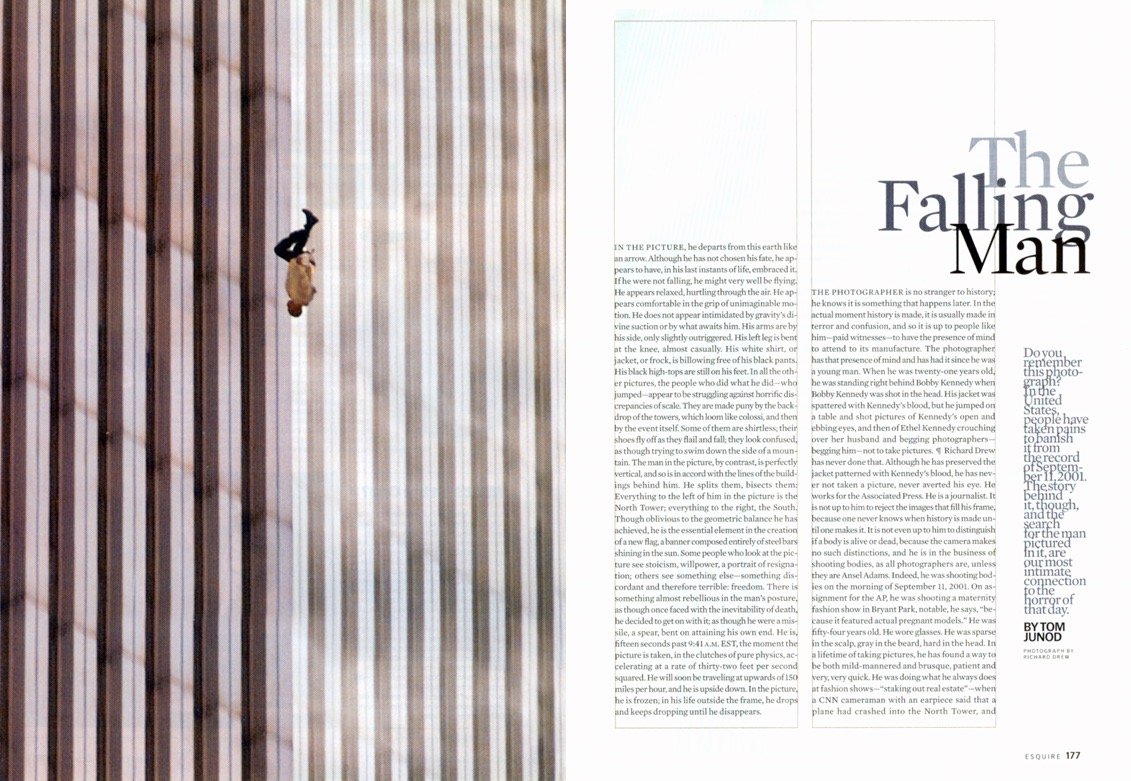



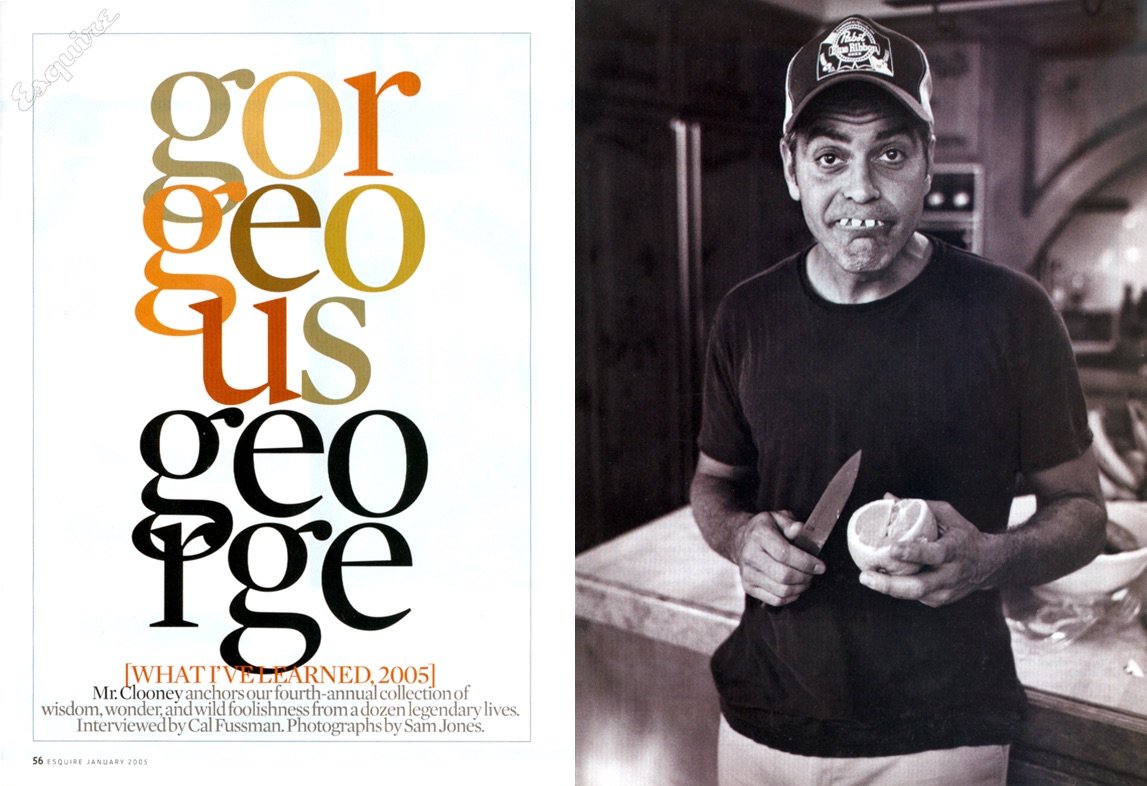
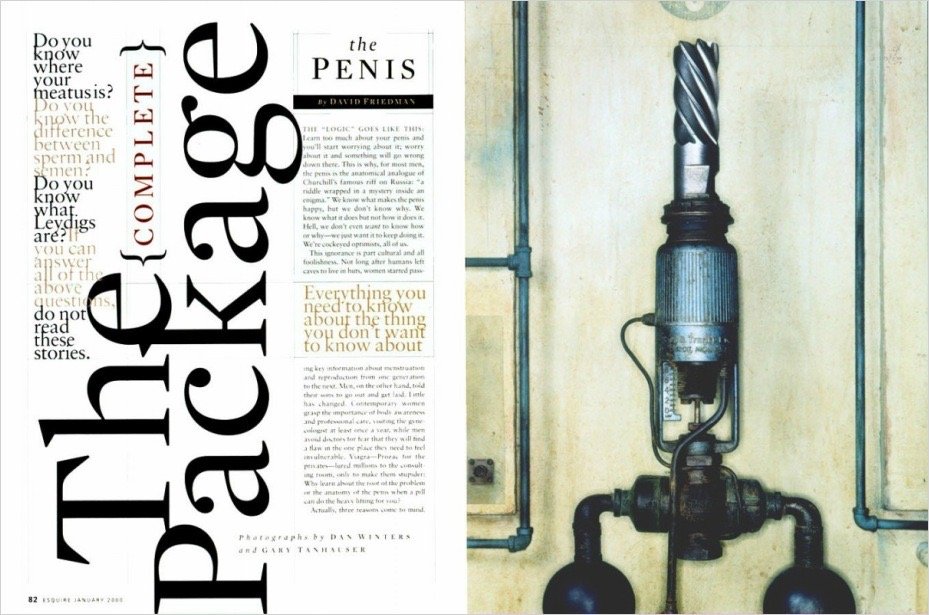
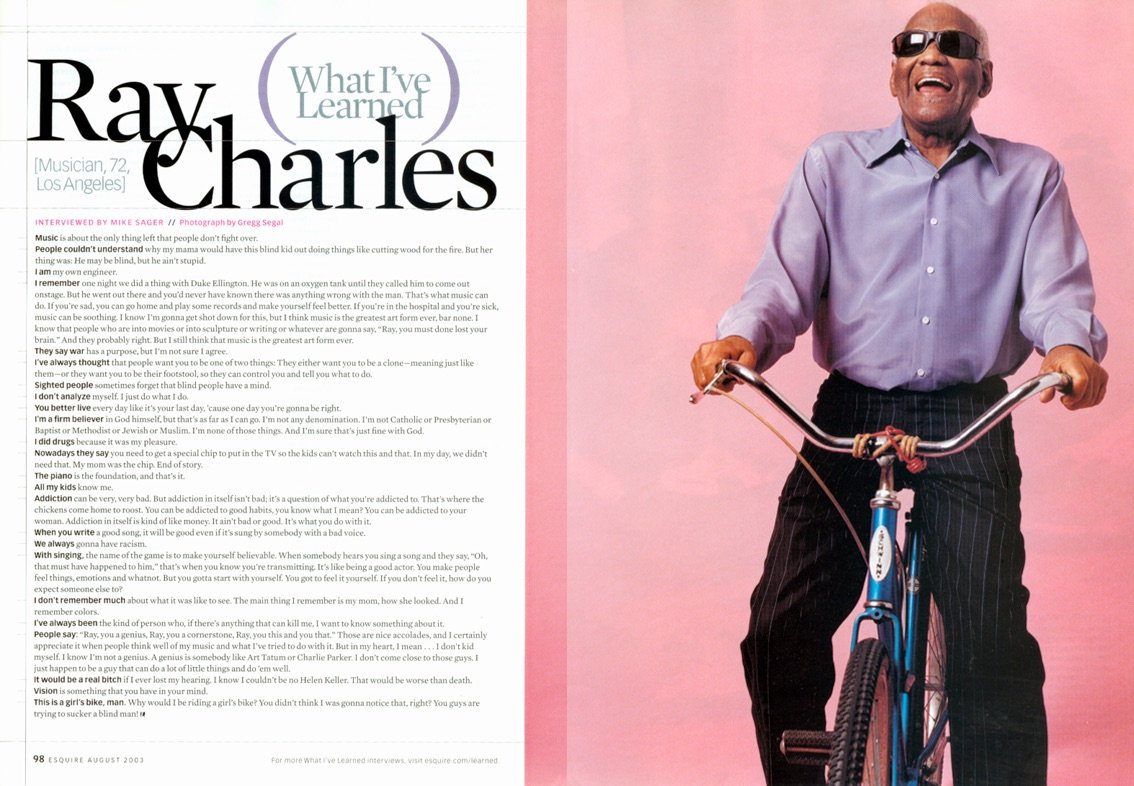
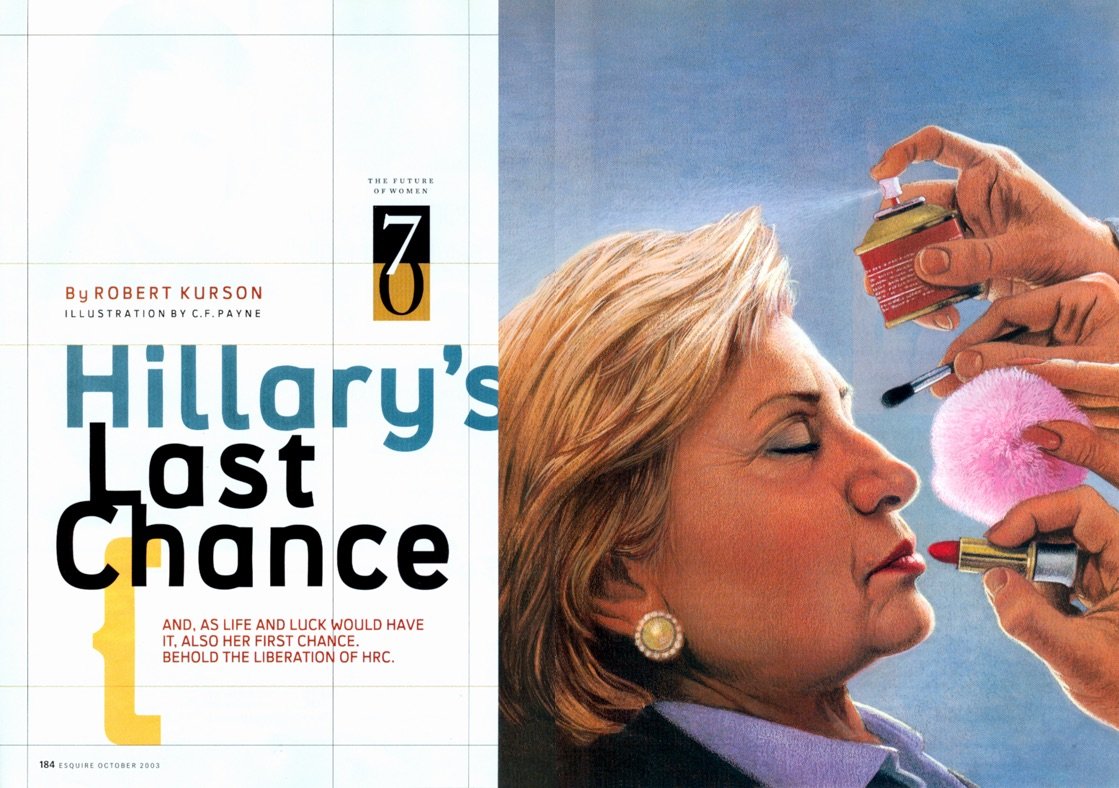
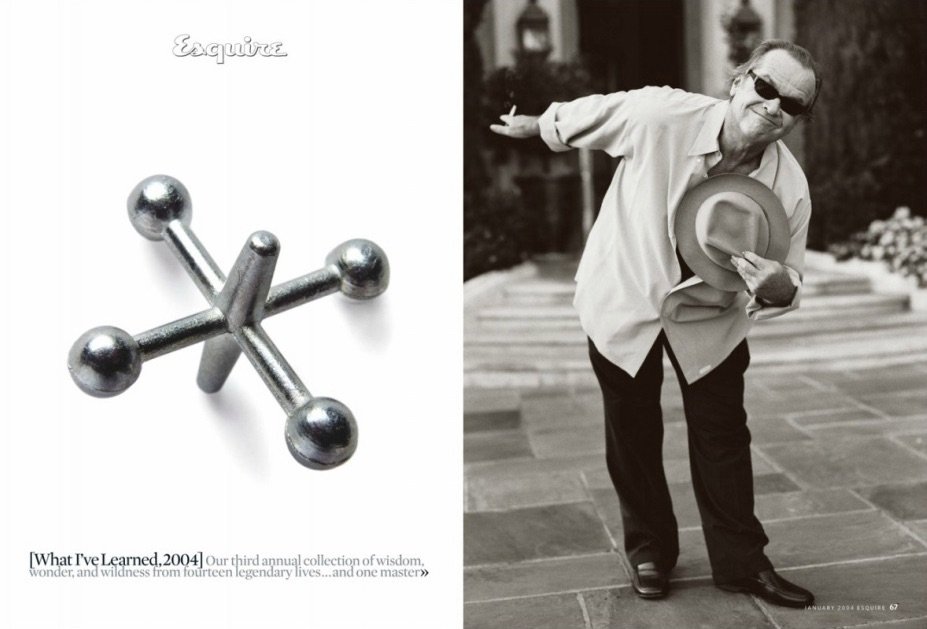

Granger’s early Esquire work
Sean Plottner: Okay, so then let’s get to Esquire. You apparently wrote a letter to Cathie Black.
David Granger: Yeah, I’d been at GQ for five-plus years. I mean, a great opportunity. I got to work with all these amazing writers that I brought into the magazine, but I was eager to try to run my own show and I kept auditioning for editor-in-chief jobs.
Internally I was considered for the Details job, which went to Michael Caruso. I auditioned for a couple of those, including the top job at Civilization, the magazine of the Library of Congress. And my advice to them was they should stop using both the words “library” and “congress” if they were going to have a successful magazine. I don’t think I was offered that job.
But all this time I’d been thinking about Esquire, longing for Esquire. It’d been my first magazine as a man, and I’d kept a very close eye on it. And it was dying when I was at GQ. I mean, GQ was kicking its ass, especially in terms of fashion advertising.
Men’s Health had come on the scene and was kicking its ass in terms of a lot of the lifestyle stuff and active living stuff. It was dying. And it was also badly run. It was not a good magazine. It was very New York-centric. It looked down its nose at its readers. And I read this story on the front page of the business section of The New York Times, about the then-editor of Esquire, and the first sentence was, “Ed Kosner is going to miss this office.”
And it was basically prophesying the departure of Ed and maybe the demise of Esquire. And I’d been watching and longing for Esquire, but that kind of kickstarted me. And I started writing this letter to Cathie Black, who’d just recently become the new president of Hearst Magazines, explaining that I knew three things that none of the previous three editors of Esquire had been aware of. And that those three things were a formula for Esquire’s success.
And so I wrote this letter and just agonized over it. And I was so freaked out about how to get it to her. I didn’t want to give it to the messenger service at Condé Nast, because you know, who knows what happens to it. So I walked it over to the address on the masthead of Esquire. And I just assumed that’s where Hearst was. Of course, they were in a separate building, so I left it with the guys at the desk down there, and only later realized it was the wrong building. Went back and grabbed it from them and took it over to the main tower and left it with someone who eventually got her to Cathie.
And then a couple days later, I started calling her. I just started calling her number and her secretary would say that she’d get back to me. She never did. I’d call again, I’d call again, I’d call again. Finally, at some point she picked up and I said, “Oh, hey, it’s uh, David Granger, I’m an editor at GQ. I wrote you a letter about Esquire. I was just wondering if you’d be interested in talking with me?”
And there was this pause, this long pause. And then she said, “Not really.”
“Nobody who makes $11,000 is buying me a drink.”
Sean Plottner: Oh! Roasted!
David Granger: And then she went on to say that she was very supportive of all their editors and there are no plans for any changes and blah, blah, blah. So I was devastated because I was on the verge of turning 40 and I figured either the magazine was going to go out of business or somebody else would get it. And by the time that person failed, I’d be too old to get the magazine. I had all those thoughts.
But there was no way for me to make another approach. And, like, a year later, this guy started calling my office. Ed Kosner got fired and some guy named Michael Wolf kept calling my office. He wasn’t the media guy. He was a consultant who worked for Booz Allen Hamilton, and I didn’t know who he was, so I kept telling my assistant to take a message.
He called like five times. Then it was 5:30. My assistant was gone, and the phone rings. I pick it up and he says, “Oh, it’s Michael Wolf.”
And I said, “Oh, I’m so sorry I didn’t get back to you. How can I help you?”
He said, “I was just wondering if you wanted to have lunch with Cathie Black tomorrow.”
I was like, “I’m really sorry I didn’t get back to you!”
And the next day I had lunch with Cathie. And it was one of the most intimidating lunches I’ve ever had. It was in the corporate dining room at Hearst, and there was a guy with a thing in his ear and I thought he was, like, security or something. Turns out he was just the guy who ran the dining room. I was intimidated! And we go in and we sit at William Randolph Hearst’s boardroom table on the corner, with waiters and all this kind of stuff. And it was fantastic conversation, like an hour and a half. Really intense.
But at the end of it she said, “Well, do you have any thoughts?”
And I said, “Yeah, I’m just glad I wrote you that letter.”
And it was clear to me she had no idea what I was talking about.
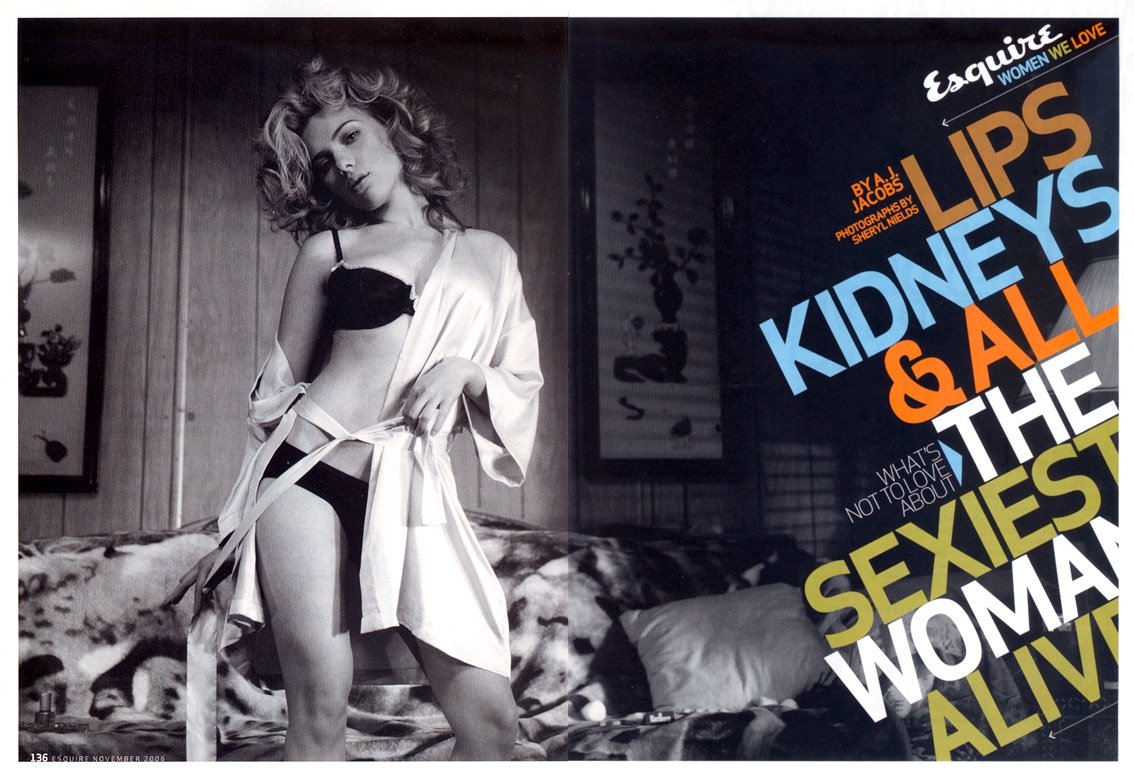
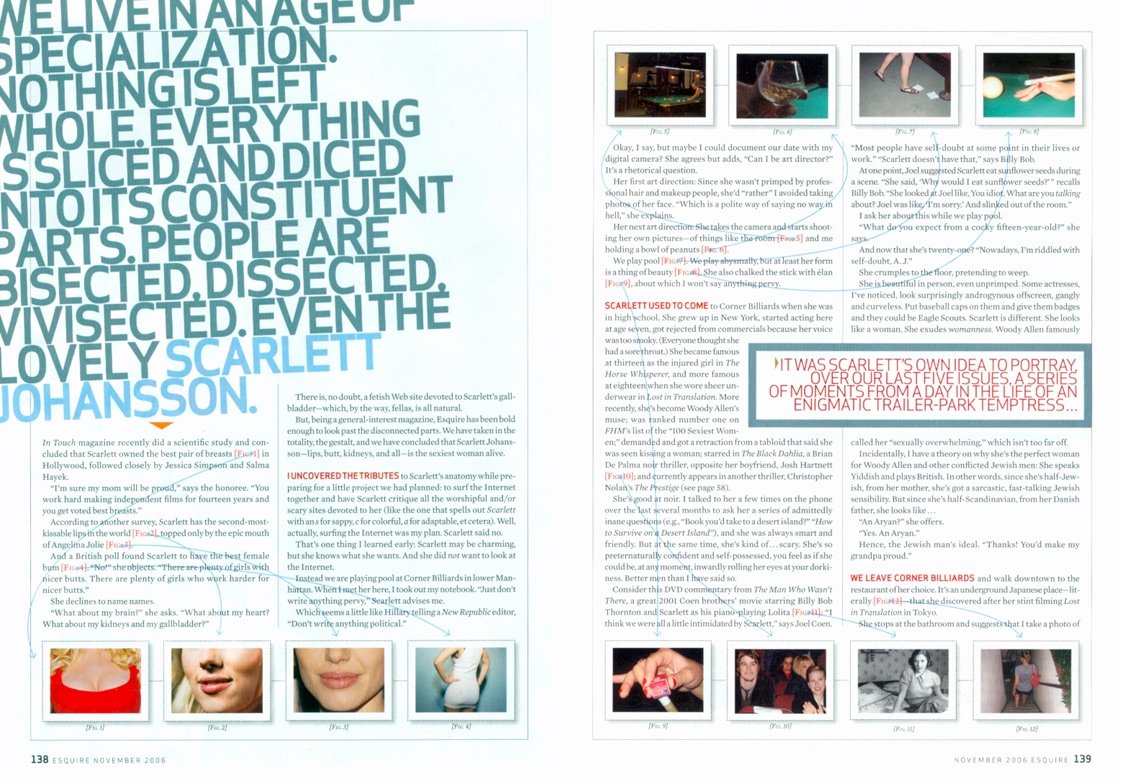
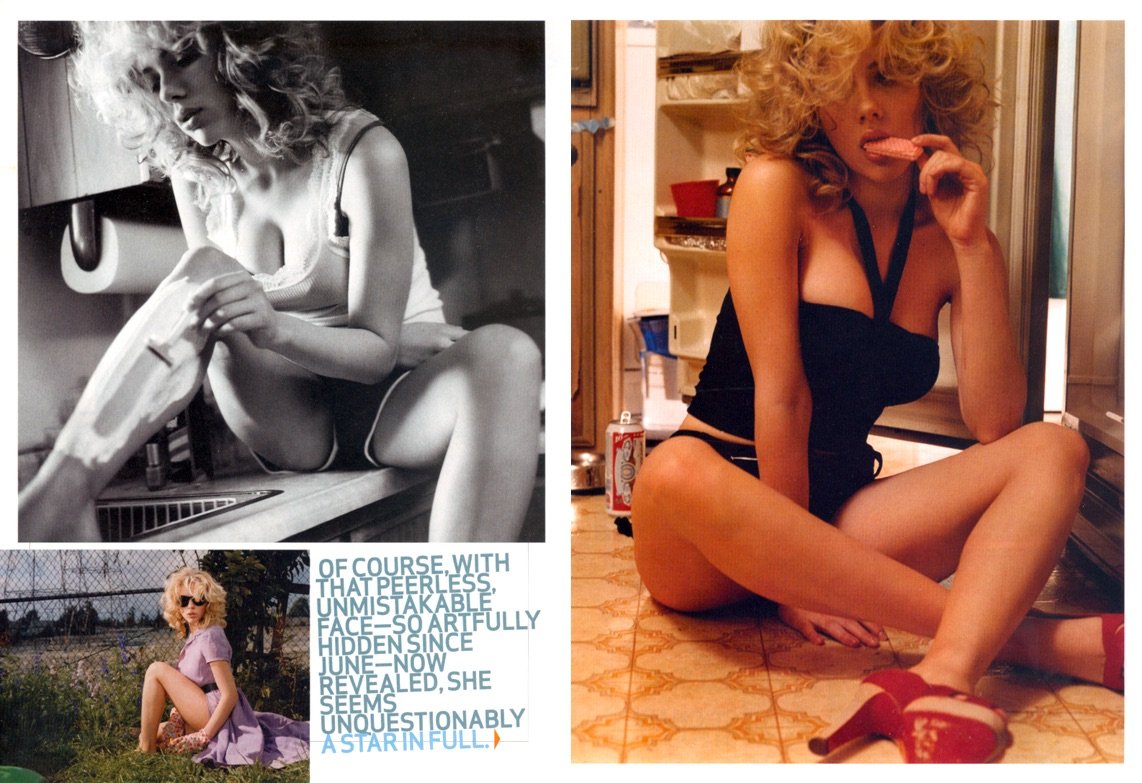
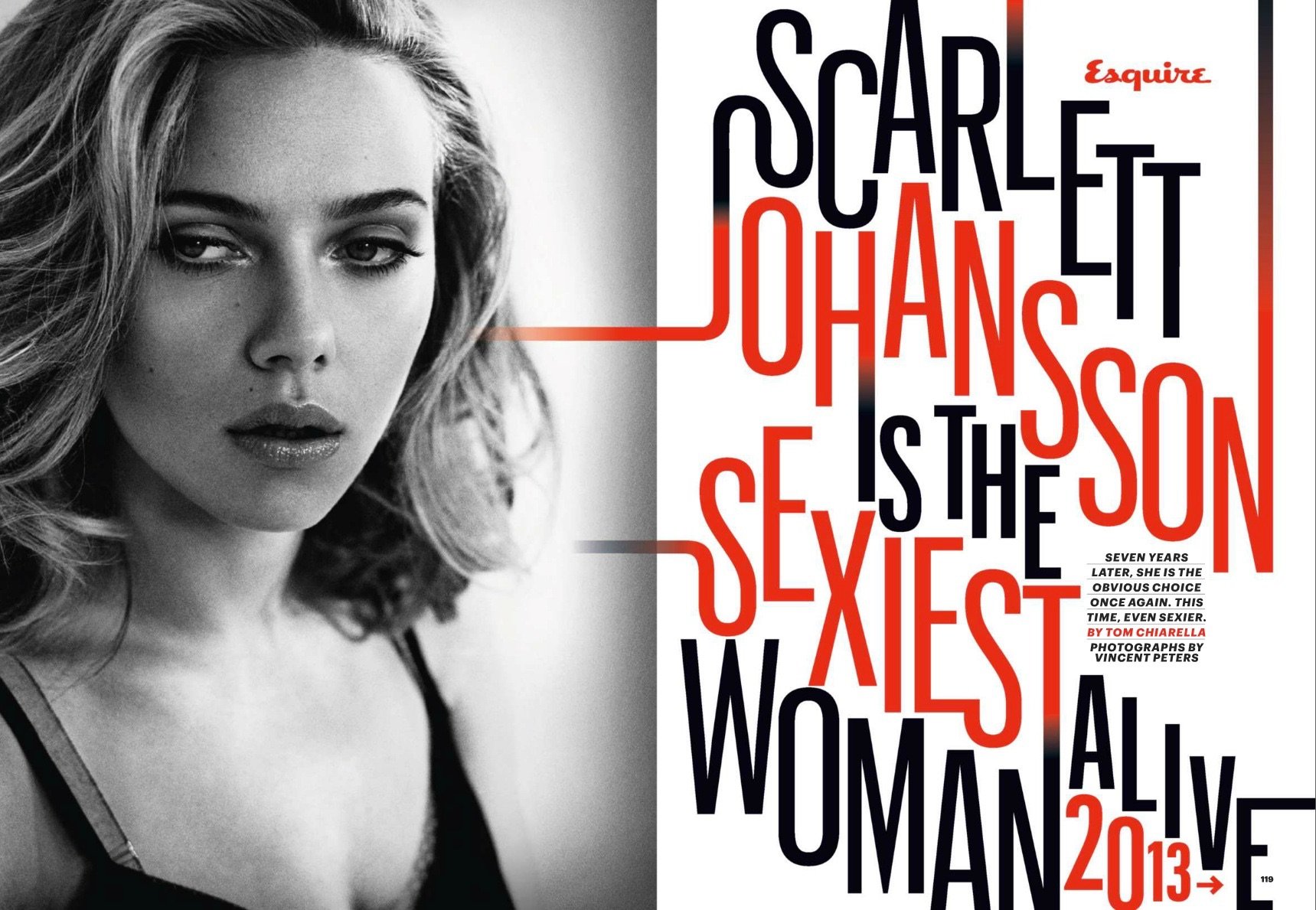


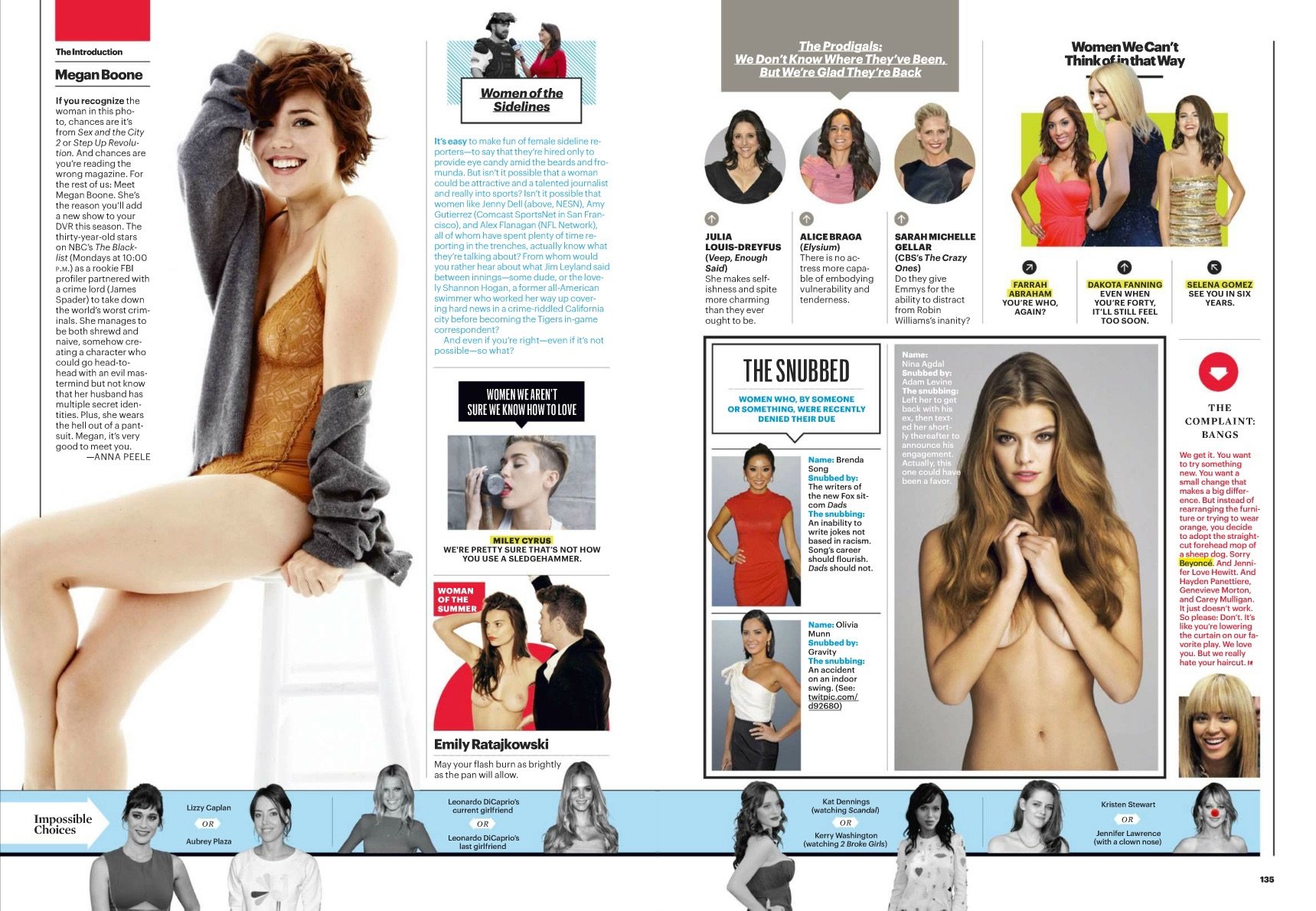
Sean Plottner: Wow. Those three things didn’t matter. Whatever they were.
David Granger: I don’t remember what they were, but they found the letter later and it became part of their PR that I had had the gumption to write this letter.
Sean Plottner: Yep. Yep. It’s a rags-to-riches story. So you get to Esquire, you’ve got the job. Pretty exciting I would imagine.
David Granger: Yeah, it was my life, man. I was 40 years old.
Sean Plottner: Well, and you saw a magazine that was broken and needed to be fixed. You had a plan, you fixed it. What did you learn quickly that maybe you hadn’t been told about that job? What were the big surprises, if any?
David Granger: Before I got into that job, I knew exactly what I needed to do. Cathie had asked me to write up a plan and part of that plan was I had to write and annotate my first three tables of contents. I had to explain my cover strategy and what my first three covers would be.
All this kind of stuff I knew exactly what to do. But you get in there and you start having meetings with circulation people and ad salespeople, and they all know exactly what you’re supposed to do. And it’s not anything like what your idea was. You know? It’s like they know because all these things have been tried over and over again for 60, 70, a hundred years.
They know exactly what doesn’t work. They just have no freaking idea what does work. But the thing that any young editor is going to be faced with is that everybody second guesses you. You have two issues when they go, “Oh, that’s interesting. And that’s interesting.” And then on the third issue, it’s pure second guessing. Every meeting is called to tell you what you’re doing wrong.
And that’s the thing you don’t understand. You think you’re going to get a long runway. And you get to execute. And really for the first couple issues, the cupboards were bare, man. There was not a single story! We were supposed to be putting out the fashion issue. There hadn’t been a single fashion portfolio shot. There was not a cover planned. And we had, like, four weeks to get that issue closed. We had to beg, borrow, and steal.
So any thought you have that you’re going to plan anything is—and then of course, I fired everybody the first day I got there. And so I had like four people helping me try to put out a magazine in four weeks.
And so it’s just pure panic. And then you’re getting second-guessed every day of your life. So it takes a while and you have to be under the threat of being fired, before you just decide, “I’m going to do what I’m proud of because I’m going to get fired anyway.”
But, luckily, I made a couple of good hires. I hired Peter Griffin, who is the smartest man alive, the best editor I’ve ever worked with, and he agreed to come on on a temporary basis. And then I hired writers, basically all of whom moved over from GQ to Esquire. So I had a core group of people that I could bounce stuff off of. And then Lisa Hintelmann came over from GQ and I finally got Helene Rubinstein, who was at another Condé Nast magazine, to come over.
And we assembled a little core of a support group and things started to happen. But it was like three years before anything good really happened. And I’ve got to tell you, I guess there was a little bit of patience, but that patience ran out by the time of my second budget meeting. My first budget meeting—I got the job in June and the budget season always starts in September. So a year from that first September, I’d done 15 issues and we’d done a couple questionable covers. But the cover that was on the budget book was my Mr. Rogers cover. It was like Fred Rogers. This was a long time ago. And it was shot by Dan Winters. So it was an eccentric photo. And it was Mr. Rogers. I mean, it was Mr. Rogers.
It was the Heroes Issue. And it was a really good issue. But we got into that budget meeting, and we go through it, and everything’s fine. And Cathie says to my publisher and everybody else, “Valerie, you guys can go. David, would you stay for a minute?” And she and her number two, Mark Miller, are sitting there and they pick up the Fred Rogers cover and they go, “What the fuck are you doing?”
Sean Plottner: Wow. Welcome to the neighborhood.
David Granger: Yeah. And that was when I realized that I was not long for Esquire magazine, but I managed at that point to kind of nut up and do the things that I really wanted to, and the things that I thought Esquire should be doing. And I got a little more time and things really started to turn around. It took two years, but things started to turn around.

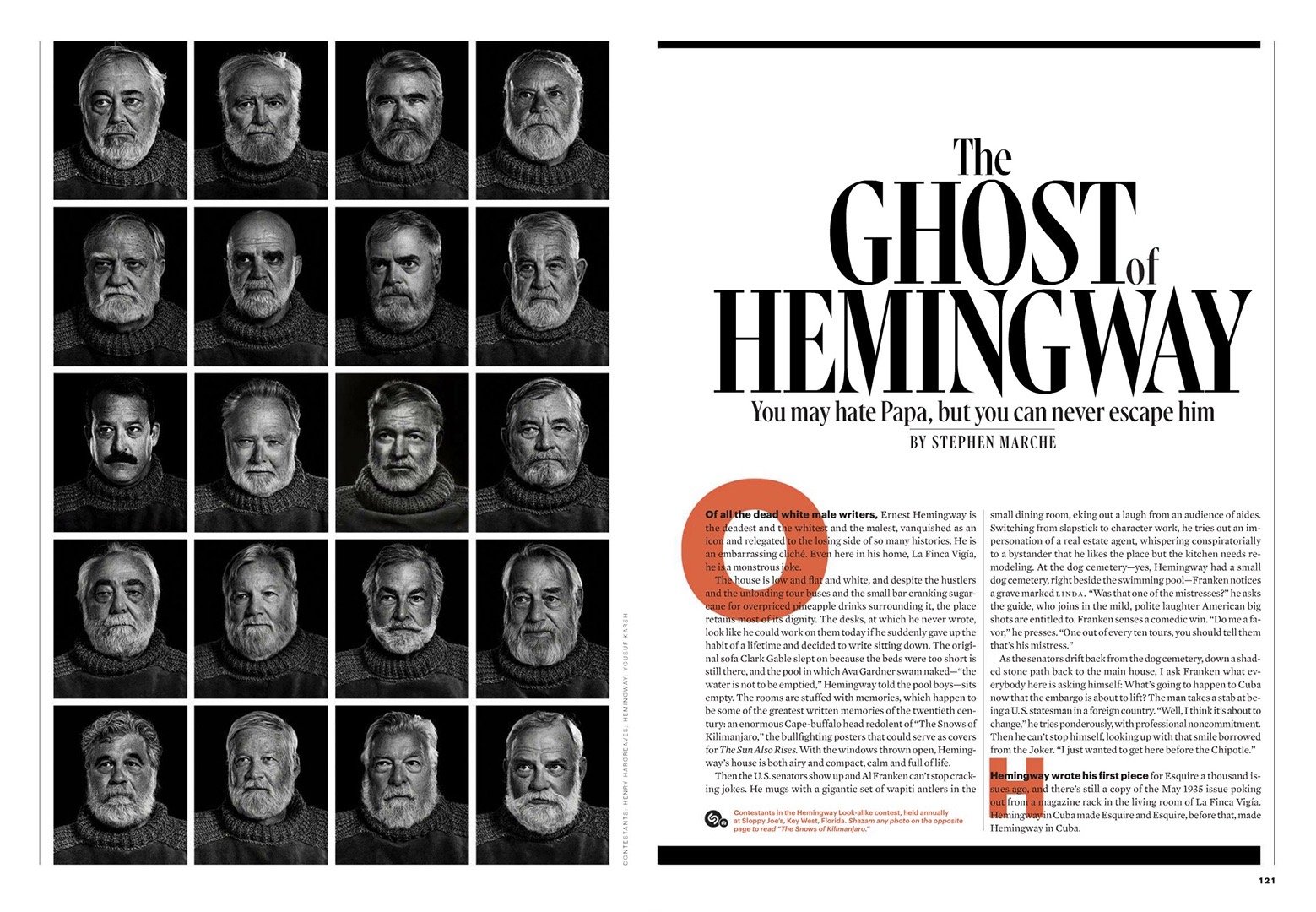

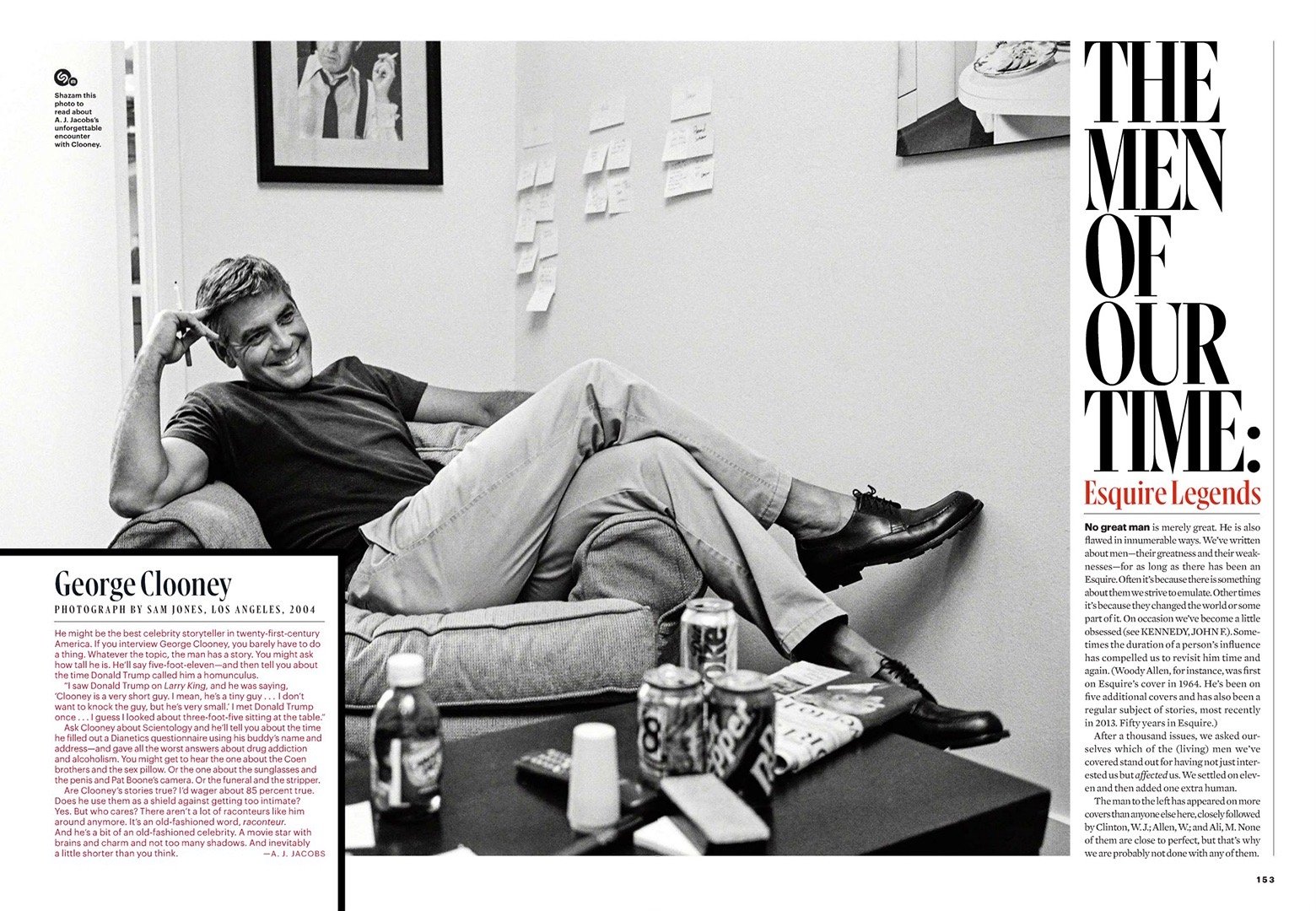
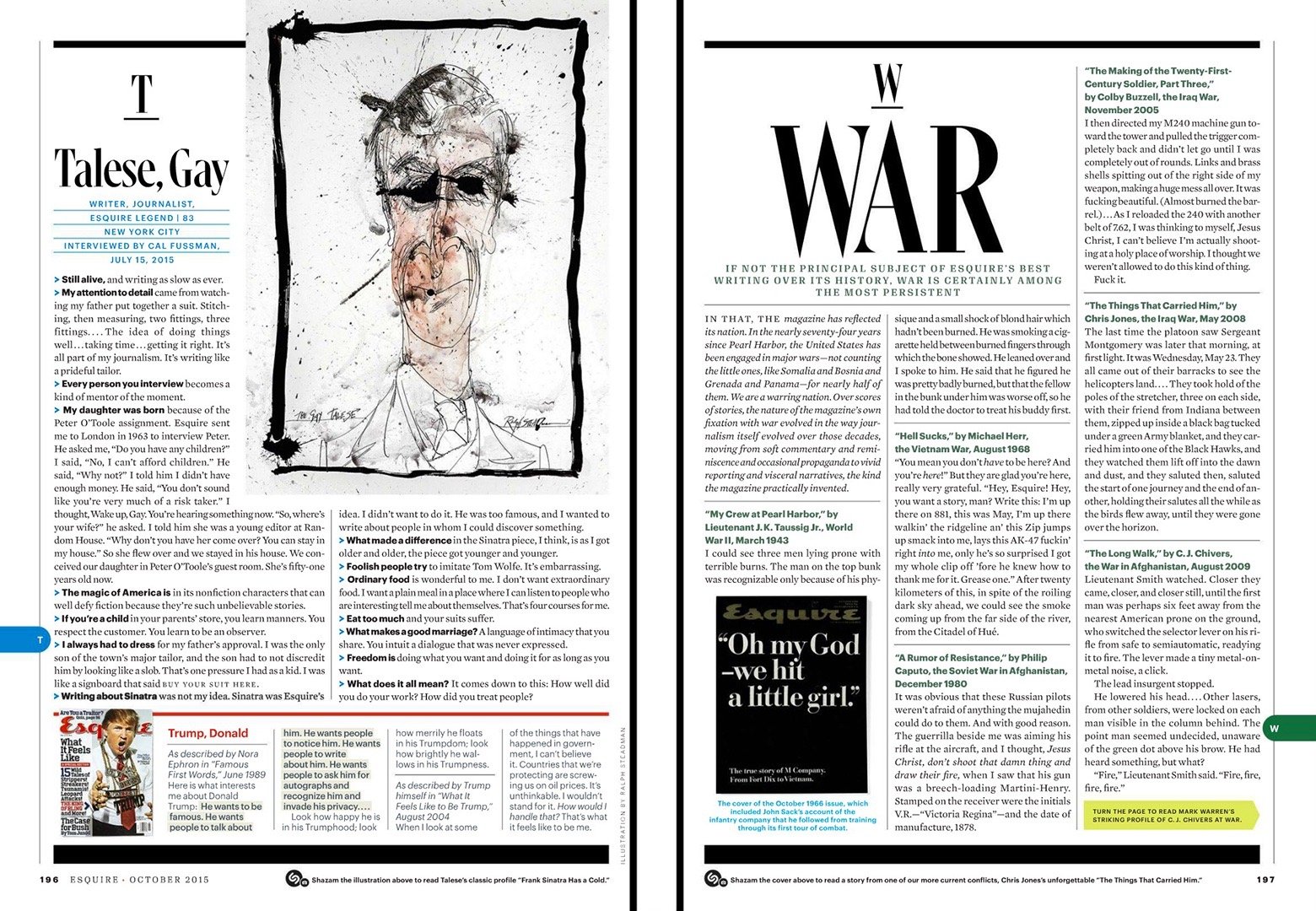
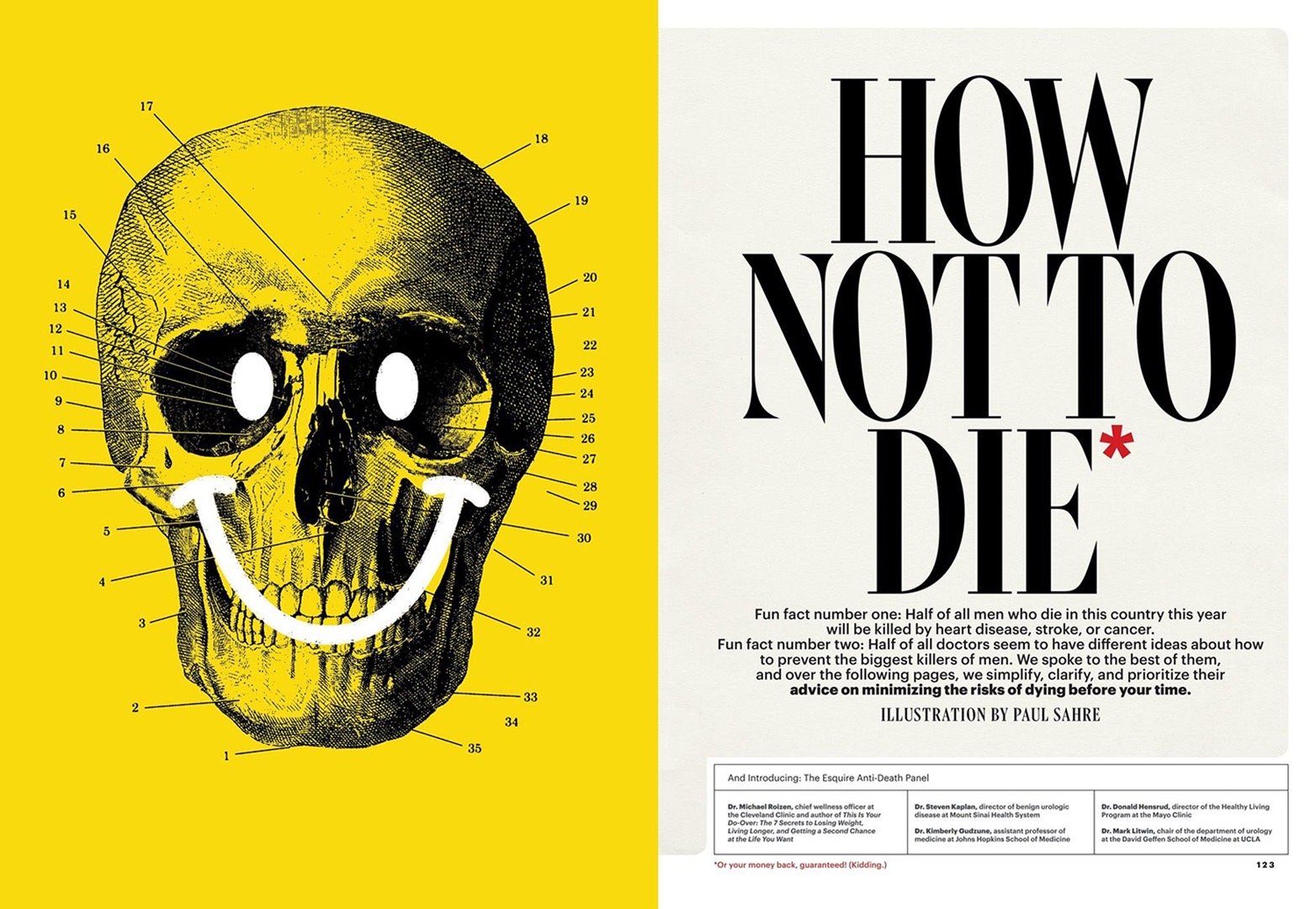
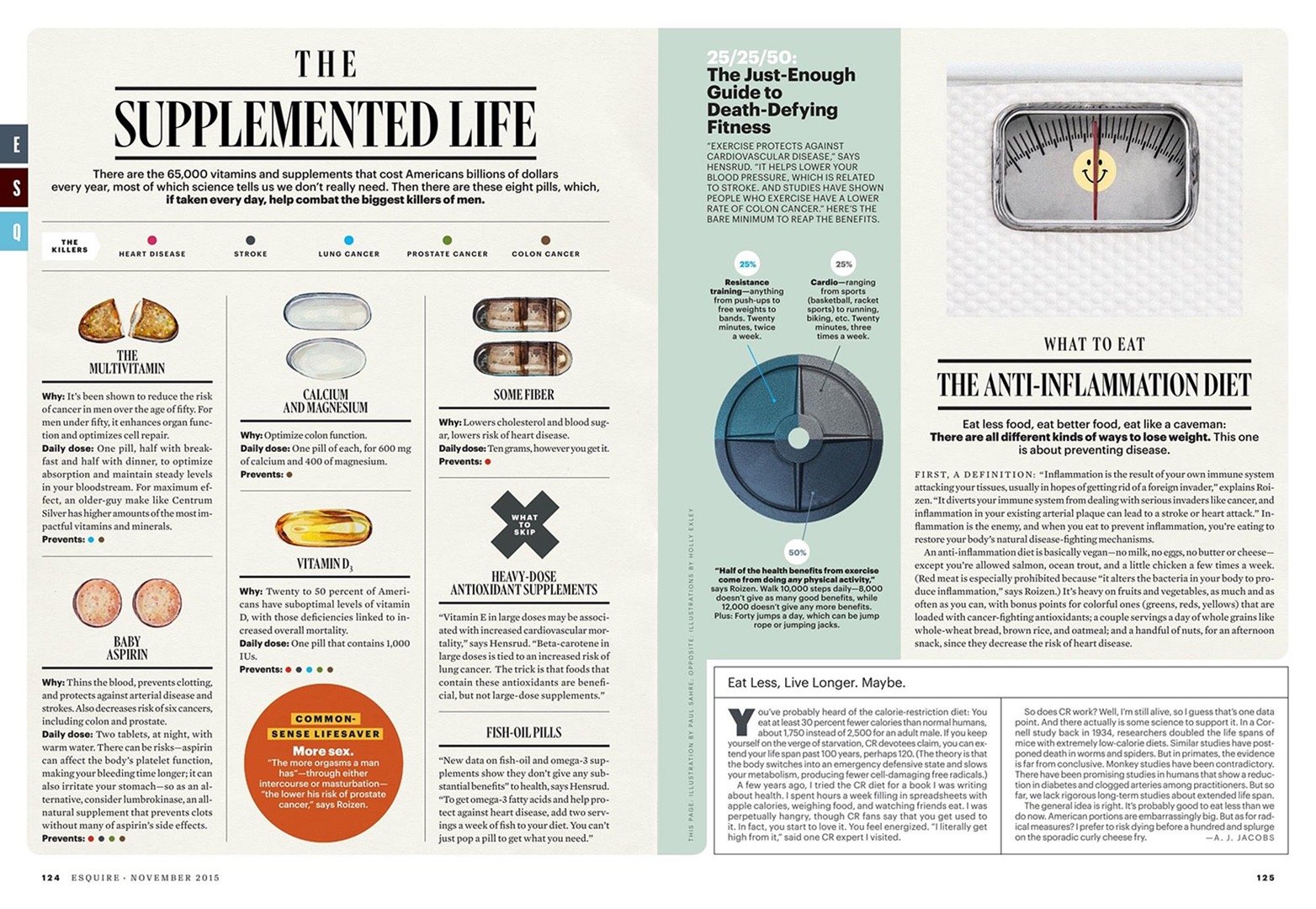
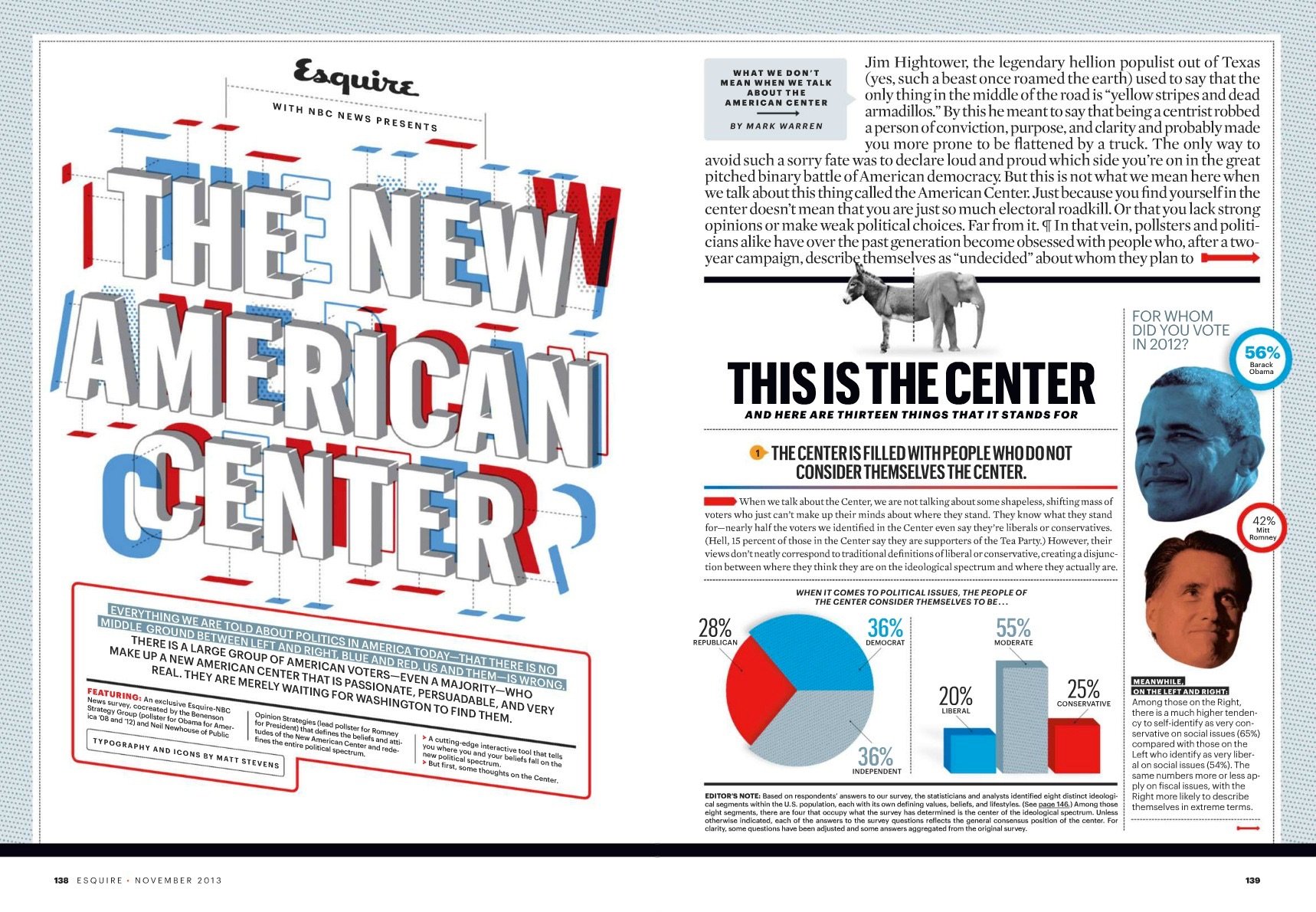

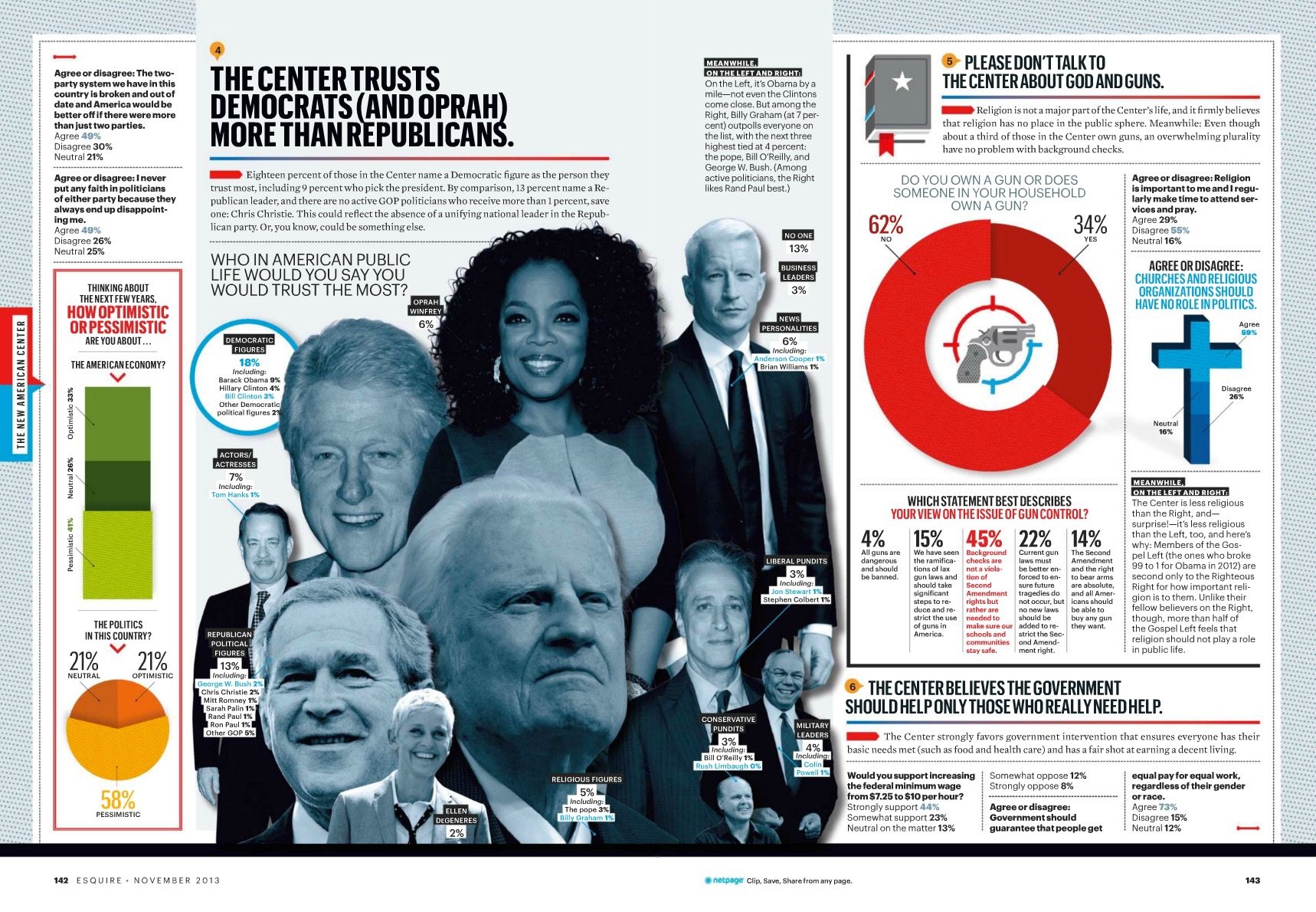

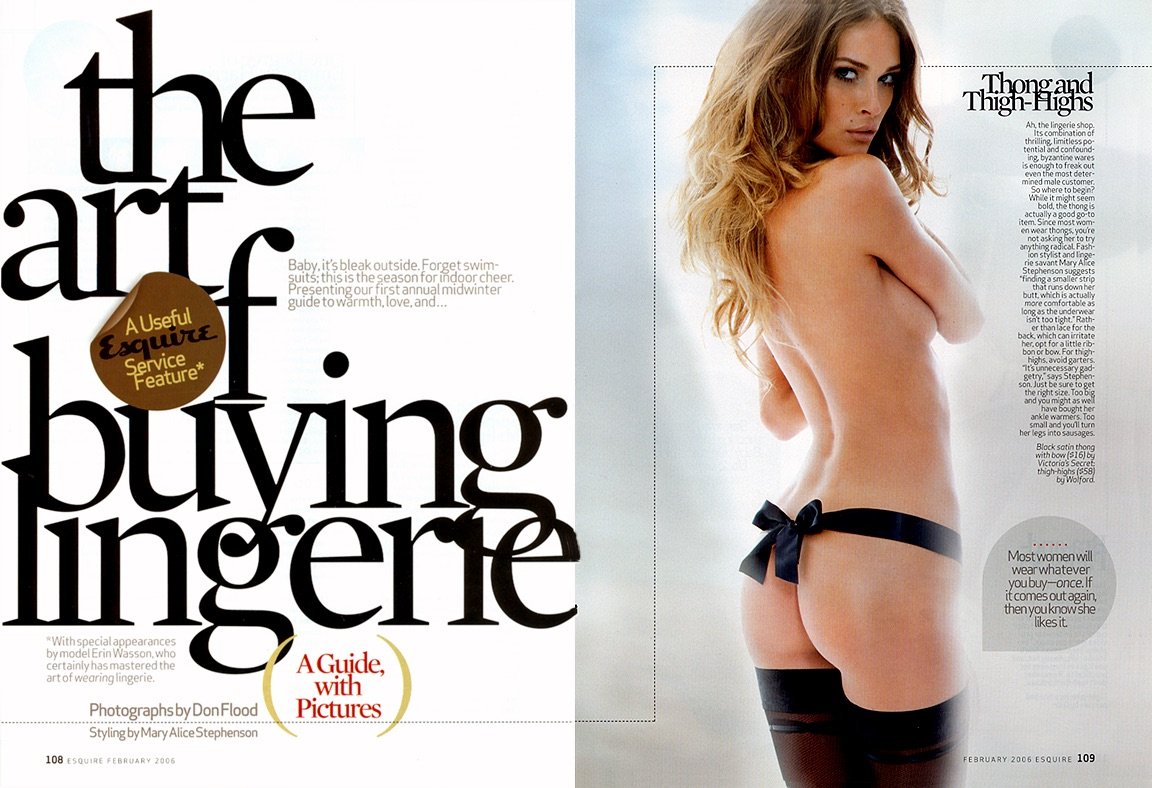
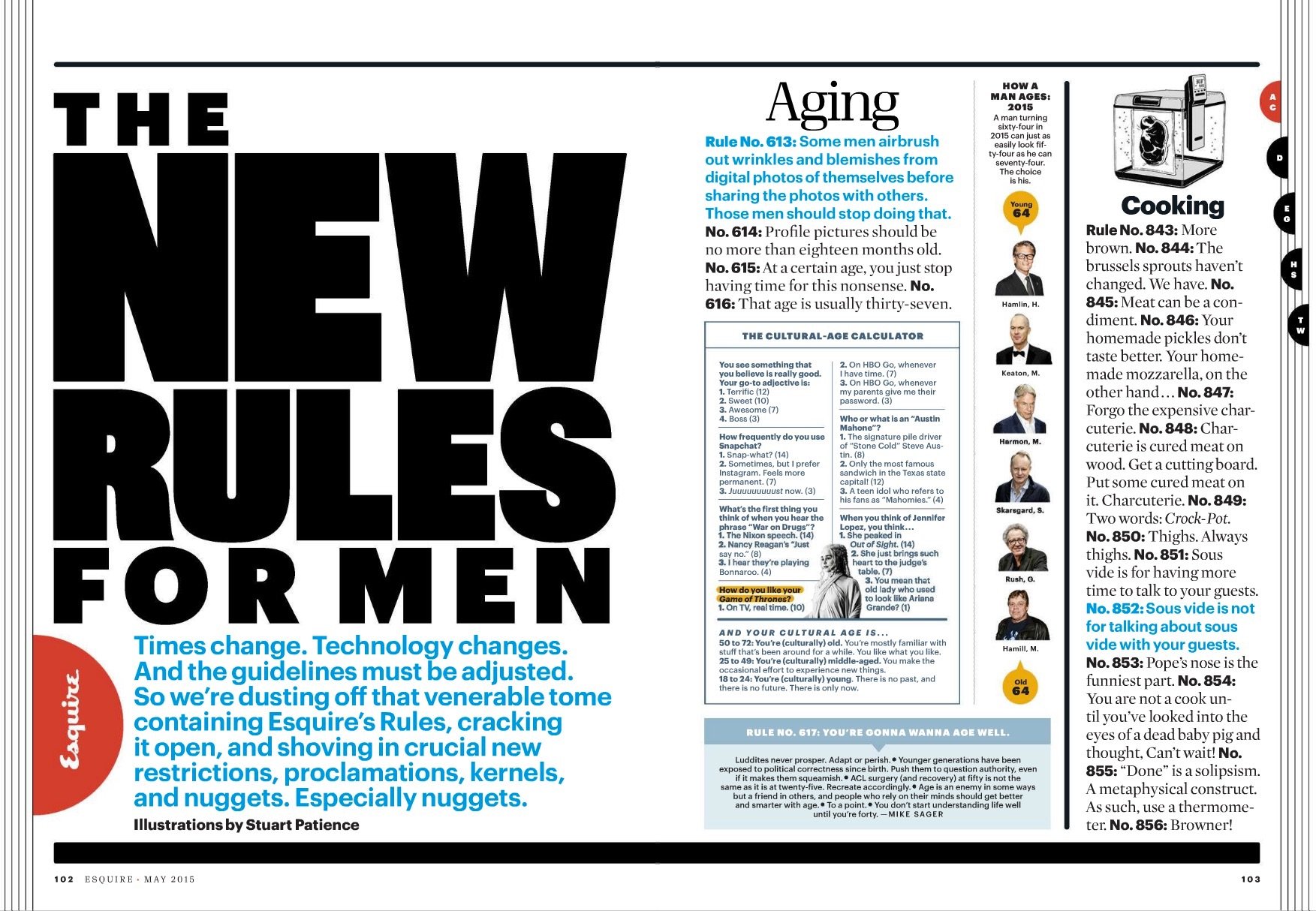


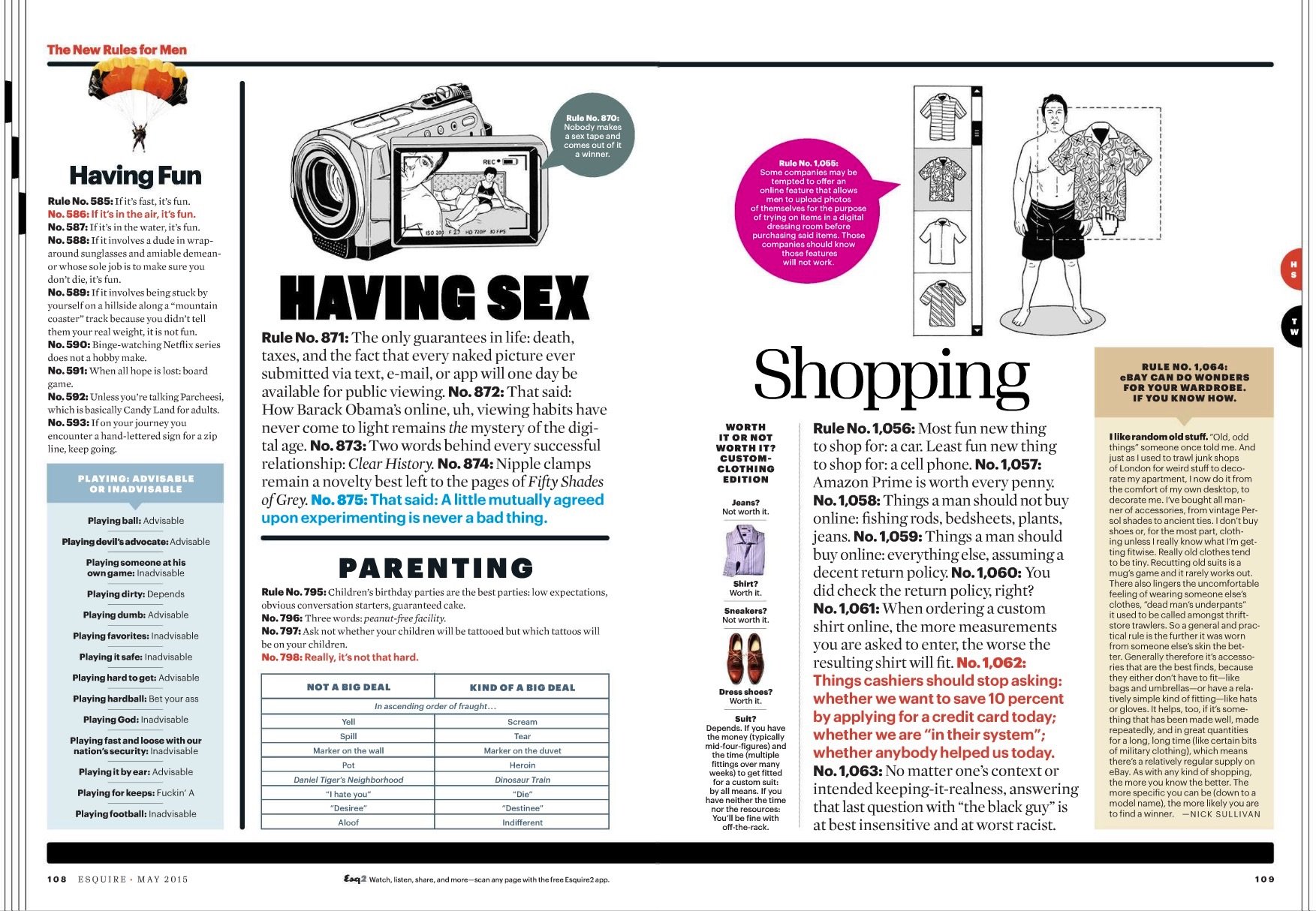
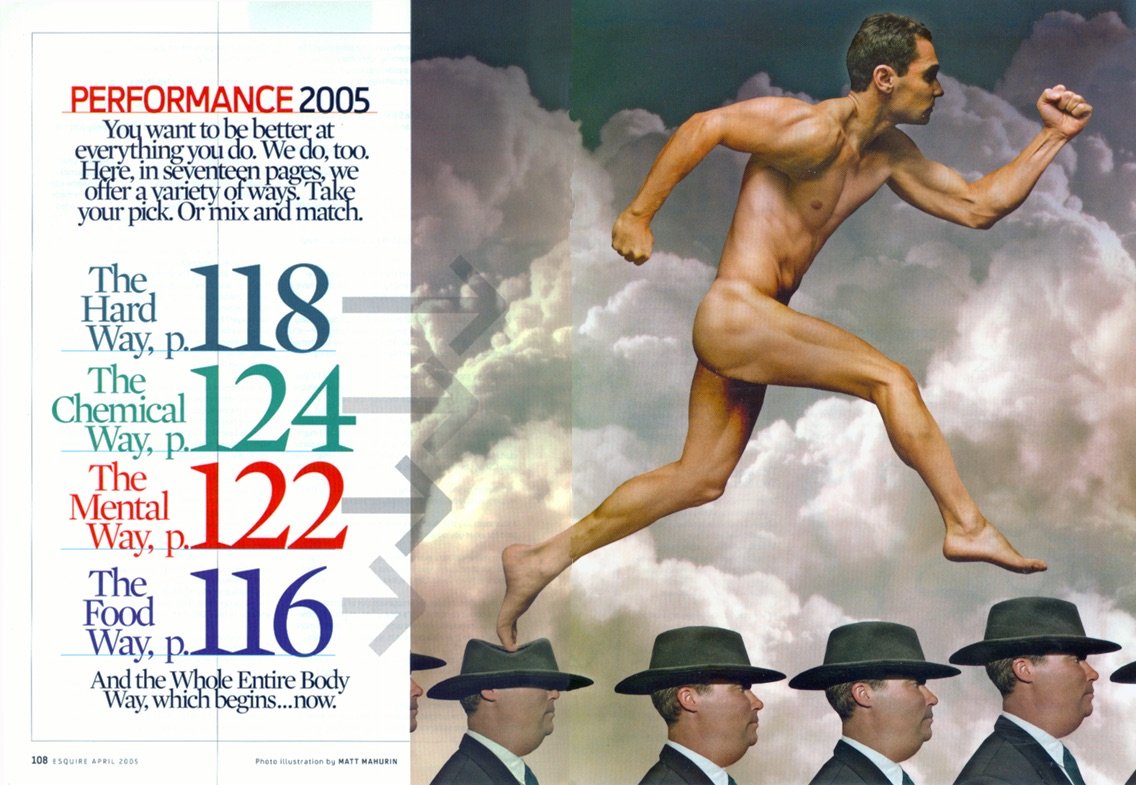


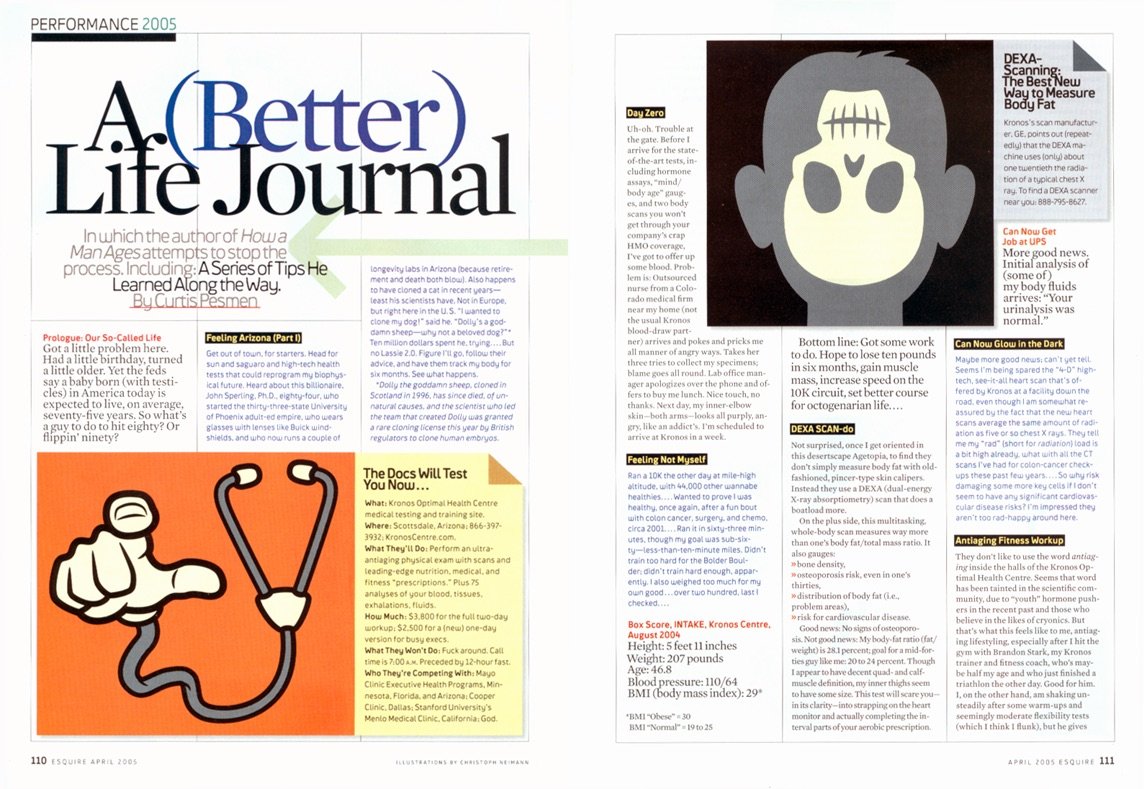
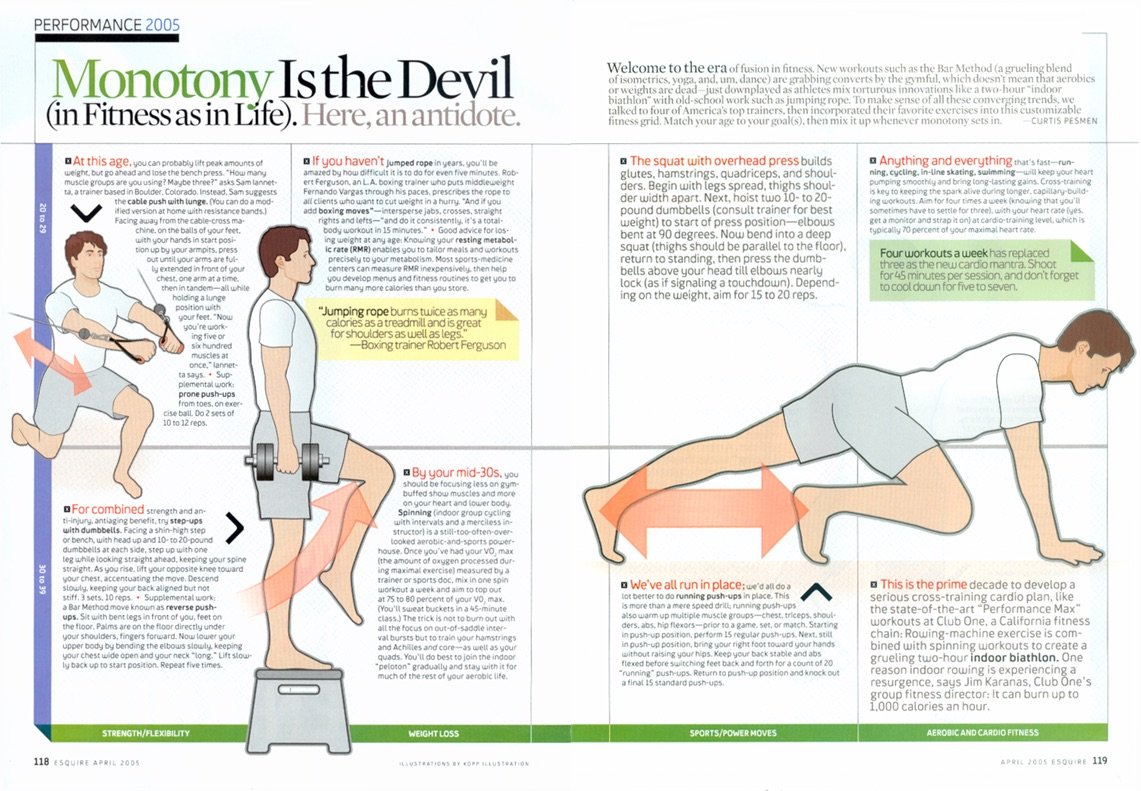
“We decided to make Esquire the laboratory for trying to figure out what a magazine was capable of beyond what magazines had traditionally been capable of.”
Sean Plottner: That’s interesting about having such a detailed plan, knowing what you wanted to do. It reminds me of the old [Mike Tyson quote], “Everybody has a plan until they get punched in the face.”
David Granger: That’s exactly right.
Sean Plottner: Yeah. And that’s very interesting that you had to create your own table of contents. That’s an intriguing exercise.
David Granger: That was an amazing weekend. She gave me that assignment on the Friday of Memorial Day and told me that she wanted it on Tuesday. And it wasn’t just like the TOC, it was, like, marketing plans for Esquire. It was staffing plans. It was an intense weekend. But luckily I’d been up for the Details job, I’d been up for the Civilization job, a couple others, and I had all these plans I’d written up for those people.
So I scavenged those and then I called all my writers, took them into my confidence and begged them for ideas. It was an intense weekend. But it’s helpful to have a plan, even though pretty soon that plan’s no longer of any use.
Sean Plottner: Yeah. The punch in the face. You mentioned Helene Rubinstein—I haven’t been shadowing you your entire career, but Helene hired me when I made my big move from Knoxville to New York. She hired me in 1989 at US Magazine.
David Granger: Wow.
Sean Plottner: I became a music editor and worked there for a year or so before I went over to The National. So, interesting how different paths have crossed. What was your favorite part of the job as editor of Esquire?
David Granger: There are a lot of things to love. I loved having access to most people that I wanted to talk to. I loved working with writers. I loved having a full-time staff of, like, 40 people, and then another 10 or 15 people who were regular contract people who came to me every day with stuff I should be reading, or stuff I should listen to, or ideas for what we should do in the magazine.
People were incredibly passionate about working in Esquire, but ultimately, I think starting in 2006, I love the fact that we just decided to make Esquire the laboratory for trying to figure out what a magazine was capable of beyond what magazines had traditionally been capable of.
And that was 2006. And that was just as everybody was saying that the internet was going to destroy all forms of print. And we just had to prove that that wasn’t true. And so we used things like the internet to drive more people to the magazine. We played with all sorts of insane technical innovations like the first magazine cover on which words and images moved.
Esquire’s 75th anniversary issue featured a groundbreaking “e-Ink” cover
“We just started playing with the physical properties of the magazine—paper and ink and words and images—and just seeing what we could do.”
And that was in 2008. We did the first augmented reality issue of a magazine. But even more than that, we just played with what a magazine was capable of inside. We used every bit of the magazine, like nobody since Mad magazine used the margins. So we started using the margins. We published an entire short story in the bottom margin of the magazine one time.
We just started playing with the physical properties of the magazine—paper and ink and words and images—and just seeing what we could do. We once did three covers on this issue about the State of the American man, and we had images, up close facial images, of Justin Timberlake, George Clooney, and Barack Obama, all shot by Martin Schoeller. And we perforated the three of them so you could just tear them apart and create 27 different faces of what the American man looked like. I mean, it was simple stuff, but nobody did it.
And we just had a billion freaking ideas. We created our own apps to turn magazine content, not web content, into something that could be shared on Twitter or emailed or texted or whatever. It was amazing the amount of video we did, especially when we had the iPad app and the iPad was going to be the “salvation of magazines.”
We did movie trailers for every issue—of a print magazine! We just had so much fun. And I think the ability to just play with possibility was the best thing about my job—and the people who helped me with it: Peter Griffin, David Curcurito, my design director, Rich Dorment, and all the young editors, Ryan [D’Agostino] and Ross [McCammon] and Tyler Cabot, and everybody.
It was just a laboratory man. It was fun.
This 2009 cover was the world’s first “augmented reality” issue. Below, an introduction to Esquire’s new iPad app.
Sean Plottner: Yeah, that’s a wonderful way of putting it: Playing with possibilities. You certainly did, it was fun, innovative. I remember your iPad app—if it was even called that when it first came out—was extremely innovative for its time. The digital cover. Very interesting and fun stuff.
How hands-on were you with copy? Writing headlines? Captions? Did you have people doing all that and you’re signing off on it? What was your role with that?
David Granger: It depends on what kind of copy. I was very hands-on with the little stuff because the little stuff is the most important stuff.
Of course, headlines and subheads are incredibly important because that determines, in a lot of cases, whether people are going to read anything. But, like, captions, and all the little tiny items that are in the front of the book, and all the marginalia we started doing. That’s the stuff that everybody’s going to read because it’s short, it’s easy.
And there was a guy who ran Entertainment Weekly named Jim Seymore—back in the nineties, I guess—and it was one of the great magazines because he demanded such excellence from all the little stuff. I remember admiring that so much. The big stuff, it’s hard in its own way, but it’s the little things that people are going to remember or they’re going to enjoy and it establishes not just a voice, but a whole environment of entertainment. You want a magazine to be an enjoyable entertainment experience and it’s those little things that do that.
When it came to feature stories, Peter Griffin and I—Peter had worked at Time Inc., and you know that was editing by committee at Time Inc. A story would go through three layers, at least, of editors before it hit the page.
And Peter and I wanted our editors to be responsible for their own stories. Their writers had to see them as the ultimate arbiters of it. That’s what we wanted. We backstopped them. Peter did an amazing job helping people with their edits on things. And I read and approved everything. And sometimes I was hands on.
By the end I was only editing one or two writers full-time. But I read everything and, if necessary, I would try to help. But yeah, I was pretty hands-on on everything. Especially anything that was display. Like working on covers? Best day of the month. Me and Curcurito and Griffin would sit in Curc’s office, order lunch, and sometimes that day would stretch into three or four days.
But those were the funnest days ever. Especially because covers always suck. They suck and they suck and they suck, until they don’t. You know? At some point they stop sucking.
“We just loaded it up. The type became the point of the cover. It was like, ‘This is a magazine of ideas and words. Let’s show that on the cover.’”
Sean Plottner: Tell us about how you guys came up with those crazy type covers. I think that was starting around 2006. The wall of type.
David Granger: Yeah, that was right around that time. It was like 2006. So we had this guy, Daniel Craig, who was going to be on our September cover. And it was a big chance—that was before he’d become Bond. The reason we’re putting him on the cover was because he was going to be in his first Bond movie. And the word out of England was: “This guy sucks.”
So we do a photo shoot with him and the photos are miserable. The guy has one facial expression: these pursed lips. And I’m thinking, “This is a failure!” But on the other hand, I looked back at the cover before it, and it was just one of those “magazine” covers. John McCain was on the cover, and it had a number on it, and it had some traditional magazine cover lines.
And I was so sick of that. And I knew Daniel Craig was going to fail because he was going to be the worst Bond ever, and he had this pursed-lip look on his face, right? And so I went into Curcurito’s office and I was like, “You’re going to have to save this.”
And he goes, “What do I do?”
And I go, “Look, I want you to create something that looks like the Vietnam War Memorial behind Daniel Craig. I’ll give you all the words. You just create this wall type and I want it to look like the Vietnam War memorial.”
And he goes, “Okay, okay. Give me the lines.”
And I wrote all these sentences. They weren’t sentence fragments, like most cover lines are. They were full, complete sentences like, It’s been five years since 9/11 and nothing’s happened. And we’re still pissed off. Lines like that. You know, like full sentences. And I gave all these lines to Curc. And it’s a lot of words. And about an hour later comes into my office and he goes, “I don’t understand.”
And I go, “Come on man, like the Vietnam War Memorial.” And I stand up in front of the wall. And I’m like, “Just words all over.”
He goes, “I’ve never seen the Vietnam War Memorial.”
And so we started calling up pictures of Maya Lin’s masterpiece. And he was like, “Oh.”
And so he started doing that. And then he varied the sizes of the types and the emphasis. And we created this wall of type behind Daniel Craig, and it did amazingly well.
And for the rest of the time we were there, with certain exceptions, we just loaded it up. The type became the point of the cover. It was like, This is a magazine of ideas and words. Let’s show that on the cover! We have this famous person, but let’s show what we’re about in the words that are adorning and overwhelming the cover.
And then we did stuff like, we blew out the Esquire logo so that it couldn’t be contained by the cover, because Esquire’s a bigger idea than can be contained in any magazine cover—or magazine! It was like, you just start messing with it.
You were asking about—or maybe I was just blathering on about—little stuff and attention to details and stuff like that. I hated when a page only did one thing. I mean in feature stories it’s okay, but like a front of the book page? I hated when it only did one thing. It’s like an essay or something. A column. And I always wanted there to be like three or four things that were interesting on that page.
And so there was this guy, a young editor, and when I’d get particularly frustrated with a page, because it was interesting enough, I’d take it over to Nate [Hopper]. And I’d go, “Nate, would you just fuck this page up for me?” And he would. And they got really interesting.
Sean Plottner: Those covers were so memorable. I personally love them and thought they really stood out. And it’s interesting to go on the Esquire archive and look at how they’ve evolved with the different fonts and the hand drawn…
David Granger: It was like trial and error. It was experimentation. And some of them weren’t very good, but we were trying to be loud. We had this consultant guy, Steve Blacker, and the only thing any circulation consultant never said to me that stuck was Steve going, “Look, don’t just think about the newsstand…” You know, because I was saying, “Well, you know, maybe we should do newsstand covers and then do subscriber covers, so we don’t have as many cover lines.”
And he’d go, “No, no, no, no, no. It’s not just about the newsstand. It’s about the ‘homestand.’ Think about when a magazine comes into your house. It’s competing with everything that’s on TV. It’s competing with games, and every other diversion. You’ve got to draw their attention.”
And I, that made sense to me. And so we made our covers as loud as they could be.
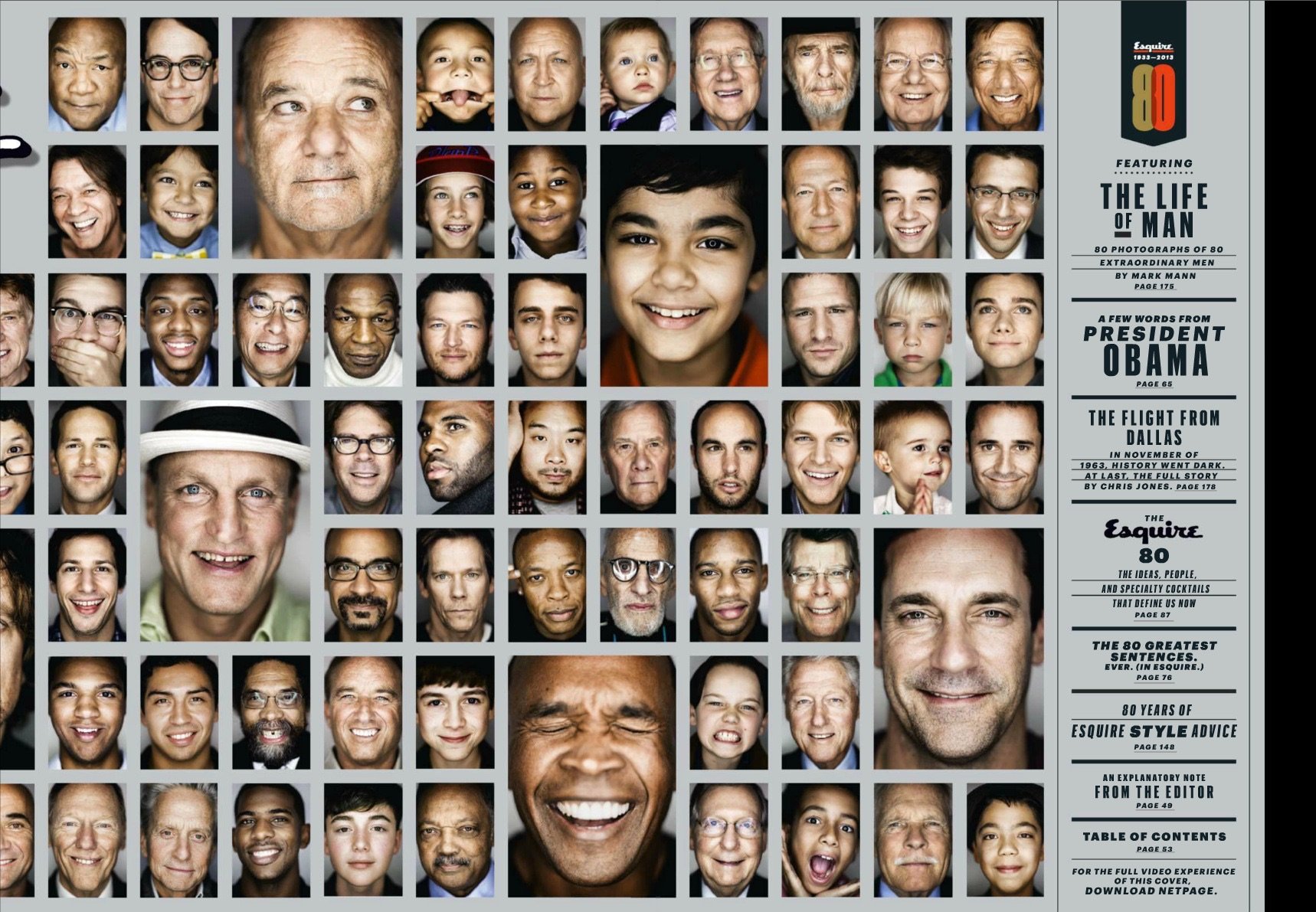
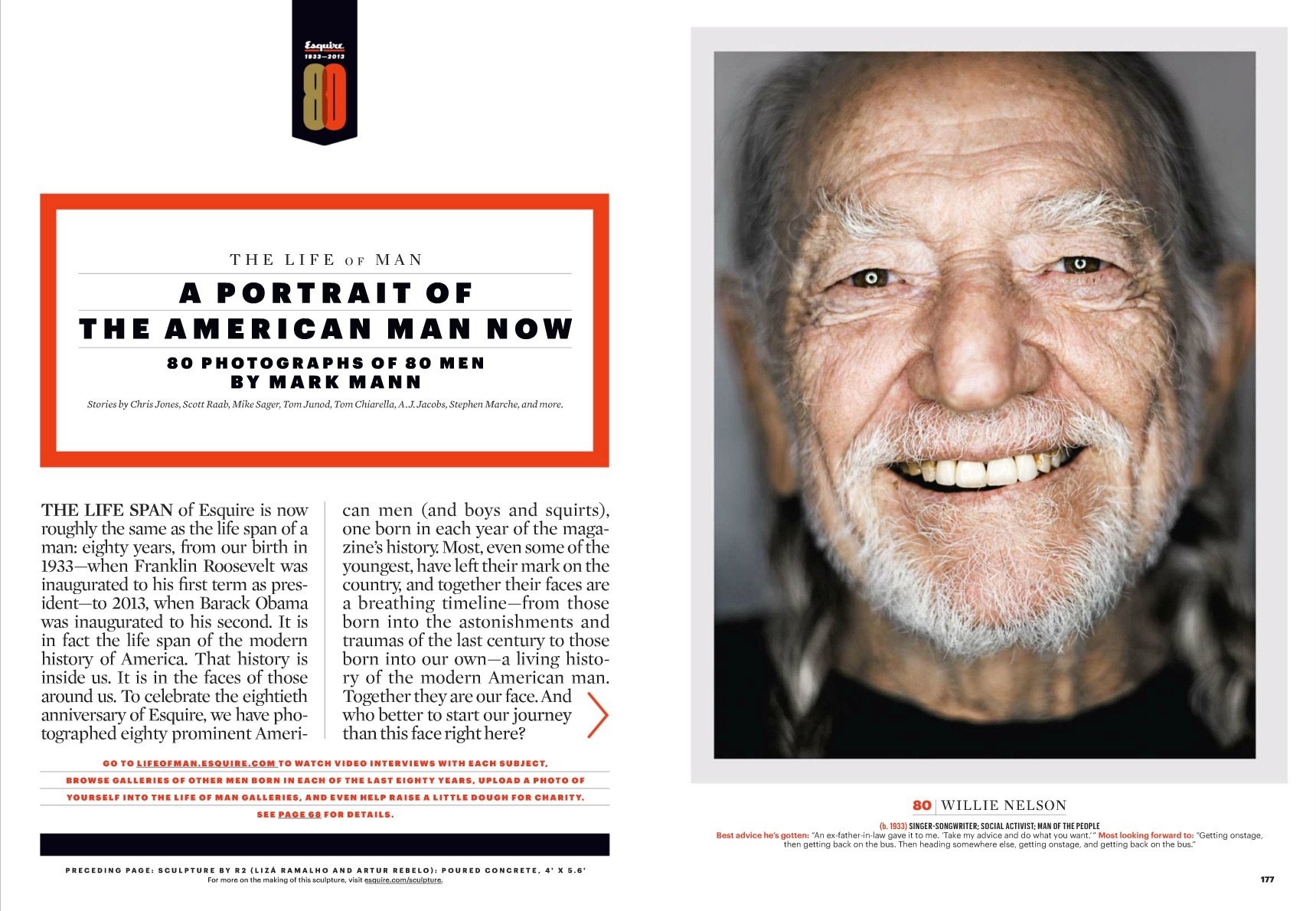


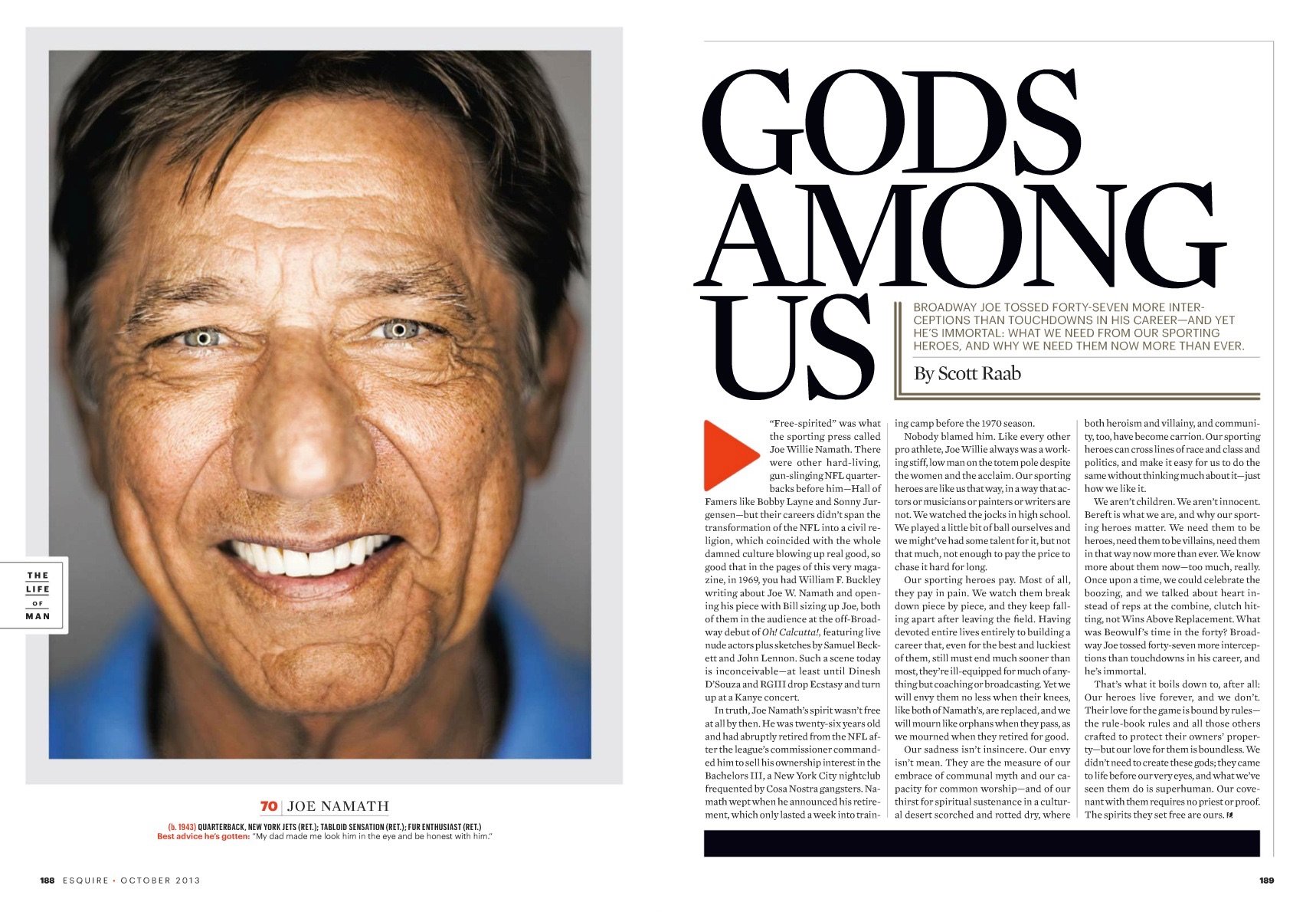
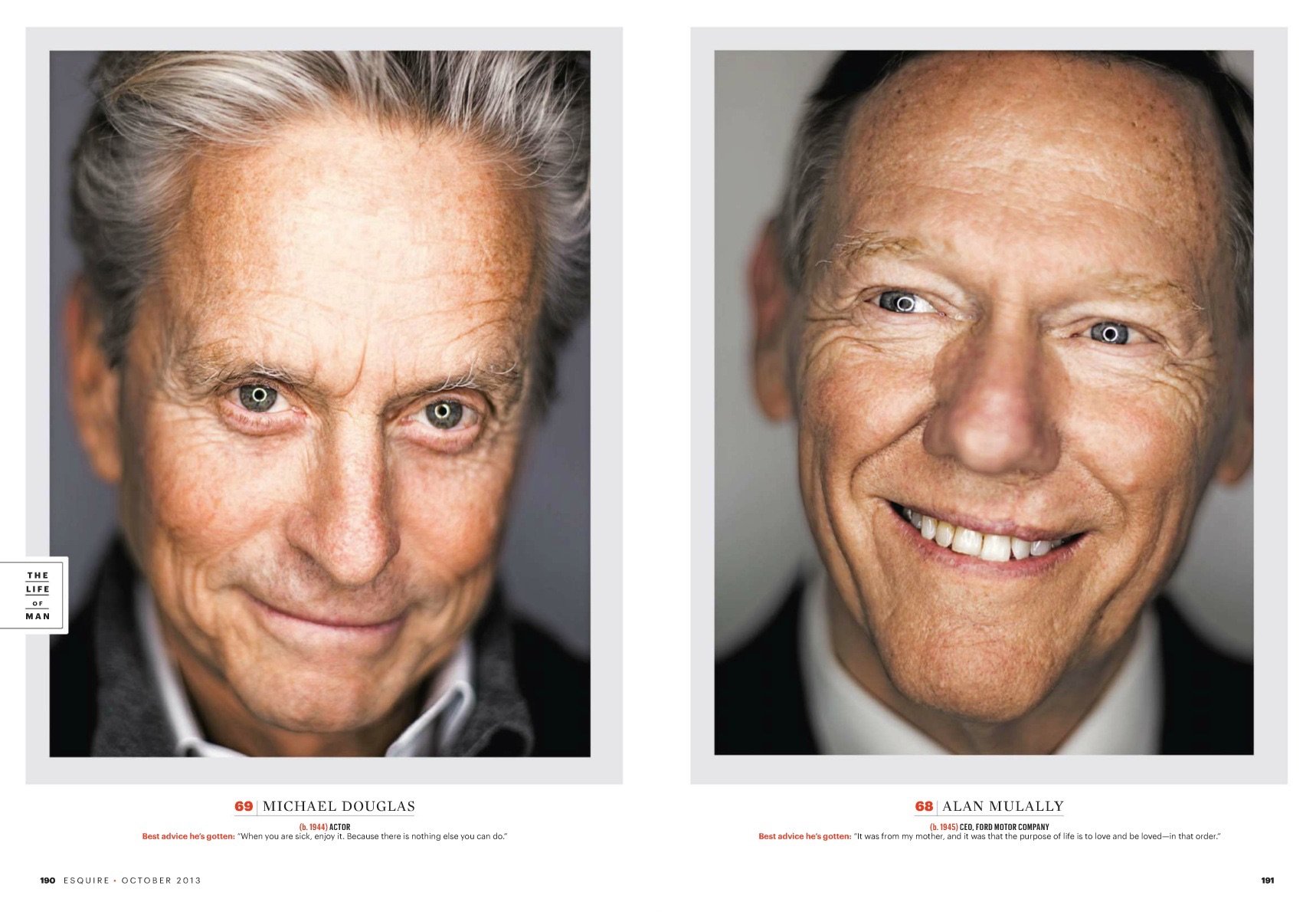
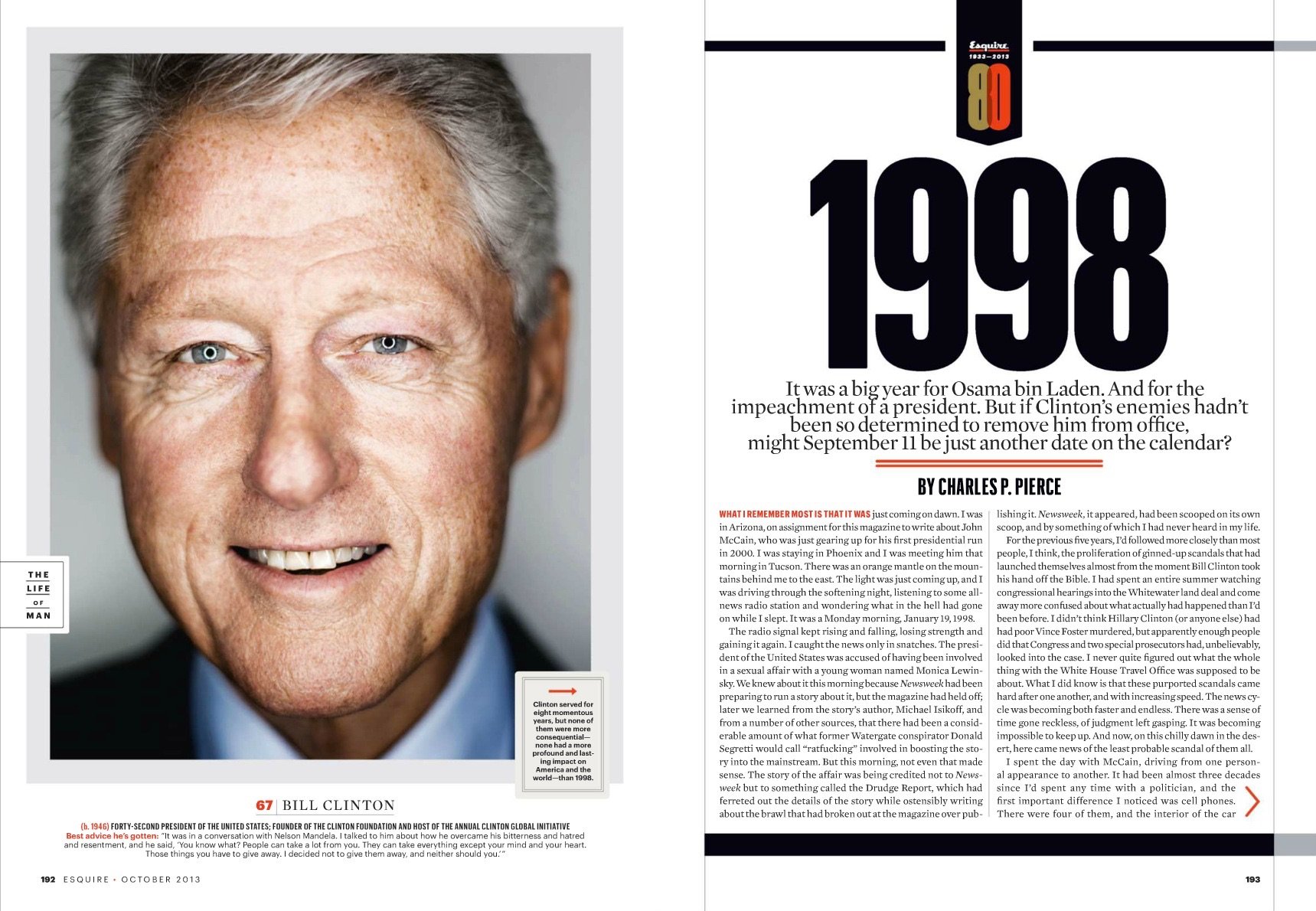
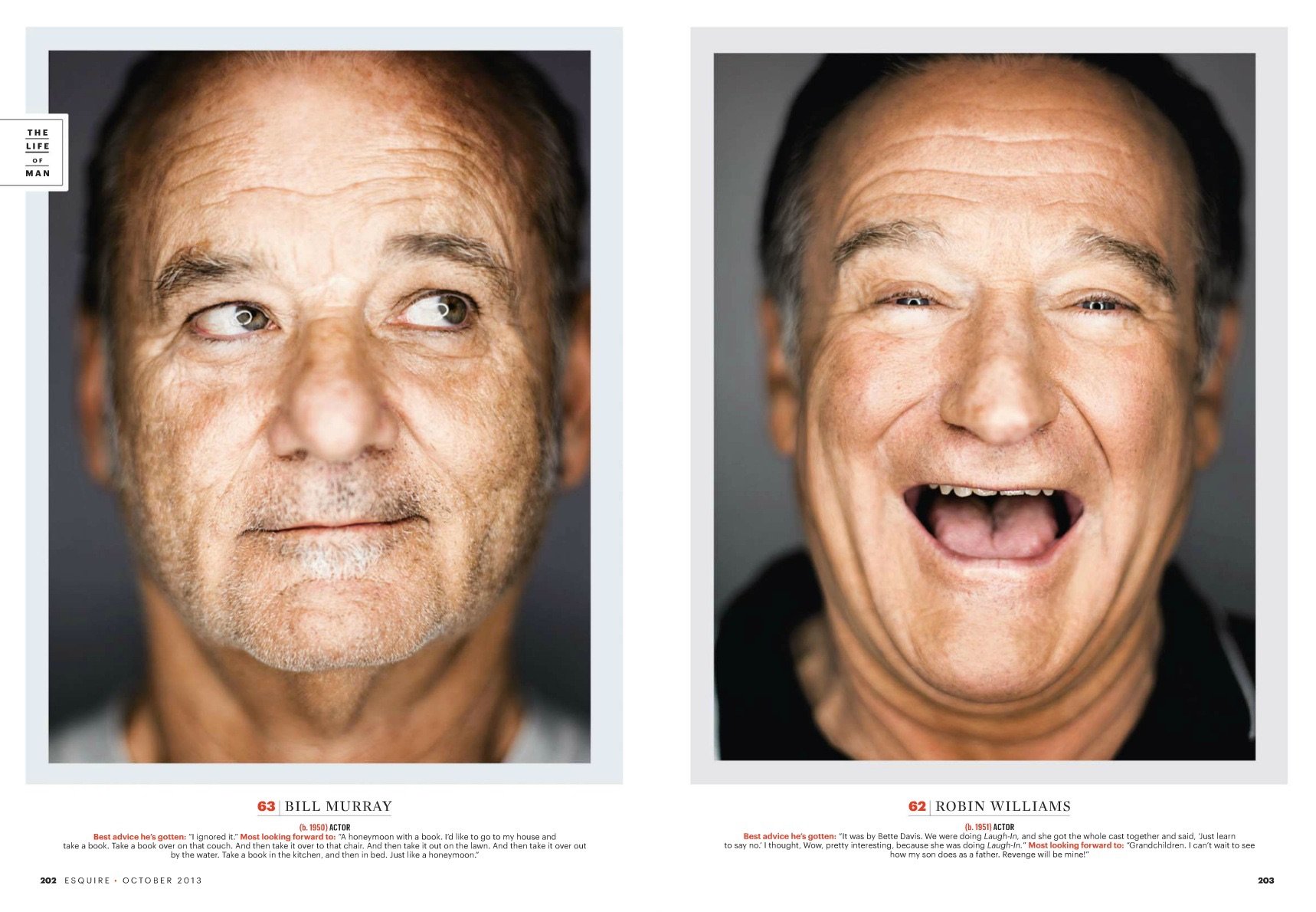
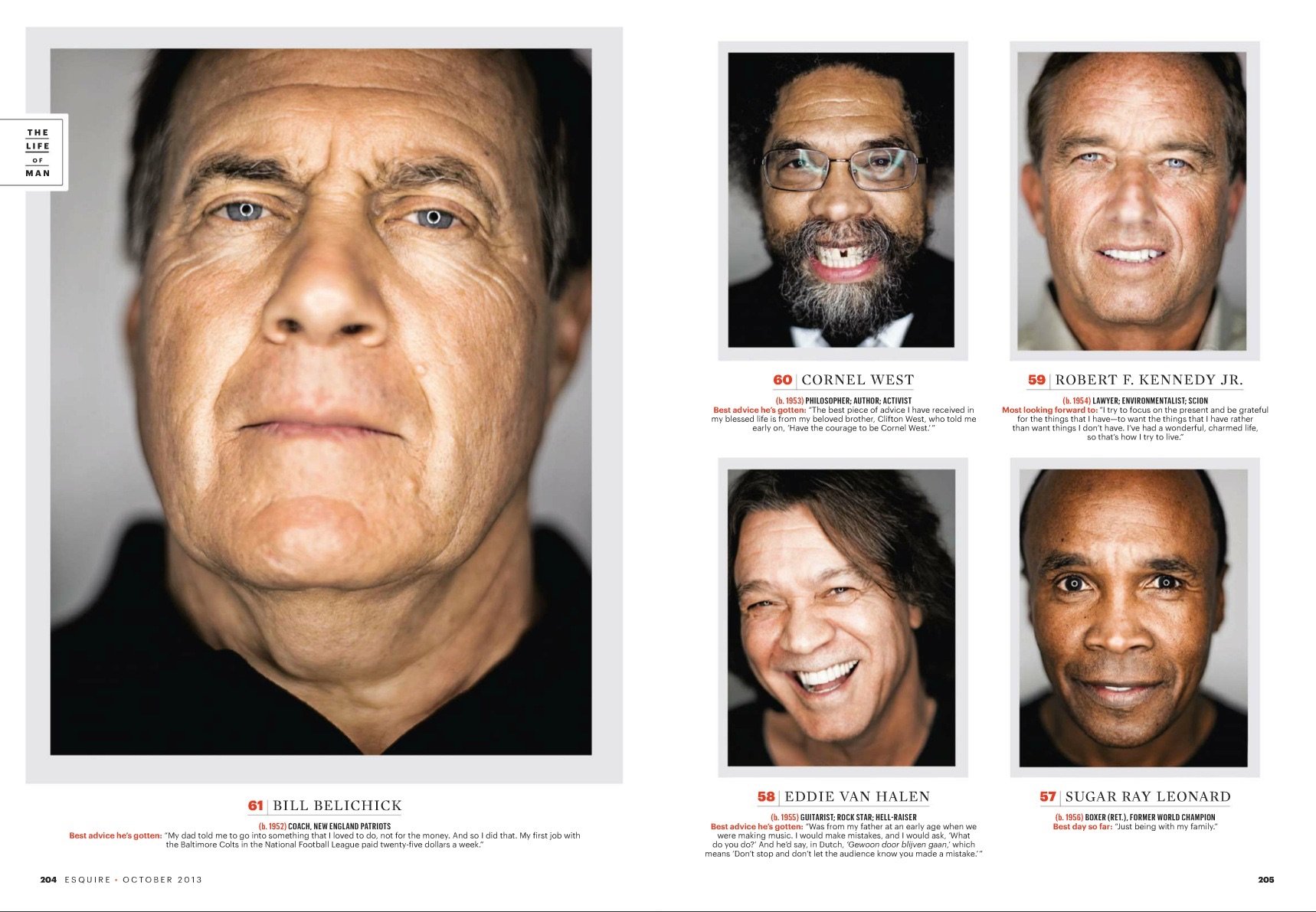
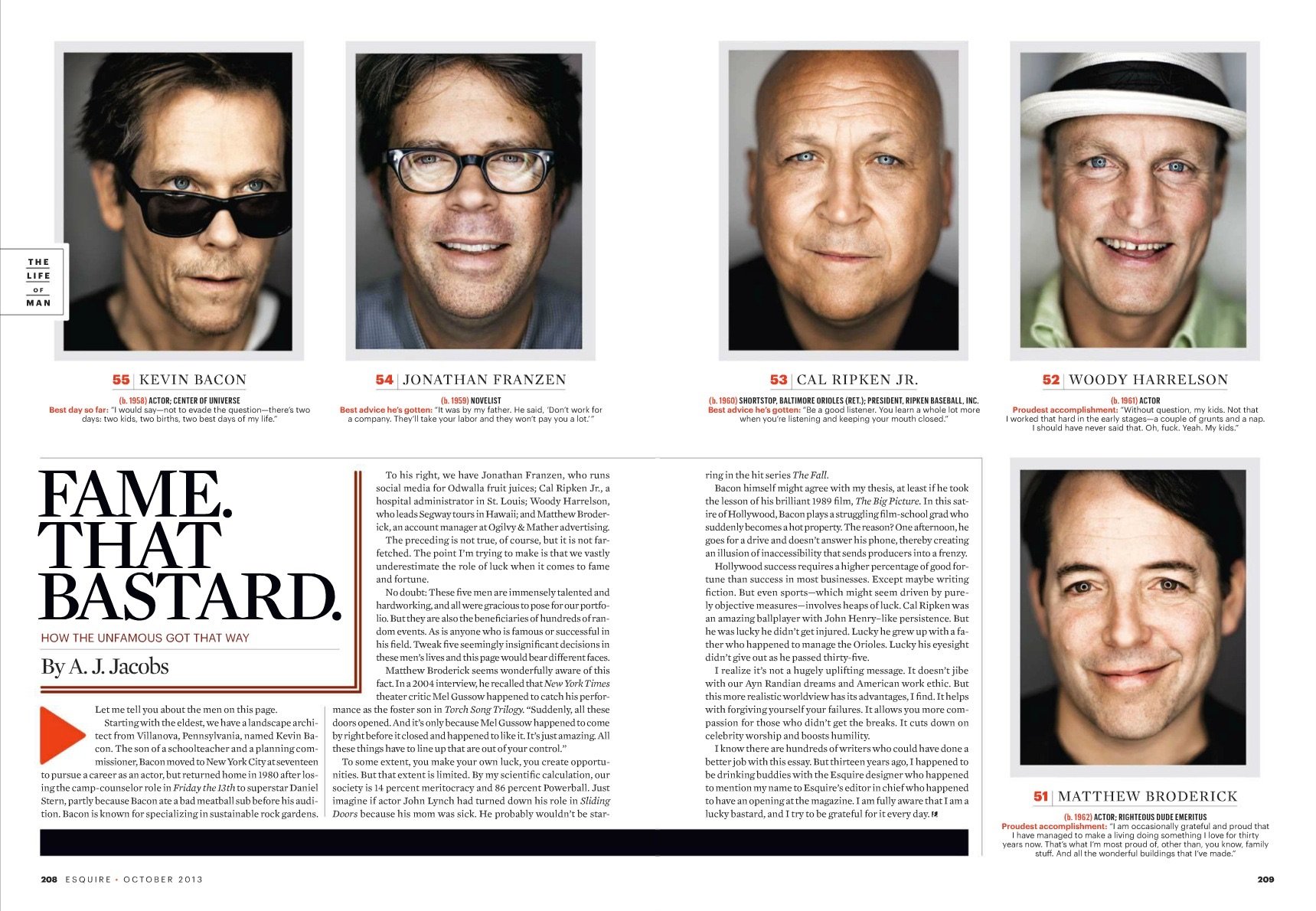
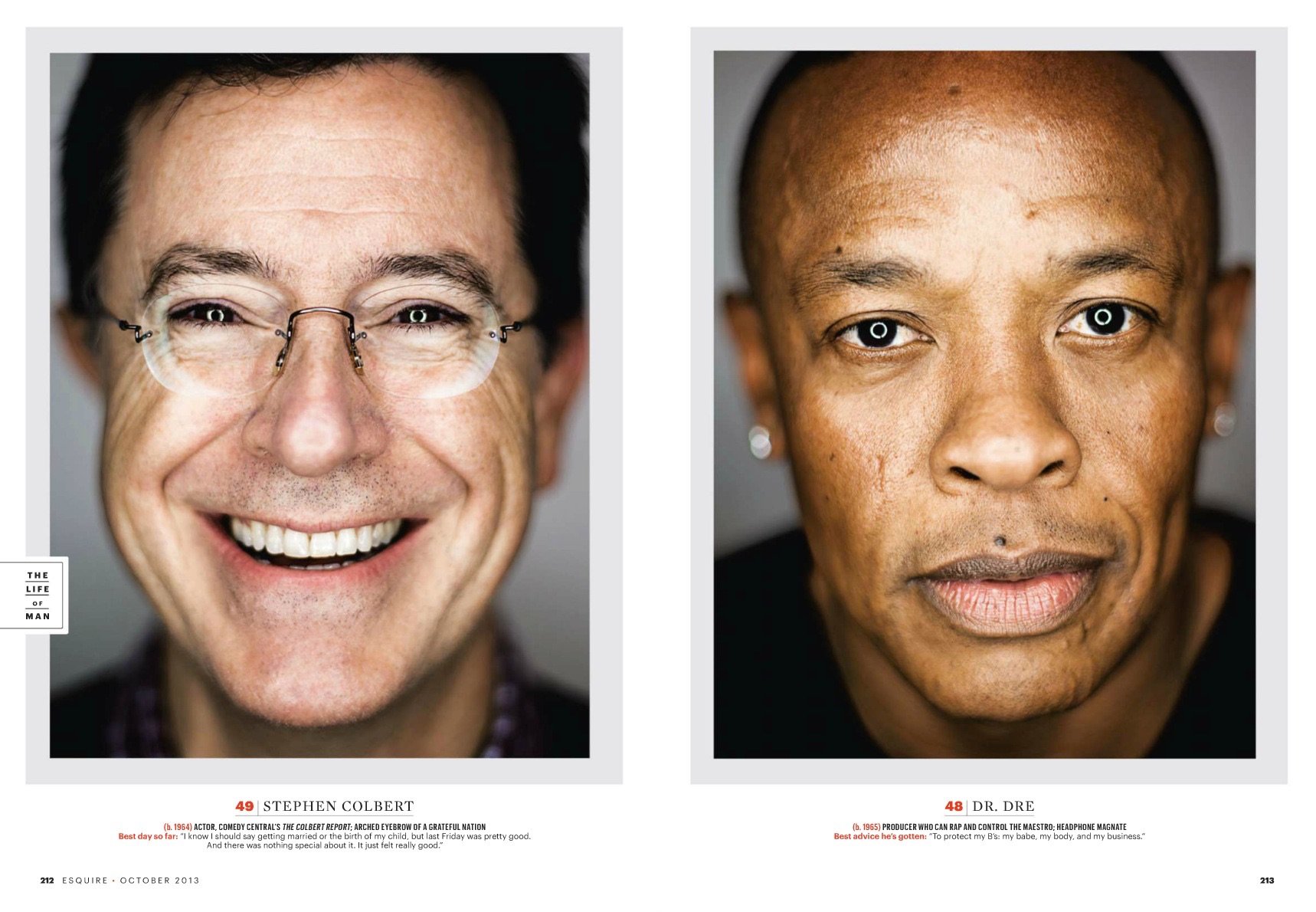
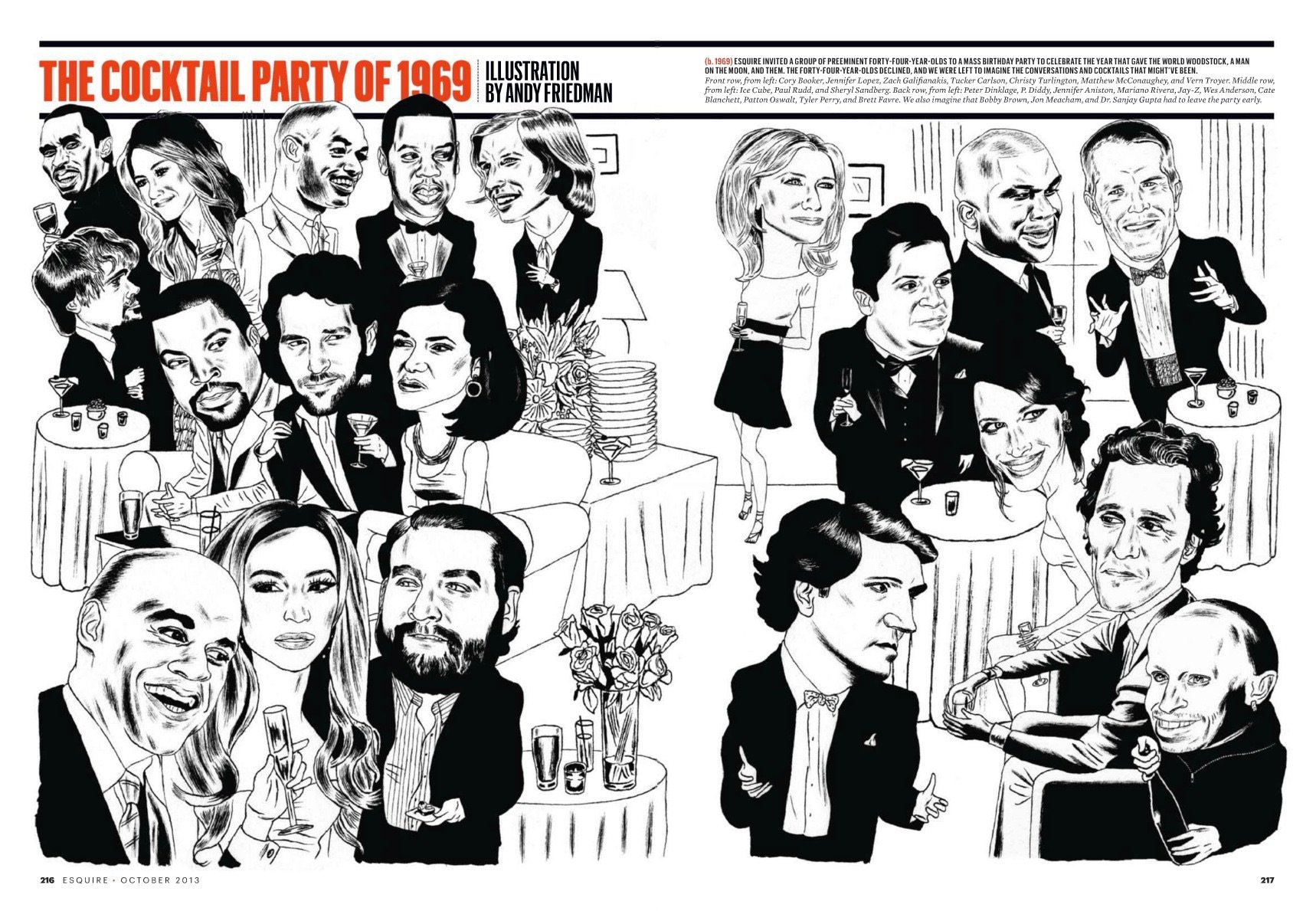
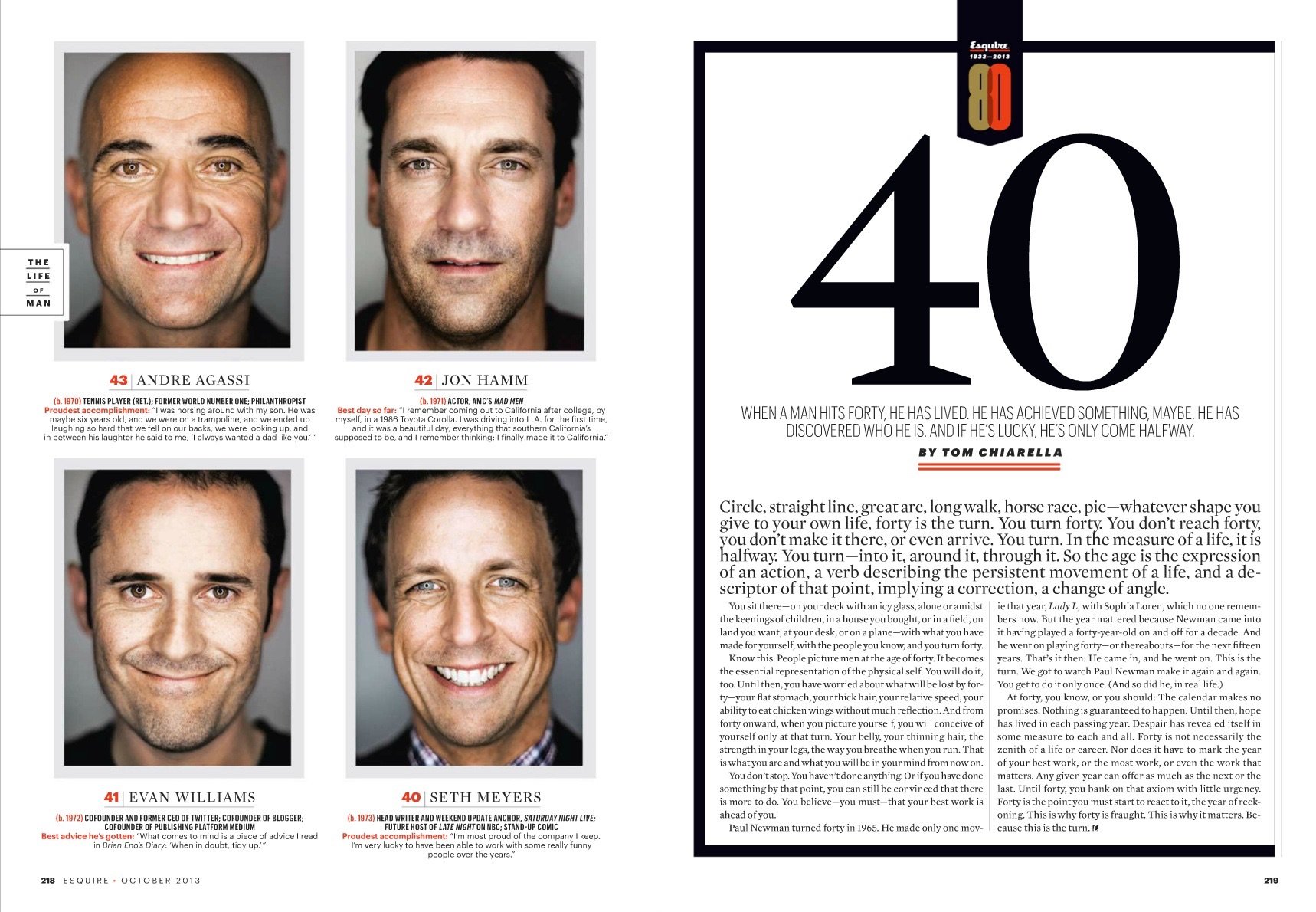
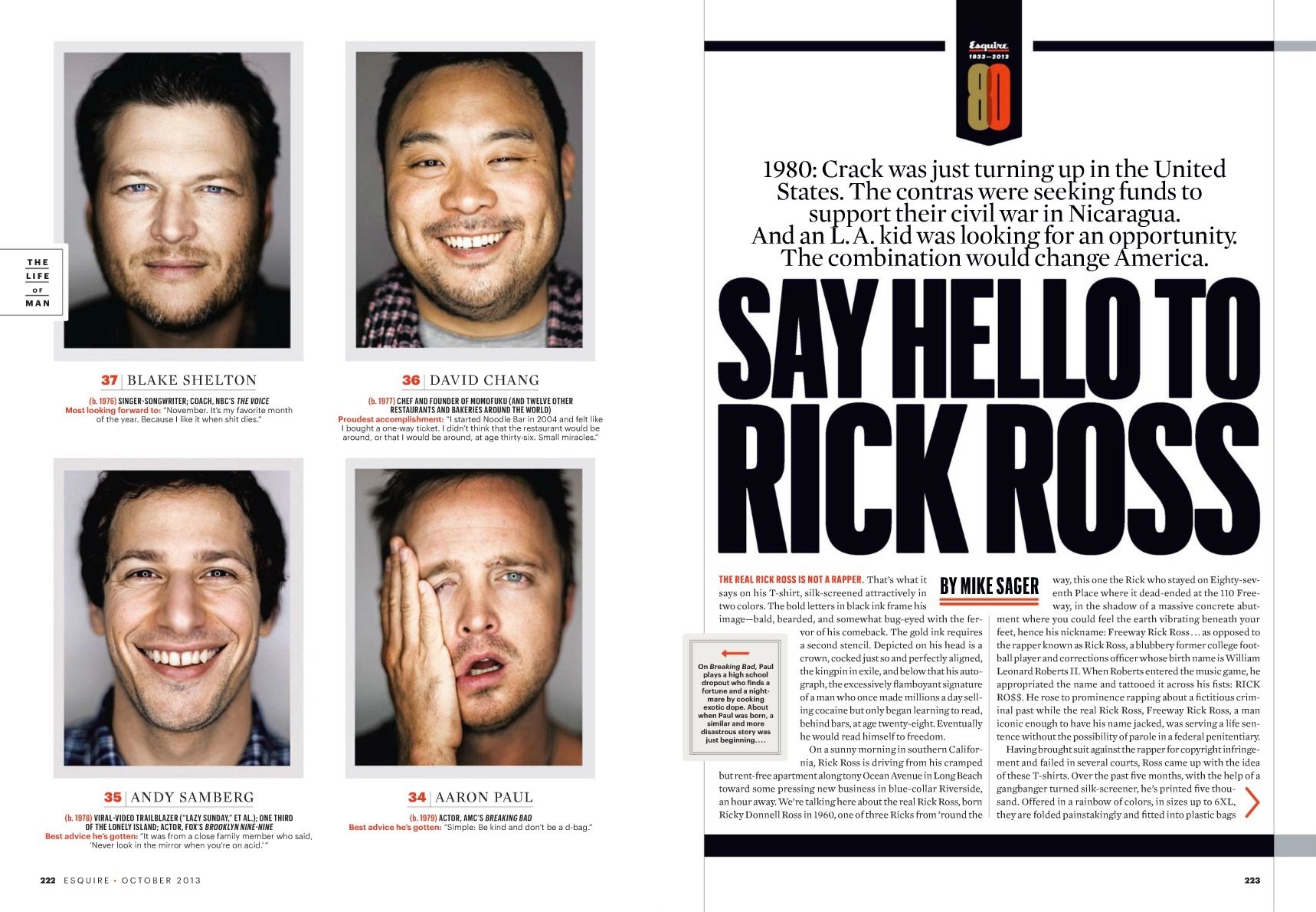
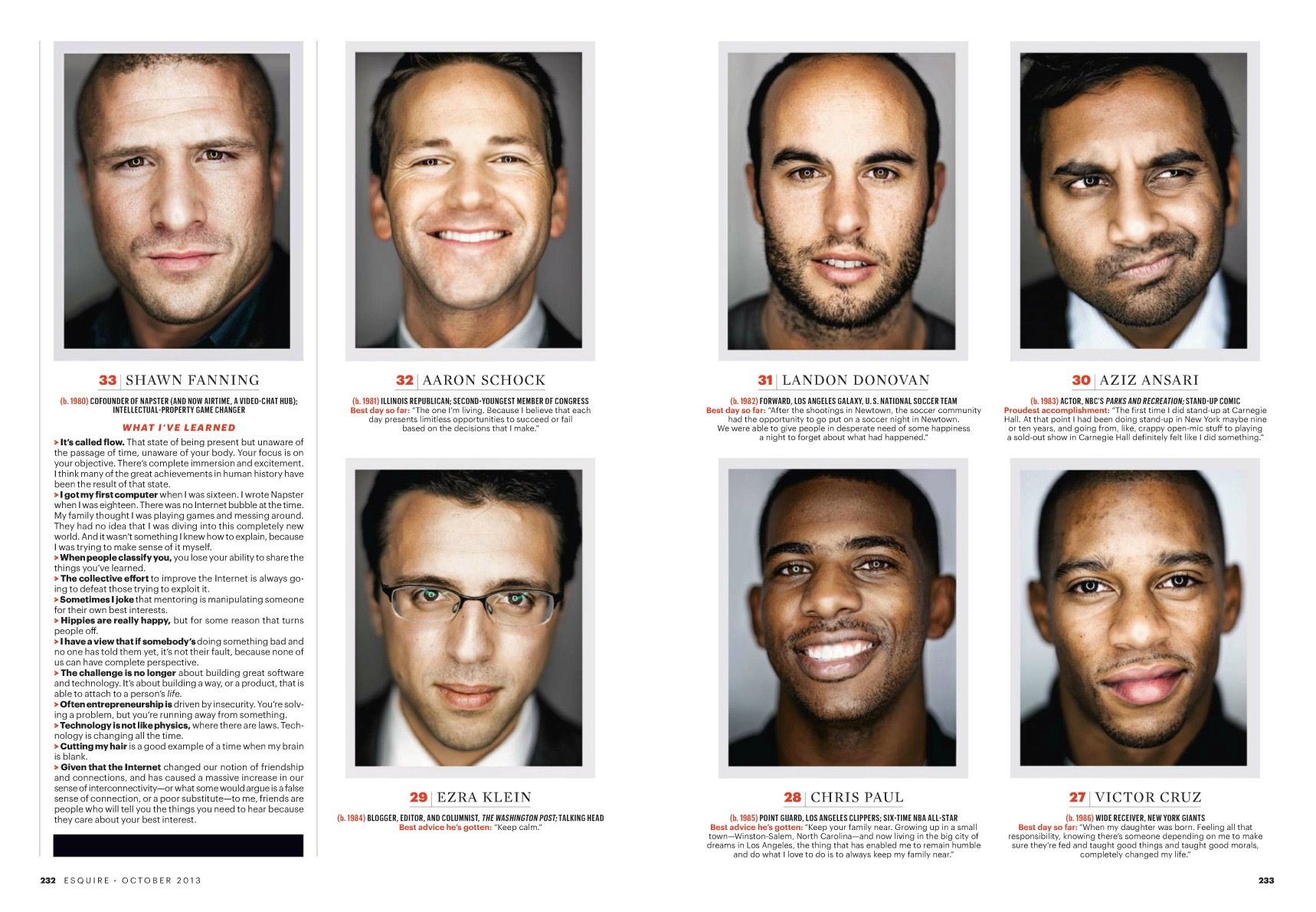
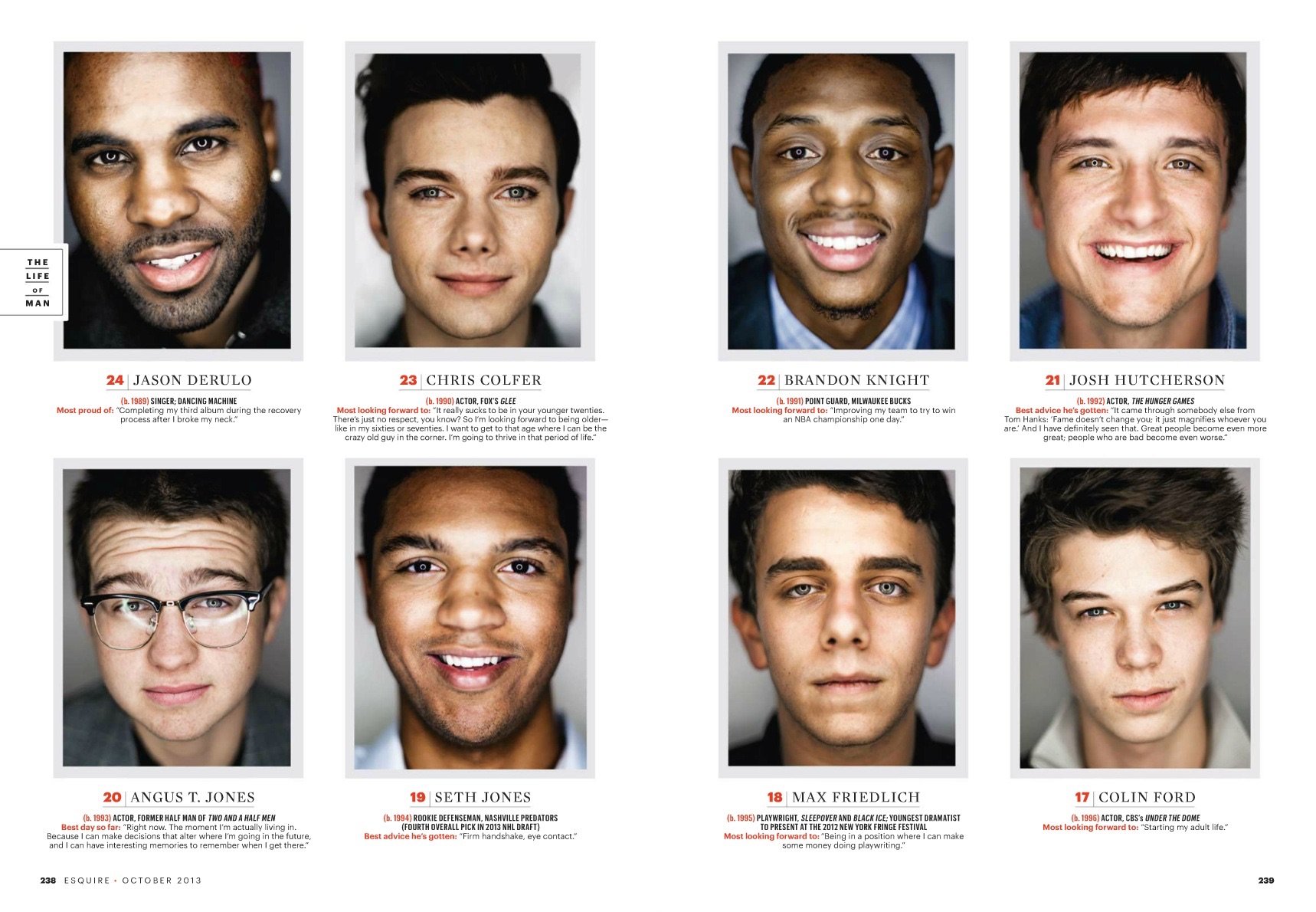
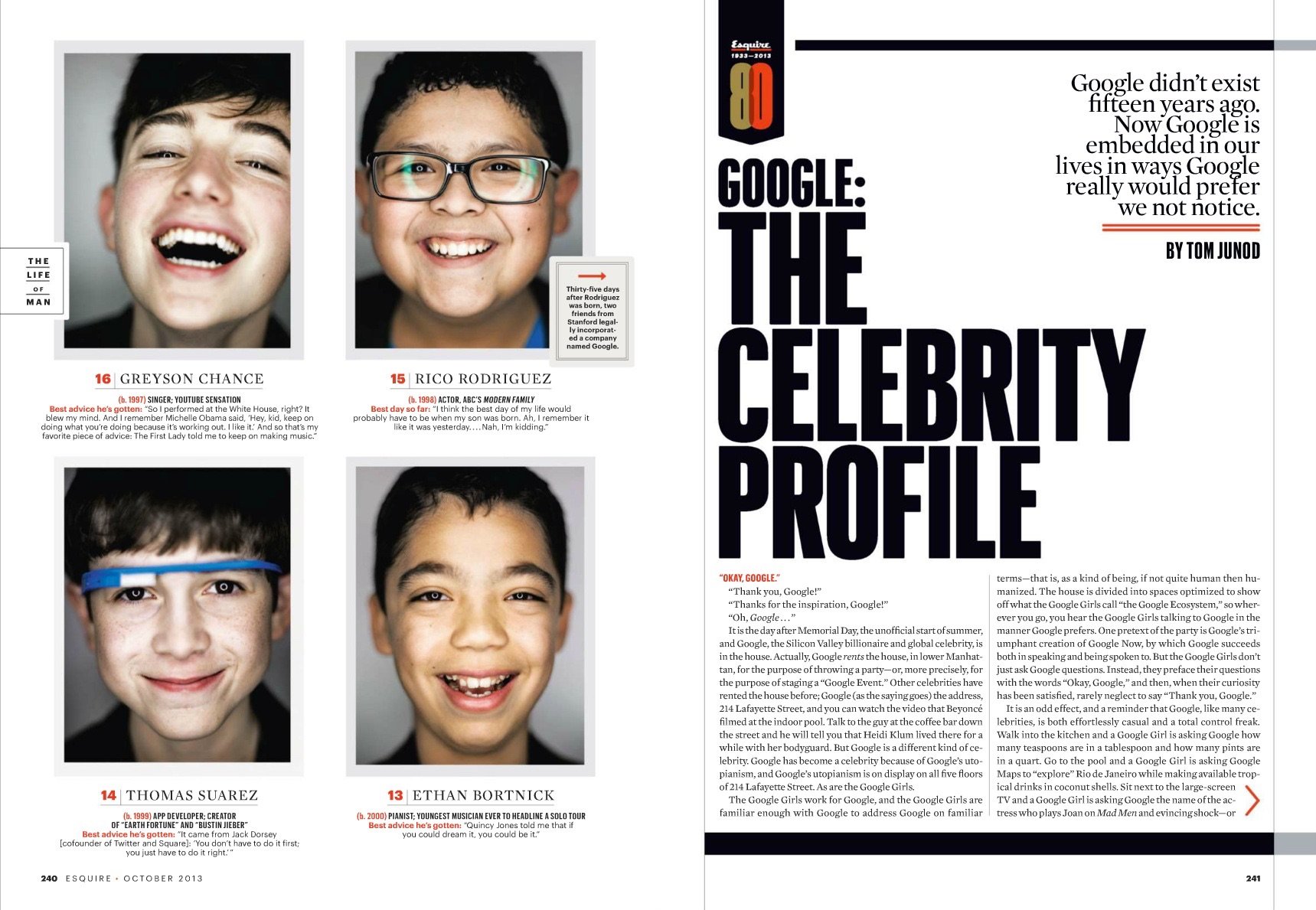
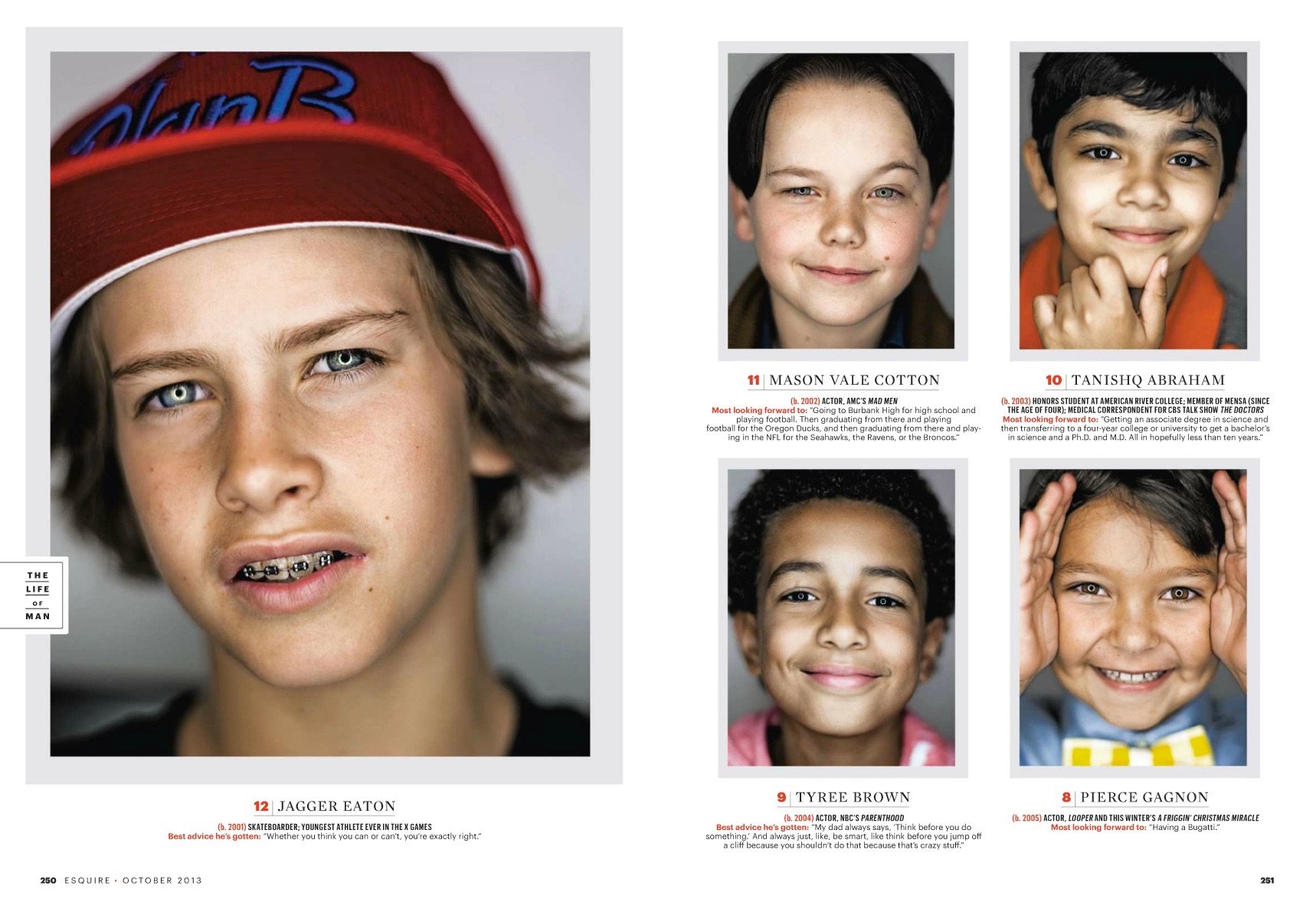
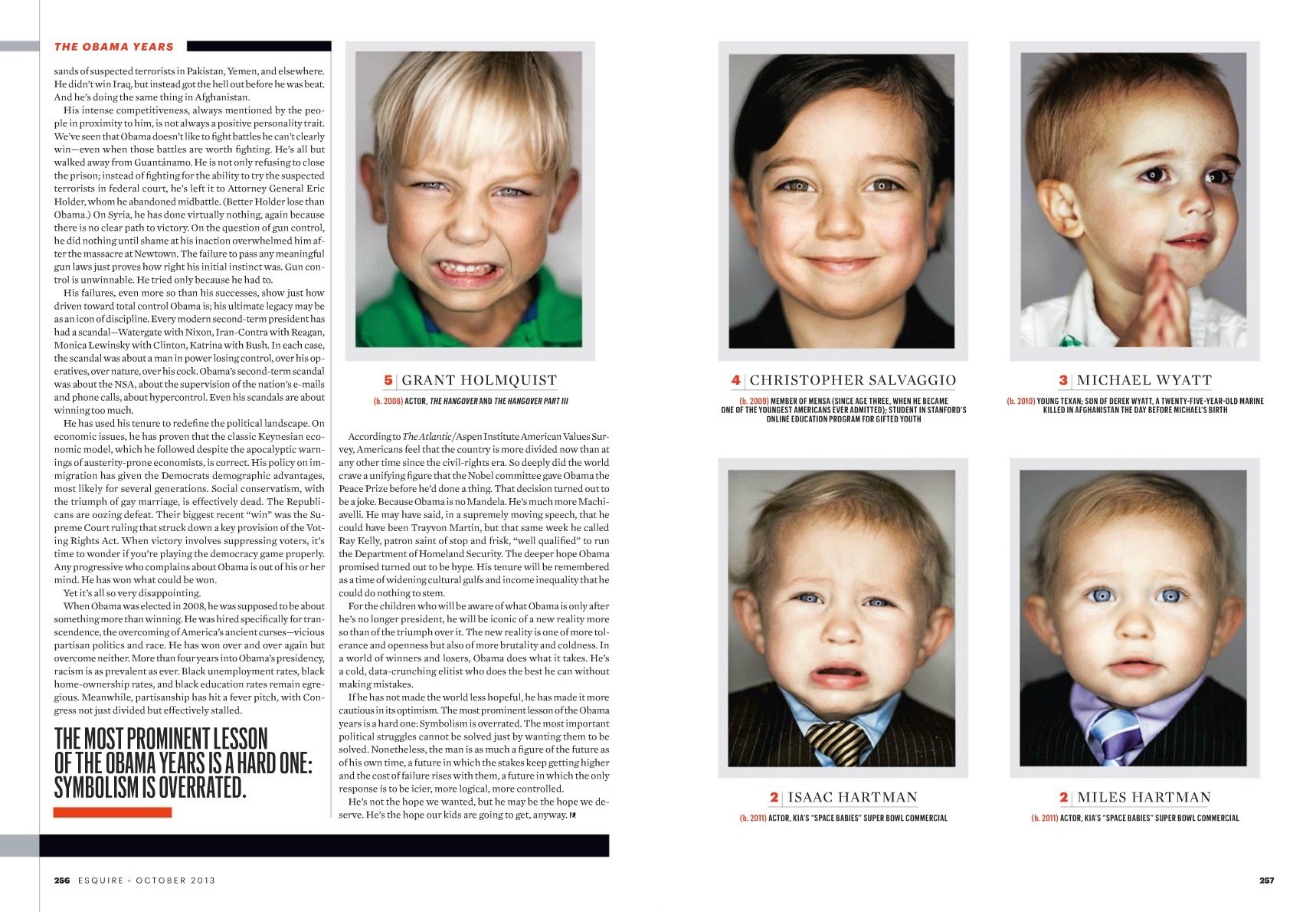

A 2013 special 80th anniversary issue themed “The State of the American Man,” featured a man (or boy) at every age between newborn and 80 (Willie Nelson).
Sean Plottner: Let’s just change the pace a little bit, and I’m going to …
David Granger: … We’re going to play a slow song?
Sean Plottner: Yeah. We’re going to slow dance to a little Bread. Actually, we’re going to pick it up a little bit. I’ll say something and then you just tell us the first thing that comes to mind and you can elaborate.
David Granger: That was fraught baby. That was fraught. It was one of those things that people associated with Esquire. They hadn’t read it since, like, 1968, and we tried to revive it and make it relevant, but this was like when John Stewart was coming on the air and there was political satire every night. And so Esquire had done this annual issue where they did fake headlines and then the stories that went with it, and the real news stories that occasioned those fake headlines.
And it was funny in its day. And we tried so hard to make it relevant and failed every time, including, like, Dave Eggers edited it in the one year that he worked at Esquire. We hired Jay Lovinger, who’s a legend from Time Inc.—but mostly from John A. Walsh—to come in one year. And we tried everything. It just didn’t work. So we killed it. And we killed it right after 9/11. It just just didn’t seem like it was in sync with the times anymore. And I got a bunch of nasty letters from people who, as I said, hadn’t read it since 1968.
Sean Plottner: Eggers had done it once. I’m going to have to look that one up. “Sexiest Woman Alive.”
David Granger: Scarlett Johansson.
When we put women on the cover, we always wanted to give the impression that the women enjoyed the experience, and give our readers that, rather than doing the thing that men’s magazines—that it’s hard not to do, which is objectify. And so one year we did, over six months, we gave visual clues to who the Sexiest Woman Alive that year was.
You couldn’t see who it was, but it was like in one, she was in her trailer home and on the floor in front of the open refrigerator, and the place was just a mess. All of them were shot in this trailer home in Appalachia somewhere. And in one, she was, like, shaving her legs in the sink. And it just looked like the most down-on-her-luck human being in the world. And it was Scarlett, who played all these roles for us and spent, like, three days shooting this thing just to do this long, slow reveal of who the Sexiest Woman Alive was. It was tons of fun.
Sean Plottner: “Lad mags.”
David Granger: Yeah. When I got to Esquire, that was when the “Lad Mag” thing was happening. I can’t even remember the names of them anymore. Ugh. God.
Sean Plottner: FHM. Maxim.
David Granger: Maxim. Maxim. Maxim. Maxim. Maxim. And that was one of the things that, when I talked about second-guessing earlier—all the circulation people, all the ad sales people—that was the thing that they most second-guessed me about. It was like, “Maxim’s successful. FHM’s successful. Why aren’t you guys more like Maxim?” You know?
Sean Plottner: Yeah. They’re putting Mr. Rogers on the cover. Sure.
David Granger: Yeah. I was at a cocktail party, speaking of Mr. Rogers, with Jann Wenner once, and I was complaining to him about newsstand sales and he was commiserating with me until he looked at me and he said, “Wait a second. You’re the guy who put Mr. Rogers on the cover, aren’t you?” He stopped commiserating with me right then.
Sean Plottner: Were the Lad mags competition for Esquire?
David Granger: Yes. They were competition for readers and competition for advertisers. And I think one of the reasons that Maxim succeeded was because men’s magazines had stopped giving men advice. And even though the advice in Maxim was mostly bad advice, it was advice.
And so I think men’s magazines had abdicated their role of offering guidance and that was one of the things that I worked really hard with my staff to try to do. We had this “Martha Stewart Moment” once when I was driving to tennis with a friend of mine and it was in my first couple years at Esquire and he goes, “How come there’s not a Martha Stewart for men?”
And that day I went to the library and I found the last three years of Martha, and I read it. The next morning I had an emergency meeting, I had the staff come in and I was like, “You guys need to read Martha Stewart.”
And they’re like, “What?”
And I was like, “No, no, you’ve got to read it. This magazine’s amazing because this is what Martha’s message is to her readers: I love you. I love your life. And if you follow my advice, your life is going to be better.”
And I was like, “We’ve got to do some of that!”
It was one of those moments where I was like, “Okay, it’s getting a little clearer what I’m supposed to be doing here.”
Sean Plottner: Frank DeFord. The editor at The National.
David Granger: Okay, two things. First, one of the three greatest sports writers of all time. And one of the great writers of all time. Second, way too nice a guy to be the editor-in-chief of a daily national newspaper. Frank was such a nice man.
You know, you got the nice letters from him, in purple ink, and all that kind stuff. He was just a great man. But that led him to say ‘yes’ to everybody. Even when there were pitch battles at The National—especially the ones I saw between the news side and the magazine side—Frank just said ‘yes’ to everybody. So, I love the guy. Just too nice a guy to be an effective editor-in-chief.
“The big stuff is hard in its own way, but it’s the little things that people are going to remember—or they’re going to enjoy—and it establishes not just a voice, but a whole environment of entertainment.”
Sean Plottner: Art Cooper, editor at GQ.
David Granger: Okay, here’s how lunch was with Art: Every once in a while, like two times a year, I’d get invited to lunch with Art. You had to be at the Four Seasons at 12:30 sharp. The second you sat down, vodka martinis, ice cold, are on the table. Art’s got an agenda for every lunch. He had an agenda. He’d usually write it out. He planned his day around lunch. He’d sit there in the morning planning what he was going to be talking about at lunch.
So vodka martinis with the first course, a bottle of Chalone chardonnay with the second course, a bottle of some red that was “Julian [Niccolini]’s choice.” As soon as you finish, Art’s like, “We’re heading to the bar,” because, after a while, they wouldn’t let him smoke at the tables anymore. You could still smoke at the bar. Light up a cigarette, have a sambuca.
And, at, like, three o’clock you’d get back to the office and just hammered. No choice but to put your head down and go to sleep for an hour.
Sean Plottner: Okay. How about art directors, in general?
David Granger: It’s difficult to generalize about art directors. I think it’s rare when there’s a perfect meshing of editor-in-chief and art director, and they’re equally important to the success of the magazine.
Many art directors have their own ideas about, especially magazine design, that may or may not be the best thing for the success of that magazine. But when an editor and an art director work beautifully together, as I did last 11 years at Esquire with David Curcurito, it’s freaking magic.
You’re just like dependent on each other. You make each other so much better. [That was] the greatest creative collaboration of my life. And that’s the potential of the editor/design director relationship.
Sean Plottner: Great. A couple more. A quote of yours: “The spread is one of the great, maybe lost, art forms of all time.” The spread. The magazine spread.
David Granger: Yeah. I believe that there are many things that the internet just can’t do—like almost everything. But the design possibilities and the expressive possibilities of a two-page spread in a magazine are just limitless. You can do anything on two pages of a magazine.
I mean, you just, you take all the things that a magazine is made of, paper, ink, photos, words, ideas, design, and you just let them go crazy on two pages of a magazine and almost anything is possible. And there’s never been anything like that in any other medium.
Books don’t do it. There’s nothing like it on the internet, no matter how much they try to be interesting design-wise. Everything scrolls, but there’s never that work of art that’s also part of a living medium. There’s an urgency to magazines. They’re timely. And you create a timely work of art on two pages. Nothing else can do that.
Sean Plottner: There isn’t. Viewing a spread, the gaze of the eye is so different than looking at something online. The creation of a spread is so different than anything you would create online. The anticipation, or expectation, of turning a page—you don’t get that online. And I think there’s a real psychology that makes it interesting. And your notion of, like, front of the book stuff, making sure a page does more than one thing. Jeez, a spread, like you said, can do so many things.
Okay. The phrase “content creation.”
David Granger: Well, “content” is a word that I try not to use. I think it’s the dirtiest word in the English language, especially starting in the mid-aughts of this century.
It’s just like, “Content.” It’s like the great leveler. It’s like anything that fills up the space is of equal value. That’s what the word “content” means. It’s like, “We’re going to get some content and put it on this website.” What the fuck? You have, like, you have articles. You have photos. You have great pieces of writing. It’s not “content.” It’s something that somebody slaves over.
But that’s the mindset. It turns out that the medium is the message, right? If you create something that’s designed to be read quickly, whether it’s on a webpage, or social media, or whatever, it’s going to suck more than something that is designed to move somebody and make them rethink the foundations of their life.
And a magazine has the potential to create a work of art, a timely work of art, that’ll have a profound effect on somebody.
Sean Plottner: Okay. Awards. You’ve got a few.
David Granger: Yeah. They’re nice. They make you feel good. I have this Polaroid of myself sitting in an abandoned folding chair on Eighth Avenue holding one of those National Magazine Award statues.
That’s one of my favorite photos. We had 17. They were on display in the Esquire offices, and on my last day there I stole one just so I could have one. So I guess they mean something to me.
Sean Plottner: How many of those Ellies can you fit into one briefcase?
David Granger: I just took one. I don’t know. I don’t even remember what I took it out in. But you can’t plan to win awards. You just try to do really good things and then every once in a while it happens.
Sean Plottner: Okay. The slogan “Man at His Best.”
David Granger: Yeah. So for a long time, Esquire, its slogan was “The Magazine for Men” for most of its life, like, up into the late seventies. And then when your boys, Whittle and Moffitt, took it over, they changed it to Man at His Best. And there was a reason for that.
As I said before, Phil Moffitt, he had a mission in Esquire and he was well ahead of his time in that he was really into yoga back in the seventies and eighties, and he believed in the possibility of personal improvement and that was one of his main goals for the magazine.
Kind of like my Martha Stewart moment, he wanted to help people improve their lives and he changed the slogan of the magazine to Man at His Best. And when I got to Esquire, I think they’d gone back to The Magazine for Men, and I know that they’d scrapped Man at His Best. And as soon as I could, I changed it back to Man at His Best in homage to Moffitt, but also because I wanted it to express part of our intention for the magazine.
Sean Plottner: I guess I’d be remiss if I didn’t ask at least one fashion question, and I’m not one to delve into fashion, but you know, I think you’ve got some experience with it. What’s the best men’s fashion tip you learned while you were at Esquire?
David Granger: That’s a hard one because, when I was at GQ, Tom Junod wrote this piece called “My Father’s Fashion Tips.” His father thought he was Sinatra and he had very strict rules about fashion. And the piece was built around five of his father’s fashion tips. And the one that stands out to me the most is Always wear white to the face. It just shows off your face. Your face is your greatest asset.
Always wear white to the face. It’s like, “Put a spotlight on your face.” But almost equally relevant and true is another of Lou Junod’s fashion tips is, The turtleneck is the most flattering thing a man can wear. This is true.
I mean, in Esquire I learned a lot of the details, I learned a lot of the history, but I started being aware of what I wore when I was working at Sport magazine, I saw a picture of myself sitting in the dugout with Dave Parker, the great Reds slugger, and I was wearing, like, some shitty blue pants and a shitty checked short sleeve. And I realized, “Man, no wonder athletes hate sports writers!” You know? And from that moment on, I decided that I was going to dress at least as well as the people I planned to meet that day.
Clooney on the cover? That doesn’t suck. The superstar actor appeared on eight of Granger’s issues.
“Covers always suck. They suck and they suck and they suck until they don’t. At some point they stop sucking.”
Sean Plottner: Well, I’ve got to tell you, I’m very glad you didn’t show up today with a tie and a jacket on. Okay, thank you. Let’s move into really my final section here, the section of Today and the Future. What’s wrong with the magazine business today?
David Granger: What’s wrong is that everybody lost faith in the vitality and vibrancy and validity of the medium. And that started with the magazine companies. You know, when everybody went running toward the inevitable payday that was the aggregation of content and gathering a huge audience and believing that advertising would flow if you just presented a large audience to the world. Everybody ran in that direction.
Hearst, Condé Nast, Time, Inc. They all abandoned their print products and started investing in digital because, of course, digital was the future. Even though there were already players who were going to kick their asses, who were dominating that space. It’s like, if you can’t win the game, play another game. And they abandoned the game that they were good at.
And so that filters down to everybody. When the business side is shaky, editors and writers are less likely to take chances, editorially, right? Because you do something that gives a fence to an advertiser or to readers, and you’re putting the viability of the business at risk. So that’s a big thing.
But then the rise of social media and the fact that everybody has a platform that has the potential to spread worldwide in an instant also makes editors and writers a little scared. It takes a lot to stand up to the mob when somebody decides that something one of your writers has written is offensive in one way or another, or racist, or sexist, or whatever.
And the ability to stand up to that sort of invisible mob is hard. And it causes a lot of people to play really safe. There are a lot of pressures on magazine editors and writers to play safe. It’s the same in most media. It takes a lot more courage to stand up for what you believe in, in the highest forms of expression now than it did when I was an editor-in-chief.
Sean Plottner: Well, you know, we’re on a podcast called Print is Dead. (Long Live Print!), and sometimes my thinking is, you know, “Geez, the magazine business is long gone.” But there are still some great magazines out there that are, first-and-foremost, print magazines. New York magazine is still excellent. The New Yorker. I think the new Sports Illustrated works. The Atlantic. On and on. They’re still there. They still come in my mailbox. Is there ever a chance we’re going to see more magazines? Or a revitalization of the industry?
David Granger: It’s hard for print to be as vital as it was because there’s not a robust advertising base. And for better or worse, mostly better a long time ago, and worse more recently, advertising was 85-90% of magazine’s revenues.
So advertising goes away and you don’t have the pages, you just don’t have the resources to do what could be done in the nineties and the early two thousands into the 20-teens. And, it’s just, it’s hard.
I love it when I see little magazines popping up. I got to help this magazine—Racquet, which is this high quality tennis magazine—I got to help them get started, and I’m amazed that they’ve been able to sustain it. But they sustain it not through the traditional magazine metrics of advertising and circulation. They mostly sustain it through doing events for advertising partners or for folks with a lot of dough.
And so that’s a little different. And it’s also a reason not to give offense. When you’re being sustained by your sponsors, it’s a little harder to do anything that’s really risky. There’s always going to be great magazines.
Every year I judge the City and Regional Magazine (CRMA) contest and there’s always really good, really surprising stuff. And a few years ago I went to one of their conventions, and there are just as many city regional magazines, I think, as there were 15 years ago!
I know a surprising number of writers, surprising to me because I’m ignorant, that the authors I’m working with, like, at least two or three of them right now are doing pieces for alumni magazines. And there’s a vibrancy there. And you guys actually pay enough money that writers want to spend some time doing that. Which is often hard to do with commercial magazines to make a living.
So yeah, there’s always going to be room for magazines to thrive. They’re just not as big a force as they once were. And it’ll be very hard to make them that.
Legendary comic artist Chris Ware’s version of “What I’ve Learned”
“The design possibilities and the expressive possibilities of a two-page spread in a magazine are just limitless. You can do anything on two pages of a magazine.”
Sean Plottner: That’s very interesting what you say about alumni magazines. As a longtime alumni magazine editor, it is a different animal than the consumer magazine world. And I think that the talent that’s available to those of us running alumni magazines is greater now because there’s less consumer magazines for these people to go and work at. And we do have some money. And I think things have gotten better.
What is really great in the research that we put out to our readers is they’re not saying, “We don’t want print. We want to read it online.” They want their print magazine. And it’s almost a luxury these days. And again, that’s conflated with a lot of emotions about their school and blah, blah, blah, blah, blah. But the love of the print magazine—it’s there. And it’s cool to see.
David Granger: Yeah, it is there. But I remember doing focus groups and it’s there to a level. And I remember watching readers go, “Man, I love Esquire.” And they would know particular writers, and they would remember specific pieces, and they would talk about the things they love in every issue. And then at the end of the thing, the guy would say, “So are you going to resubscribe?”
And he’d go, “Uh, I don’t know.”
When it comes to going into your pocket for $15 or whatever it is, that’s not that much money, but there’s some weird disconnect there.
But you’re right about people’s love for print. I see that in the book business. All the growth in books over the last 10 years—it’s exploded in the last two and a half—is in hardcover sales! Audio books are growing slowly, eBooks have completely flattened out. Together they’re only like 12% of the book market. And hard covers are where all the growth is. And there’s something that people like about that.
Sean Plottner: Yeah. Well, I understand that. I love having a book in my hands, and eBooks aren’t the same. Tell us what you are doing now, speaking of “long live print.”
David Granger: Yeah. I work in the book biz. I’m a literary agent. I’ve been doing that for six years, and it’s been good. It’s been good. The thing that struck me after getting tossed out of the magazine business, was when I started having meetings with book people, there was, especially at the executive levels, there was, like, a genuine optimism and I hadn’t felt that in the executive levels of the Hearst Corporation for a long time, with regard to magazines.
And so it was refreshing that top editors and top executives could see that they were in a growing business. It’s not a huge business, but it was a big business. And growing. And so there’s optimism and there’s willingness to make investments. They’re running scared in certain ways too, but it’s a business where its leaders know there’s an upside and that was refreshing for me as somebody who wants to catalyze creativity.
Granger’s last few issues at Esquire
Sean Plottner: Can you share a project you worked on or are working on now?
David Granger: Yeah. I could bore you to tears for, like, several minutes.
Sean Plottner: What’s the most exciting project you’ve worked on since you left magazines?
David Granger: Can I give you two? Okay. The first one, that was probably the most fun, and it made me feel like I was part of the cultural conversation, was we got chosen to represent this guy, Andrew McCabe, who was the deputy director of the FBI.
And then Trump savaged him and his wife and fired him. And I got chosen to help represent him. And as soon as we got the gig and won the beauty contest, I flew to DC and spent two days with Andy in his living room and just interviewed him and started writing the proposal, and then we ended up turning it over to a writing team.
But we did the book fast, we got it out in a timely manner, and it hit number one on The New York Times bestseller list, which is tons of fun.
The thing that I’m most excited about right now is that three of my writers have written a novel that is the funniest, most intentionally offense-giving piece of writing I’ve read in a very long time.
It comes out November 8th. I don’t know what else is happening on November 8th. There may be, like, some election going on or something. But I think the event of the day is that The Lemon—it’s called The Lemon by S.E. Boyd—is publishing on November 8th. And it takes shots at everybody who deserves to have shots taken at it.
It’s set in the world of high-end cuisine, but goes quickly into the cynical world of big-time media and the fame industry, the celebrity industry, and it’s just, it’s hilarious. You zip right through it and it’s fantastic and it’s made, like, “Fifteen Books You Have to Read This Fall” lists, and gotten amazing advanced reviews.
I just hope when it comes out, the reviews are as fantastic as they’ve been so far. But anyway, it was great working with three authors and creating a pseudonymous new author, and creating a book that I think is going to be very successful: The Lemon by S.E. Boyd.
Two of Granger’s latest book projects
Sean Plottner: Got it. You sound very engaged and into what you’re still doing.
David Granger: It’s fun, man.
Sean Plottner: Okay, we at Print is Dead. (Long Live Print!) have learned that when Steve Jobs died, he left a gazillion dollars that he wanted David Granger to use to create a magazine. Apparently you were on his radar screen, we have no idea. Maybe it was that digital cover you did. Anyways…
David Granger: No. He blackballed us from ever getting advertising. We were blackballed for 12 years, during Apple’s biggest growth spurt, from ever getting a page of Apple advertising.
Sean Plottner: He never gave Esquire credit for the fact that he knew turtleneck was the best way to go every day? Okay, so you got oodles of money to do a print magazine. What would you do?
David Granger: That's such a hard question. There was a time that I really wanted to do a magazine called Magasin.
Sean Plottner: Terrific title.
David Granger: It harkens back to the French word for department store, which I believe is magasin. And it’s just, like, it’s got a little bit of everything. But, kind of the best of everything.
And if it was stipulated that this money was to go to creating a magazine, I think I would create Magasin. And I know who I’d want to be my business partner in it, but I would need so much help at the digital and social aspects of making a print magazine successful that I’d be a little daunted. I have to find just the right person.
But yeah, I think I would create Magasin.
For more on David Granger, visit his website.
Back to the Interviews
The London Independent
First, there was the Slow Movement, which begat Slow Media, which begat Kinfolk, the Bible of Slow Living. And now, maybe, British designer Alex Hunting has begat Slow Design. Read on. (Slowly).
First, there was the Slow Movement, which begat Slow Media, which begat Kinfolk, the Bible of Slow Living. And now, maybe, British designer Alex Hunting has begat Slow Design. Read on. (Slowly).
—
THIS EPISODE IS MADE POSSIBLE WITH THE SUPPORT OF THE SOCIETY OF PUBLICATION DESIGNERS
For the past ten or so years, indie magazines have been booming. As digital media platforms relentlessly chase clicks and smartphones paralyze our focus, a host of fresh print publications are taking a slower and more measured approach.
Guided by the tenets of the “slow media” movement, this new breed of publishers focuses on correcting the pace of media creation and consumption in the digital age. They advocate for alternative ways of making and using media that are more intentional, longer lasting, better written and designed, more ethical—all delivered in a tactile, bespoke package.
In this episode, you’re going to encounter magazine brands you’ve never heard of: Avaunt, Flaneur, Mondial, Monocle, and Port—and, one of the great success stories of the indie boom, Kinfolk. Born in Portland, Oregon, in the early 20-teens with the tagline, “A Guide for Small Gatherings,” the magazine was often referred to, dismissively, as “Martha Stewart for millennials.”
But, in recent years, Kinfolk, like its millennial stans, has grown up. The mag moved its offices to Copenhagen. They created a clothing brand, licensed local editions in South Korea, China, Japan, and Russia, published a series of coffee table books, and, in the ultimate act of adulting, launched a magazine for “people with kids.”
But one of the best moves they made was hiring today’s guest, the incredibly talented British designer, Alex Hunting.
Intentional or not, Hunting is a practitioner of slow design. His instinct for space allocation and pacing eliminates those outdated, overwhelming TL;DR sections. His stunning magazine pages are subtle, spare, and expertly crafted. Perfect for indie magazines, which is good, because that’s pretty much all he does.
We’ll talk to Alex about why, at age 35, he’s so bullish on print, why his university experience didn’t go as planned, and how a pair of mentors literally changed his life.
And, if all of this bores you, well, there’s plenty of talk about houseplants.
Patrick Mitchell: Before we get into this, I have to ask, as an amateur horticulturist myself, I was reading an interview you did with Jeremy [Leslie] at magCulture, and I saw a photo of your studio from, I don’t know, five or six years ago, and there was a little jade plant on your desk and I just want to know, how’s that jade plant doing now?
Alex Hunting: Oh, I think, I think that’s toast. That’s in, uh, plant heaven somewhere. I used to try and have plants quite a bit in the studio. I used to try and liven it up a bit. But yeah, I actually went to a plant place to get maybe that one and another couple, and I just asked for what can’t die. And they still do. I’m not green fingered at all. So, yeah. That’s long gone.
Patrick Mitchell: I mean, that is the number one plant you can’t kill. But somehow you managed. When I went to work at Oprah, I had a little apartment in New York and I bought a jade plant. And it’s spawned dozens of clippings for other people, and I have the main stalk of it here, and it’s about a four foot tall tree now.
Alex Hunting: Wow. So, before we get off the plant topic, the only plant that we—my girlfriend [Amy Friend] and I—we bought a “cheese plant.” Do you know about cheese plants?
Patrick Mitchell: No.
Alex Hunting: I don’t know whether it’s the same name, but it’s sort of giant-leaved, loves loads of natural light, but doesn’t need much water.
But they grow! We put it in our hallway when we bought our flat a few years ago. And it’s in the communal hallway because it’s got a big skylight, and it’s taken over the entire thing to the point where the residents are just complaining. But it’s the only plant that we’ve never had die.
So I just can’t bear for us to get rid of it. And it’s a monster. An absolute monster. That’s the only…
Patrick Mitchell: …That’s your first child.
Alex Hunting: Yeah, exactly.
Patrick Mitchell: All right, so you’re 35 years old. You’ve got your own studio in a major world design center, and you’re doing world-class work. Can we agree that you’re an unqualified success?
Alex Hunting: That’s a really horrible first question! [laughs]
Patrick Mitchell: Think about what you thought about back in school. What did you think you’d be doing by age 35?
Alex Hunting: Oh. Well, when I was in art college, there’s no way I would’ve thought I would’ve—I was a disaster at college.
But no, I am really happy with a lot of the work. I mean, you’re always insecure about everything. I’m constantly having a sort of crisis about whether I’m doing enough of the good enough quality work or whether I should be trying to do bigger work or growing the studio, or keeping the studio smaller or, blah, blah, blah. Back and forth all the time.
But if I take a step back, yeah, I’m very, very happy. I’ve been very lucky with the projects that we’ve had over the years, and they all lead to one another. A huge amount of it is luck. But yeah I’m pretty happy, in general.
Patrick Mitchell: You went to the University of Arts London, is that right?
Alex Hunting: That’s right. London College of Communication.
Patrick Mitchell: Yeah. It’s considered the number two art and design school in the world. And just for those listening at home, number one is Royal College of Art, also in London. UAL is two, Parsons is number three, RISD is four, and MIT is five. Can you talk about what led you to the university coming out of high school? What were you thinking about pursuing and how did you get into such a prestigious place?
Alex Hunting: Yeah, sure. So, I guess at school I—it’s probably quite common with a lot of people that end up doing graphic design—I, personally, I couldn’t have told you what graphic design was. I wanted to be an artist, you know, I wanted to be a fine artist. I was into painting.
I thought I was really good. And I did my foundation course at Chelsea Art College, which is, again, part of University of the Arts. University of the Arts is made up of three or four colleges like [Central] Saint Martins, London College of Communication, London College of Fashion, and Chelsea.
So I did my foundation at Chelsea, which is quite renowned as a fine arts college. And it’s amazing how life is a coincidence, because I asked my fine art teacher at high school, “I want to be an artist, where should I go?”
And he was an amazing guy, brilliant teacher, but bless him. I think he just basically told me his college that he had gone to, which was not necessarily the best place. So I could have easily ended up somewhere else. But there was a really good painter in the year above me, who was going to Chelsea. And he was basically saying to me, “You’ve got to go to University of the Arts or Slade or somewhere like that.”
So I went there. I applied and, luckily, I got into the foundation course. And then I just realized pretty much the moment I got there that there was no way that I was cut out to be an artist. I was surrounded by brilliant people that were actually amazing artists. And all I wanted to do, I guess, was sort of boring, traditional painting, which is what I’d been doing. I don’t know what it’s like in America, but high school, you start learning how to, I don’t know, you’re doing acrylics and then you’re doing oil painting or you’re doing whatever and you are life drawing, learning that stuff.
And then I got to Chelsea and it was proper fine art. And the teachers were saying to me, “Turn it upside down and rip it up.” And that sort of thing. So I was a bit lost really. And I didn’t do a huge amount of work as a result. And then I got towards the end—and at the end of your foundation you’ve got to apply somewhere. You’ve got to decide what to do.
“I certainly didn’t think I’d be setting up my own business. I certainly didn’t think I was going to run a studio or anything like that. It wouldn’t remotely cross my mind.”
And there was no way that I was going to do fine art. And I suddenly started panicking about thinking, “Oh, am I actually going to get a job with anything?” And so I just got recommended by the teachers, “Well, you should think about graphic design.”
And the course at LCC had a pathway, which was graphic design/illustration. And that sounded like a good compromise for me, because it’s a bit arty, but also a bit designy. So I went on to that. But again, I was pretty terrible at college.
I sort of floated around for a couple of years, and I didn’t achieve a huge amount and that sort of thing. And then it all turned around because I did a year in industry. I was really lucky that my college offered a “year out” between your second year and your final year.
And I really did it because I just wanted to go abroad. Because you can do internships anywhere. And I really wanted to spend the summer abroad somewhere. And I wasn’t achieving much at college and panicking a bit. And I basically did a year of internships right bang in the middle of my degree. And it just totally changed everything for me really. Like, I suddenly got what graphic design was, suddenly understood what I should be doing, understood what I liked, and it just changed everything really.
Patrick Mitchell: Did you go abroad for these internships?
Alex Hunting: I did. The whole plan was to be able to go abroad. So I had one lined up that I wanted to do because I was desperate to go to Barcelona for the summer. But I did a couple in London. I did one at a studio called This Is Real Art, which is run by an amazing designer, Paul Belford.
And I mean, I basically was just phoning up. I went to an interview and, I mean, my portfolio is just—looking back on it, it’s just amazing—it was just appalling the quality of stuff. And I just kept basically phoning up and eventually he just relented and let me come in.
And I had an amazing senior designer, a guy called Sam, who I was seated next to, who just basically held my hand for three months, and gave me a bit of confidence, and told me what I should be doing. And then my next one was with Jeremy Leslie, who I think you must know quite well through the magazine world, right?
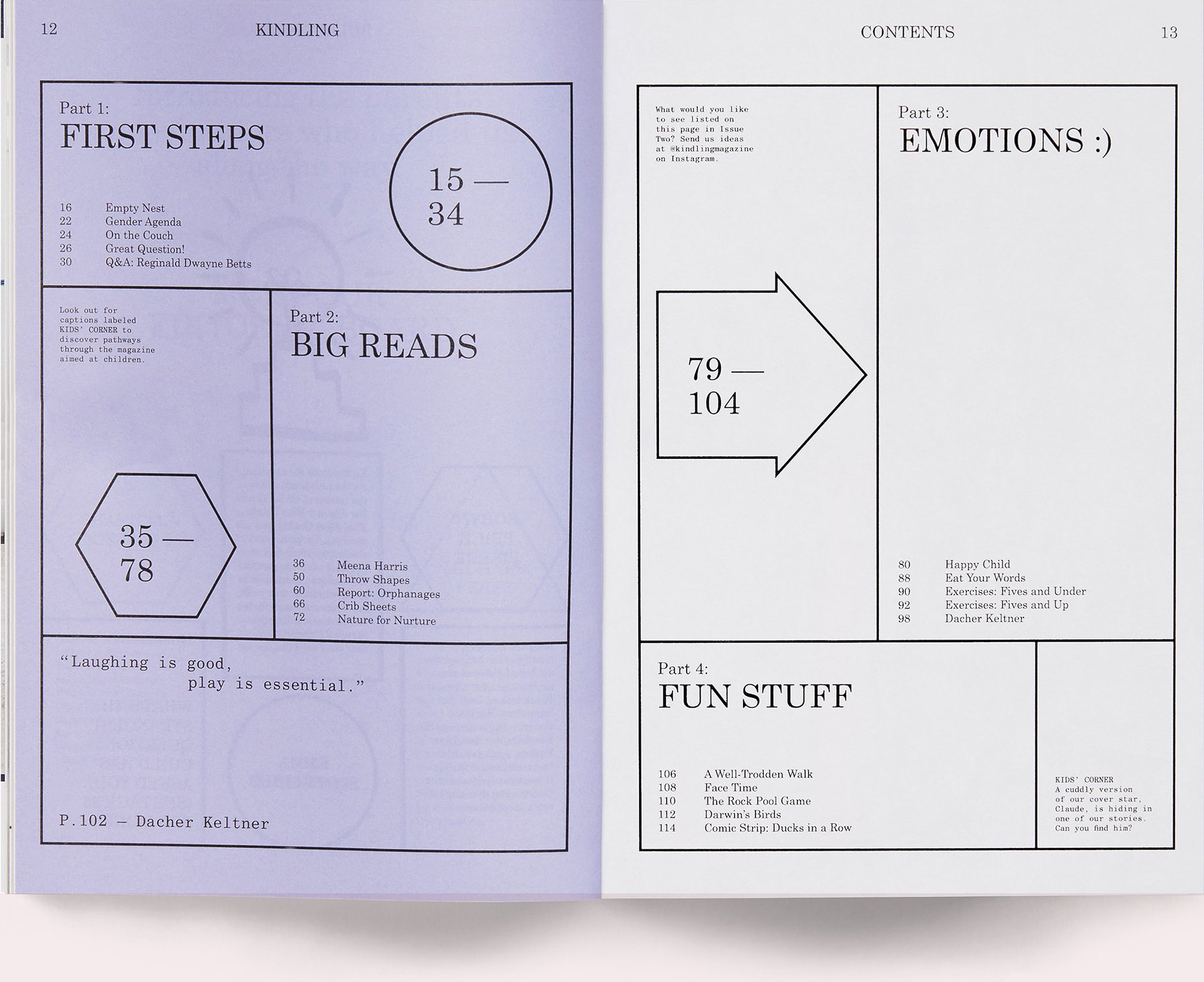
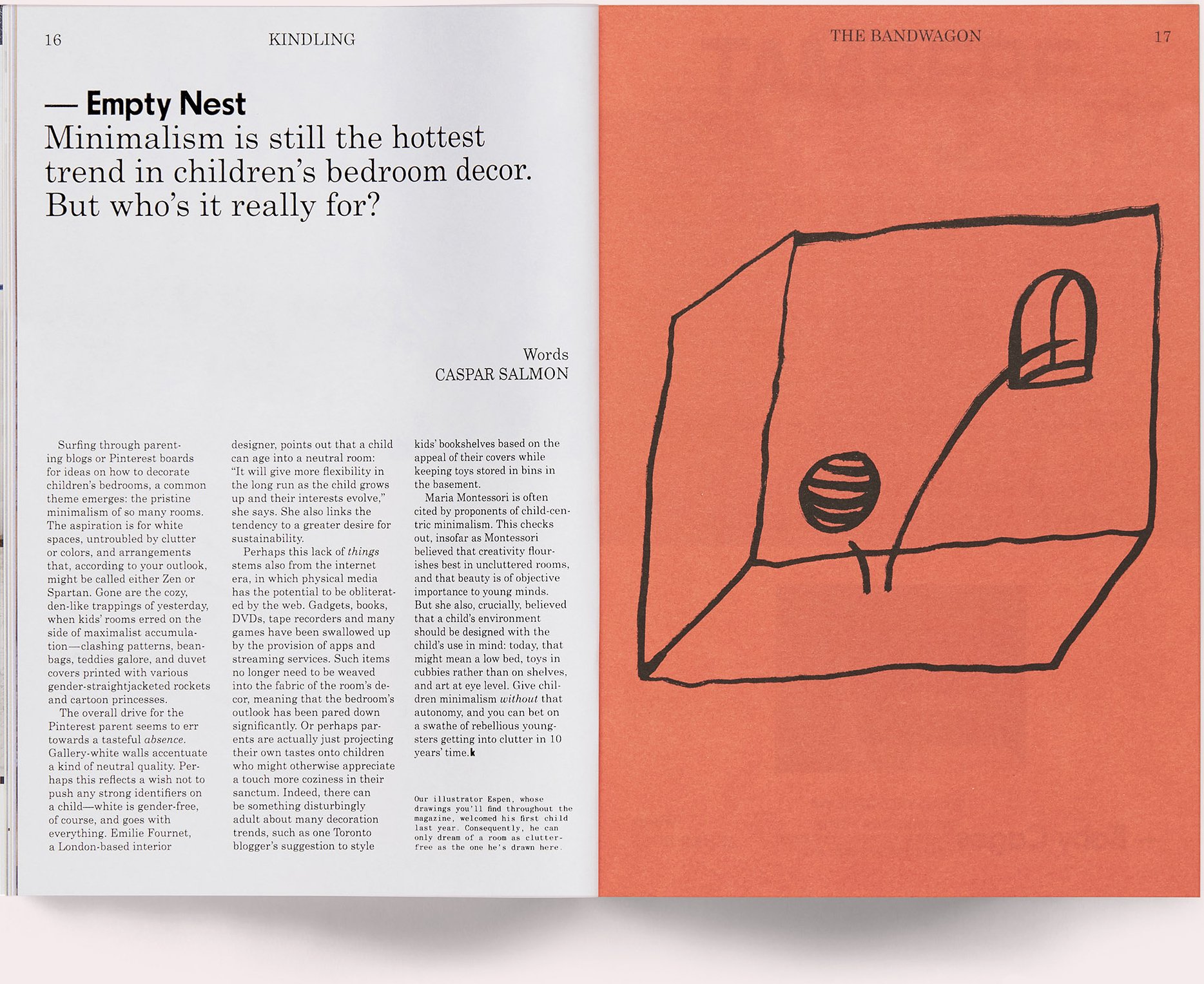
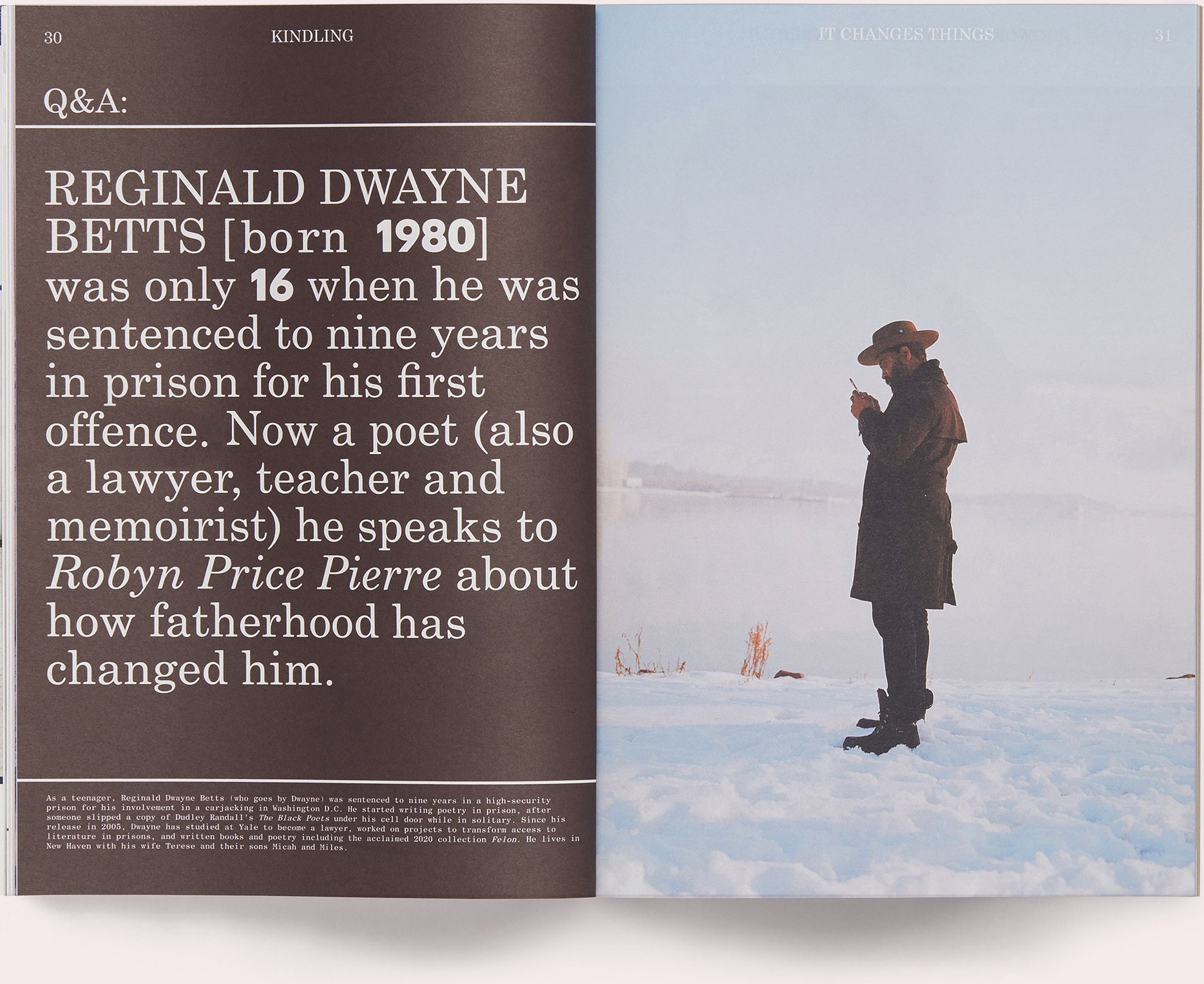
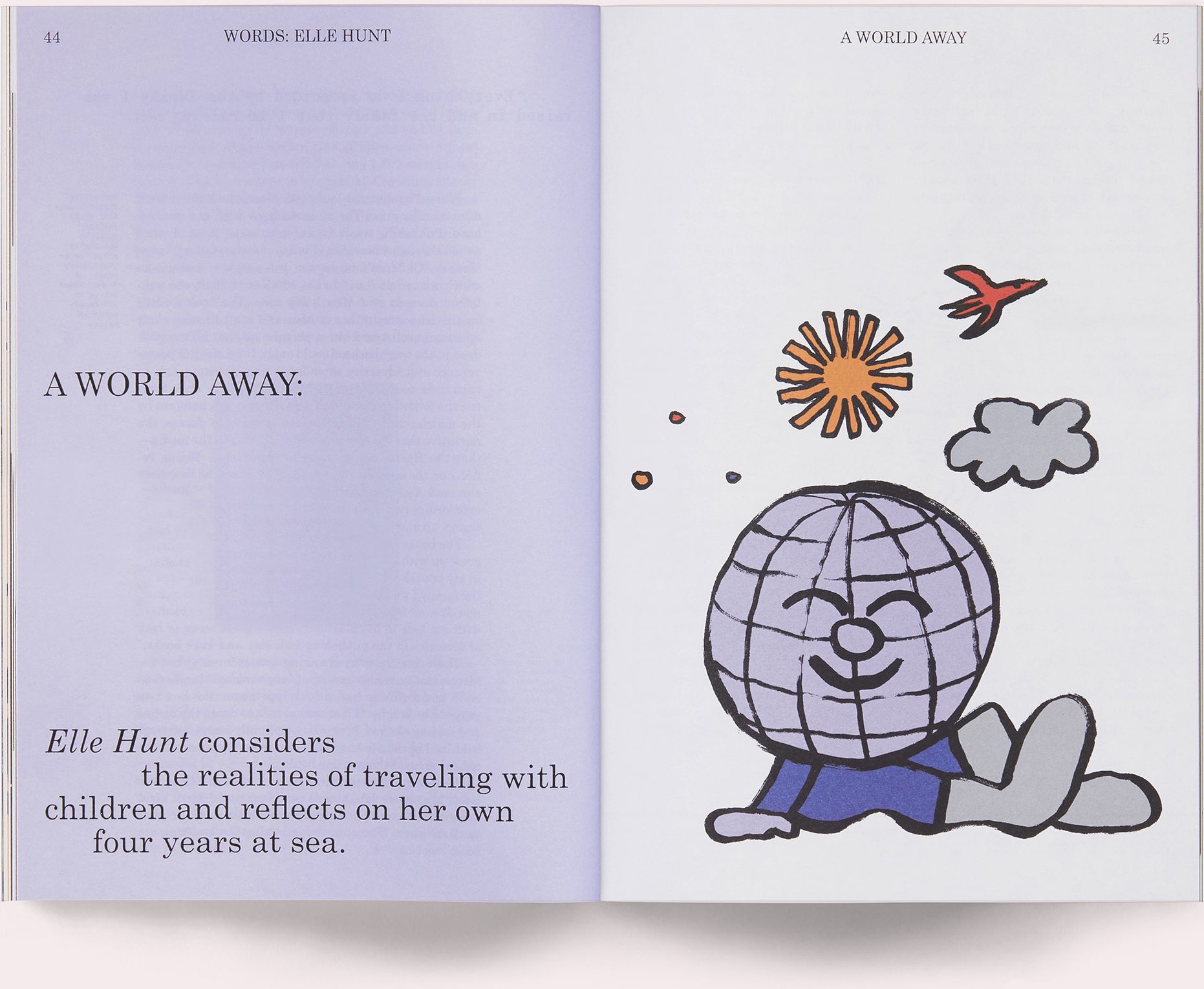

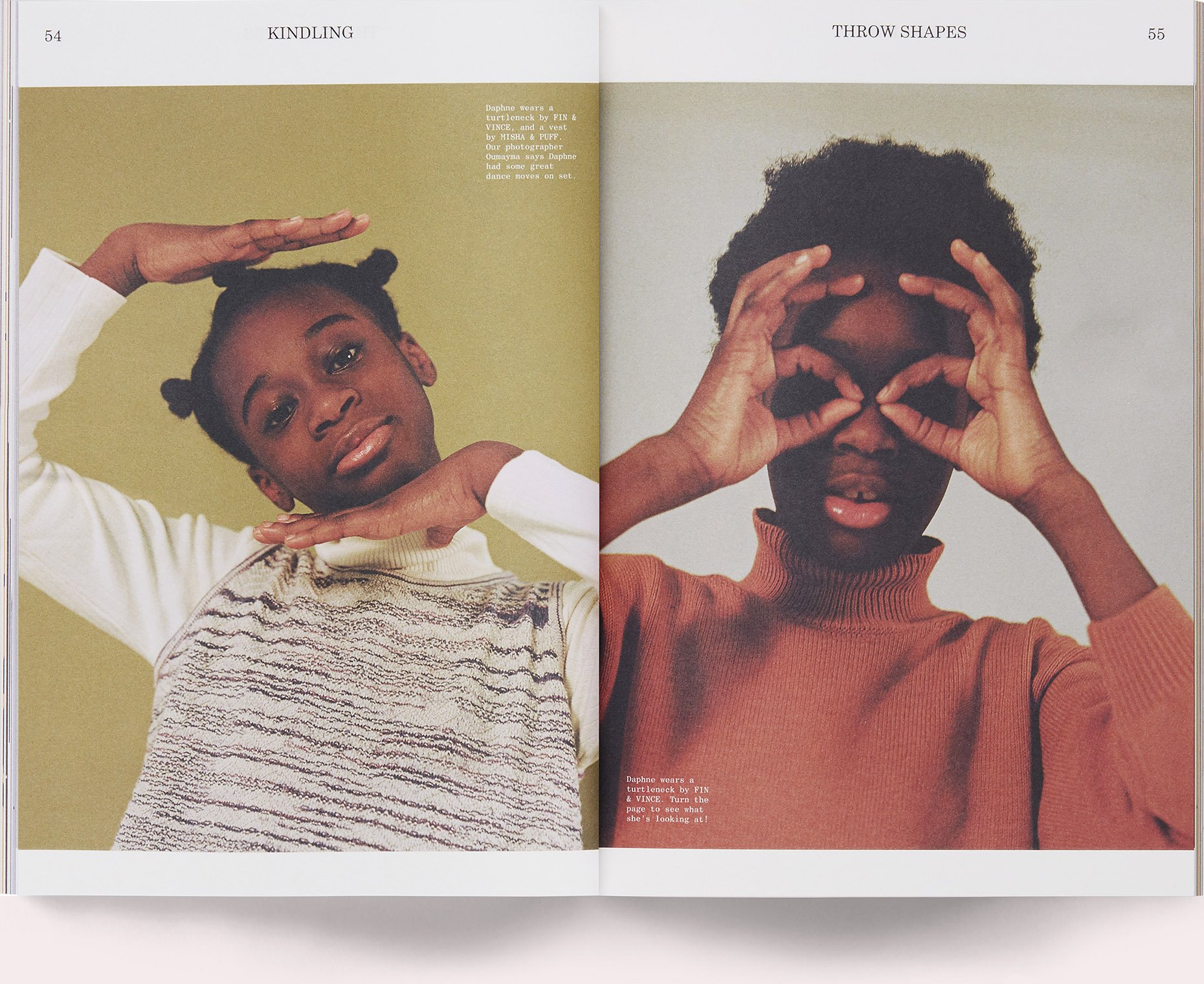
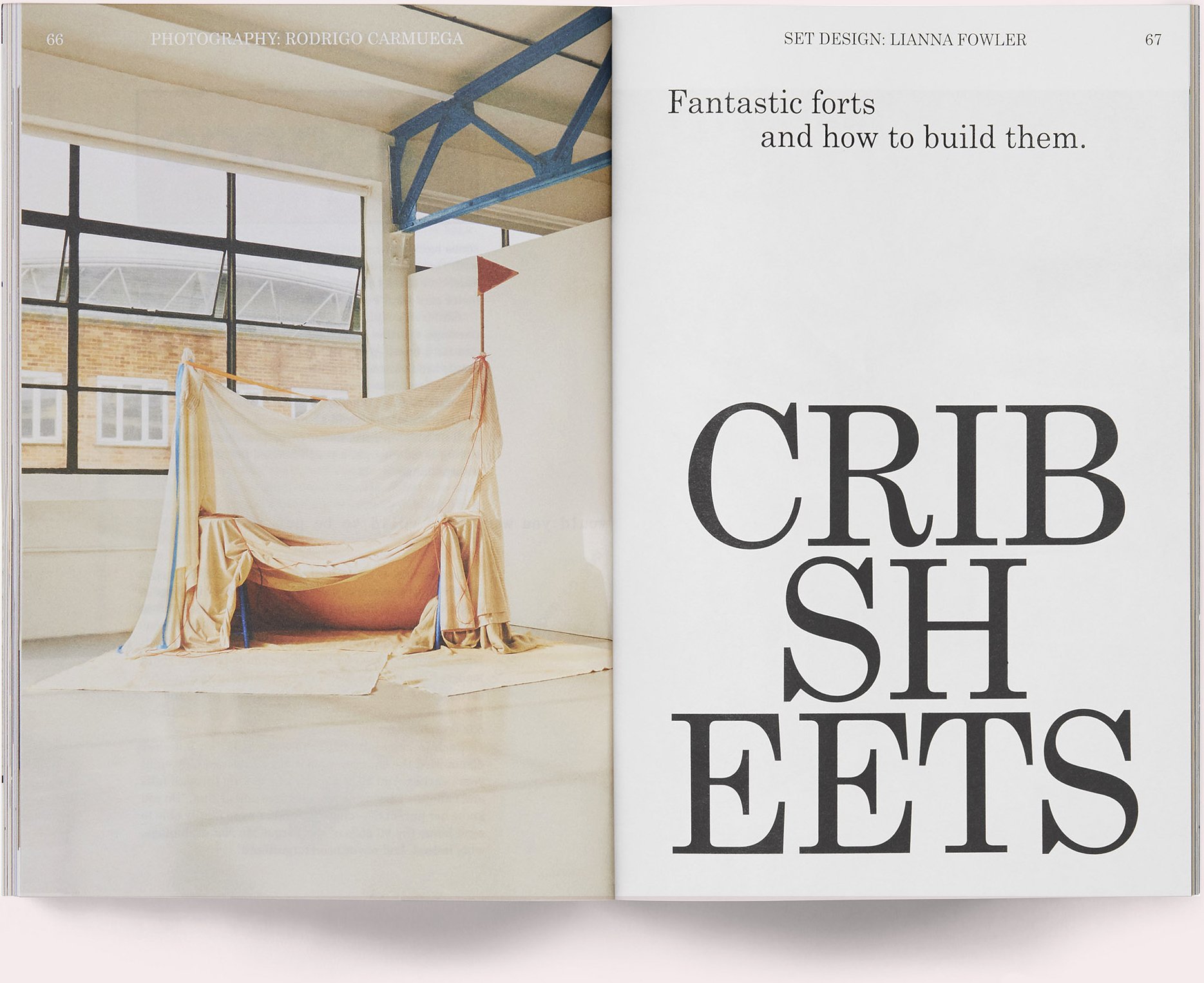
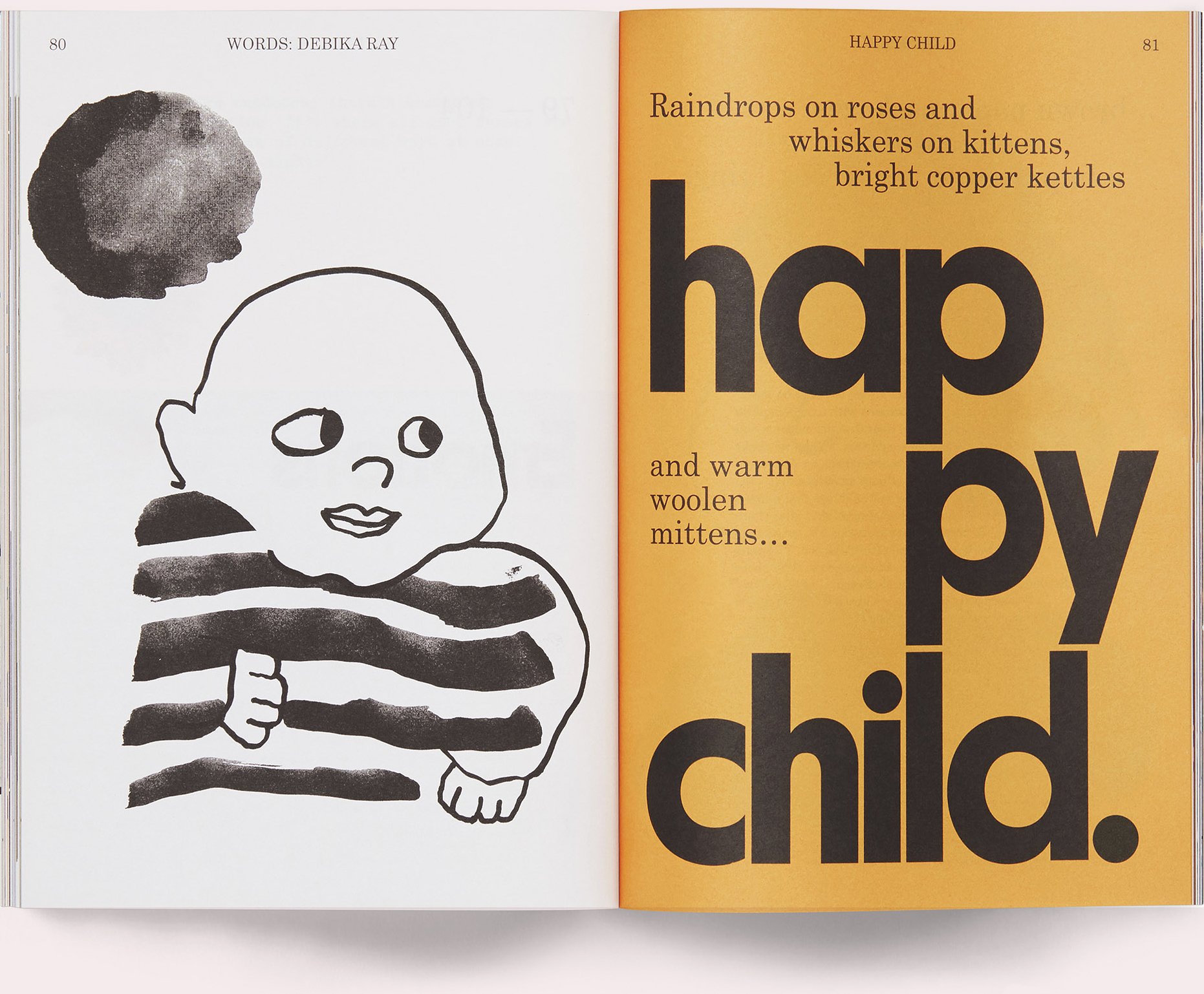
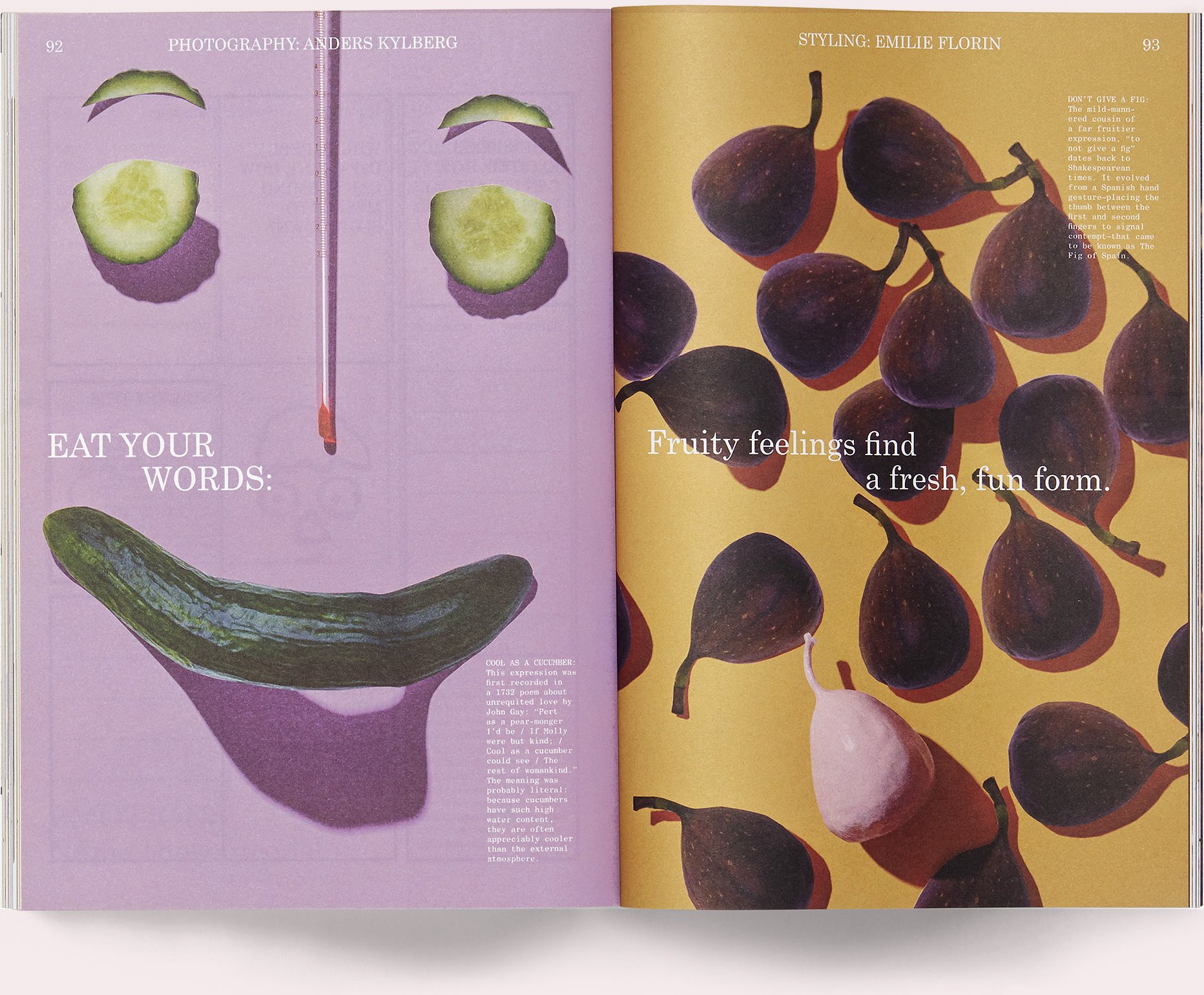
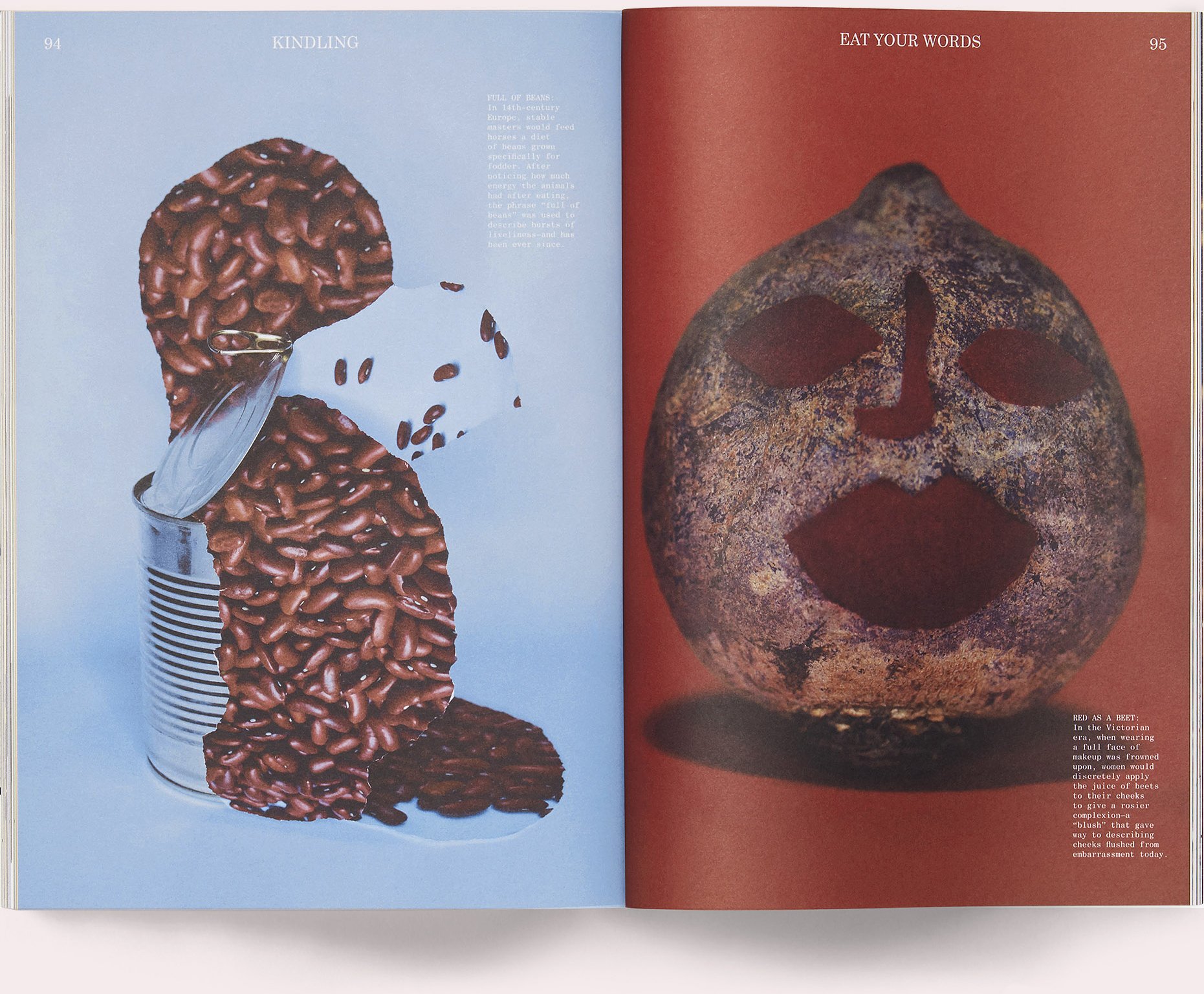
Patrick Mitchell: Yeah.
Alex Hunting: Yeah. So Jeremy used to do a magazine design conference called Colophon, which was in Luxembourg, which was just, like, a massive indie magazine festival. And they were doing a book to celebrate the festival called We Make Magazines. And it was basically a massive book about all of the independent magazines that you could think of.
And I wasn’t really into editorial design, particularly. I wasn’t into anything. But I quite liked book design. And basically the internship was just to help design this book. And it was me and a guy called Lars [Laemmerzahl], who was at my college as well, who were helping design it. And it just completely opened my eyes to this amazing, incredible world of independent mags. Bonkers, absolutely bonkers, sort of stuff.
So it was a real eye-opener. And from then forward, I was just really motivated. It pushed me a lot in that direction, actually, towards editorial design. So I owe basically a huge amount to that year in industry. But in terms of the college education in general, I think, because I was a bit lost, I didn’t have the best experience.
But I think it might be different in the States, but arts education here is not in a particularly great state, actually. I think a lot of the people that I have, that come and intern or come as juniors in college, the amount of money they have to pay now. And you don’t even get a space of your own at college. You don’t even have a desk or something, which I think was the one thing at art college you probably used to have, right? You used to pay your money and have a little bit where you could go in and work.
So I didn’t necessarily have the best time at college, but being in London was amazing. And I think it’s the people that you meet and the opportunities I think you get, are so much more important in a way. Or they were more important to me than all of the teaching and that sort of thing.
Patrick Mitchell: I remember when Jeremy was doing that event. I was always desperate to go, but it never worked out. But that’s the kind of thing that can really focus you on what you want to do with your life. And it sounds like such an intense weekend in such a specialized area really may have been the education you needed to guide you to where you are now.
Alex Hunting: Yeah, for sure. And I think the passion that you were seeing from all of these different people doing insanely different subject matter, but all storytelling, or image makers, all that sort of stuff, like incredibly diverse subjects, and all brought together for one sort of party, basically, over the weekend. It was amazing. Absolutely amazing.
So yeah, I owe Jeremy a lot for that. It was really, really eye-opening and it really focused me so much to the point where, as I say, I hadn’t been achieving much, hadn’t been doing very well in my degree, all that sort of stuff. But I came back into the final year and I just got it really. I finally understood graphic design, I’d learned a lot from people in the industry, I knew what I wanted to do more, the sort of studios that I was looking at, all that sort of thing.
So yeah, it was all really from there. So it was very lucky that I wanted to go to Barcelona for the summer.
Patrick Mitchell: In your college, did you get any education at all on the entrepreneurial aspect of launching your own career? Did they teach you any of the skills to run your own business?
Alex Hunting: I probably didn’t go to it, to be honest with you. I’m sure that they do those things. There are probably those electives. There are probably those talks and those things. But I just was disillusioned with the whole thing. I was having a good time, but, you know, I wasn’t … yeah. So I’m sure they do. I’m sure they do.
But I wasn’t really thinking about that, you know, I certainly didn’t think I’d be setting up my own business. I certainly didn’t think I was going to run a studio or anything like that. It wouldn’t remotely cross my mind.
I’d enjoyed interning so much that I just thought, “Oh, you know, when I leave, I’ll just go and try and get a job somewhere and work there forever. It’ll be the best, best time. It’ll be a lovely time.”
Patrick Mitchell: I think most people would agree it takes balls to go out on your own, to get space, to get clients, and all that. Did you grow up in a family with entrepreneurs?
Alex Hunting: My dad has run his own business pretty much his entire career. And I think you do get a little bit of that. I mean you see the bad stuff as well, I guess. You see times when you are flush and times when you are not, and that sort of thing.
So I think there’s a good work ethic from seeing that, being around that. Which I think I have always had—obviously apart from being at college—but once you’re focused on your own thing...
Patrick Mitchell: Was he passionate about what he did?
Alex Hunting: Yeah. He always says to me that he fell into what he did because he was a little bit lost. He’s a surveyor, he runs a chartered surveying business. But he really enjoys his job because he’s out and about, and he’s meeting new people, and he’s built a business. He’s very social, employs lots of people, and he’s a good boss.
So, yeah, I think he definitely enjoys it. I don’t think it’s a passion in the way, I mean, I always forget, and I think it’s amazing how lucky—whenever I think it’s awful, when work is hard—we are just like the very, very minority of people that are really passionate, that their, kind of, their hobby is almost their job. And that is a huge privilege to have.

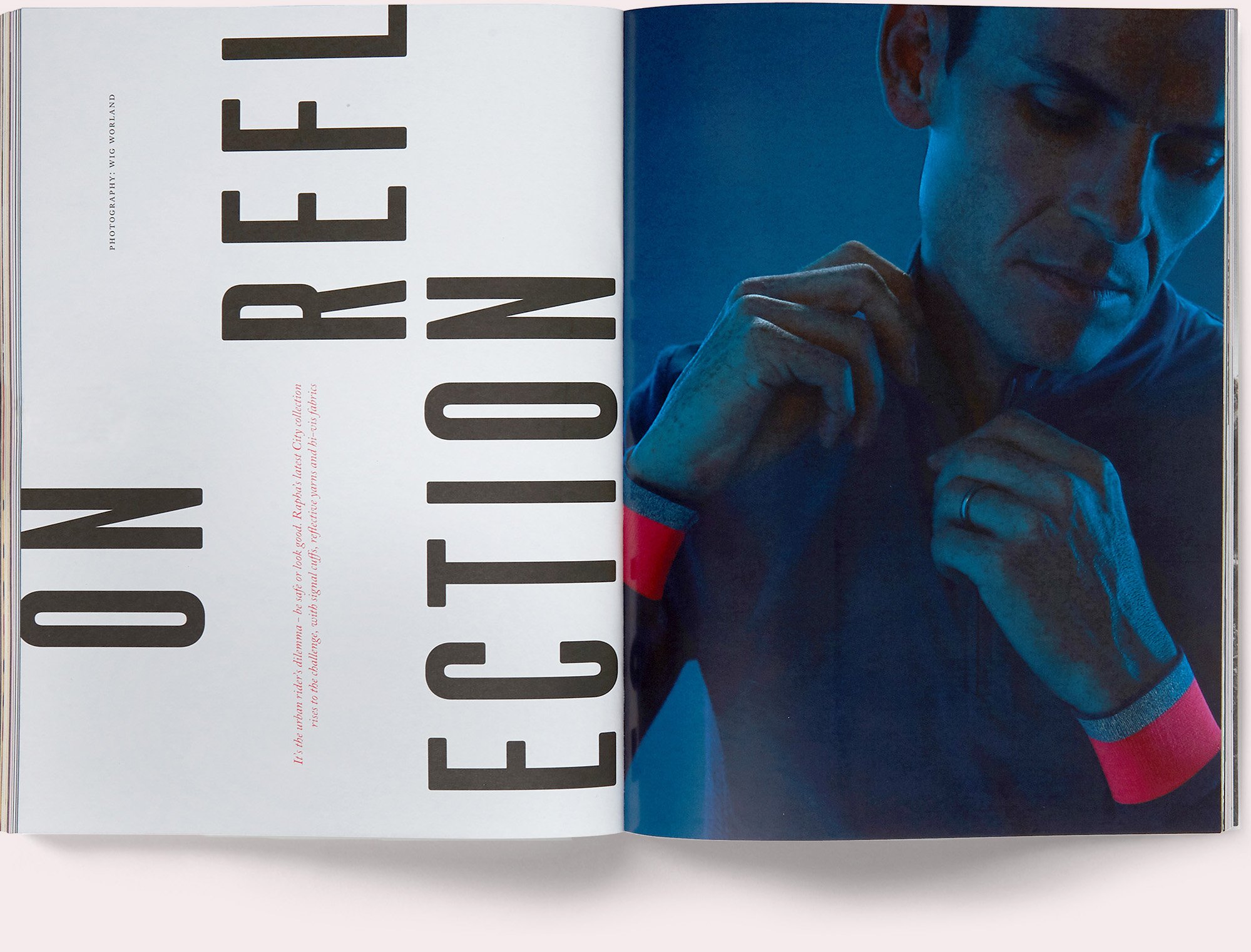
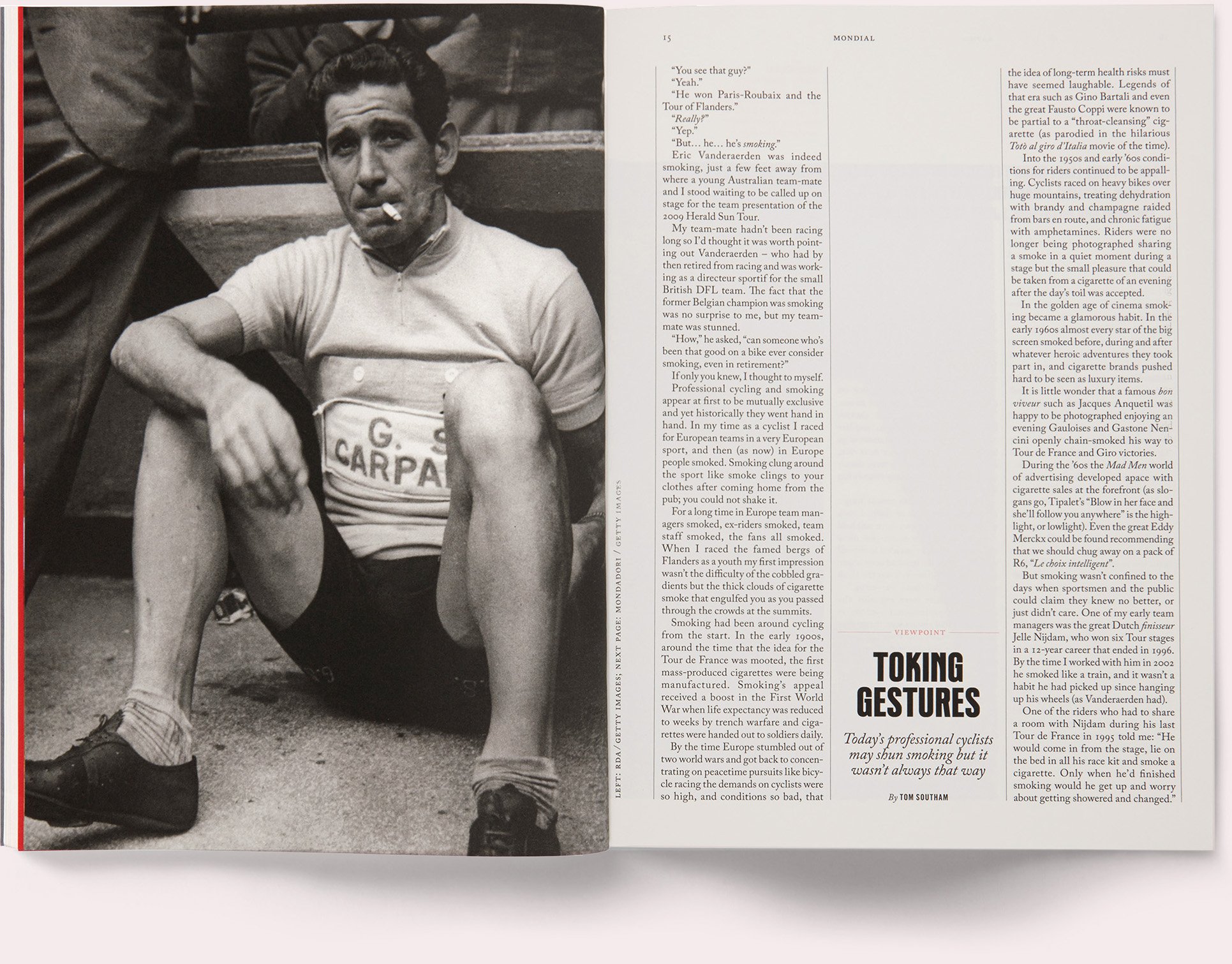
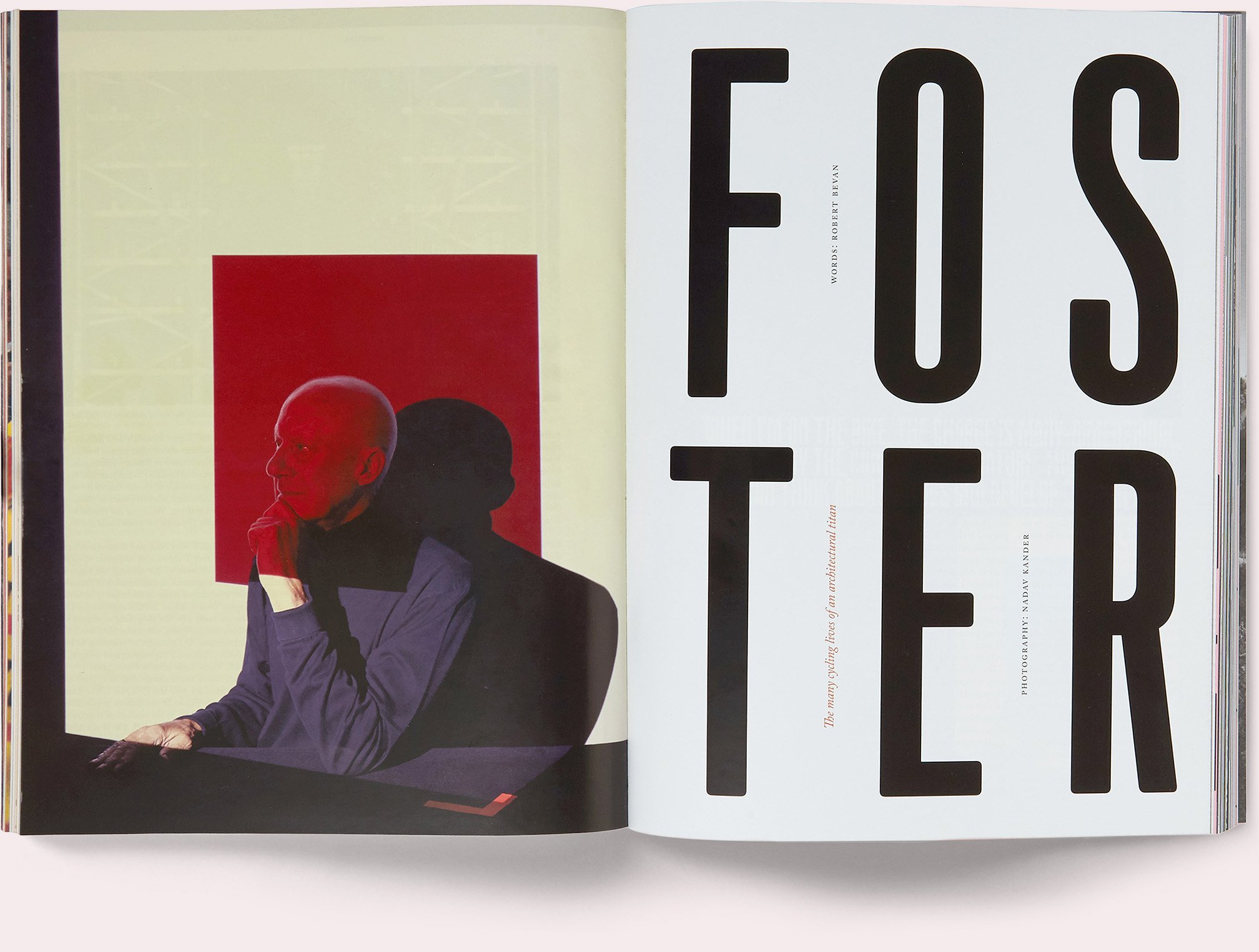
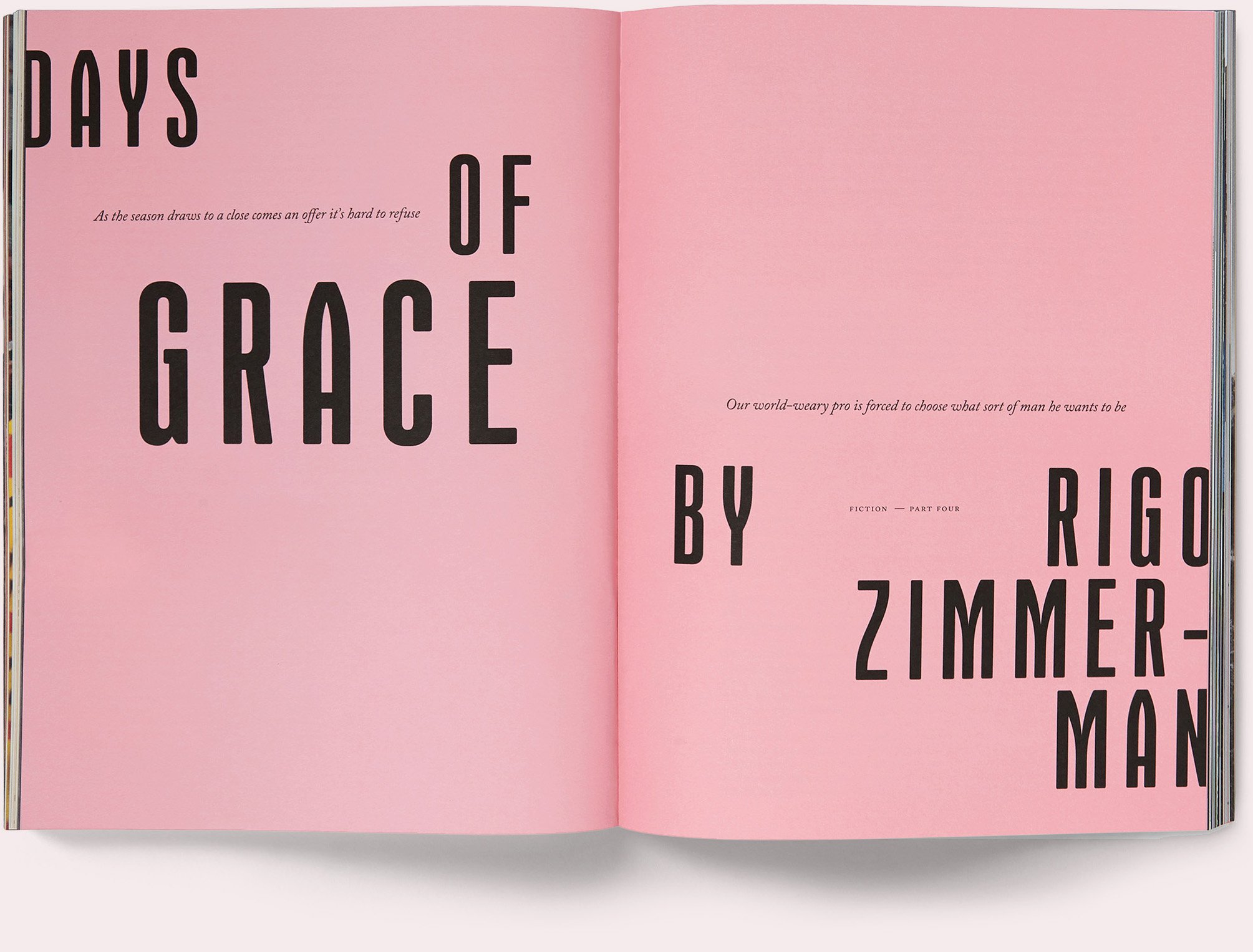
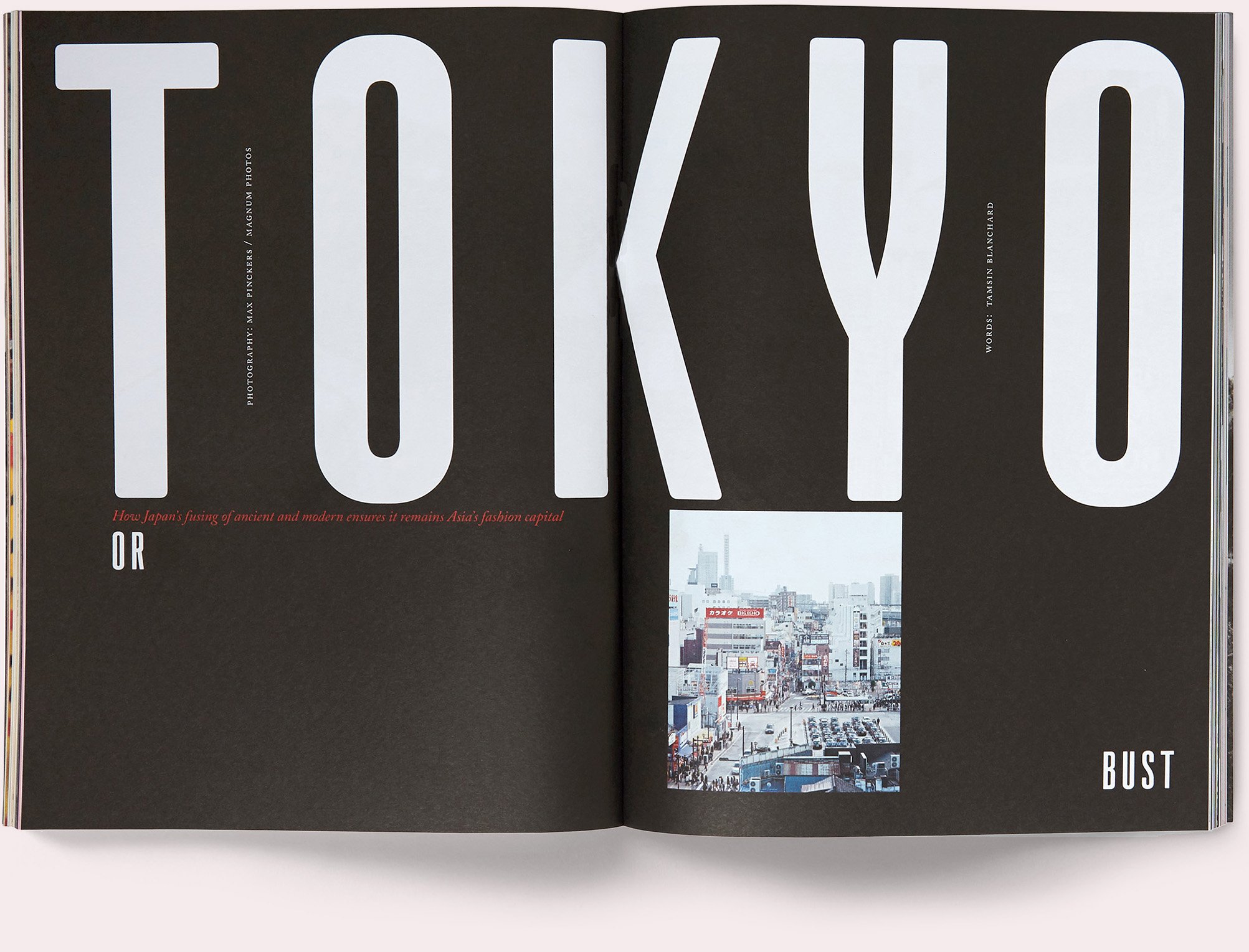
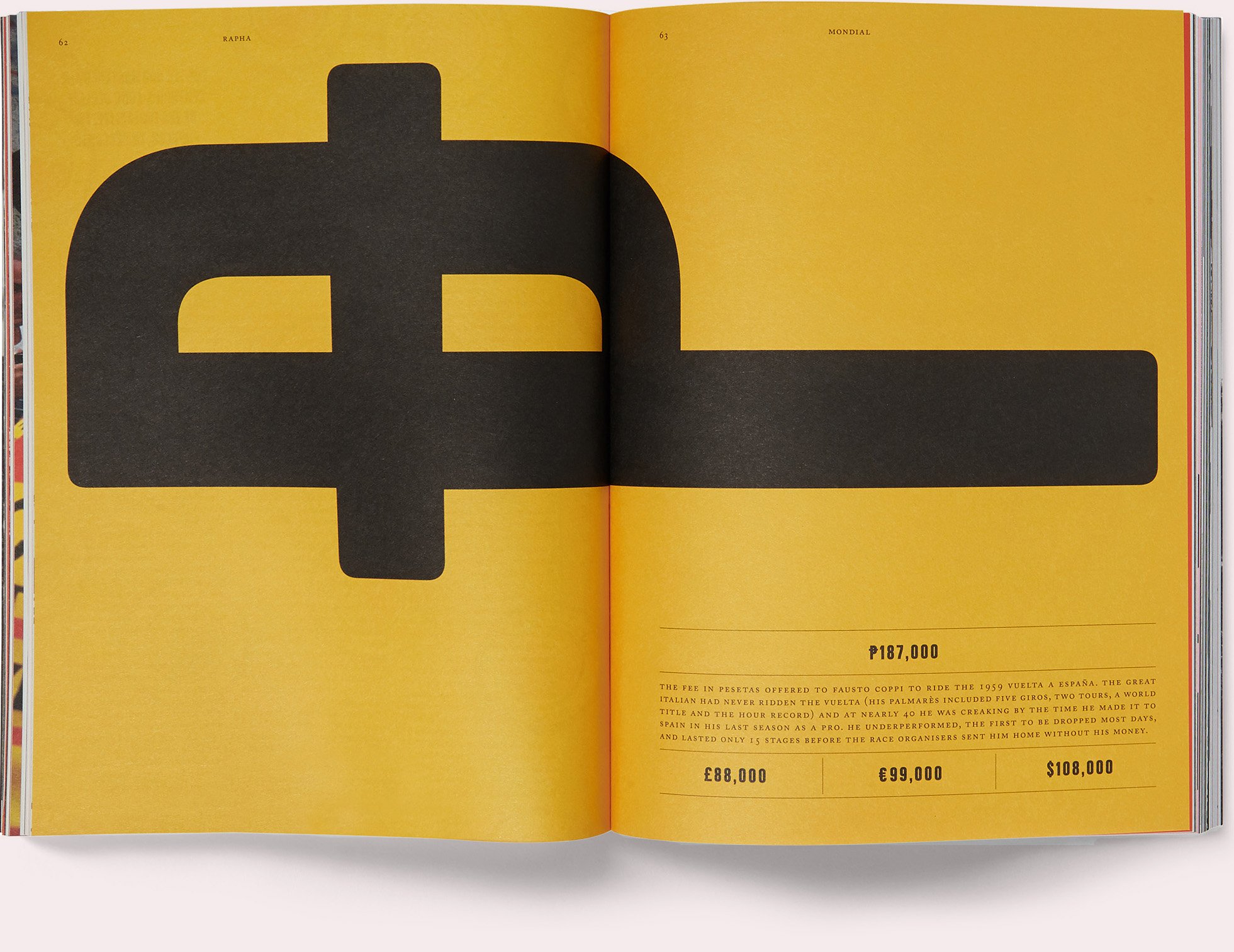

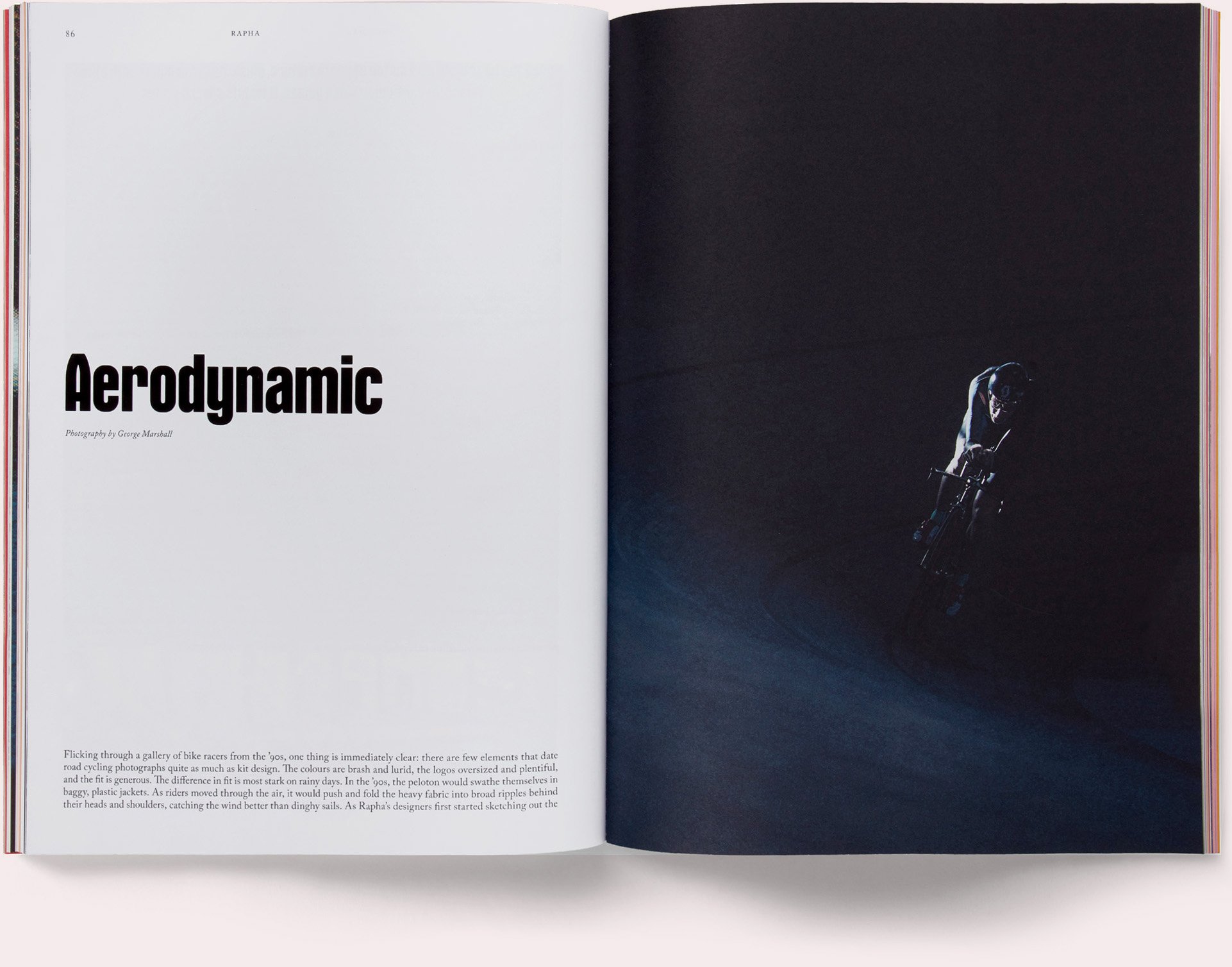

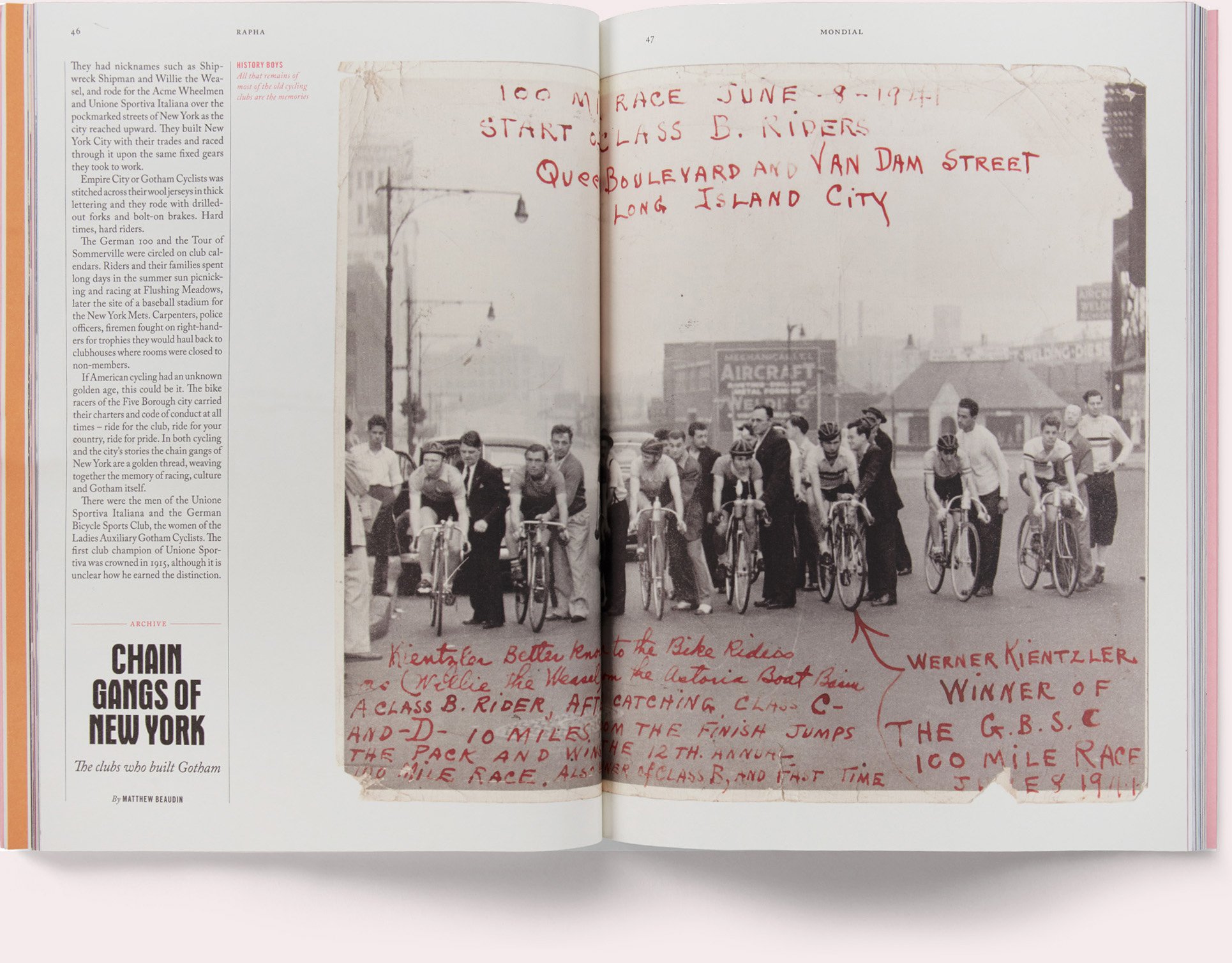
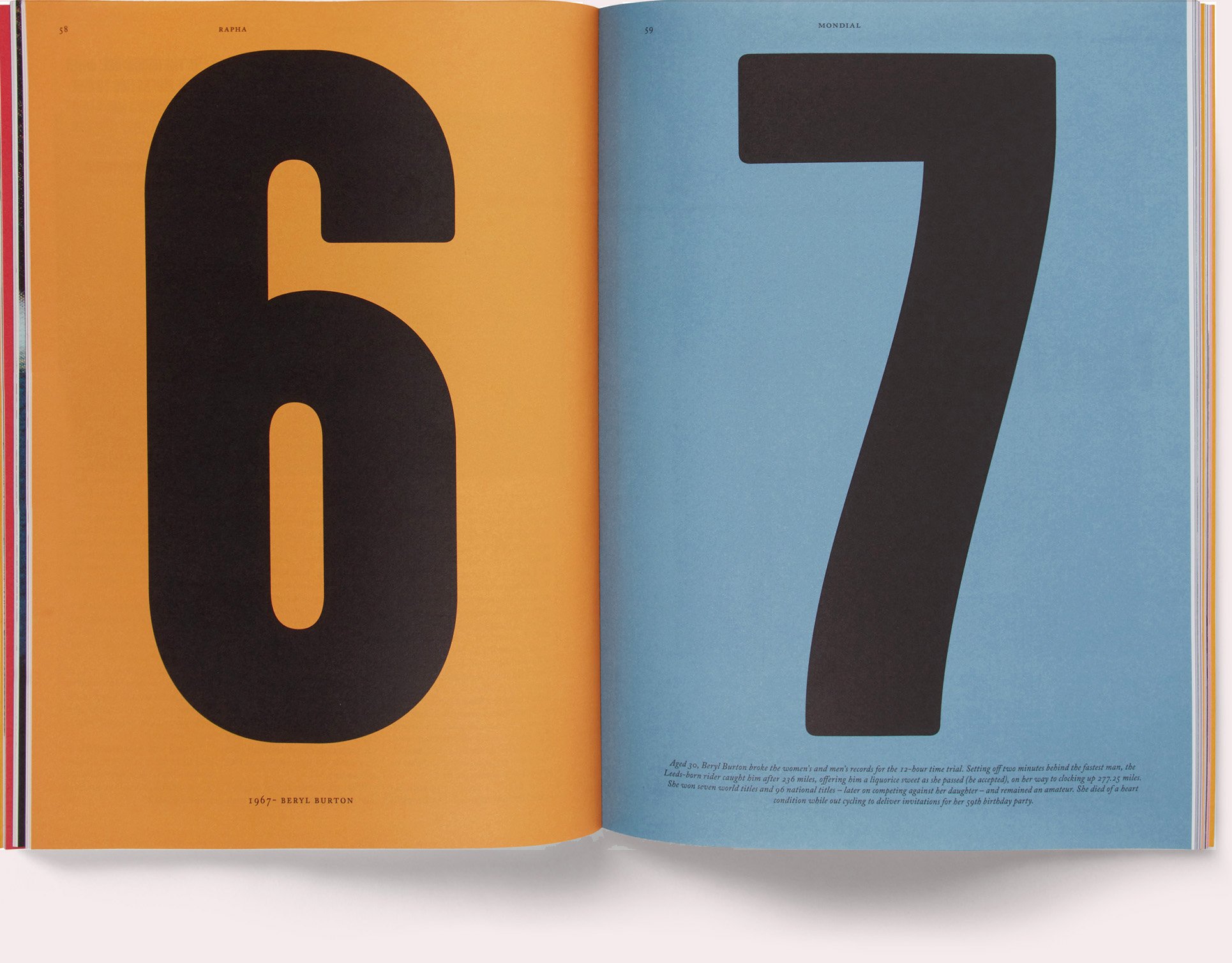
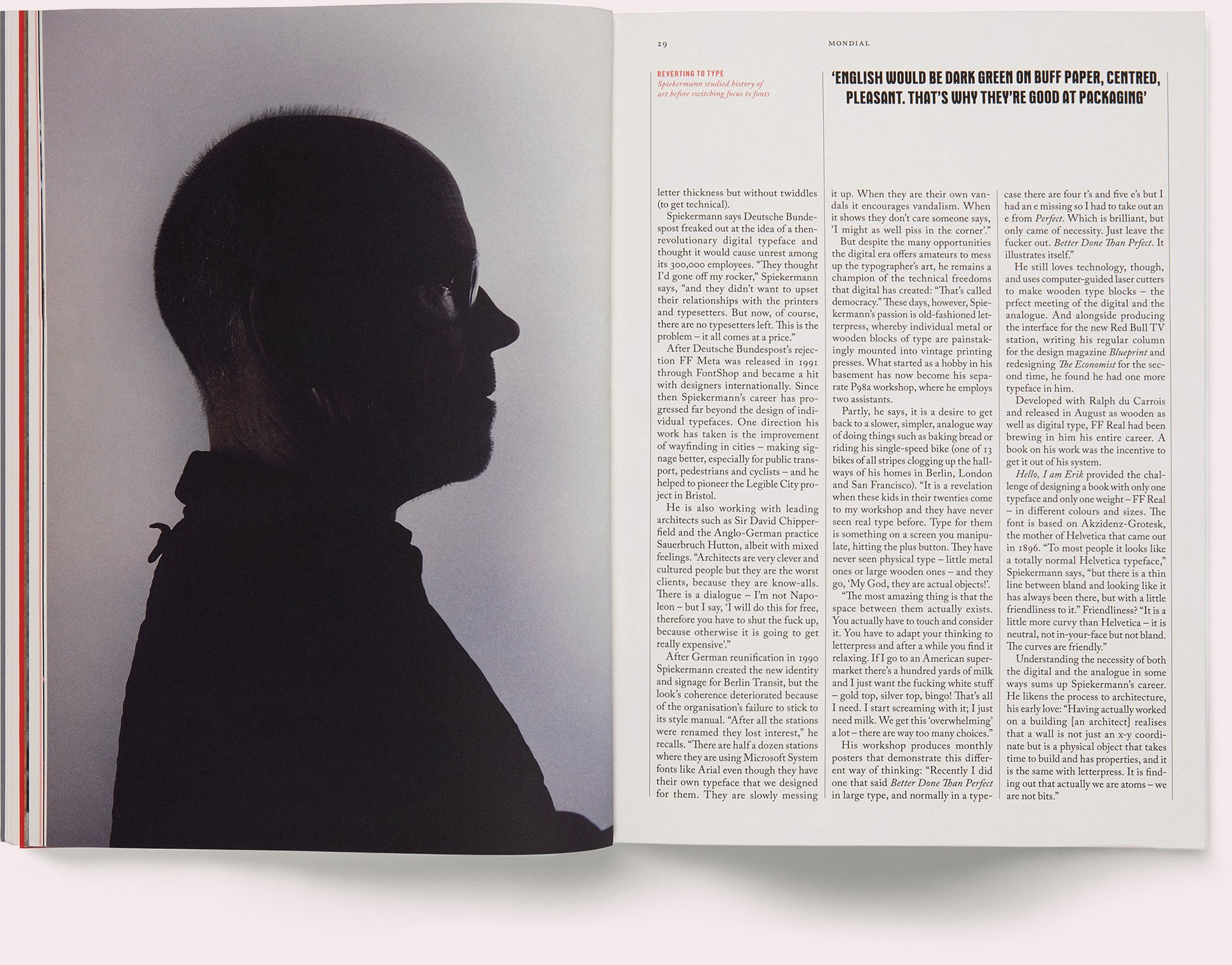
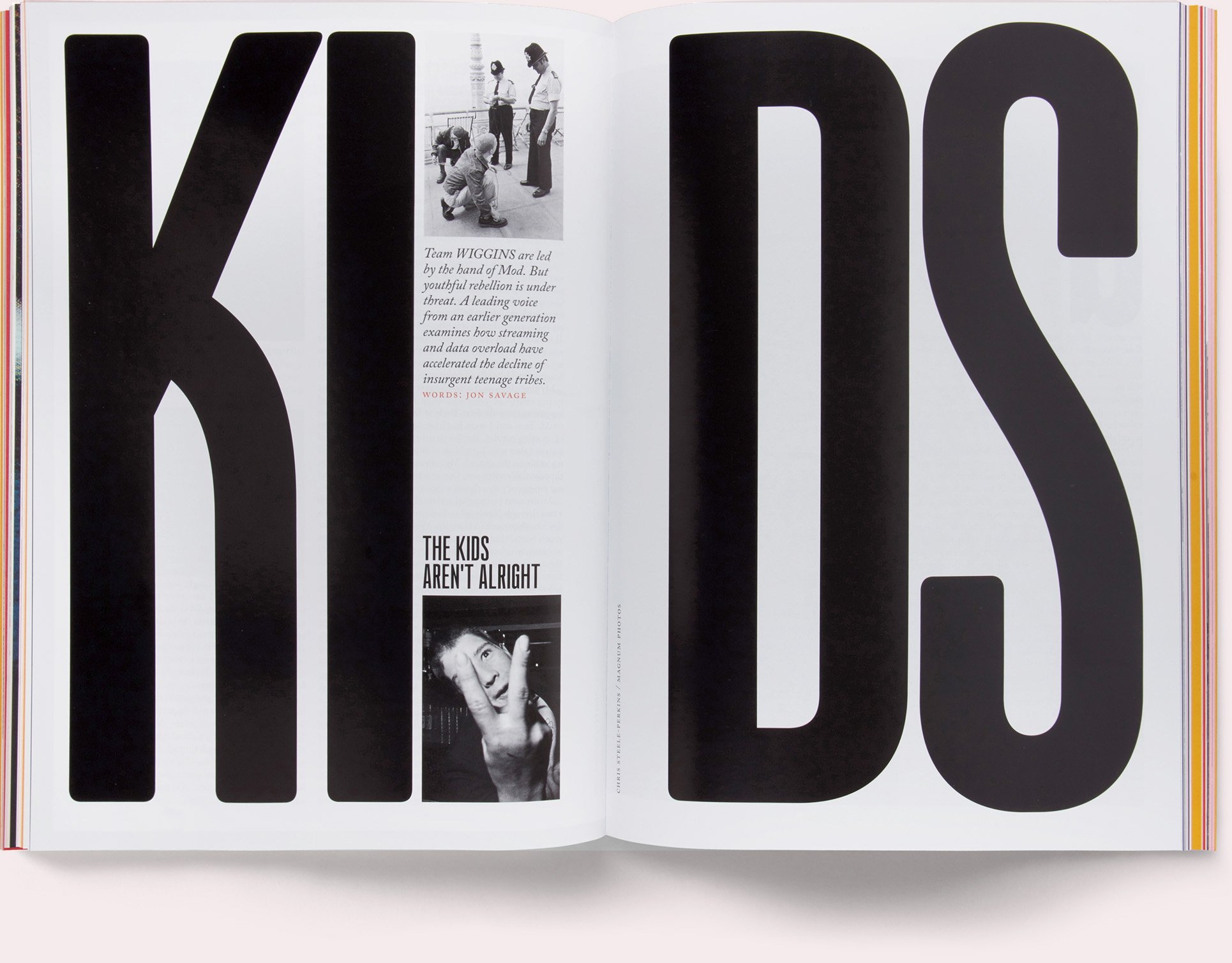
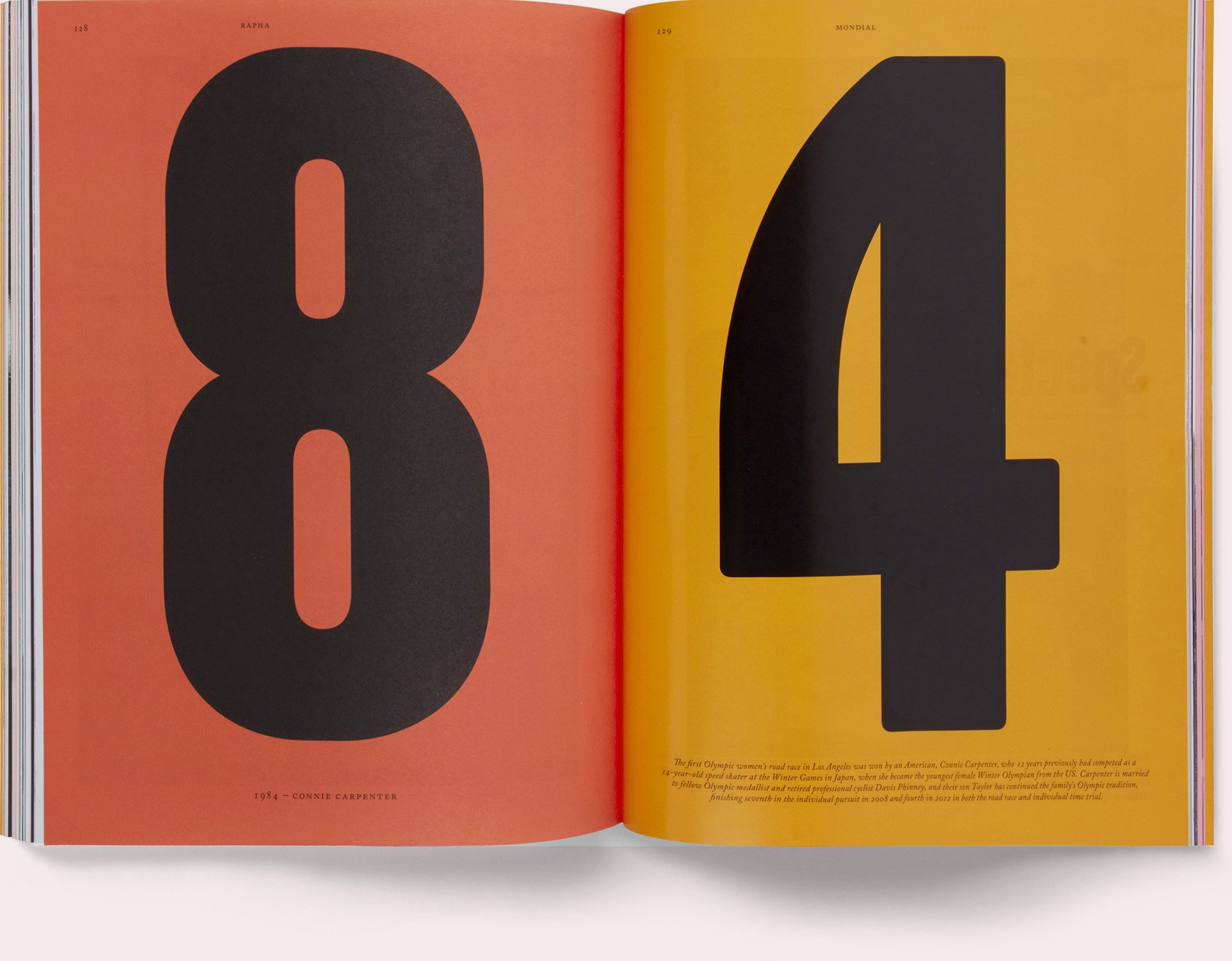
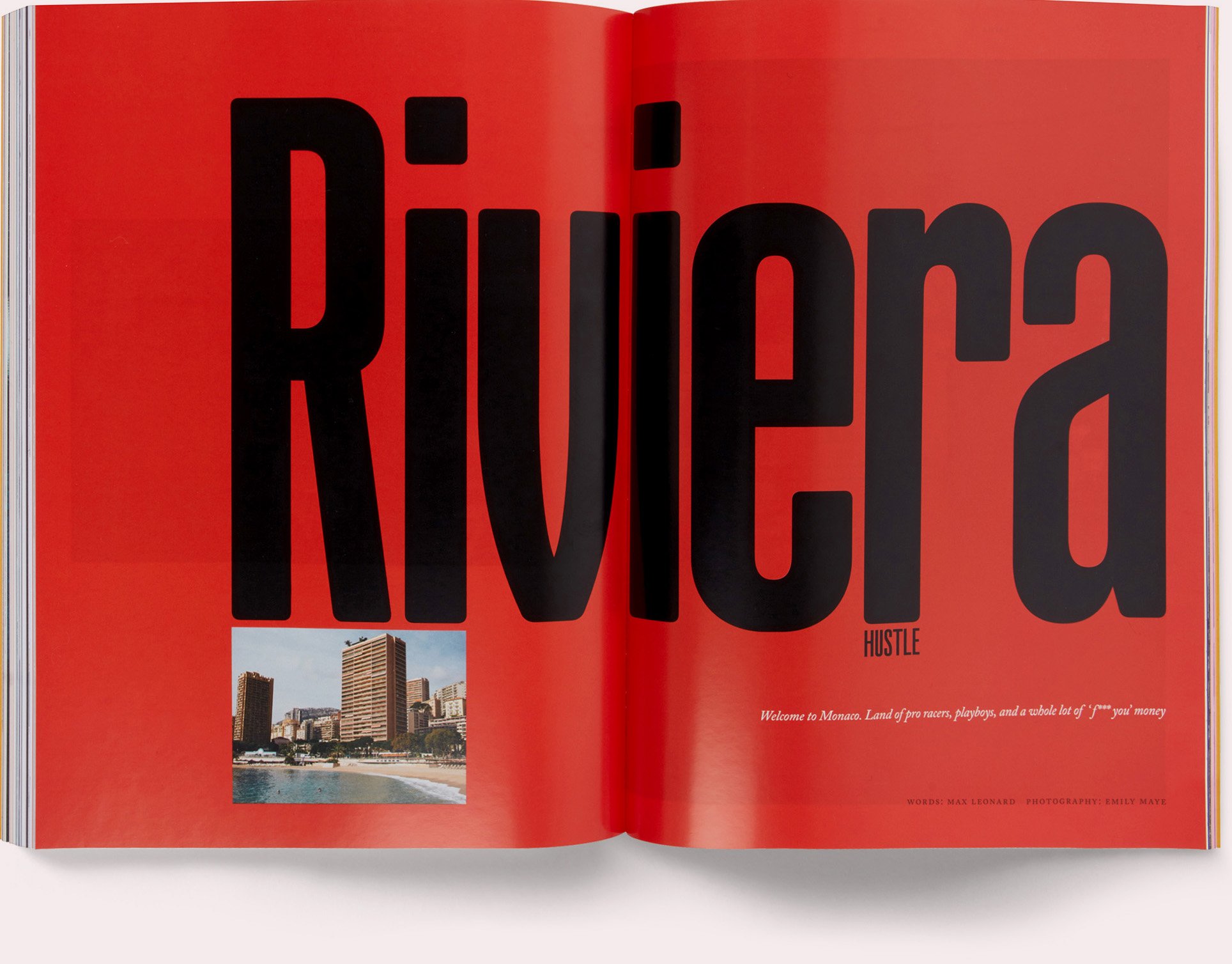
Patrick Mitchell: There’s a lot of talented designers, but there’s not a lot of designers who have whatever that missing trait is that allows them to have the confidence to just open their own place. And I’ve met some amazing people who have just failed miserably, as our business falls apart around us, who have been forced to go out and try to start their own business and they just can’t function outside of a corporate structure. But you did. And look at what you’ve done with yourself.
So let me ask you, I know you worked a couple places before you launched your studio, but when you did, what were the challenges? Did you open your door with clients already in hand or did you have to start hitting the pavement looking for work?
Alex Hunting: I was doing some freelance-y sort of bits and pieces. I think like everyone, you start freelancing, and then get to a point where it sort of naturally becomes like a business, and you need help on projects. So it becomes a business.
But what did I start with? So I was really lucky that I was doing some freelance work for The International New York Times, the Opinion section, before it was the International Herald Tribune, and then it became The International New York Times, and they were looking for a London-based freelance part-time art director.
And that was amazing as an opportunity because it was only part-time. But I had some regular—do you know what I mean—kind of income, while I could do other projects. And obviously when you’re starting out, your fees are so low for the projects that you want to do because you’re in that constant struggle of wanting to do great work to try and attract more work, but you know that great work you’re getting just pays so poorly.
So I was lucky in that sense that I had a bit of that buffer. And that gave me a bit of space to be able to start the business really. But I do think that editorial design is actually quite good, it’s like a good part of graphic design, in a way, to start a small business. Because, by its very nature, it’s regular work. So if you get a magazine contract—whether that’s quarterly or monthly, biannual, all that—when you get those coming in you can plan. You know that you’ve got x amount of work lined up.
And obviously it depends how many of those contracts you’ve got, but as opposed to if you are just going out and trying to get, say, branding projects or that sort of thing, it’s not necessarily as easy. So I’ve always thought editorial design is quite good like that.
And I was quite lucky that, relatively early on, I started freelancing. I was working with Matt Willey on a magazine called Avaunt. And then after that, the first big, great project that my studio took on was Rapha’s magazine Mondial. And then quite soon after that we started doing Kinfolk.
And those were biannual or quarterly magazines. And so even that as a start, you just know that there’s X Amount of money coming in and off the back of that, it all grew from there. And you’re going out and getting clients from there.
“We are just like the very, very minority of people that are really passionate, that their hobby is almost their job. And that is a huge privilege to have.”
Patrick Mitchell: When I look at your work, which is really just stunning, I find it fascinating that someone with your talent has somehow avoided working for the big brand name magazines. Have you ever been approached by the big publishers?
Alex Hunting: Yeah, I have. I have actually. But not in the UK, though. Only in the US, once. Well, it’s happened twice. But it’s your terrible, terrible visa system that you have. So basically, if you get offered one of these jobs, you have to get an O-1 Visa, which means you are really good in your field and you are allowed to come over to the States.
But if you have a girlfriend, or a wife, or anything like that, your partner is not allowed to work under that visa. So, my girlfriend, who’s got a very successful career of her own—they’re not really decisions that you can just make on your own, sadly.
But, it never happened. I’m not sure how well I would do. I don’t mean that I’d get bored, but I do l really like working on lots of different things.
Patrick Mitchell: So if Condé Nast or Hearst called you tomorrow— with a great offer and no visa problems—with a job in the States. Would that be tempting?
Alex Hunting: What’s the title? What’s the Condé Nast title?
Patrick Mitchell: Vanity Fair.
Alex Hunting: Oooooh. Yeah. I mean, yeah. Vanity Fair or Wired or something like that—I’d be very, obviously, it’d be hugely, it’d be ridiculously flattering. And it would never happen. But I’d definitely have to think about it. No, I was obsessed with the idea of working in New York. And I love New York. And every time I go there I just always think, “God, I’d love to live here and work here.”
Patrick Mitchell: You mentioned Matt Willey, who people know from The New York Times Magazine, and who had some great success there, he’s now a partner at Pentagram in New York. What would you do if Pentagram called you tomorrow—again, no visa issues—with an invitation to join them as a partner? In London or New York.
Alex Hunting: Yeah, of course. I always think [Pentagram’s] such a designer’s thing. It’s the most flattering thing you could be asked to do in our industry, isn’t it? Because of the history, and all the partners that have gone before.
I also love the idea that it’s just all those individual teams. I love it. That you build your own little pod. And I kind of love, I mean, I don’t know what it’s like on the inside, but I like the idea that it’s quite dog-eat-dog. Like, you’ve got to hold up your end of the bargain. When you’re sitting around the, like, end of year meeting or whatever, and it’s “Michael Beirut’s brought in MasterCard!” or something. And you’re like, “Oh shit!”

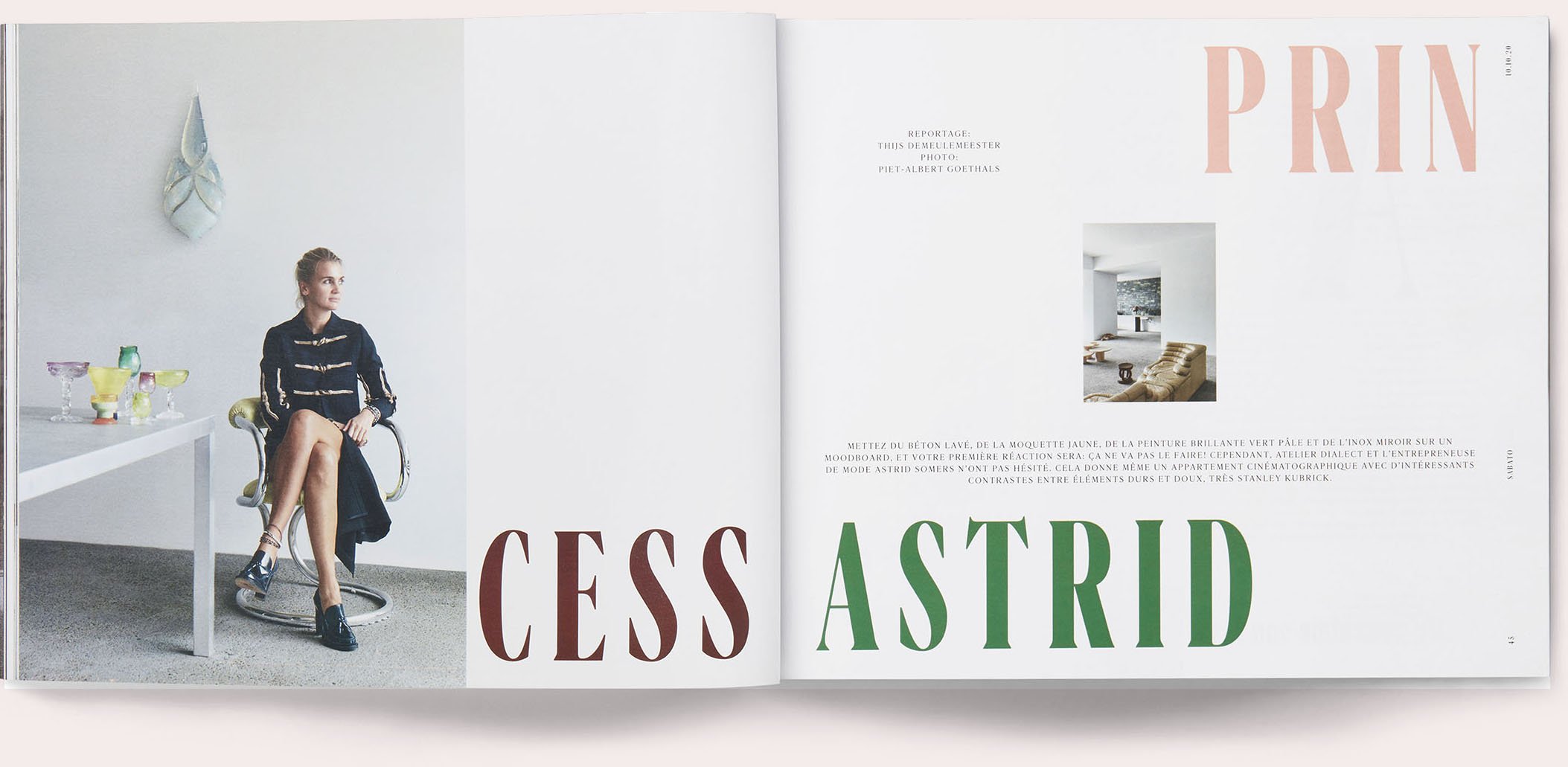
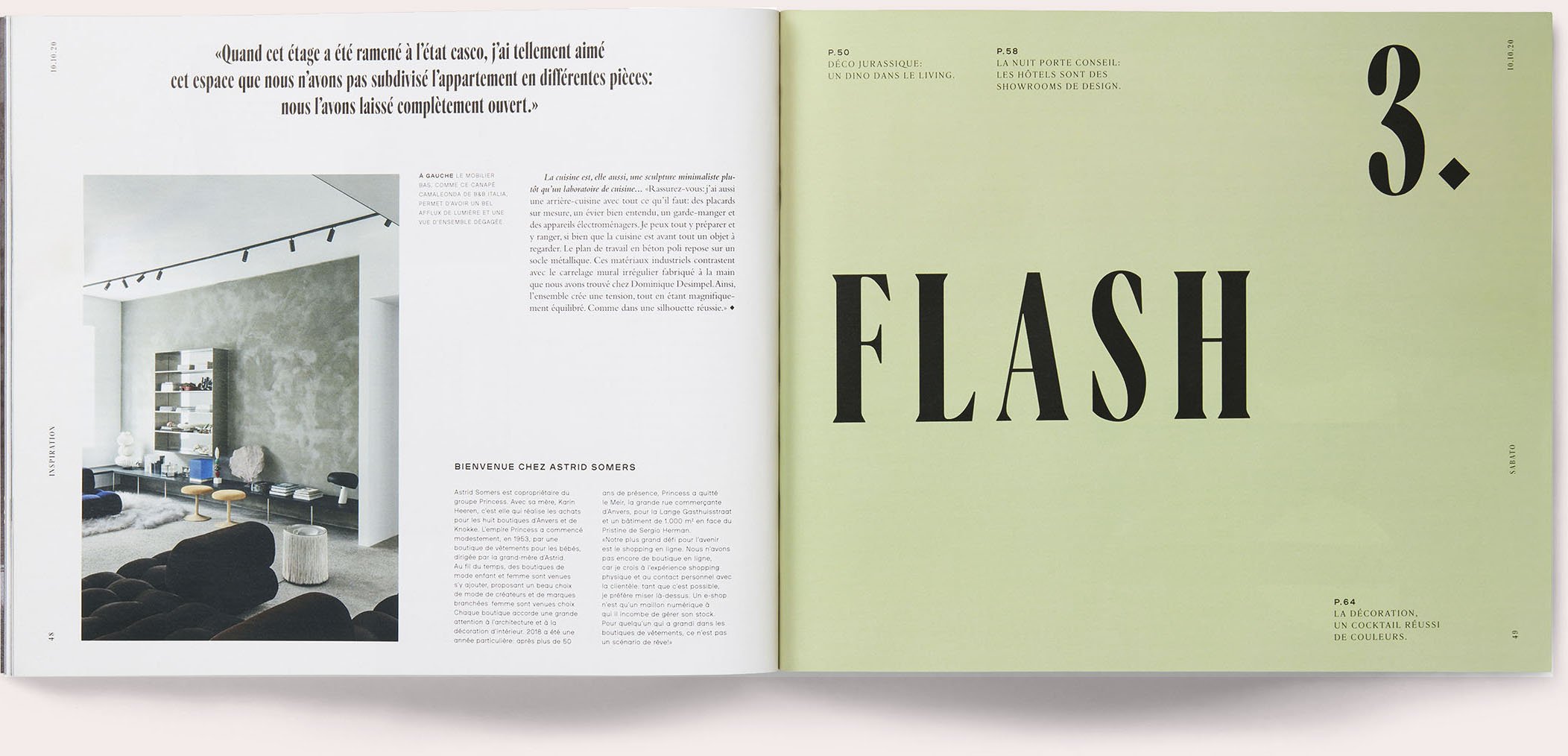
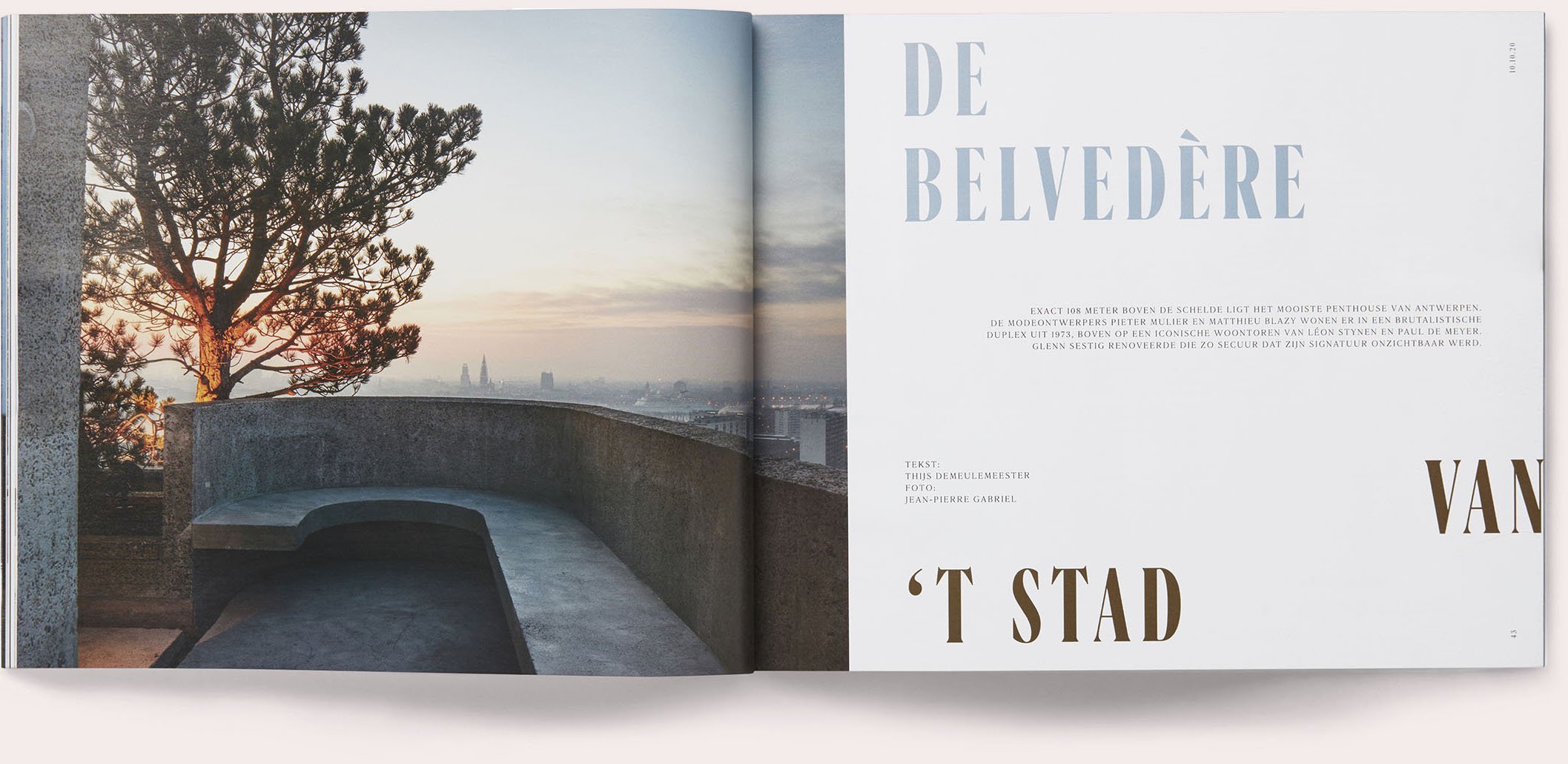
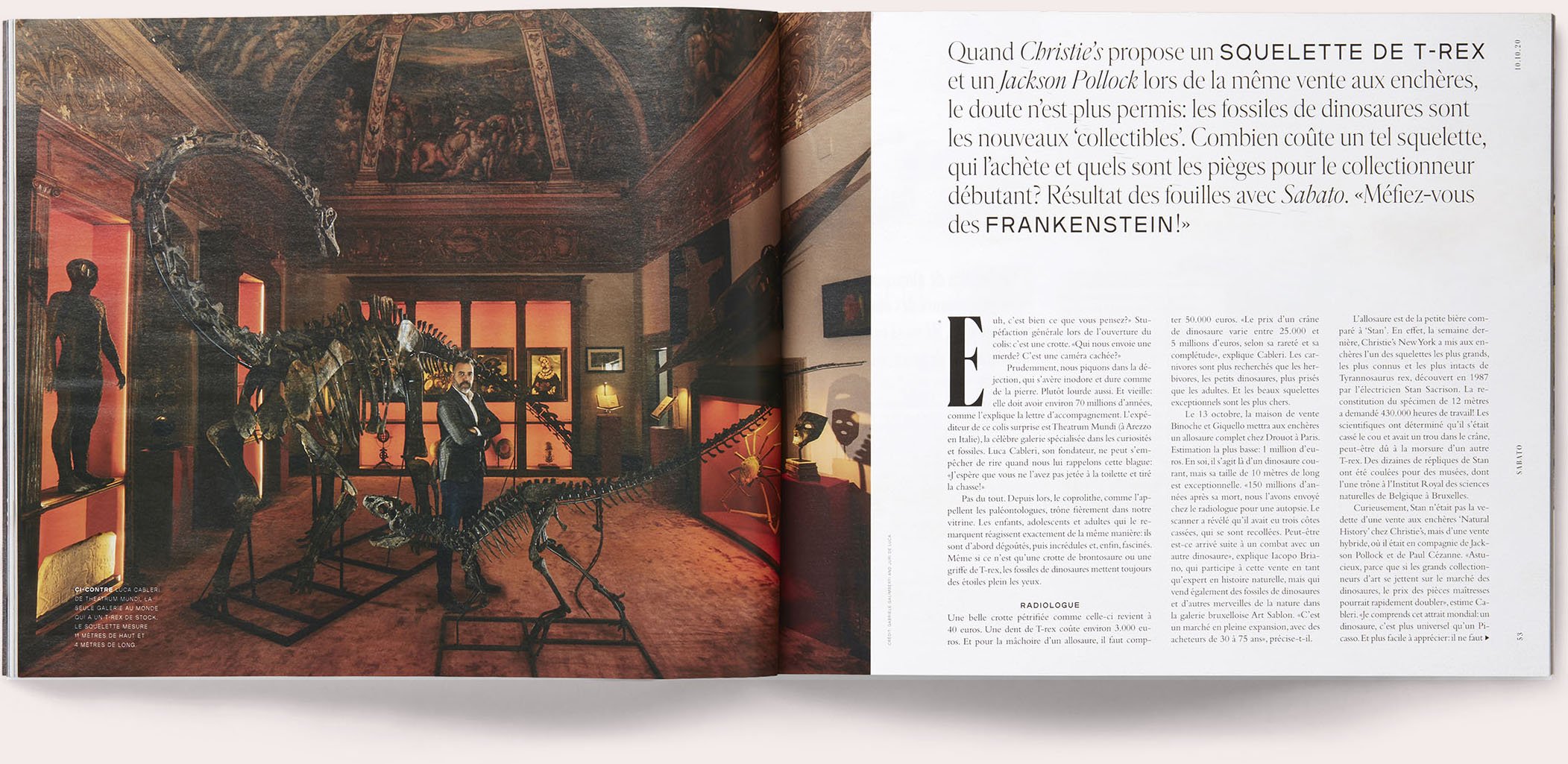
Patrick Mitchell: Well, that is the thing, from what I understand, what separates the people who make it there from those who don’t, is that ability to not only bring in business, but handle the pressure of being responsible for bringing in business. In addition to doing great work.
Alex Hunting: Yeah, yeah. No, I bet. The whole business, it’s a whole other equation, isn’t it? And it’s the size of those brands, isn’t it? Because, you can run a very successful small agency where you are super hands-on and handle everything. But then when you start dealing with those huge clients—I can’t imagine what that’s like. The pressure. The insane pressure.
But yes, I would, obviously. That would be amazing. Amazing. I remember reading Vince Frost’s book. I don’t know if you read it, but he was, like, the youngest-ever Pentagon partner. But I remember he, pretty much, didn't like it that much and he much preferred running his own thing.
I’m sure there’s lots of people that go into it who run their own thing, who realize that they probably preferred it, but you just can’t say “no” to it, can you? That’s the thing.
Patrick Mitchell: Yeah it’s really an interesting thought. Note that we’re two people who, to this point [laughs], haven’t had the invitation to go work at Pentagram yet. However, that said, I would say from your output, and I know from my job satisfaction, I don’t need big, giant brands to make me proud of my work or feel successful. I’m just doing, as you look like you’re doing, a lot of work that just makes you very happy.
Alex Hunting: For sure, for sure. I guess you’re still your own boss there though, aren’t you? Which is the one thing that you hold onto, right? Like you’re still, you are your own boss, even if you’re at Pentagram.
Patrick Mitchell: Well, but then you have the collective air conditioning bill, and the lighting bill, and the plumbing bill, and the employee payroll, and all that stuff.
Alex Hunting: Yeah, true, true, true.
Patrick Mitchell: All right, let me shift gears a little bit. You talked about Matt Willey and Jeremy Leslie, two noted, important magazine designers and thinkers and makers. Along those lines, when I was at Fast Company, we used to talk about the value of having mentors. We used to call it your “personal board of directors.” Who’s on your board? Who do you turn to for advice?
Alex Hunting: I speak a lot with a pal of mine, Charlie [Hocking], who I went to college with. He’s a brilliant designer. He was a design director or motion director for Design Studio. Do you know Design Studio? Like the big London branding agency. But anyway, at college he was always just a brilliant designer. We are super good friends. And I’ve always really, really trusted his opinion. He doesn’t work in editorial design, but he’s just got really impeccable taste. So I speak to Charlie a lot about stuff.
I’m good mates with a guy called Kuchar Swara. He was the art director of Port—he founded Port with Matt Willey. And he’s the creative director of The Telegraph now, which is one of our national newspapers. He’s an amazing editorial designer. I speak a lot with him. And then I run a lot of stuff past my girlfriend who, again, not a designer, but she’s a set designer.
I do think it’s super important to do that stuff, particularly because I do run my own thing and because I’ve been doing my own studio for quite a long time now. I did work for a couple of places, but it was only for a few years really. So it is important to get outside of that, I think. To not think that you know it all, or ...
Patrick Mitchell: ... have to have all the answers...
Alex Hunting: … Yeah. Yeah, definitely. I’ve got a few mates that—I’m sure it’s the same in the States—there’s a little London, sort of a bit of an editorial design scene. Like we go to Type Tuesdays, Eye magazine does a lot of talks, and there’s a lot of things we go to. And I’ve gotten to know quite a few people there.
So there’s a lot of magazine people that I chat to about things. I do think it’s important. And the mentor thing was massive for me. As I said, you know, I owe Jeremy a huge amount for pointing me in that direction. Matt as well. I learned so much from Matt. I didn’t even work with him for very long at all. I interned with his old studio, Studio 8, just after I’d graduated. And Matt was only there briefly because he was working at Frost. He was doing a kind of, not sabbatical, but Vince had asked him if he wanted to be a creative director there for a bit. So he was only in the studio for a little bit. But we worked on a magazine called You Can Now, which was the magazine that the first studio I worked for published. And Matt did the initial design and then I did a couple of the subsequent issues. So I worked with him on it.
And you just learn so much from seeing someone like that up close. Just how they do layout, after layout, after layout, after layout, to get to something that’s great. And particularly people that have got a lot of time and patience for you, which Matt always did.
So yeah, I owe him a hell of a lot. I think it’s really important, the mentor thing.
“There’s a huge amount of dross in the independent magazine world as well, right? There’s some total crap out there.”
Patrick Mitchell: Who’s on your team at your studio? Are you a solo act?
Alex Hunting: At the moment there’s only me and two others. But they’re pretty much always freelance—not freelance, but it’s normally like three-month or six-month contracts.
Because we don’t only do—obviously, I know we’re mainly talking about magazines—but I do a fair bit of branding and digital design as well. So it depends on which projects are in and whether there’s, like, a web developer working on something for a couple of months, or it’s a branding designer, or a motion designer. That sort of stuff.
I’d say the most people I’ve ever had was probably five at one point. But sometimes it’s me between freelancers and sometimes it’s me on my own for a bit. So it sort of goes up and down really. I’ve constantly been struggling with that: what constitutes success?
When I first founded the business, I set out to think to myself, “If I don’t have 20 people working on projects in the next few years, this isn’t a successful business.” And, I’ve very much fallen away from that idea now.
But it’s constantly thinking about, “Are we doing the right work? Do we want to grow the studio? Does that mean we’re doing better work? Or does that just mean we’re doing more work?” I don’t know. I think it’s a bit of a struggle really. But I think everyone probably goes through that. What type of work to do to fund staff, and whether you need a bigger space, and all that stuff.
Patrick Mitchell: I don’t want to get too nitty gritty, but I do want to ask, say a new magazine comes in. What’s your process for producing—so it’s a brand new design that doesn’t exist. You’ve got to create a redesign and launch an issue. Can you touch on the bullet-point process that you go through to get a new magazine up and running?
Alex Hunting: Initially it’s all type. It’s like type research, basically. Sometimes when something comes in, you can just see it in your head. You think, “Oh, it should be like that." And you think of references and all that sort of thing. I try not to look online a huge amount. I’ve got loads and loads of old archived mags from the sixties, seventies, eighties, nineties— all sorts of mags.
But the process, I guess, of tight pairings is the thing that I think about, which I guess everyone does. What’s going to give it character, what’s going to give it his identity? What are those elements?
Patrick Mitchell: I’m thinking more in terms of working with the clients. Do you find that your portfolio helps you fly through the presentation process a little more easily than it might in a design studio? Do your relationships come in where you have an understanding that you’re not going to have to go through round after round after round, and show option after option after option of look and feel?
Does it go that way? Or does it go more organically and more fluidly?
Alex Hunting: Most of the time clients that approach us, they approach us because of something that we’ve done. And so you can pretty much gauge, pretty confidently, where something should be in its visual direction.
We definitely do get stuff rejected. I tend to not show multiple routes. But sometimes if I’m not sure or if there’s a couple of things that we are working on that think is working well, then we will. I used to be way more precious about when stuff got rejected.
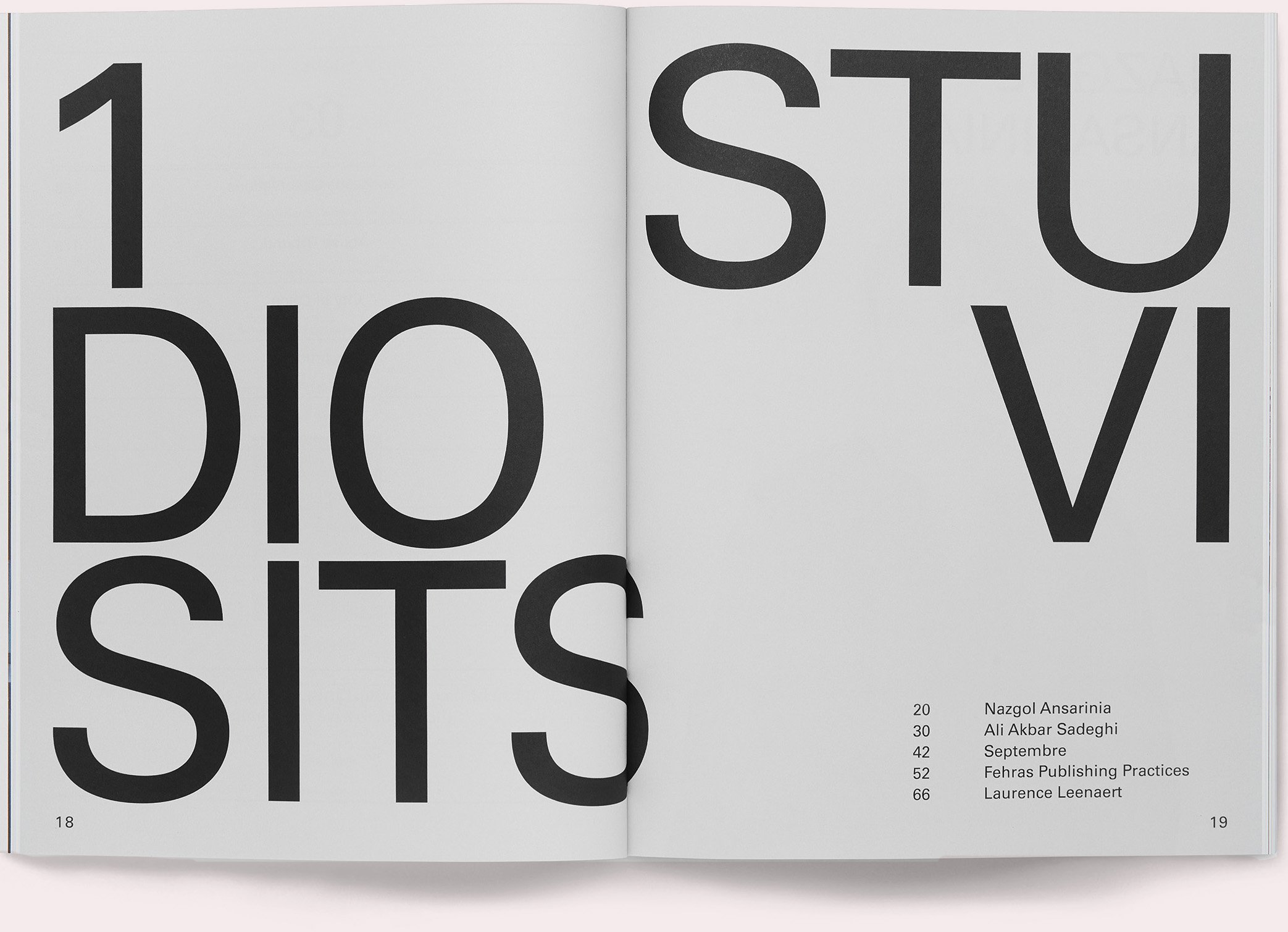
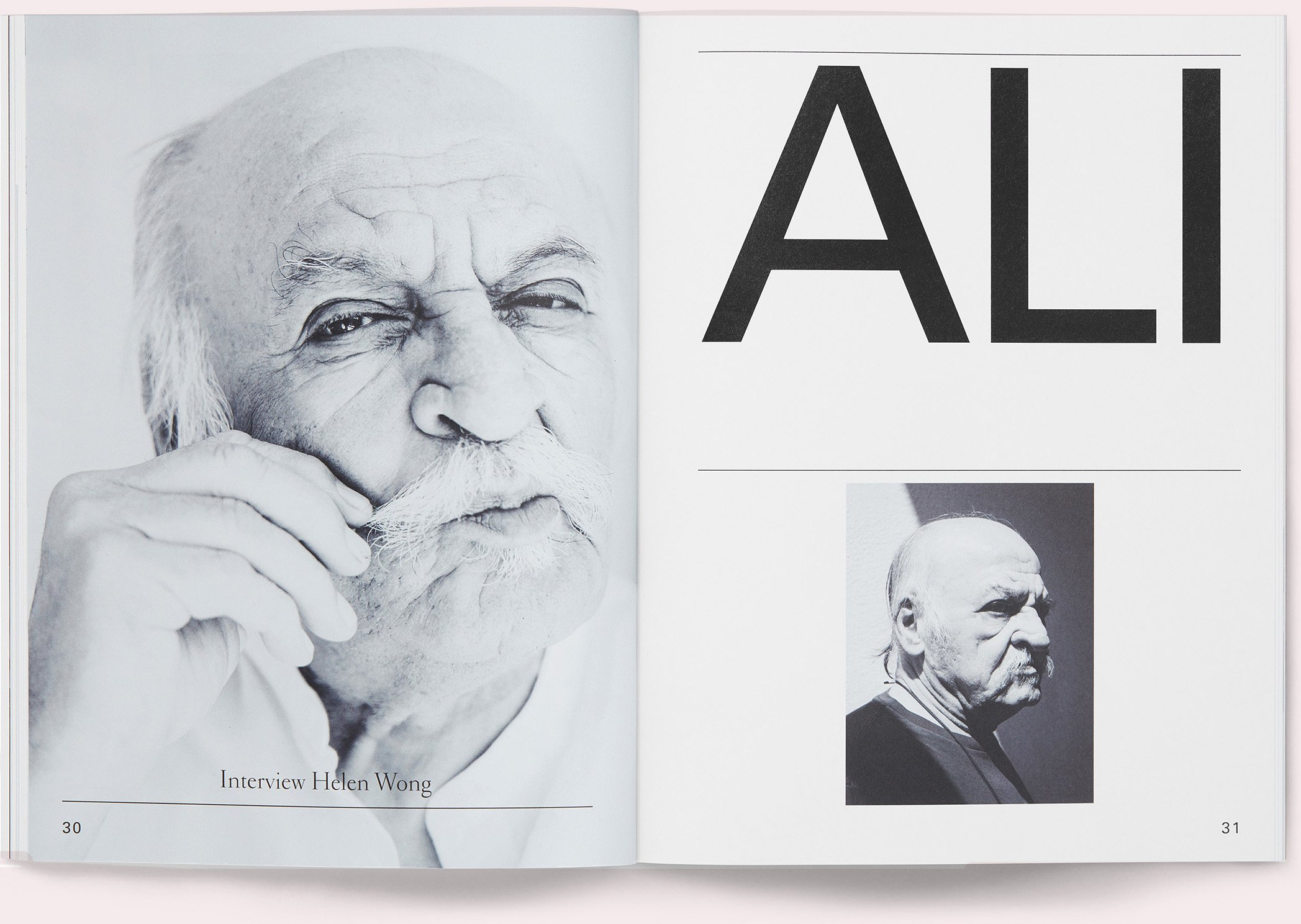
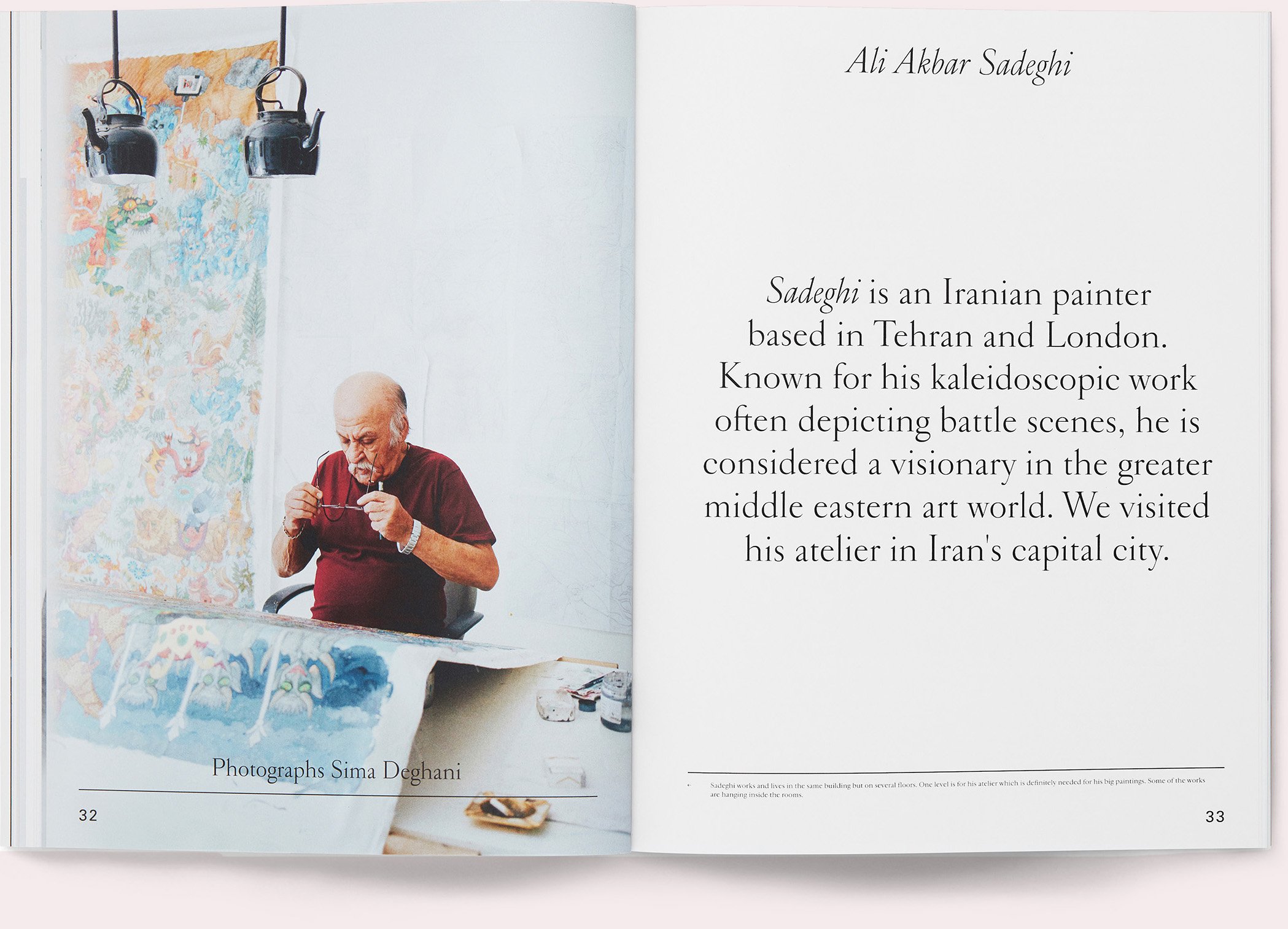
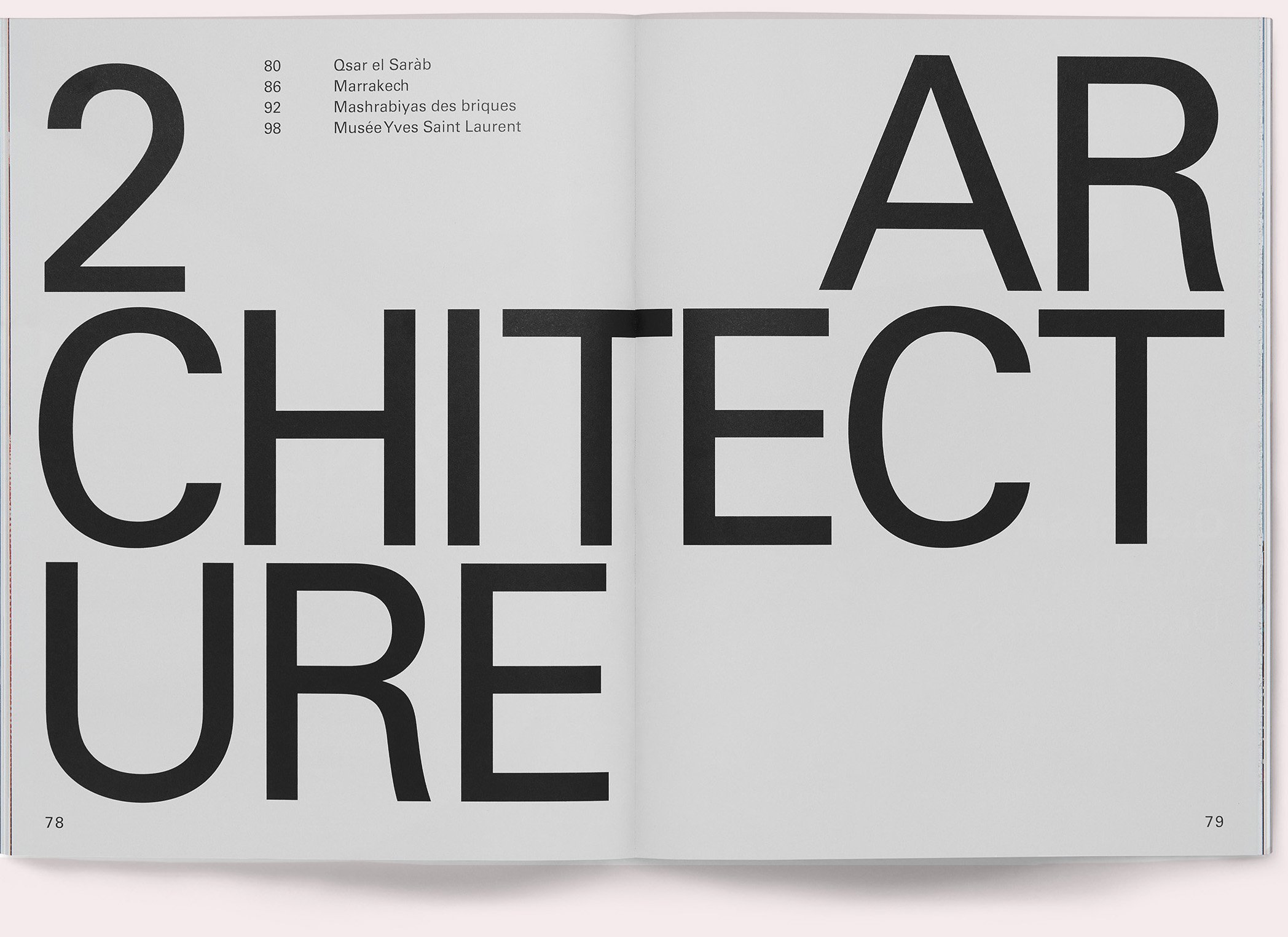
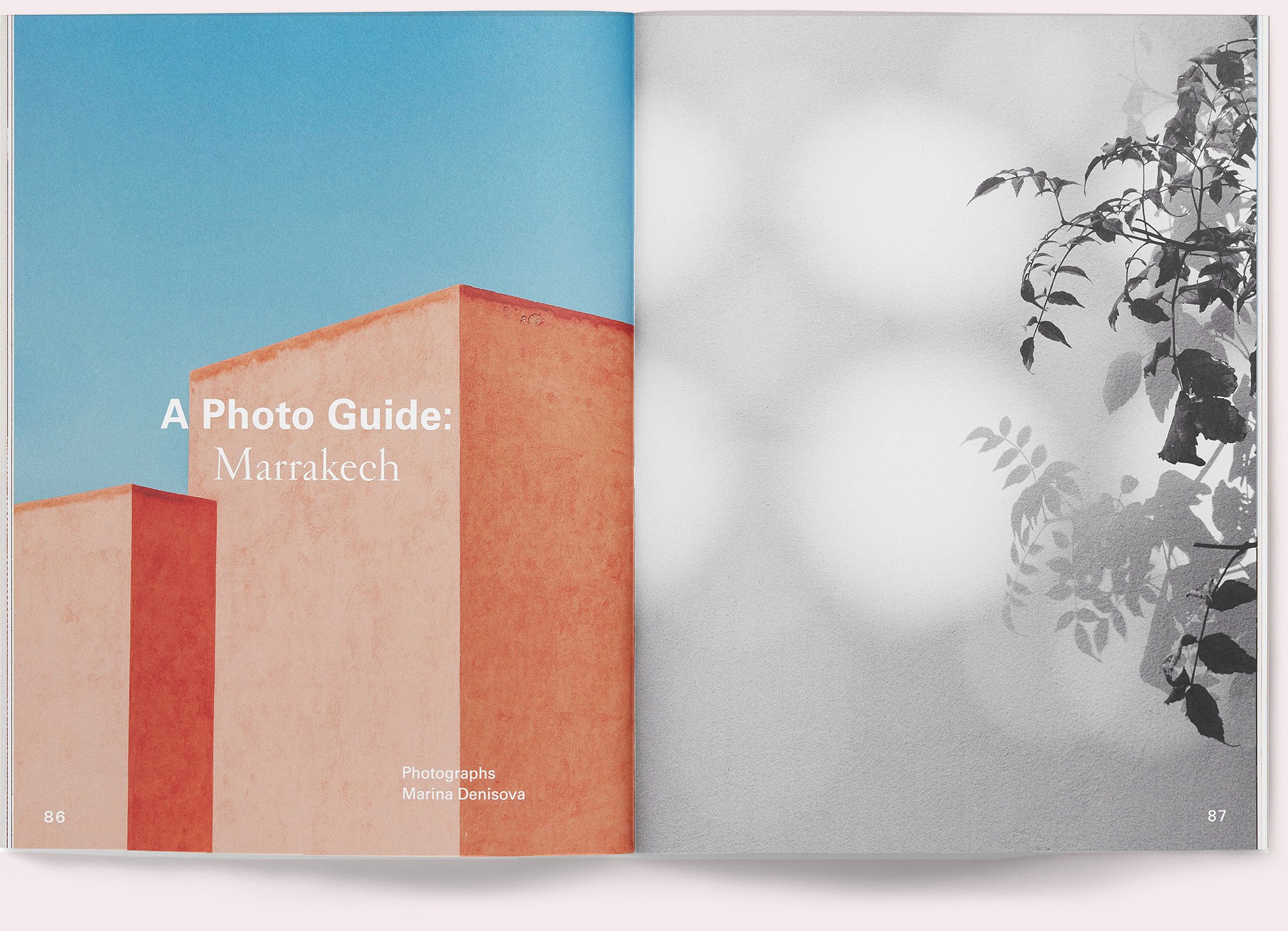
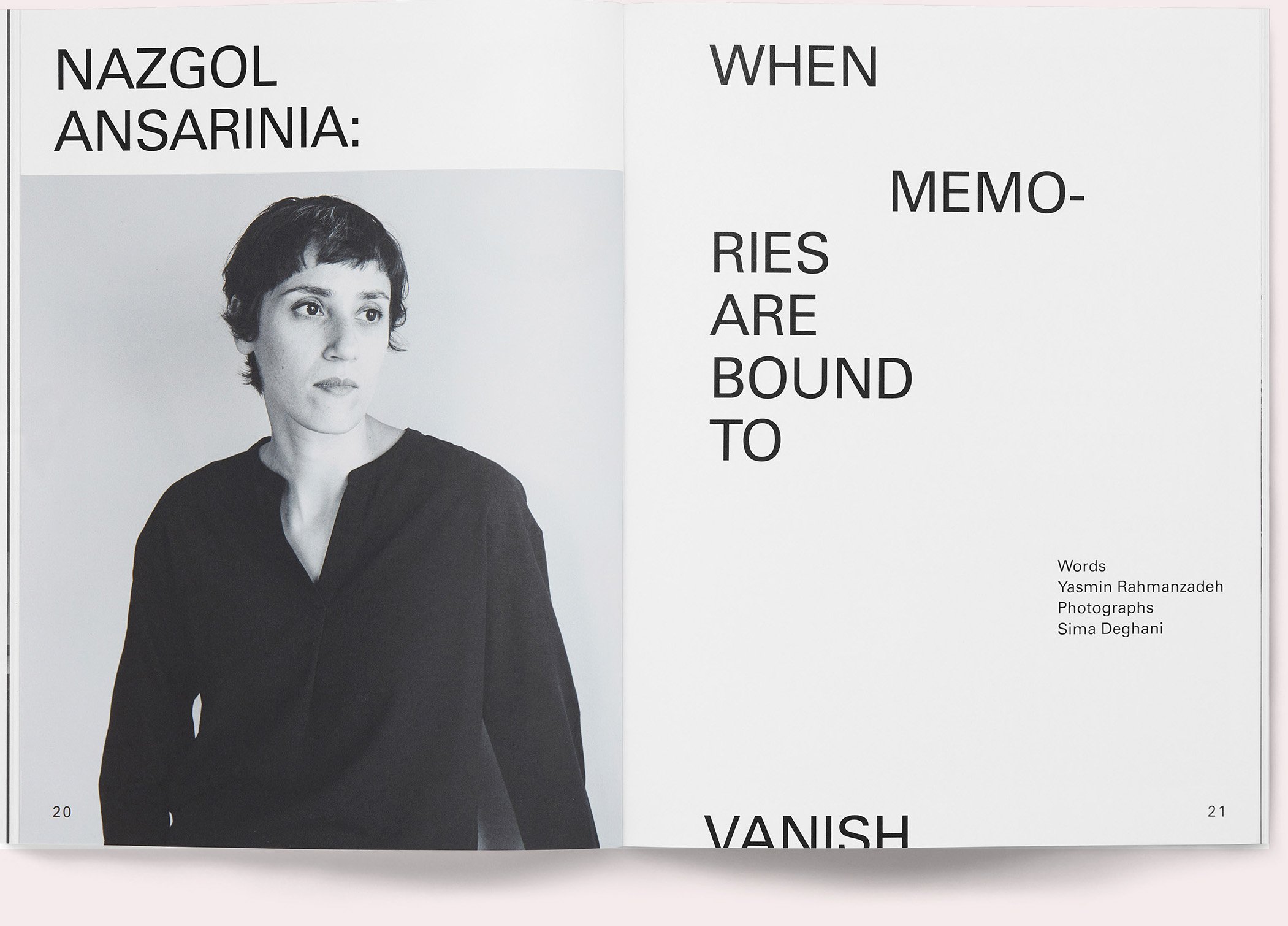
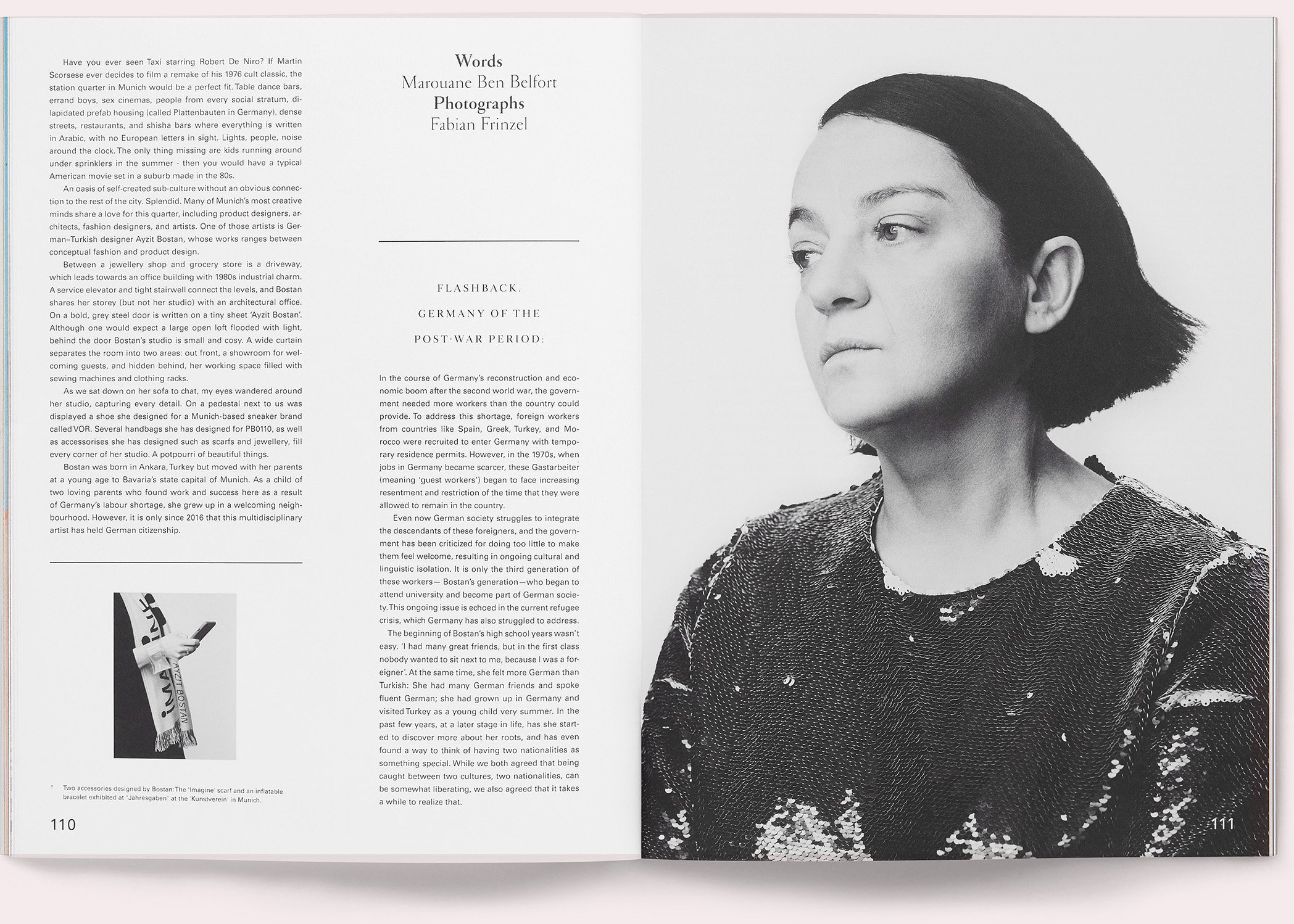
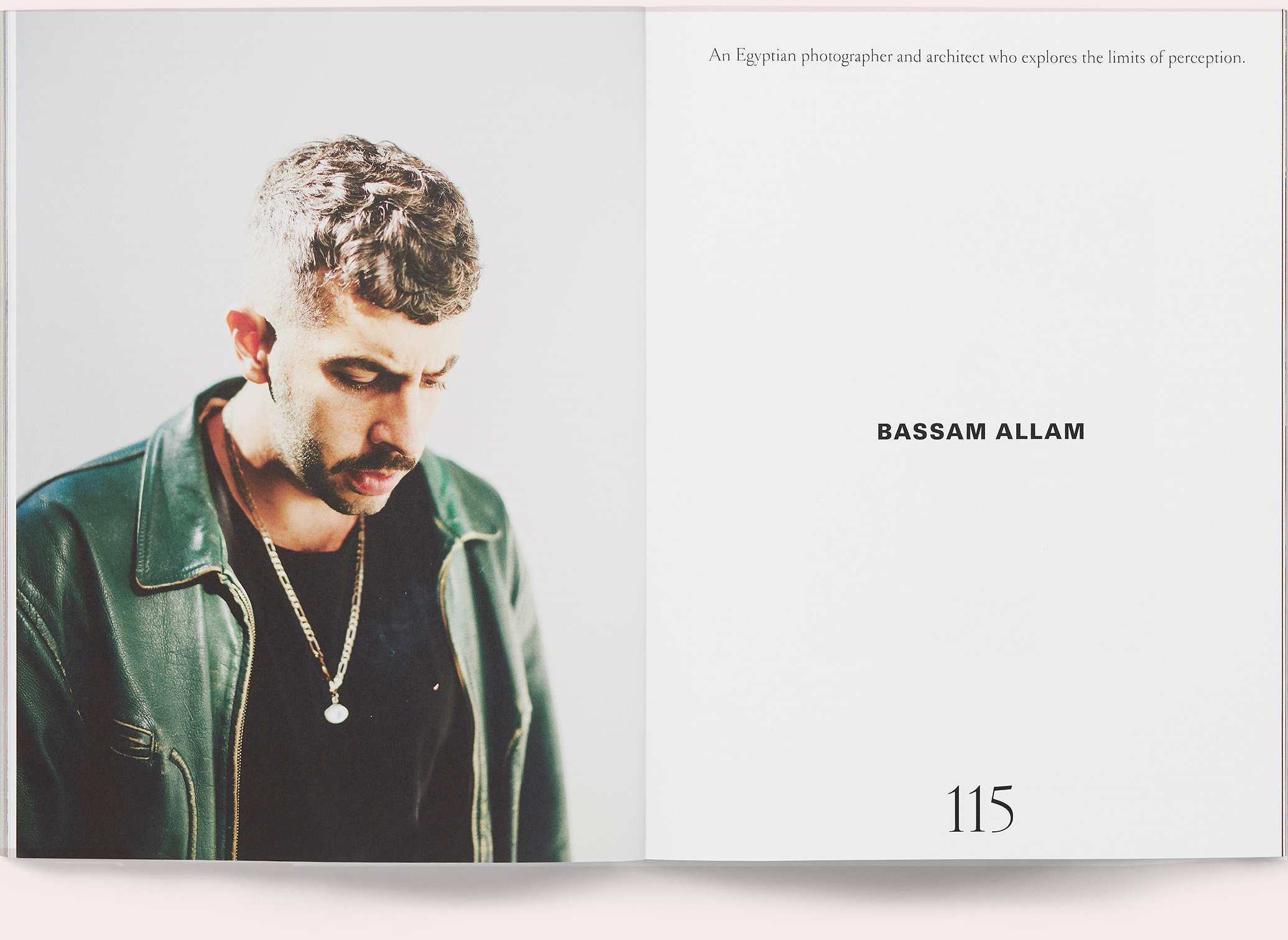
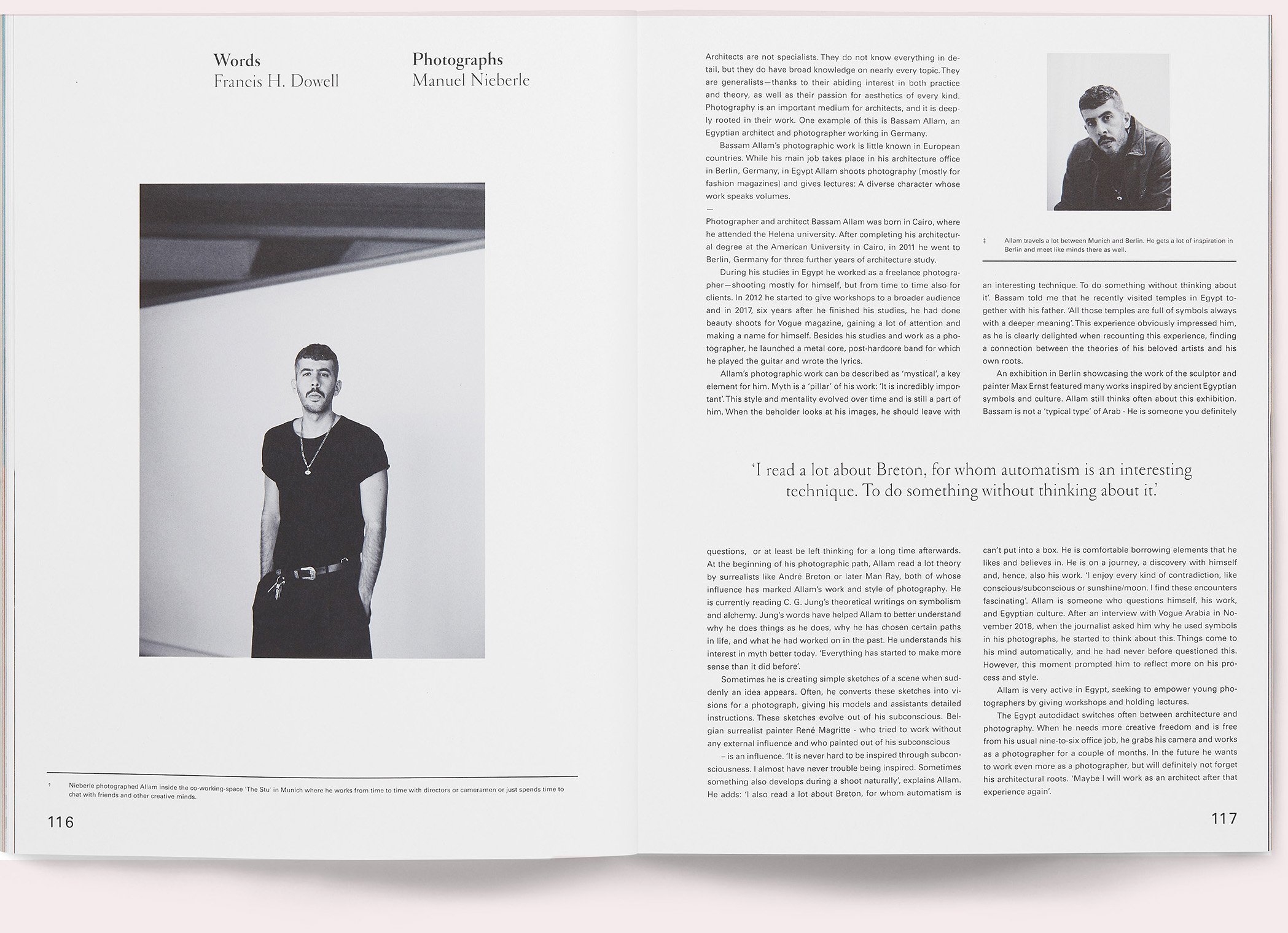
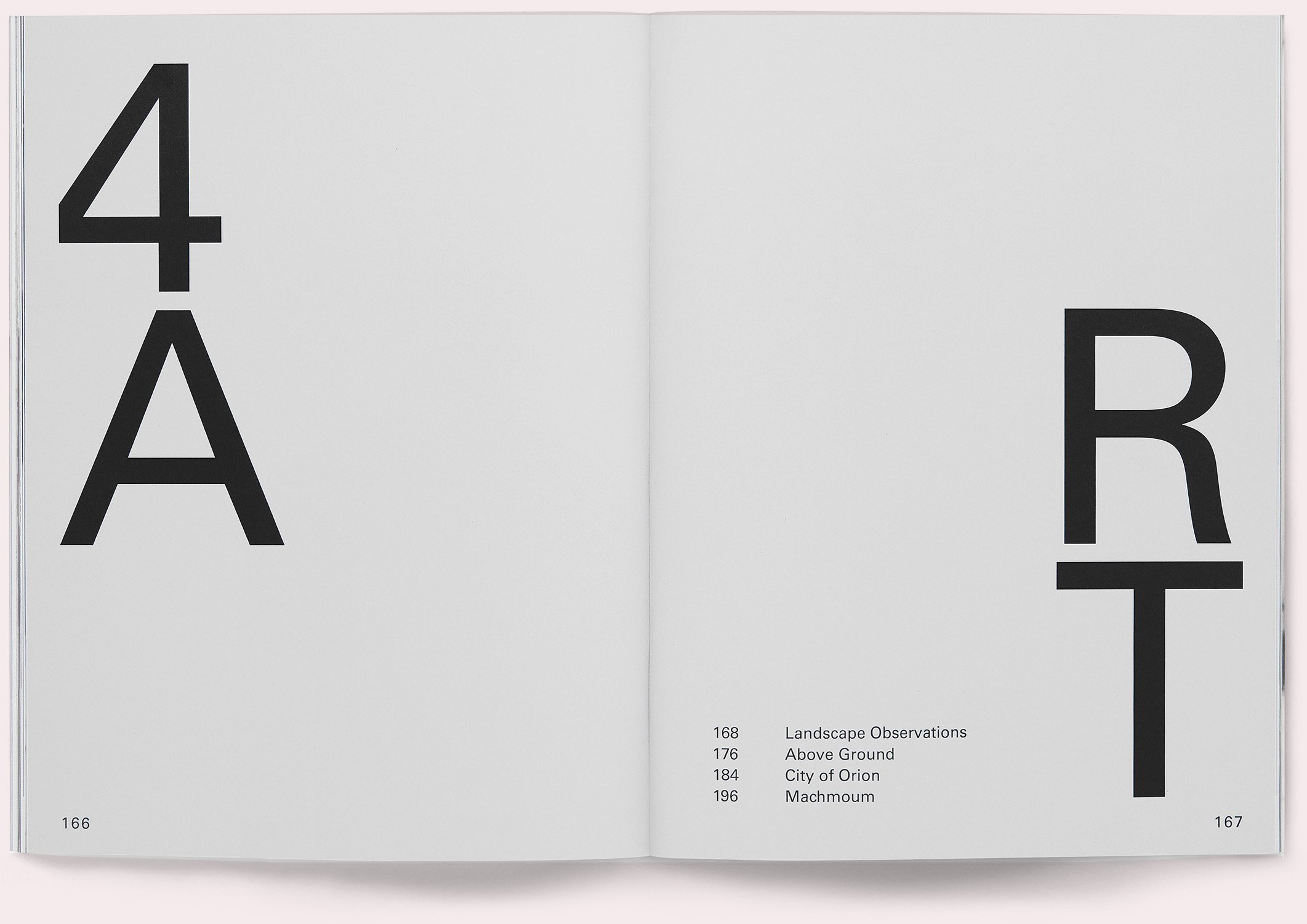
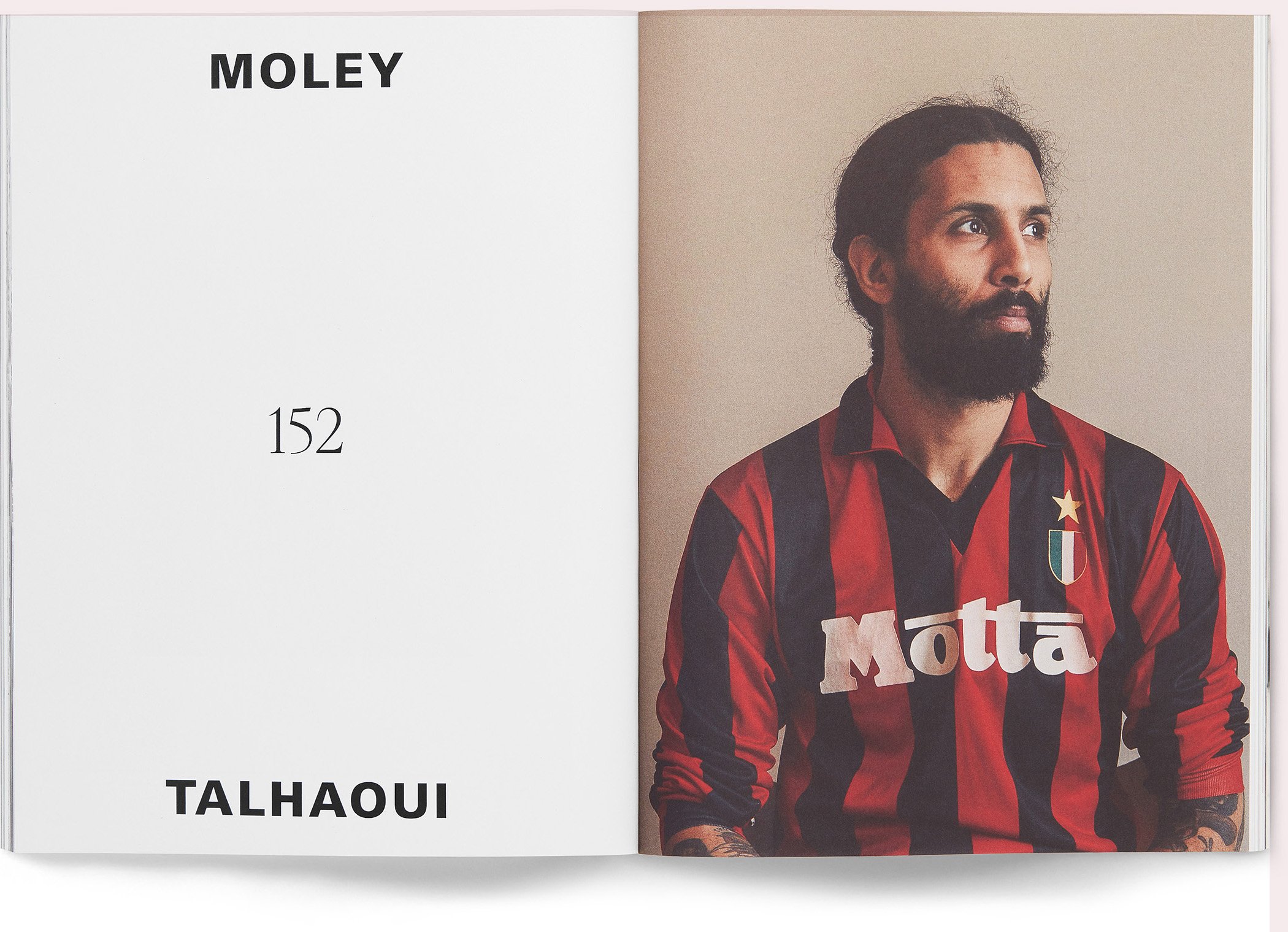
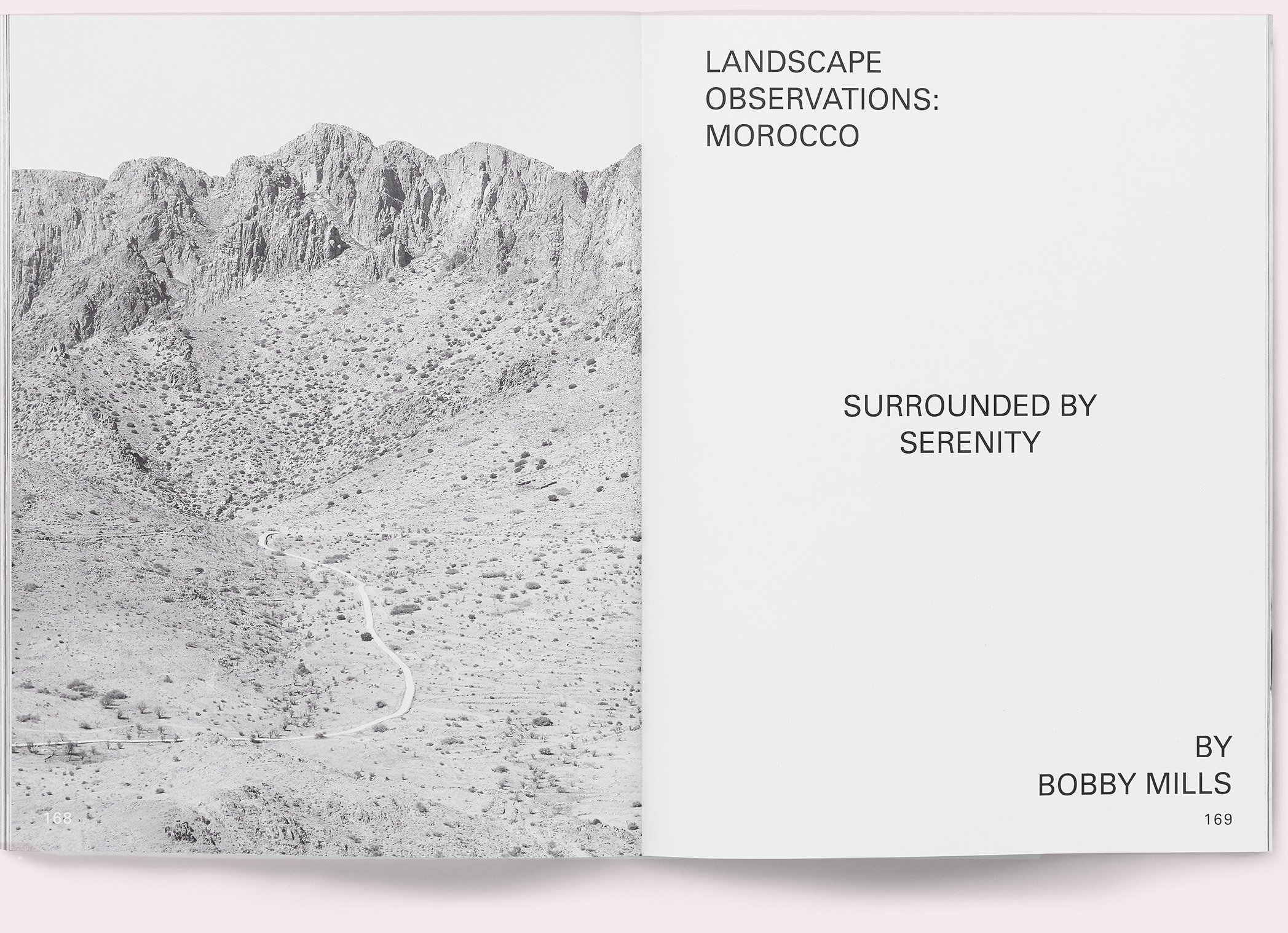
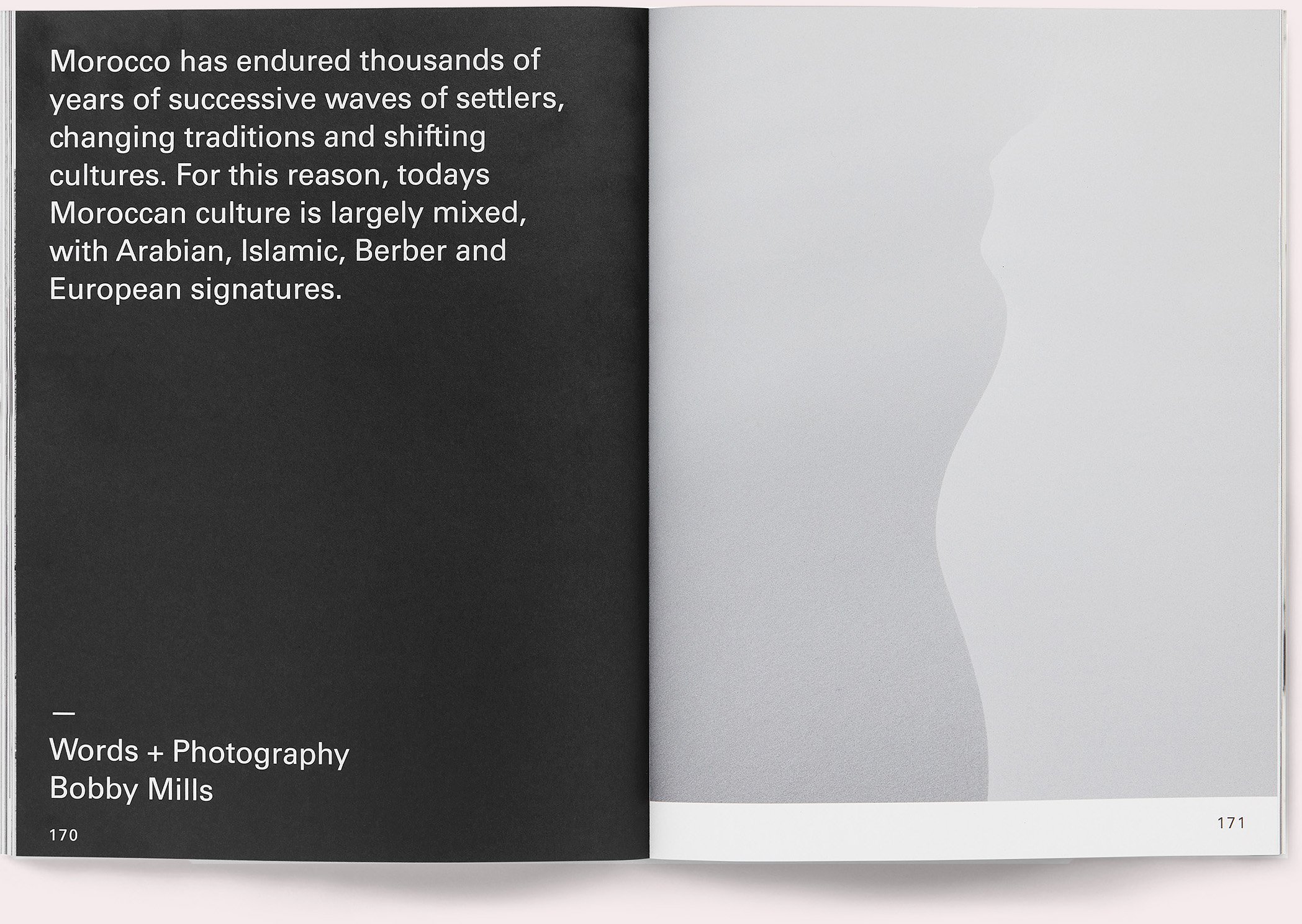
Patrick Mitchell: Because you’re a millennial?
Alex Hunting: Yeah, probably, yeah. I’d just, I’d have a bit of a tantrum or whatever to myself and think, “This is ridiculous.” But you know, the reality is that I’ve totally grown to realize that, ultimately, you almost always end up with something that’s better. Or, like, I find it because I challenge myself so much more after that’s happened.
And also the client, a lot of the time, most of the time, they are right because they know what they’re trying, they know the magazine might look cool to you, but it might not be the appropriate thing. So I’ve become much less precious about that sort of thing.
And I think it does end up leading to good work. Plus you can also leave all those excellent little ideas in a drawer and come back to them for something else.
Patrick Mitchell: Do you find yourself getting involved in editorial conceptualization in terms of like, creating new departments, or branding departments, naming things? Do you do all of that stuff too?
Alex Hunting: Yeah, in terms of formats and that sort of thing. It totally depends on the magazine. If we are doing something from scratch we’re often creating packages around how we can best show this sort of imagery, and this would go well with this sort of shorter storytelling, or this section’s like bitty-er stuff, or all that sort of thing.
If it’s a magazine from scratch, we tend to do a bit of that. Not lots of it. But a lot of the clients that we have are normally really great and they’re often asking—they want to be, they’re really design conscious, a lot of them. They want the design to be as good as it can. They want the design to help inform, how some of those editorial, how a lot of those formats are going to be. So yeah, we do do a bit of it. I’d like to do more of that.
• • •
Patrick Mitchell: We’re going to shift a little bit now. I want to talk about Kinfolk. You’ve done a lot of work with the people at Kinfolk. How did that relationship begin?
Alex Hunting: I got approached by Nathan Williams, who’s the founder. He got in touch with me in—I think it was 2016. Something like that. And he didn’t actually get in touch with me about Kinfolk. He’s the founder of Kinfolk. Kinfolk was initially based in Portland, and it was a massive US success story in the indie world.
And they moved their headquarters to Copenhagen, Denmark. And it was a kind of slight repositioning of the magazine and the company around being a bit more for an international design audience—as opposed to necessarily just like a West coast, slow-living kind of vibe.
And they were going to start a new magazine, alongside Kinfolk, which was going to be an interiors magazine. And Nathan had seen what I’d done with the Rapha magazine, which is funny because it’s not particularly interiors-y, but he’d obviously liked something in the design. And he asked me to come over to Denmark and meet him and have a chat about it.
And so I started working on the concept for this new magazine. And um, loved it. It was really great. I really got into the process. Anyway, I remember we were quite deep into it and he just sent me an email one day saying, “Yeah, we’re not going to do it. We’re not going to do it, but would you be interested in redesigning Kinfolk?”
So, yeah, obviously, I jumped at the chance to do it. And it’s actually a shame that the [first] mag didn’t happen because it’s one of those ones which I was so happy with the design, you know, the initial mag we were working on. And actually, redesigning Kinfolk was a much more difficult challenge, because of the baggage that comes with it basically.
So it started there. And I did the initial redesign in 2016, and then redesigned it again beginning of last year maybe, or just a bit before. And yeah, it’s been amazing. I guess it’s been six years, really. And they’re just the loveliest team. Amazing editor. Just a whole amazing team. The kindest, nicest people. I mean, actually out of every magazine I’ve been involved in, anywhere, it’s the most organized, slickest operation I’ve ever experienced. So yeah, it’s great.
Patrick Mitchell: Nathan is no longer with Kinfolk, right?
Alex Hunting: No, no. He left a couple of years ago.
Patrick Mitchell: And so who owns it now?
Alex Hunting: It’s part owned by a Korean investor. It has Korean investors. I mean, Kinfolk is massive in Asia. So we still do a licensed Korean edition, Japanese edition, and we have a concept space in Seoul, South Korea. It’s got a massive audience there.
Patrick Mitchell: Is the editorial team still in Copenhagen?
Alex Hunting: Yeah. It’s exactly the same in terms of the mag. All based out there. Although increasingly British, actually. The editor-in-chief [John Clifford Burns] is British, the editor is British [Harriet Fitch Little], and I’m British. The art director, Christian [Møller Andersen], he’s Danish. And there’s an in-house art director as well, Staffan [Sundström], who’s Finnish. So there is a “Scandi” element to it. But there’s a lot of Brits involved.
Patrick Mitchell: I think about Kinfolk as one of your “name brand” clients and, I guess it is a name brand. But it’s a sign of the times that it’s a global brand with a circulation of, what, 80,000? Yet it is by far—and I say by far—one of the great success stories to come out of the indie mag boom of the early 2000s. And you’ve worked for a few of these.
Can you talk a little bit about your perspective on indie magazines? Jeremy [Leslie] has this amazing little shop [magCulture] in London where he focuses on shining the light on the best of the indie magazines—in the world of print publishing, indie magazines really are one of the positive lights. Most of the news coming out of our business is bad, but exciting things, good design, things like that, are happening with indie mags. Is that something that is going to continue to grow?
Alex Hunting: Yeah. I always find it amazing that I often get people—I had someone the other day apply for an internship and they were studying architecture, but they just really love the idea of working in magazines, and can they come and intern. I was thinking, “Don’t be a fool! Continue with the architecture!” But it’s amazing. I’m still of that generation of pre-mobile. Pre-digital as well. Just, just about. So magazines were a big thing for me growing up, because they were—I mean, I think they still are—they’re culturally significant things, right?
It’s where you get your subcultures, like skateboarding magazines, music magazines, all that sort of stuff. And I think they’re still massively important in terms of defining that sort of—I mean, nothing’s really taken that place.
You obviously have digital websites, blogs, and social accounts that are massive, that basically operate as magazines. They are magazines. But it’s amazing the kind of cache that they still have, the printed stuff. There’s a huge amount of dross in the independent magazine world as well, right? There’s some total crap out there.
But it’s the luxurious element of it—the fact that some of them might only exist for one or two issues and disappear. In a way that’s what makes a lot of it exciting, right? Because basically people do what they want and sometimes they get picked up and lots of people read them, and a lot of the time people don’t.
But they still have a sort of a purpose, don’t they? And I guess most of that was a reaction against the fact that the newsstands—just that whole world has just been falling apart.
“I think that the most interesting space—and I’m slightly biased about it because I had such a great experience working on the Rapha magazine—but I think that “brand” magazines can be one of the more exciting spaces for the industry.”
Patrick Mitchell: They tend to spend a lot of money on paper and printing. And it’s funny, because when you walk into a newsstand that has a lot of indie magazines, you would think that design is going to be a really big part of it. And I’ve tried to figure out what’s really happening there, because you open them up, and the design suddenly isn’t that great. There’s a lot of white space. It’s very precious. It’s small titles and centered text. They look like books. They’ve got nice photography. But there’s no “editorial design” once you get past the cover.
And I don’t know if Monocle is considered an indie mag. I guess it’s not from a “big” magazine publisher. But I tend to think of Kinfolk and Monocle as two success stories of magazines that started in non-traditional ways. And also, ironically, both supported by Asian partners. Nikkei owns part of Monocle, and as you said, a Korean company owns a big chunk of Kinfolk. Or all of Kinfolk.
Alex Hunting: I totally agree with the design thing. I think a lot of it is because, in all those indie mags, there’s so many editors. They’ve always been a space for writers, right? You know, the literary-type sector. There’s a whole creative space of people desperate to start magazines that aren’t designers as well. I’m always amazed by that.
Obviously there’s loads of magazines which, kind of, they’re just put together by people, so some of the content might actually be great, but it’s not guided by a designer. I think that the most interesting space—and I’m slightly biased about it because I had such a great experience working on the Rapha magazine—but I personally think that “brand” magazines can be one of the much more potentially exciting spaces for the industry.
I really believe that because I think that the right brand, with the right kind of storytelling can often make so much sense. Because so much of the problem with newsstand magazines is like, this advertiser, that advertiser, this person’s got to be on the cover, all this sort of stuff. And so much of that stuff goes out the window with the brand magazines, because it’s essentially just a marketing expense for the company. They can spend quite a lot of money on it.
But if the brand’s great, and the brand’s got good values, and it’s got amazing editors, and amazing designers, I think lots of brands can see the value in it. And it shows you, it still 100% has that—it’s often the high point of a brand’s editorial output, isn’t it? It still is that physical thing. So I think that’s a relatively exciting space still.
Because there’s often with, if it’s like a particular kind of brand—so obviously with Rapha, the magazine’s a cycling magazine, but it had a brilliant editor, had an amazing in-house art director, Jack Saunders, who’s just an incredible creative mind to work around.
And the storytelling around cycling was so exciting—the sort of stories you would never see in a traditional cycling magazine. But brought to life with amazing attention to detail in terms of the production, the photography, all this sort of stuff, because the vision of the company is great.
And there’s plenty of brands out there where you could see that could be an amazing thing, you know?
Patrick Mitchell: And they wouldn’t have the pressure, like if Hearst launches a magazine, well, that means it’s got to come out monthly, and it’s got to get a certain number of readers, and a certain number of advertisers, and become a business. Rapha can decide to do a magazine, because it’s a great format for a certain thing, and do six issues and call it a day. And it’s a success.
Alex Hunting: Exactly. Exactly. So yeah, I love the indie mag scene. And I think it’s brilliant. And I guess that’s why I’m still doing what I’m doing, really. As I say, it’s from going to that independent magazine festival all those years ago. So yeah, I love it.
And I’m still amazed. I keep thinking it’s going to die down really. But it’s just constant, isn’t it? New titles, new titles, new titles. I think it will die down because printing has just gone completely insane. The cost of printing. It’s just, it’s next level now.
But then, I guess digitally, there’s always ways around it. I’m sure people will find a way to keep publishing stuff.
Patrick Mitchell: Has your relationship with Kinfolk led to more work?
Alex Hunting: Yeah, definitely. Definitely. I mean, people have approached me just because of working on that title. It’s also led to some really nice—I’ve got a few Danish lifestyle-y clients. Furniture or homeware, that sort of stuff. Stuff that’s in that world in that Copenhagen little bubble. So yeah, it’s definitely led to stuff.
And we’ve also done another mag with Kinfolk as well. I’ve worked on a couple of the books and all sorts of stuff like that. It’s been a really fruitful relationship.
Patrick Mitchell: So you get a lot of work from word-of-mouth. Do you do actual biz development to get new work? Or do you not need to do that?
Alex Hunting: Yeah, I’ve definitely done it over the years. I think the hit rate has got to be under 5%, or something. I used to do these really big send outs where I’d send a fresh issue of every best thing that we’d done to the marketing director or the so and so of loads of particularly niche companies we really wanted to work for.
I think once it worked. I think. And I try to get in front of people. Like I do try to meet people. But I’d say the vast majority is word-of-mouth. Or not necessarily word-of-mouth, it’s just, you do a project, someone sees it, they like it, they want something like that.
They get in touch. So I do a bit. It’s probably 20% new business, I guess, 80% word-of-mouth. But often that means the work dries up.
Patrick Mitchell: Well, I can relate. It’s almost impossible to be an effective business development person as the person who also has to do all the work that you get.
Alex Hunting: That’s definitely the job that I need, really, that I do need to hire. Much more kind of a project management/new business type of job. I’ve been thinking about that for so long. It’s such a key part of the business.
My dad used to always say that. He said, “You should always be spending 25% of your time, at least, on generating new business.”
Patrick Mitchell: And what percentage do you spend?
Alex Hunting: Definitely not that! Definitely not. Two percent, three percent.
Patrick Mitchell: So you’ve accomplished a lot at the tender age of 35. And you’re so busy, I imagine it’s going to be tough to answer this question, but how are you thinking about the, say, the near future in terms of you, your business, your life, all of that stuff? Just keep plugging or do you have wider goals?
Alex Hunting: Yeah, I don’t know. I was saying to you earlier, I’ve just had a son. Well, he’s 18 months now. So that’s been quite a preoccupation where I’ve been keeping my head above water in general. Just working, keeping the business going, trying to do good work, and trying to spend time with him a bit, and all that sort of stuff.
So, I think, for the near future, it’s just carry on as is, really. For a bit. And I always always say this, but I would like to grow it a bit. I would like to grow the studio a bit in terms of—I’ve had some great designers in recently and there've been some really great relationships with some of them. And I’ve not been able to offer them a job at the end of their freelance contracts. And I’ve wanted to, and that sort of thing. I’ve let quite a bit of talent actually fall away, which has always been quite gutting. So I’d like to be in a position, do you know what I mean, to have a bit more of that.
But apart from that, no, just try and do as much good work as possible. Really. That’s it.
Patrick Mitchell: All right, we call this The Million-, or Billion-Dollar Question. I guess it depends on how big your ambitions are. But let’s say Jeff Bezos called you today and said, “Alex, I’m going to give you a blank check. The only stipulation is you have to use it to create and launch a print magazine. Money is no object.” What would you make?
Alex Hunting: Oh. Um. Cricket Magazine? No, I was thinking about that. I would love there to be a decent cricket magazine, but the imagery would just always be too, too, too rubbish. I’m a big cricket fan, so that would be good. But it’s just, it’s not a very, it’s not a very image-based, image-led thing. I think, do you know, I thought about it. I have actually thought about magazines a lot because I’ve always wanted to start my own magazine. So there’s been a few ideas I’ve had over the years. But I think the magazines that I—besides kind of current affairs, or news, or that sort of thing—the magazines that I really enjoy are the ones that are very meta, or, like, macro, how they, like, zoom in on something.
Do you know the magazine Flaneur? Do you know that magazine? It focuses on one street somewhere in the world. And all of the content, the stories, are based around this one street. And the team goes and lives there. And I just think it’s amazing, the richness that comes out of it. And I loved Colors for that sort of thing as well.
So I’ve often thought what would be cool would be a magazine that each issue’s dedicated to a 24-hour period, basically, at any point in [history]. And Jeff Bezos could fund the best writers, the best photographers, and the best artists to find stories and bring them to life, of any 24 hour period. Basically, like, any period.
But you wouldn’t pick a famous year. It’d be like, I don’t know, 2000, I don’t know, 2004. Sort of ... June 3rd, 2004. Random. I love the idea that you could find those incredible stories from any random time. But you’d need quite a lot of budget, I reckon. Quite a bit of research resources.
For more on Alex Hunting, visit his website or follow him on Instagram @alexhunting1
Back to the Interviews
Last Call
In 1999, Dan Okrent saw the future of the magazine business and raised the alarm. Very few paid attention. And now you’re listening to a podcast called Print Is Dead.
—
THIS EPISODE IS MADE POSSIBLE WITH THE SUPPORT OF THE SOCIETY OF PUBLICATION DESIGNERS
Back in April, 1966, Time magazine famously asked America the big question: “Is God Dead?”
Thirty years later, as Time Inc.’s Corporate Editor at Large, Dan Okrent posed an equally existential question: Is print dead? His answer: An unequivocal “yes.”
“Finished. Over. Full stop,” he declared in a 1999 lecture at the Columbia School of Journalism.
Despite that, it’d be unfair to call Okrent the Grim Reaper. (Just don’t ask what he said about Detroit in the early 2000s). A lifelong realist, Okrent simply viewed digital delivery as the most sustainable path forward for magazines, thanks to the skyrocketing cost of paper, printing, and postage. Publishers, however, ignored Okrent’s prophecy, and continued to feast on their circulation revenues while treating their digital efforts purely as supplemental to print.
“How do you say goodbye to that cash? You don’t. And then you end up seeing what happened in the slaughter of the next 10, 15 years. And this was before the smartphone!”
Okrent made his name as the cofounder of the highly-acclaimed regional, New England Monthly, in 1984—his first job as a magazine editor. He went on to work at Time Inc., Life magazine, and The New York Times, where he served as ombudsman in the wake of the Jayson Blair plagiarism scandal.
He’s the author of numerous books, including Great Fortune, a 2003 history of Rockefeller Center that was shortlisted for a Pulitzer Prize.
In this episode, Okrent talks about his personal board of advisors and the roles they’ve played in his life, about his career highs and low—including a “humiliating” bake-off he was part of when Sports Illustrated was looking for a new editor, about how he introduced the world to fantasy sports, but didn’t make a dime, and how he later pivoted to fame and fortune “off” Broadway.
“If management had said, ‘Okay, I’m prepared to lose a couple billion in the next five years, but I’m going to convert.’ The business would be better off today. That didn’t happen.”
George Gendron: The first time I heard anybody publicly use the expression “print is dead” was 1999, when friends of mine, colleagues of mine, started talking about a speech that you had given, I think it was at Columbia journalism school.
Dan Okrent: Right. It was the Hearst Fellowship speech at Columbia.
George Gendron: Yeah. So that’s ’99. And you had done something that we journalists have been known to do in our packaging, which is you had very cleverly put a question mark at the end of the title “Print Is Dead.” But it shook up a lot of people, because we were in the early stages of preparing Inc. for a sale. And we had Goldman Sachs representing us, and they were telling us that we should expect somewhere between $175 and $250 million.
Dan Okrent: I was on the other side of that, because I was part of the conversations with Time Inc. at the time.
George Gendron: Yeah. So you guys actually, technically, AOL, was the number-two bidder for Inc. We ended up selling to Bertlesman, the German publisher, and that ended up being very, very lucky for us. And nothing more than luck because they were private. And so it was an all cash deal.
But that still gives you an idea, you know, you’re up there at the podium at Columbia saying “print is dead.” And we’re down here preparing with Goldman for an auction where people are telling us you can expect a quarter of a billion dollars for the magazine.
And so when you were organizing your thoughts for this presentation, what was the catalyst? What were you seeing that other people in the industry simply weren’t seeing at that time?
Dan Okrent: What I was seeing was paper, printing, binding, and mailing. And knowing how much money—Time Inc., spent something like $400 million a year on the physical product—for all the Time Inc. magazines to get them into the mail. Well, first, off the printing press and then into the mail or into newsstands.
And, somebody came to me and said, “I can save you $400 million every year by sending this thing out digitally.” I said, “Well, shit, of course.” Excuse me. “Well,” I said, “Of course I would do that.” It just seemed that we were in the business of words, images, ideas.
We weren’t in the business of cutting down trees, or formulating ink, or running a post office. So, you know, if there had been no other talk about the digital world, and it was just something that came in overnight and you were able to walk into your publisher’s office and say, “How would you like to save this?” And you said, “Sure, that sounds like a great business to me.” But the problem is that too many of the print companies followed the path of the record companies who were destroyed by digital distribution because they said, “Oh, this isn’t going to happen.”
The CEO of Time Inc. when I was there in the ’90s, was the smartest man I’ve ever met in the publishing business.
George Gendron: Who was that?
Dan Okrent: Don Logan. From Alabama. He grew up in a house that had a dirt floor. He did not think conventionally. He did not buy into all the, you know, the holy writ of the publishing business. Very, very practical, brilliant businessman. And he was the one who famously said that his company was, you know, pouring money into a black hole and trying to develop stuff for the web. If, at the time, you walked in or I walked in and said, “I could save you $400 million—if management of those companies had said, “Okay, I’m prepared to lose a couple billion in the next five years, making the conversion, but I’m going to convert.” The business would be better off today. That didn’t happen.
George Gendron: No. We thought we were smarter than the rest because we had been an early mover digitally with Inc.com, and we had a very vibrant site thanks to two technology editors that we had that were really quite brilliant and prescient. But we still clung to the belief that the cornerstone, if you will, of the brand was going to be print and that digital would somehow play an ancillary supplementary—important—but supplementary role.
Dan Okrent: That’s exactly my point. That’s what all publishers did. And the reason why they did it—there was a certain logic to it—was it was protecting this incredible cash flow. The cash flow was coming in. And there’s nothing like cash flow in the magazine or newspaper business.
If you’re, I don’t know whether listeners are aware of this but the circulation money comes in before you print the magazines, before you pay your salaries. That is just fantastic cash. So how do you say goodbye to that cash? You don’t. And then you end up seeing what happened in the slaughter of the next 10, 15 years.
George Gendron: That’s right. In fact, it resembles what people to this day still pursue in terms of a business model, which is a membership model, right? Pay upfront, and then use or consume the product later. And on top of that, think of a magazine like Inc. When we wrote 650 ad pages in a year, we had all of our overhead covered. So every ad page, every incremental ad page after that, all we were doing was paying two things: we were paying the commission to the sales guys and we were paying the cost of the paper.
You talk about margins. This was just incredible! And it was inconceivable to us that this wouldn’t continue.
Dan Okrent: Right. And Time Inc. was an odd man out in the publishing business. Condé Nast was the same way. A certain number of ad pages were done. Condé Nast was charging a dollar an issue for big, fat magazines. Time Inc got 50% of its income from circulation. It was much more reader dependent than advertising-dependent than most. So multiply however you felt about all that cash pouring in after you’ve covered your costs. And that was Time Inc., which was a $2 billion a year business at the time.
New England Monthly (1984-1989)
George Gendron: We heard rumors, from well-placed sources, that there was a business weekly that was paying $150 to acquire a subscriber. When, I think, the subscriber was paying, I don’t know, $35 for 52 issues a year. And then of course the equation was, “Well, how much can we resell that subscriber to the advertiser, period?” And that’s where the multiples were.
I reread your speech last night. And the first thing I have to do is fact check you. You said at the time, and I’m sure you were more accurate then than you are now, Time Inc was spending a billion dollars on paper printing and distribution. A billion dollars a year.
Dan Okrent: Okay. So I was accurate then. But, Jesus yeah! A billion dollars a year! Let’s save that money and just do things in digits.
George Gendron: Yeah. So what was the response of the audience? And what was the response of your colleagues back at Time, Inc?
Dan Okrent: The audience was, I say somewhere in the speech that, you know, this is not going to happen in my professional lifetime, but it will for a lot of the people in the room, because there were a lot of 23 year old graduates in the room. And they were nodding their heads. I mean, I can’t characterize all of them, but it was a pleasant reception.
At Time Inc., Don Logan and Norm Pearlstine, who was the head of the editorial operation, they thought I was nuts. I had this conversation with Don. He bought the logic. He understood. “You can save me a billion dollars a year, but,” he said, “Will people want to read this way?” And as I say in the speech, you can’t make predictions based on today’s technology. And today’s technology is... who’s going to schlep around a computer to read on a flat screen? And this was before the smartphone. So that changed everything. And none of us was anticipating that to happen soon. It did happen.
George Gendron: Looking back, as you recall the speech, what’d you get wrong?
Dan Okrent: Well, I had this notion that all these signals were going to come from satellites, you know, there’s Telstar—Sputnik!—up in the sky that is beaming my issue of Time magazine, or whatever else I’d be reading or watching, down directly to my laptop. That was very wrong.
George Gendron: It made sense at the time.
Dan Okrent: Well, who had ever heard of “the cloud?” I mean, the people who invented the cloud hadn’t heard of the cloud at that time. So that’s one thing that I definitely got wrong. I also predicted that it would be a flexible screen that you could roll up and put in your pocket like a magazine. That, to my knowledge, has not happened. Or, if it happened, it disappeared quickly. So that it would have the same feel as holding a magazine in your hands. I’m sure you noticed many other things I got wrong. I’m not recalling them now.
George Gendron: No. I think one of the things that struck me was something that, again, made perfect sense at the time because there were already trends in this context, and that was publishers would give the hardware away. You know, like a razor blade, basically.
Dan Okrent: Yeah. That didn’t happen. It didn’t quite happen. There are some versions of that. Not exactly publishers, but, for a time AT&T did own AOL, and they were giving away phones.
The thing that I got right, if I may pat myself on the back, was that you would have a choice. Do you want to pay for it or do you want advertisers to pay for it? If you’re tired of the advertising you’re seeing, send a check—digitally, of course—and you can get it without advertising.
And, of course, that is ubiquitous on the web. You want the premium version? You don’t have to look at ads. In other words, asking the reader to pay for the product, not asking the advertiser to pay for a reader.
George Gendron: Yep. And of course, that dynamic’s still playing itself out, right?
Dan Okrent: Absolutely.
George Gendron: One of the things that really interests me is that those of us in the media have tended to pay an enormous amount of attention, obviously, to the shift from one medium to another. But that’s only part of the story.
Meanwhile, something else that’s been far less explored is the whole issue of what people, when they buy a book, whether they’re going to read it in print or whether they’re going to read it on Kindle, how their expectations have changed and how younger people are using media in a way that’s completely different.
So this isn’t any longer about print is dead, analog versus digital. This is something else. And I know you have thoughts about this.
Dan Okrent: Well, as you say, it’s generational. People of our generation, we have always approached—and I don’t want to use the word print—media that isn’t broadcast, that isn’t video, words on paper. We are still, many of us today, approaching it the same way we did when we learned how to read at four or five or six.
You pick up a book and you go page by page through it, and then you complete the book. Or you get a magazine. You may not go every page through it, and you got The New Yorker when you’re 14 for the first time, you go look at the cartoons and then maybe go back. These moves, these modes of connection with the reading material do not exist for the rising generations. They did not begin that way. They began, or are beginning, with a smartphone in their hands.
And thus the things that one might read, as opposed to those things that one might watch like TikTok—the things that one reads one is reading it in a very different way. It’s small bites, obviously. It’s instant gratification. You look at something like time.com, which is a fairly healthy website with several hundred thousand paying customers, they’re updating, not just on a daily basis, they’re doing things during the day.
This was a publication that came out once a week. You edited a publication that came out once a month. But for the audience who we have today, you give them just something once a month, you don’t have an audience anymore.
So you look at The Atlantic. Now, obviously, The Atlantic benefits from having a billionaire behind it. But The Atlantic was once this staid thing in print that came once a month. Now it comes—every half hour there’s something new in the atlantic.com. And that’s the way that young people, I believe, are learning how to read and learning how to deal with what we called print media.
George Gendron: And, as we discussed, I think you could just say this is how young people are learning, period.
Dan Okrent: Yeah. Well that, that, that’s it. It used to be, in my case, if I wanted to learn something, I’d say, “Well, jeez, I’ve got to go to the library and get a book about this? Look on my shelves?” Now I just go to Wikipedia! It’s again this instant gratification. It’s so possible to do that. The book I’m writing right now—I go back to my first books and everything was, you had to go to a library, you had to go interview somebody. I’m doing it all in digits now. I can do all of my research in digits.
George Gendron: Can you share what the book is?
Dan Okrent: This is a short biography about Stephen Sondheim for a Yale University Press series. And I needed to do work in the Leonard Bernstein archives because Bernstein and Sondheim were very close for many years.
Previous books, I would go to the Library of Congress. I’d travel to Washington. I’d get a hotel room and do it there. Now it’s all online. I don’t have to go anywhere. It’s fantastic.
It’s bad for hotel business, but it’s certainly good for me. The ability to grasp information when you want it, in the form you want it, is something that is utterly revolutionary.
Life Magazine (1990-1997)
George Gendron: I want to come back to this in a different context later on in the conversation when we talk about one of your books that is my favorite of your books. But right now I want to shift gears a little bit and talk about naïvete, which is something that I think is not widely shared. And yet almost everybody I know has at least one major episode. I have several. I think you have—I’ll call them “multi-industry” examples of how naïvete helped shape the arc of your career. So I’d love you to start with how you got into the book industry and became a book editor in the first place.
Dan Okrent: I read an article in The New York Times. I was an undergraduate in the University of Michigan. I was the book review editor, among other things, of the student newspaper. I read an article on the front page of The New York Times Book Review one Sunday about Joseph Heller and how Catch-22 had made him into a major American novelist, his agent, Candida Donadio, the leading fiction agent in New York, and his editor Robert Gottlieb, the fiction power who had just moved from Simon & Schuster to Knopf, at the age of 37, I believe.
I said, “Book editor?” I’m from Detroit. I didn’t know that books had editors. What does that mean? I thought, you write a book and then it comes out. I just had no idea at all. So my first naïve step was to write a letter to Gottlieb. He got many letters. But the rest of them, most of them, were, “I’ve just gotten my master’s degree at Oxford and I’ve read everything in English literature since the 15th century.”
Mine was absolutely nutty and naïve and off the wall. And he said, “Well, I don’t have any jobs here, but if you’re ever in New York, let me know and I’ll be happy to talk to you.” This was the days of student standby airfares. So the next day, I took a bus to Metropolitan Airport, outside of Detroit, flew to New York, where I had been once, on my high school senior trip. That was the only time I had been.
I got off at LaGuardia and called Gottlieb’s office. And his assistant said, “Who are you?”
I said, “Well, I’m, I’m Danny Okrent from University of Michigan.”
“Do you have an appointment with Mr. Gottlieb?”
“No, but he told me to call him if I was in ...”
She put me on hold. He said, “Tell him to come in.”
She gave me directions, and I got there around four in the afternoon. We were still talking at seven when he said, “When do you graduate? Would you like to come to work here?”
It was really preposterous. But you make your own luck, I guess.
George Gendron: You know, some people who might have had a little bit more sophistication would’ve recognized Gottlieb’s line as a brush-off line: “If you’re ever in New York...”
Dan Okrent: Right, right. You, who live a thousand miles away. Right. That’s exactly right. 600 miles away. Yeah.
George Gendron: So you went on to have a very prosperous career as a book editor.
Dan Okrent: Hmm. I had a decent career.
George Gendron: Okay. Decent career. And a book author. And so, while we’re on this subject, I have to ask you from both a book editor’s perspective and a book author’s perspective, we’re back to this question of changing business models. How has the business changed?
Dan Okrent: The book business has changed in so many ways we would need hours to talk about it.
George Gendron: For you in particular. From, let’s say, from the writer’s point of view.
Dan Okrent: For me, I’ve been fortunate enough it hasn’t changed that much. I can get a contract. I can’t live off of it entirely. But so far I’ve been able to get decent money, and I turn in my books and they get published.
It’s a lot harder for people who hadn’t already established careers in the pre-Amazon days. But since Amazon, where, it’s a monopsony, where there’s one buyer. It’s not a monopoly, it’s a monopsony. There are many suppliers, but only one customer. And that has radically changed the business.
Publishers do not take chances—they take chances on extremely expensive books written by very well known people—but they don’t want to take a chance on the 32-year-old version of me. They can’t afford to. Their margins have been cut so sharply by Amazon’s power that they would only lose money on me. Even writing the same books that I’ve been writing.
“The freelancer’s life has always been pretty rotten. The very idea of ‘you write the piece today and I put the money in my bank for three months.’ That’s kind of disgusting.”
George Gendron: Yeah. I mean, from someone like myself, given the span of my career, I remember when I was running Inc. Magazine, I would have lunches with either agents or publishers who would start to talk about sums of money as an advance before we had ever talked about any concept. And it was because you’ve got a platform. And now it’s kind of, “Well, what’s your platform?”
Dan Okrent: Speaking of platforms, my first three books, I was fortunate enough to land, for publicity, on the best platform that existed, which was The Today Show. Boy, when the publisher sends out word that Okrent’s going to be on The Today Show in two weeks, the orders from the bookstores just pour in because it really sold books.
My last book, they didn’t even bother to pitch me to The Today Show. It was all about various web influencers—people I had never heard of—that if one of these people adopts your book and touts it, that’s the path to great success. So even there, the presence of books as they move through our culture is in digits. It’s not any longer coming across the way that it used to.
George Gendron: That’s very true. Now, one thing that your life as a book editor did was it took you down to Texas Monthly. You were working with them on helping them build out a Texas Monthly book line, if I’m right. And that connection ended up with you eventually launching a brilliant magazine, New England Monthly, which doesn’t exist any longer unfortunately. Tell us that story. You’re down there [in Texas]. Where the heck does the idea for New England Monthly come from when you’re down in Austin, Texas?
Dan Okrent: Well, you just remove the five letters of TEXAS and you put in the 10 letters of NEW ENGLAND and, BOOM, it’s done! My business partner [Bob Nylen], with whom I started New England Monthly—and we ran it jointly for five-and-a-half of its seven years—had been the advertising director and associate publisher of Texas Monthly. He had a fight with the boss. He quit.
He and I always got along together. He said, I said, somebody said, “Let’s put on a show. Let’s start a business together.” And we had a bunch of flaky ideas. And then Bob Nylen finally said, “Look, the business I know is magazine publishing. You know enough as an editor and as a writer for magazines, I’m sure you can learn the editorial side of it. Let’s start a magazine.”
And, basically, on the same principle, if not formula, as Texas Monthly. Intense, focused coverage on one small area. We were not interested if it was happening somewhere else. And in fact, what Texas Monthly did in its early days, and that we did as well, if you lived outside of New England and you wanted to subscribe, you had to pay twice as much as somebody who lived in New England.
George Gendron: I didn’t know that. Is that right?
Dan Okrent: Yes. And there were two reasons for it. Three. One was sheer exclusivity, you know, “join the club.” The second one is that we have this one subject and we want to deal with it in a way that connects to the lives that people in New England live. And third, it was a great advertising pitch. Because the advertisers who were buying regionally in the national magazines already could now have something that was specific to New England that they could put money in and they weren’t wasting dollars and overlapping with the Chicago market, or wherever else it might be.
So for local advertisers it worked quite well. And for national advertisers it was great because, for instance, taking the auto companies, Ford was always a loser in New England and Chrysler was especially strong in the northeast, generally, Northeast and New England. Chrysler became our biggest advertiser in the automobile industry. They had this presence in New England and they wanted to keep on pushing on it. Anyway, it worked until the New England economy crashed and then it didn’t work.
George Gendron: So, I love the expression you use. You and Nylen sit down and you don’t say, “Well, how about if we start a magazine?” You say, “Let’s put on a show.”
Dan Okrent: Well, it’s sort of like those publishers you talked about who talked about money before talking about the concept, not “what are we doing here?”
George Gendron: Yeah. But I want to go back and just make sure I got this straight. You just said that Bob says to you, “You have no magazine experience whatsoever. You’ve never worked in a magazine, but that’s okay. You can learn that on your job,” basically.
Dan Okrent: Well, yes, but—Texas Monthly had one stockholder, the publisher, Mike Levy—but there was an executive committee that was like a board of directors. And I was on that. So I would go to these meetings once a month when I was in Austin. And you learn a lot sitting there listening to the circulation director argue with the advertising director and the production manager saying why we can’t do it.
And then the editorial side, as I said, I had written for magazines. I was pretty well established. I was writing for Sports Illustrated and Esquire primarily. I had all the assignments I needed. I did some other stuff. I did a piece for Inc., for Inc. Life. There’s a great story in that one. So I wasn’t a total blank slate.
So when he said, “You can learn,” you know, I had already made it past the fourth grade. So I didn’t have to start all over in primary school.
George Gendron: You said, at one point to me, you thought maybe your biggest strength was as a fundraiser.
Dan Okrent: It was amazing that we were able to raise $3.5 million in 1983. That would be, in today’s money, something like $20 million. This startup magazine that had an outside circulation goal of 350,000, and was only going to circulate in six states. So I must have been really good at it.
The first investors were people who had had the chance to invest in Texas Monthly and had passed on it. Now they say, “Oh, here are these two guys coming out of Texas Monthly and they know the formula. They’ll do it in New England.” Well, they were wrong and so were we.
George Gendron: But anybody wanting to raise money might want to tuck that away in the back of their minds about how do you search for investors?
Dan Okrent: Well, there’s another way to search for investors, and I learned this in my theater career, as brief as it was, tell people you don’t need investors and they come pounding on your door. “Please let me in! Let me in!” And that happened with New England Monthly to a degree, too.
“There’s another lesson there that I never took advantage of which is: if the boss has a title that doesn’t sound like a boss, nobody bothers him.”
George Gendron: Yeah. If you listen to CEOs at a conference, at the bar at six o’clock at night, they’ll all talk about how the best way to get a banker is just mention, casually, you really don’t need a loan. So you’re running New England Monthly. You launch it, it’s a big deal. It becomes a really, really big deal. Who did you turn to for advice?
Dan Okrent: There are three good friends that I turned to for advice, not just in the very early days. One was Jim Gaines, who had just been made the editor of People magazine. A college friend. We’ve known each other forever. His daughter is my goddaughter. Another was Greg Curtis, who had become the editor of Texas Monthly, and with whom I had a very, very good close friendship from the beginning of my time down there. And third was Lee Eisenberg, who’s my son’s godfather, who was the editor of Esquire at the time.
And they would read it and let me have it about, you know, “Why’d you do this? Why’d you do that? What a stupid thing.” And I I loved that. That was great. It was a trial by fire. I mean, I look at my first six issues. “What? This guy was editing a magazine?” I didn’t know. It’s kind of ridiculous.
George Gendron: Yeah. But, you know, on the plus side, I think what’s really important in the first issue or the first several issues is you really nail the mission, tone, sensibility of the magazine. I think you guys did that. There might have been things you could have improved with regard to execution. But you converted a lot of people very early on, and I’m talking about industry people who were very skeptical in the first place. Especially when they heard New England Monthly, they started to think about Yankee magazine.
Dan Okrent: Exactly. We said, “Well, you know, Yankee magazine’s great.” Two-thirds of the subscribers don’t even live in New England. They have this imagined, quaint view. And it’s a quaint magazine. And remember Jud Hale, who was the editor, got really angry about it. He said, “We ain’t quaint!”
That was his speech whenever anybody brought up New England Monthly. “We ain’t quaint!” Sounded like it was from Texas, actually. And there was also that we were dismissed as two guys from Texas. “What do they know about New England?” “Well, I had been living in New England for, at that point, six years. Bob was born and raised in New England. It was hardly foreign territory. But in terms of sensibility, and thank you very much for those kind words about it, there were a few things that we did from the beginning that were right.
Part of this thing about not having subscribers outside of the area is we had an intimate language with our readers. You know, when you said Narragansett Bay, you didn’t have to explain where Narragansett Bay was. Or when you’re talking about, uh, First Boston. Or Shawmut was your bank. Or you’re writing an article about Shawmut. Okay, I know who Shawmut is. They’re the biggest bank in two of the three lower [New England] states.
So there was that. Secondarily, and this was something that I think I learned from Lee more than anybody, and this is one that you knew very clearly in your career: don’t publish anything that isn’t interesting to you.
And that was certainly evident in your work, George. And I’d like to think it was evident in ours. And we did not write down to anybody. We assumed that the readers were around the same dinner table that we were, and we were having a great conversation.
George Gendron: That last characteristic is the one that I associate with my impressions of the first issues of your magazine, and that’s captivating.
Dan Okrent: Yeah. It’s not all that common.
Scenes from a magazine: New England Monthly
George Gendron: Yeah. Hard to achieve.
Dan Okrent: It’s not hard to achieve if you don’t know what you’re doing.
George Gendron: Actually, you know what? That’s true. Well, for me, I picked up this habit of never publishing anything I wasn’t genuinely curious about in the first place. And wasn’t avid to read once it was actually handed to me in manuscript form at New York magazine and then at Boston magazine where, you know, you are your own best market.
At Inc it was a little bit different because we were writing for people who owned businesses and entrepreneurs. And none of us were business people. And so there was a little bit more there, trying to cultivate a sense of audience. But even then, we thought of it less as a magazine about business or management and much more as a magazine about creation. About taking an idea and turning it into something tangible, which was something we were all passionate about.
Dan Okrent: Right. Of course. And it worked really well.
George Gendron: It did work. And people responded to it. So I want to talk about talent now. So you’re up in New England, the magazine is out in western Massachusetts, right? There’s not a big pool of talent out there. Now I know you were using writers from around the region who didn’t necessarily live in Western Mass., but you assembled a really talented crew. People like Hans Teensma will tell you that they still are benefiting from some of the talent that you attracted.
Dan Okrent: When I was developing New England Monthly, I was down there and this guy came in. He had been art director of Rocky Mountain Magazine, which I admired, which had folded. And he was one of three finalists to be the art director of Texas Monthly. And Greg, who was the editor, had everybody in the management committee interview him. And I just think, I remember saying, “I hope Greg doesn’t hire him. I hope Greg doesn’t hire him.” And Greg did not hire him. And I did. It was really perfect. But, in terms of talent, I think that people liked the idea of working for a magazine that didn’t talk down to its readers.
I wouldn’t begin to compare New England Monthly to The New Yorker. But in that sense our writers were as sophisticated, as literate, as ironic. And writers kind of hunger for the chance to do that kind of work. And we didn’t have a lot of staff writers. I think we had three at the most. Among them were people who came to the door and said, “I want to work here.” Jonathan Harr, Darcy Frey, a variety of others.
George Gendron: Big talent.
Dan Okrent: Yeah. But this is when they weren’t yet big talent. But at the same time, we were commissioning pieces from Ward Just, and from Donald Hall, and—this was another secret tip that I have for people who are starting publications who can’t afford to pay what the competition is paying: pay them immediately.
And as a freelance writer, I learned that one. Here’s a nice assignment from Esquire. My check comes three months later? Well, here’s a nice assignment from New England Monthly, and it’s only half of what I’d be getting from Esquire, but I got the check the next day.
George Gendron: That’s only the second time in my entire career I’ve ever heard an organization treating freelancers that way. The other is a magnificent branding boutique called Mechanica, and it’s just phenomenal. It’s a small group, maybe 20 people, that does the work of an organization three or four times as large because they have a very carefully-curated network of contributors that they treat as well as, or better than, staff. And they pay them the day the work is accepted. Period. End of story. And boy, people don’t understand the loyalty that creates.
Dan Okrent: Yeah. And the freelancer’s life has always been pretty rotten. I have a feeling it’s a lot more rotten now than it’s ever been. And the very idea of living on a float from your contributors—“You write the piece today and I put the money in my bank for three months, collect a little interest or whatever”—that’s kind of disgusting.
Time Inc. (1997-2001)
“Detroit’s disaster has long been a slow unwinding that seemed to remove it from the rest of the country. Even the death rattle that in the past year emanated from its signature industry brought more attention to the auto executives than to the people of the city, who had for so long been victimized by their dreadful decision-making.”
In 2009, Time Inc. bought a house in Detroit—once the most prosperous manufacturing city in the nation that had been brought to its knees by a combination of crime, economic downturn, and corrupt leadership—to create “Project Detroit,” a year-long effort that sent some of the world’s top journalists to the beleaguered city. Okrent’s piece for Time kicked off the series. He was chosen to write it because he had grown up there.
George Gendron: It really is. And it’s unfortunate that some really reputable places still do that. I’m not going to name them, but a major newspaper—I have a former student who’s a brilliant and very well-known photographer who did a project for this newspaper and it took her 12 months to get paid.
Dan Okrent: Well, I had a front page review, in the book review of a newspaper I will not name, in August and I still haven’t gotten paid.
George Gendron: So that practice is alive and well.
Dan Okrent: Yep. Yep.
George Gendron: Man! So anybody out there listening, you want to talk about how, as we increasingly work with this unbelievably rich pool of soloists and freelancers, pay them. Pay them on time. Pay them before they ever even have to ask for the check.
Dan Okrent: Right. And for those freelancers in the talent pool, I would say when they offer you $10,000 for the job, say, “I’ll do it for eight if you pay me the day that it’s complete.”
George Gendron: That’s great advice, man. That’s great advice. Going back to the writers that you had, I have to confess my favorite regular contributor was your “gardening columnist,” the novelist, Annie Proulx.
The New England Monthly staff at one of Okrent’s legendary “Whale Meetings.”
Dan Okrent: Oh, that’s so great that you remember that. I take great pride in that. Annie Proulx was living in Vermont. She had written here and there for small magazines. She was trying to write fiction. She became our gardening columnist, and this was years before she became a Pulitzer Prize-winning novelist. And we had, you know, Michael Kimmelman, who is the architecture critic of the Times now and had been the art critic for many, many years. He was the architecture critic of New England Monthly. That was one of his very first gigs. And there are many, many more people who started their careers there. And I’m very proud of that.
George Gendron: What’s equally extraordinary about what you just said is the fact that New England Monthly, back in the ’80s had an architecture critic!
Dan Okrent: Well, he wasn’t full-time.
George Gendron: I know what you mean, but still.
Dan Okrent: Yeah, yeah, yeah, yeah. It’s always a subject I’m interested in.
George Gendron: So everybody who has ever worked intensely with you on the Monthly says, “Oh, you know, when you have a conversation with Dan, you got to ask him about the “whale meetings.”
Dan Okrent: Well, the Whale Inn in Cummington, Massachusetts, was kind of a—I hope they’re not listening—kind of a collapsing country inn with a liquor license. So, uh, the editorial staff—at times had been just the senior editorial staff, but eventually the whole editorial staff—once a month we would go have the “whale meeting,” which was to talk about, you know, “What should we be doing?” “What are we doing right?” “Who are some writers we haven’t found?”
It was just an opportunity, away from the office, to brainstorm for three hours. And to get a little smashed. Those of us who were of that ilk. And I think good things came out of it. But the lesson, if there is a lesson, was talking to your whole staff. That’s really, really important. Not just talking to lieutenants.
“Whatever nice things that people might have said about working there with me, I was pretty impossible. And I got more and more impossible, more authoritarian, probably grumpier. So it was time for me to get out.”
George Gendron: That’s what everybody mentions. Just the idea that this was not hierarchical. It was not about authority, it was about influence. And alcohol.
Dan Okrent: Yeah. But it was hierarchical. I mean, you know this well, and I think that any editor of a magazine or newspaper, top editor, knows this. It’s “Everybody’s got their say and only one person has a decision.” And I’ve said this to writers who’ve had pieces killed, turned down by magazines. “Well, he’s totally wrong about this.” I said, “No, you don’t understand. The editor in chief is right even when he’s wrong.”
George Gendron: Yeah, yeah, of course. Any questions? No, I’m just getting at the idea that I remember I was interviewing somebody from Forbes, at one point, for a job. And they were telling me—the story might be apocryphal, but it’s a good story, and I think the spirit of it is accurate—that they went in and they were being reviewed and they were offered a promotion and a raise, or an opportunity to be permitted to participate in story meetings.
Dan Okrent: Right, exactly. The other way to do that, the devious way to do that, is titles. You want to raise or you want to be called senior editor?
George Gendron: I got that at New York magazine. I always ended up taking the money. So I ended up with a really great job there. And recently somebody said to me, “But your title was, like, editorial assistant.” I know, but I needed to live, man. I needed to pay my rent in New York.
Dan Okrent: There’s another lesson there that I never took advantage of which is: if the boss has a title that doesn’t sound like a boss, nobody bothers him. And I learned this from a company that I think you wrote about Vermont Castings, in Randolph, Vermont, which made wood stoves during a time when wood stoves were very hot, obviously, in the market. And the guy who ran it was a man named Duncan Syme.
And I went to have a meeting with him once because we were going to be publishing something about it. And I get to their building and there’s the office directory. And near the bottom, the title was something like “Marketing Assistant Duncan Syme.” Nobody bothered him. He did not have people coming to ask for jobs, or asking for contributions to the local PTA, or anything you want. He just did his job under the guise of a non-title.
George Gendron: Man, that tells you something about that man’s ego, right?
Dan Okrent: Yeah, it does.
George Gendron: And about how he valued this time. So here you are, you’re running, you and Nylen are running this very hot magazine, and, I don’t know, five-and-a-half years into it or something, you quit. You quit the magazine you yourself launched. Why’d you leave?
Dan Okrent: Well, we fell on economic hard times. We never got to pure profitability, but we were trending in the right direction. And then there was a big bump in the New England economy. And we had, by the time we were done, we had milked our investors for $7 million. People who put money back then into magazines never expected that the initial check was the only check. Only my really tight, skinflint brother-in-law was upset by it. He didn’t want to put any more money, “I put my money in!”
Anyway, we sold the magazine to a Canadian company called Telemedia. And I just, I had done five-and-a-half years of working really, really, really hard. The reward that I was hoping for was not going to come, because we sold it for a dollar, basically, and we sold it for the debt. I had never had a boss and now I had a boss and it just felt like it was time to go, for me. That’s all.
And I had some other things I was interested in doing. And it was absolutely the right decision. Absolutely, for me. And I think for the magazine as well. People, whatever nice things that people might have said about working there with me, I was pretty impossible. And I got more and more impossible, more authoritarian, probably grumpier. So it was time for me to get out.
George Gendron: I understand that. I’m not sure I’ve ever told this story publicly, but so we sell Inc. to Bertelsmann, the German media company—people might be more familiar here in the magazine industry with Grüner + Jahr, which was their North American magazine publishing arm. And I get on the plane to fly to Germany for, I guess, what was the tradition, which is you get up in front of the annual management meeting of all the top people and you explain to them what it is that they’ve acquired.
So I’m sitting on the plane and there’s this German executive sitting next to me, and we start talking and he says, “What are you doing over there?” And I explained it. And I say to him, “Well, I run the creative team at Inc. Magazine, and we sold it to Bertlesman. And I’m heading over to meet with their management team. And he said, “Oh, I’m so sorry.”
I said, “Why are you sorry?” He said, “Because you’re going to spend the future years of your life measuring the irrelevant with absolute precision.”
Dan Okrent: That is so great. I’m stealing that.
George Gendron: That was the quote of the year. Six months later, boy, was that true? Oh my God.
Dan Okrent: How long did you stay with the magazine after the Bertlesman deal?
George Gendron: I don’t know. Maybe a year?
Dan Okrent: Well, so, you were feeling a little bit of the same thing that I felt after we sold to Telemedia, except you had more money in your pocket. That’s all.
The New York Times (2003–2005)
George Gendron: Yeah. That’s true. So you told me that you didn’t really realize how little, from one perspective, how little you knew about magazine publishing operations until years later when you’re back with Gaines again at Life magazine.
Dan Okrent: Oh yeah. Just the way that they did things. I said, “Oh! Before you do a cover, you do 10 covers, and you put ’em on the wall, and you see how people react. And you have a layout room where every spread is looked at and should this be moved here and should that be moved there!”
And just ...and the process and the speed! Even though Life was a monthly then. They would go up to the day before—they would assign articles halfway around the globe two days before closing because the company was built on that weekly magazine metabolism. And it was all really surprising.
And then also I learned, because this is what everybody who worked at Time Inc. in the glory years learned. You can spend all the money you want to put out a magazine! I had been pinching pennies for six years, and when I took over as the editor of Life, two years after I began with Gaines on a part-time basis.
I couldn’t believe how, “Oh, you know, you need an aircraft carrier in the Arabian Sea? Oh, sure, we’ll get you one.” It was almost that. The company’s resources were deep and vast. And that was kind of exciting to be able to have. I never really learned how to use it because my old moves of pinching pennies—they were embedded in me. I didn’t know how to spend as much as I should have spent.
George Gendron: I was talking to a friend of mine, who was one of the first female National Geographic photographers ages ago, and she confirmed a story that I had heard before, but I had never believed. And that was, she was shooting, I think it was in the Congo at one point, and she had to get from point A to point B, and there were no flights. And she went to rent a Jeep and there were no Jeeps available.
And so she was talking to New York and they said, “Well, go buy one. Go buy whatever you can find, four wheel drive, go buy it, travel there, and when you’re finished sell it.”
Dan Okrent: The great Time art critic, Robert Hughes—the greatest art critic of the last quarter of the 20th century—he once was doing a story in France. It started in Paris, and he rented a motorcycle. And he took the motorcycle down to Provence where much of the work was being done. Gets back to the office a couple weeks later and the cost-control people come to him and say, “We have this bill that says you didn’t return your motorcycle. And they say that we’re liable for the cost of the motorcycle.” And he said, “Yeah, I didn’t return the motorcycle. I didn’t need it anymore.”
George Gendron: Well, this photographer bought a brand new Range Rover Defender. But she sold it back to the dealer.
So I have to ask you this question, as we come to the conclusion of the New England Monthly saga. You’ve written a bunch of books, and I want to talk about one in particular in a second that’s my favorite, Last Call. And I’m really curious. What was more thrilling for you: the day when you got the first hard copy of Last Call in your hands from the publisher or the day when you got the first issue of New England Monthly in your hands from the printer?
Dan Okrent: I’d have to say it was New England Monthly. Partly because Last Call was my fourth book. It wasn’t totally new to me. But, but, but, but, oh, yeah. I remember where I was. And I remember it came by messenger—remember messengers?—and I hefted it, and I smelled it, and I made sure my name was spelled right. Which is not as ridiculous as you might think!
My friend Steve Harrigan, writing under the name Stephen Harrigan, is a very accomplished novelist. His first novel was published by Knopf in the ’80s. And Avon bought the paperback rights and he got the box of the first 20 copies of the paperback at his home in Austin. Opened it up, it looked great. The title page said Stephen “Harrington.” Not “Harrigan.” They got the fucking author’s name wrong! They got the author’s name wrong. Yeah, it just, it’s really incredible.
George Gendron: Okay, so I’m going to ask you a couple of relatively quick questions. Were there any dream jobs in publishing that you really, really wanted that you never got?
Dan Okrent: Yes. I think that one was the editor of Sports Illustrated. And I was put through a public trial. Norm Pearlstine, the editor-in-chief, had this ridiculous idea that he would have three people compete publicly and each one would edit the magazine for six weeks.
Well, the third candidate dropped out immediately because she knew this was ridiculous. But I had been at Life for four years. I was getting the itch. I had read Sports Illustrated since my early boyhood. And so I was put in a competition against Bill Colson, who had been selected by the retiring editor-in-chief. He was the inside guy who was going to get it.
And so he put out a magazine for 12 weeks, and then I put out a magazine for 12 weeks. And Norm picked Bill. I could give you all sorts of good reasons for why he made that pick. But the whole process was kind of humiliating. Losing in public is not pleasant.
But, I rebounded soon enough. And, actually, that was around the time I said, “I never want another job.” And I never did have another job. I spent my last three years at Time Inc. as an editor-at-large, which is the best non-job in the world. I worked for all the magazines only when they needed me. And I got paid like management. And I took early retirement to go write books and that’s mostly what I’ve done ever since.
George Gendron: Okay. I’m going to completely shift gears now. These are going to be non sequiturs. I said a minute ago, my favorite book of yours by far—and I know a lot of them have been very, very well received—was Last Call: The Rise and Fall of Prohibition. And I’m not going to spend a lot of time flattering you about the book. Others have done that. But, one thing that I find remarkable...
Dan Okrent: No! Don’t, don’t stop, don’t stop! Sorry.
George Gendron: ...one thing I find remarkable about it is that it’s such a vivid reminder of the poverty of the way in which we, here in the US, are taught history. Where we memorize dates, and we are fundamentally historical illiterates in this country about our own history. And what that book does so magnificently is it uses narrative to bring to life how events came to pass, how complicated things really are, that we always had been taught, or at least suggested, were unbelievably simple and one dimensional.
Dan Okrent: Right, right. Yeah. History is complex. It works in strange ways. But the point you make about narrative—this is a very conscious choice that I learned as a magazine writer and editor. Tell a story. And if you don’t have a story to tell, you’re writing about a topic, not a story. Somebody comes to me and said, “I want to write an article about the timber industry in Northern Maine falling apart.” And I said, “Well, that’s the topic. What’s the story?” And my dear, late friend Dick Todd, who succeeded me as editor of New England Monthly, he put in my skull words that are forever there: chronology is your friend. If you tell the story the way it unreels, you’re in great shape.
George Gendron: Well, I love that book.
Dan Okrent: Thank you.
George Gendron: So thank you. Very quickly, as if you haven’t already had a varied career that we’ve been chronicling here, you also launched a Broadway play at the West Side Theater called Old Jews Tell Jokes?
Dan Okrent: Old Jews Telling Jokes. I have to say, it was Off Broadway. But it was at the Westside Theater. Which is very close to Broadway. But it’s a much smaller house. Yeah. That was just a hoot. That began with a website called Old Jews Telling Jokes, which I discovered because I tell jokes. And people, whoever just thought, “Oh, Dan’ll like this.” And what it was was old Jews, one at a time, telling jokes. And I volunteered. And I wasn’t quite old enough. I had to wait six months, because they didn’t want me until I was 60.
I told a joke. I told three jokes. It was a blast. And my buddy, Peter Gethers, said, “Maybe this would be a nightclub act or something.” That was in 2009. And then we went through such extraordinary—and neither of us had any experience in the theater. None. Zero. We went to the theater a lot, but we didn’t have any experience.
The Story of Old Jews Telling Jokes
George Gendron: Here we go again. A little bit of naïvete.
Dan Okrent: Yeah, absolutely. And then there we were in 2012. We opened, we ran from 521 performances. We raised $1.2 million and we had a show. And that was one where I did say to people who said, “How can I invest?” I said, “You can’t.” “Please, please!” And then the more they said, the more they said, “Please!”, the better our terms got, and the worse theirs got.
George Gendron: So you and Bob Nylen have this seminal conversation about New England Monthly and say, “Let’s put on a show.” And in this case you sit down and you actually put on a show.
Dan Okrent: That’s true. We actually put on a show. We were a success. There’s a road company that’s still bopping around here and there. And Peter and I then had a couple of other ideas we tried to develop. We thought we were becoming theater producers. And we realized—we woke up one morning, said, “We really got lucky. Let’s not mess it up.”
And I should mention that Peter is an editor at Random House, was head of Random House’s television and film production studio, has written eight thrillers and four non-fiction books, wrote many episodes of Kate & Allie. He’s done everything. A much more varied career than I, but we were a perfect match because we were both willing to try something new.
George Gendron: Well, in addition to being in books, launching a magazine, launching an Off-Broadway show, and among many other accomplishments, according to people who are really, really knowledgeable about fantasy sports, you really are the godfather of fantasy sports. And so how rich did it make you?
Dan Okrent: Oh, fabulously wealthy. That’s why I’m not working now. It has nothing to do with the fact that I’m 75 and nobody will hire me. No. It, it, you know, we did try early on to make some money marketing the name Rotisserie League, which was the original fantasy league that we started in 1980, baseball Fantasy League.
But the rules were so simple, and somebody came up with the term “fantasy baseball" instead of rotisserie baseball. We had protected the trademark of rotisserie, but who needed it any longer. And this was all, I should say, that in our not making any meaningful money from it, this was all way before the internet. We started in 1980.
By the time the internet was picking up in the early ’90s, the big boys—ESPN, Sports Illustrated, CBS—were all moving into doing fantasy sports online. And that’s where it really exploded. But, I’ll, I’ll take credit, if not a Ferrari, for having started it.
George Gendron: Which would you rather credit or a Ferrari?
Dan Okrent: Oh, God. I’ve gotten the credit. Don’t tempt me.
Ken Burns’ Baseball
Dan Okrent’s latest book, The Guarded Gate: Bigotry, Eugenics, and the Law That Kept Two Generations of Jews, Italians, and Other European Immigrants Out of America, tells the chilling story of how anti-immigration activists of the early twentieth century—most of them well-born, many of them progressives—used the bogus science of eugenics to justify closing the immigration door in 1924. Buy it wherever books are sold. Follow Okrent on Twitter, Instagram, or visit his website.
Back to the Interviews
The Arkansas Traveler
An outsider in an insider’s game, Will Hopkins left a hardscrabble life in 1960s Arkansas to travel the world and became one of magazine publishing’s great design practitioners.
—
THIS EPISODE IS MADE POSSIBLE WITH THE SUPPORT OF MAGCULTURE
Photograph by Barbara Bordnick
If Marianna, Arkansas looks like the kind of place that Walker Evans would’ve photographed, that’s because it is. And it was in that cotton belt town in 1936 that William Paschal Hopkins came to be.
Born to Charles, a cotton merchant, and Martha, a housewife, young Will Hopkins was on a path to follow his father into the cotton business. But thanks to the intervention of a distant aunt, a fashion illustrator in New York City, Hopkins’ parents were persuaded into shipping their creatively-inclined boy off to the celebrated Cranbrook Academy of Art in Detroit.
Hopkins became the “Arkansas Traveler.” After school, he took a job at Chess Records in Chicago, designing for the likes of Muddy Waters, Willie Dixon, and Bo Diddley. But soon the road was calling again.
“One Sunday afternoon, I’m walking down the street in Chicago. I said to this friend of mine, ‘You know, I’m gonna go to Germany.’”
Through a friend, Hopkins had discovered Willy Fleckhaus, one of the most innovative, creative, and influential graphic designers in postwar Germany. He knew he had to go.
Through his revolutionary work at the magazine Twen, Fleckhaus taught Hopkins everything about the business, including the “12-Part Grid,” his layout innovation that transformed the way magazines were designed.
After three years in Munich, Hopkins moved to New York to take the helm at Look magazine. Look enjoyed a spirited rivalry with the more conservative Life magazine, and published hard-hitting stories on civil rights, racism, gay marriage, and the environment. It featured the more cutting-edge design of the two, which Hopkins credits to his implementation of Fleckhaus’s grid system.
After Look closed in 1971 (followed by Life in 1972), Hopkins would go on to open his own studio where he continues to run a thriving design business, Hopkins/Baumann, in Minneapolis.
After a non-stop, 65-year career in magazine publishing, Hopkins’ memory is rich, but not quite what it used to be. But thanks to his partner in work and in life, Mary K Baumann, who helped to fill in the gaps, we learned why Hopkins seemed to attract magazines with “American” in the title (American Photographer, American Health, American Craft), how to drive a Volkswagen from Chicago to Germany, and about the good old days when art directors got wined and dined by French publishers.
Hopkins (right) with his partner in business and life, designer Mary K Baumann. Photograph by Barbara Bordnick
“And then [Fleckhaus] realized that I’m not going away. So he says, ‘What are we going to do with you?’ And I said, ‘Listen, I come from Arkansas. And when we’ve got something to do, we do it. I had to get over here because I wanted to work for you. I’m here and I’m ready to work.’”
George Gendron: I want to start where we all start: at your birthplace. If somebody looked at your career, you know, you’re over in Munich, you’re working on Twen with Willy [Fleckhaus], you’re the art director of Look Magazine, during the heyday of those big magazines, Look and Life. You go on to redesign every magazine imaginable here in the US—you do L’Express in France. People would think you grew up on the Upper West Side of Manhattan, you had very affluent parents who were art dealers and socialites, and you just slid right into this world, man. But we’ve heard a rumor that you were born and raised in Arkansas. Could that be true?
Will Hopkins: That was the truth.
George Gendron: Tell us a little bit about where you were born.
Will Hopkins: I was born in Marianna. I was born in the hospital in Memphis because my parents believed in that kind of thing. But I was raised in Marianna, Arkansas. And it was, what did I say?
Mary K Baumann: Six thousand people.
Will Hopkins: Yeah.
Mary K Baumann: Five thousand were black and one thousand were white.
Will Hopkins: Yeah.
George Gendron: And how many art directors were there in town?
Will Hopkins: There were none. There was an art director—you know, a 17 year old or something—who did the high school yearbook.
Greenhaw Brothers Cotton Buyers, Marianna, Arkansas, ca. 1936 (Library of Congress)
George Gendron: But he was not necessarily a role model of yours. So when you were 12, what did you want to be?
Will Hopkins: You know, I didn’t get into anything. I mean, I did do, I did, some painting and some stuff like that and so on, but not a lot. I went to the University of Arkansas, which was the only place I could get in, you know, because I had such poor grades. I went there for a few years and I was not doing well because I was really going to all of the stuff in the art department and I didn’t take any other courses, hardly.
And my parents talked to my aunt who was in Connecticut—she was an illustrator in New York, a fashion illustrator—and said, “What can we do with this kid?” You know. And she said she had friends who were at Cranbrook Academy of Art outside of Detroit. And so that sounded—that wasn’t too bad for my parents.
George Gendron: Did you know what Cranbrook was then?
Will Hopkins: No. And my parents didn’t want me to go to Gotham. There’s no way they were gonna let me loose in New York. But I could go to Detroit because a lot of people from Marianna, or in Arkansas went to Detroit, because they worked in the car business and the factories.
“I knew that I didn’t want to be a cotton buyer, and I didn’t want to just hang out [in Arkansas], so this idea of going to Cranbrook was really interesting. I had no idea what I was getting into. But I went and I had a great time.”
So, anyway, I went to Cranbrook. I went up there and I stayed for two years. I mean, I could do some, some sort of illustration or something in the art school at the University of Arkansas. But there was really not much to do there. I mean, there were a few teachers, but there wasn’t a lot going on.
But I really knew that I didn’t want to be a cotton buyer, and I didn’t want to just hang out there, and so this idea of going to Cranbrook was really interesting and I had no idea what I was getting into. But I went and I had a great time.
George Gendron: Well, you must have because it couldn’t have been that much later, that suddenly you show up at Willy Fleckhaus’s studio in Munich, Germany.
Will Hopkins: Yeah. Well, after I left Cranbrook, I went to Chicago. And I had a friend who was an A&R man at Chess Records. And I started doing some album covers and stuff like that, and other odds and ends around there that they needed done.
And I did that till they fired him. And the Chess brothers asked me to come in and have a meeting with them. And they said, “We’d like for you to do some more stuff here.” And I said, “Well, yeah, but you fired my friend.” And I said, "I don’t like that” or something.
And so they said, “Well, okay. All right.” And they said, “Goodbye.” And I said goodbye to them.
Twen Magazine, Munich, Germany, 1963–1966
George Gendron: I’m anxious to hear about, not so much how you got to work with Willy Fleckhaus, but what was it like? I mean, you read about him today and he has kind of been rediscovered, it seems to me. At least rediscovered here, really in the US. People talk about him as one of the greats, number one. Number two, some people say, at least in Western Europe, he really created the role of art director as we know it today.
Will Hopkins: Yeah. Max Bill in Switzerland was who he copied.
George Gendron: What was the magic in that studio?
Mary K Baumann: Let me just back up for a moment. What drew Will initially to Fleckhaus, somebody had handed him a European design magazine while he was at Chicago Scene and Fleckhaus was featured in there. And Twen was featured in there. And Will said, “I gotta go work for this guy.” So...
Will Hopkins: One Sunday afternoon, I’m walking down the street in Chicago. I said to this friend of mine that I was walking with, I said, you know, “I’m gonna go to Germany.”
Mary K Baumann: Anyway, it was that influential on him. And he told his then-wife, “We’re going to Germany.” And she said, “Well, I have to finish the school year.“
Will Hopkins: She was a teacher.
Mary K Baumann: And they packed up and went to Germany. And ...take it from there, Will...
Will Hopkins: ...And we got on a freighter. And I knew the captain of the freighter through my friend in Detroit. And we hopped, skipped, and jumped.
“My parents didn’t want me to go to Gotham. There’s no way they were going to let me loose in New York. But I could go to Detroit because a lot of people from Marianna went [there] to work in the car factories.”
George Gendron: Let’s fast forward to your in the studio. That’s what I want to hear, man. Yeah. What was that like?
Will Hopkins: So I got there, to … Frankfurt?
Mary K Baumann: Cologne.
George Gendron: Munich?
Will Hopkins: No, we met him up north.
Mary K Baumann: Yeah. He arrived in Cologne and discovered that the magazine had moved. So they had gotten a Volkswagen...
Will Hopkins: We took our Volkswagen...
Mary K Baumann: ... he took the Volkswagen and got to Munich and they were camping out in a campground. And you showed up at Twen...
Will Hopkins: ...in my suit...
Mary K Baumann: ...walked up all these stairs because they didn’t have an elevator.
Will Hopkins: It was the sixth floor of the building...
Mary K Baumann: ...and said, “Here I am!” And they gave him back his portfolio, which he had sent before. And they said, “Well, uh, Fleckhaus is on vacation. Can we call you when he gets back?” And he said, “No, because I’m at the campground. I’ll just sit here and wait.” So he waited. And after several days they got into trouble and Will was very good mechanically. So they brought him into the art department.
Will Hopkins: I was sitting in the art department. Waiting.
Twen Magazine, Munich, Germany, 1963–1966
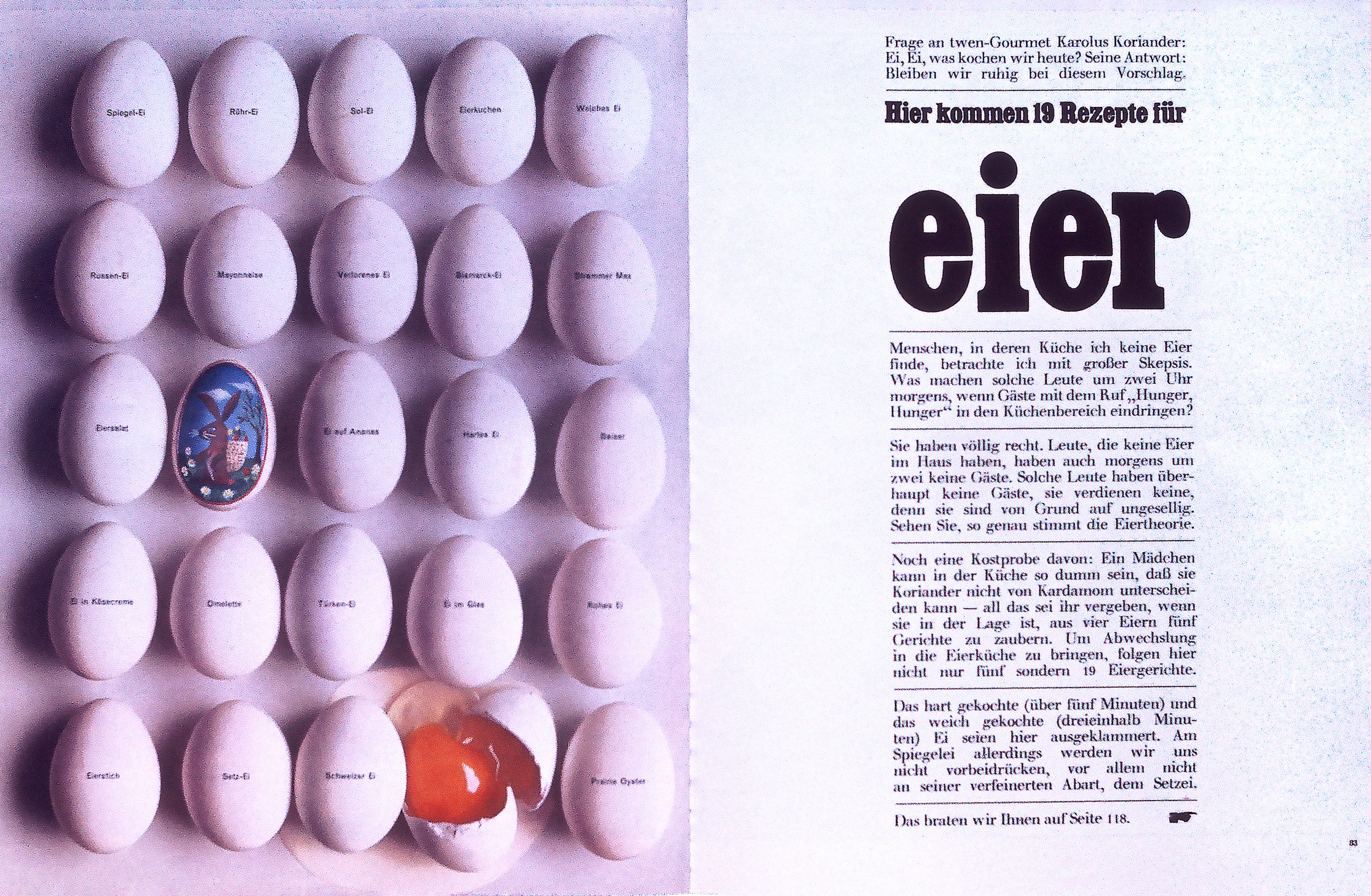
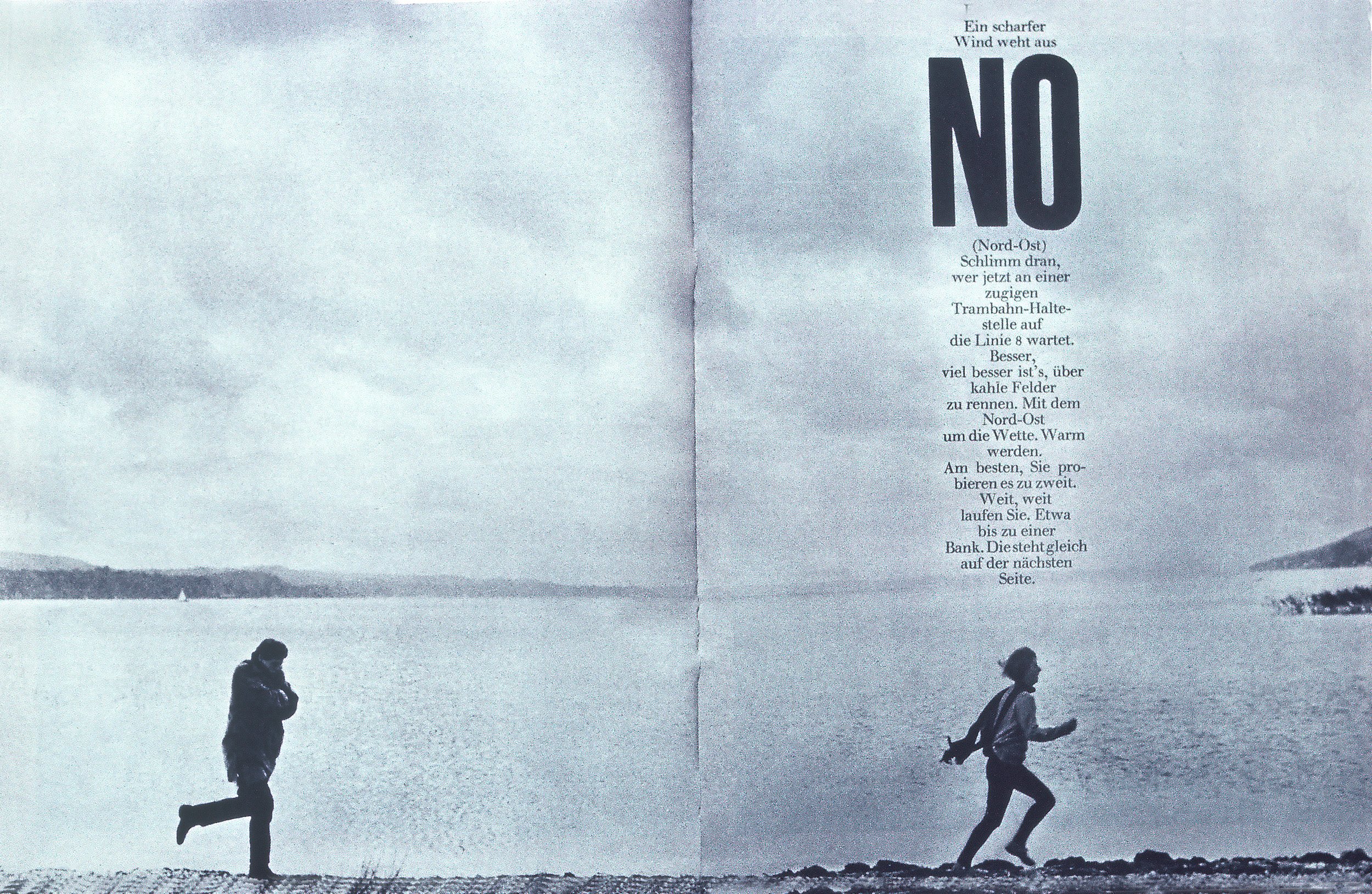
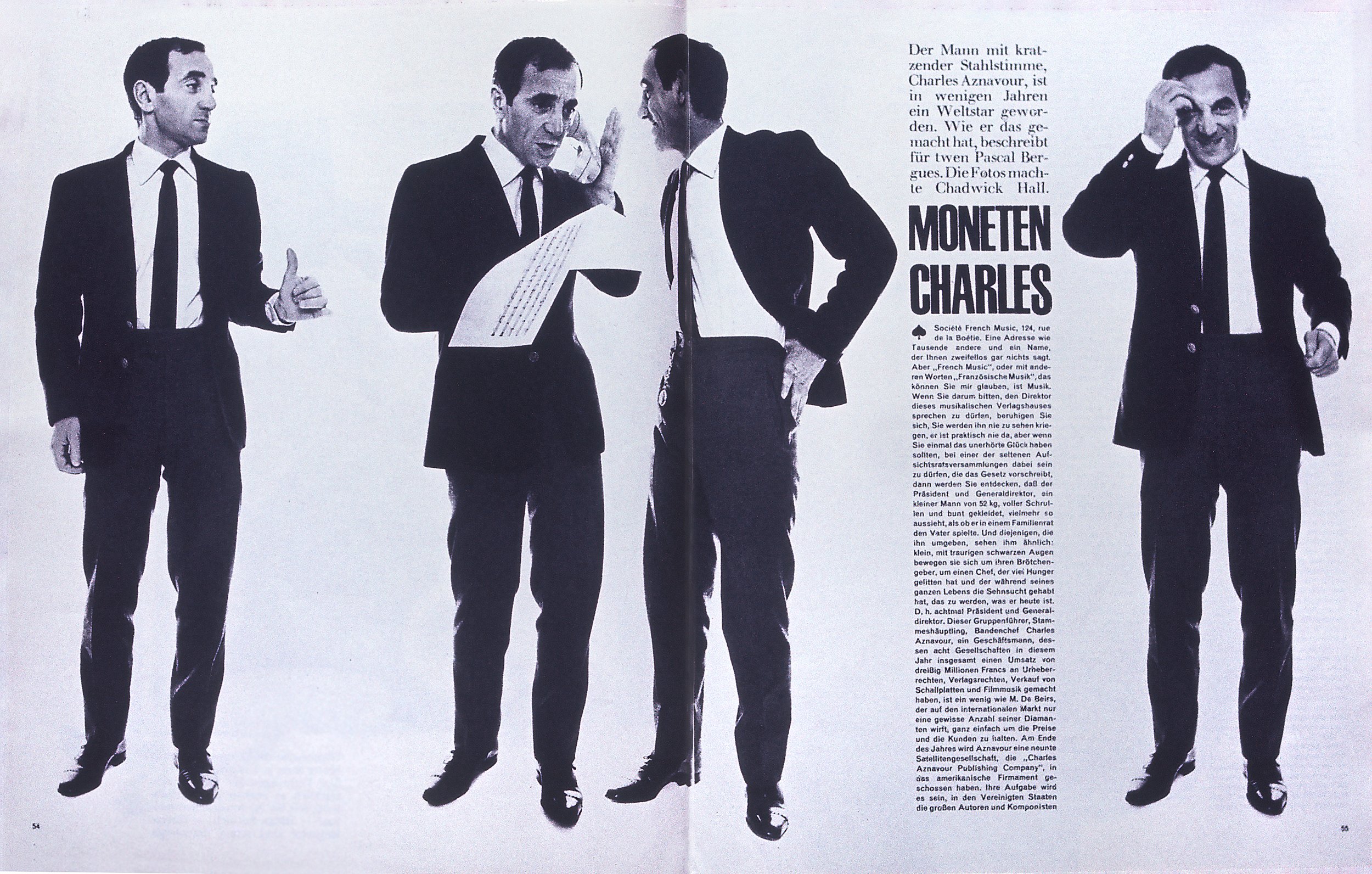
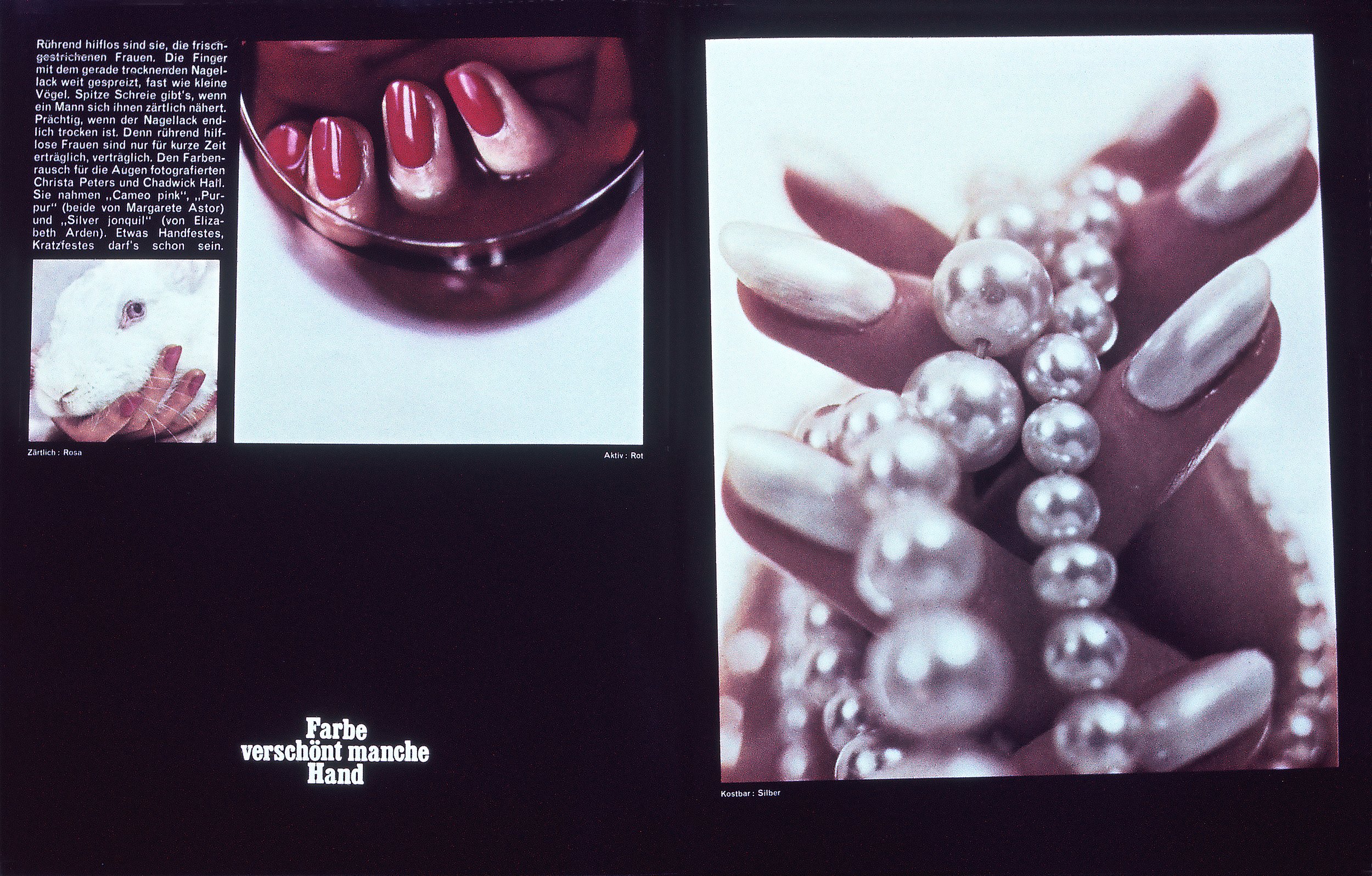
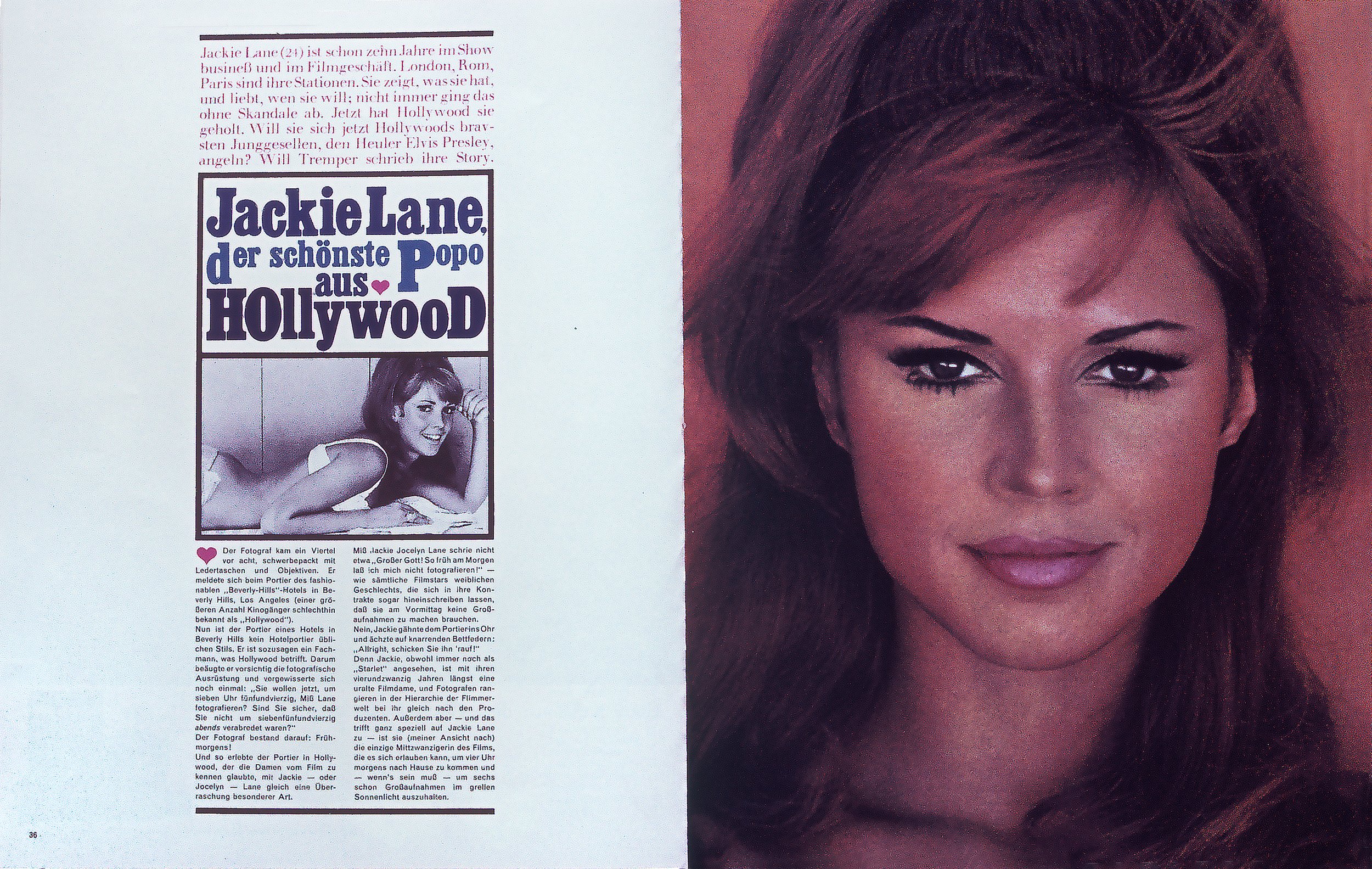
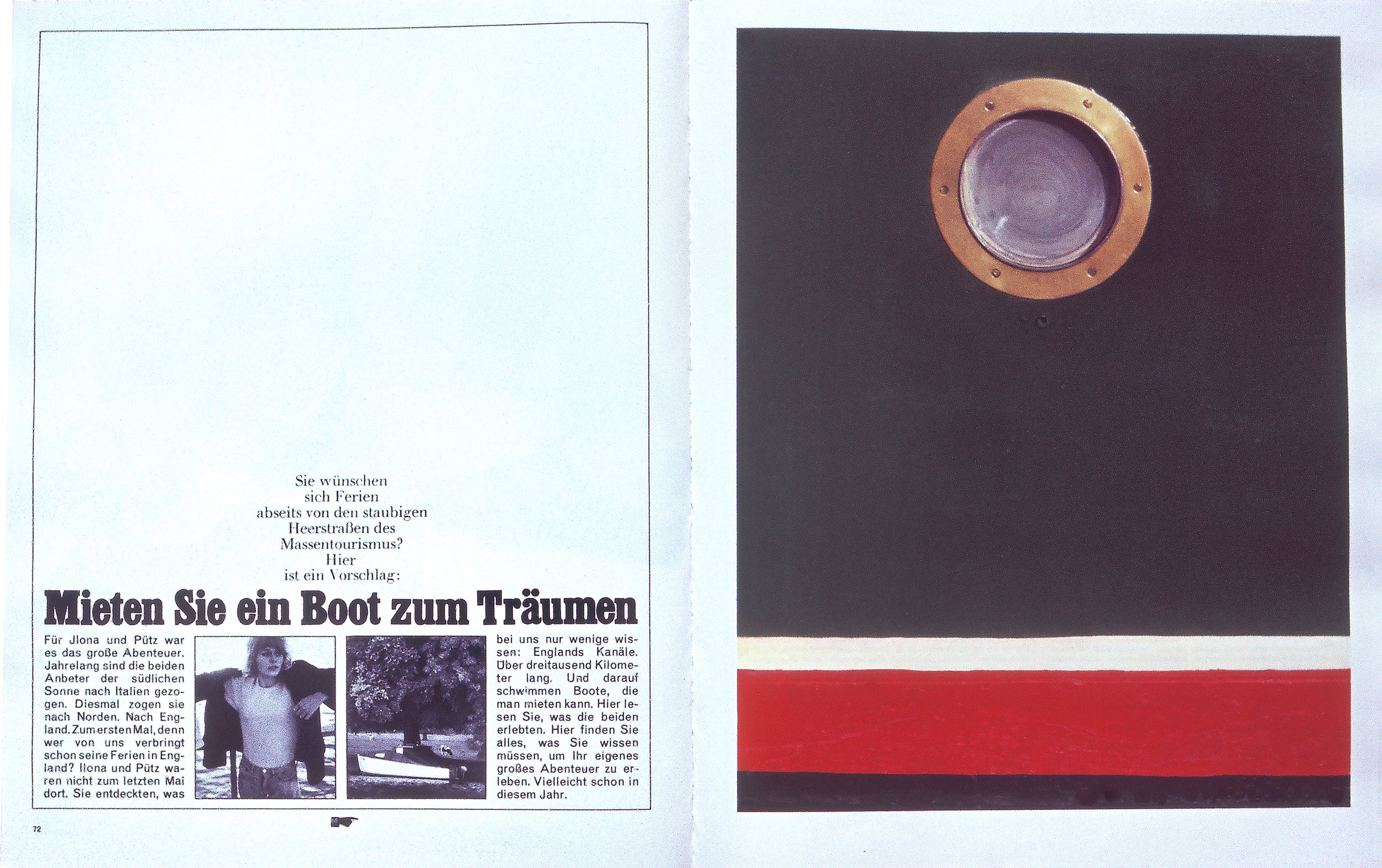
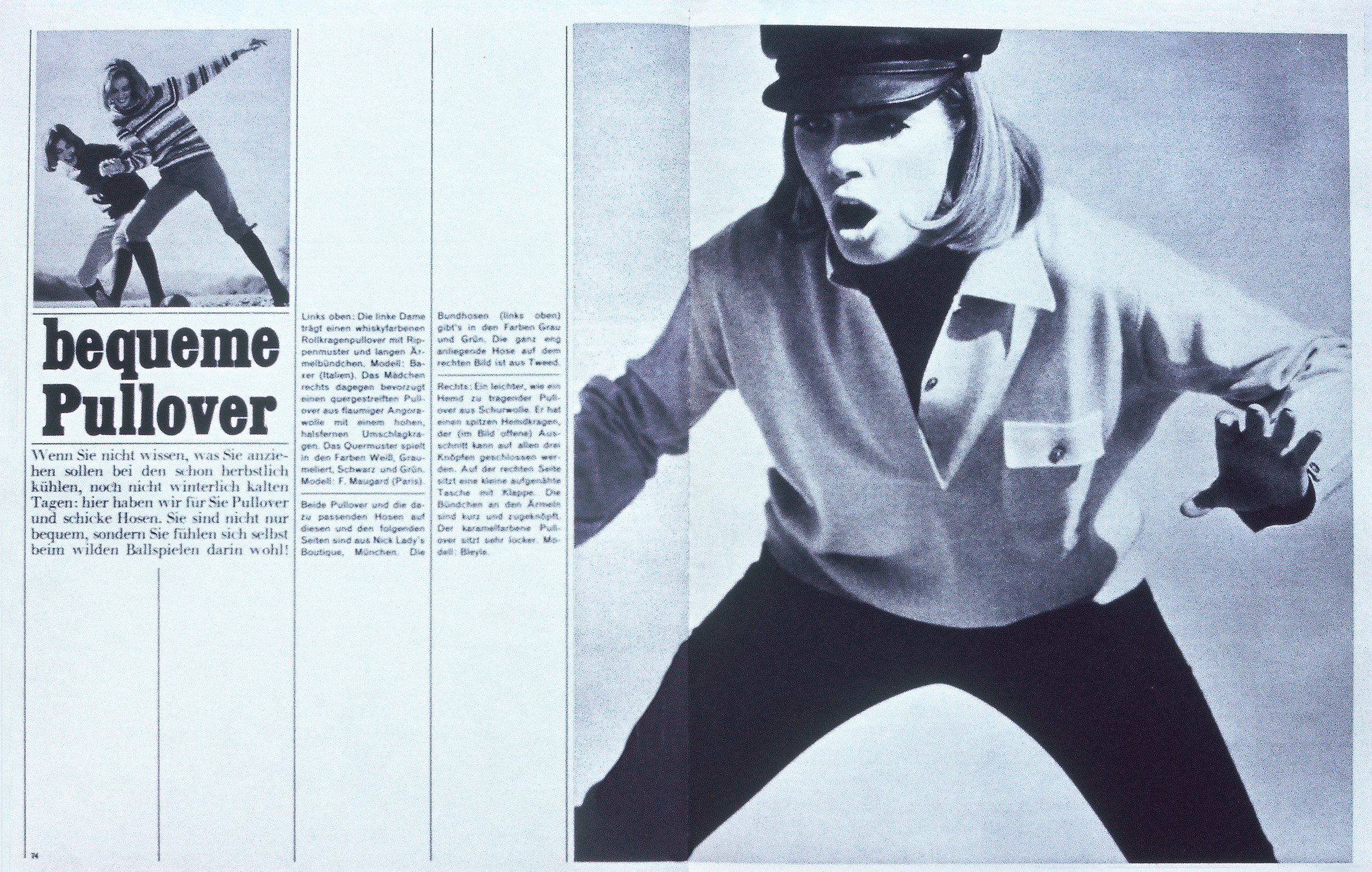
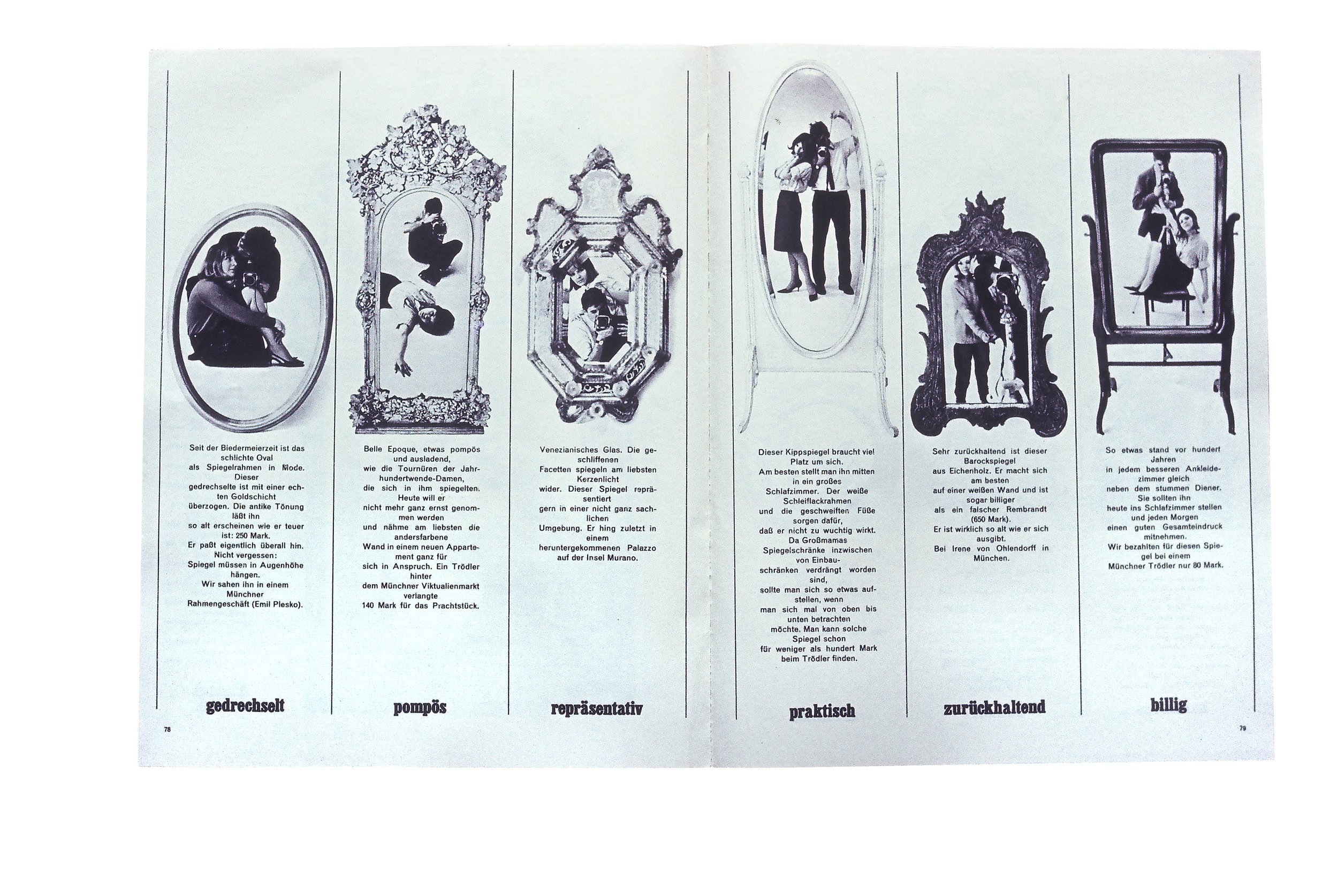
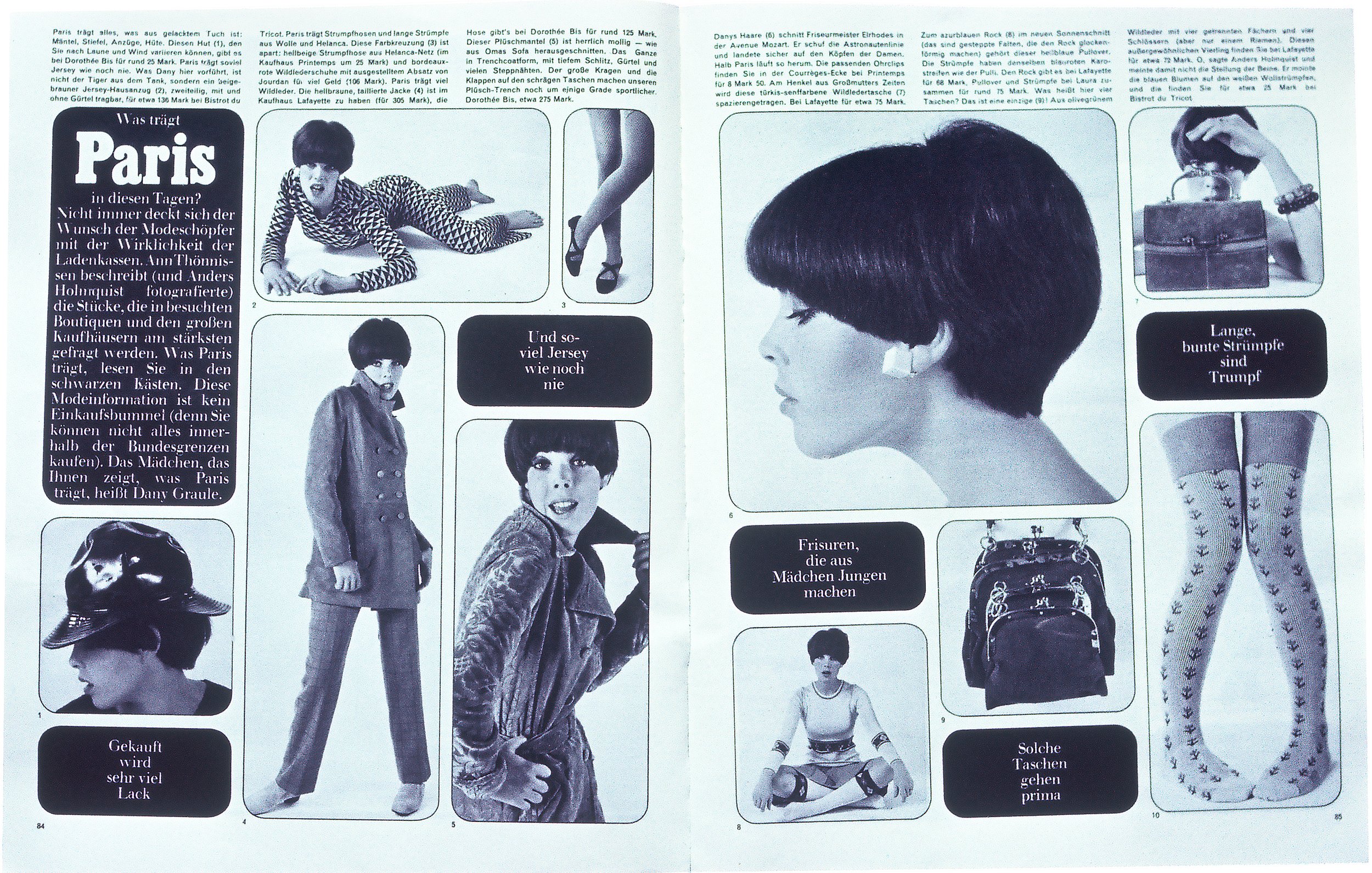
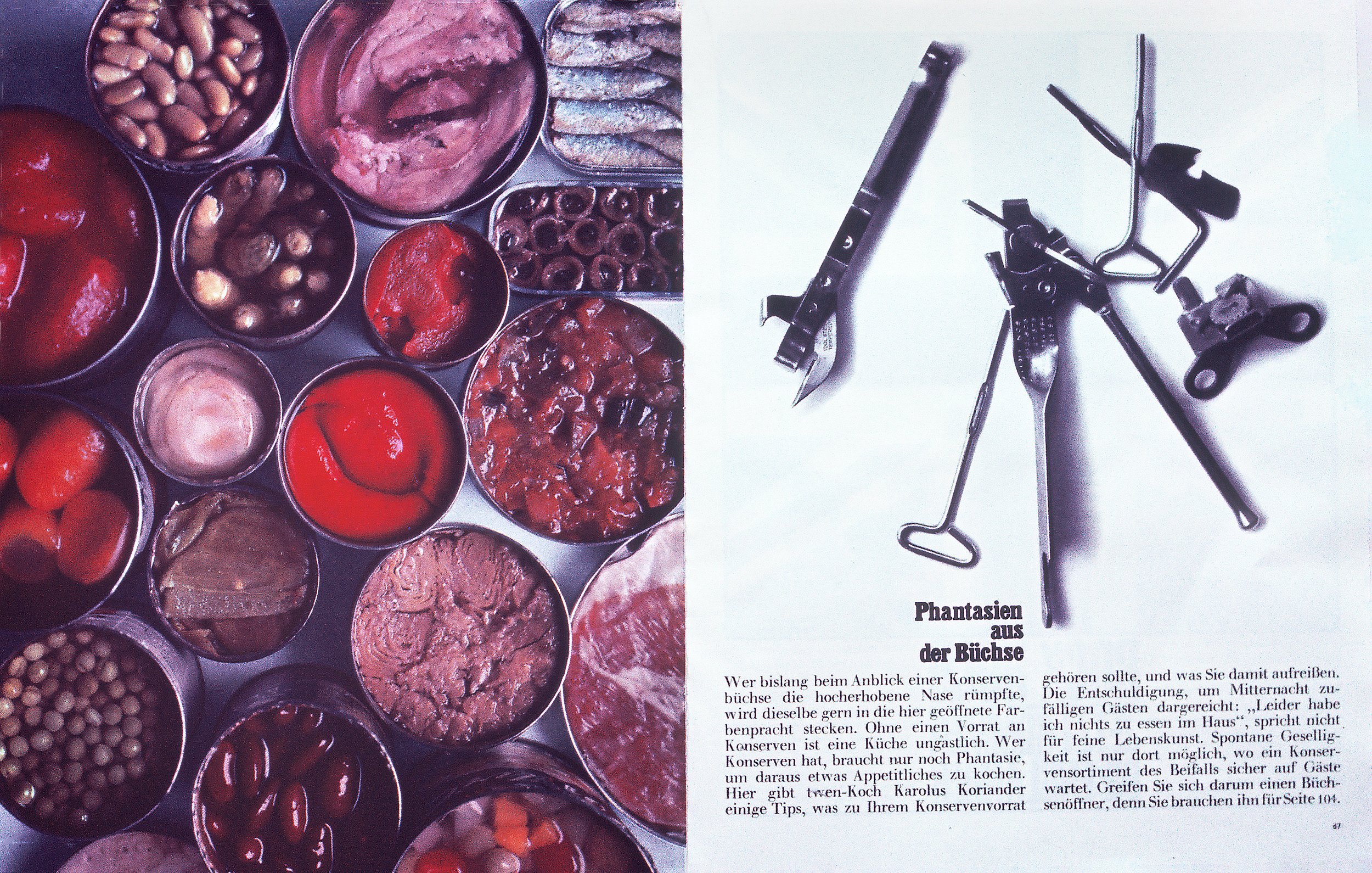
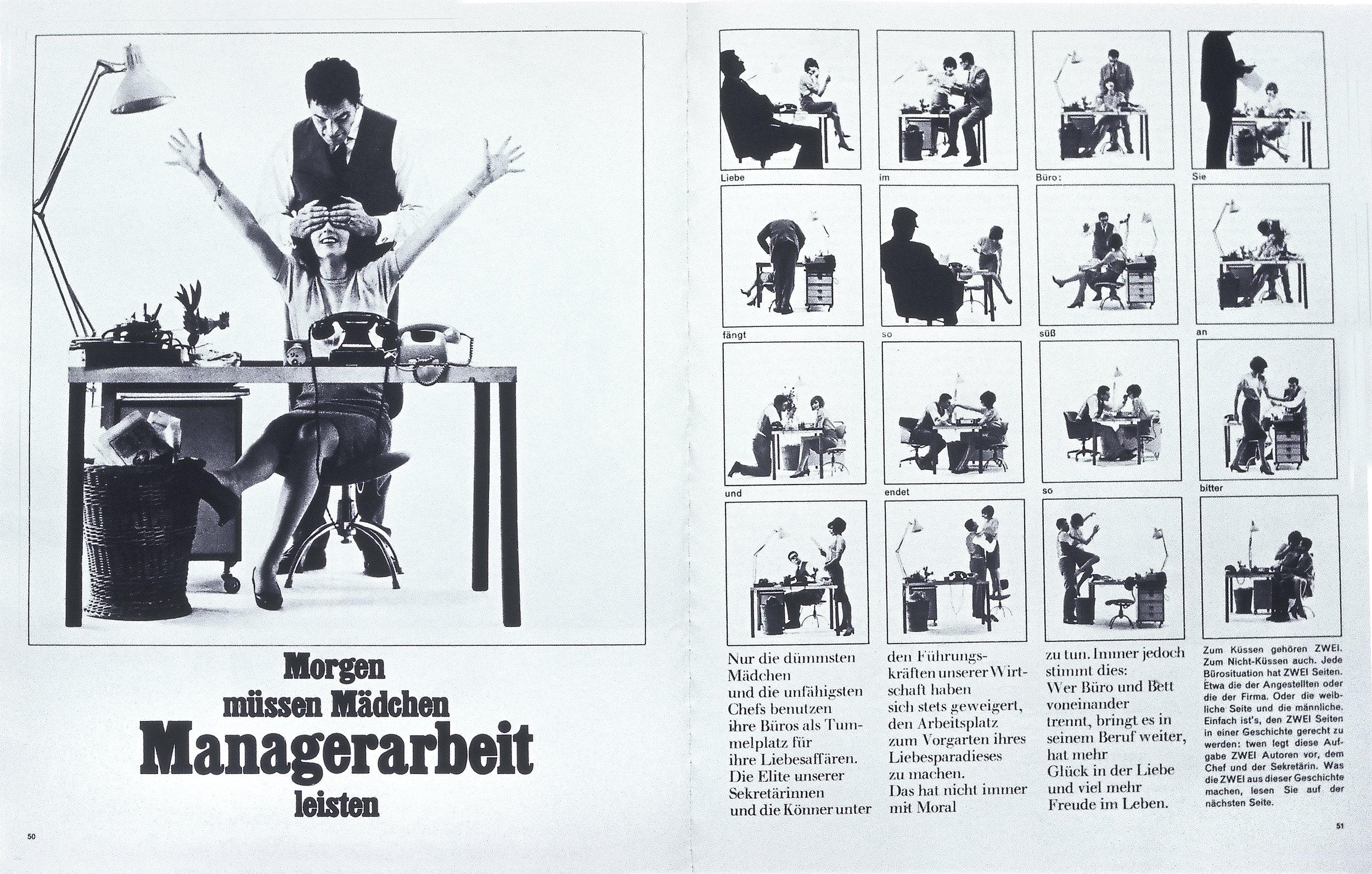

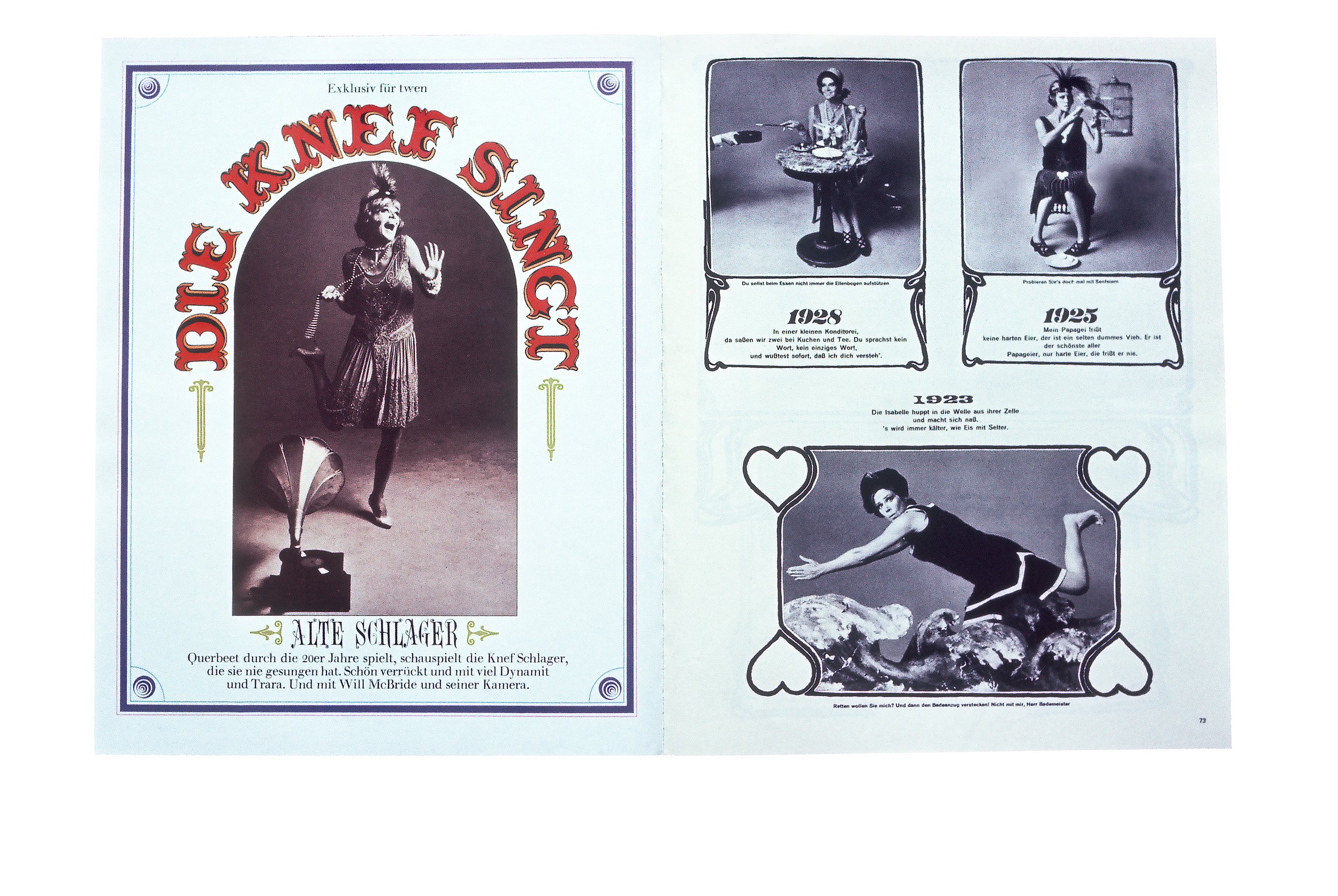

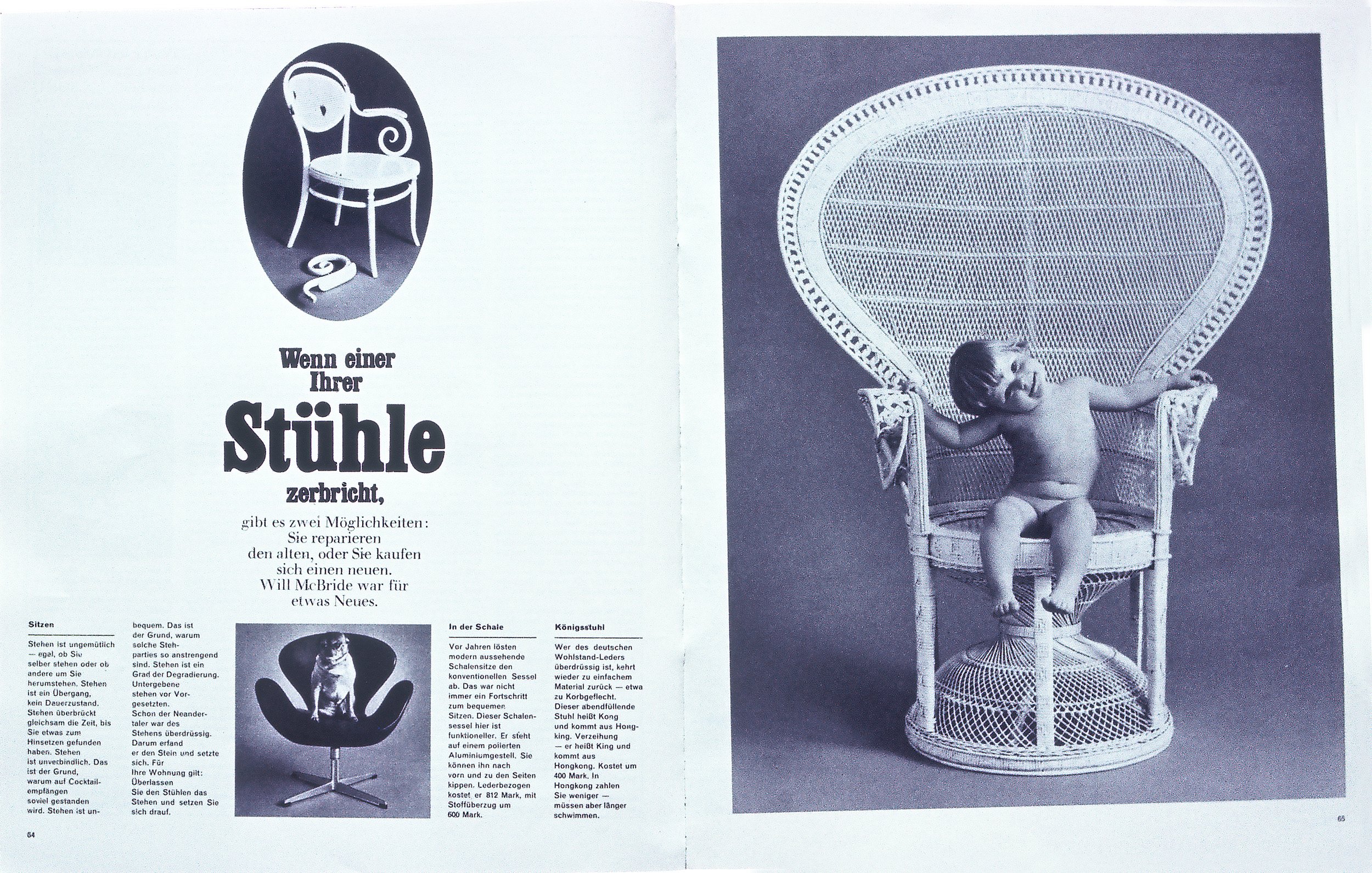
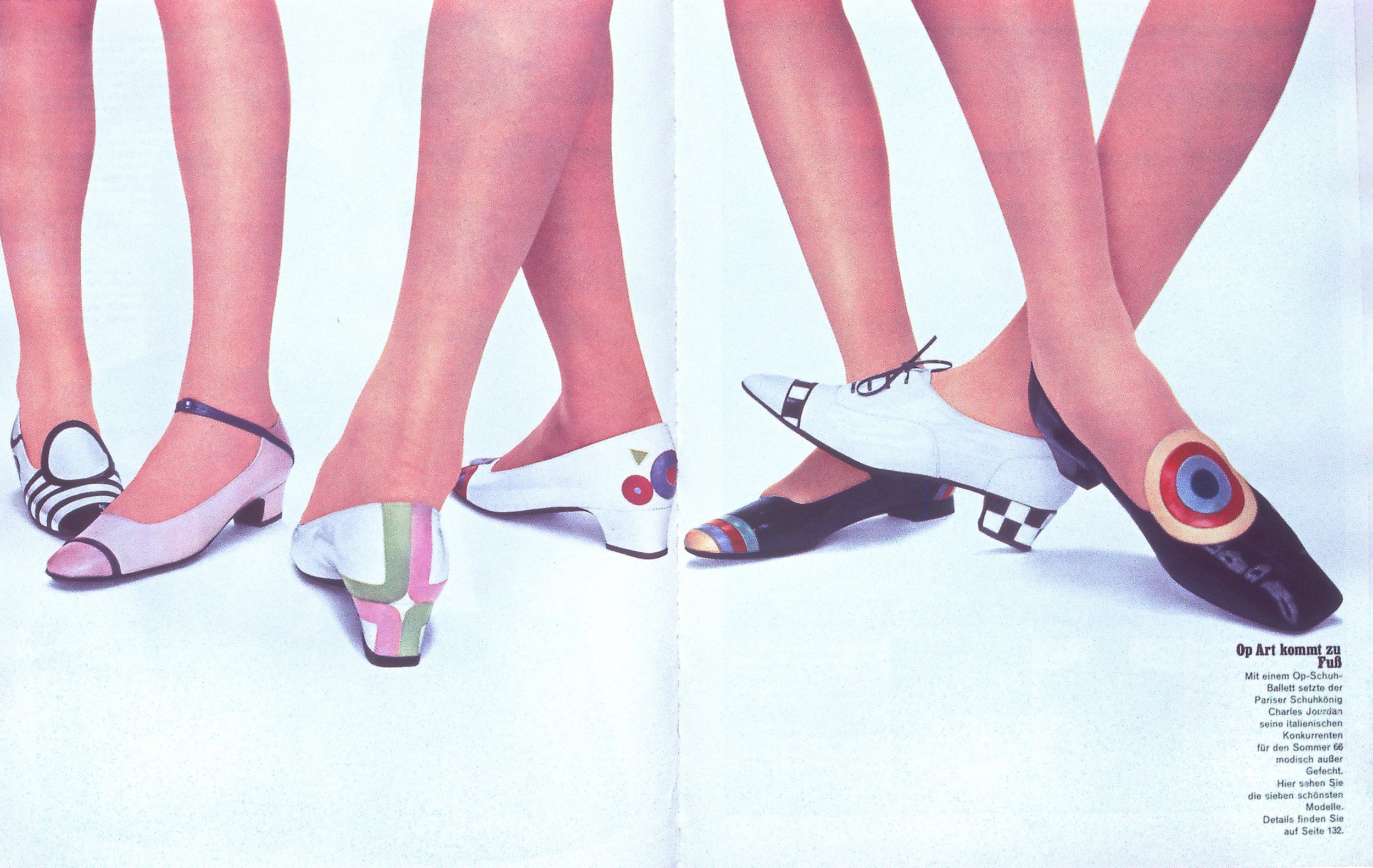
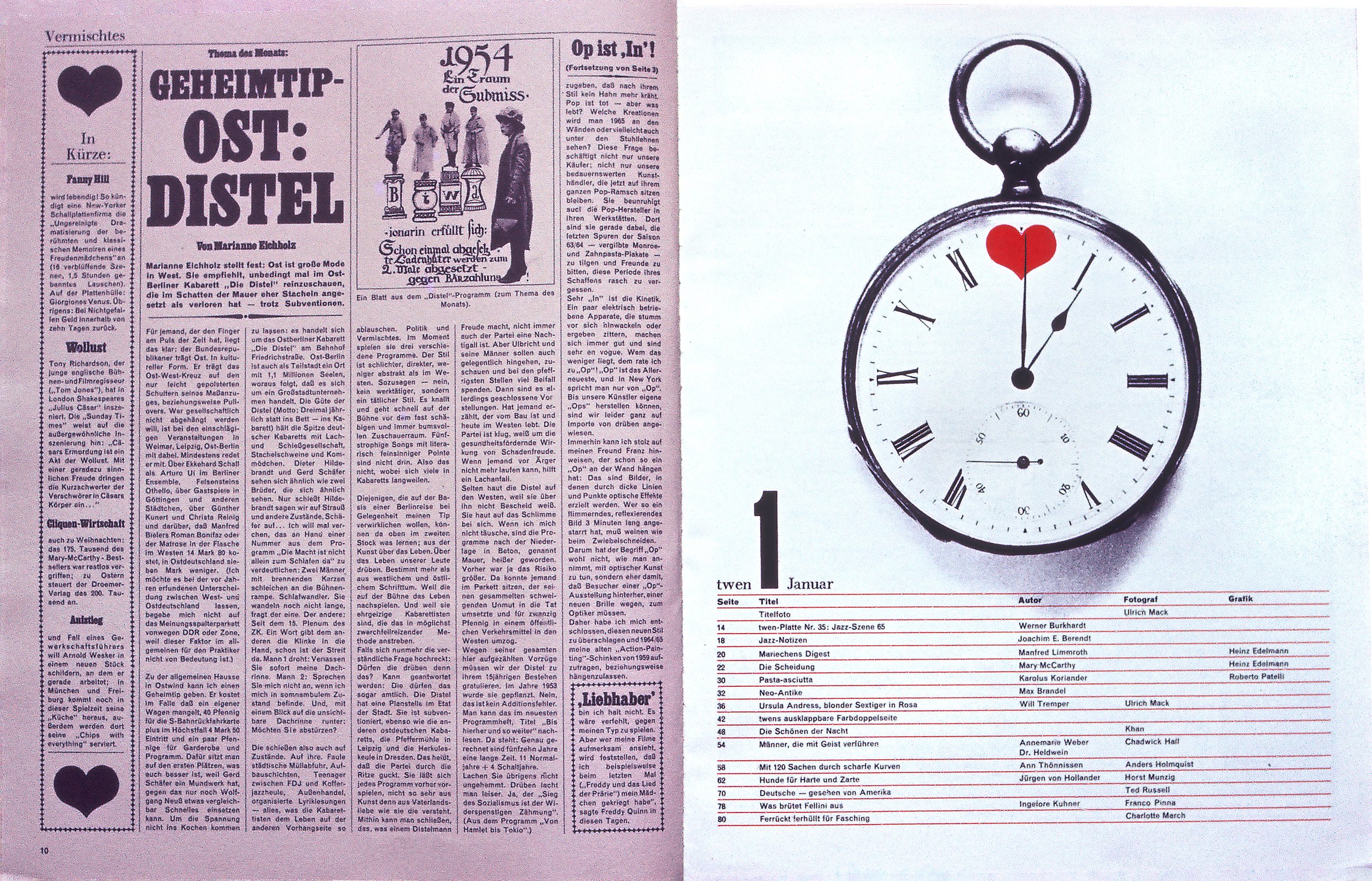

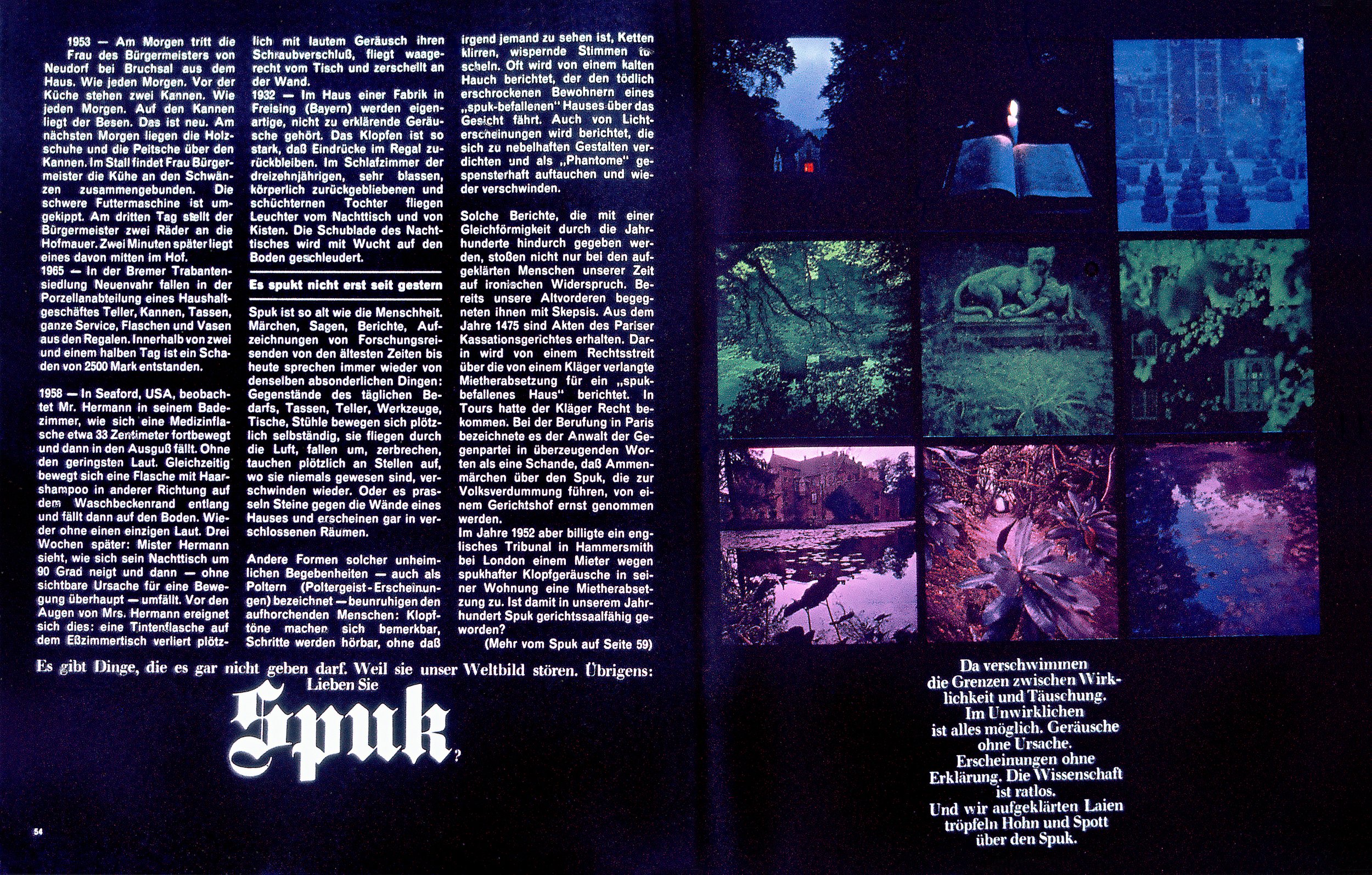
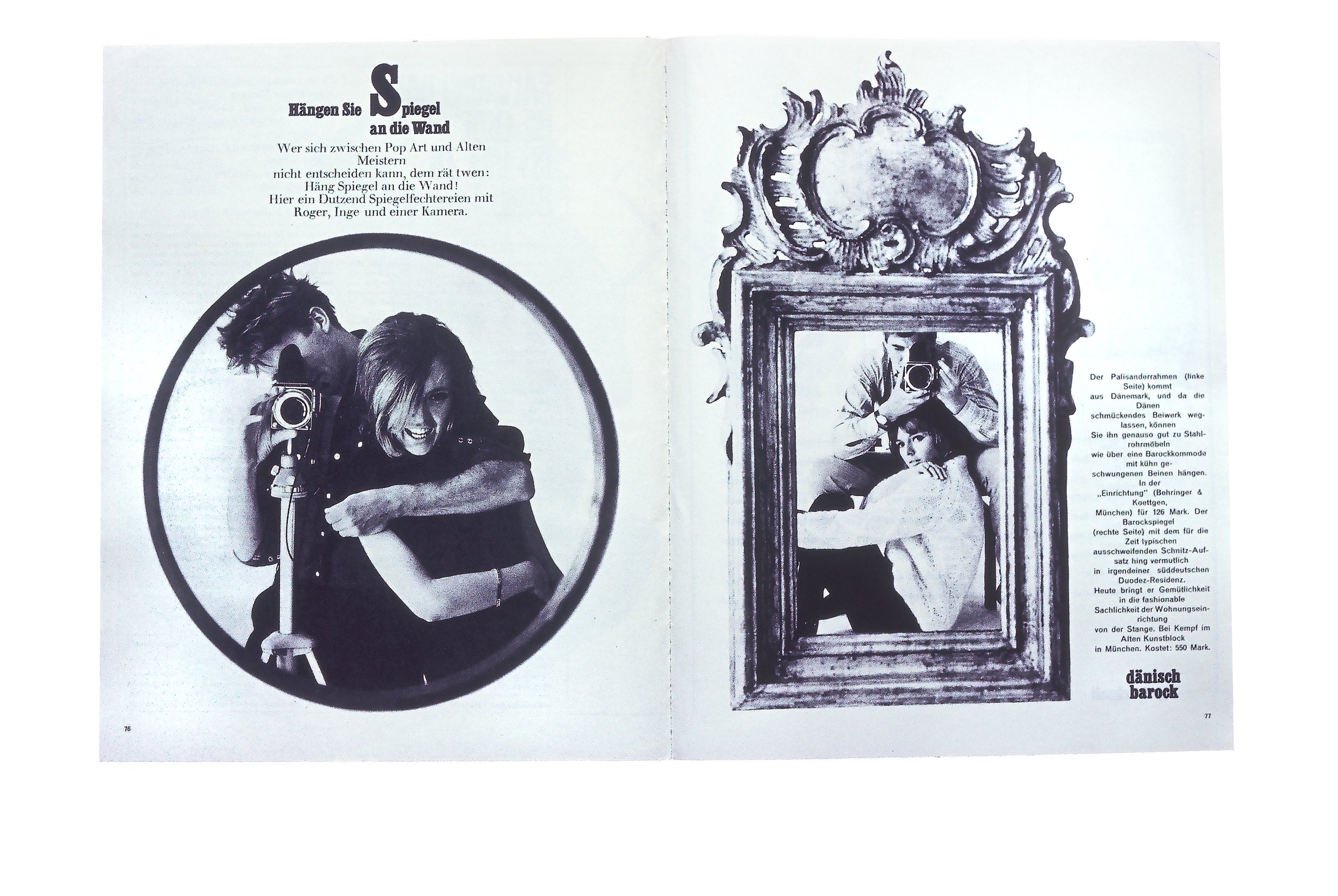

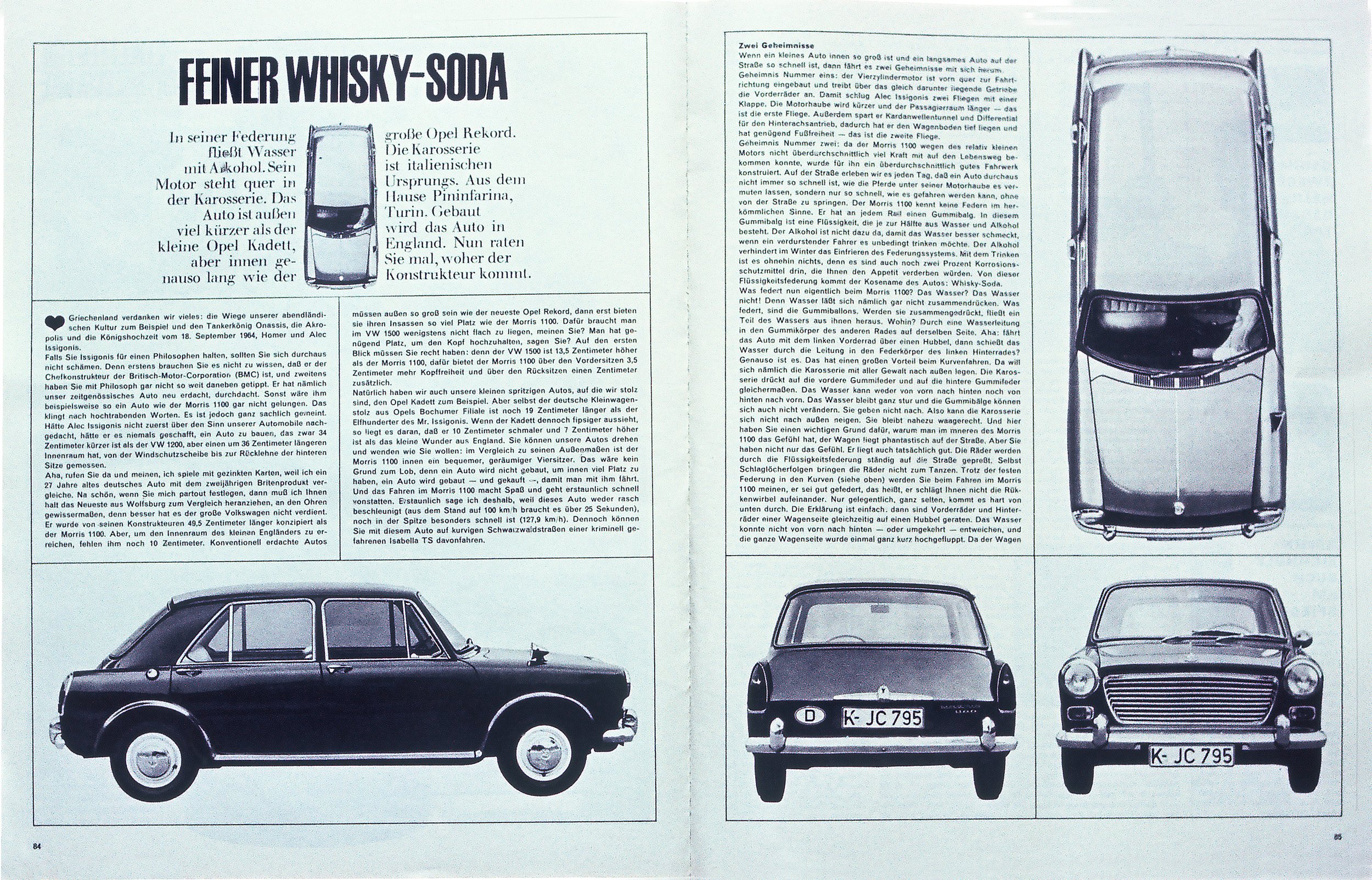
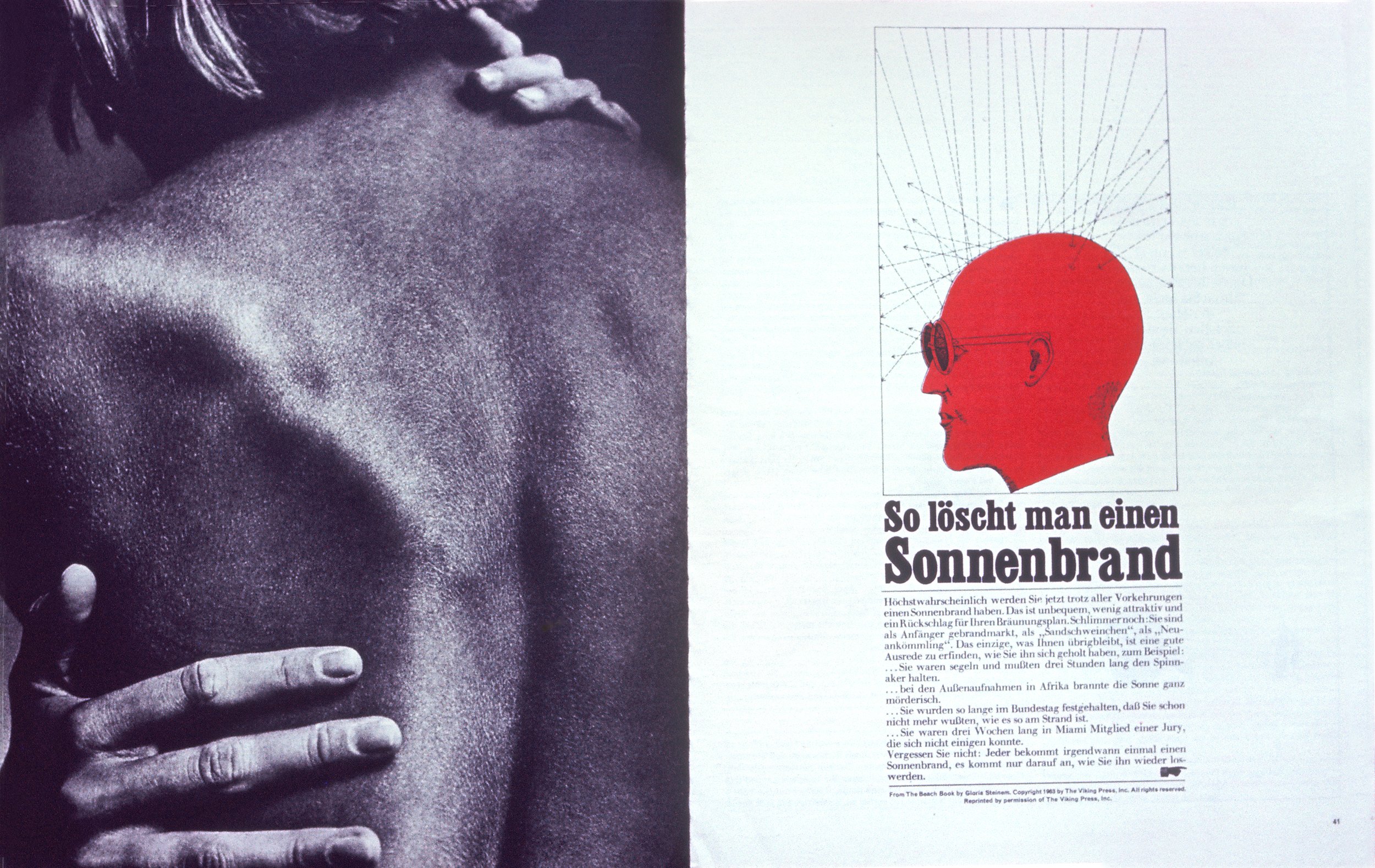
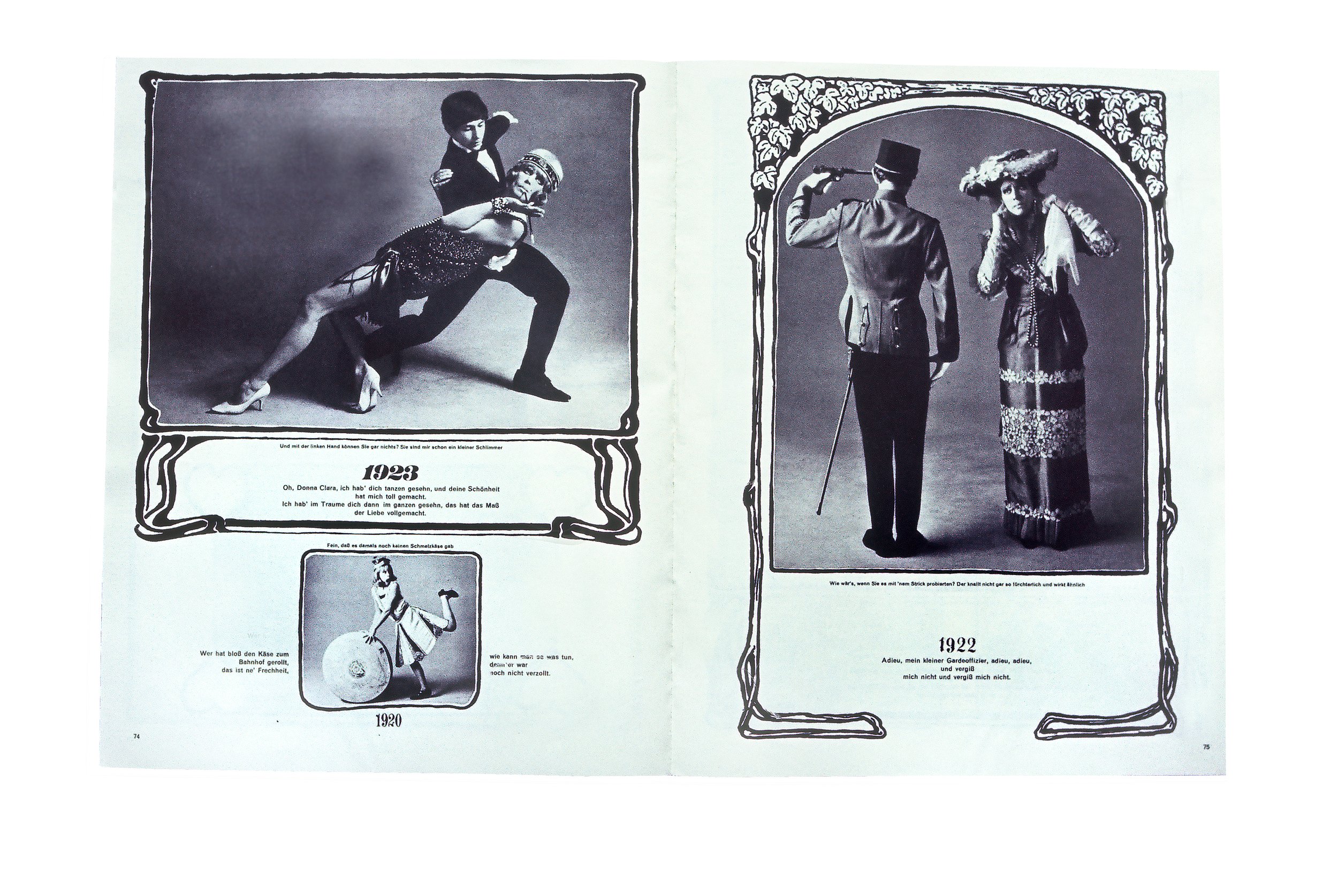
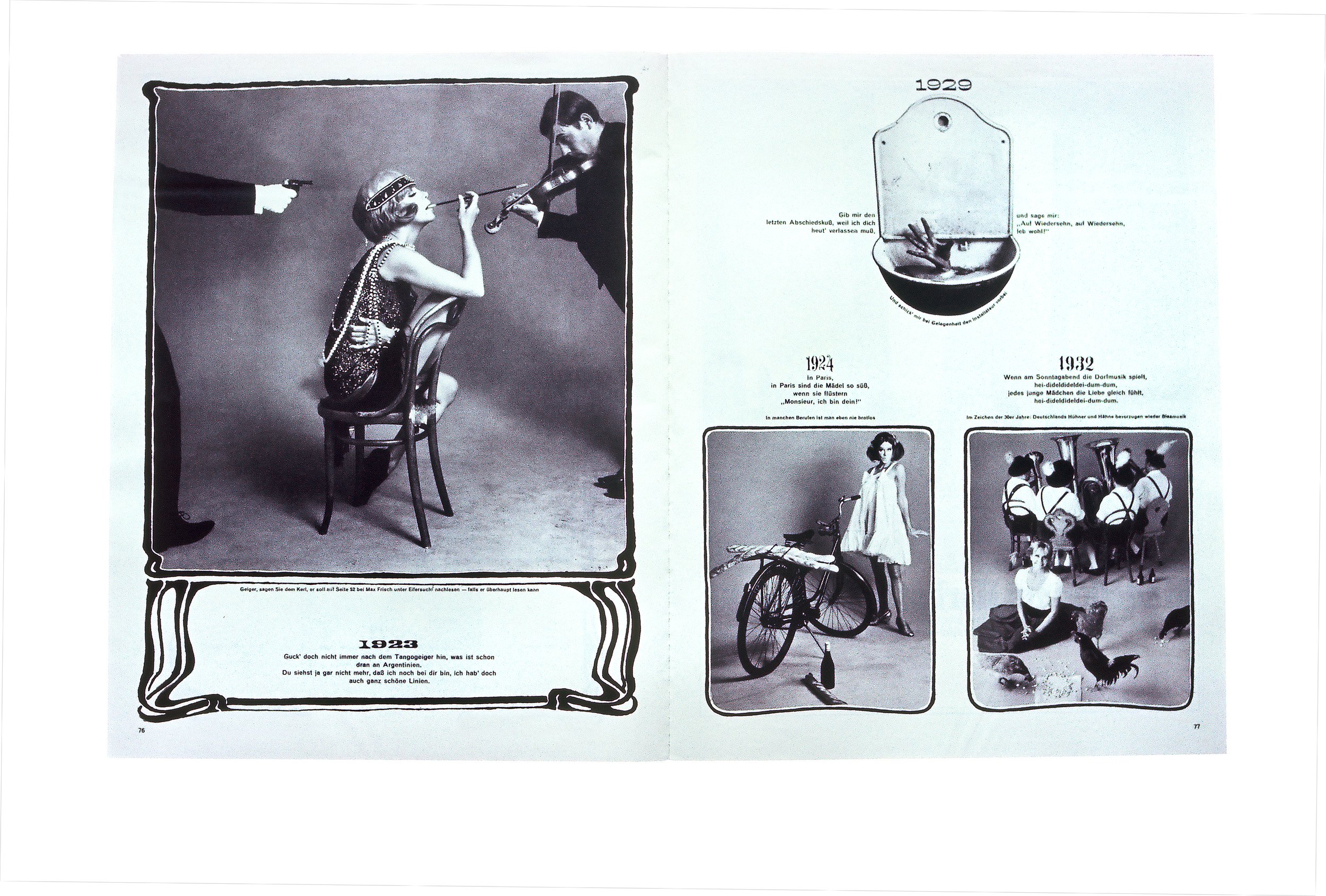






George Gendron: Yeah. But that’s a different definition, Will, of being “in” the art department. [Laughs]
Will Hopkins: So, I waited there. I knew I had to wait there. I couldn’t get out of there. Because if I did, I wouldn’t be able to get back in. So I just came every day and I sat on a sofa and then when they had a problem, I would jump in and help.
And so Fleckhaus gets there and he says, “You’re ‘the Hopkins’.” And I said, “That’s me.” And he said, “Well, I’ll see you later.” And he has a little office that was as big as two phone booths, that was off of the big room that we were working in.
And his editor comes in and he’s talking to the editor. And then he somehow realized from the editor that I am there to work for him and I’m not going to go away. And he said, oh my god. And he says, “Get that guy in here!” So now there were three of us in a space the size of the desks that we’re sitting at here. There were three of us in the room.
Willy Fleckhaus, art director of Twen.
And he says, “What are we gonna do with you?” And I said, “Listen, I come from a little area in Arkansas, and when you’ve got something to do, you do it. And I had to get over here because I wanted to work for you. And I’m here and I’m ready to work. And he said, “All right.”
George Gendron: Did he say it with that level of enthusiasm?
Will Hopkins: Something like that. And then I think he told me to go wait because he’s still talking to the editor. And Fleckhaus ran the magazine. The editor didn’t. Fleckhaus ran what it was gonna be.
So anyway, Fleckhaus comes out and he says, “Let’s go through this project and see how much we can do this afternoon.”
And he had these spreadsheets. And he would draw on that sheet or whatever, you know, sometimes just write something on it and then I would go execute it.
Mary K Baumann: And that little sheet was the 12-part-grid.
George Gendron: That was it. A little, tiny thing.
Will Hopkins: Yeah. Right. Yeah. I’ve got them around here. We can put one up on the screen if you want.
Mary K Baumann: Anyway. The beauty of the 12-part grid is that it provided a standard throughout the publication. And so you could have two columns at six units. You could have three columns at four units. And then you could mix it all up. And it was a way to build scale and contrast within the publication.
“One Sunday afternoon, I’m walking down the street in Chicago. I said to this friend of mine, ‘You know [what]? I’m gonna go to Germany.‘”
George Gendron: I was just about to say, when you look at pages, for example, from Twen in those days, it feels as if it were executed last month. You worked with these very large and very horizontal images that broke up the verticality of the grid that was just breathtaking.
Mary K Baumann: The other thing about that grid is because of those 12 parts, it was a way to build—well you would say white space, but it was really breathing room—within the publication so that you could focus on the content. It was a way to get your eye to focus more clearly on the content.
George Gendron: So that 12-part grid almost suggests a kind of Germanic engineering approach to design in a certain kind of way. And I’m curious whether people were enamored of that in the same way they became enamored in this country with the engineering of Mercedes and Audi and BMW. Has that ever occurred to you?
Will Hopkins: I’ve never bumped into people who had any idea about it. When I tell people or show people, when we deal with some publication that we work with and we sit down and we say, “Now this is how we put a page together.” We show these little pieces of, you know, sketches, little pages and we start talking about, you know, how you can look at this and how you can work with it.
Mary K Baumann: One of the things about the grid—you know, you started out with a blank page and it’s like you’re working in a vacuum. But the underlying grid was a way for you to easily organize content, pictures, words, and so on.
Will Hopkins: Mm-hmm. Yep.
Mary K Baumann: And that was a real key to it, is like you weren’t reinventing the wheel every day. And it was a way to create a certain consistency throughout the publication, so it looked like you were in the same place.
I’ll get back to Fleckhaus, but I met Will, he was a visiting lecturer at the University of Minnesota. Look had just folded and he walked in and I was like, “Oh, this is magic. He’s this art director from Look Magazine.” And this was in the journalism school, and he walks in with a three piece suit, pocket watch and a sheepskin coat thrown over his shoulder. He was like a celebrity walking into our classroom. Anyway, he showed us this 12-part grid, and we were producing a magazine and we just got it like that. It was just amazing and suddenly everything made sense.
Will Hopkins: At least for her. [Laughs]
Mary K Baumann: At least for me.
One of the things that Will has told me about working for Fleckhaus, that was truly amazing working there, because of the way Twen looked, it was a showcase for photographers.
So photographers from all over the world were walking into the Twen offices from the US, and England, and Italy, and all over. So he got this tremendous education in photography from some of the greatest photographers around. The other thing that was very interesting about his time, I think one of the reasons Fleckhaus liked him being there, is that he had—this was after World War II—he had an American under his thumb. He had his little American. So any visitor that came into the office, he would bring by and introduce him to Will...
Will Hopkins: ...or he would call me to come into the office or, you know, something like that, just so that he could—I remember once he had like about four East Germans in there—and he says, “Hopkins!” And they sort of shook, and I came in and he said he wants a Coke or something. I mean, he didn’t have anything for me to do, he just wanted them to see me.
The 12-Part Grid, developed by Willy Fleckhaus in Germany, and imported to the US by Hopkins.
George Gendron: Were you establishing his democratic cred?
Will Hopkins: Well, yeah. It was just that he had “an American,” you know. And you look at these guys from the other side, they didn’t know what to do. They were astonished that an American was there working for him. They were astonished that there would be an American in that office.
George Gendron: Did they list you on the masthead as, “The American: Will Hopkins”?
Will Hopkins: They didn’t list me on anything.
George Gendron: But, you do manage to leverage the work that you had done there and you come back and you’re now on the staff. You’re an art director at Look Magazine, right? It’s 1967.
Will Hopkins: Yep.
George Gendron: Were they using the 12-part grid there or did you eventually use it?
Will Hopkins: No, no. I did.
George Gendron: So you used it when you became the art director?
Will Hopkins: I came there and I started doing layouts, and I just used the grid. And I got Neil Shakery, and Don Mennel, and Renee Schumacher. And they grabbed onto it when they came to work there, and I said, “This is how I do this.” And they said, “You got it.” They got it. Just like that. The other people who had been working there before never paid a lot of attention to it and didn’t know how to use it.
Look Magazine, New York, 1967–1971
George Gendron: So this is ’67 is during the heyday of Look and Life magazines.
Will Hopkins: Mm-hmm. Yeah.
George Gendron: And I’m curious because Life was probably twice your size in terms of circulation, I want to guess. It was larger. And I’m really curious, how do you guys...
Will Hopkins: I don’t know if it was that.
Mary K Baumann: Look was biweekly and Life was weekly, but I, that wouldn’t affect the circulation. Life was definitely bigger than Look.
George Gendron: I guess my question is how did you and your colleagues at Look think about, if you did at all, differentiating yourself from Life Magazine across town?
Will Hopkins: I don’t think we really paid a lot of attention to it.
Mary K Baumann: After Will was at Look, I was at Life Magazine. And having been around those guys at Life, they thought of themselves much more as a news magazine. Not the monthly Life, but the weekly Life. They considered themselves the news and pictures. Whereas Look was a little more trend-oriented.
George Gendron: And a little more feature-oriented I would think.
Mary K Baumann: They both did features, but Look was definitely more feature-oriented, more trend-oriented.
George Gendron: I can’t help but think back to a special issue that you guys did in, it must have been January of 1970, and the issue was “The ’70s” and you were looking forward…
Will Hopkins: Yeah.
George Gendron: …to the decade. And you did a piece that, to this day, I think is stunning. And I forget what you called it, but it was really the first major piece that I can think of about climate change.
Will Hopkins: Mm-hmm.
Look Magazine, Interior Pages
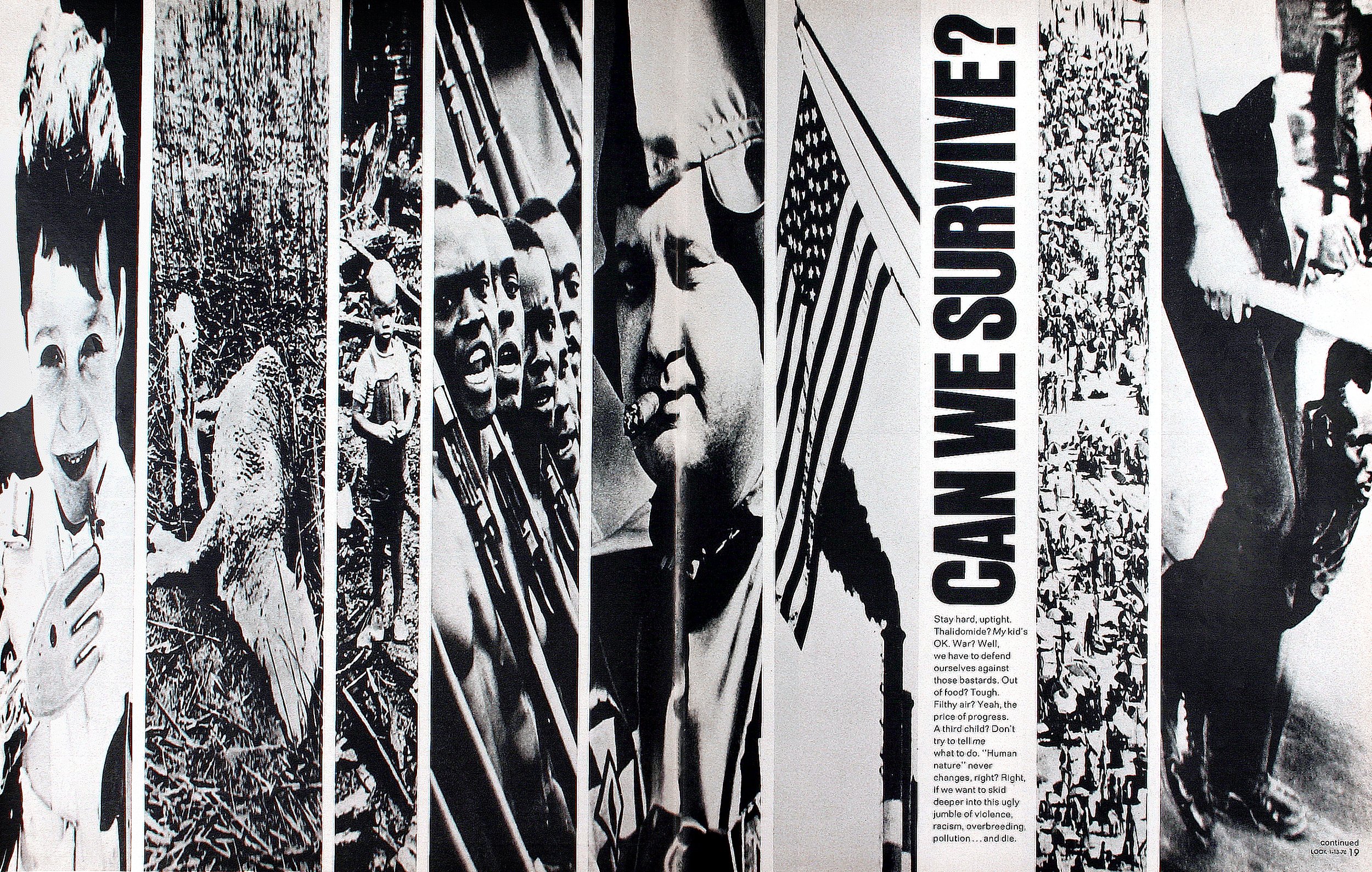

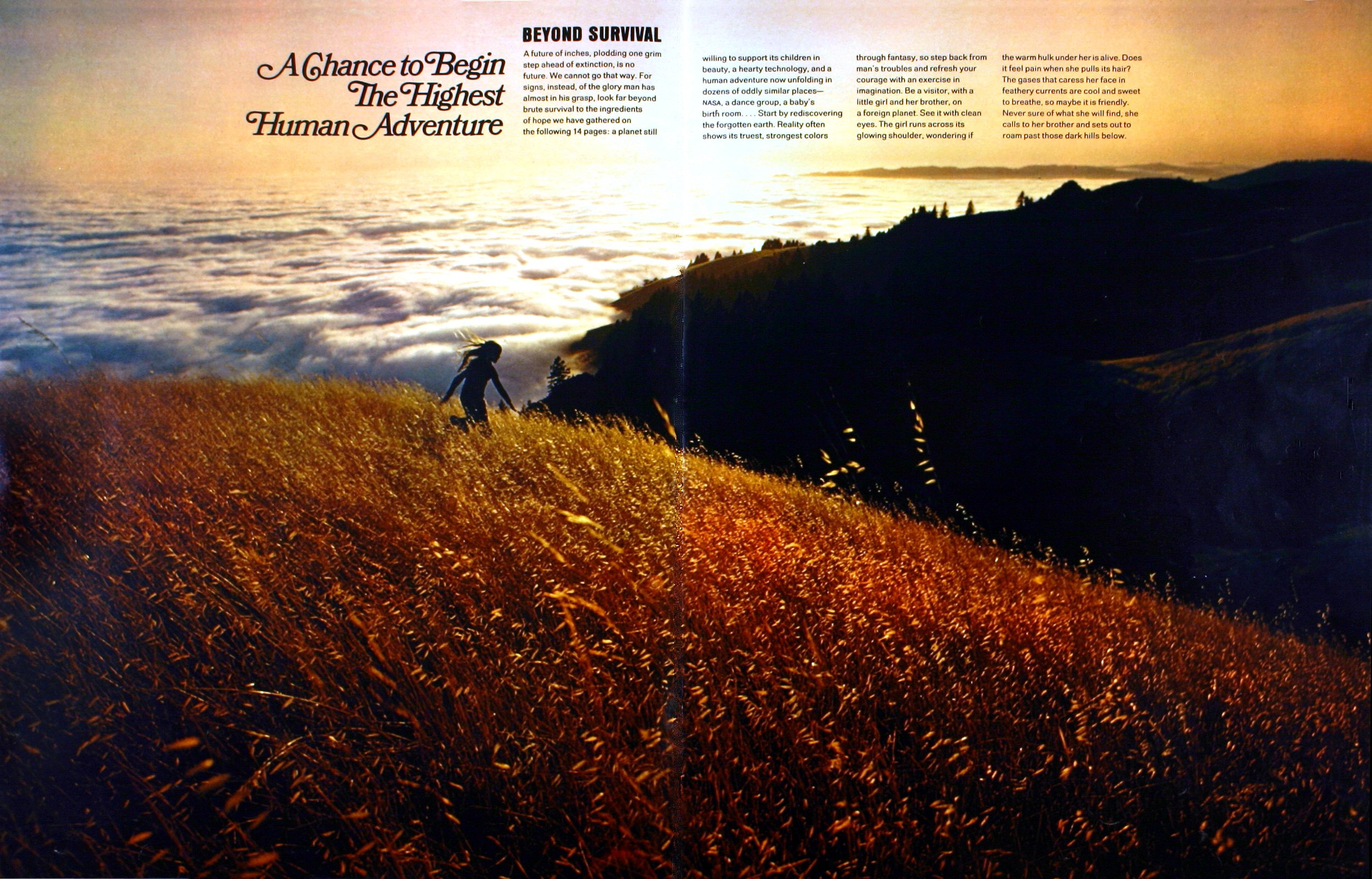
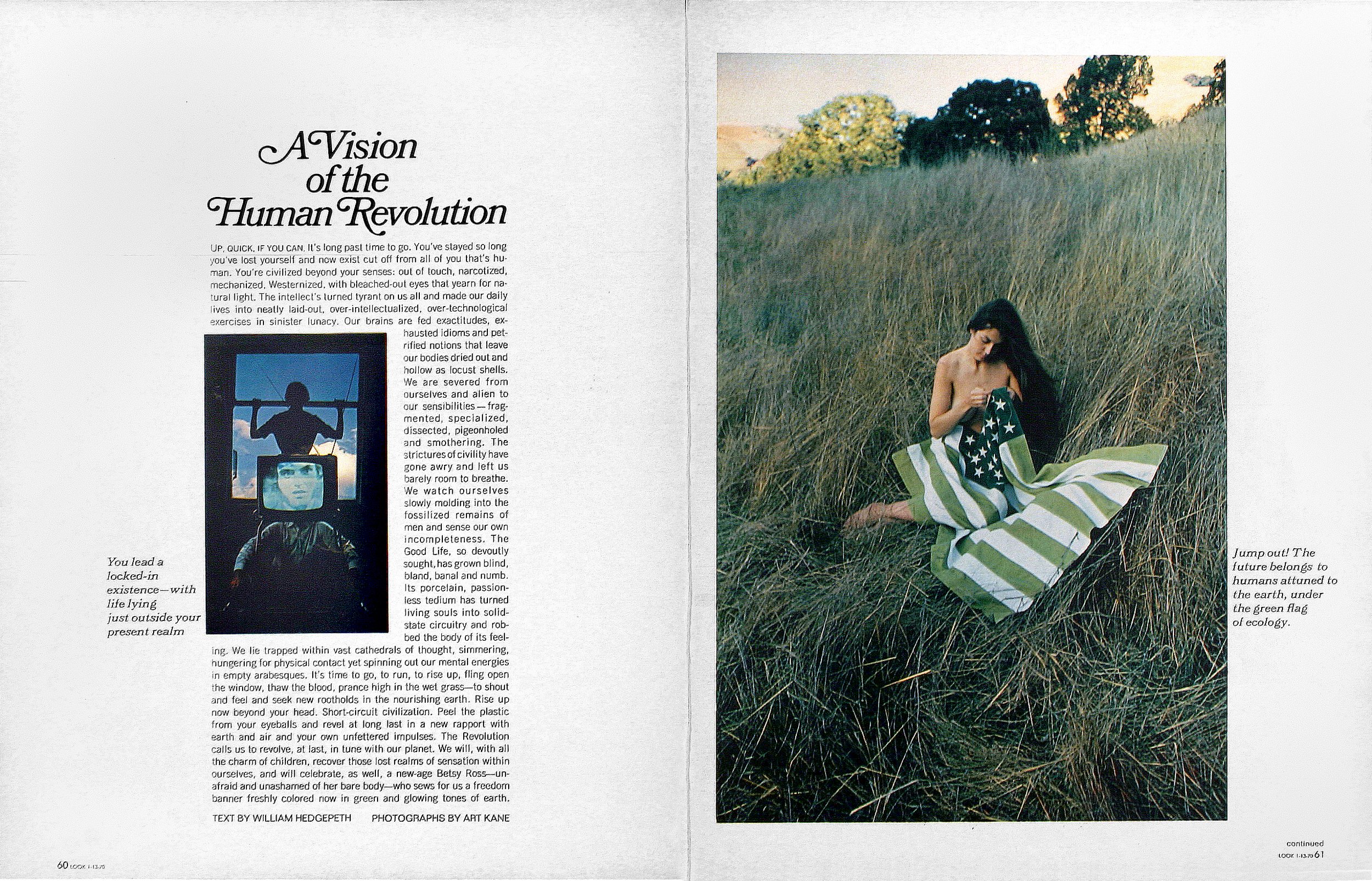
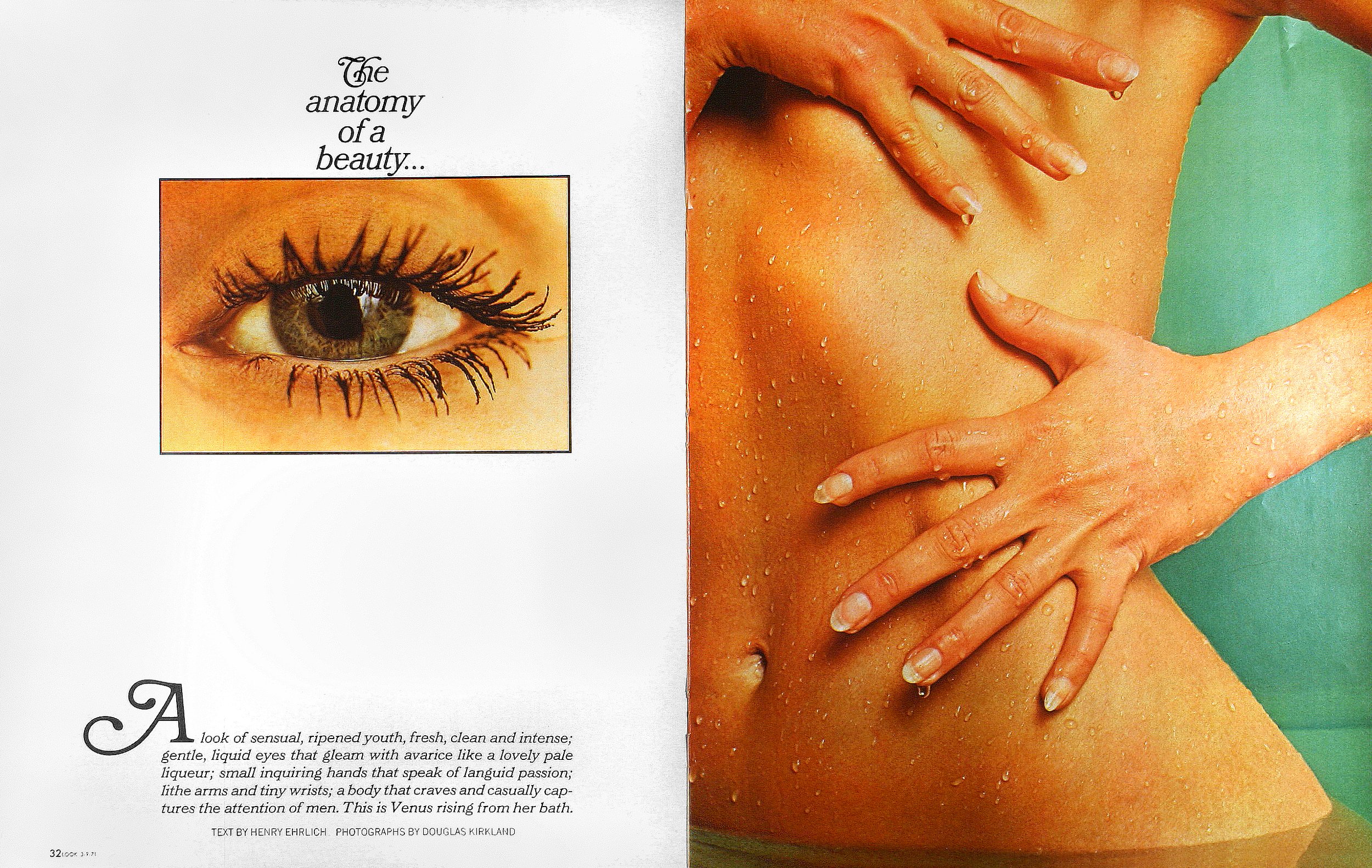
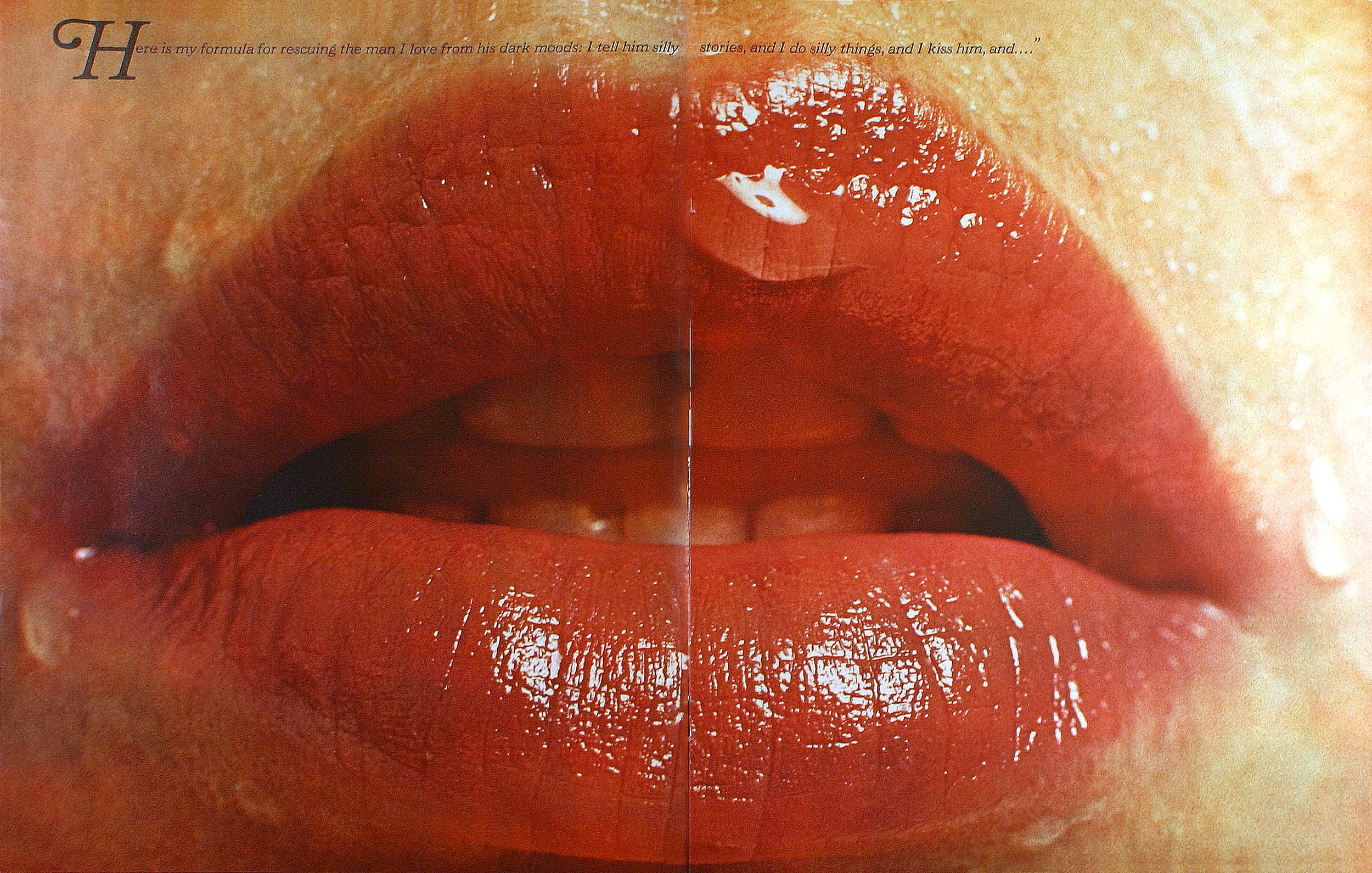
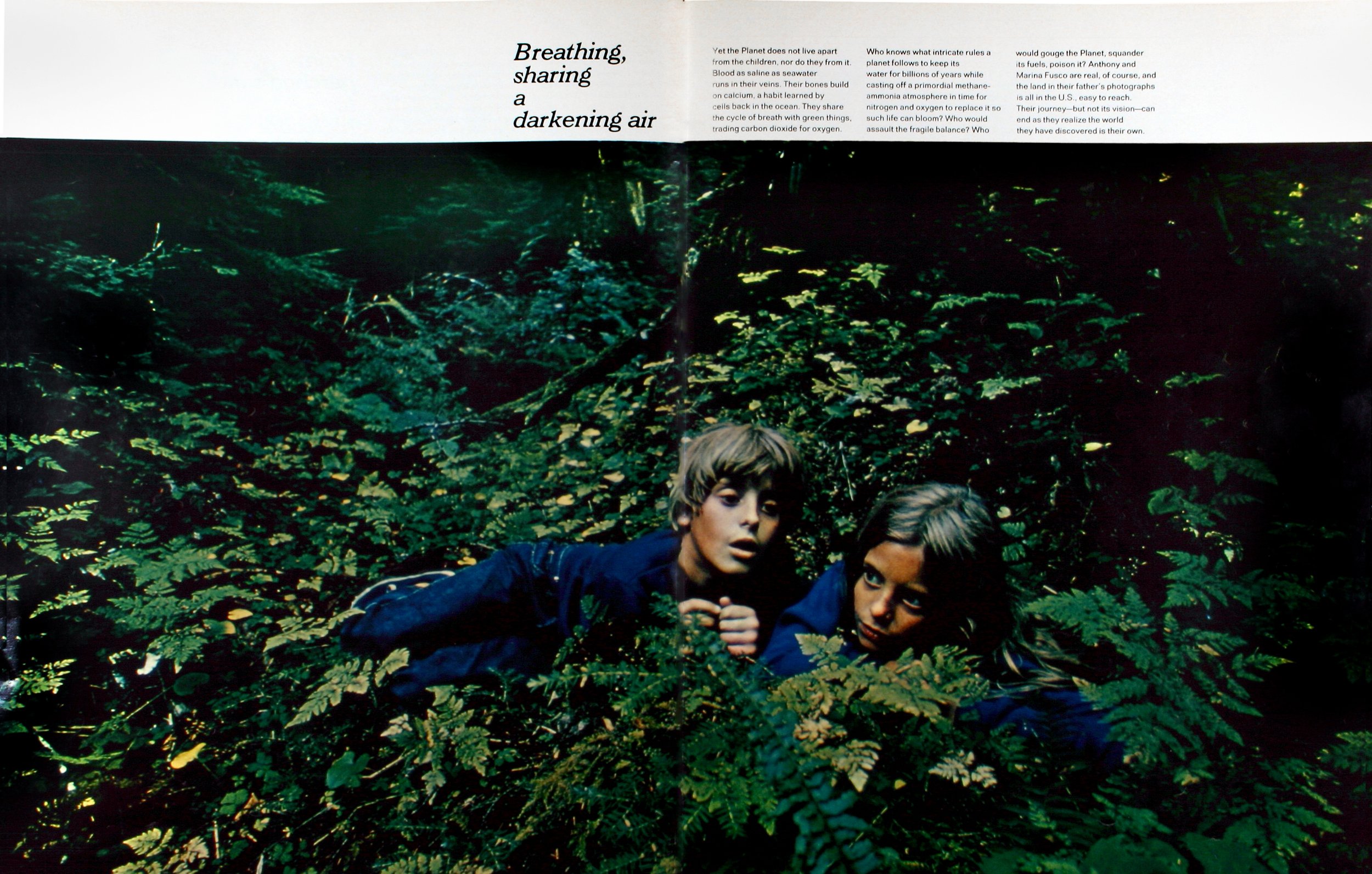
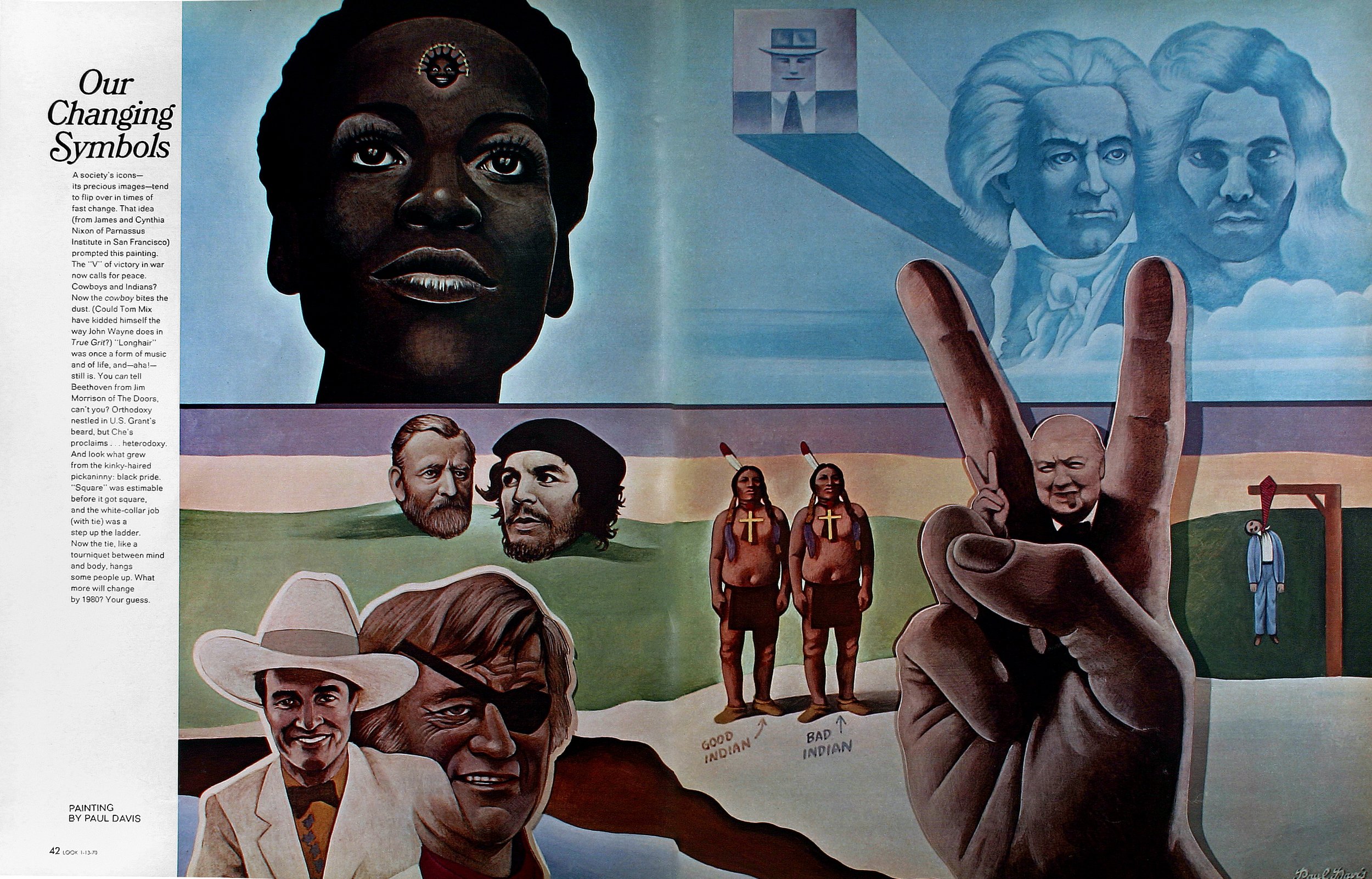
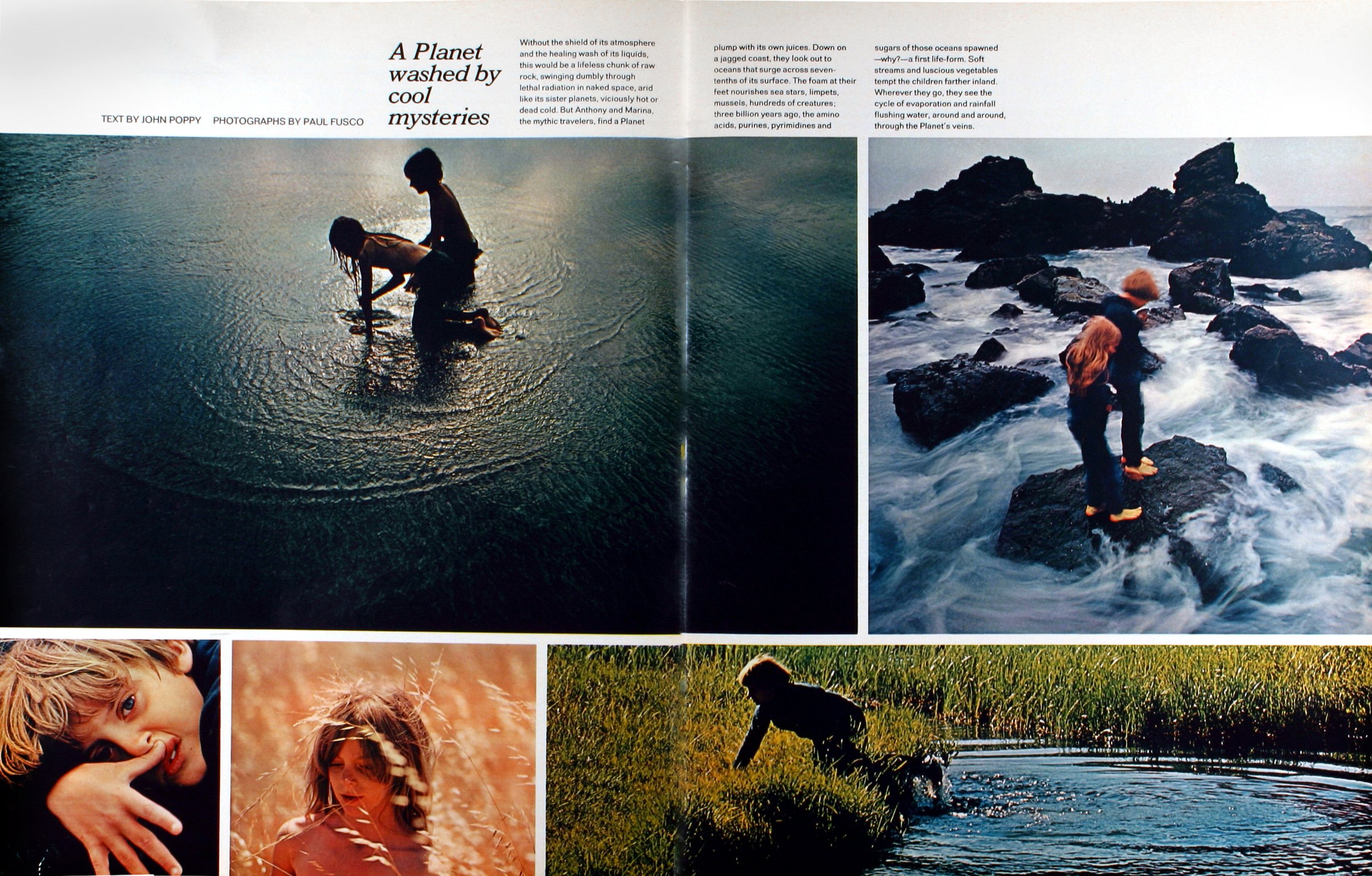
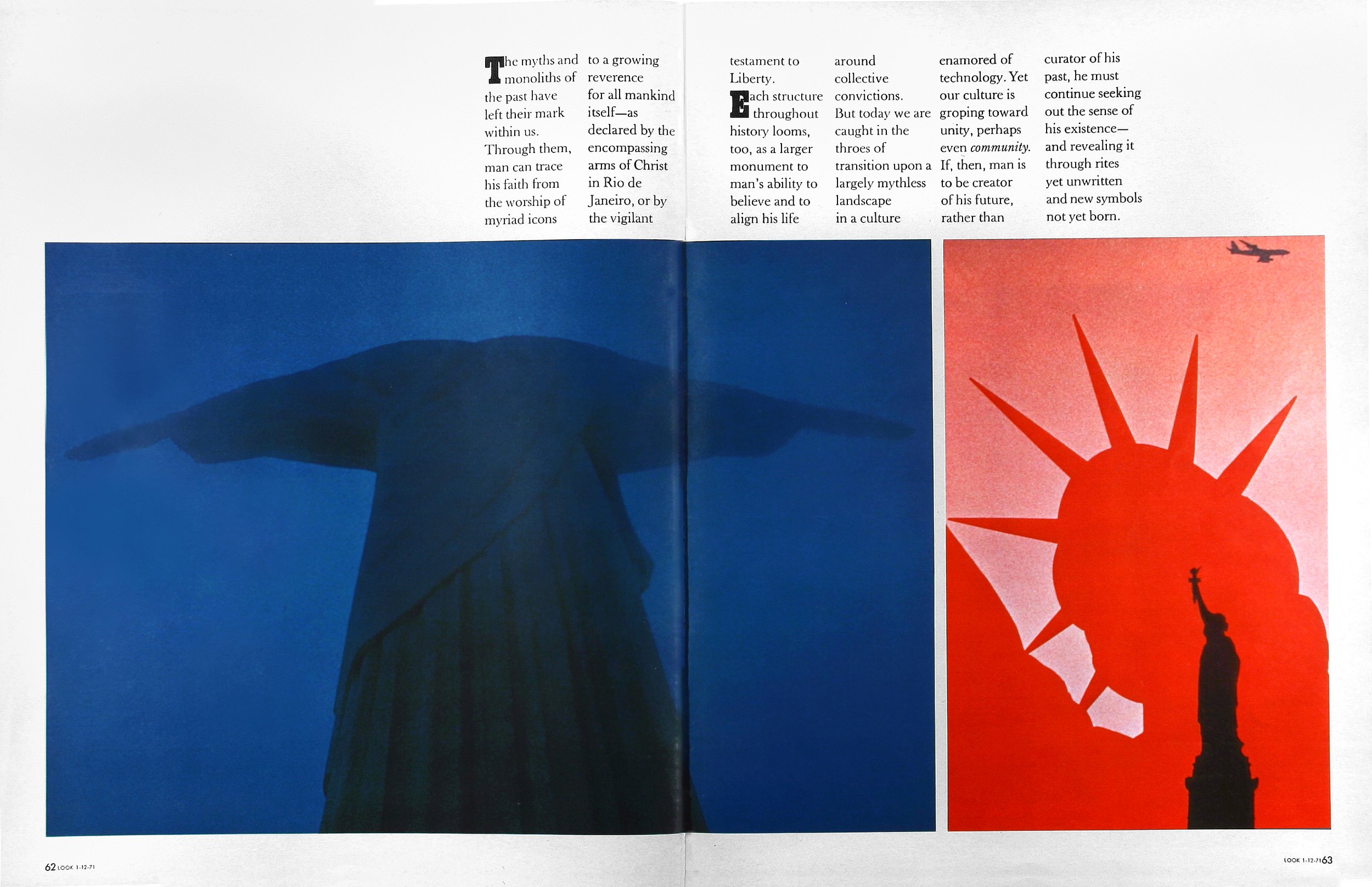
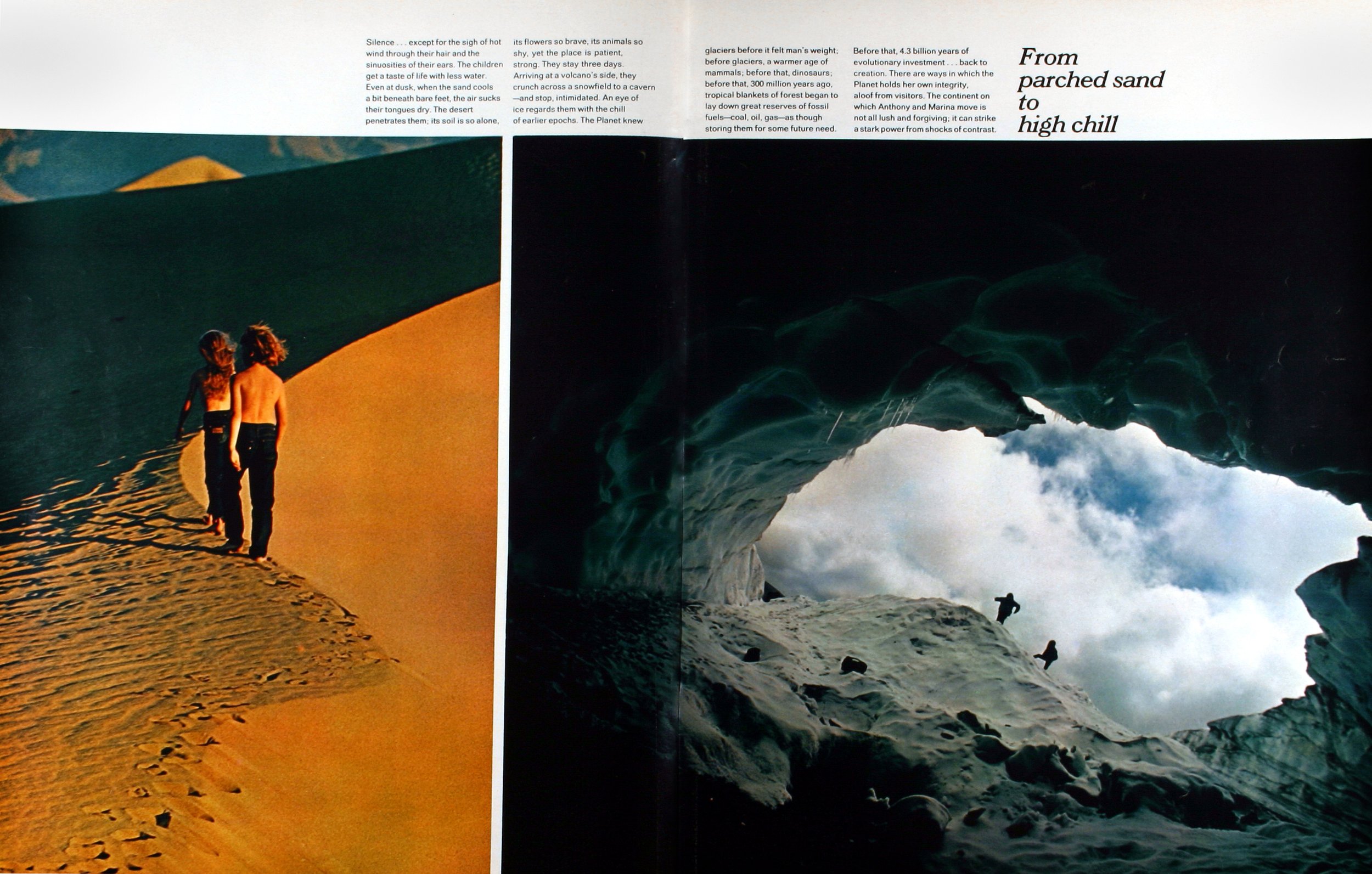
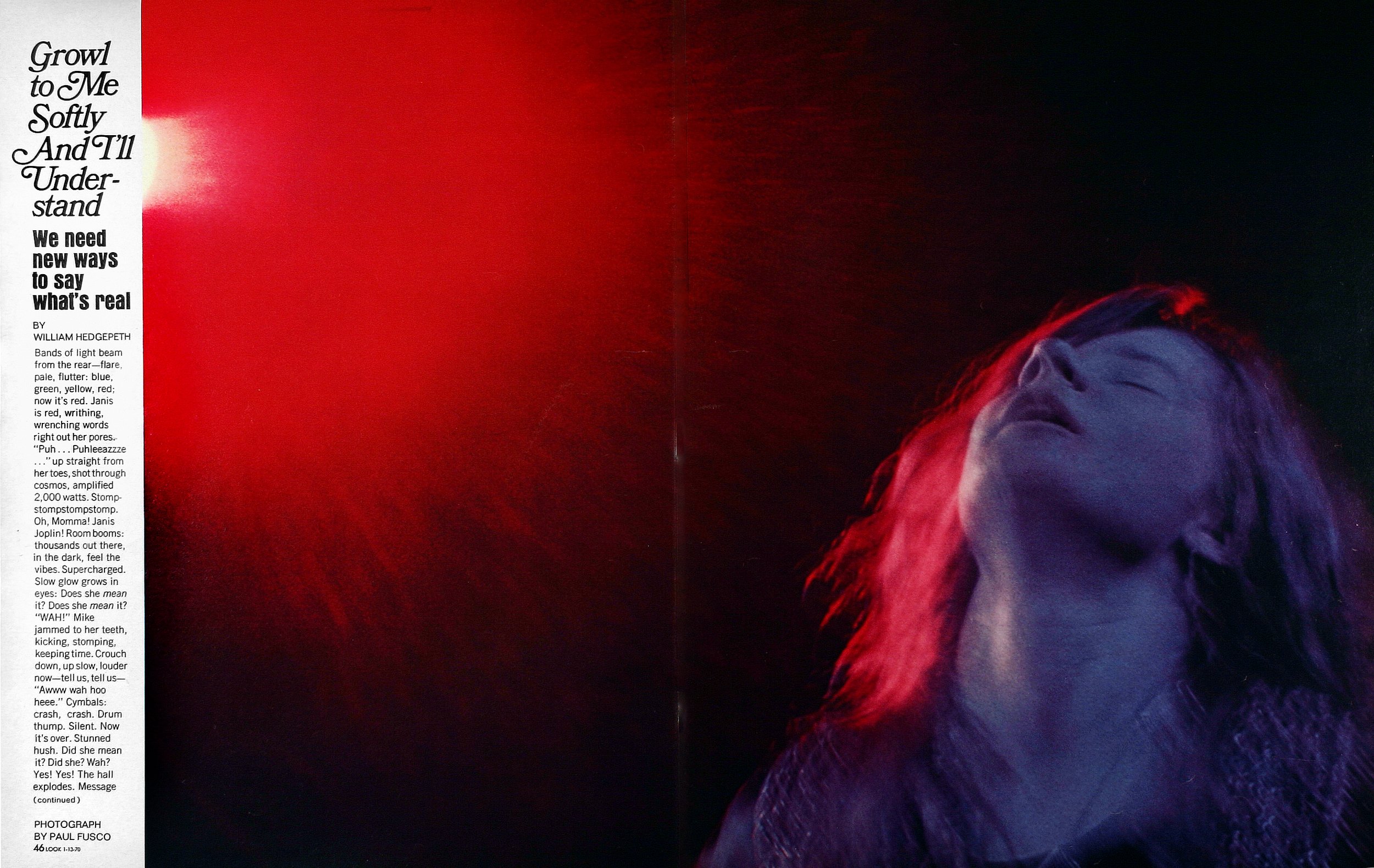
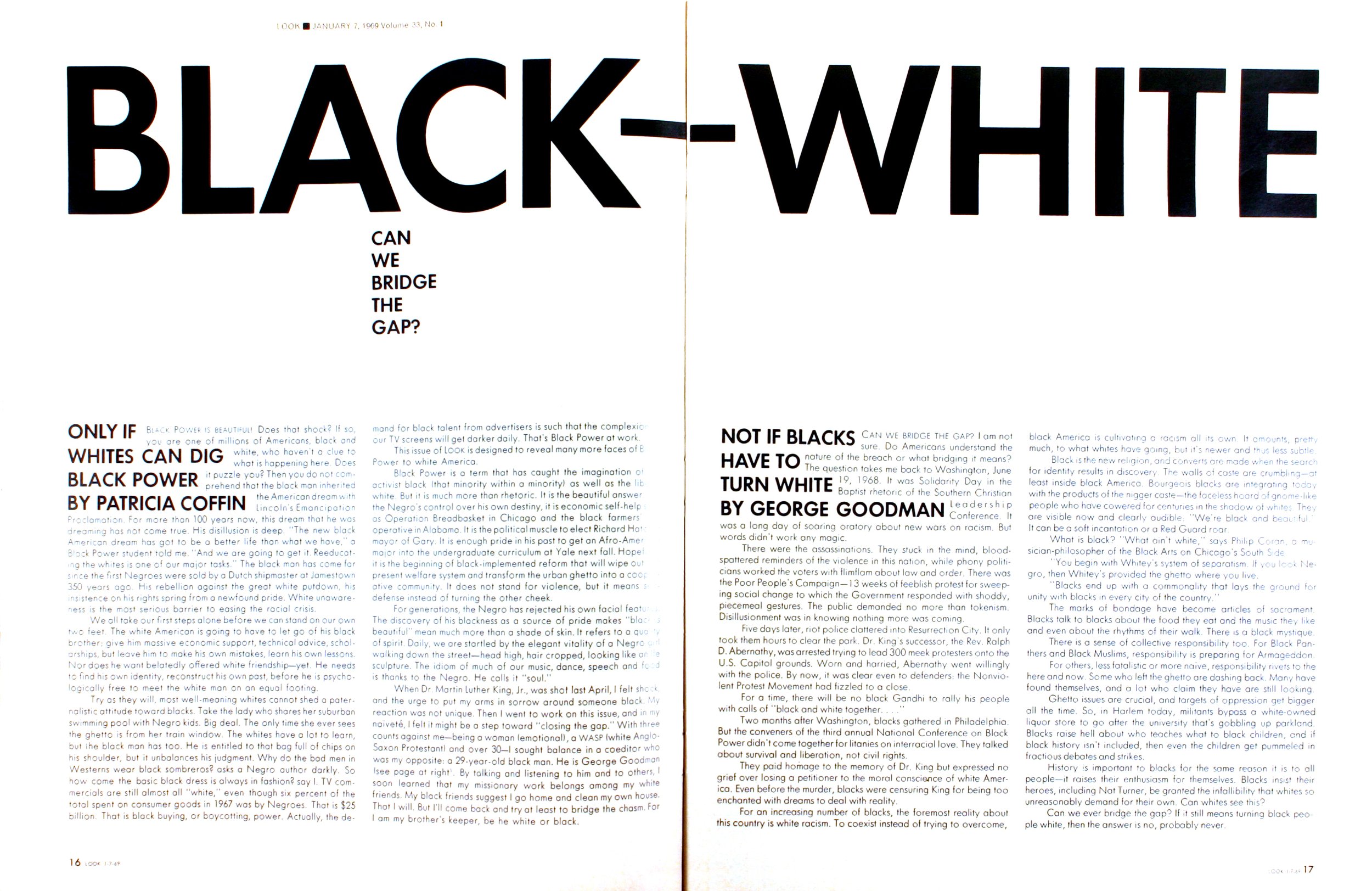
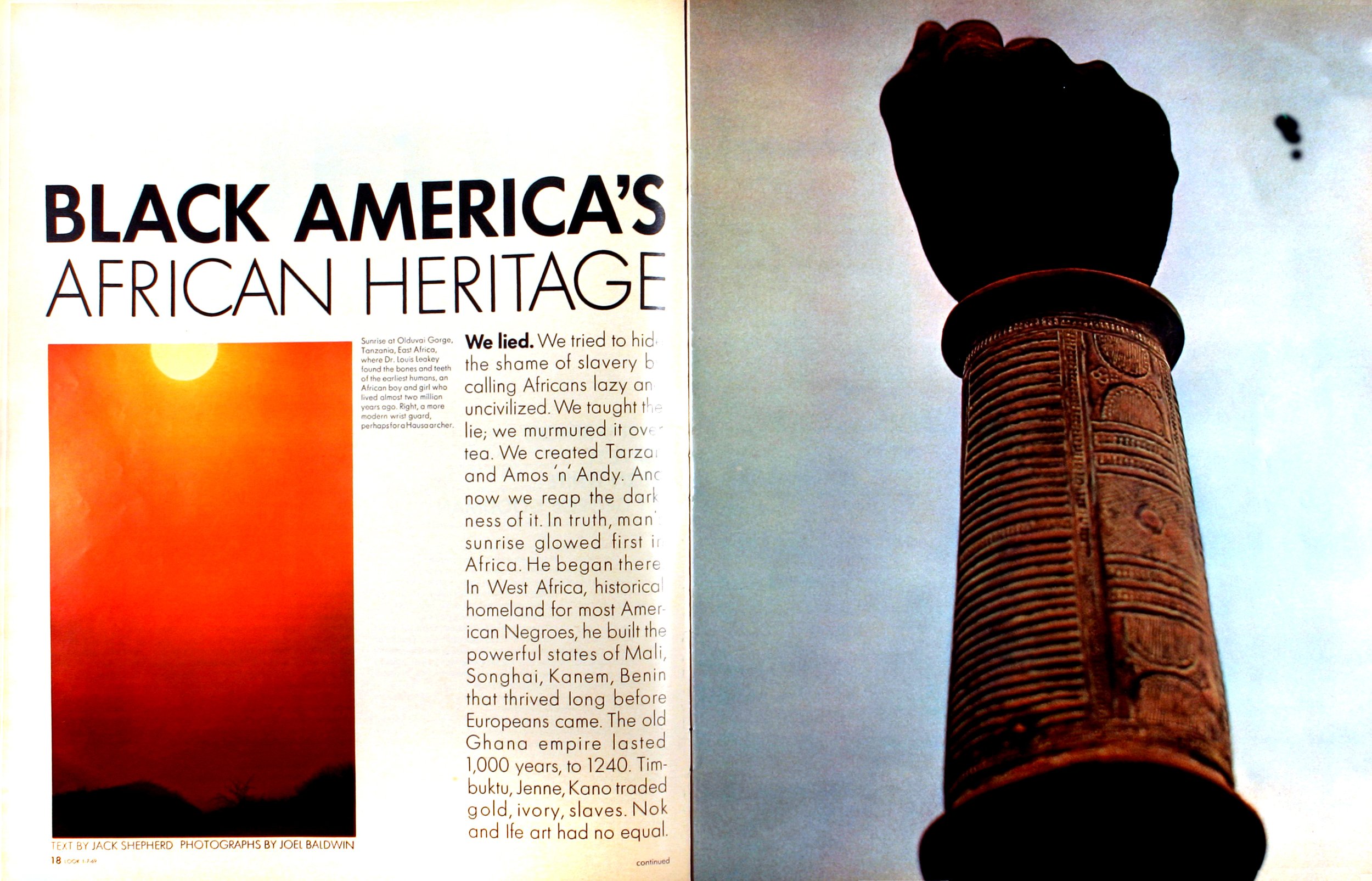
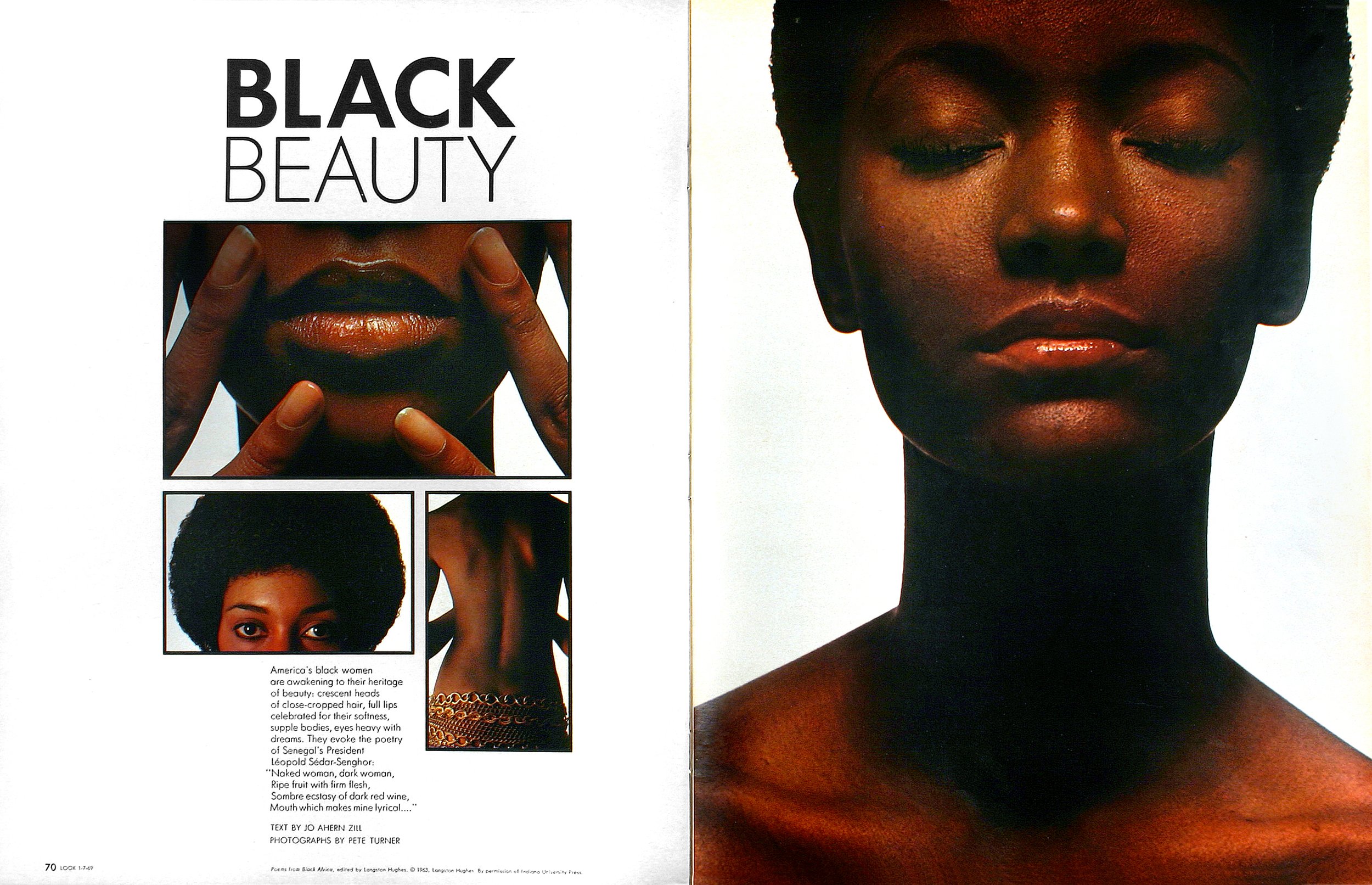
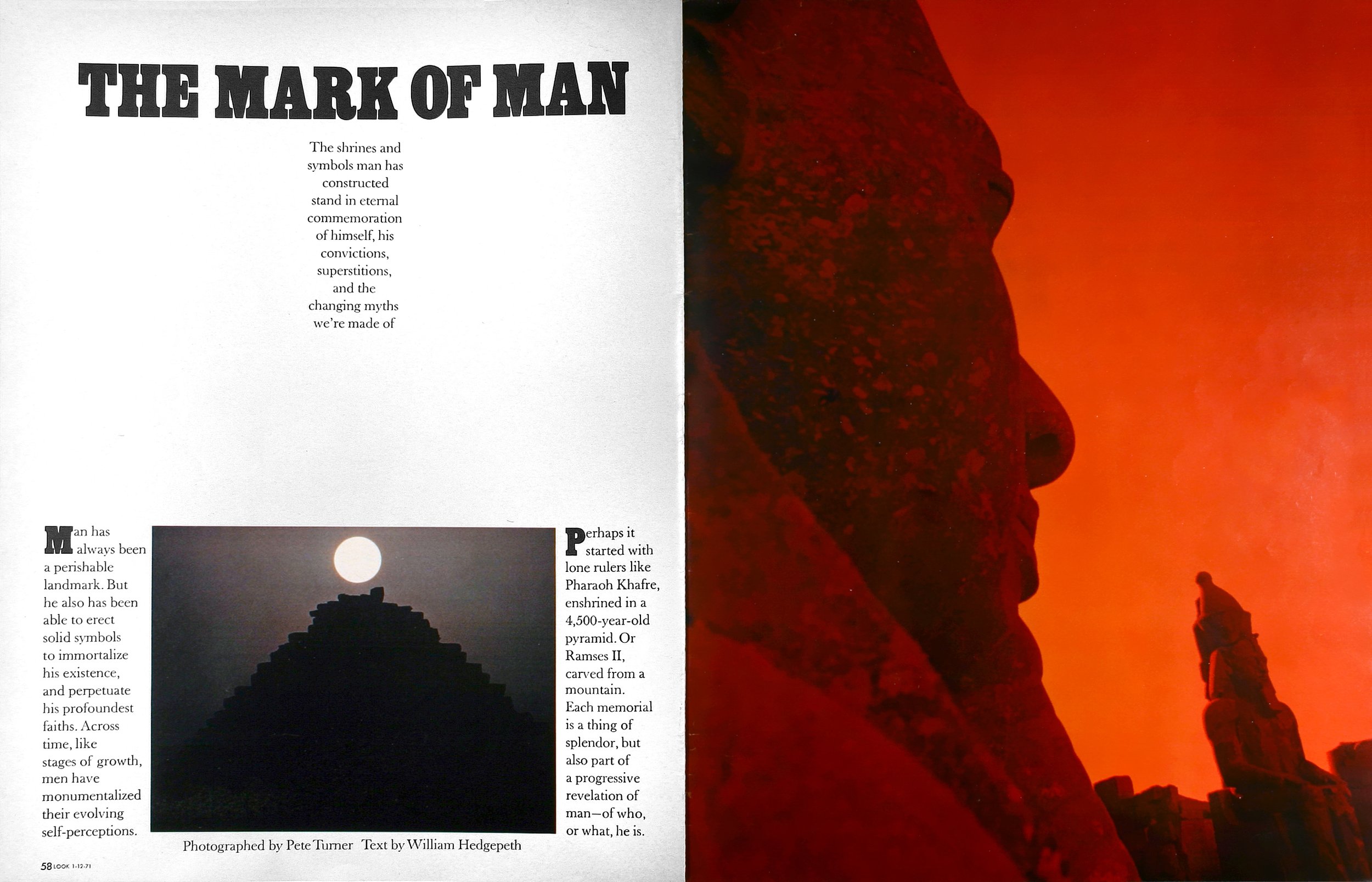

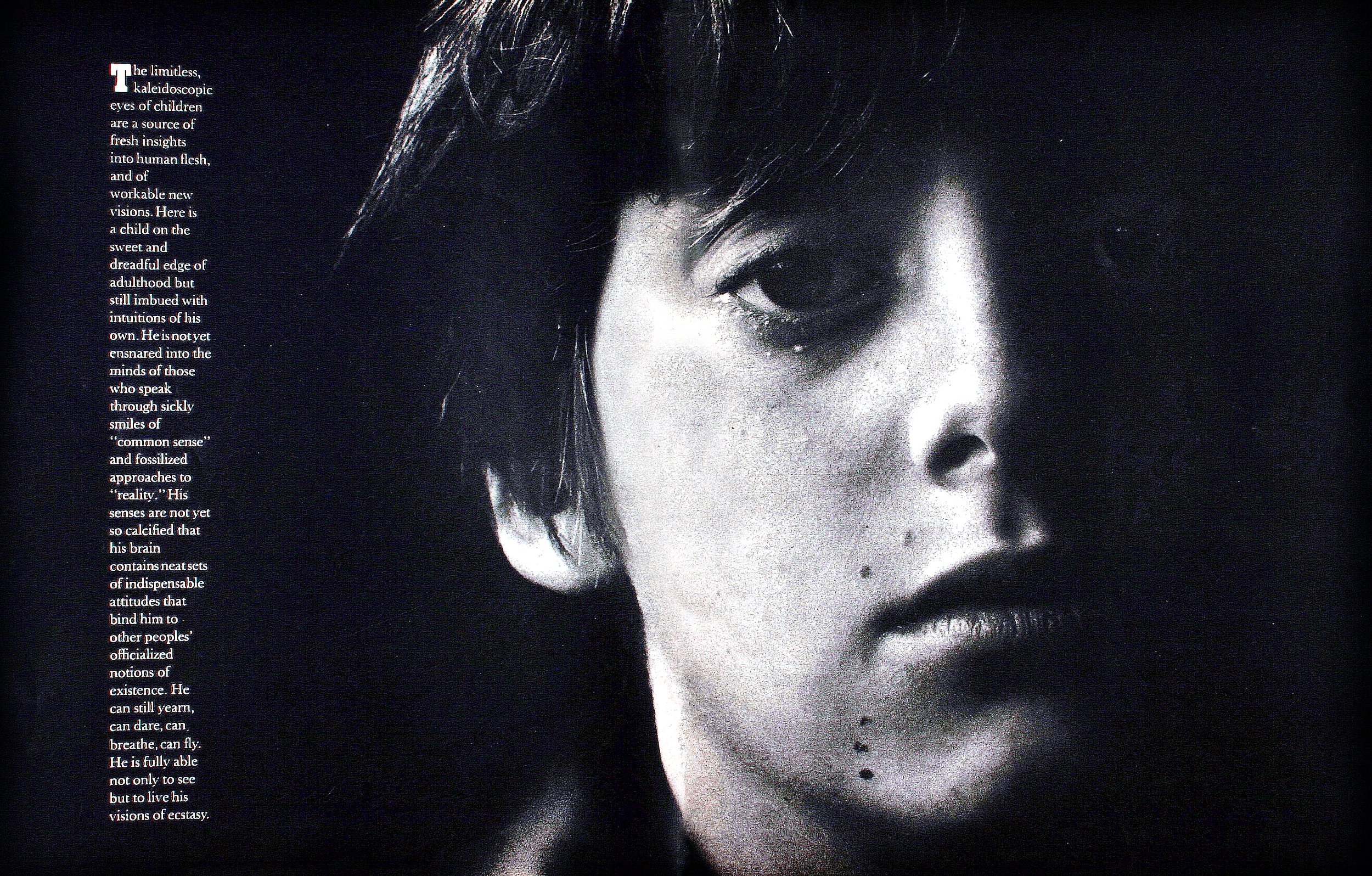

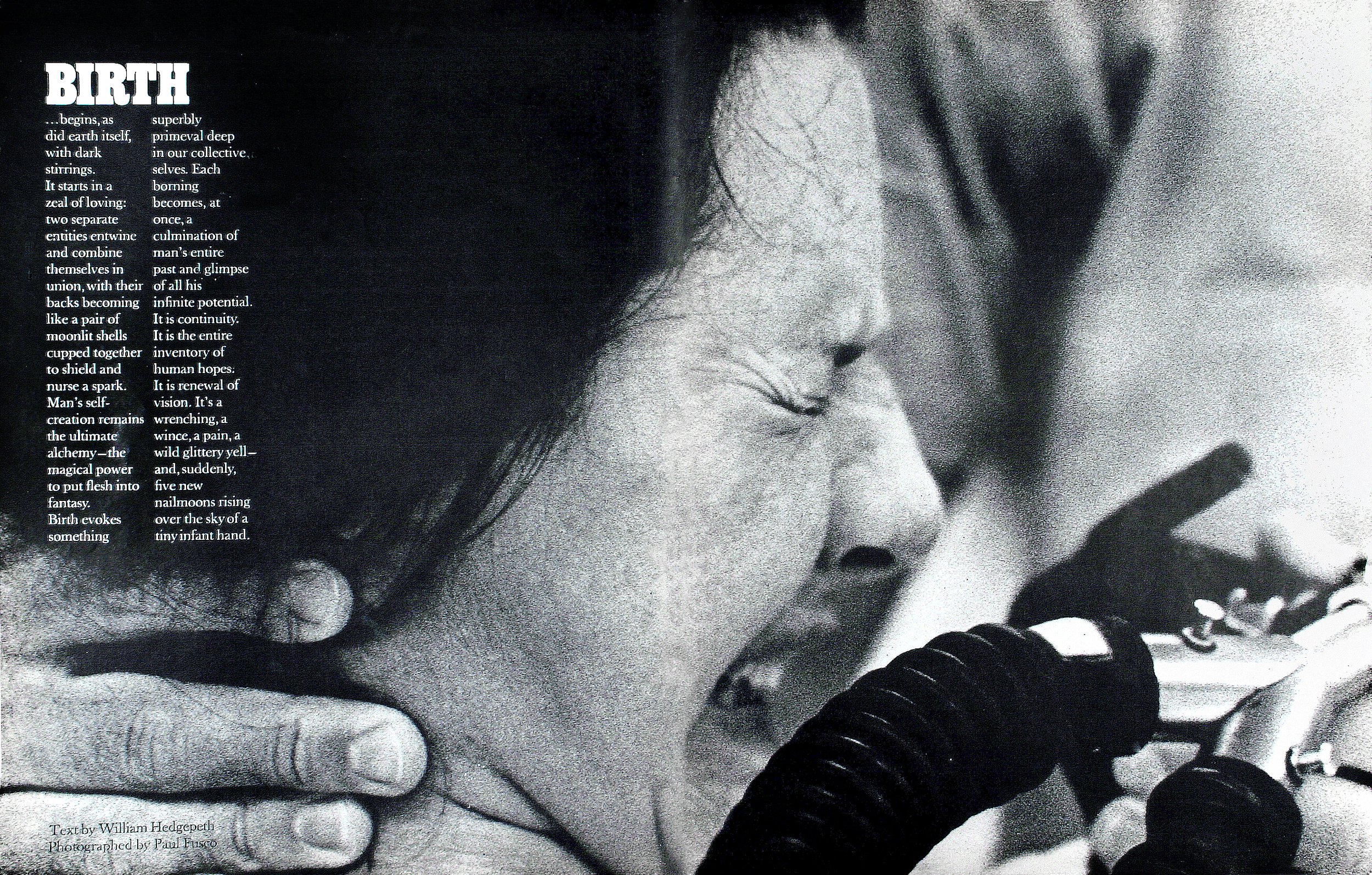
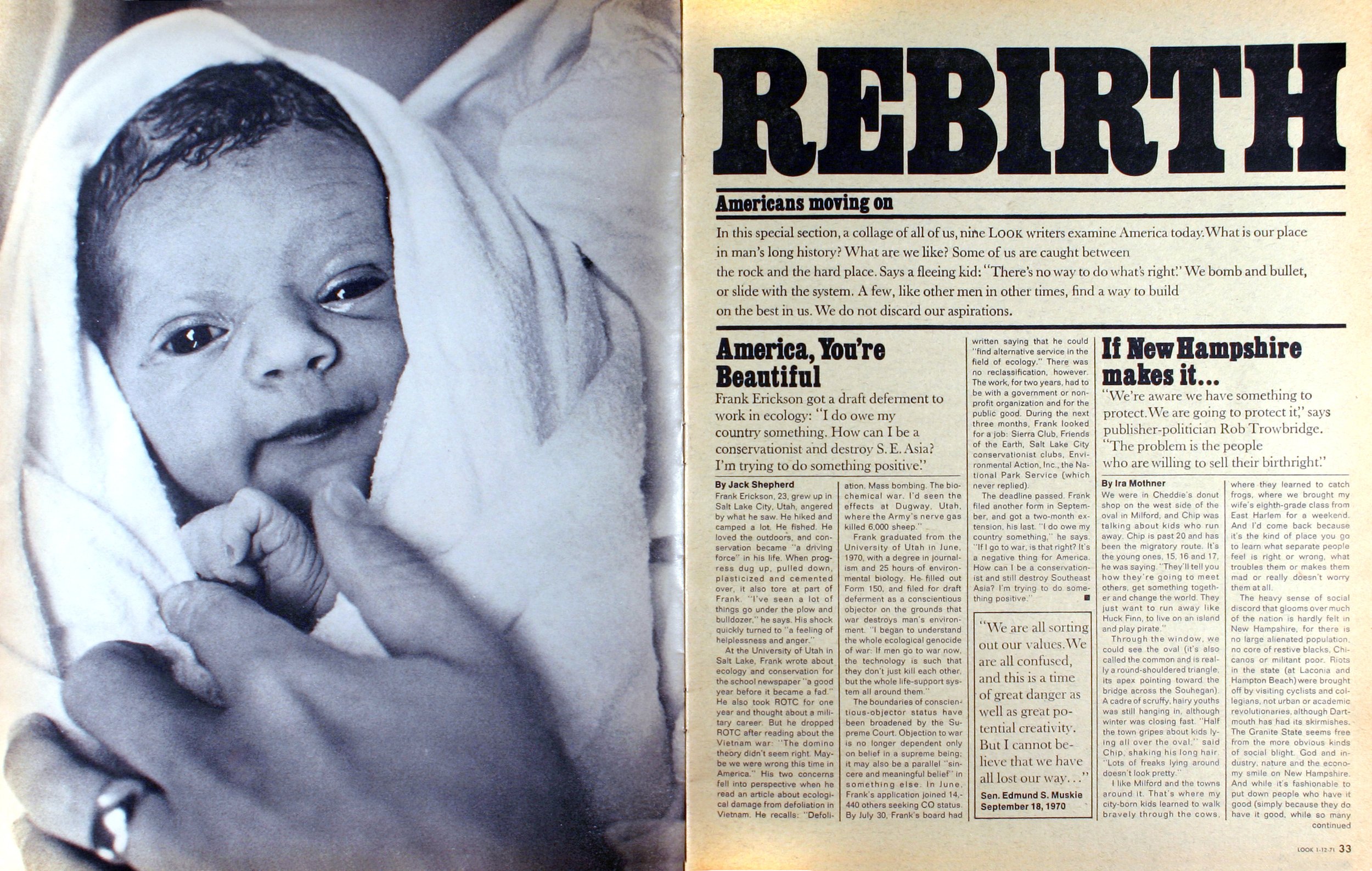
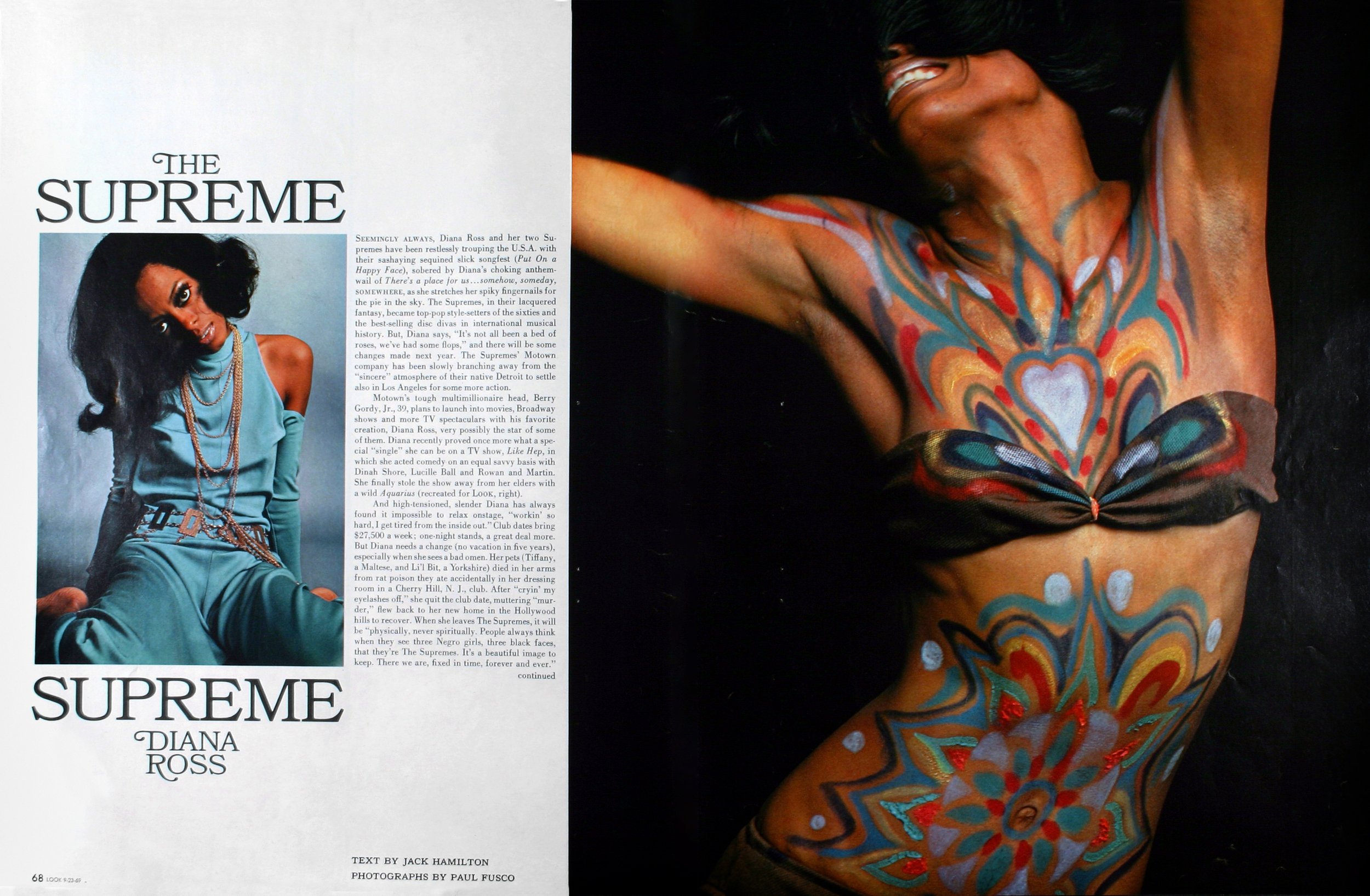

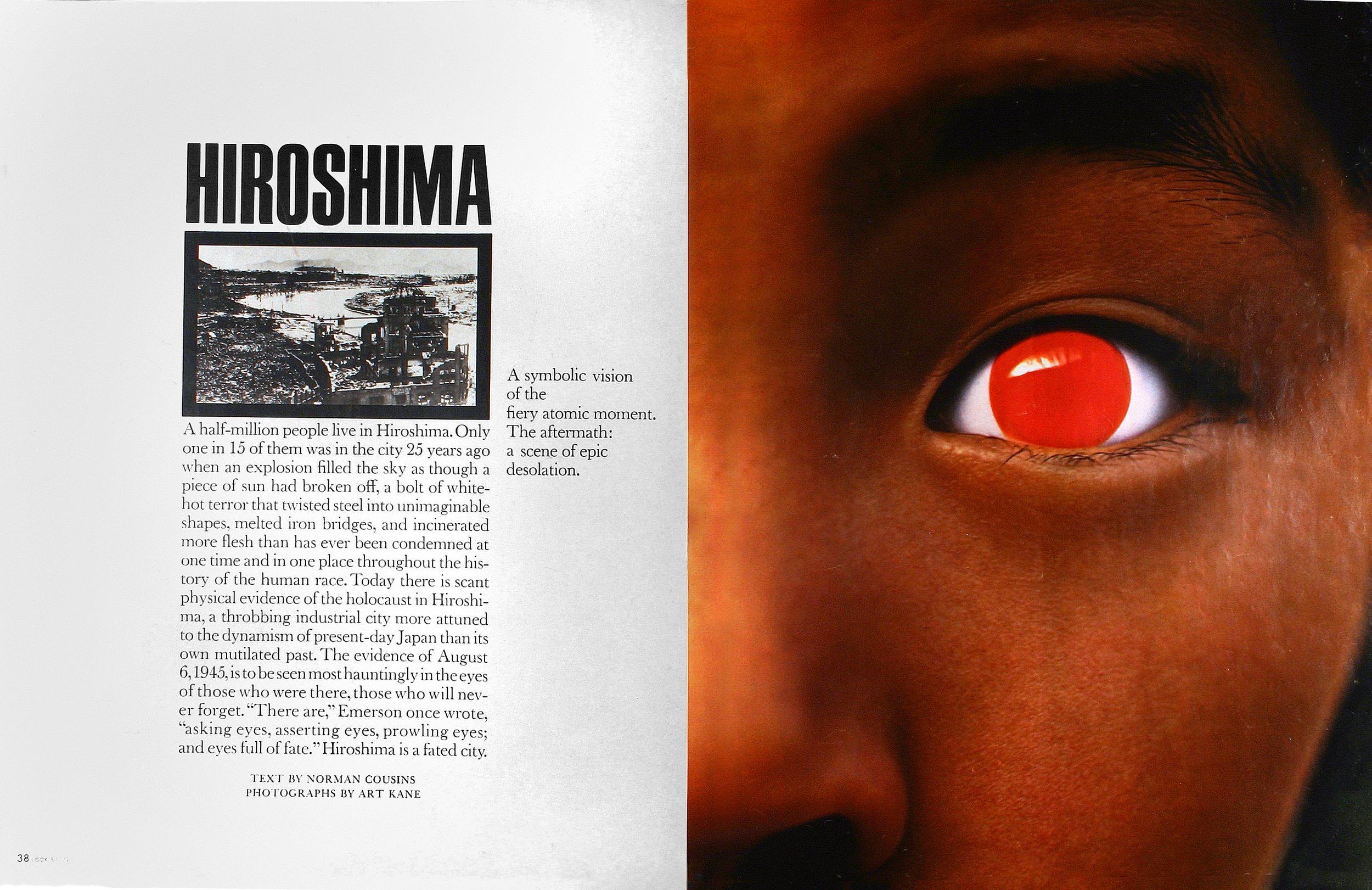
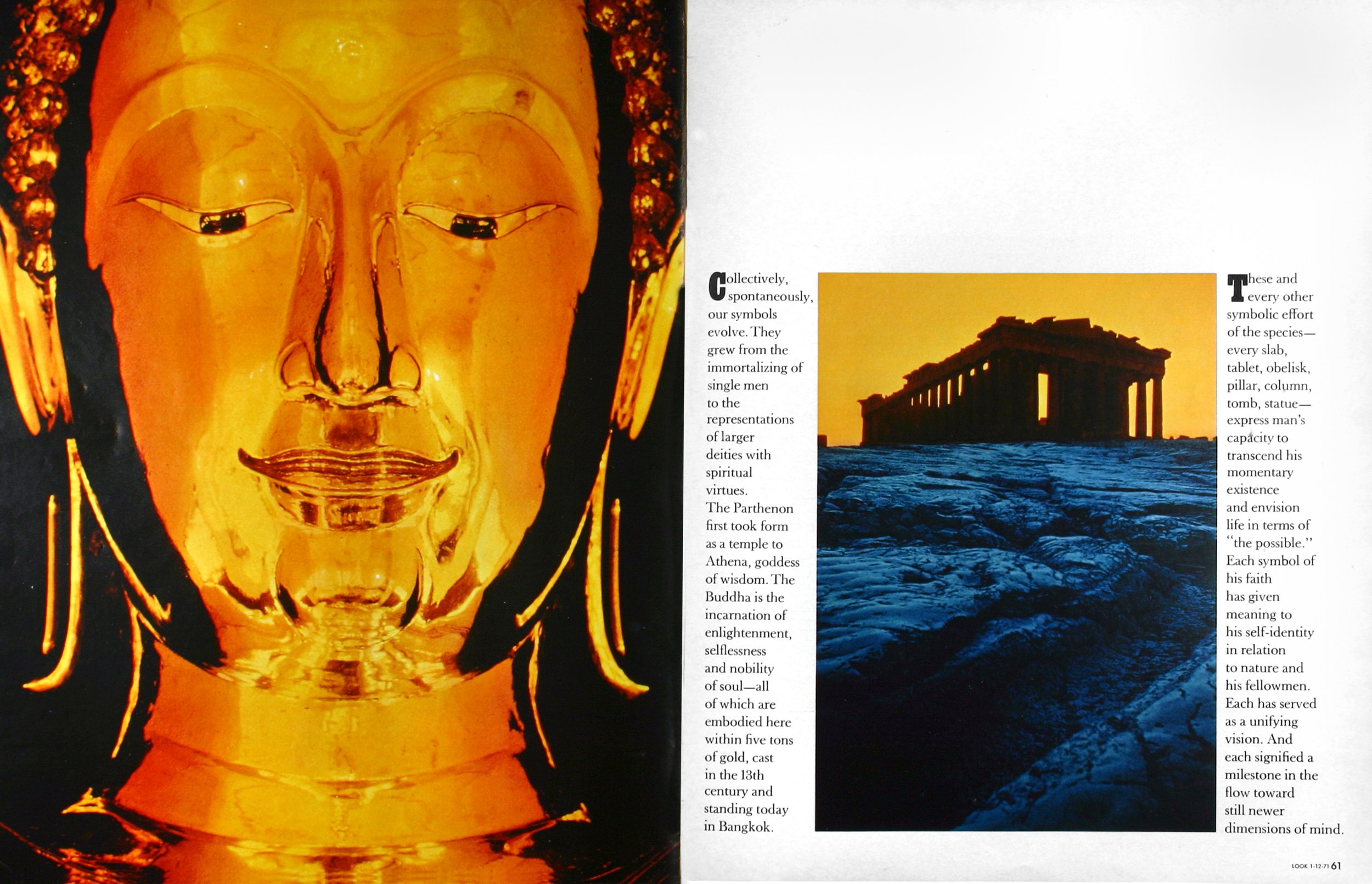
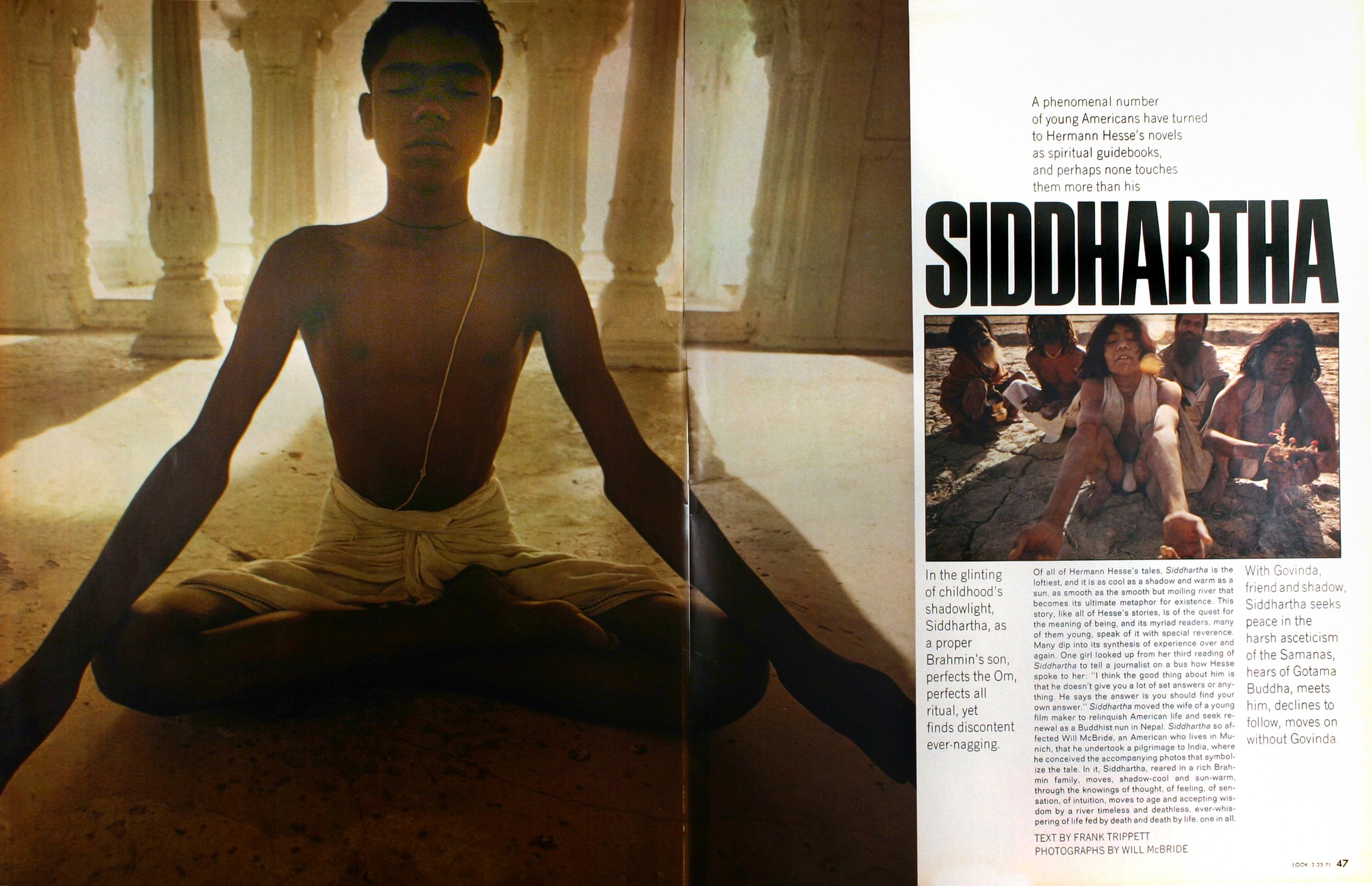
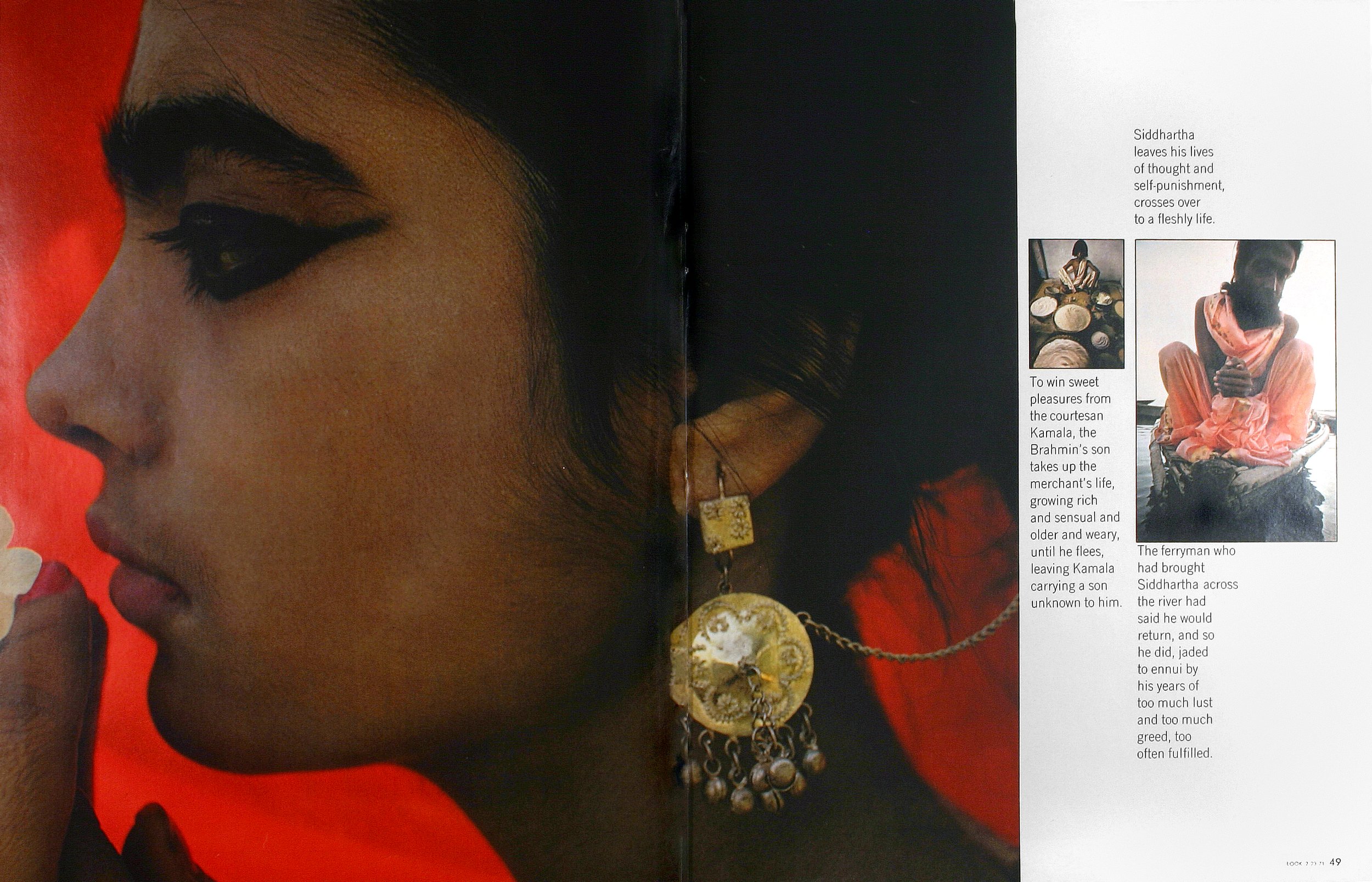
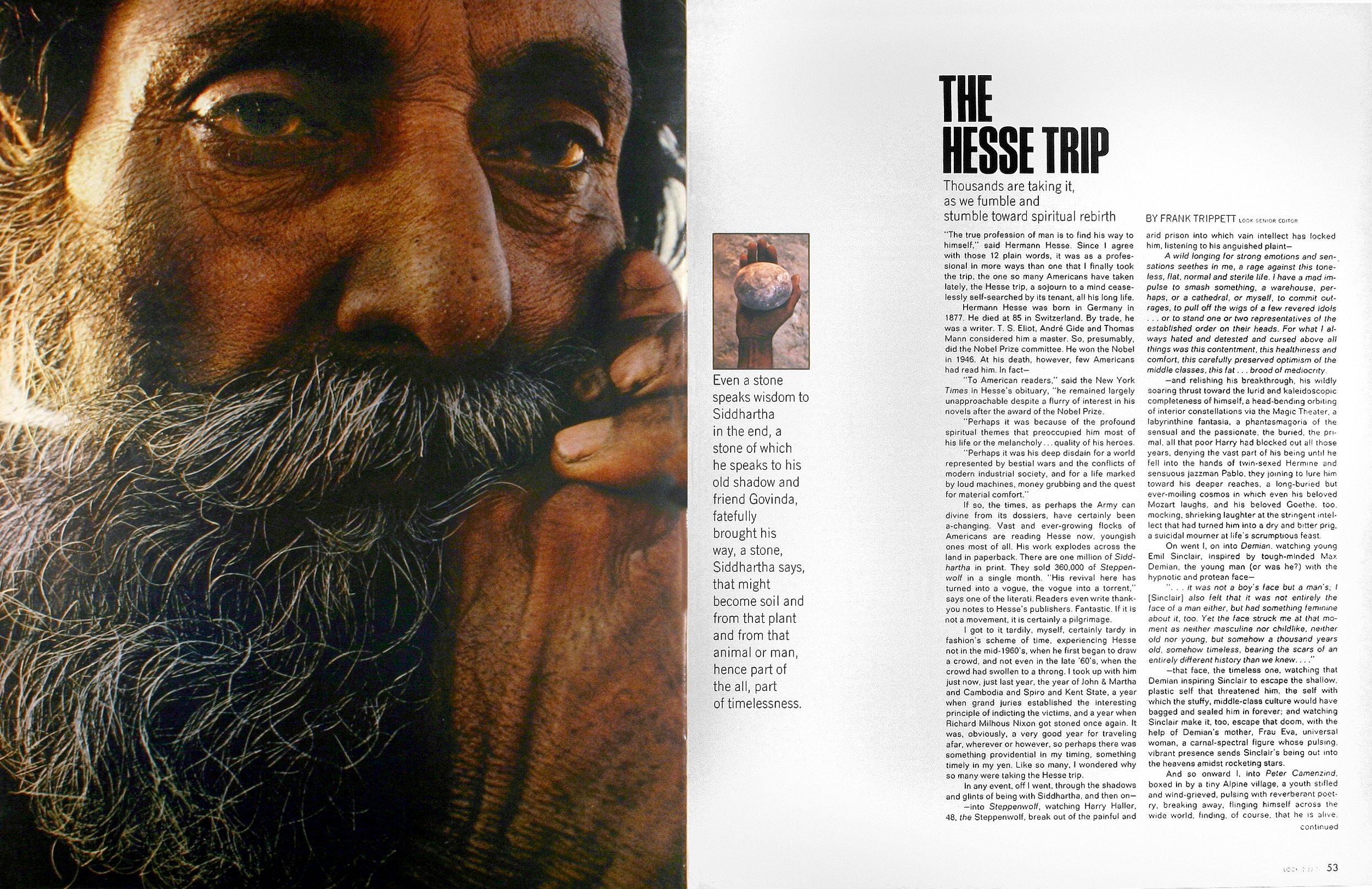
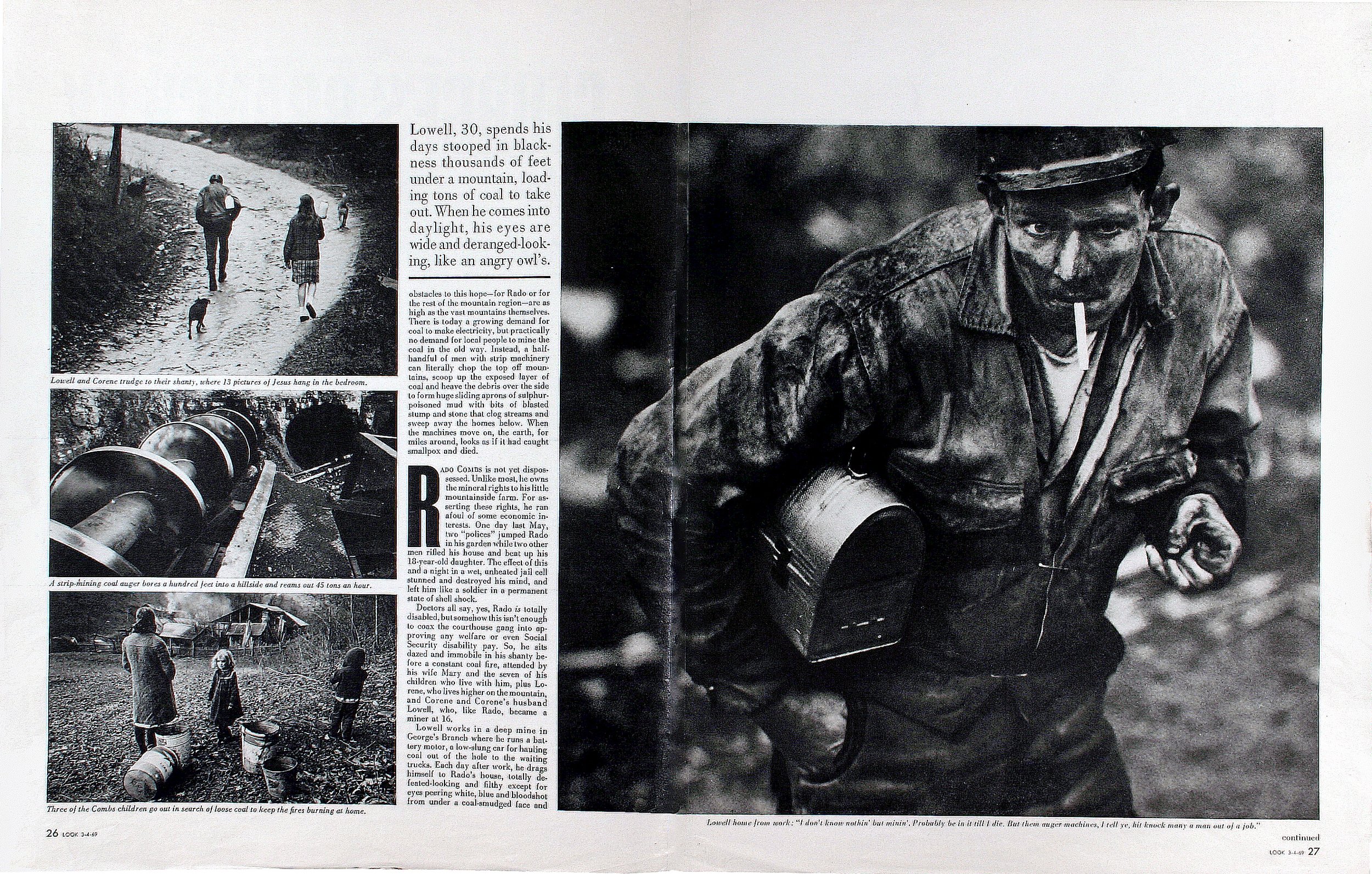
George Gendron: And now, keep in mind, this is, like, two years before the Club of Rome had even published their “The Limits to Growth,” which put climate change and sustainability on the map. So you guys were way ahead of the curve, but, not only that, you decided not to publish the clichéd photos of environmental degradation. You want to talk about the art direction on that particular story? I think Paul Fusco did the photography?
Will Hopkins: Right. Yeah. He did most of the photos. George Leonard was the editor on that issue. And, he would come to New York and he would set up his office in this hotel room about a block from the office.
George Gendron: Okay, I’m liking this guy already.
Will Hopkins: And then we would go there and on things like that issue, we would get down—I mean, uh, I worked hand-in-glove with Fusco—and we were laying out all these pages and we were doing them on these little grid sheets. And then I would put them in my pocket and go back to the office and then start handing them out.
George Gendron: Someday I really gotta see what you have in terms of memorabilia for these so-called “little grid sheets.”
Mary K Baumann: One of the things that I think was key about both Twen and Look, was Willy Fleckhaus was an extremely strong art director and almost acted as the editor. At Look, Alan Hurlburt was equally as strong. And he was the art director who hired Will. And so he had these two great, strong art directors who were extremely editorially involved in the magazine. They weren’t just doing pretty pages. And I think they were very important for his career as mentors.
George Gendron: And you started a trend that continued through the decades during the heyday of magazines, which I came to really resent. And that was that you art directors ruled the goddamn place. You were, you were art directors editors in chief!
Will Hopkins: Well, I don’t think it was quite that.
American Photographer, New York, 1978-1985
George Gendron: No, I know, I know. But, having come from the other side of the newsroom, I just have to point that out.
Mary K Baumann: I think that you as an editor are very visually aware, George. But you know, it is interesting. I mean, I’ve worked for really good editors and some really lousy editors. And the lousy editors cannot really see how to pace a story visually or put it together conceptually. Whereas I think art directors, well, many art directors have that ability to, almost like a movie director, direct how a publication unfolds.
George Gendron: You know, the reason I guess I focus on this is that my first job was at New York magazine. And when we moved from 32nd Street to 41st Street, the art department, the design department was adjacent to the newsroom. So my four-square desks were a couple of feet from people like Walter Bernard. And Milton [Glaser] was constantly there from Push Pin and I took it for granted that magazines were run by these teams—these editorial and design partners. Boy, was I wrong about that! I thought that was the norm.
So I’m curious about the social side of your magazine life during your period at Look. Who were your friends? Who were your buddies? Who would you go out and have a beer with?
Will Hopkins: Well, my friends were mostly the West Coast guys. George Leonard, and John Poppy, and Paul Fusco moved out there, and, you know, Doug Kirkland was out there.
George Gendron: Did you guys have a big office out there? Or, what are you talking about? A bureau? What was it?
Will Hopkins: It’s more like a bureau. But they really hung out in Mill Valley. So every time I went out there I went to Mill Valley. I didn’t spend a lot of time in the city.
George Gendron: Yeah. I suspect you went out there often.
Will Hopkins: Yeah. As often as I could. I really liked them. I had a great time with them. And I learned a lot from them.
George Gendron: Were you still at Look when it folded?
Will Hopkins: Yeah. Mm-hmm.
George Gendron: What was the last day at Look for you? What was that like, Will?
Will Hopkins: Well, for quite a few weeks I would come to town from Connecticut and I had to go do something and I didn’t have any place to go. And I would go to Look. And I would go up and the offices were empty and my office was empty, basically, but I could go in my office and I could call on the phone, things like that.
American Photographer, Interior Pages
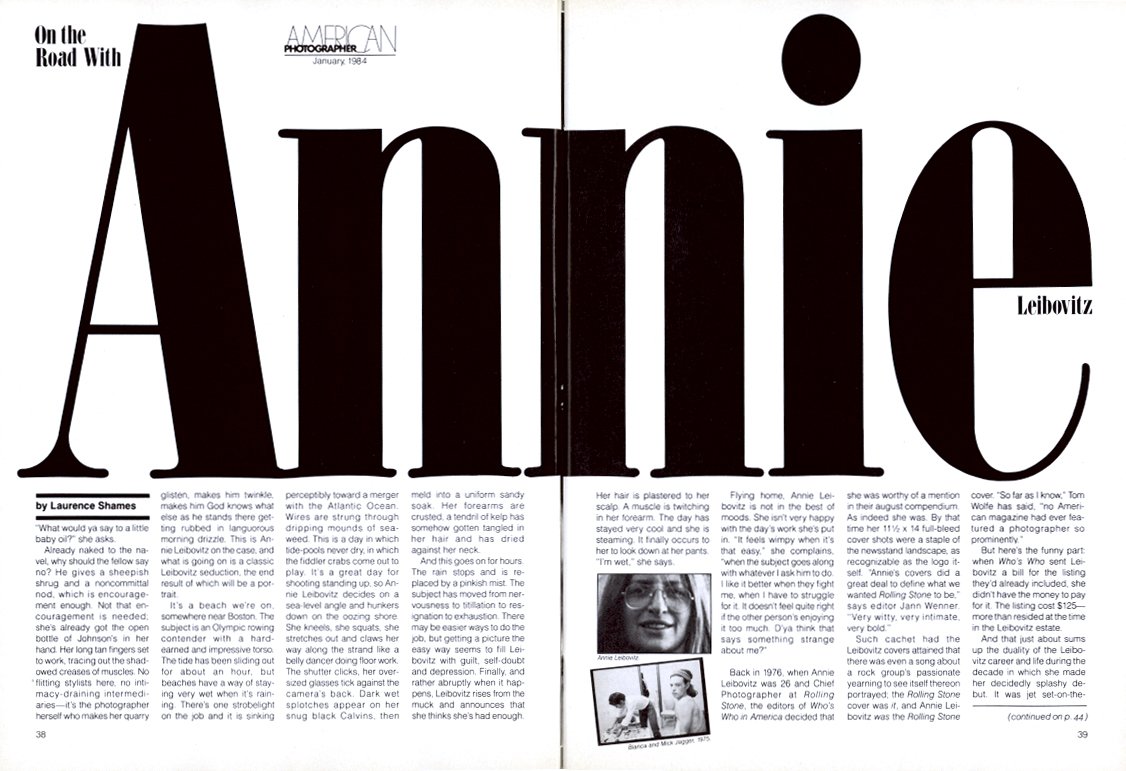
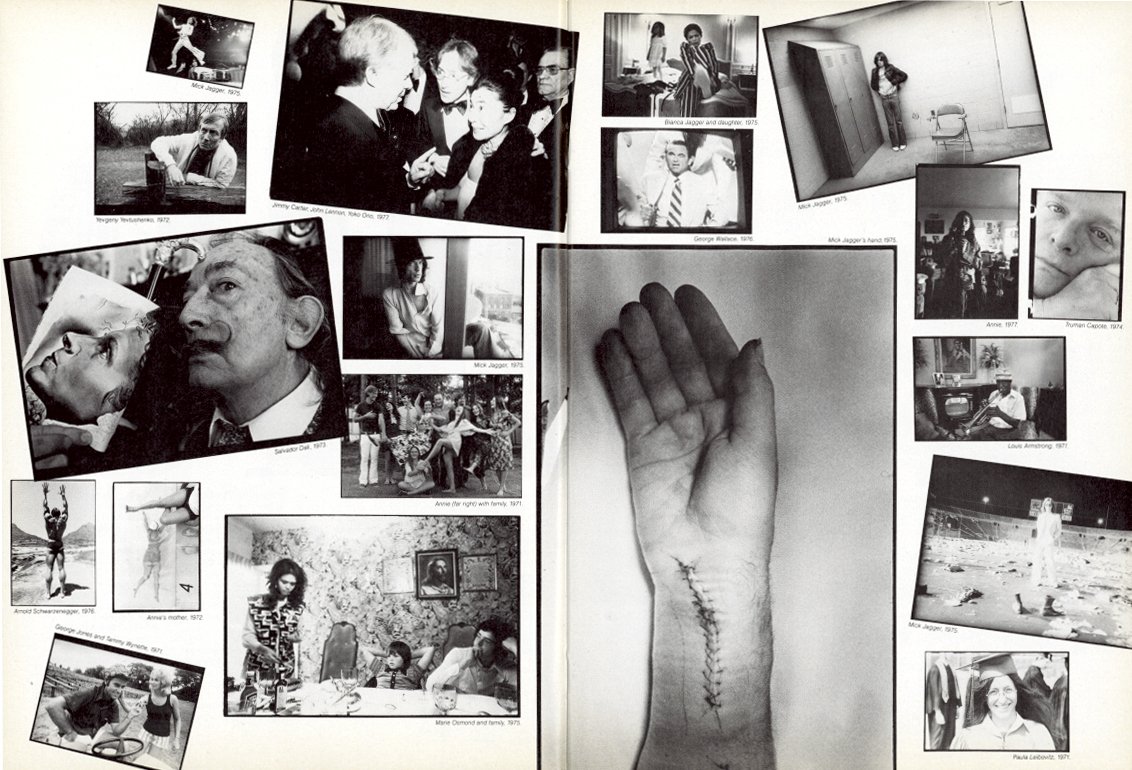


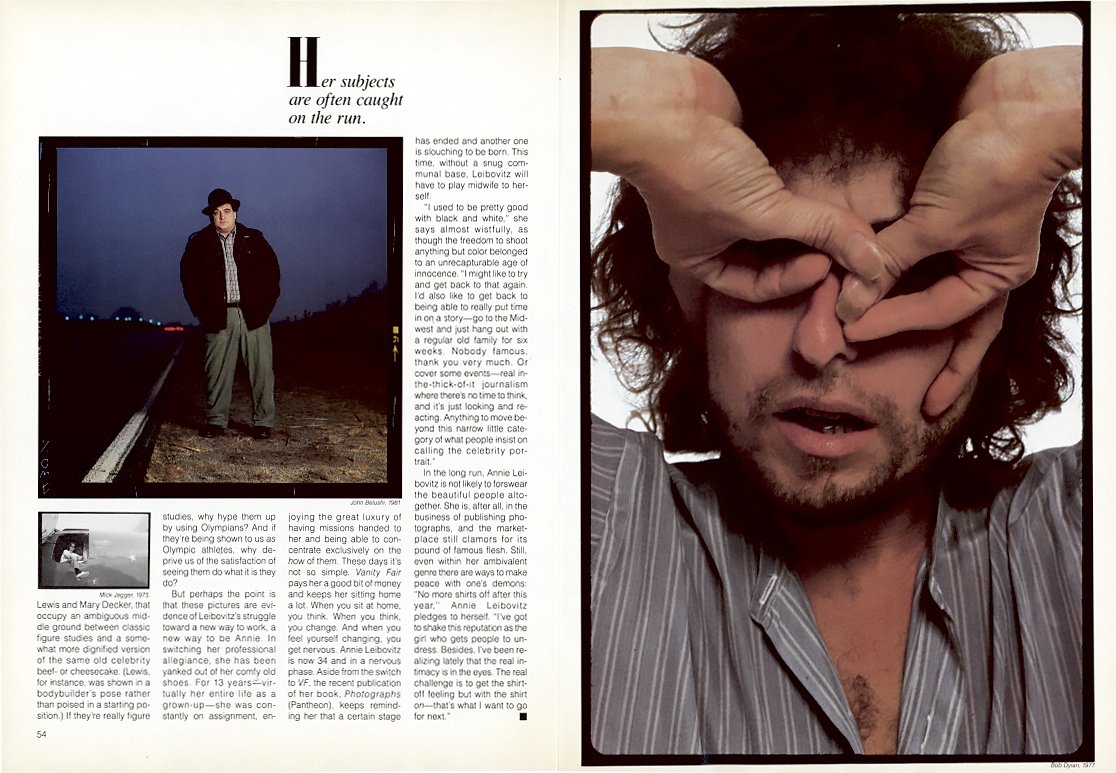
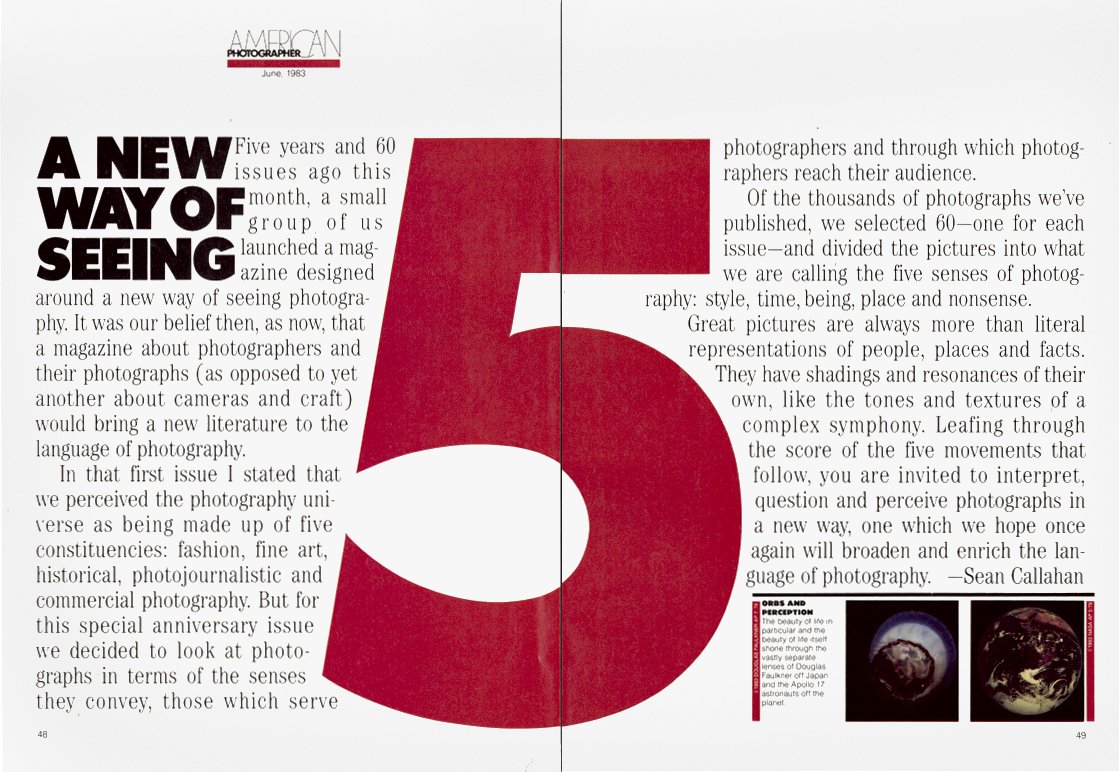


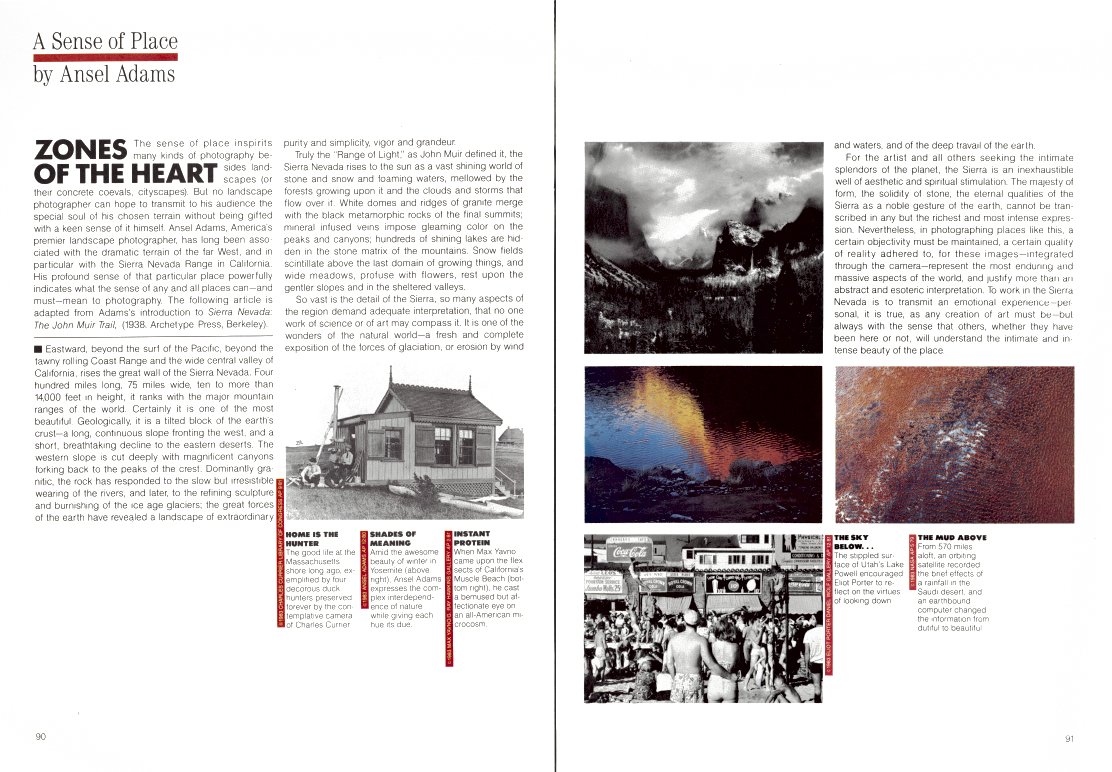
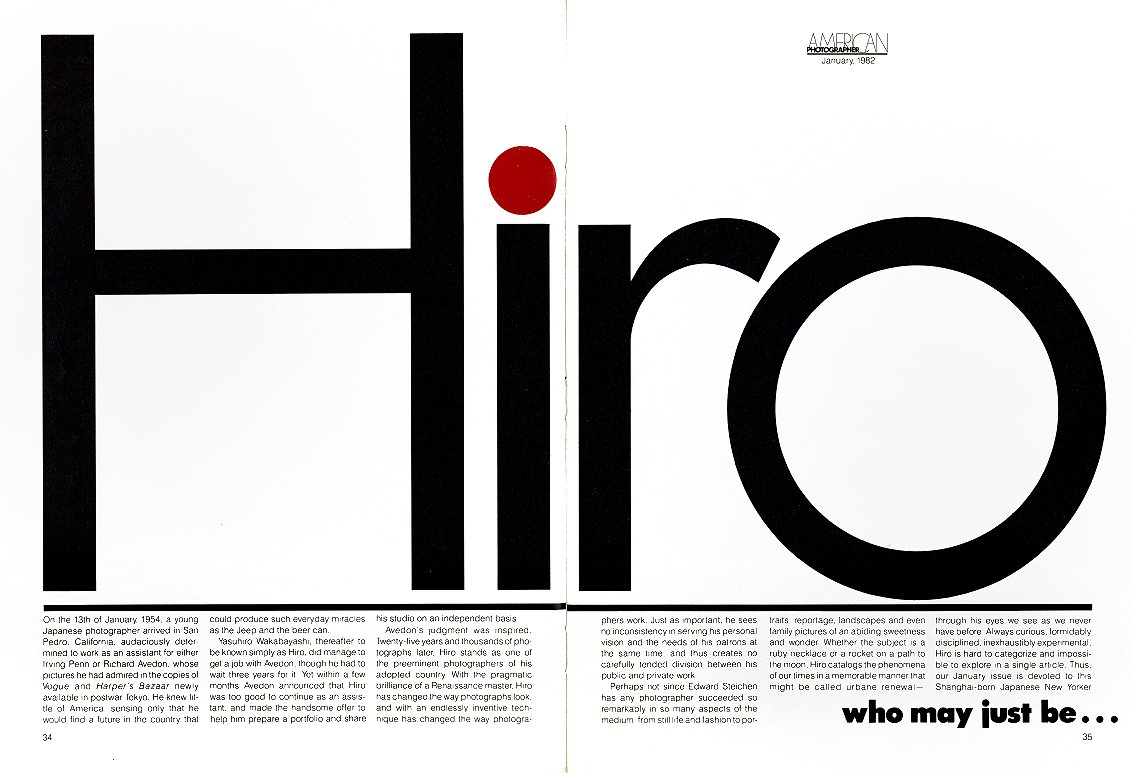
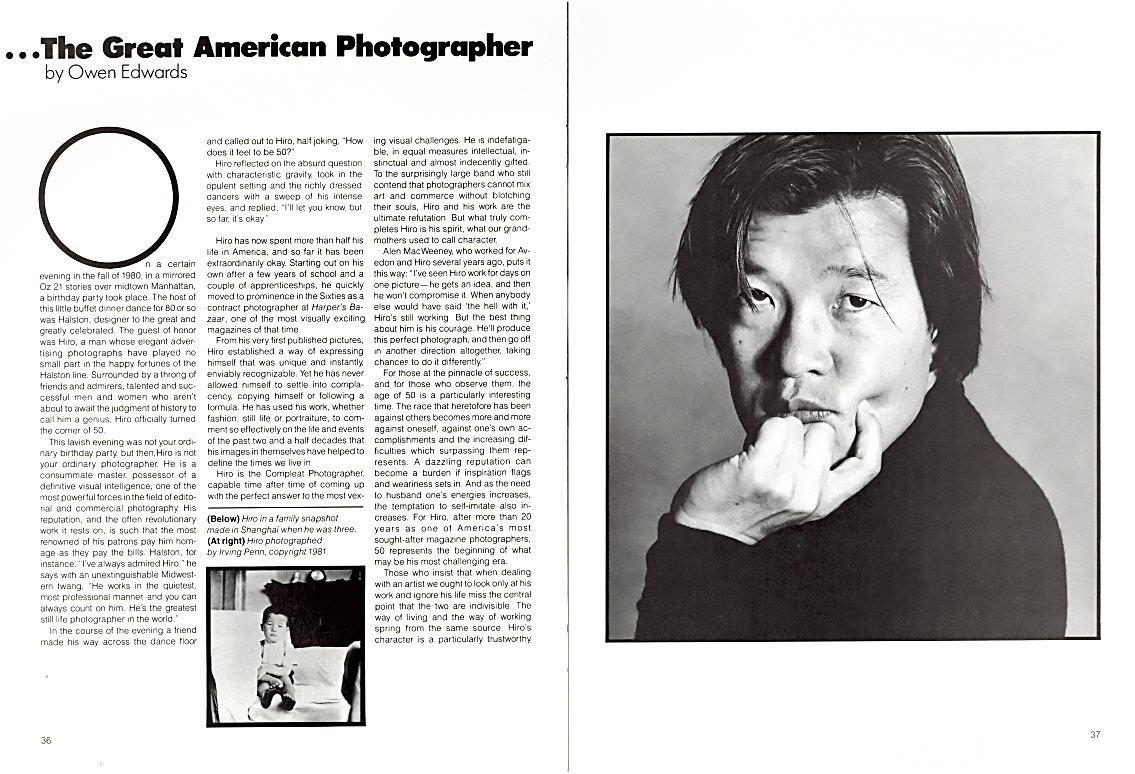

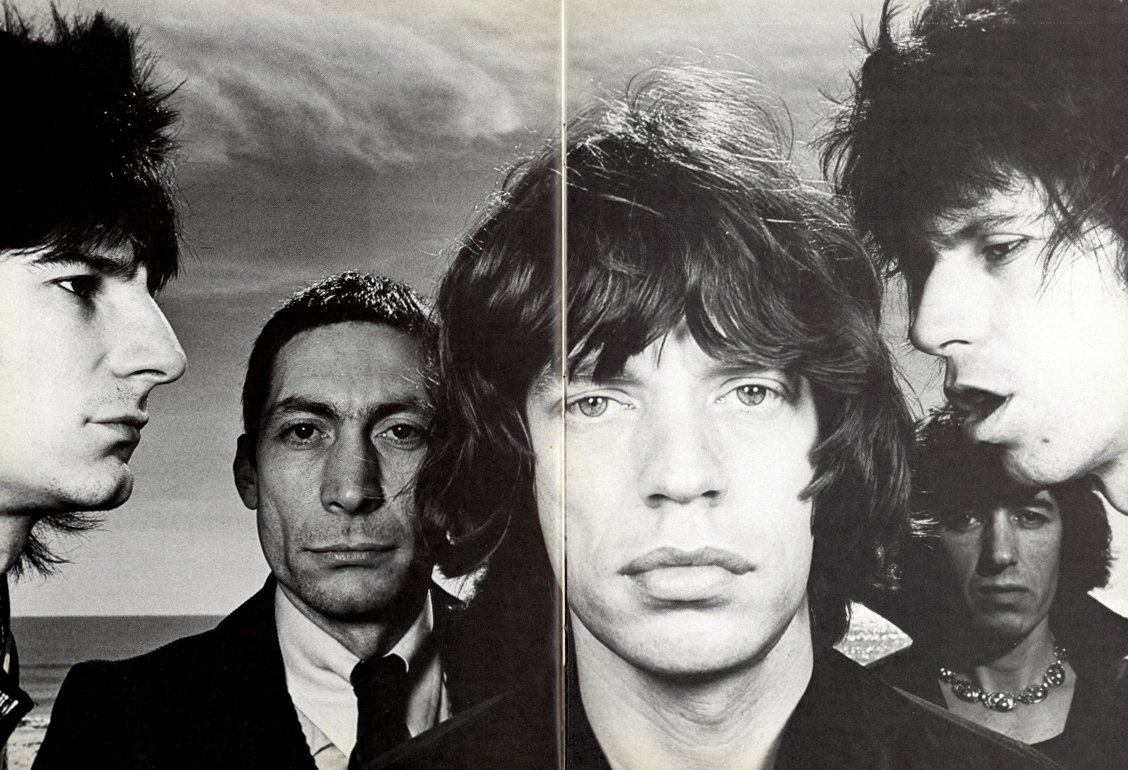
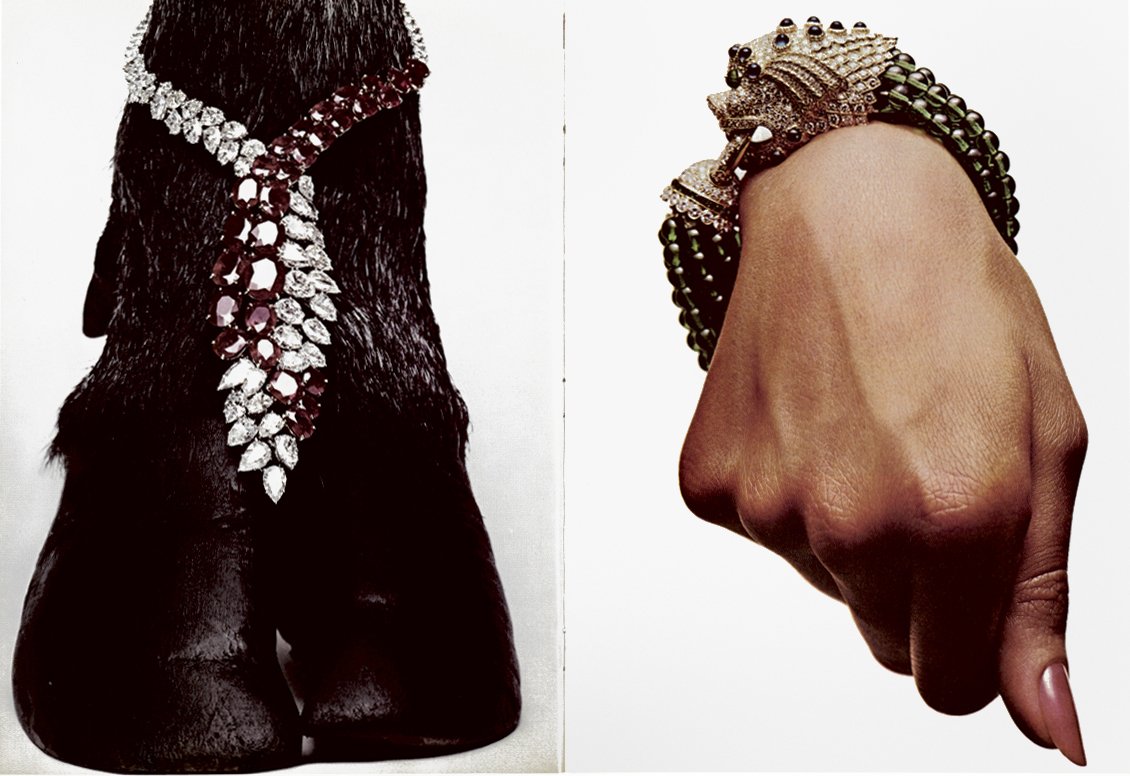
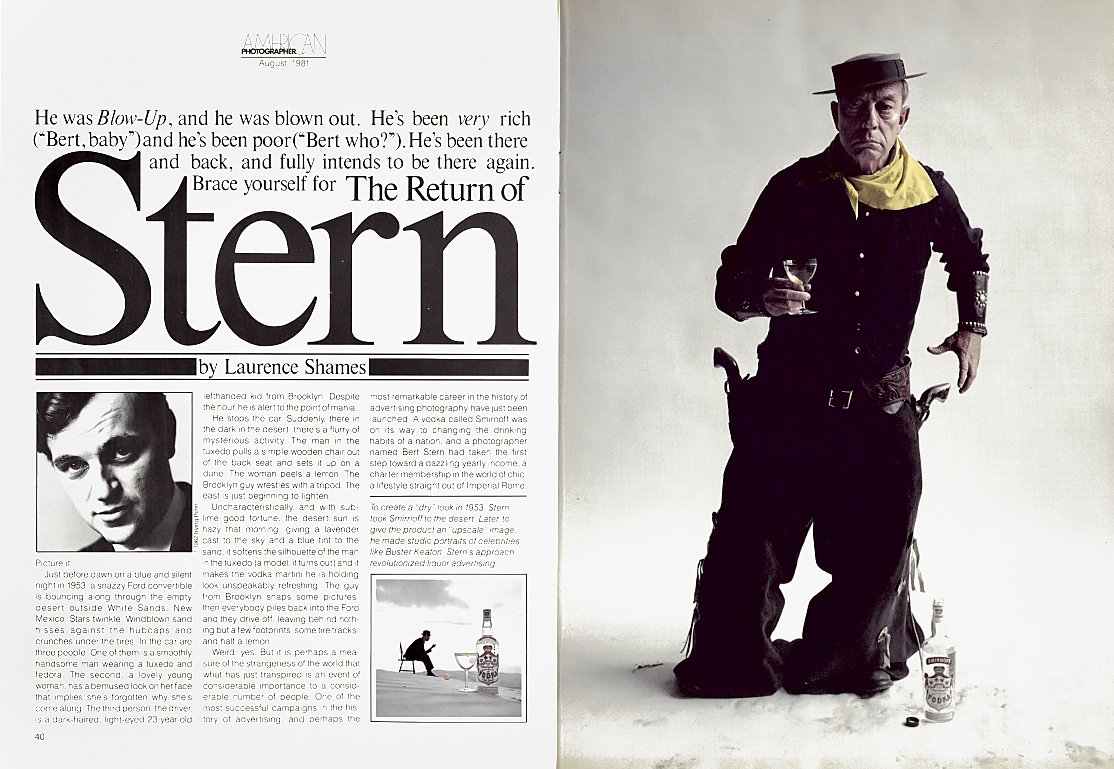
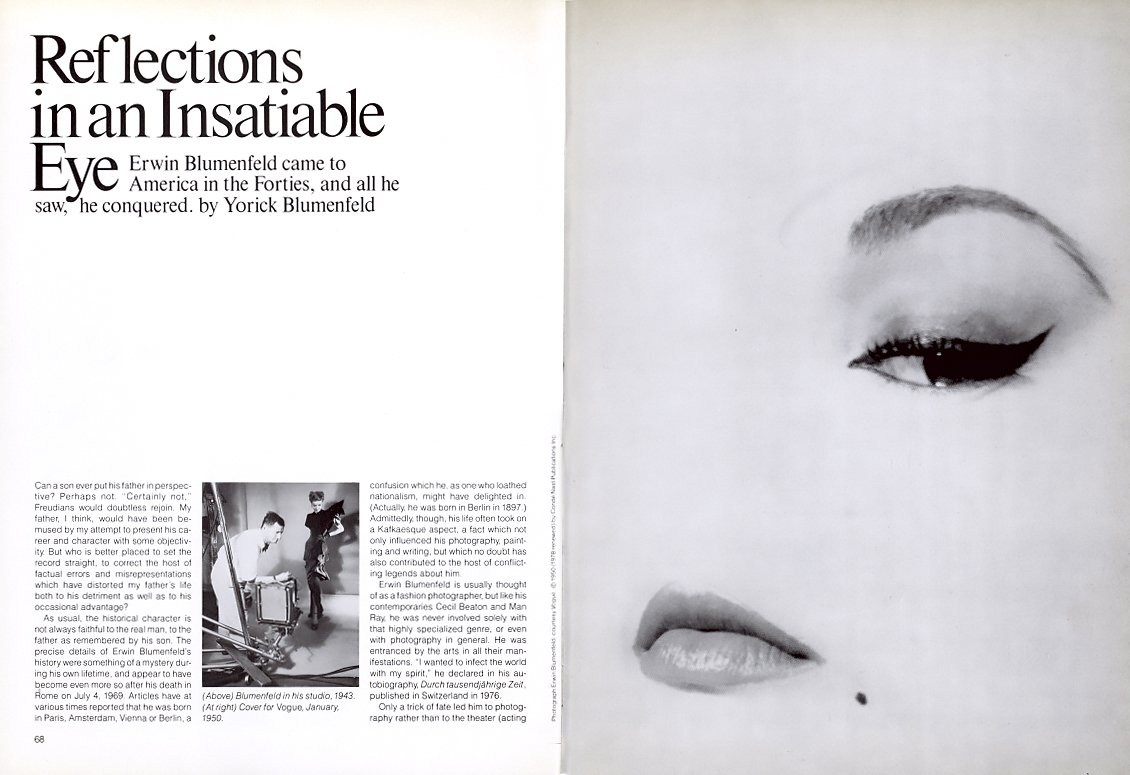
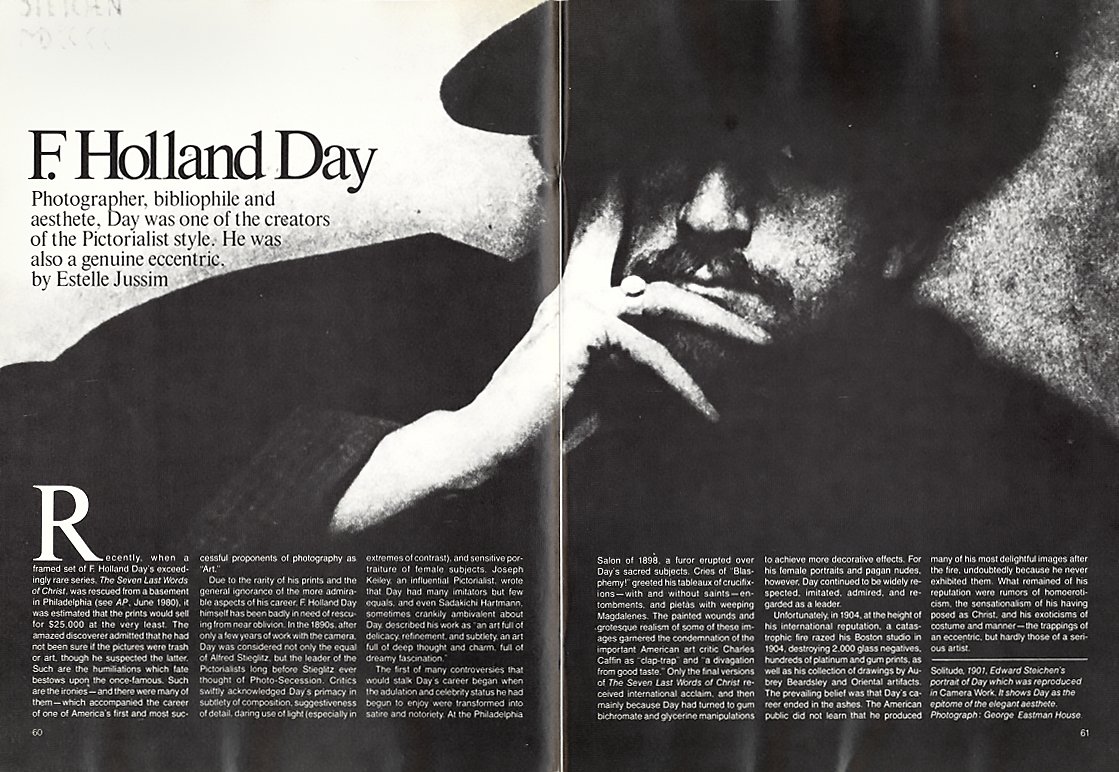
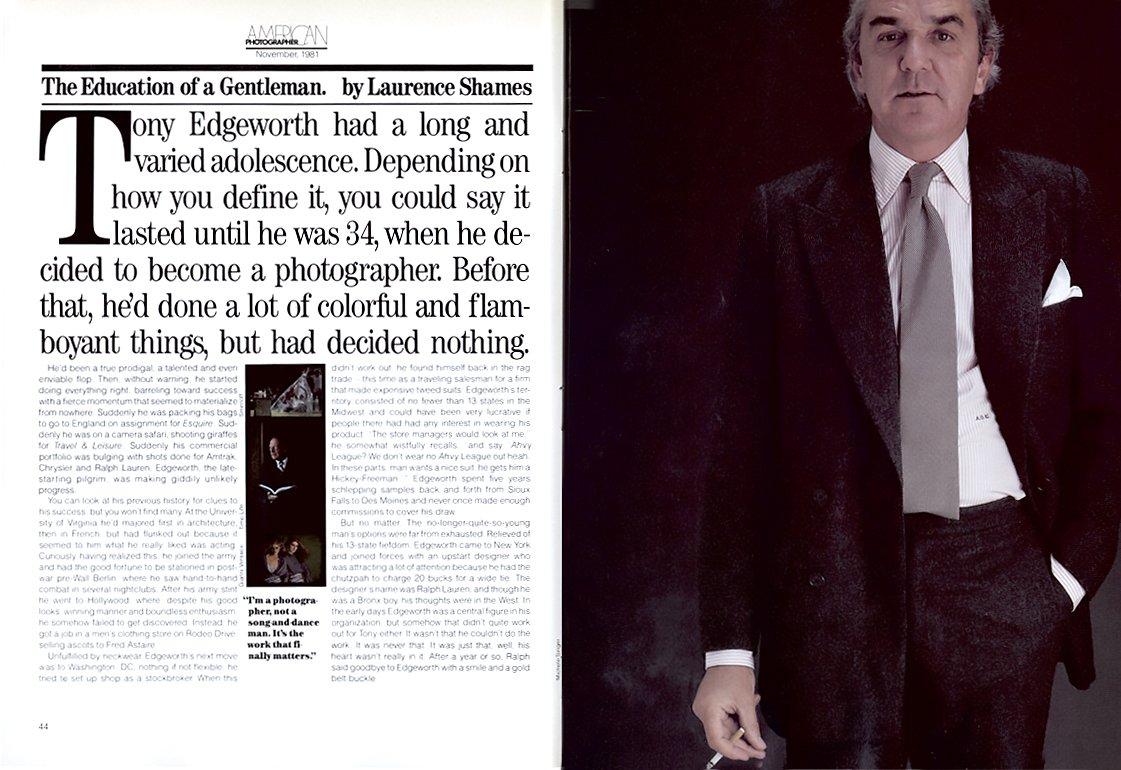
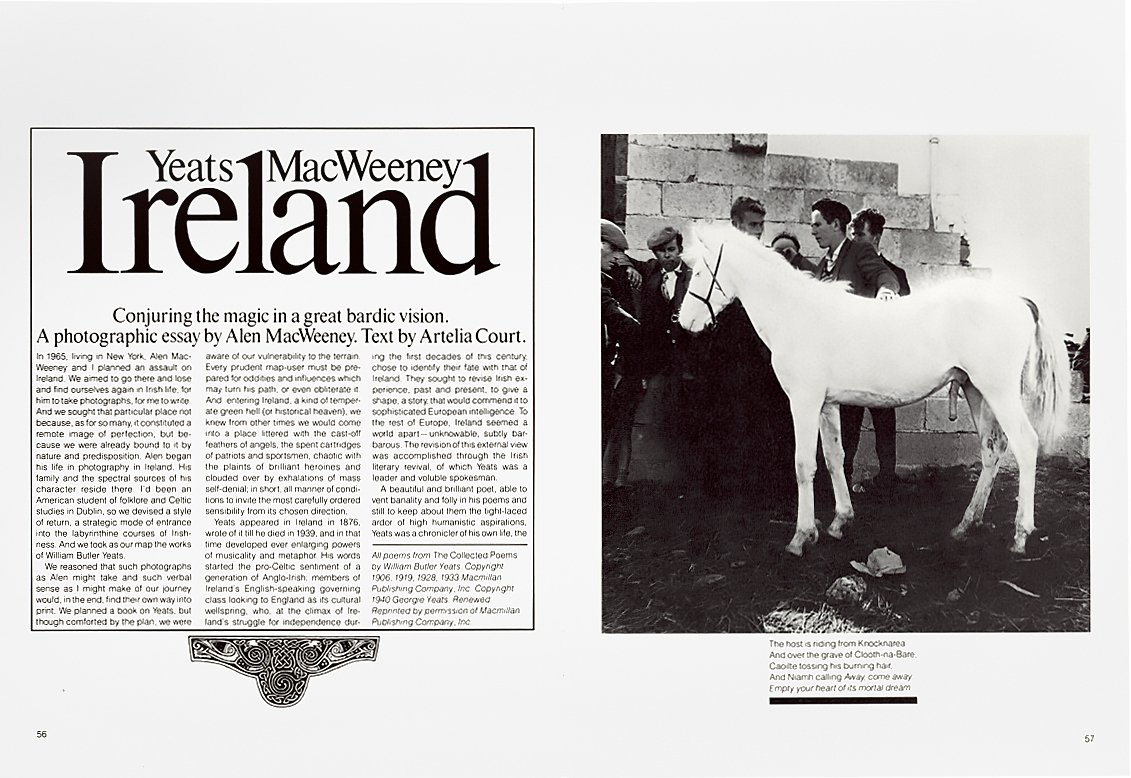
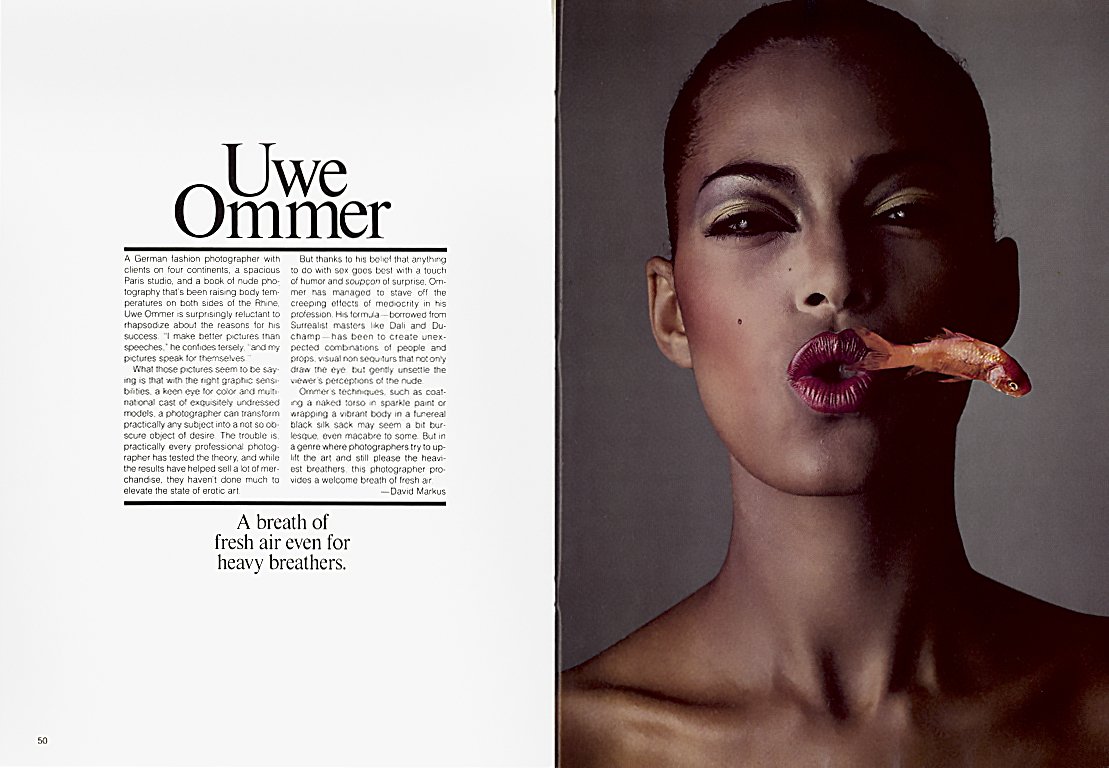
George Gendron: Were you looking for a job? What were you doing?
Will Hopkins: I was just … I was trying to find out what to do.
Mary K Baumann: One of the things that Will has told me is that on the last day, everybody was trying to get people jobs. So there were a lot of phone calls being made. Everybody was concerned about that. And you said that you were on the phone trying to get people jobs. Douglas Kirkland told me that he came in and he immediately got his images out of there.
Will Hopkins: Yeah.
Mary K Baumann: He took his images because they were donating the photography to the Library of Congress. For example, all of Paul Fusco’s images went to the Library of Congress and once they were in the Library of Congress, it was like hell to get them back out. But Douglas had all his images, so that was just a very interesting aside.
George Gendron: Yeah, That is really interesting. So back then having possession of the actual images was 99% of the IP battle, right?
Mary K Baumann: Exactly. So, I mean, Paul Fusco later—or was it Jimmy Karales?
Will Hopkins: Yeah...
Mary K Baumann: ... who did a lot of the very important civil rights images. He could only get ten of his images out at a time in order to make prints of his negatives. Which was difficult.
George Gendron: The reason I’m so interested in this is because when I was at New York, of course that was, you could argue a spinoff, right, of the magazine. The Sunday magazine for the Herald Trib. And when former Herald Trib people talked about the last day of the Tribune, it sounded like people talking about the death of a family member. I mean it was really, really traumatic for people.
In his memoirs, Jann Wenner talks about the last days at Rolling Stone and going into an office that had been his office for 30 years. And little by little, the place is literally, physically being dismantled. So I wonder whether anybody at that time had the sense that as Look closed, Life closed, this was the beginning of the end of an era, in a way.
Will Hopkins: Yeah. I’m sure it was.
Mary K Baumann: The other interesting thing is I came to know the Look people much later. But it was very much like a family. And they would always gather around stories and writers would work with the art director to lay out the story so you knew what was going on in the story. So there was a level of collaboration that was very key. The other thing is that Look had a room where they put all the layouts up on the wall, and the story was not considered for the magazine until it was laid out.
“They took me to the South [of France] and dined me and wined me, and I had a great time. But I don’t know how much I made from that.”
George Gendron: It makes sense the minute you describe it, right? For a magazine that was as visual...
Mary K Baumann: And when I was at the monthly Life we had closings on Monday and we would often be doing stories on Monday that would close that day.
George Gendron: That’s extraordinary. Well, talking about how visual that magazine was, I have to talk about a magazine that was just so important and influential, and that’s American Photographer, where you were not just the art director or design director, you were a co-founder. And I’m curious about how that came to be.
Will Hopkins: Well, Sean Callahan asked me...
George Gendron: Sean had been an editor at Look?
Will Hopkins: No. At Life. At Life...
George Gendron: Oh, at Life. That’s right...
Will Hopkins: … And he was like a junior editor at Life. And he had a friend, Alan Bennett, and they got together to form this magazine. And they asked me to be part of it. And I jumped in. And it was, for a while, quite fun.
George Gendron: Presumably you had your own studio at this time, right?
Will Hopkins: Basically, yeah.
American Craft, Minneapolis, 2013-2019

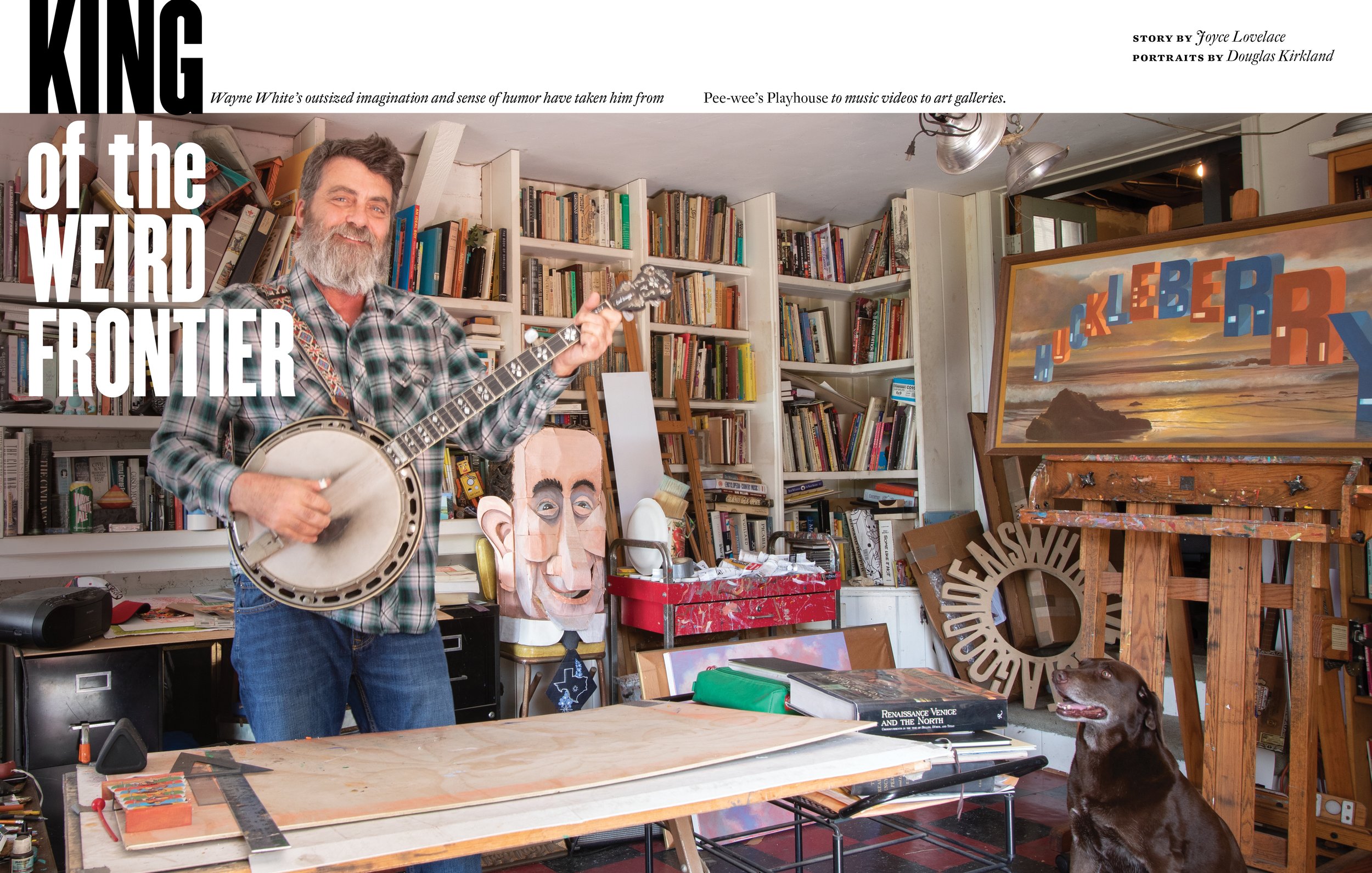
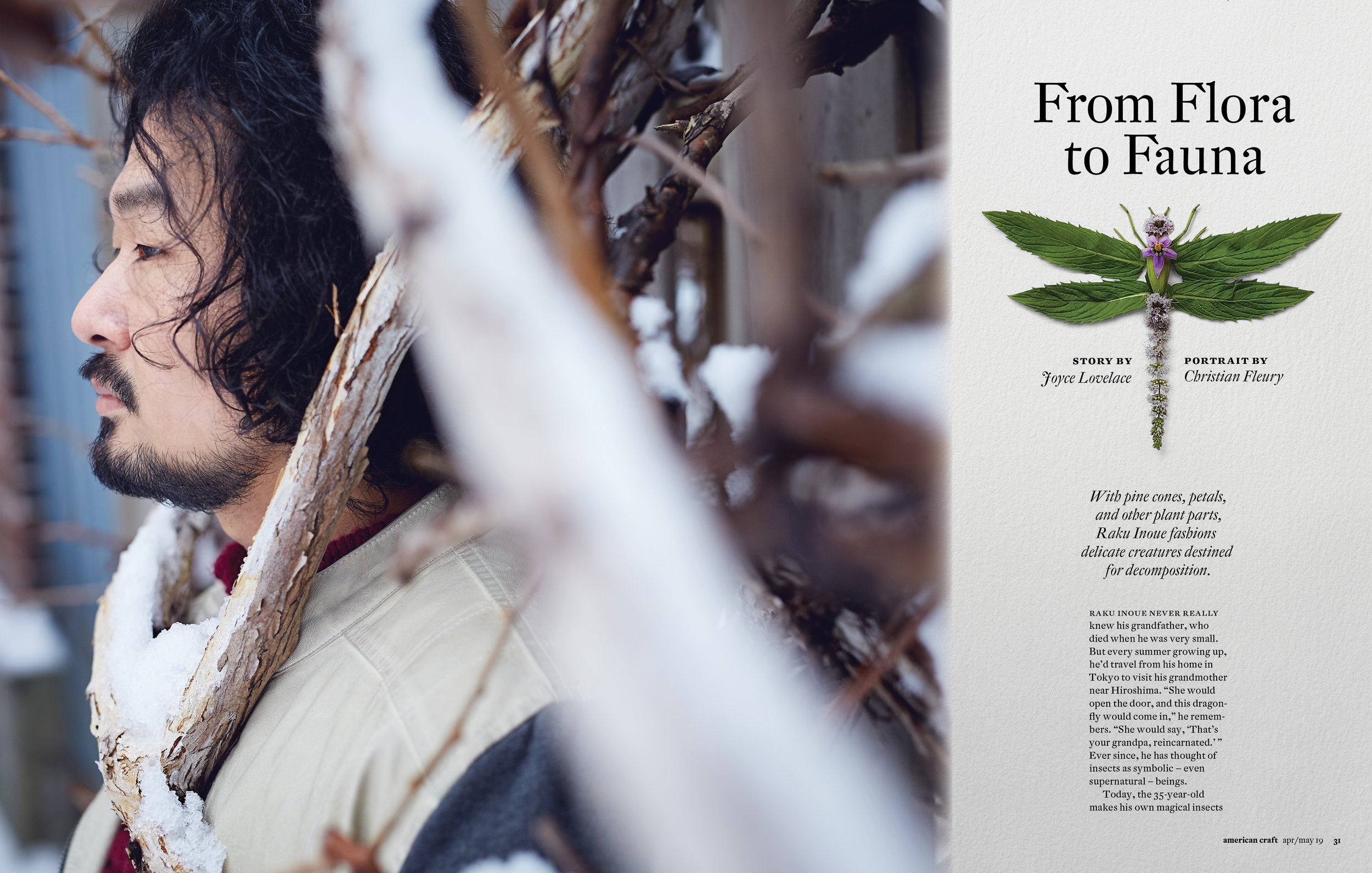
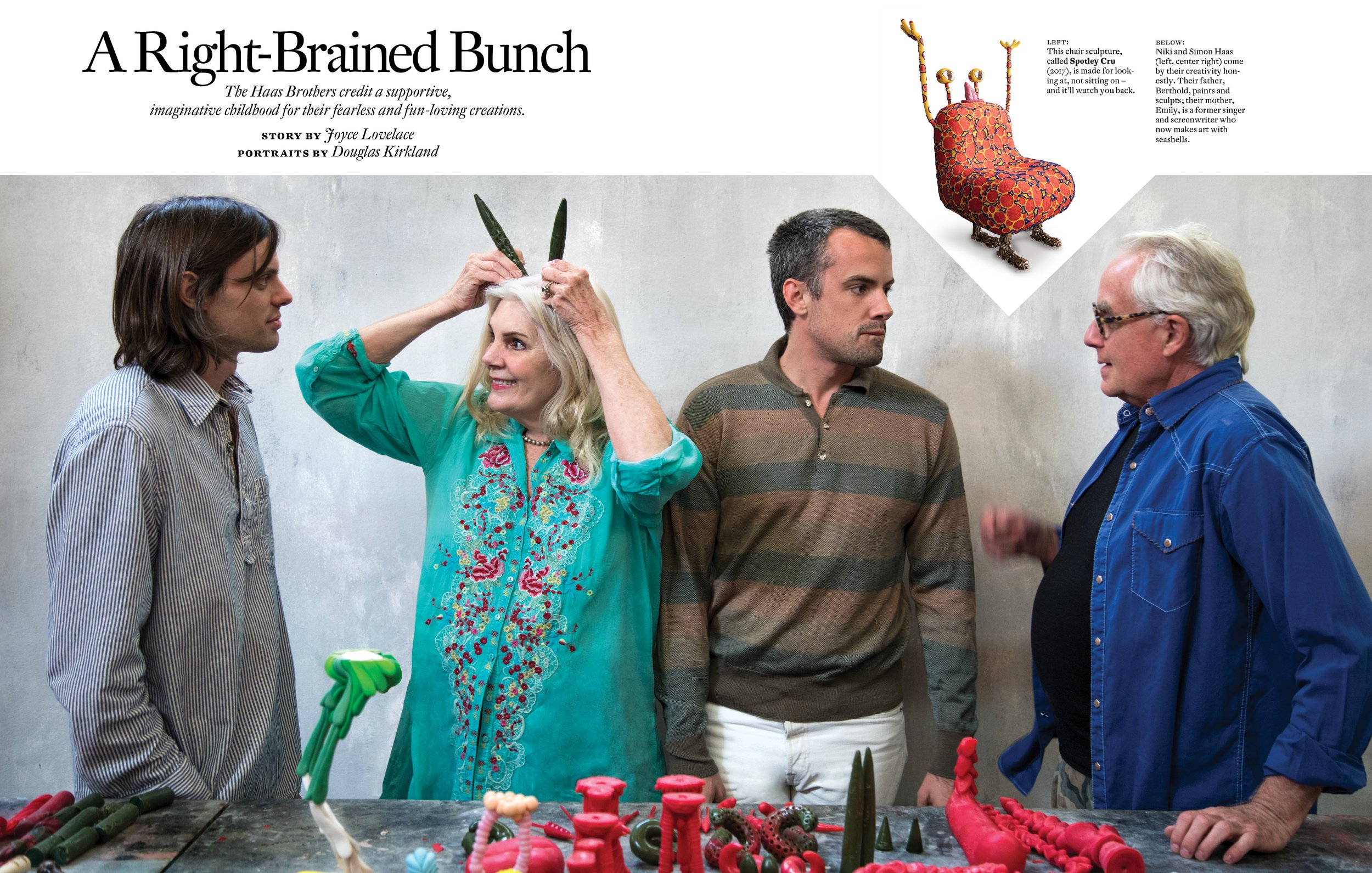
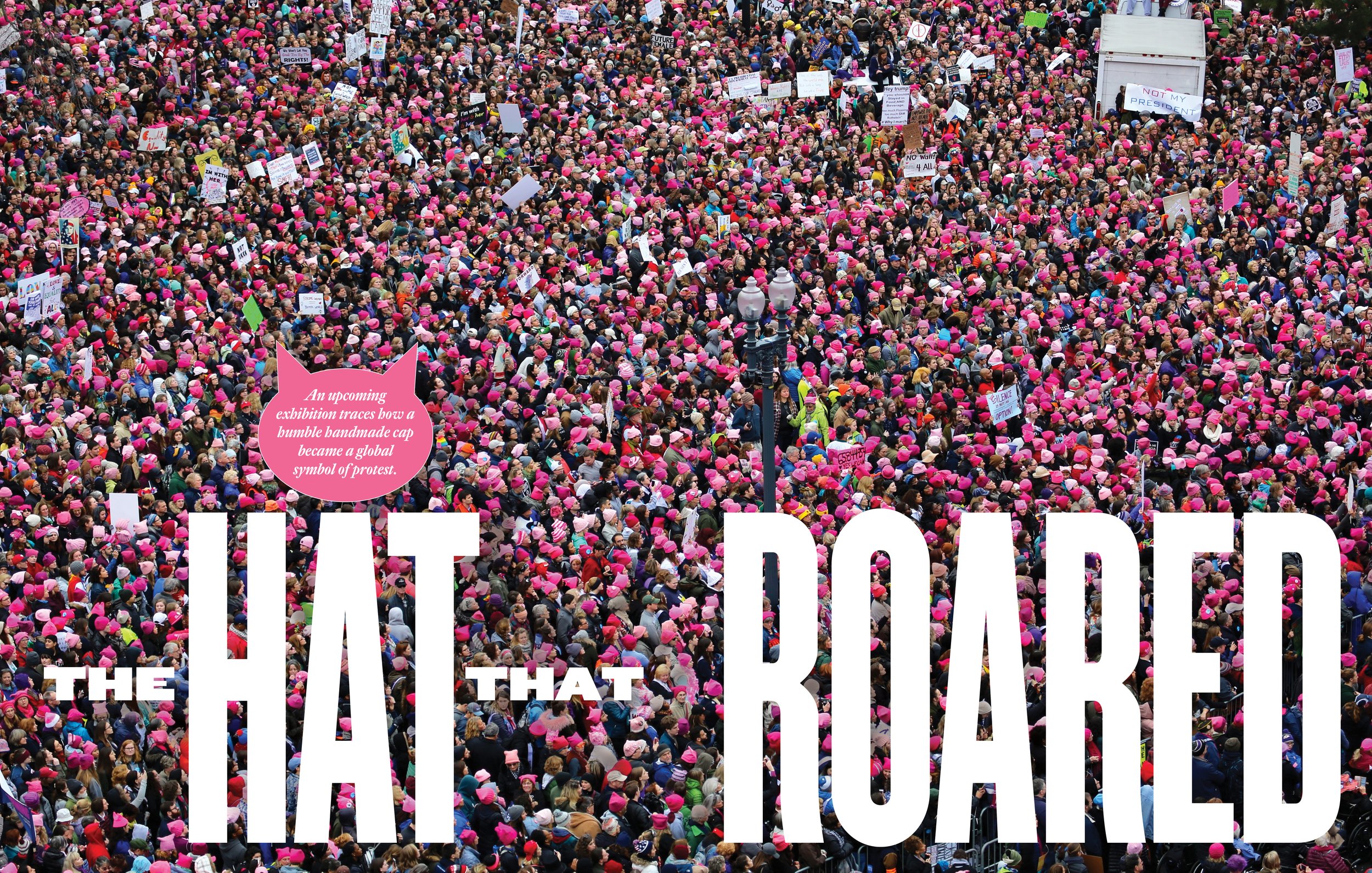
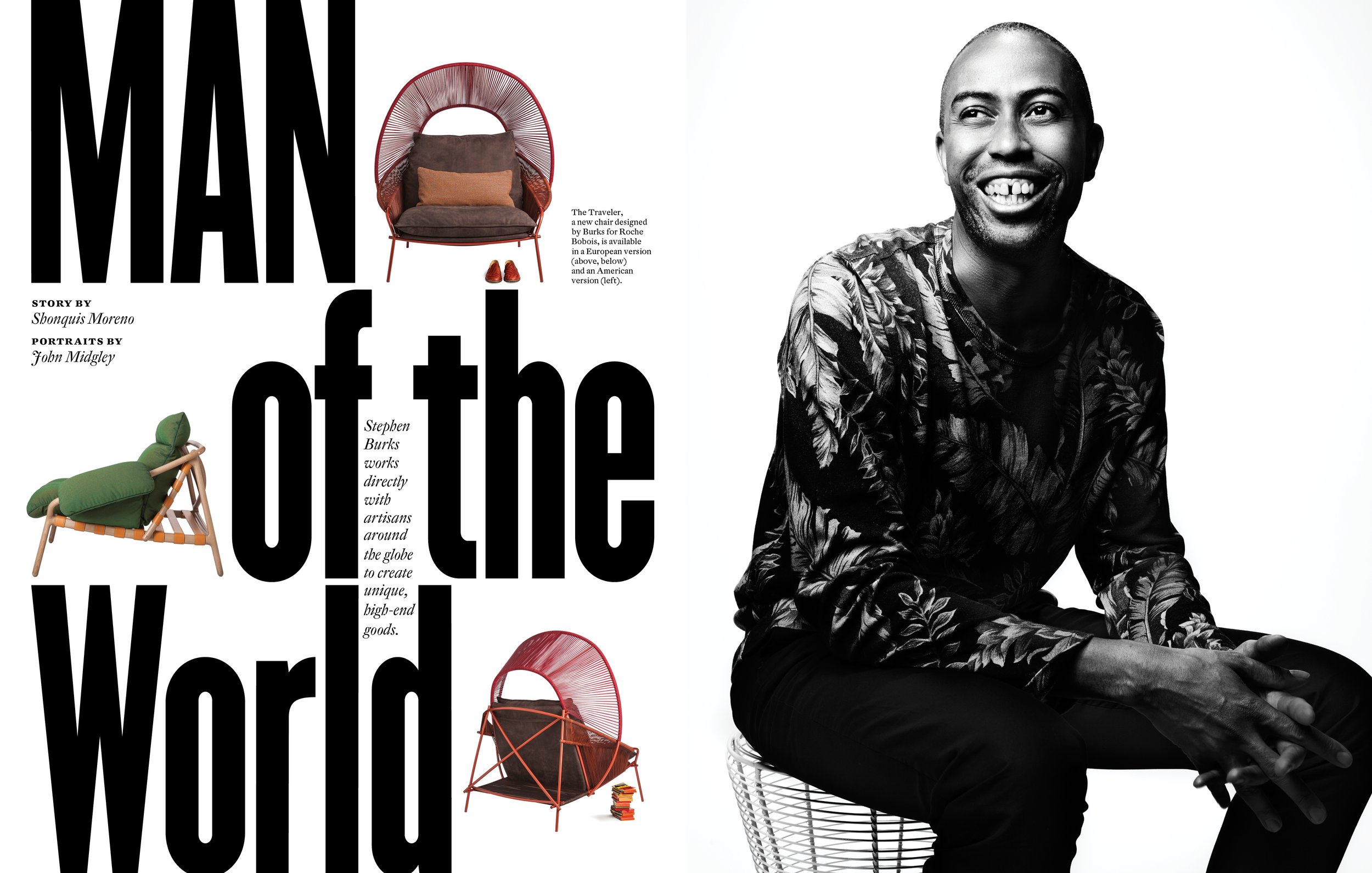
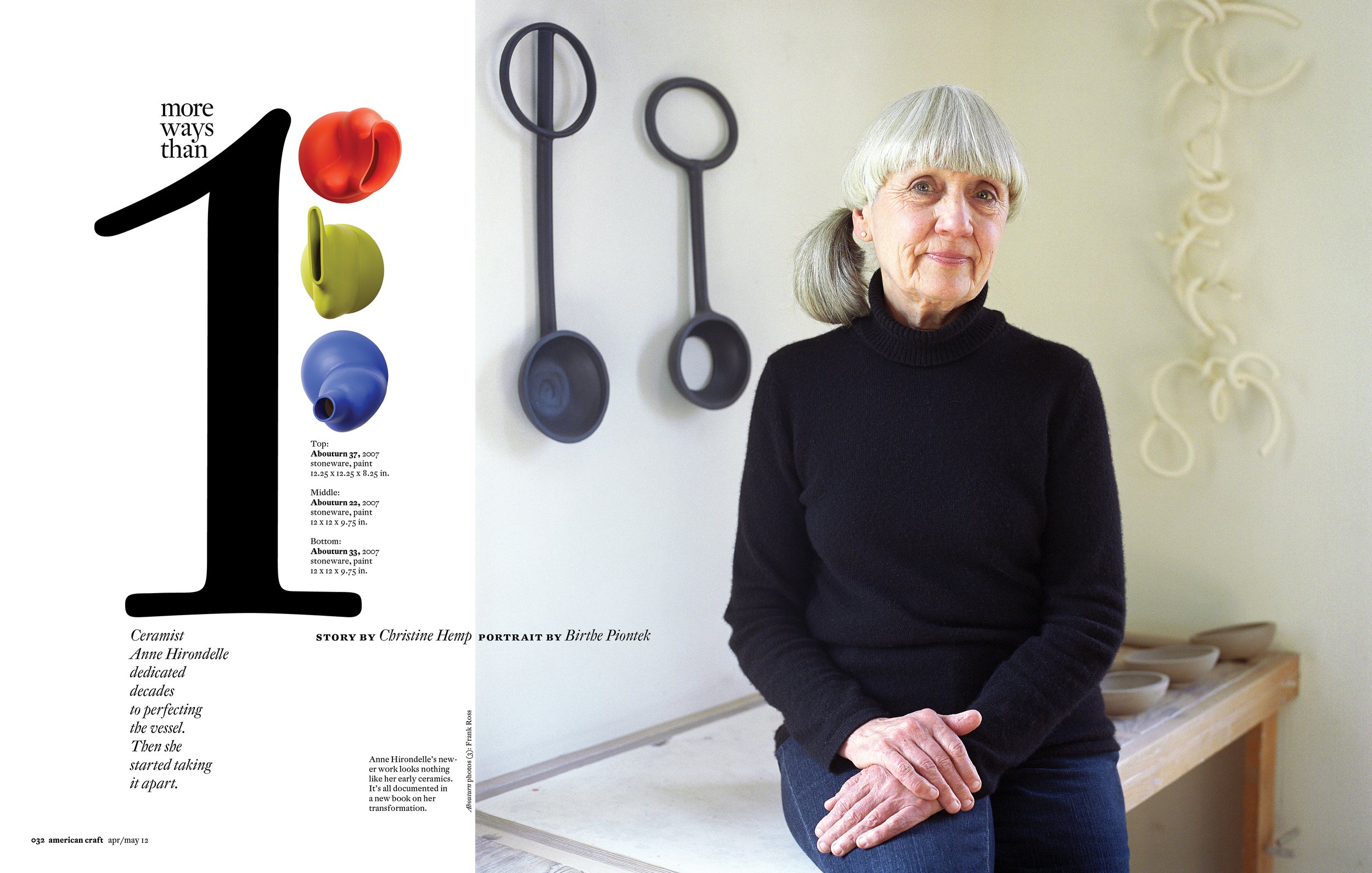
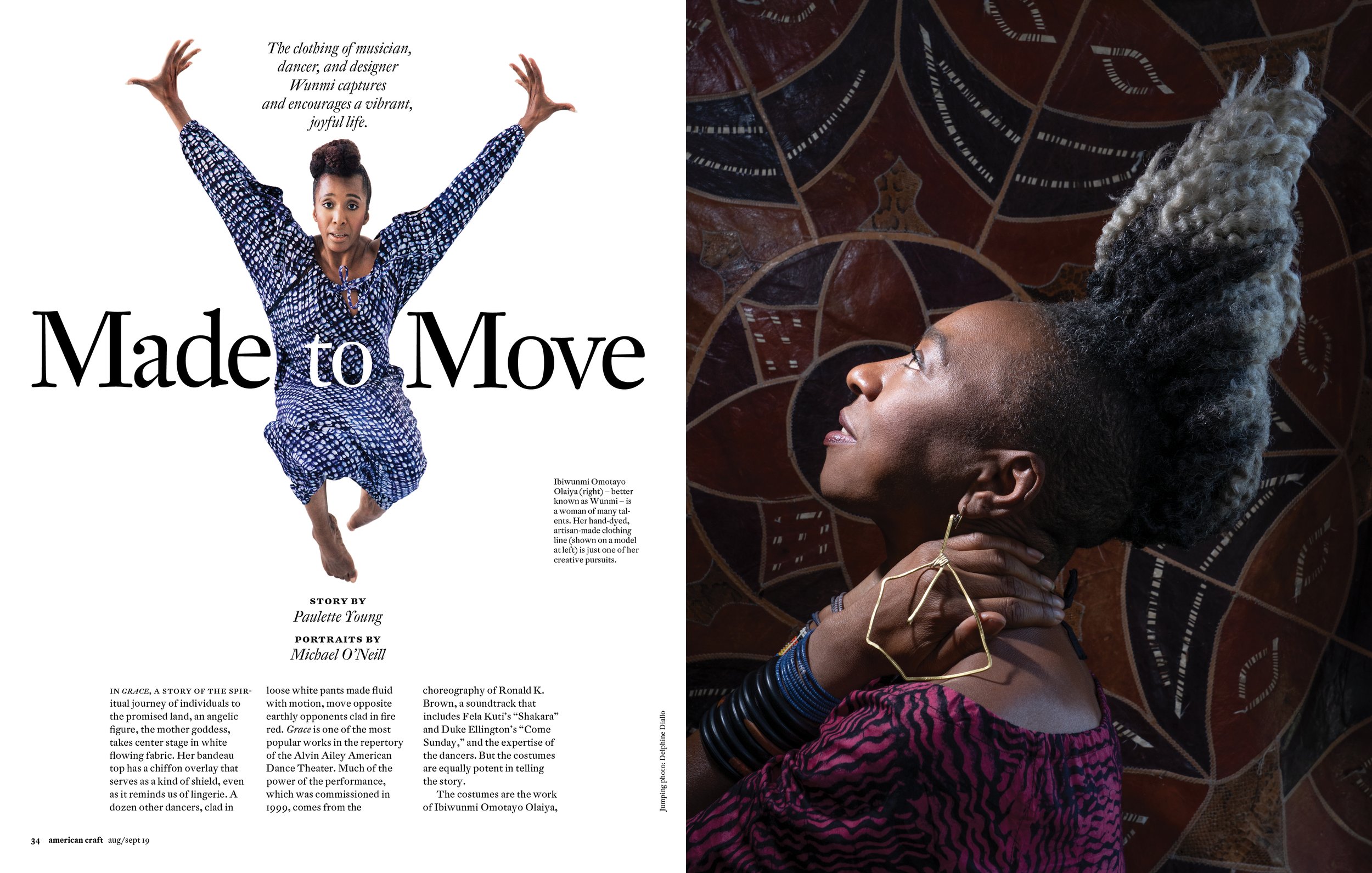
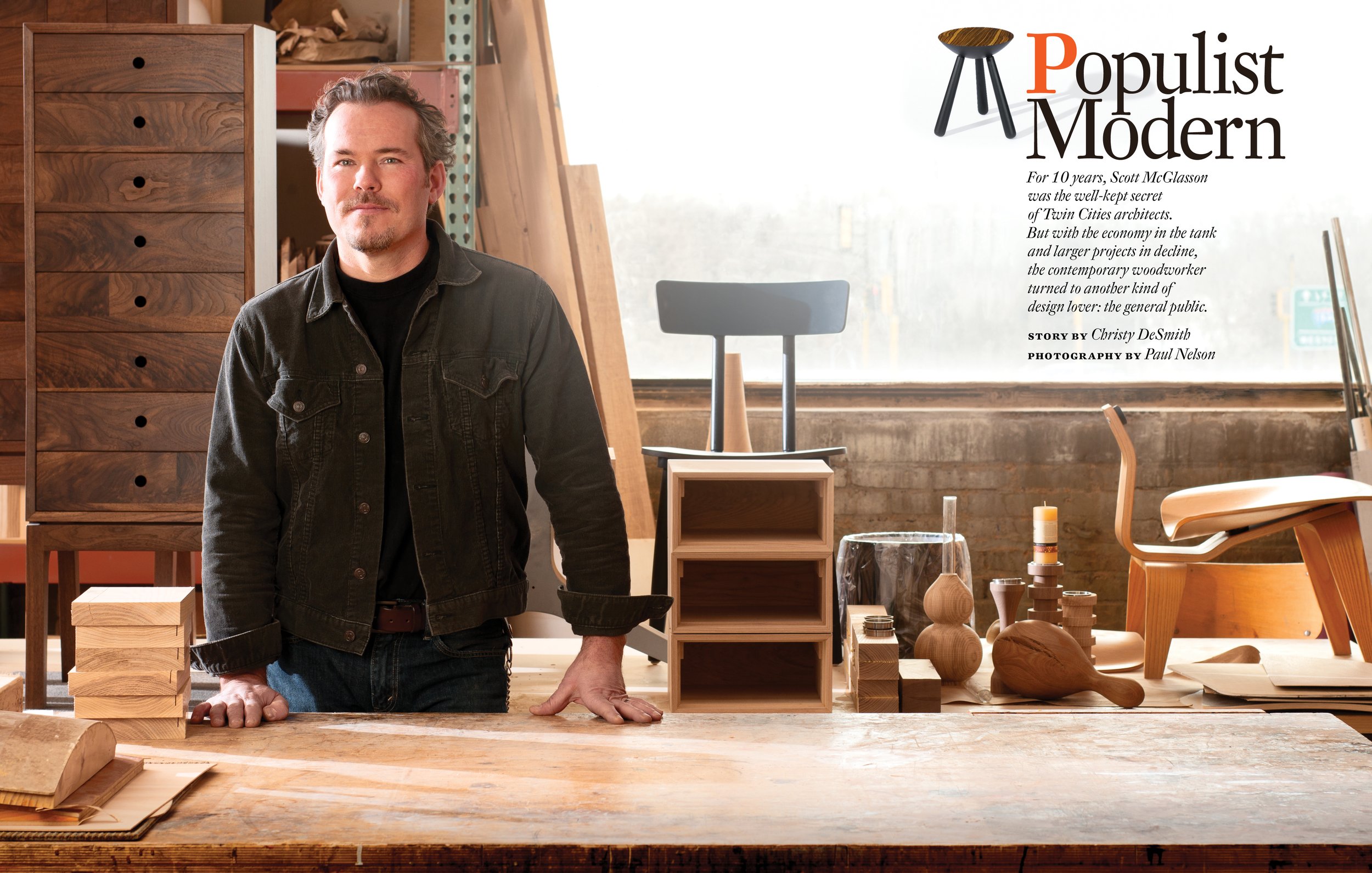
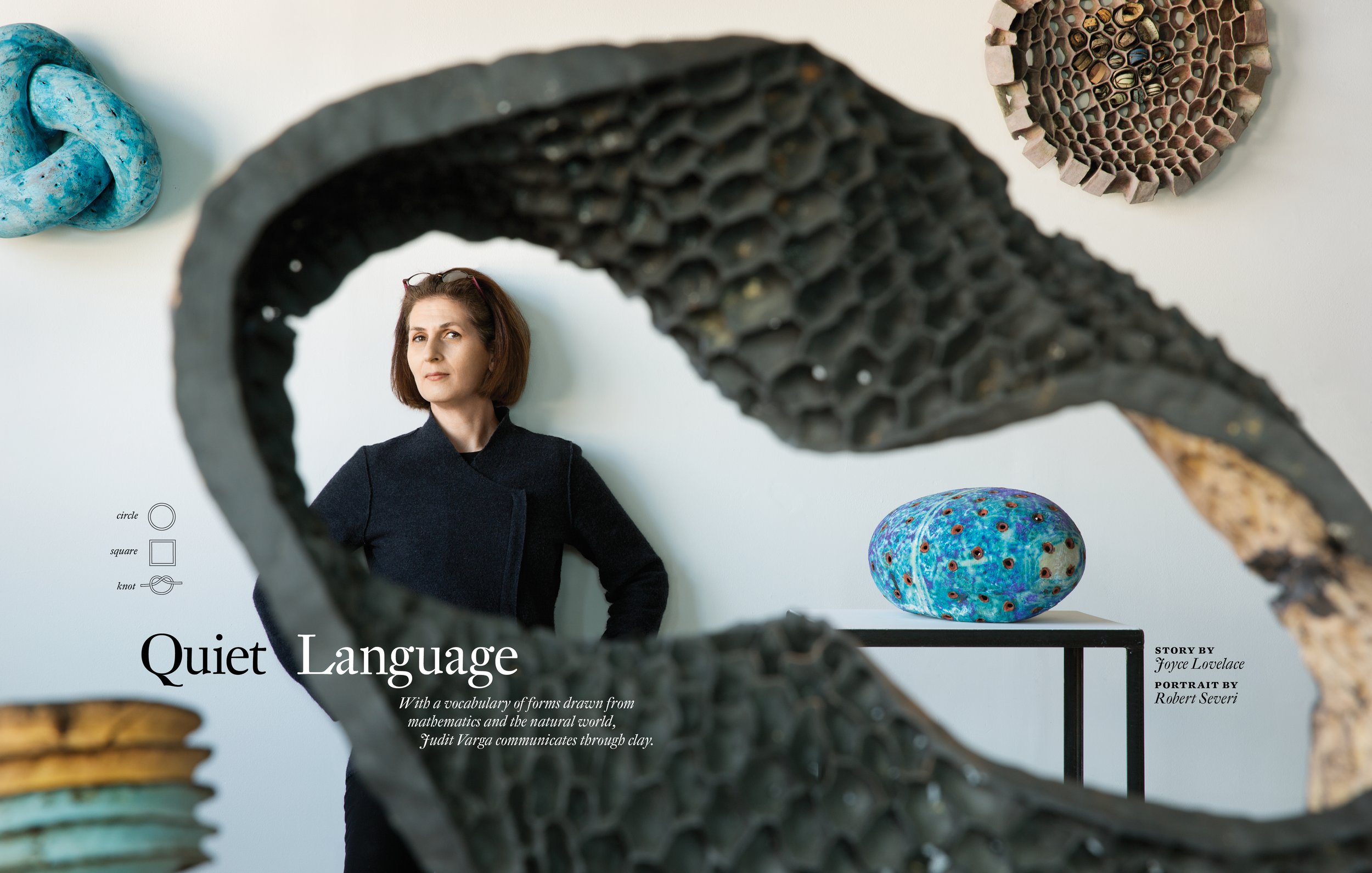

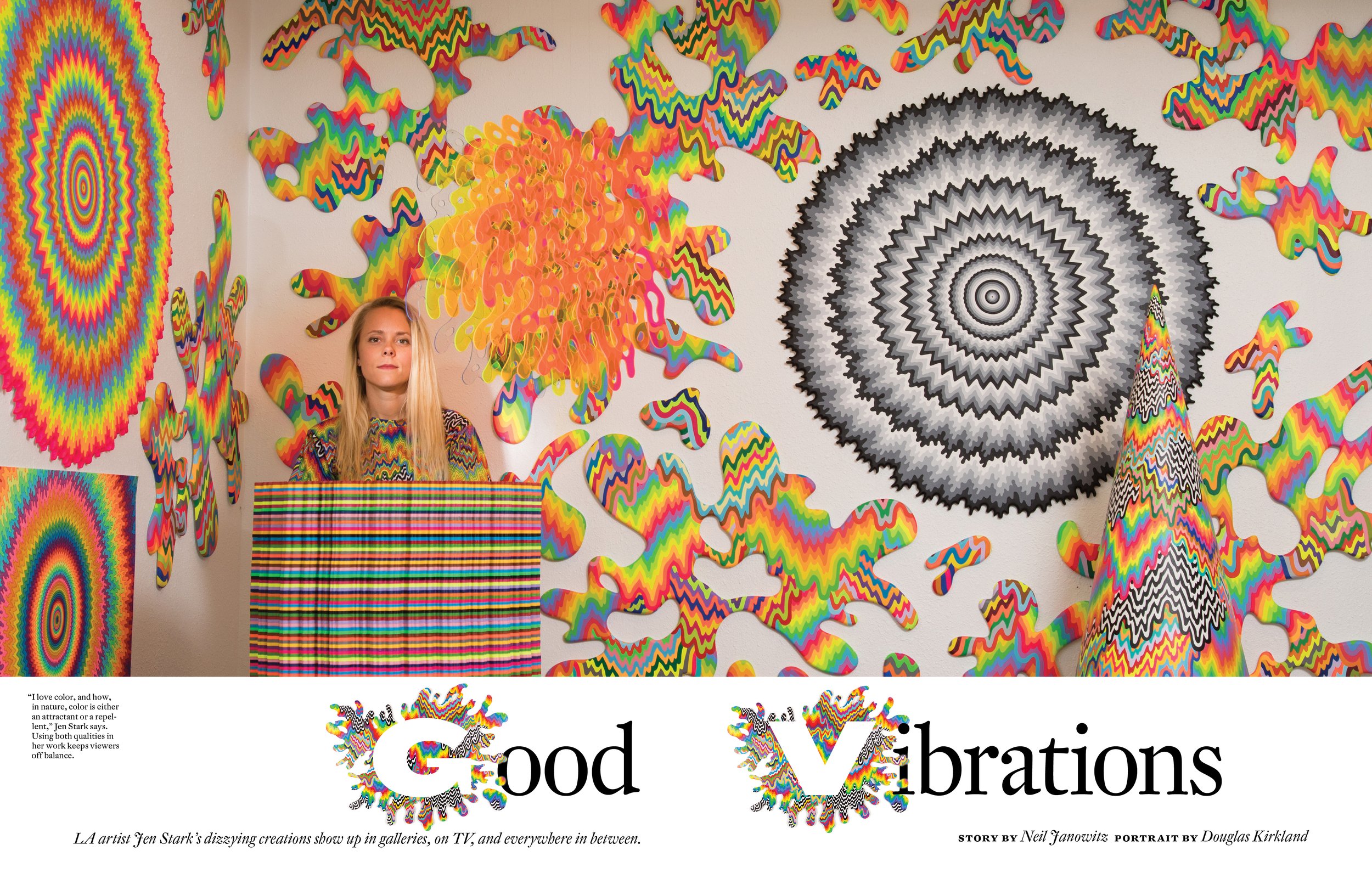
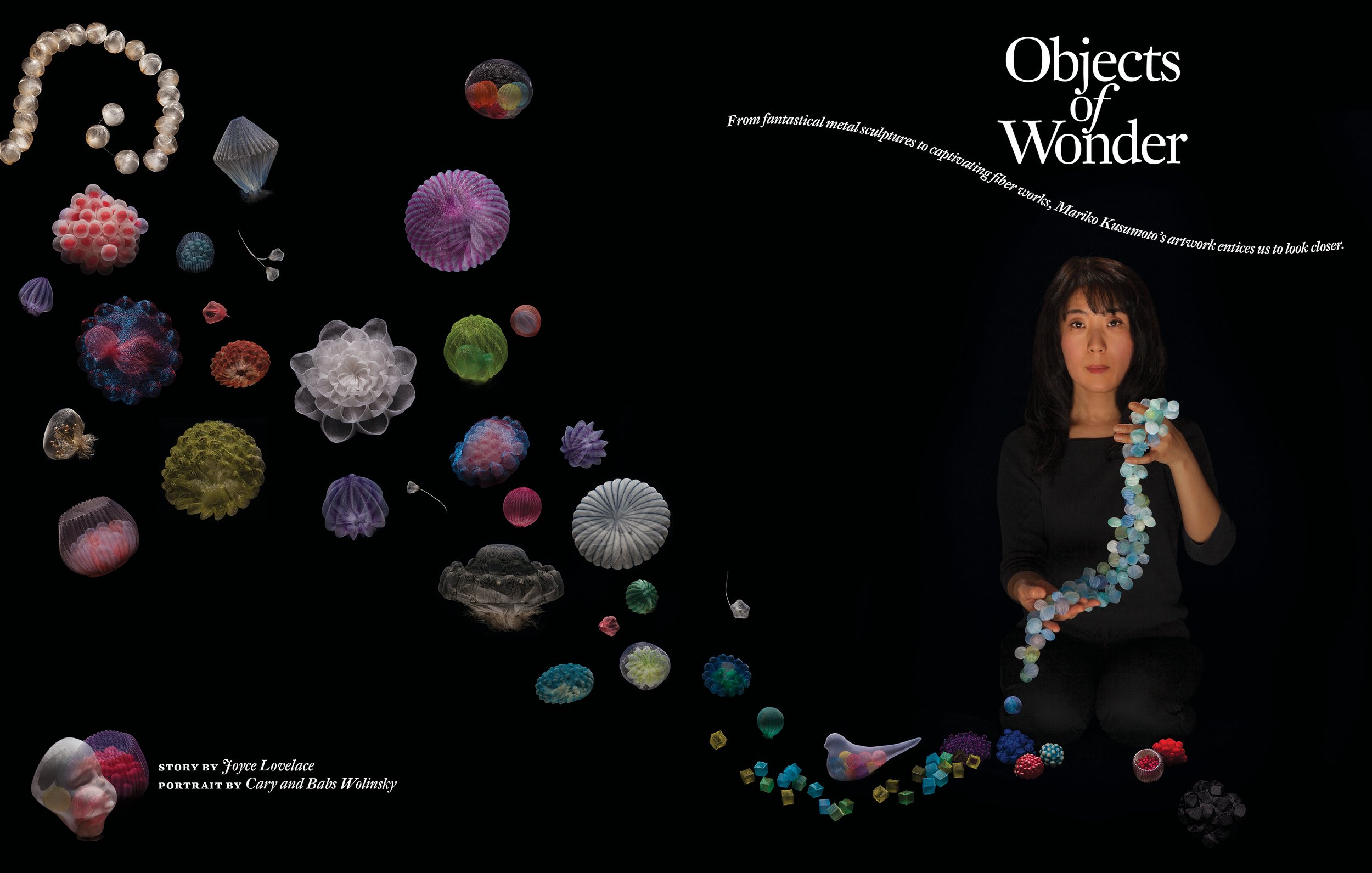
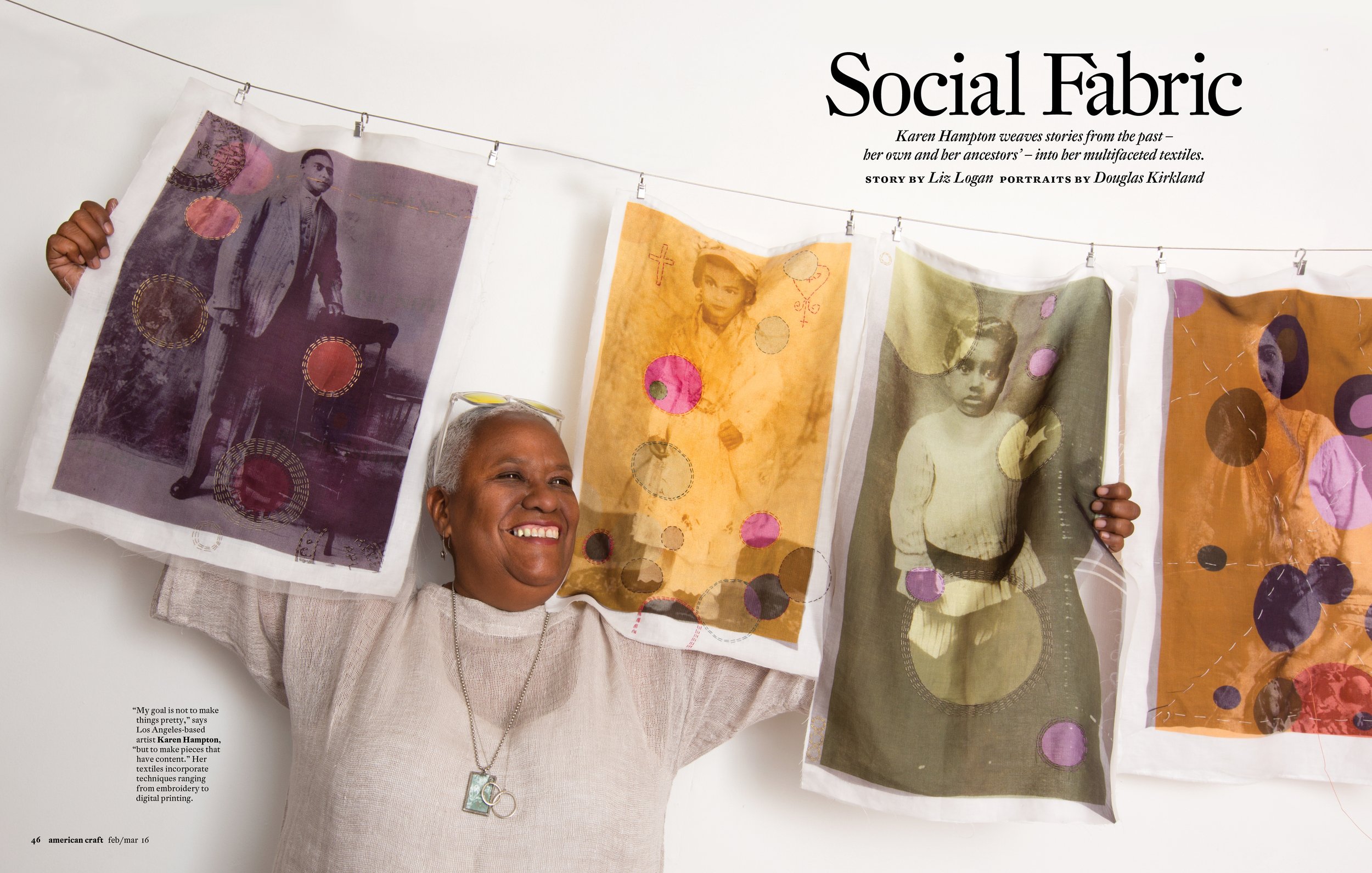
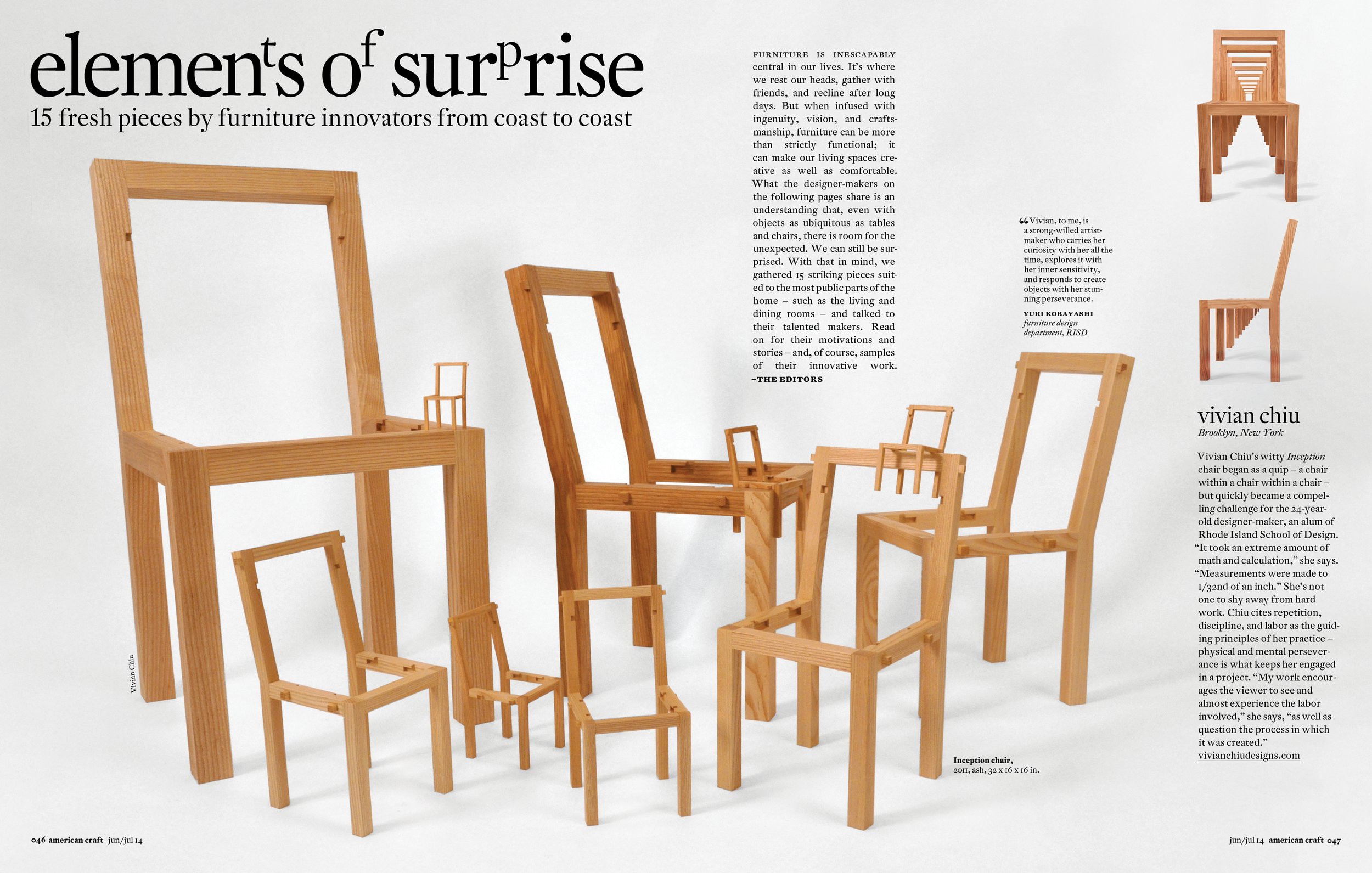
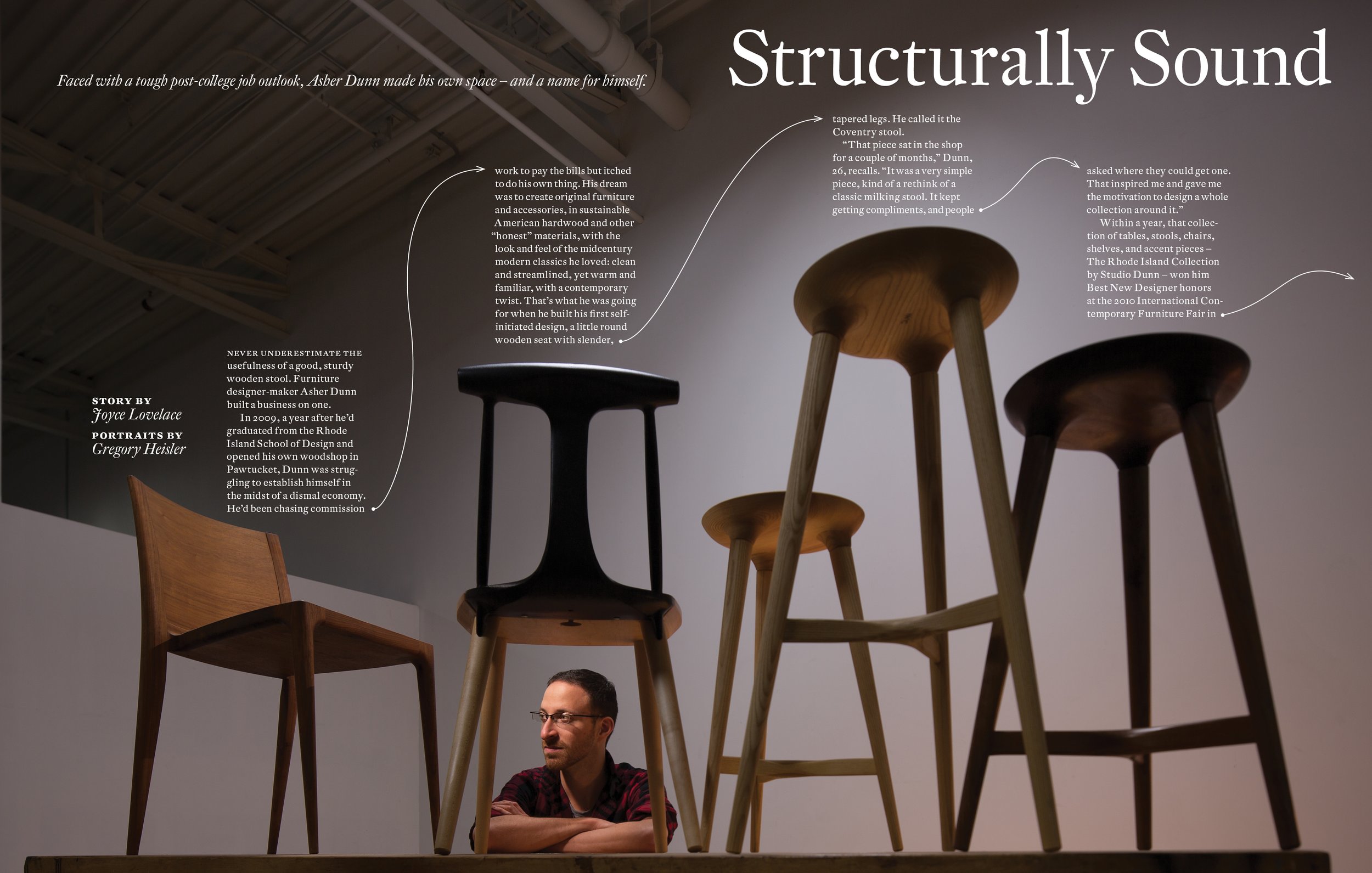
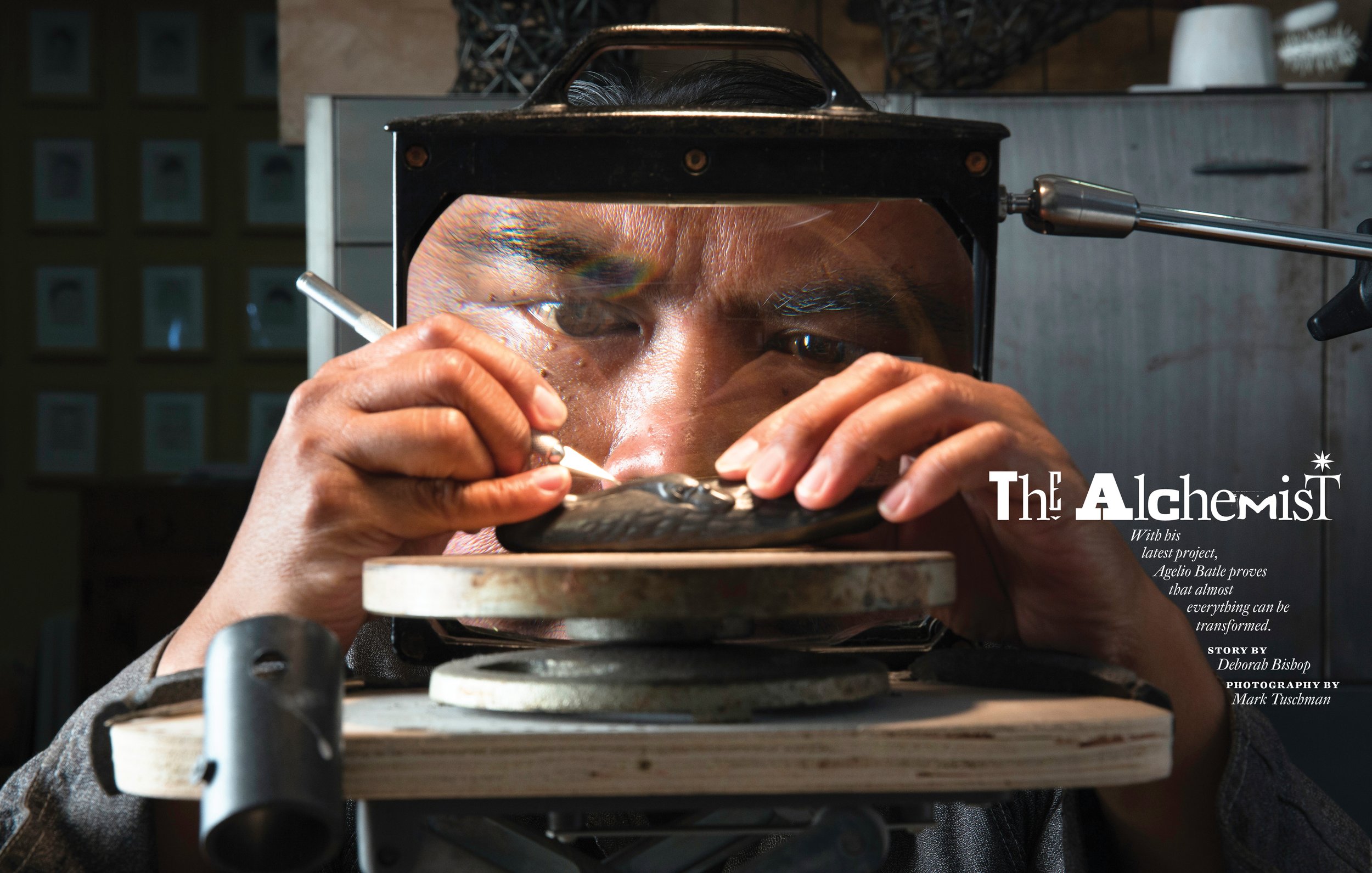
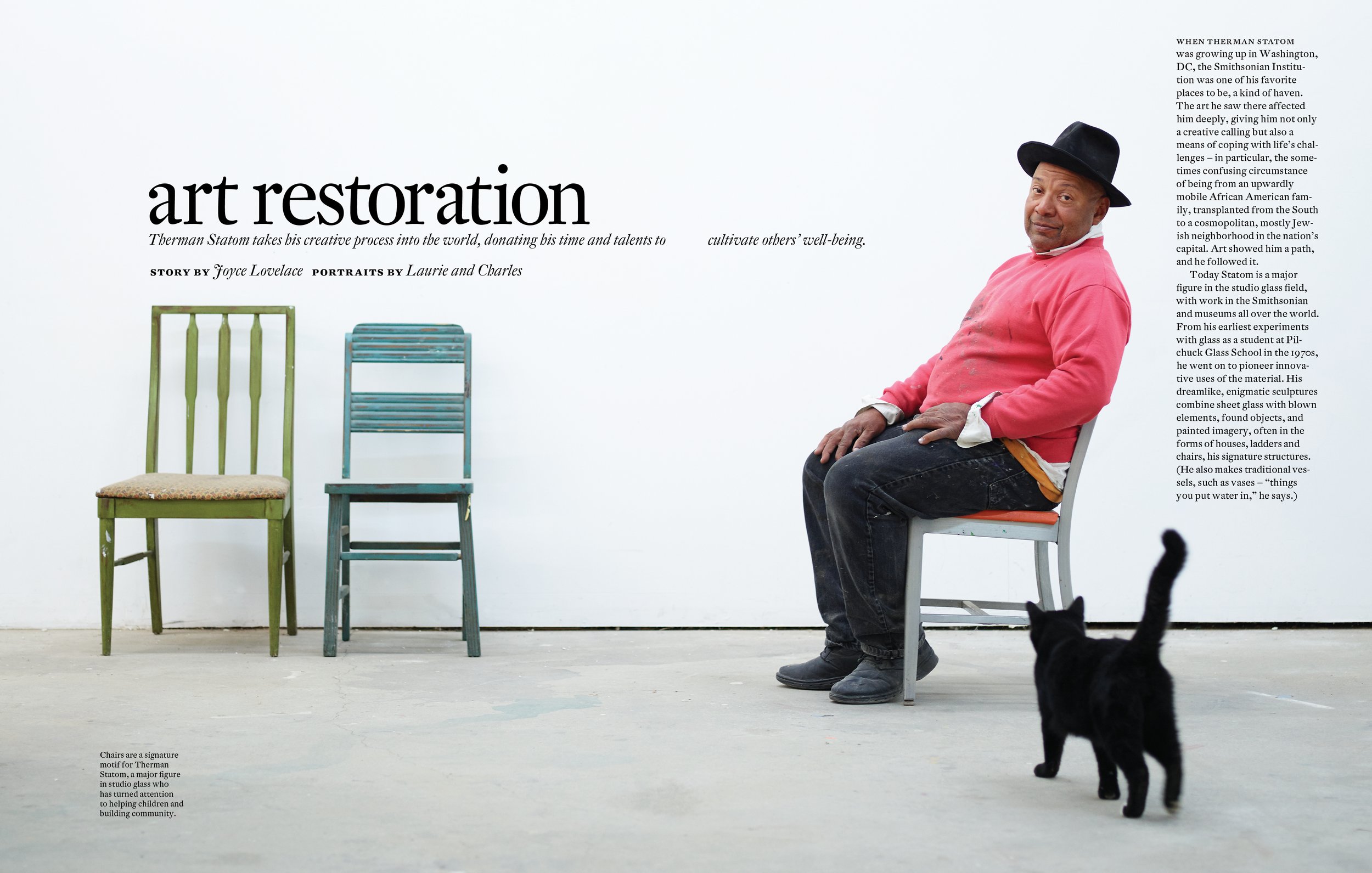

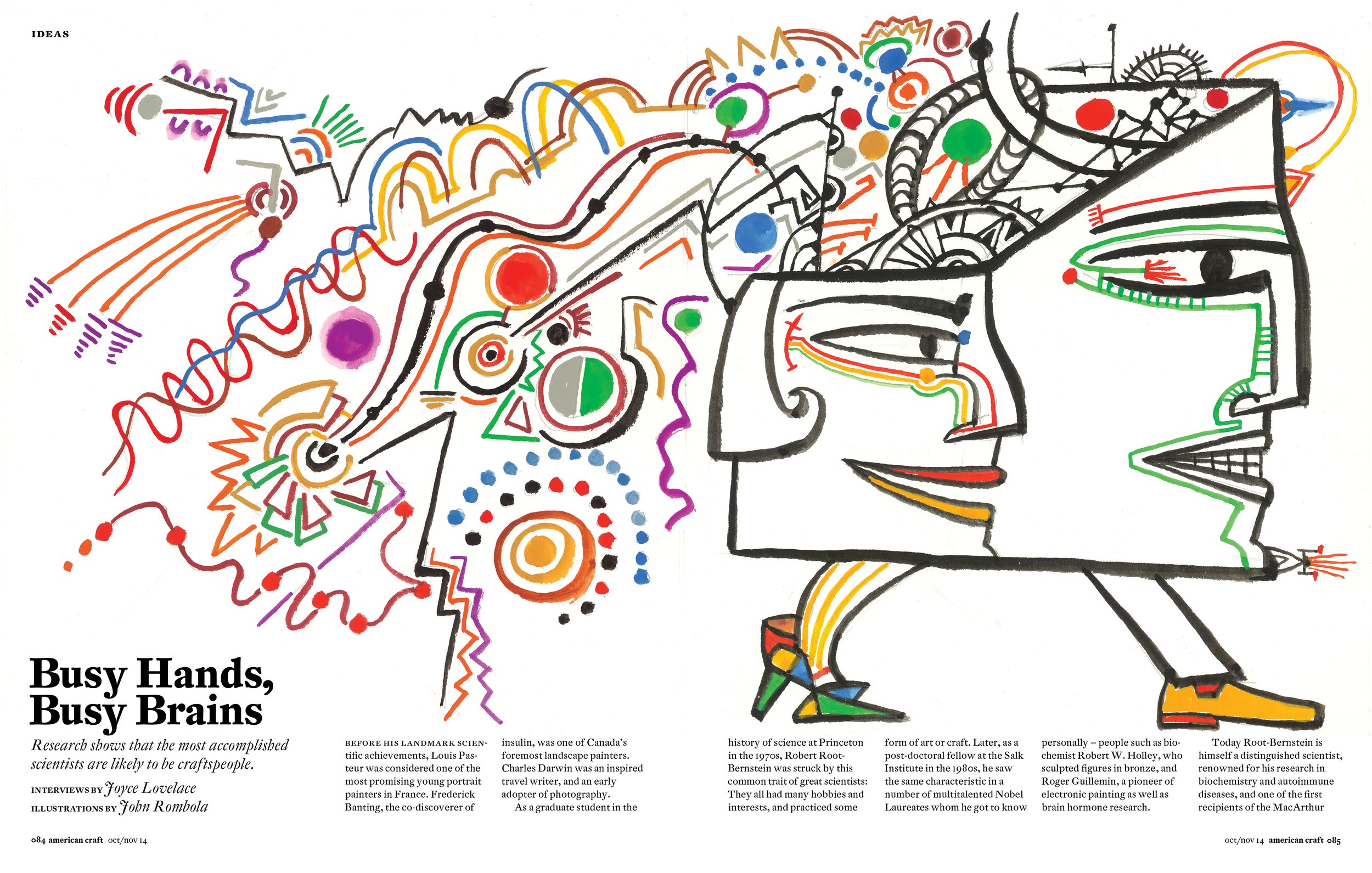

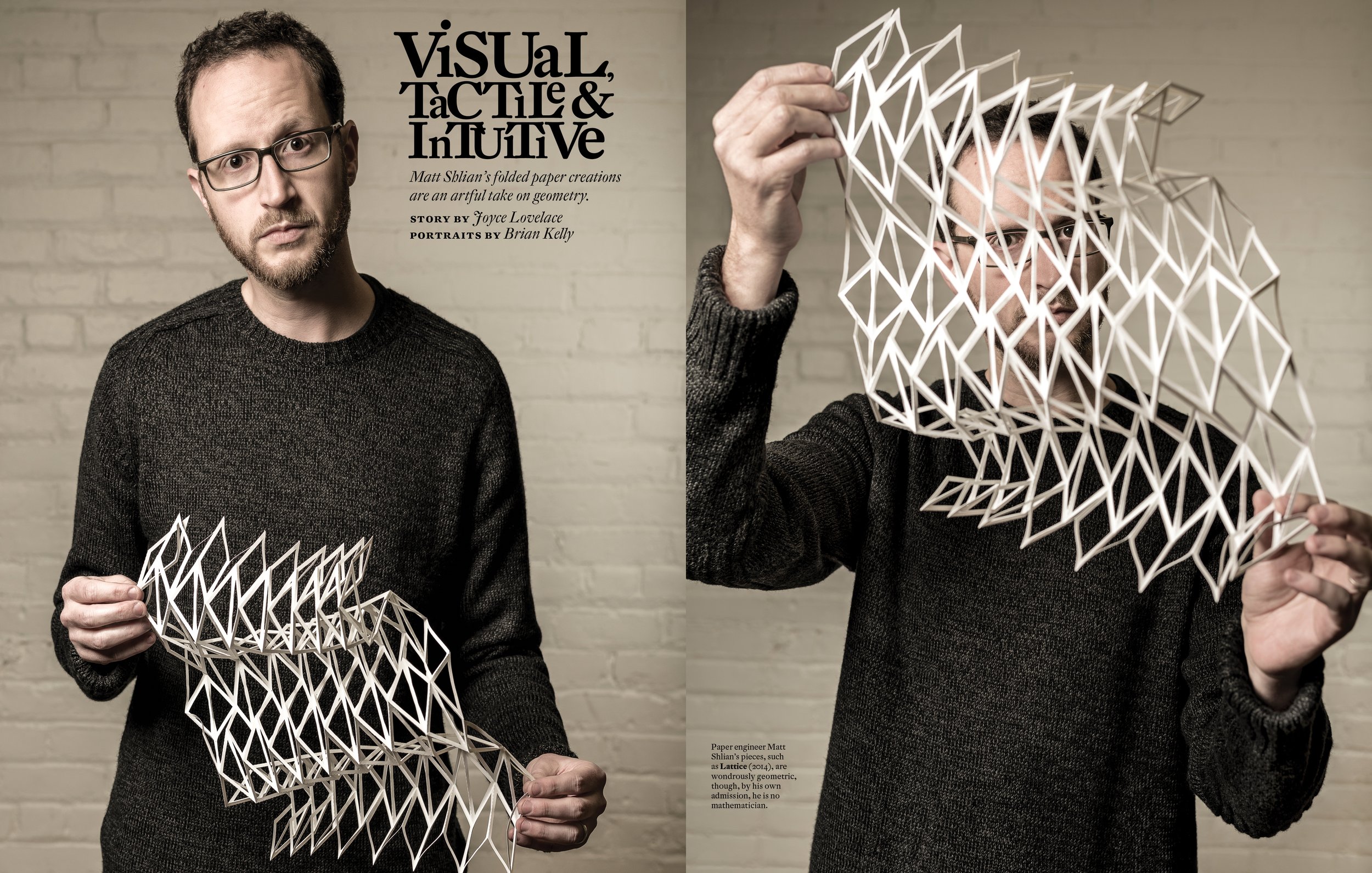
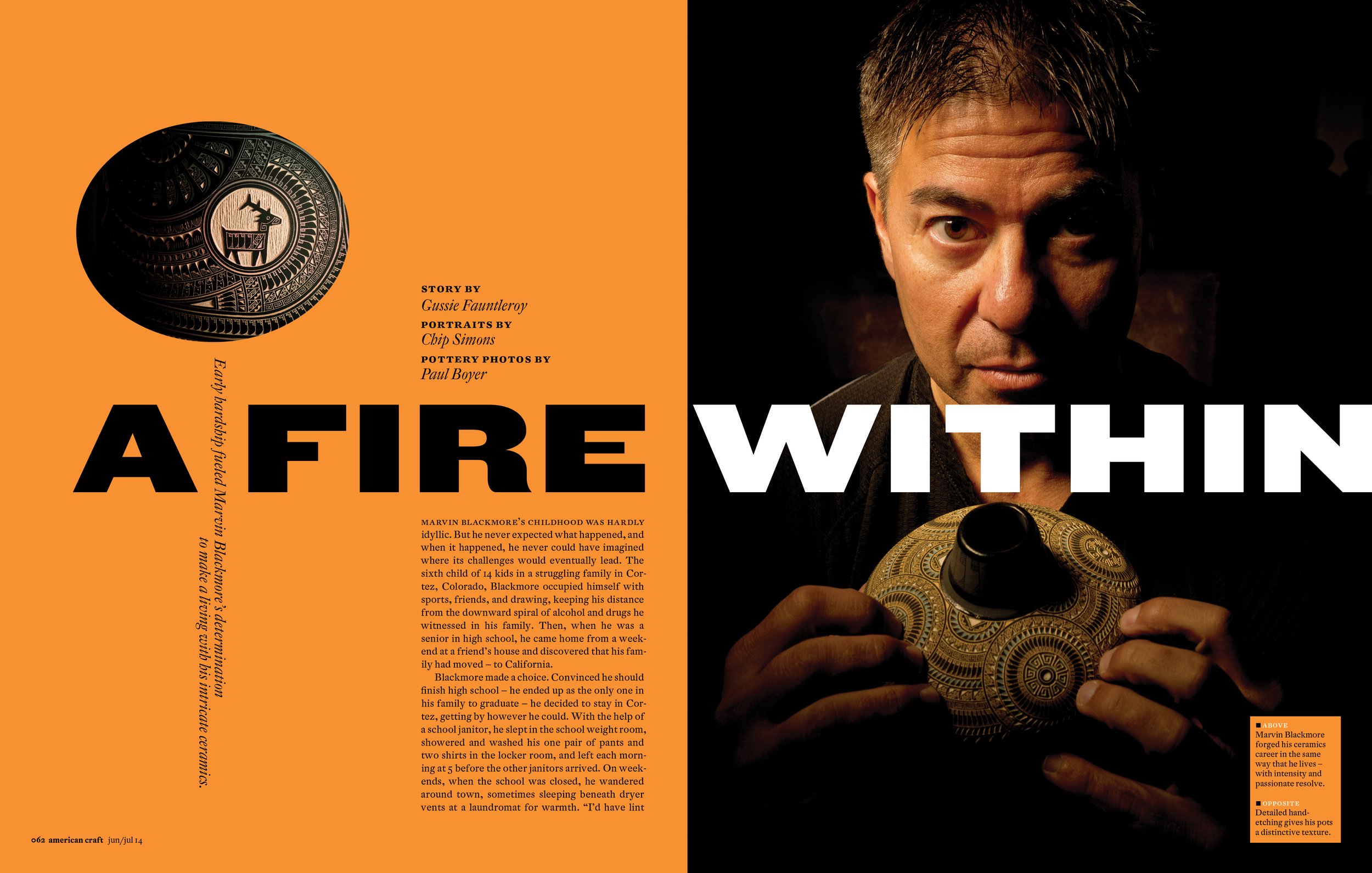
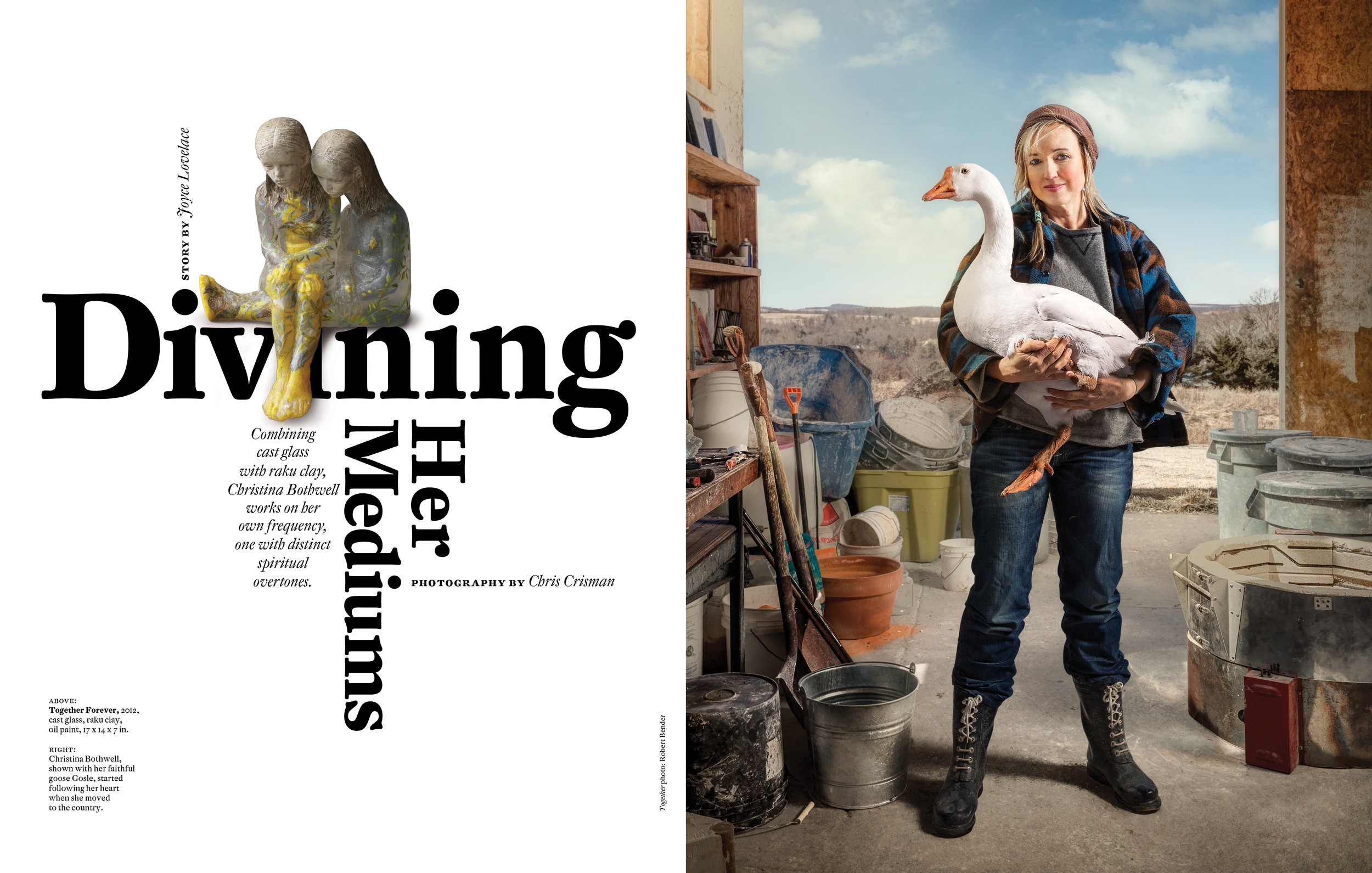
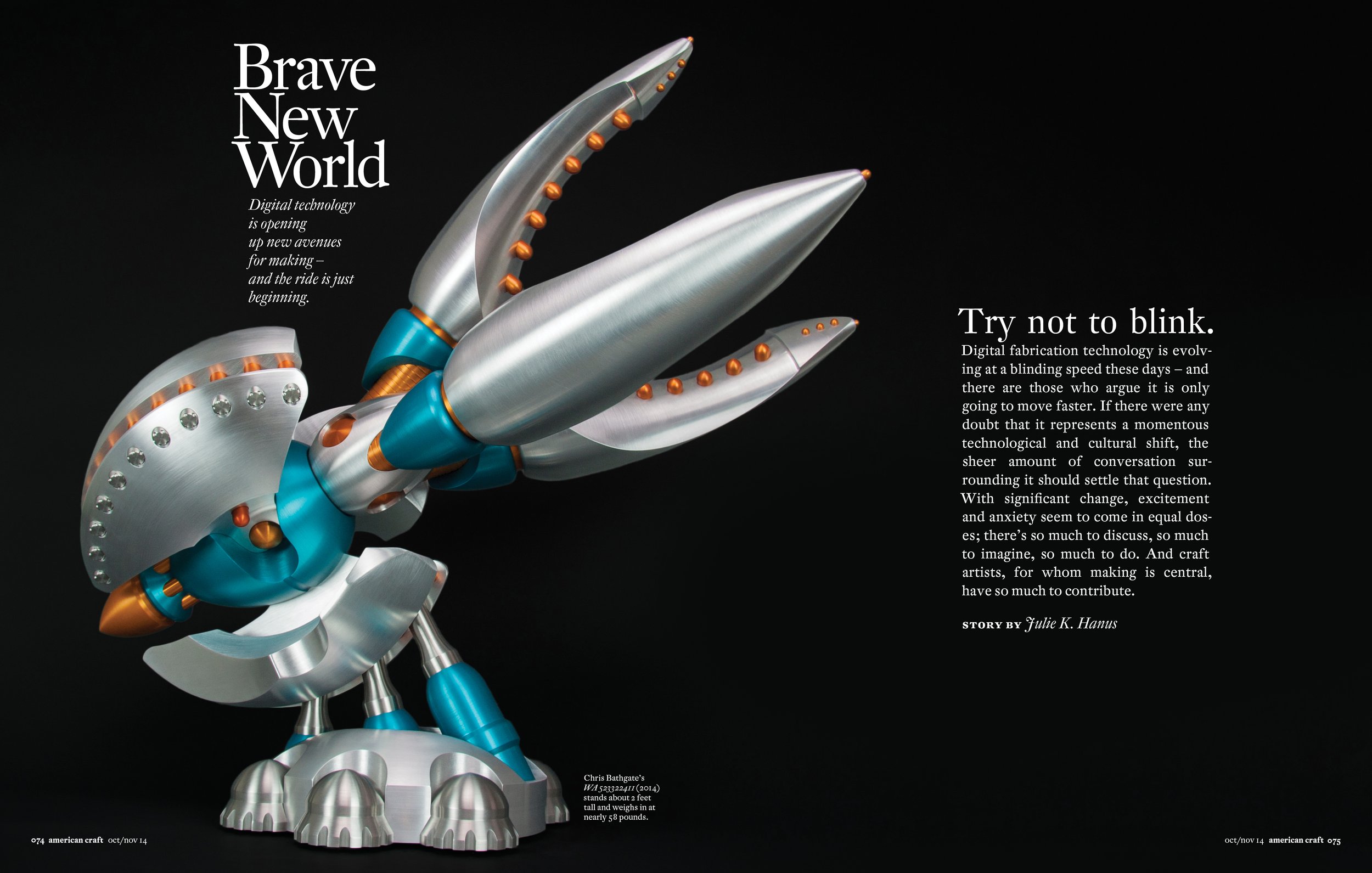
George Gendron: So I’m curious, when they described American Photographer to you, before there was anything to look at, how did they describe the magazine? What was the concept?
Mary K Baumann: You know at that point in time the photography magazines were all gear-oriented and this was much more focused on the image—the image, and the art of the image, and the philosophy of the image, and the concept of the image. It explored the act more of doing the photography from a mental state of mind versus just the equipment.
George Gendron: And just featured exquisite photography. The reason I asked was that some of us thought of this kind of as a reincarnation in a way of Look magazine, but about photography for photographers.
Mary K Baumann: I think that’s a pretty good description. The beauty of the magazine, I mean it was a real entrepreneurial effort. And it was started with very little money. My recollection is that Alan Bennett somehow got the money through Alan Patrikof and it was, like, $250,000, which is just unheard of. I don’t know how they did it, but he was turning that money over constantly.
Will Hopkins: Weekly!
Mary K Baumann: Alan Bennett was just brilliant at keeping it all together. But the other thing is, because it was a showcase, they didn’t have to pay for images. The photographers wanted to be in the publication. So you didn’t have that overhead of photography...
Will Hopkins: ...because we were doing stories about them.
George Gendron: It’s interesting though, when you talk about $250,000, I was trying to start my own magazine back then and it was a regional magazine, so I suppose you could argue that it shouldn’t have been quite as expensive as American Photographer, but the people warned me—including Alan Patrikof, who I pitched and had several conversations with about my concept—the problem with starting with too little capital was you would invest your time and energy and your capital and the premier issue and then you’d be out hustling for more money and the subsequent issues would suffer.
That is a miracle that you guys were launched on something like $250,000 and were able to sustain that level of excellence. That makes some sense to me because I was following both that and American Health at the same time.
Will Hopkins: ...Haha! T George [Harris]!
Mary K Baumann: We used to joke that Will could only do magazines with American in the title...
Hopkins in his studio at 14th Street and 5th Ave, in Manhattan. The American Health offices were downstairs. Photograph by Michael Robert Soluri
George Gendron: Well, you were doing that, but you were also doing redesigns of Forbes, Sports Afield, Architectural Digest. I think you did L’Express in France. Do you mind if I ask, I’m just really curious for all of the designers who were out there right now, what did you guys charge for redesign back then? Just ballpark.
Will Hopkins: Oh, well, I don’t know. It wasn’t a lot.
George Gendron: Well, it’s, it still isn’t a lot. [Laughs]
Will Hopkins: I mean, it wasn’t. I don’t have any idea of what it was. But they took me to France and dined me and wined me and took me to the South [of France] and all that kind of thing. And I had a great time. I don’t know how much I made from that.
George Gendron: Yeah, that’s the French. I was trying to acquire—this is after that time period, but when I was running Inc.—a magazine called L’Entreprise, which was Inc. in France, and the same thing—they wined and dined me. I couldn’t believe it. And they would take you sailing and they would, they reminded me of the Japanese. It was kind of like, “Well, we have to get to know you before we can even consider doing business with you.” And then at the end they refused to sell it to me.
But I look back, that is one of the most enjoyable courtships I ever had professionally. So here you are, you are the quintessential New York designer, and then you leave.
Will Hopkins: Mm-hmm.
George Gendron: You leave New York and you go to Minneapolis. Did your bride, or future bride, have anything to do with that?
Mary K Baumann: We were married at that time and we were partners in our firm, Hopkins/Baumann. And we were doing, on a regular basis, a children’s magazine called Kids Discover. And we were trying to do a number of book projects. This was after 9/11. And I’m originally from Minnesota. And we said, “You know, we’ve got to think about getting out of New York. It’s getting too expensive and we can really work anywhere. So we found this great loft on the Mississippi River, on the northside of Minneapolis, and bought it and moved out here and have not regretted it since.
George Gendron: Is that the place that Patrick and I saw when we were out there with you?
Mary K Baumann: Yeah.
George Gendron: That place was spectacular.
Will Hopkins: Yeah. We love it.
Mary K Baumann: So we can live and work here—and hopefully die here. And, I mean, the interesting thing about being—and you probably not being in New York—when we were in New York, all of our friends were in publishing in some way, shape, or form.
Here our friends are architects, doctors, teachers, photographers, and other people too. But it’s a much more, I guess, realistic way of living. It’s not so much focused on just one industry.
George Gendron: Yeah, I understand that. Well, even here in Boston, I have to say, it can lead to a kind of professional “bubble” that you’re in, in terms of, you know, your friends are other editors and designers, illustrators, photographers, and so on. And, I don’t know, I have to say, selfishly, I’ve always found those people to be extraordinarily interesting to hang around with.
But I’m curious when you guys, well, I guess since you announced to your friends and colleagues that you were leaving, and this is post-9/11, that probably didn’t come as quite the shock because there were a lot of people who were thinking about whether they wanted to stay in New York at that point.
Mary K Baumann: We thought that people would say, “Are you out of your mind?” But they didn’t. They said, “Minneapolis? Oh, that’s a good idea.” Coincidentally, we were living in a building on the west side called The Apthorp which is one of the great west side buildings. And it had been sold and they were going to turn it into condominiums.
And we were in a rent-stabilized apartment and, I think, paying $1,700 a month for 2000 square feet. And they were going to sell our apartment for $4.5 million. We said, “They’re gonna try and get us the hell out of here.” So that was another motivating factor to move.
George Gendron: So we’ve talked about a small town in Arkansas, we’ve talked about Munich, we’ve talked about New York, Chicago, Minneapolis. I’m curious whether either or both of you feel that location kind of has an impact on people who are creating print products.
Will Hopkins: Oh, I think it does.
Mary K Baumann: I don’t know so much anymore. I mean, it certainly has expanded. I don’t think it’s as New York-centric as it used to be. However, I mean certainly the talent in New York is... oh, I don’t even know if that’s true anymore.
We did this magazine called American Craft, which was a bimonthly. And we had people working all over the place. We had great photographers in every city that we needed. So I think you can really do it. I don’t know if there’s the business acumen outside of New York for publications.
Books & Miscellaneous Works
George Gendron: No, that’s interesting. I hadn’t thought about it quite from that perspective. We were talking recently with Dorothy Kalins about Metropolitan Home, and she was talking about how interesting it is to take a look at a magazine like Inc., that was very much influenced by its founder, Bernie Goldhirsh, who was a graduate of MIT and was really enamored of innovation and entrepreneurship. And Fast Company was very influenced by the fact that its founders had worked at the Harvard Business Review. Wired, out in San Francisco, impacted obviously by the fact that you had the birth of the PC out there and kind of the concentration of technologists.
And so I’m not sure you could have launched Inc., or Wired, or Fast Company in New York given the unbelievable influence of Wall Street. It’s just something we think about sometimes. It’s that connection between where you are and where you work and the publication that you...
Mary K Baumann: I do think that the East Coast does dominate the news cycle.
George Gendron: Yeah. That’s interesting. Will, I’m curious, going all the way back to where we started this conversation in a small town in Arkansas, did that play a role in your career in any way? Was that an advantage for you? And I asked that because we were talking to Kurt Anderson about Spy magazine and Kurt made the comment, you know, it’s ironic when you think about Spy and how urbane a magazine it was in many respects. Kurt comes from Nebraska and Graydon Carter comes from Canada. And so we got into a conversation about how their naïvete about New York was actually a source of competitive advantage. They weren’t part of that crowd. They didn’t want to be a part of that crowd.
Will Hopkins: Yeah. I could see that.
Mary K Baumann: Knowing Will, and being from Minnesota, when I moved to New York, I felt it was an advantage not being from New York, because I was humbler. I wasn’t as arrogant. I was curious. And I think Will has that same quality. People liked you.
George Gendron: You’re pointing out something that’s true, which is, if you grew up in New York or around New York, a lack of humility and arrogance were considered to be sources of competitive advantage.
Will Hopkins: Right? Exactly. Exactly. Yeah.
Mary K Baumann: You know, people would always tell us that we were approachable. We would see people and we were kind to people and we were good with our employees and all those sorts of things. Which, I think, maybe not coming from New York, it was definitely true in both of our cases.
George Gendron: Yeah, I can see that. The first time I ever actually met you face to face was when Patrick and I were out doing a presentation for your event, and you know, by the time we got on the plane to come back, I felt like I had known you my whole life. As I do now!
Mary K Baumann: Right. Exactly!
Will Hopkins and his partner in life and work, Mary K Baumann, continue to do client work from their loft overlooking the Mississippi River in downtown Minneapolis. For more information, visit their website.
Back to the Interviews
A Little Romance
A conversation with photo editor and author Kathy Ryan (The New York Times Magazine, Office Romance).
A conversation with photo editor and author Kathy Ryan (The New York Times Magazine, Office Romance).
—
THIS EPISODE IS MADE POSSIBLE WITH THE SUPPORT OF ISSUES MAGAZINE SHOP
Photograph by Philip Montgomery
Kathy Ryan’s career journey began in Bound Brook, New Jersey, at St Joseph’s Catholic School. Her third grade teacher, Sister Mary William, had a thing for great works of art. And, as it turns out, so did Ryan.
“I got it. I so got it. Looking at the pictures and just understanding. It was like, ‘Wow, I get it.’”
That understanding of the power of the visual led Ryan to a focus on art in college—on lithography and printmaking. But the solemn life of an artist wasn’t for her. She hated being alone all day. She loved working with people. She wanted to be part of a team.
Kathy Ryan was made for magazines.
After starting her career at Sygma, the renowned French photo agency, Ryan was hired away by The New York Times Magazine in 1985. She had found her team.
In her tenure at the Times, she has collaborated with all the bold-face names: Jake Silverstein and Gail Bichler (the current editor-in-chief and creative director) as well as Adam Moss, Rem Duplessis, Janet Froelich, Peter Howe, Diana Laguardia, Gerald Marzorati, Ken Kendrick, and Jack Rosenthal. And between and among them they’ve won all the awards—and created one of the world’s truly great magazines.
Recently, Ryan’s work at the Times took a new turn. Inspired by her collaborations with the most gifted photographers in the business, Ryan started making a few pictures of her own.
She had always been mesmerized by the way the light hit the Renzo Piano-designed Times headquarters. But on this particularly sunny morning, Ryan pulled out her phone and snapped a picture. Then she took another. And another. She started seeing pictures everywhere. Portraits, abstracts—whatever caught her eye. Encouraged by friends and colleagues, she posted them on Instagram with the hashtag #officeromance.
After a career of looking at pictures, she is now making them. And that led to her glorious book, Office Romance, published by Aperture in 2014.
We talked to Ryan about her passion for the art of work, about the thrill of discovering incredible talent in unexpected places, and about the responsibility that comes with sending photojournalists into harm’s way.
A collection of Ryan’s favorite covers spanning her 38-year career at The New York Times Magazine.
“When I started out, you turned to magazines and papers and books for the photos. That was it. And now it’s just completely different. People see hundreds and hundreds of pictures every day. So where is our place in that?”
The New York Times Magazine braintrust (from left): editor Jake Silverstein, creative director Gail Bichler, and Ryan. (Photograph by David La Spina/Esto)
George Gendron: I’m going to dive right in here with a question that I shared with you before, and that is that the vast majority of people involved in, certainly in print media, never really understand or understood what a photo editor really does. And I think people really don’t understand, especially in this day and age, what the job really entails. And so I’m wondering if you were standing up in front of, let’s say, a class of young, would-be photojournalists and videographers, how would you answer the question, What does the director of photography for The New York Times Magazine—what do you do?
Kathy Ryan: Well, I work with a team of photo editors. We’re a small team and the job is basically to conceptualize and figure out the photographic approach for each of the stories coming up. So we do, you know, coming up with ideas and assigning photography to accompany text-driven pieces. And that’s the majority of what we do at The New York Times Magazine.
But we also initiate ideas for photo essays, where it comes from either a photo editor or a photographer, and we pitch those ideas in the same way a story editor would. So the photo editor’s job is basically—the director of photography, my job—is to work with a team, look at the stories that are coming up, and as fast as they’re going onto the schedule or being assigned to writers or being assigned to photographers, we make it happen. So in some cases that might mean, it’s a writer driven piece, and the main thing I do is with the team, figure out what’s the best approach.
Do we want to approach it in a documentary fashion? Send a photojournalist? Do we want to approach it as studio portraiture? Is this a story that calls for conceptual photography where we come up with an idea and create it in-studio, whether that’s still life or something where we build sets? There’s all different ways to commission the photography.
So first thing is meeting with Gail Bichler, the creative director, Jake Silverstein, the editor-in-chief, and some of the other top editors, depending on the story. And we have a weekly art direction meeting with the team, where we’ll meet and talk about what’s coming up. Jake will give us an idea and what this photography or art—sometimes it’s illustration—needs to accomplish.
Most of the time we are making the photography happen at the same time the piece is being written. Sometimes we have the manuscript first, but we’re often simultaneously figuring out what we’ll do for the photography.
Voices from Pavlika Photographs by Antoine d’Agata/Magnum & Citizens of Kyiv Photographs by Alexander Chekmenev
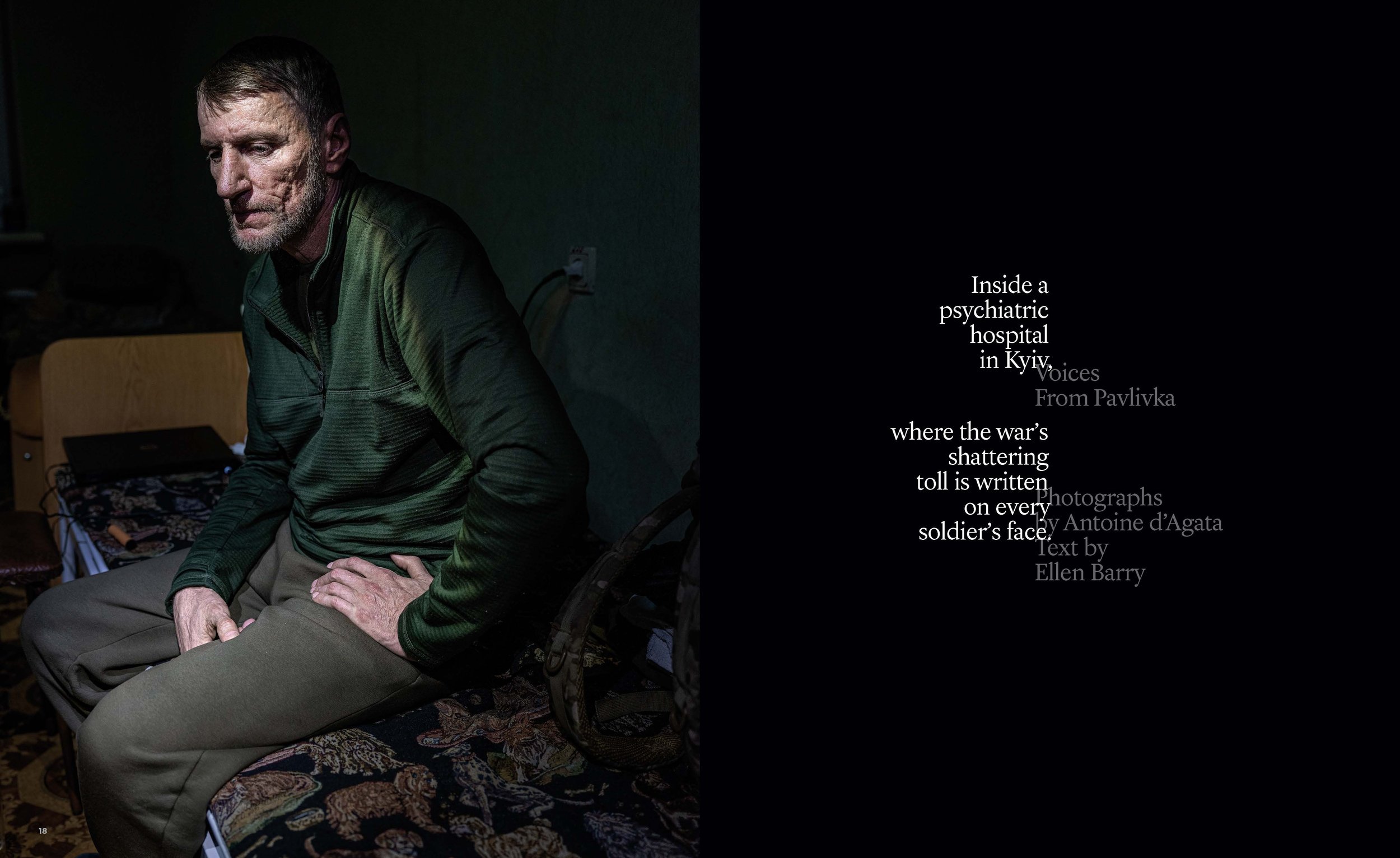
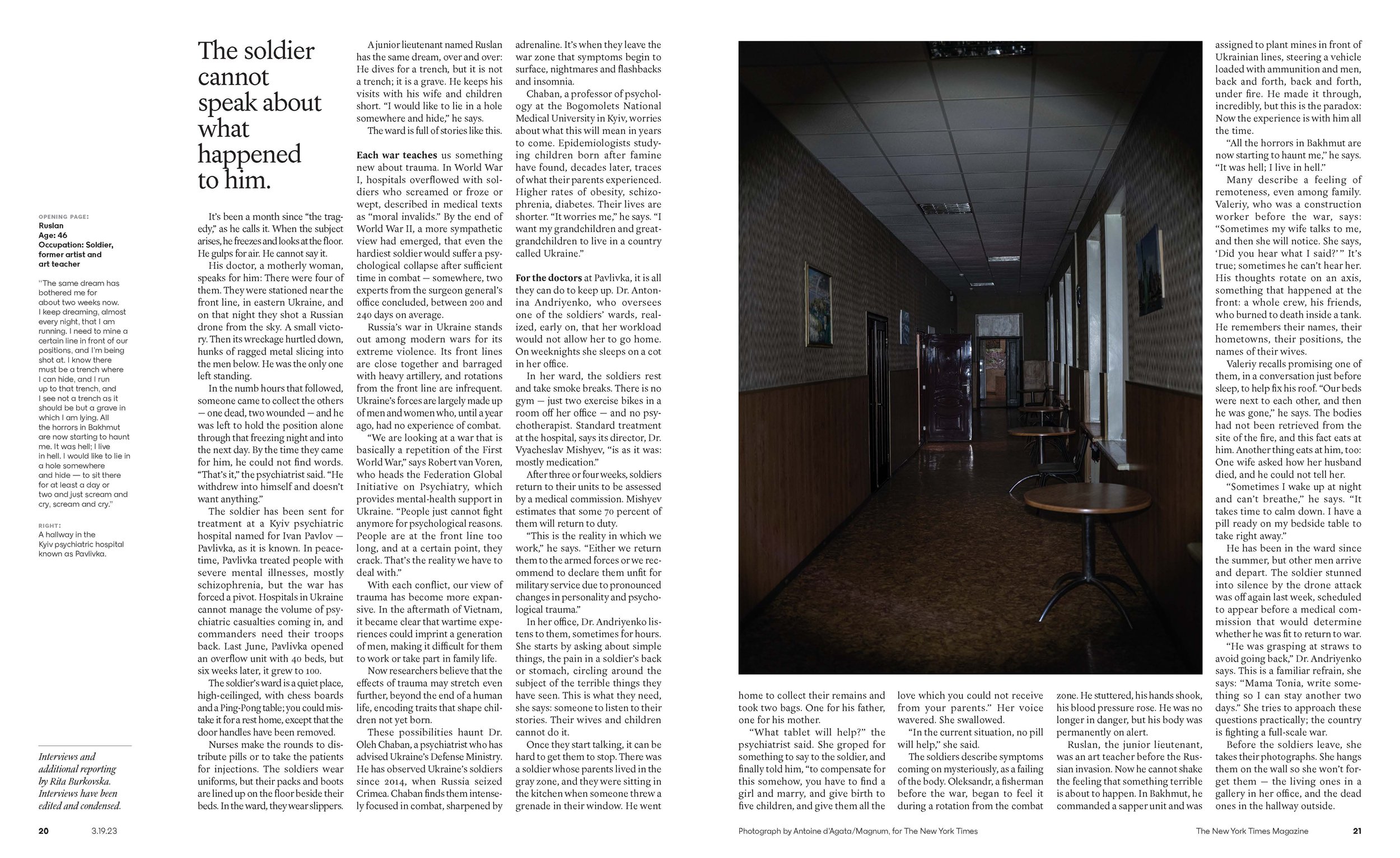

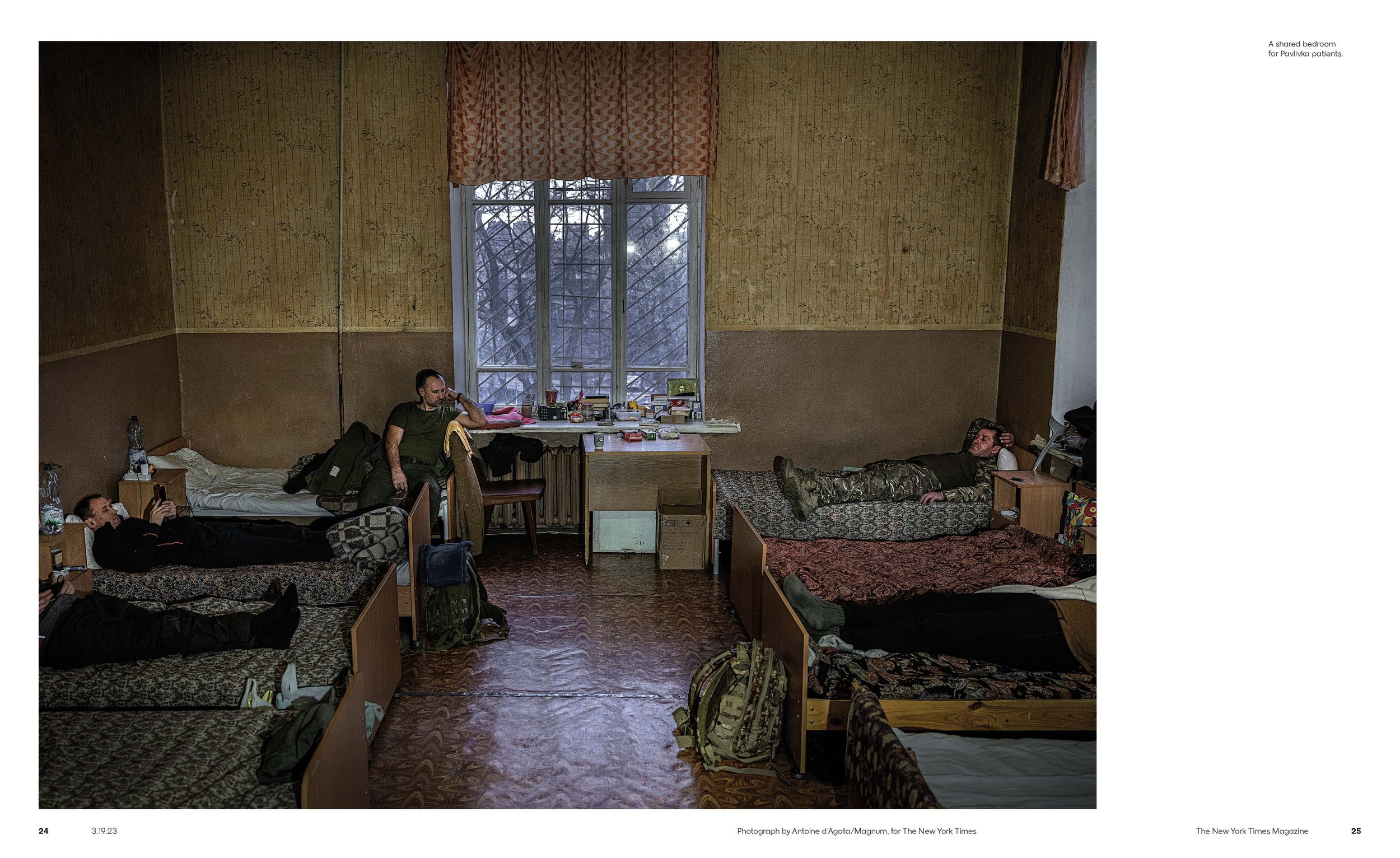
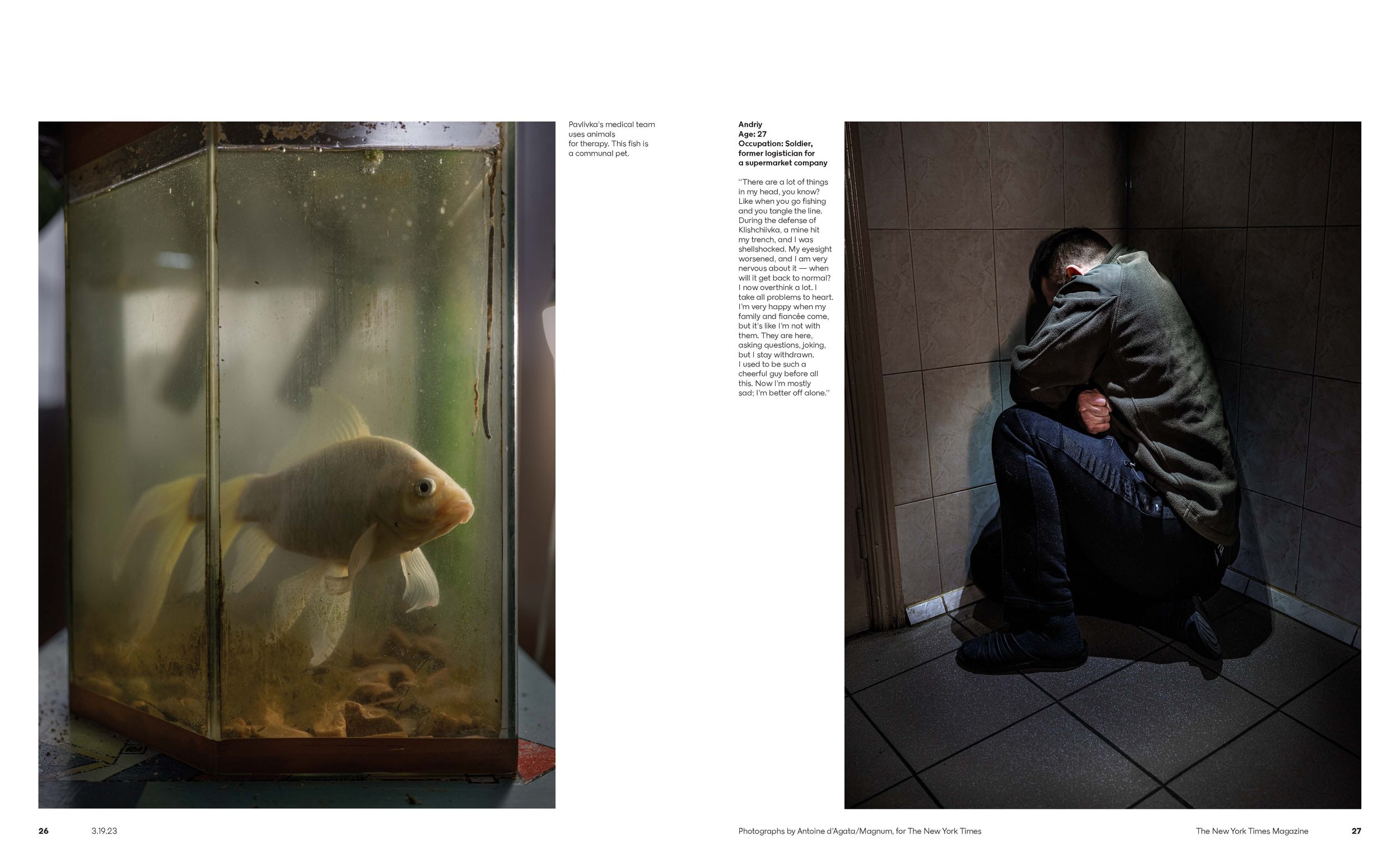

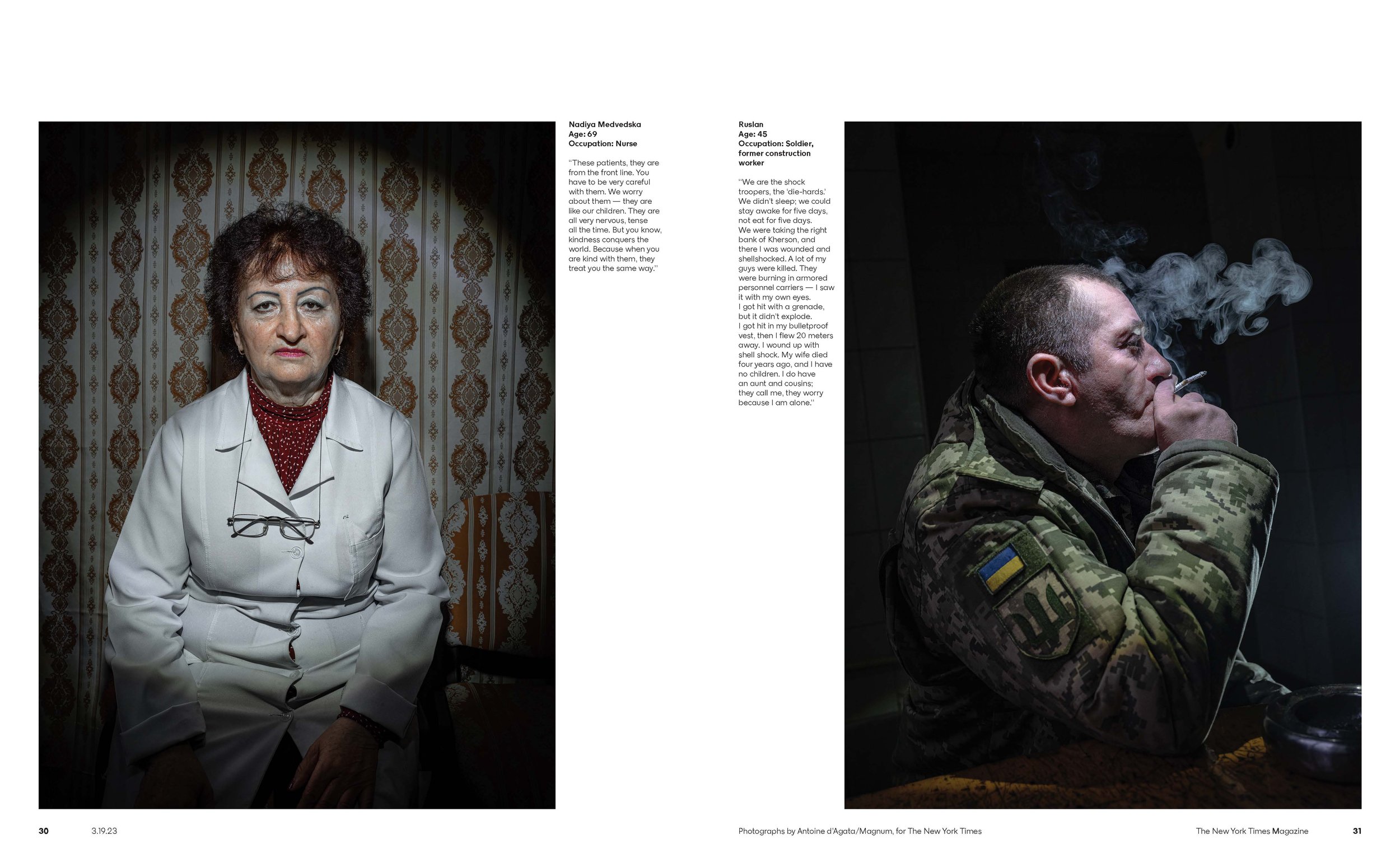
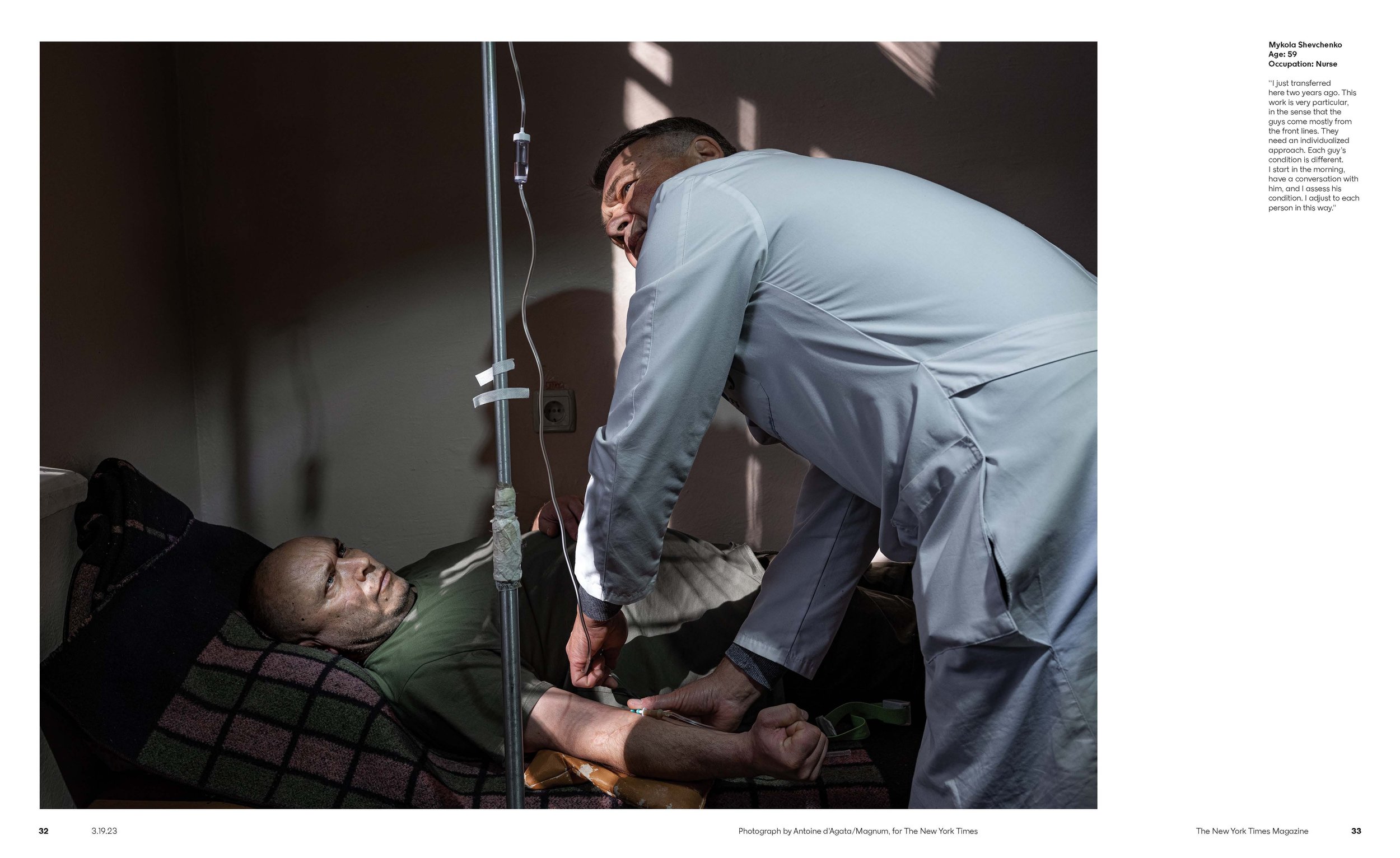
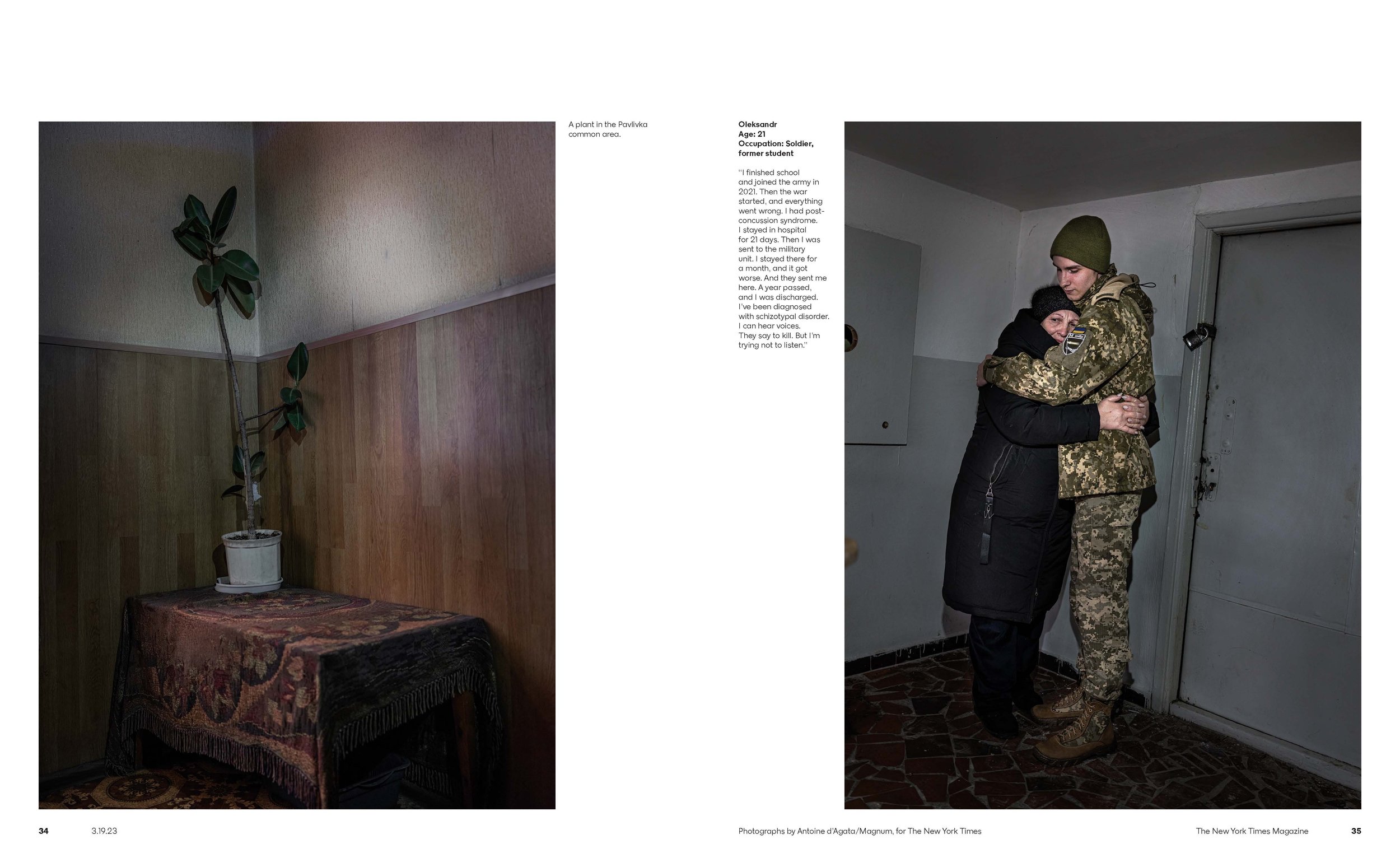
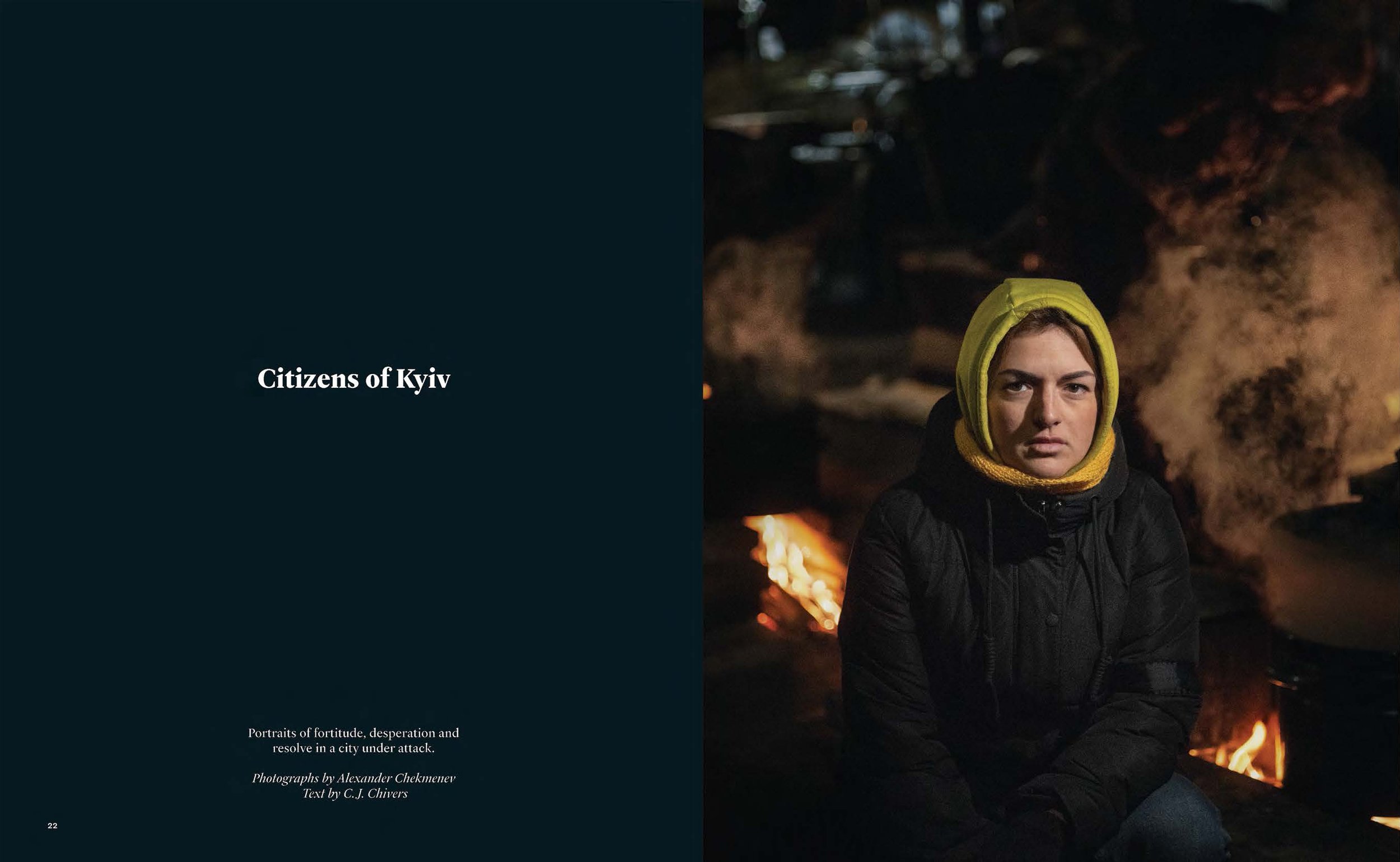
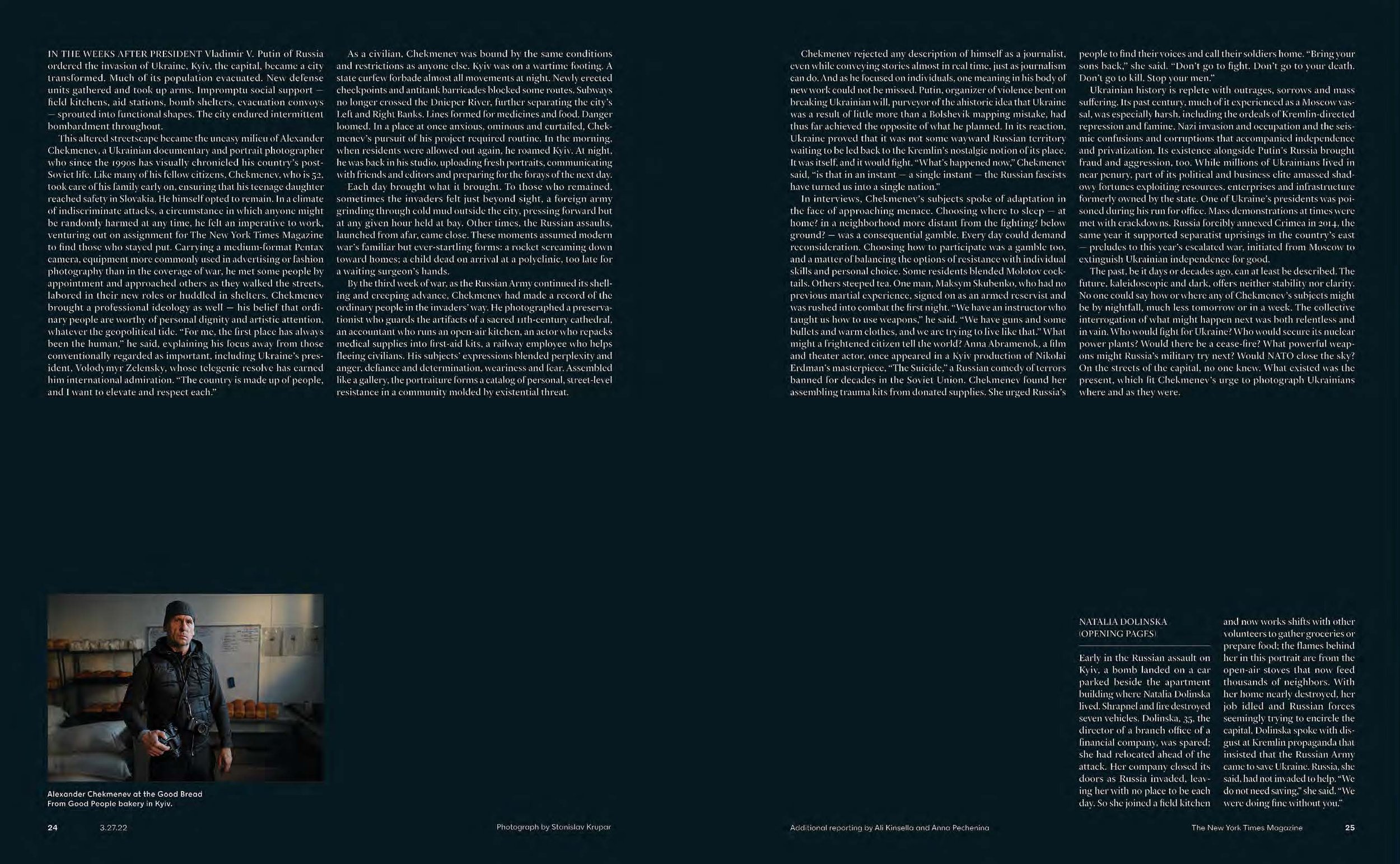

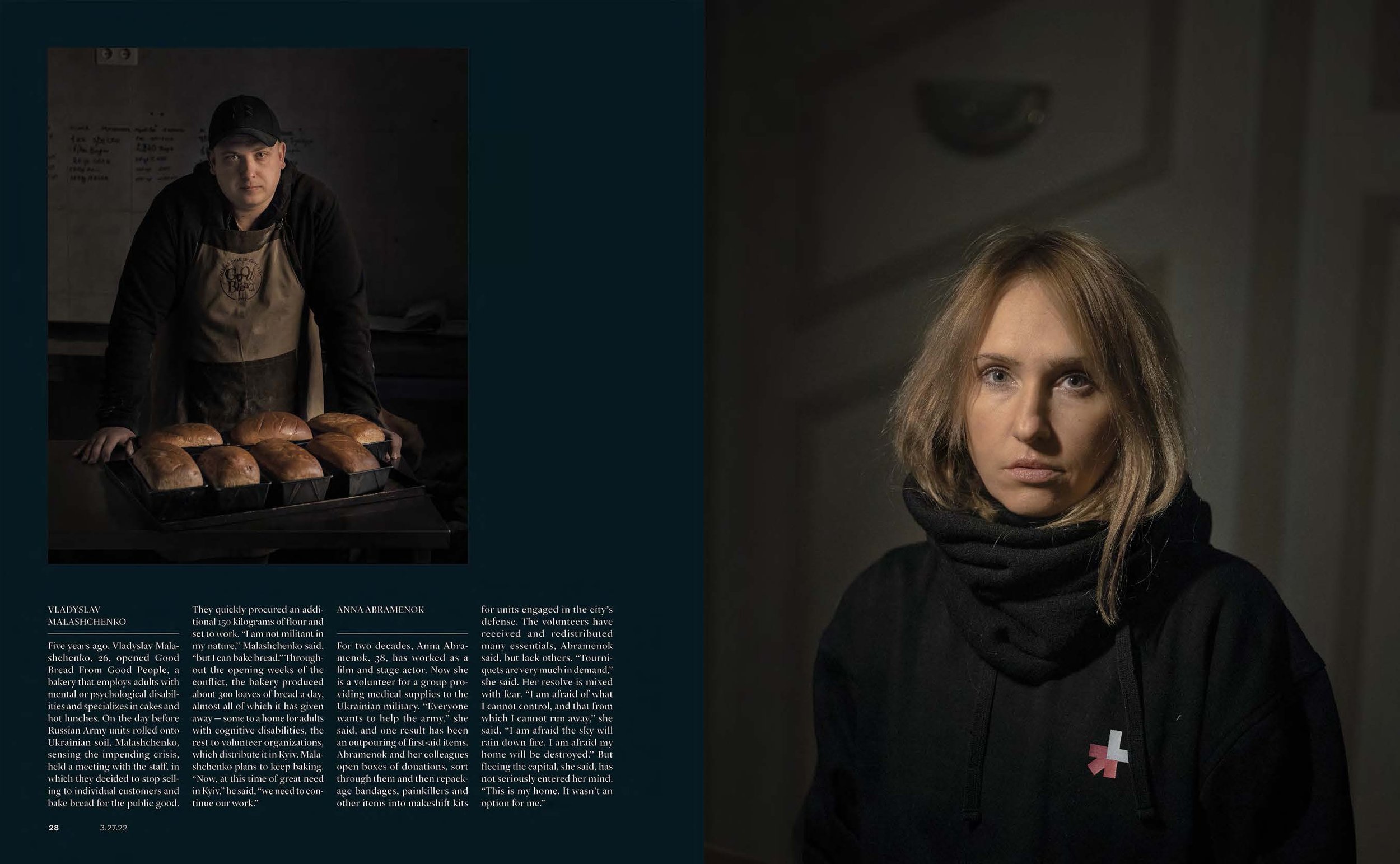
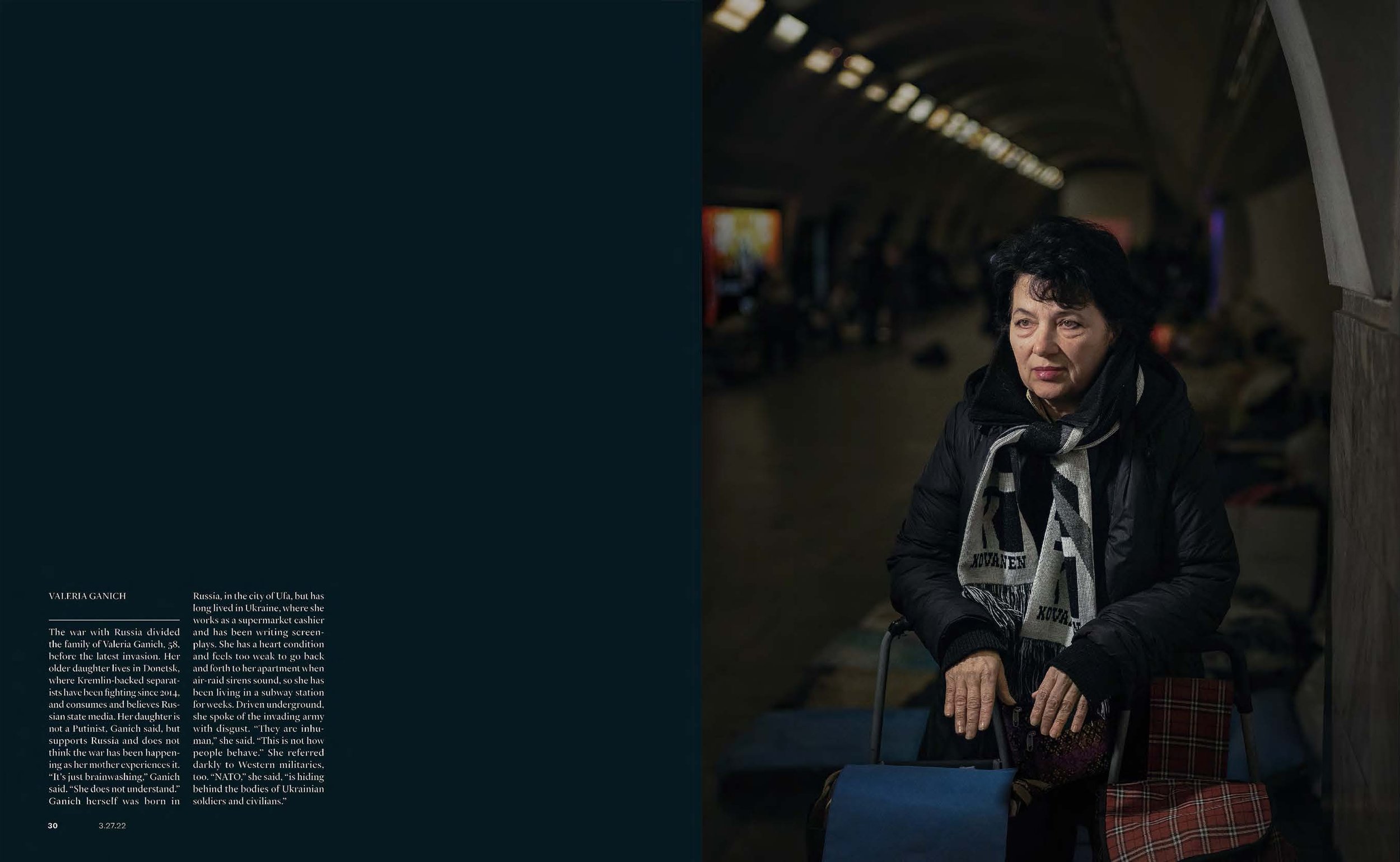
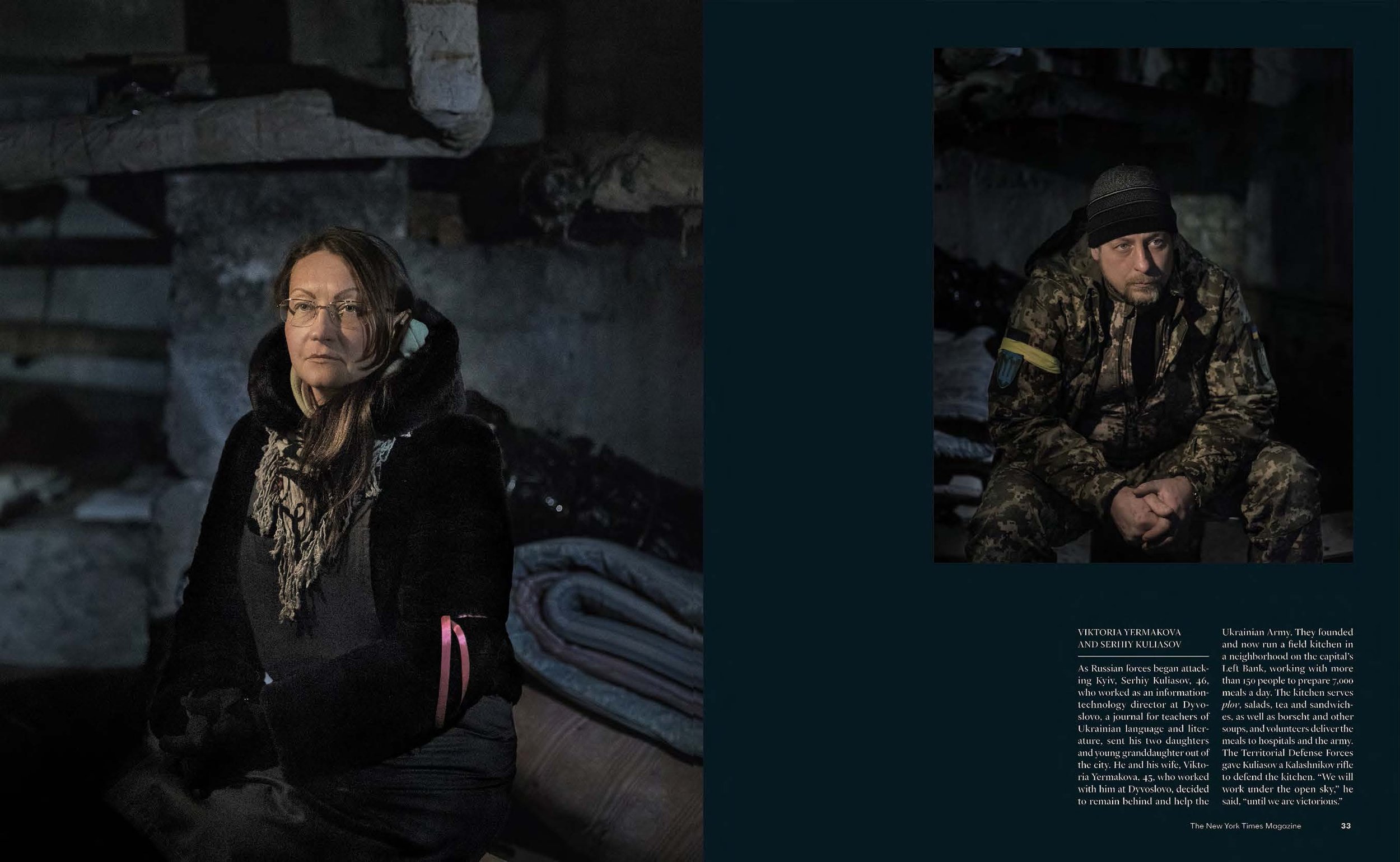
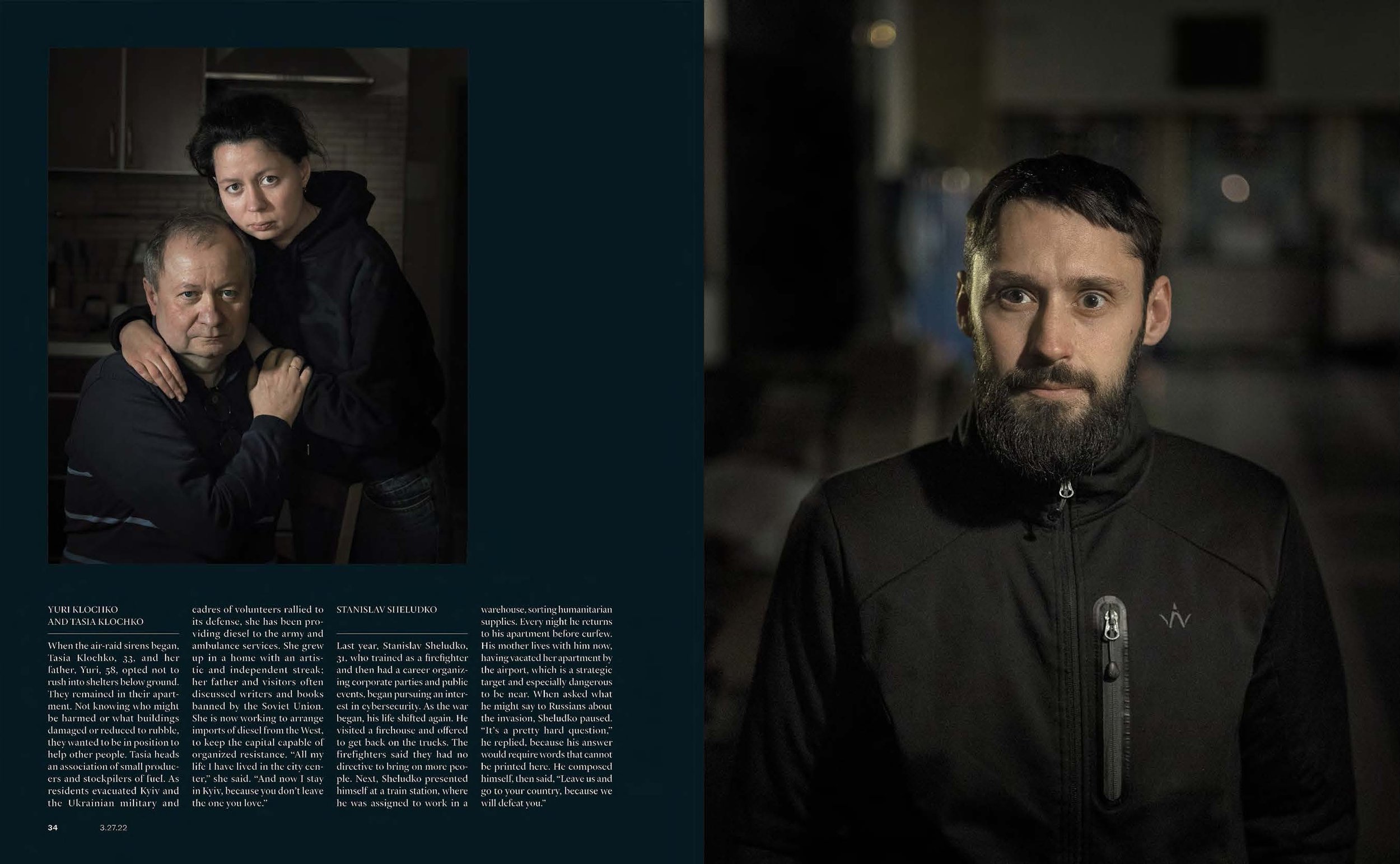


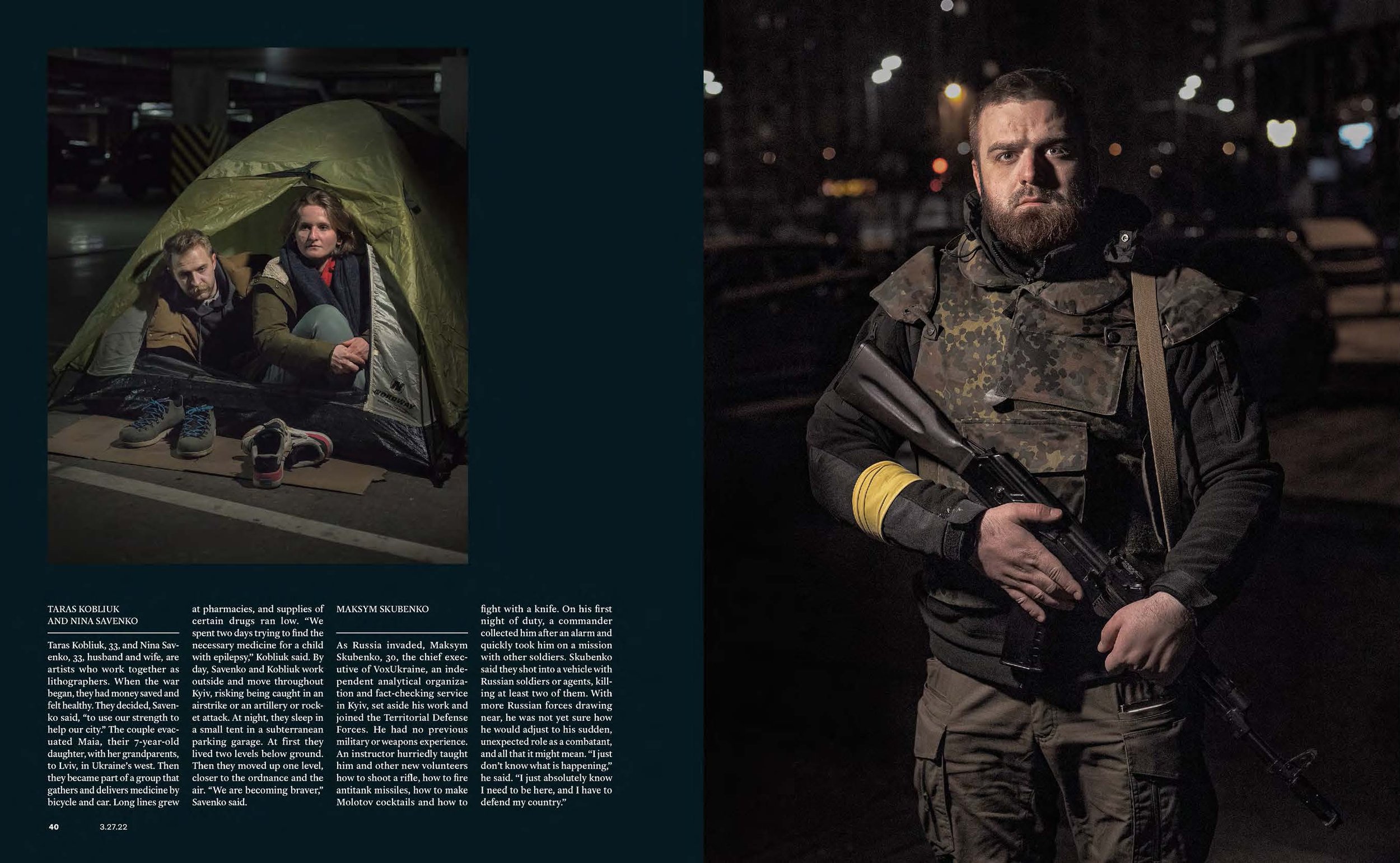



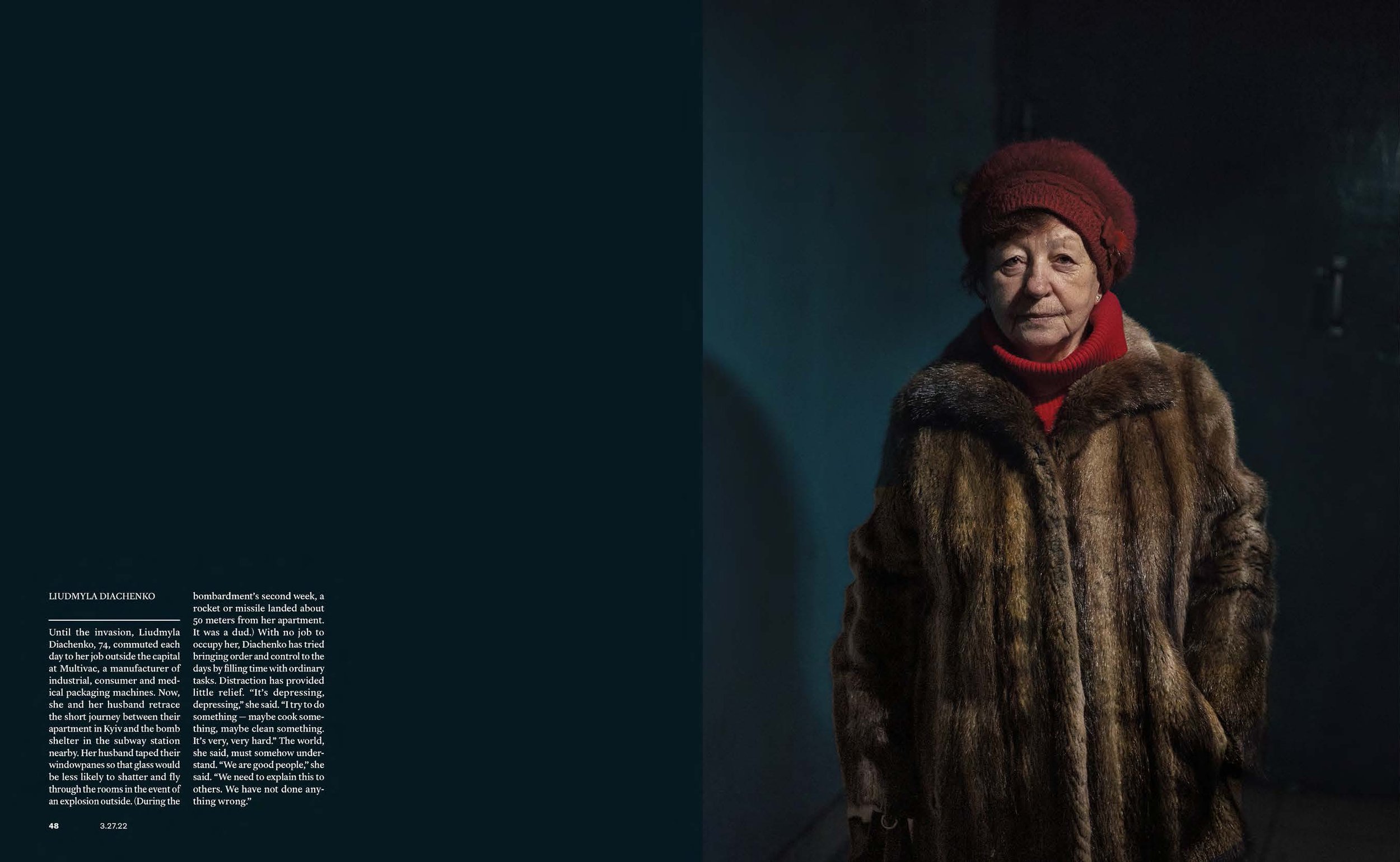
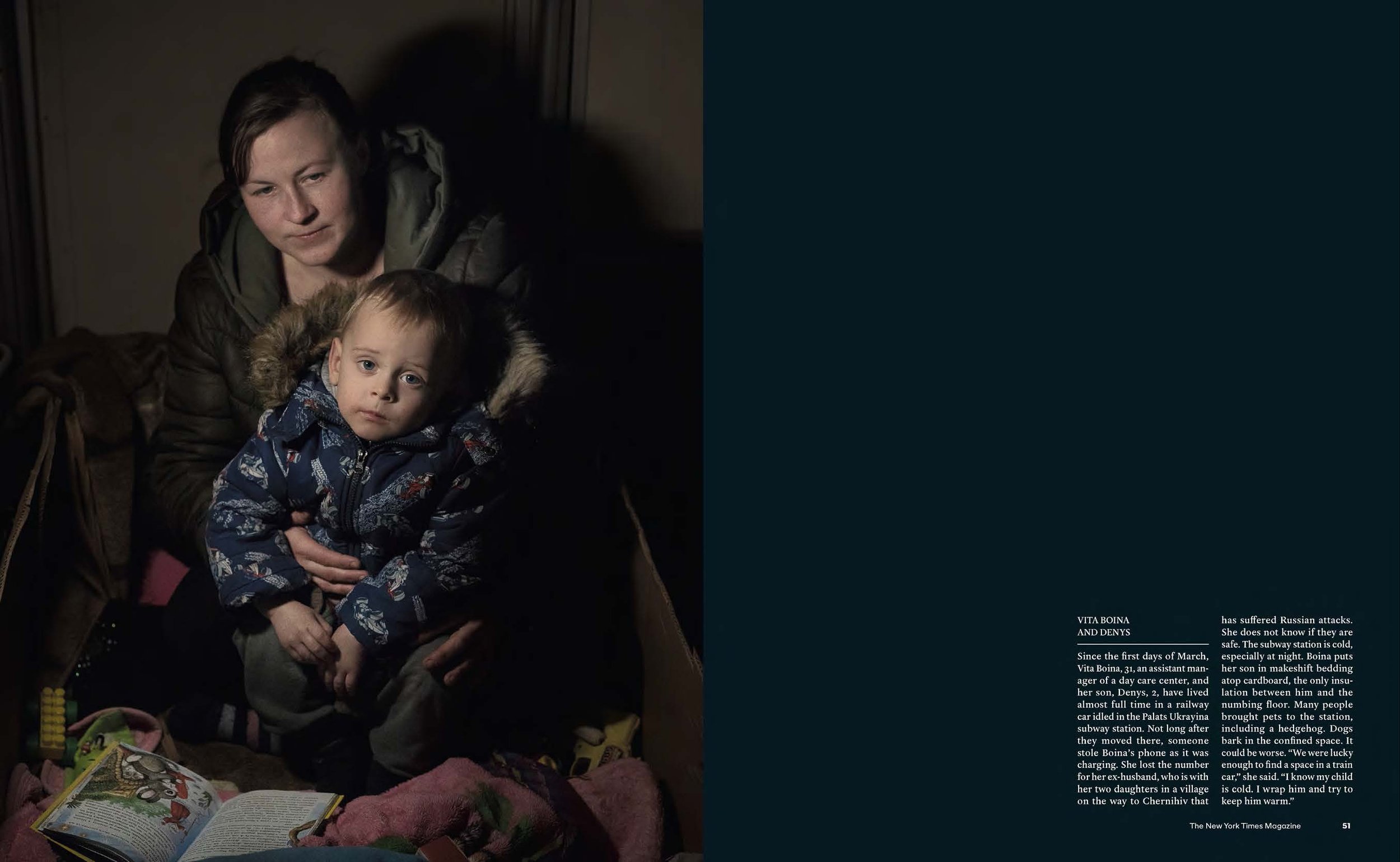
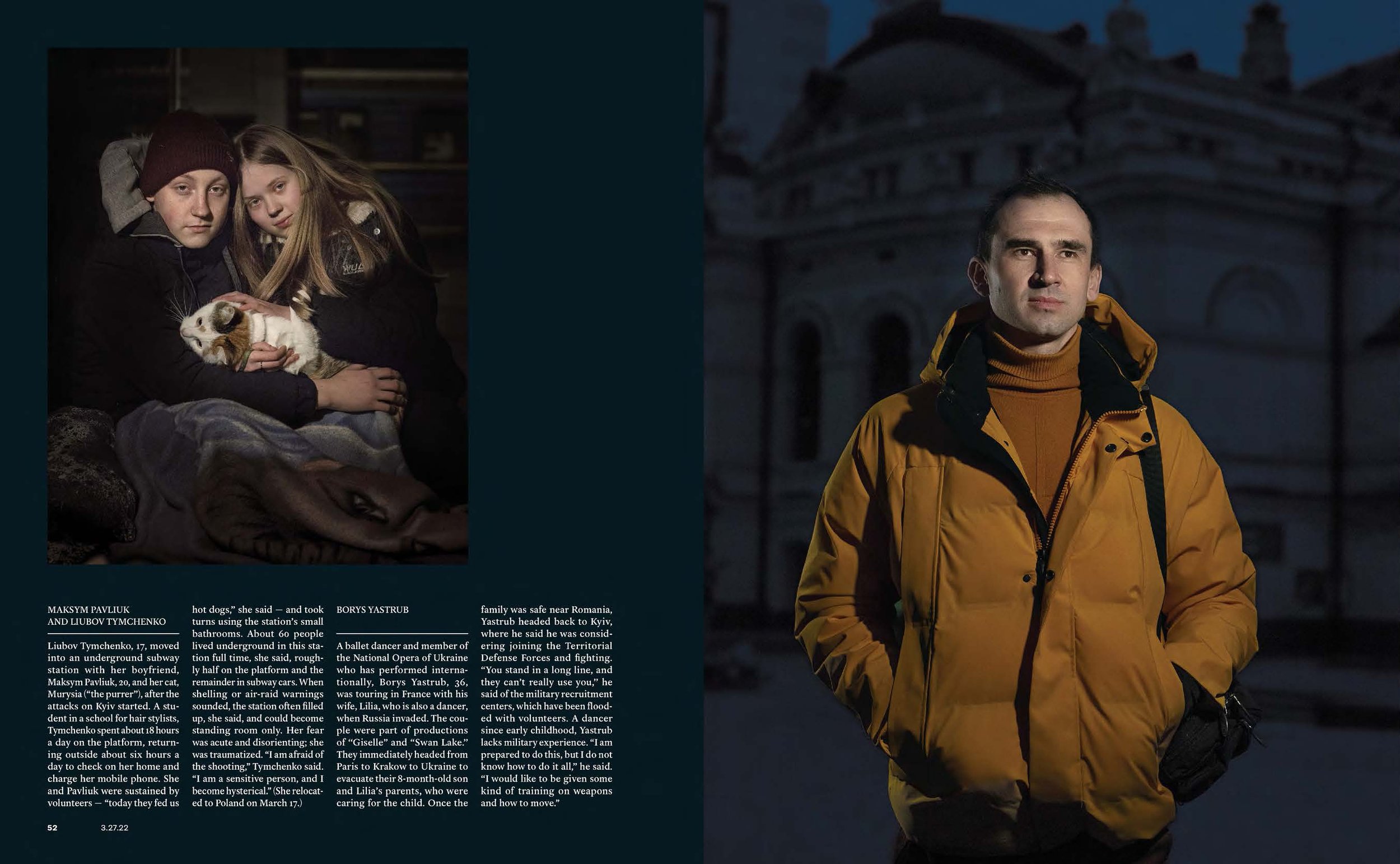
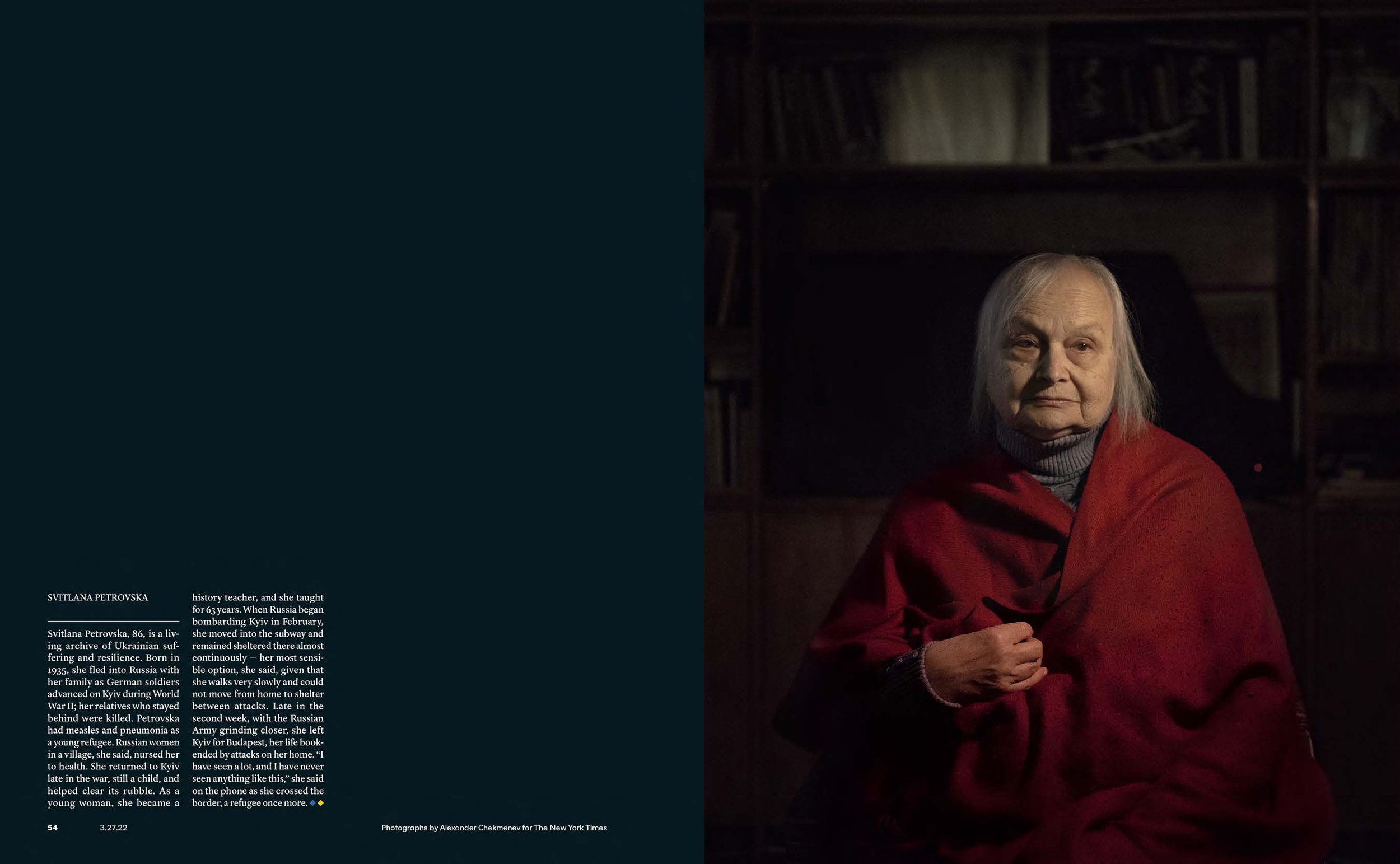
We cover all sorts of subjects. More so than almost any magazine. Our range is very broad—from the big, internationally reported pieces to The Way We Live Now features to the cultural stories. So we kind of cover it all, which, of course, makes it the most exciting job on the planet. Because one minute we’re producing a big shindig in Hollywood, and the next minute we’re doing something far more serious—figuring out how to cover the invasion in Ukraine. But then, of course, the most important decision you make is who’s the best photographer for the assignment.
And then figuring out the cover is its own thing. So a lot of my time, and Gail’s, and Jake’s, and our team’s, is spent figuring out what we should try to do for the cover. And right away: Is it photography? Is it illustration? Is it a photo illustration? Do we think this is a story that we want to go documentary? So that gives you some idea.
The other day I was talking with Jake and he said something I thought really made sense. He said, “Basically we do three things. One is artistic, obviously. One is the expression of ideas. And then the third is deadlines.” You know, it’s a weekly and I cannot stress enough that it’s always at an accelerated pace.
Just about everything we do is full throttle, meaning as fast as we’re assigning one thing, we’re thinking about the next one. We’re trying to get it lined up.
George Gendron: I’m curious, you talked about the cover. You have one luxury that the rest of us in the mainstream magazine industry have never had, which is you don’t have to worry about newsstand sales. And I think that’s really liberating. And I’m curious about your response to that. So how do you think about the cover? What’s the role of the cover within the Sunday paper?
Kathy Ryan: I think the role of the cover is to stand out. So when somebody opens up their Sunday paper, their bundle, you want the cover to call attention to the stories inside. So I think of it, first and foremost, to get people into the magazine. We’re very aware of how fortunate we are that we don’t have to compete on the newsstand. That has always been a gift because it just means there’s a freedom—the decisions can be made in terms of what’s the best artistic approach.
And Jake is a big believer in that. What does that mean? Maybe it means we can do something a little bit more obscure, less direct. Sometimes we have a chance to play around with more poetic imagery that wouldn’t stand out on a newsstand, but it’s a really thoughtful, beautiful picture.
Many of the conversations that we have, between me and Gail and our design and photo teams, have a lot to do with that. What works as a cover image is often different. But then again, our covers vary widely. There’s not a look to them because one week it’s our Great Performers portfolio that we do once a year, pegged to the Oscars. And then another week it might be pure documentary photojournalism. So we have a tremendous variety and we try to shift according to the needs of a particular story.
The Joys and Challenges of Sex After 70 Photographs by Marilyn Minter
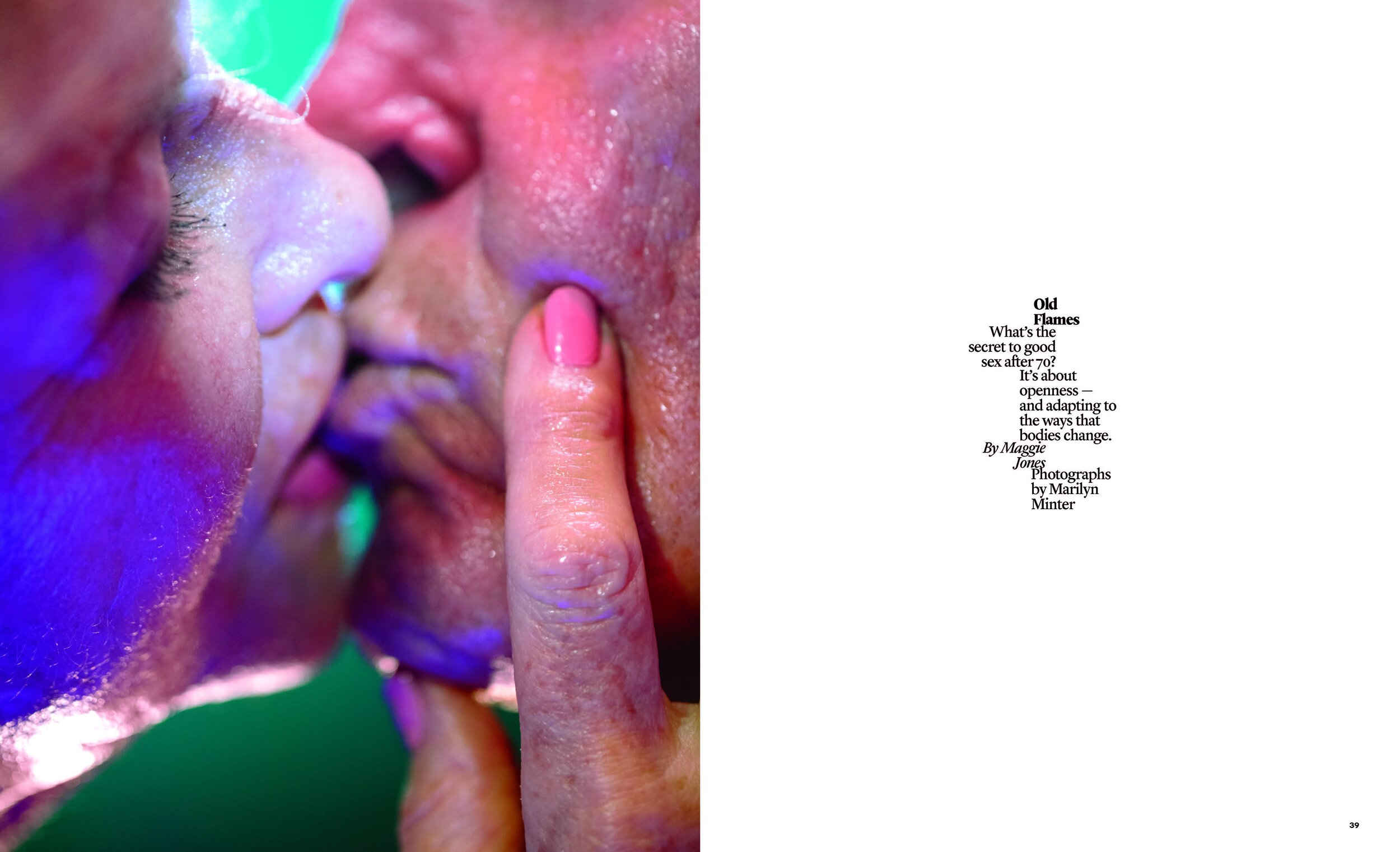
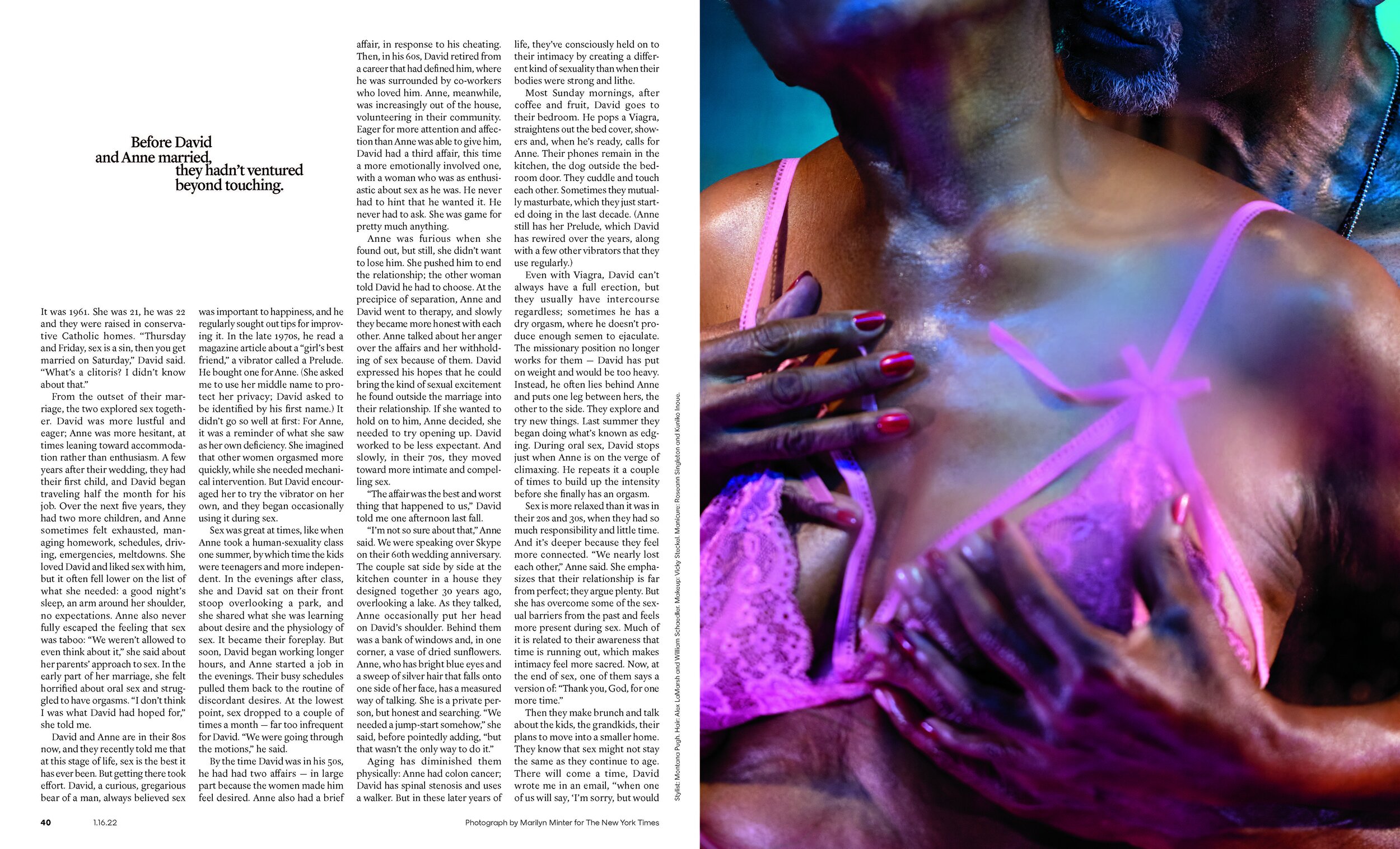
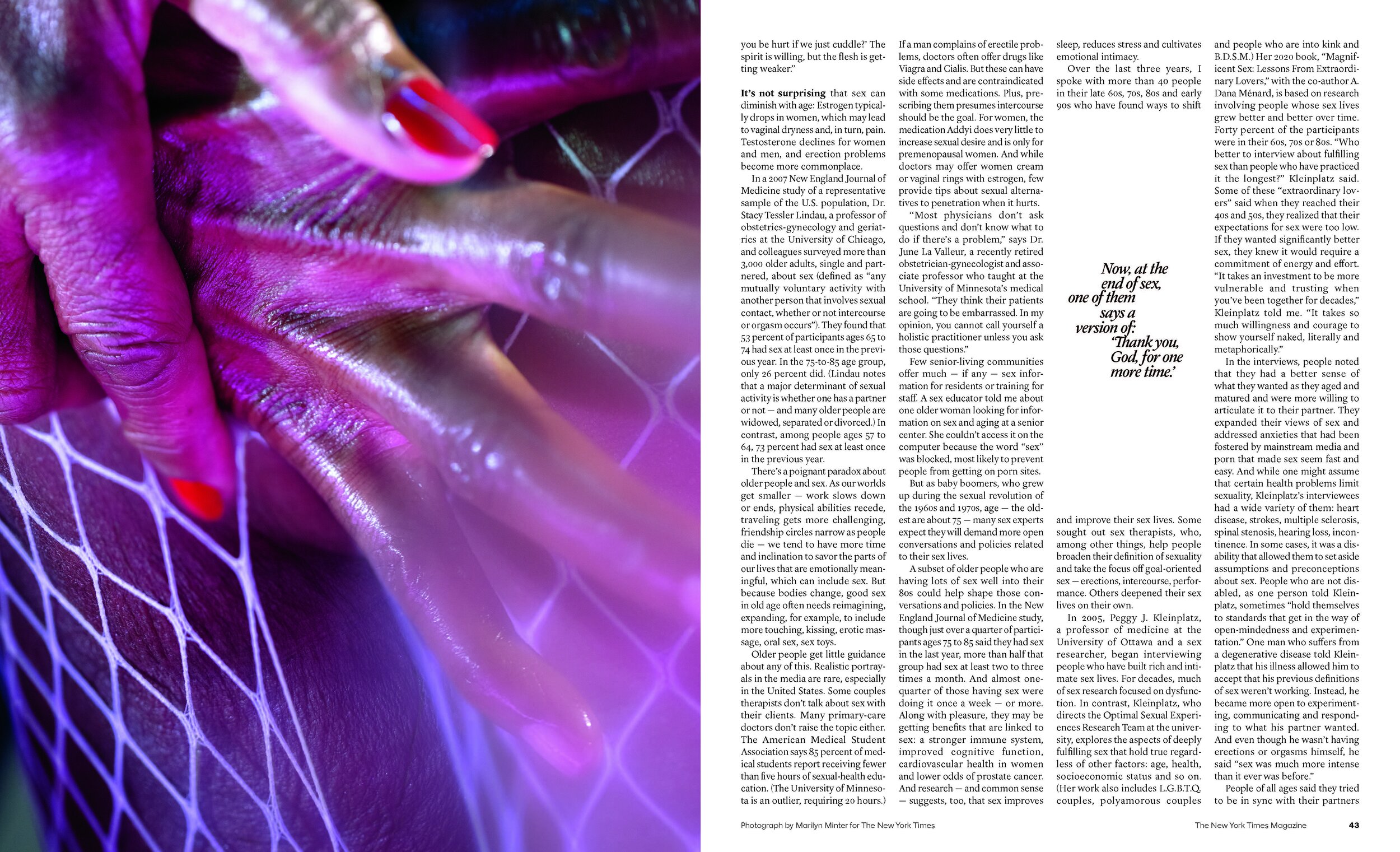
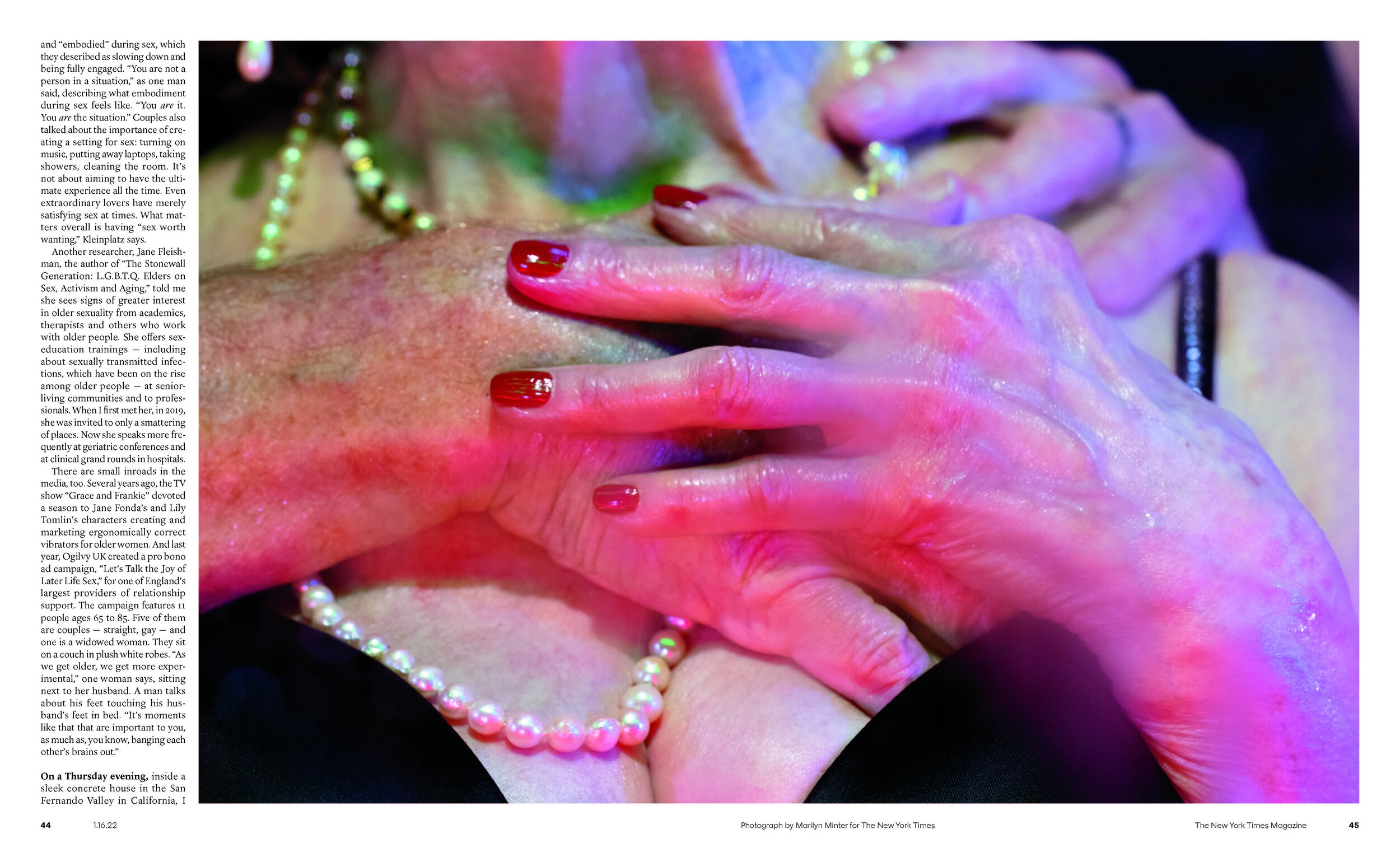
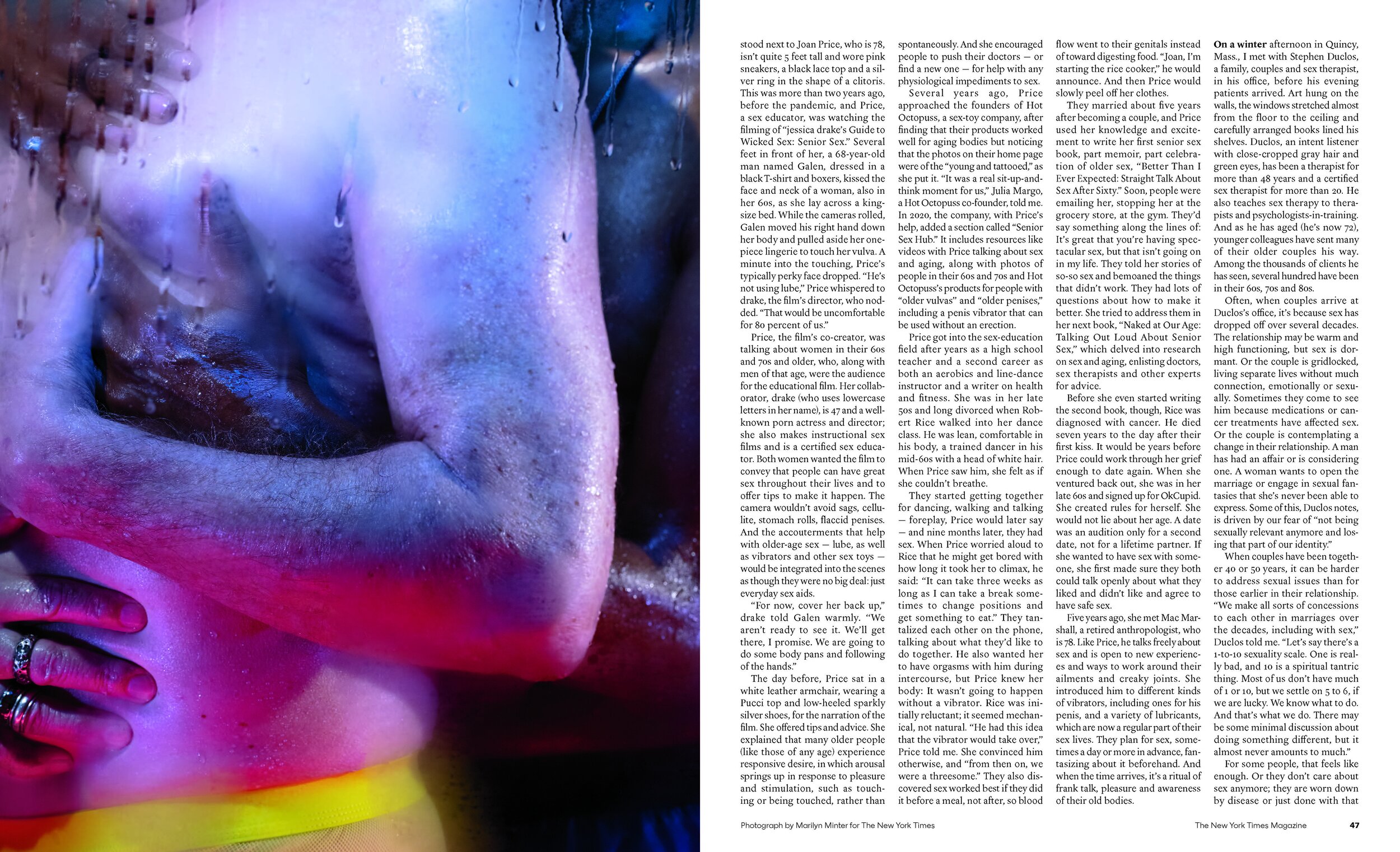
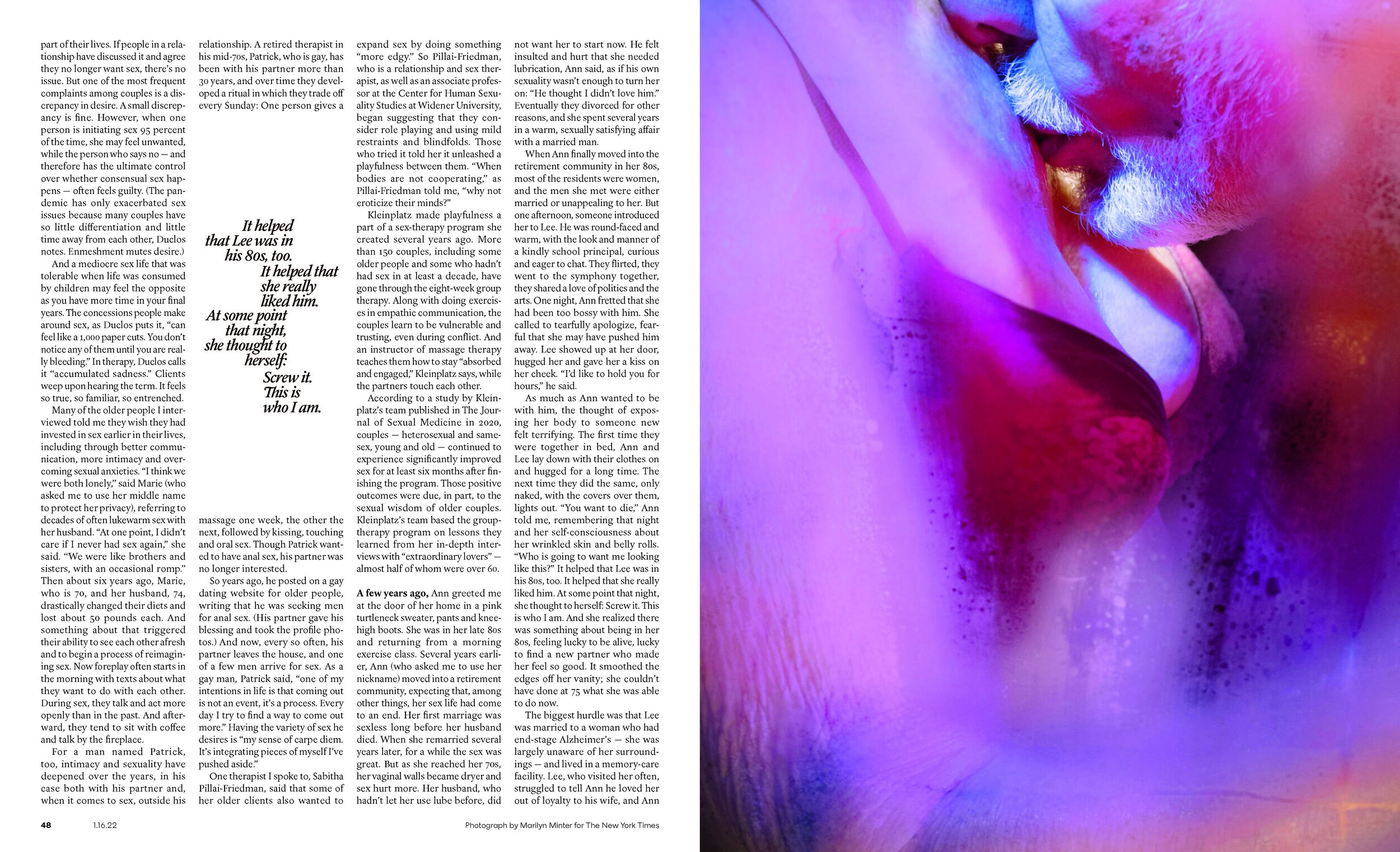
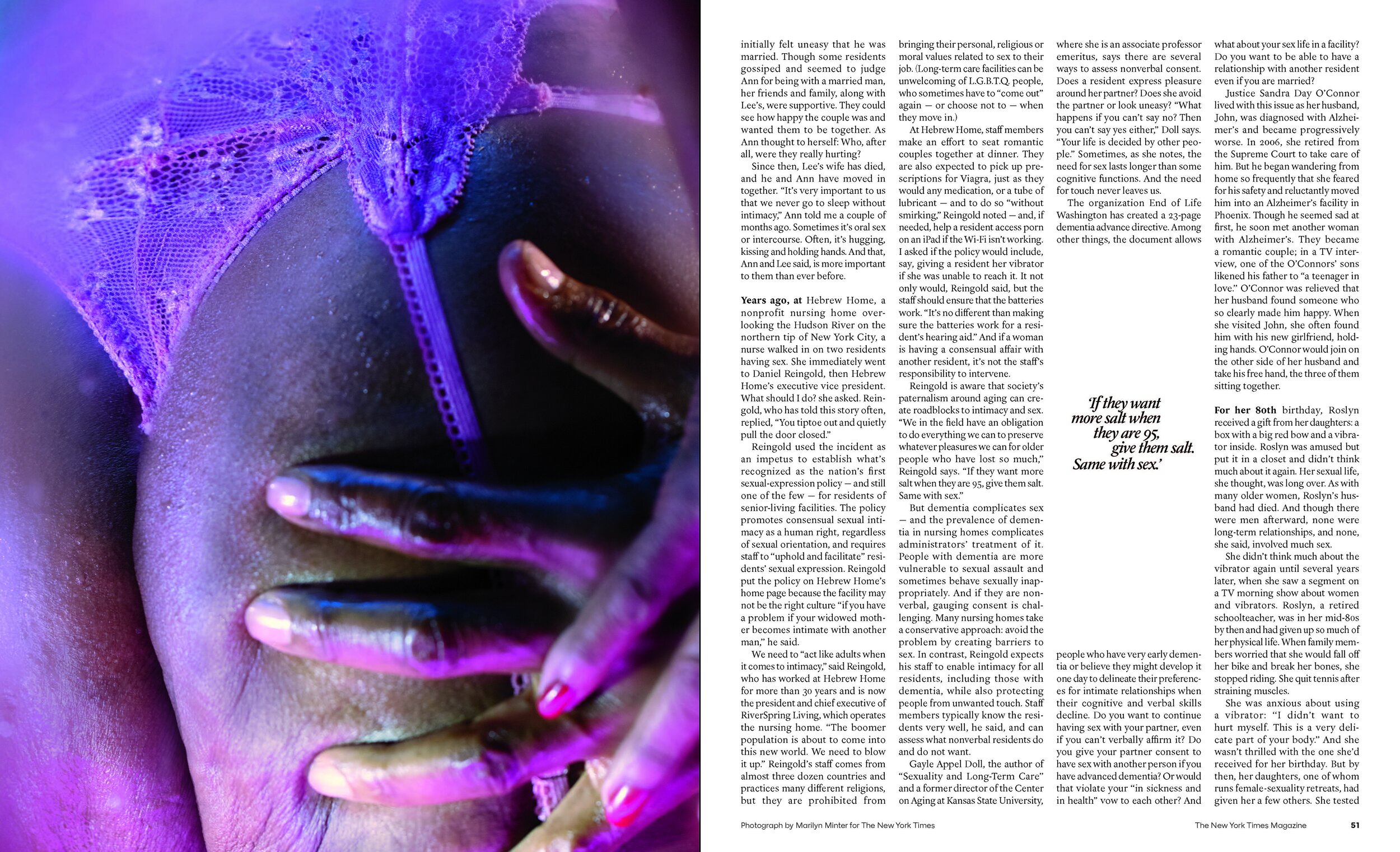
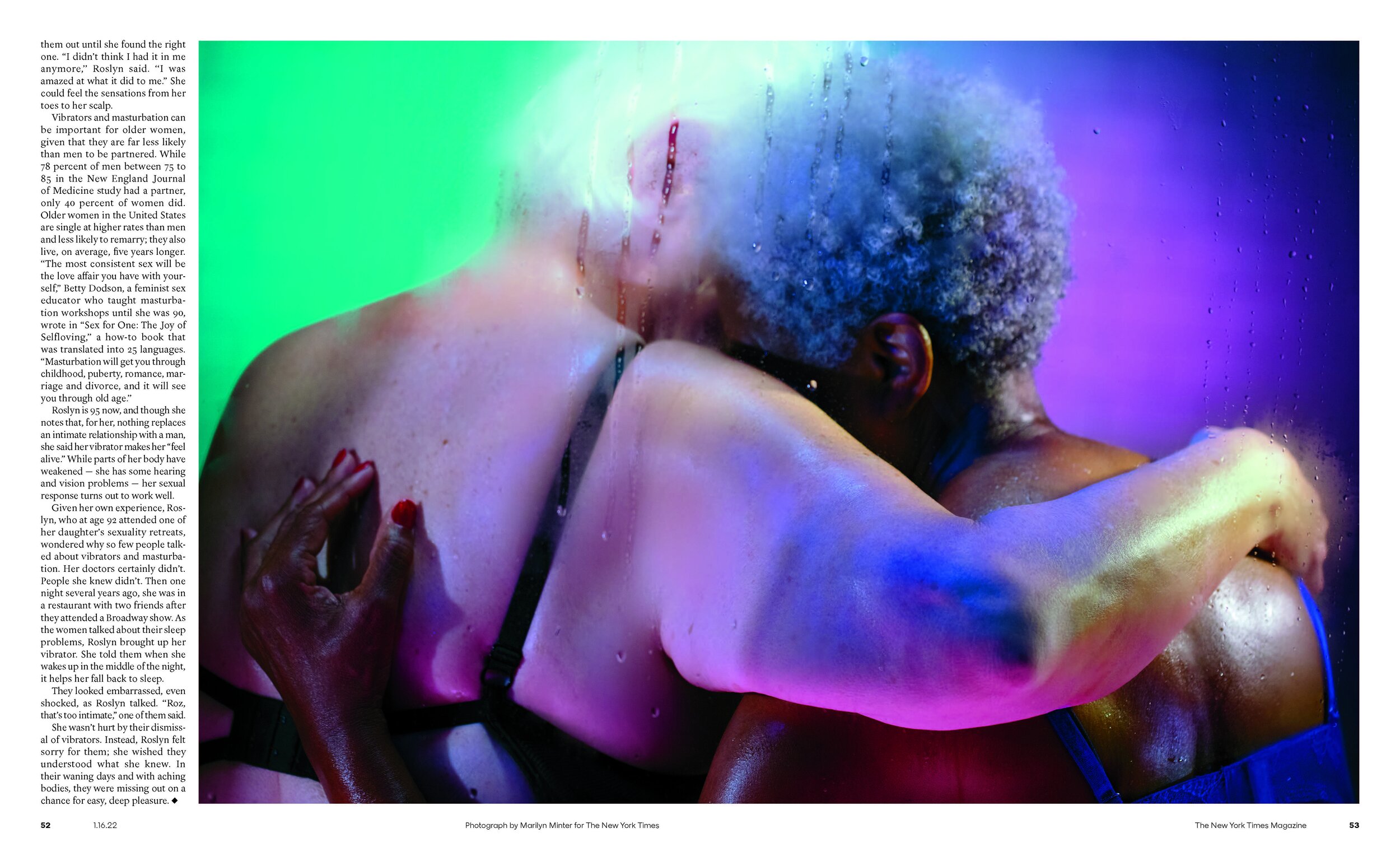
George Gendron: I’m assuming that you must be willing to take certain kinds of risks with your cover. Can you think of a recent one where you and your team felt, “Okay, this is a risk, but this is a risk worth taking”?
Kathy Ryan: Yes. And you have to take risks, otherwise you won’t do something memorable, right? So often it’s when you take a risk that you make something that’s memorable.
I would say this year when we commissioned Marilyn Minter to do our cover story on sex after 70, there was a risk in that. And it was exciting. It was thrilling. Who knows what’s going to happen? Anytime you assign an artist—somebody like Marilyn Minter, who spends her time making her own artwork, marching to her own beat, coming up with her own thing she wants to do—it’s a little bit of a different thing than when you’re working with a magazine photographer who completely understands the rhythms.
But it was such a risk worth taking. Why? The subject itself is interesting. I think the headline was “The Joys and Challenges of Sex After 70.” And she’s a terrific artist who—it’s her territory. For years she’s been making work—early on feminists thought it was pornographic—but she always believed in a very liberated, free-spirited approach to sexuality and her artwork.
And I knew already from having worked with her before that she could rise to the occasion. She totally would. She’s just, she’s both the free-spirited, no-holds-barred, do-her-own-thing, artist. The rebel, as it were. And she also understands The New York Times. Like, going into it, that was the feeling.
And we had a lot of fun. David Carthas was the photo editor on the project and he produced the whole thing, which basically meant casting. We worked doing the casting of the people of a certain age, which was its own challenge. And then it was a couple days in the studio in New York with Marilyn and there was a risk. Who knows? Not only are we working with this artist, we’re working with people who are semi-nude. They’re in lingerie and, on the other hand, it was a high-impact cover. And I got a kick out of it because, when you look at the comments, there were people who loved it, loved it, and people who hated it.
And that’s an interesting place to be. How often do you do that with a magazine cover? It got a strong response. That’s the best. That’s the best, right? You know that from what you were just talking about—if you can take a risk like that, but of course you have to, especially at The New York Times, you have to do it in an intelligent way.
With this subject, it seemed like we could take that kind of risk. If we’re covering an extremely important, of-the-moment political story, that’s not a moment when you’re going to go and do something artsy, highly creative, risky, right? Because there’s certain other criteria we have to meet. That the cover needs to accomplish. And journalistically it goes into a different zone. But, we’re lucky enough that sometimes, after years of doing this, I have a sense of where there’s some latitude. And obviously, working with Jake and Gail and the team, Is this one where we can do something fun?
Every year we do a voyages photo issue, usually in the fall. And this year the theme for it was animals. And it was an idea that Amy Kellner, one of our picture editors had. She had been pitching doing animals for years.
And this was the year it got the green light. And this is always, for us, particularly exciting because the photo team gets to drive it to a large extent. And we started figuring out ideas along with story editors.
And one of the ideas that Sam Anderson, one of the writers, pitched was the Icelandic ponies. They have these funny small horses in Iceland that people love, and so that was one of the five or six photo essays that we commissioned. And I was thinking right away, Okay, if we’re going to do animals, we have to do something different.
“It all starts with somebody having the ability to compose the chaos of the world within the frame, the ability to see light. Because photography is always about light.”
So brainstorming with Amy, she said something like, “Maybe we should show them like they’re, like, My Little Pony Rainbow Ponies.” I was like, “Yes!” And then I thought of Gareth McConnell. A brilliant Irish photographer who does these fabulous—his pictures have an “otherness.” They breathe and shimmer with something else. Like he’s often doing still lives of flowers, his own personal work. They’re magnificent and there’s a shimmer to it, and the color comes out of darkness. Anyway, I could just imagine if we took him to those horses, he would do something magical.
In other words, it’s a way of saying his vision sees the magical and transcendent in the world. And we lined it all up. Rory Walsh on our staff and Jessica Dimson found the best horses in Iceland, worked the access to that, and then we worked with them to black out the whole stable.
So anyway, Gareth did brilliant pictures and one of his photos was ultimately the cover. And it was this fabulous multi-colored horse, slightly out of focus, coming out of darkness. That’s when I think we’re at our best, where it’s unexpected because instead of just seeing the beautiful, natural horse, we had a wonderful back and forth. And I just felt like, “Hey, this is a chance we can transform it into something.” So we love to do that, if we can.
George Gendron: It’s interesting listening to you talk because one of the things that people have said about the magazine, and you in particular, is that you seem to challenge the boundary between photojournalism and fine art in a way that I’m not sure magazines have very often.
Kathy Ryan: I think that’s right. It was something I picked up on early in my career. And I got very excited by that because it allows the magazine to look different, to do something unexpected. Artists sometimes tap into something. In portraiture, it’s an undercurrent of what somebody’s psychological being is. They sometimes have what I think of as a sixth sense, as do, sometimes, photojournalists.
Like sometimes an artist has developed a universe of imagery that works for us. And that’s what’s fun about it. Just knowing that. And then sometimes you can do the reverse, where you take someone pure documentary—years ago, I had Paolo Pellegrin do the Great Performers portfolio, all documentary, behind the scenes with the actors.
And that was just great because he would not normally be doing that. So he goes in there with a whole other frame of reference. The tricky thing is there’s certain stories that it works. Like you would not do that with a major conflict story obviously, or a major issue-oriented story.
Those are the moments when we would be talking about something entirely different where you have to work with seasoned pros, who know how to navigate that kind of heart-wrenching, difficult, dangerous story and make quick decisions in the field, and obviously, have vision. It all starts with somebody having the ability to compose the chaos of the world within the frame. The ability to see light. Because photography is always about light.
The Voyages Issue: Iceland Photographs by Gareth McConnell

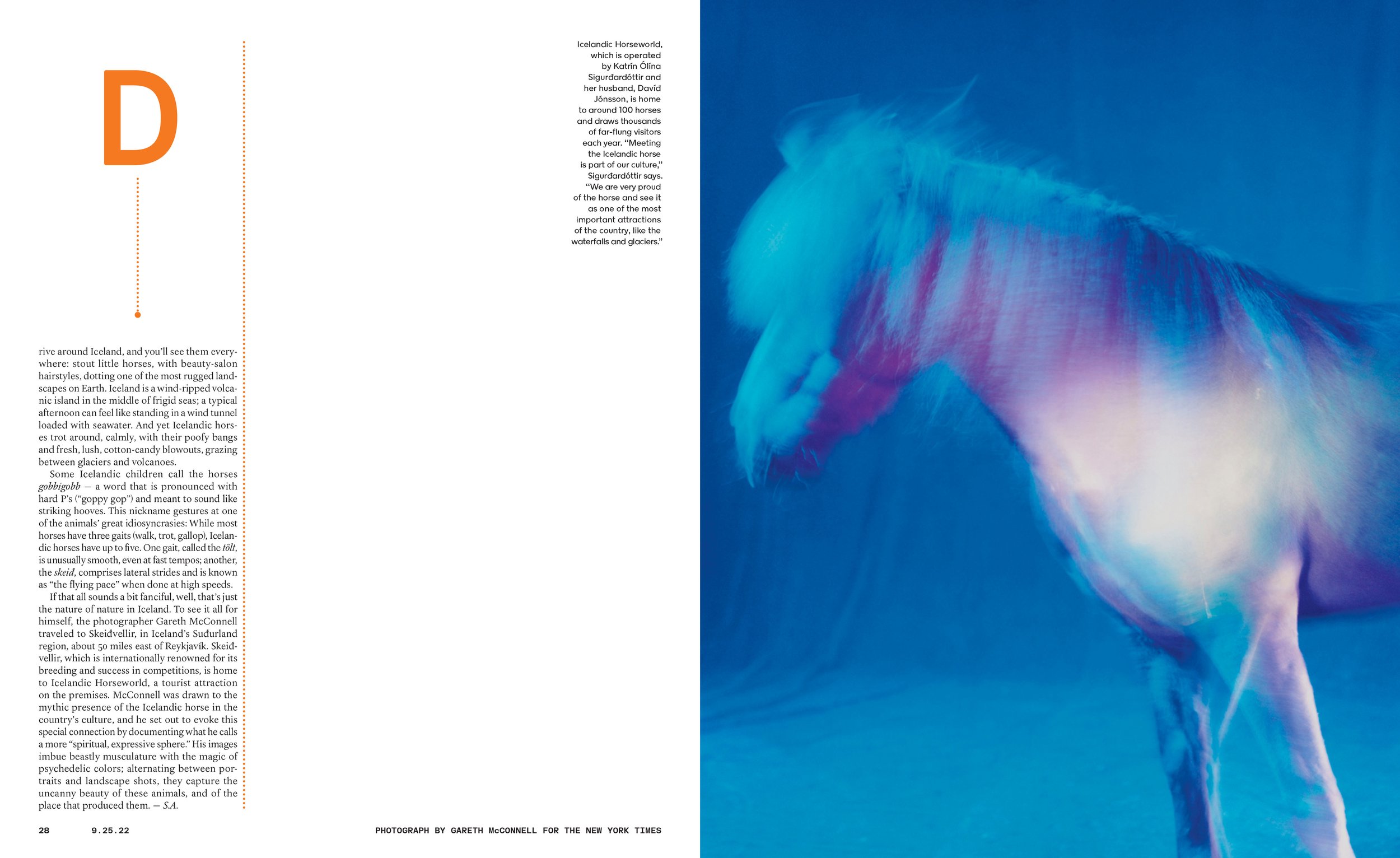
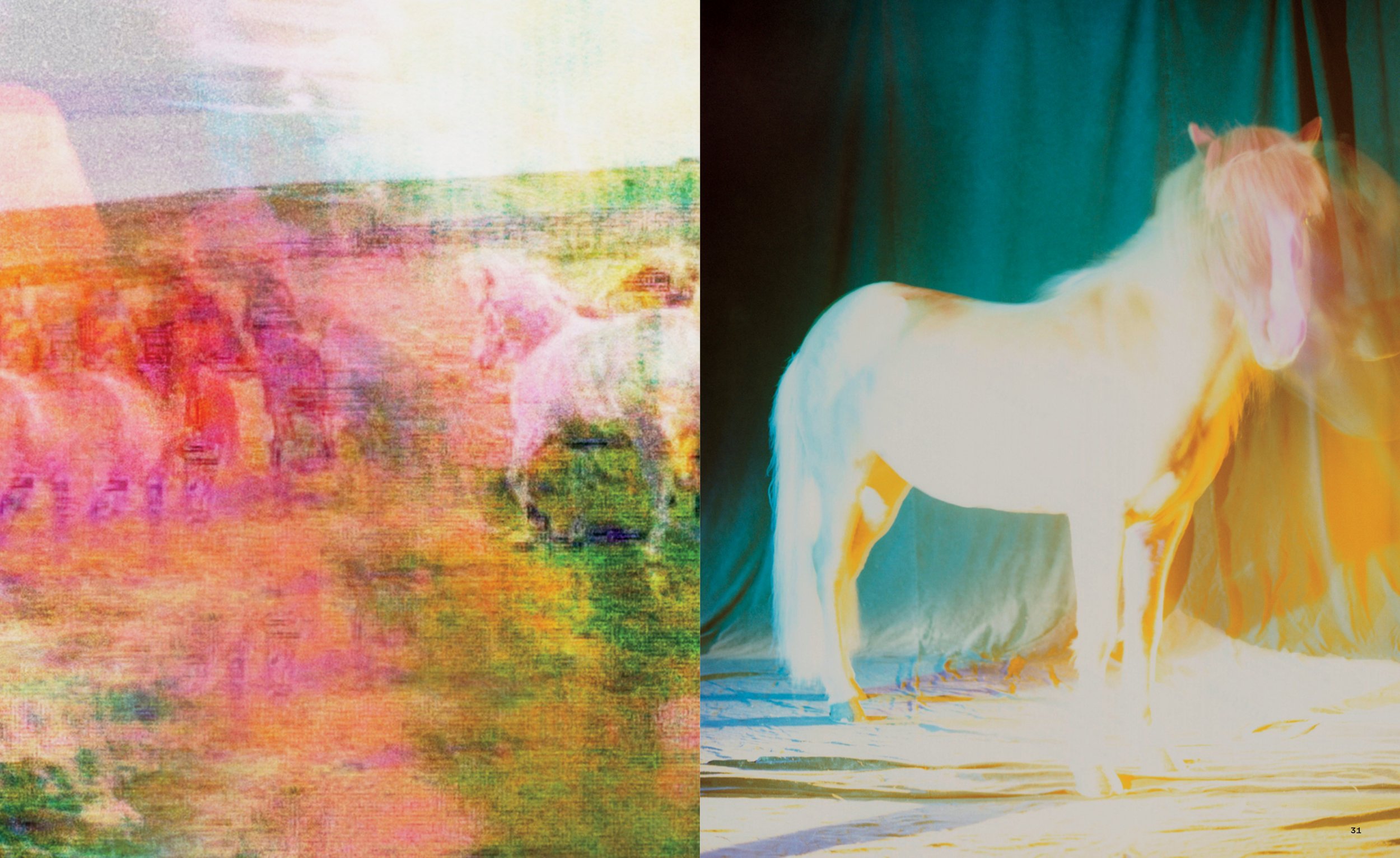
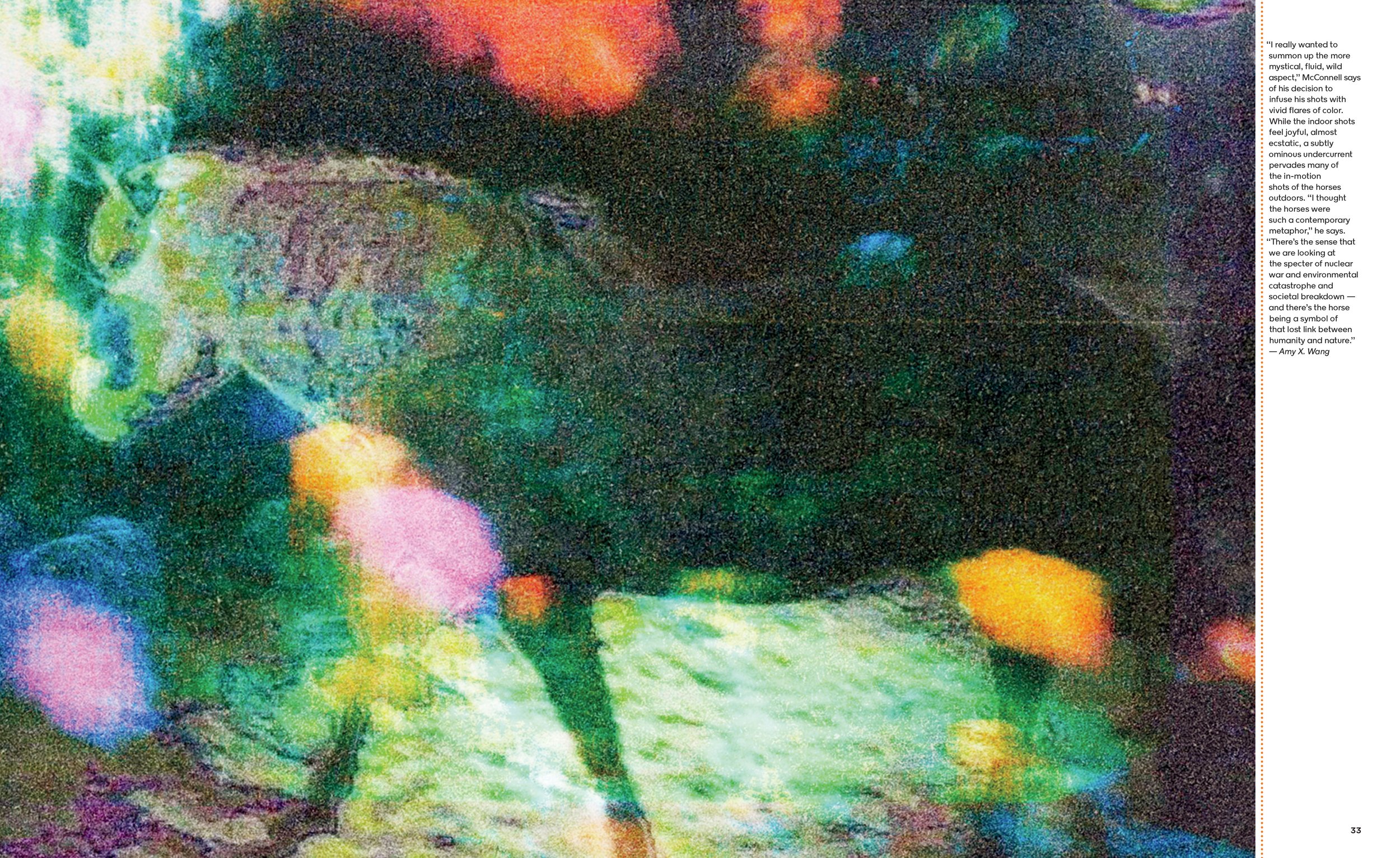
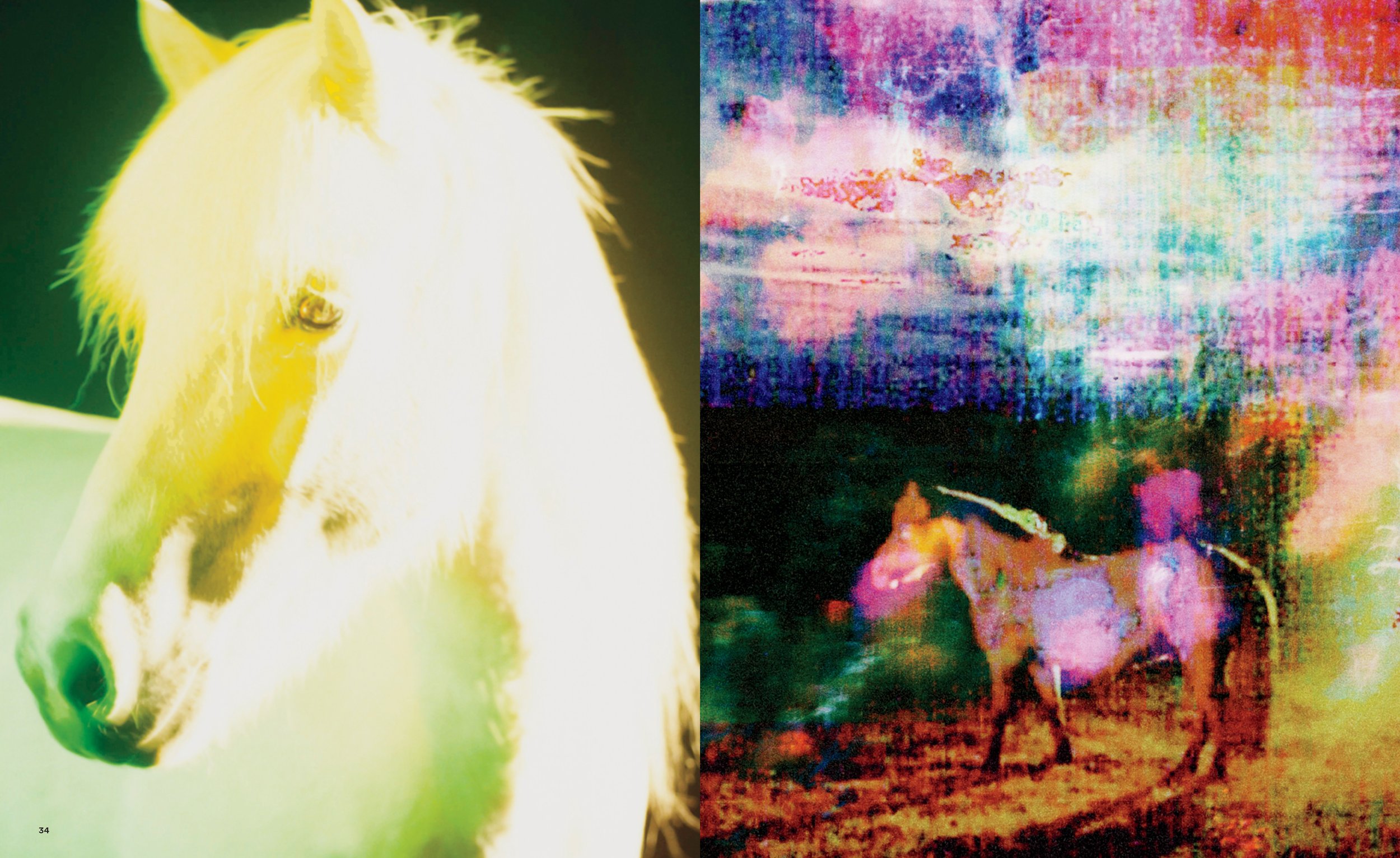
George Gendron: I do have a question that builds right off of what you were just saying, and in fact, I was going to use Paolo as one of several examples. It’s the old Susan Sontag question. There’s work that he’s done—I think in his case it was particularly about immigrants—and work Gary Knight did during the early stages of the Iraq war. And the photos, when you saw them, were beautiful. They looked “renaissance” to use an Adam Moss adverb there. And so much so that—do you know Geoff Dyer, the British writer?
Kathy Ryan: Yes. I met him, but I don’t know him. No.
George Gendron: So in his book, See/Saw, he actually has a little mini-entry about conflict photography, and, under certain circumstances, its relationship with Renaissance painting. And he uses one of Knight’s photos, that can also be very wrenching, of a marine battalion, after one of the Marines has been killed in a mortar attack, as an example of this. And composition and lighting and tone. And so I’m curious about how you personally, as a director of photography, deal with that, because you’ve got these photographers who are just absolutely brilliant, and yet they are covering the horror of war, conflict, revolution. Now of course, the Ukraine invasion.
Kathy Ryan: Yep. Yep. It’s the hardest part of the job. And honestly, it’s harder as I get older. Somehow when I was younger and sending people into the field, of course I worried. Just the risk of it. I don’t actually even after all these years of working with Paolo Pellegrin—20 years we’ve worked together on many stories.
Working with Lynsey Addario. She’s extraordinary. She’s the most courageous person imaginable. She’s just unbelievable. I still don’t quite understand that level of courage, other than they’re driven. They’re both so driven, as are many other great photographers.
So if I can have the inner dialogue with myself that they have to do it, I would never call someone who’s never gone to cover that kind of story and say, “Hey, would you go do this?” I want to know somebody’s made that decision already. So Lynsey’s going to do it anyway. Paolo’s going to do it anyway.
It’s the title of her book, It’s What I Do. I can’t quite fathom it even after all this time. And then all the visual decision making that goes on as chaos is unfolding in front of them. When you speak about “Renaissance-esque,” there’s a picture Lynsey made years ago in Afghanistan on assignment for us, where she was on a patrol with the American soldiers and they were ambushed and one of them, Sergeant Rougle, was killed.
And the picture she made of his comrades, his friends who are just grief-stricken—it’s just happened—are taking his body down the muddy slope there. And she somehow gets into position. It looks like a religious painting. And she doesn’t think like that.
Lynsey’s not someone who’s, I think I can fairly say this, looking at classical art constantly to let that inform her thinking. It just came naturally in the way, I think, a great visual person sees. She’s more of a narrative storyteller. But it’s a haunting picture that went to that next level. It became something else.
And then Paolo—I’m not trying to compare, we're just talking about different approaches—overwhelmingly shoots in black and white. That right there is an abstraction. He has chosen that because black and white emphasizes emotion, eliminating unnecessary color. It gives him more of a chance to focus on composition. Composition becomes more important. And light.
Lynsey has consciously chosen in her career to photograph in color. And in her case, she doesn’t want the abstraction. And I don’t want to make sweeping statements for either of them, but I know them well enough. She wants to see all the reality that color gives you.
George Gendron: But then there’s also the issue for the director of photography about managing a certain tension between the aesthetics of a photo and the fact that the content of the photo is, in fact, conflict. Death and casualty. That’s got to be challenging.
Kathy Ryan: And it’s uncomfortable to talk about because with that kind of coverage the content rules. But still if you want to make a memorable picture, especially today with the abundance of imagery out there, you have to make something that is so well seen, so well composed or understood or framed, that it touches some other nerve. That stops people—making a haunting image. The aesthetics do matter.
“Photojournalists have to be opinionated. They have to take a stand. There has to be something that they care deeply about. And you have to have the courage to go for it.”
George Gendron: That gets into a question that someone who has had the arc of your career—you joined The New York Times in the late ’80s—and so you’ve done your job in an analog world and now you’re doing your job in a digital world. And it must be dramatically different as you try to conceptualize the visual solution to a story. When we’re living in this age of just over abundance of images. My God, you can’t get away from them.
Kathy Ryan: Yeah. It’s unbelievable. I feel like today it’s become way more challenging. When I started out, you turned to magazines and papers and books for the photos. That was it. And it’s just completely different. You know?
People have seen hundreds and hundreds of pictures every day. So where is our place in that? And I wish I had answers to some of that. I find it more and more challenging. And then there’s also the reality that there’s all sorts of creative work being posted on Instagram by non-professionals, like doing some just nifty stuff.
It opened up creativity in a lot of people. They couldn’t necessarily do a commissioned magazine assignment, but I see all sorts of just interesting creative material. And it’s just a different medium.
And that’s the other thing—every year we do an annual, “The Lives They Lived” issue. It’s the last issue of the year. And we do a series of stories about people who’ve died that year. And it’s almost always people of renown—who are known in some way. Sometimes ultra-famous, sometimes not ultra-famous, but known in their field. And this year, a decision was made by Jake to devote the whole issue to children killed by guns. And the reason for that was there’s been a shift.
Within the past year or two—the highest number of child mortality is related to gun deaths. So we’re in a terrible—we all know that. And there’s been just horrendous school shootings. So as we set out to figure out the art for that and the photography, the photo editor working on it, Kristen Geisler started calling all the families, which was a challenge unto itself because, of course, they were deeply grieving.
In some cases, she’s talking to the mother or the aunt or different family members. And we normally, in that issue, come up with a nice idea of something to commission. The year before we did the shoes of the people who died. And it was terrific. We had Eric Carle, the children’s book illustrator’s, paint-splattered shoes. We had the boots that Halyna Hutchins was wearing the day she was shot on the movie set where she was accidentally shot.
And we’ve done the empty rooms left behind by the deceased. But I decided, talking with Gail and Kristen and Jake, everybody, that this was a moment to use vernacular photography. We just illustrate it with the images that the family members themselves had. Which would basically mean smartphone photography, TikTok videos.
So Kristen started pulling in all that material. We were looking at it closely. And it was very challenging. It was emotionally wrenching, as you can imagine. It was one of the most emotionally-wrenching things we’ve done. The subject matter was so sad and we wanted to do right by these kids.
George Gendron: It was emotionally wrenching for readers!
Kathy Ryan: Yes. And we knew that. People are going to be devastated by it. And that is another responsibility for us at the magazine that we discussed a lot.
And then we were also working with tiny digital files. So you also need to figure out, How will this work? Where is our cover image? And then we decided to go right into it. And Gail and Matt Curtis, who was designing the issue with her, decided to do these double-truck [two-page spread] images of the faces blown up. So we were looking at that very closely, trying to figure that out.
And then the image that ultimately was on the cover—as soon as we saw that and it was backlit, everything about it was so pure. A professional wouldn’t have shot the picture that way with the light flooding from behind. But what it did was it gave it just a spiritual look.
And as soon as I saw that one in the cover mat, I felt, “There it is!” And then of course we all came to that conclusion, but we were nervous. It was a very different type of image. But Kristen was getting in these clips from the TikTok videos that she was looking at closely with the digital team. And when we published, the power of the short video clips eclipsed the power of the still photos. And you’re not going to hear me say that often, because I’m a diehard. I mean, I love video, but still photography has such a special place. And this was a case where just seeing the little bit of movement of the child had so much power.
And of course, these pictures were all made for just the most personal, pure, intimate reasons. And the brief for them was to not focus on the death at all, but just focus on a day in the kids’ lives. Something in the kids’ lives that was just about them, alive and happy.
And today, with the new medium that we have, most of our readers, the majority, are seeing us on their phone. That was very powerful on the phone as well as in print.
Lives on the Line: Patients with High-Risk Pregnancies Photographs by Stephanie Sinclair
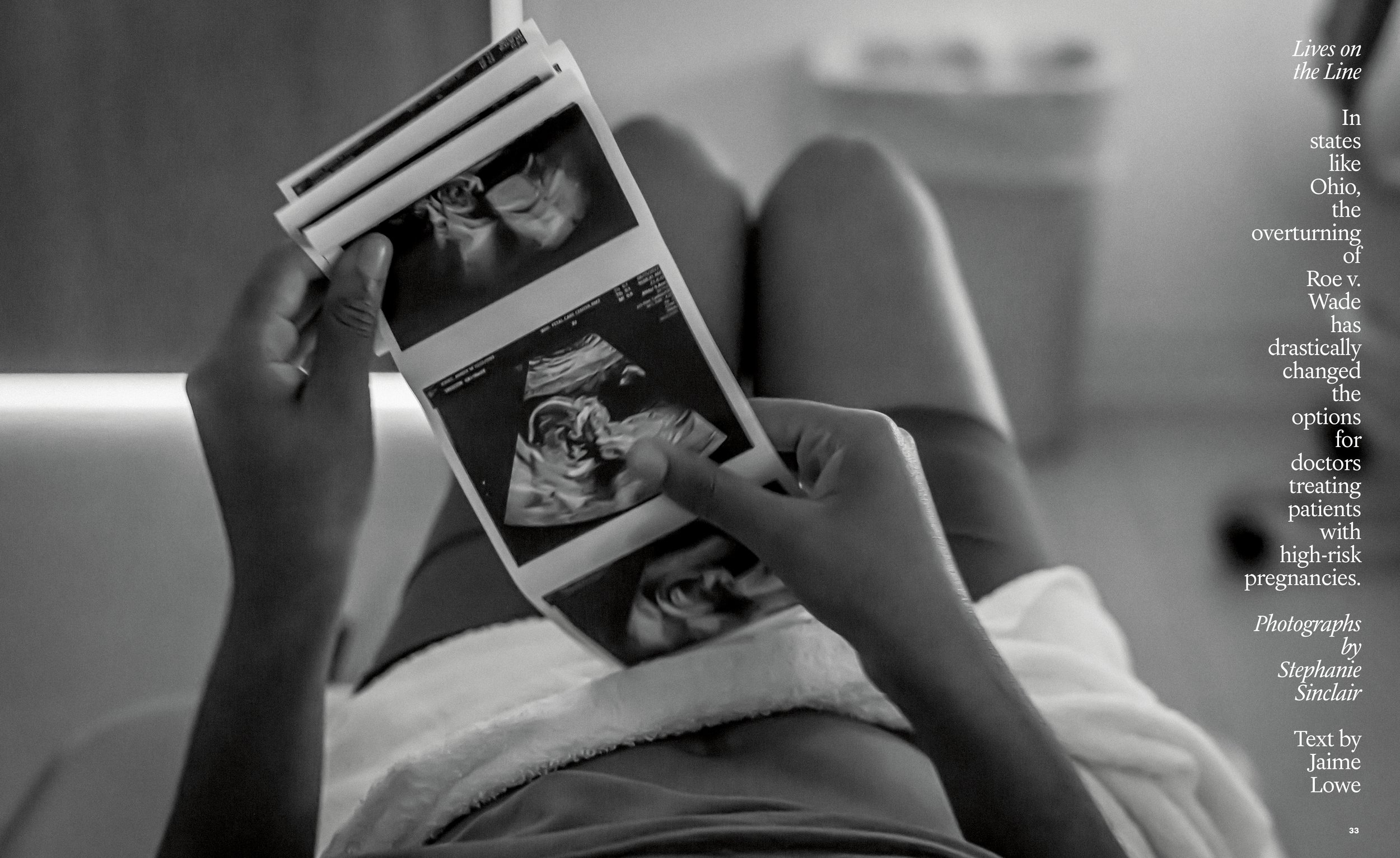
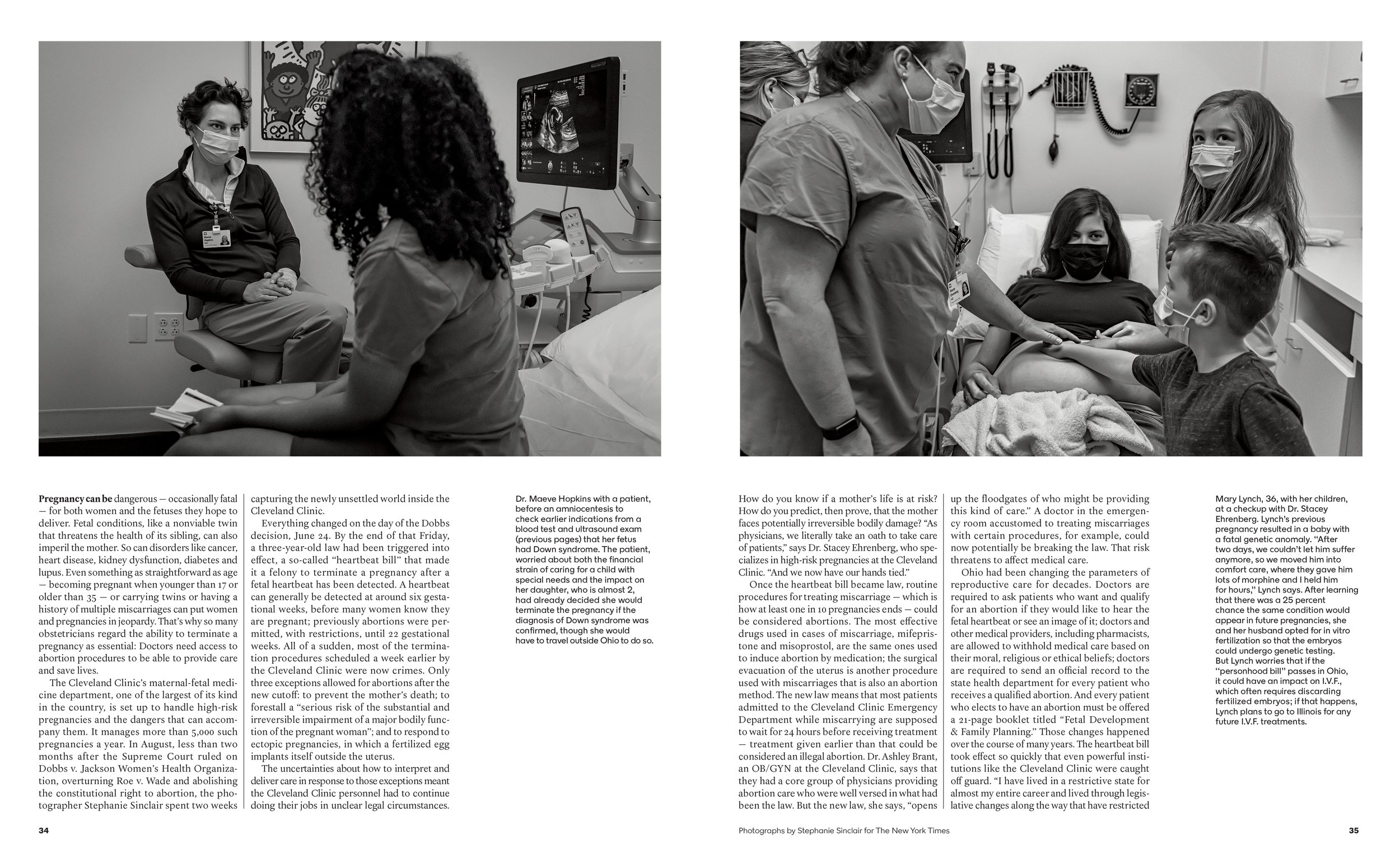
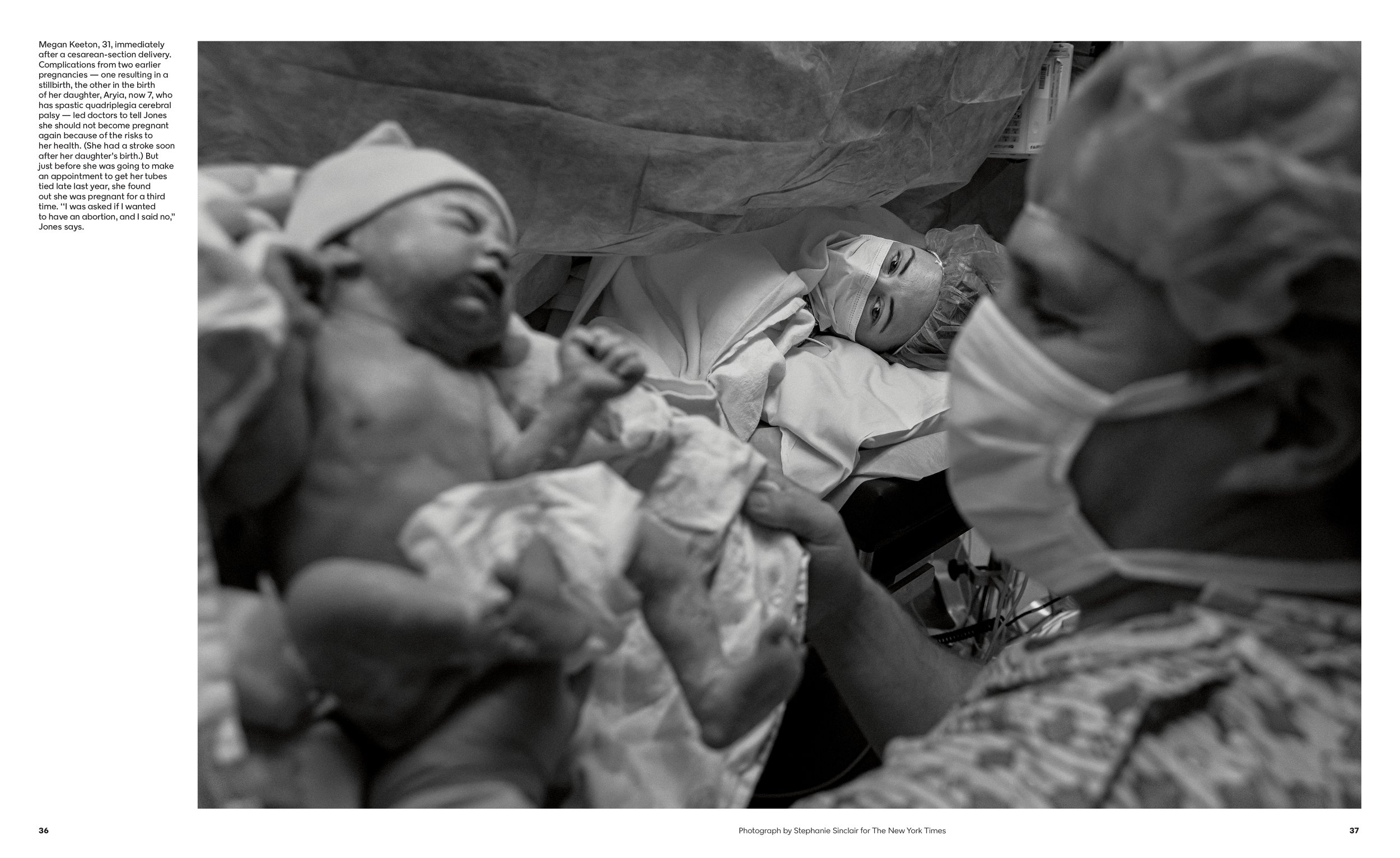
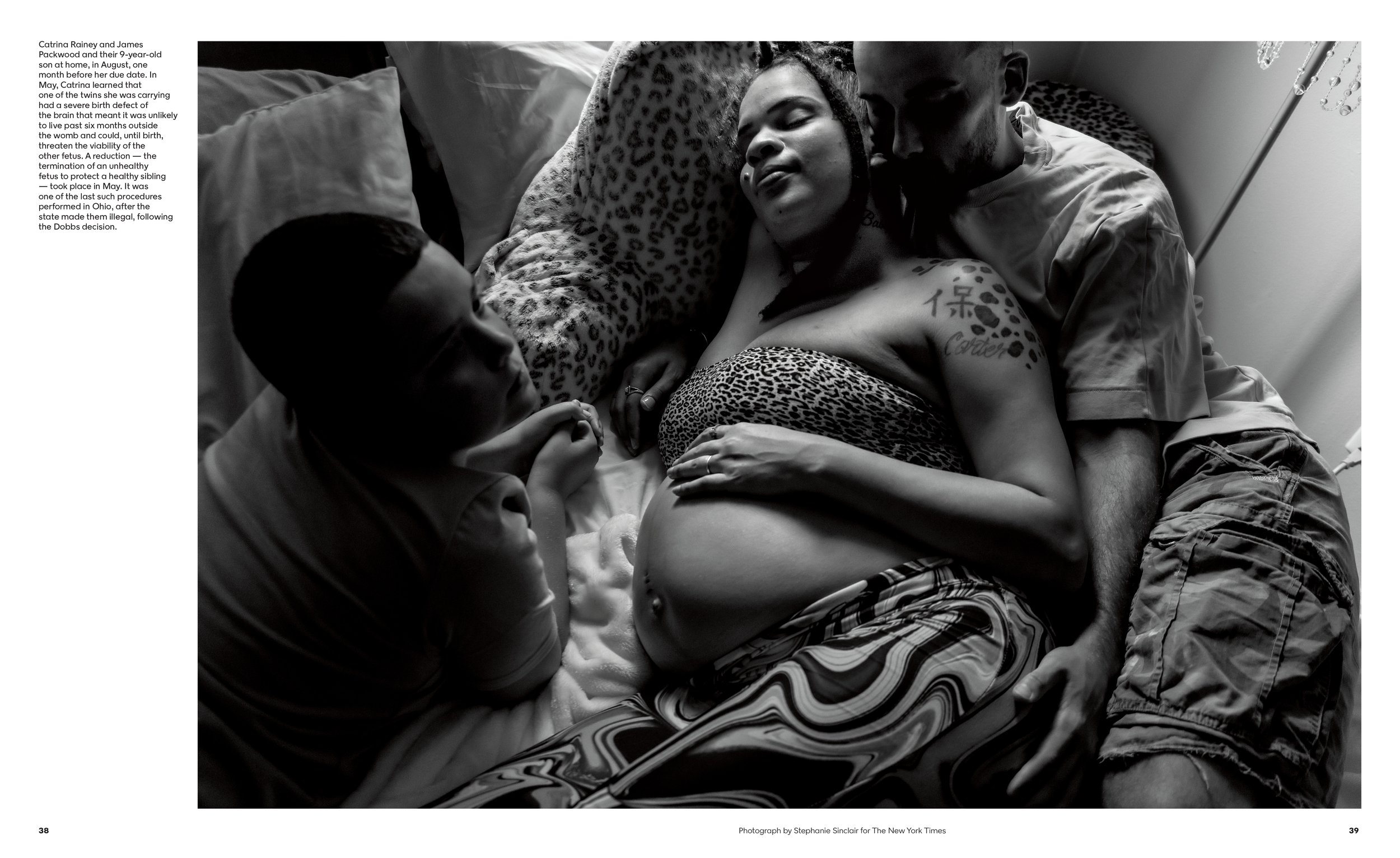

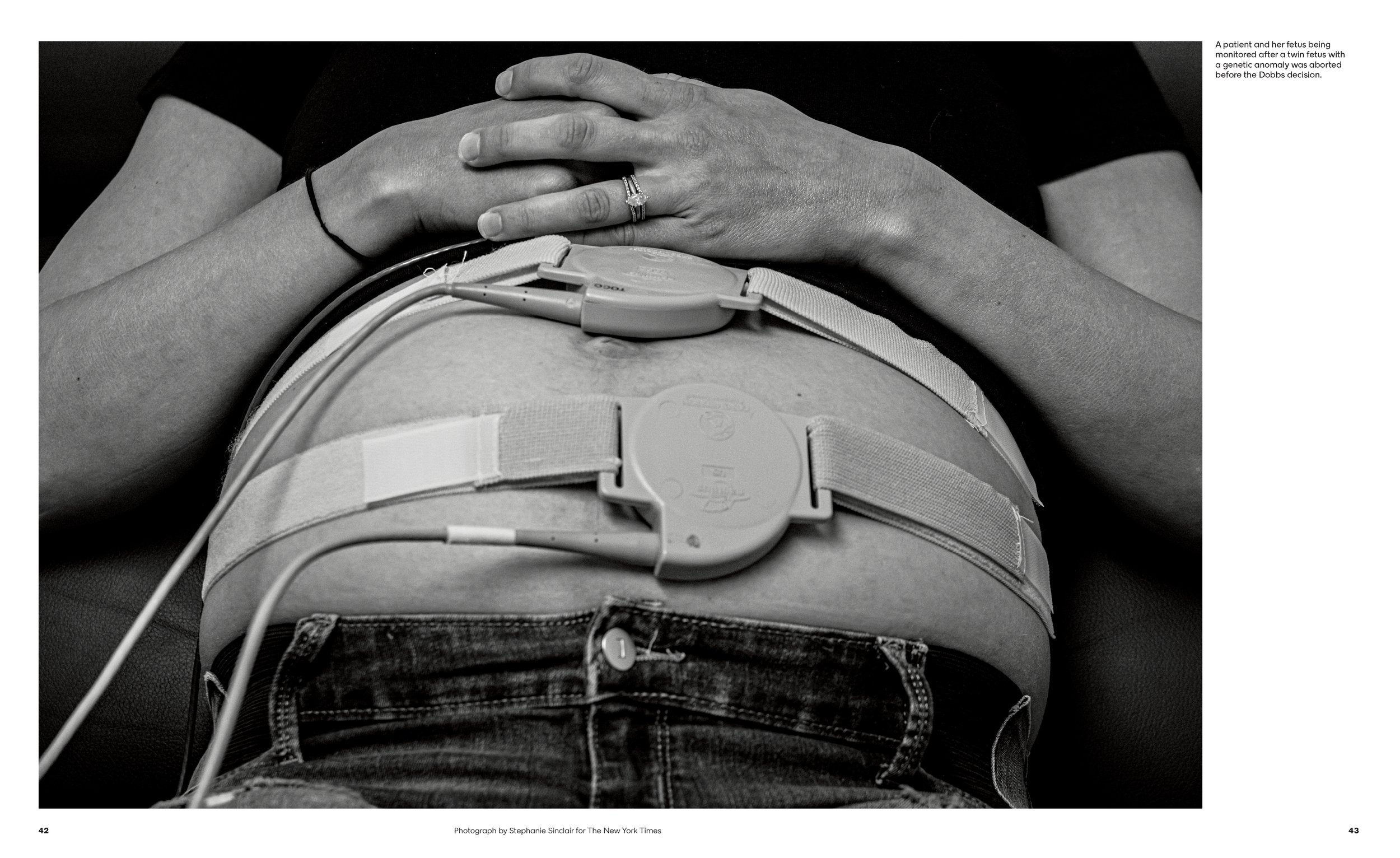
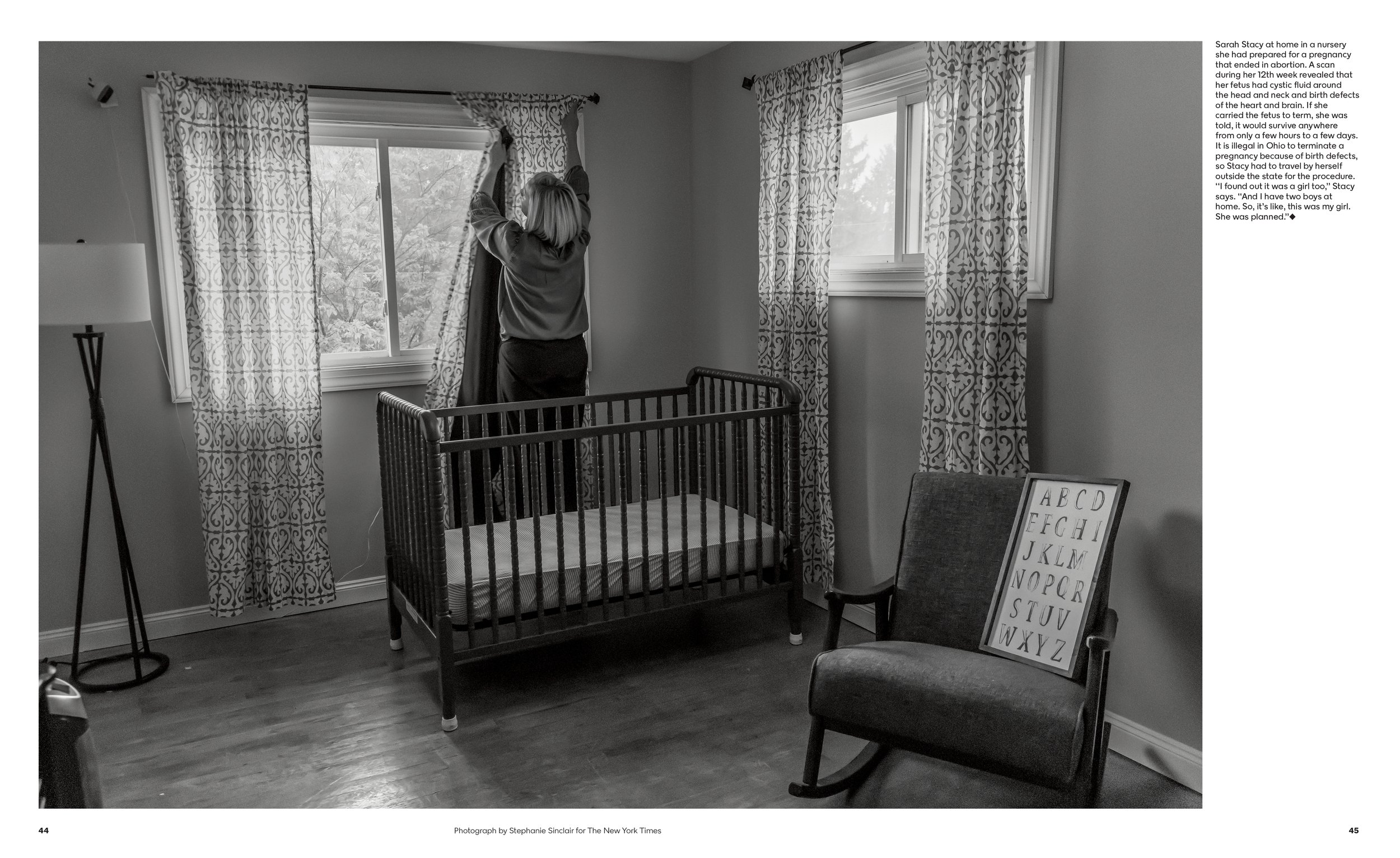
George Gendron: Let’s go back to what you just said a minute ago. It’s an interesting transition point because you were talking about your passion for the photograph. Where did that come from? What did you want to be when you were 12 years old? Did you want to be a photo editor?
Kathy Ryan: I had no idea. I always liked to draw. I was a kid that always liked doing art. And I had an older sister, a year older, and she loved to draw. And we would draw for hours on end. My parents would buy discarded rolls of wallpaper where it was a buff on the back and they’d roll it out. So we had all that blank paper to keep drawing.
Ryan in the third grade
George Gendron: Did you grow up in New Jersey? Because we did that.
Kathy Ryan: Yes!
George Gendron: Did you really?
Kathy Ryan: Yeah. Where did you grow up In New jersey?
George Gendron: Up in Bergen County. I grew up in Oradell and New Milford.
Kathy Ryan: I grew up in Bound Brook. But there’s going to be another overlap because listening to your podcast, a pivotal moment for me was third grade, which I think was the case with you, right?
George Gendron: Yes.
Kathy Ryan: And so it’s a weird coincidence. In third grade, I had a teacher—I was in Catholic school at that point—Sister Mary William, a nun, and she taught art history. This was in a very strict, classic, traditional classroom. But once a week she passed out black and white marble notebooks, and she would pass out small reproductions of paintings, famous paintings, classical artwork. And we would paste them in while she talked about what the symbolism was in the painting, what the artist might be thinking, what the expression on the person’s face and the painting was. I fell in love with it. I just felt like, “I got it.” I so got it.
George Gendron: What was the “it” that you got?
Kathy Ryan: Just understanding. Looking at the pictures. I can’t explain it. It was like, “Wow, I get it!” Whereas, I’ll be honest, in music class I just didn’t get it. I couldn’t hear the different notes. But it was like I could see it.
George Gendron: The power of the visual.
Kathy Ryan: Yeah, the visual. I could see what she was talking about when she mentioned an expression. I could see it in the face or something symbolizing something else. It just kind of clicked. So throughout early schooling I was always drawing, painting, and making art. And then at the end of high school—I had interest also in politics because the Watergate hearings were on. So I went to Rutgers, Douglass College, with an idea toward majoring in art or potentially shifting to politics.
And then very quickly I focused on art, but not photography. My college studies were painting—I did lithography, I did a lot of printmaking. But never photography. And then when I got out of school, I realized very quickly after working for hours in the studio for several months, I don’t like being alone all day. I love working with people. It’s my nature. I wanted to work with the team.
And a friend of mine told me about an opening at a photo agency. It was called Sygma. As you know, one of the big photo news agencies in that era. Sygma, Gamma, Sipa, Magnum. And they needed a librarian to file—remember this was the days of slides, negatives, prints. There were no digital images. So everything existed as a physical object. And they had photographers all over the world that would send their work to the Paris bureau where they would process it all. They had the lab there and then shipped it to us in New York.
And I got hired as a librarian. So I would just figure it out, stamp the slides, and where to file them. Then I graduated to doing photo editing for The New York Times Magazine, when they would call and say, “We’re doing a story on Iran.” And I would put together a package for them of slides and prints related to that subject.
And then ultimately, when there was an opening, I applied. They knew about working with me because in those days they used more existing photography and less commissioned. So they were often calling Sygma. And initially I was doing a lot of painting at night but the more I worked in the field, I just fell more and more in love with photography and it made sense because there’s something “realer” about photography.
Like I often love when photography, as we were saying, goes to a more abstract, playful place. But I do like real. And sometimes I laugh looking back—when I was telling you about rolling out the wallpaper and my sister Maureen and I drawing—she would always want to draw the World’s Fair. And I always wanted to draw shopping at the supermarket. Because I knew shopping at the supermarket—what it looked like when mother would take us.
I liked to draw what I saw. And I sometimes think that The New York Times is the perfect place because in documentary we’re telling real stories.
George Gendron: It all comes together right now. Everything you’ve accomplished, everything you are today, Kathy Ryan, you owe to a Catholic nun.
Kathy Ryan: No, I don’t! I know, right? It’s funny how you get influenced. I know.
George Gendron: Yeah. That’s another podcast.
Kathy Ryan: Yeah, that’s another podcast.
Talk: Celebrity interviews from David Marchese Photographs by Mamadi Doumbouya
George Gendron: You are so obviously both passionate about photography and immersed in a world of the weekly, which is just so demanding. What do you do when you’re not working? Do you go to photo shows?
Kathy Ryan: I look at a lot of art—obviously photo shows. But just in the past month or two the stuff that had a big impact on me was at the Guggenheim, where there’s an amazing double-header right now. The Alex Katz exhibition of his paintings—which is a long lifetime of paintings and you watch the trajectory—is fantastic. And so for me to go see that opens up my mind in terms of photography. And they paired it with a big show of Nick Cave’s work, which is very sculptural.
So you’ve got the minimalism of Katz, and the spareness of it. And then you’ve got the maximalism of Cave and the political underpinnings—he’s taking on a whole other world of importance in what he’s trying to say in his work. And the first show I raced to go see was the big Hopper show at the Whitney, which, of course, is a crowd pleaser.
He’s over and over and over inspiring because, what did he paint? He painted light. He painted the loneliness of humans navigating the world. And photography, again and again, even in what I do as a weekly magazine picture editor is about light. How the photographers see light and have to think about people.
And Aperture has had so many exhibitions in the past that were huge eye-openers and just deeply inspiring. The show that they did a couple years ago, Antwaun Sargent curated, and was a book, The New Black Vanguard. Brilliant, brilliant, brilliant show. And walking through that, I immediately was introduced to the work of photographers I didn’t know, and it reinforced my appreciation of others.
And one of the people in that show, Arielle Bobb-Willis, I was just blown away. Early 20s, brilliant work where she sees color like nobody else and she has the figure, the human figure moves in space in a way that is unique and different. That’s not easy to do. And even her styling of the pictures. She’s since done two different special music issues for us. So sometimes it’s directly related to my role as a photo editor at the magazine.
Six years ago, I saw a show of NYC Salt, a high school after-school photography program. And I went to their end-of-the-year exhibition and saw amazing work by a photographer named Mamadi Doumbouya—at that point, maybe barely 20 years old—and just fell in love with it. And he’s been working with us since.
When we decided to do the David Marchese Talk column, we decided let’s have one photographer, one vision. Now, sometimes, it’s illustrated because it’s geographically not possible. But we’ve had Mamadi doing it since the start. And he has a very distinctive look, uniquely his. So going to exhibits and seeing constantly there are things to be discovered and then at other times seeing the work of great legendary painters where it just reinforces the quality of your seeing
That’s what I feel like. You know how some people go to exercise? I’m not too good on the exercise count, other than walking through museums. I go to exercise my brain. So I constantly regret that I don’t work out in a different way, but I feel like I work out my eyeballs a lot.
Office Romance Photographs by Kathy Ryan


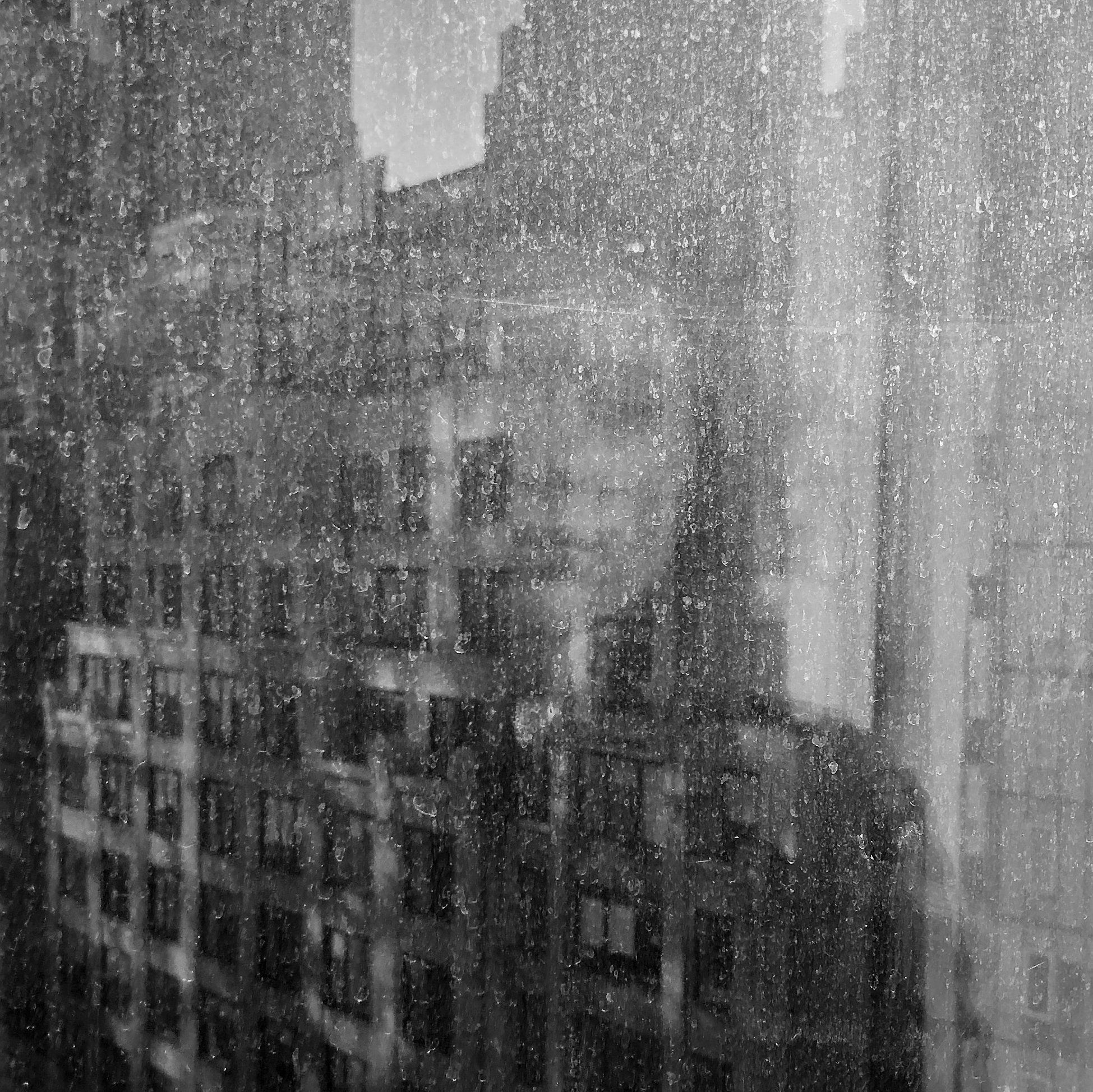
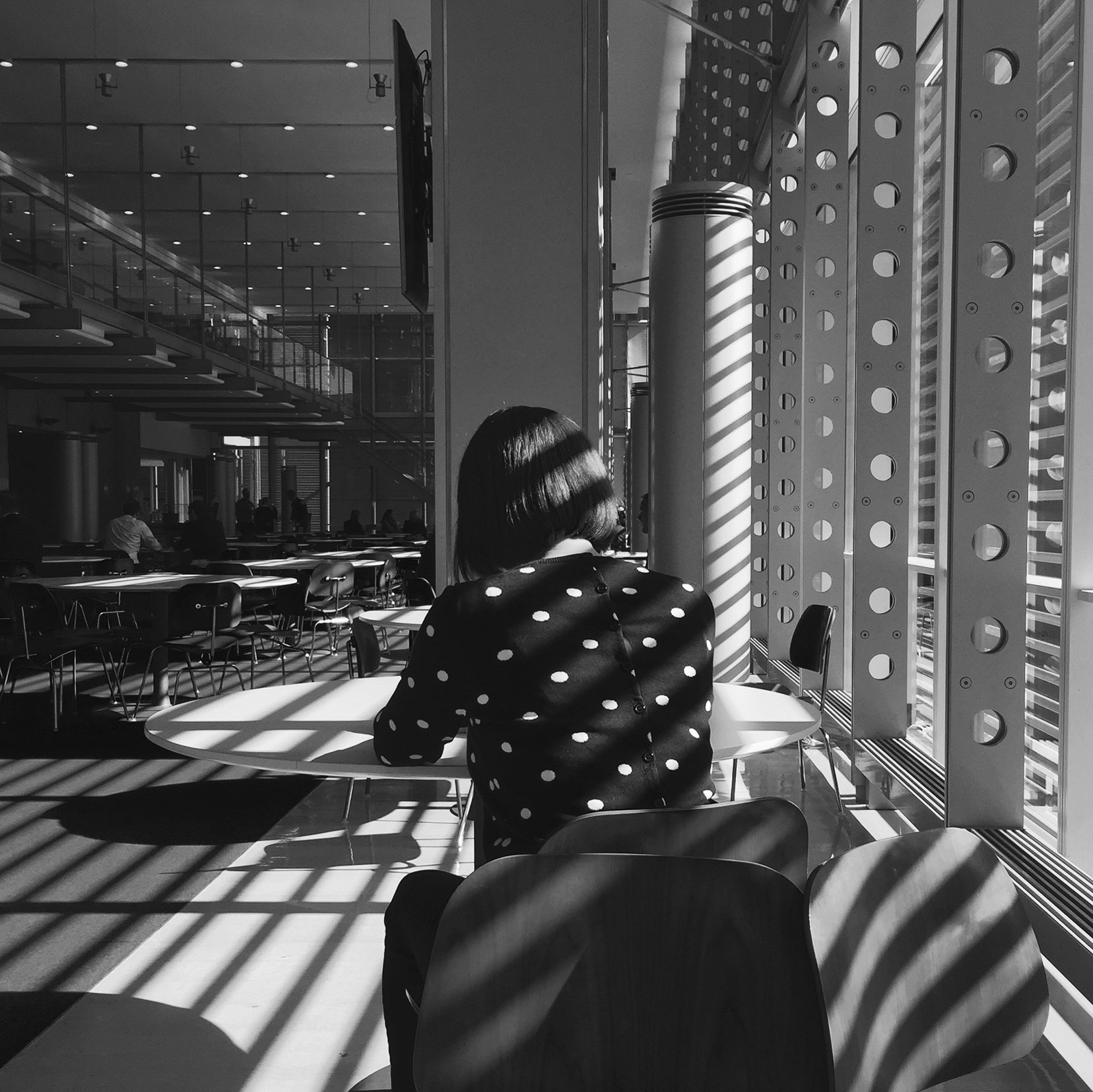
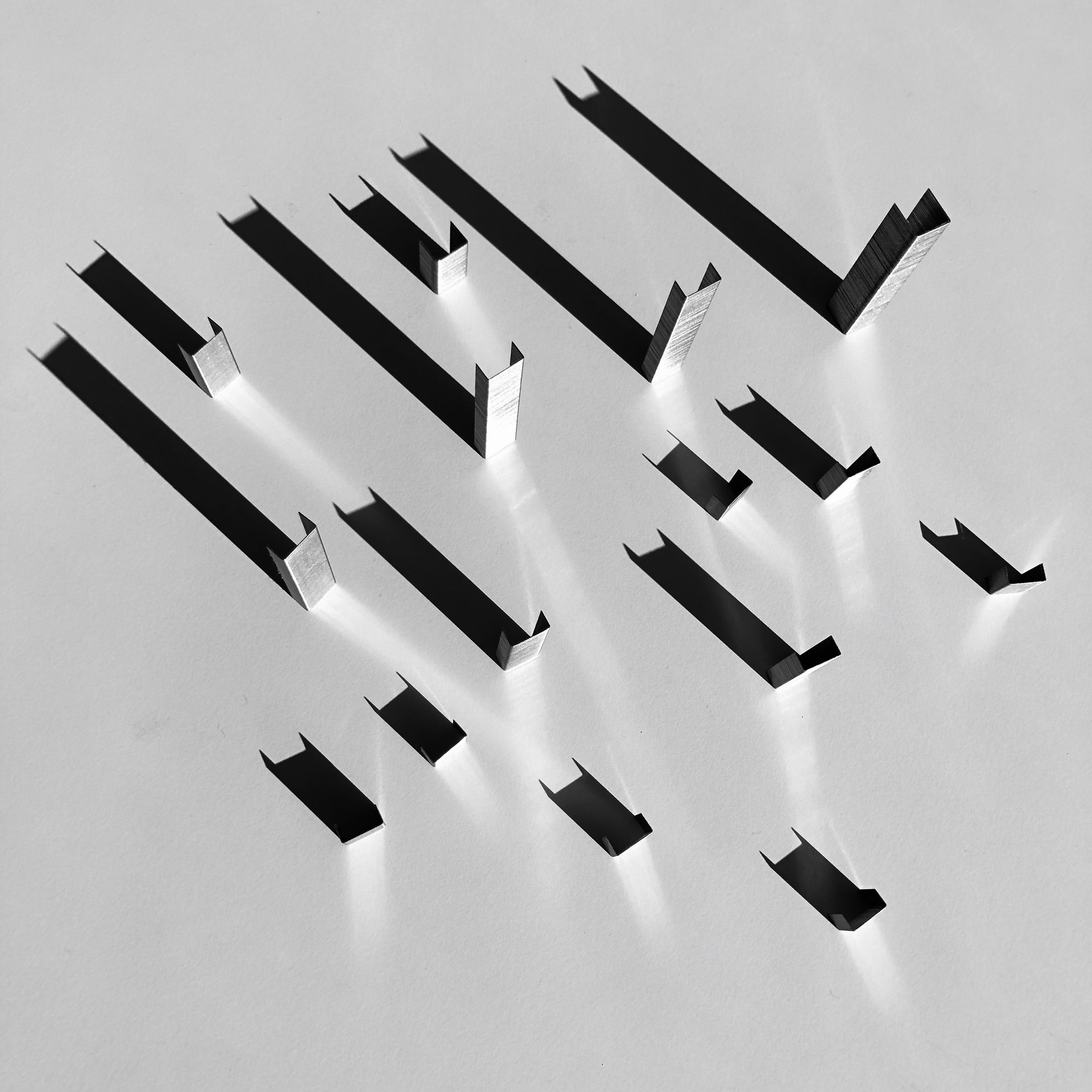
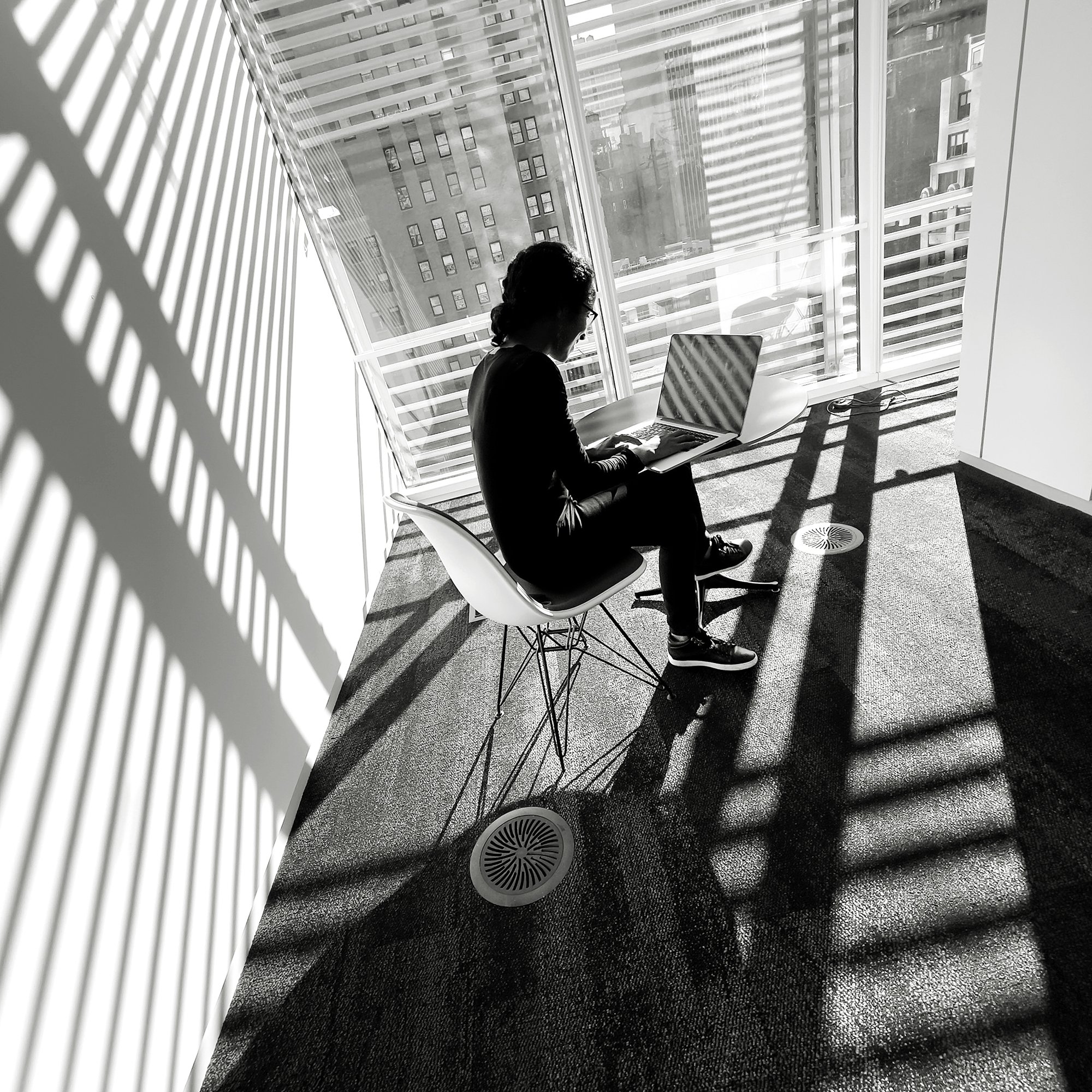

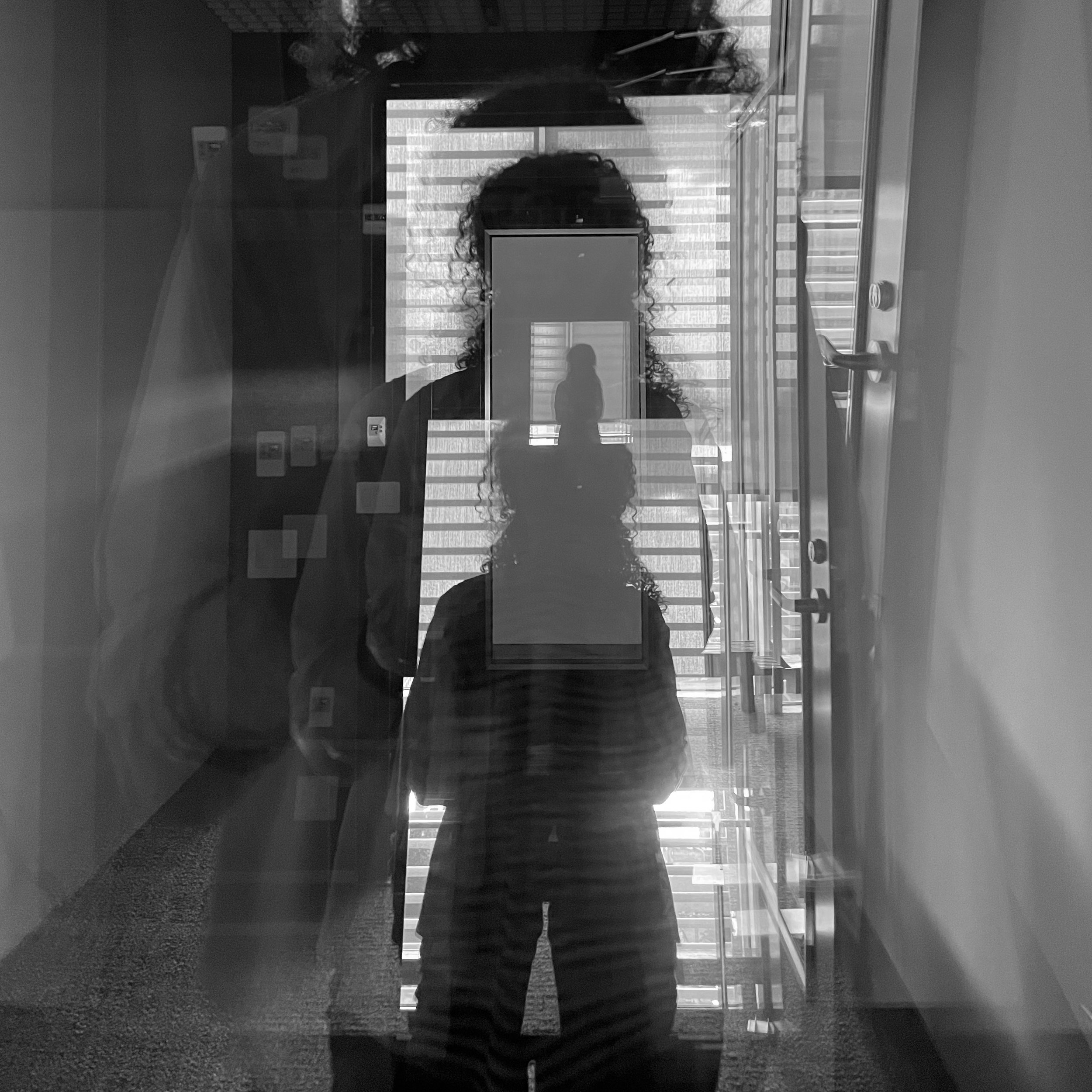

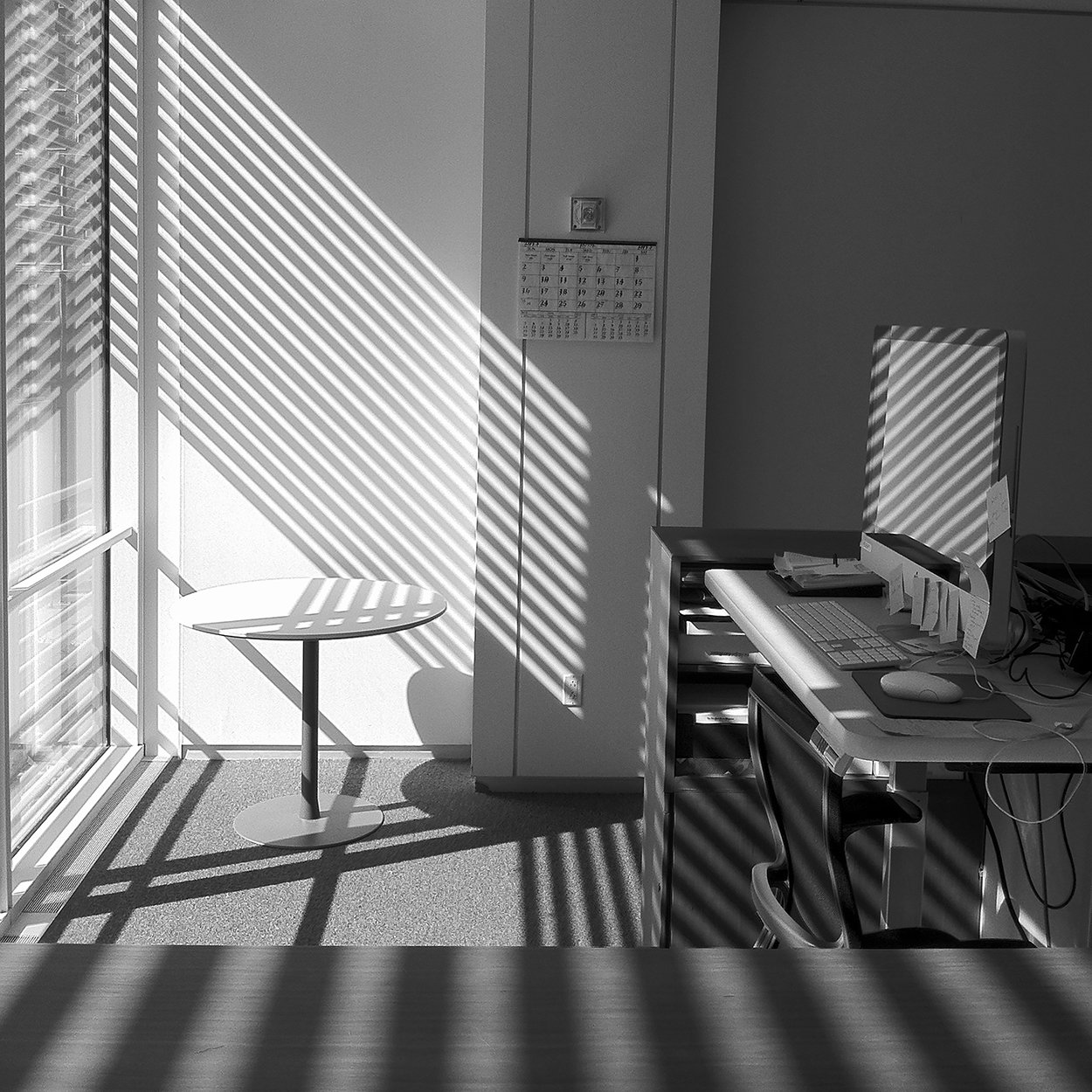

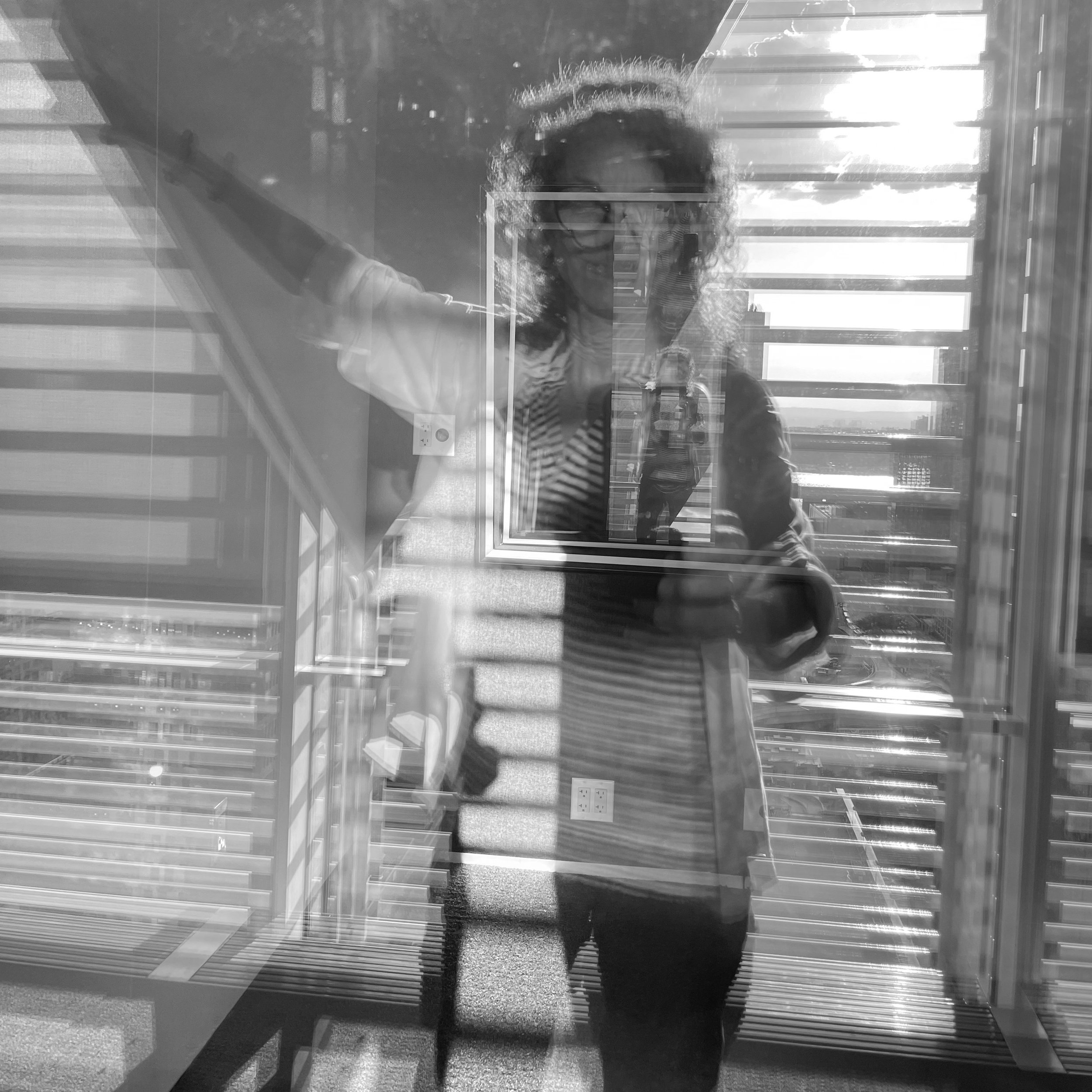

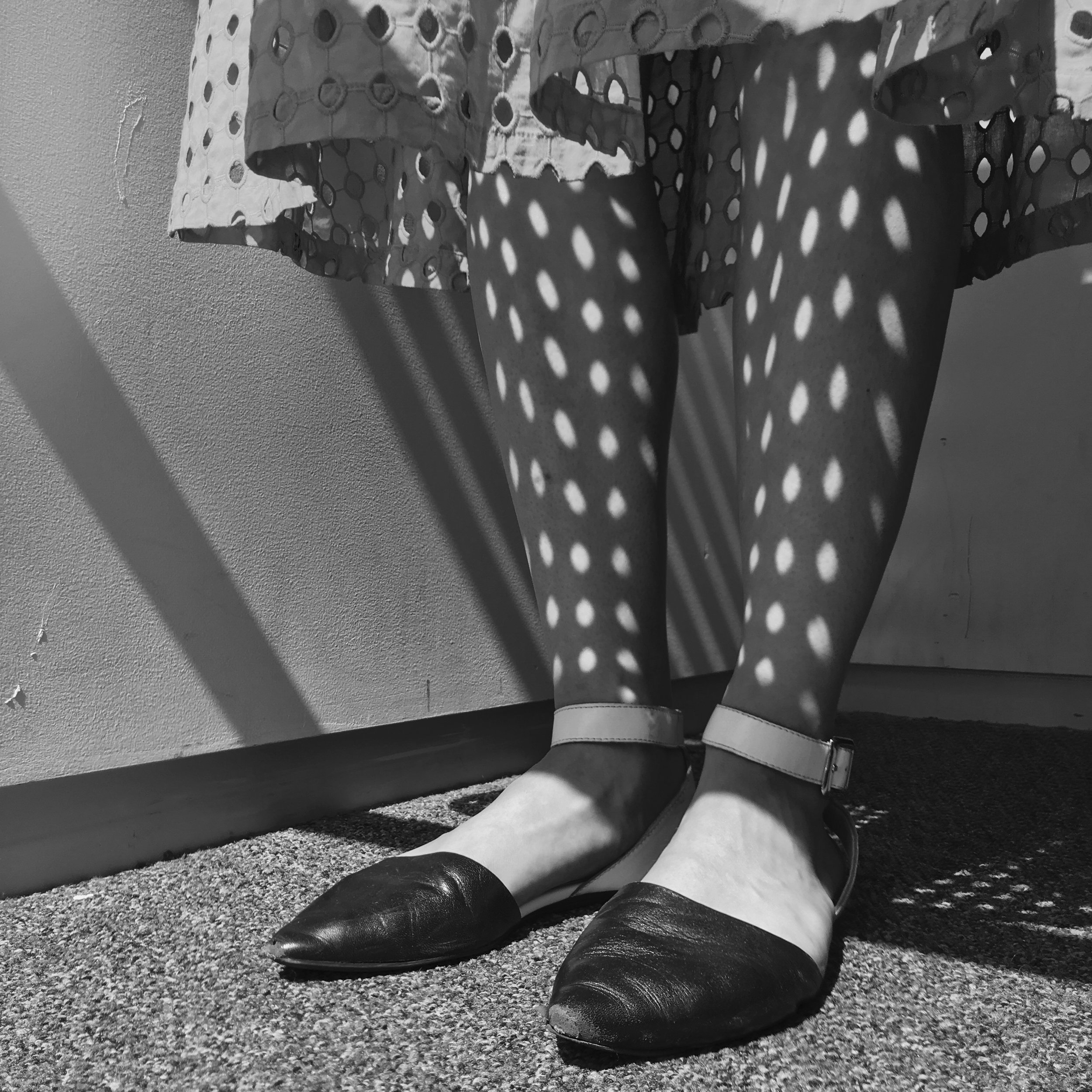
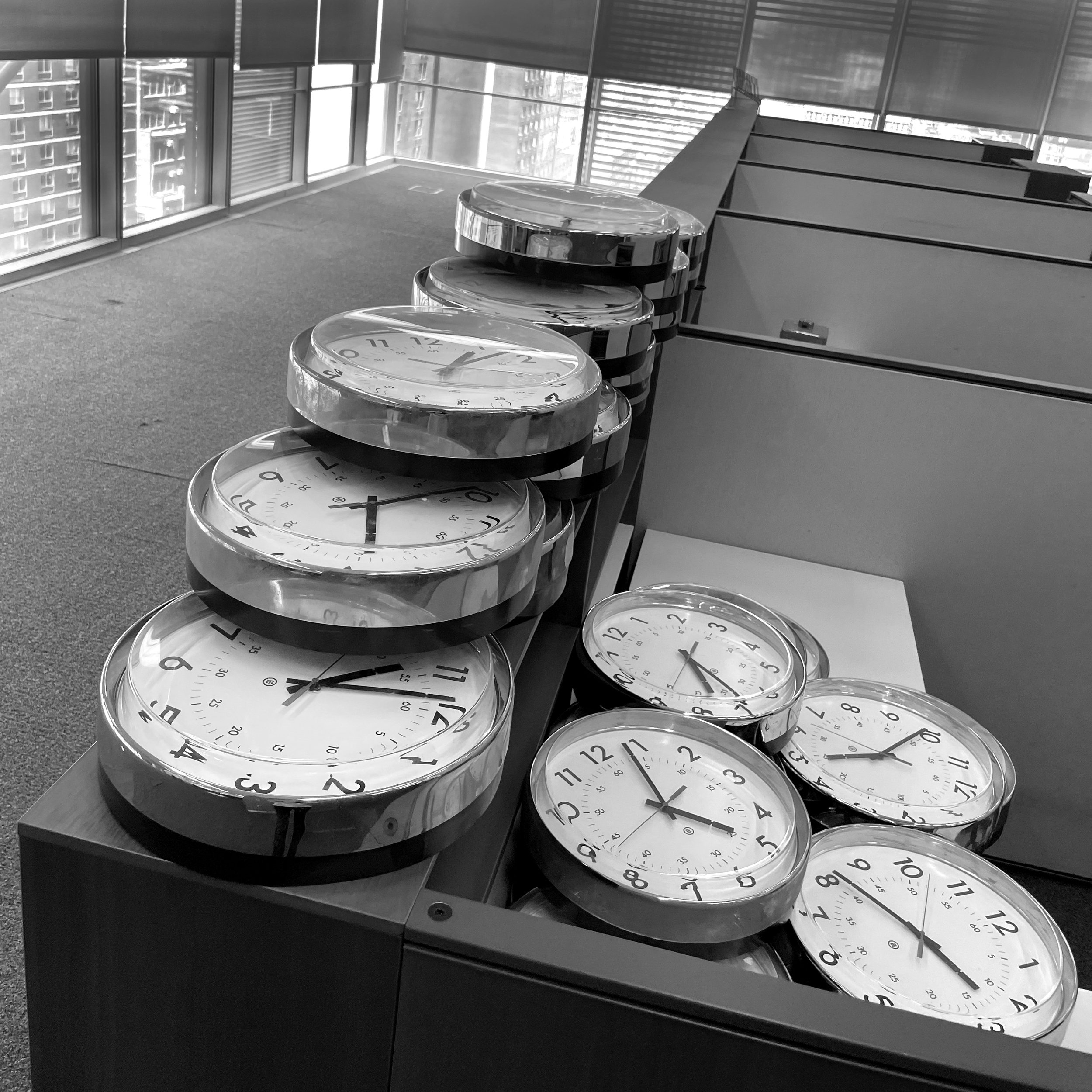

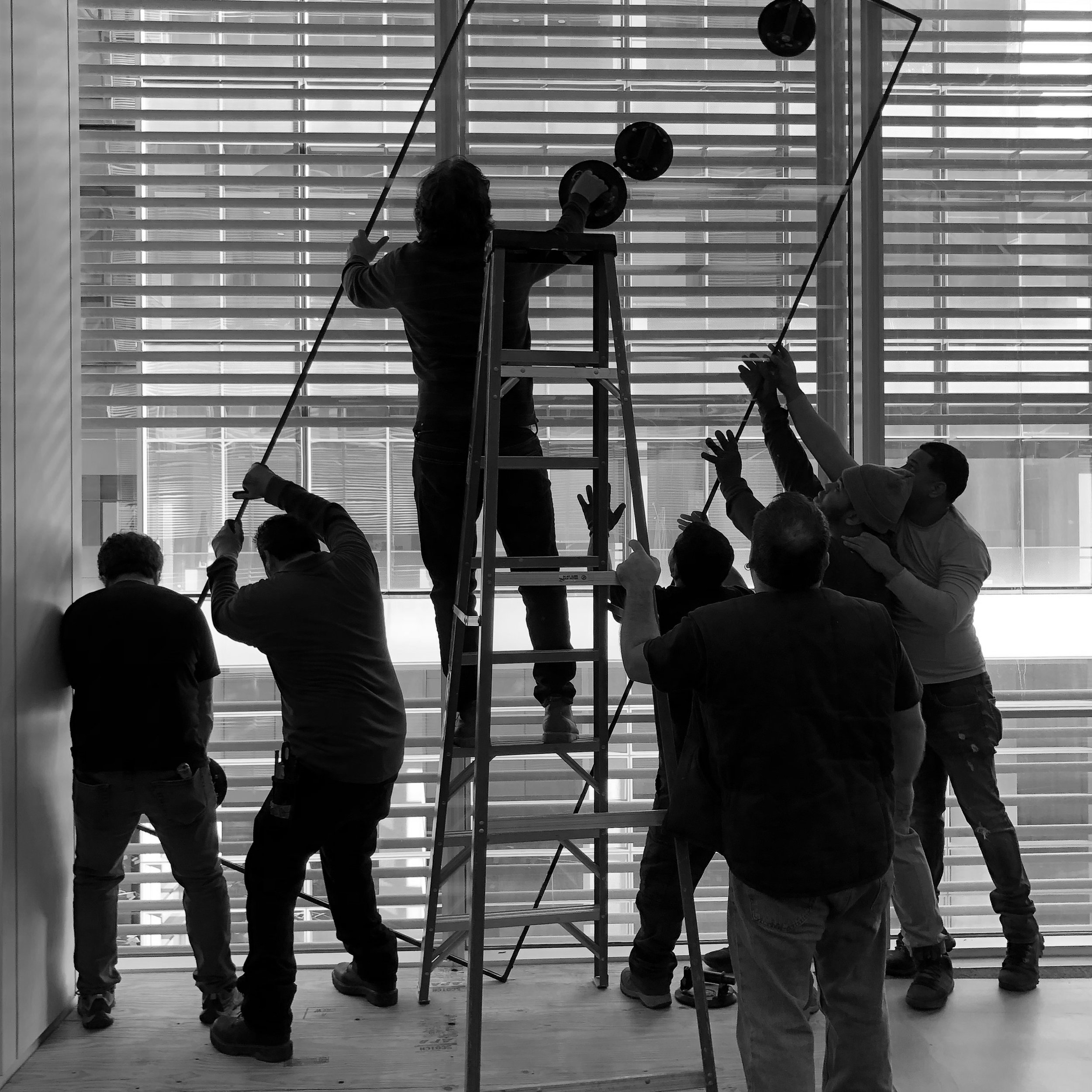
George Gendron: That’s good enough. I can identify with that. I do want to pick up on your discussion about young artists, young photographers in a minute. But before we do, selfishly, I have to get you to talk about Office Romance, your book, which I have and I love, and I know lots of other people who have it. And everybody who has it, they just love to hold it.
The form factor, first of all, is great. And it inspires people to think about looking at the world around them—their house, the light around them—in a completely different way. And I’d love to know, at what point did you stop thinking about taking pictures of the new Times offices, designed by Renzo Piano, and posting them on Instagram, and start thinking about it as a potential book. And did that change your picture taking when you started to think, “Oh, this could be a book now’?
Kathy Ryan: That’s a very good question. And yes and I’ll tell you why. I started making the pictures just for pleasure. Literally, I just, I don’t know, I saw that bolt of light on the stairs one day and—you got the phone in your pocket, right?
So it’s right there, the camera’s in your pocket. And I took it out and I made a picture and it just felt so good. And then I made another, and I made another. And I was doing them at top speed. In between, you know, magazines are a frantic, kind of frenzied place. You know, we’re constantly on deadline.
There’s something deeply—stopping for a few seconds, in the same way somebody might have gone to get a cup of coffee in a cafeteria—I would just stop, make some pictures, take one of my coworkers, colleagues with me, friends. And, I don’t know, it was like a moment of respite and almost meditative. And part of the reason why and, honestly, all the credit goes to Renzo Piano.
The building, The New York Times Building, designed by Renzo Piano, has unbelievable light. Why does it have unbelievable light? It has clear glass windows! Almost no skyscrapers that get built today have clear glass windows. They all have to meet the environmental codes. The green glass, the gray glass, you see it.
He didn’t want to put “sunglasses on the building.” He didn’t want to do that. So he came up with the idea of the horizontal white ceramic rods that sheathe the whole building. And by doing that, he managed to meet the needs in terms of heat and light. The bars cut that down so that we are within the architectural regulations. Well, it creates unbelievably cinematic light, like film-noirish light. And it just kept calling to me. It was constantly calling out to me. It was literally like a siren’s call.
I’d see the light out of the corner of my eye and it was like, “Oh my God, I’ve got to photograph that.” So it’s also often just heartbreaking because for every time I’ve been able to do it, I’ve missed a bunch just due to what I do in my job.
And then somebody introduced me to Instagram. And I just was like, “Oh my God!” So you start posting. And when we first started posting, you’d be ecstatic if you got 50 followers. “Oh my God! Do you believe this?” At first it was just our friends. Like we were in that early. The whole thing seemed magical. And then people write nice comments. And that was helpful because I don’t think I would’ve had the guts.
The New York Times Building, designed by architect Renzo Piano, opened in 2007. (Photographs by Michel Denancé)
“It was breaking my heart during the pandemic—besides all this sadness with the pandemic—that I couldn’t be up in the building for a long time. It was very hard for me.”
I know that sounds weird for me to say that, but to put them out there—but then they were getting good feedback. And then I began to realize, “Wait a minute, I’ve got a subject here.” I just thought, “I’m going to call them #officeromance.” I wasn’t planning to do it, necessarily, as a series. But then it was becoming obvious. It’s a newsworthy building. In Times Square. In New York City, the greatest city in the world. It’s The New York Times, the greatest media company in the world. I’m lucky enough to work with all these amazing people I love, who I could photograph all day long. And I can put that work out there without invading privacy. I still have issues about how many private photos people put out. I didn’t want to be doing that. Everything I’ve ever posted, the subject is happy with. And it’s not that it’s a public place.
The hardest thing—or let’s say one of the most important things—a photographer can do is find a subject that others aren’t focusing on. If you embrace a subject that’s photographed all the time, the bar gets higher. If you choose a subject that's a natural fit for photography—and photographers for eons have gone down that road—if you choose to cover the same subject, you need to do something original with it.
And I mentioned Gareth McConnell earlier. He’s doing something with flowers that feels fresh and new to me and they’re amazing. The bar gets higher. You have to come up with something different. There are certain subjects, I don't understand why they're under-covered. One of them is work.
When you think about it, most people end up retiring from their jobs, not counting people like us, magazine people, but most people, and maybe not today, now that everybody’s got a phone, but even people with phones in their pocket, they don’t have pictures of themselves at work. They don’t. And I know a lot of the Office Romance photos I do are a moment to the side of work. They’re not pure documentary. We paused for a moment. The light is hitting the person. They’re bathing in it.
It just makes me sad. My father was a carpenter and a construction worker. I have no pictures of him at work. Do you know what I’d give to see one picture of him on the job? Just to see it? And so I just liked the idea that it’s more open territory. There’s an extraordinary body of work on office life by Lars Tunbjork, the great Swedish photographer who died about five or six years ago. Extraordinary.
They’re witty, they’re funny, they’re sad, they’re poignant. They’re everything. He touches a chord. That work is incredible. But there’re not that many bodies of work in office. I don’t have to compete. There’re far better photographers out there than me. Far better. Of course, we know that.
So at least I’m just doing something fun. Like, again, it’s mostly thanks to the light. And of course Manhattan has unbelievable light because we’re between two rivers. So the light reflecting off the rivers and that gets absorbed into the Times building.
George Gendron: I think people forget that about Manhattan.
Kathy Ryan: They forget that, right? They forget just how it’s clear and it’s cold, hard, crisp, light at certain times of the year. January, February. It’s amazing. And it was breaking my heart during the pandemic, besides all this sadness with the pandemic, that I couldn’t be up in the building for a long time. It was very hard for me.
But you asked how Office Romance got to be a book. At a certain point, I started, probably like all photographers, printing them out, looking at them and thinking, “Oh, this would be a great book.” And I just wanted to do a small book.
I showed them to Chris Boot, who was the director at Aperture at the time, and I had worked with him in the past on things. And I showed it and I asked if he’d be interested, and he said, “Yes!” right then and there. And we did it quickly. It’s a small, inexpensive book and it was literally pure pleasure. There was no stress.
Now the hard part comes, as all photographers know. The more you do this, the more you are raising a bar for yourself, and now I want to do a second book. And I have enormous self-doubt. I have been working on the book—nobody's seen it except my husband and our daughter and a couple other people. But due to my magazine schedule, I only work on the book in fits and starts.
There have been certain periods where I’ve gotten foamcore boards and I put the work up, and I thought I had a book and then I backed off it. And then I’m not sure that’s the way to do it. And then I struck the boards. And for months my magazine work kept me so busy I couldn’t focus on the book even on Saturdays and Sundays—the only time I can work on it—because it’s seven days a week as a photo editor. Then I would start up again.
Anyway, I want to do Office Romance II, and I’ve got a lot of pictures. I just far more afraid of it now, and unable to—I can’t explain it—I can’t seem to decide when’s the moment that I’ve landed on the right approach.
The New York Times Magazine Photography Team Photographs by Kathy Ryan
George Gendron: I understand that. One of the things that Adam Moss and I talked about when we did our podcast, was when he announced that he was going to retire, step down from New York magazine, he said, “Look, I’ve been working full throttle.” I think that’s the phrase he used. “I need to decompress.” When I was talking to people who knew Adam, I said, “How do you think he’s decompressing?” And everybody said the same thing: “Well, he’s painting. Very badly.”
So I said that to him and he said, “Oh, that’s absolutely true. I’m a tenth-rate painter.” But he made the point that he doesn’t aspire to the same level of excellence in painting that he felt he attained in magazine work. And as a result of that he just loves the process of painting for its own sake. And I understand what you’re saying because suddenly what was—think of it as an accidental project, right? Office Romance number one: it evolves organically, you’re doing it for yourself, you’re posting it on Instagram, you have conversations back and forth, a dialogue. Suddenly it becomes a book. And now it’s a book with a capital B.
Kathy Ryan: I know. Then it’s something else.
George Gendron: And you’re a photo editor and you’re working with some of the best photographers in the world. You’d better be good.
Kathy Ryan: I hear you. But again, it was one of the joys of iPhone photography. It removed some of that burden of “it better be good.” Do I want it to be good? Of course. I work hard. You’d be amazed how many frames I’ll shoot of one thing, trying to get it exactly, precisely how I want it to look.
George Gendron: I know what you mean though. You’re not running around with a Hasselblad.
Kathy Ryan: Yeah. But then, I don’t know, it's just, there was something so informal about it. I was never afraid of putting them out there. I can’t explain it. I just posted them, and if you like them, great. If you don’t—it removes a little bit of that pressure. So I was able to organically go into it in a kind of fearless way. This is just fun, and I love this building. I love the people I work with. And I’m grateful.
At one point after I’ve been doing Office Romance for quite a while, and even after the book was published, Jake said to me—we were undergoing a bit of a redesign—he said “I want to do something different on the contributors page. I’d like to have a portrait of a contributor each week.” It’s usually a writer, sometimes a photographer, sometimes an illustrator. And he said, “I’d like you to do it in the Office Romance style.” And first I was like, “Jake, you’re crazy because that’s now an assignment!” Like I just thought, “Oh, that’s the craziest idea ever.” I was terrified of that. And I’m like, “I don’t know if I can rise to that occasion.”
But I took the challenge and it was great. I loved it. I got to meet writers I might not meet in person otherwise. It also taught me, as a photo editor, I understand the photographic process so much more now having done that. What happens between photographer and subject. The role of power. The photographer versus the subject. The importance of eye contact. Now that I do the contributor photos, it opened up my mind and really taught me a couple things that have helped in the assigning.
So I was grateful to Jake. It was a gigantic new challenge. And trying to cram that in with everything I was doing. And I’m grateful now I have those pictures. That’s the other thing in photography, if you put the energy in it, then you have the pictures.
The Culture Issue, featuring Cate Blanchett Photographs by Jack Davison
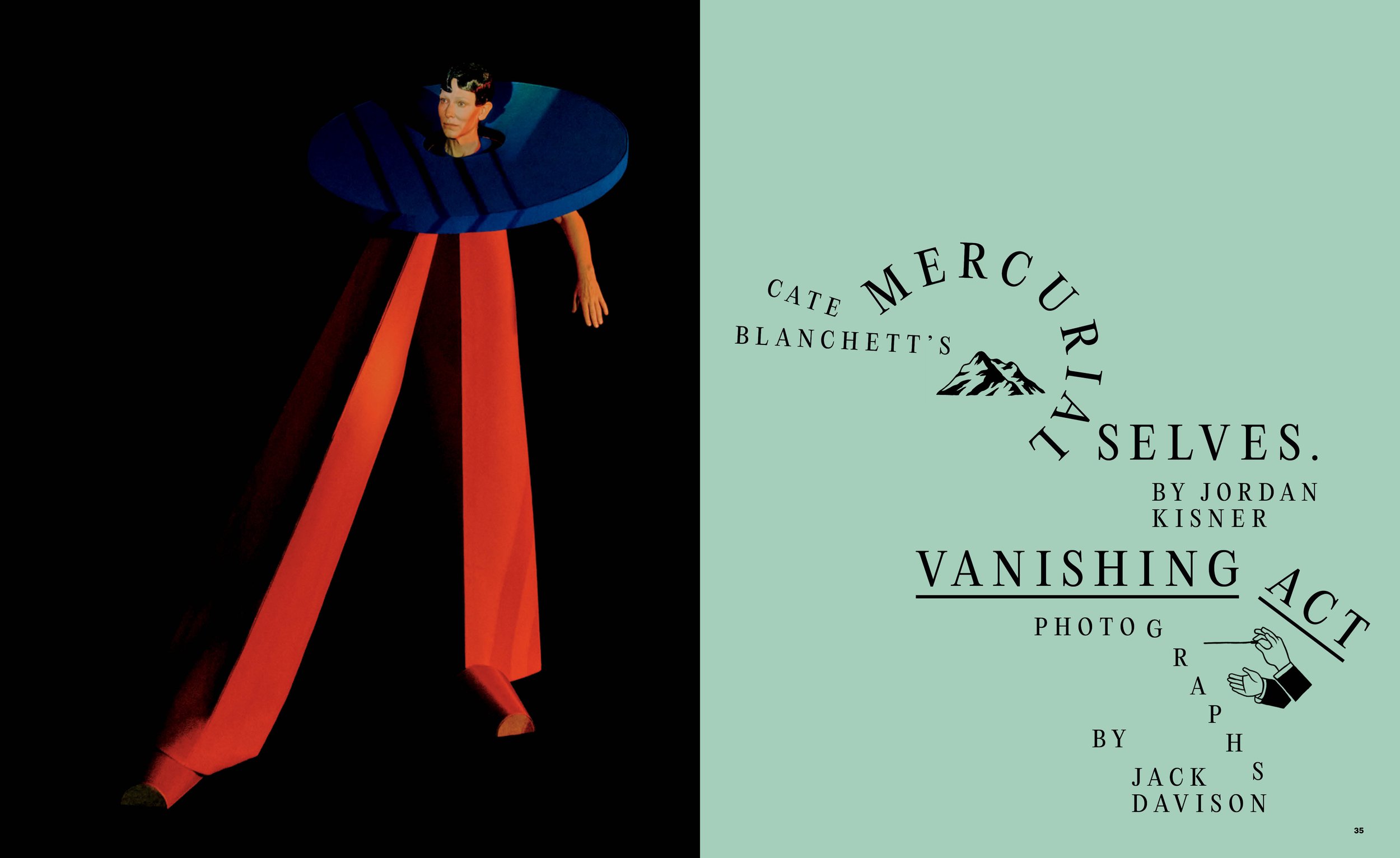
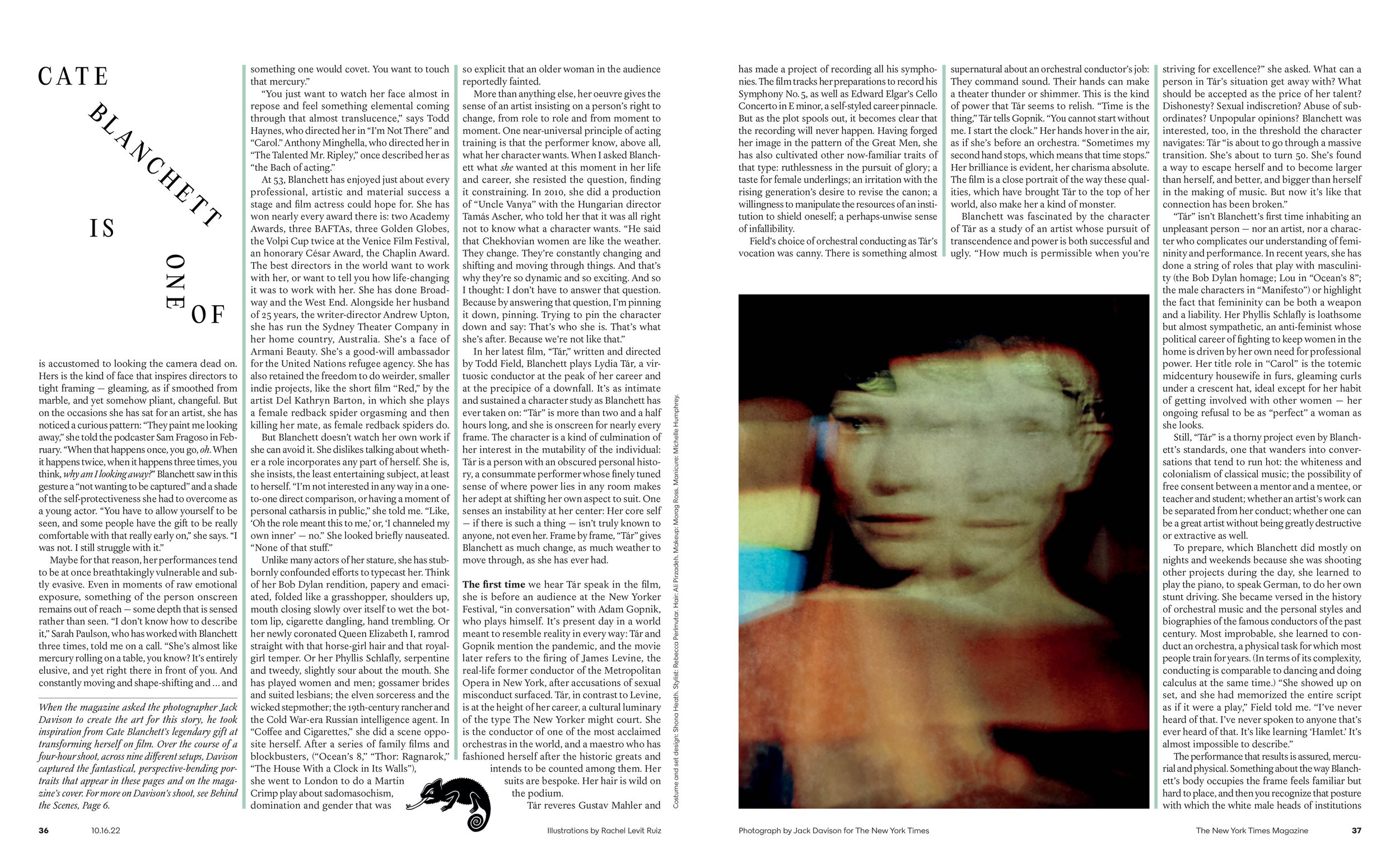
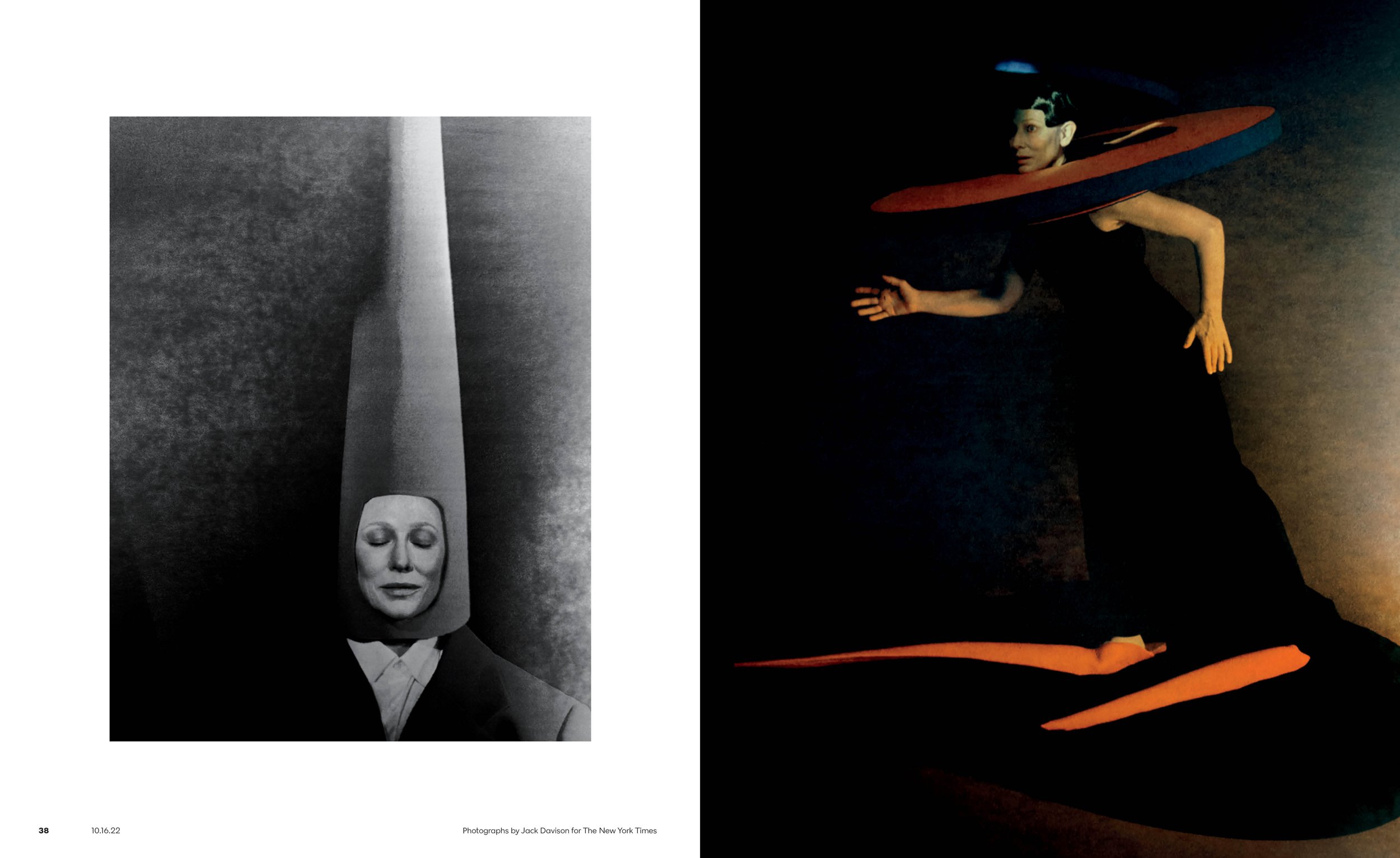
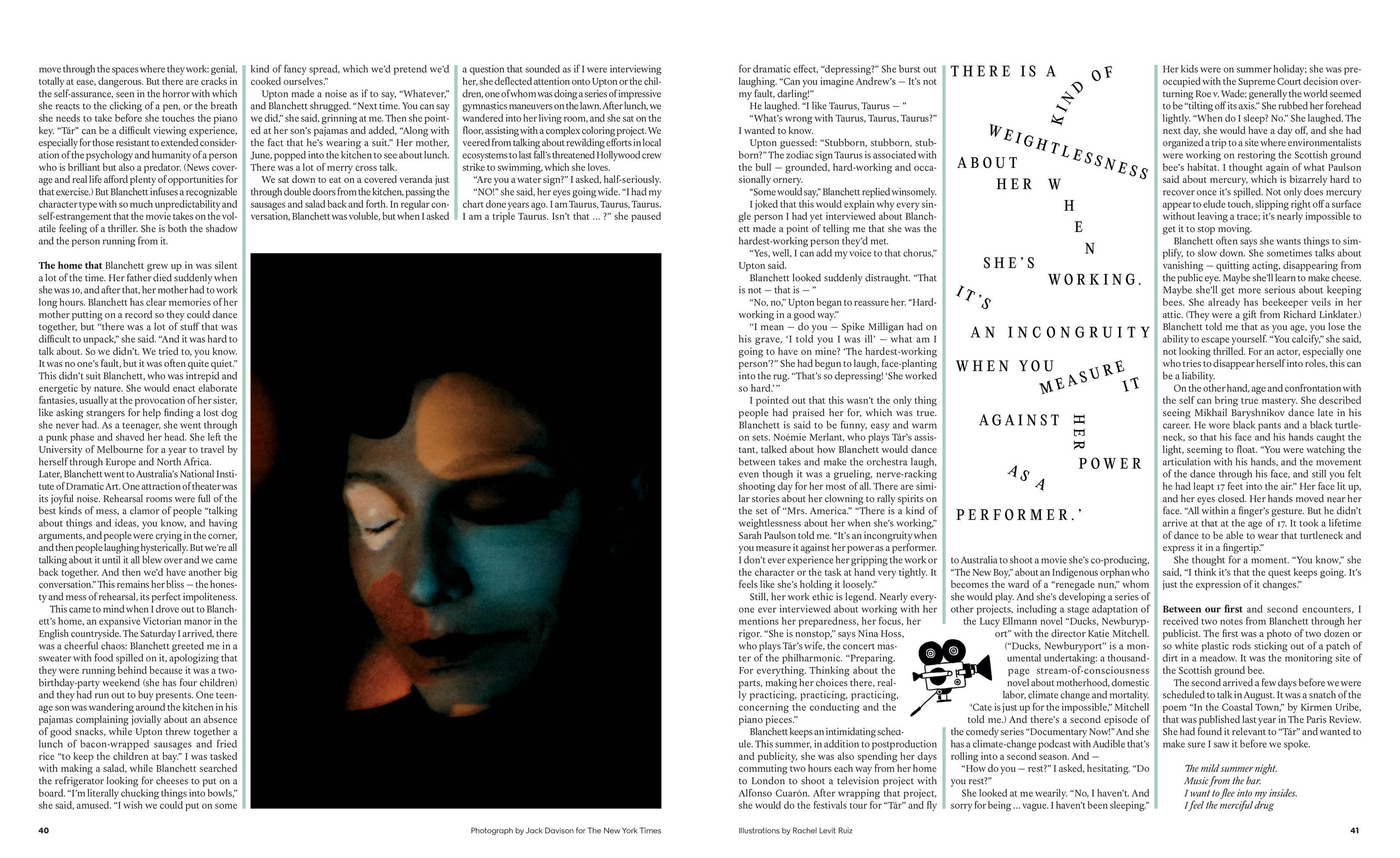
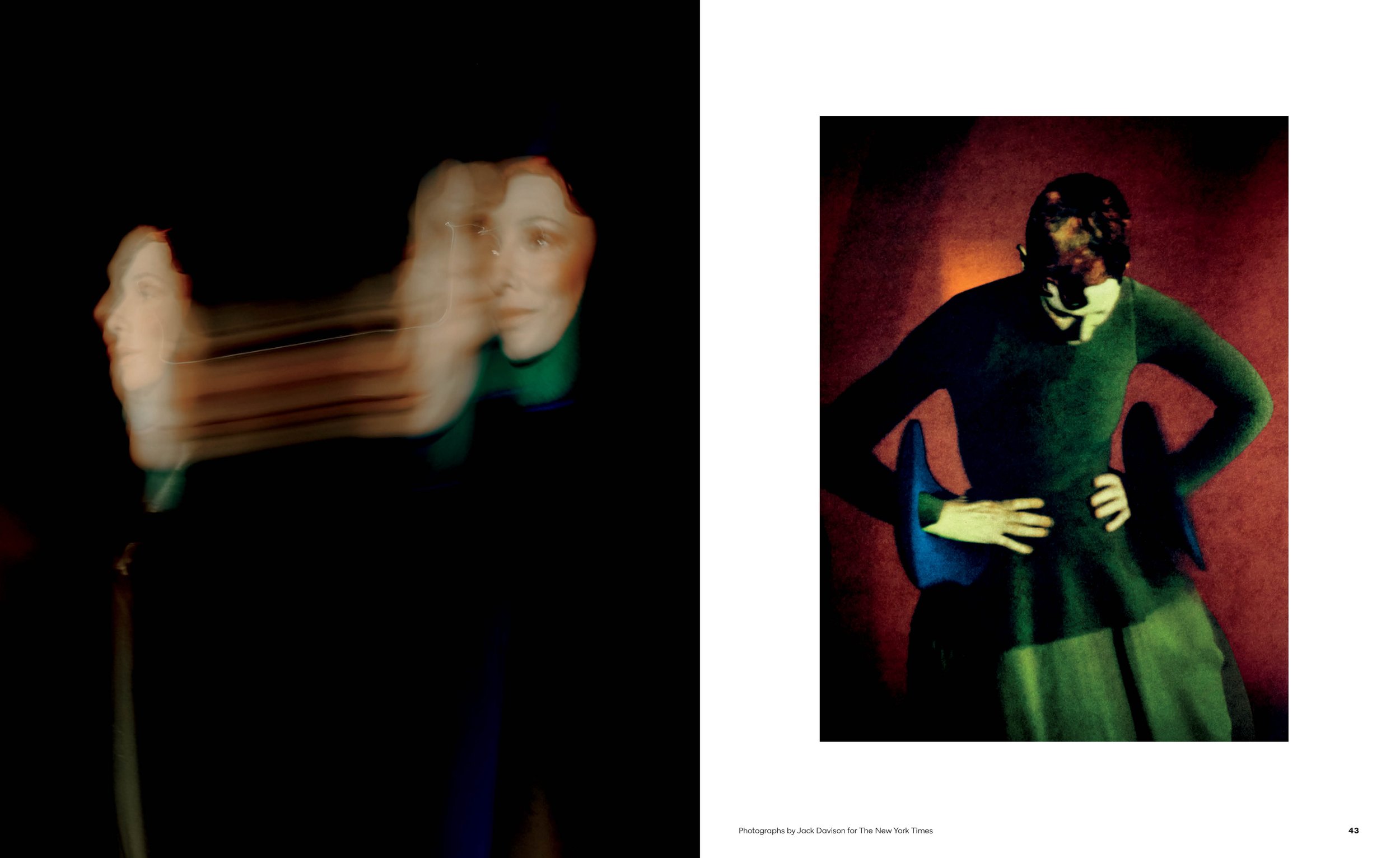
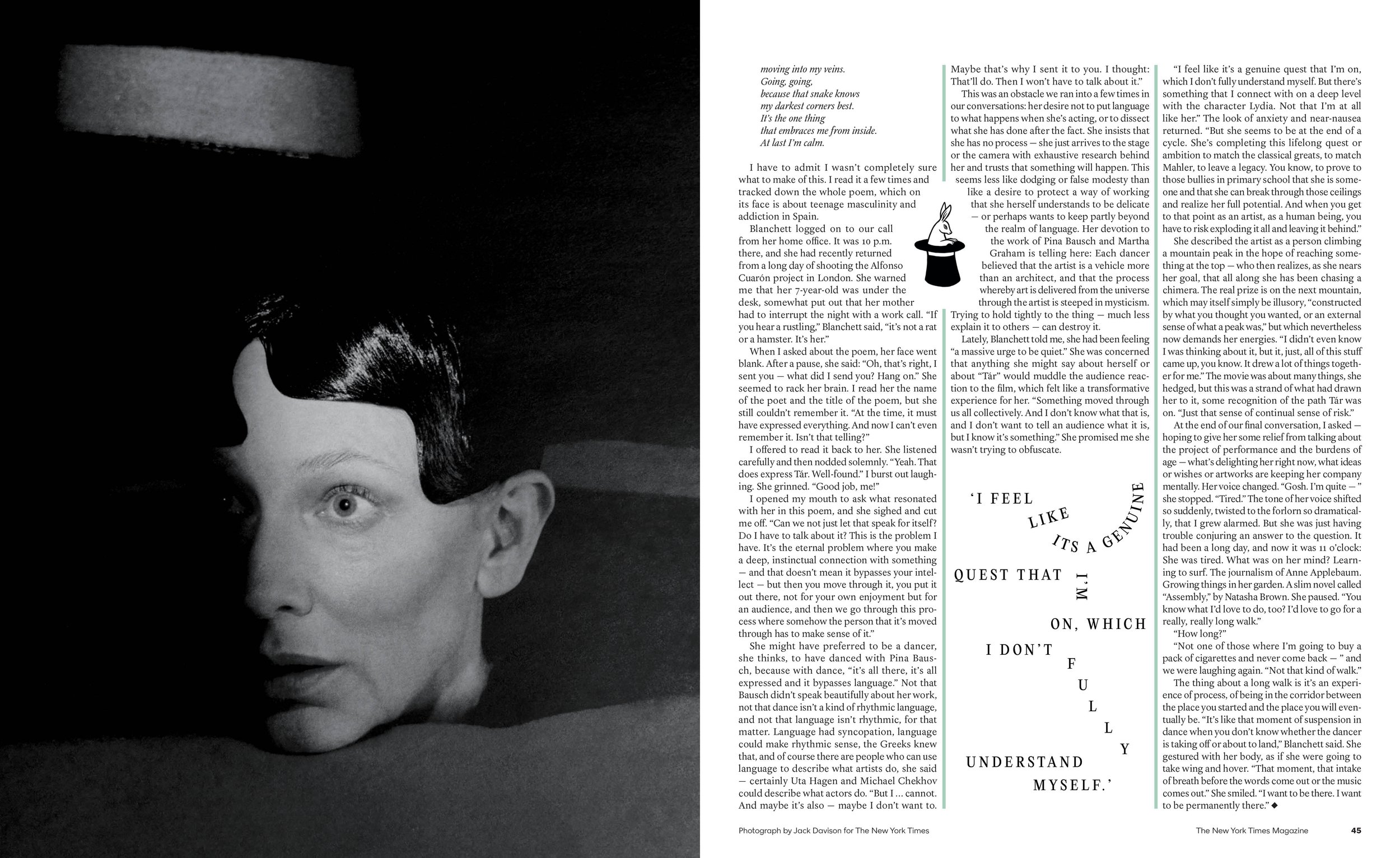
George Gendron: Have you gotten a call from Apple yet?
Kathy Ryan: What about?
George Gendron: Well, if Steve Jobs or Johnny Ive were still there, they’d be on the phone with you right now saying, “We’ve got to figure out how to collaborate here.”
Kathy Ryan: Well, you know, I’ve got my good friend, Rem Duplessis there. And Stacey Baker. Brilliant Stacey Baker, who was one of our photo editors. And Najeebah Al-Ghadban, who was one of our great designers, is there. And Marvin Orellana, who worked as a photo editor at the magazine, is there.
George Gendron: We’ve taken a lot of your time, but I have to come back to one thing, which is that you’ve been talking a lot recently about young photographers. A young photographer in particular. And yet on the one hand, we live in this age where everybody has access to all sorts of different platforms. And can be inspired to pursue creative projects. And yet it seems as if younger people coming up wanting to be journalists, writers, editors, photographers, videographers have a more daunting challenge than ever before.
And so I’m curious if you were in front of young students at an art college who are there because they want to hear what you have to say. What advice do you give to younger people who want to pursue a career in photojournalism? What do you say to them?
Kathy Ryan: The first thing I would say is follow your heart. Follow what you think is important. Photojournalists have to be opinionated. They have to take a stand. There has to be something that they care deeply about. And you have to have the courage to go for it.
George Gendron: Are you talking about subject matter or point of view or all of the above?
Kathy Ryan: Now I’m talking more about subject matter. So for example, Stephanie Sinclair, a brilliant photographer, early on started working for the magazine. She did incredible work on child marriage and she was the first photojournalist, as far as I know, to ring the alarm bell that there’s child marriage in so many places in the world, particularly Afghanistan.
We’re now going back 15 years, whatever. She cared so deeply about that subject that she committed her life to it. She obviously trained and developed her eye. She made remarkable pictures. So a young photographer needs to figure out what a photojournalist needs to figure out what do they care about. And then they have to go after it.
If you’re going to be a photojournalist, you need to actually start to develop something that’s yours. And then that leads to other things, like in the case of Stephanie. Then after that, she started talking about genital cutting. In many cultures in the world that still happens.
“It was one of the joys of iPhone photography. It removed some of that burden of ‘it better be good.’ Do I want it to be good? Of course. I work hard. You’d be amazed how many frames I’ll shoot of one thing, trying to get it exactly, precisely how I want it to look. ”
So she did an extraordinary photo essay for us on the brides in Afghanistan. And then she went on and did a photo essay on a cutting ceremony. And then she proposed doing something on underage marriage within the Fundamentalist Church of Jesus Christ of Latter-day Saints. And that will take you through your career.
So her deep empathy and concern for subjects affecting girls and women, particularly girls in the world, it’s like you have to almost be a visual activist. And she actually became an activist.
Earlier this year, when the draft of the Dobbs vs. Jackson decision was leaked in May, Jake wanted to do something related to that. And Jessica Dimson, the deputy director of photography of the magazine, had the idea to do something on the Cleveland Clinic maternal health clinic where pregnant women go who have risky pregnancies. And for years, doctors have had, as one of their things they can use in the treatment if there’s risk, the possibility of ending the pregnancy, which then suddenly, when the Supreme Court ruled, was no longer the case.
And I suggested we assign Stephanie. And knowing this lifetime of commitment, she was able to walk into the room with those women under duress, their husbands, their doctors. Maybe they’ve gotten news that’s disturbing. They’re making extremely personal decisions.
I think for young photojournalists, entering, as you’re right to ask, a very difficult field. It’s difficult to make a living, and difficult to compete with the abundance of imagery out there. But there are subjects that are under-covered. And if they can find one, if there’s something they care about, that will fuel them. That will keep them driven in a way.
Patrick Mitchell: I have sort of a cynical follow up to that question, now that we’re in 2023. And that’s, is there such a thing as a career in photojournalism, now and moving forward? And what does it look like?
Kathy Ryan: Oh, I think there's definitely a career because we're a visual society, so even though there are a lot of pictures, we still need someone to sort out what's unfolding out there to make smart, informative, focused pictures to tell you how to look at things. I think of people—Philip Montgomery, Mark Peterson—they’ve been at it for years. They’re still so impassioned that between jumping on a plane for self-driven assignments, or for us, or for the paper, or for other magazines, there are stories that actually need to be told by people who can make the complicated images they do.
LaToya Ruby Frazier, same thing. She does her own artwork, but they’re real documentary images. They’re real documentary portraits. Her approach is a little bit of a different approach.
You know, just because everybody has a pencil doesn’t mean they can write. Just because everyone’s making phone photography doesn’t mean they’re making the kind of pictures that merit a million people looking at them and then coming away with an understanding that a great photographer can bring to a subject matter.
George Gendron: One last question for you. Have you ever been bored in your job?
Kathy Ryan: No. No. I’ve never been bored. No, there’s never been a day where I’m bored. That does not happen.
Love City: 24 Hours of Romance, Lust, and Heartache in New York Photographs by Ryan McGinley
“Love City” was a special issue of The New York Times Magazine dedicated entirely to love in New York City over the course of a single day: Saturday, May 19, 2018. All the photography was shot on that date between 12 a.m. and 11:59 p.m. By choosing this theme and so tightly limiting the time frame, the magazine hoped to convey the city’s magical density of intimacies, the way it juxtaposes the private communion of one pair of lovers with the rollicking public energy of the bustling crowd—itself composed of numberless lovers communing privately amid the noise, all the center of their own universe.
Back to the Interviews
Design for the People
In this special episode we meet the creators of the 1980s/90s interior design juggernaut, Metropolitan Home: editor Dorothy Kalins and designer Don Morris.
For me, the 1980s comes down to two things: The Nakamichi RX-505 Cassette Deck and Metropolitan Home magazine.
First, the gear.
The Nakamichi RX-505 was an audiophile’s wet dream. It was prominently featured in the steamy 1986 film, 9½ Weeks. In a scene from that movie, Mickey Rourke walks Kim Basinger into his monochrome Hell’s Kitchen penthouse, where she glides through a living room full of furniture by Marcel Breuer, Richard Meier, and Charles Rennie Mackintosh. In the middle of it all, the Nakamichi opens, flips the Brian Eno cassette, and closes, automatically.
And now, the magazine.
Eighties movies featured a slew of inspirational apartments: Tom Hanks’ Soho loft in Big, Judd Nelson and Ally Sheedy’s Georgetown pad in St. Elmo’s Fire, Billy Crystal’s East Village flat in When Harry Met Sally. So when apartment dwellers from Des Moines to Manhattan asked themselves “How can I make my apartment look like the ones in the movies,” they turned to Met Home.
While the old guard, House & Garden, Architectural Digest, and House Beautiful, relished in displaying palatial estates and lavish celebrity spreads, Met Home was the design inspiration for the rest of us.
By the mid-80s — thanks to today’s guests: editor Dorothy Kalins and designer Don Morris — Met Home was the best-selling shelter magazine in America, boasting a higher circulation than all of them.
It was a magazine rich with design and lifestyle inspiration and beautiful apartments and houses, but Met Home was not a typical decorating magazine. Its stories were very personal and captured its subjects’ individual passion for the things that surrounded them.
But it didn’t last long. By the early 90s, thanks to a recession, Meredith sold Met Home to Hachette, who out-bid Jann Wenner’s Straight Arrow Publishers for the magazine. Hachette, though, was more focused on its own shelter book, Elle Decor, and left Met Home to languish and fade.
Kalins and Morris were gone, each off on their own new adventures.
For many of us, Metropolitan Home was a special magazine from a special time. A hopeful time. We were moving out — to dorms, first apartments, or starter homes. We bought affordable modern furniture from a brand-new Swedish big-box store called Ikea. We drank the New Coke while we played Donkey Kong on our Nintendos. We sang along with “We Are the World.” We watched Top Gun — the original — on our VCRs. And we paid an average of $375 (!!) a month for our rent.
Met Home gave its intrepid readers permission to indulge themselves in creating their own home design. And, as Morris says, “We helped expose people to a lot of design trends, but also gave them a sense of how they might be able to bring that into their own lives.”
Metropolitan Home chronicled an amazing period of design innovation. Its audience was hungry for new trends, products, materials, and tips, along with inspiration for travel, collecting, and entertaining. That said, the strongest covers focused on a singular theme to make the most impactful impression on the newsstand.
“People were living very differently and their values were different. They bought different things. They wanted to design differently. They wanted to cook at home differently. They wanted to share their homes with all kinds of different people. It was not going to be the Better Homes and Gardens lifestyle.”
Dorothy Kalins (Photograph by Roger Sherman)
Don Morris (Photograph by John Dolan)
George Gendron: I want to start by asking you guys a question that Pat and I have speculated about, and we’re wondering whether it’s just our imagination or whether there’s more than some truth to this.
Not only that, something big was happening culturally in the US in the late ’70s and early ’80s. So think of this as the Apartment Life/Metropolitan Home era. And something big had to do with these really profound changes that were taking place in how, maybe baby boomers, I guess I’ll use to describe who we were at the time — still are — how baby boomers viewed their homes.
And that changed expectations, I think, about what people were looking for in a magazine. And we, being such incredible fans, in particular of Met Home, often attribute, at least some of this, to what you guys did at Metropolitan Home. Taking a completely different approach to the home as it appeared in print.
At the same time, some of the people that I grew up with at Inc. Magazine, like [Gordon] Segal at Crate & Barrel, often refer to this period, not that they had started Crate & Barrel — Segal started it in ’64 — but this was a period where, all of a sudden, Crate & Barrel started to really take off.
To the extent that I know my Pottery Barn history, the same thing was true there.
Dorothy Kalins: Yep.
George Gendron: Part of this had to do with kind of accessible housewares — really well designed maybe for the first time, but talk to us, before we get to the magazine, talk to us about what was going on in the zeitgeist that you guys were a part of and a leader of?
Dorothy Kalins: Well, to give credit where it’s due, the editors of Better Homes and Gardens and the publishers who were — Better Homes and Gardens was the biggest magazine in America and it was published out of Des Moines, Iowa — a bunch of very professional, but very conservative people were our bosses. The editor and publisher of Better Homes and Gardens kind of thought that perhaps the children of the Better Homes and Gardens readers would not be readers of BH&G.
And you’re right. It really is a baby boom idea. Our generation didn’t want to live like our parents. I mean, the fact that we have turned out to be more like our parents than not is something else altogether. But there was a huge rebellion. And we were not them.
And to their credit, they started a magazine out of the special interest division of Meredith called Apartment Ideas. They had a special interest magazine division that did things like gardening and building your patio on a weekend. And there was a whole division of special interest publications.
And so the real seeds of Met Home were in a quarterly magazine called Apartment Ideas. And the idea was that the people who were coming out of college were not going to go immediately into buying a home in the suburbs the way their parents did. They were going to experiment, they were going to travel, they were going to live in different combinations of people.
They were going to live in different ways, in different styles. Sometimes just to spite what their parents did. And they were right about that. So that magazine started sometime in the ’60s, became a quarterly, then became a monthly, and then sometime in the ’80s became Metropolitan Home. Because it really was following this generation as it came out of school, established our first apartments, our first roommates, our first relationships, and et cetera, et cetera.
Kalins had been at Apartment Life, Meredith’s youth-oriented home magazine, and later rebranded it Metropolitan Home. When Morris was hired to redesign the magazine, the first thing he tackled was the Met Home logo. Having a logo that felt cloned from The New Yorker wouldn’t do. Morris worked with noted type designer Dennis Ortiz-Lopez. The first iteration was a sans serif that balanced the letterforms and fixed the kerning. The second refined the logo and added small spiky serifs to reflect then-current architecture and interior design. And finally, the characters were made more condensed and spaced apart so the logo could mingle more with cover photography while remaining a strong statement.
George Gendron: You said when it was launched it was called Apartment Ideas?
Dorothy Kalins: Yes.
George Gendron: And when did it change its name to Apartment Life?
Dorothy Kalins: Somewhere in the late ’70s.
George Gendron: And then they recruit you, then you go to work there, right?
Dorothy Kalins: Yeah. Well, I was in New York and then, yes, I did. Then I went to work there.
Don Morris: Dorothy founded Met Home.
George Gendron: Yeah. So how did that magazine transform from Apartment Life to Met Home, and explain your role in it. Was that your idea or did they come to you?
Dorothy Kalins: They were smart enough to hire a group of social researchers called Yankelovich. It was Dan Yankelovich’s company. And they were really on the leading edge of this kind of generational surveys, studies about behavioral attitudes and buying patterns and all of that. And it became really, really clear that there was, in fact, a Baby Boom and that they were not going to behave the way their parents did.
Their values were different. Their M.O.s were different. Their living arrangements were different. And the people at Meredith that were smart enough to know that they needed a different magazine. And the reason it changed from Apartment Life to Metropolitan Home was that all the studies — there were, there are lots and lots of studies. Meredith’s a big company and there they did lots and lots of studies of their readers and of these behavioral patterns.
And it was very clear that these people were grouped around cities, the people who were attracted to Apartment Life. And they were, in fact — I mean it’s, when you look at it and you look at the map of Georgia in the recent election, it’s all those blue counties. And that’s what happens. The people came to the cities all over the country. So that’s where the Metropolitan name came from.
“I remember going around the country with the first issue of Met Home saying, ‘It’s not the Pepsi generation, it’s the Perrier generation.’”
George Gendron: And you became the editor-in-chief, the founding editor-in-chief of Met Home?
Dorothy Kalins: Mm-hmm. I was the editor of Apartment Life. Yeah.
George Gendron: So, go back to a point before you had launched that premier issue, and tell us what was the blueprint, what was the idea, what was the positioning behind this new magazine called Met Home that was growing out of Apartment Life?
Dorothy Kalins: Well, first of all, the circulation of Apartment Life, at the time we made the change, was 800,000. Which was a very, very large circulation for such a magazine.
I mean, it wasn’t the 6 million that Better Homes and Gardens was, but it was a very hefty size. The idea was — it was very much a marketing idea — to take the top, the crème de la crème, of that readership, around the most major cities, highest income, highest education, and realize that these people were living very differently and that their values were different.
They bought different things. They wanted to design differently. They wanted to cook at home differently. They wanted to share their homes with all kinds of different people. It was not going to be the Better Homes and Gardens lifestyle.
So at that point, I remember going around the country with the first issue of Met Home saying, “It’s not the Pepsi generation, it’s the San Pellegrino, or the Perrier generation.”
It was the Perrier generation. It was those subtle ideas of what we were drawn toward. And we thought we thought we were just … everything. I guess every young cohort thinks that, right? That they’re the hippest, smartest, chic-est, whatever. But basically we wanted to talk to them where they lived.
And we did not want to talk to our readers in a dictatorial way. We wanted to talk to them in a journalistic way. And that was the editorial positioning of Met Home.
George Gendron: That’s a great line. “It’s not the Pepsi generation, it’s the Pellegrino generation.” Which you could argue was a tagline for how you spent much of the rest of your professional life.
Right? Because it wasn’t just about Met Home. It was about gardening. It was about food. Cooking. So how did you and Don meet, and what was Don’s role at Met Home in these very early days?
Dorothy Kalins: Well, I’ll tell my quick version of it. At that point, I had an office in Des Moines and in New York.
I was going back and forth and we had much of the art department. There was an art department in New York, but not the definitive production of a magazine. And it was time to make the switch to be a New York-based magazine. And we had a very nice man who was an art director who wanted to go off and become a photographer again. Right? Isn’t that what happened?
Don Morris: Yes.
Dorothy Kalins: We were talking earlier about New York magazine and how all of our collective experience with New York magazine shaped us. And so it definitely was one of the first things that I did after my first job at Fairchild. But after that, I was a contributing editor at the very early New York magazine. And I got to work directly with Milton [Glaser] and Clay [Felker]. And I was really influenced by the energy, and the chutzpah, and the point of view they had. Journalism first. The look of the magazine really mattered. Every detail about it mattered. It all added up to something that nobody had really seen before.
So, fast forward, we were looking for an art director. I opened an issue of New York magazine and I saw a layout of objects. I don’t even remember whether they were chairs or gifts or whatever, but they were put on the page with such verve, and intelligence, and charm.
And our magazine covered a lot of objects, chairs, sofas, cups, saucers, pitchers, whatever. And I just wanted that energy. So I literally said to the art director who was about to become a photographer, “Find that person who did that layout.” It’s rare when you can trace it to that exact thing. But that’s what happened.
Met Home Franchise Stories
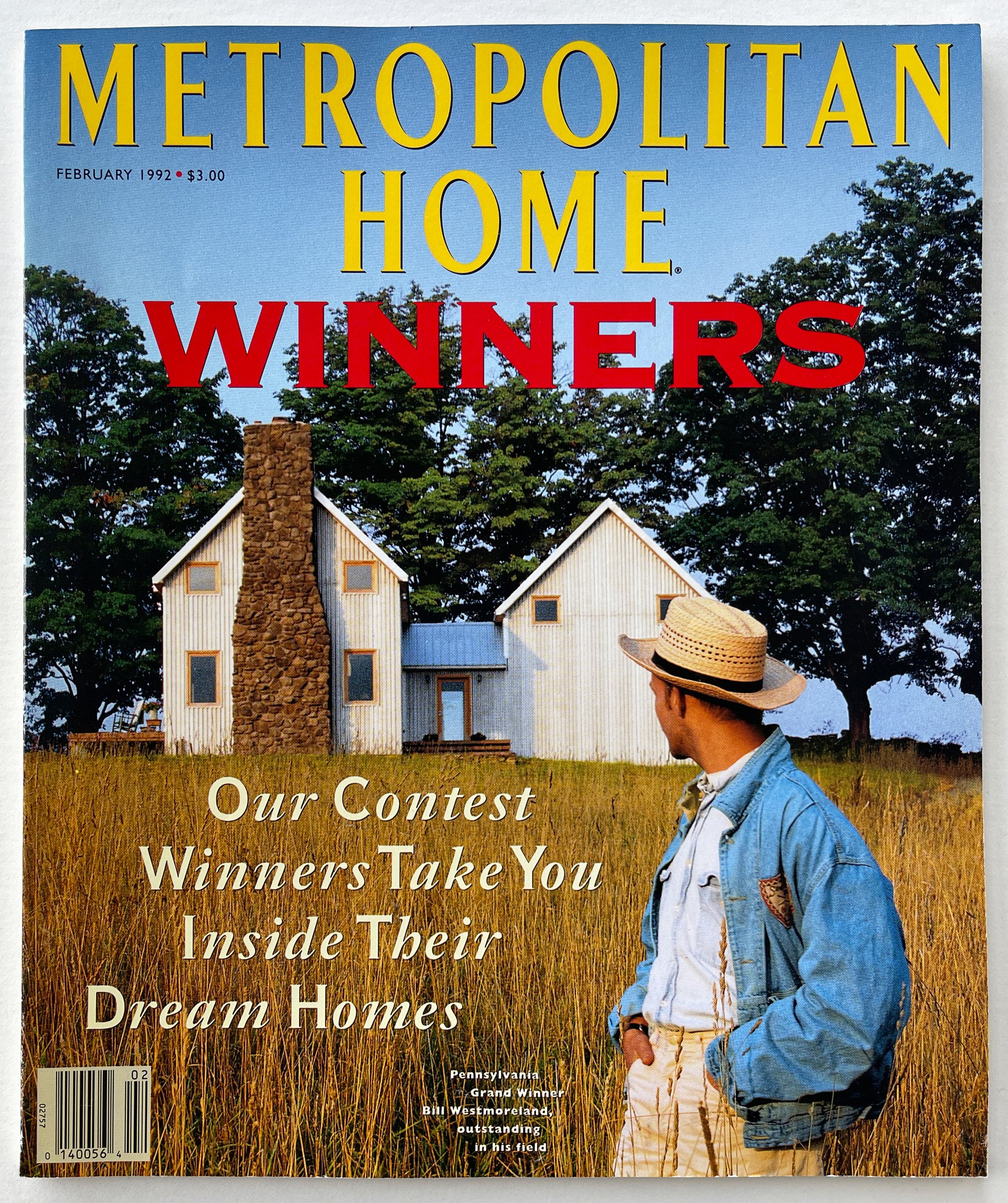

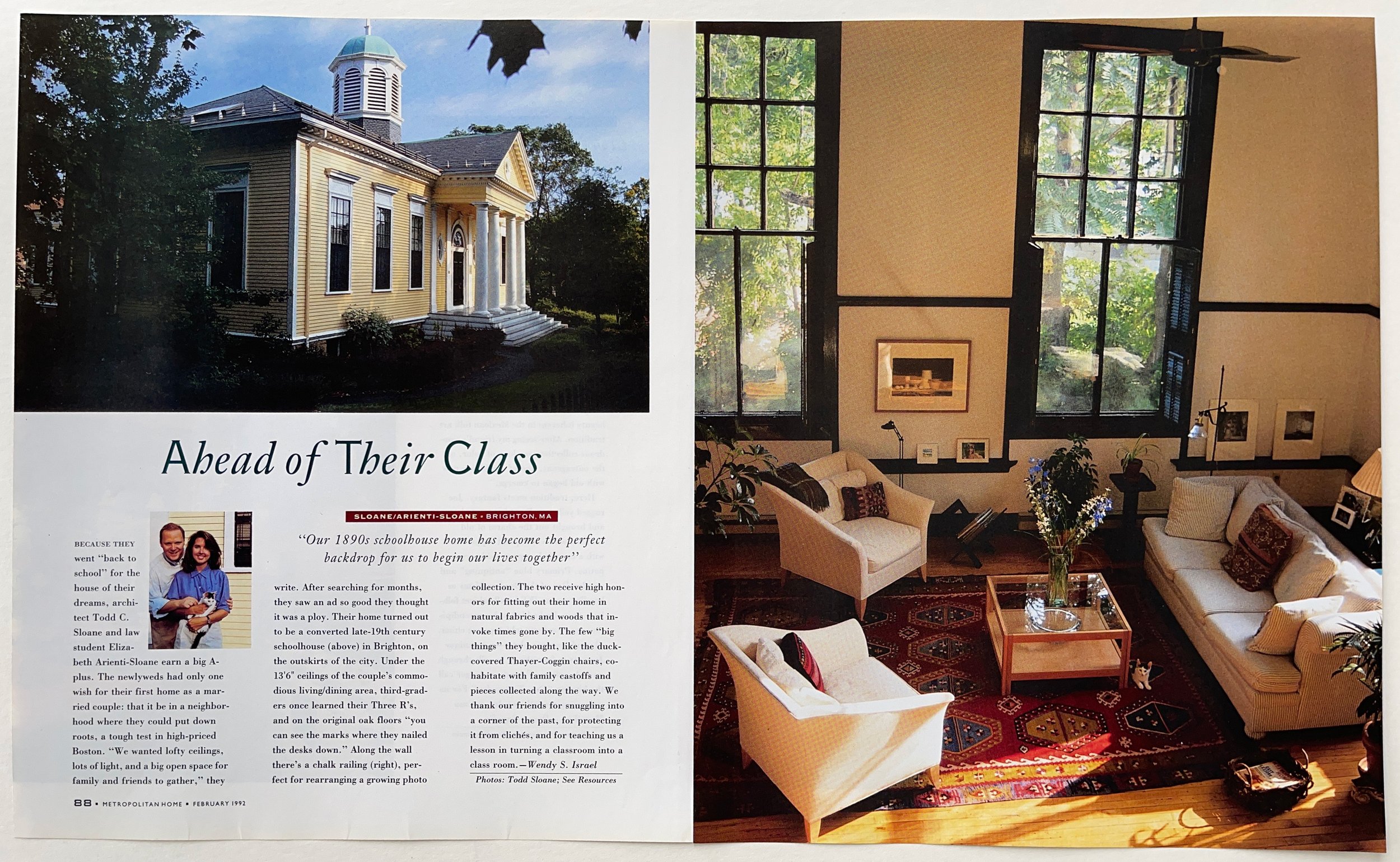
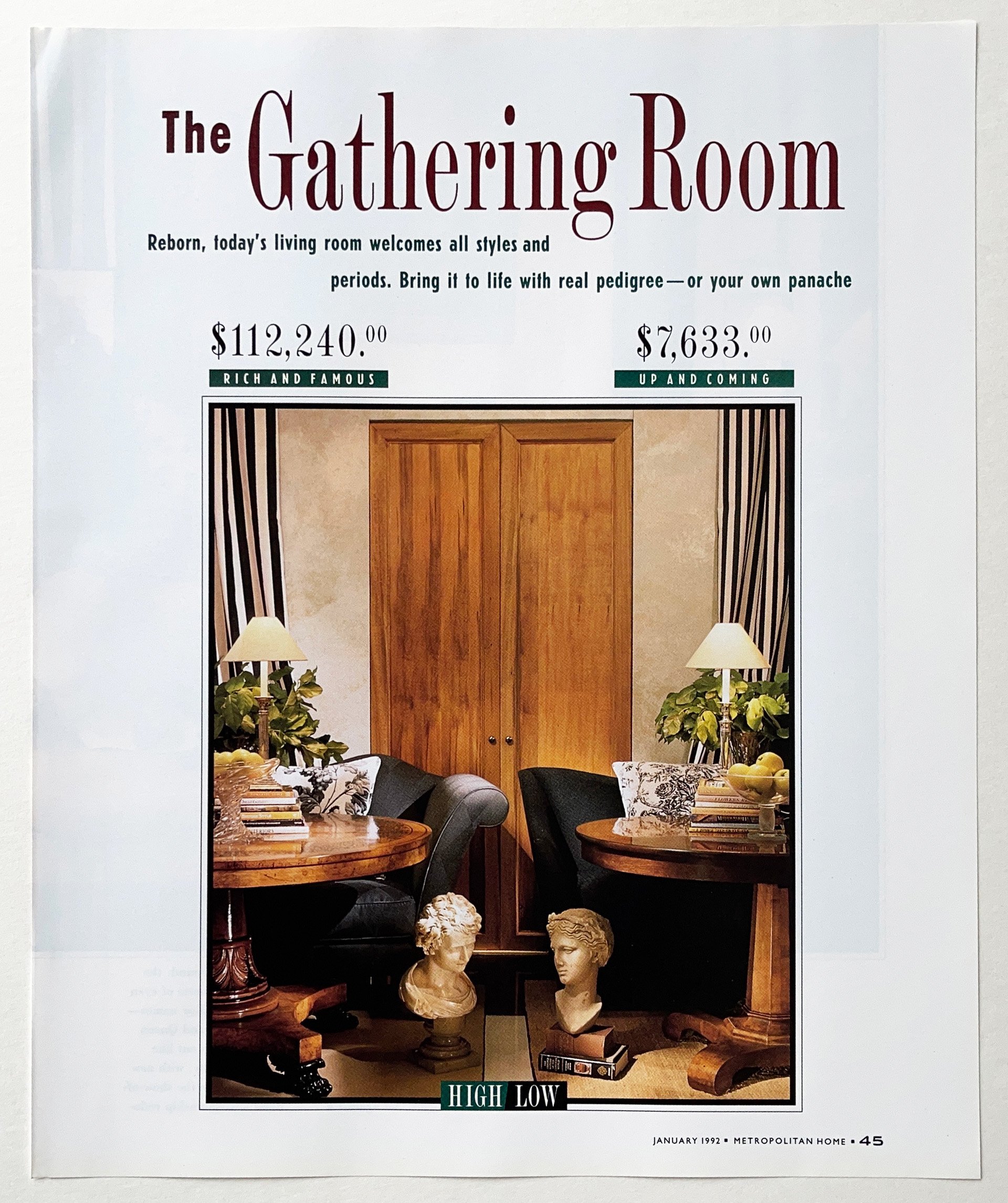

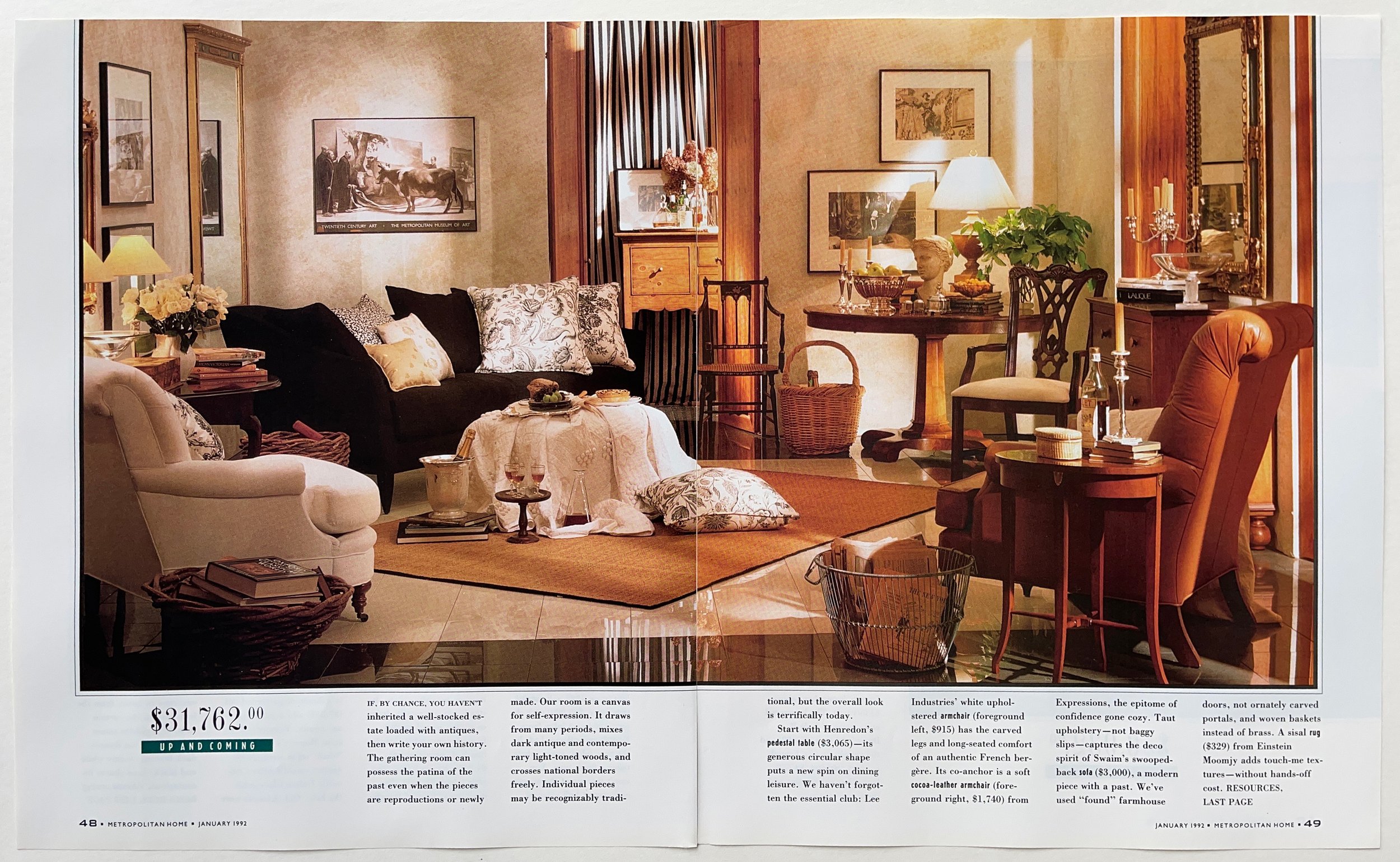
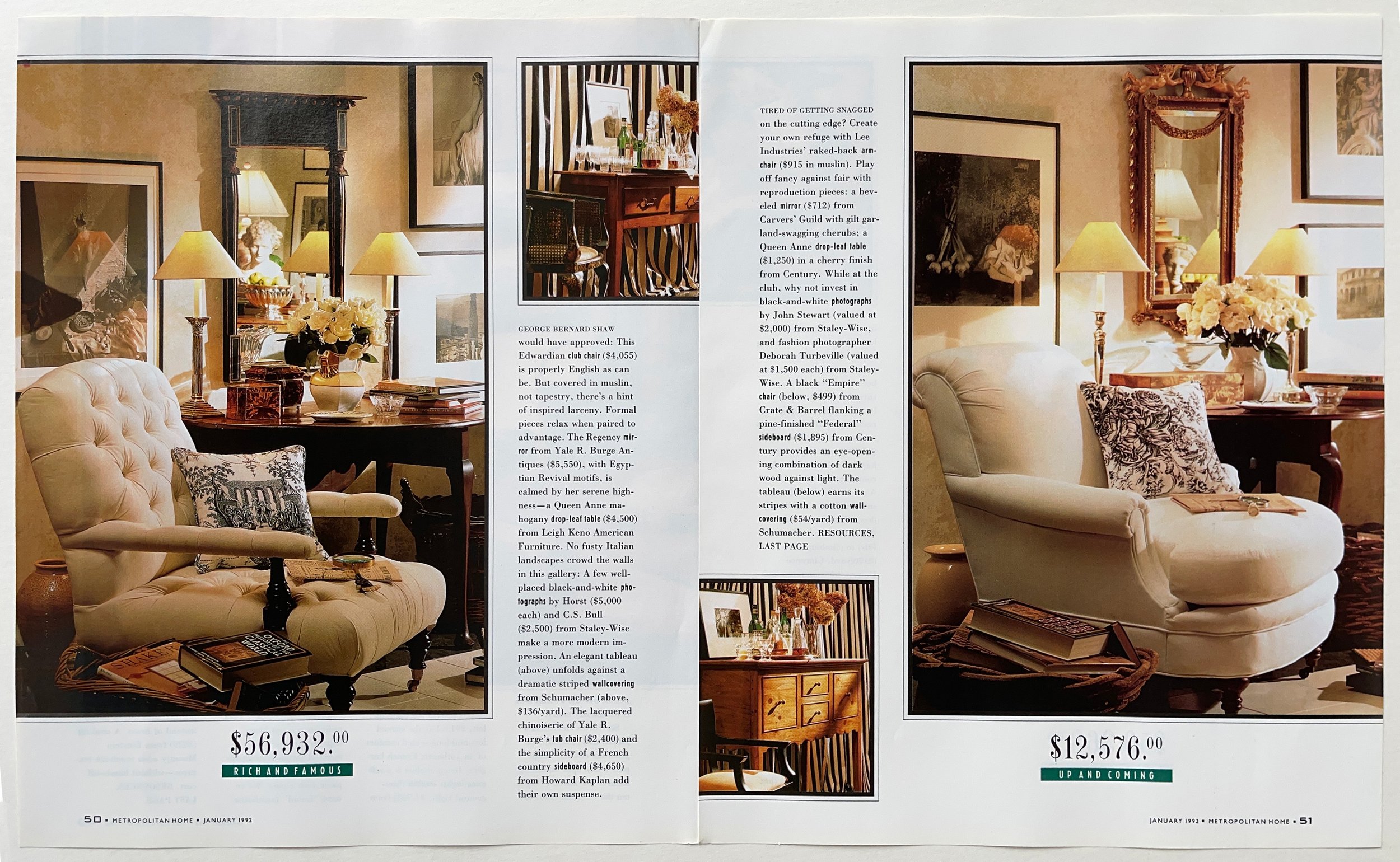

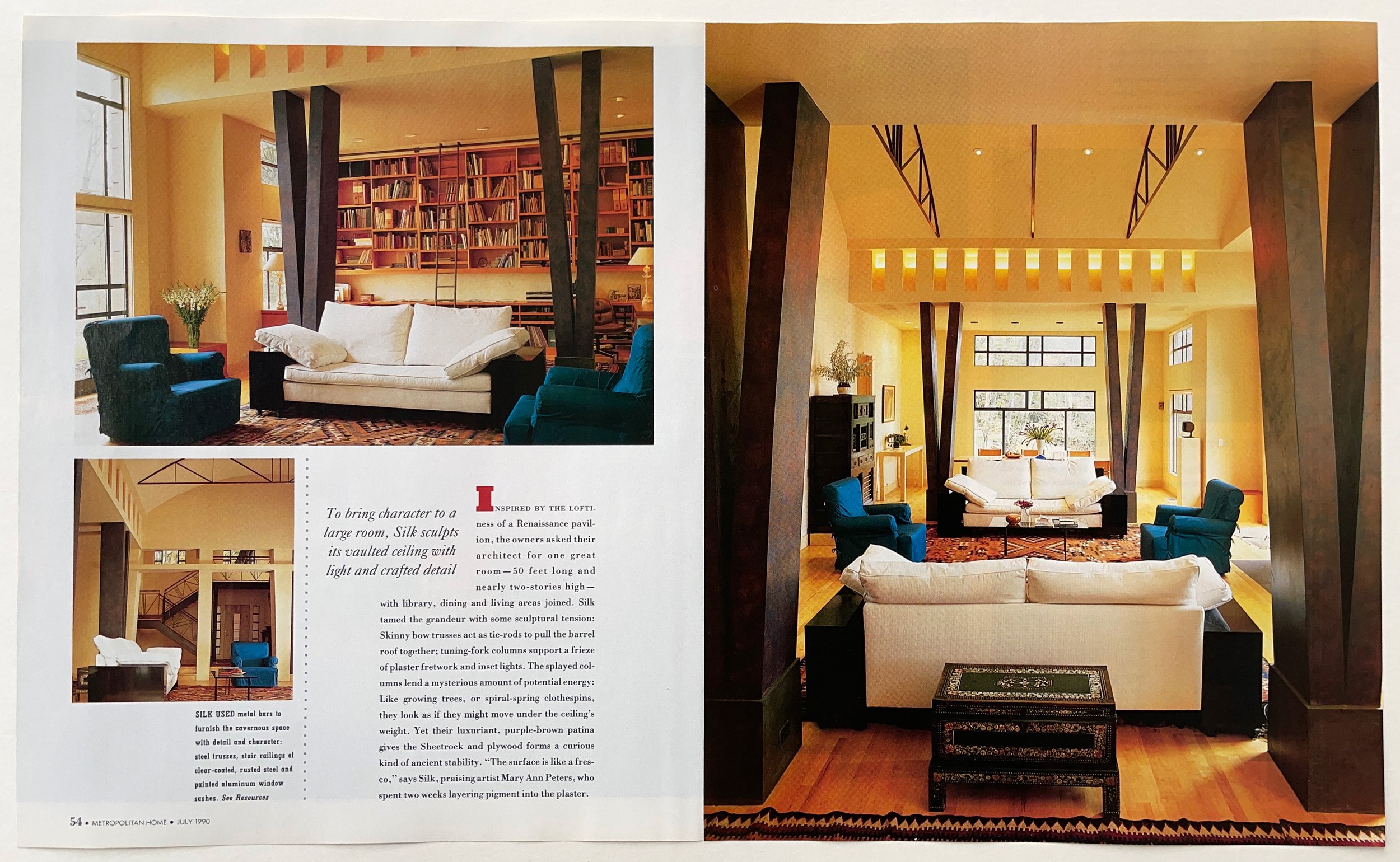
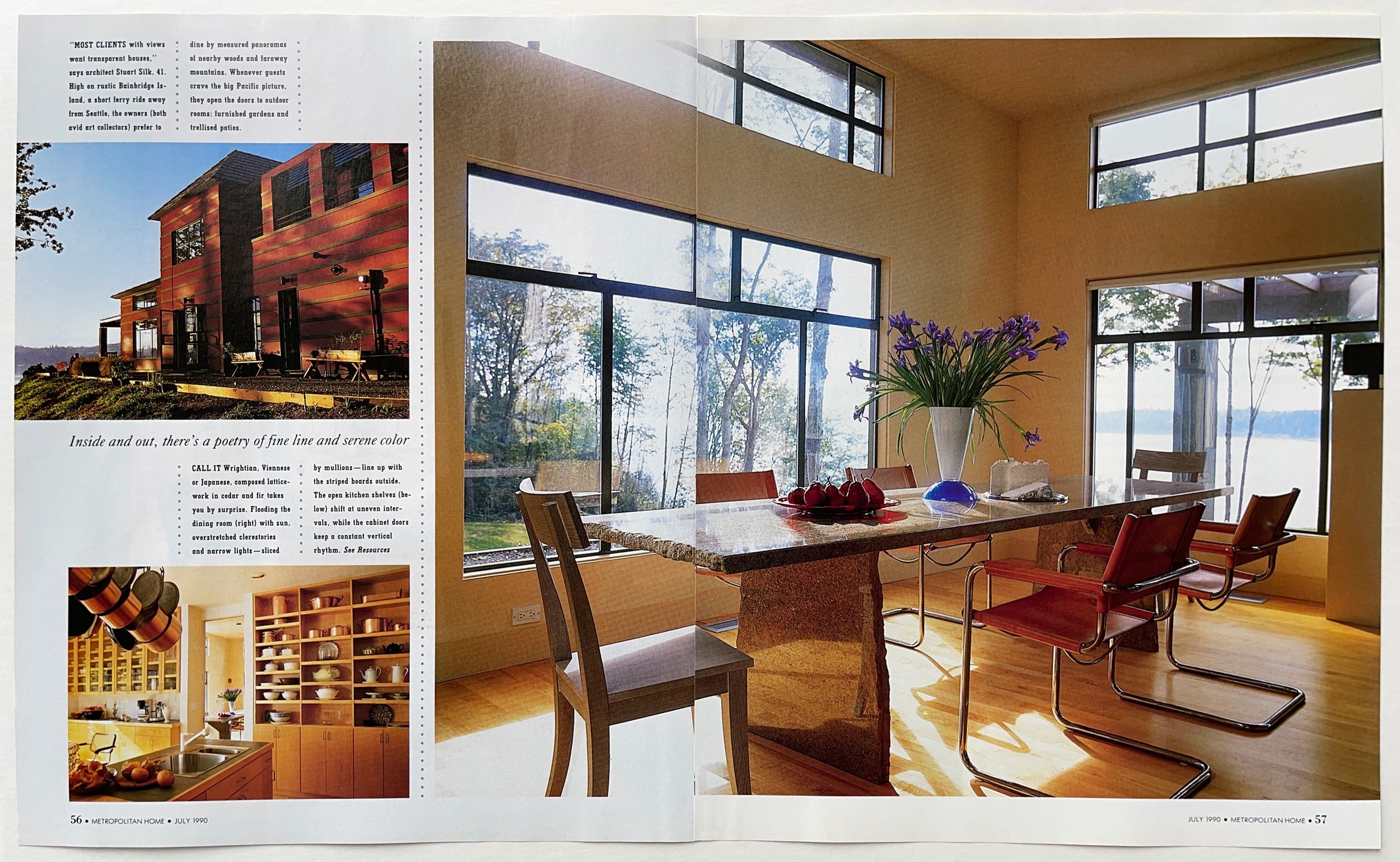
Using regular focus groups, competitions, and reader letters, Kalins identified the stories that our readership craved on a regular basis. Above, three examples: Met Home’s annual reader’s homes competition, the High/Low extravaganzas produced by Carol Helms that showed luxurious furnishings and very similar yet affordable alternatives, and inventive renovations of the ubiquitous ranch-style home.
George Gendron: And we’re assuming here that that layout was done by Don Morris.
Don Morris: Well, they couldn’t find the guy that did it. But I stepped in.
George Gendron: Nice move, man.
Don Morris: Yeah. New York magazine was just an incredible experience for me. I had just recently graduated from Parsons and a friend of mine who was working there was moving onto his illustration career and asked if I wanted to do what was the lowliest job in the art department: running the stat machine.
And it was like walking into an improvised sitcom, you know, just incredible characters, incredible energy. So many different paths crisscrossing. The non-sequiturs floating around were just so funny and so full of smart minds that I was just taken. I always thought I’d be there for about two weeks.
Dorothy Kalins: It was never a division. Something that you and I always maintained. There was never a division between words and pictures. Never. It was always the pages. It was always the message. It’s how you got the energy out to the reader.
George Gendron: When we were talking a few days ago I was mentioning my time there as a very young kid and that was my first job. And so I grew up, unfortunately, with the expectation and understanding that, “Well, that’s the way all magazines worked.” You know, that’s the way all editors and designers collaborate. And then I left New York and found out...
Don Morris: So Roger Black had just taken over at the time at New York and I’m running the stat machine, and thinking that I was only going to be there for a little while. I was always asking questions and seeing if anybody needed anything, and I just couldn’t believe I was there.
I was so excited about being there that I think I had this smile plastered on my face the whole time. And about four months in, Roger Black came in and — he moved through the art department like the furniture was going to stop him. It was just like this force going through and talking as he went.
And always very entertaining. And he asked me if I wanted to go out to lunch with him. I went out for my first business lunch, had my first sushi. And he’s telling these amazing stories and at the end of the lunch he said, you know, “I love your enthusiasm. I love that you have an interest in all this. You have great ideas. I’m going to make you assistant art director.” So I came back ...
Dorothy Kalins: …Had you done layouts before?
Don Morris: No. No.
Dorothy Kalins: “You’re a nice guy. You’re adorable. I’m making assistant art director.” [laughs]
Don Morris: You know, yeah. It was sort of shocking.
George Gendron: What did he see in you?
Dorothy Kalins: Smartest thing he ever did!
Don Morris: I don’t know. You know, I was really struck from the beginning with the generosity that a lot of people in magazines had. You know, before that ever happened, just the way that people would explain to me what’s going on and exposed me to things.
And then after that, the four people I was in charge of had to teach me how to do the job. So it was my first challenge of management. But luckily I had such nice rapport with them and they were such nice people that they helped me along. So I learned a lot. And when Roger left, Robert Best took over.
Patricia Bradbury was his art director. And Bob was just a force of energy and goodwill. And he did a lot of things — at the time, Ed Kosner became the editor and wanted to put a stop on anything that was too experimental. He wanted to make basically Newsweek for New York and bring credibility into a magazine that was known for being very fluffy.
And, at a certain point, we were doing layouts twice. We would do Ed’s version and we would do Bob’s version on a weekly basis to try to get ideas across. And we did this for months. And for me it was an incredible opportunity because I was in charge of the more formatted thing. So I learned really how to do layouts in a pretty executed way while Patricia and Bob would experiment and go off and do these amazing things. And then I would draw little dingbats or little drawings for the things that Bob was doing. And, at a certain point, there was this incredible moment where you would meet with Ed and he would talk about the stories and he started to draw on a pad ideas that we had shown him in layouts that were rejected.
So Bob’s tenacity — and you know, he didn’t change. He just moved through things. He was someone who saw the long path during a weekly deadline. And from that moment on, we got to do all these different things and Ed trusted us.
And so when Mike Jensen, the art director, came to me — I think I had been there for four years — we had won the National Magazine Award for design. It was just thrilling. And I was ready. I had done a lot of studying. I was working on a lot of freelance on weekends.
I was really trying to really get to know this as well as I could, spending a lot of time at newsstands. And I became really enamored with the Esquire that Robert Priest and April Silver and Stephen Doyle were doing. It just was, I thought, an incredible, urbane, bold execution of a magazine.
And as I read it, it really brought me in. And as I became an avid reader, I saw how well it articulated the voice of the magazine. So that was a completely different thing than New York, which kind of changed its hats every week, doing radically different editorial requiring radically different solutions.
So when Mike Jensen came to me I was really intrigued with the idea of taking a magazine and really trying to find its personality and find its voice. And when I met with the staff, it was this incredibly exuberant staff at Met Home who really knew the subject and were incredibly enthusiastic and knowledgeable about it.And I didn’t feel like that was on the pages.
So I left the interviews thinking, “This is an incredible opportunity because I think I can make a magazine that looks the way I hear these people exploring and speaking about the subject matter.” So it was just a great moment for me to move on to something that was a whole different kind of way to think about design.
“For Dorothy to say to me that she liked what I was doing and felt like it was making some change to something that she held so dearly was an incredible thing.”
George Gendron: I want to put the Met Home story itself on pause for just one moment and comment that we’re talking about 30 years ago. And fast forward, and you two, editor and designer, are still working together 30 years later. I think that’s probably more challenging and difficult than sustaining a marriage for 30 years!
Don Morris: Yeah. Well, you know, we considered marriage, but we thought this would be better.
Dorothy Kalins: Yeah. Way better!
George Gendron: Very smart. So what’s the secret sauce to having this kind of vibrant, intense, collaborative relationship that lasts not for a period at a publication, but for decades over a wide variety of different projects?
Dorothy Kalins: I think it's mutual respect and we love the work. We love the work. Yesterday we were on the phone for five hours just laying out one chapter of a book we’re doing, and it’s a constant conversation. The conversation is probably the same conversation we’ve had for many, many decades. But it’s always about how to get the ideas across. It’s never about decoration.
It comes from an intrinsic love of the subject matter and then, you know, a very eager way to interpret the way it goes. I mean, when I started doing books after a long, long career in magazines, it was never a question to me. And Don had his own studio by that time and — we’re skipping ahead decades — but we just started doing from day one, my first book, I knew.
See, there’s a little subversiveness here. It’s not just ego. I just knew that we know how to tell stories. And when I started doing books after I left my last magazine job, I thought, “Books are so stupid.” They’re done by 16 different people who are not talking to each other. You have the person who’s the writer, then you have the person who’s the photographer, and then you have the person who’s the designer, and then you have the person who’s the production manager. And nobody makes something that’s a whole. And I said to myself, “If I’m really lucky, I’ll be able to do books the way we’ve done magazines.” Which is a totally collaborative way.
So on every book we’ve ever produced, we’ve had an agreement — and we are lucky enough to have found a good agent who was able to sell this — that we deliver finished files. Just like a magazine goes off to the printer, our book is finished. Now, fortunately, we rely on a copy editor at the publisher and, believe me, I love copy editors, and publishers do certainly add value. They get the right paper and they make sure the binding is right and they produce the cover, and they sell it. Maybe. Sometimes. But we really do books the way we’ve done magazines.
George Gendron: Okay. Don, what’s your version of that relationship?
Don Morris: Well, to go back to the beginning when I was hired to redesign the magazine, that was always kind of part of the brief. And so that meant that I could begin experimenting and begin talking with the staff and looking at the competition, looking at what we wanted to do.
And four months later — Met Home had great parties, you know, everybody, there was a great cook. They knew entertaining. We talked about entertaining. And they had the best parties. And, maybe four months in, there was this party at someone’s townhouse — I think Ben Lloyd’s townhouse in Brooklyn — and we all got out there and, you know, there’s fabulous music, great food. We’re having this great time and just hanging out together and laughing. And Dorothy pulled me aside and said, “You’ve already made a tremendous change. I’m so excited about what you’re doing.” And that was incredible. It was incredible to have that kind of support.
The Met Home Mix Tape: Art department tunes, circa 1986–92, courtesy of Don Morris.
And Dorothy had a very journalistic approach to design. So she really understood it. She really understood what was going on at the time — who was making waves, who were the people that were doing work that really lasted over a period of time. And for her to say to me that she liked what I was doing and felt like it was making some change to something that she held so dearly was this incredible thing.
So from the beginning, I had a lot of support. And that also meant that I had to go through a gauntlet because the magazine was filled with design people. Journalists as well as people that built sets. That thought of really incredible solutions to ways to live. And they would build things.
And we would put all the layouts on the wall and everyone was invited to comment. So it was rigorous, but it was also smart people talking about what you do. So I had to defend things. I had to learn things. The whole experience was really like going to grad school.
We had a network of writers and editors around the country that we called city editors and they would report on what was going on in their part of the world, part of the country, trying to pitch stories. So it was competitive and they would come in a couple of times a year, they were constantly feeding new ideas.
So as a young designer, I was hearing about all the stuff that was going on all around the country. Seeing images of it, hearing about what was moving, what was shaking, what was working, what wasn’t in retail, in design, in architecture. It was incredible. So I would go back and I’d talk to the people in my art department at certain points, the people that were higher in the art department would also attend these meetings.
It was all about learning and reflecting on what was going on, and trying to figure out how the magazine would, again, get that voice and get that sort of framework that would really be in sync. This pretty incredible moment with a lot of design exploration was happening in the country, but also in the world. We did a lot of things in Europe. We started to look at Japan. There was a lot of really interesting information that was always passing through the doors. And that was great for us to be influenced by.
George Gendron: Don, you mentioned the network and I’m curious about that perhaps because I was myself in New York and a New Yorker, and I was an avid reader of Apartment Life. I always thought of it as very New York-centric. And maybe it wasn’t.
Dorothy Kalins: It was Des Moines, Iowa-centric at that time, early on!
George Gendron: Well, you fooled me, I gotta tell you. And so I’m curious about this idea, Dorothy, about having this national network of contributors.
Dorothy Kalins: We always believe that ideas come from all over, and it was never a top-down dictatorship. I never believed that. I always believed that you get the smart people in a room and the best ideas happen, they “verbal up.” And that’s my little parenthetical about people who are now working remotely. I mean, we managed to have a conversation right now, with us, because we share a frame of reference.
But think about the young people. Where do they learn? They don’t learn sitting at their computers and then going off and watching television at night. You learn by being, by experiencing, by traveling, by talking, by all being in the room together. And I just believe there’s a certain chutzpah that happens when the people are in a room together and you get the right people.
And I always gravitated toward people — not Don, because Don was demonstrably excellent in everything that he did — but some of the design editors that I hired were not people who came from House Beautiful. They didn’t come from Architectural Digest. They came from life.
One worked with Terence Conran at Habitat in London. One was an Italian American who grew up in Italy and just happened to have the right fingertips to everything. One was a woman who had worked at Better Homes and Gardens, so she had the grounding on that. But she was frustrated because she couldn’t do enough. So it was always “get the people in the room.” And it’s all the people.
Not only were there no walls between the art department and the editorial department, there were no walls between the kids we hired — really smart assistants who all came out of good educations and learned everything and they were hired up and they became editors themselves. So it’s about the ideas. And it’s about the energy. That’s what magazines at their best are.
You know, I’ve taught for years and years and years, both at the Stanford Publishing Course and at Yale, and I hear what people do at other magazines, which is, “You have to submit an idea in writing.” Well, if you submit an idea in writing, you’ve already sucked the air out of it and you don’t have that buy-in.
What happens when people are really enthusiastic about being in a room together and they make it better. They just nudge it a different way. And they feel a part of it. So that’s how we built our staff and that’s how we operated.
MH Gatefold Maps
At the height of Met Home’s success, many advertisers requested placement in the most highly-trafficked sections of the magazine. This led to the creation of special gatefolds—a premium adjacency to editorial. Toyota sponsored seven pages of editorial with one ad page for a special Los Angeles issue. Morris commissioned pioneering digital artist April Greiman to produce a striking (and useful) graphic — going to bat to acquire a fifth color channel for a Pantone fluorescent orange. For the New York issue, Morris hired photographer Harold Sinclair to create a fanciful Manhattan skyline peppered with sleek tabletop design objects to set the theme.
George Gendron: A theme running through a lot of the Print Is Dead podcasts is this: the thrilling experience of working shoulder to shoulder with a very diverse group of people.
Dorothy Kalins: Mm-hmm.
Don Morris: Absolutely.
George Gendron: Adam Moss, who we did an interview with recently, said one of the things that he loved about his period, particularly at New York magazine, was that there’d be times when an idea found its way into the magazine and someone would say, “Oh, that’s a great idea where’d that come from?” And he had no idea.
Dorothy Kalins: Yeah.
George Gendron: It had been in this fluid group discussion...
Dorothy Kalins: In the air! Right.
George Gendron: You know, and it probably started with something that wasn’t anywhere near the refined idea when it made its way into print and people would start to riff on it.
Dorothy Kalins: The other thing is that people, they urge you on to become more audacious. You become more audacious in a group because you think, “Oh, we can do that? We can try that? We can, ooh...” And I know it’s true. I’ve seen it happen to me. I mean, I come in thinking something, not conservative, but certainly a set idea, and then it just gets better. And there’s buy-in by everybody in the staff. So it belongs to everybody.
I don’t believe that creativity comes from a top down dictate. I mean, it can. And that’s how a lot of businesses are run. But it’s not what I love or thrive in.
George Gendron: Flashback to a moment when I was still a very, very young kid in the New York magazine newsroom. And mostly I was editing and I wrote for the Intelligencer. But I hadn’t really done any substantial writing. And I had this idea, I won’t bore you with the details, but I went to Shelley Zelasnik and pitched the idea, and I barely got the first two sentences out. And he said to me, “What is it you want from me, young man?” And I said, “Well, I really want permission to do the story.” He just said, “Just go do the damn story. If it’s good, we’ll publish it. If not, we won’t.” And that was huge. Because we don’t come from that kind of an environment, most of us, right? And so what you’re talking about in these meetings about being audacious is that it’s, for young people, it gives you a kind of permission to think big and to realize, “Man, I can go off and do this.”
Dorothy Kalins: Yep.
Morris on MH’s approach to illustration: “Though photography dominated our pages, we regularly enlisted top illustrators to bring abstract concepts to life, or to add wit to lifestyle stories. We took all visual storytelling very seriously. Among our talented contributors were: Steven Guarnaccia, Victoria Kann, Barry Blitt, Steve Salerno, Jon Pirman, Judy Pedersen, Gene Grief, Paul Yalowitz, and C.F. Payne.”
George Gendron: One really crucial theme here that I’m glad we’re exploring, we were talking about some of the packaging devices that you guys invented at Met Home that people adored. And I forget the names of them, but you know, the elegant room on the left and then the modestly-priced equivalent of that on the right, the details that you would zoom in on.
Dorothy Kalins: I can tell you exactly where that came from. So my first job was at Fairchild Publications. I was on Home Furnishings Daily and Women’s Wear Daily — which was the hot rag — was next door to us.
And so I read it every day and they had a little feature that was maybe a quarter of a page and they put, “Get the Look for Less.” And that was when I was five minutes out of college. And then we started doing Met Home, and I thought, “A lot of the furniture that we’re seeing just isn’t affordable.”
And the thing that they would say to put us down was that we were “orange crate.” We decorated with orange crates. We never did. Maybe a wine crate, but never an orange crate! And I thought, “Okay, well, what that does is that lets you just take off on an idea and go with it.”
George Gendron: But you also said something else to me that was very interesting. And you said, maybe it was about the details in a room, and you would zoom in and you said to me, “Well, you know, you have to use everything because you just don’t have unlimited resources.”
Dorothy Kalins: Mm-hmm.
George Gendron: And boy, do I think that’s true, this notion that scarcity kind of breeds invention and resourcefulness and creativity.
Dorothy Kalins: Well, it gets back to the tools of magazine making, which is one thing that Don and I really invented when we were doing this together was that you took ideas apart.
Like, I see a room behind you. And I see a sofa, a striped sofa, and I see there’s a lamp on a table and there’s some black and white pictures artfully tilted against the bookcase. And if you call those out and let people focus on that, instead of just room after room… Remember you asked the other day about what our competition was and it was really staid pictures of rooms from Architectural Digest, House Beautiful, House & Garden. They had different levels of taste and style and approach, but we were about journalism.
Don Morris: Right.
Dorothy Kalins: We were about the ideas. We were about conveying the ideas. We were excited about things. And we made our pages exciting. And that had never been done before.
George Gendron: It’s about a sensibility that you bring to something.
Don Morris: Well, from a formal standpoint, there was kind of a way that interiors were shot. And it had to do with correcting the perspective and lighting every inch. And they were presented in a hands off, finished, almost gallery-like way.
Dorothy Kalins: It was all about pretentiousness.
Don Morris: Yeah. And the mission of the magazine was to get people in there and make it feel like people were in there. Make it feel like it was a real space. So we experimented a lot with the kinds of photographers that we would hire, the ways that we would approach shooting a room. The idea that certain things would fall out and that was okay, because that’s what it felt like when you were there.
And that led to us starting to invent these editorial concepts, these editorial conceits that were more like the way magazines we had admired tackled their subjects. And creating these things that became franchises like what you mentioned was called “High/Low.”
And we had a way to do the logo of that. And we had a way that we would pair the rooms. They were tremendous productions. We had a studio and Carol Helms, one of the main design editors was in charge of all of this and created this. And you would go down to visit and it was amazing to see this whole thing coming together.
But that was just one conceit that was developed to be able to have something that people could remember Met Home by. That was something that gave them a little bit more information, more useful information to take away. And we tried to do that, and that led to themed issues and reports that we would do. We got more and more ambitious in our journalistic approach.
Dorothy Kalins: Yeah. The idea of journalism coming to the field of home design — they had never met before. They didn’t know each other. And not only did we have to do it because we were interested in that, it was our point of difference to our readers.
And our readers were interested in that. That’s what they want. They didn’t want the staid interior — you know, I invented the phrase “buttery sunlight” because we used available light, which meant that photographers wouldn’t light the room. We used to call it “holocaust lighting,” which is when they would come and blast every sense of light away from the room.
But it started with that. So everything had to fit that. You could be playful with where you put captions, and you could play with the language of design. You could play with the language of home. Because we wanted it to be about personality. We didn’t want it to be just about pretention.
“I always believed that you get the smart people in a room and the best ideas happen. You learn by being, by experiencing, by traveling, by talking, by all being in the room together. And I just believe there’s a certain chutzpah that happens when the people are in a room together.”
George Gendron: I am sure you’re aware of this, and I’m sure you heard this many times, but the effect that all of this had, among many other things, was, I’m going to use your word, Dorothy, from when you were talking about one of the effects of being in a group and brainstorming, and that is it gave readers a certain kind of permission to think about the fact that they could express themselves through their homes as well. And that this was not a pursuit of the wealthy. You didn’t have to be able to afford an architect. And perfection wasn’t the goal. These homes looked lived in. They looked like places that would be fun to entertain in, to cook in, have friends over. There was a kind of invitation.
Dorothy Kalins: At the same time, we did cover who we thought were the most influential architects in the world. And designers. Because the ones that we gravitated to, and the ones who we featured, were people who wanted life in their rooms, in their houses, in their homes.
They wanted energy, and warmth, and human interaction. They didn’t want the kind of sealed off protectiveness that a slipcover gave you that you wouldn’t dare touch.
And I think the way you used captions, Don, and the way you were able to manipulate the elements on the page was always lively. It gave a reader something to do instead of just turn the page, turn the page, turn the page. There was always a reason to stop and read something and delve further into it. So it was very interactive before there was anything interactive in magazines.
Don Morris: Editorially, again, looking at the landscape, magazines that centered on this subject were pretty siloed in their point of view. You were modern, you were country, you were traditional. And we took a much more humanistic approach. People were walking through this world and they were exposed to Italian design and they were exposed to amazing antique pieces that spoke to them. And so we gave them permission to, to take what they saw in the world that they loved and help them to figure out how to make sense of that or to show some approaches that shows how the sleekness of some things can work with the sort of more ornate nature of other things.
And so this whole kind of personal style was celebrated and explored. And that also came through with a lot of the designers and architects that were putting their mark on the world with what they saw and what they were putting out there. What it was about them that made them different.
And we helped to expose people to a lot of different design trends, but also give them some sense of how they might be able to bring that into their life. So it was very relevant. It wasn’t like that kind of temple-like point of view.
The Met Home Design 100
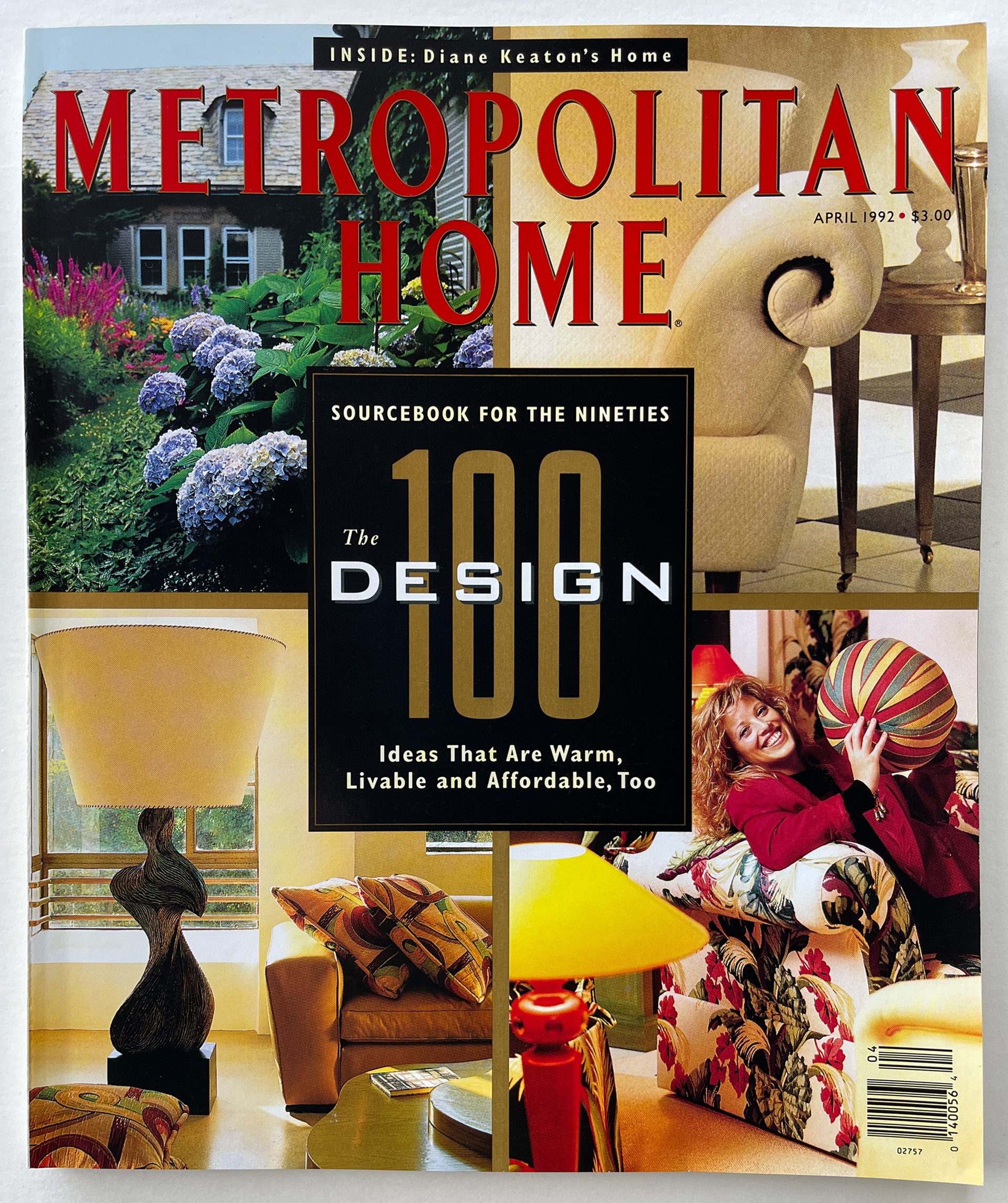

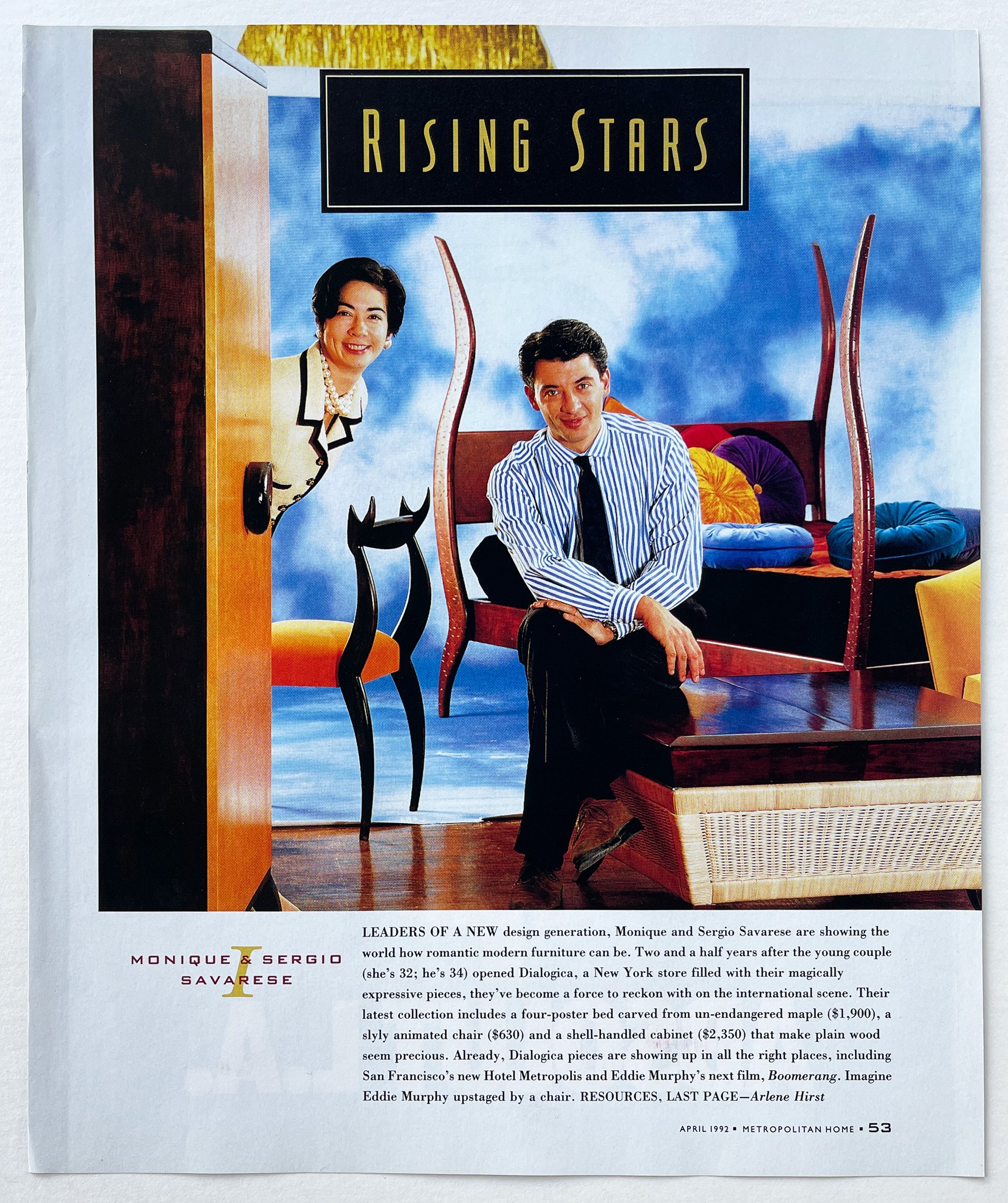

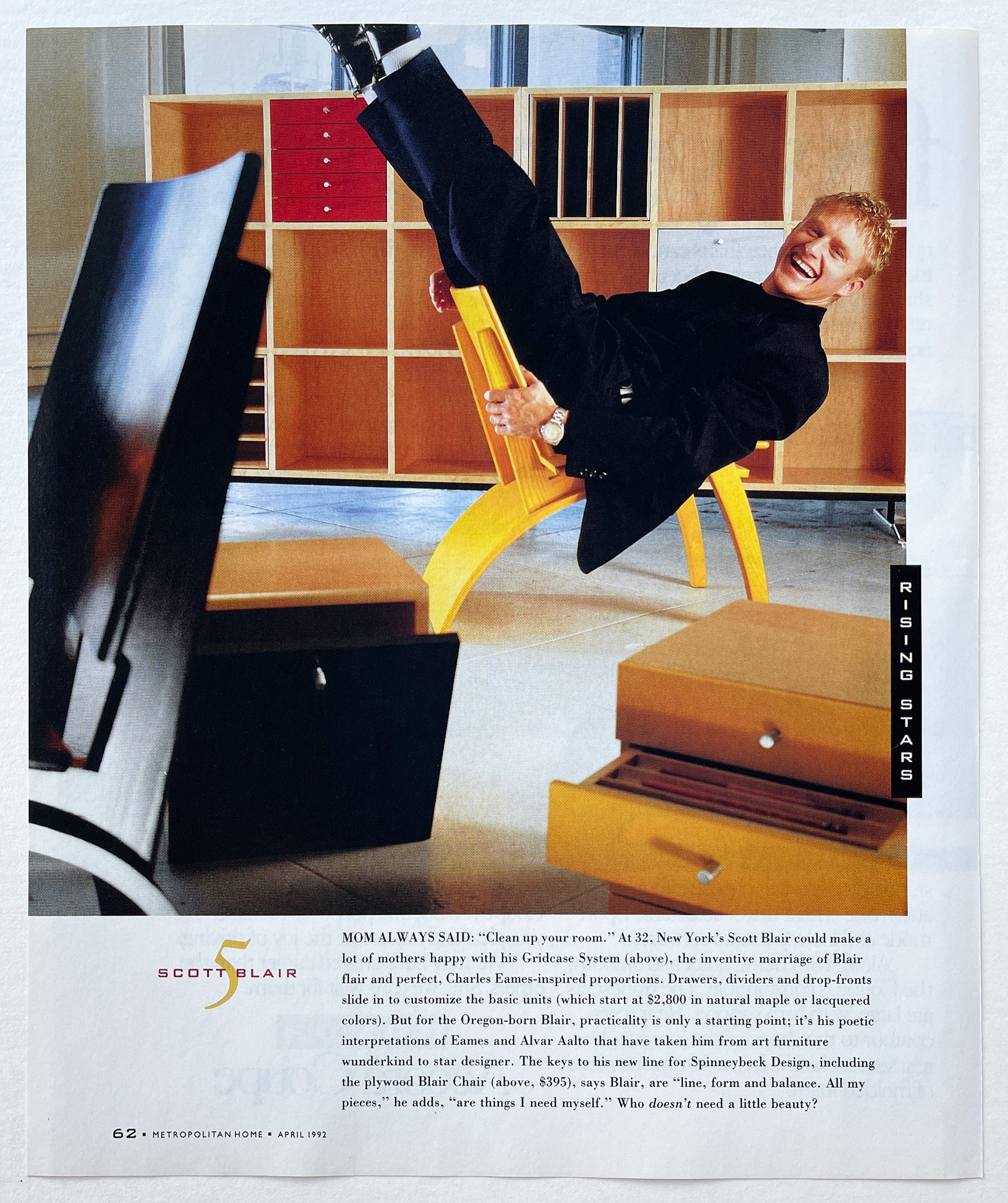
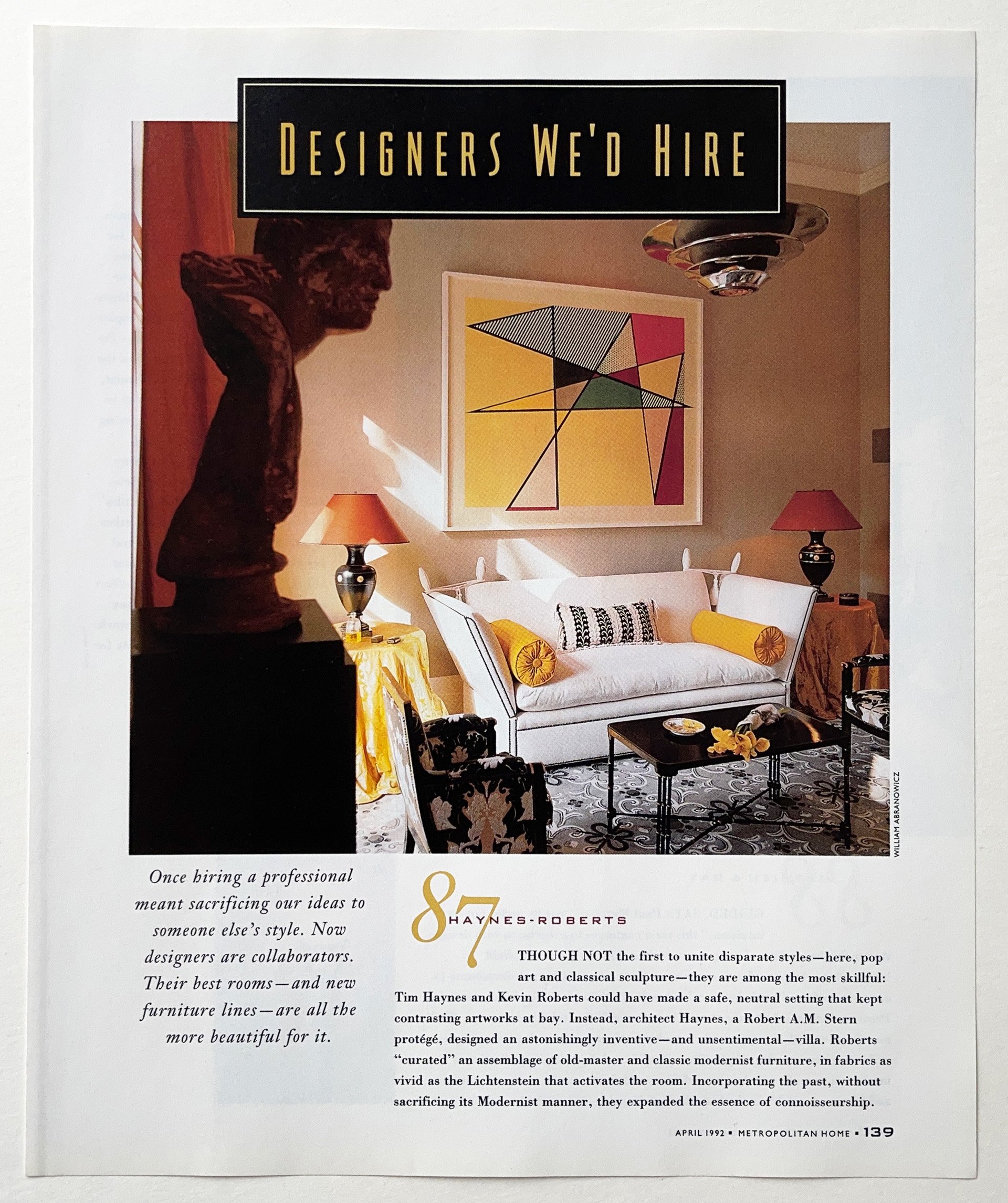


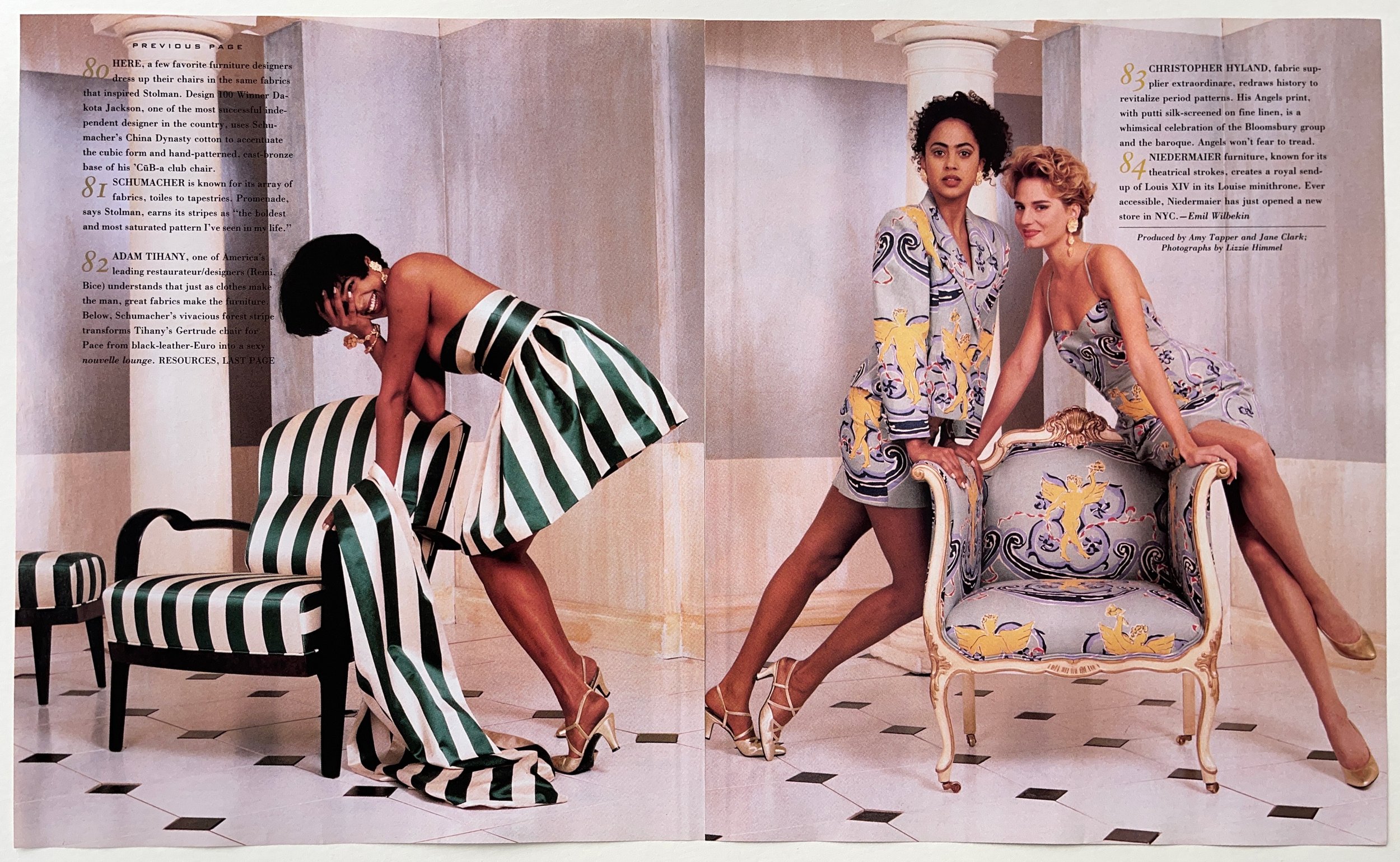
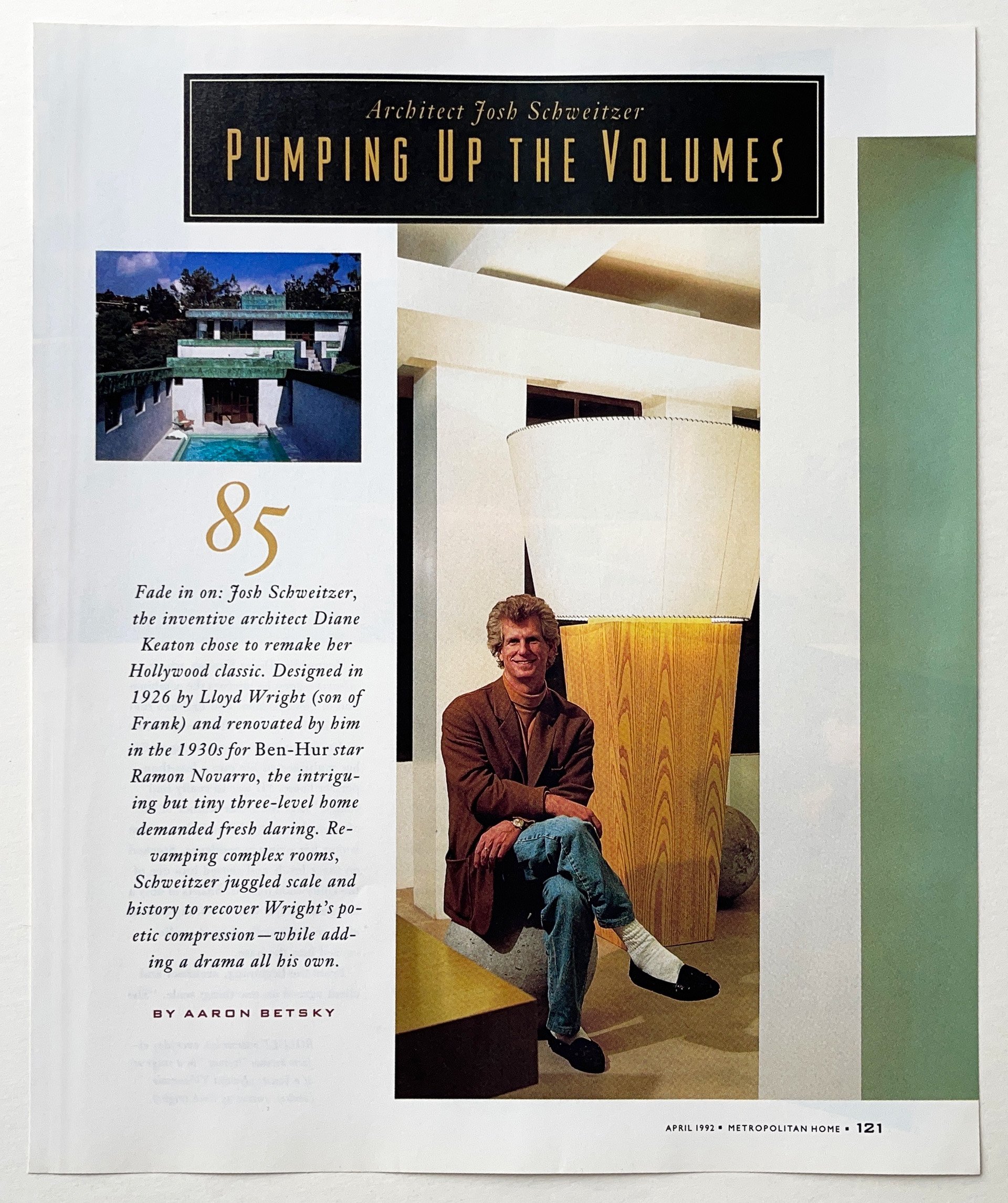
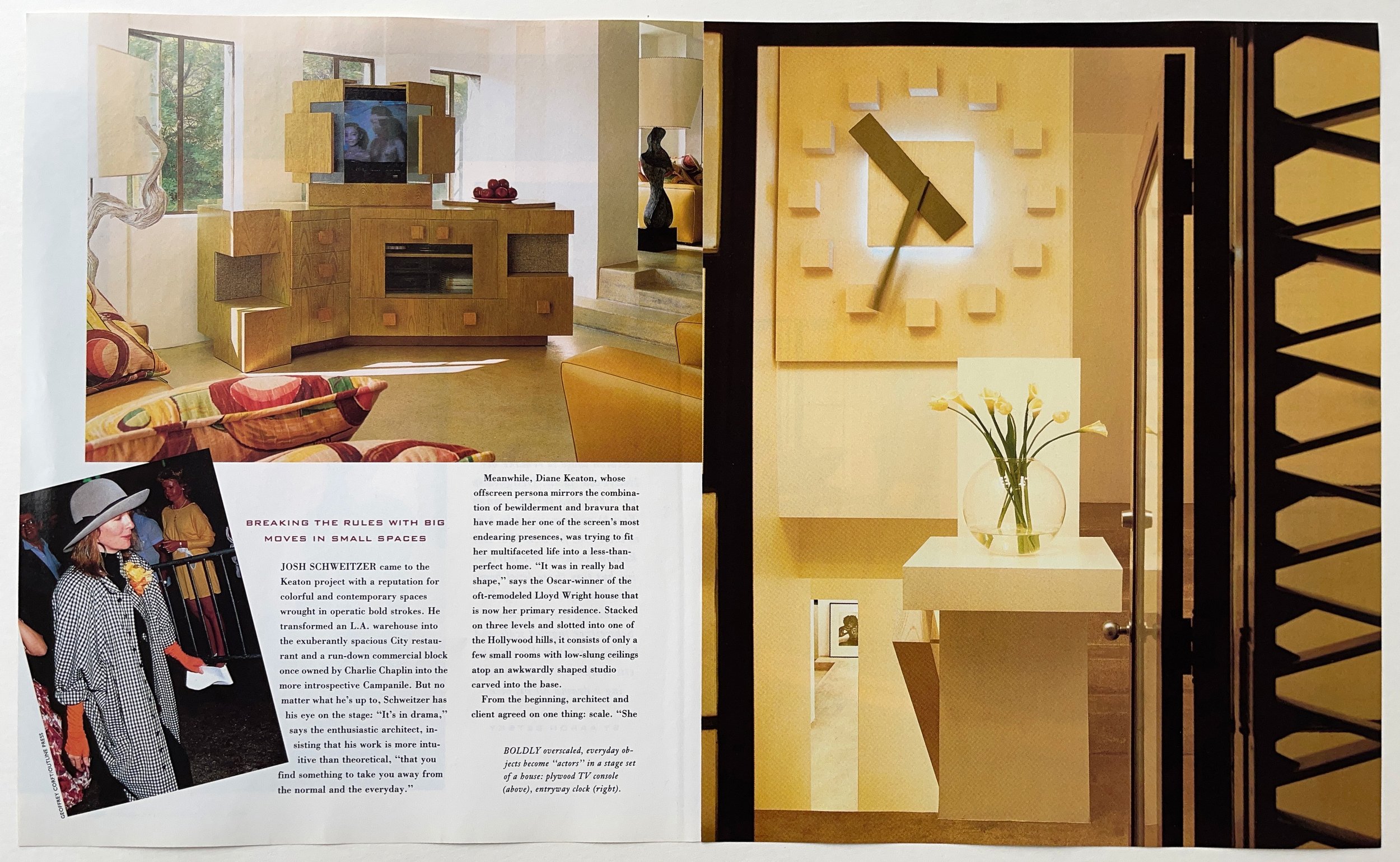
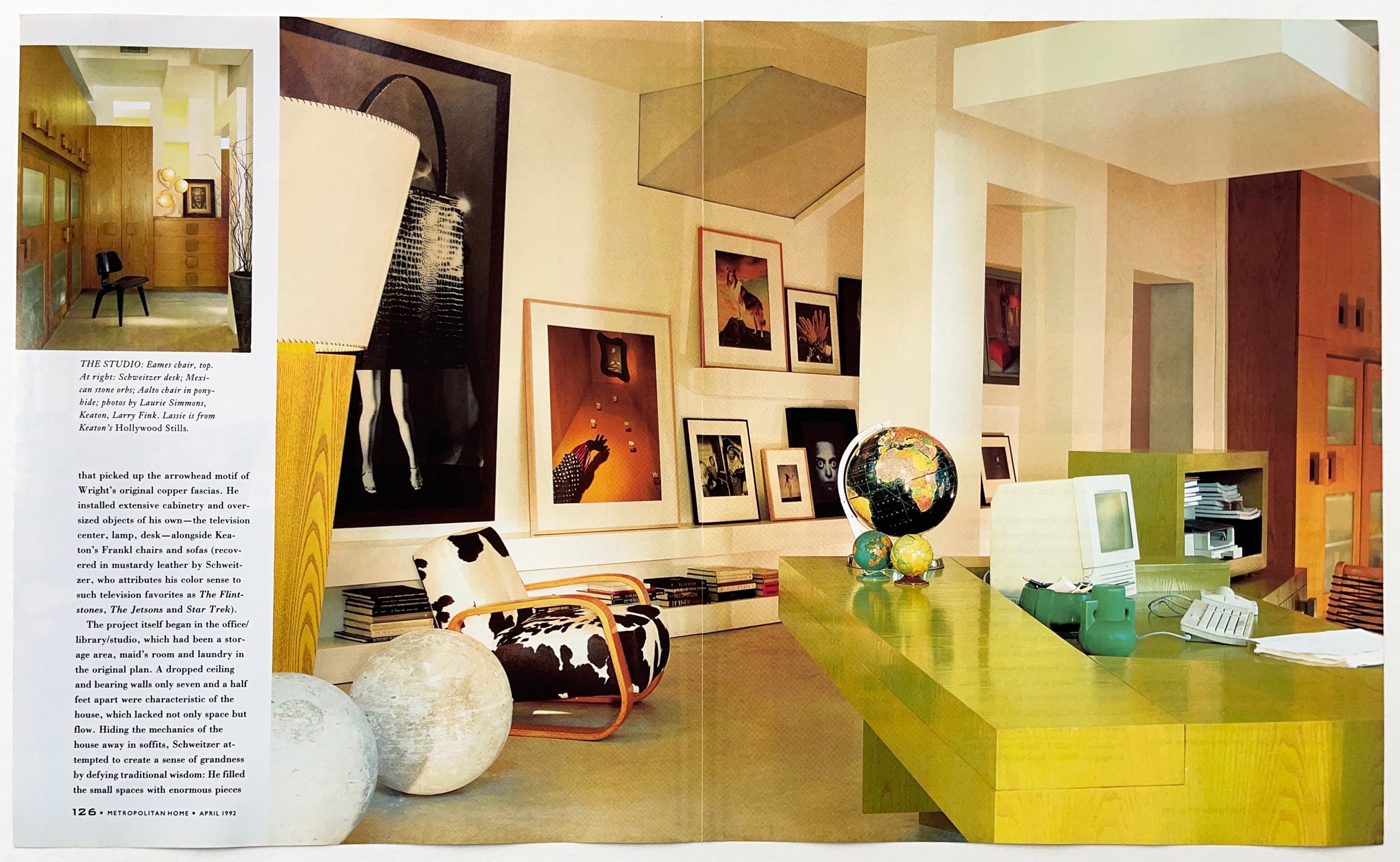
The Design 100 was an annual special issue that honored superlative invention and creativity in international design. The entire issue was designed as a one-off, with distinct typography, grid variations, color palette, and graphics. Art Director Kayo Der Sarkissian, whose incredible eye for detail and encyclopedic memory helped establish the rigor of the magazine’s evolving design.
George Gendron: Don, I want to go back to something we were talking about earlier, which is the transition you made from New York magazine to Met Home. And one question I should have asked back then, I’m really curious about, was, did you and Dorothy do a really dramatic redesign of the magazine all at one time, so that the look and the feel of the magazine, the typography, everything changed from one issue to the next? Or was this something that evolved over a period of time? Or a little of both?
Don Morris: I had to critique the magazine to get the job. And there were certain things that I saw as being sort of newspaper-like in their simplicity. And I’ve talked about how the verve of the subject and the sensibility of the subject could be more in the pages. And so from the beginning I was exploring that.
I was always, again, with that model of Esquire and developing a very strong relationship with the reader, I was interested in finding the right vessel for Met Home. For these voices that I was hearing in the halls that were telling stories. And I wanted to make a better, more in-step vessel to what it was I was hearing and what it is that we were reporting on.
And over time, I was there a while. I was there I think eight years, and I think we did three major redesigns. So we brought it to a place where I think we had a lot of tools that we felt were really perfect for what we were going to try to do. And we wanted to explore that.
We worked with grids a lot. We had sort of an elaborate set of tools. We drew our own type. But then there would be kind of constant evolution with the way that we would bring illustrators in, the kinds of photographers that we would invite. There was a lot of experimentation at that time with having people from different fields come in and bring that point of view to a new subject.
So we were inviting people that were not really in interiors to help portray the subjects of the magazine. We were shooting a lot more people, so we had great portraitists come in. There was a lot of evolution there, as the content sort of required.
George Gendron: Now we want to talk about something that was really, really striking about Met Home that had nothing to do with magazine making per se, but it was the unbelievably public support of the magazine for AIDS treatment, AIDS research at a time when there wasn’t even a vocabulary to describe what that was. During the later part of the ’80s, we would start to talk about social responsibility. We would start to talk about corporate social responsibility. But that language, that vocabulary, didn’t even exist then. So I’m curious about how that evolved. And I’m also really curious about what was the response of your owner?
Dorothy Kalins: That’s such a great story because here we were the “Lefty, Pinko, Radical” magazine of the Better Homes and Gardens company, which, by that time, had bought the Ladies Home Journal. So, I mean, they were just entrenched. My boss was the head of the magazine group at Meredith and they had dozens and dozens and dozens of magazines. And I was the one who would, you know, mess up the sandbox.
And we decided to do it because the people who we covered and our readers were getting sick. And it was very early on in this process. So early that when we actually decided to do a dinner and a gala to raise money, I called the director of the Museum of Natural History and they said, “Well, sorry. AIDS is not an approved disease. We can’t let you rent the hall.”
And I had a conversation with somebody at Canada Dry who said, “We don’t know how this disease is spread so we can’t support you because you might be able to do it by sharing cans.” Those are two examples of how resistant — the head of the magazine group at Meredith said, “This is so radical and this is so not in our wheelhouse.”
And here’s what was also important. Not only could Don and I work really closely together, we work really closely with our publisher. We happen to have a nutty, idiosyncratic, very effective publisher who was all for our doing something that would break through the sameness of our field.
The Met Home Show House & Gala AIDS Benefit
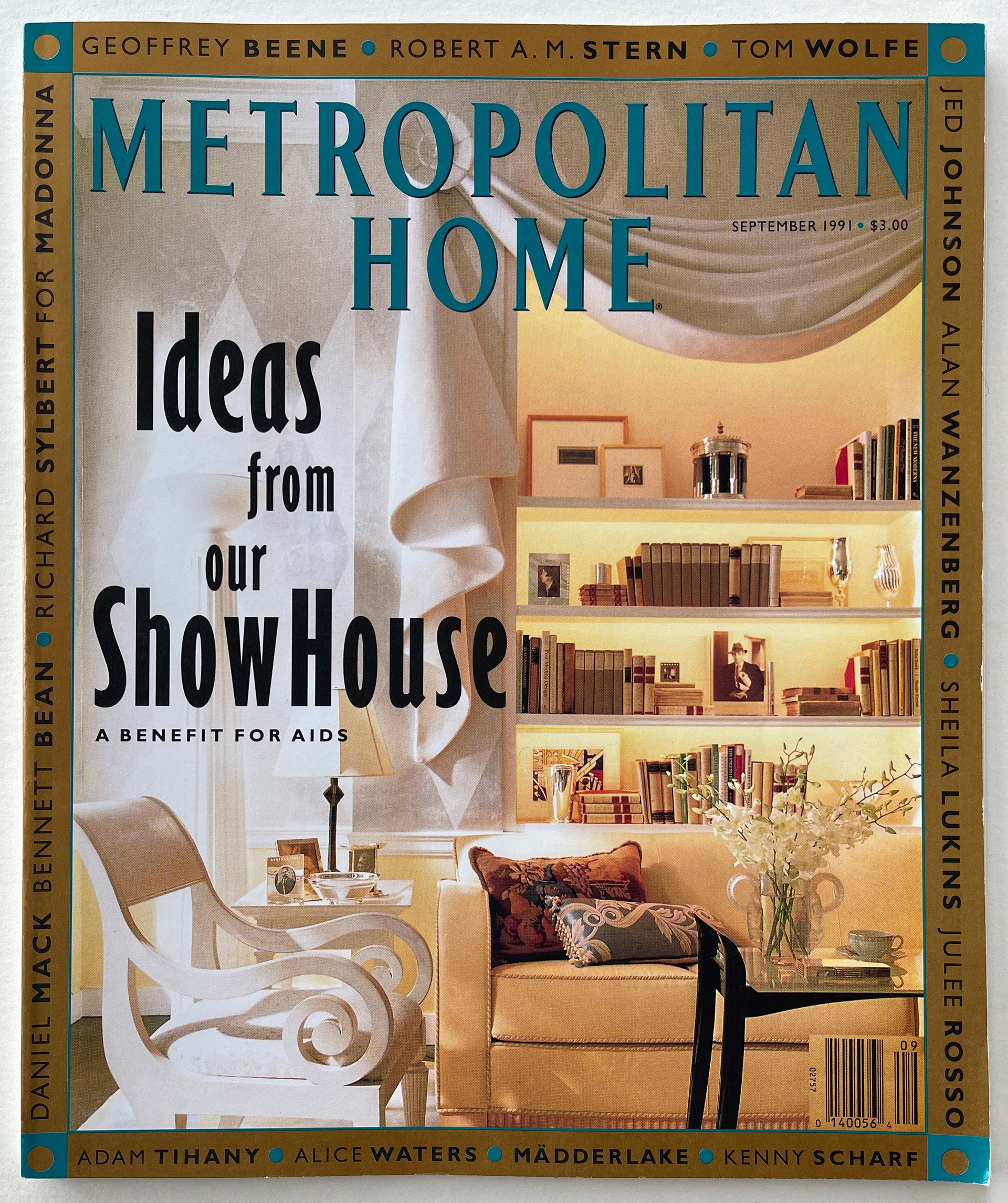

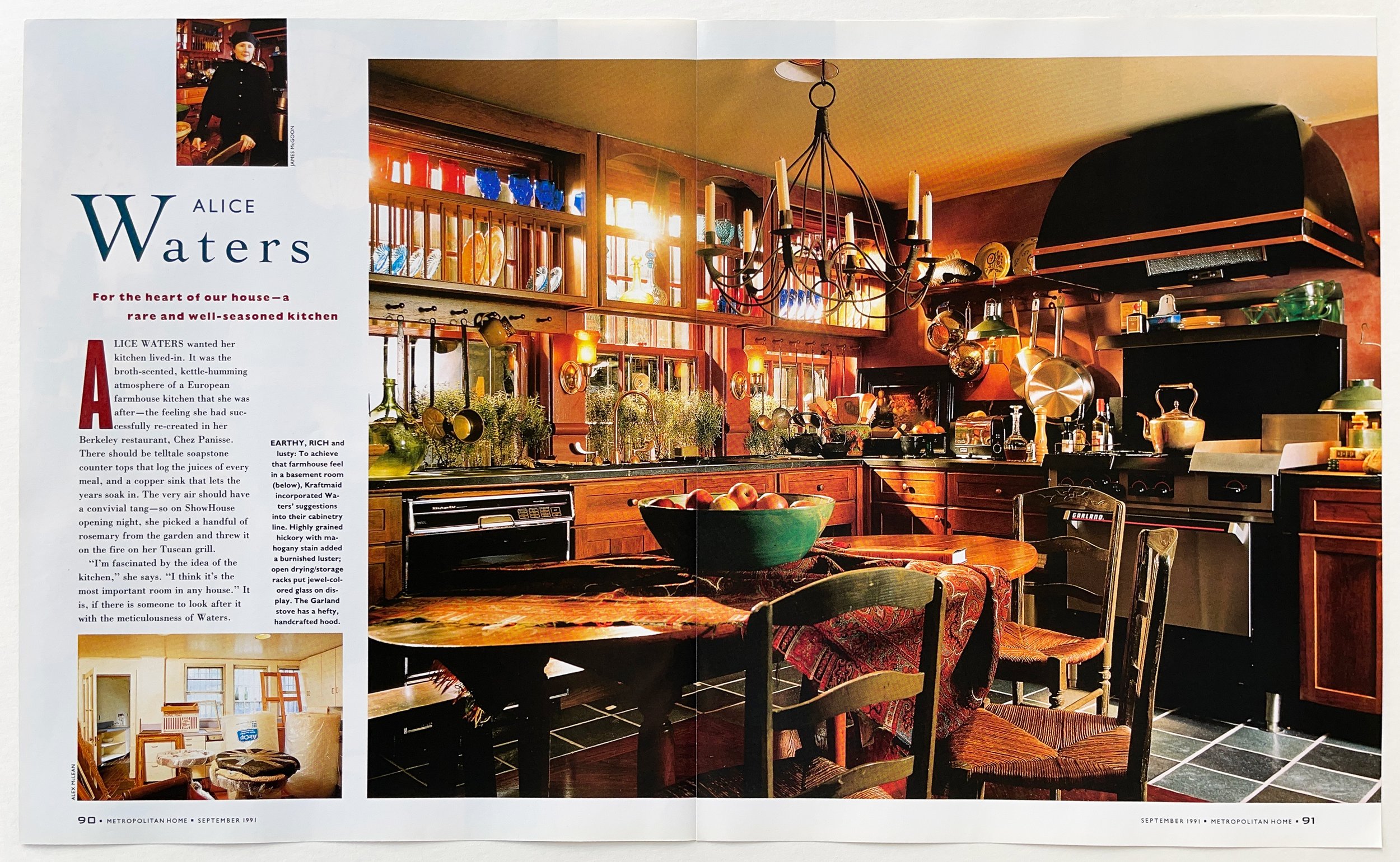

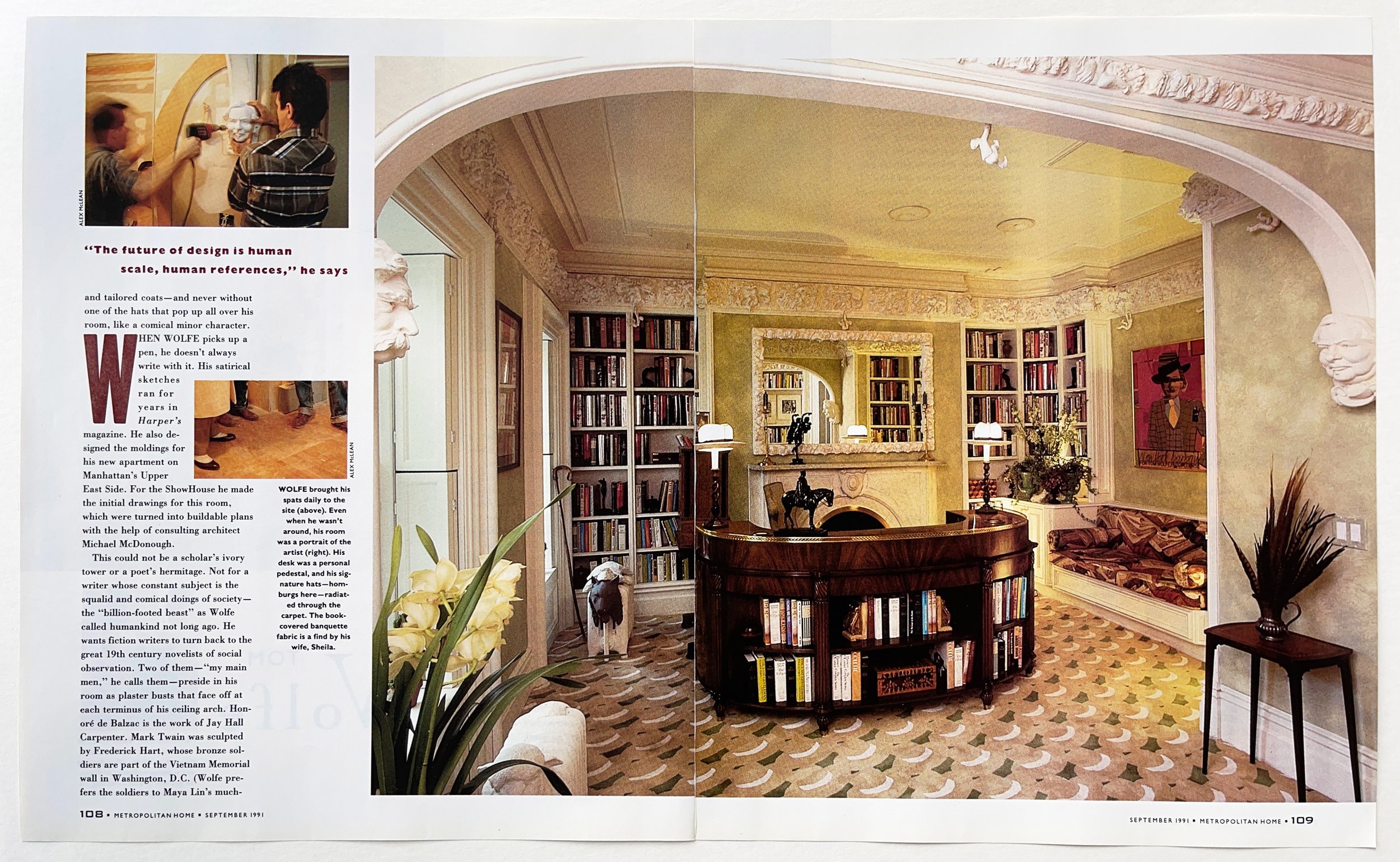

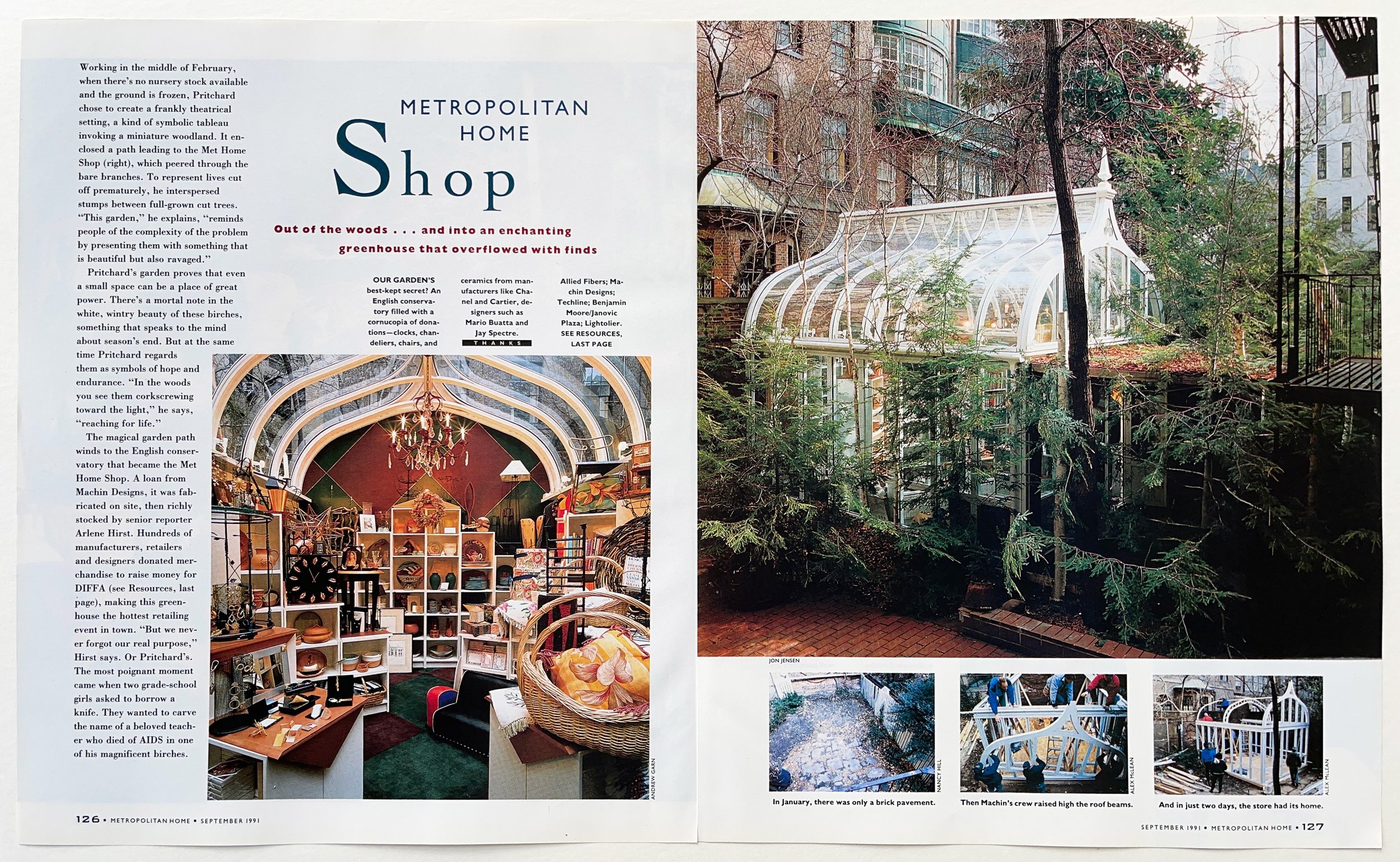
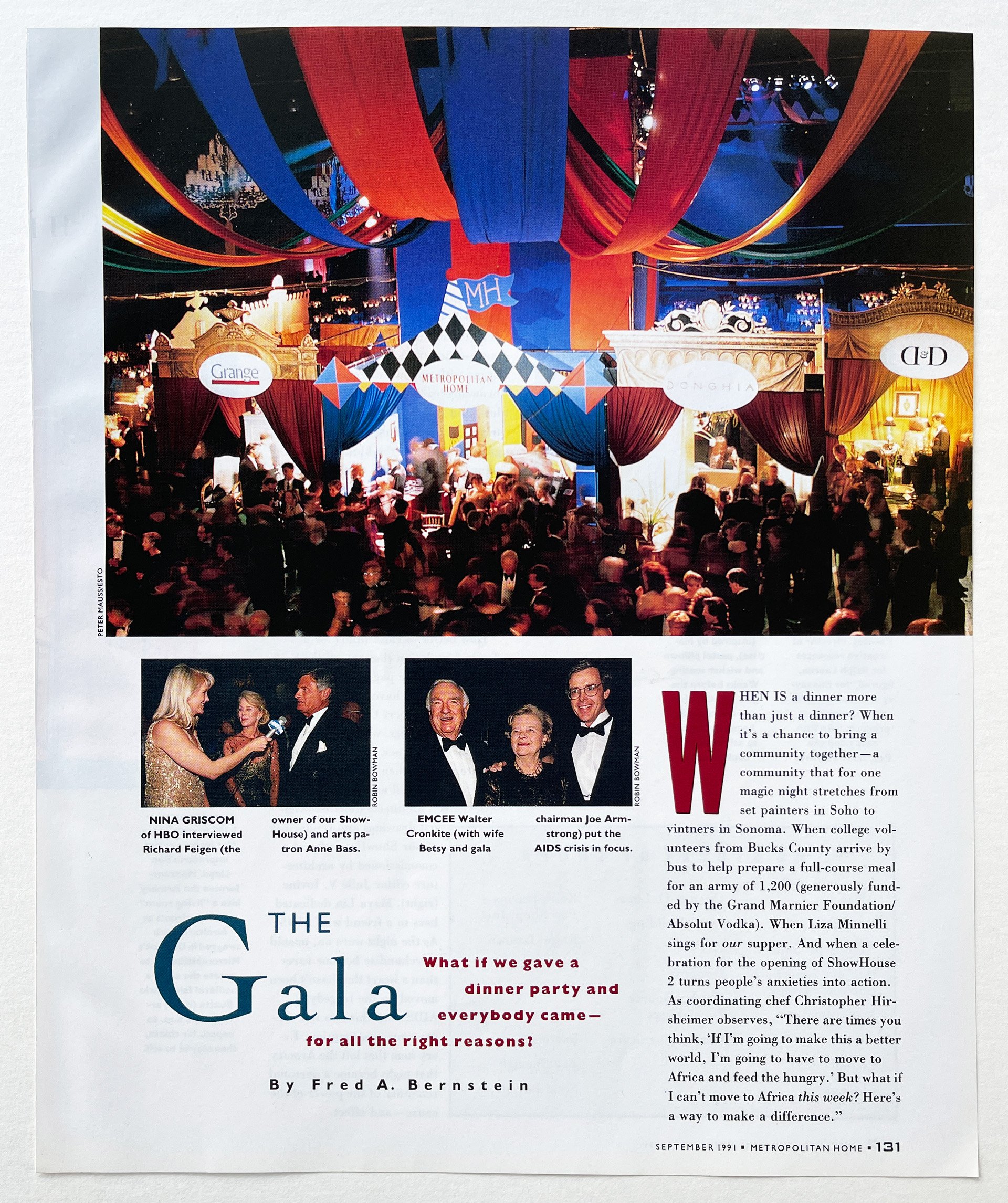
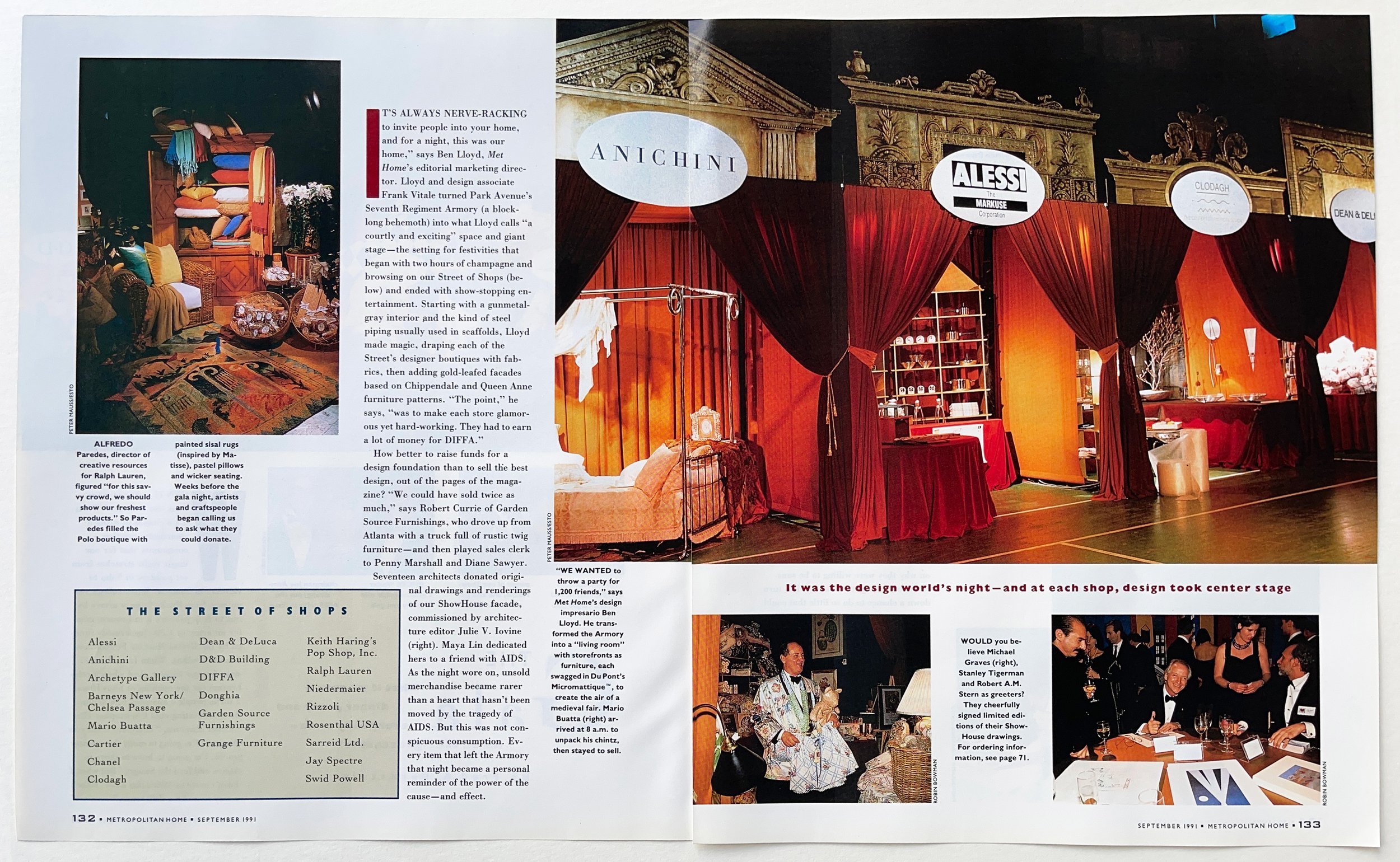
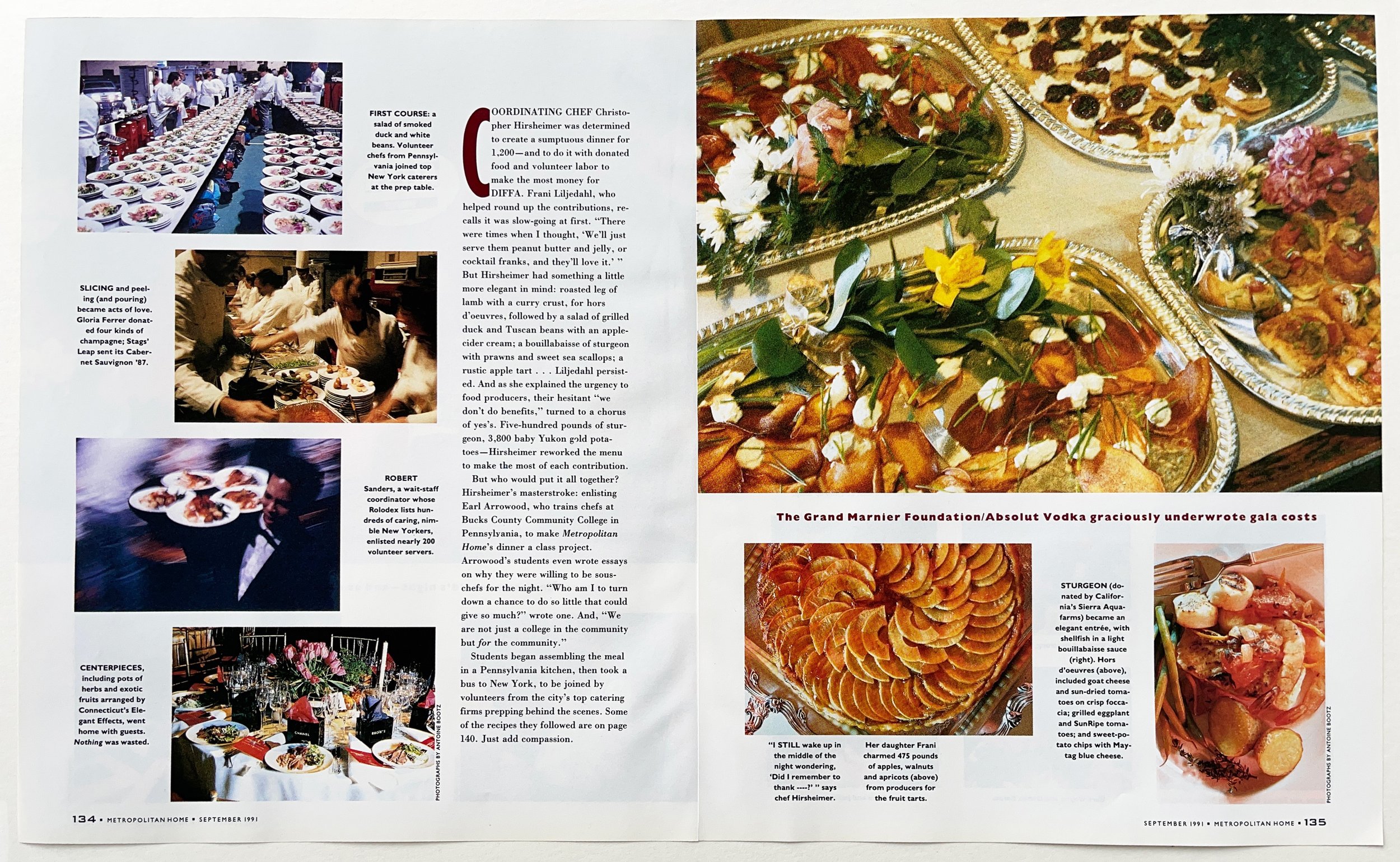

Morris: “The beauty of working for this magazine was that you’re surrounded by talented, caring people. Long hours were no problem if you were lucky enough to be a part of a strong team and believe in their mission. The Met Home staff rose to the AIDS epidemic by raising money and awareness via an ambitious showhouse/gala/magazine project in Manhattan. Our editors collaborated with the brightest architects, interior designers, artists, set designers, and landscape designers to create an eclectic, high-energy design experience in a Manhattan townhouse. Our staff curated a delightful shop with objects vetted by the magazine. We then staged an elaborate gala—orchestrating the event’s design, delicious food by enlisting top chefs, and first-class entertainment. This culminated into a richly detailed special issue that challenged the status quo and raised substantial money and awareness for DIFFA (Design Industries Foundation For AIDS).”
“We were so terrified because this was the early stages of AIDS and we saw it happen among the gay population that were the designers and our readers who were so important to us.”
So when I went to the head of the magazine group and said, “We want to do a special issue, we want to do a showhouse, inviting, not just interior designers, but set designers, and architects, and chefs to do rooms. And we want to have a gala, and we want to invite 1200 people, and have a shop where people can contribute what they made, their lamps, their objects, their whatever. So people, we could raise money that way.”
He said to me, “This is an idea that is doomed to fail. But if you are right, I will eat my words.” And in fact, he did. He wrote on a piece of paper six months later, when it was done, and he put it in his mouth, and chewed it, and swallowed it.
So, not only was it early in the AIDS world, it was something that magazines just didn’t do. You know, you were lucky to get your issues sold, and be able to sell enough copies on the newsstand, and get your paper and printing prices down. And that was the economics of being in the magazine business. But we just felt that we had to do it.
And we kept going back to our same well of people. I remember a young editor [Newell Turner] who came from the magazine program at Ole Miss. He was in graduate school at Ole Miss in journalism. And I was giving a speech down there and I came back and it turned out that one of our assistants had left, and I called up and I said, “Listen, if you really want to come to New York and you want to do this...” And the next year he wound up designing the lady’s room of the Park Avenue Armory so that it could be a place that people would be able to go during the gala. He ultimately went on to become editor of House Beautiful, interestingly, at Hearst.
But everybody was into it together because it was bigger than all of us. And we just, we were terrified. But we went for it.
Don Morris: Yeah, the entire staff was involved.
Dorothy Kalins: Absolutely. The entire staff.
George Gendron: As you’re talking, I’m thinking I could imagine many magazines getting together and thinking, “Well maybe we should donate a page of public service advertising for the cause.” So my response is, Dorothy, I think you had to think bigger at the time. That was huge.
Dorothy Kalins: You had to be a little bit nuts. But we were so terrified, George. Really, we were terrified because this was the early stages of AIDS and we saw it happen among the gay population that were the designers and our readers who were important to us. And it was just, we were very close to it, very early on.
George Gendron: I remember that period vividly. The first person I knew who had actually died of AIDS was my IP attorney up here in Boston — who was also Julia Childs’ — a brilliant, wonderful man, and I was having lunch with him, and he seemed to have a cold. And he had just come back from South America and he said, “Yeah, I picked up a virus down there.” And six months later he was dead. And this chill went through the community up here, when suddenly the gravity of this dawned on people. And yet it took ages and ages. So that was courageous and thrilling what you guys managed to pull off. That became a huge deal in New York.
Dorothy Kalins: It was a huge deal. It was terrifying every single step of the way. I won’t pretend that it wasn’t, because it was totally unplowed territory. But that’s where having a group of people around you who always encourage each other to go for it.
And that’s what I just feel like people who are working remotely and who are not seeing each other every day and who are away. You know, it’s very hard to generate that kind of feeling, both for the work that you do and the larger things that you tackle. It’s very difficult to do.
For the Design Preview ’90 issue, art director Richard Ferretti and Morris conceived of two related fonts. With no time to hire a typographer, the multi-talented Ferretti drew each character and then cut-and-pasted every title together for this special issue.
George Gendron: Okay, guys, now it’s time for our Print Is Dead Billion-Dollar Question. And you can answer this individually or collectively, and that is that the two of you are invited to lunch with Laurene Powell Jobs, and she confesses to you that she has always been a print magazine junkie and that she adored Metropolitan Home — although she was very young at the time. And she says to you, “I’d like to fund any magazine idea you would like to launch today. No budget. But I’d like to do my little bit to bring print magazines back to life again.” What would you guys do?
Don Morris: I think it would be something that doesn’t exist only in print. I think you would have to embrace the sort of multi-channel nature of the way that people like to receive things. So I think, you'd, you know, come up with a whole strategy that kind of gets a wide enough audience to matter. Subject-wise…?
Dorothy Kalins: See, I think it’s passed. I do. I think it’s an art form that lived in its time. And I fought it till the very end, but I, I just I wouldn’t launch a print publication right now.
George Gendron: Because it’s not financially viable? Keep in mind, Laurene doesn’t care about that.
Dorothy Kalins: It’s not that. It’s more that how can you be the only important voice in anything anymore? I mean, my last magazine job was the executive editor of Newsweek. And I remember running into Michael Wolff in the park. The writer Michael Wolff, who went on to write three books about Trump in his first three years. And he said, “I’ll bet you $10 million that Newsweek is not around in five years.” And I said, “Oh, Michael, don’t be ridiculous!”
I don’t know. I just believe that we were so lucky to have had the years with magazines that we had. You know, we love doing the books that we do and those are great. I would say, “Go spend it on the children at the border and make sure they have some kind of life, Laurene.” That’s what I would have her do with her money.
George Gendron: Well, I’m going to sound really callous now, because I was about to say that when you get the call from Laurene, say to her, you’ll get back to her, and Pat and I will come up with a bunch of ideas for the two of you that we would love to see you create.
Don Morris: Well, if I picked up the receiver, I think that what I would say is [we should make] a magazine that takes away a lot of the colored opinion to subjects and brings back what journalism is. Because I think that what people don’t really understand, and would be quite relevant, and probably quite fresh, is a magazine, or a news entity, that was really fresh, that showed multiple points of views to a subject, that gave people information and let them choose or let them disseminate.
But really, like the early days of television, where if you had a certain amount of news that was required for you to be able to broadcast, you had to show opposing views. You had to show a couple of views. And I think anything that we could produce now that put different points of view in one place for people to digest and get a little bit more of a balance that they then had to come away and make their own opinion about, would be incredibly useful. You know, to just do something to crack the siloed nature of all these conversations.
The collaboration that Morris and Kalins began in 1985 remains fruitfully intact to this day. After Met Home was sold to Hachette in 1992, the duo pursued their own paths. Morris launched his eponymous design studio, where he continues to do editorial work with clients including Entertainment Weekly, The Wall Street Journal, and Bloomberg, and expanding into branding and books. In 1993, Kalins became partner and editor-in-chief of Meigher Communications, where she launched Saveur and Garden Design. Between them, they’ve been the recipient of gobs of awards, including multiple National Magazine Awards. In 2018, Kalins was elected to the ASME Magazine Editors’ Hall of Fame. Over the last several years, Kalins (now Dorothy Kalins Ink) and Morris have collaborated on several successful book projects (see above), and continue to do so.
Back to the Interviews
Everyone Is a Salesman
A conversation with designer Gael Towey (Martha Stewart Living, MSLO, Clarkson Potter, House & Garden, more)
—
THIS EPISODE IS MADE POSSIBLE WITH THE SUPPORT OF COMMERCIAL TYPE
In 1995, New York magazine declared Martha Stewart the “Definitive American Woman of Our Time.” And, as the saying goes, sort of, behind every Definitive American Woman of Our Time is another Definitive American Woman of Our Time. And that’s today’s guest, designer Gael Towey.
But let’s back up. It’s 1982, and Martha Stewart, then known as the “domestic goddess” — or some other equally dismissive moniker — published her first book, Entertaining. It was a blockbuster success that was soon followed by a torrent of food, decorating, and lifestyle bestsellers.
In 1990, after a few years making books with the likes of Jackie Onassis, Irving Penn, Arthur Miller, and, yes, Martha Stewart, Towey and her Clarkson Potter colleague, Isolde Motley, were lured away by Stewart, who had struck a deal with Time Inc. to conceive and launch a new magazine.
Towey’s modest assignment? Define and create the Martha Stewart brand. Put a face to the name. From scratch. And then distill it across a rapidly-expanding media and retail empire.
In the process, Stewart, Motley, and Towey redefined everything about not only women’s magazines, but the media industry itself — and spawned imitations from Oprah, Rachael, and even Rosie.
By the turn of the millennium, Martha Stewart Living Omnimedia, as it was rebranded in 1997, included seven magazines, multiple TV projects, a paint collection with Sherwin-Williams, a mail-order catalog, Martha by Mail, multimillion-dollar deals with retailers Kmart, Home Depot, and Macy’s, a line of crafts for Michael’s, a custom furniture brand with Bernhardt, and even more bestselling books. And the responsibility for the visual identity of all of it fell to Towey and her incredibly talented team. It was a massive job.
We talk to Towey about her early years in New Jersey, about being torn between two men (“Pierre” and Stephen), eating frog legs with Condé Nast’s notorious editorial director, Alexander Liberman, and, about how, when all is said and done, life is about making beautiful things with extraordinary people.
“I’m a hard worker. It never bothered me that I was essentially a mechanical artist. These are the days of getting lino proofs and using rubber cement and all of that. I was just so happy to be in the room.”
Towey (fourth from right) with the original MSL team at Time Inc.
Patrick Mitchell: Gael, your dad was in sales. Mine was too. You said he always told you, “Gael, everyone is a salesman.” How do you think that influenced your career?
Gael Towey: When I was working at Clarkson Potter publishers, I was the art director, and I had to present all of my covers to the ad sales team, and also our publisher, Bruce Harris, who I really adored and I learned a lot from. I’d have to show them to Bruce first, and then I would go before the sales team panel, which was probably about 25 people.
It was a very intimidating group. And I remember going up in the elevator to this meeting, and in my mind I heard my father say, “Gael, everybody is a salesman.” And what he meant was that we are all out there, no matter who we are, basically, we are trying to convince people to agree with us. And that’s something that’s part of everything that I have done, in terms of my career.
Patrick Mitchell: You described your mother as a “crazy perfectionist.” Can you tell us a little bit about her?
Gael Towey: When I was in second grade, the nuns told my mother that I had to stay back because I was a really poor reader. I could not spell. I would get so mixed up between like “girl” and “grill” and, you know, all of these things.
And in those days people didn’t know about dyslexia. So my mother hired a tutor. And the tutor told my mother that I was not dyslexic. I was just slow. So I had this kind of growing up where I was constantly fighting against people thinking that I was stupid. And my mother, by the time I got to college, and I kept failing, it was very depressing, but it made me very strong.
Anyway, I went to college, and when I was writing letters home, my mother would attach a typed list of all of the words that I misspelled to the top of my letter and return it to me.
Patrick Mitchell: What was that relationship like?
Gael Towey: Difficult.
Patrick Mitchell: Is she still with us?
Gael Towey: No, she is not. She’s not still with us. You know what? It gave me strength to go head to head with Martha when I needed to.
Debra Bishop: Gael, where does your creativity come from? Was there crafting or cooking in your early days?
Gael Towey: You know, I’ve been listening to a lot of your podcasts and all of them have made me think back about moments in my career, or my life, or my training, that I hadn’t really thought about. And I went to Boston University. I had a terrible graphic design training, but what I did take is painting, and sculpture, and photography, and art history, and history of photography, and printmaking, and pottery, and all of those things prepared me to be a good art director because they were all about imagining something that you would make. And as you know, Deb, because you and I worked together at Martha Stewart Living, it was all about making stuff up.
Debra Bishop: But as I recall, you love to sew and you’re good at that. So maybe your mother had a hand in your early days.
You grew up in New Jersey, one of six kids. Did any of your siblings pursue creative careers as well?
Gael Towey: I did grow up in New Jersey. And I’m the oldest of six. I’m part of an enormous Catholic family. I have 45 cousins on my mother’s side. My mother was one of nine children.
And I did learn to sew as a child because we didn’t have very much money. And it was all about hand-me-downs. I got hand-me-downs from my older cousins. So if you wanted to look fashionable, you had to make your own clothes, which is what I did. Which was kind of a perfect thing because in the ’60s, of course you had, I was doing like tie dyeing sheets and making them into dresses and stuff like that. It was great training.
Debra Bishop: Oh yeah! Banana collars... remember those? And gosh, big buttons. So when you were little, did you have heroes? Did you have crushes or were inspired by certain people?
Gael Towey: I was inspired by my grandfather and I wish that I knew that beforehand. My grandfather was an OB GYN at the Margaret Hague Hospital in Jersey City, and he was a wonderful, wonderful photographer.
He had a two and a quarter Rolleiflex, which is the kind that you stare down into the ground glass, and it’s turning it around. And my grandparents’ house at the Jersey Shore was filled with his photographs of his children, and my grandfather was quite short, and you’re holding the camera kind of low, so, all the pictures of my aunts and uncles of which as I said, there are many, you’re looking up. And they were so heroic and he printed them in black and white. He was very fastidious, putting all the crop marks, et cetera, and growing up with seeing those photographs, you know, I didn’t realize this till later in my career, but it was pivotal for me, absolutely pivotal.
And the other story about my grandfather, Pop Connell, is that he delivered Martha! And she remembers they lived in Jersey City on Carlton Avenue and his office was on the bottom floor, the sort of basement floor of it. It was like a semi-attached house where you would share the driveways with your next door neighbor.
And she remembers going there on Saturdays because they only had one car in their family. And she also came from a very large family, and she remembers sitting there with her mother and her father waiting to see Dr. John Connell.
Patrick Mitchell: Wow. How did you decide to go to BU?
Gael Towey: You know, my parents didn’t take us to see any schools or anything like that, and it was all about getting financial aid because there were so many kids in our family. So you really went to the place that was going to give you financial aid.
Above, from left: Christopher Holme, Towey, Jacqueline Kennedy Onassis, and Bryan Holme at work on Onassis’ book, In the Russian Style, at the Viking Press in New York, ca. 1977.
Patrick Mitchell: And did you know, when you finished school—I know you went through a process of figuring out that you wanted to become a design major—but did you know after school you were New York-bound?
Gael Towey: Yes. I understood that there was really no other place to have a career in design. And I went to see a vast assortment—I had 30 interviews when I graduated, and I was carrying around that enormous portfolio. You remember those? They were probably 30 inches by 20 inches or something. They were so heavy. And I didn’t have any magazine covers. I didn’t have any book covers. I just had art, you know, I had silkscreens, and photographs, and illustrations, and some typographic treatments on silkscreen. It’s pathetic.
No wonder I had 30 interviews! I only had one job offer.
Patrick Mitchell: What was the first job interview you went on?
Gael Towey: Oh, I don’t remember the first job interview. I think Grey Advertising actually did offer me a job. So I was choosing between Grey and Viking. And, I don’t know, I guess what intrigued me about Viking Press was the books.
The books were so beautiful. There were art books and museum catalogs and so on. It was a very impressive place.
Patrick Mitchell: Was there a job that you badly wanted but didn’t get? Like, a heartbreaker?
Gael Towey: No. I just didn’t know anything about the business. Stephen, my husband, as you guys know, went to Cooper Union. And he was taught by Milton Glaser, Seymour Chwast—all of these really famous designers and illustrators, and they gave him jobs and he knew everything about the business because he lived in New York City.
Patrick Mitchell: He was a thoroughbred.
Gael Towey: Yeah.
Debra Bishop: He didn’t have to hit the pavement.
Gael Towey: No.
The Martha Diaspora
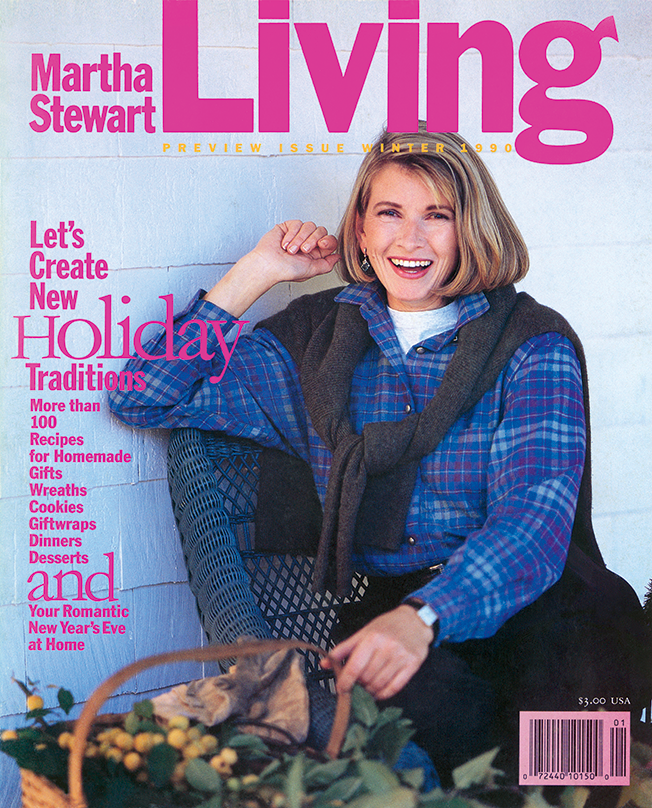
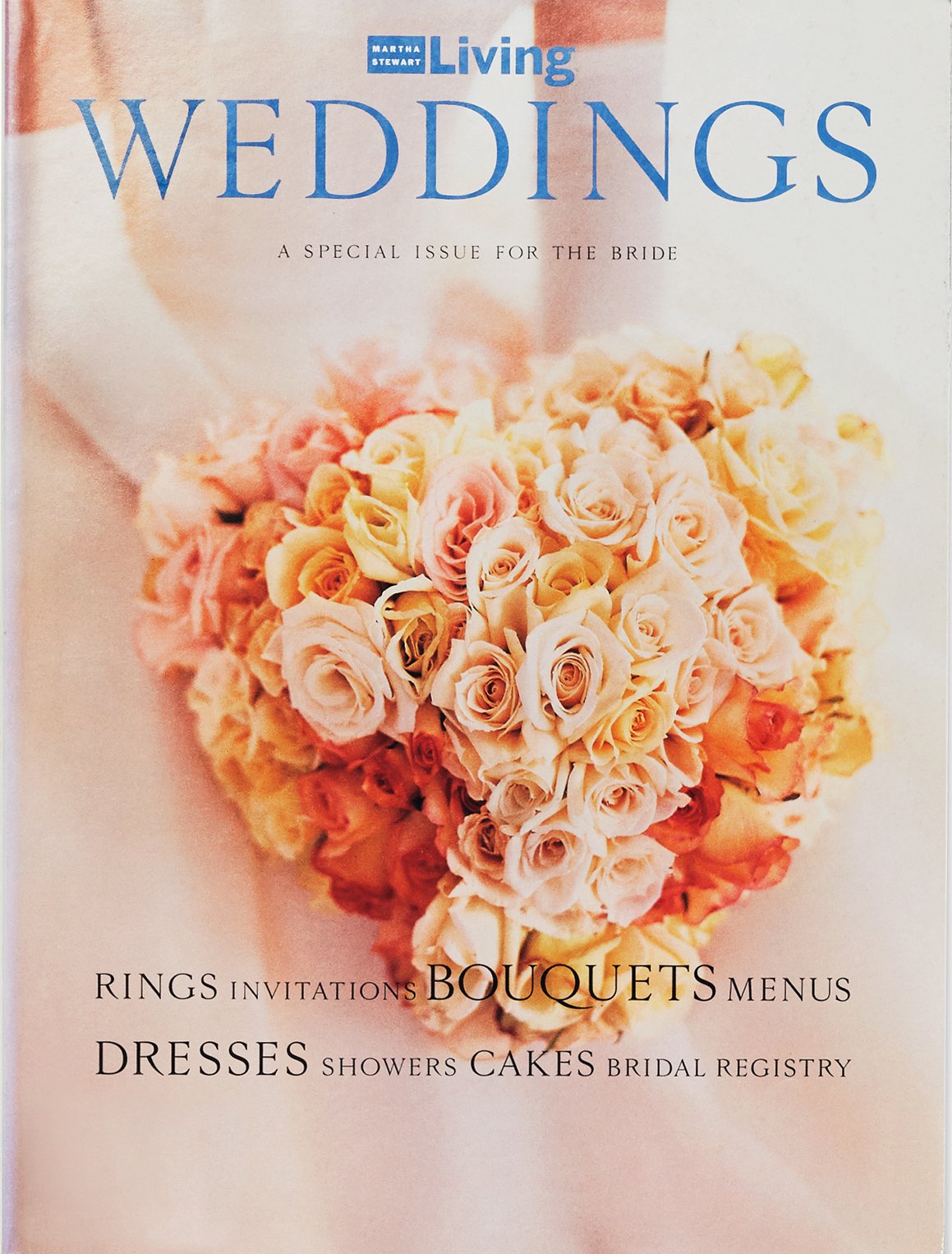
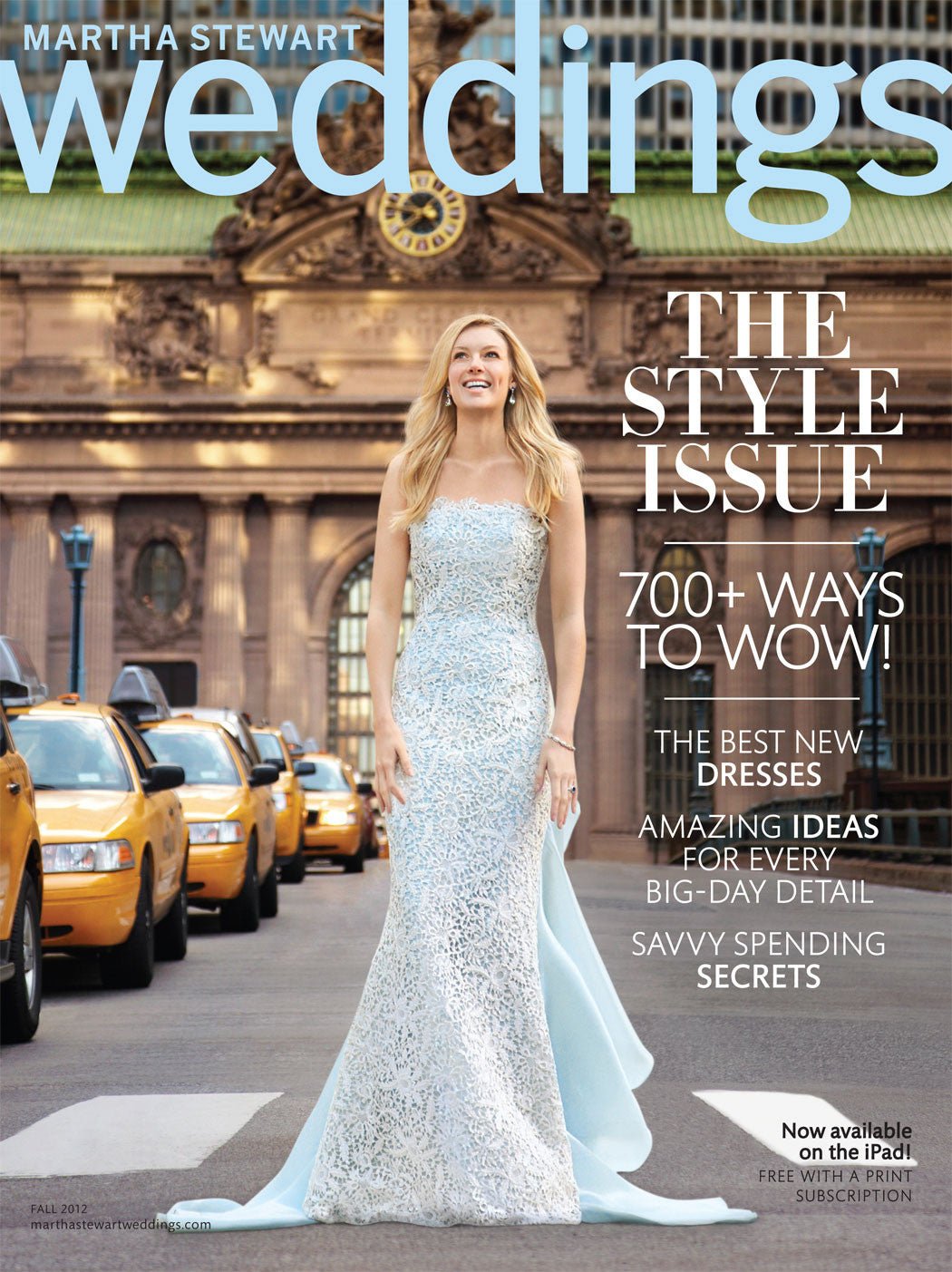
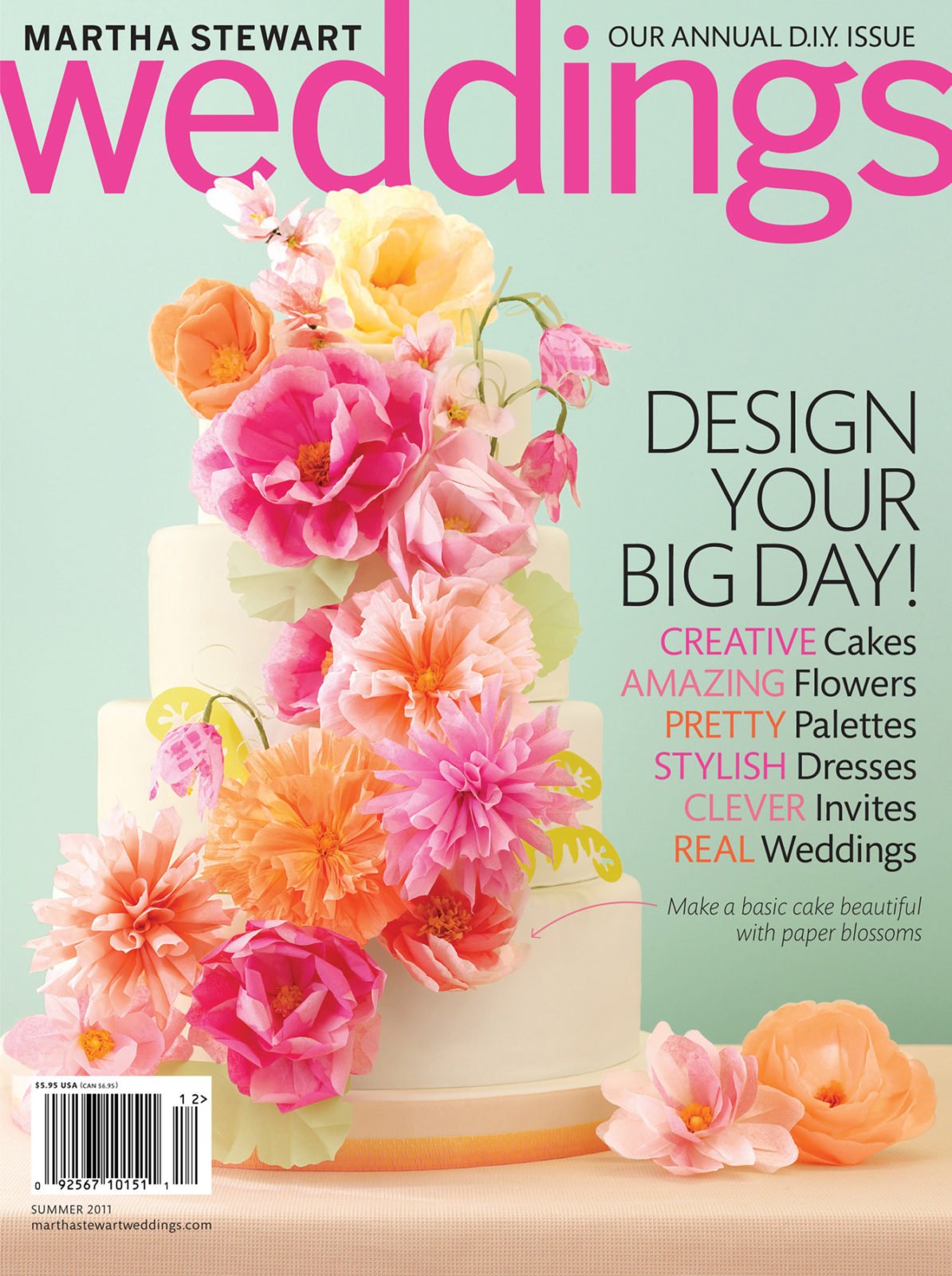

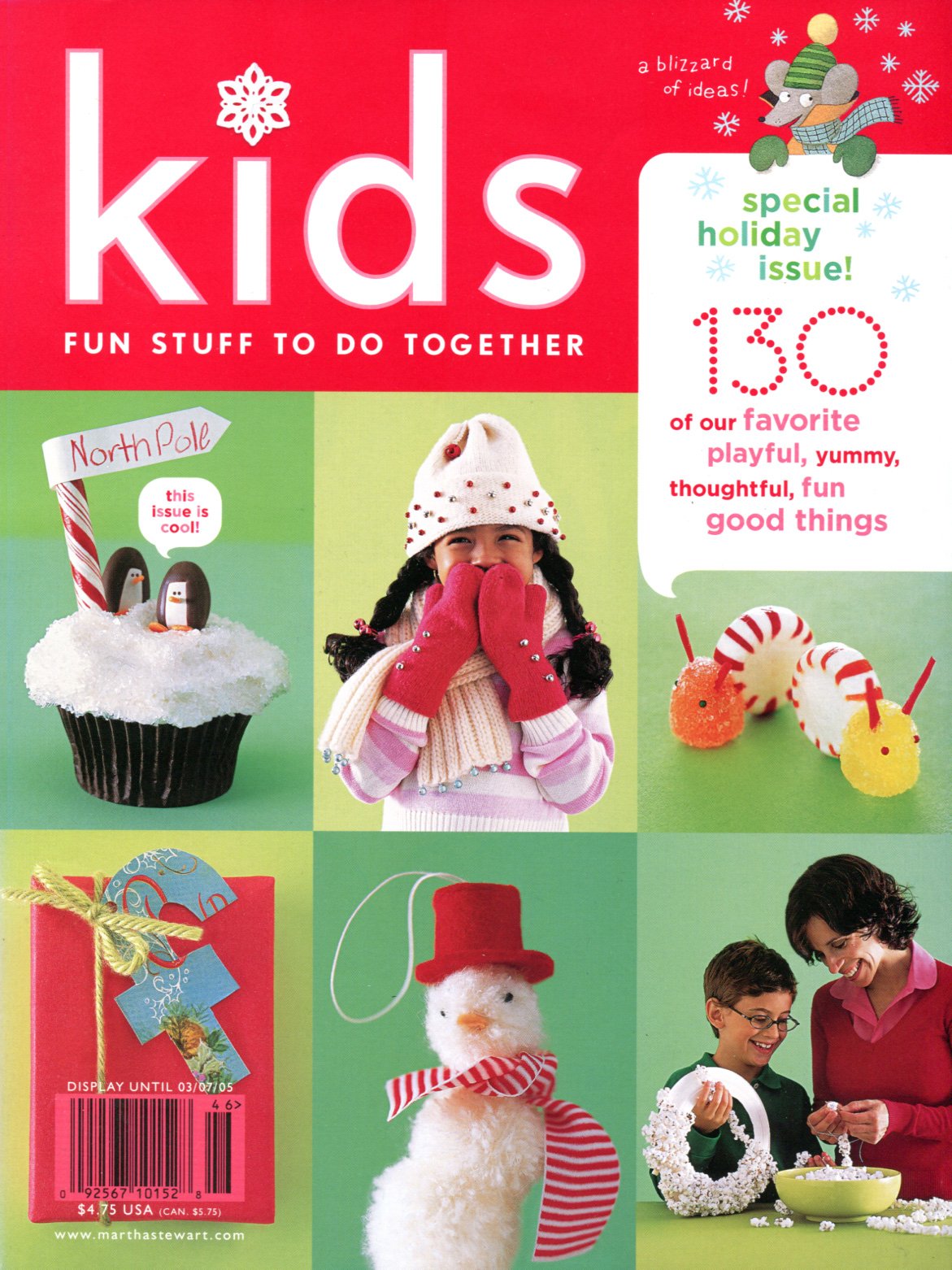
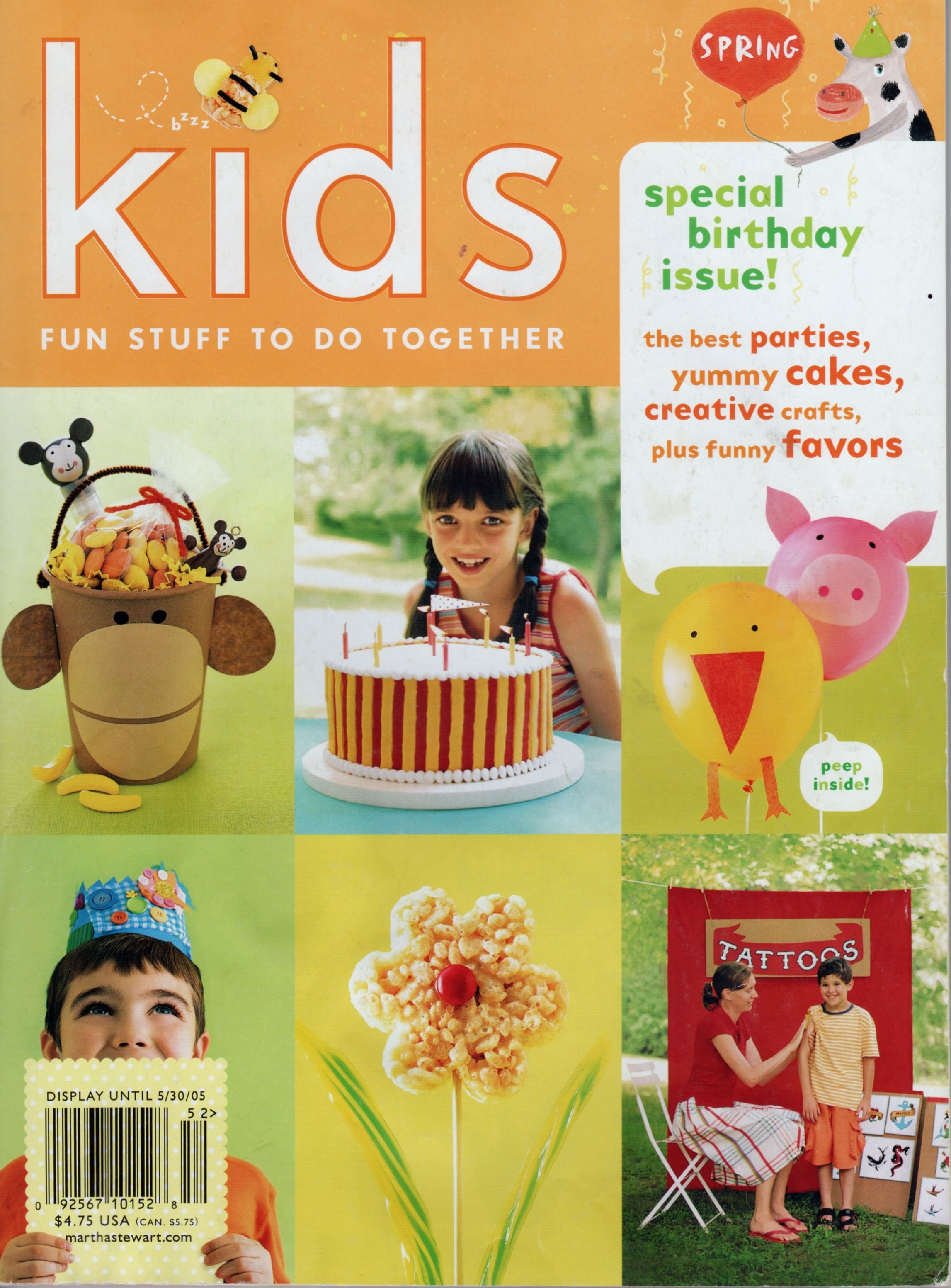
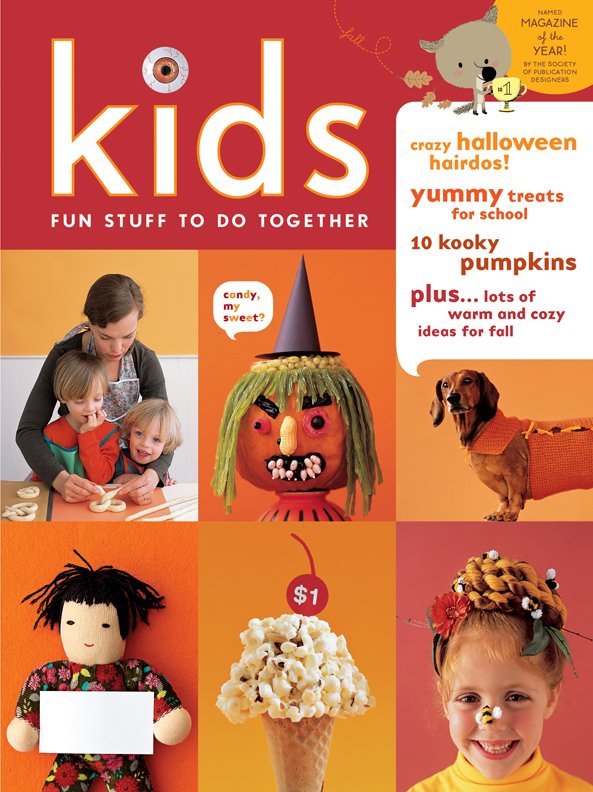


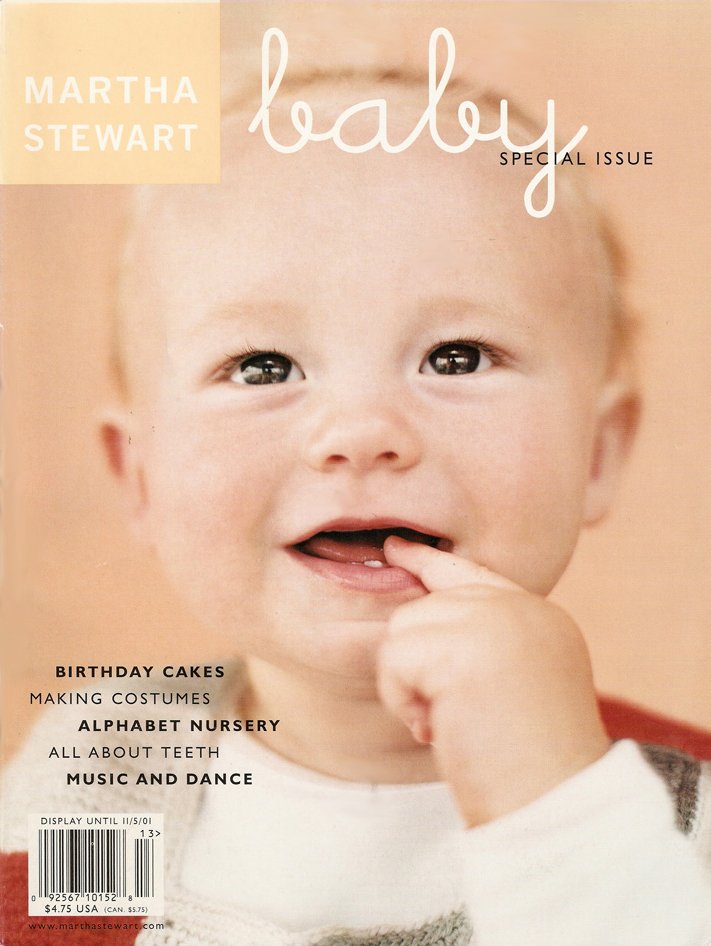
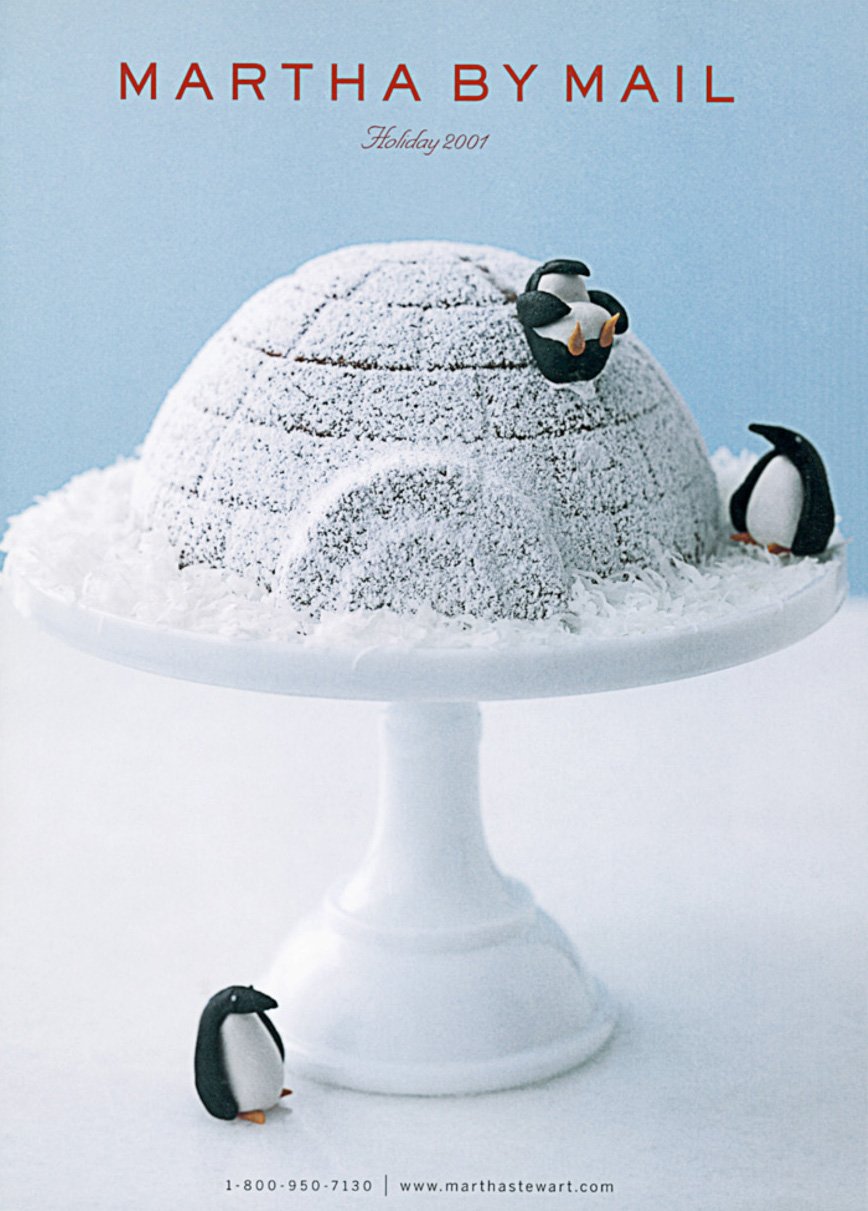
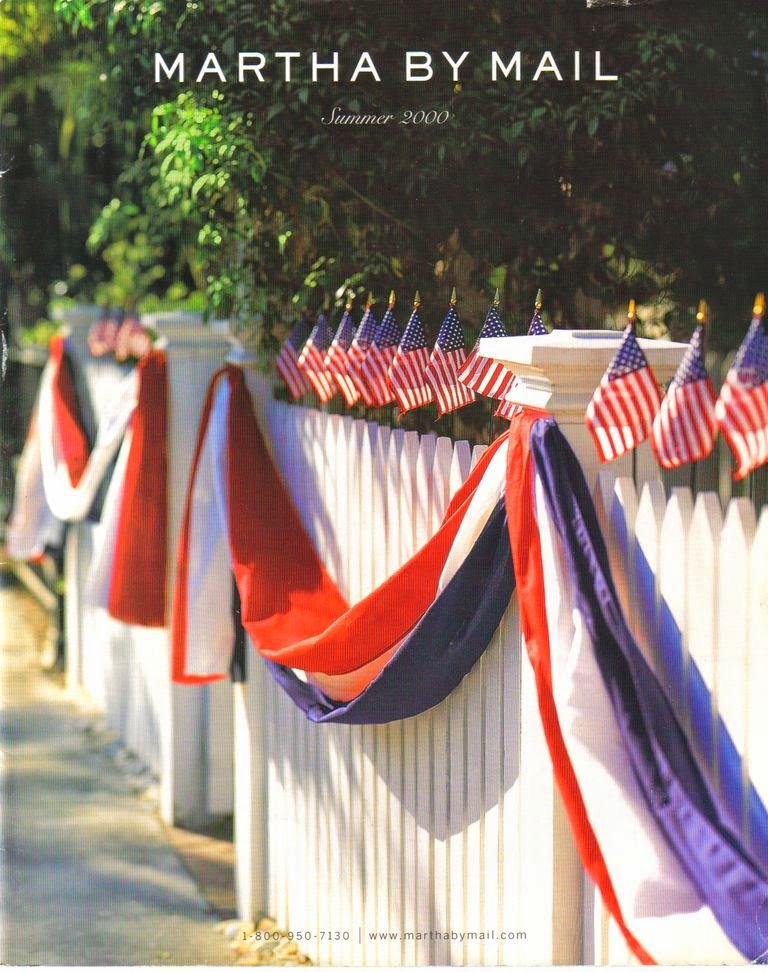
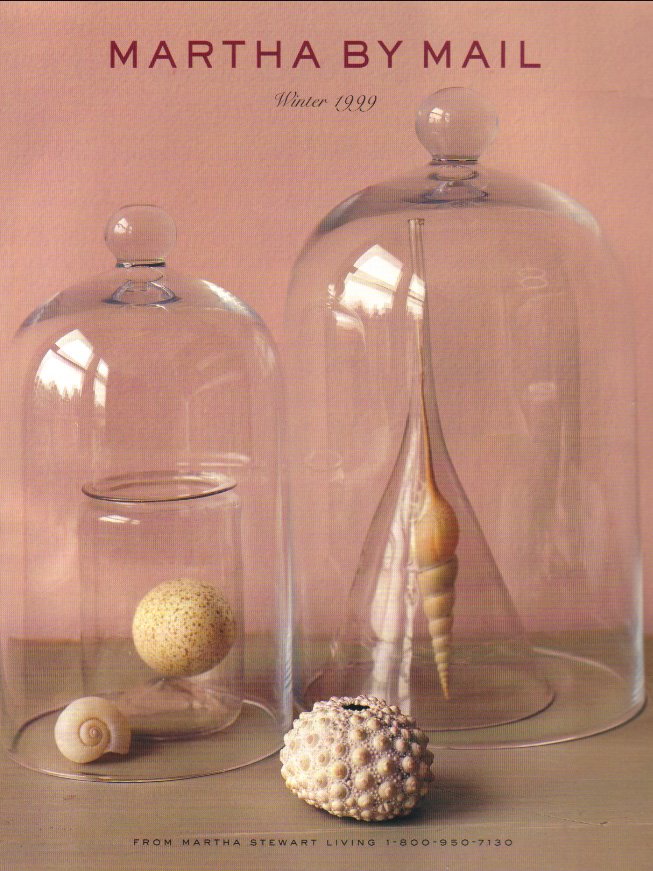
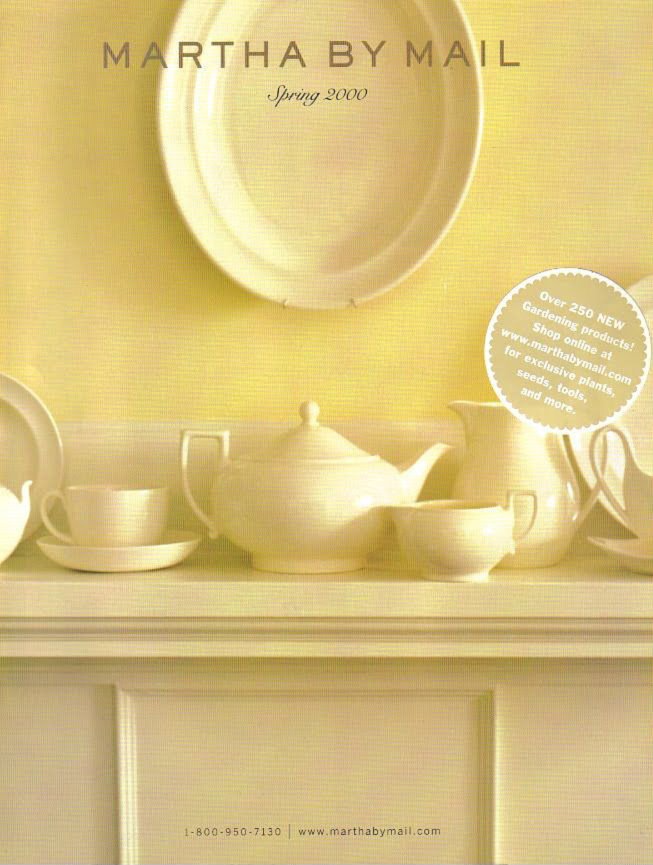
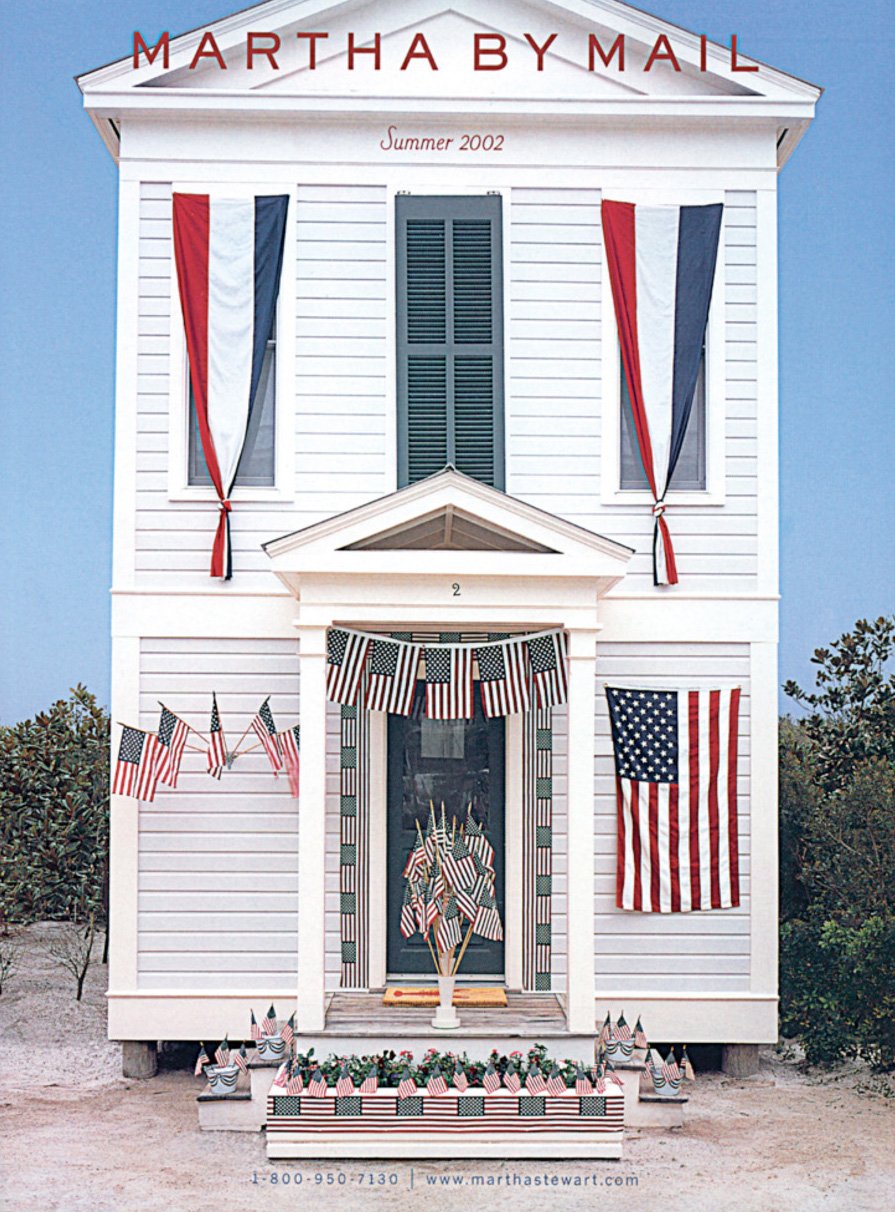

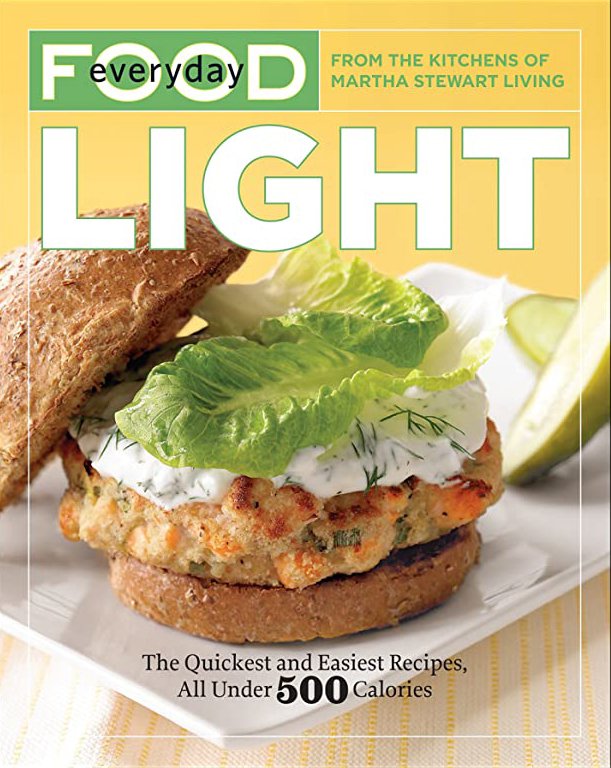

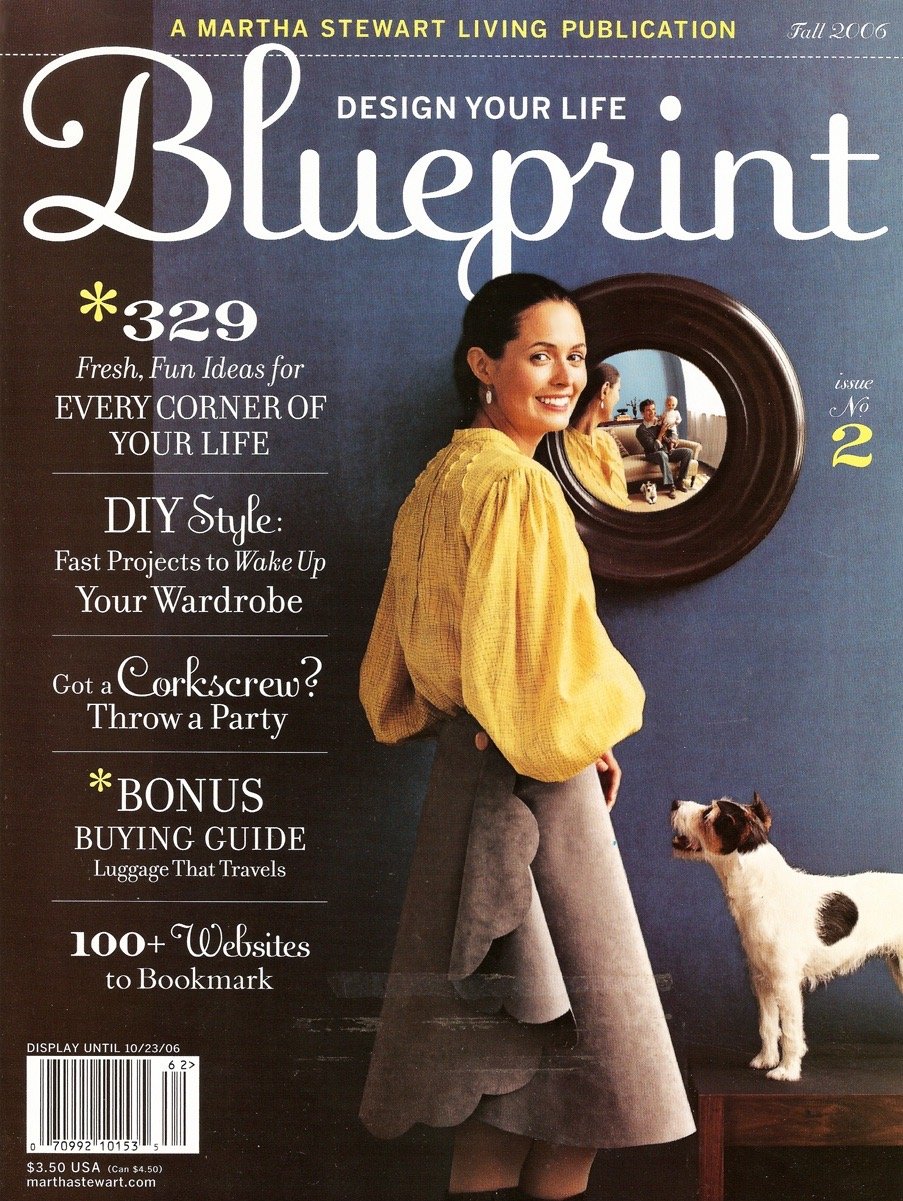
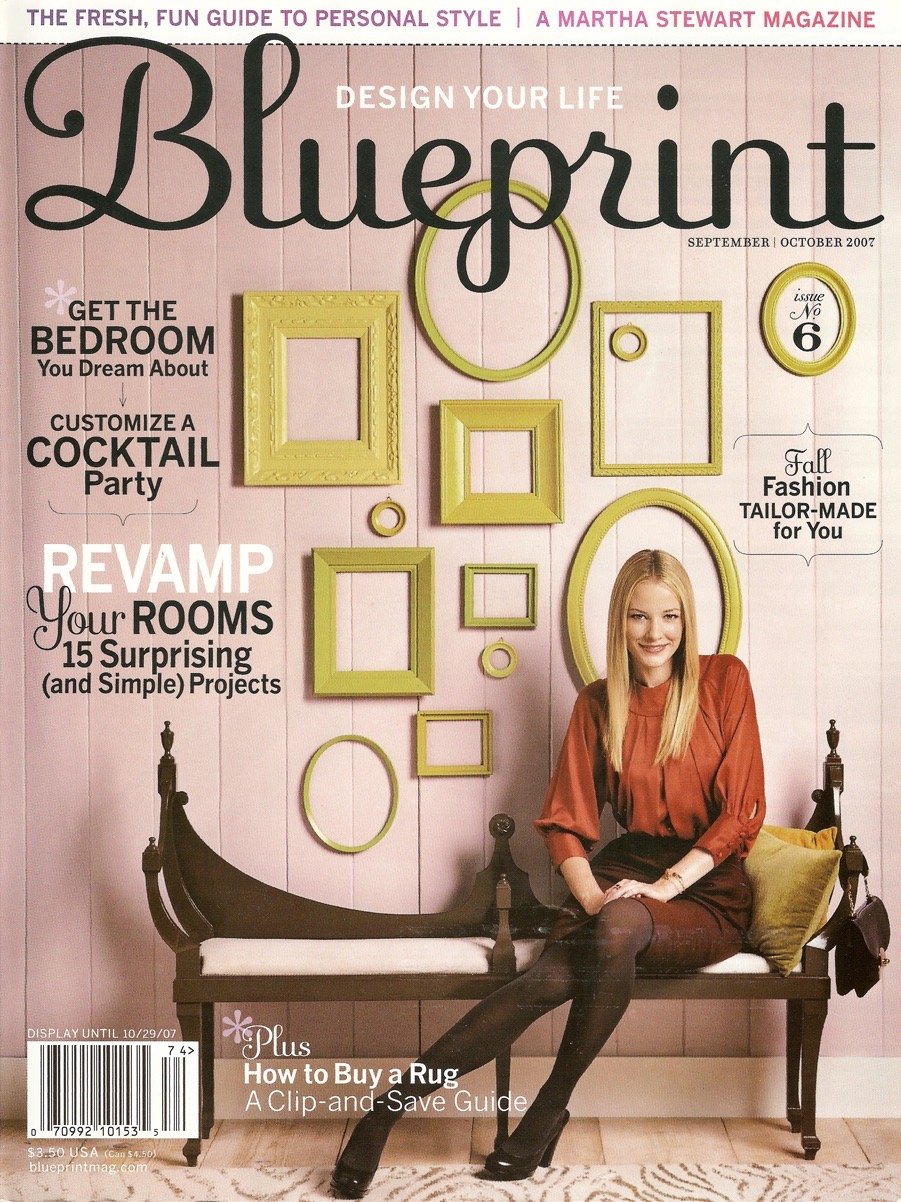
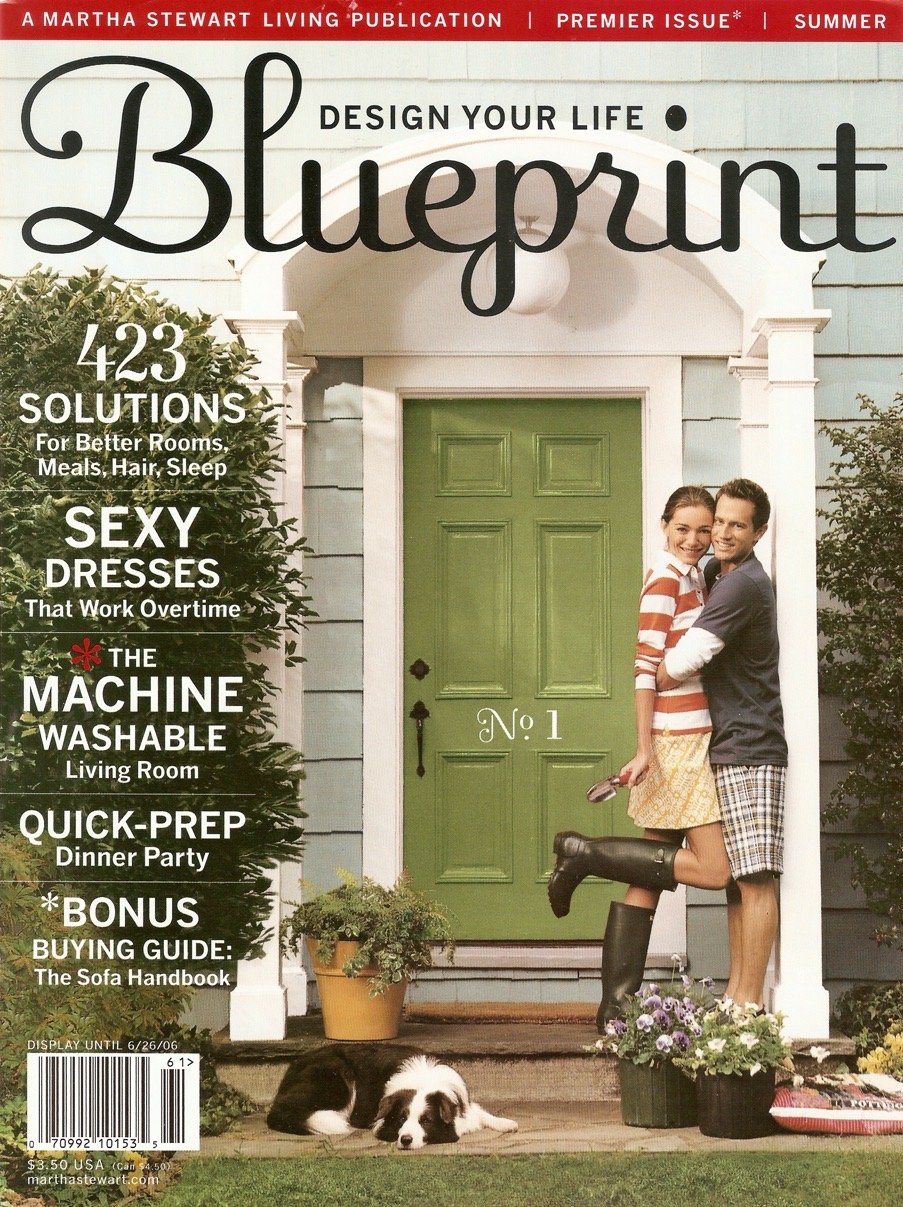
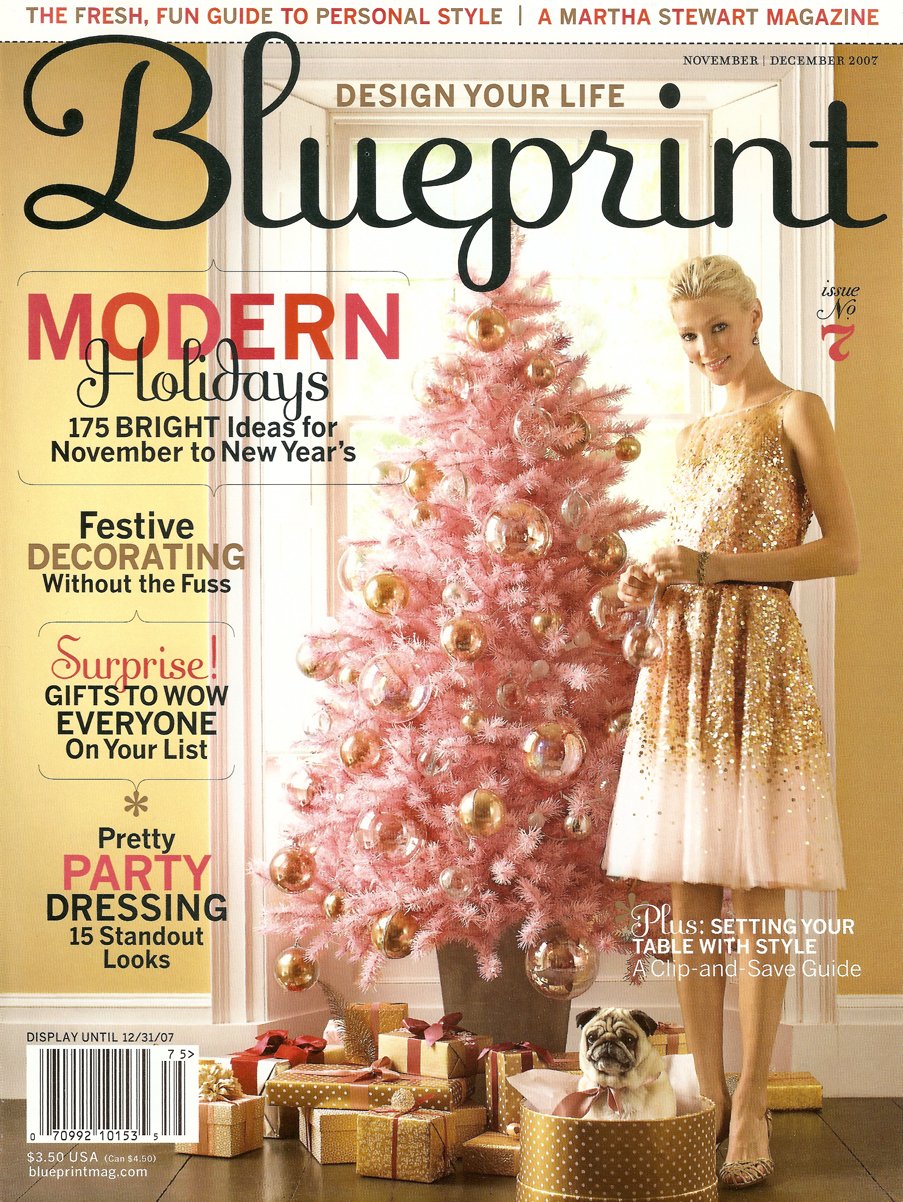
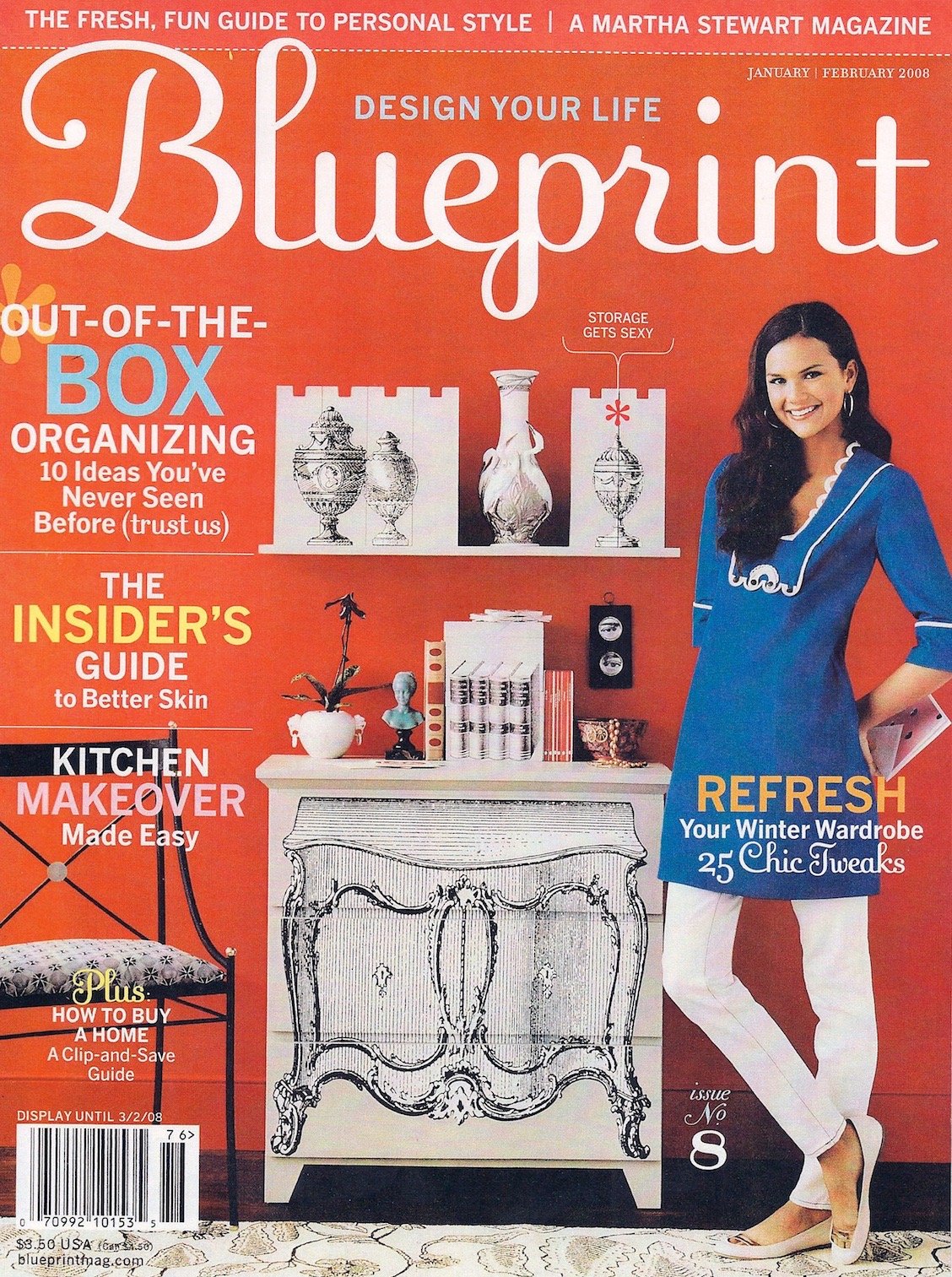
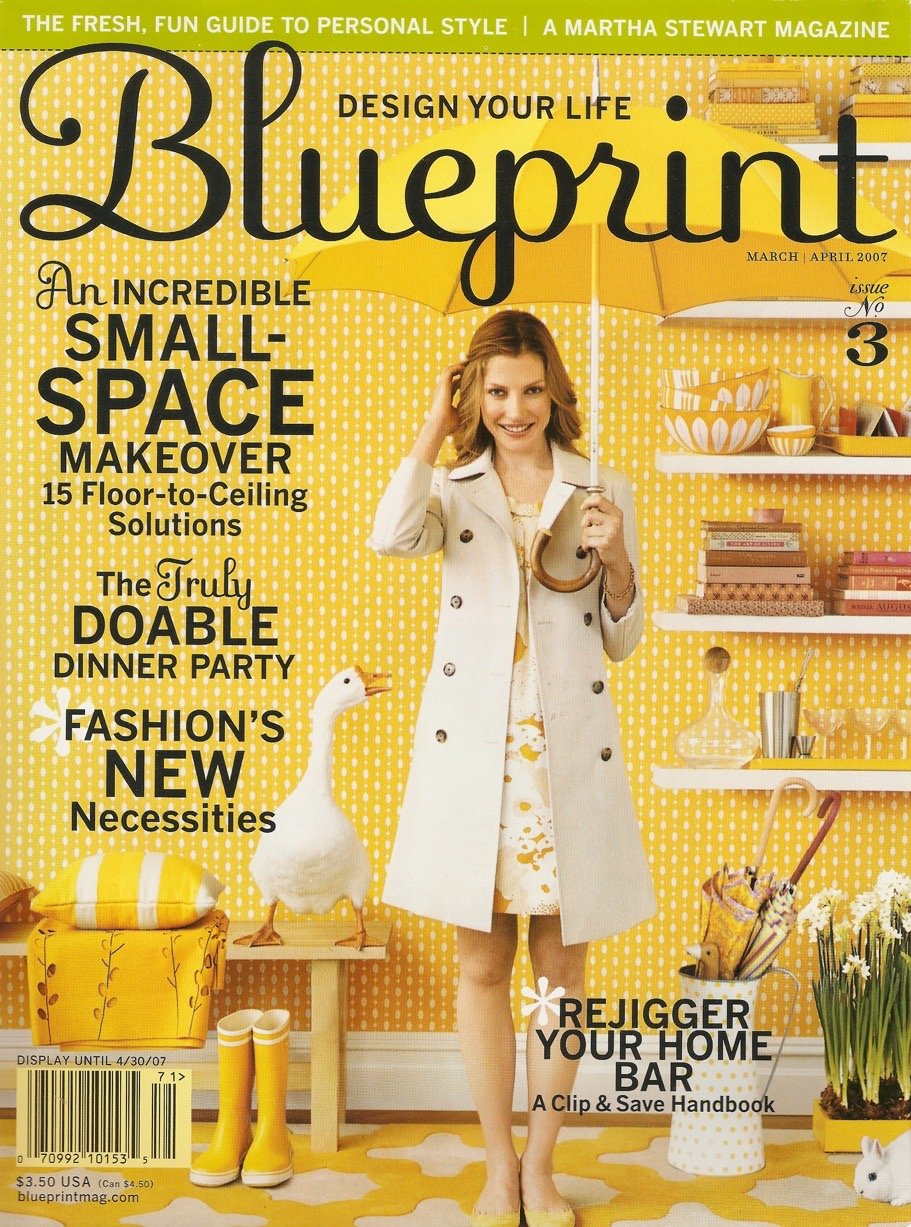
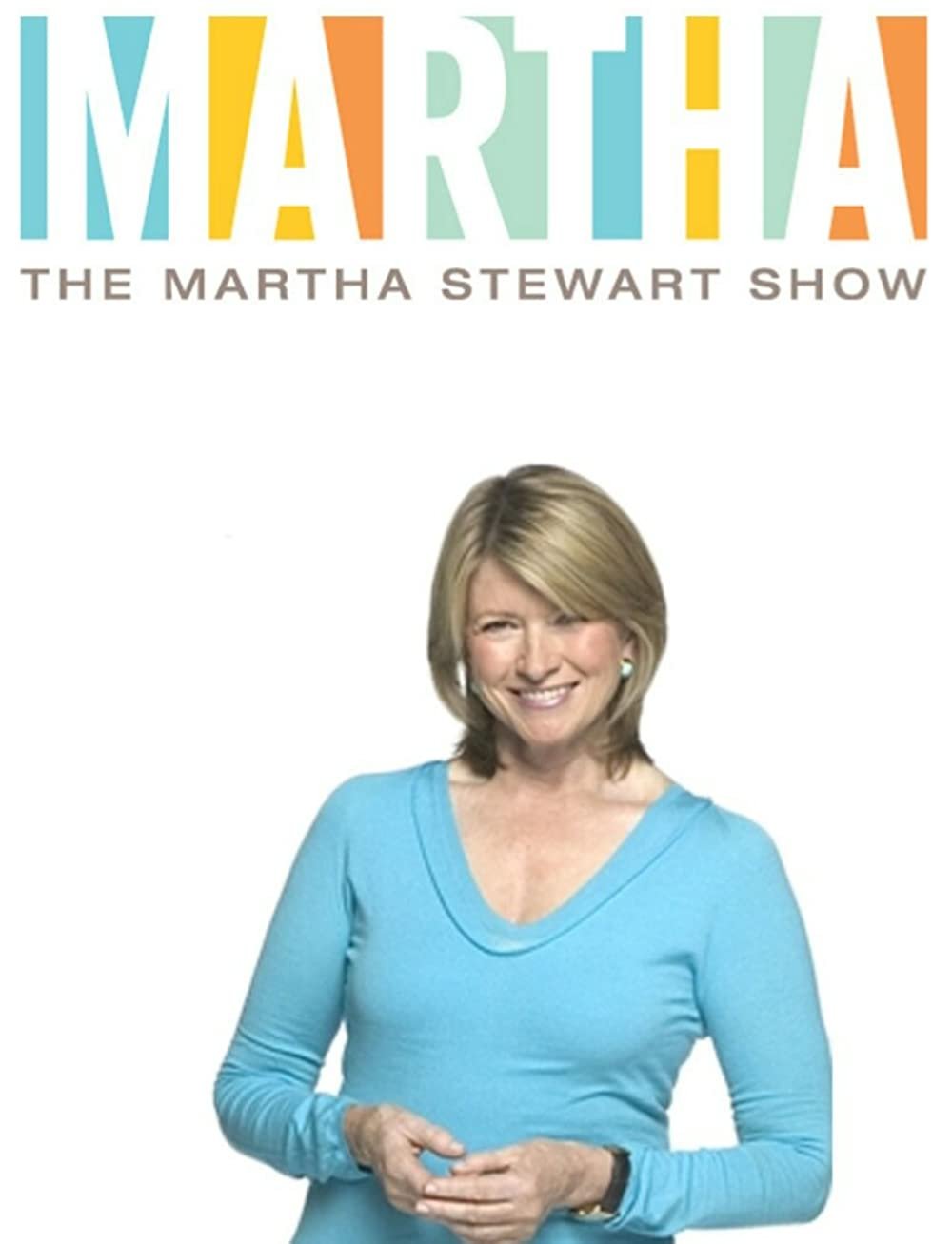

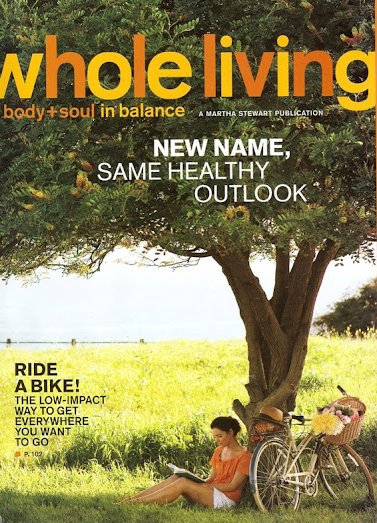
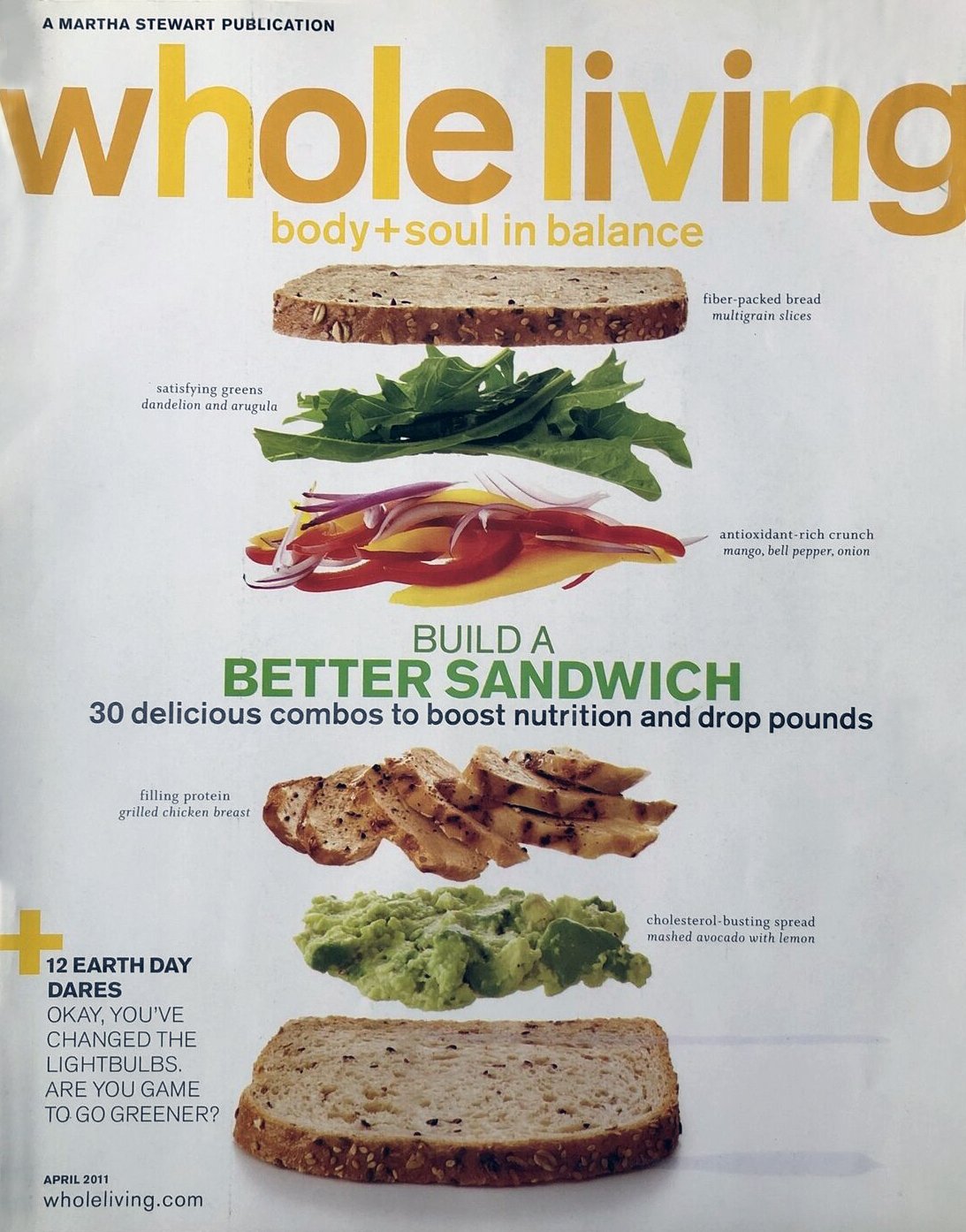
Debra Bishop: Gael, your early career path kind of seems like a prescription for ending up as a creative director at a place like Martha Stewart Living. Perfect experience. Perfect timing. How did all that happen? Was it karma? Luck?
Gael Towey: Yeah, it was luck. And I’m a hard worker. It never bothered me that I was essentially a mechanical artist. These are the days of getting lino proofs and using rubber cement and all of that. I was just so happy to be in the room.
You know? It’s New York. It’s 1975. It was an extraordinary place to be. I couldn’t believe that I was in New York City. It was fabulous.
Patrick Mitchell: Before you landed at Martha Stewart, you spent a year at Condé Nast, where you say you learned what not to do. Safe to say you were not terribly fond of Conde’s notorious editorial director Alexander Liberman. What happened there?
Gael Towey: Well, Nancy Novogrod was the editor in chief, and I knew her because she worked at Clarkson Potter Publishers. And so we’d known each other and worked together on many books. And we did a lot of decorating and cookbooks at Clarkson Potter, so she knew my background.
And she hired me to be art director when she became the editor in chief after Anna Wintour, who redesigned House & Garden magazine. But Alex Liberman was the editorial director of Condé Nast at the time, and he was at the end of his career. He was very old, and crotchety, and power hungry. And, the system was that if you were an editor, you were not allowed to talk to me as the art director. I was isolated in what they called a “layout room” and it was thought that if the editors came in to hang out, they would influence me in choosing photographs and doing layout. So I would spend the day by myself.
It was a lonely existence. And then Alex would take me to La Grenouille for lunch, and we’d be surrounded by gorgeous flowers, and he’d point out all the fancy people that were there, and we’d eat frog legs or whatever. And we’d come back to the office, and I would show him my layouts and he would literally tear them up! And he’d say, “We can’t do this!”
And he would get out new layout boards, and shuffle through the photostats, and choose something, and tear pictures in half, and lecture me, and tell me, “We need more castles in this magazine!” The following week was, “We need more kitchens in this magazine!” He would say whatever was the opposite of whatever you were doing.
And it was a pretty brutal situation. And the editors closed their doors. They locked their filing cabinets. They were incredibly competitive. And I asked Martin Filler, who was the architecture critic, how he could stand it, because Martin would routinely be humiliated by Alex Liberman in front of everybody. And I said to him, “Martin, you’re so smart. How can you stand this?” And he said, “Gael, it’s because it’s a fashion company. You go into fashion and out of fashion. And that’s just the way it is.” I thought, “Oh my God, how depressing.”
But when we started Martha Stewart Living, I wanted to have a team. I wanted to be with people. I wanted to have friends. You know, I wanted to have a working relationship with people. I didn’t want to be isolated in some room, and then after they beat you up all day long, you get in your car service and go home.
It was awful.
Debra Bishop: You went from Condé Nast to books. Right?
Gael Towey: No. I was at Viking Press then, then Clarkson Potter.
Debra Bishop: Okay. So that was the last stop before ...
Gael Towey: Yeah. I was only at House & Garden for a year. But at least I understood the rhythm of making a magazine.
So when Martha called and said, do you want to be the art director of this magazine? First of all, I couldn’t wait to get out of House & Garden. Second of all, it’s very rare, as you guys know, to have an opportunity to start a magazine from scratch. And of course I definitely wanted to do that.
Just like you did, Deb, with Martha by Mail, which wasn’t a magazine, but practically it was a magazine. And Blueprint. And Kids.
“I was very proud of the fact that when you looked down the row of designers sitting at their computers, they would have a stack of art books next to their computer because they were in charge of researching a concept for how to shoot the story.”
Patrick Mitchell: So, you meet Martha Stewart, your future employer, and Stephen Doyle, your future husband while working at the book publisher, Clarkson Potter. Talk about how you met arguably the two most important people in your life.
Gael Towey: That’s very true. They are both terribly important. We did about 50 books a year, and so I had the wonderful opportunity of being able to hire art directors and designers who I admired to do a lot of the books, and I learned so much from them.
People like Rochelle Udell, and the authors themselves, Susie Slesin and that relationship was really quite fabulous. So that’s where I met Martha and we were about to publish Martha’s wedding book. It was the biggest book of the year. So I started calling around to say, “ Who should I talk to?”
And Mary Shanahan, who was the art director of Cuisine —and really an inspiration for me, she was an extraordinary designer—and she really changed that food magazine market by the way she photographed food and the people that she used to photograph. So I called Mary to ask her for a recommendation and she said, “Well, there’s this guy, Stephen Doyle, who just started his own company. You should talk to him.”
And I also called Roger Black. And Roger said, “Oh, there’s this guy Stephen Doyle, you should go talk to him.” So I called this guy Stephen Doyle, and he came over and he was hysterically funny. He said he wasn’t interested in weddings and he didn’t want to design a wedding book.
I was in the middle of a separation from my first husband and I was in a state of severe anxiety. And losing weight and, like, an incredible, nervous wreck. But I really liked Stephen’s portfolio and I really liked his personality. So I said, “Well, we’ll work together on something, even if you don’t want to do this book.”
And I picked my business card up off of my desk and I looked at it and it said, “Gael Dillon.” And I was like, “Oh shit, I have to get new business cards!” And I leaned over the desk and scrubbed out Dillon with my pen, like viciously. And then wrote in there, Towey, which is my maiden name, and I handed it to Stephen and he thought that I was coming onto him, basically. And he thought, “Wow, that’s, you know, kind of amazing.”
I’m not really like that. I’m not a forward person, but we found something to work on together.
Patrick Mitchell: ... and her name is Maud [Towey and Doyle’s daughter]...
Gael Towey: Yeah, exactly! And Stephen had a fake name that he would, if he called, and he was “Pierre,” that meant that it was Stephen asking for a date. And if he called and it was “Stephen,” it meant Stephen, this was calling about doing a job for us.
Towey with her husband, designer Stephen Doyle.
Patrick Mitchell: So you launched Martha Stewart Living in 1990. What were the hot magazines at that time? Who was your competition?
Gael Towey: The “Seven Sisters” [Better Homes and Gardens, Family Circle, Good Housekeeping, Ladies’ Home Journal, McCall’s, Redbook, Woman’s Day] were the competition. The other women’s magazines, like Good Housekeeping, and those kinds of things. Cuisine had been bought by Condé Nast and closed because they didn’t want competition and people were sent Gourmet [in its place]. And for those of you who can remember, Gourmet was a very, very stuffy, old fashioned kind of shellacked-looking magazine at the time, in terms of food photography.
So that’s kind of the competition in the women’s space. And computers were just beginning. So a lot of the interesting magazines were using crazy typography, which I don’t really know how to do. I’m not a typographer.
Patrick Mitchell: Yeah, this was a few years before Wired. I would guess Fred [Woodward] was at Rolling Stone at the time.
Gael Towey: Right.
Patrick Mitchell: But not much else was going on, generally, in the magazine business design-wise?
Gael Towey: No. And that kind of computer crazy typography scared me, you know. I really didn’t know how to do it. So, since Martha and I really wanted the new magazine to be very photography-based, we elected to do quite simple typography.
Debra Bishop: Martha Stewart Living was truly revolutionary when it launched. Before Martha, shelter content was often very traditional and stuffy—do you remember Victoria magazine?
Gael Towey: Yes. Yes.
Debra Bishop: What made the Martha Stewart Living approach so unique?
Gael Towey: Can I tell my photography story about getting canceled by Condé Nast?
Debra Bishop: Oh, sure.
Gael Towey: When we started the magazine, we did it so fast! Isolde Motley, who was our first editor in chief, and I met at Clarkson Potter. We both worked with Martha at Clarkson Potter, so the three of us were a kind of known entity to one another. We had all worked together before. So it wasn’t, like, completely nutty.
We started working on August 1st, 1990, and we had the first issue, which was a test issue, on the newsstand November 12th, 1990, which is an unbelievably fast trajectory in terms of doing a magazine. I had met all these wonderful photographers when I was art director of House & Garden.
And as soon as I started working at Martha Stewart, I called them and asked them to work for us and do stories for us. And they all kept saying “no.” And finally one of them said to me, “You know, Gael, you’ve been embargoed. None of us are allowed to work for you. We can’t work for you or Martha.” And I was petrified.
I thought, “oh my gosh, what am I going to do now?” So we had to find photographers who did not work for magazines. And that changed—so your question was, “ How did you change the look of women’s magazines?” That was part of it. It forced us to go to a different group of people and work in a different way.
And that’s part of what made us so unique.
Debra Bishop: Mm-hmm. It was problem solving.
Gael Towey: And also Martha wanted to do this “how to” magazine. And that meant that we were doing a lot of stuff ourselves.
“And he said, ‘Gael, it’s because it’s a fashion company. You go into fashion and out of fashion. And that’s just the way it is.’ I thought, ‘Oh my God, how depressing.’”
Debra Bishop: So when you started the magazine, was there a brief for Martha or did everything happen sort of organically as you’re describing?
Gael Towey: The brief was “inspiration and information.” There were things that she liked. It was kind of an amalgamation of all the things that she liked to do, really, and that she was quite good at. She had amazing gardens in Westport. She was a wonderful chef and cook. So those are all the things that obviously really interested her.
She had these Eyewitness books by Dorling-Kindersley, which talk about things like trees or apples or something like that in incredible detail. And she was a very detail-oriented person and she brought in these books and she said, “I’d like the magazine to be like this.”
And they were drawings of every single kind of deciduous tree with lots of information about them. And that’s what we turned into our, kind of, famous glossaries. And that became a real opportunity for experimentation. And what Claudia Bruno calls the “creative laboratory.”
Debra Bishop: From the beginning, the magazine was influential for its modernity and simplicity of design. I always remember the minimalistic typography, all lower case headlines, which nobody else in the business could do. People tried to emulate it. But editors wouldn’t allow it anywhere else. So it was actually kind of irreverent and modern.
What were the other hallmarks that defined the brand? What about the photography? I think it was revolutionary for its time.
Gael Towey: I think the photography was very natural and that came out of what became brand values, actually, that Martha started from the way she did her books.
And when we did food, you were not allowed to use any fakery at all. And the person who developed the recipe would also be the person who created the recipe for the camera. So you had to create a recipe that worked and that looked really good. And then, of course, somebody else did the testing.
But that forced the recipe developers, the food editors, to create a recipe that also looked good for the camera. And that’s very unusual, because still, to this day, a lot of cooking magazines, and newspapers, and so forth, they’ll take a recipe and then they’ll hire a stylist to actually cook it.
And so it’s a separate thing. Whereas in our situation it was all by the same person. And they were really artists. People like Susan Spungen, who was a painting major in college. She looked at food almost as an art form.
Debra Bishop: And the photography style was very natural and beautiful. A lot of natural light. There were certain people who brought beautiful style and a way of showcasing the food, or flowers, or whatever it was, and it became an iconic style within the magazine. Talk a little bit about the early photo shoots.
Gael Towey: I was very proud of the fact that when you looked down the row of designers sitting at their computers, they would have a stack of art books next to their computer because they were in charge of researching a concept for how to shoot the story.
And you have to realize, you know, with women’s magazines, it’s kind of the same old story over and over again. This isn’t the first time that you’ve done a story about rice. Or cakes. Or whatever. And so you had to figure out a way of photographing them that stood out. And photographers like Victor Schrager or John Dugdale who would use 8x10 cameras and create these sort of very beautiful old-world looking still life.
Irving Penn was a big inspiration for us. He was always on the wall of the stylists’ offices. And those photographers who used these kinds of more old-fashioned ways of photographing—Maria Robledo was another person who used the 4x5. They really controlled the light, as you say that it was natural light, and natural light makes things look really “real.”
And the whole idea was to make it real—make it like it would look in your own kitchen, or your own garden, for that matter.
Debra Bishop: And it did.
Gael Towey: The days of photographing gardens were so long you’d have to get there at six o’clock in the morning, and the sun was already coming up, and you’d be there until 10 o’clock at night sometimes.
Debra Bishop: And the light and the naturalness of the photography really gave the magazine an atmosphere.
Gael Towey: Yep. That’s right.
Debra Bishop: I think some photographers, such as Victor for example, who were incredible lighters. But the photography really was so much different, and so much more real, than any other photography that was going on in other magazines at the time.
Gael Towey: Absolutely. Well, thank you. It really was very different from a lot of the magazines at that time, which were very over-lit. And I think natural light made things look appealing and beautiful.
But we also used different photographers. Vickie Pearson was a fashion and portrait photographer. And when I asked her to do still life, she was like, “but I don’t do still life.” And I said, “well, you do. Look at these pictures that you took.” And she was so grateful for us giving her an avenue out of the fashion world.
And it really transformed her. But she made food and still life look like it was a living thing. And the way she photographed, she was always moving. She was engaged with everything in this life happening in front of your eyes.
Patrick Mitchell: I just loved those Martha Stewart glossaries that you talked about: “Seventy-two Breeds of Carrots,” “Everything You Ever Wanted to Know about Peonies,” etcetera.
Gael Towey: Yeah.
Above: Stewart, Towey, and Motley at the press check for the premiere issue of MSL; Towey and Stewart in a Texas cottonfield researching a story.
Patrick Mitchell: Which was just one of the many ways you guys reinvented storytelling for magazines. Can you talk about the process of creating one of your favorite glossary stories? The extremes you went to, to pull that all together because they were, like, ten spreads! They just went on and on, and never got boring.
Gael Towey: That’s such a good question. I love answering that question.
We would call in all of the figs, or the peaches, or whatever, from all over the country, and, you know, we grew so fast and we became famous really, really quickly, and so people were eager to pick up the phone. So we did get a lot of collaboration from growers.
But I remember when we were doing a peach story, my assistant, Paige Marchese, was having to call farmers around the country at, like, 10 o’clock at night because in the daytime they were working all day and they weren’t answering their phone or anything. But we watched, as, you know, there were floods in South Carolina and Georgia and there was a freeze in the winter in northern New York and Massachusetts. And the only place that the peaches were doing well was in California. But we were tracking this whole thing. We tracked it for the entire growing season just to get the peaches sent to Martha Stewart Living. And then everything was categorized by the food department. Everything was tasted. And then we hired Chris Baker to do the photographs.
I used to go into old print shops and look for seed catalog covers for inspiration and stuff like that, because the question, as you say is, “well, how are we going to photograph this glossary this time?” It was like a competition between all of the art directors, but everybody, it was their favorite kind of story to do because it was the maximum amount of creativity.
I remember doing a fig story with Maria Robledo, and we decided to paint backdrops, and we used this kind of Rothko idea of one color bleeding into another color, and then every fig was cut and opened and laid out on these big panels that we created. It was creating art. That’s what it was.
Debra Bishop: And so beautiful and so much fun to work on. When you think back on it, in one of the glossaries that I am fairly sure you worked on was the beautiful peony glossary. What were some of the favorite ones besides—the figs was beautiful. The peonies. Name some.
Gael Towey: But we did everything. We did rice!
Debra Bishop: Yeah. And the rice was amazing.
Gael Towey: She laid each piece of rice out like a grid! It’s insane.
Martha Stewart Living Glossaries
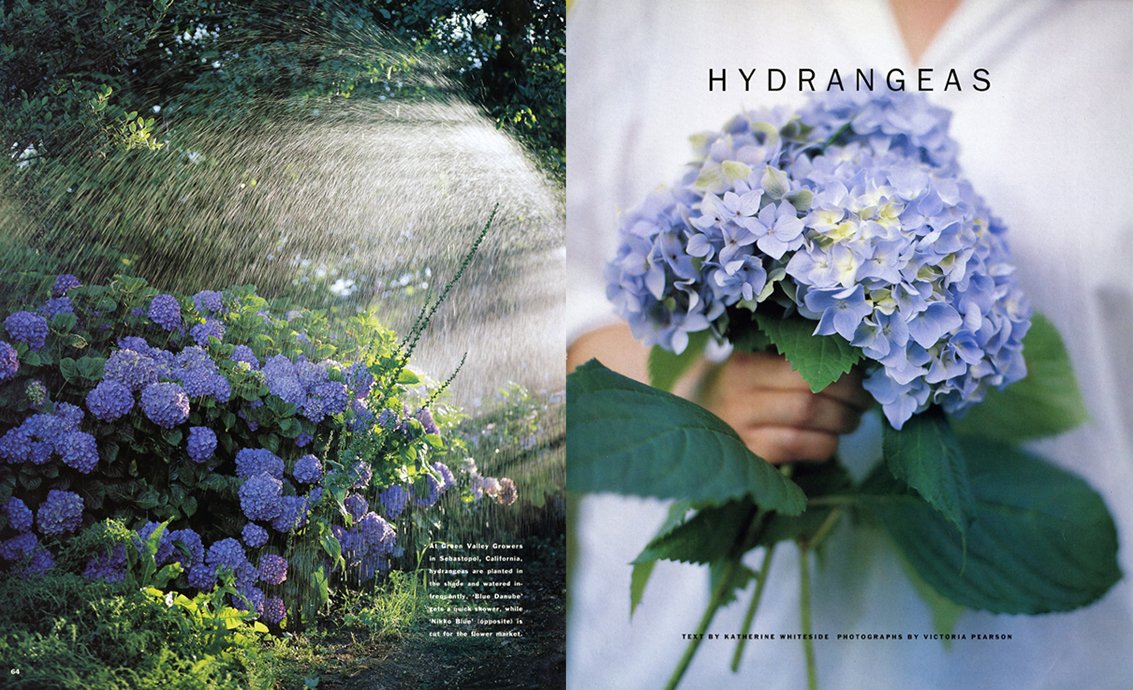
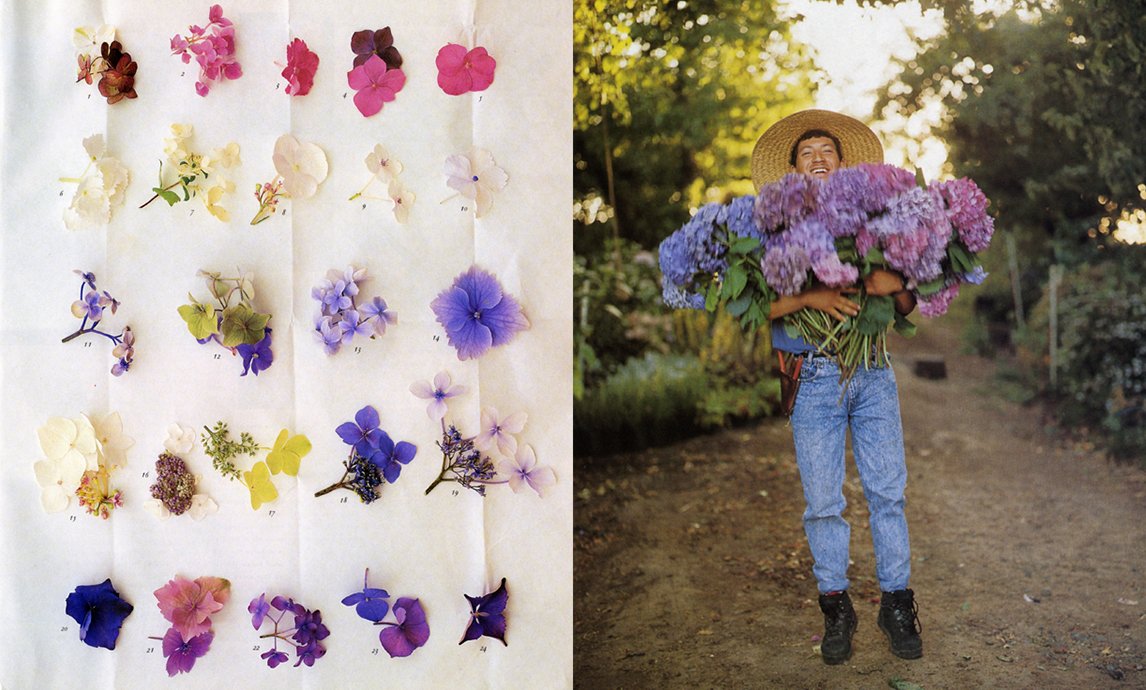
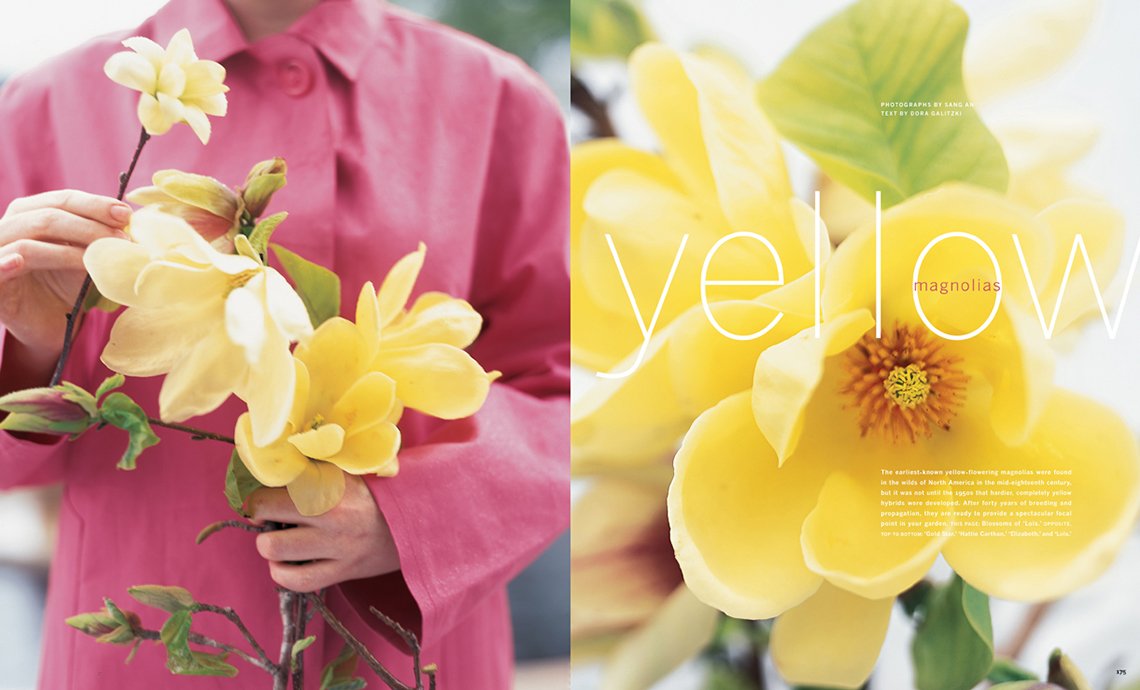
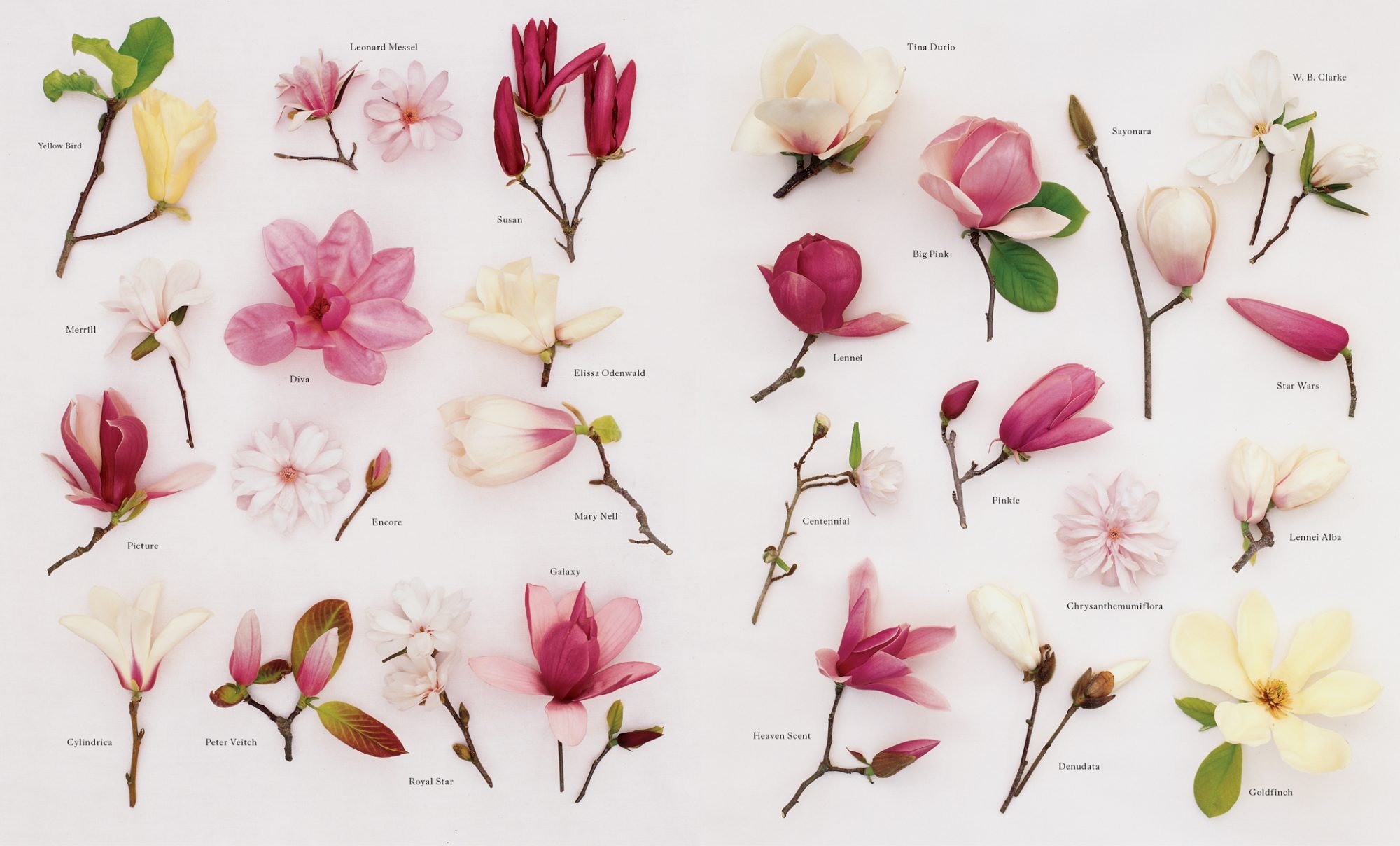
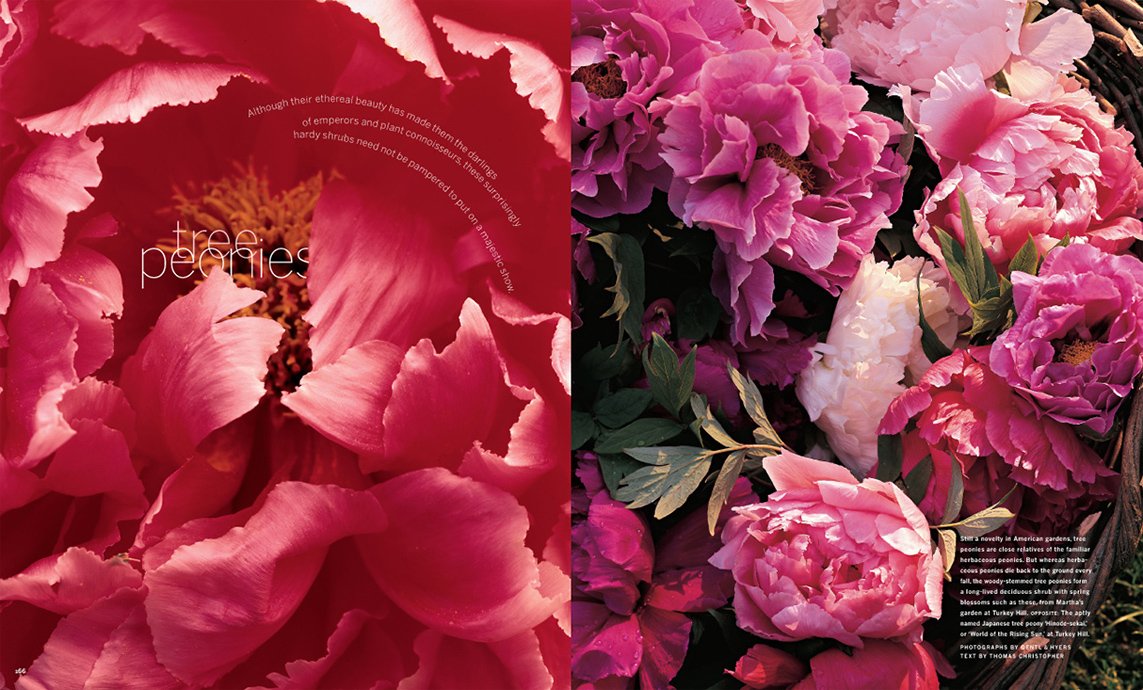
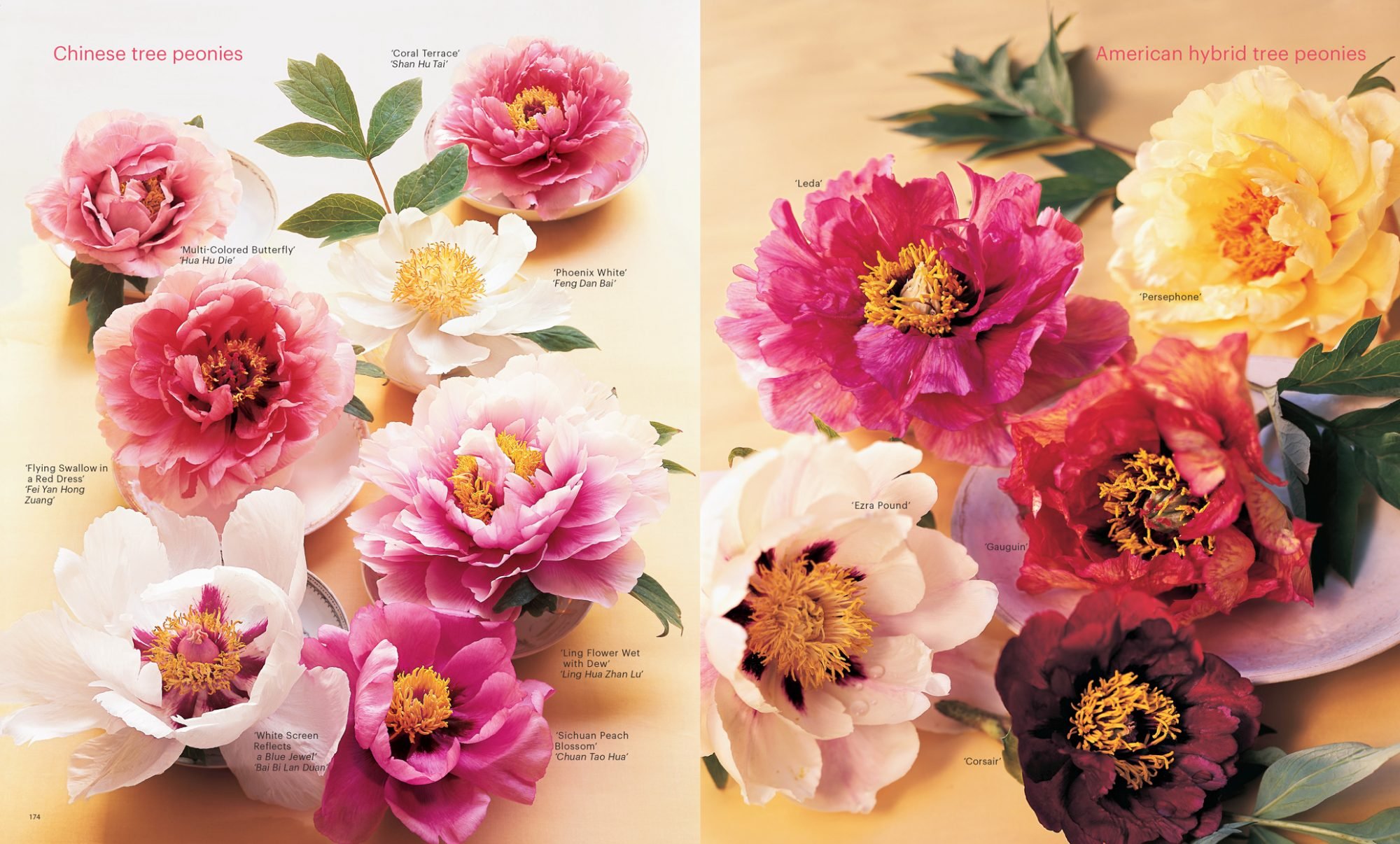
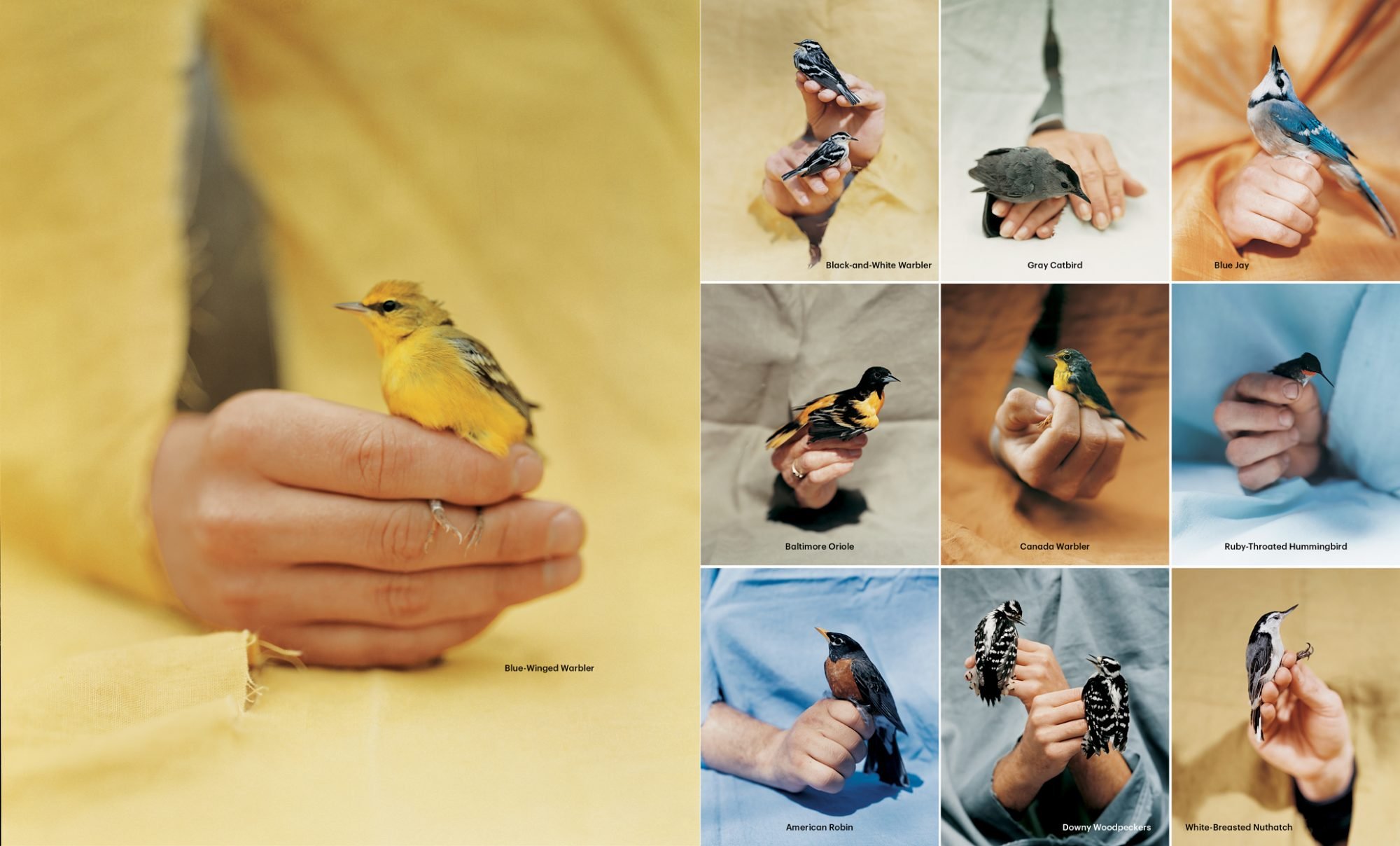

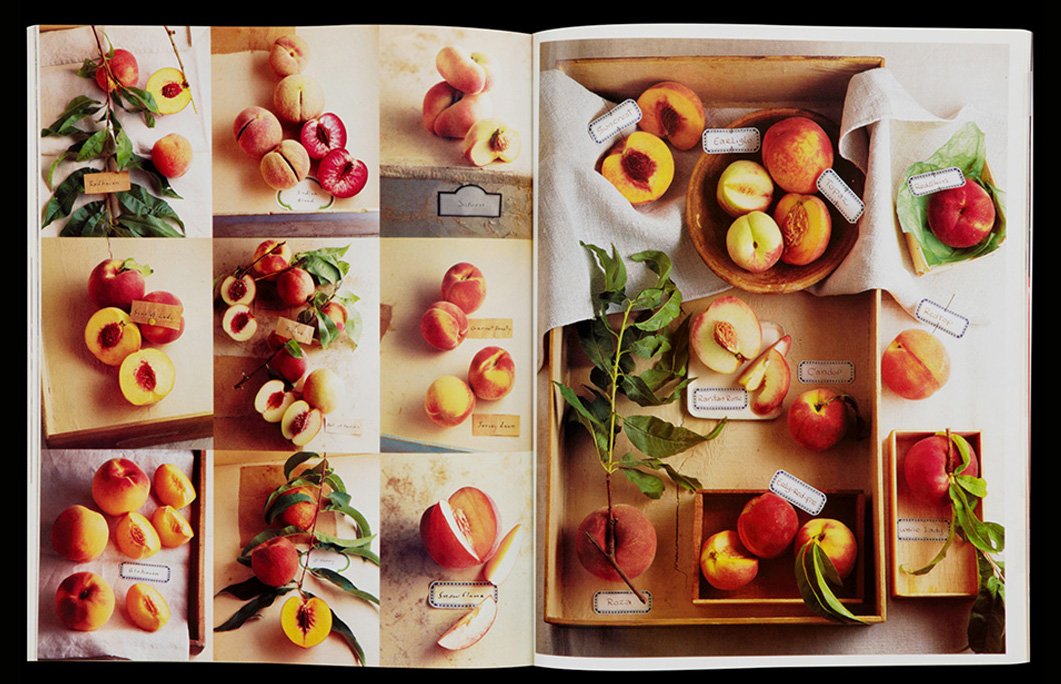
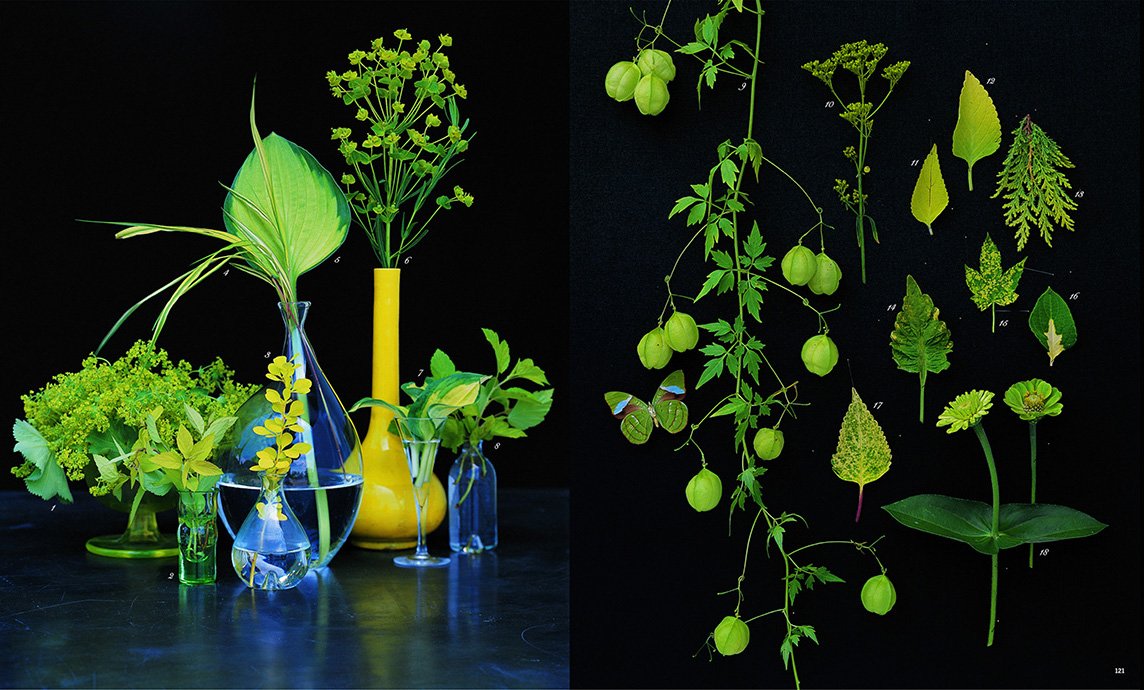

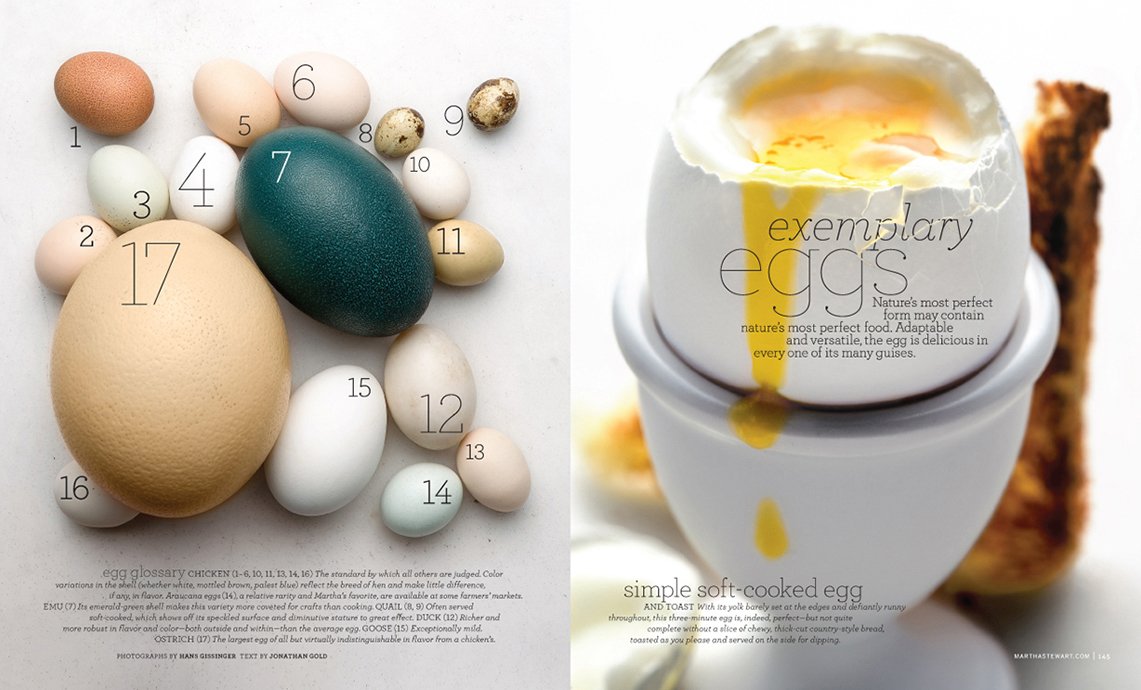

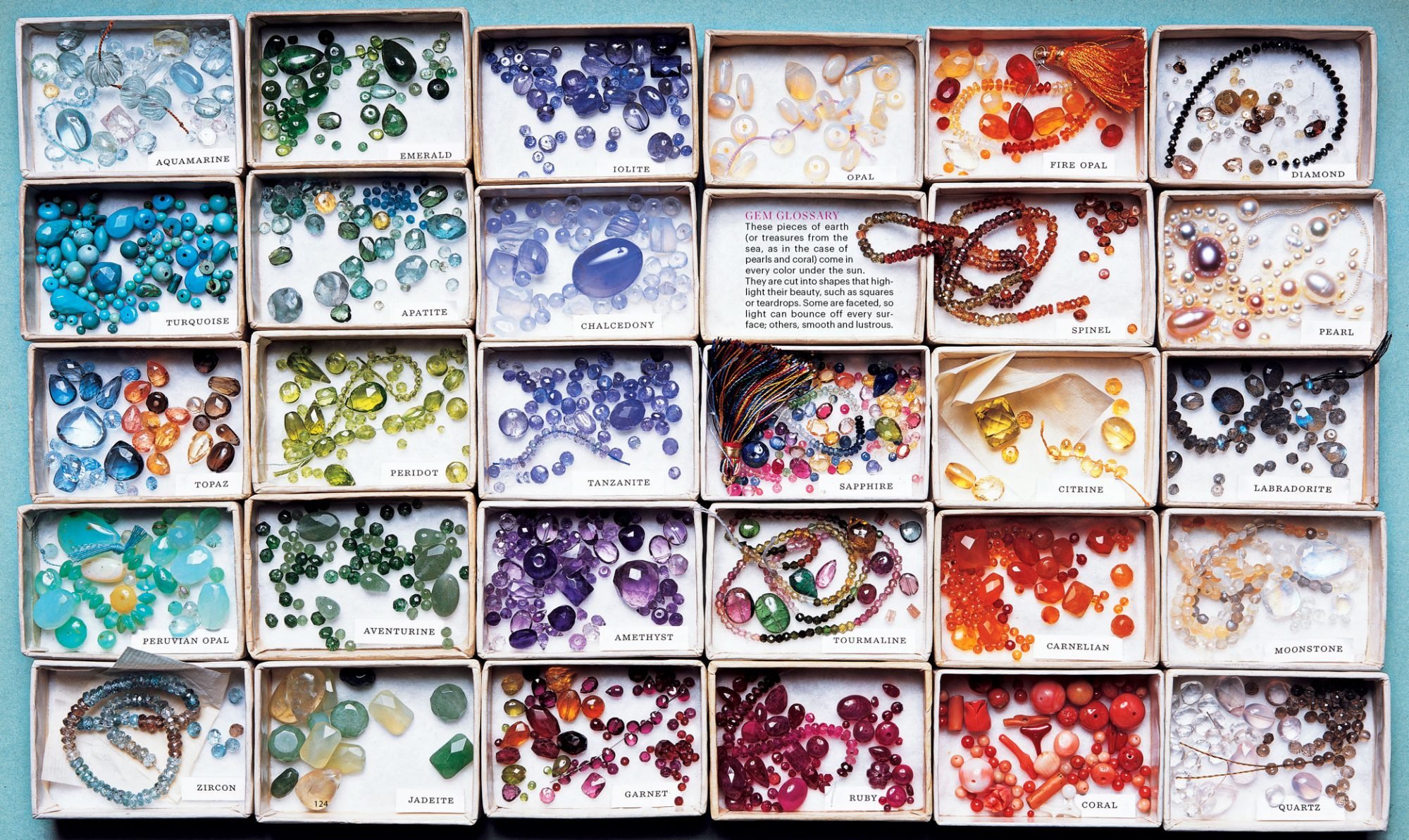
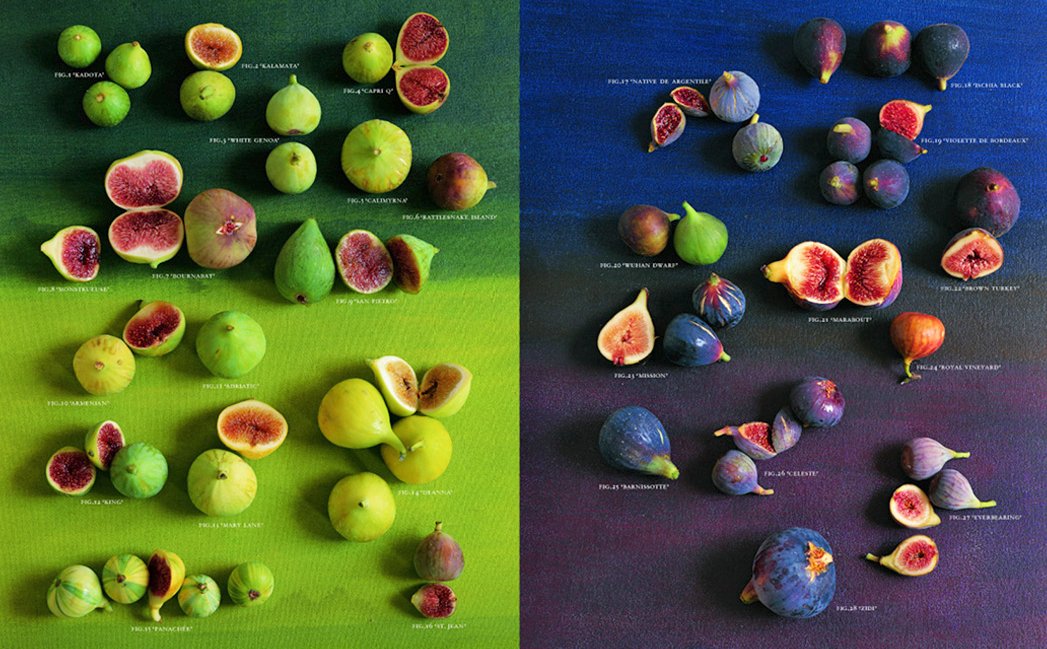

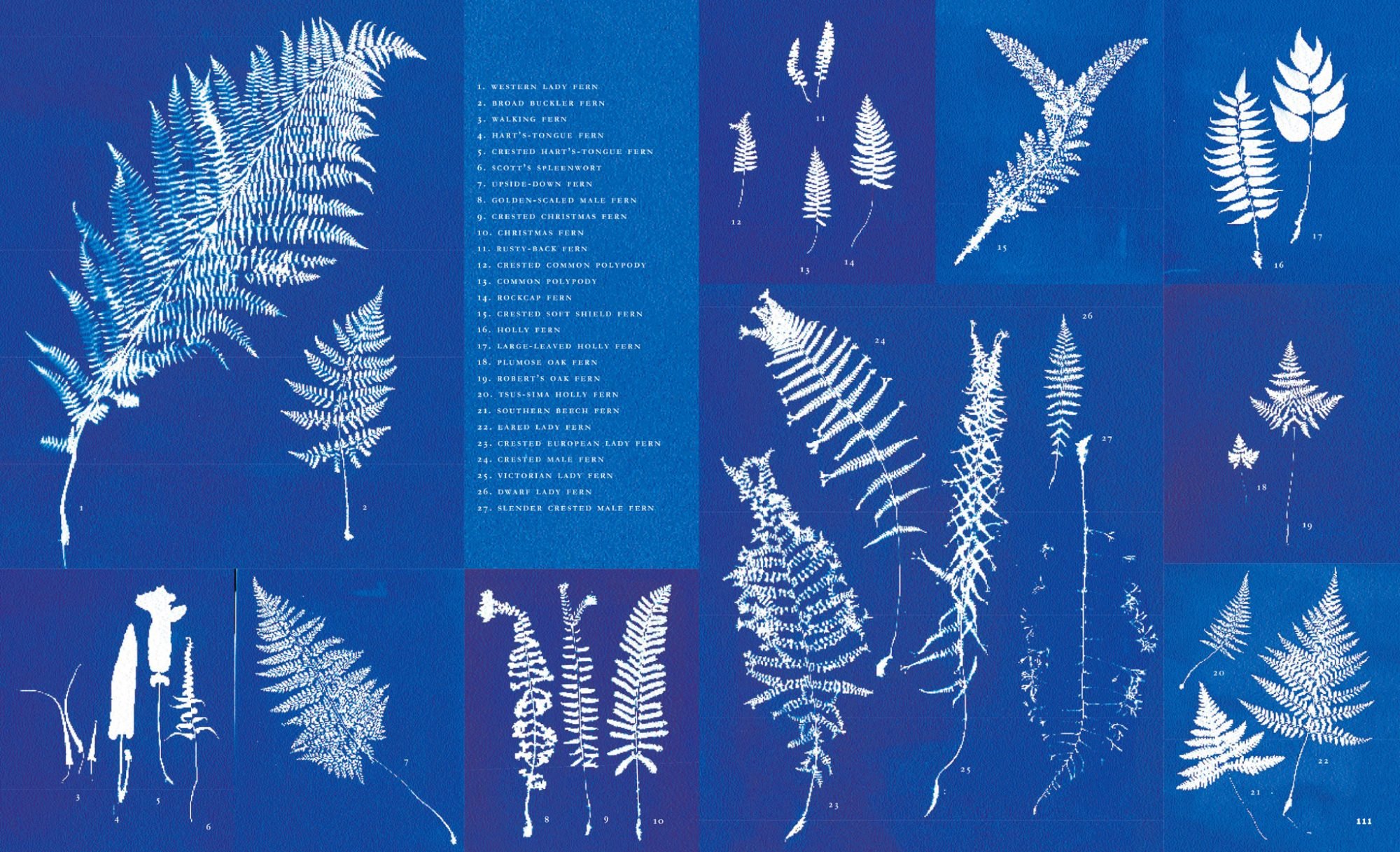
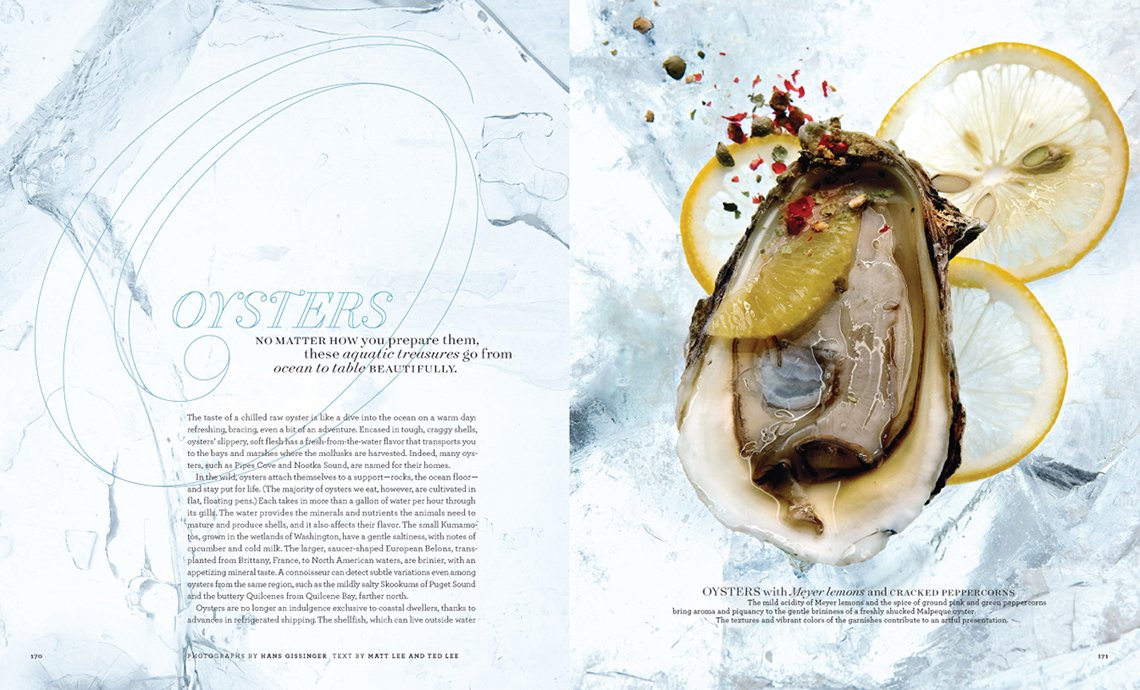
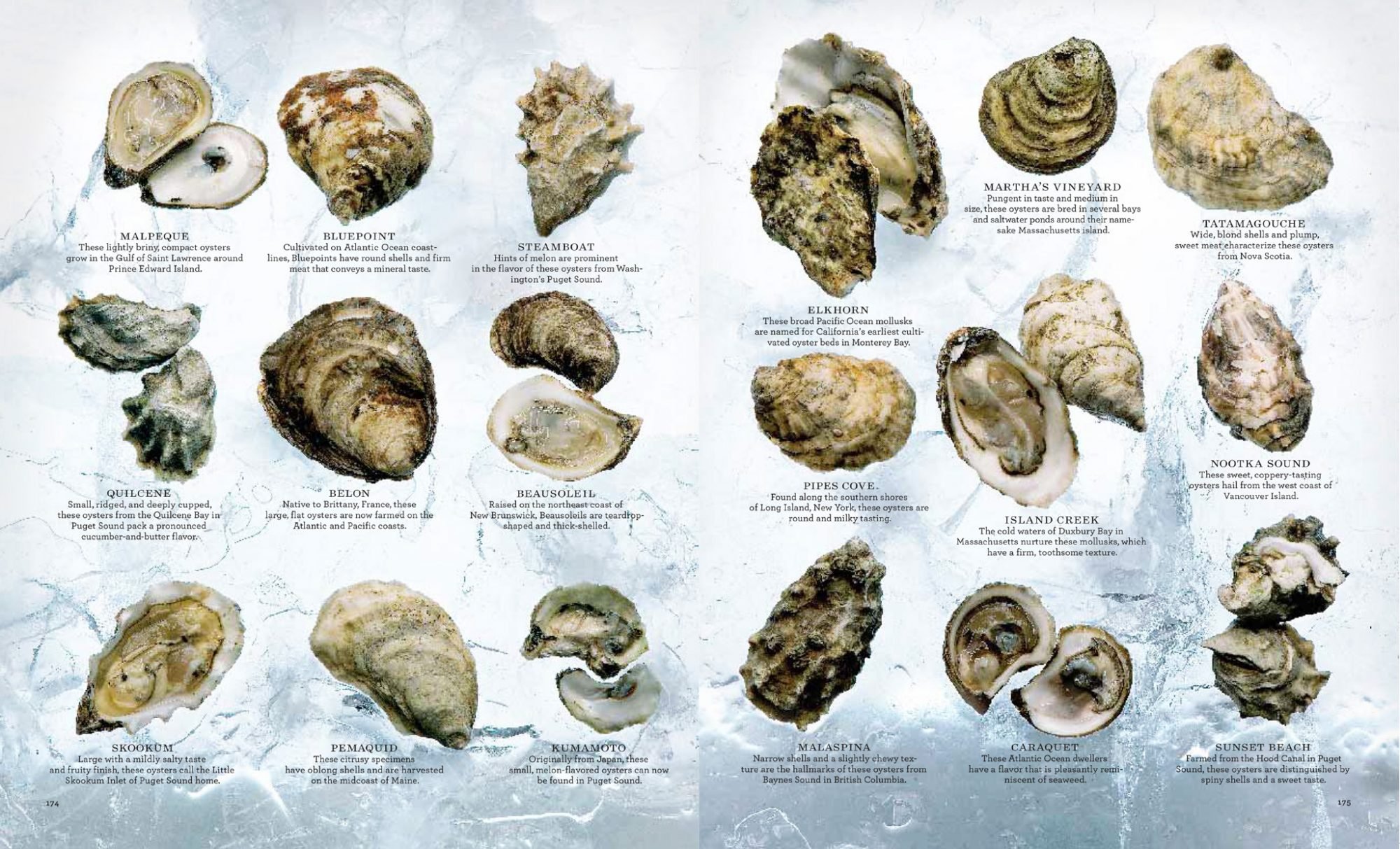
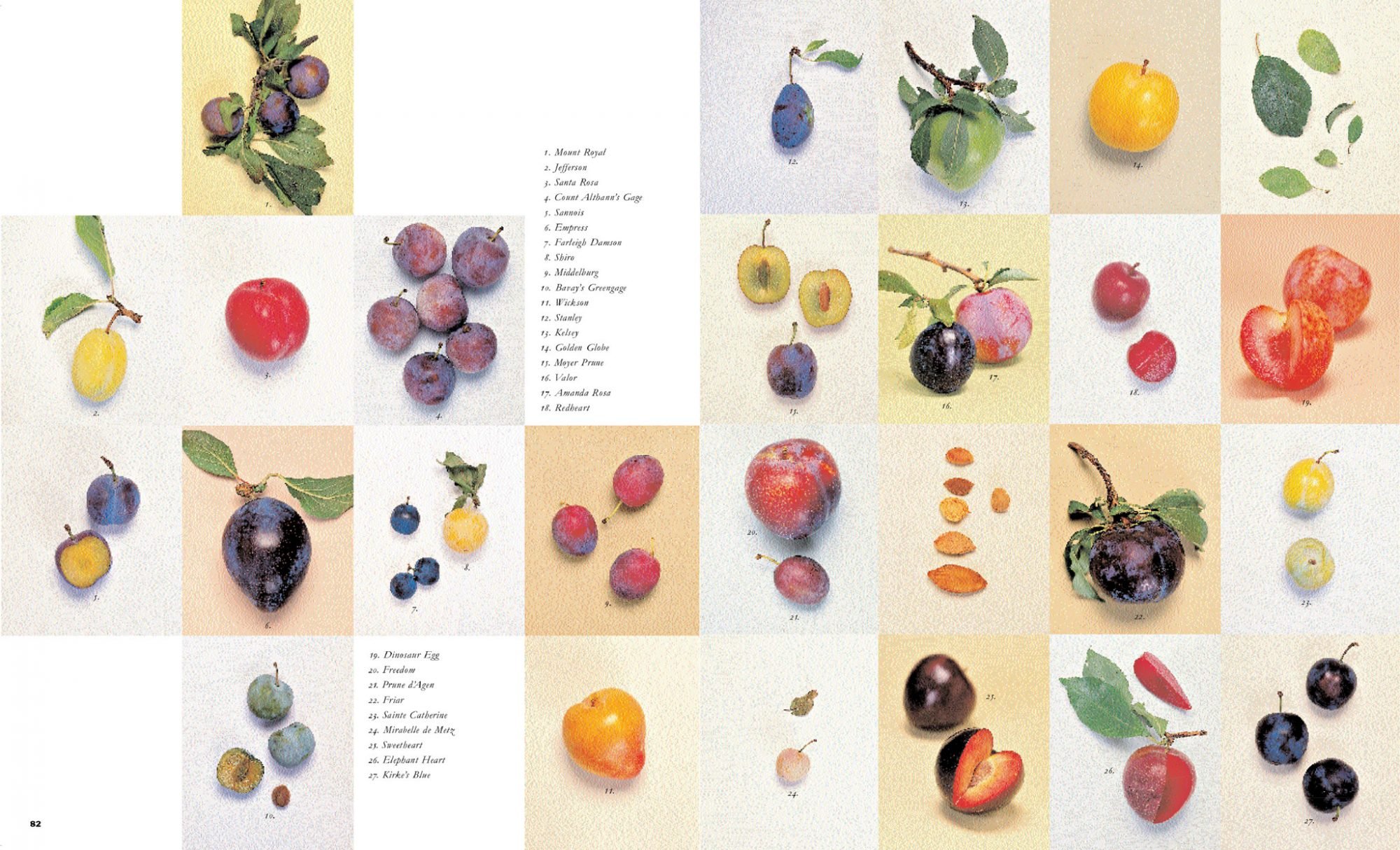
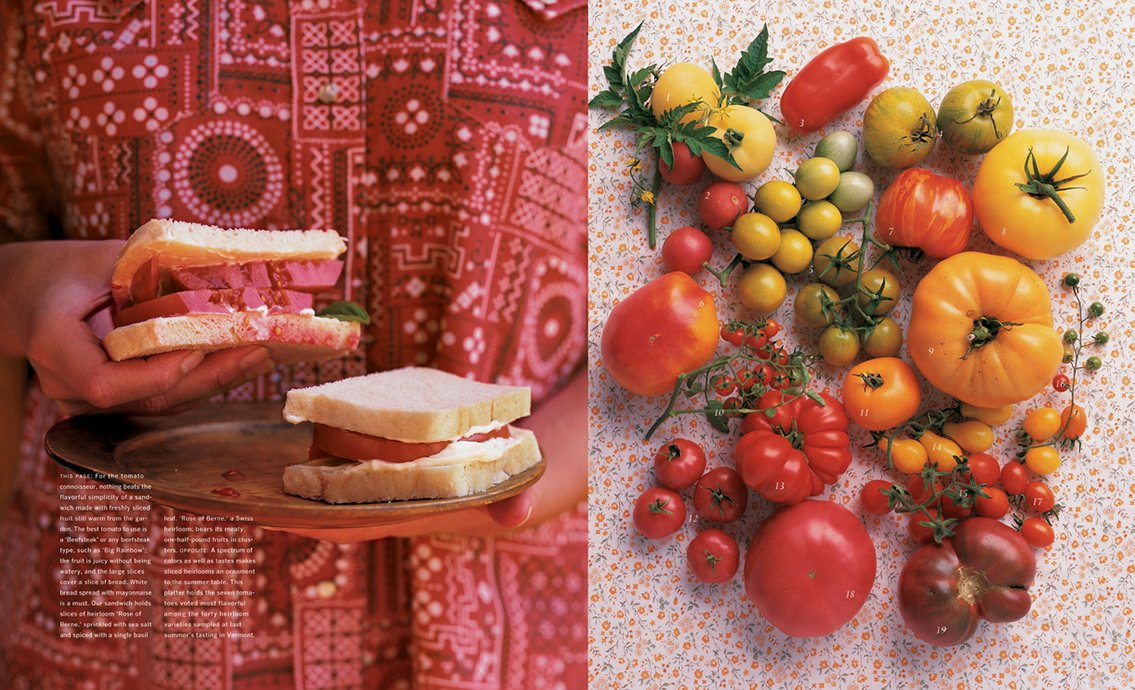
Debra Bishop: The early ones were beautiful too. That sort of set the whole tone and the whole format and motion. The apple glossary was stunning and amazing.
Patrick Mitchell: Well, the incredible thing is, what you just described was just for one-tenth of the magazine. You still had all that other stuff to do.
Gael Towey: That’s true.
Debra Bishop: It’s funny because I’m still making glossaries. I do it differently. I’m making glossaries with typography and information, but those photographic glossaries were, absolutely, cat’s meow.
Patrick Mitchell: And I assume you got a lot of great attention for that.
Gael Towey: We did. We won so many awards. Because they were really completely unique. Oh, I remember another—and people would come up with crazy stuff like , I think it might have been James Dunlinson, who did an oyster glossary. And, of course, we got oysters from all over the country—west coast oysters, east coast oysters—and we hired an ice guy to come in with this enormous block of ice. It must have been about eight inches thick. And it was probably 30 inches by, I would say, 18 inches. And all of the ice was kind of gouged out so that the oyster could sit in the ice pocket. And then he lit the whole thing from underneath. So the ice is glowing from underneath. And then there’s, of course, the top lighting.
We did some complicated stuff.
Debra Bishop: It was epic.
Patrick Mitchell: Imagine doing that for a website.
Debra Bishop: Those should somehow be framed and they should be put in a gallery. They’re incredible.
Patrick Mitchell: In the time before Martha Stewart, the legacy power structure in publishing meant that magazine editors were absolute monarchs. You and Martha changed that. And we all owe you a debt of gratitude because, for the most part, before the success of Martha Stewart, designers didn’t really have a seat at the table. Or, at best, we had a limited role in shaping the content of our magazines. I’m fairly sure this was part of your master plan, but can you explain how and why the process was different from other magazines?
I mean, I would say it’s partly the nature of being a startup. It was kind of the same thing at Fast Company. We didn’t have a lot of “magazine people” there. We were just a group of people with an idea figuring out how to make it happen. So you had the sort of freedom to create the structure you wanted. But how did you go about doing that?
Gael Towey: We did have the freedom to create the structure we wanted. And when Martha asked me to be the art director, I said, “I want to be on the same level as the editor. I don’t want to report to the editor. I want us to be a team.” And she agreed with that. She, of course, was the last person to make a decision, but she didn’t function like an editor in chief.
That wasn’t really her role. The whole idea of teamwork, as I mentioned, came out of my realization at House & Garden that you’re stifling creativity by keeping everybody in a separate, isolated role. And the thing that I miss the most about working at Martha Stewart Living is that collaboration. The fun of it all. The fun of coming up with ideas, the fun about learning from people.
I learned so much about gardening and cooking. And I learned not to be afraid. You just try something. And that’s kind of a big deal.
Patrick Mitchell: You paid it forward because, from everything I’ve heard, from Deb’s description, that style of collaboration trickled down to all the different departments, designers, editors, food stylist, prop stylists, crafters, gardeners …
Gael Towey: Well it trickled down, but also, it became the way we organized all the other businesses. And since this is about print, maybe you don’t want to talk about all that stuff.
Patrick Mitchell: No, we do.
Gael Towey: The catalog that Deb was the art director of with Fritz [Karch, MSL’s Collecting Editor], Martha by Mail, they were a team figuring out products, inventing things, creating a style of catalog that became the style of all catalogs. A lifestyle of catalogs, because they used that how-to idea, that inspiration idea, that we established in the magazine for the catalog.
And then from there we went on and did the same thing with Kmart. And the same thing with a lot of the other product businesses. And none of us had ever done any of that before. One of the things that was great about working for Martha is that she didn’t do that stuff before and she thought that she could do it, so she just figured that everybody else could do it too.
“When we started Martha Stewart Living, I wanted to have a team. I wanted to be with people. I wanted to have friends. You know, I wanted to have a working relationship with people. I didn’t want to be isolated in some room, and then after they beat you up all day long, you get in your car service and go home.”
Debra Bishop: Yeah, she wasn’t afraid of trying anything new. And that was a wonderful sort of incubator for creativity. And Martha by Mail was my favorite job that I have ever had. It was! Because not only were you branding, getting the experience of photography, and learning, going on photo shoots, learning how to be an art director, but you were creating products.
Now, nothing’s better than that. And I don’t want to say too much, but it brings up this whole concept of the magazine being the research area that everything else spun off of. So for instance, if the magazine created this amazing story on family trees, then at Martha by Mail I would get to create a product, a beautiful family tree that was inspired by the actual article in the magazine. But actually make a physical product that we could sell. Now that is really fun for a designer and art director.
Gael Towey: Yeah. And look at you now. Now you’re doing this amazing kid supplement at The New York Times, and you’re utilizing all that—you’re inventing that product from scratch. It’s very similar. Very similar.
Debra Bishop: I still think of what I’m designing as a product, which it is. But I go a little further.
Gael Towey: Deb, can I remind you about your interview with Martha? When we first hired you?
Debra Bishop: I knew you were going to bring this story up!
Gael Towey: I love this story. I really love this story. Okay, so Deb Bishop is this premier type designer and she comes in with her portfolio, and she’s coming from Rolling Stone. And Martha’s there to meet Deb because I said, “I found the right person. We really want to hire Deb Bishop.”
And Martha’s like, “Well, I have to meet her.” And this is to do the Martha by Mail catalog. So, Martha looks at the first two pages of Deb’s amazing, amazing Rolling Stone work. Incredible typography. And she closes the portfolio and pushes it back to Debra and says, “Well, you can’t do that here, so what are you going to do?”
Debra Bishop: And I did not know how to respond to that, but luckily Gael was behind me and supportive and did hire me regardless. Anyway, it’s a very funny story. I think I mumbled something like—I don’t think I said anything! I can’t even remember. Anyway, funny story.
Gael Towey: I think one of the reasons that you were such a good art director with photography is because typography is about balance, and texture, and emphasis, and design of the whole page. And photography is the same thing.
Debra Bishop: Yeah. It’s really about design. I consider my Martha Stewart Living days like working in a creative factory. Everything you needed to create a story was in house: props, photo studios, a set building shop, a test kitchen. Sometimes a wonderful smell would drift by my desk, and I’d be, “Hmm, is that baked apple pie or is it Martha’s favorite brownies? Maybe I’ll walk over there, see if I can have a little taste.”
Inspiration was always at hand simply by walking by the style department, or the craft department, or even the collecting department. Do you think that there’ll ever be another company like it?
Gael Towey: Probably not. It was extraordinary. It really was. People described it as “Santa’s factory.”
And remember how many tours we would take people on? It was in this incredibly beautiful, modern building—the Starrett-Lehigh Building—that was built at the turn of the century and it had rounded walls and incredible light because it’s right on the Hudson River.
But Fritz would go out and collect things for his collecting stories. We had a whole room of props. And all the shooting studios were right there. So you were constantly being educated. And a lot of people did go through Martha Stewart Living. And part of the reason a lot of people got hired away is because they were so well trained and they were trained in everything across what you just mentioned.
Because most of the time in a magazine, because it comes out either weekly or monthly, you’re kind of stuck in a job that’s like a cog in the wheel. And you just do that same job over and over and over again, every single month, in order to get it out on time. But that’s not the way we worked.
Patrick Mitchell: I’m glad you brought up the building because I never went up there, but I heard stories about it. And I assume you were involved in the design—that was not where Martha originally was. You made a big move into that building as you grew. But were you involved in the design of the space as well?
Gael Towey: I was. I worked with the architect. And that was really fun, too. When I think about all the different things that I got exposed to, I was so lucky.
I had never designed products before. I never designed packaging for products. I never did national advertising. I never did sales material for signage in stores. I never did any of that stuff. And then I got a chance to do it all. And even the presentations, you know, thinking about the glossaries, those glossaries influenced us in so many ways. I remember when we did the holiday product at Kmart, we did glass bulbs in every single color.
And An Diels who was the art director on the product side, created this glossary of Christmas balls. And every single color gradated, by color, all the way down the hallway as you entered into the space. It must have been 40 feet long, and every single color gradated according to the color spectrum. It was unbelievable.
Debra Bishop: It really was.
Patrick Mitchell: Gawd, publishing was so fun when there was money!
Gael Towey: I know. We’re very lucky that we experienced that.
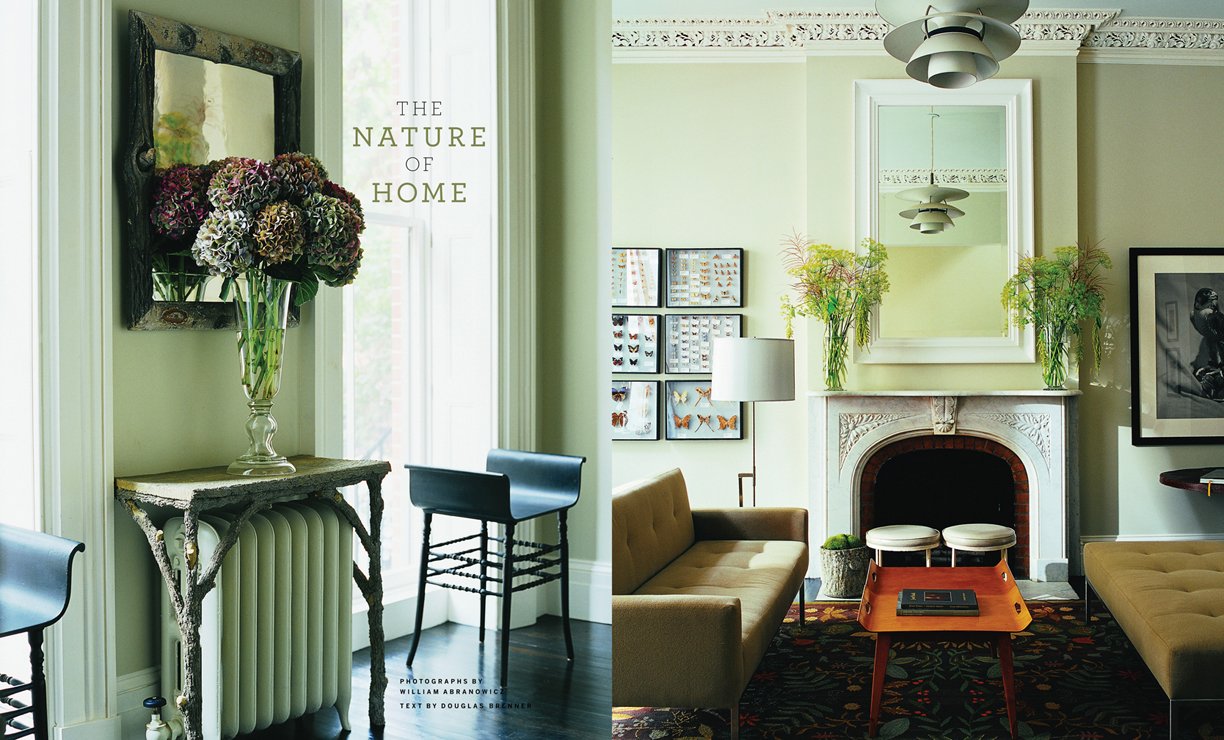
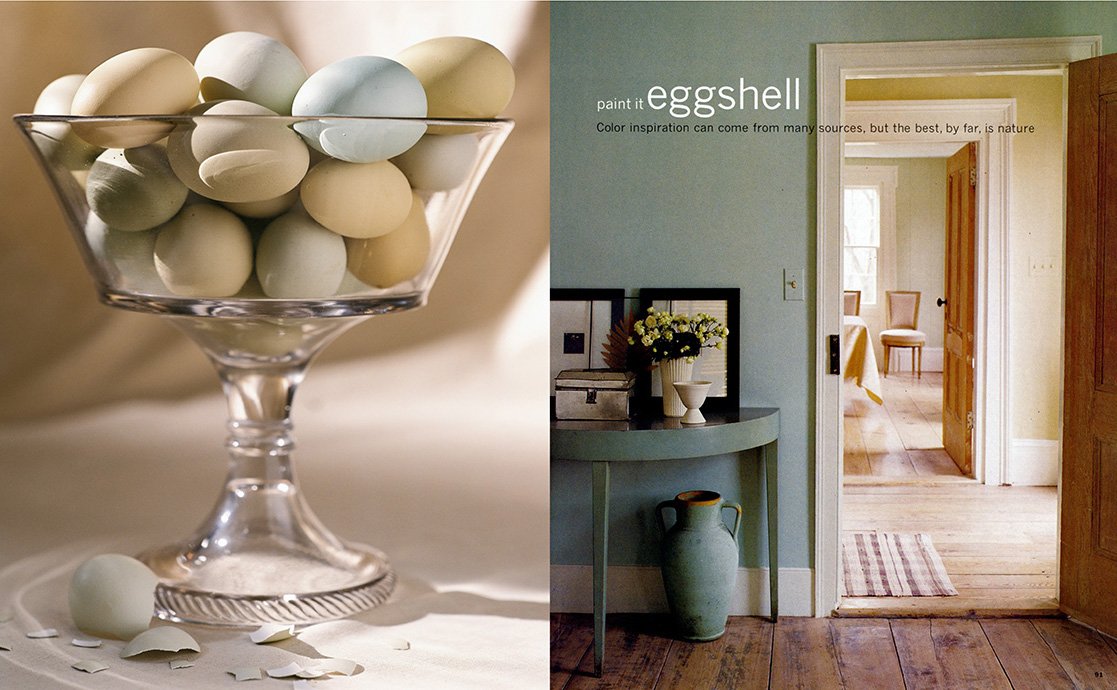
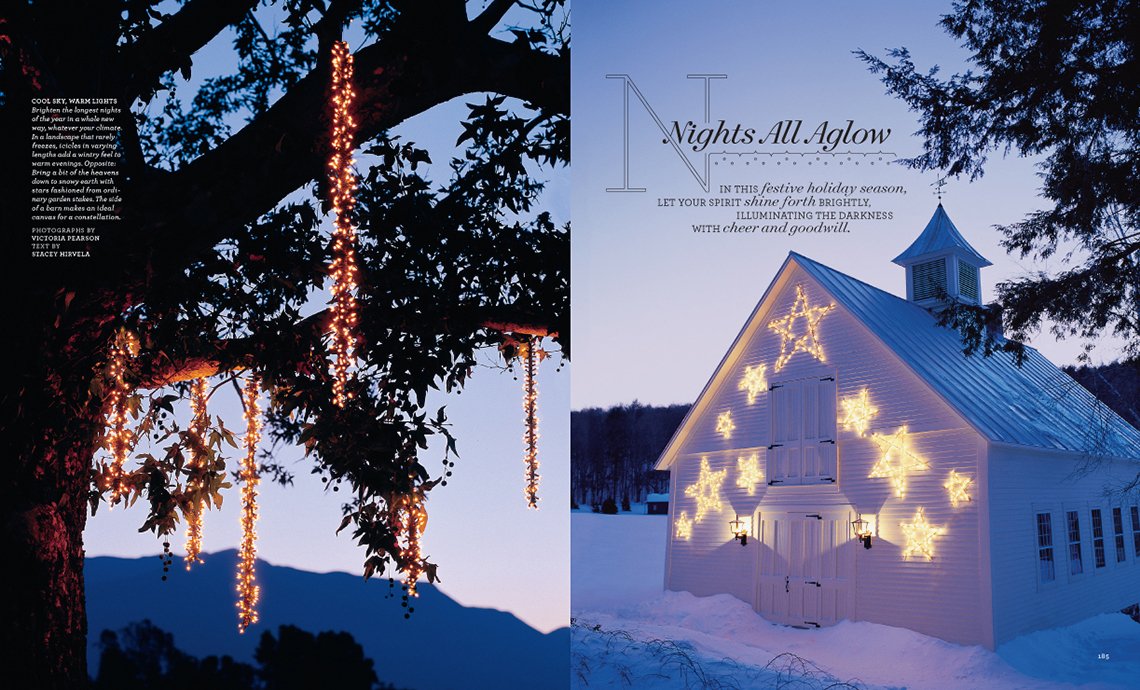

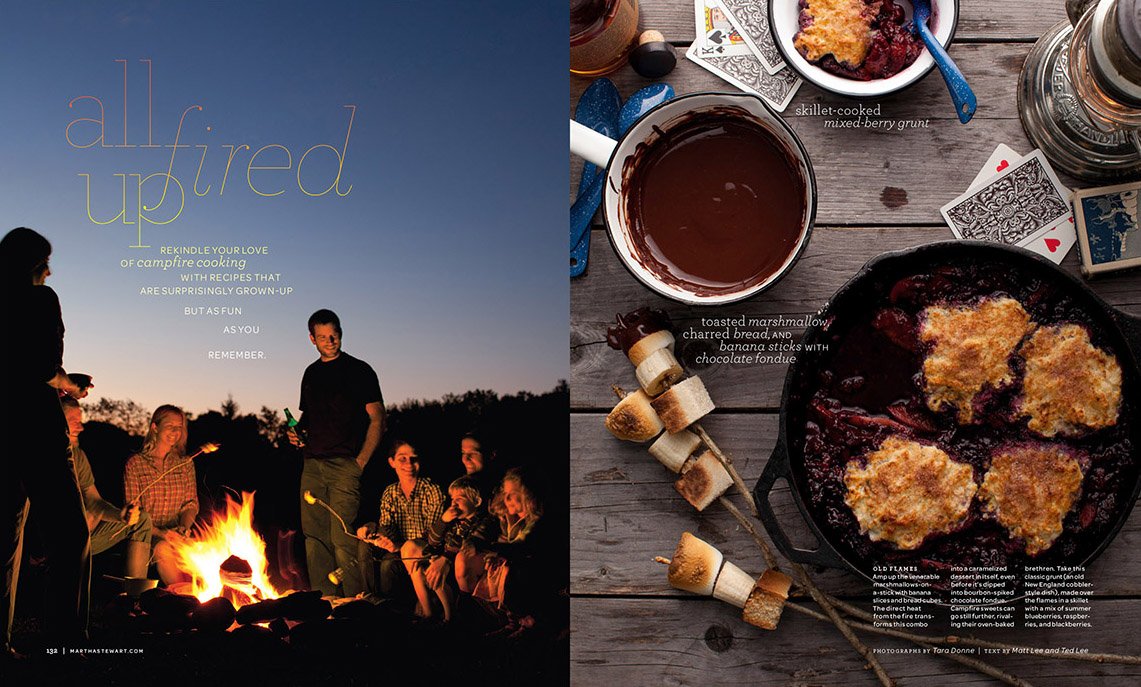
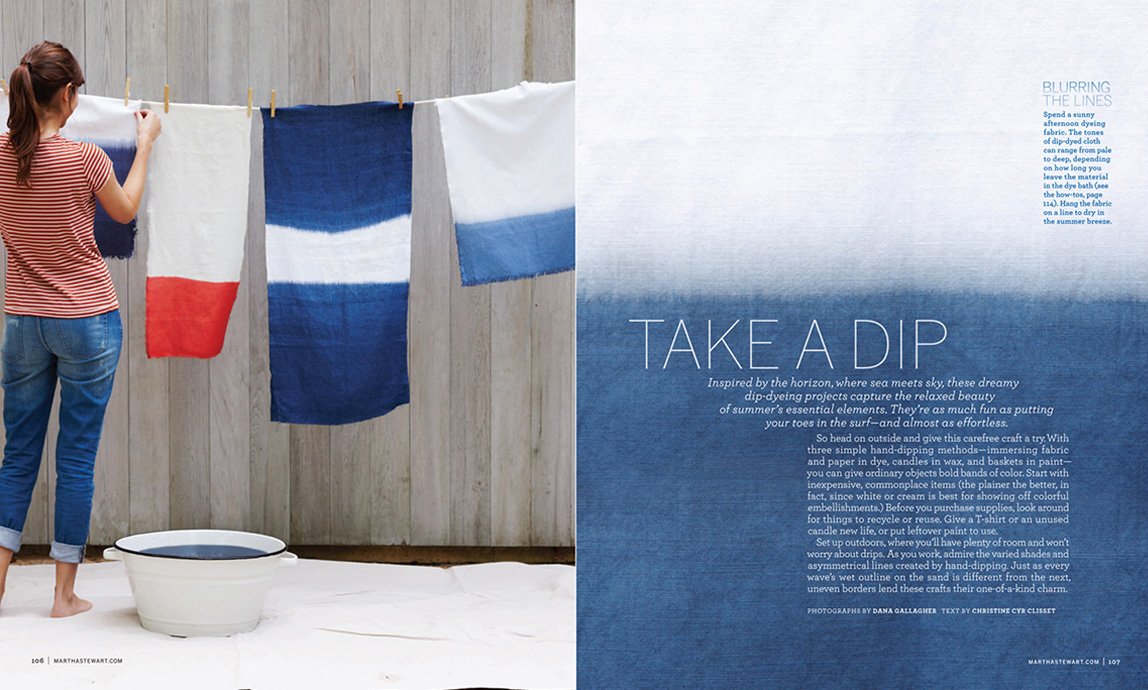



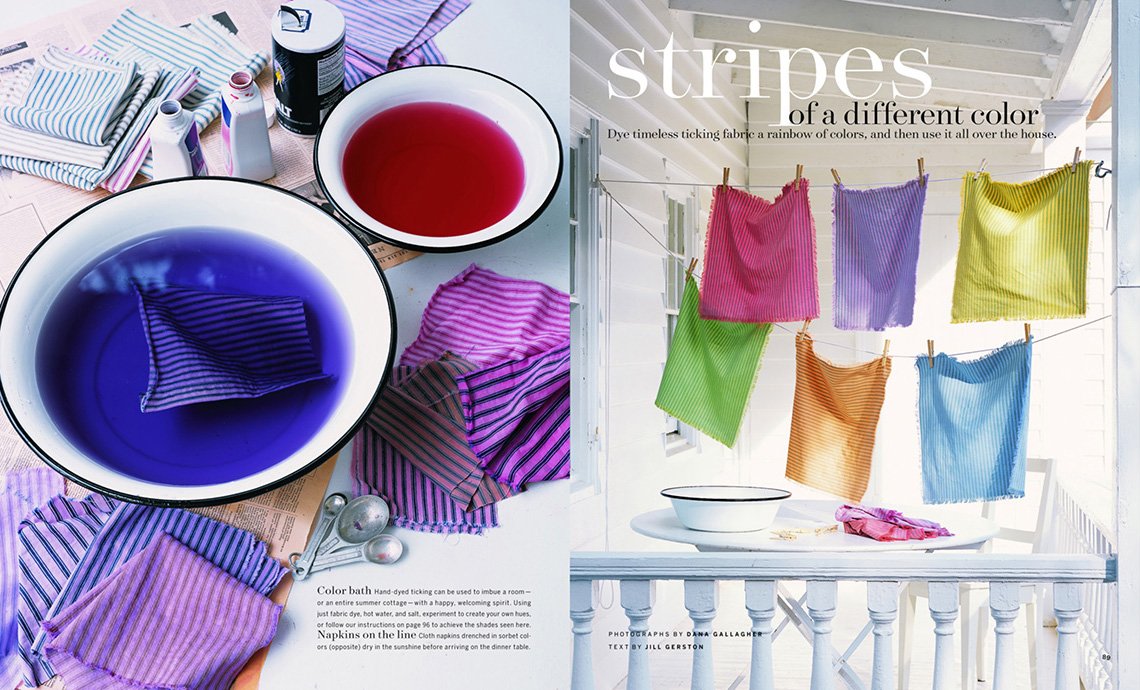
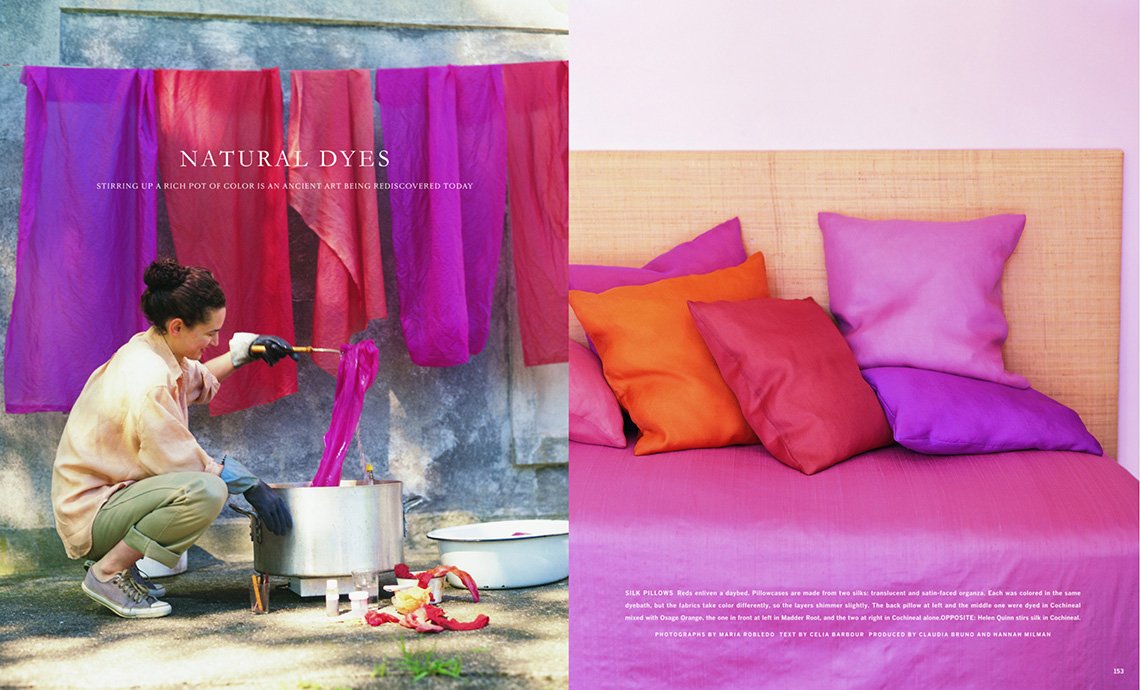

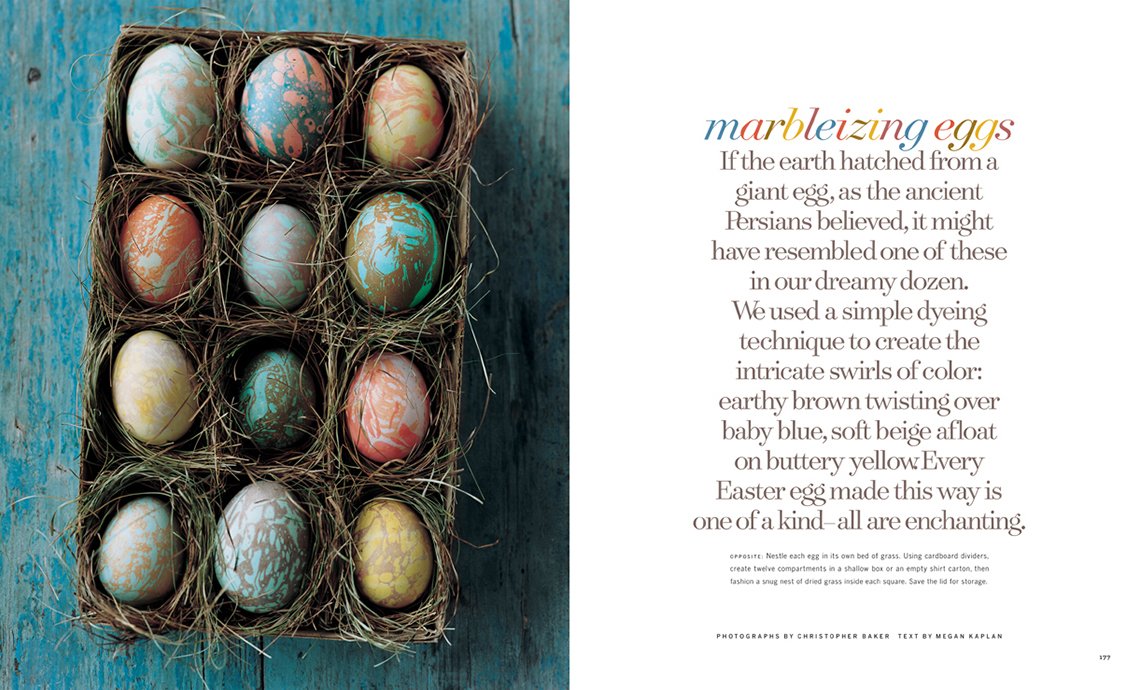

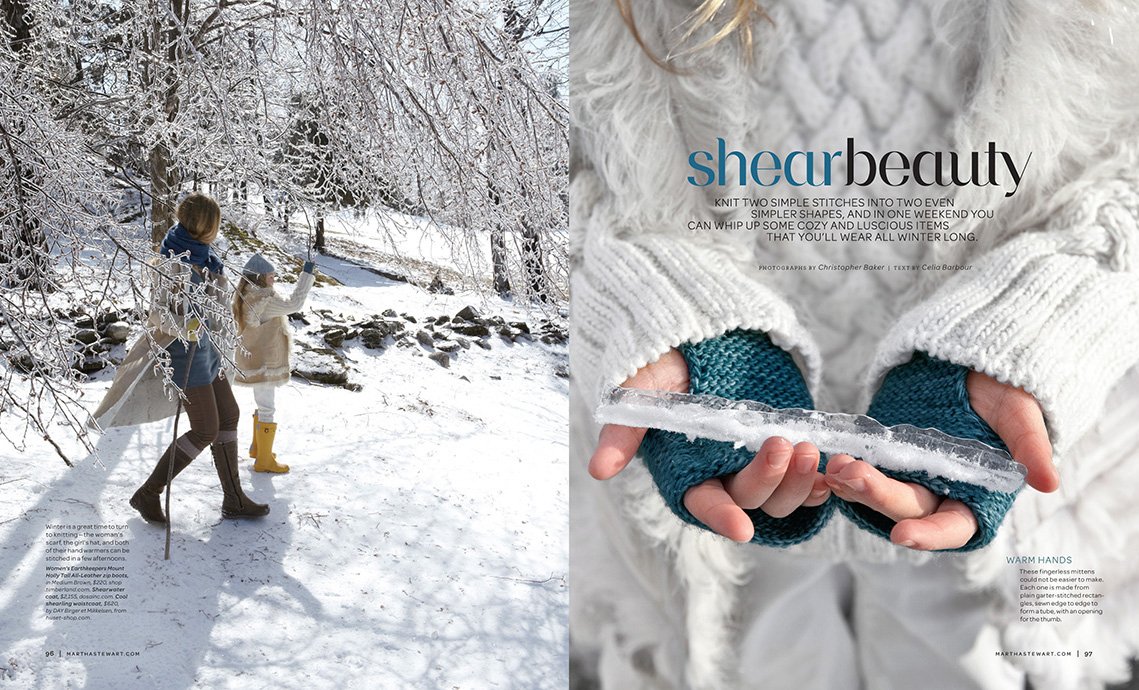
Patrick Mitchell: So the magazine was a huge success, and it grew and grew and grew. The centerpiece was the magazine itself, Martha Stewart Living. But as you’ve talked about, there were offshoots. There was a mail order catalog, Martha by Mail. You had a book division. You did a weddings magazine, a kids magazine, a baby magazine. Everyday Food, which was a recipe magazine. And then this whole side gig with Kmart, which played a huge role in the massive expansion of Martha.
And we all know about that. Everybody knows about the business. But I want to talk about it from the perspective of you, Gael Towey, as one woman overseeing this incredible amount of work and all of these people. Can you talk a little bit about what your approach was to surviving this massive beast of a company?
Gael Towey: Well, I loved it. I really did love it. And I was very well aware of the privilege that I had of being—Martha used to describe me as “first in, first out.” You know, go in, set it up, figure out who to hire. And I used my principles of the type of people that I like to hire for the magazine as the type of people that I wanted to hire for the other product businesses. I wanted people to be collaborators as well as being talented. Obviously, they also had to be talented.
I also wanted them to have a little bit of knowledge of art history. That was something that was a real bugaboo with me. I wanted people to know about art. And know where it came from. So hiring, spotting talent was probably the most important thing for me because we grew so fast and we had to hire so many people and they had to be inventive, and have a good color sense, and be able to follow through, and all of that.
You know, the other thing, in terms of going back to the different type of structure, for most of the life of the company, when I was there, I was in charge of all the people who were the creatives. And they reported to me through their different bosses and so forth.
And it kept all the creatives working together. But it was also a very, very different structure. You didn’t have a business head of the product departments who were in charge of the art directors. It was the art directors who were in charge of the art directors. So they really understood that and they understood branding, the branding, the whole idea of hands, and hands holding things and all of that. That kind of evolved, those brand definers, evolved out of the magazine.
And the whole thing of starting it yourself and doing it yourself evolved out of the magazine. So when we did 280 paint colors for Kmart, we were starting from, you know, Martha’s favorite colors on Martha’s favorite dishes and colors from the garden.
And we hired a painter who would come and make paint swatches. We had thousands of paint swatches that we made into a final palette for Kmart. But we started with actual paint. We weren’t going to other stores and getting paint swatches off the walls. It was all so original.
And when we did the seeds, Martha wanted to grow every single seed in her garden. This was still in Westport. She cleared some land. We planted every seed that we were going to sell. When they grew into flowers, we had them held in hands so that you could see the scale of the flower.
And so the flower would be isolated and you would see what it would look like. And nobody did that. It’s kind of unheard of that we would have that kind of control. But we were reaching 72 million people, and that Kmart deal was the thing that really brought Martha to the fore.
“One of the things that was great about working for Martha is that she didn’t do that stuff before and she thought that she could do it, so she just figured that everybody else could do it too.”
Patrick Mitchell: You scaled your management style, you know, well, your design style, you scaled that with the company. And it’s really a survival mechanism that, “these are the rules in place.” Like when Martha told Deb she could never work there ...
Gael Towey: She said, “you can’t do that here,” right? You can’t do that, can’t do that here.
Patrick Mitchell: But that was her way of saying, “this company is so big, we have to have a way of doing things, or we won’t survive.”
Debra Bishop: Obviously, Gael developed a lot of these systems that actually really worked out so beautifully for all of the extra projects.
Gael, your job became huge. It really did. It was a huge job. The bones of the company and the bones of the research for the magazine then actually helped expand and brand the other areas of the company. So it was a huge job, there’s no doubt, and so incredible. I don’t think there will ever be another company exactly like that. And then along those lines, I just wanted to ask you a question that I get asked a lot.
How did you deal with balancing motherhood? You have two children, Maud and August. With the long hours, and the stress, at the helm of a big creative company. How did you balance that?
Gael Towey: It was hard because, as you know, in the creative world, you never stop working. You never stop looking. Weekends I was dragging my children around to antique stores.
Meanwhile, today, they’re so picky about everything. They were kicking and screaming, but they certainly get it now. I remember once—Martha used to call me all the time. It would drive me crazy because she’d called me at, like, eight o’clock in the morning while I’m still at home and I’m trying to make lunch for the kids and get them to school.
And the phone would ring and it would be Martha. And this is, of course, before cell phones, so, you know, you’re on a line and the kids are crying and they come up to you and they’re crying and crying. And I’m like, “Martha, I can’t hear you. Can I call you back?”
“Well, what are you doing? What is that? What is that racket?”
Anyway, I thought, “You know what? I’m just going to hold the phone really close to all the crying so that she can hear this.” She never called me at eight o’clock in the morning again.
Debra Bishop: But basically you brought them along the journey.
Gael Towey: I did, and I brought them to photo shoots. I’ll never forget this photo shoot in Florida. Going back to some of your original questions about what were the hard things that you had to do when you first started the magazine?
Time Inc. gave us the money to do the first issue and then we had to wait around for them to approve a second issue, and then they had to do their calculations, and counting newsstand sales, to give us permission for the third issue. Until, finally, after six months of testing—we weren’t able to shoot for the following year, so we were constantly, in the winter time, shooting summer and so on and so forth. Anyway, I brought Maud to this beach location and I was pregnant with August and the beach was so hard and I was running. We didn’t have—I don’t know what we were thinking—but we didn’t have walkie talkies.
I was running back and forth from one place to another trying to keep this shoot together, which was spread out across three beaches and two houses. Oh my gosh! I got into bed at night and I was sleeping in the same bed with Maud, who was, I think, probably four years old. My legs hurt so much I can’t even begin to tell you.
Anyway, I was young and healthy and I felt like I could do anything. And, because you did the Kids magazine, we all sort of grew in this subject matter because we were experiencing it in our life.
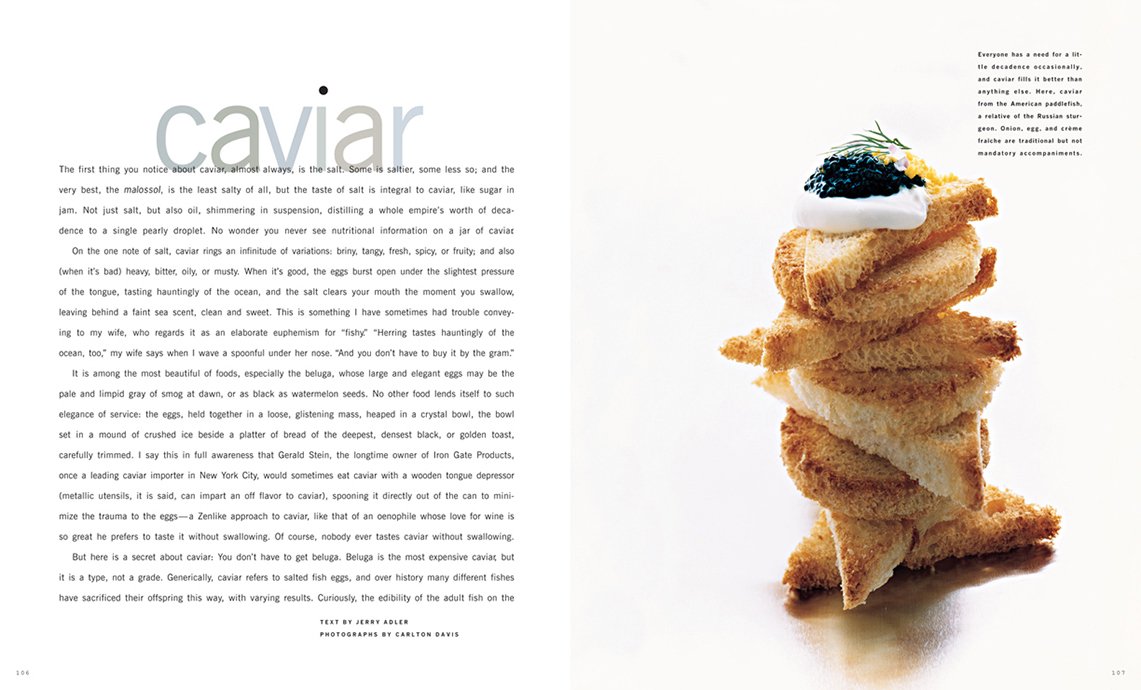

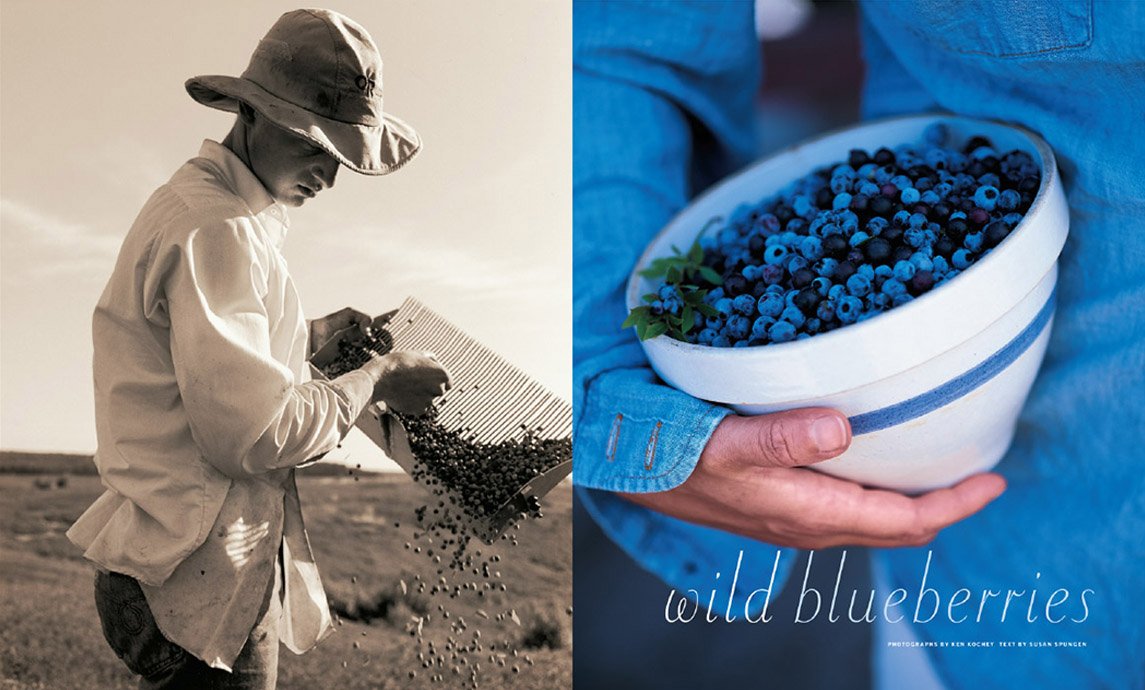

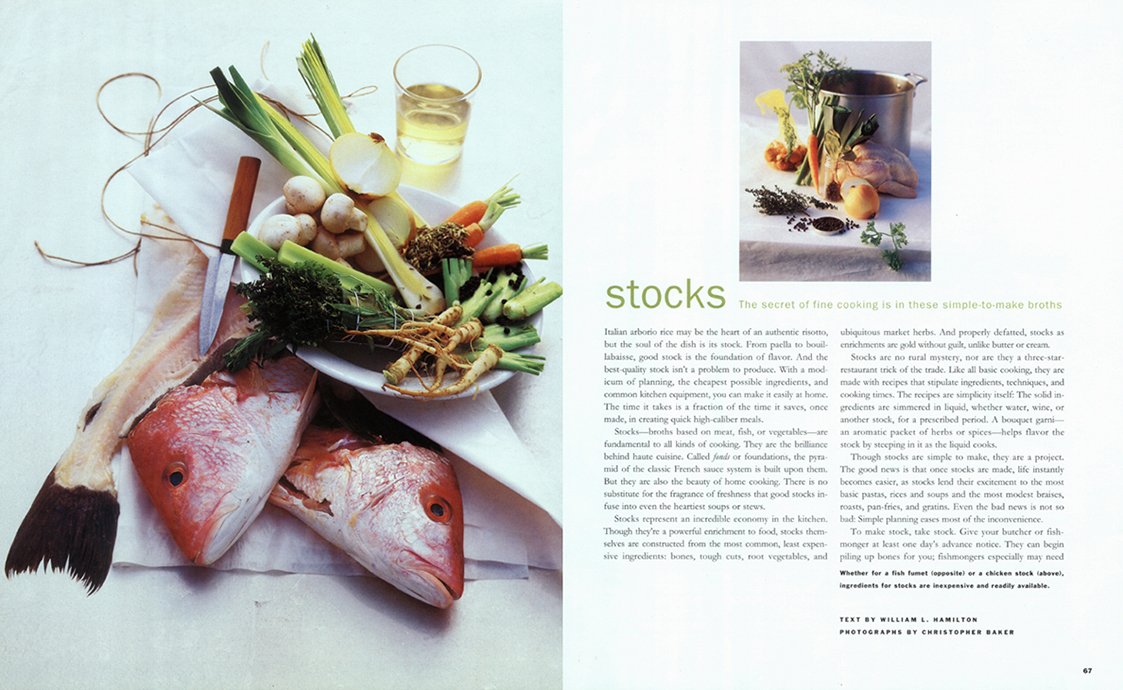
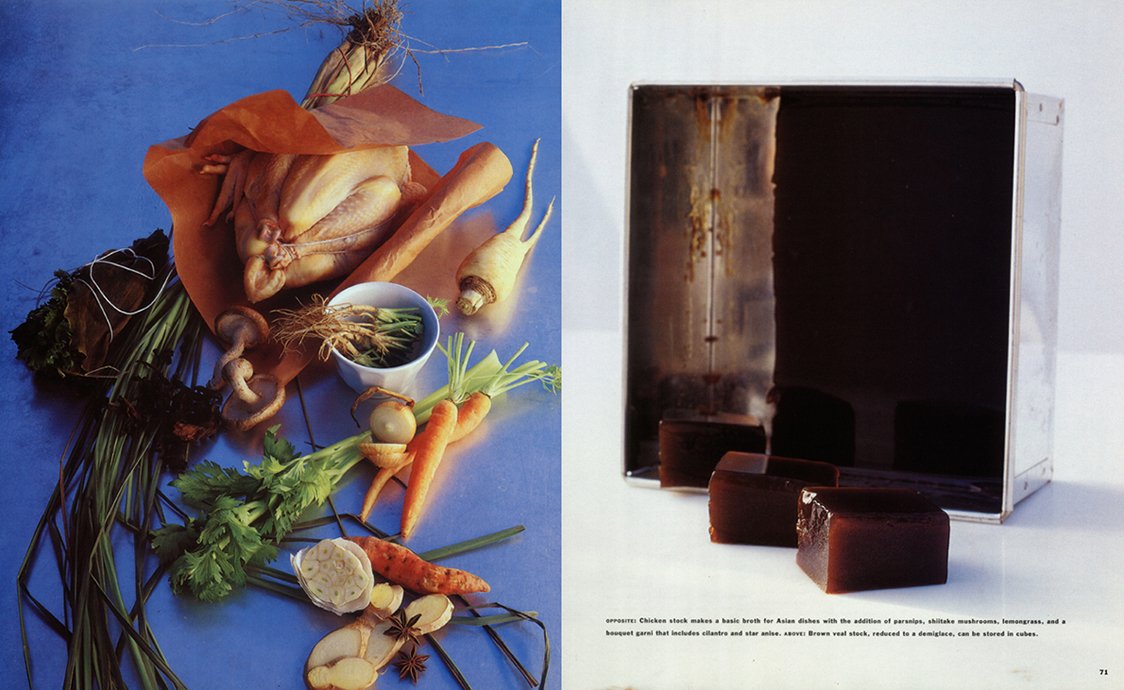
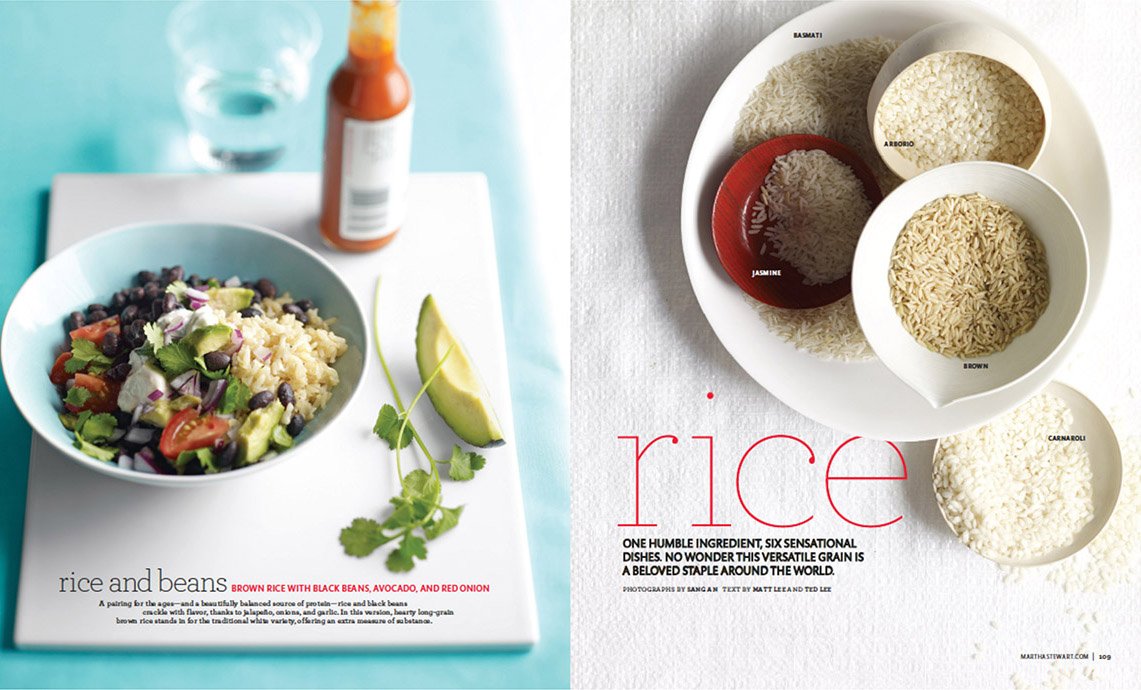
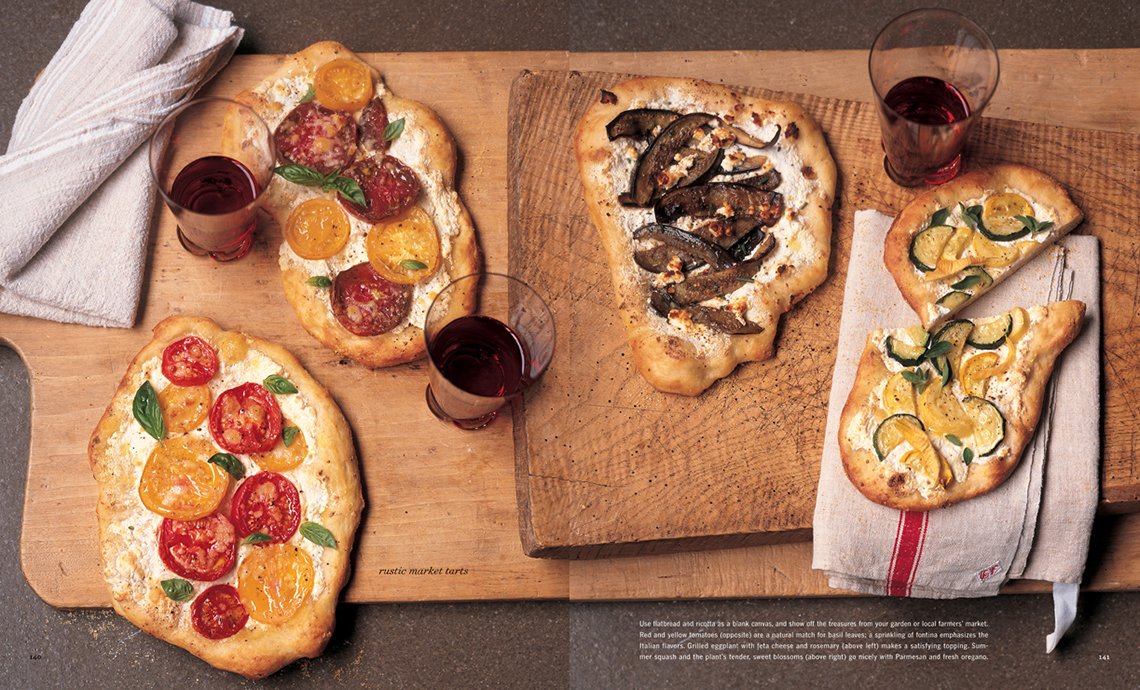
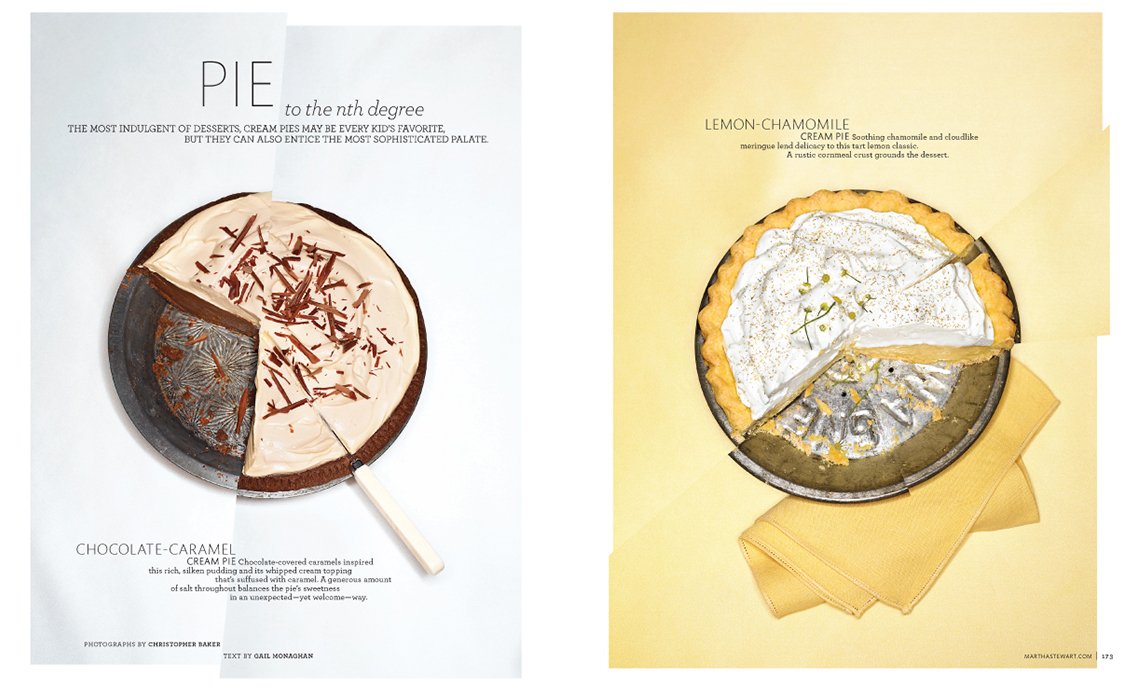

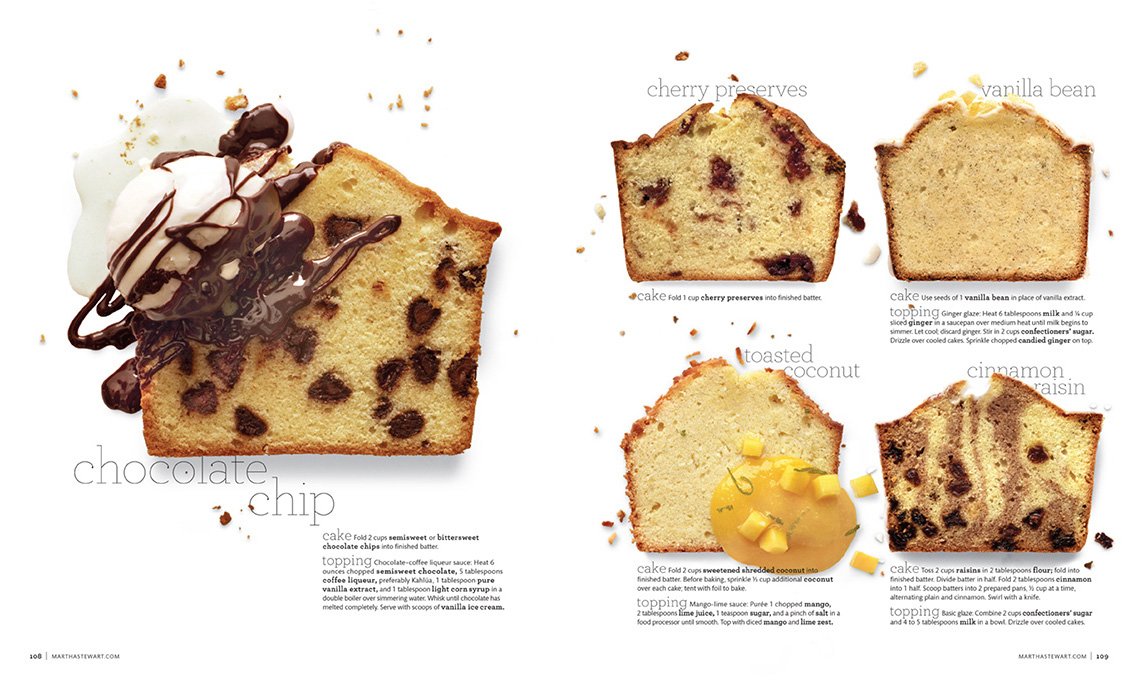
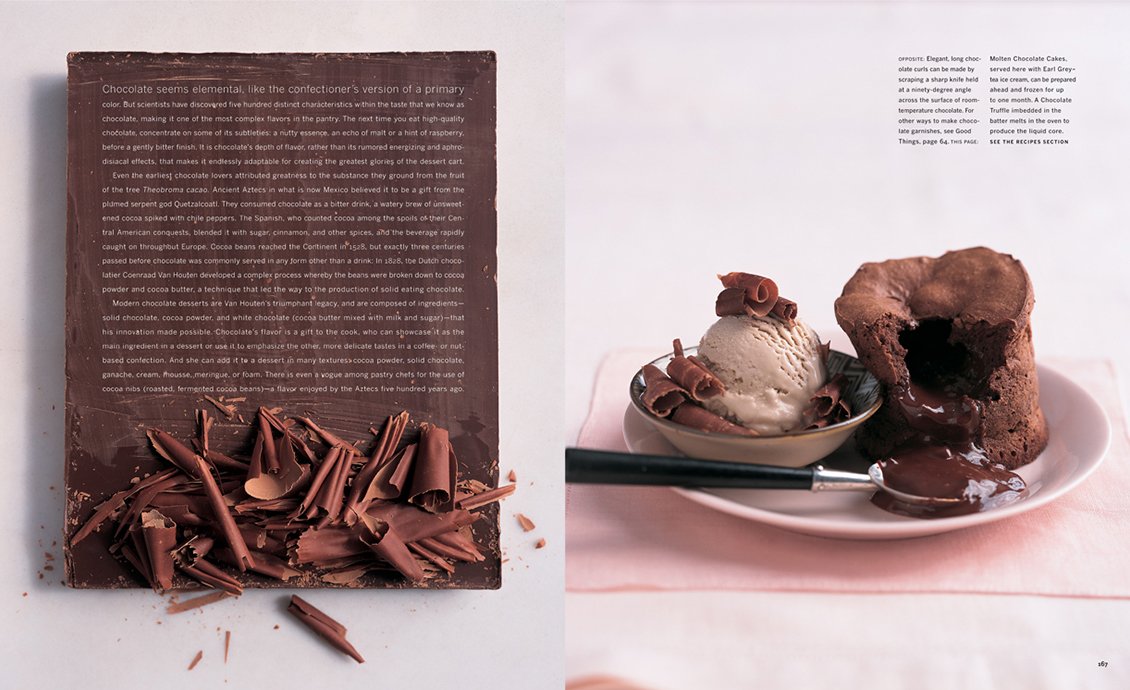
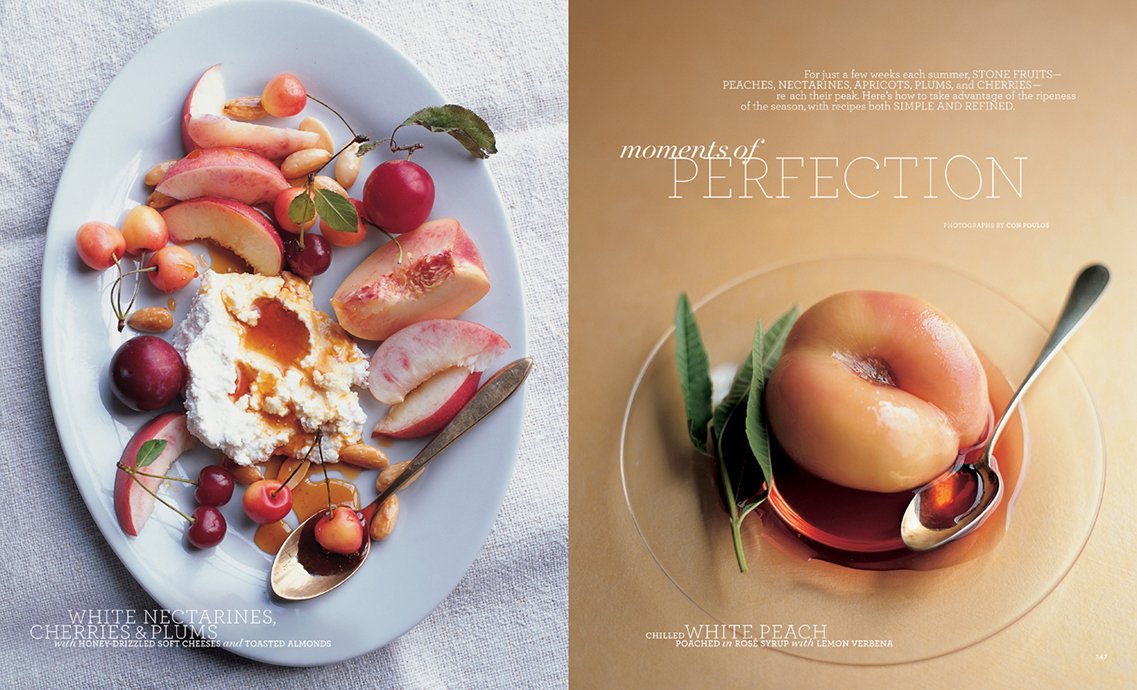
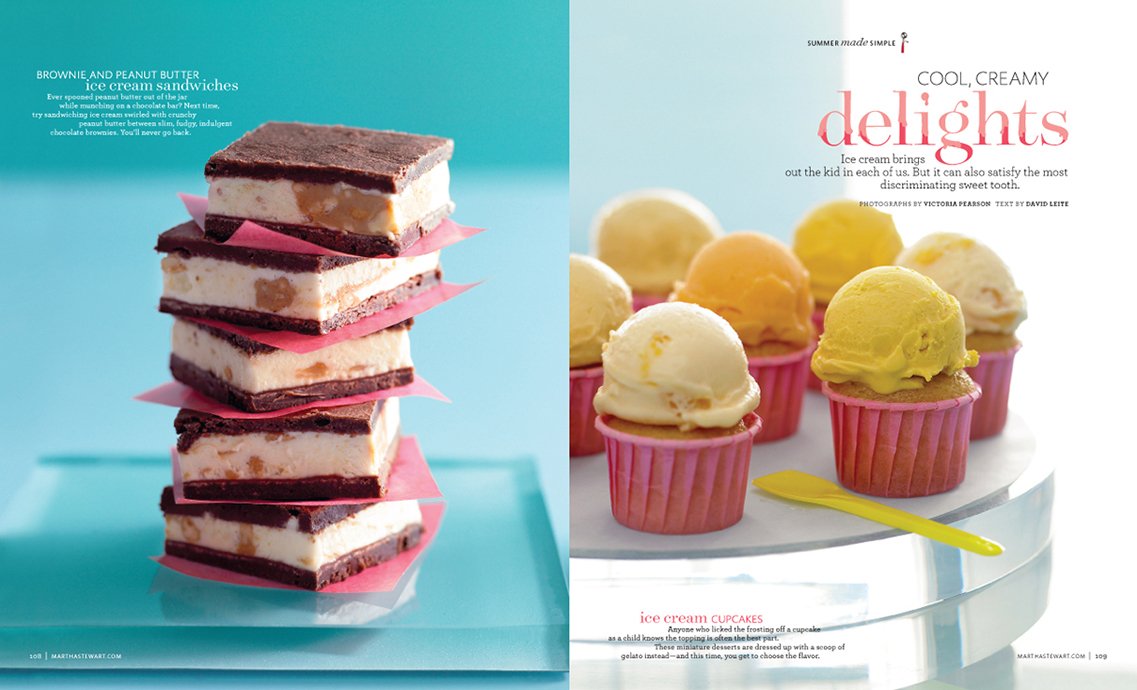

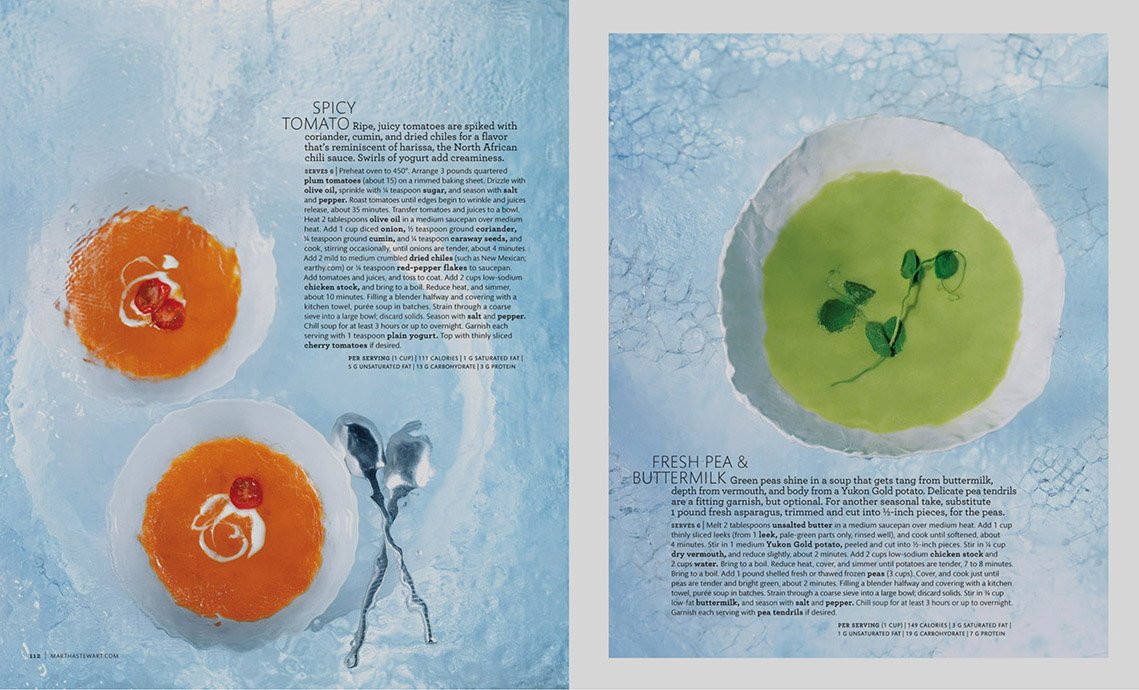


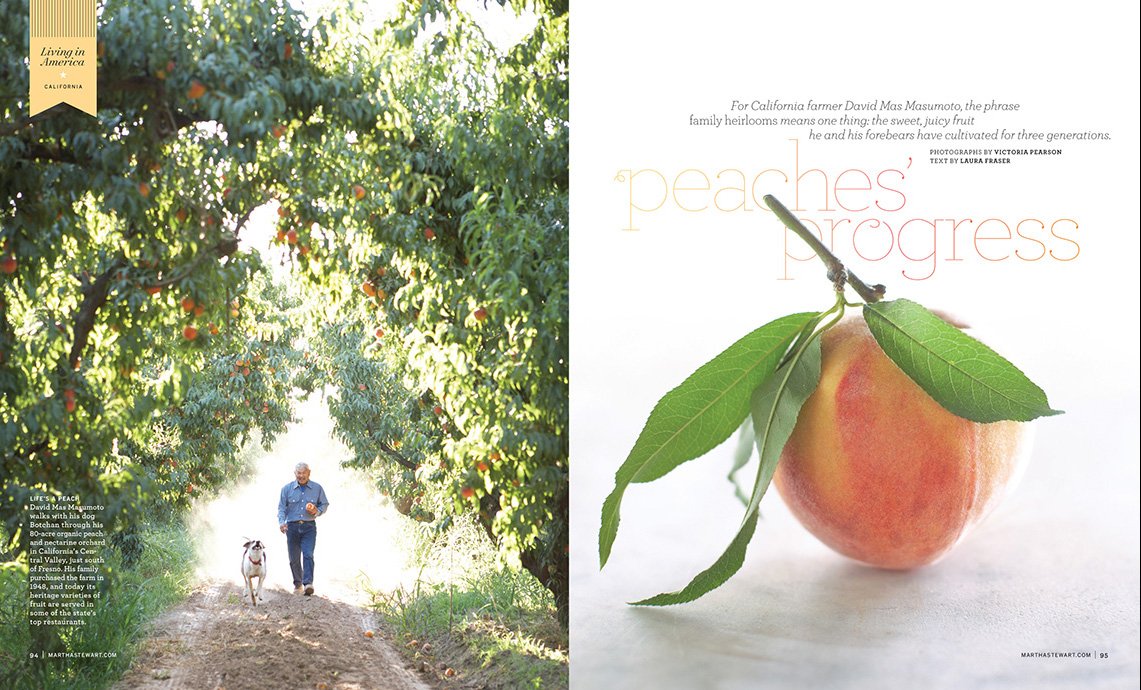
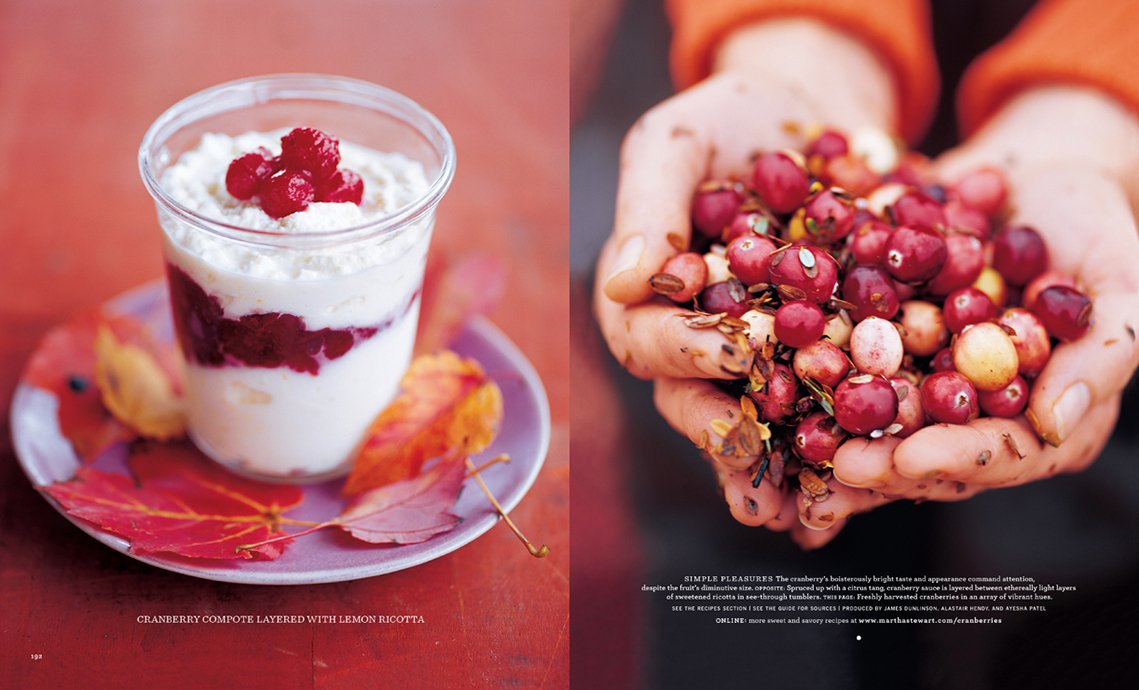
Debra Bishop: And that was one of the greatest gifts that I had. Yeah. I was able to, as I was having children, I was helping create content about the very subject right.
Gael Towey: Which is why it was so good.
Debra Bishop: Exactly. I mean, for me it was good because I had that creative outlet. I was interested in the topic. And so many of my collaborators at Martha Stewart Living were having children. And we were all balancing. And we were all one big family. Our kids would model. Or they would test.
Gael Towey: They were all in the photo shoots. Who was the baby? Was it Andrea’s first child? Who’s the baby in the bowl for the Baby mag?
Debra Bishop: Oh, that’s Andrea’s Lula. And that bowl, the bowl idea—I loved that enamel bowl. We were selling it at Martha Stewart, and we were all like, “what are we going to do with that bowl?” And I said, “I know exactly what we’re going to do with that bowl.” Because my brother used to be bathed at the cottage when I was growing up. And I have these beautiful pictures of my mother bathing him in an enamel bowl just like that.
So that’s where the idea came from. But when we shot it, and this was when Andrea and I were both very young mothers, and we put Lula in this bowl with water in it. She loved it. And it was on top of a very narrow table that we had in the shoot studio. And when I think about it today, I just, like, cringe because it was such a dangerous thing to put a little baby in a bowl like that on a small table and then step back to take the picture.
And then the other thing was, Martha loves to tell the story where Lula loved the bowl so much, it was nice and warm in there, that she pooped in the bowl. Martha loves to tell that story, but behind the scenes you couldn’t luckily see it on the catalog cover.
Patrick Mitchell: So, last Spring Dotdash Meredith, which is some amalgamation of what used to be Meredith Publishing, decided to end Martha’s print life. And they killed it, along with several other thoroughbred brands. How did you feel about that? Seeing the end of Martha in print?
Gael Towey: I mean, obviously, I wasn’t surprised. Because so many magazines by then had folded.
Patrick Mitchell: But this is your baby.
Gael Towey: But after I left, I obviously watched it for a while. But I felt that the restrictions, being under Meredith, had really changed the magazine. And I didn’t feel that it had the same emotional connection that it had had earlier.
So, I certainly felt sad about it. But mostly I felt sad for the people who were working there and really loving doing their jobs. I felt terrible about that. But you have to remember that when I left at the end of 2012, I had just gone through this very excruciating experience where I had to fire a lot of people and it was so devastating for me.
I was firing people because we were losing money and there were a group of executives who had taken over. And the thing about Martha going to jail is that she was forced to be away from the company for about a year.
And then she wasn’t allowed to be on her own board of directors anymore. And so, for something like 10 years, the board and the company itself were doing things that were, frankly, really stupid. They closed her television show. And it was like the place was self-destructing.
So for me, because in 2011 and 2012, we were really suffering so much and I knew they were going to fire even more people and I didn’t want to be there to go through that all over again. It was too horrible to fire people who you loved, who you cared about, who were your friends, who you hired and trained yourself, and who were, I thought, geniuses.
And have to go through that all over again. I couldn’t do it. So for me, that was the big break. That was a horrifying time.
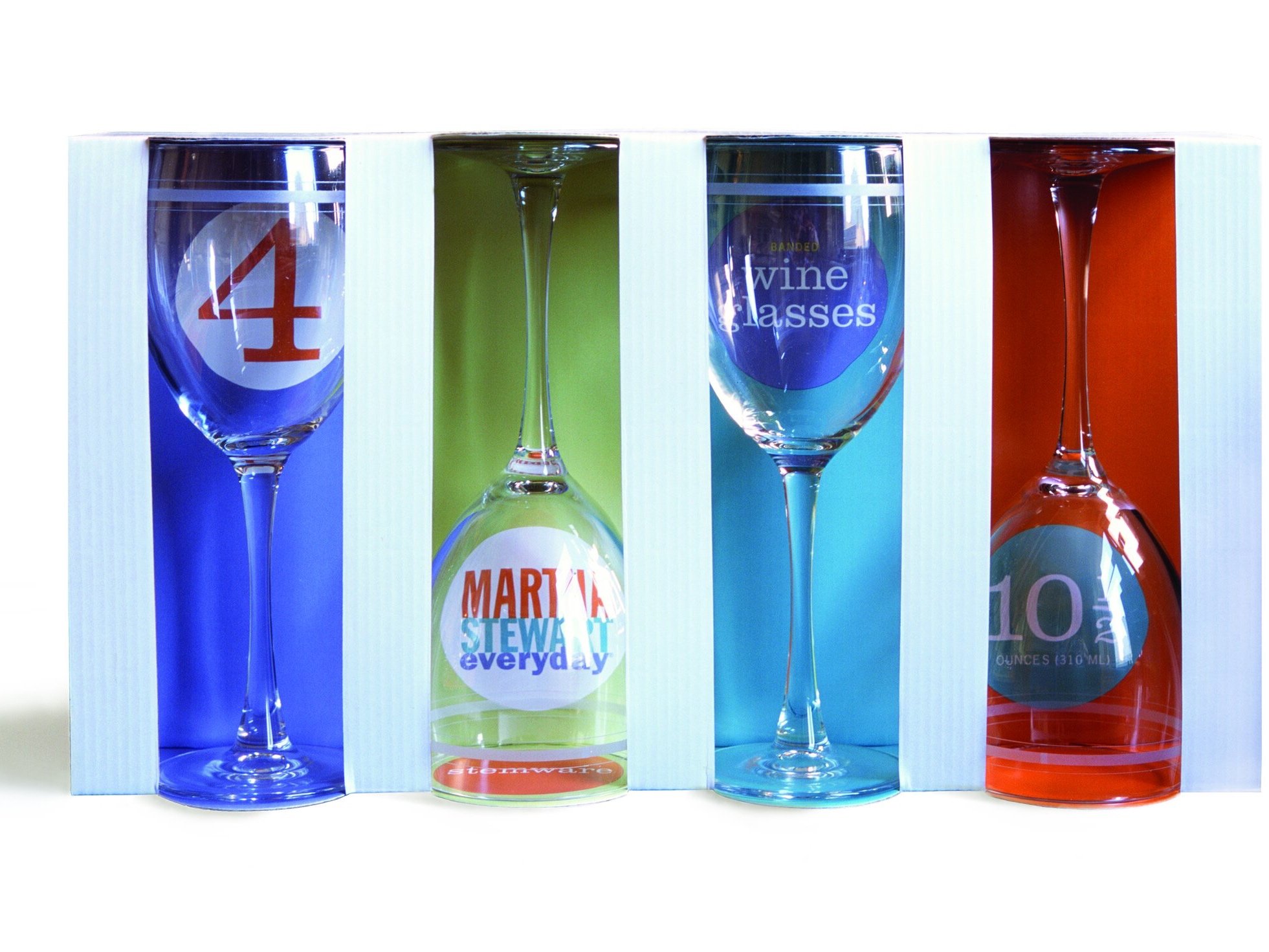
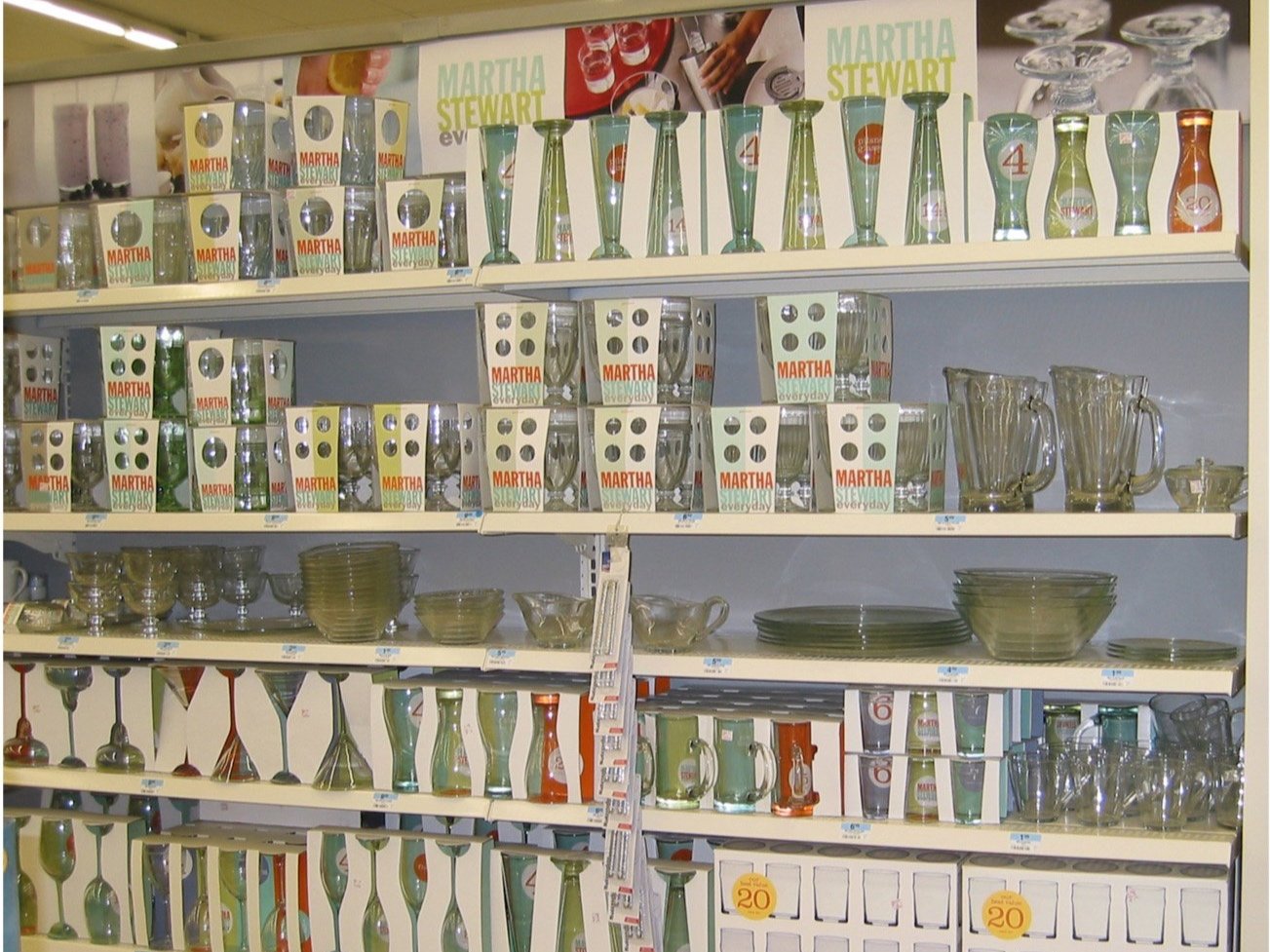
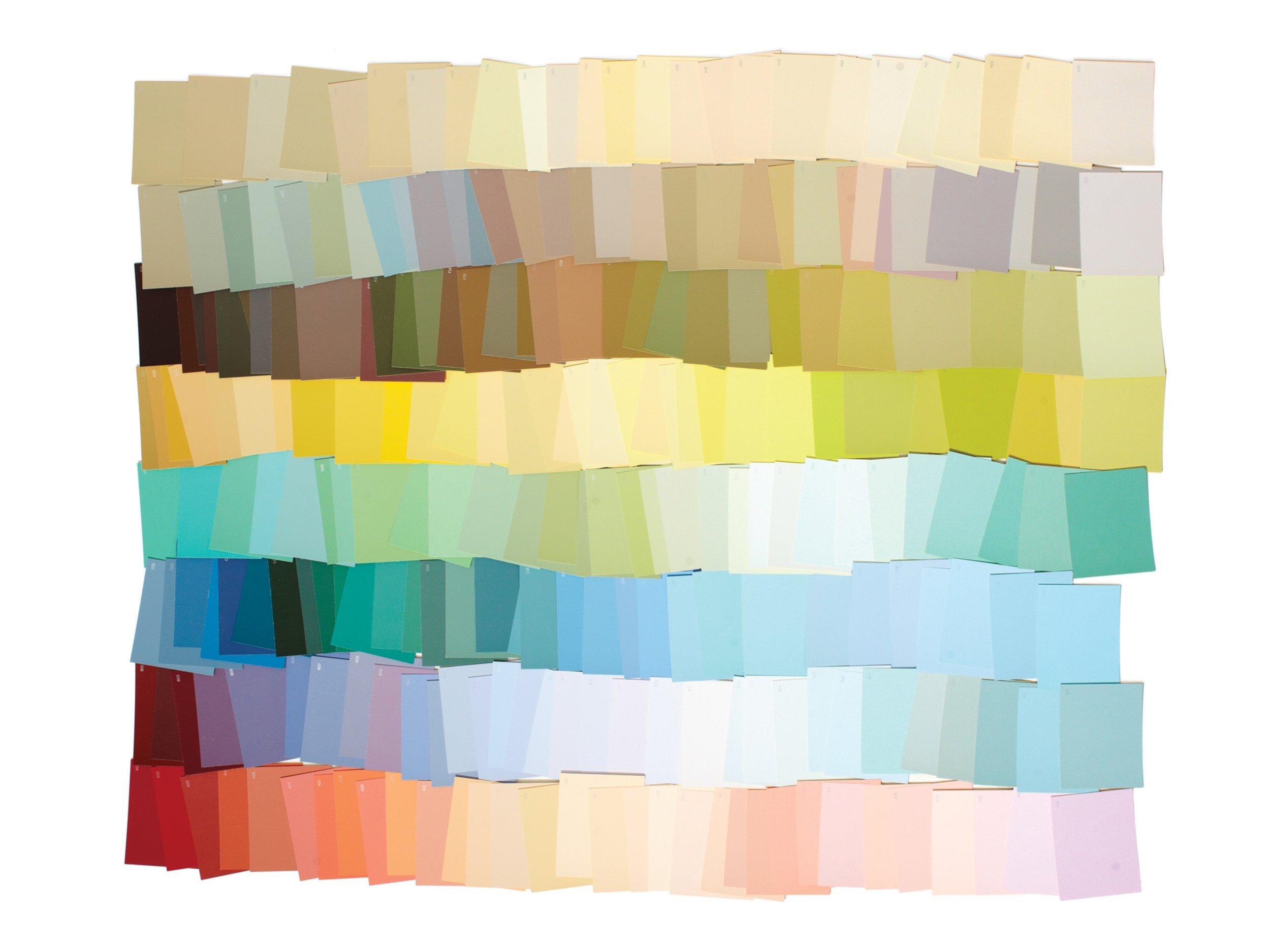


Debra Bishop: And you had to remove yourself emotionally from it at that point. So by the time Dotdash got a hold of it, it was already gone.
Gael Towey: It was already gone.
Debra Bishop: For those who don’t know him, can you tell us about your husband, the fabulous designer Stephen Doyle?
Gael Towey: Stephen’s very funny. He is a wonderful dancer. He’s an amazing father. He’s an incredibly generous person. He’s very, very inventive. He’s constantly thinking of things to make. He’s a maker. And he loves to do the things that I love to do, which is to travel. I really like educating myself constantly and having new experiences, and he feels the same way. We both love art. We love going to museums. We love shopping in antique stores and flea markets. We love to cook, and we cook together.
We’ve had a number of experiences working together. Stephen designed the Kmart logo and all of the early packaging for Kmart. And during the day, I would be in the office working with all the product designers and hiring people, and we were doing thousands of products almost immediately and getting Martha to approve the color swatches and the fabrications and all that kind of stuff.
And then I would come home and Stephen and I would spread all the packaging concepts out on the floor of the living room. And our children would say to us, “do you guys ever stop working?” In other words, we were paying no attention to the children.
Debra Bishop: I’ve had the same experience.
Gael Towey: We were having the time of our lives, looking at packaging and logos. And he was coming up with all these crazy ideas for these packages that would fold so that you could see the shape of the wine glasses. But you had to look through the glass to see the typography. And of course, because you’re looking through the glass of the wine glass, the typography was a little wobbly in this really cool way. So it was so fun. So fun. We really, really, really had such a good time.
Debra Bishop: You’ve already talked about when you first met, which is hilarious. So I’m assuming it wasn’t love at first sight. Or was it?
Gael Towey: Not for me. I was a mess. In fact, Martha would come into the office and say, “What’s wrong with her? She’s losing weight. She’s losing too much weight. Tell her to stop. Tell her to stop!” And, you know, I was a disaster. Anyway, it took me a while.
Debra Bishop: But tell us about your first date. Where did you go?
Gael Towey: We went to a photographer’s loft who was having a Christmas party. And she had a live band. And we danced. We each went separately, but we both knew that we would see each other there because we both knew that we were invited. And we danced together all night long.
And he’s a really, really good dancer. And my father was also a great dancer. And I learned how to dance from my father.
Debra Bishop: Wow.
Gael Towey: And I danced with Stephen and I thought, “Oh my God, I could marry this guy.”
Debra Bishop: Did you propose?
Gael Towey: No, he proposed.
Debra Bishop: And?
Gael Towey: He proposed. And we decided to get married very, very quickly. And for Christmas, our first Christmas, he gave me this wrapped package, and it was this big heavy paperback and I’m thinking, you know, “Why do I have the Tale of Two Cities? Like, what is this?” And I opened it up and inside he had cut out all the pages and there was a little ring box in there.
Debra Bishop: Wow.
Patrick Mitchell: I was going to ask you if he took a knee, but it doesn’t even matter.
Debra Bishop: That was pretty amazing.
Gael Towey: Yeah. Pretty amazing. And, I’d have to say, in terms of design, that I’ve really learned a lot from Stephen. As I said, I am not a typographer. I’m much more of an image maker, and he is an incredible typographer. And I have learned so much from watching him work in that way.
Patrick Mitchell: I imagine the idea of you two going into business together has come up, from time to time.
Gael Towey: That would be horrible.
Patrick Mitchell: Really?
Gael Towey: It would’ve killed our marriage. I mean, it was fun to work on the isolated thing, you know, a logo or something like that. But Stephen sees the world in a very, very specific way, and that’s what he sees. He’s in his own business, running his own business for a reason.
I think he was fired from every other job he ever had. Actually, he asked Tibor Kalman at M&Co., for a raise, and Tibor said no. And so he quit. But otherwise he was fired.


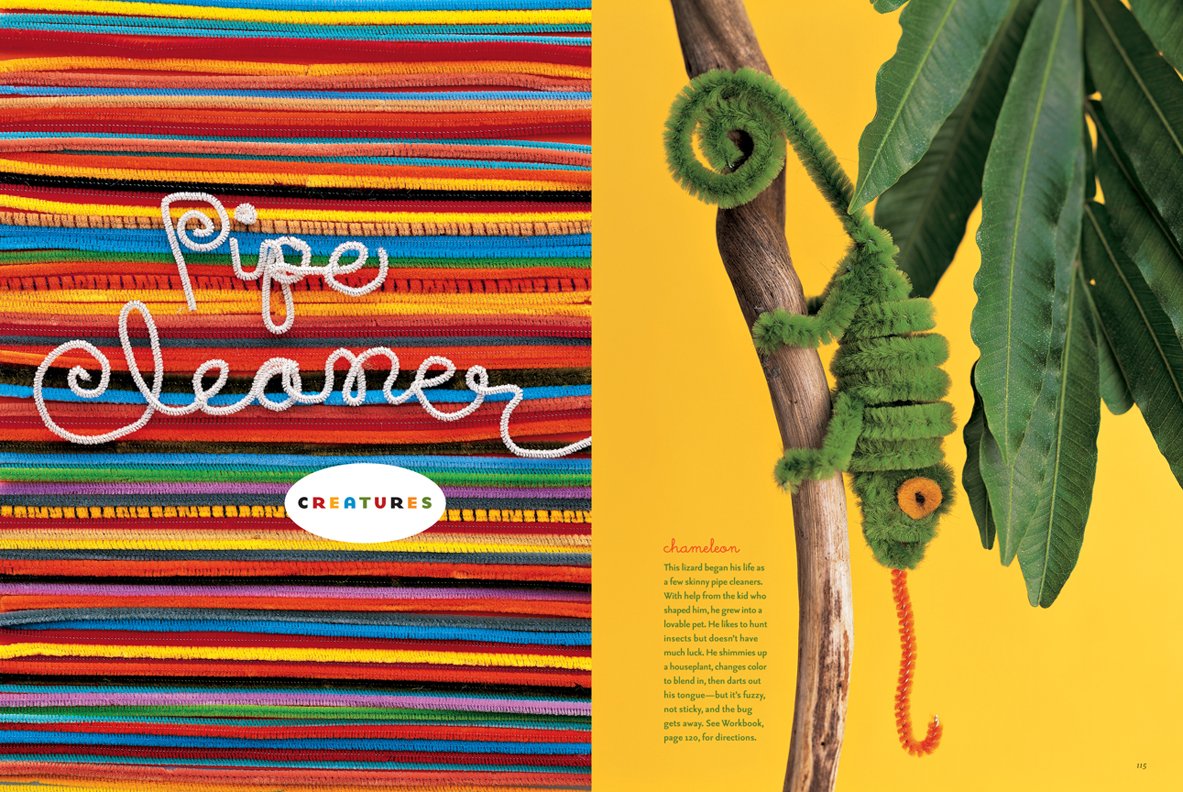

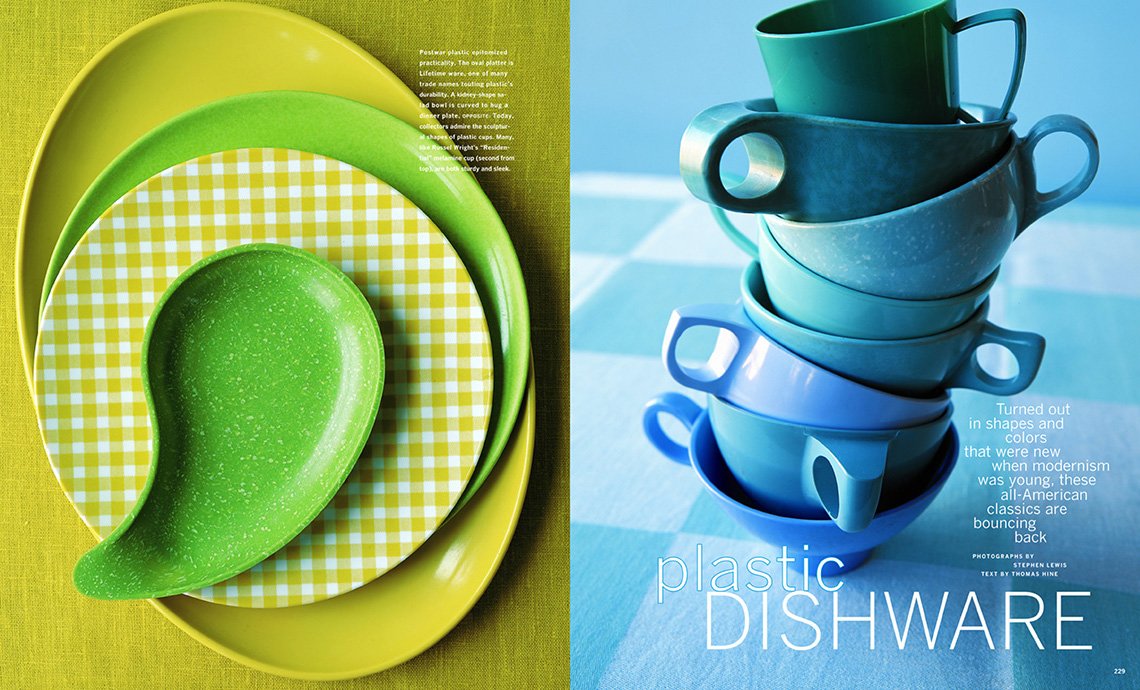
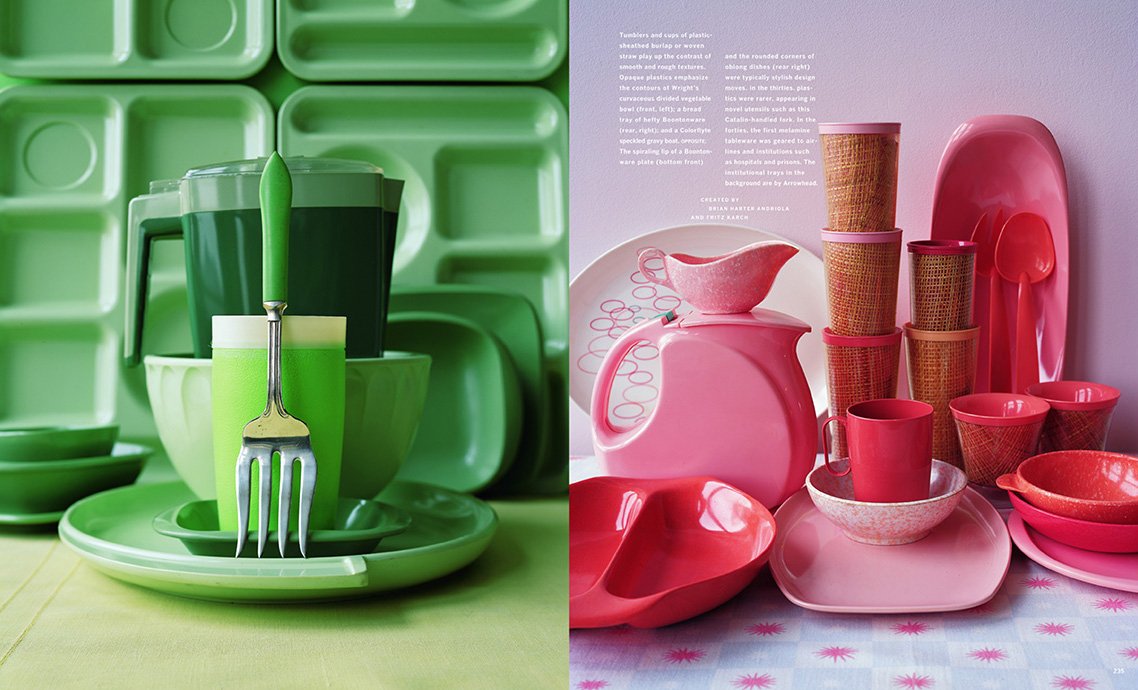

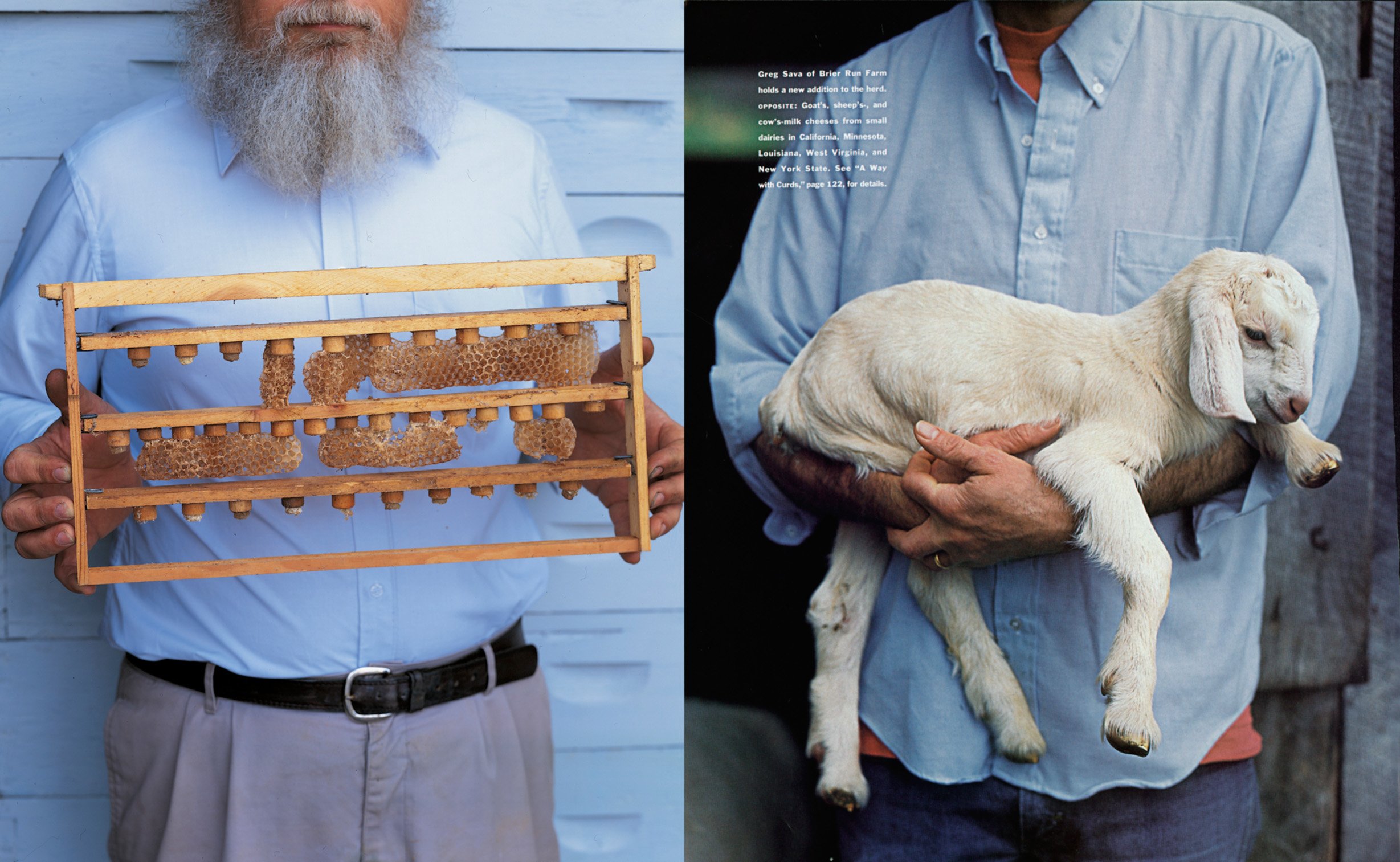
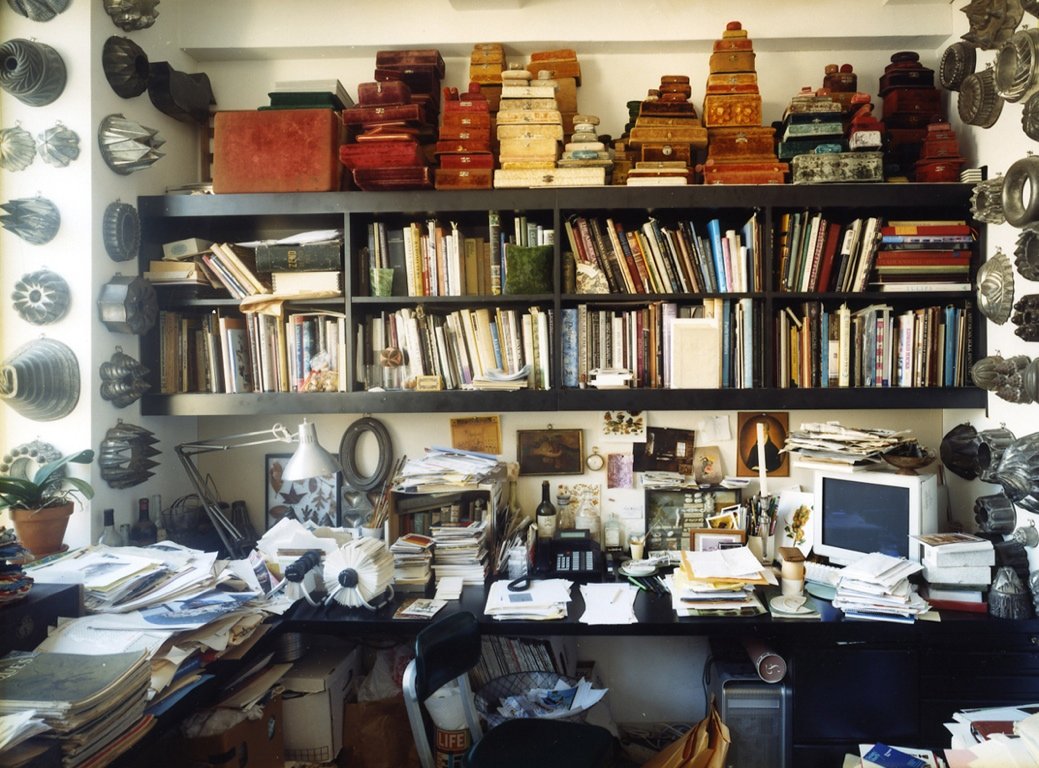
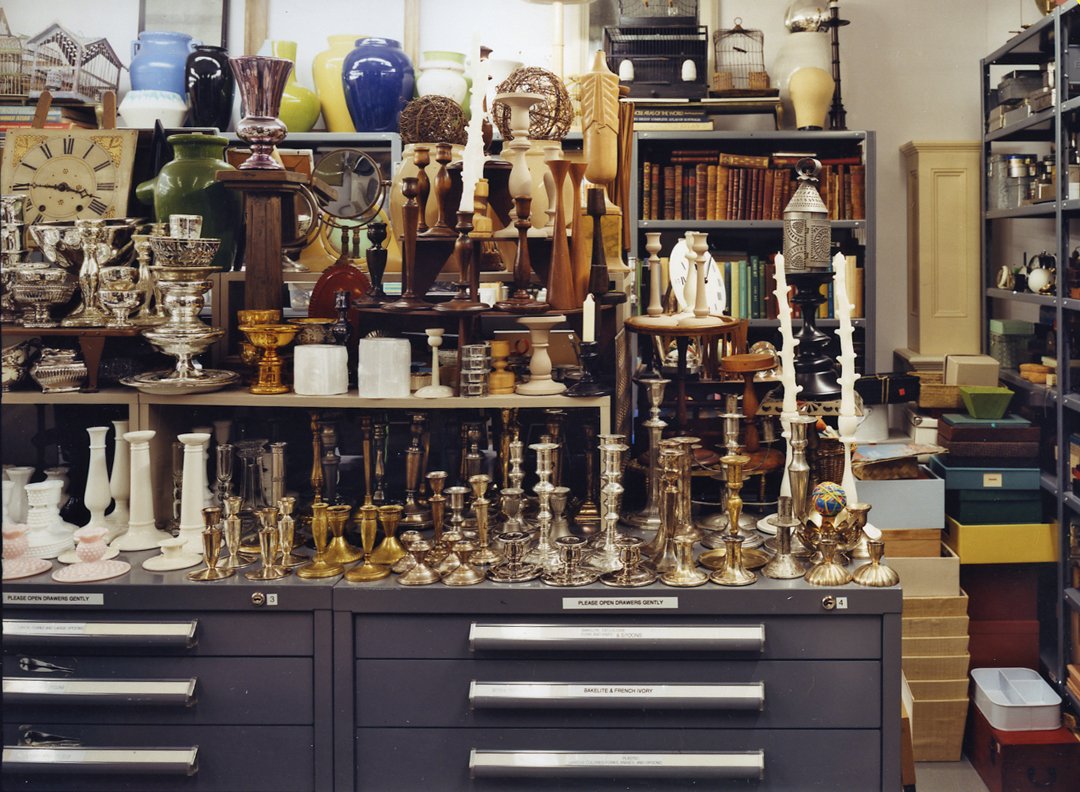
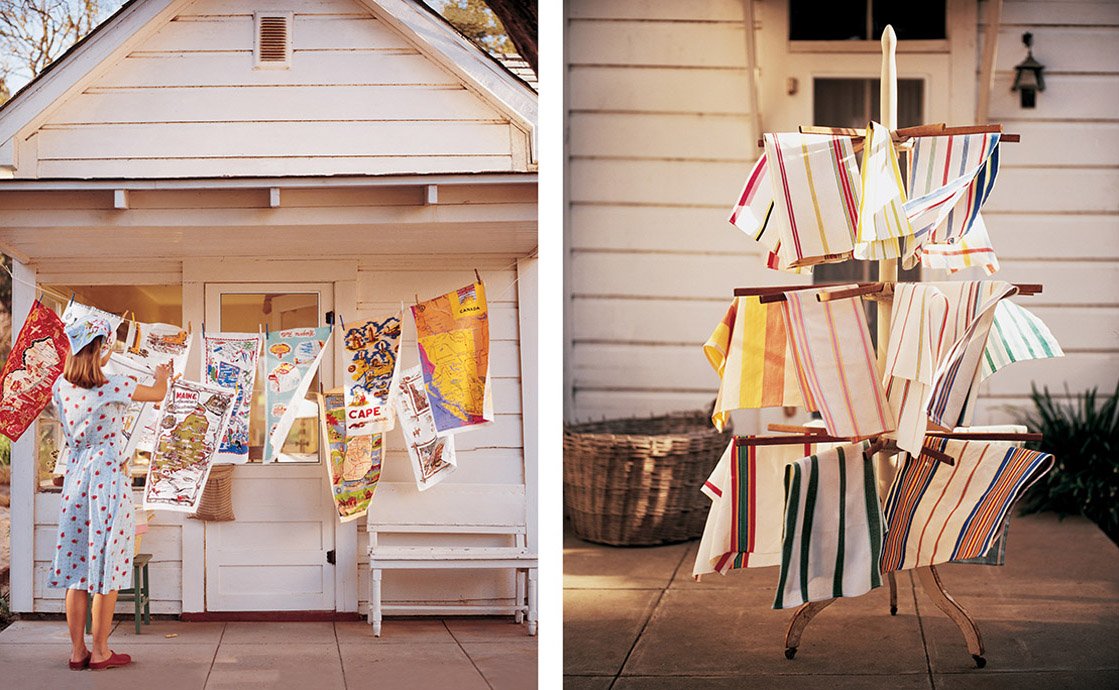
Patrick Mitchell: I read an interview with you and your fellow BU alum, Julianne Moore, where you said, “if you let your passion lead you, you’ll discover the wonderful things you can do. I think a creative life is a whole life. In a creative life, you never stop working. You’re always looking, you’re always learning. Lifelong learning is one of the most important things you can do for yourself and the people around you.”
Talk about how that has unfolded in your life.
Gael Towey: Well, when I left Martha Stewart at the end of 2012, I really didn’t know what I was going to do with myself.
And after about six months of having lunch with friends, and hanging out and stuff, I decided to start doing videos. And the reason for that is because I love storytelling and I realized that what I wanted to do was storytelling. So I started shooting. I’d never done, I mean, I did videos obviously at Martha Stewart Living, and all of us were on television, so we were pretty comfortable with TV.
And when we did the first digital magazine, we were able to do video and incorporate them into the digital magazines. So I had some experience with that. And I didn’t want to do the classic Martha Stewart subject matter. So I ended up doing videos with artists who were friends of mine, in order to kind of get used to it, and establish this little teeny business I have now called Portraits in Creativity. And it’s all about telling artists stories.
Debra Bishop: I saw the Gabriella Kiss film, which I love so much, Gael.
Gael Towey: Thank you.
Debra Bishop: One of your subjects, Natalie Chanin, the noted fashion icon, interviewed you for her website. In that interview, you say, “My career has been fulfilling, but I have to say that the relationships I have built and the people I have met are more inspiring to me and more important to me than any particular designer product I had a hand in creating.” Aside from your family, who inspires you?
Gael Towey: Gosh, I have so many wonderful artist friends. And one of the things that has been such a privilege for me in doing these videos is meeting people that I’ve never met before, and finding them so inspiring myself. To be able to read their books and then interview them.
There’s something about being with a camera across from somebody and how honest they suddenly become and how it allows you to ask questions that are so deep. I’ll never forget interviewing Roseanne Cash, who, before I did the video with Roseanne, we had already been friends for 15 years, but I was able to ask her questions that were so much deeper than the casual, go out to lunch sort of relationship that we had.
And to be able to get into somebody’s creative life and find out what really makes them creative, what they go through emotionally, how they train themselves, the discipline that they bring into their lives and their way of listening for inspiration. People don’t realize how much research it takes in order to be inspired. In order to be ready to be inspired. In order to be ready to listen.
And Alabama Chanin’s story about standing on a street corner in New York City after having failed to sell her designs to any New York company. She’s looking at her t-shirt that she designed, which she hand stitched together and realized, “Oh my God, I’m in the wrong place. I have to go home to Alabama because that’s where all the stitches are.”
And that started her business. Those kinds of stories are deeply inspiring to me, and those women are deeply inspiring to me. Azar Nafisi, who wrote Reading Lolita in Tehran, just wrote an article for The Guardian about the protests that are going on in Tehran right now, actually all over Iran. And she was in Iran during the revolution that brought Khomeini into power. And Reading Lolita in Tehran tells that story. I was able to become friends with her and interview her at Civitella Ranieri, which is an artist residency program, and make a video with her. And to be able to meet somebody like that, who can really change your life because of their perception, and dedication, and belief in humanity, is a gift.
“It was too horrible to fire people who you loved, who you cared about, who were your friends, who you hired and trained yourself, and who were, I thought, geniuses.”
Patrick Mitchell: I don’t think it’s a stretch to say that you’re a trailblazer. One of six from a family in New Jersey. But you are a true icon for art directors, and for women. How do you think about your legacy?
Gael Towey: That’s a very good question. I don’t know how to answer that. I will say that for the women who are out there working now, remember to step back, and take stock, and appreciate where you are and what you’re experiencing, and remember those moments. Put them in your mind catalog. Because those experiences—it’s the process of the doing that really is the wonder of life, and living life, and having a career. That’s the great experience.
You know, I won a lot of awards. We won a lot of awards. That’s great. I don’t even remember what they were. Because that’s not the important thing. The important thing is having the experience of being able to have that creative life. So, I don’t know whether that’s a legacy or not. I do believe in women and their artwork and their inspirations, and I think that I could tell from one thing that, and I think Deb would agree with this, we got so many letters from people all over the country, thousands and thousands of letters. We reached more than a million letters at one point. And they were all so happy to have these ideas of how to bring creativity into their life.
And that was a real revelation for me. So when I left there in 2012, I thought, creativity is one of the most important things that we can give to people. Learning how to listen to yourself and listen for your own inspiration that’s inside you. That’s something that you can learn from artists.
And that’s what I mean when I say artists are brave. They’re brave because they have the openness to listen to themselves and to keep plugging away when it’s not working and keep doing the work over and over again with that kind of discipline. We have so much to learn from all of those people.
So, if my Portraits can help people be creative, then I feel that I’ve done something.
Patrick Mitchell: Well, I can speak for all the dudes out there too. You were super inspirational to men as well, especially in our profession. So thank you for that.
Debra Bishop: And I do think that the work that you’ve created throughout your career is a huge inspiration to women, Gael. That is a very big legacy.
Gael Towey: Thank you honey.
Patrick Mitchell: We’re going to ask the million dollar question.
Gael Towey: Okay.
Patrick Mitchell: All right, so Laurene Powell Jobs calls you. Says she’s got a blank check for you.
The only requirement is that you use it to create and launch a print magazine. Money is no object. What will you make?
Gael Towey: I would make something that would bring all of my friends together and would allow me to work with the extraordinary people and talent that I care a lot about. I think I would do a magazine about making— about making art and all kinds of art and focus it on the process of making, and the process of the creative life, and how to live a creative life.
Debra Bishop: Wonderful.
Patrick Mitchell: Perfect. It’s okay if you have a circulation of 162.
Gael Towey: Yes.
Portraits in Creativity: Alabama Chanin
For more information on Gael Towey, and to see her Portraits in Creativity film series, visit her website.
Back to the Interviews
The Approval Matrix: Highbrow, Brilliant
A conversation with editor Adam Moss (New York, The New York Times Magazine, 7 Days, more)
A conversation with editor Adam Moss (New York, The New York Times Magazine, 7 Days, more)
Adam Moss is probably painting today. He’s not ready to share it. He may never be ready to share it. You see, this ASME Hall of Famer unabashedly labels himself as “tenth rate” with the brush. And he’s okay with that.
As Moss explains, it’s not about the painting. After decades of creating some of the world’s great magazines, he is throttling down. He’s working with canvas, paint, and brush — and reveling in the thrill of making something, finally, for an audience of one.
It hasn’t always been this way for Moss. Like most accomplished editors — like most serious creatives — Moss spent the better part of his career obsessed. Obsession is essential, he says, to the making of something great.
Growing up on Long Island, Moss became obsessed with Esquire and New York magazines. “My parents were subscribers,” he says. “I was in the suburbs. I’d open them and it was my invitation to New York City. And to cosmopolitan life. And to sophistication.” And knowing that it was all happening just a short subway ride away made it irresistible.
Moss’s publishing portfolio is rotten with blue-blood brands: Rolling Stone, Esquire, The New York Times, and New York magazine. He’s collaborated with editorial legends.
In 1987 Moss decided to create something of his own. Invited to pitch an idea for a new magazine to the owners of The Village Voice, Moss did his song and dance. The folks in the boardroom were … unmoved. Afterwards, Moss retreated to the men’s room to ponder his humiliation. Minutes later, Leonard Stern, the Voice’s owner, took a spot at the next urinal, where he turned to Moss and said, “Okay, we’ll do your magazine.”
What Moss pitched was a city magazine called 7 Days. It only lasted two years. But two weeks after ceasing publication, 7 Days was presented the National Magazine Award for general excellence.
The splash it created propelled Moss to The New York Times, where, in a few short years, he transformed the paper’s Sunday supplement into an editorial juggernaut for creative talent — the Esquire or New York magazine of the 1990s.
In 2004 Moss joined another venerable brand, New York magazine, where he not only completely reimagined the print magazine, he bear-hugged the encroaching internet menace, creating more than 20 new digital-only brands, five of which — Vulture, The Cut, Intelligencer, The Strategist, and Grub Street — remain heavyweights of modern online editorial.
In 2019, Adam Moss ended his 15-year run at New York, saying, “I want to see what else I can do.” So … painting. But, once obsessed, always obsessed. Moss is currently at work on a book about creation and creativity. The book will decode how creative geniuses transform an idea into something real. A song by Stephen Sondheim. A sculpture by Kara Walker. A film by Sofia Coppola.
Asked to describe what he’s making, Moss calls it a “big, overgrown magazine.” Of course he does.
Moss launched 7 Days in 1987.
“Most of the time I’m just working by myself. And that has its own pleasures, but it’s not the same thing at all as that kind of group hug that is magazine making.”
George Gendron: So I want to start by asking: Do you miss all the attention, all the accolades, all the awards — even a little?
Adam Moss: No, actually, I don’t miss that at all. I always felt a little mystified by the attention and always ran away from it while also, of course, loving it. But feeling kind of embarrassed about the kind of attention an editor-in-chief gets, which is so, in my view, disproportionate to the amount of work that that person does.
The staff itself does all the work. So, I was always proud of the accolades on behalf of the staff and embarrassed about them on behalf of myself. But what I miss is not any of that at all. What I miss is the actual work. Which is to say, the work with other people. I miss the camaraderie of the magazine. That was the best part of it.
George Gendron: And given what you’re doing right now, you don’t have much of that, do you? Or any of it?
Adam Moss: No. I try to create little versions of it here and there in my life. I’m working on a book and the book involves design, so I’m fairly happily working with some folks at Pentagram.
The lead person is Luke Hayman, who was art director of New York. I hired him when I got there. Wonderful. And his wonderful team. And I have these consulting gigs which are somewhat social, I suppose. They involve working with other people. And those are very, very satisfying.
But no, most of the time I’m just working by myself. And that has its own pleasures, but it’s not the same thing at all as that kind of group hug that is magazine making.
George Gendron: Let’s go back to the book. What can you tell us about it?
Adam Moss: Well, I don’t want to say a whole lot at this point, but it’s a book about how artists think or, I guess, more loosely “creative process,” a phrase I don’t like, but I’m stuck with. And it traces the evolution of certain works through conversations with the artists and artifacts of the process of making the thing.
You know, there’s a chapter on Stephen Sondheim — I talked to him before he died — on the making of one of his songs. There’s a chapter on Louise Glück, the Nobel Prize winning poet, on a poem. A chapter on George Saunders and the writing of Lincoln in the Bardo book that I love. Kara Walker and the making of her sculpture called A Subtlety, that big, sort of “mammy sphinx” that she had in Brooklyn. You know, Sophia Coppola on Lost in Translation and Marie Antoinette.
Anyway, it’s kind of case studies on making creative things, and then trying to come up with some theories about why it works when it does. The book is, it’s a little bit of like a, it’s like a big, overgrown magazine is really what it is.
George Gendron: In terms of the form factor? The size?
Adam Moss: Yeah, the physicalness of it. I mean, you read it, you look at images, you cross back and forth between the images and the words. It’s not like there’s imagery segregated in one part of the book and then words in another. It’s all very much tumbled together. And what I hope feels a little bit different in book form.
George Gendron: You and I talked a couple days ago about this and you said it might include photographs, artifacts…
Adam Moss: Yep.
George Gendron: …And it left me with the impression that what you are really trying to do is kind of decode the process that an artist goes through from an initial idea to the finished product, and you might get to see the evolution of that idea.
Adam Moss: Yeah. That’s exactly right. That’s, I mean, that’s the aim. And, you know, these documents, or the artifacts or specimens, or — I call them all sorts of things, exhibits — they’re amazing, for the most part. And especially those that are kind of "notes to self."
George Gendron: Yeah.
Adam Moss: These, sort of, journal entries that the artists are writing, or are sketching, as they’re making the thing. You can actually just feel teleported into the artist’s brain. Which I personally find enormously satisfying and interesting. Much more than my own words about it. These artifacts are kind of rich archeological finds.
George Gendron: So it sounds as if we’re going to get to see the Adam Moss editing sensibility at work, in this case, in a book.
Adam Moss: I guess.
George Gendron: Oh, come on.
Adam Moss: Sure. Yes. That’s right!
George Gendron: Drop that humility, man.
Adam Moss: It’s an editor’s book.
George Gendron: That’s what I was getting at. Yeah.
Adam Moss: Yes, I think it is. But, as mentioned before, it’s very much a book in which I’m playing all the parts. I feel like it’s a Marx Brothers movie where I just keep running in one door and out the other door. I’m the writer, I’m writing the captions. I’m dictating the way I think it ought to look. And I’m just doing it. I did the interviewing, I’m the writer, I’m the... I’m everything. And it’s kind of hilarious. But it’s quite different from the “groupness,” just getting back to how you make a magazine.
A few of Moss’ favorite New York covers
“The ownership of the magazine before I got there wanted a magazine in the mold of the imitators of New York magazine rather than New York magazine itself. So it had lost, in my opinion, an essential part of its DNA.”
George Gendron: A lot of people have said to me in a different context, “When are you going to write a book, or “the book” about entrepreneurship or innovation and creativity?” And man, I have just no desire to write a book. I just know too much about how hard it is. And then my partner, Patrick [Mitchell], who’s producing this, at one point said to me something really interesting. He said to me, “Don’t think about it as writing a book. Think about it as making a book.”
Adam Moss: Well, that’s exactly the verb I use to do this. I created this book deliberately in a way that it would be “writer proof.” I mean, I myself, hate writing so much that it would be a book that, really, the writing would be the least important part.
George Gendron: Boy, do I identify with that! So great, you’re going to be an inspiration to a lot of editors to write. When does the book come out?
Adam Moss: It’s not clear. It’s due kind of soon. But the way book publishing works is that that’s just the beginning of a long, long process. My guess is spring of 2024.
George Gendron: Are you going to meet your deadline?
Adam Moss: Yeah. You know, I’m a good, good student. I try to please the teacher.
George Gendron: That’s good to hear. But we’ll look forward to the book. So what, if anything, can you tell us about the consulting projects? Or are you all NDA’d up?
Adam Moss: Well, I’m not technically NDA’d up. But I think these relationships are best when they’re private. I’ll just tell you that they’re, basically, working with various journalistic outfits that seek me out for whatever reason.
And you know, I perform all sorts of different kinds of roles: a sounding board, a shrink sometimes, sometimes evaluating ideas and giving feedback on them, evaluating manuscripts and giving feedback on them. But basically just someone to talk to in a kind of discreet way.
And it’s very satisfying to me because it allows me to function as a journalist without a lot of the things that I had come to not like about journalism, mainly management. Which becomes, as you get more positions of responsibility, that also means that you’re spending a lot of time worrying about management, a lot of time worrying about business strategy, and all these other things.
Especially when, toward the end of my tenure as an editor, when things got very complicated, in terms of the economics of magazines. It sort of distills the pure journalism of it. So I like all that. Even though, basically no one has to listen to me. That’s a little frustrating. You know, you give your thoughts and then that’s it. You’re finished. Somebody else decides whether they’re worth anything or not.
George Gendron: It’s interesting. A university did a case study about the culture that we created at Inc. And it turned out that there was something that I mentioned very casually to them that became a big deal. And I actually felt that I learned a lot from the case study. Which is often the case, right? We do things intuitively, but we don’t really think about the intentionality behind it. And at one point I had said, “You know, I really don’t like to manage and I think I’m really bad at it.” And as a result of that, I tend to hire people who don’t need a lot of management and don’t want a lot of management. So, boy I can identify with that.
Adam Moss: I actually think I was a good manager. But there came a point when I just couldn’t do it anymore. When it had so crowded out the other reasons why I had gone into journalism in the first place, that I just want to figure out a way to get back to that.
George Gendron: Well, unlike you, I can say unequivocally, I was not a good manager. And I have lots of people who will attest to that. So I hired a managing editor who was. And then I ended up marrying her.
Adam Moss: Oh, well that’s nice. What a lovely story.
Moss and his team created several recurring packages like this 2005 one (above) on sex. In 2006 (below), Moss introduced the world to “Grups.”
“In journalism in general, the thing that I always liked the most was the inventing part.”
George Gendron: That was, yeah. So it’s interesting listening to you talk because we sold Inc. to Bertlesman in 2001. Boy were we lucky, because Bertlesman wasn’t publicly traded, it was an all cash deal. People talked about the deal and said, “Man, you guys were so smart strategically about when to sell.” No, we weren’t. We were just lucky. A year later, BusinessWeek was sold for a buck. But since then, I’ve never had a job. I’ve just worked on projects.
Adam Moss: Right.
George Gendron: And, on the one hand I love that. On the other hand, the one thing that I find challenging about it is often not having what I call an “anchor deal.” Does that make any sense to you?
Adam Moss: Sure. I’m going to be finished with this book soon, and I will lack an anchor. And we’ll see how that goes. When I left New York I did spend six months trying to figure out what I wanted to do. And then I very much needed something to do. I thought at first maybe I wouldn’t. Maybe I could just paint, which is what I do sometimes. But it turned out not to be enough. So, yeah, I missed that.
George Gendron: I got some really good advice after we sold Inc.: “Whatever you do, don’t do anything at all. Don’t do anything major for a year.” And on the one hand it was good advice. Don’t jump into things just to keep busy. On the other hand, six months through that year, one of my daughters came to me and said, “Would you do me a favor and go get a project, a big project?”
Adam Moss: Get out of my hair!
George Gendron: Yeah. It was kind of like that, and kind of moping around.
Adam Moss: I understand.
George Gendron: There’s a lot to parse there. So, you just said you painted.
I was having a conversation recently with Janet Froelich, your former colleague, and she said, “Yeah. I’ve heard that Adam’s painting.”
Adam Moss: I really enjoy it, most of the time, when I’m not actually putting pressure on myself to paint well. Which is like a trick you have to play. It’s very hard to let go of the idea that you have to actually be good at it.
George Gendron: That is, isn’t it?
Adam Moss: Yeah.
George Gendron: Anyway, she said, “The trick I’ve learned is to do pottery. Because it’s unbelievably difficult. So difficult that I don’t have any illusions about ever being good at it.”
Adam Moss: Yeah.
George Gendron: “...But I love it. It’s like therapy. It’s like meditation for me.”
Adam Moss: Well, I think the meditation thing is really relevant to my love of painting. I’m sure pottery’s even more difficult, but I find painting very hard and very consuming. The amount of focus you need to paint well. I mainly paint figures. Sort of abstracted figures. And you just have to be all there.
And what that does is it completely takes me out of my head and puts me in this place where all I’m thinking about is the next decision I make on this painting. And I spend a lot of time in my head generally, and sometimes I want to get out of it. And painting is such an effective way of transporting me into a place that doesn’t feel like me. Or at least where my conscious self is somehow not part of the equation. And you go in and out of that. But when you’re there, when you’ve eradicated the thinking self, it’s very satisfying.
And then you know, you just have to separate yourself from the outcome. Because sometimes you look at these paintings afterwards and you think, “Oh God! This is so terrible!” But the process of making it was so pleasurable. And how do you square part of that with the other part?
And then you start, if you do it long enough, you start to really get happy about little things that happen in the painting. And the whole painting doesn’t have to work. But yeah, this part was actually kind of interesting. And I liked this accident that happened. And I liked this part of the painting or this way I solved this problem. You just become enamored of the process and not of the end result.
George Gendron: Yeah. When you left New York, you were quoted, I think, many times as saying, “I’m doing it because I worked full throttle for 40 years.” How are you doing at backing off “full throttle?” It sounds as if painting is one of the mechanisms.
Adam Moss: Yeah. It does a pretty good job. I need to do things but I don’t need to do them with the intensity that I used to do them. Or with the worry. So I’m probably as full throttle in terms of my day-to-day working metabolism. But it doesn’t come with the anxiety that used to, it doesn’t come with the worry.
So in that sense, I did, I think, succeed at not being full throttle. I don’t want to be idle. Idleness just to me is not pleasant at all. Some people really like it. For me it’s not, but I do want to be less anxious, and I think I’ve mostly succeeded at that.
George Gendron: I’ve heard several times you talk about your love for Provincetown. What role does Provincetown play in not being full throttle? And I say that because my wife and I love it as well and it performs a very specific role in our lives for 40 years now. And that is that it’s one of the few places we can go, spend a lot of time there, and we get in the car heading back to Boston, and we look at each other and we always ask the same question, which is, “Did anybody ask you what you did the entire time we were out here?” It was like, “Nope.”
Adam Moss: Yeah. Well I have a wonderful life there. And I spend, in the warmer months, because, like, this time of year, in my view it’s just bleak. But In the warmer months, I go and I park there. And we bought this old art school. It used to be something called the Hawthorne School of Art, started by Charles Webster Hawthorne at the turn of the last century. And it’s a beautiful place. It is this giant barn, which used to be the painting studio of it. There’s ghosts everywhere, which are friendly ghosts. One of the reasons I started painting was because it’s like you had all this painting history in this place and it seemed a shame not to try it myself.
But, basically, I have a bunch of very close, loving friends up there, and it’s gorgeous. And I love the ocean, and get there as much as possible. And it’s an amazing place to bike. I could say all sorts of wonderful things about Provincetown. But it’s true that you’re there and you’re not elsewhere. You are just in this place at the end of the world. My friend, Michael Cunningham, talked about it as the “end of the world.” And it’s a great place to be.
George Gendron: Yeah. Yeah. I agree completely. I want to go back to the book for a second because one of the things you and I talked about a couple of days ago was, I guess what I would call a kind of thread that seems to have run through your adult life. And it has to do with the thrill of invention — both in the magazine world, where you’re working with other people, and also with the book, which is, I know you’re working with other people, but it’s much more solitary.
Adam Moss: Yeah.
Above, the rise of Brooklyn inspired this 2006 special issue. Below, a 2012 issue titled, “How to Make It in the Art World.”
George Gendron: I think we share something that my partner and I talk about all the time, which is the thrill of the making of things. The sheer process of making things. I just want to hear you talk about that and what it means to you.
Adam Moss: Well, I’ll talk about it not in the context of the book, although we can get back to it in the context of the book. But in journalism in general, the thing that I always liked the most was the inventing part. And I was fortunate to have come of an age in journalism when new technologies were galloping ahead. And there was a need to figure out ways to make journalism work in them. I’m thinking, obviously, of digital publishing in particular. But what did it mean to make a magazine, a digital magazine from a physical magazine?
That was an amazing question that we had to solve over and over and over again at New York. when we made, we probably ultimately made, like, 12 or 15 magazines. Some of them stuck and some of them didn’t. When I left, there were five. This thing called Vulture, The Cut, Intelligencer, Grub Street, The Strategist.
These were all different magazines, with their own identity and own way of looking at the world, and way of covering, obsessively, its subject: politics, culture, the whole world of sort of women’s stuff. Which was both the politics of it and the style of it and the sort of more intimate social aspect of it. Food. And The Strategist was about shopping. But super smart and funny.
And you know, inventing all of those was among the more interesting parts of my career. At the same time, when I got to New York magazine, the whole thing had to be, kind of, reinvented itself. Or, at least that’s what I chose to do. And then it had to be reinvented again when it went biweekly.
At the Times magazine, when I got there, we were given license to imagine it in a way that was quite different from the way that the magazine had been thought about for the hundred years before that. Which was really as a magazine, as opposed to a newspaper supplement. And there were various reasons why that came to be, but that was crucial and fascinating because we looked at the Times magazine as a startup.
And then, of course, there was the actual startup that I did earlier, which was this thing called 7 Days, which was a kind of preposterous invention of my youth. And the youth of all of the amazingly talented people who worked on it. It was just kind of real blundered into it. But we did something that was a little weird and maybe, in retrospect, interesting. Also in retrospect, slightly embarrassing. But also interesting.
And so, even at Esquire, there was a kind of moment when I was asked to figure out a culture magazine that could be in the magazine. And so several of us made this thing called The Esquire Review, which was essentially about the business of entertainment, which was kind of a new way to look at culture.
So that was interesting too. Anyway, throughout my career, the point is, I’ve been kind of infatuated with the dynamic in magazines of starting something. I love publishing important, great stories. I love the continuity of a publication. But nothing is as satisfying as the figuring out of something new.
George Gendron: Let’s stick with New York magazine for just a moment. And then let’s work our way back through some of the publications and maybe from a slightly different point of view, that might be fun.
First of all, for some of our younger listeners, can you remind us, when did you get to New York? And why did you feel that it had to be reinvented?
Adam Moss: I got there in 2004, and I felt it had to be reinvented because it had drifted too far away from the Clay Felker proposition. (Clay Felker being the one of the two founders of the magazine, along with Milton Glaser, the fantastic creative director of it.)
And Clay’s idea was kind of fabulous. And it was the first of the city magazines, but it had a very expansive view of what that meant for a magazine. Whereas it started a movement of magazines that became, I think, less interesting in the city mold.
And eventually New York passed through many different ownerships. And the ownership of the magazine before I got there wanted a magazine in the mold of the imitators of New York magazine rather than New York magazine itself. So it had lost, in my opinion, an essential part of its DNA. Through no fault of the people who were making the magazine, who were hugely talented. But having to do with the sort of corporate idea of what the magazine wants to be.
New York magazine had meant a great deal to me as a kid. My parents were charter subscribers. I was in the suburbs. It was the magazine that — I’d open it and it was my invitation to New York City and to cosmopolitan life and to sophistication.
And it was very powerful in the way that magazines can be very powerful, or at least it used to be. And I just felt that it had lost something essential about it. So when Bruce Wasserstein bought the magazine and hired me, I got permission to remake it and that was why I went there.
“Inventing all of those [spin-offs] was among the more interesting parts of my career,” says Moss about New York’s many brand extensions.
George Gendron: You described the process of remaking in an interesting way. Keeping the print product out — make sure it kept publishing — your day job. And then at night working on what became these other magazines-slash-channels.
Adam Moss: Yeah, so we had, you know, it’s a weekly, or it was a weekly then, and we had to publish the damn thing. So we were working in two, sort of, “time zones.” The “now” time zone, which we published the magazine, making the magazine, and then a kind of “future” time zone, which we worked on, as you say, at night. And what we were doing there was not yet doing the digital channels because that kind of was not in our sights yet.
We were remaking the physical magazine. So we would have these teams — it’s very much a group process — and have these teams like, “Well, how should we cover culture in a way that feels different and true to certain principles that we’ve set out about the whole place.” “What is a cover?”
That’s the process that created The Approval Matrix. And all these little forms — some of which worked and some of which didn’t — that animated the new magazine. And there was also, of course, a physical redesign of the magazine being done then. But it was bigger than that.
There was a kind of idea reconceptualization that happened at night. And then gradually we integrated that back into the “day” magazine, the weekly magazine we were publishing, so that by the end of the first year, the magazine had been effectively remade. That was great fun. I mean, it was constant. You just woke up in the morning, did one whole job, then had dinner, came back, did a whole other job. And I think it was probably the most satisfying magazine experience I’ve ever had. I mean, except for individual days or stories.
George Gendron: Yeah. I can tell just from the way you’re talking about it. It’s like you’re back there. There is something about, I don’t know, it’s something about the making of things with a great team that gives you a kind of psychic pleasure that I’m not sure that people can get any other way, or at least I can’t.
Adam Moss: Yeah, because you’re built like I am I’m sure. And this is where you get your kicks. I’ve been talking to artists who work by themselves, for the most part, and for them, the solo activity of that is incredibly rewarding. Otherwise they wouldn’t do it. But for me, the activity of being with other talented people, and experimenting on the way to creating, in real time, making stuff — some of it works, some of it’s terrible, you know, “move on, do this, do that” — that’s great. To me that’s the most fun.
I often say that it’s a little bit like a kindergarten project that you get to do as a grownup. And I’m with you. I don’t know anything more satisfying. And I feel fortunate that I got to do it over, and over, and over again in my career.
George Gendron: Adam, you mentioned earlier, I forget how many channels or magazines you talked about making. Some of them made it into publication. Some of them didn’t. What are some of the ones that didn’t? And why didn’t they?
Adam Moss: God, so many. Physically, there was a magazine that I tried to — I listened to your [episode] with Kurt the other day. Kurt Anderson. Very good conversation. And when he was out there selling Spy, I had this other magazine that I was trying to sell called The Industry. And that was a magazine about the sort mix of entertainment and information industries.
So, it was like the movie industry, the book industry, music. You know, by the time we were finished peddling this thing, it was also the nascent computer industry. But it was basically about how ideas happen. It was a business magazine, but it was also an ideas magazine about what gets traction and what doesn’t. And it was...
George Gendron: Can I stop you there for one second?
Adam Moss: Yeah, sure.
George Gendron: When did you stop peddling The Industry?
Adam Moss: I would say it was right before it was right before I started at The New York Times. So when would that have been? It would’ve been about 1992.
George Gendron: Had you hired Doyle and Drenttel?
Adam Moss: Yes. Yes, yes, yes. Steven Doyle was the designer. You know of this project?
George Gendron: Oh yeah, I know it well. I was very close with Bill Drenttel. And I had a long, sordid history of poor design at Inc. Magazine as a result of the founder constantly meddling with the visual appearance of the magazine. And one day I’m having lunch with Bill, and he says to me, “Why don’t you bring Steven and myself in and we’ll do a redesign?” And I said, “That’s fine. But I have this fear that Steven, he’s looking for a place to park some of his ideas from The Industry.
Adam Moss: May have been!
George Gendron: And he did. And some of them were just, they were brilliant. This was yet another — I had had Milton Glaser take a stab at it. Ronn Campisi. Who else had done this? Oh, there were other great designers. Anyway, all of these redesigns were killed. But I felt that part of what I was witnessing when I got some pages from Doyle and Drenttel was what The Industry might have been, visually. And it was fabulous!
Adam Moss: Oh, well, thanks. It’s a magazine that I’m actually really delighted never happened.
George Gendron: Why?
Adam Moss: Because it was actually a compromised idea. Its financial wellbeing required it to be supported by the various industries that it was theoretically reporting on. And that just became, in prospect, a kind of doomed operation. And also there’s a lot of creepy people that work in those industries, and I actually didn’t want to surround myself with them.
But it was a really fun fantasy project. I love these fantasy projects. And that was, like, a physical magazine that I tried to sell, but then there were like, all the doomed magazines. My god, there’s so many. They were, like, in the incubation of the digital magazines that we did at New York.
There was something called Beta Male, which was a concept for a new kind of men’s magazine. That was kind of interesting. We did a few issues of that. It wasn’t “issues.” But we did some months of that. We did a pretty good technology magazine that I can’t remember the name of. We did many, many.
One of the fantastic things about digital publications is that it doesn’t cost anything to start these things up. So some would have an idea and we would develop it, and then we would let it rip for a while, see if it made any sense. And if it didn’t, we’d shelve it and do something else. And we did that over, and over, and over again.
George Gendron: Man, that sounds thrilling.
Adam Moss: Yeah, it’s great. It’s great. The opportunities of digital publication were just rich. I know that a lot of people you talked to for this podcast, I guess they all came around to it. But at the beginning, most editors were very frightened of digital. Whereas for me, for various reasons that coincided with how digital affected my editorship of the Times Magazine. I just saw it as just nothing but opportunity and fun and adventure. And it was all that.
Moss was editor-in-chief of The New York Times Magazine from 1998-2004
“Attitude, used correctly, is a great, great tool of a magazine. Attitude used incorrectly can be very dangerous.”
George Gendron: You just mentioned the Times magazine. Let’s transition to that for a minute. There’s something about the perception of magazine people from our counterparts and our peers in newspapers and vice versa.
And so here you are, you find yourself probably the only real hardcore magazine person at the most newspaper-ish newspaper in the world, right?
Adam Moss: Well, let me give you a little background about how I got there. So 7 Days folds, this magazine that I did for two years in the late ’80s.
And it was a financial, almost, a disaster. It was certainly not successful. And yet, along the way, it had some fans. And some of those fans were at The New York Times. And I was invited in by Joe Lelyveld, who was the managing editor at the Times. The number two position on the news side, who was a real Times traditionalist, but also with a strong rascal streak. And he was a troublemaker. And he felt the whole place had gotten too calcified.
I met him through a mutual friend, Frank Rich, who I had known for years since I edited him at Esquire. And Frank set up the introduction with Joe. And Joe said, “Come on in and, kind of, I’m going to let you loose here” — which was a kind of dangerous invitation — “And see whether you can decalcify this place.” Which was an insane brief.
And I was just 30 at the time. And, you know, I got a lot of grief. Spy, for instance, was just merciless on me. But basically, I understood my job was to help out anyone who wanted my help and otherwise to lay low.
And did a lot of interesting projects, again, some of which happened, some of which didn’t. But the one thing that I wanted to do was to get my hands on the magazine, which I thought had potential that was not fully realized just in its self-concept. And that was the one place that I wasn’t really allowed.
And finally, this man named Jack Rosenthal, who’s a great New York Times editor, had been the editor of the editorial page, Pulitzer winner, all that. He becomes the editor of the magazine and he invites me in. And he says, “Come do your consulting thing” — that I was doing elsewhere — “come do it on the magazine.”
So I did that with him for about six months. And then he said — and all this I should say is when I was trying to sell The Industry, this magazine we were talking about before. And finally, The Industry was basically, I just had to give it up. And he said, “Come on in. But you really have to do it as a job, full-time job.” I said, “Argh! I don’t want a full-time job. And I certainly didn’t want to work at The New York Times, which is where I started my career as a copy boy. And yet, you know, there was a kind of business imperative that said, “We think this magazine can be magazine-like.” For one thing it could be full color, which was like ridiculously, even at that period, it wasn’t. It could have more pages. It could be liberated in certain ways from the newspaper. And that that might have a kind of financial — it might pay for itself or might even make some money.
And so there was a little pressure from the business side to do this. And so I saw this journalistic opportunity in it, or the invention opportunity in it. And I was this stranger in a strange land and I was this person who had not really grown up at The New York Times, even though that’s where I started.
So I wasn’t saturated in “Times-ness,” which can be a wonderful thing, but also can be very inhibiting. And I didn’t have that. And I sought my rewards outside The New York Times rather than inside The New York Times. And that turned out to be exactly a good place to be.
And so with Jack, who was a real institutionalist, and with my kind of outsider point of view, and with Janet, and then with Kathy Ryan, who was the legendary photo editor of the thing, we set about trying to think about how to do this in a completely different way. And then, eventually, I became the editor.
And we put out quite a different magazine than had ever been put out by the Times beforehand. For better and worse. We had a lot of people in the institution who were not happy with what we were doing. But, ultimately it’s some version of the magazine you see now.
A selection of feature spreads from New York.
George Gendron: Can I stop you there for one minute, Adam?
Adam Moss: Sure.
George Gendron: I have to go back to what a lot of people might view as an inconsequential comment you made about how the endless grief that Spy magazine gave you when you went to the Times. Could you kind of explain that for us?
Adam Moss: Spy magazine used to have this really scurrilous column written by “nobody,” which is to say, written by a pseudonym, so you didn’t have any idea where it came from. It was just a reported bunch of gossip inside the paper and spooled through somebody’s typewriter, probably Graydon Carter.
And it was funny and fun. And it was a forum where you could air all the gossip that never made it into print. And they just decided to make it. And they made characters, they created characters. They did this also for CAA. And Hollywood. And I think there were a couple of other institutions that decided to cover this way. And I just became a character. A running character of their narrative. And, they kind of knew me. So, they saw this as fair game. Some of it was based in truth and some of it was just really completely made up through the eyes of some other people who were tattling stuff to them. I was not terribly upset about it.
George Gendron: Were you honored?
Adam Moss: You become disassociated. It’s like this character that’s not you, but has your name, that they’re talking about.
George Gendron: But you survived. So let’s get back to the magazine itself. You talked about remaking it. Describe, in a paragraph or less, what was the magazine before and what was the magazine after?
Adam Moss: Well, for one thing, the magazine before was written almost entirely, or not almost entirely, but substantially, by New York Times correspondents. All of whom were actually pretty great at their jobs, but they weren’t necessarily what came to be called “long form” writers. Or at least many of them weren’t. They were uncomfortable in a medium that was subjective. And magazine writing is mostly subjective, and uses some of the tools of — even with New Journalism basically devalued over time — many of the conventions of New Journalism lasted through Post-New Journalism. That’s not a thing, but I just called it that.
George Gendron: Oh, it is now.
Adam Moss: So there was a certain kind of storytelling narrative that Times reporters, not always, but often, had trouble with. And one thing we were allowed to do was to go out and look for writers who were natural magazine writers. And the Times was an incredible lure because of the institutional halo of it and its reach. And so Michael Lewis, and Michael Pollan, and Jenny Egan, and Lynn Hirshberg, and Jeffrey Goldberg, and Andrew Sullivan, and Paul Tough. We had, probably, 30 of the best magazine writers in America writing for it. And that changed the magazine utterly. It just was populated by an incredibly talented magazine writing staff.
George Gendron: I remember some of my former New York magazine colleagues making the comment, at the time that you’re describing, that this reminded them of New York.
Adam Moss: It was a kind of paradise of writing talent, the likes of which other magazines have experienced, but not often. And it made my job very easy. I just had to defend it against a sort of institutional bias, which said that this prime real estate ought to go to New York Times reporters, some of which I should really say did a wonderful job.
And we did also publish New York Times correspondents, who were amazing. But I would say that the balance of the magazine was written by people who were native to the magazine form. So that was one big thing. Physically it was completely remade. It had certain structural conventions that are shared with magazines, which is to say it had, I mean, this is a magazine podcast, so talk this lingo, but it had a front of the book. It had a back of the book. It had a feature well. It had special issues, single-topic issues. It had many of the forms that we associate with magazines, but that had never really been associated with the Times magazine. I mean when one would be derisive about the old New York Times Magazine, it was that it was a place where reporters dumped their notebook. That is to say all the stuff that they couldn’t get into stories. So it’d be these, meandering notebook stories. Some of which were really good, but it didn’t work as a form. And so the magazine was always underperforming its potential.
It’s a very interesting thing though, what’s happened over time, because a lot of the conventions of magazine-dom have now worked their way back into the newspaper. So the newspaper itself, The New York Times, is very magazine-like in a lot of the ways it tells stories.
So I think it’s actually a harder magazine to edit now than it was when I got there. Because when I got there, it was an all opportunity.
A package for you! And a package for you! And a package for you!
George Gendron: So Adam, we talked about before and after for the Times magazine, and I think, for a lot of us, when we think back to what you did at the Times magazine, you and your colleagues, two things stand out, and one was this “writer’s paradise” that you were describing. And the second was the phrase, “the way we live now.”
Adam Moss: Yeah.
George Gendron: Talk about that a little bit.
Adam Moss: So the one very big brief of The New York Times Magazine, the way I saw it, was to do what the newspaper itself didn’t do. There was no reason to replicate it. And at that point I thought there was huge unexplored territory in what came to be called The Way We Live Now, which was actually a phrase that came from [Anthony] Trollope.
But it was a phrase that was brought into the magazine by Gerry Marzorati, who was my deputy for much of the time, one of the two deputies. And basically it was to try to reclaim the space of private life as the stuff of journalism. There was plenty that was public. Washington, foreign news, Hollywood even. But there was a kind of interior territory that the magazine hadn’t much mined and that we came to think of as having enormous potential. You know, having to do with family, and sex, and the way people dressed, and the way people ate. Not just service journalism on those things, but actually kind of a sociological journalism.
Yeah. And so we created a front of the book that would deal with that explicitly, and we called it The Way We Live Now. That was kind of the mission statement of the magazine. And then we would do deliberately, we would do special issues and run many stories that tried to find a way to talk about the interior of people’s lives with the same journalistic rigor that we brought to a story on George Bush or something.
And I think that, because we had this incredible writing staff, we succeeded for the most part. And we created little devices, just more invention, to find ways to tell this story. We had this thing called What They Were Thinking, which was essentially, because we had such a strong photo staff, it was essentially a photograph that was not of anything that would be familiar to anyone from a — you know, wasn’t like a war picture or something like that. It was a picture of a couple with a baby or something like that.
Pictures of ordinary life. And then we would go to the subjects of the photograph and ask them to describe what they were thinking at the moment of this photograph. And it produced an interesting way to tell stories.
George Gendron: People talked about that all the time.
Adam Moss: It was pretty great. At one point we just stopped doing it.
George Gendron: I’ll tell you how a lot of people read it, which was that they looked at the photo and they imagined what people were thinking in the photo and then they compared what they imagined too.
Adam Moss: Sort of like a New Yorker cartoon where you make...
George Gendron: Make a caption. Yes! Yes, exactly!
Adam Moss: Anyway, that became a big mission of the magazine, to figure out a way to seize this territory that the paper had otherwise not really explored. Which also, by the way, is, the paper does now explore it all sorts of ways. A lot of these things became threaded back into The New York Times as a whole.
“I learned a great, great deal about what made good, credible journalism from being there. I can’t even imagine my career without the education I got at The New York Times.”
George Gendron: When I look back on it — this is just my personal reaction to it — for the first time in a long time, as a really religious New York Times reader, I felt that it was a magazine. Not a Sunday magazine, but a magazine.
Adam Moss: Well, I’m really glad to hear you say that because that was certainly the object. We were trying very hard to to leave you with that impression that, you know, she,
George Gendron: I thought you could have spun it off.
Adam Moss: Well, that’s very nice. As New York magazine actually was spun off, of course. New York, which was, technically, the Sunday magazine of the New York Herald Tribune.
But then, because the New York Herald-Tribune collapsed at a certain point, Clay and Milton were able to raise money to spin it off as its own thing. And the thing about The New York Times Magazine was that it very much was a product of The New York Times. It was general interest at a time when general interest magazines were difficult to publish.
And it benefited very much from the seriousness, from the gravity of The New York Times itself. And The New York Times created standards that, that, were very important for us to meet. Very important for it to be the magazine of The New York Times. Maybe not the Sunday magazine or magazine supplement, but the magazine worthy of The New York Times, which is an institution I revere and always have.
And working there all those years only made me revere it more. And I learned a great, great deal about what made good, credible journalism from being there. I can’t even imagine my career without the education I got at The New York Times.
George Gendron: We’ll return to that when we talk about your days at Esquire. And I do want to move on to Esquire and 7 Days, but I’d be remiss if I didn’t ask you something. Which is, could you recreate what you guys managed to pull off — which a lot of people called a miracle — in response to 9/11? At a time when, just to recreate that scene for younger listeners, everybody was paralyzed.
Adam Moss: Yeah. It was, in every way, an extraordinary day. And my own personal story of it was that I was at the gym, and somebody ran into the gym and said, “Look! The towers are burning.” And the gym is downtown New York. You could see the towers burning from outside.
Everyone in the gym ran outside to see this. And then, really unthinkingly, I just got my stuff and got into the subway, which was still working, probably the last subway that operated that day, and came into the office. Still not really grokking the extraordinariness of this event. And then, there were a whole bunch of editors, and design people, and photo people who were just watching it on television.
And then when the second plane struck, it suddenly dawned on me, and others, that there was no way that we could put out the magazine we were well on our way to publishing. And we did something that I’d never done before, which is we just threw it all out. Like, within 15 minutes, we just said, “Okay, this is impossible.”
And got everyone together. And then it was like, “Okay, what kind of magazine could we make in three days that would be a contribution to the journalism that was going to be written about 9/11?” And it really had a lot to do with this incredible staff that I keep talking about. Both the editing and visual staff, but also the writing staff.
And we just spun in a thousand different directions and said, “Okay, let’s, kind of, [think about] meditations on the day.” The day being, that very day, 9/11, 2001. And and then, at the same time, have Kathy’s extraordinary staff start shooting that day and then have Janet and her staff start designing it.
But also, I charged Janet with the idea of, like, “Somebody must be, right now, thinking of a memorial to this event. And can you find that person? Can we publish that memorial?” And she went out and she eventually, within 24 hours, found these two guys who were doing these twin towers of light, which came to pass. And that was the cover of the magazine.
But over the next three days, these stories by all of the people I just described earlier came pouring in, beautifully written. I mean, under the urgency, emergency, and huge stakes of 9/11, people wrote incredible things. And it was just a sort of difficulty trying to figure out what to publish and what not to publish. And extraordinary photography.
And then what happened? So, in three days we had this issue called “Remains of the Day,” that was really among the most satisfying things I’ve ever done in journalism. But it was going to sit there for 10 days because that was the lead time of The New York Times magazine. And, I earlier said why I was never afraid of digital was that it occurred to me and to another person there that we actually had a way to publish this thing tomorrow.
It’s just that the magazine had never thought to do that. There was a whole digital operation that meant that we could, in effect, scoop ourselves and make, in a way, the physical magazine moot. But get it out now. And we converted the whole magazine instantly into a digital publication and published it on that Friday.
And we scooped ourselves by about 10 days. And that had never been done before. And it was amazing. So, you know, there wasn’t any sort of purity of idea to that issue. It was just that it had such an extraordinary contribution. And, basically, the focus on the day, rather than its larger meaning, was probably the important — I mean, you always need a limitation. And it was the important focus of the issue. It was an extraordinary magazine and not, I think, an extraordinary magazine the way some are, which are sort of editors’ inventions. It was really about the sum total of the contributions, which were brilliant.
Moss went deep on the media during the 2016 election.
George Gendron: When you were a young guy at Esquire, and Esquire had been purchased by Phillip Moffitt and Chris Whittle. And Moffitt, I guess, feeling maybe he needed a little bit of an education as an editor in chief of a major national magazine, started to invite in legendary editors for their counsel and advice, and it turned out to be an extraordinary experience for you. And could you talk about that?
Adam Moss: Yeah, you know, I didn’t really have any magazine experience when I went to Esquire. Earlier I had talked about my love for New York magazine as a young kid. The other magazine I loved in the same way was Esquire. And read Harold Hayes’ Esquire with a kind of crazy devotion.
George Gendron: By the way, you said you read these as a young kid in the suburbs. Which suburbs were those?
Adam Moss: It was a town called Hewlett, near Kennedy Airport on Long Island. And I was born in Brooklyn, but my folks moved there when I was a toddler.
Well, I don’t know about you, but my experience of the suburbs was — I just couldn’t bear it. And I wanted out, which I did as soon as I could physically get out. But before I could physically get out, I got out through my fantasies of city living, urban living, cosmopolitan living. All that stuff.
And the main vehicles for that imagining were magazines. New York. And Esquire. Anyway, Esquire was where I most wanted to work, if I could ever work in a magazine. And, without belaboring my early history, I had had an internship at The Village Voice when I was in college, met this woman, Kate Wenner, who was Jann Wenner’s sister.
Jann and Kate were starting a magazine called Rolling Stone College Papers. They wanted college-age editors. Because of my time at The Village Voice, I connected up with Kate — wonderful editor, Kate — and did this college magazine, you know, until it died. The way most magazines do. And then I went over to Esquire after it died in order to work on their once-a-year college magazine. They used to do a magazine every September, which was about college. For years and years and years they did that. And they wanted someone with that kind of experience. And I got there and they killed that issue the day I got there.
But I was there. I had the job. And not really a whole lot of experience or a lot of knowledge. I was assistant editor. But I looked around and what was amazing was that all these editors who had created the magazines of my dreams when I was growing up, were sitting right there. Byron Dobell, and Jerry Goodman/Adam Smith. And Lee Eisenberg, who was like a pipsqueak in the old Esquire, and still pretty young, he was there too.
And then there were other great editors. Betsy Carter. Priscilla Flood. Lots of people. But it was this old gang that was such an amazing opportunity. And many of them weren’t doing a whole lot. They were just there for counsel, and moral support, and fun and games and, you know, I suspect that some of them thought it was just this fabulous sinecure where they could come in and, kind of, just jack off and get paid for it. And get paid for it.
And for a young magazine nerd like myself, it was just an unbelievable education. And to the extent that they did work, they didn’t really want to do the work. So they were very happy to have youngsters do their work for them. Which is something that young people these days could complain about: having to do the older people’s job. They don’t understand what a great opportunity it is.
George Gendron: Oh, unbelievable.
Adam Moss: To be able to do grown-up work when you’re still a child. So that was my time at Esquire. And over time I had many different jobs there. And then Lee Eisenberg became the editor — and an incredibly good one. And he gave me lots of opportunities. So that’s my Esquire of time.
George Gendron: Yeah. It reminds me very much of my time at New York magazine. You mentioned Byron Dobell. He was about 10 feet from me. Shelly Zalasnick, who had come from Sports Illustrated. Jack Nessel. Writers like Andy Tobias. I could go on and on. Nora Ephron used to come in and occasionally use a desk. at my foursquare thing So I could sit and listen to her do her reporting.
And so every week I was in touch with John Simon, Judy Christ, Barbara Rosen, Tom Hess. Talk about an education! And I was adjacent to the art department where you had Milton Glaser, Walter Bernard, Tom Bentkowski. Oh my God. It was extraordinary.
Adam Moss: It’s such a small world. So many of those people, I would later meet up with in my own magazine life. Yeah.
George Gendron: You and I talked the other day about how there were periods where there were these massive concentrations of talent. And you do wonder where they are right now.
And you and I talked about that, and I think you said something that certainly resonated with me. I said to you, “Where are those concentrations now?” And you said, “I don’t know. I feel kind of out of it.” And the same for me, but I see these stats about young people going to journalism school, and I wonder, “Where are they going?”
“For the most part, the existence of a publication, per se, does not exist anymore. For the most part magazine material is read in fragments. So what you have lost is that sense of a coherent whole. Magazines do try, but it’s just not the way readers behave, digitally. So it doesn’t exist anymore.”
Adam Moss: Well, there are a lot of publications right now, they’re just not publications that we recognize in the old ways. They’re mostly digital. And there’s amazing work. I mean, if you just think about the coverage of Covid for its first six months, the amount of incredible journalism that came out of — I mean, crisis creates opportunity. So I’m not one of these people who ever feels too nostalgic. You know, there are always concentrations of talent. And I’m not the kind of reader I used to be, so it’s not on my radar exactly, but it pokes through.
George Gendron: The reason I’m interested in this question of fragmentation rather than concentration is just, I personally, and a lot of my colleagues benefited enormously from what you just described. Having these networks of people that you would work with and work on projects with in the future. And I just wonder if it’s the same or if the dynamics are somewhat different right now. Or the networks are just different.
Adam Moss: Well, one thing that’s definitely different is the lack of physical contact. Coming out of Covid, the extent to which magazines and journalism, you know, journalism in general is now remote work for the most part. Even as people are coming back into the offices, it’s less true, I’ve noticed, for journalism. Because a lot of that work can, in a sense, be done remotely. But, what’s missed in all of that is that shoulder to shoulder friction. Which I mean in the very best way that happens in magazines. So I think that’s definitely different.
I hope that that’s temporary and people go back to being together. And I realize there’s a lot of advantages to remote work and all that stuff too, but I think that something is missed when people are not on top of each other.
George Gendron: Pat and I did a project for Inc. and Fast Company, and our team was remote, but we would travel down to 7 World Trade to their offices whenever possible. And I often wonder what effect this has on startups in particular, where that day-to-day, minute-by-minute, infield chatter is just so crucial when you’re creating something, which you described really eloquently when you were talking about your time at New York magazine.
But now let’s talk about 7 Days.
Adam Moss: Okay.
George Gendron: So set the scene for us, first of all, because you launched 7 Days at a time when the magazine industry was, God, there were startups all over the place!
Adam Moss: Right and left. Yeah.
George Gendron: Yeah. It seemed like everybody was starting something. People wouldn’t say, “Where do you work?” They’re like, “What are you starting?”
Adam Moss: Yeah. Those were the days.
Moss in his 7 Days era
George Gendron: Yeah. Tell us, tell us about those days and you know, you were still a kid, right? I mean, 27 is still pretty young in publishing years. And it takes a certain amount of — I don’t know, balls — to launch that kind of a magazine. But isn’t there a certain stage in your career where naïvete is an incredible source of competitive advantage?
Adam Moss: Definitely. I completely agree. And I think that the entire history of 7 Days is the history of people who didn’t know any better doing all the things that their elders had dismissed because, most of the time, it doesn’t work. And a lot of times, even at 7 Days, it didn’t work.
And basically the story of 7 Days is, really briefly, when I was at Esquire, you know, just as you describe, everyone’s starting magazines. And I did have this idea for a magazine which I worked on with these two other guys, who had found me somehow, who were in the ad business.
And we brought this idea to a consultant named Jack Berkowitz. And he kind of liked the idea, but also thought it was just a financial loser. So he definitely recommended that we just shelve it. And then, about six months later, he knew that Leonard Stern, who owned The Village Voice, was looking to start another magazine, but he didn’t really know what kind of magazine he wanted to start. He just wanted to start a magazine that was less “pinko” than The Village Voice. And that might have some shot of getting like Macy’s advertising.
And I think they got Macy’s. Maybe Bloomingdale’s. So they had a bake off. Like, you could go and present a magazine idea to Leonard and to this guy David Schneiderman, who became the publisher of 7 Days and had been the editor of The Village Voice and probably also the publisher of The Village Voice. Great guy. And people just went up and presented their magazines in this boardroom in midtown Manhattan. This was 1987.
George Gendron: Adam, tell us, for younger listeners, what was it? Give us some detail. What was it you were presenting? What was the magazine?
Adam Moss: We were presenting... I don’t even know what we presented! It was a city magazine. It was definitely a city magazine. And I don’t know what they saw in it. I know what the magazine we published was. But I can’t remember the magazine I presented. But the magazine I presented, somehow they liked.
And, I tell this story, but basically, I presented this magazine. It was midnight. It was that late. And Allison Stern, Leonard’s wife, came in and she heard the end of the presentation and she clearly liked it. But there was silence after I presented it. And I went to the bathroom in horror — the way I had humiliated myself — and I was peeing and Leonard Stern came in, this billionaire, and he was peeing next to me and just turned to me very casually and said, “Okay, we’ll do your magazine.”
And then I assembled a small group of people in the same fancy Midtown digs. And, probably three weeks into the development of the magazine, the stock market crashed.
George Gendron: So where are we here? What? Give us the date.
Adam Moss: Well, I don’t remember when the crash was either ’87 or early ’88. I think it was October ’87. Right? So really we didn’t know it, but the moment the stock market crashed, the magazine was dead. It just took two years to die. But thank God for those two years because then we went into some kind of warehouse downtown in Cooper Square and it was a tiny-budgeted thing.
And so I can only hire people who would be willing to work for nothing and who are really ambitious and basically really young and didn’t know any better. And we just got into a room and set about creating a magazine. And we broke every possible rule. But not on purpose. We just didn’t know.
The magazine was basically sidebars. There was no, I mean this is a magazine podcast, so I can say there was like, there was no feature material in it. It was just all, sort of, side conversations. And then JC Suares, the legendary designer, designed this great contraption for this all to be in. And without knowing it, we bumbled into what became the voice of the internet.
Which is to say it was all colloquial, and casual, and intimate, somewhat confessional. And it was all New York City refracted through the subjective experiences of its writers. That’s basically what it was. It was divided into three sections. One was called City, one was called Life, one was called Arts, or something like that. The culture section.
Had amazing writers in it too. All of whom were more or less inexperienced. I mean, Peter Schjeldahl was the art critic. He had experience. But most of the people didn’t. Even Louis Menand, who was the movie critic, had never written about movies before.
Peter Cameron, the novelist, wrote a weekly serial, on deadline, of a novel which eventually became the novel Leap Year. Jesse Green started there. Jonathan Van Meter. Lots of people. And it was huge fun. And we did all these things that we could only really do because we didn’t know the right way to do them.
And the magazine did eventually die. But it won some readers along the way. Quite a few, I think, who kind of liked its freshness. Kind of liked its amateur-ness. Because, in retrospect, it’s quite an amateurish magazine. It doesn’t have any of the, the sort of professional apparatus that magazines do. It had confidence, but it had youthful confidence as opposed to sophisticated confidence. And you know, it was great.
“Reasons to Love New York Right Now,” another Moss franchise, first appeared in 2004 amid a post-9/11 malaise and became an annual special issue.
George Gendron: Pat and I have had conversations where we often comment that we think 7 Days, as you published it back then, might make a great digital brand today.
Adam Moss: I’m not sure you’re right because I think the whole internet talks that way. It was all about voice. A hundred percent. That was its product. And now you see voice just everywhere. But maybe you’re right. If someone wants to give us some money, we’ll start it.
George Gendron: I tend to think of it in the same category as Spy, which is two magazines that aren’t around, that had disproportionate influence on other magazine makers — both editors and designers — about magazine approach, about packaging, and about something that I think your work displays: kind of this compulsion to make use of every square inch of a page. I love that.
Adam Moss: Yeah. I was a huge admirer of Spy, which existed at the same time as 7 Days. In a lot of ways Spy was just a much more complete magazine. Spy was really a work of genius. And we stumbled along in our way, and did some great things. And I’m hugely proud of it. But what both magazines had in common was a kind of, like, “neurosis” that expressed itself on the page. And its physical manifestation was like an ambition of column space. It just crawled. And had so much it wanted to say. And, even if some of it wasn’t really worth saying.
George Gendron: But ultimately people are reacting to a magazine the way they react to an individual. A personality. Those are major contributors to a personality. The throwaways, the small things, the asides. It’s part of what you think of as a great conversation when you have really good friends over for dinner. It feels unrehearsed and spontaneous. Full of conversational cul-de-sacs. And then you back out.
Adam Moss: Well, I think you’ve just defined 7 Days precisely. It was all that. It spoke the way people speak, which is to say it started a sentence and then veered off into something else and then went back to wherever it was talking and, you know, it had the rawness of real conversation.
George Gendron: Okay. I’ve got to ask you this question because the people that I’ve mentioned that I’m doing this podcast with you have all said, “ He’s got to have magazine rules in his head. He’s got to have, like, you know, ’here are the four things you got to do when you are an editor in chief or a creative director thinking about making a great magazine.’”
I’ll give you an example: I said this to Janet Froelich and she said, “Yeah, I think that’s true. One of them is, it’s got to be simple. He’s all about simplicity.”
And I said, “Why?” And she said, “Because he believes that simplicity and clarity is what creates edge.
Adam Moss: She’s better at this than I am. I think that’s true. But I’m not sure I would have expressed it that way, yeah. Great.
One of New York’s specialties is creating packages around contemporary trends. Above, the rise of digital media, and below, New York power brokers.
George Gendron: Oh, here’s another one. This is me: you loved photographs over illustration.
Adam Moss: That is true. I felt that photographs had an immediacy that illustrations didn’t. Though later in my career I began to love painting. Painting and figure drawing. I hated “whimsy.” And I felt that magazine illustration was too often in love with whimsy.
Yeah. I mean, you know, yes, clarity. Yes, edge. Absolutely. Voice has to be distinctive and confident. You had to have confidence, otherwise you’d lose your reader. The magazine didn’t pretend it knew what it was doing.
George Gendron: You brought that back to New York. New York, when I was there, was kind of suffused with this sense that it’s a magazine less about New York, per se, and more about a kind of a New York attitude about the world. And I think you reinstilled that sense in New York when you were there.
Adam Moss: Yeah, I tried to. I’m glad you said that. But that’s true. Attitude, used correctly, is a great, great tool of a magazine. Attitude used incorrectly can be very dangerous. One of the things I felt about New York magazine when I got there, for instance, was that it was too in love with the sort of Page Six-ness of New York.
Which is to say it was too invested in Donald Trump, really, is the truth. And all of the things it represented. And so, I tried to also bring a kind of different value set to what the magazine was about and try to instill more generosity without being bland or without being sanctimonious, you know, et cetera.
Look, the magazine is a person. And a successful version of a magazine is also the successful version of a person. It’s someone you want to hang out with. And what kind of person you want to hang out with varies by person. But what you’re doing is trying to create an organism that resembles a living one.
George Gendron: A magazine is the person, yes. And yet I think a lot of the public would think immediately of Graydon Carter and Vanity Fair, where you have this larger than life character. And you, whenever you talk about, not only during these conversations, but interviews that you’ve done in the past, it’s always we, it’s always about the team.
Adam Moss: Well, I never felt that the “magazine is a person” means that the magazine is about me. I just meant that somehow the bunch of people, the collective — and the collective is really what magazines are all about. You know, at the very, very beginning of this conversation, I started by saying that it was always embarrassing to me that the amount of attention that an editor-in-chief got. When, in fact, the entire point of a magazine is that it’s collective. And I mean that sincerely. It’s not an act. And that’s the very best thing about a magazine.
What I mean though is that somehow the group — it’s a little bit like K-Pop. The group has to have a kind of unison. It has to, together, operate as one. Without grounding out its idiosyncrasies, and individual quirks, and individual pieces of expression. But it also has to function as a whole, as a single thing. That’s what I believe.
George Gendron: When you think about what you just described, do you find that online anywhere these days? And if so, where?
Adam Moss: Well, I mean, here’s the thing about the way publications work these days. For the most part, the existence of a publication, per se, does not exist anymore. Because it really is just a whole bunch of individual atomized parts that you come to through social media or you come to through links or you come to the parts, you don’t come to the whole. There are very few things that are read digitally through a homepage. I mean, yes, certainly The New York Times, the Washington Post — newspapers. And maybe The New Yorker, maybe The Atlantic. I don’t know, maybe New York also.
But for the most part magazine material is read in fragments. So what you have lost is that sense of a coherent whole. Which is not for lack of trying. Magazines do try it, but it’s just not the way readers behave, digitally. So it doesn’t exist anymore.
One of Moss’ all-time favorite issues of New York, a 9/11 retrospective in the tenth anniversary of the disaster.
George Gendron: I know you’re not nostalgic, but what are we missing as a result of that?
Adam Moss: We’re missing the strong hand of the magazine staff or the editorial staff. But we’re getting a lot of great material. What I’ve just described, we’re missing the coherent wholeness of it, but we’re, what we’re getting instead is incredible reach. Every piece of material that’s published online can reach gazillion multiples that we ever could reach back in the old days of print. That’s a great thing. It can be interacted with. You can comment on it. It’s animated. It can move. It’s pictures. It’s sound. It’s just a different beast.
And it has lots of attributes that the old days of print didn’t have. Old days of print, however, had certain attributes that don’t really exist today. And that’s the way things have always moved. You gain some, you lose some along the way.
George Gendron: On that note, I’m going to ask you the Print Is Dead Million-Dollar Question, and that is you’re having lunch with Laurene Powell Jobs, who confesses, privately, that she’s always had a soft spot for print. And she’s followed every single step of your career. And she’s willing to provide unlimited finance for you to create or recreate the magazine of your choice. So what will it be Adam Moss, editor-in-chief?
Adam Moss: Here’s what I would say. Given that opportunity, you’d be crazy not to say, “Look, if you’re really willing to do this, let’s do something that will lose you a lot of money.” And so let’s start with that proposition, and then let’s say that if you’re going to do — and look, it’s called Print is Dead, Long Live Print!, right — let’s conceive of a print magazine that has all the best aspects of print.
Which is to say that it would be tactile and it would have — there used to be a magazine called Flair, that existed way long ago, it was a fashion magazine. But, literally, things popped up out of its pages. It was a kind of playhouse, a physical playhouse, within the covers of a magazine. It was a great thing. It lasted a minute-and-a-half.
And so I would say that: let’s do a magazine that’s nothing but, but it just revels in its physical self. And therefore loses a ton of money. And then it’s like, “Well, what would you do? What kind of magazine would you make with that, that you could only do in print that really wouldn’t work the same way online?” And I didn’t come up with anything particularly interesting.
I’m a great fan of cities. And these days I think that the case needs to be made for the values of human interaction and some of the old values of urban life. And I’m wondering whether each issue is devoted to a certain city and then explores it in various very physical ways.
We had talked earlier about Provincetown. And I had this idea always of doing a, kind of, real-life serial of Provincetown in magazine pages. And then I’ve just been spending all this time on process, you know, with this book I’m doing. And, you know, a magazine of, like, of pure process — how things are made, how things begin, the evolution of things, expressed physically, visually inside the pages of a magazine of this, kind of, lavish, and extravagant, and wasteful magazine I’m describing might be kind of fantastic.
So if she wants to fund that, she should give me a call.
Moss is currently at work on a book, tentatively titled The Work of Art, which is due from Penguin Press in 2024.












